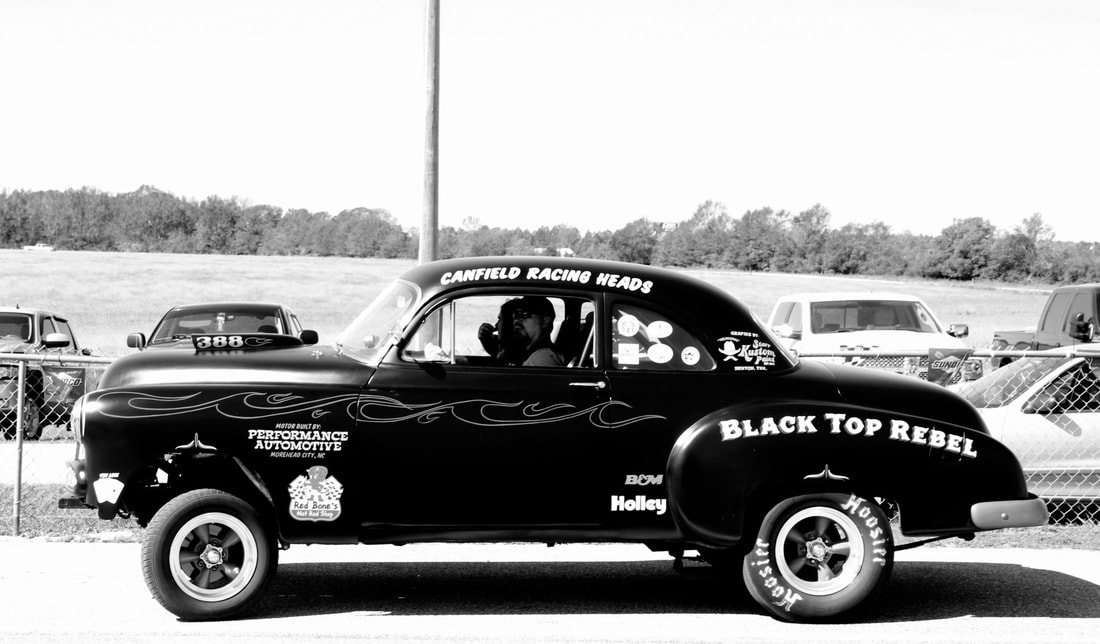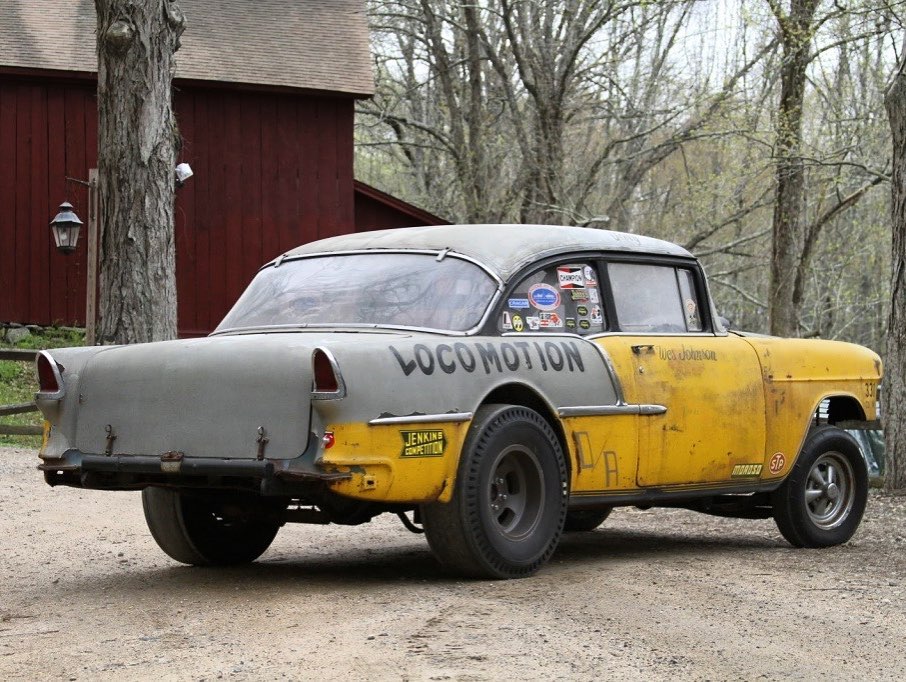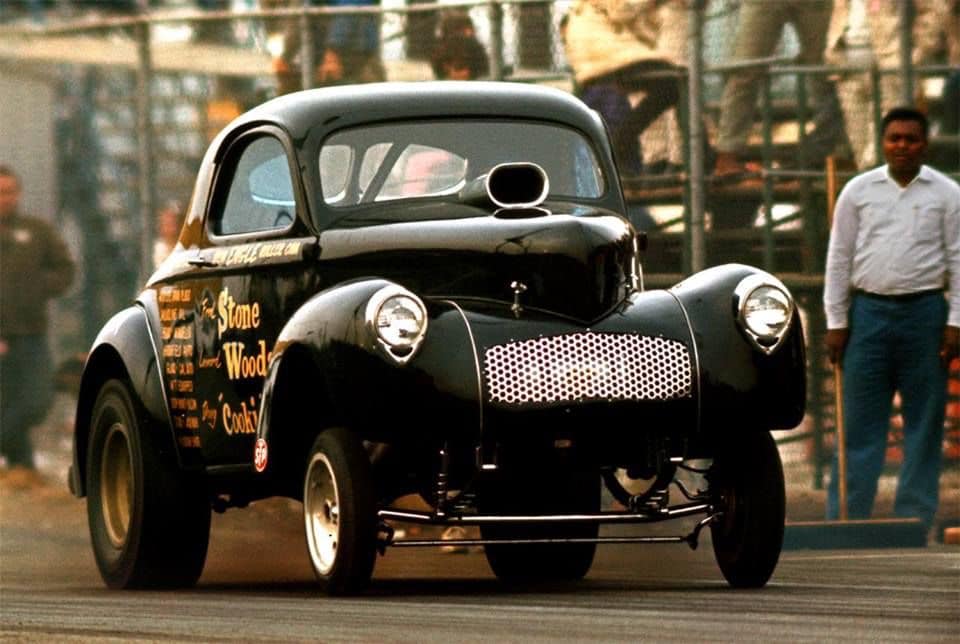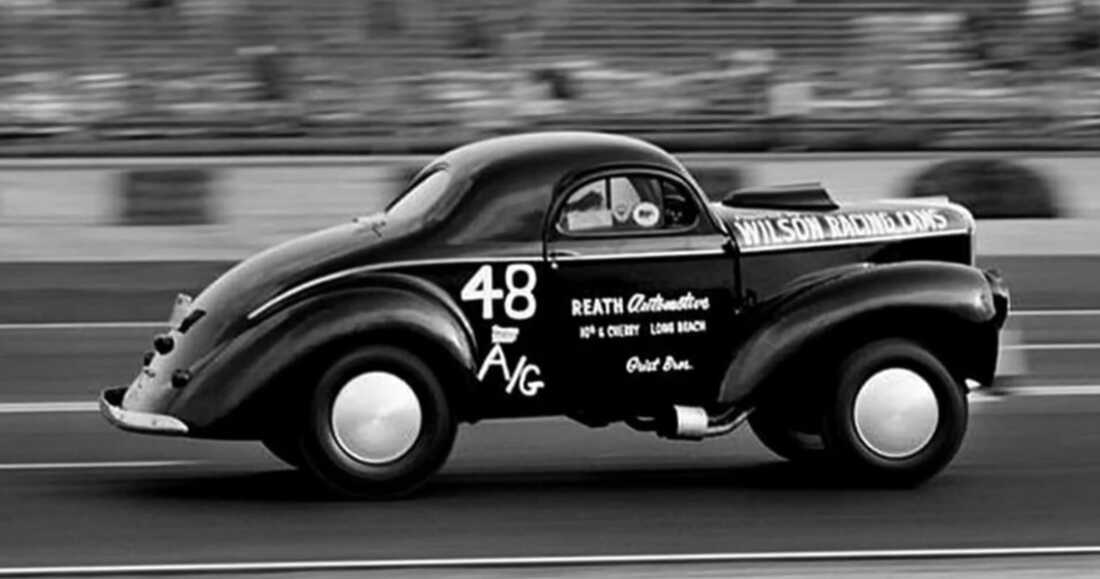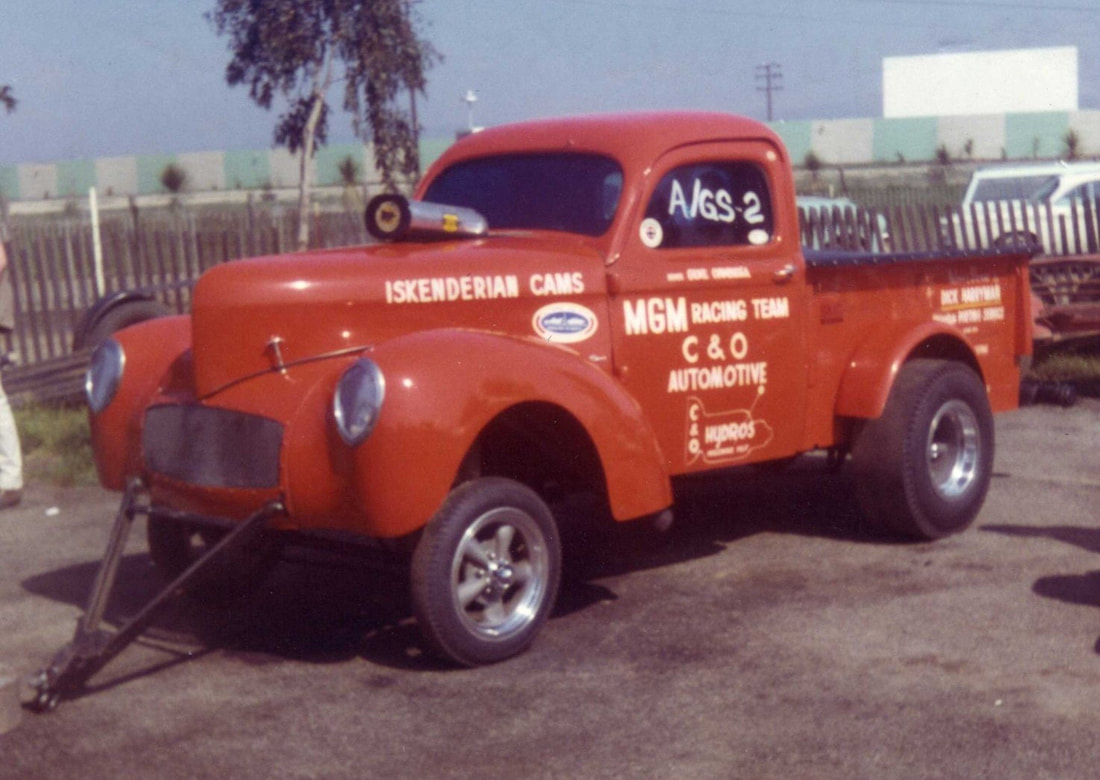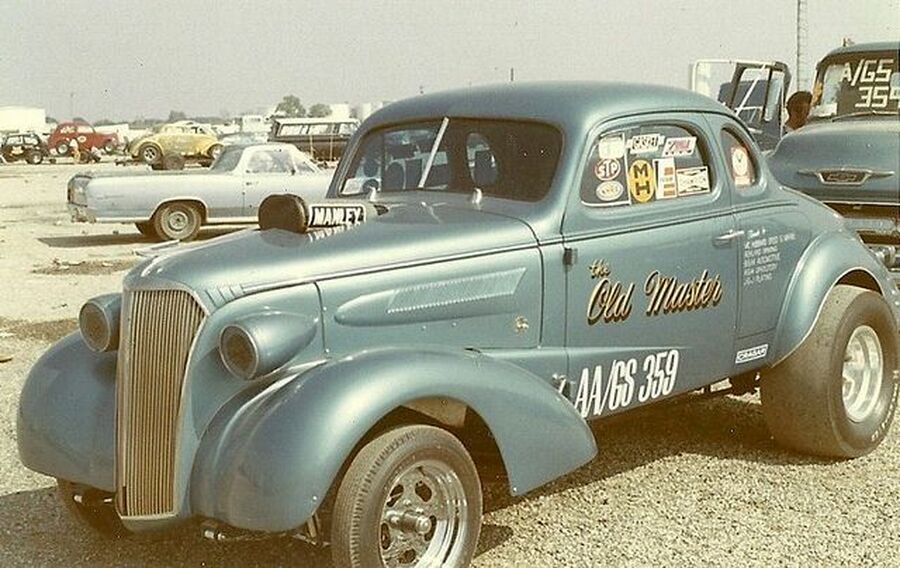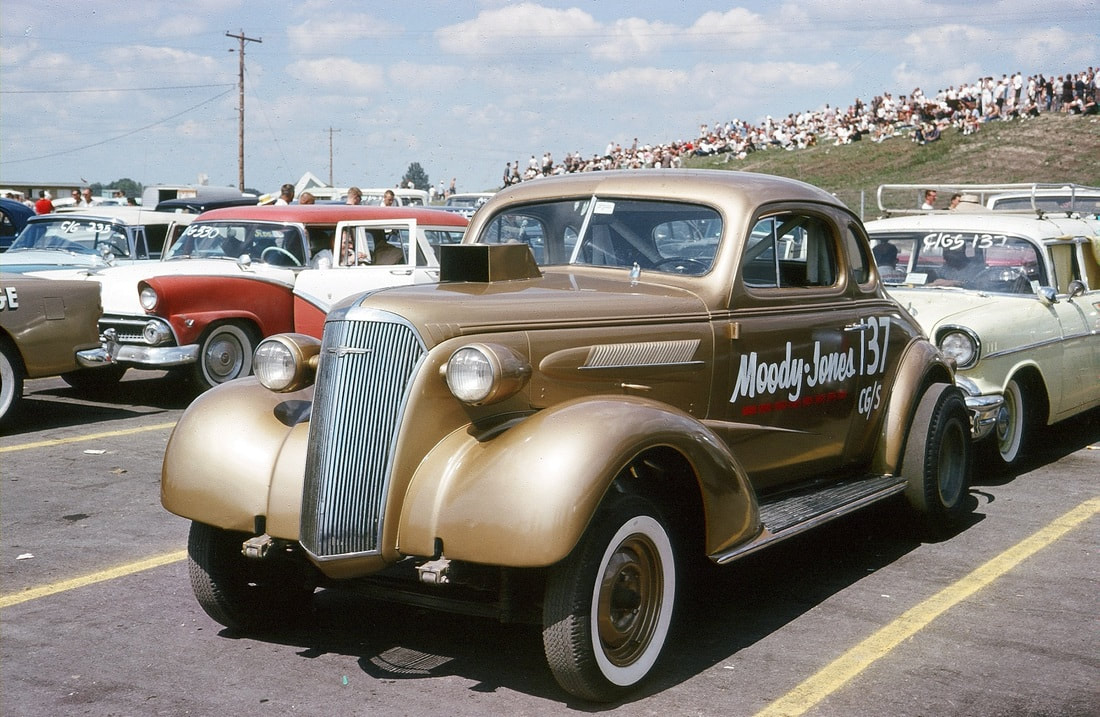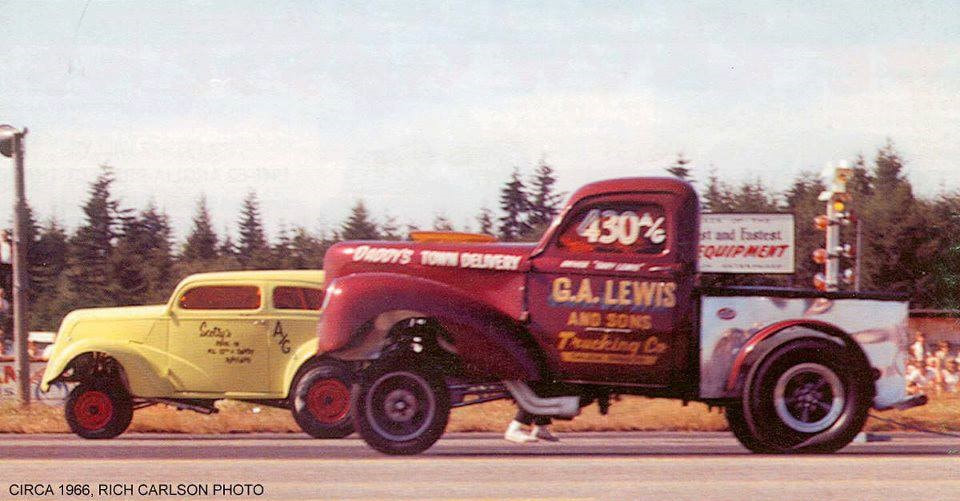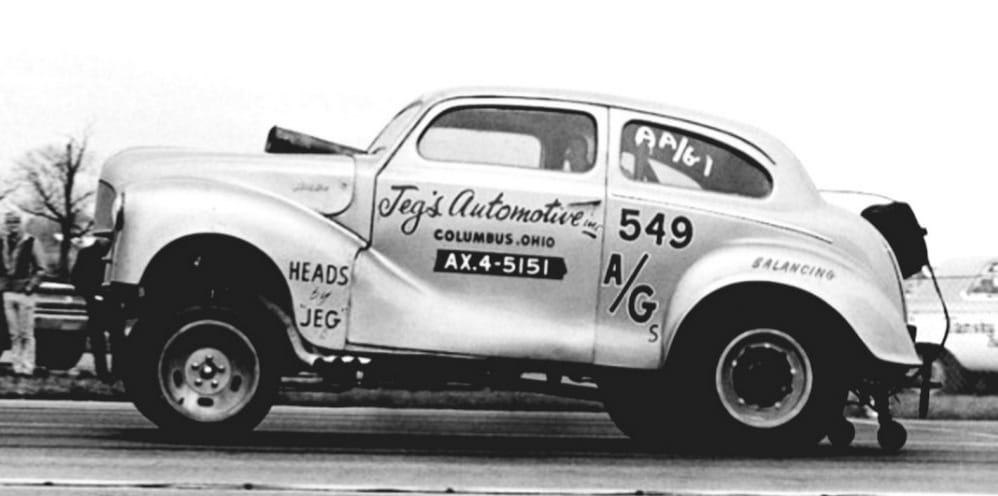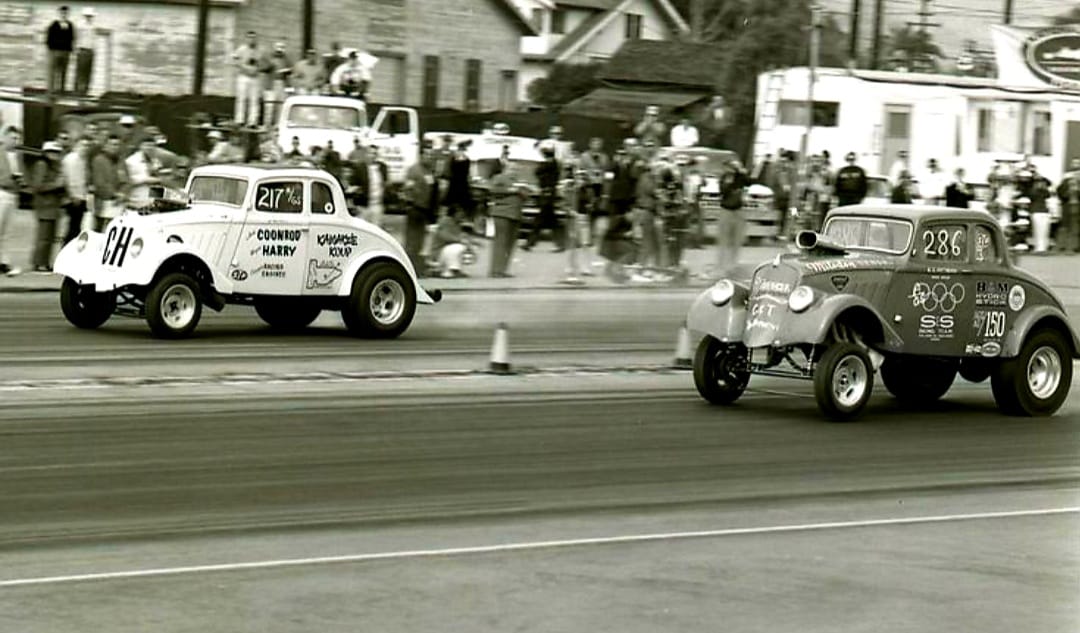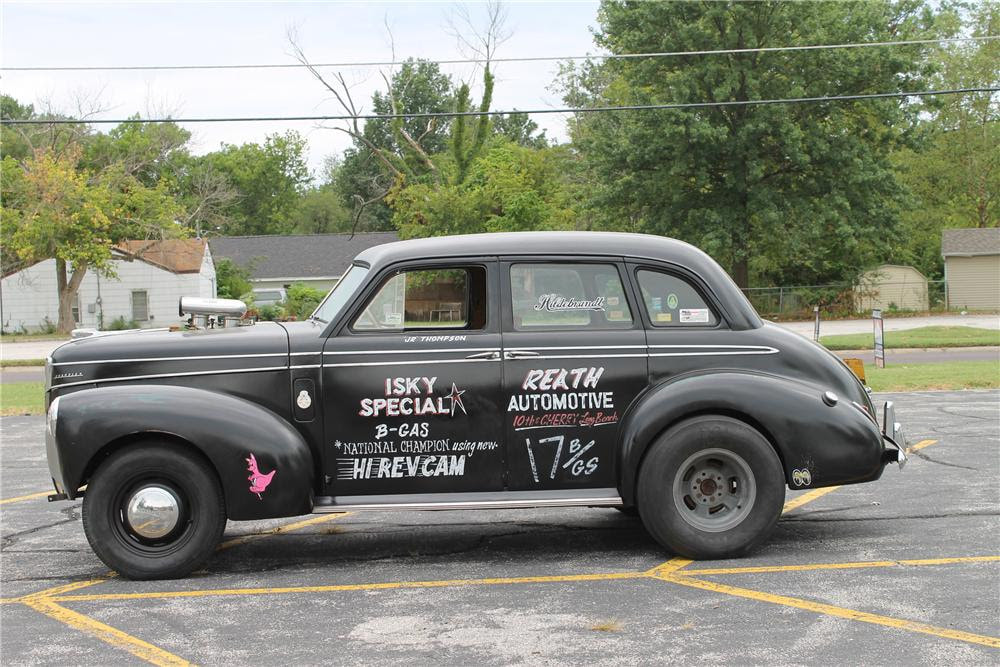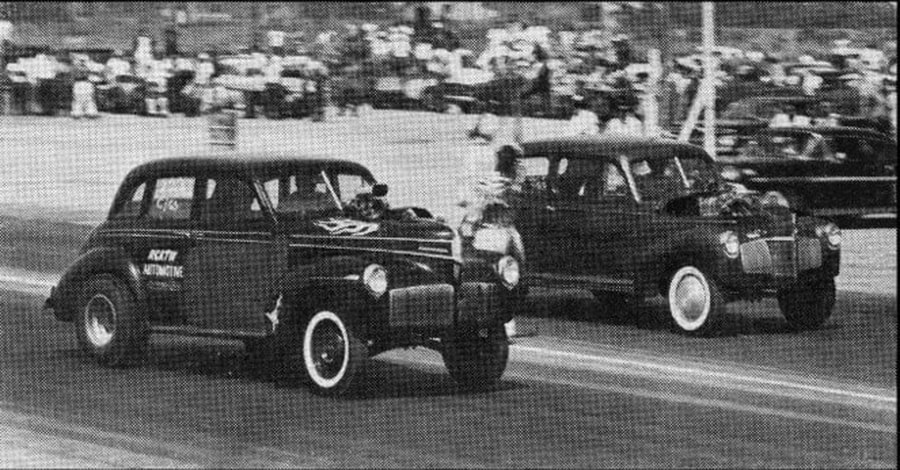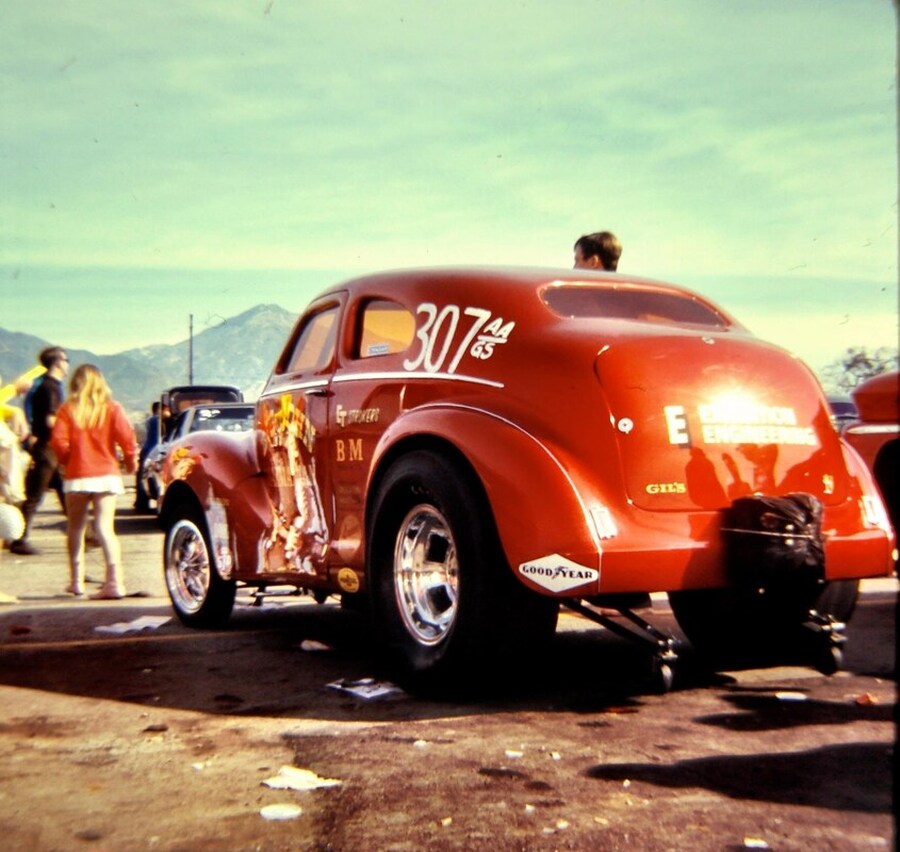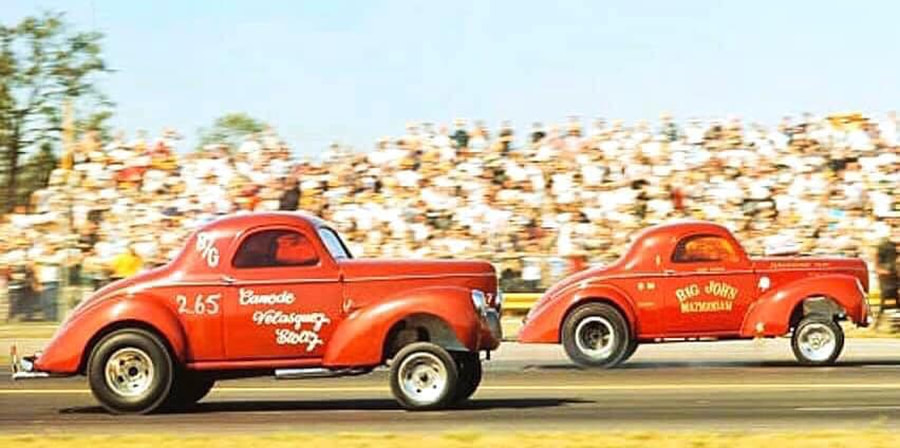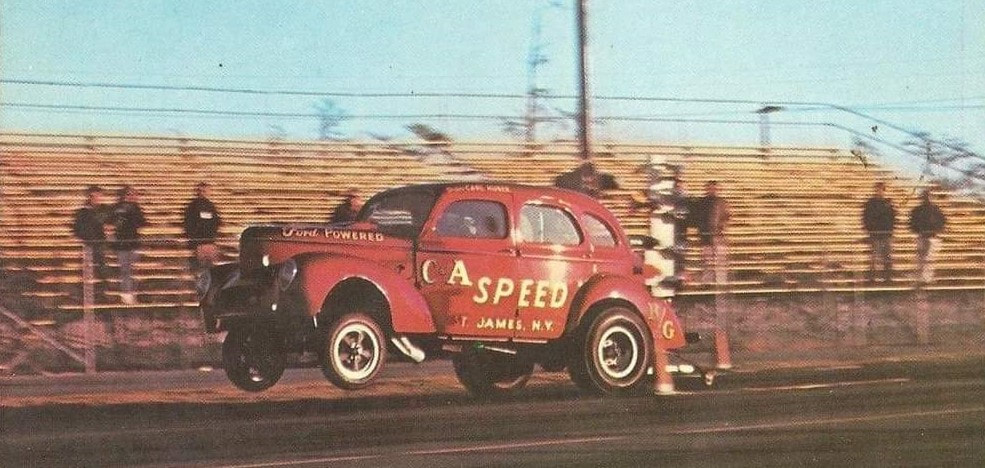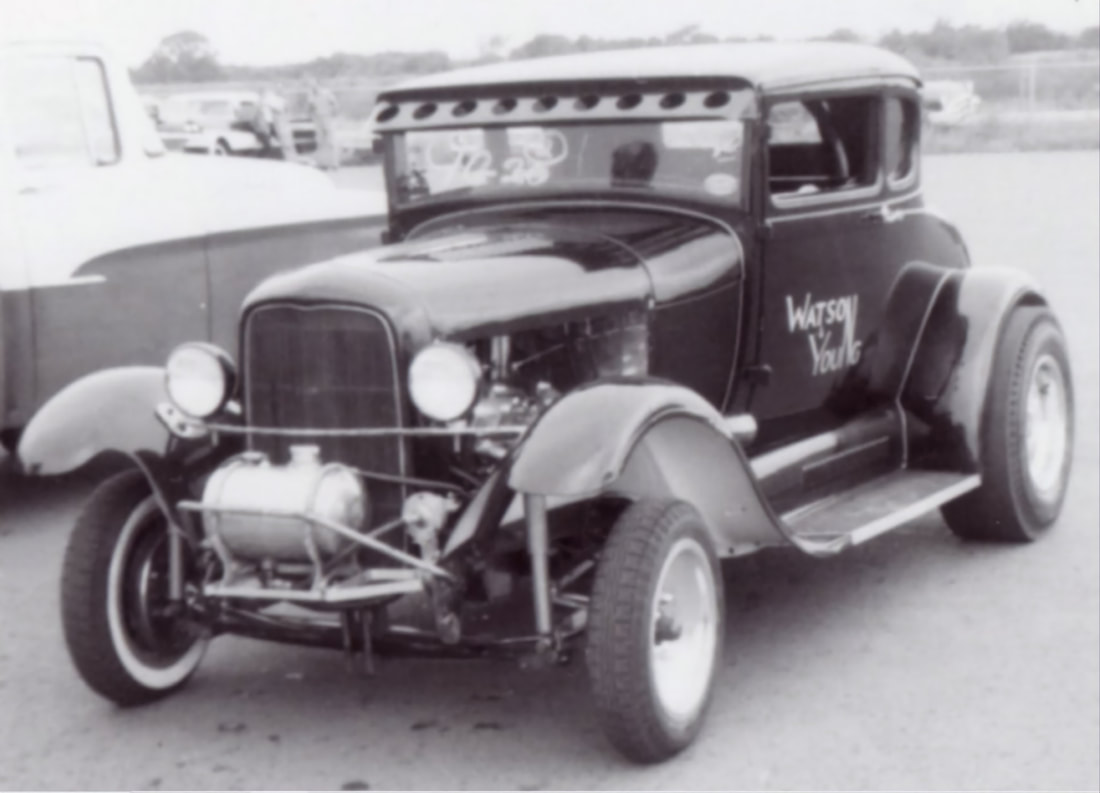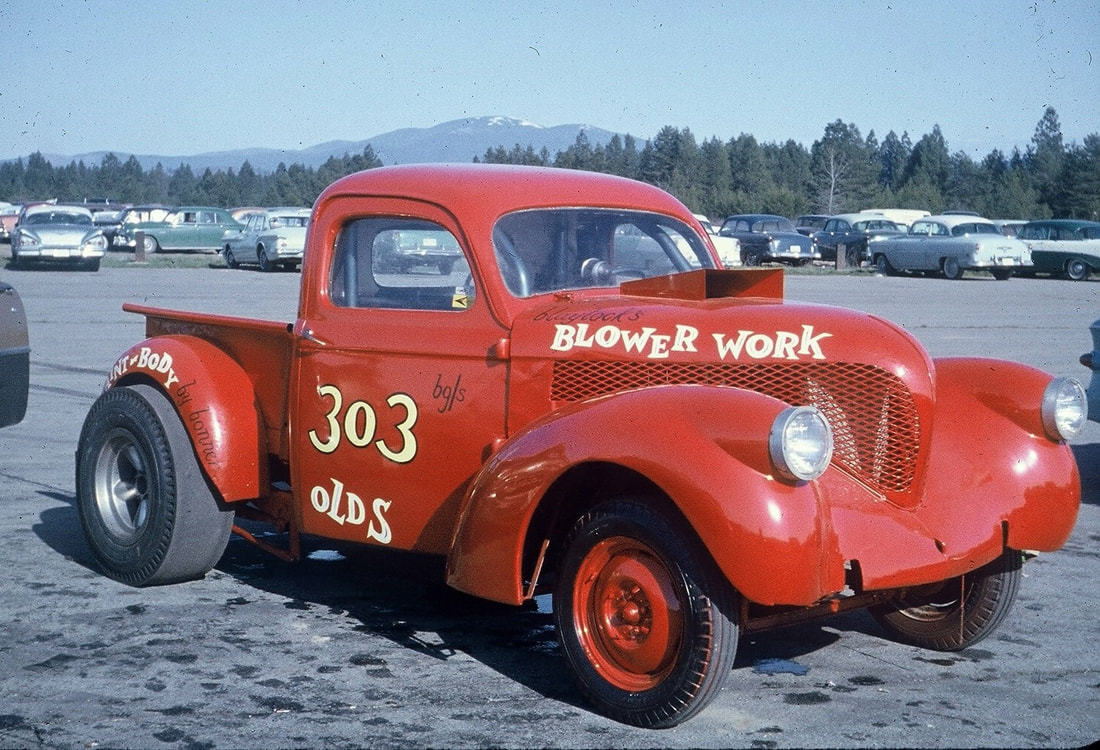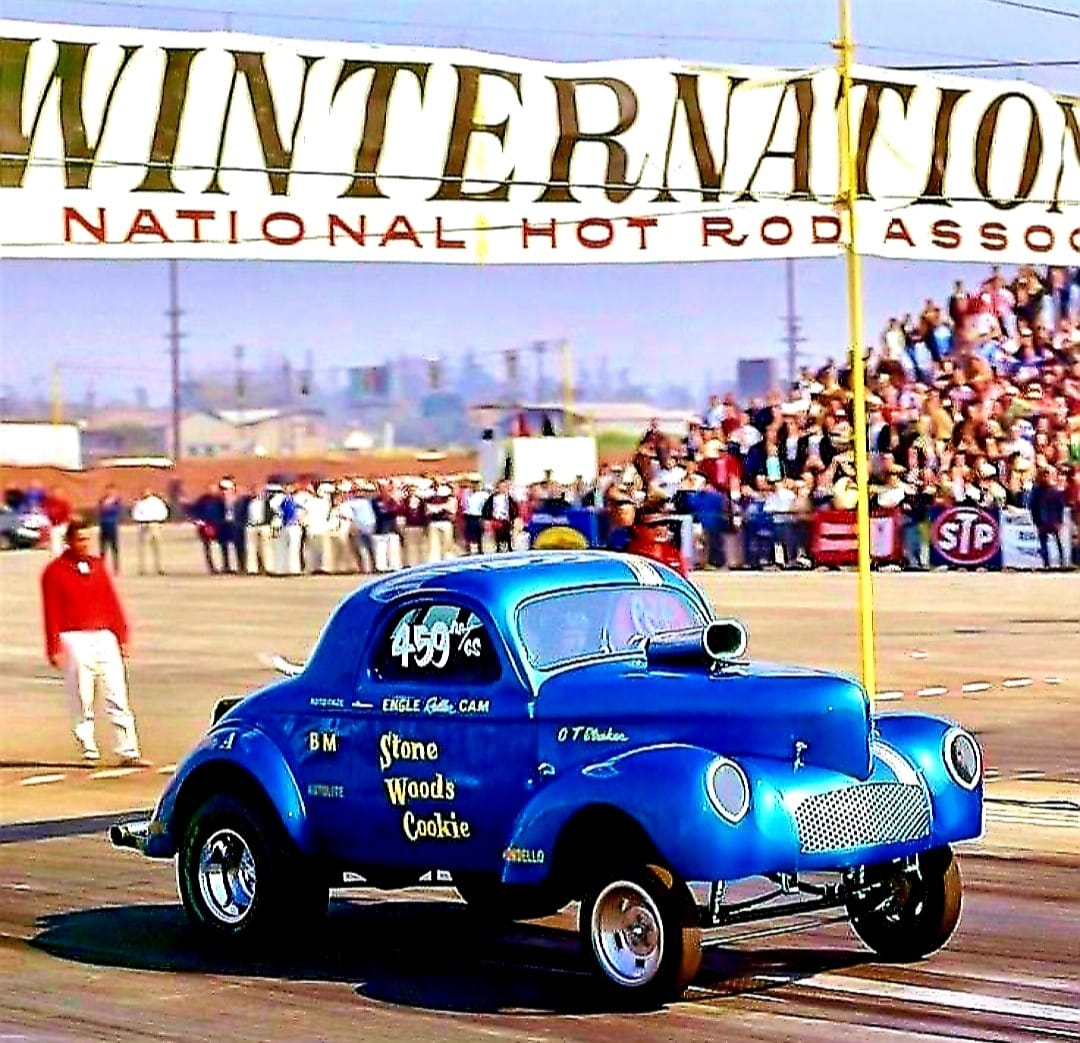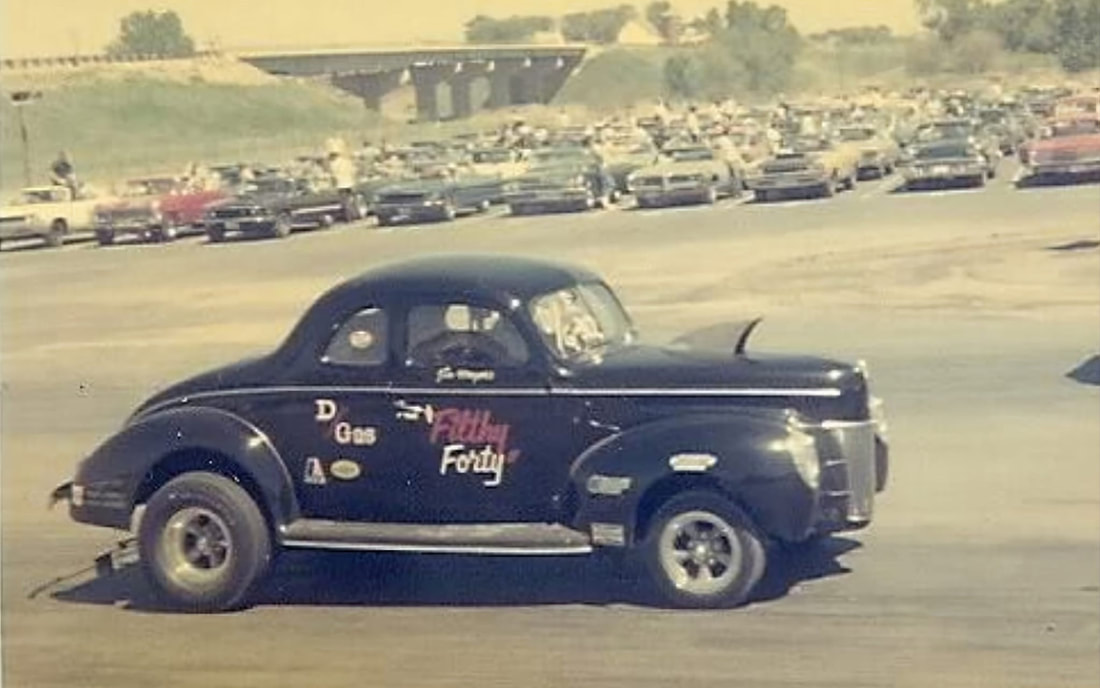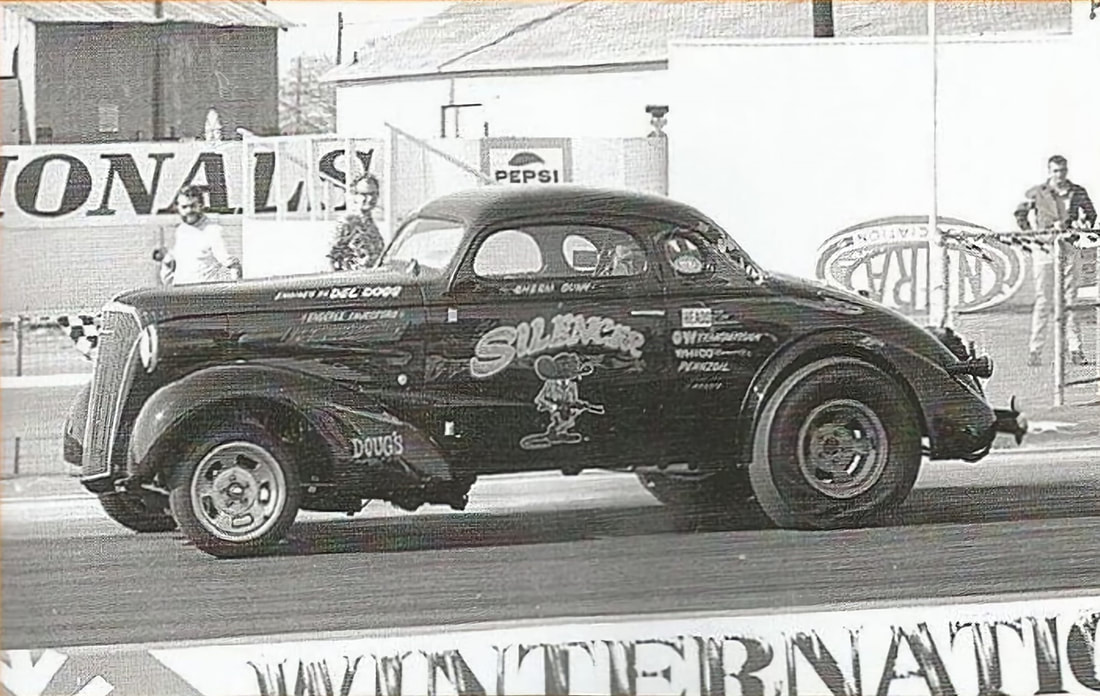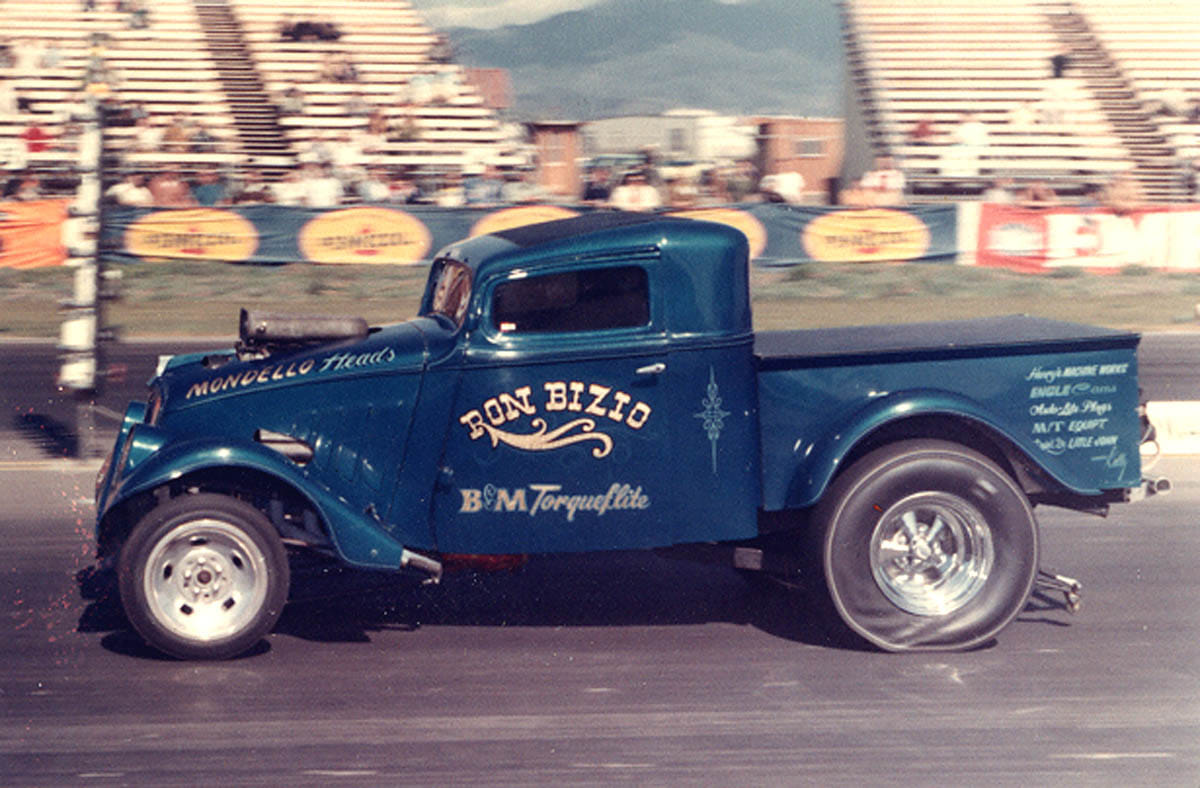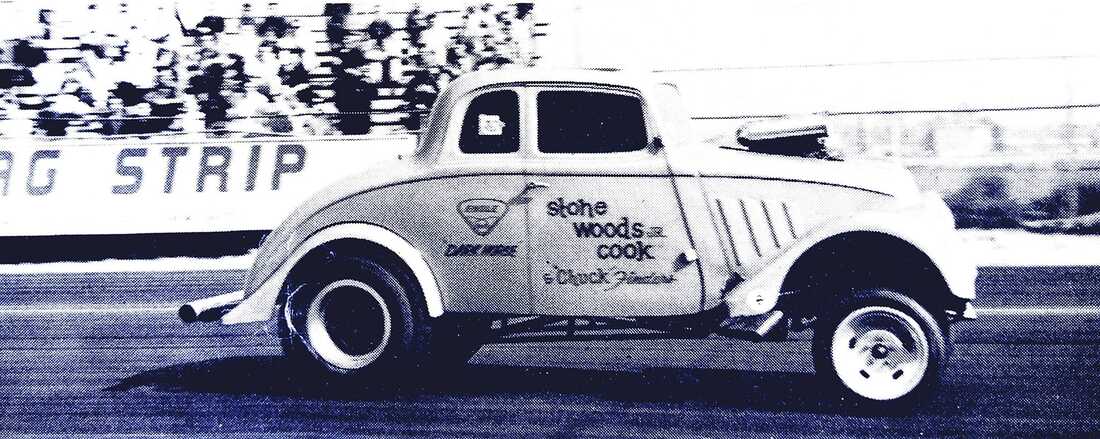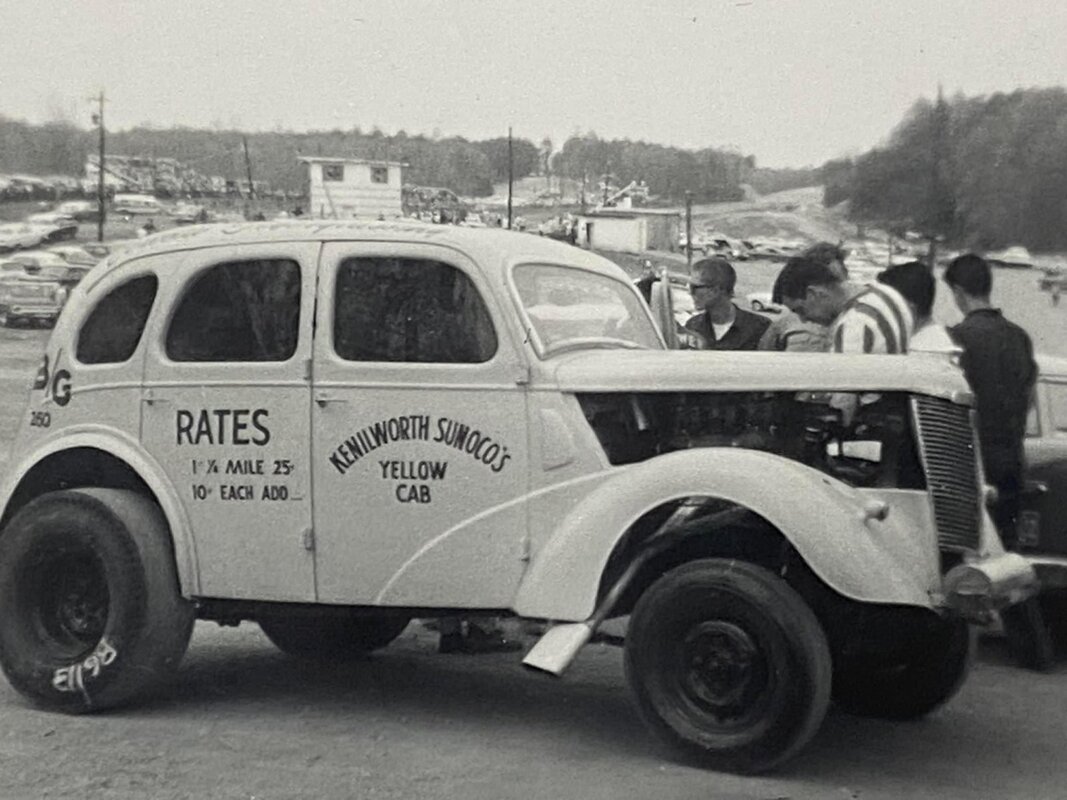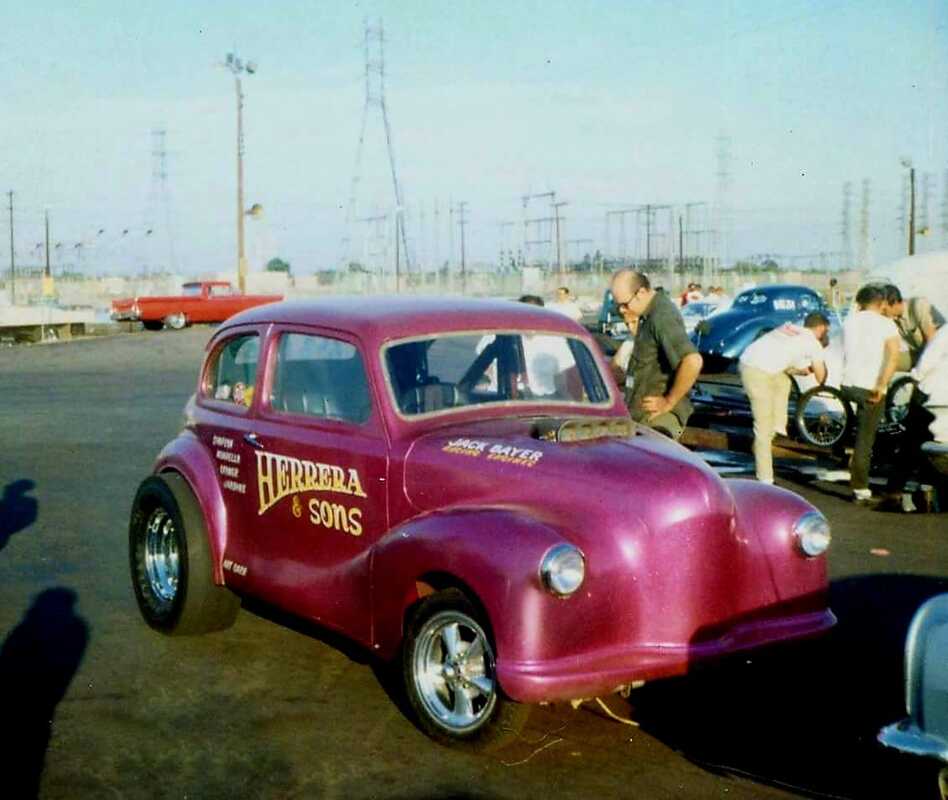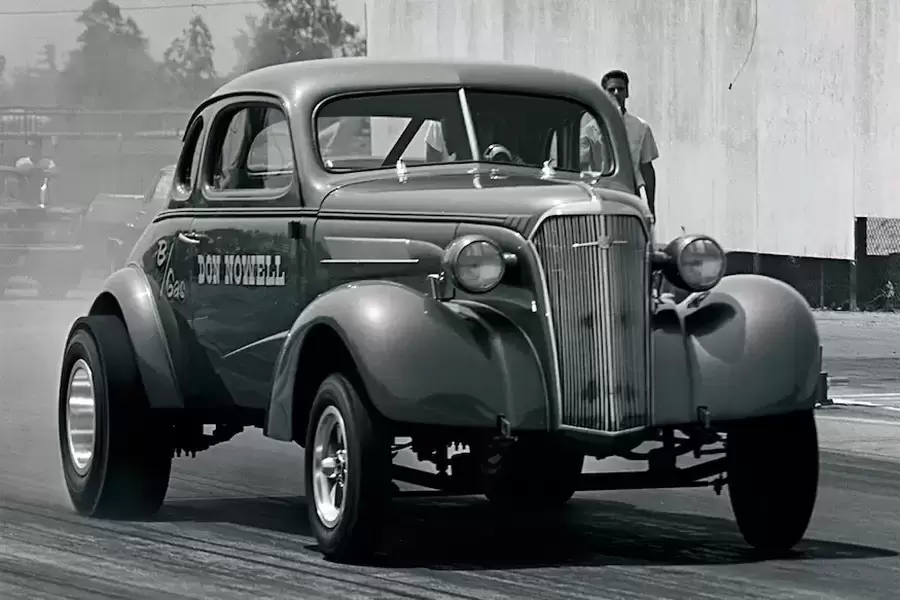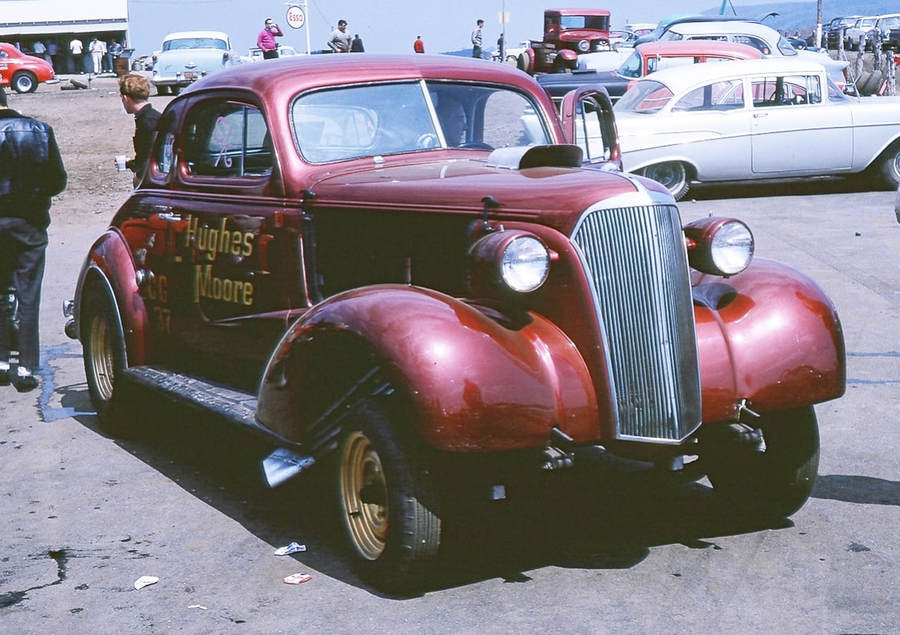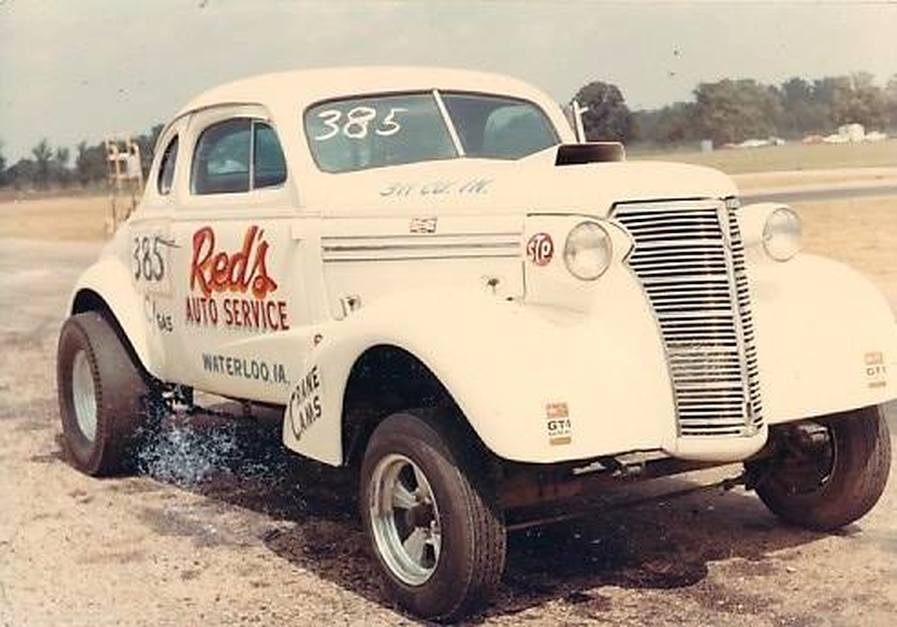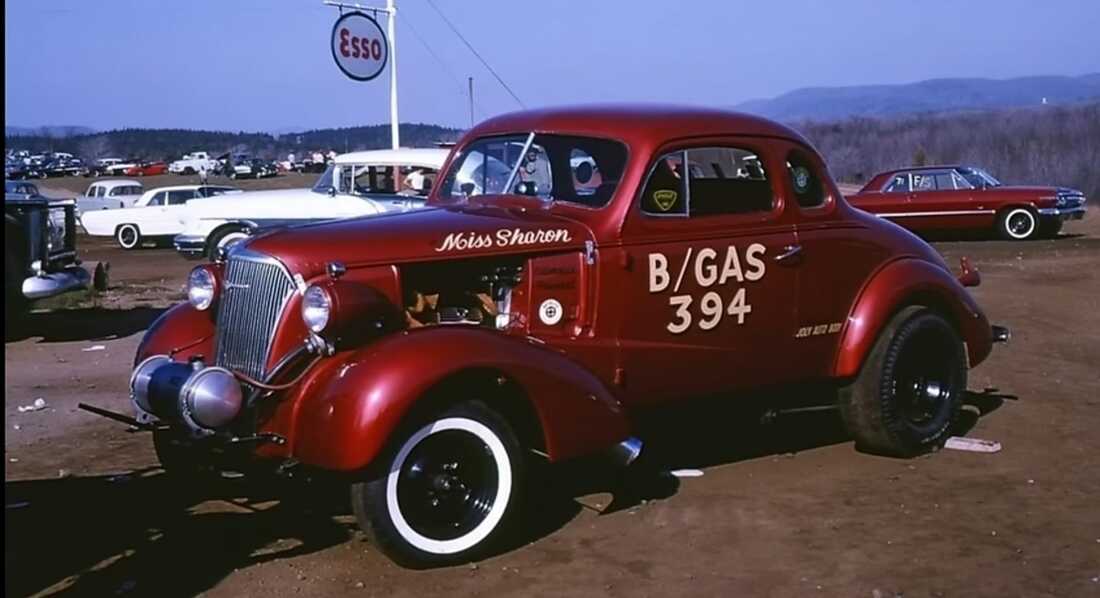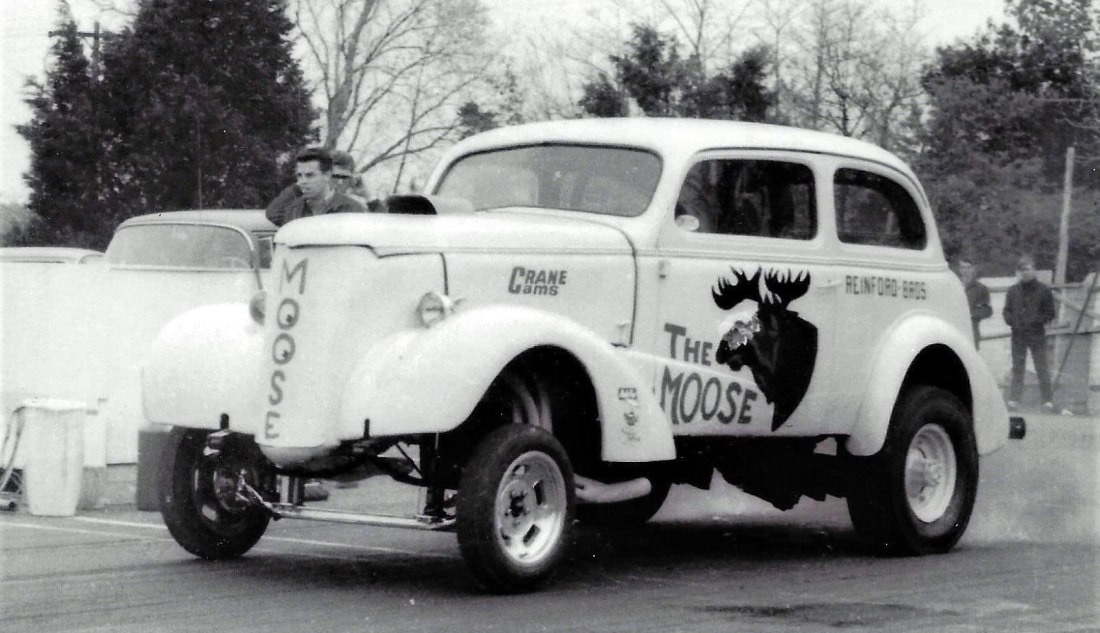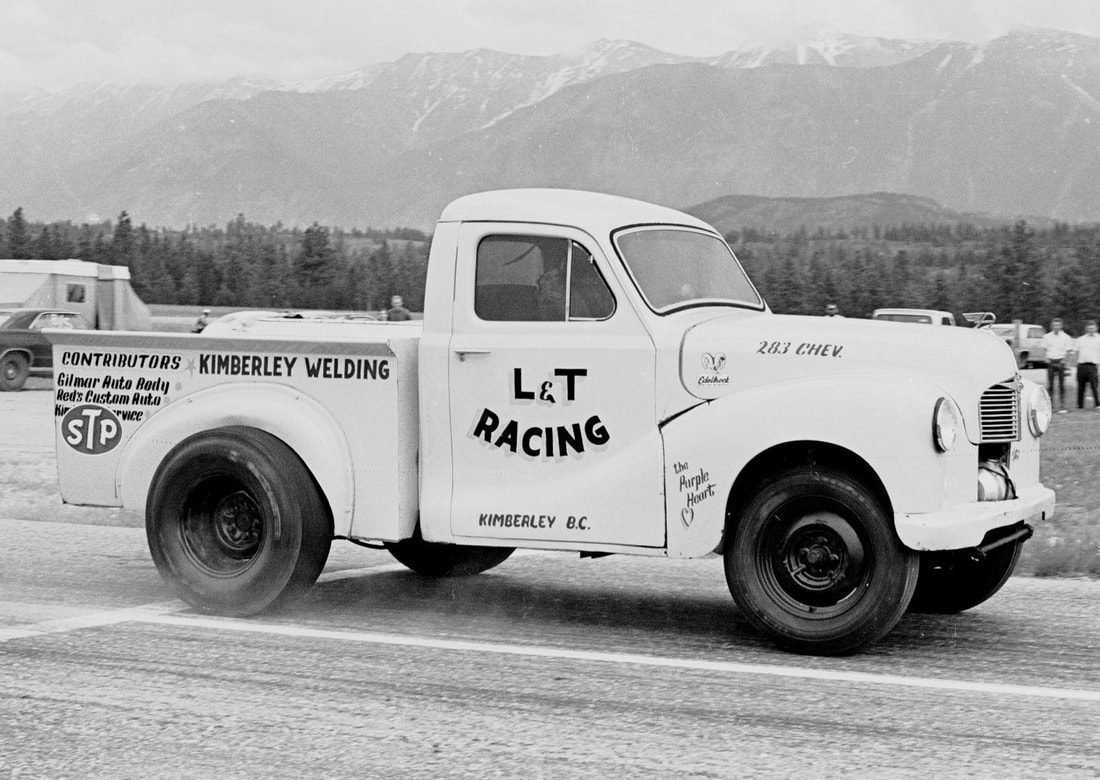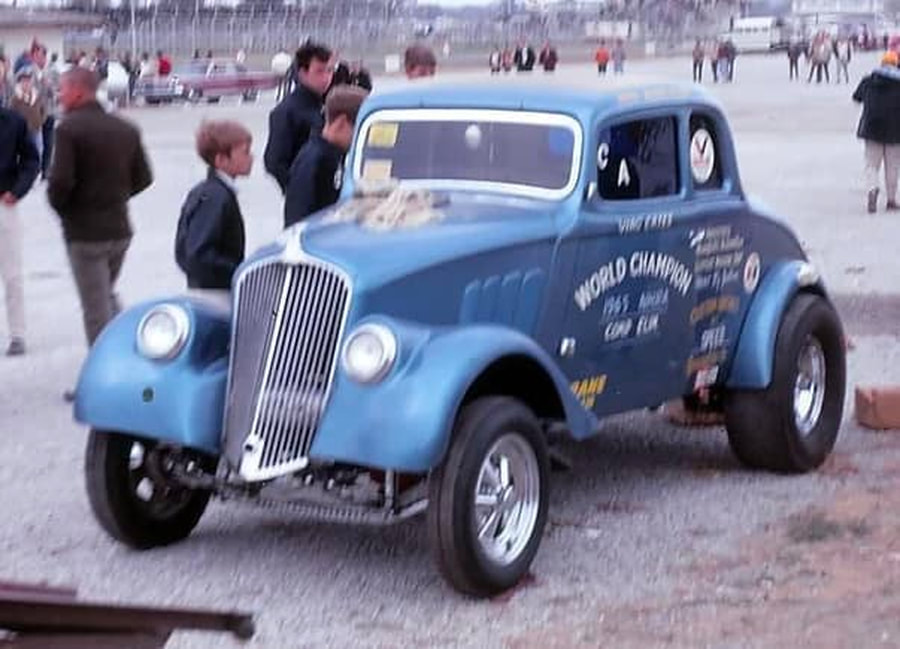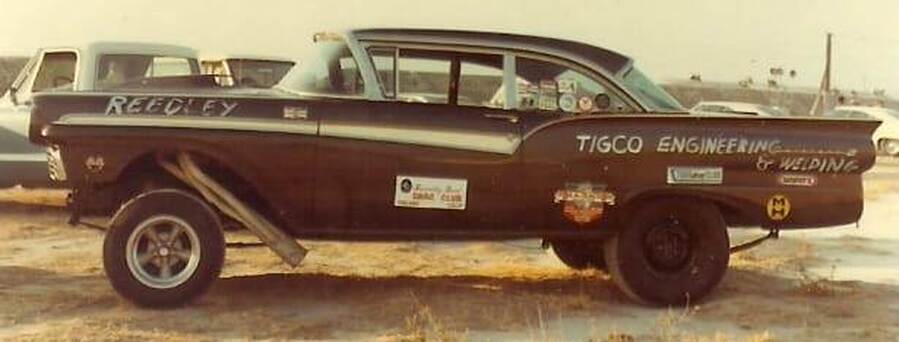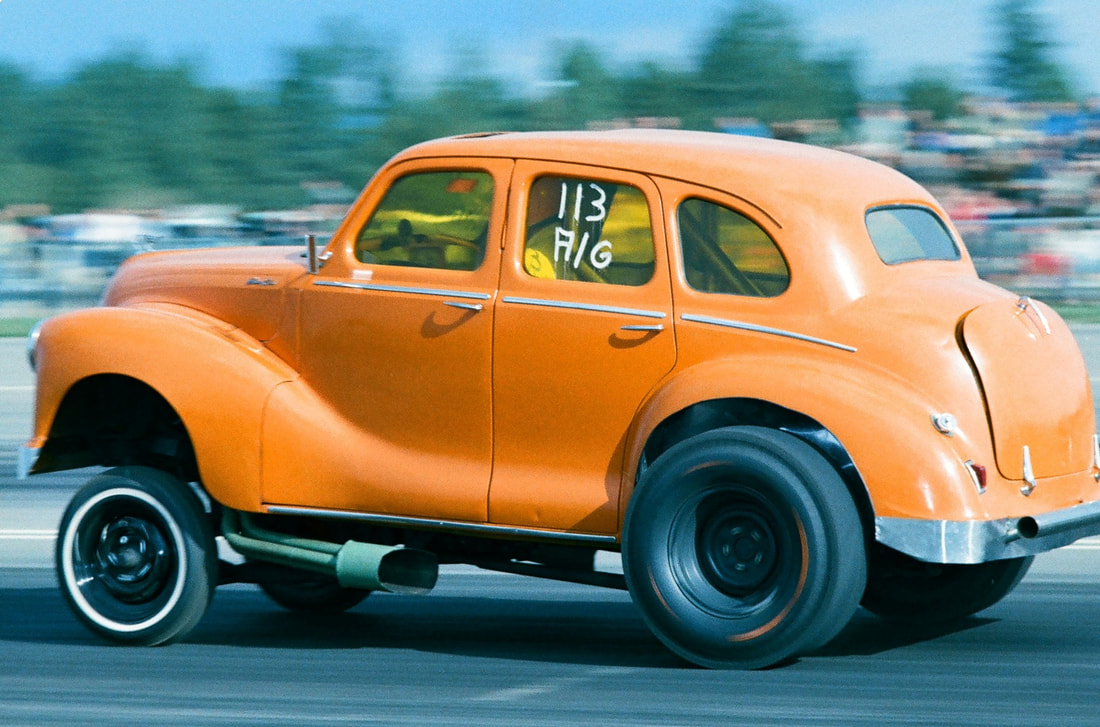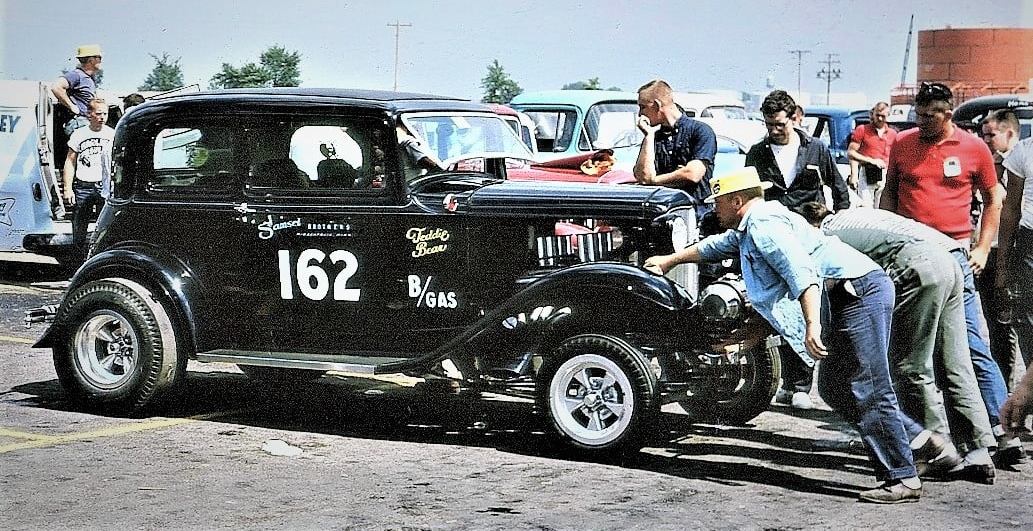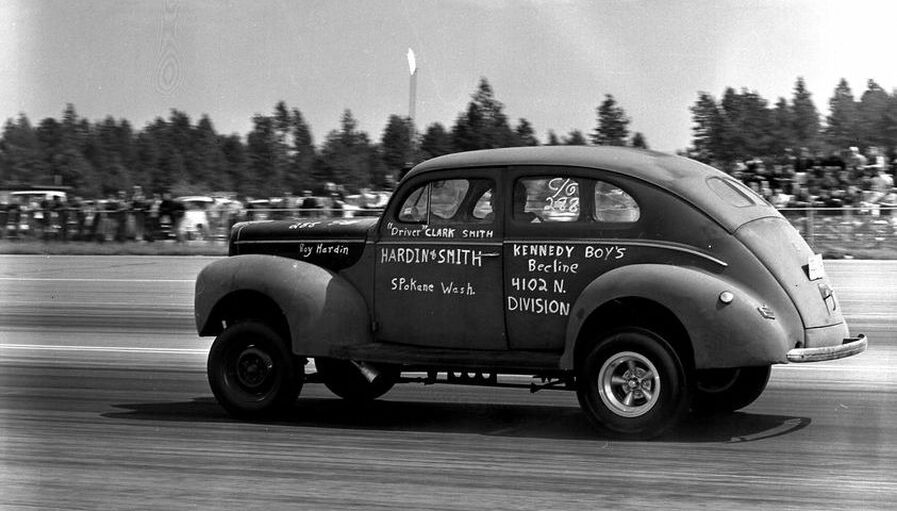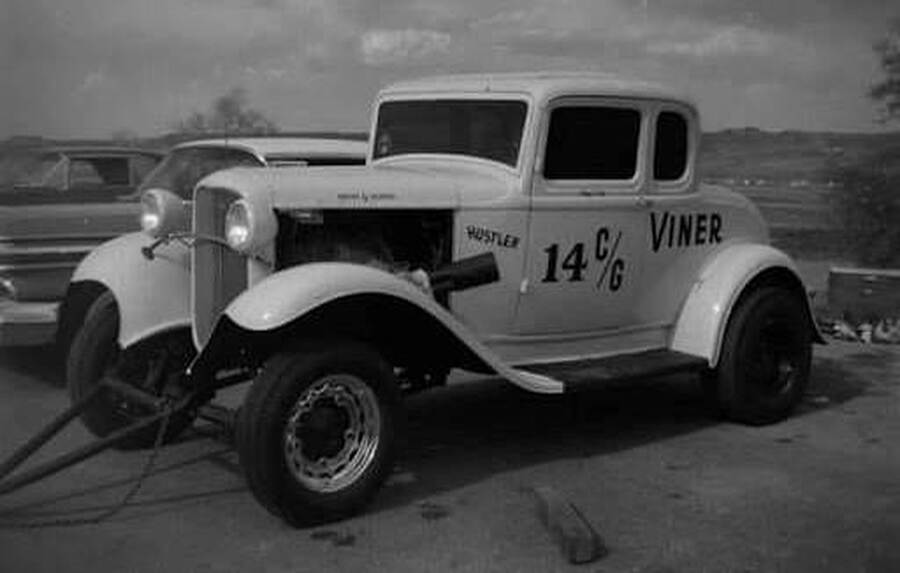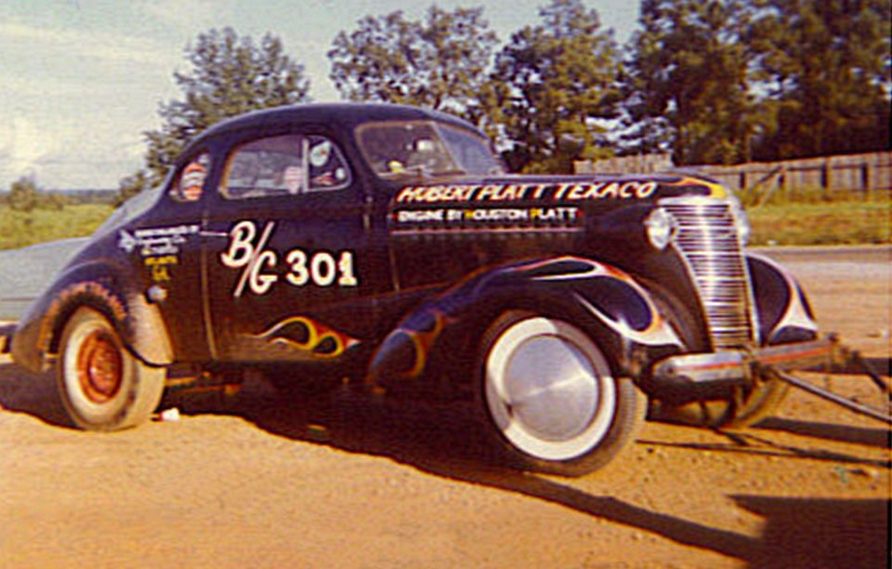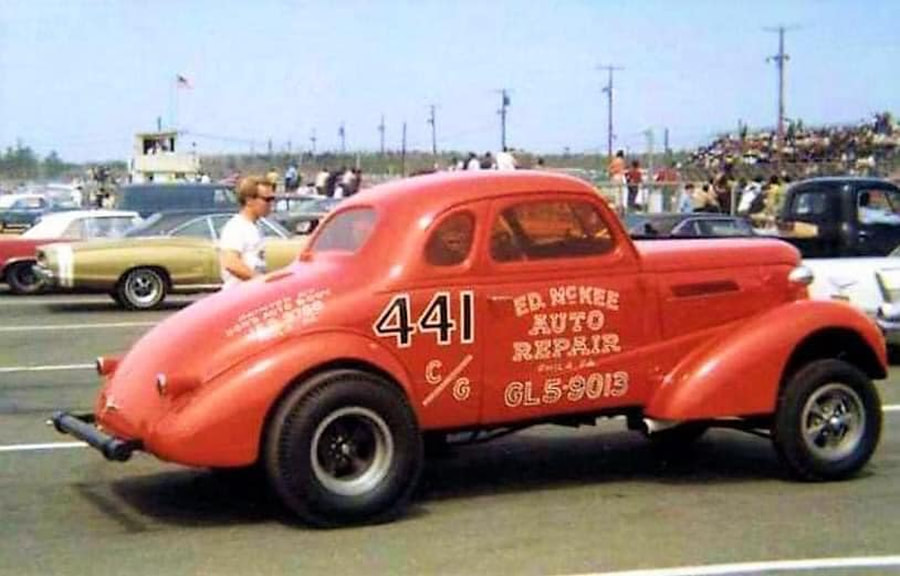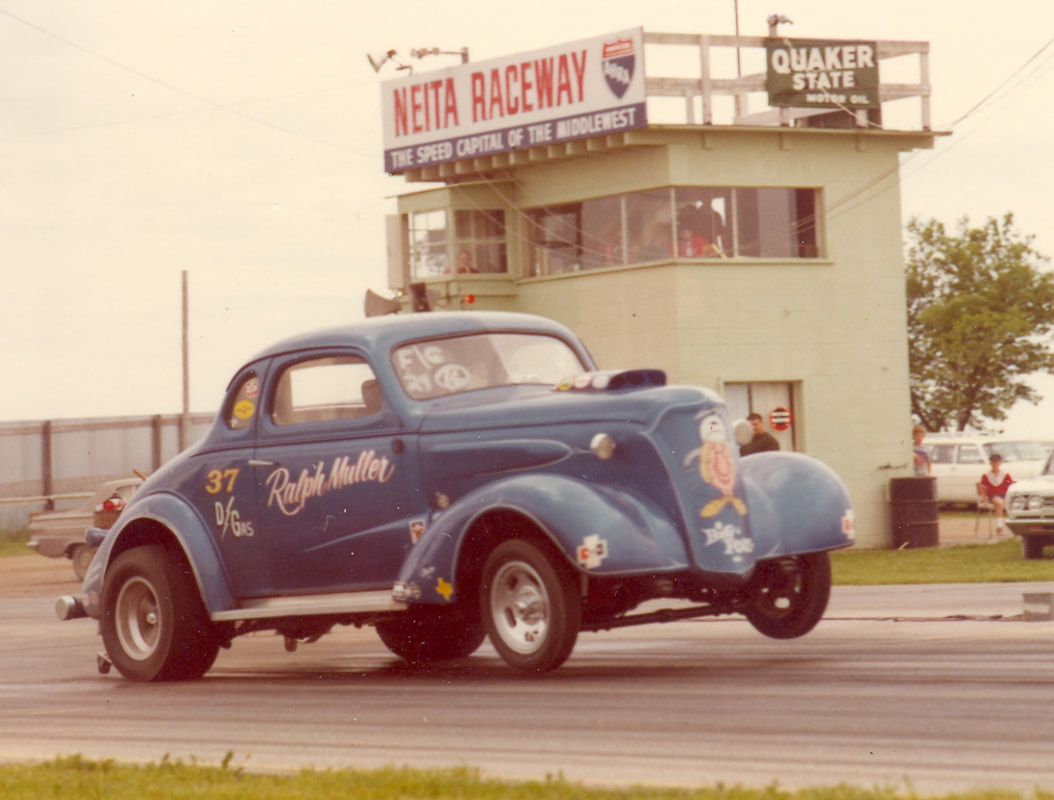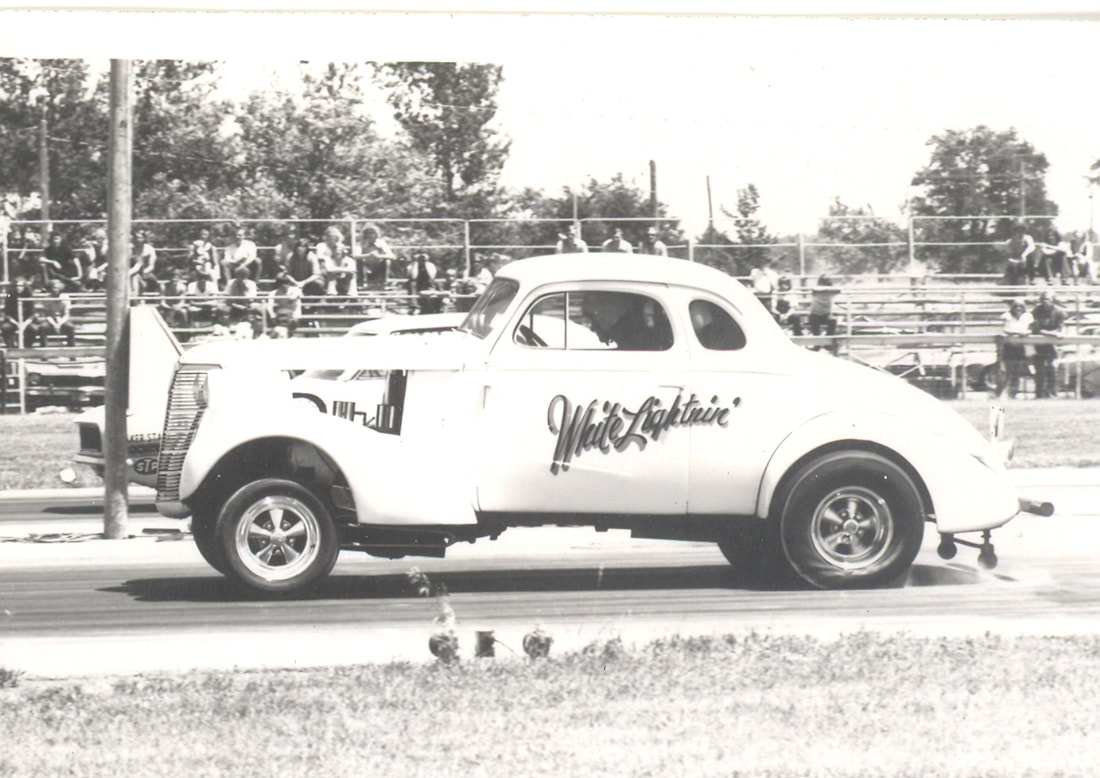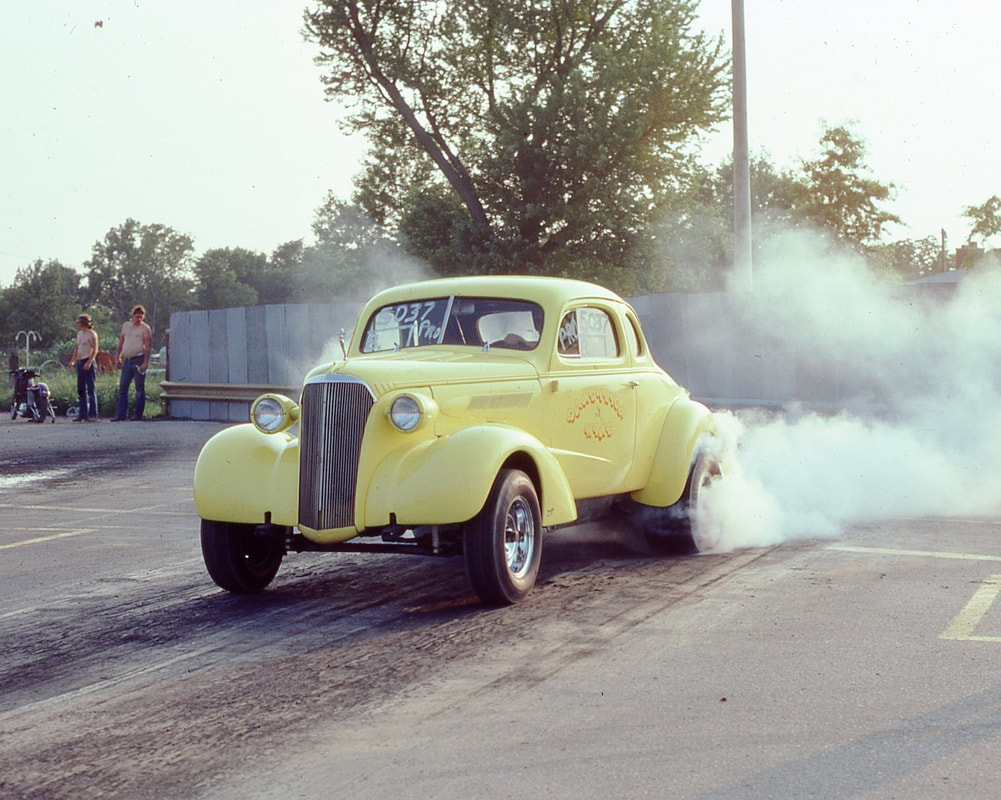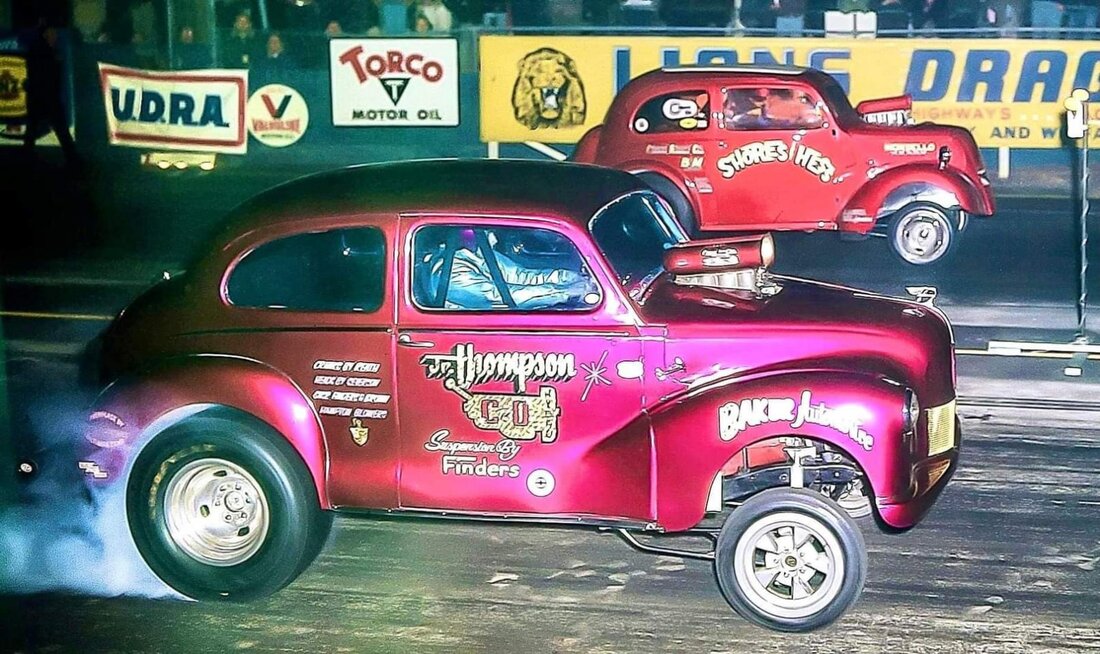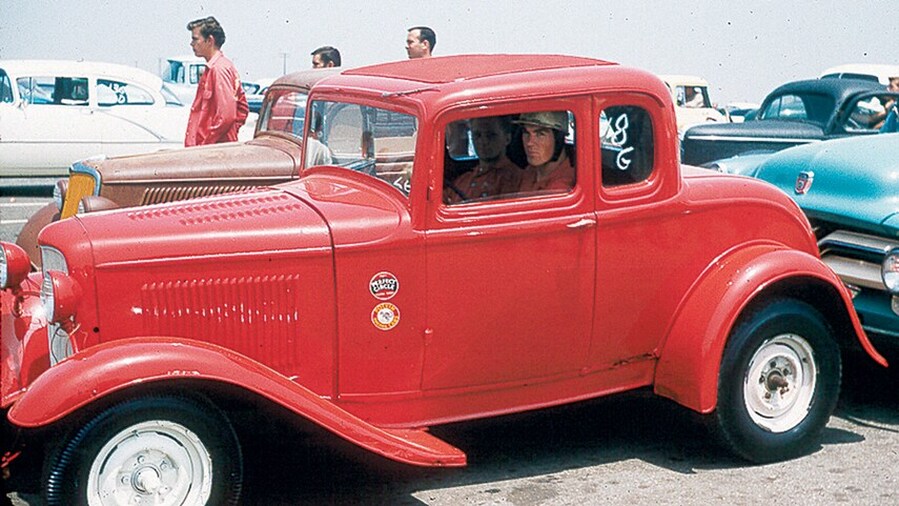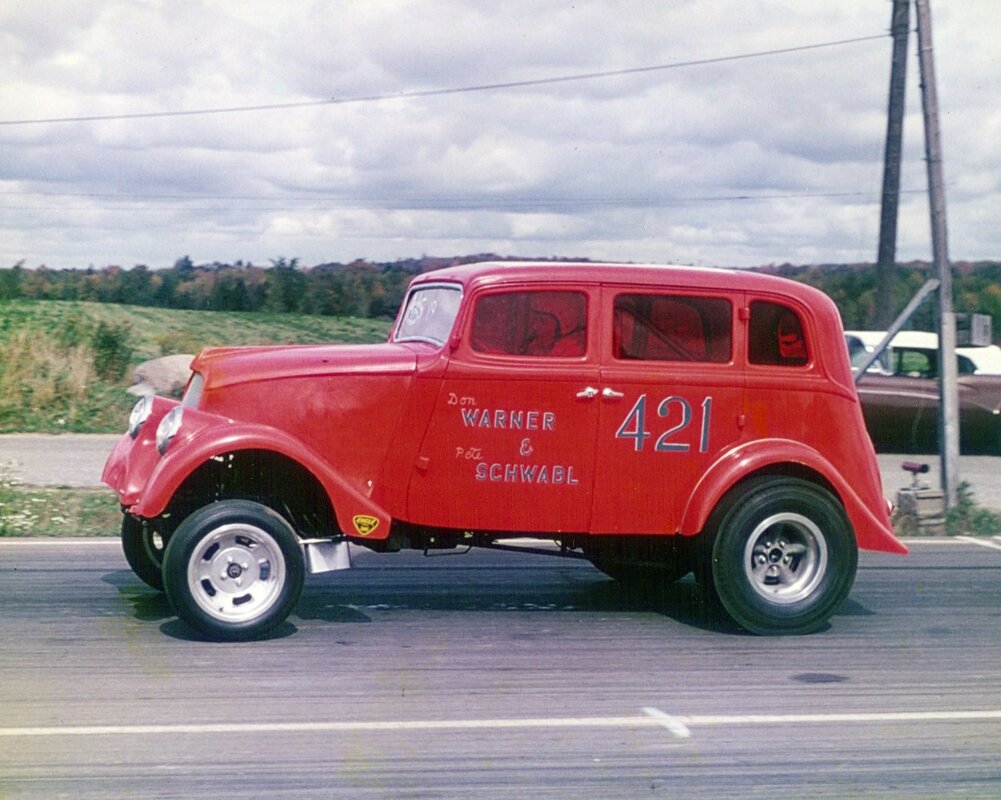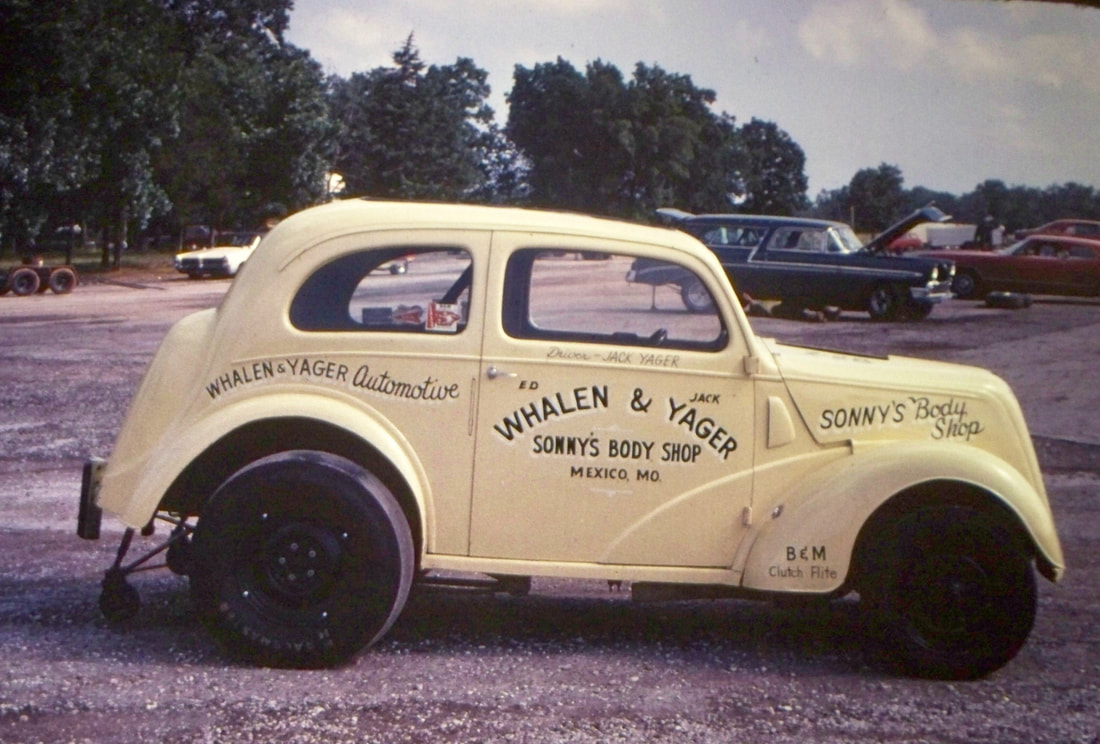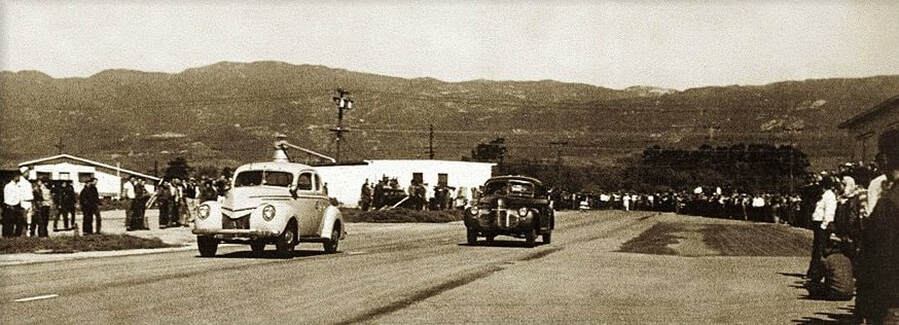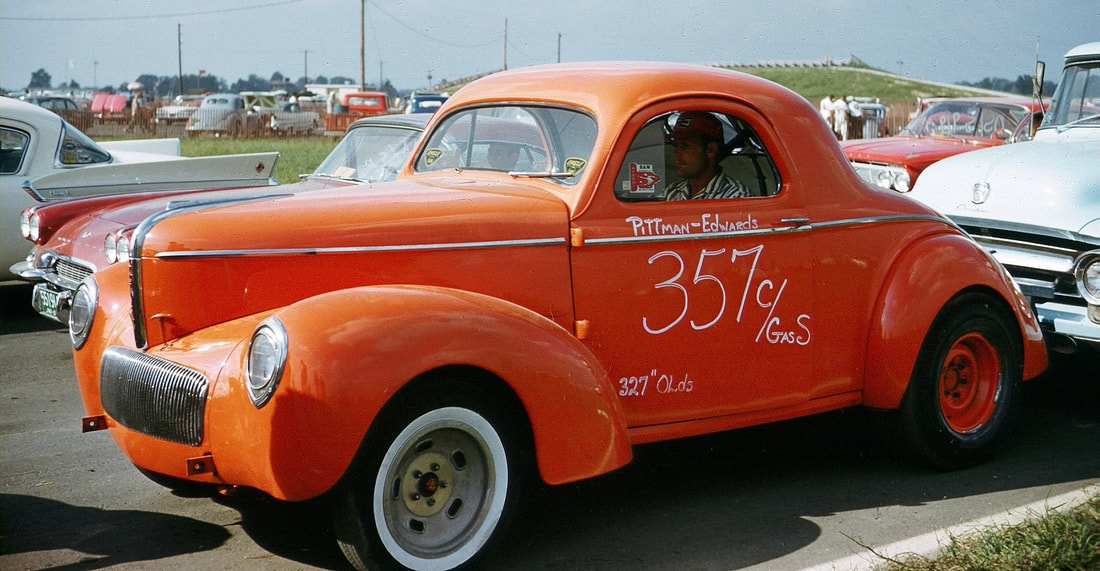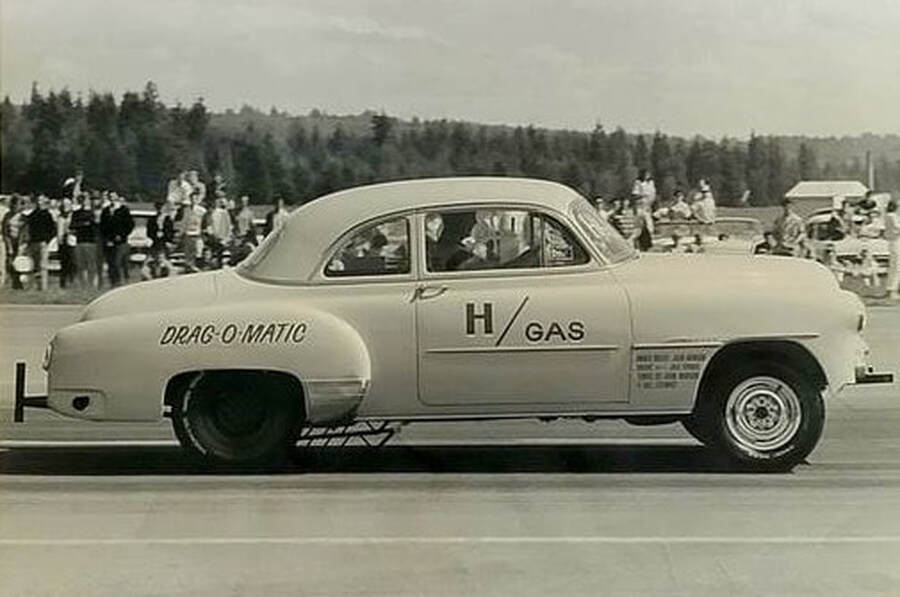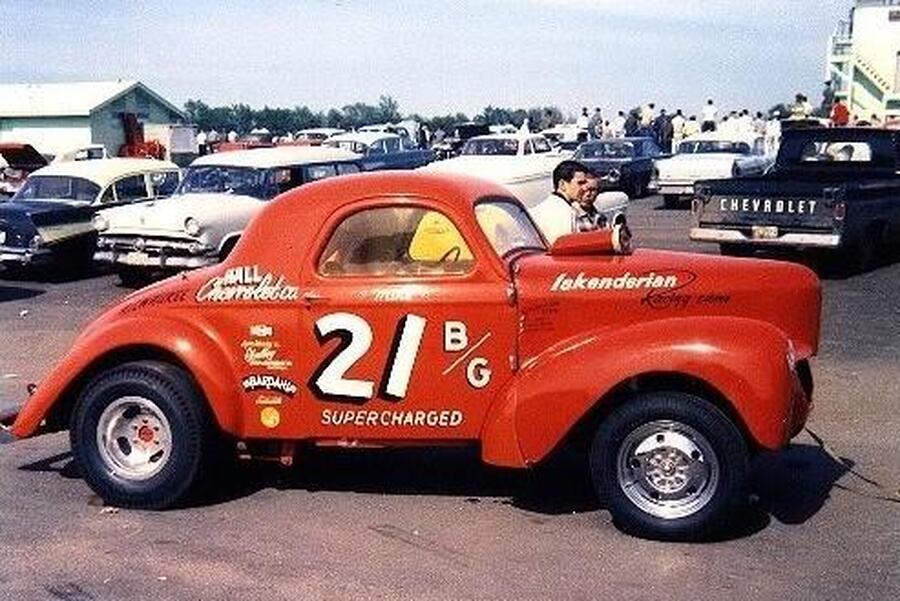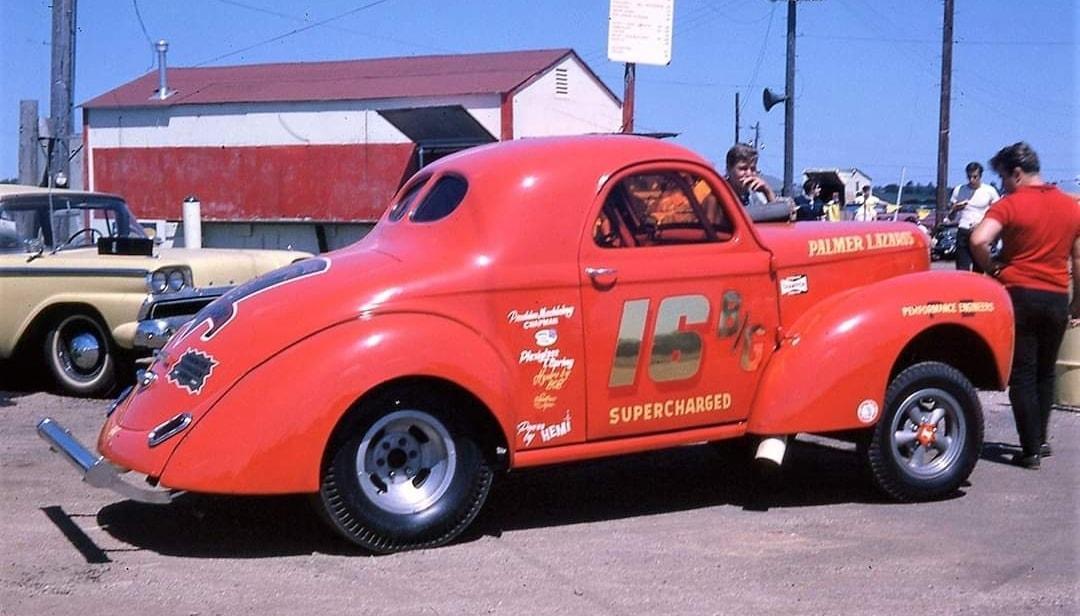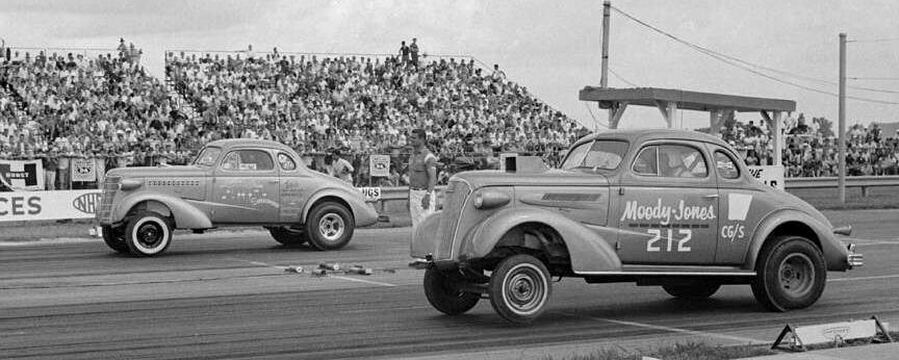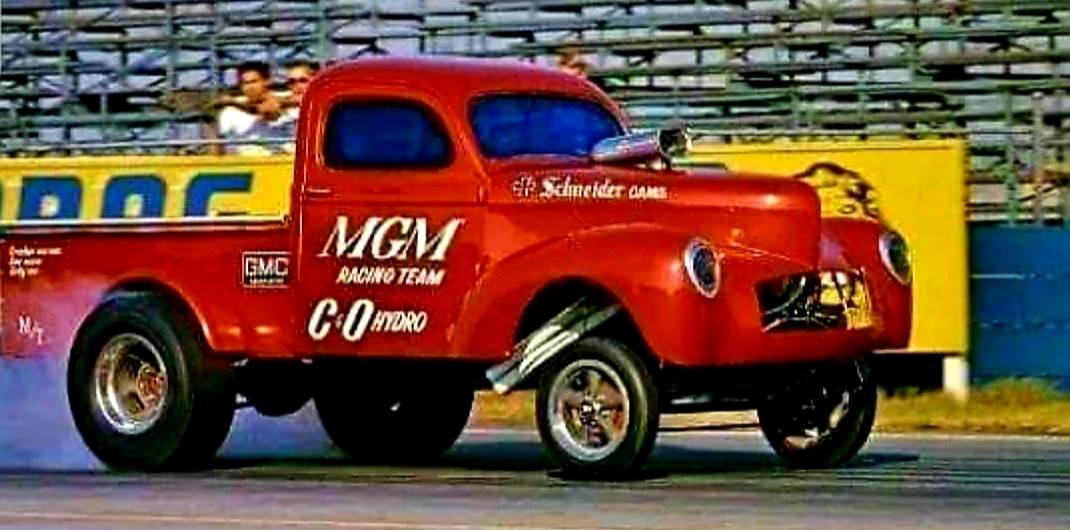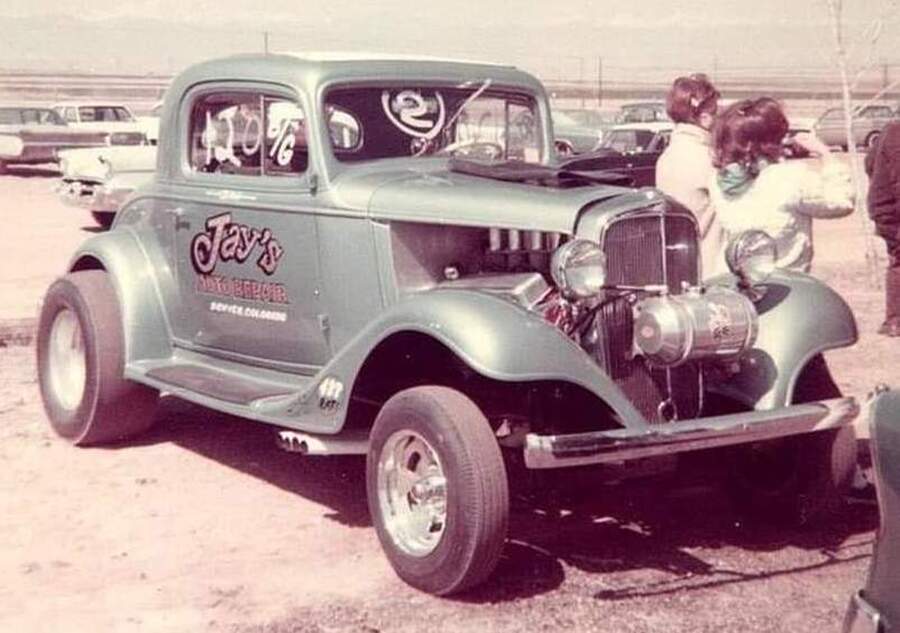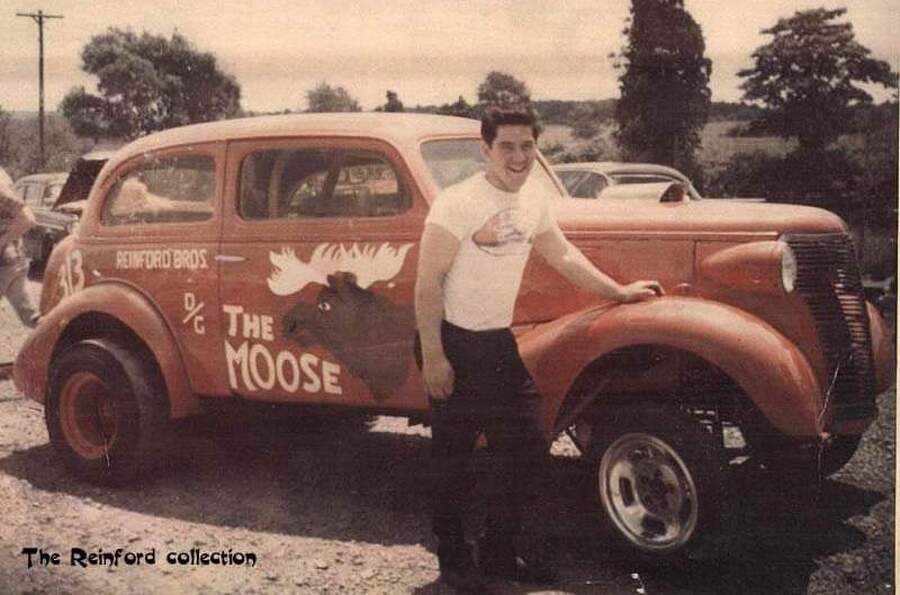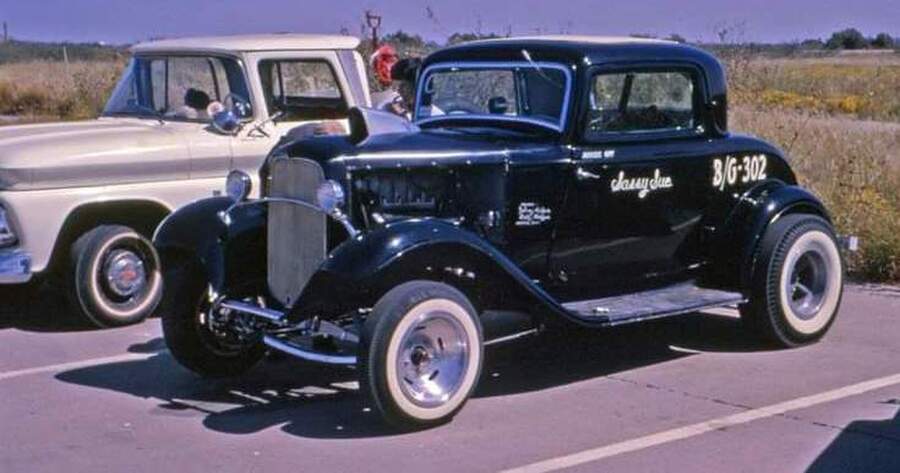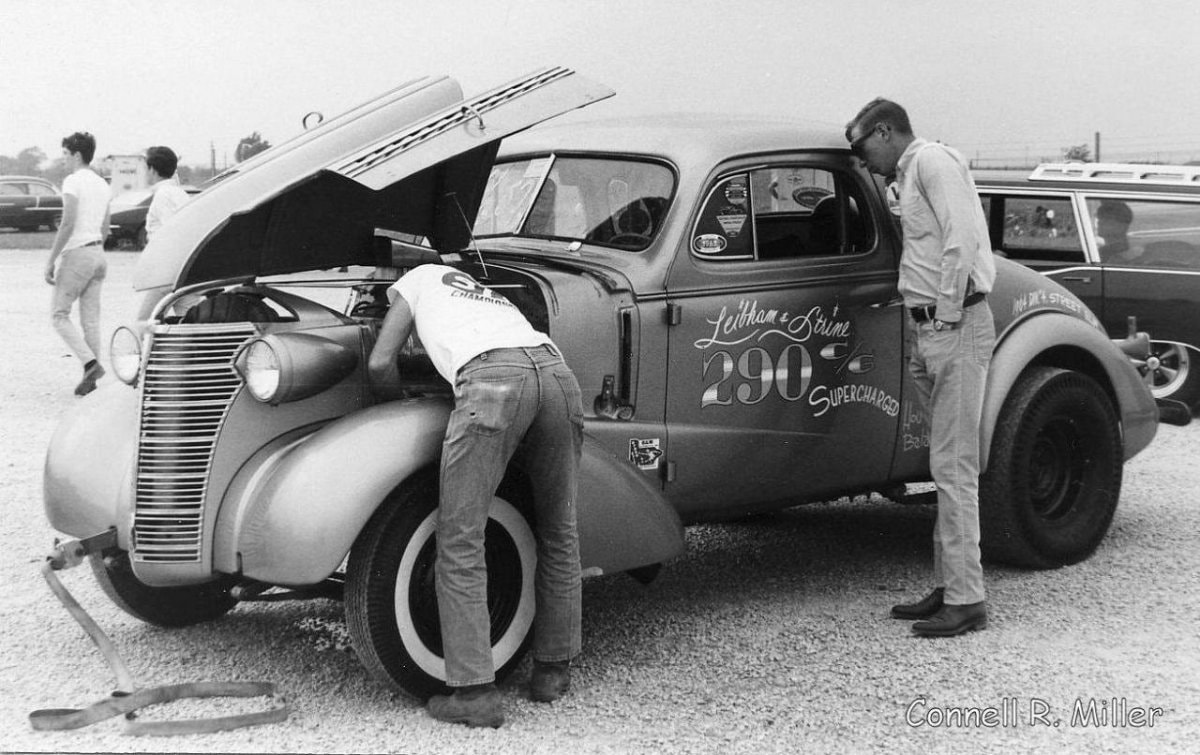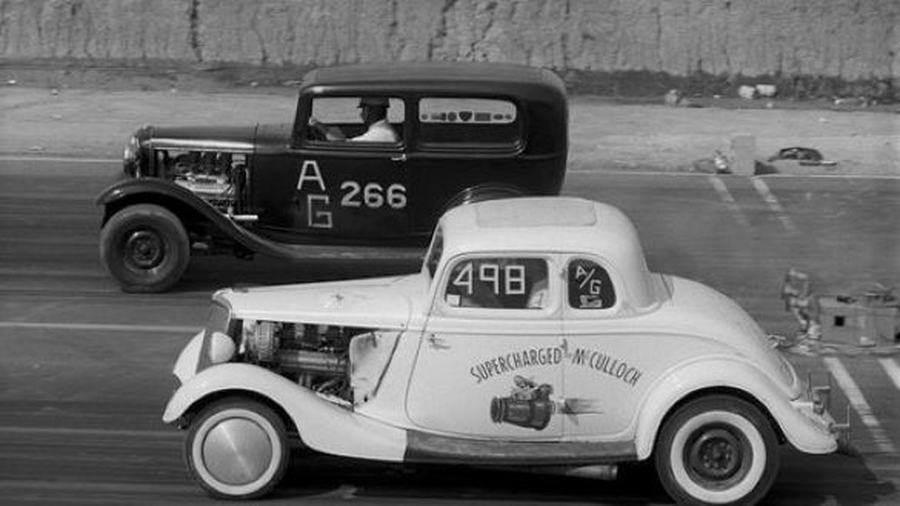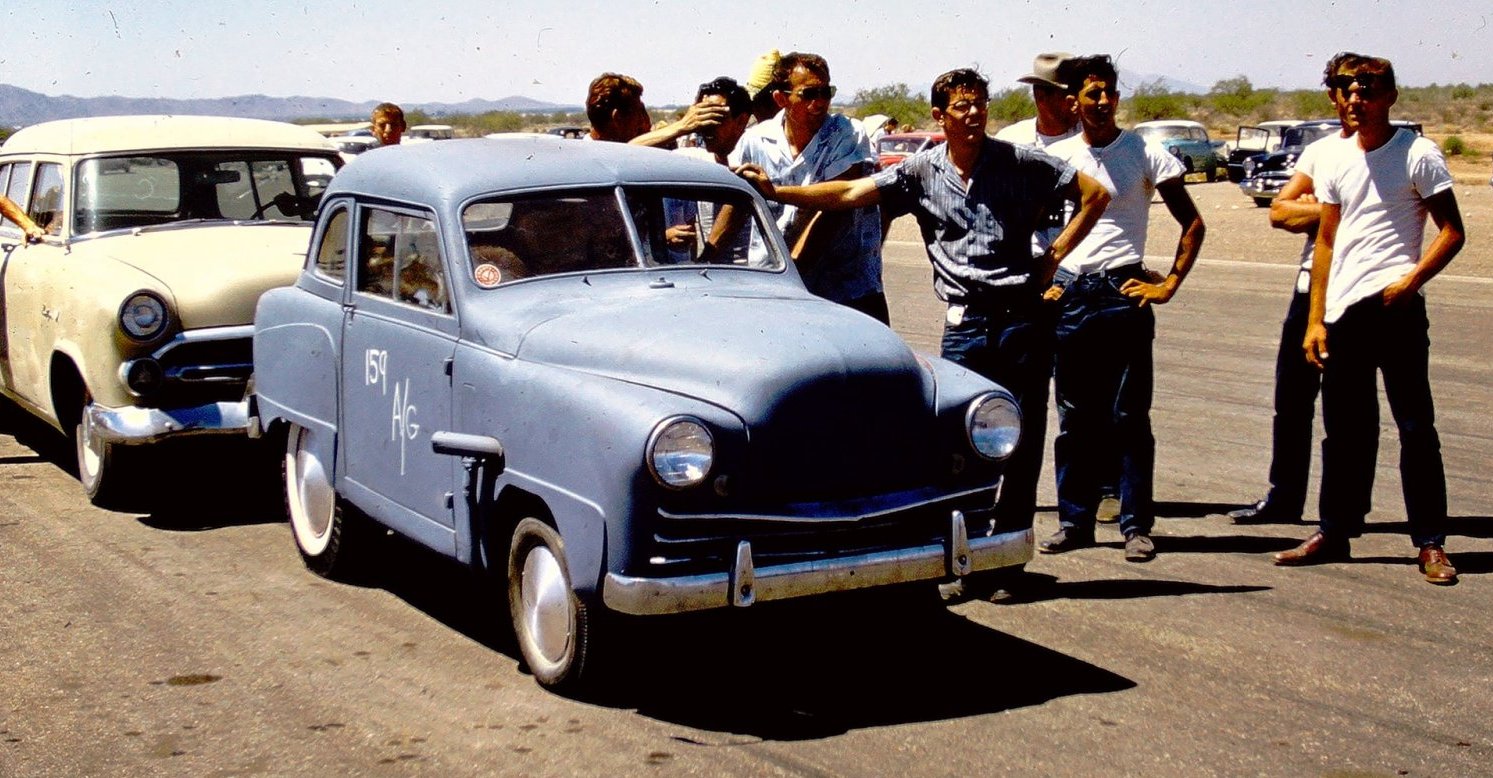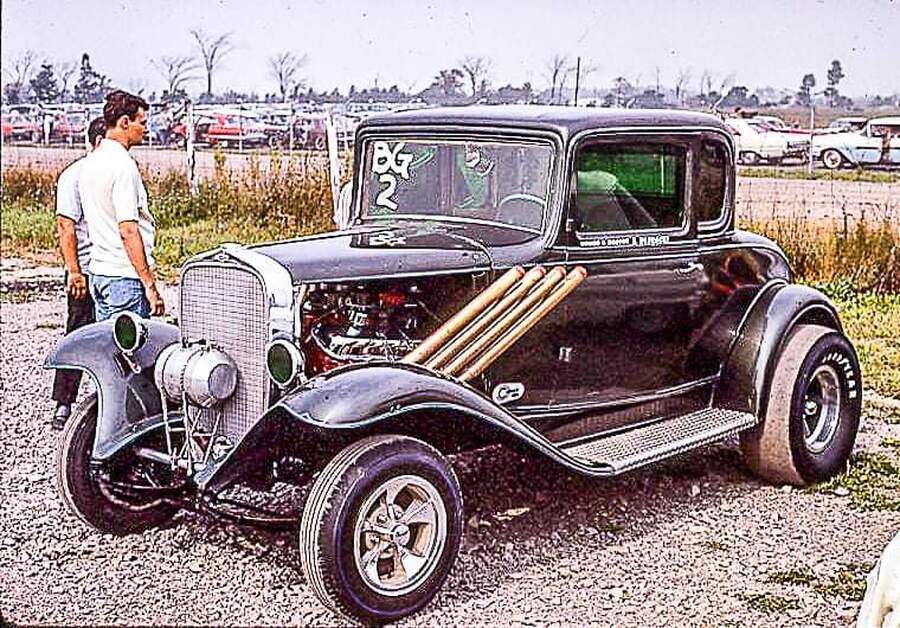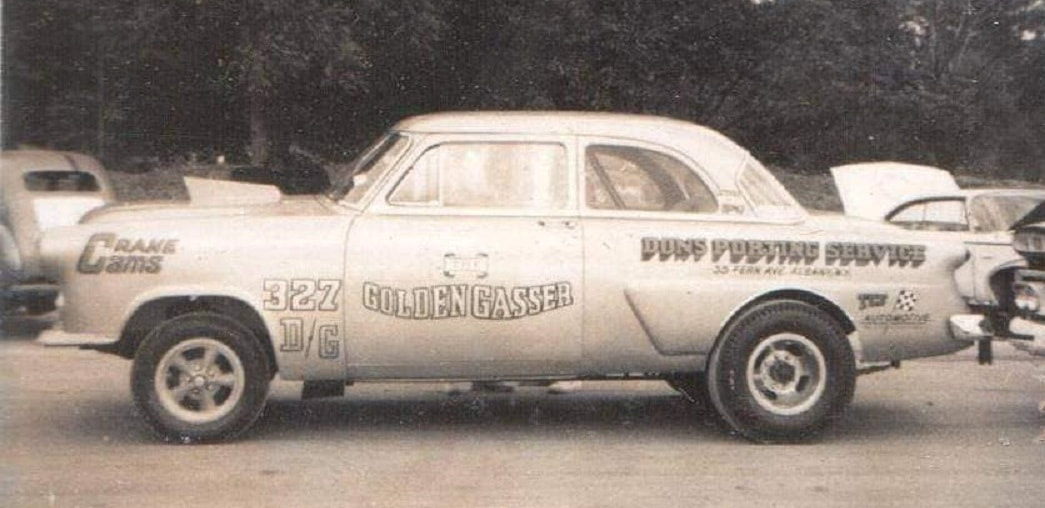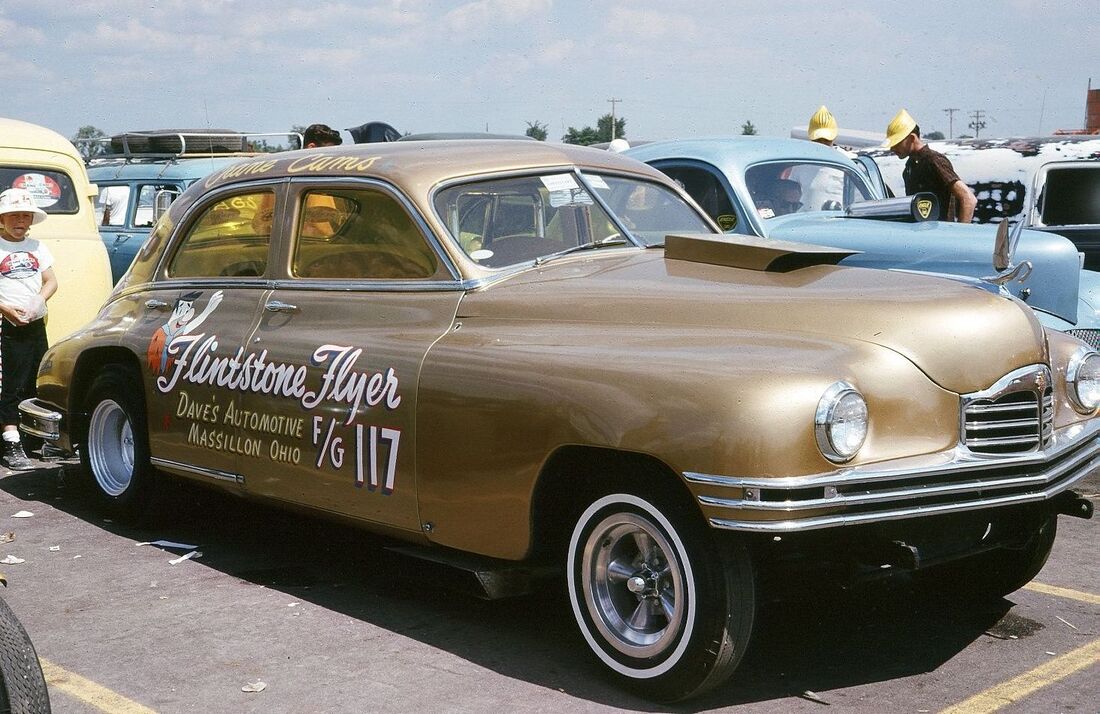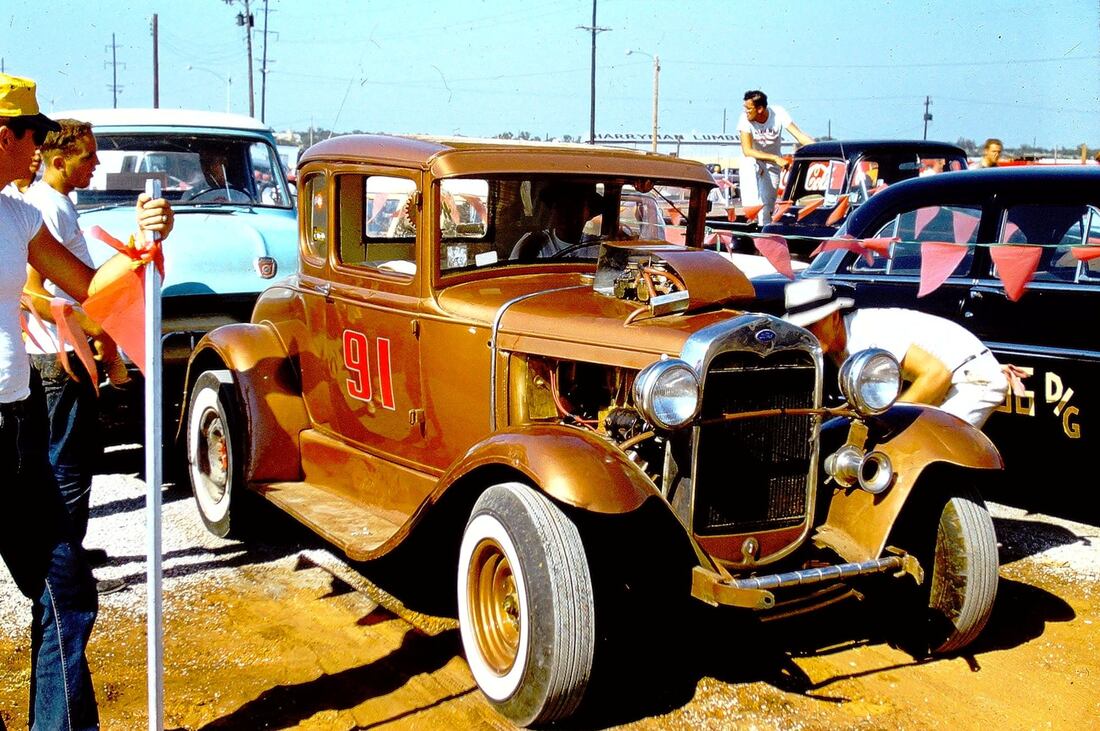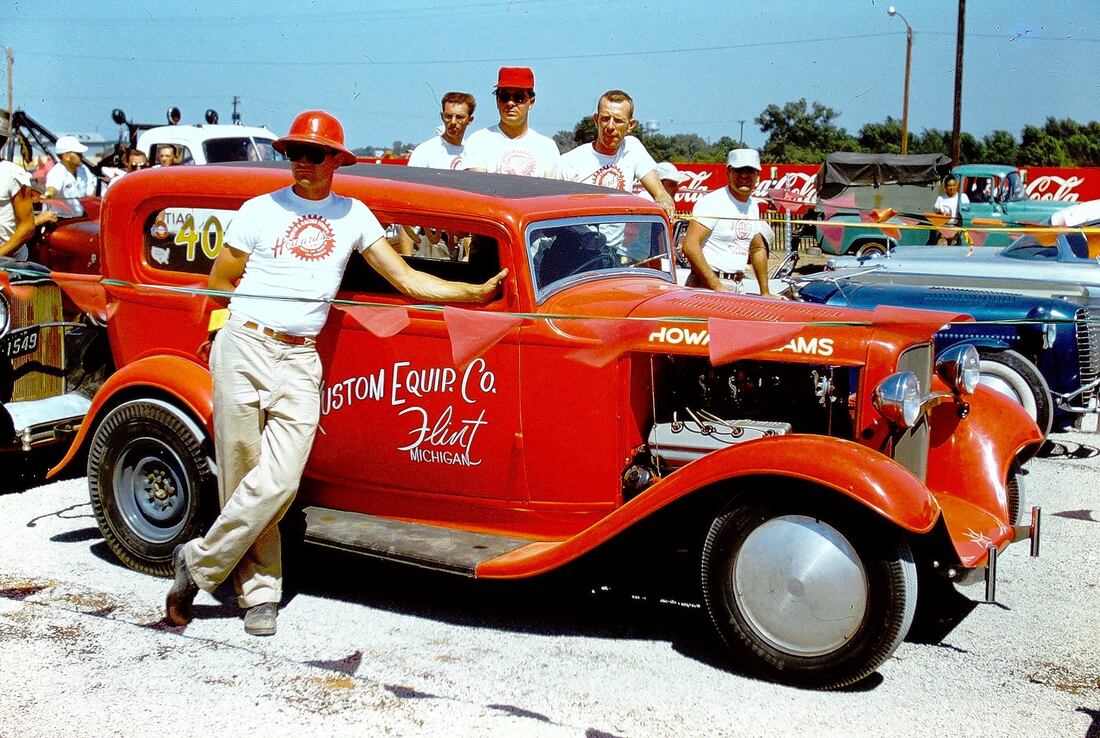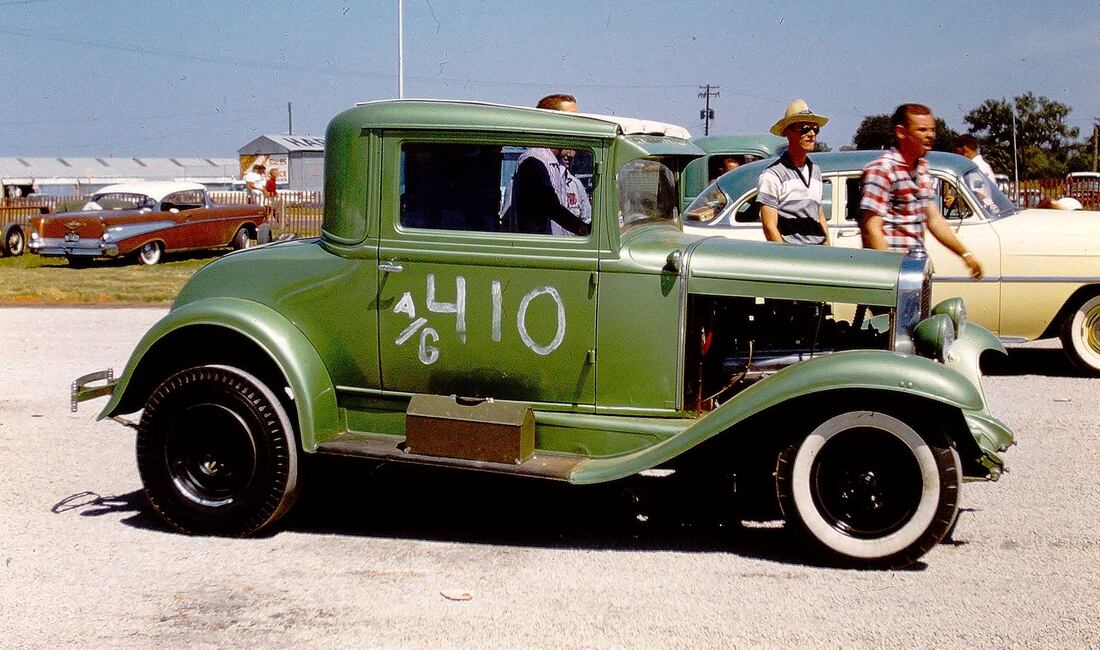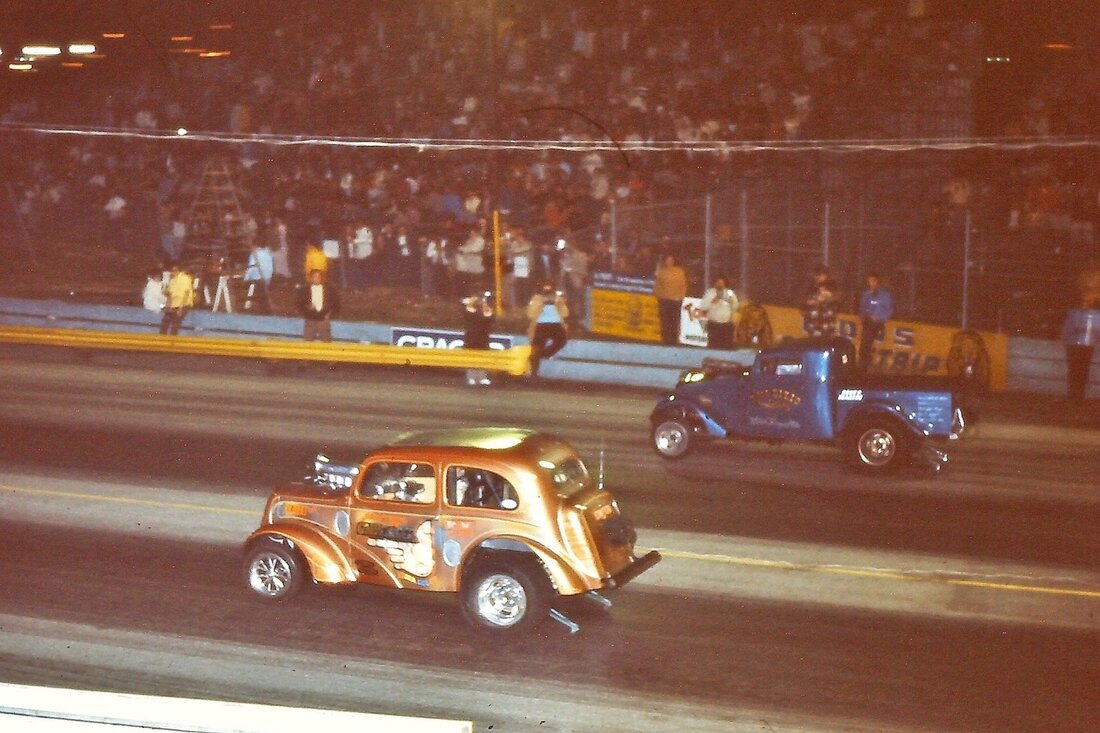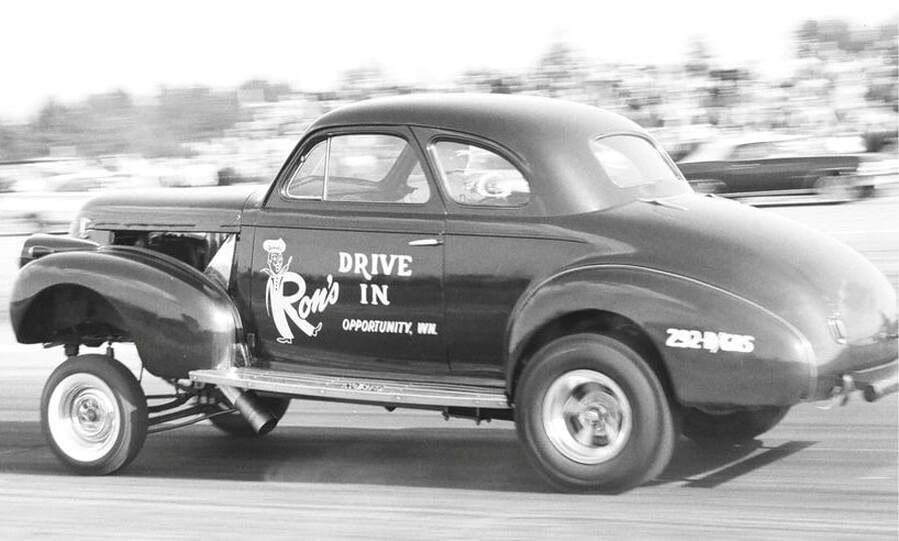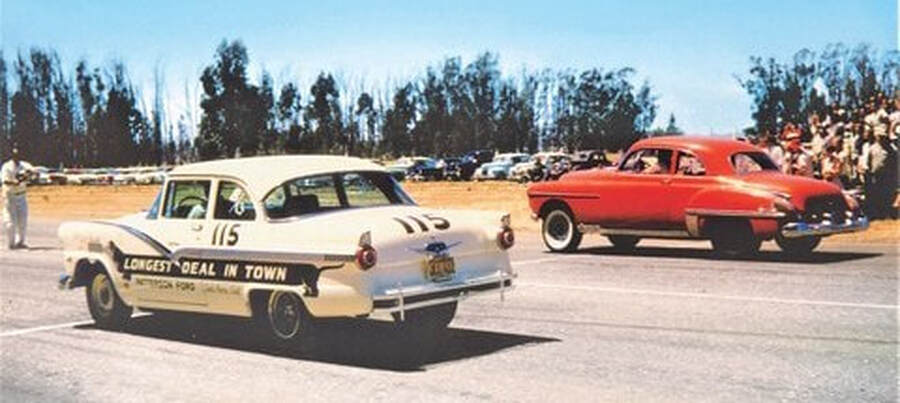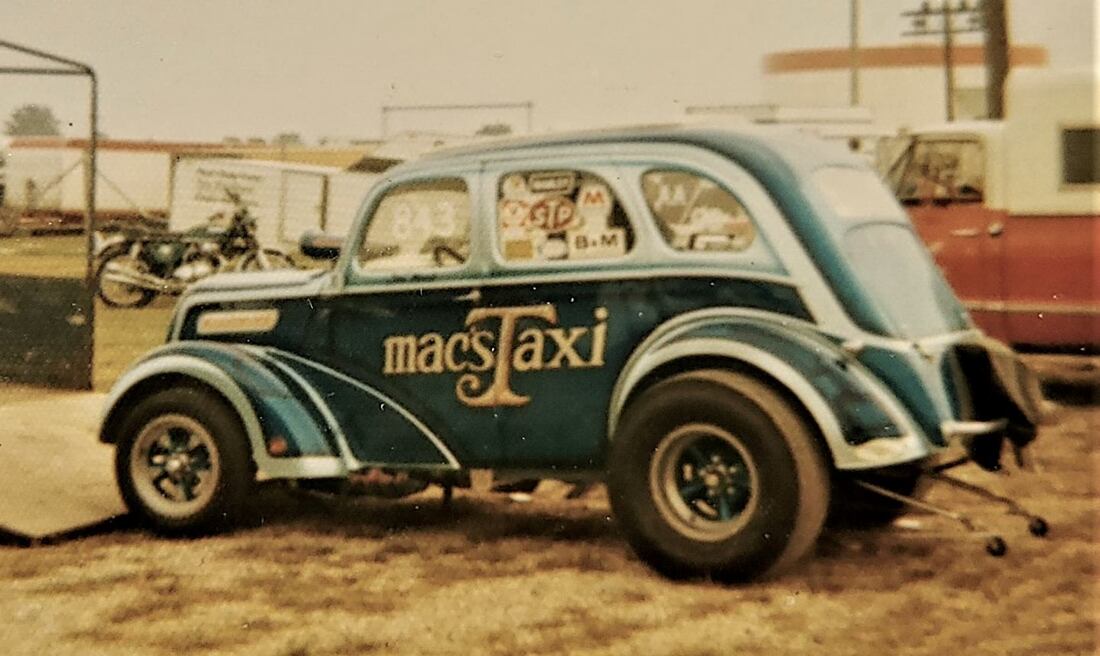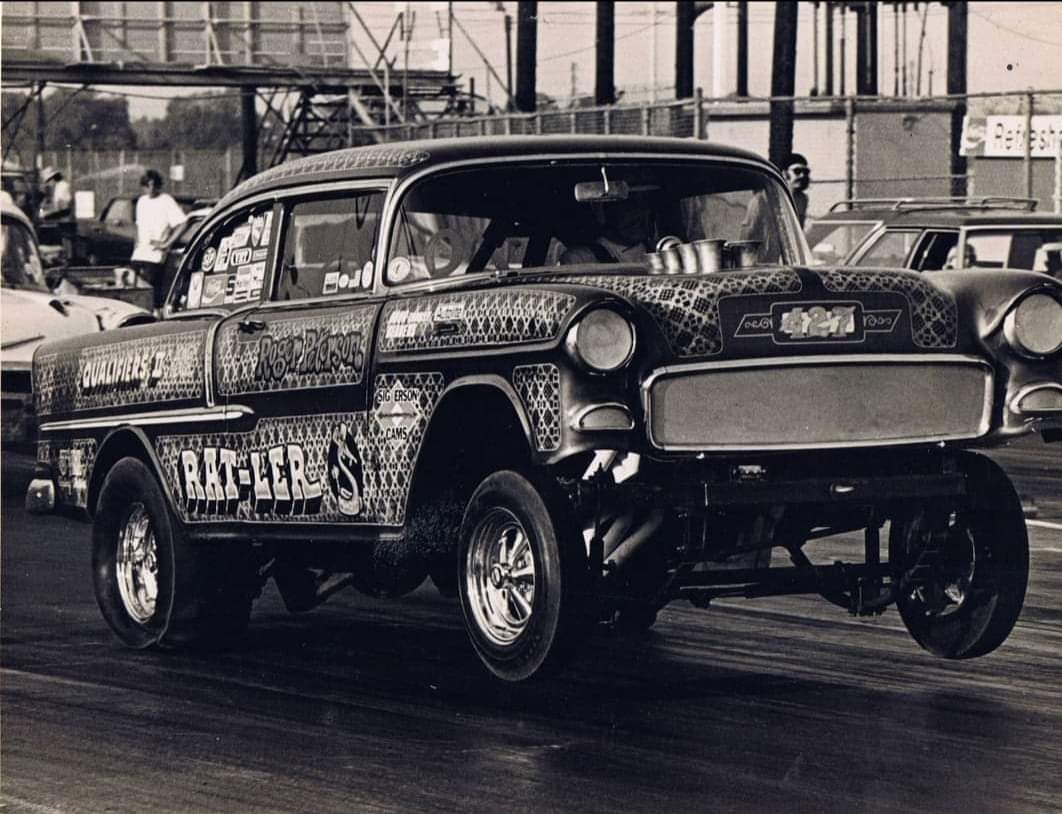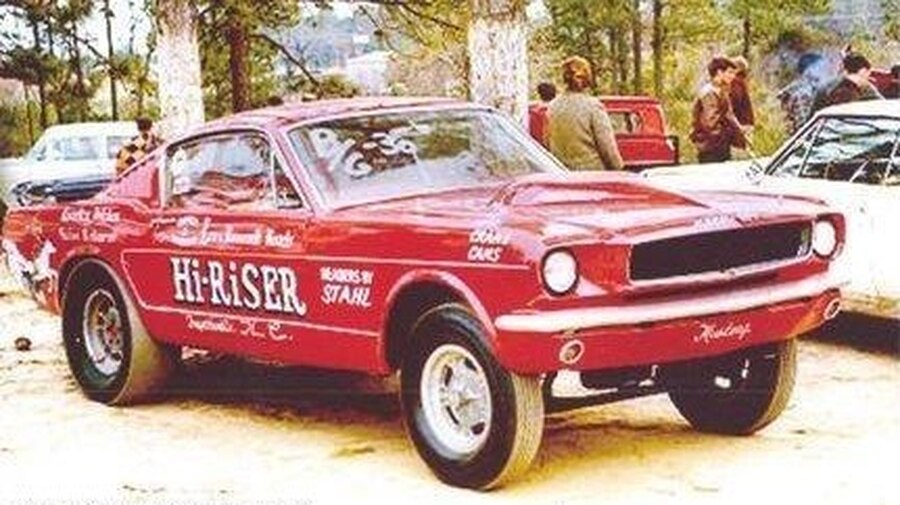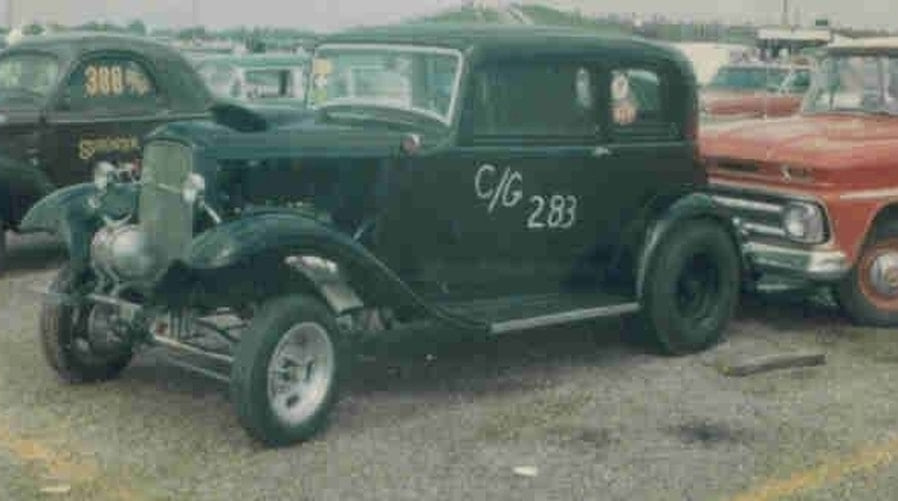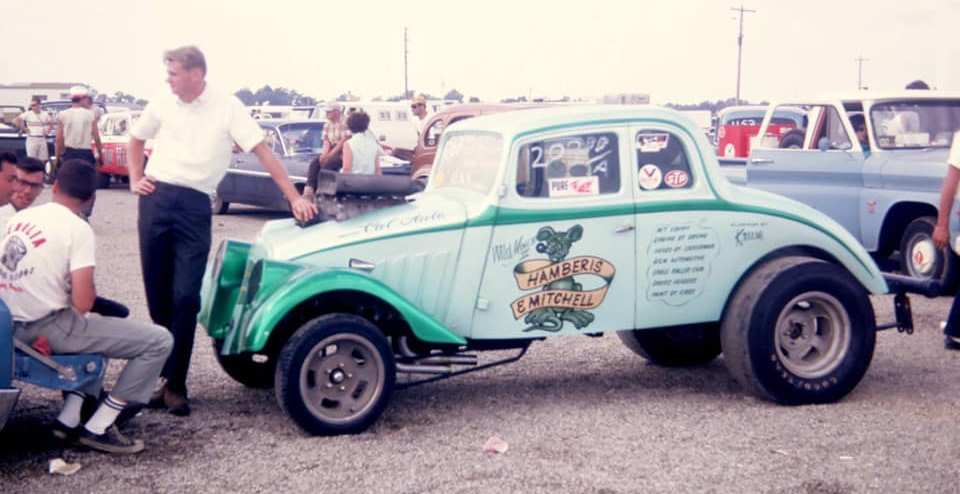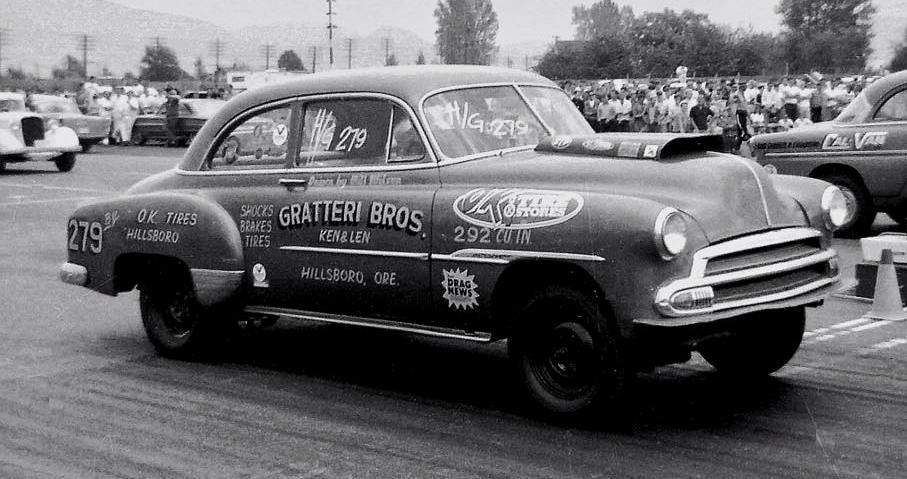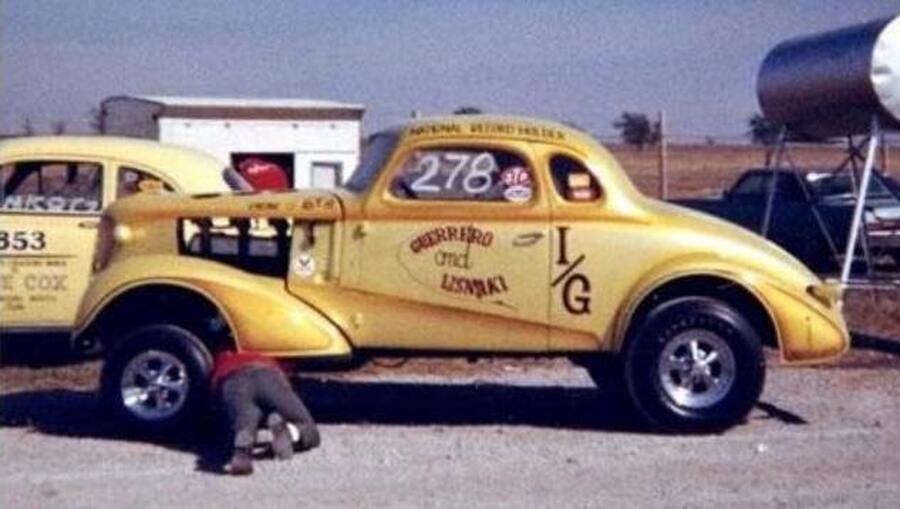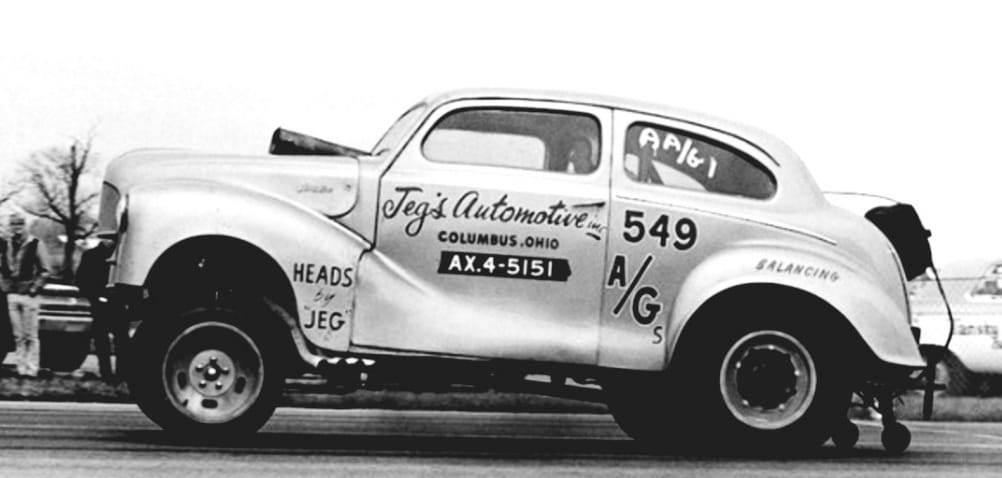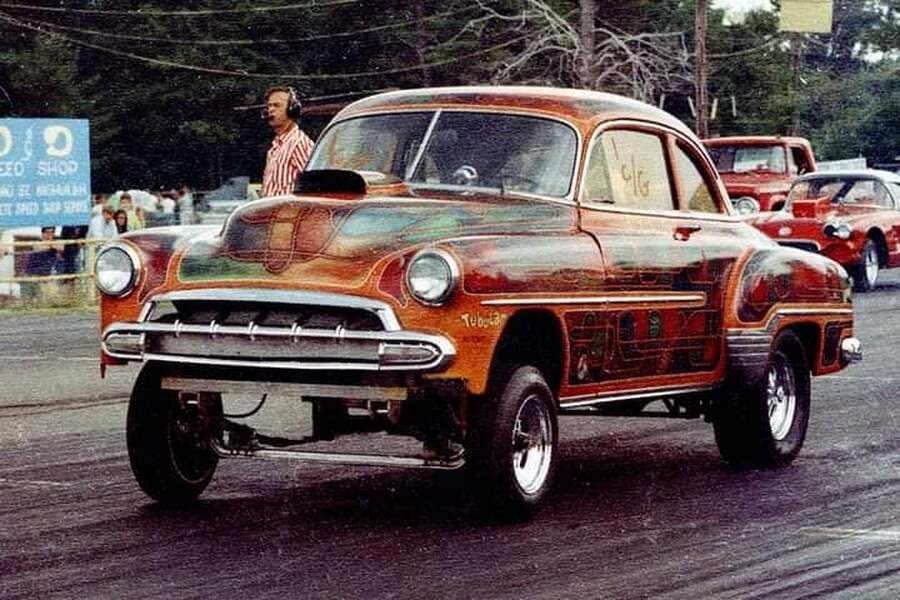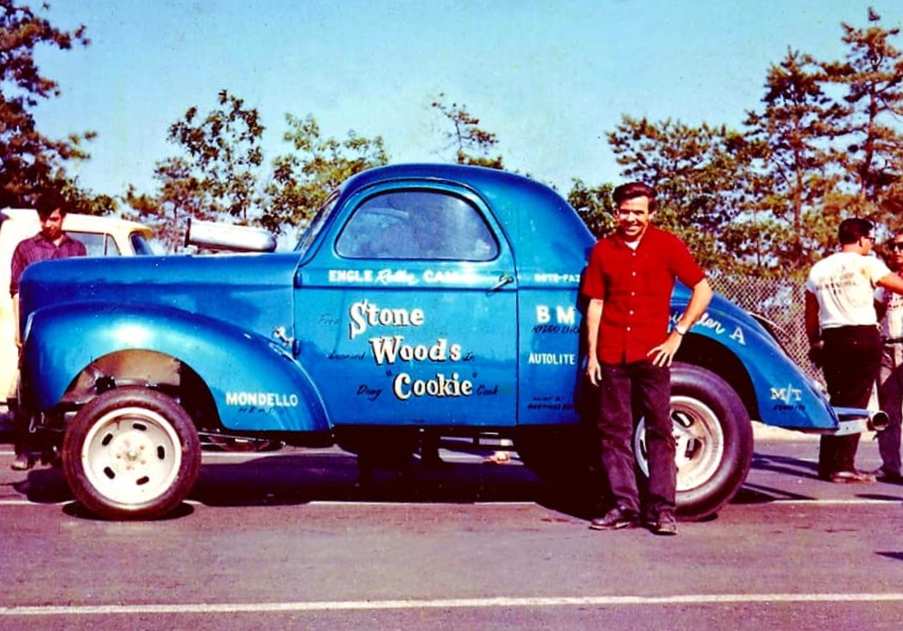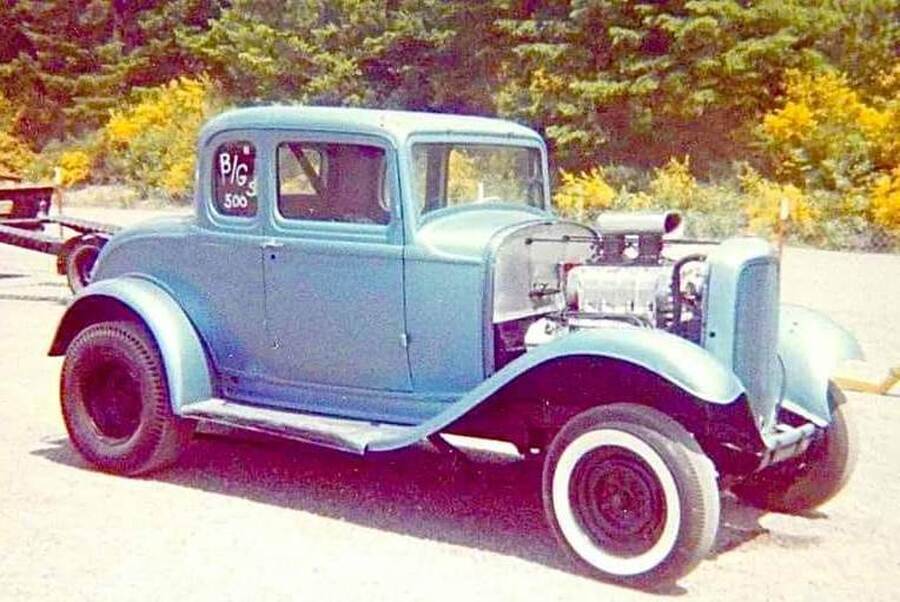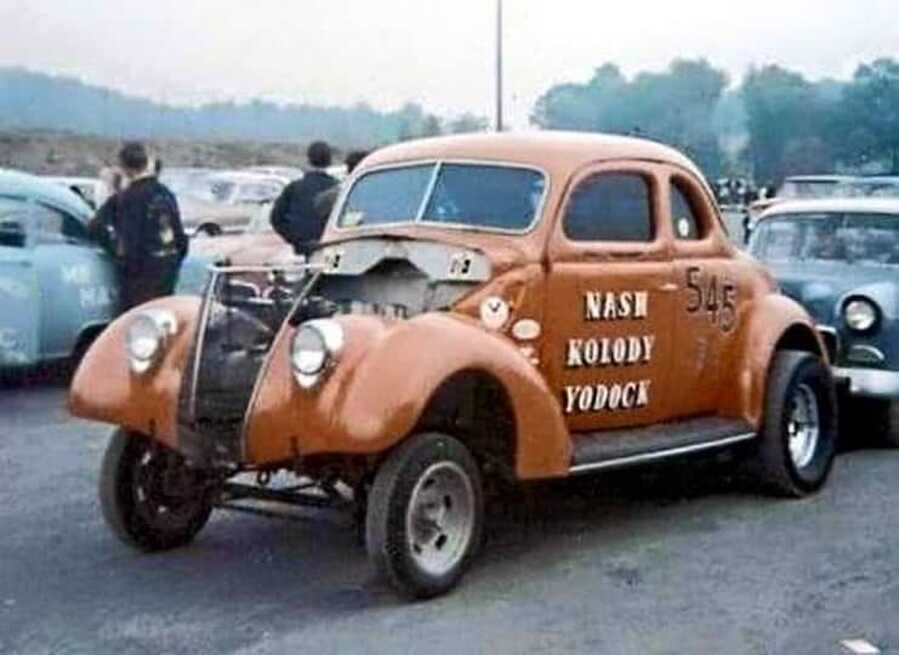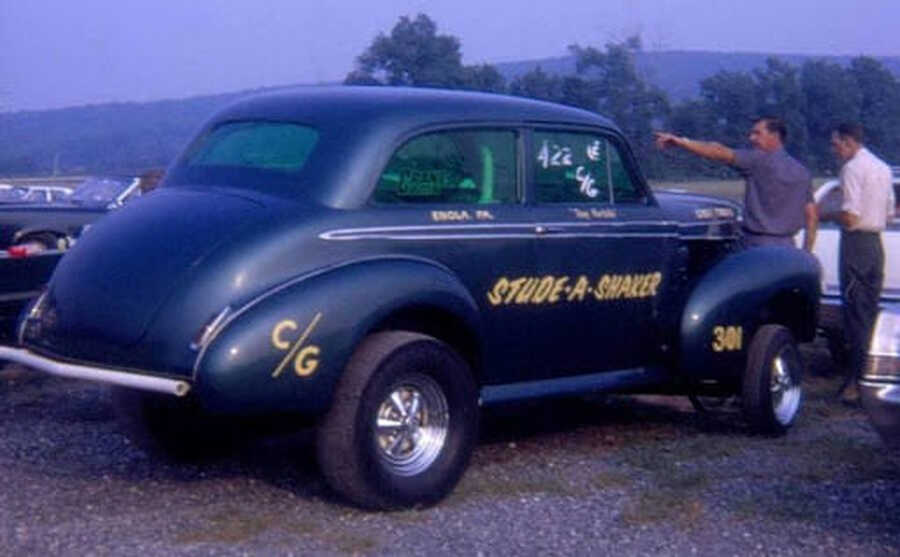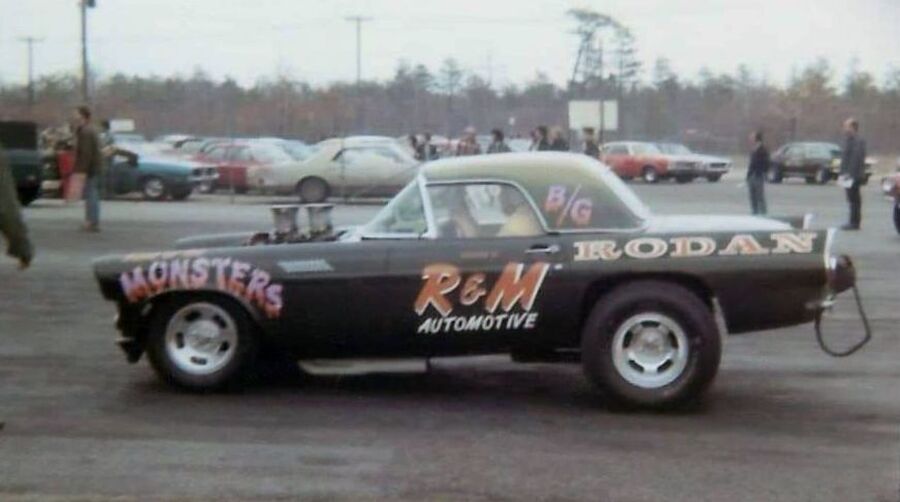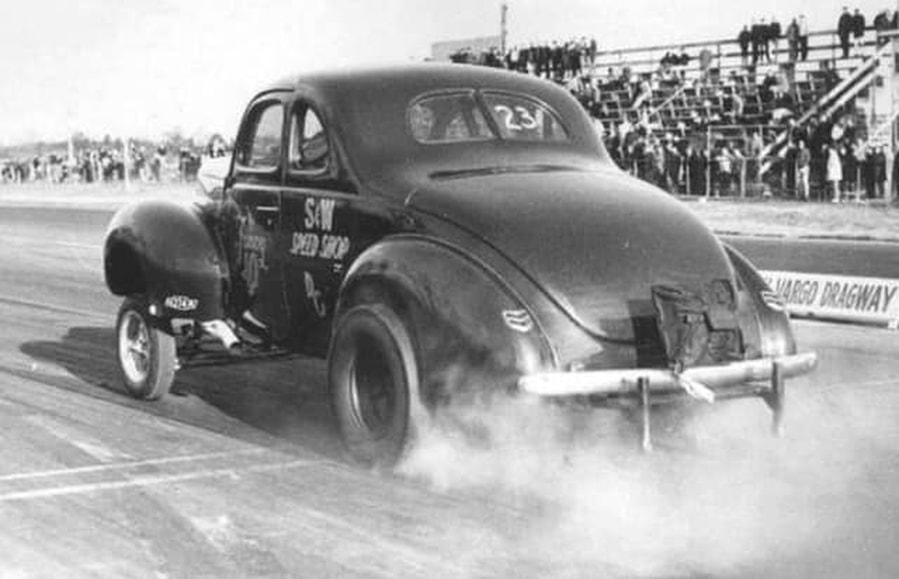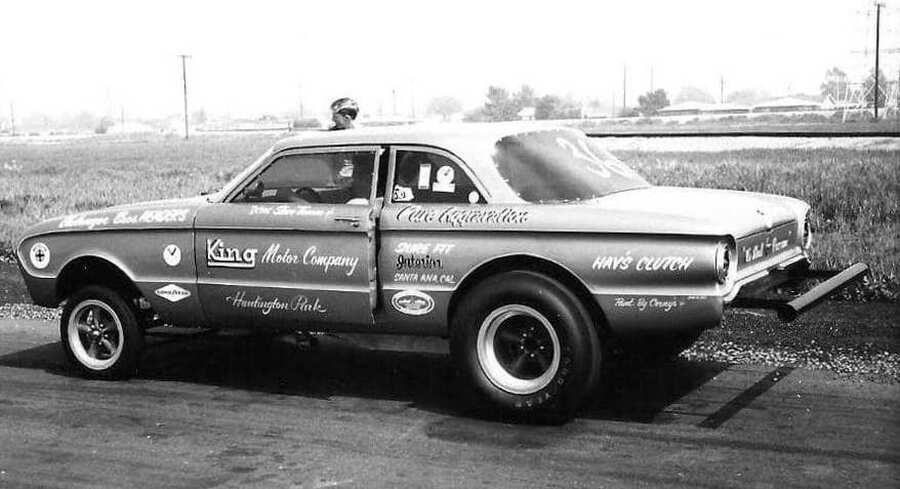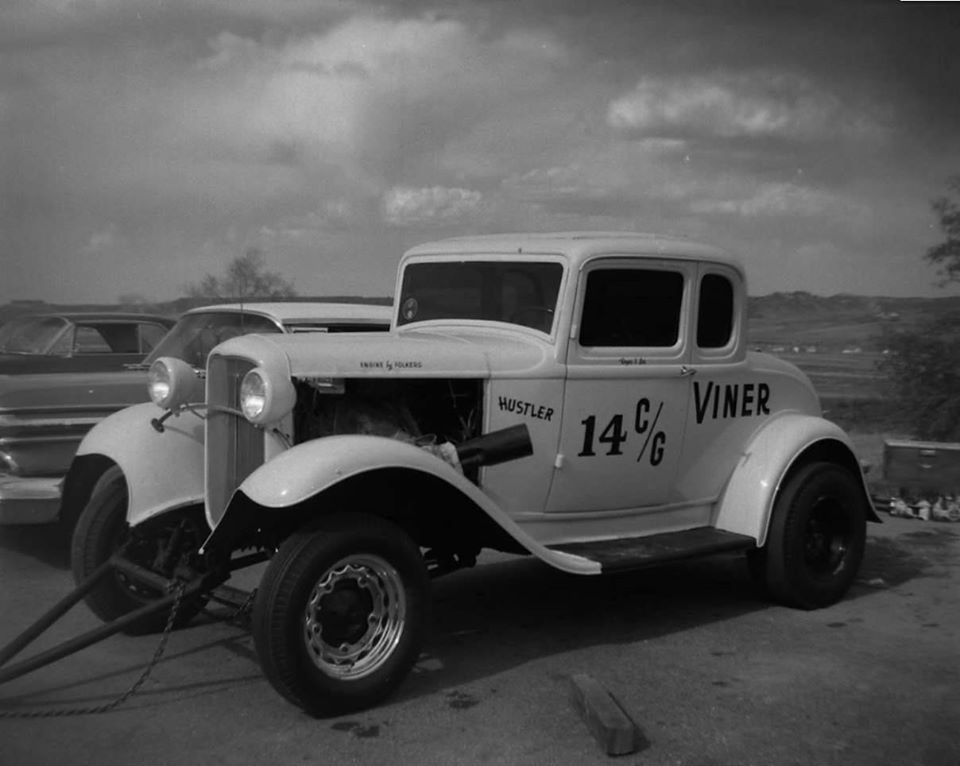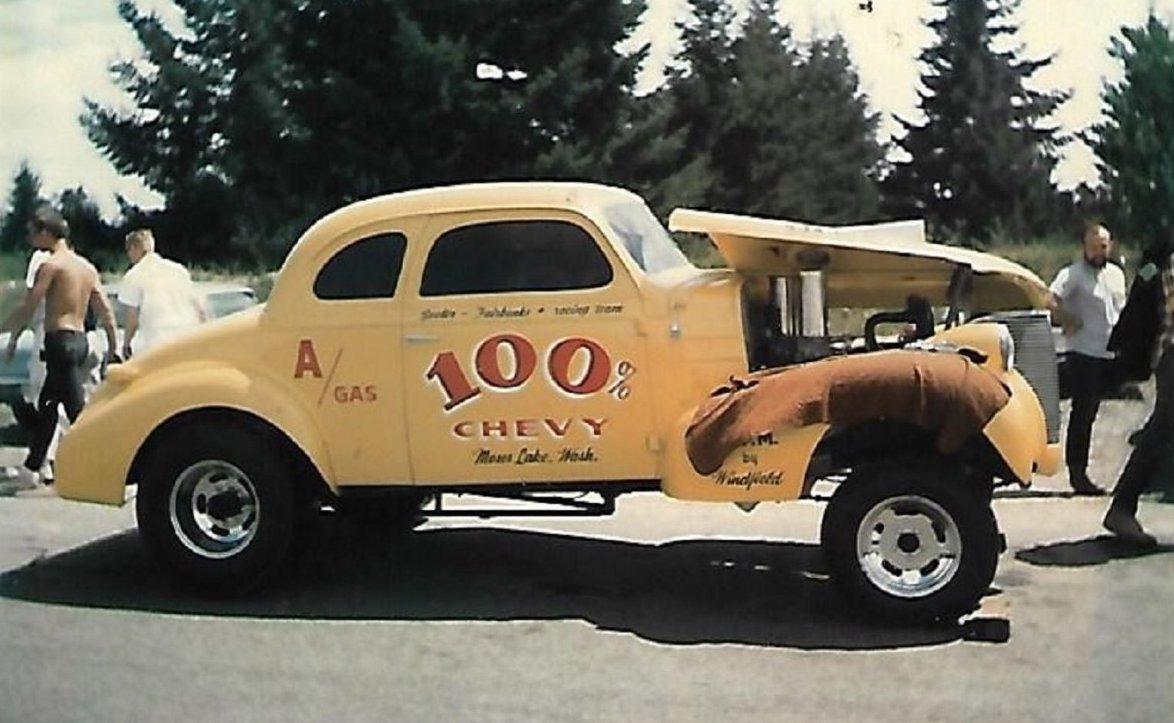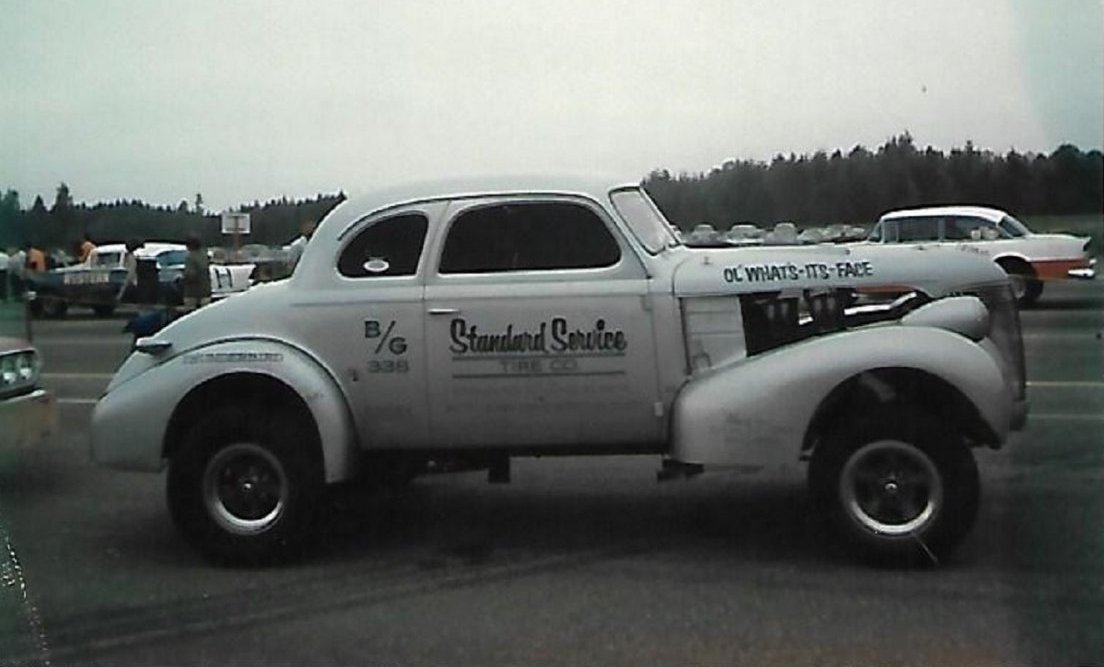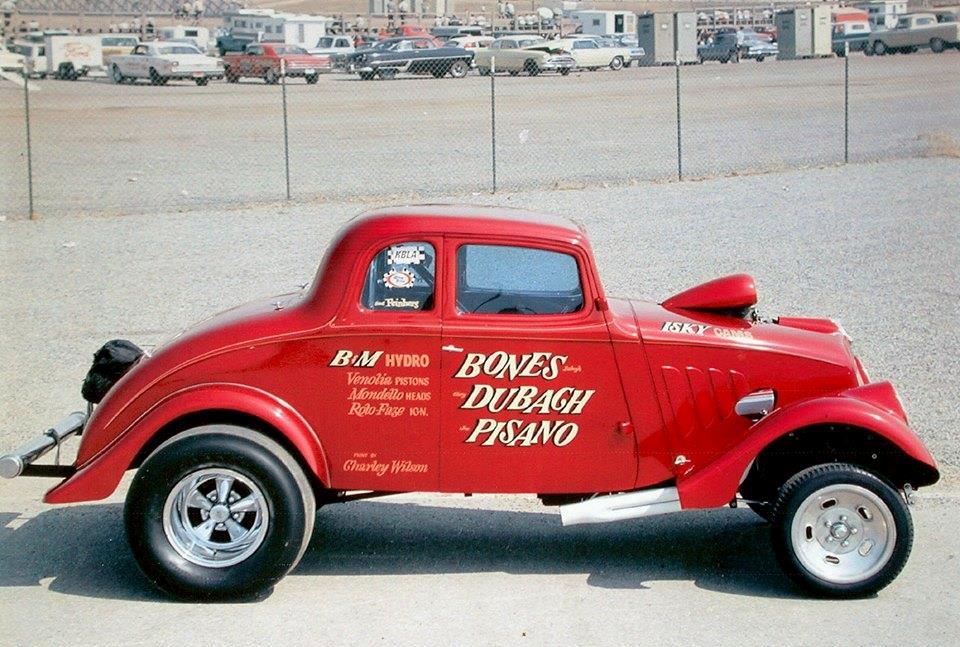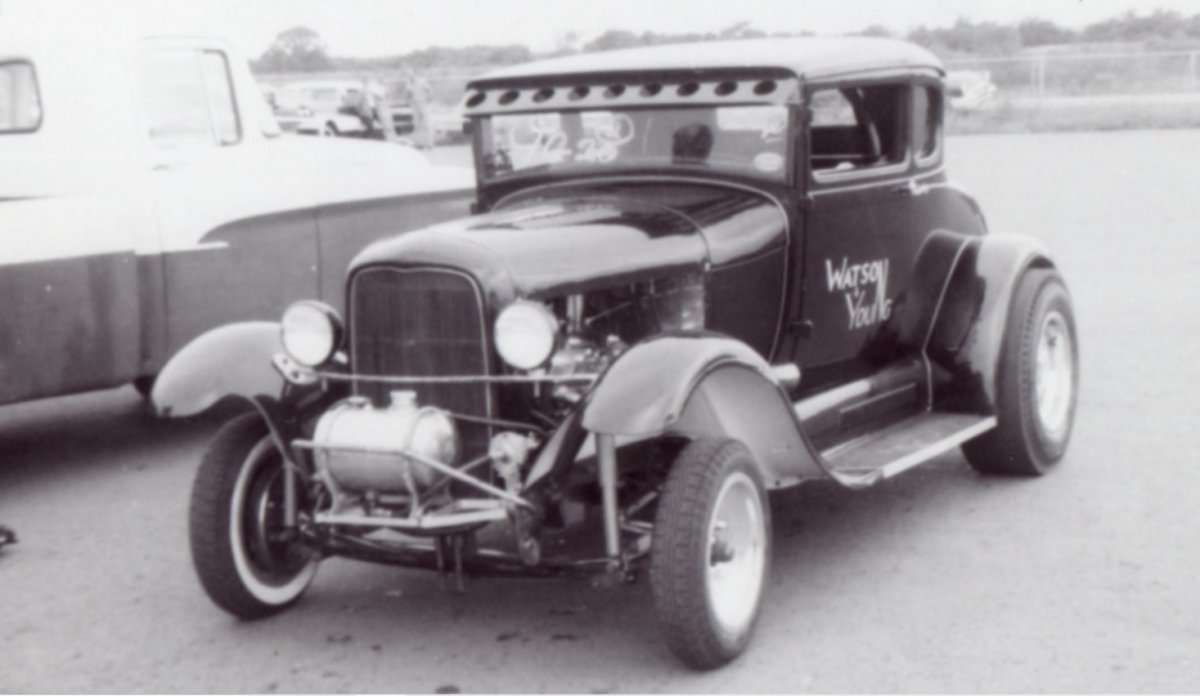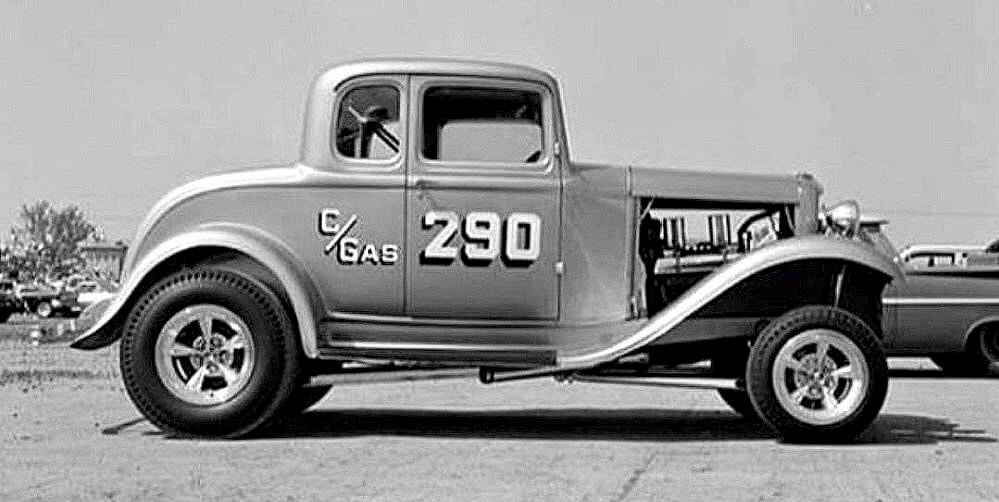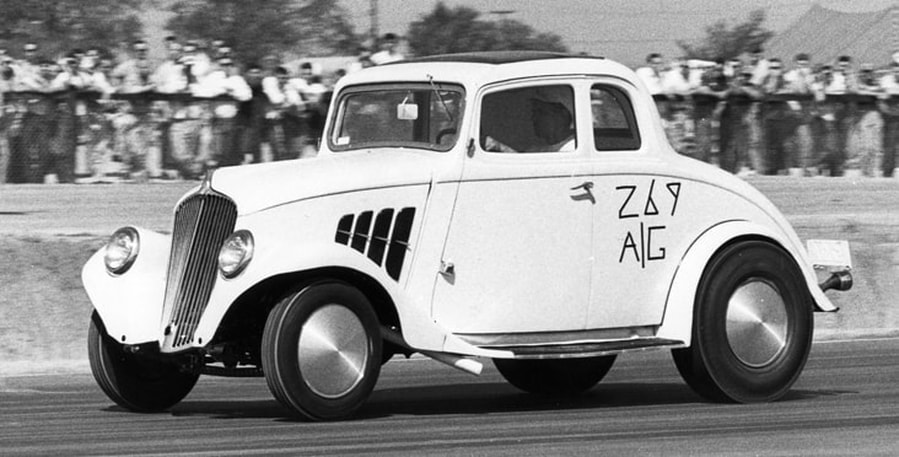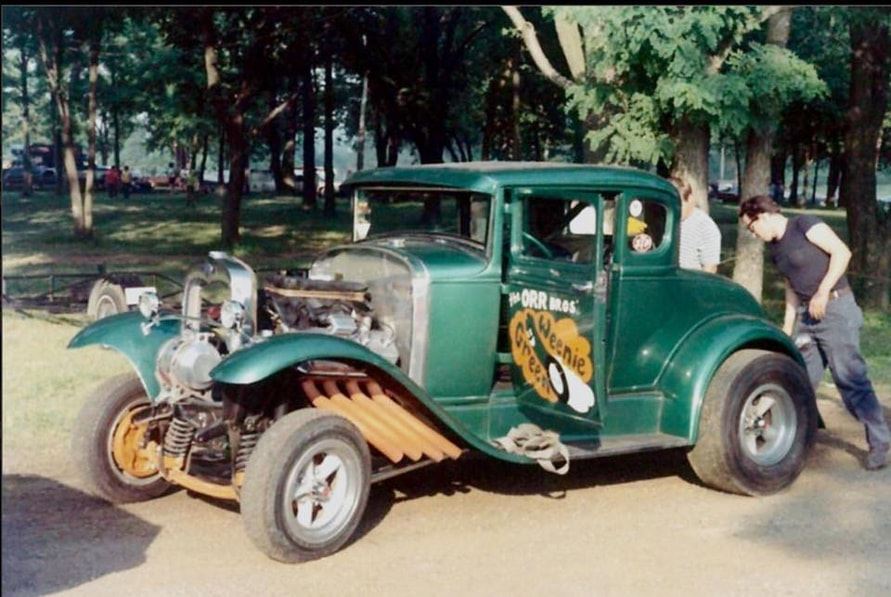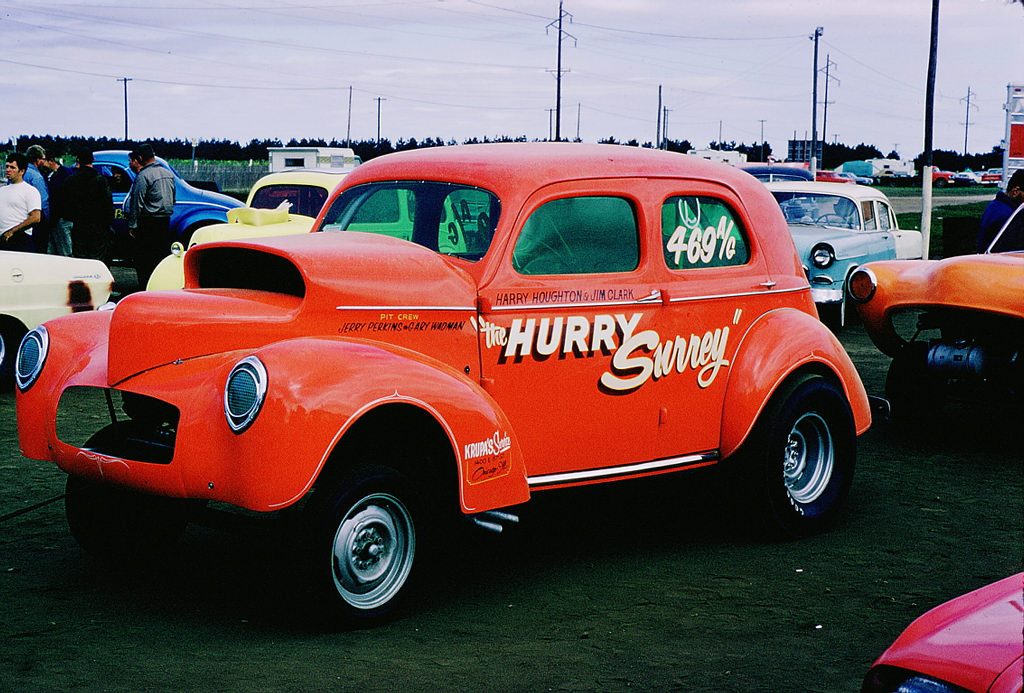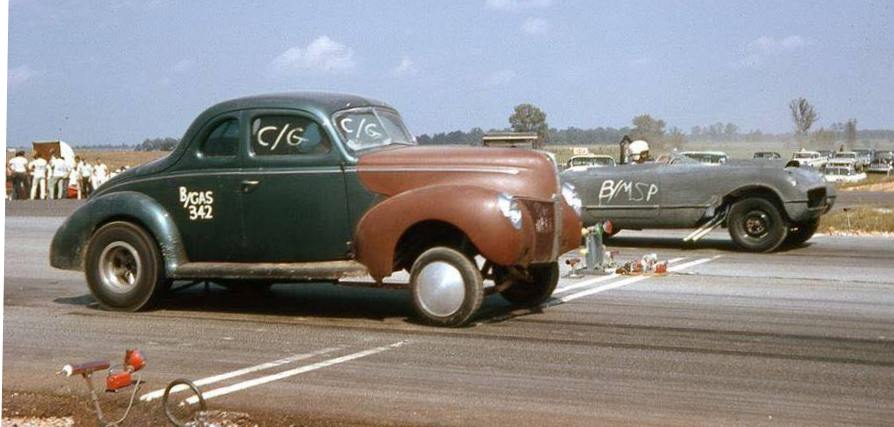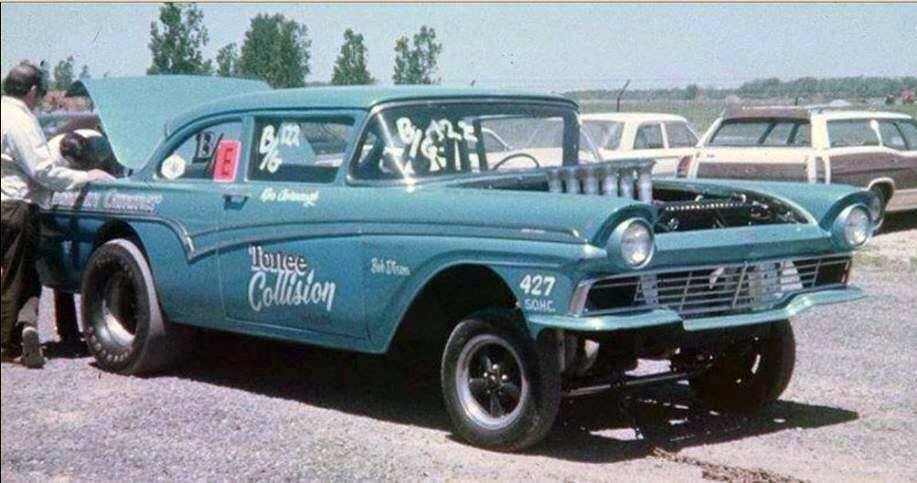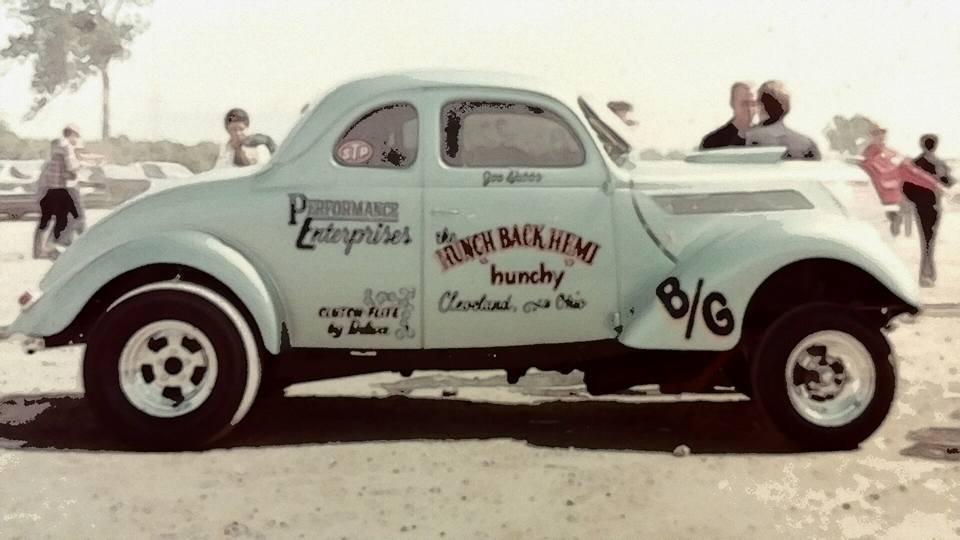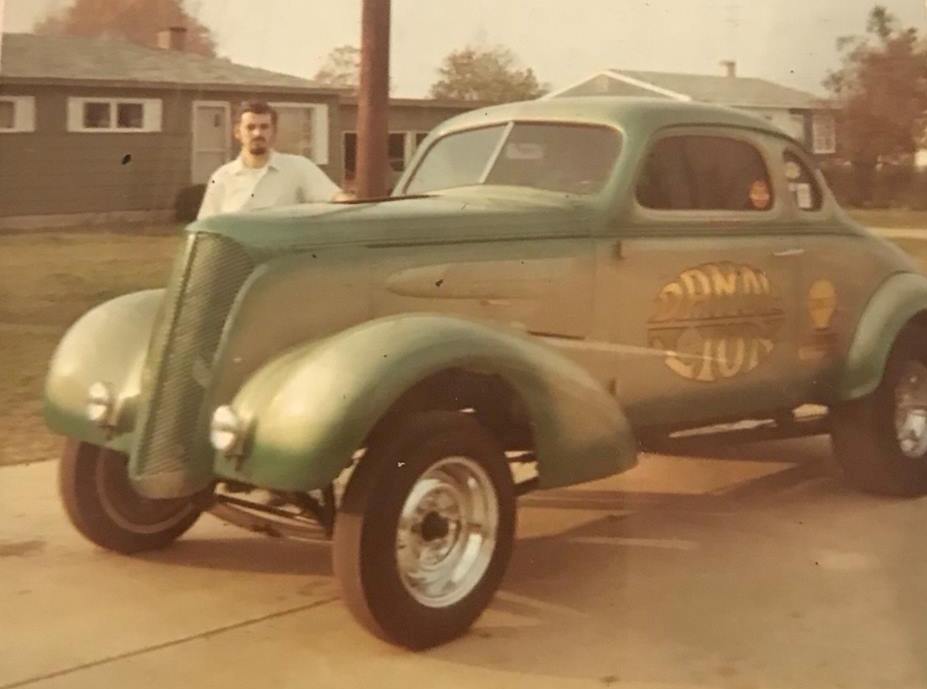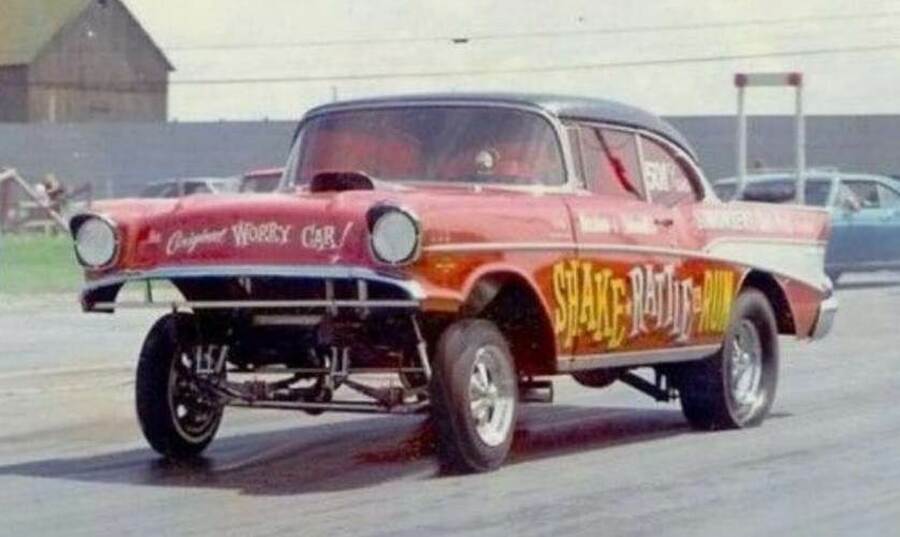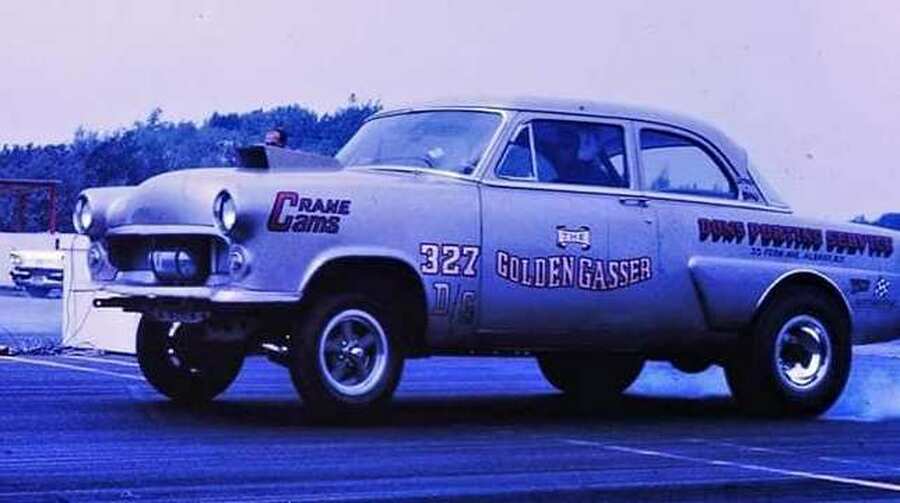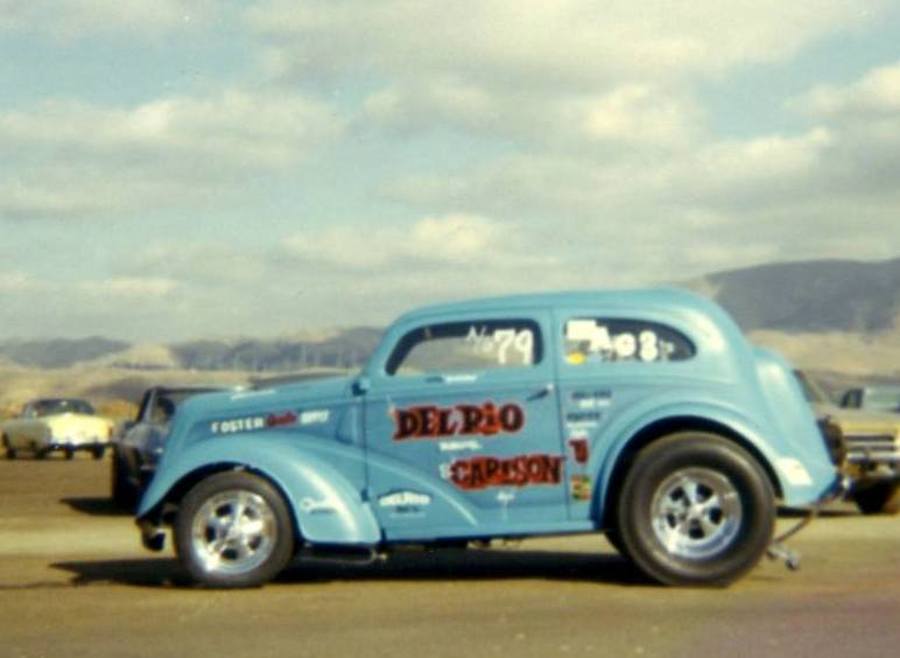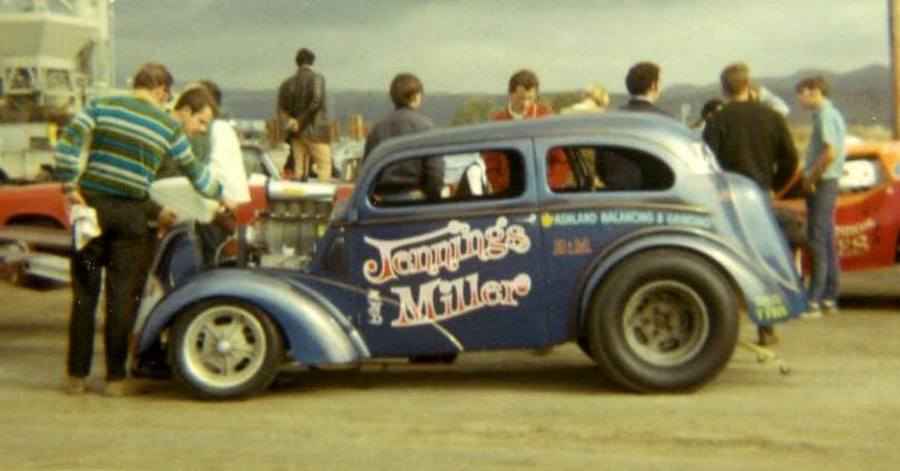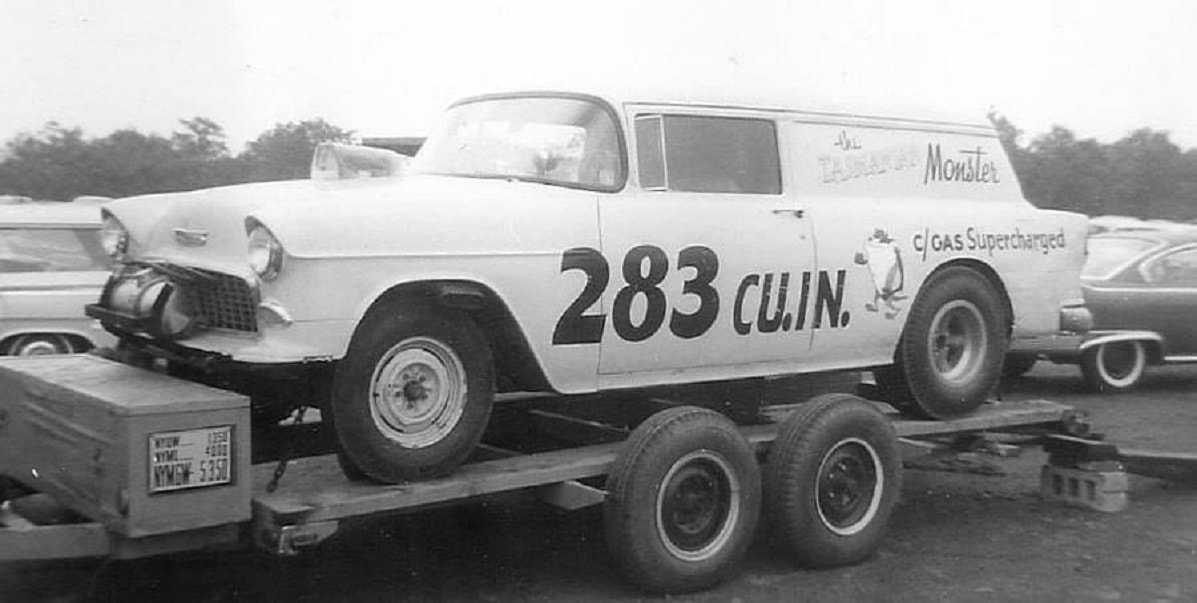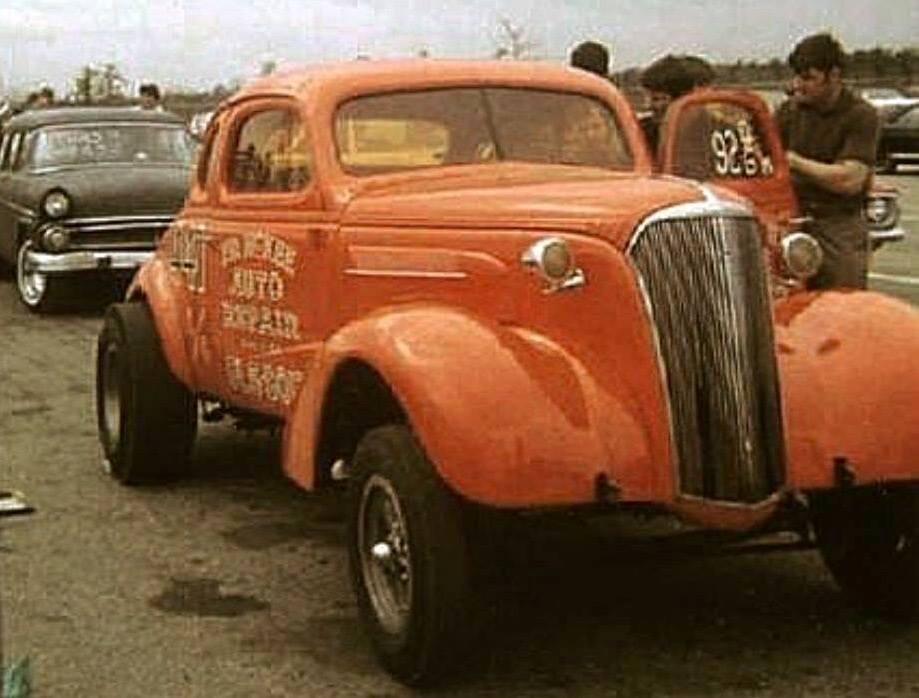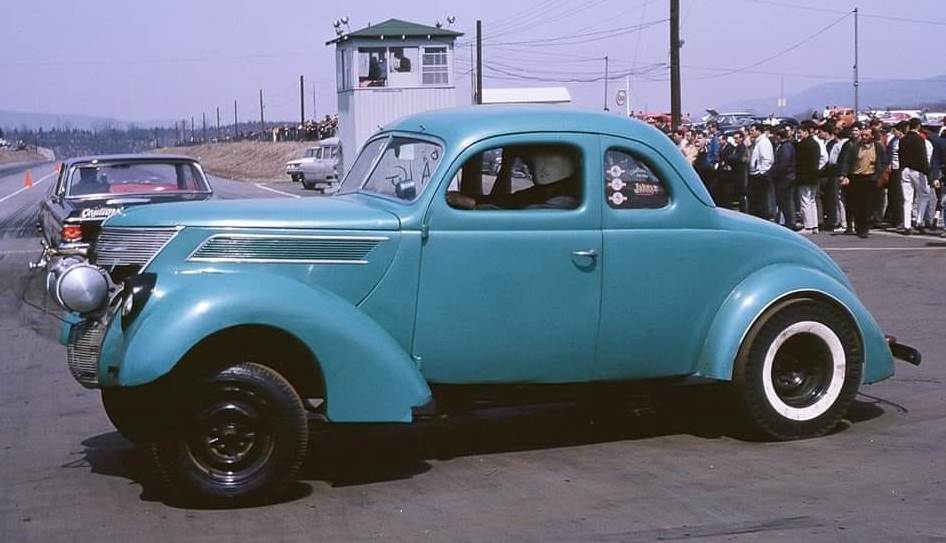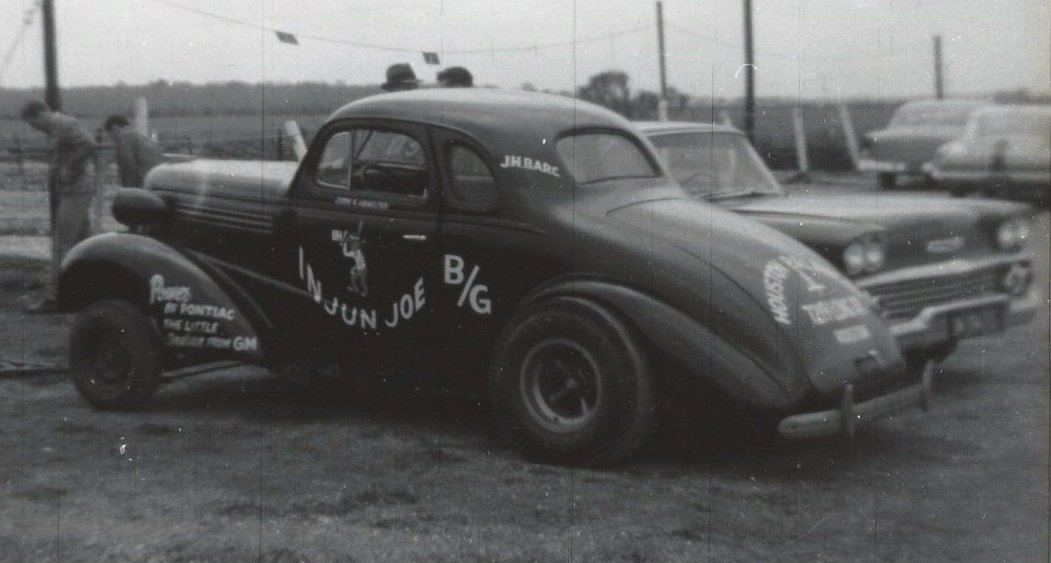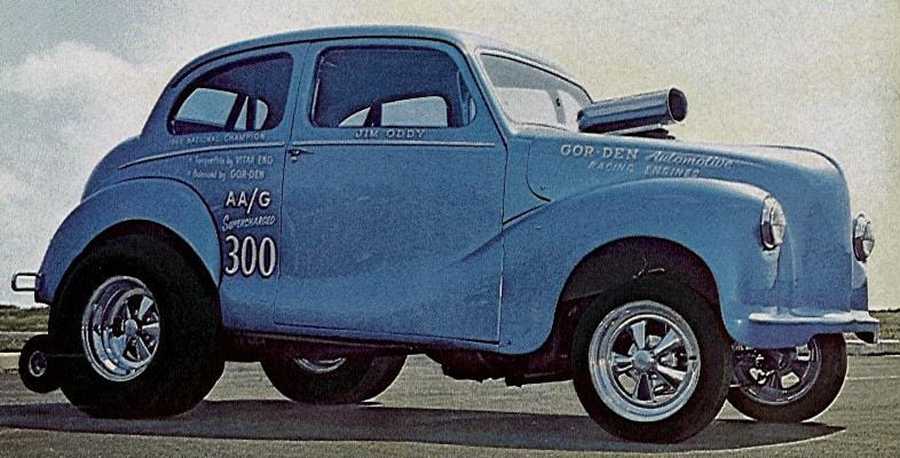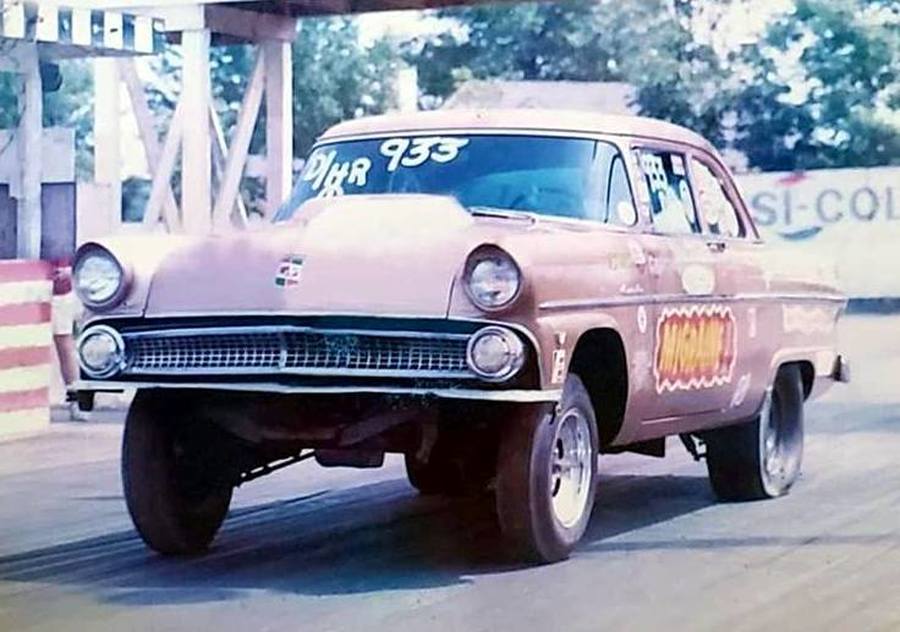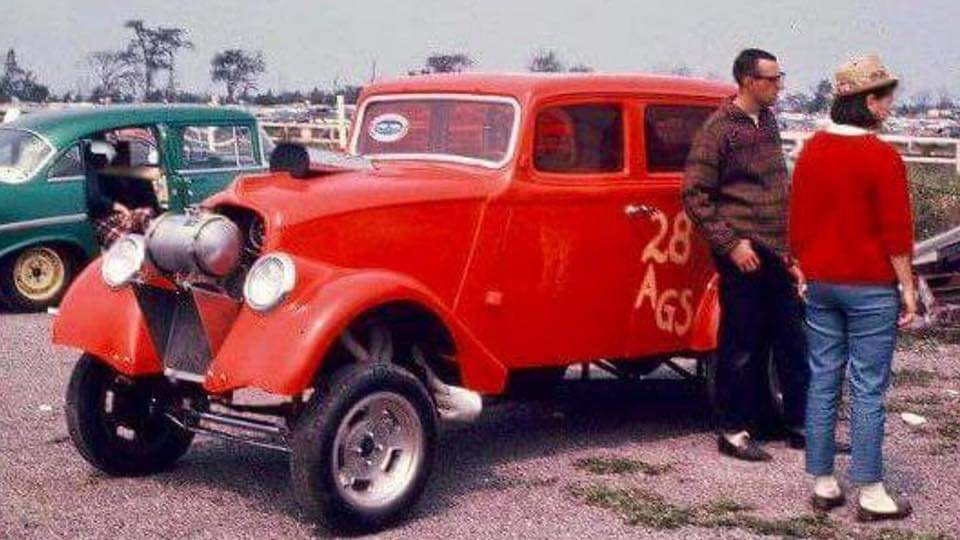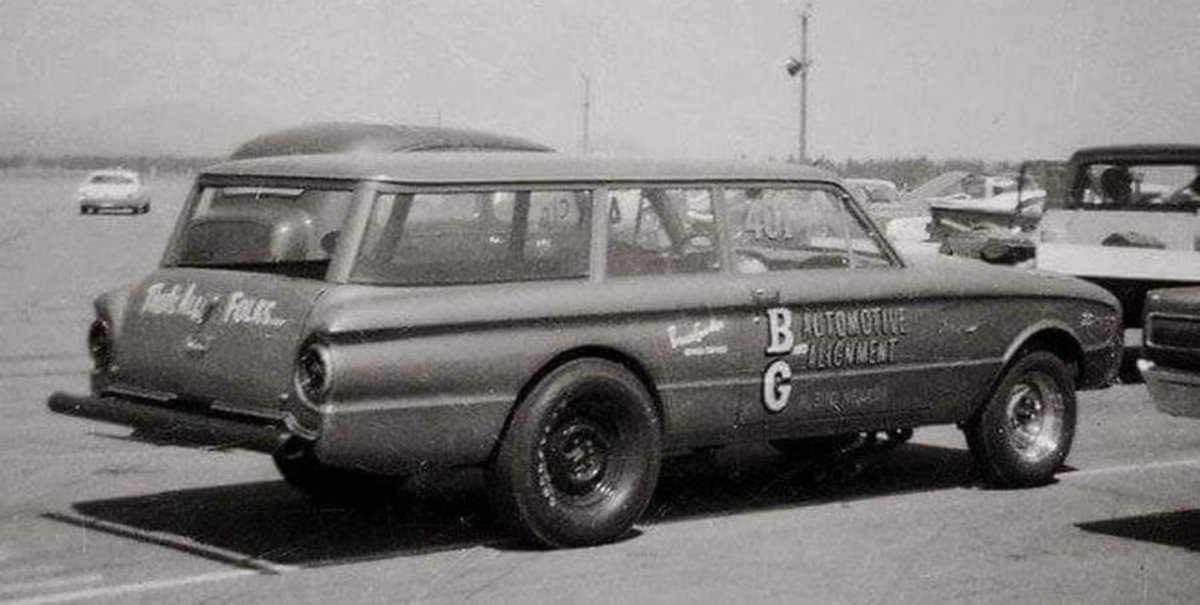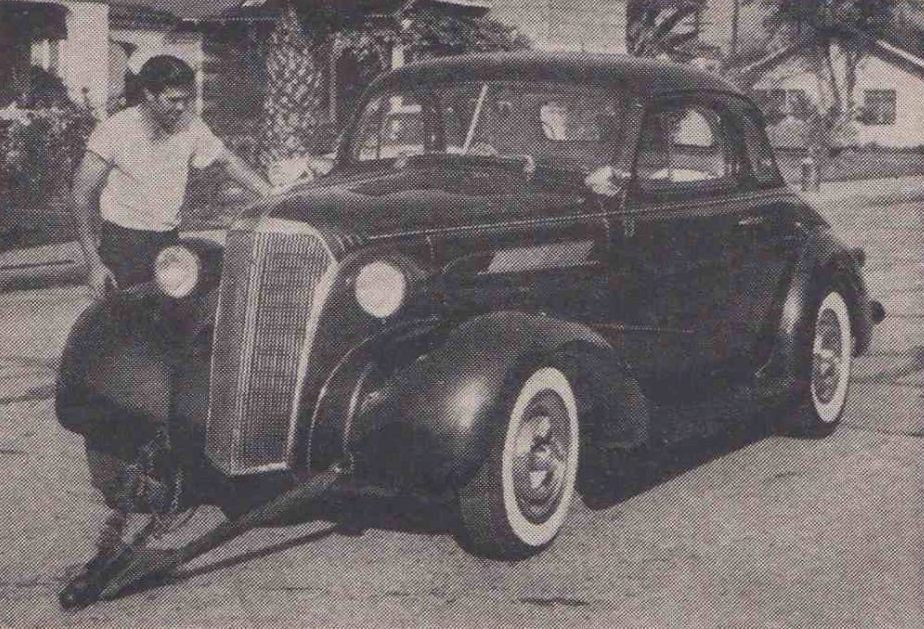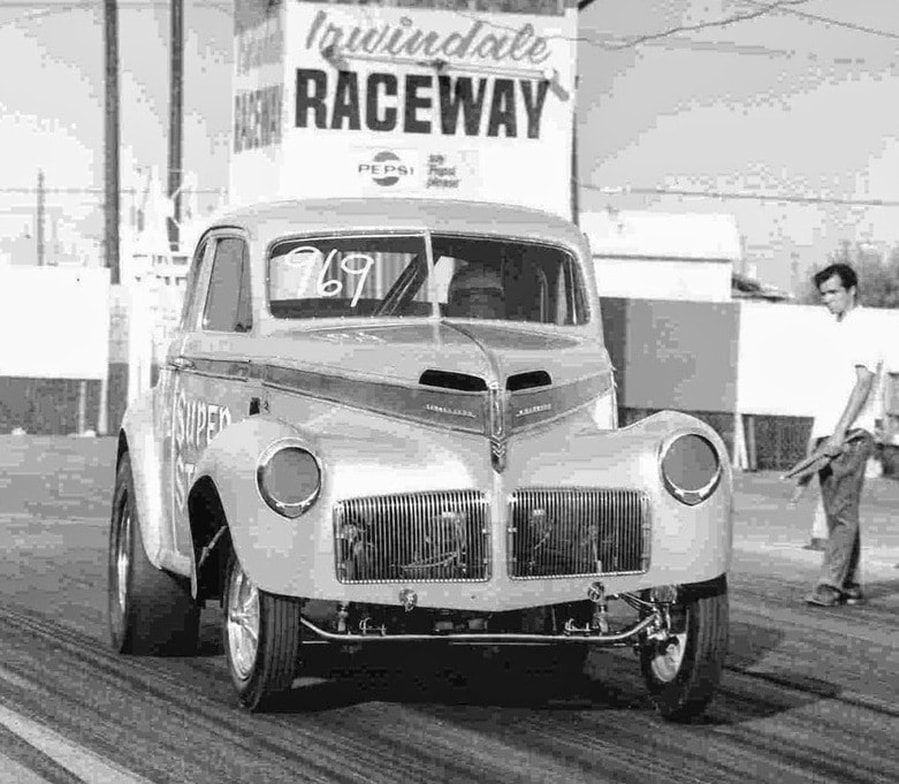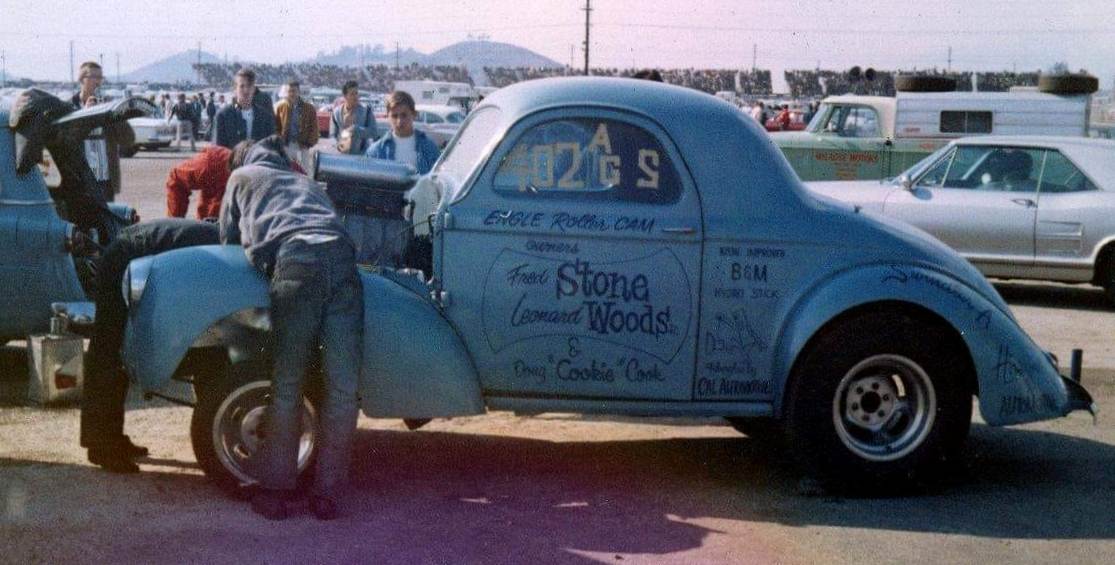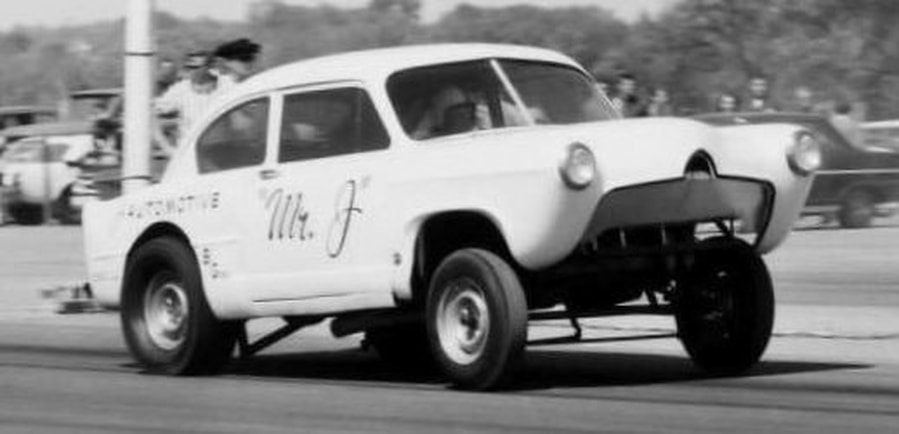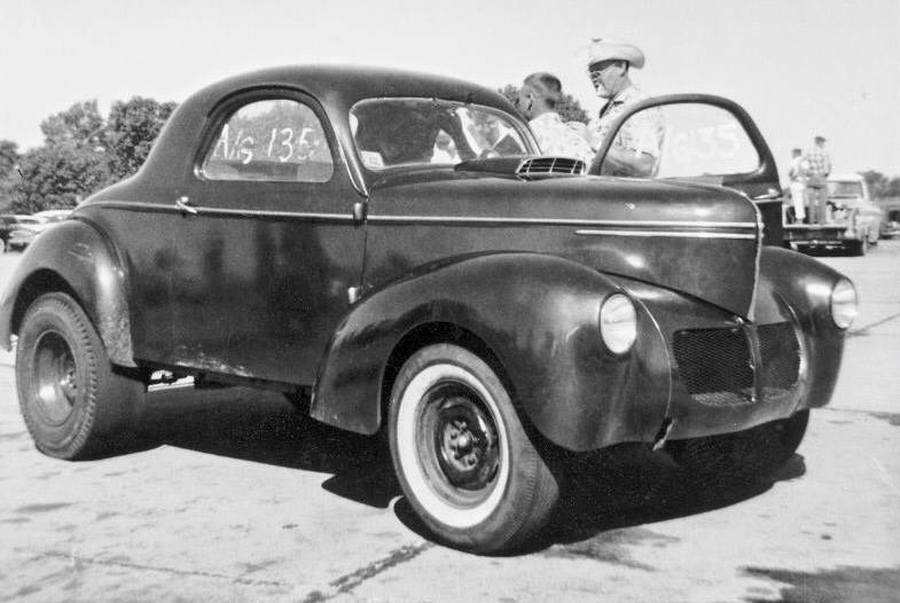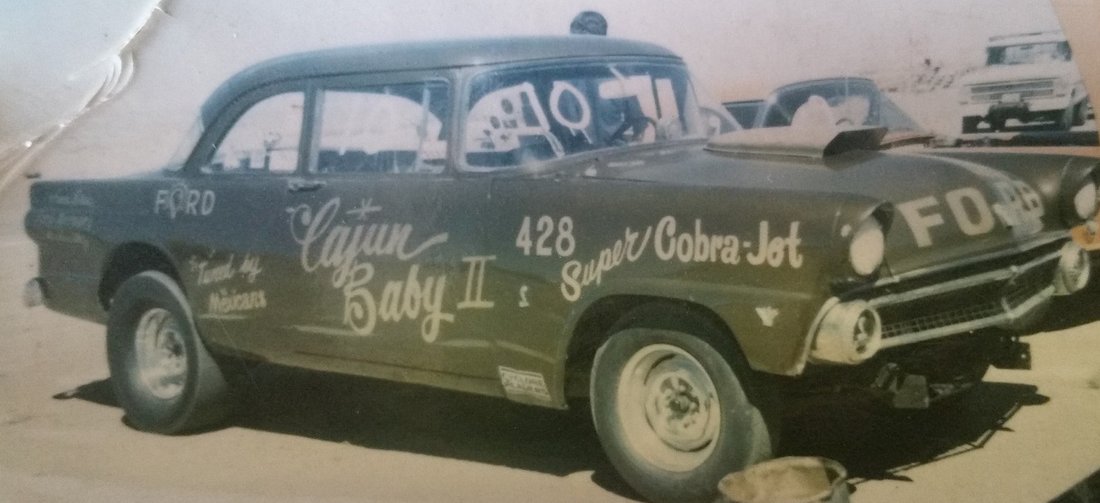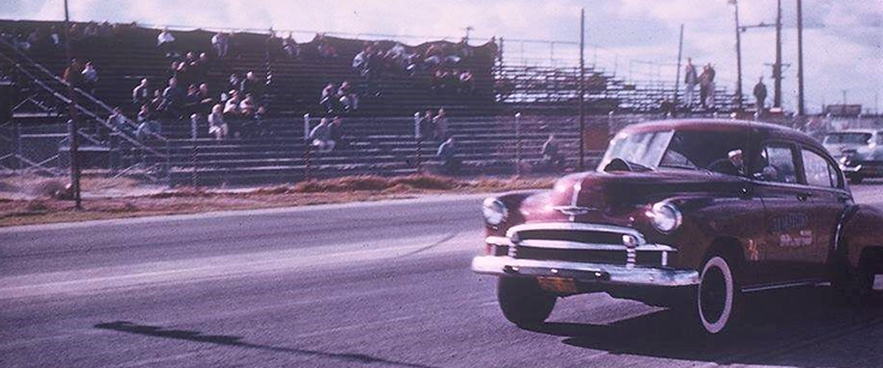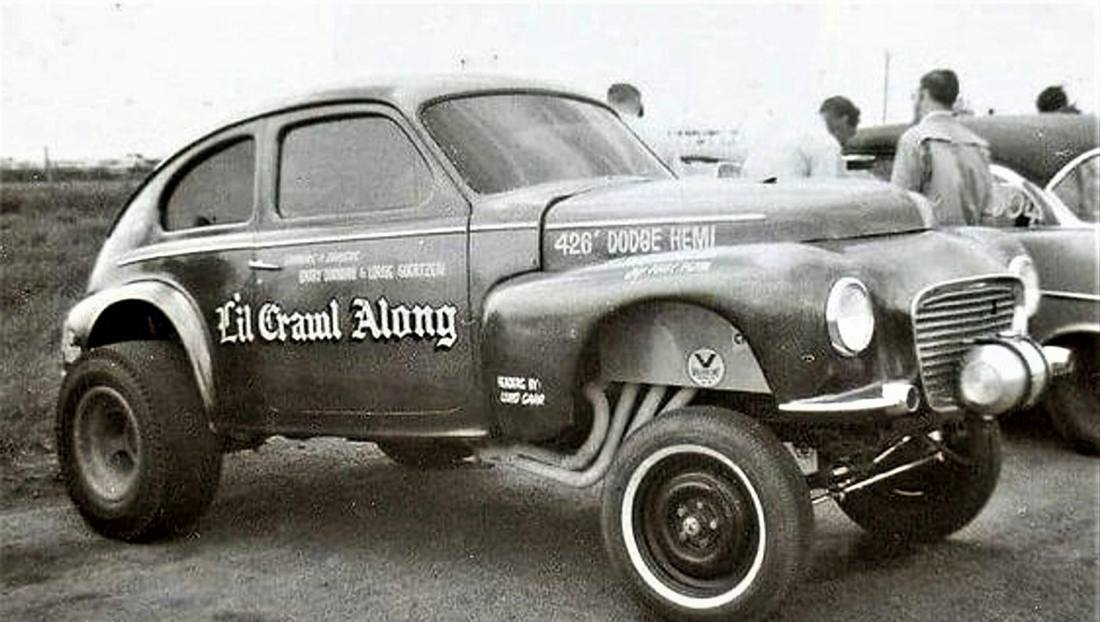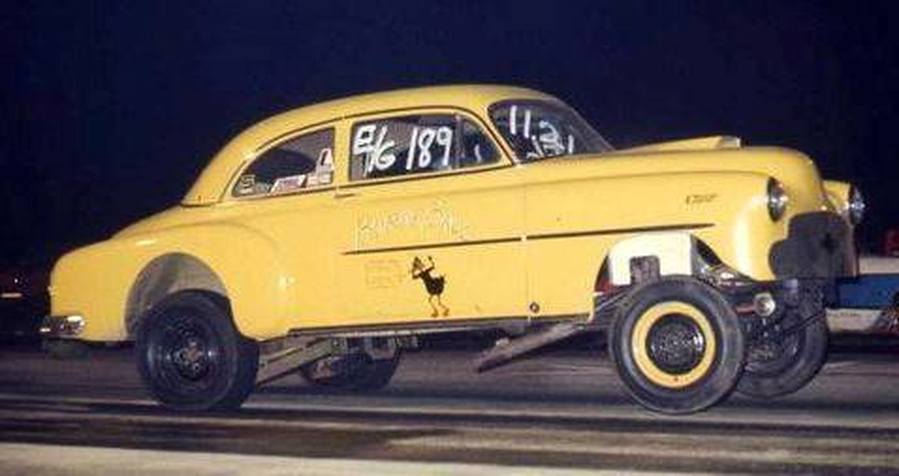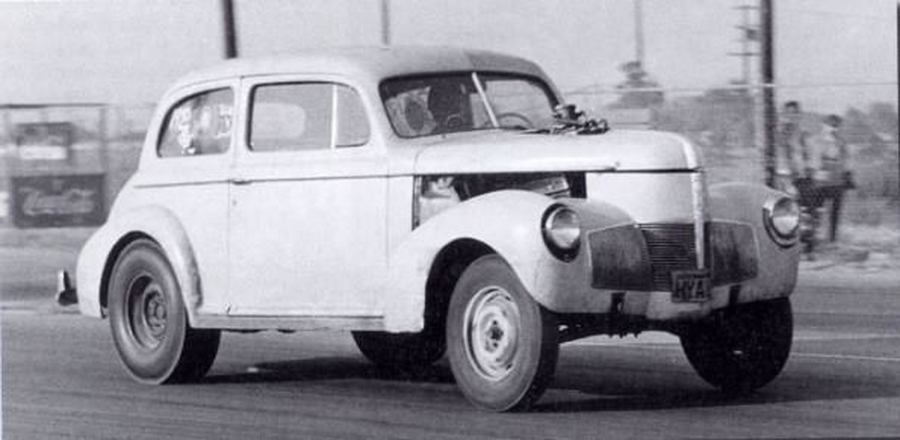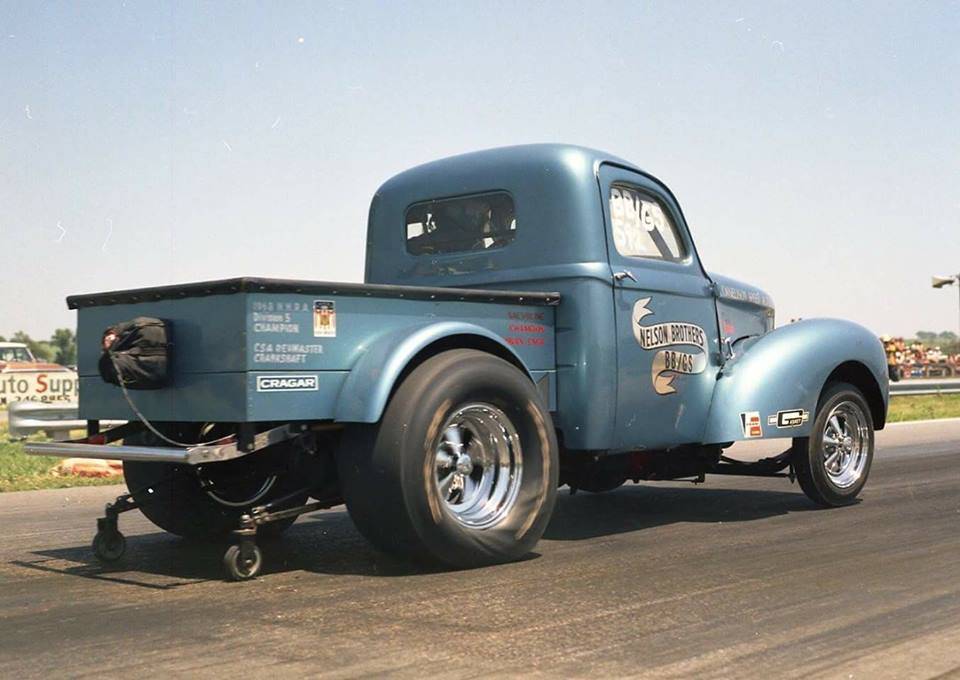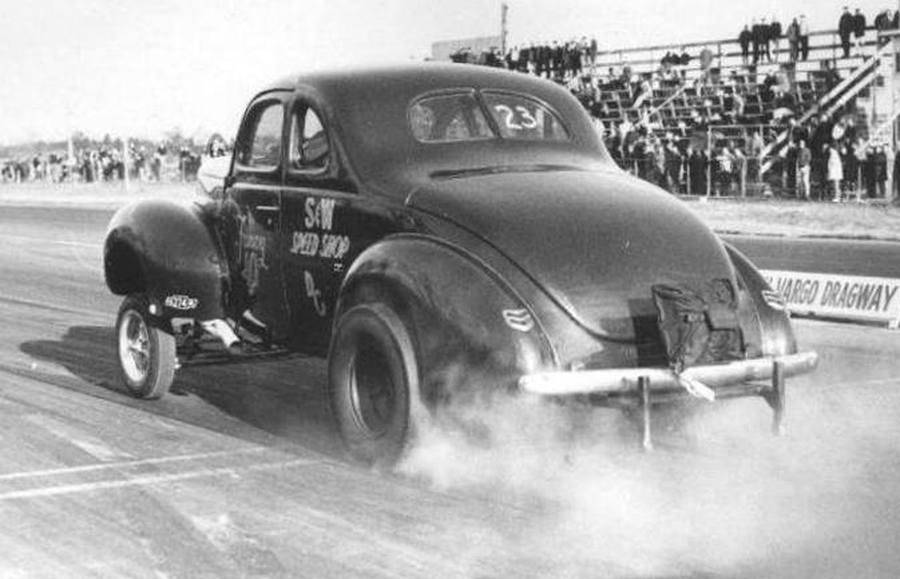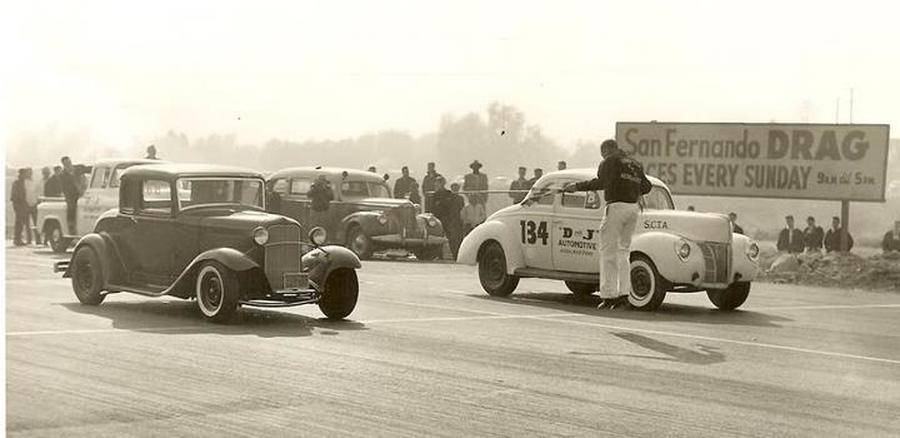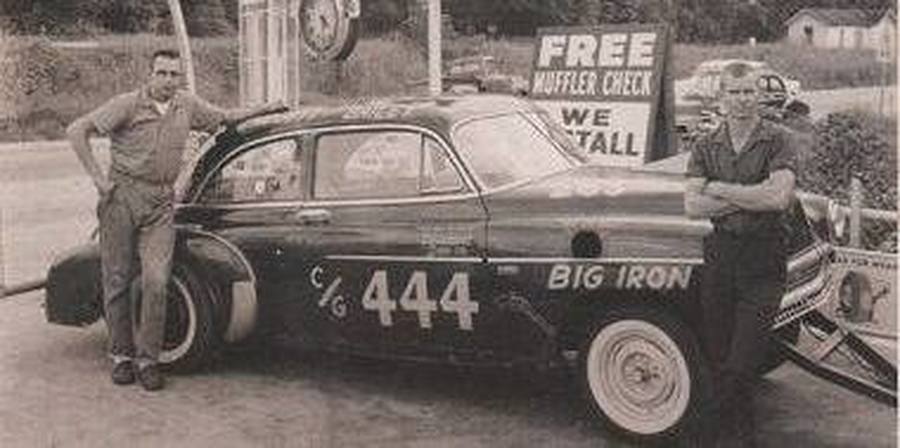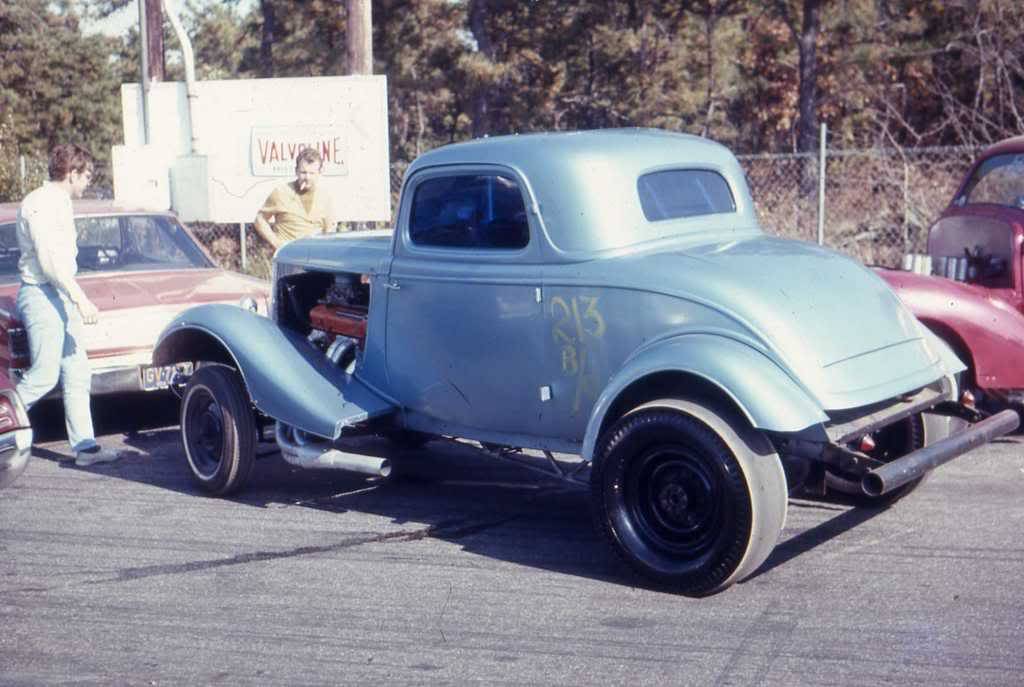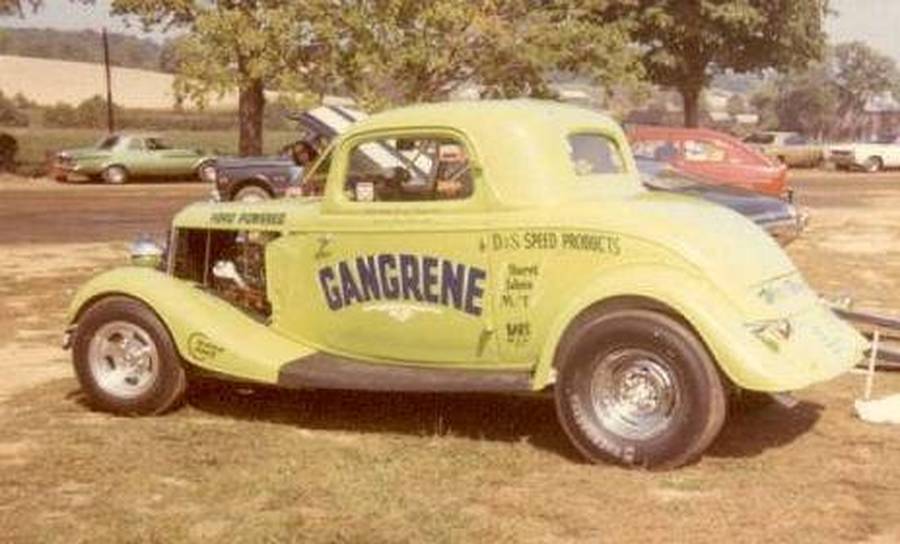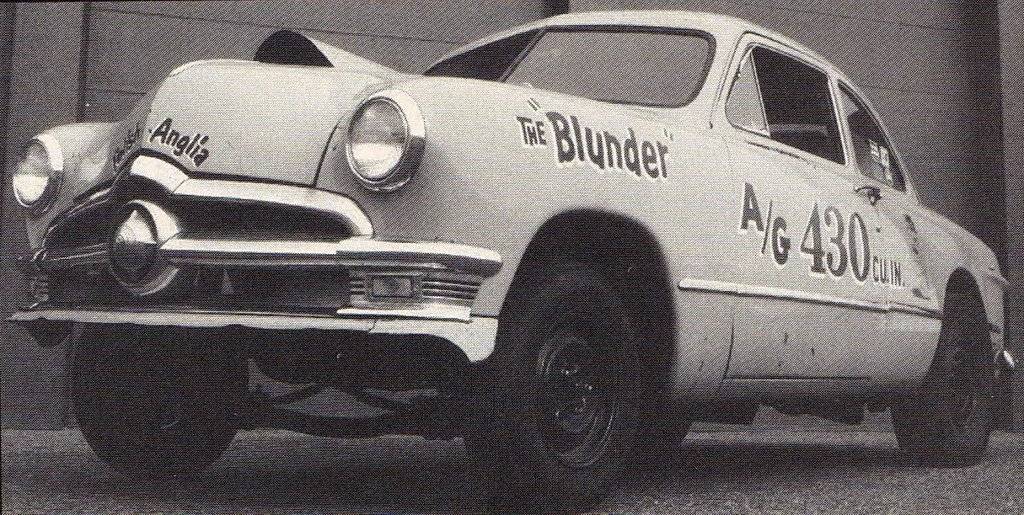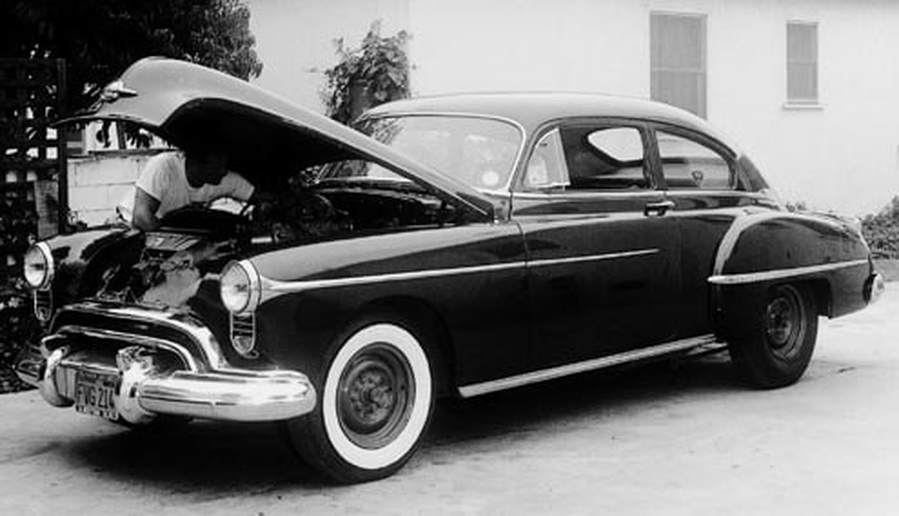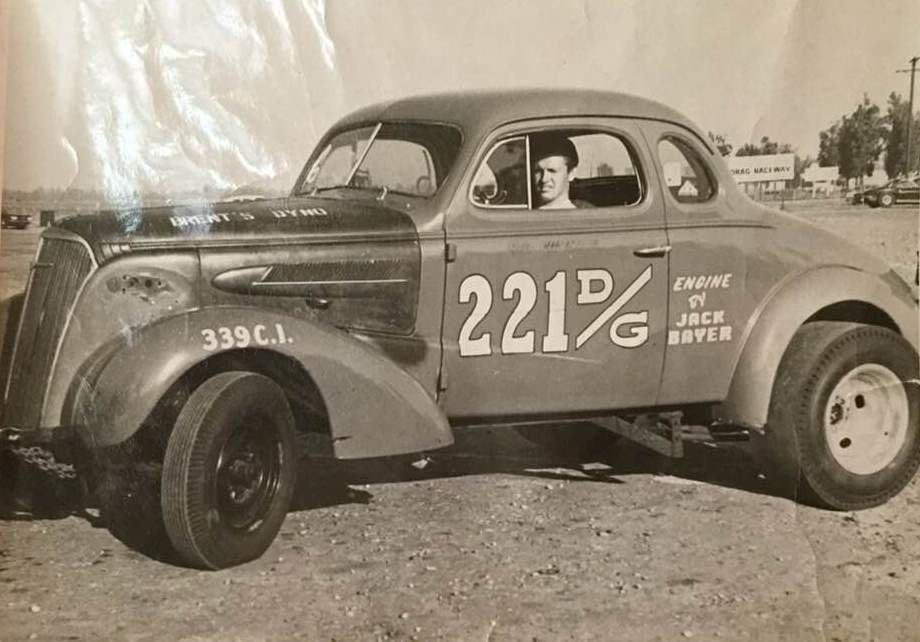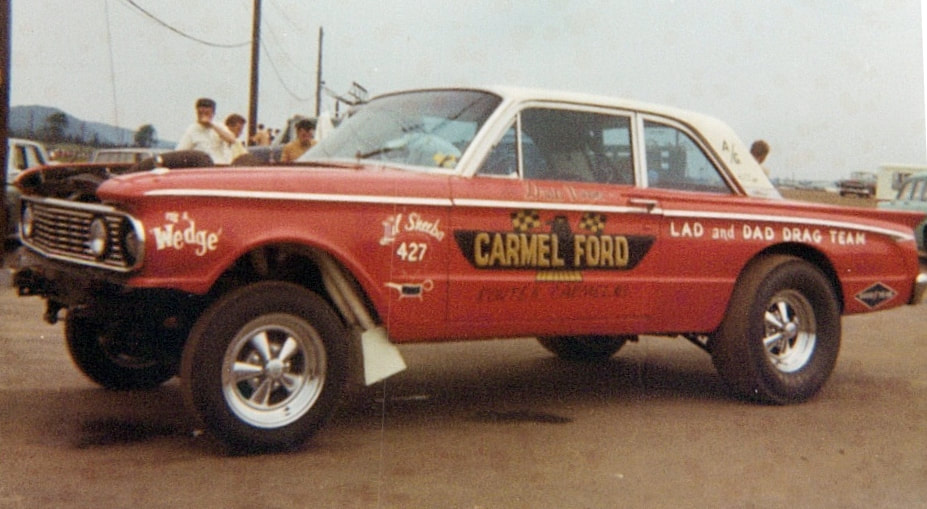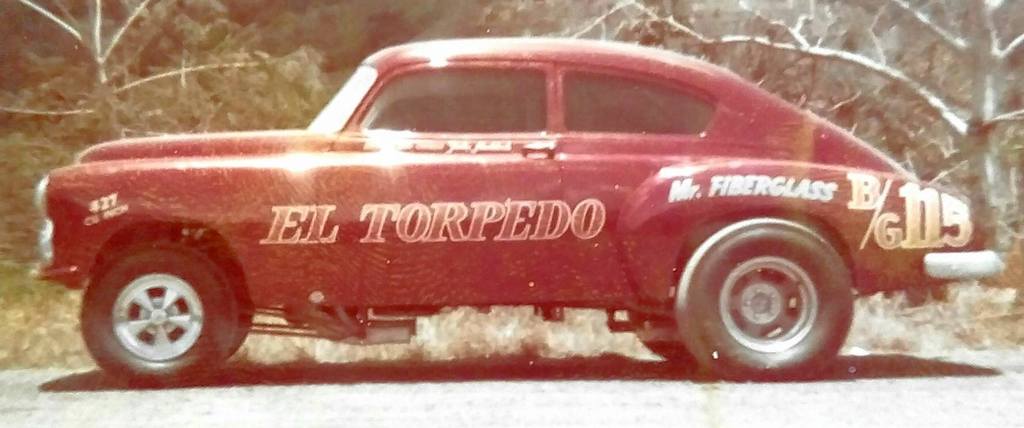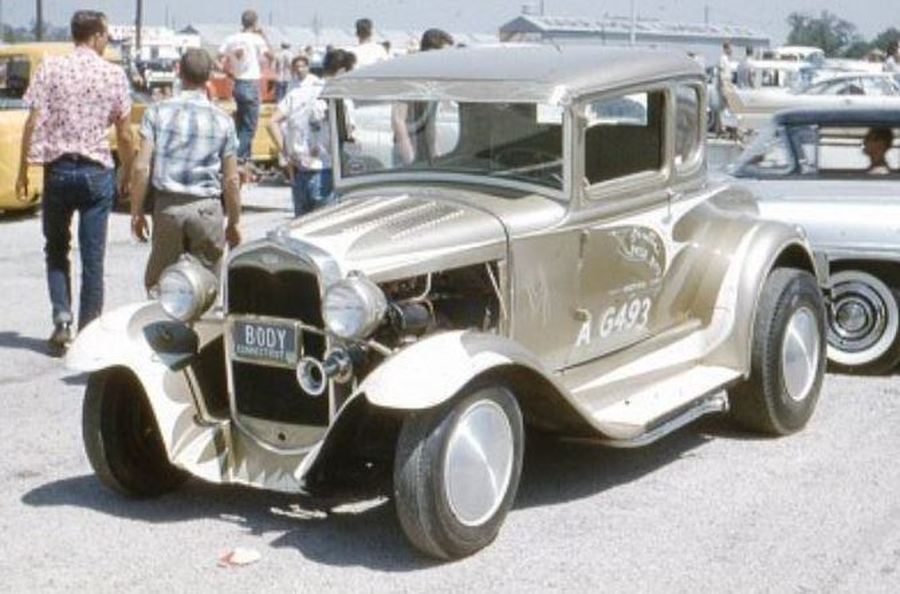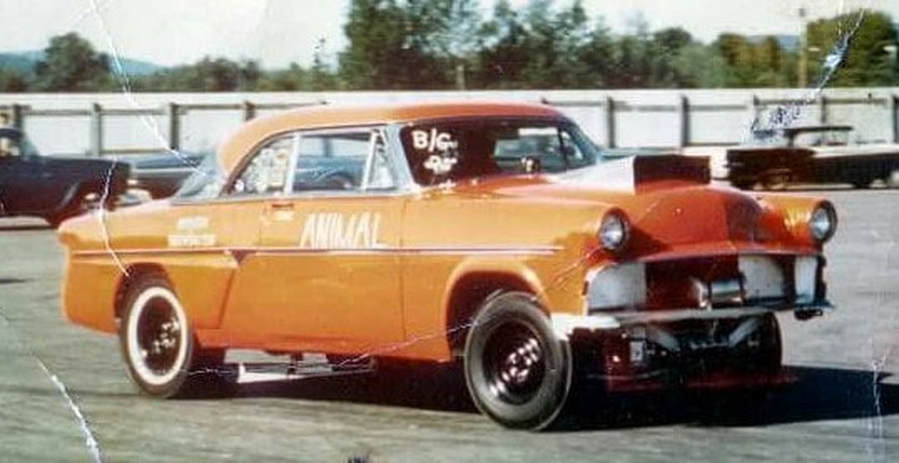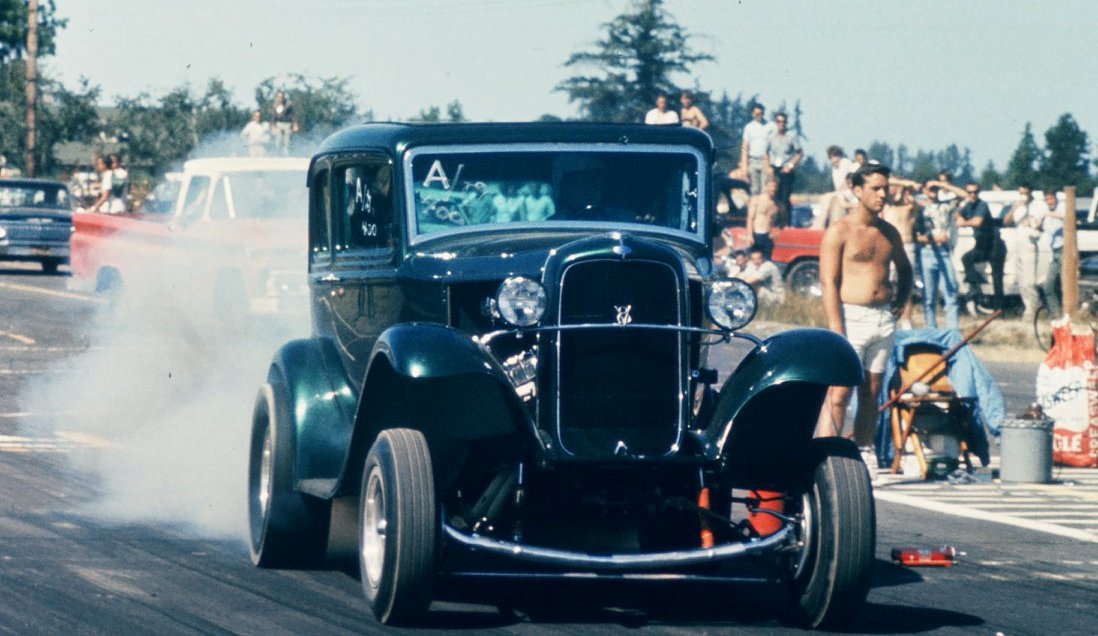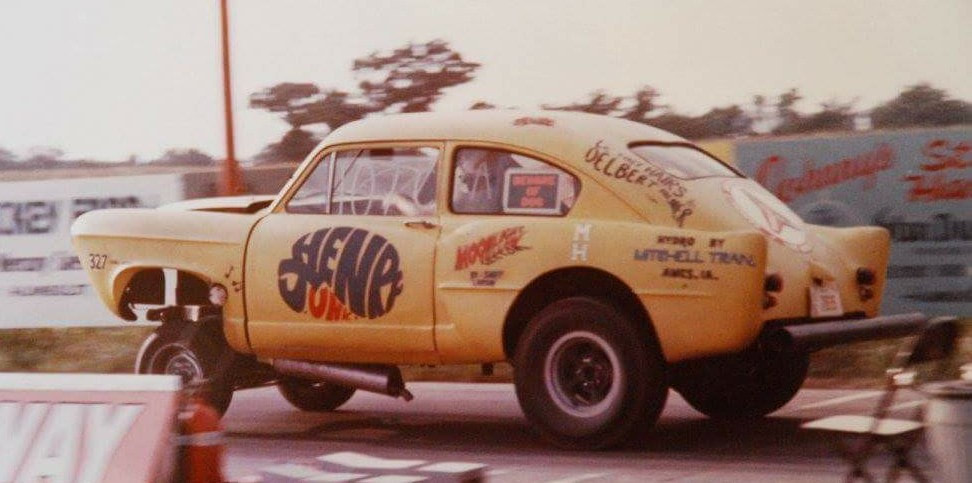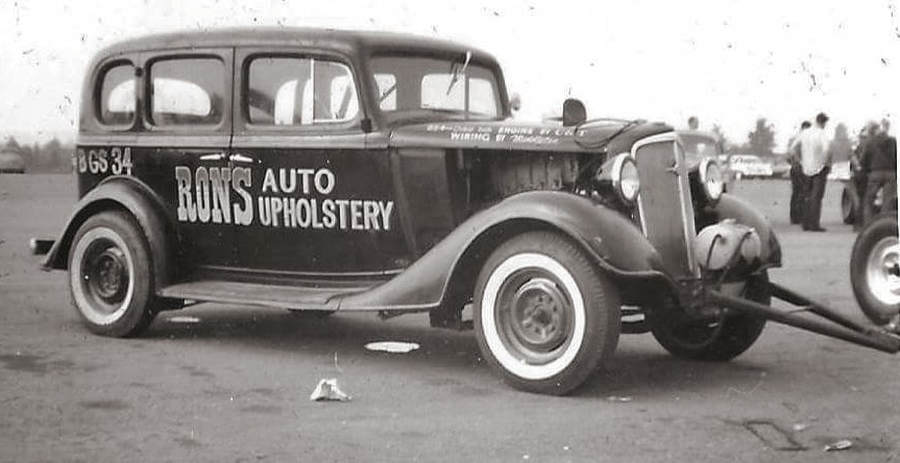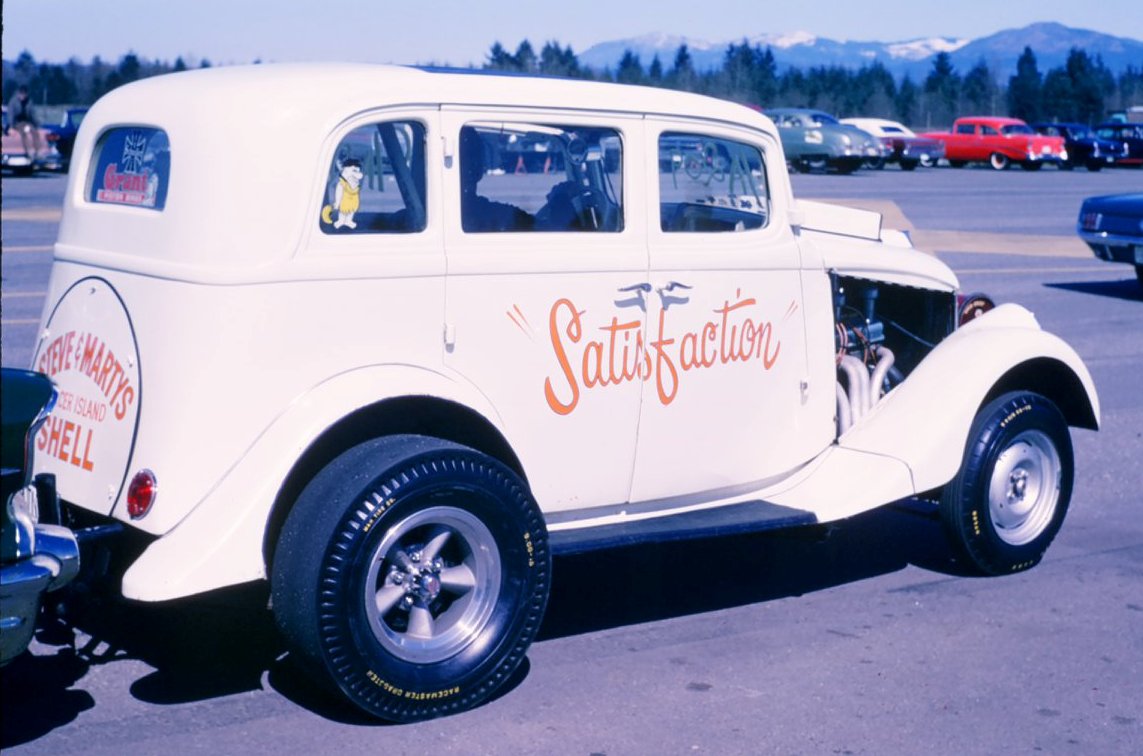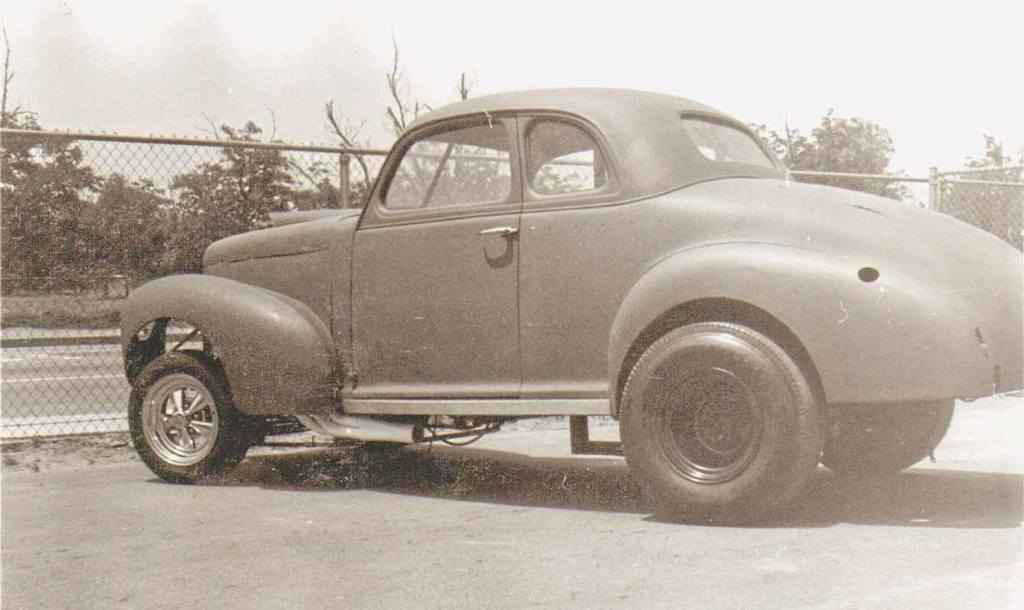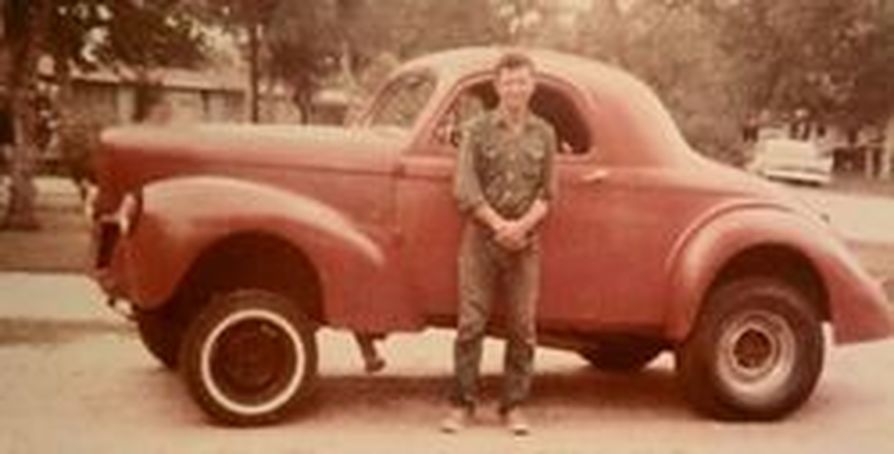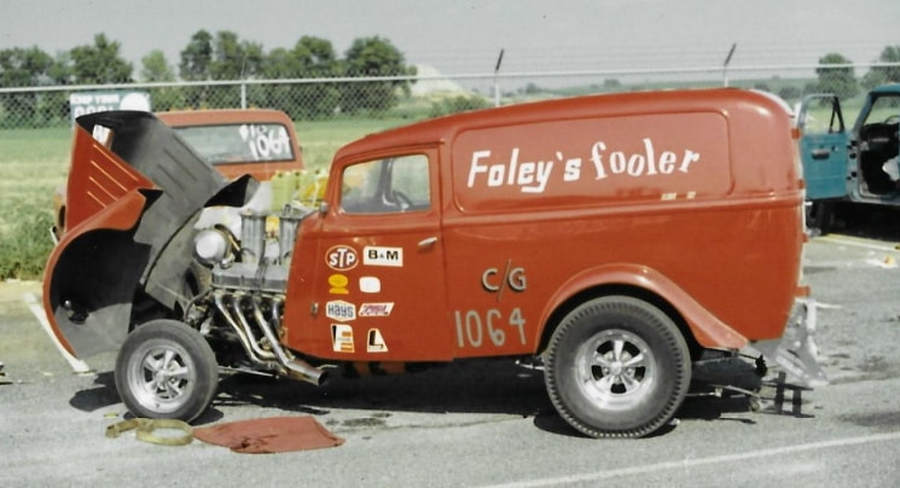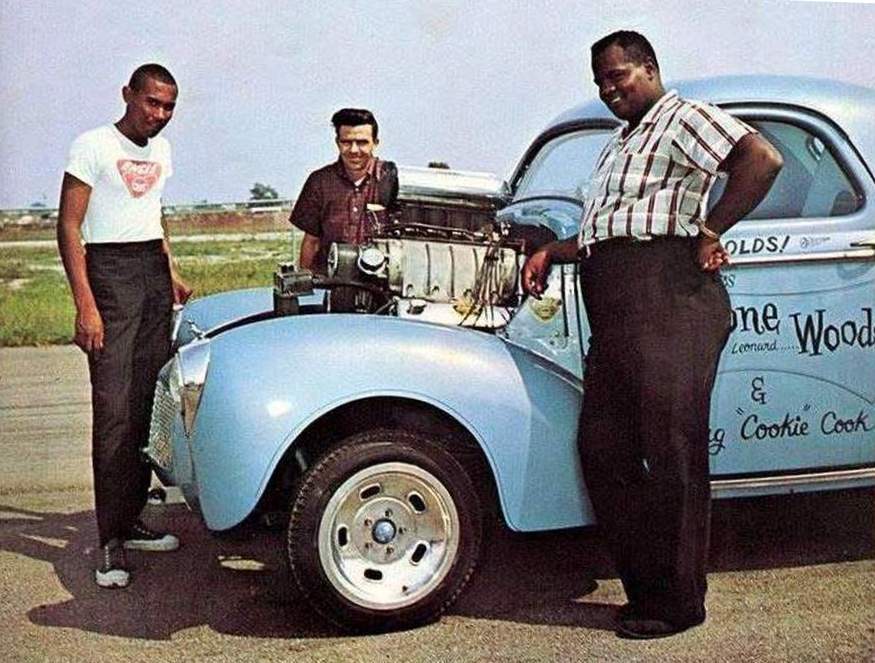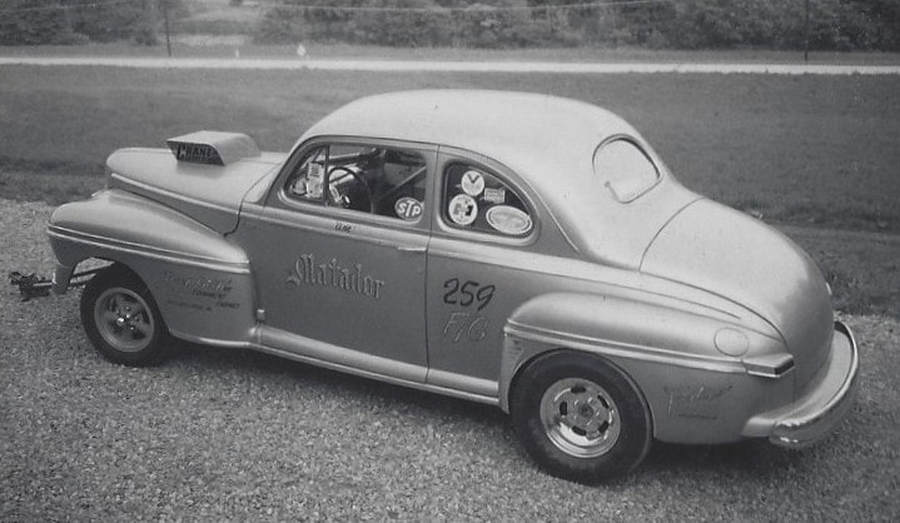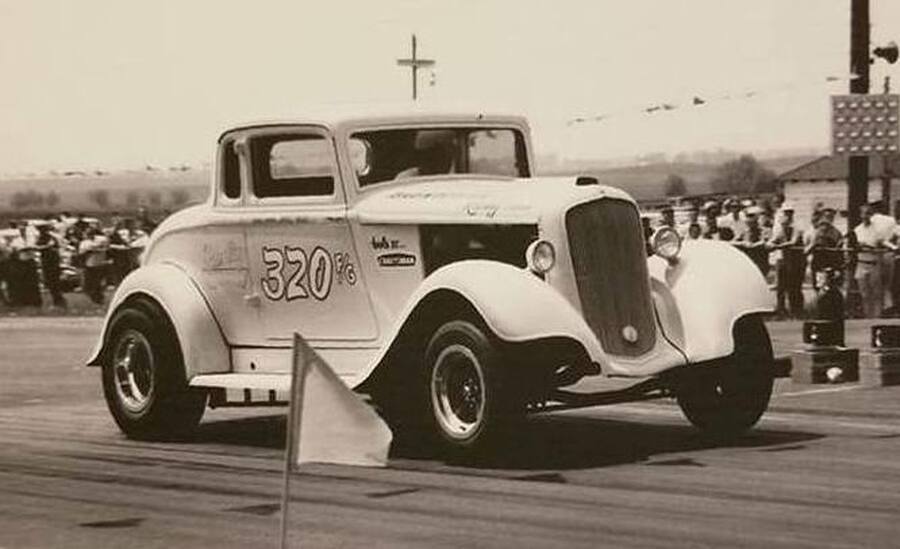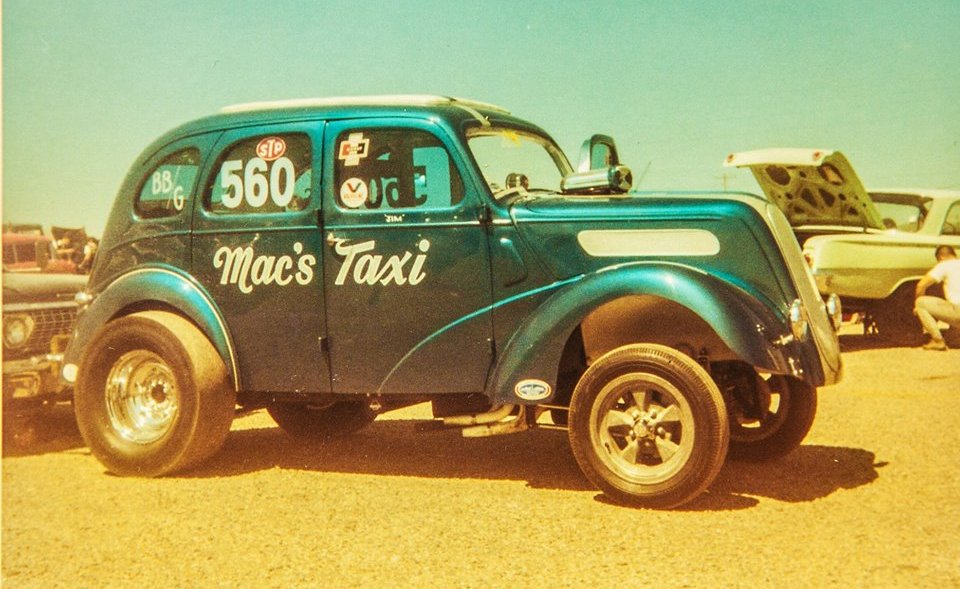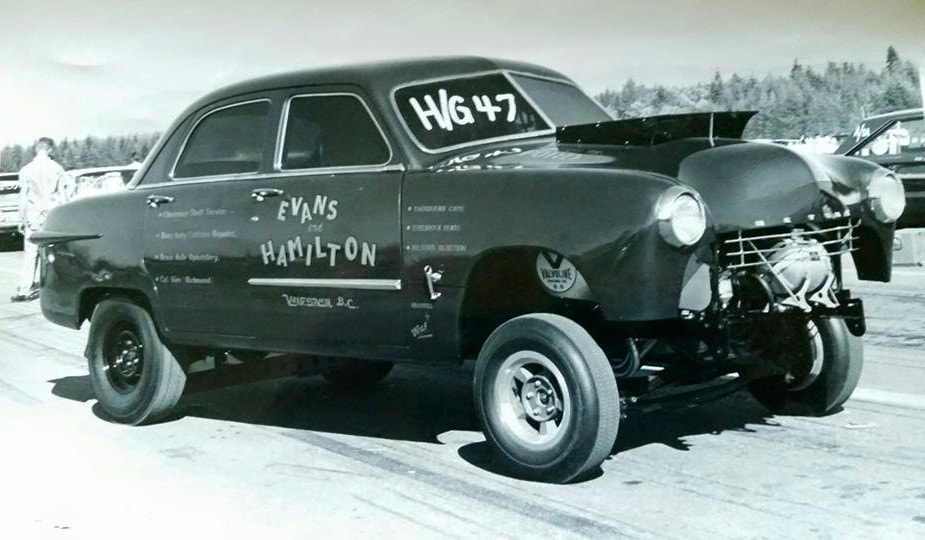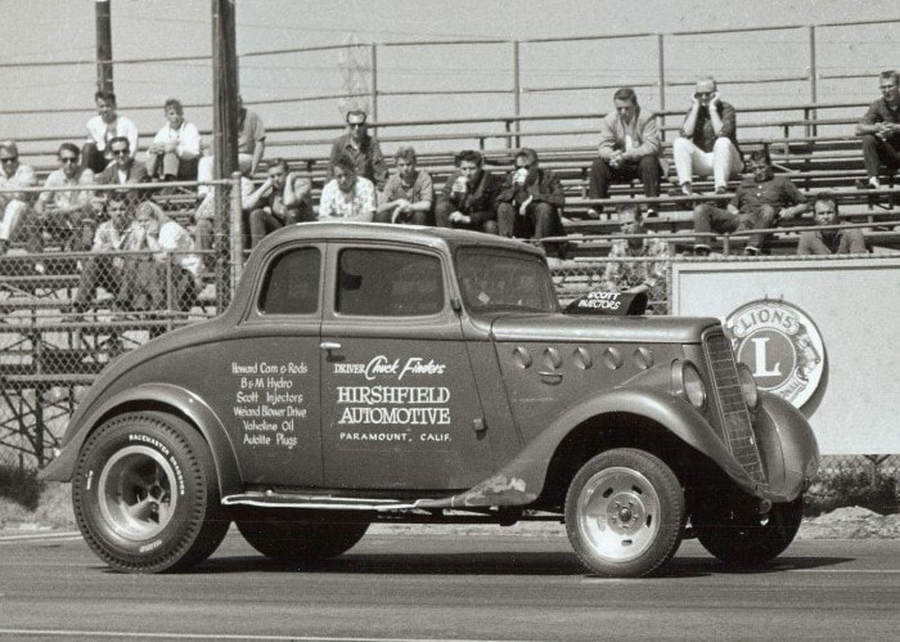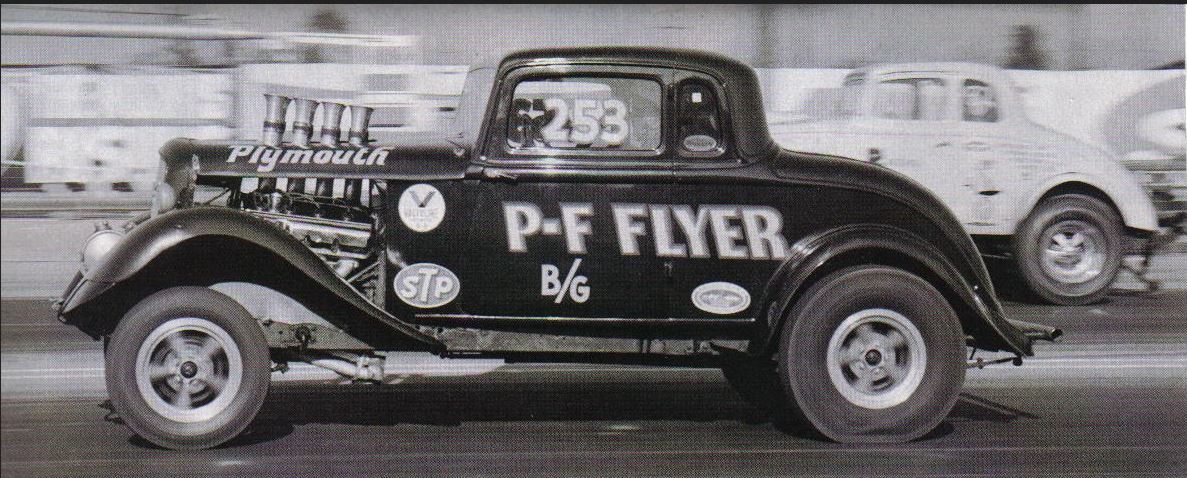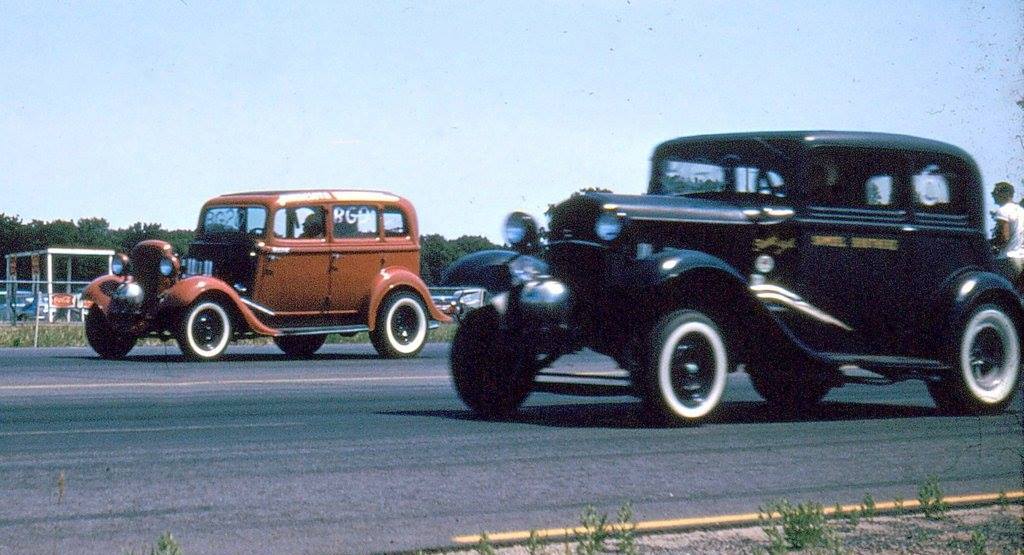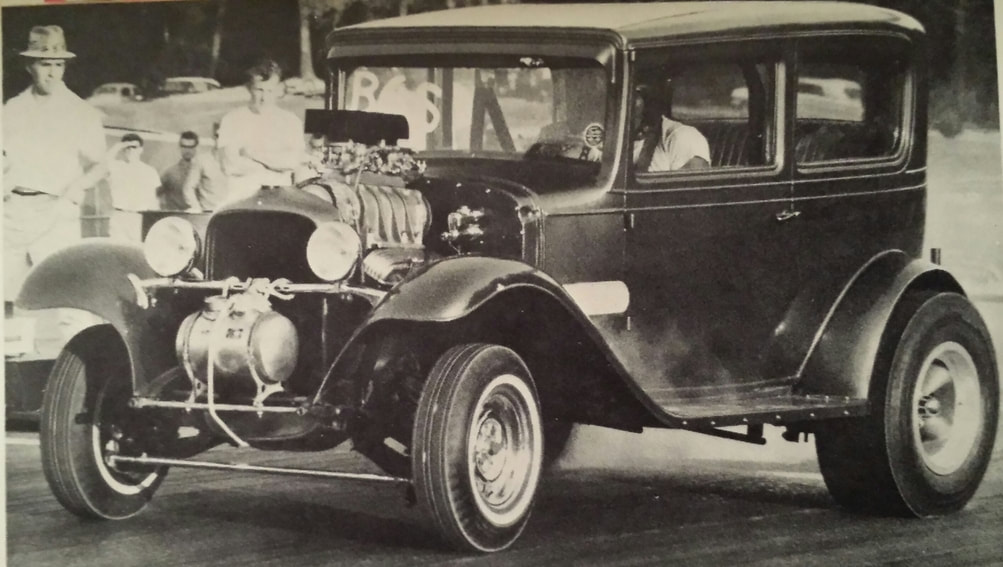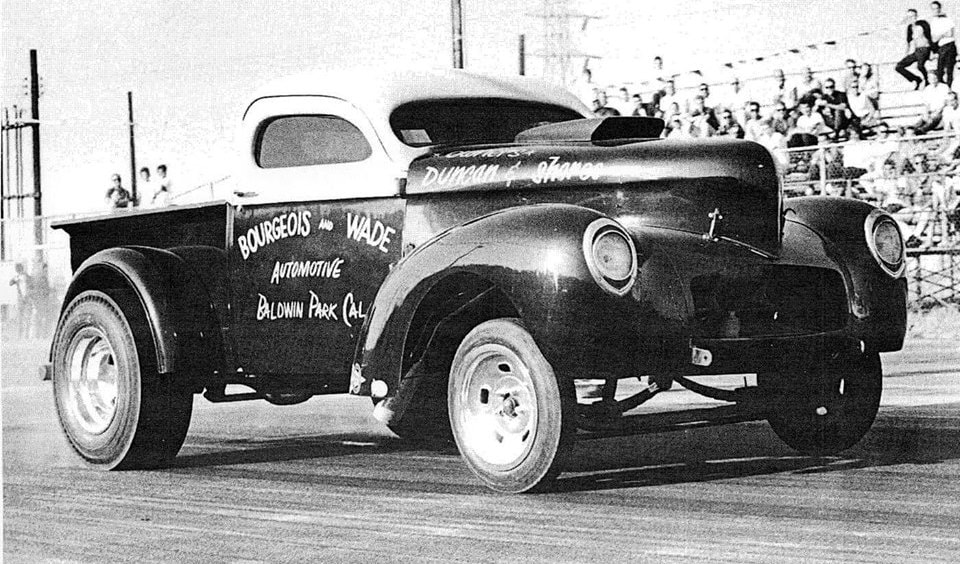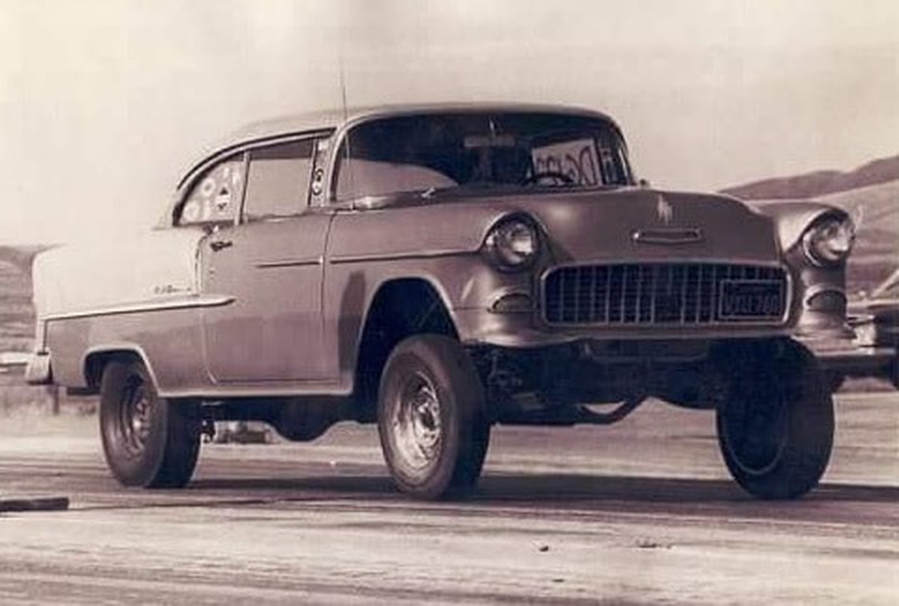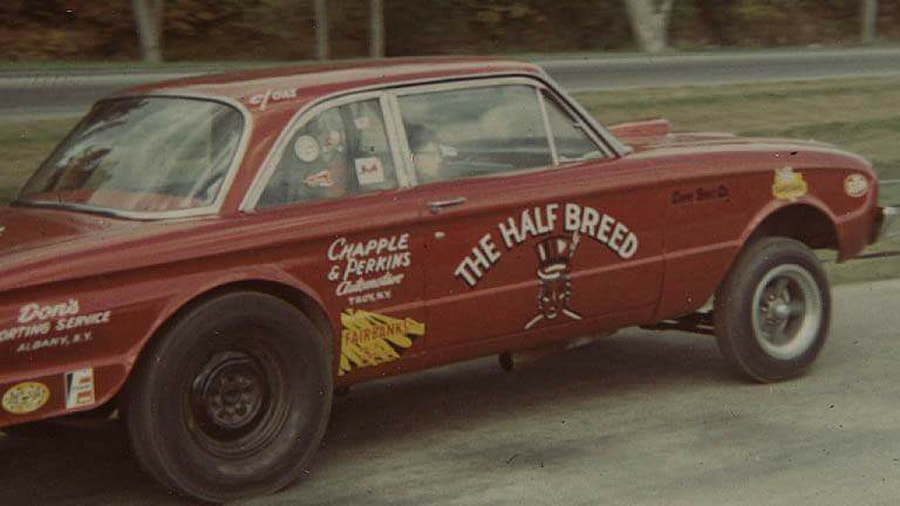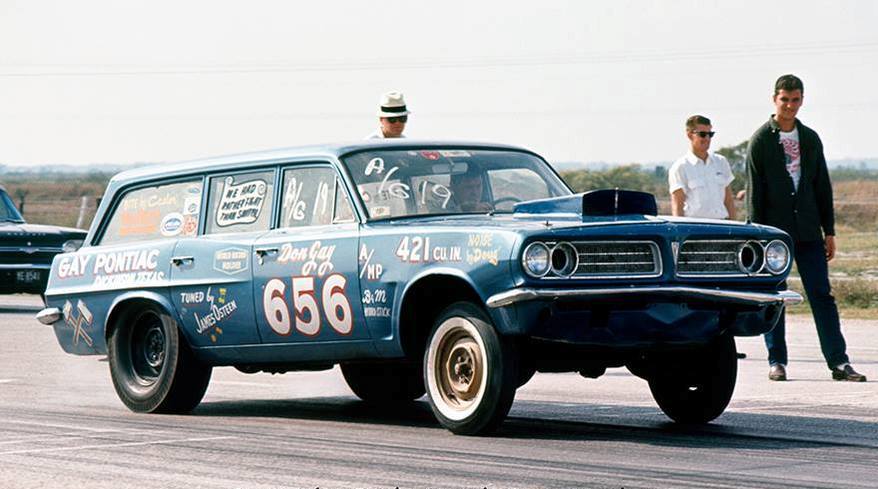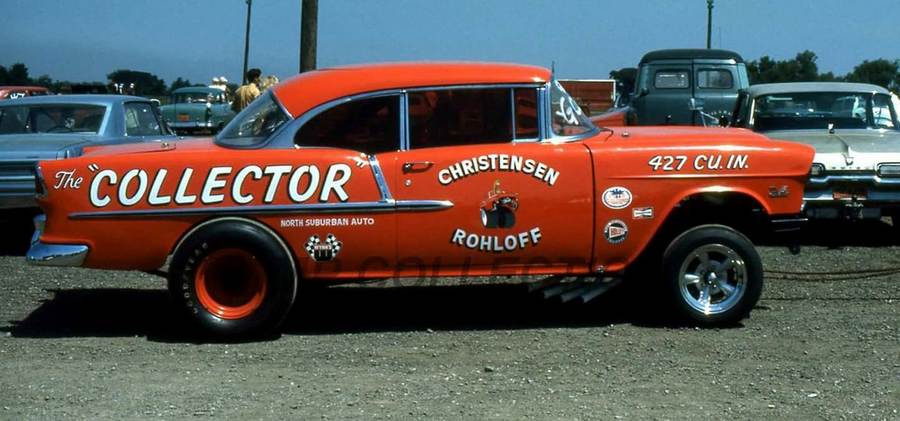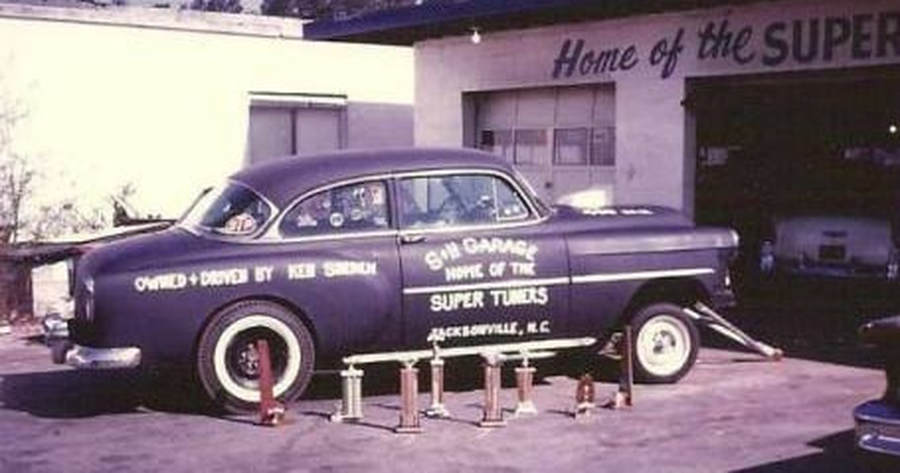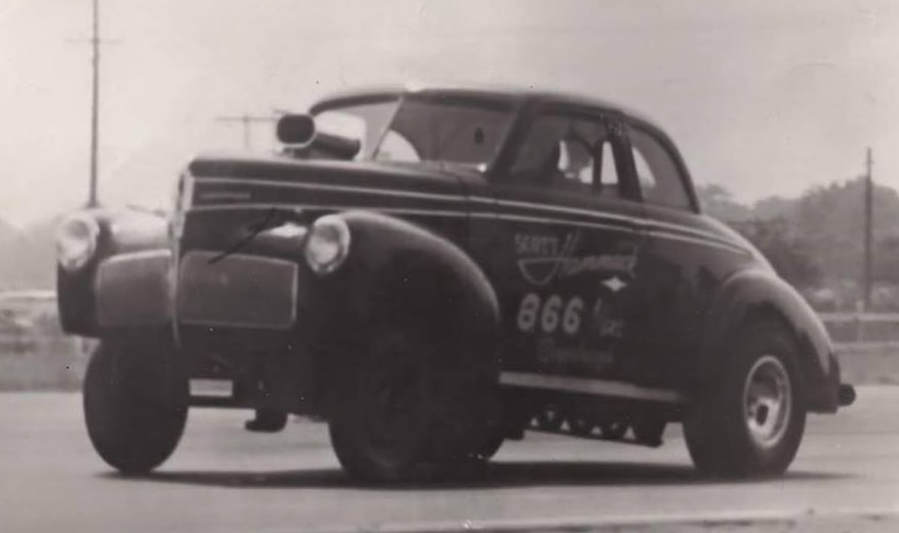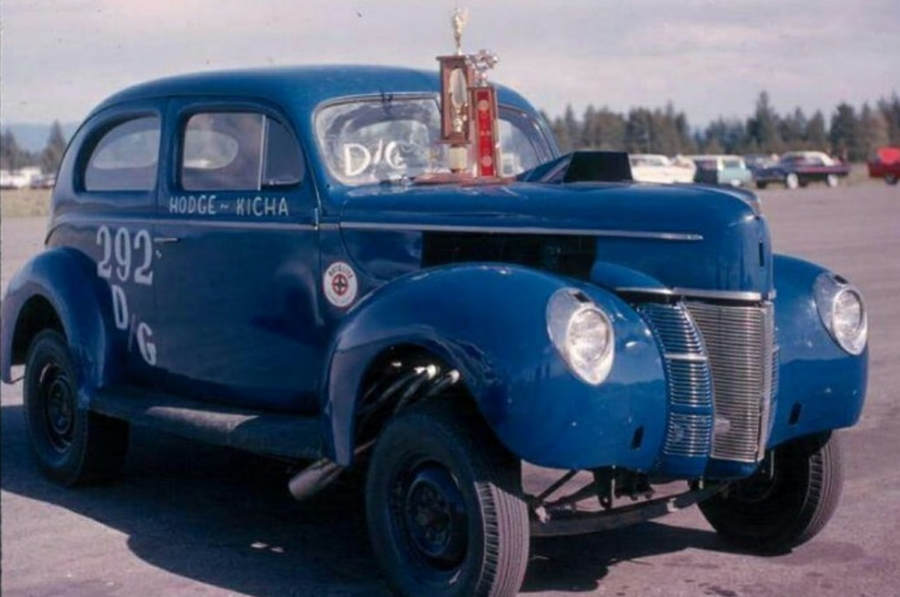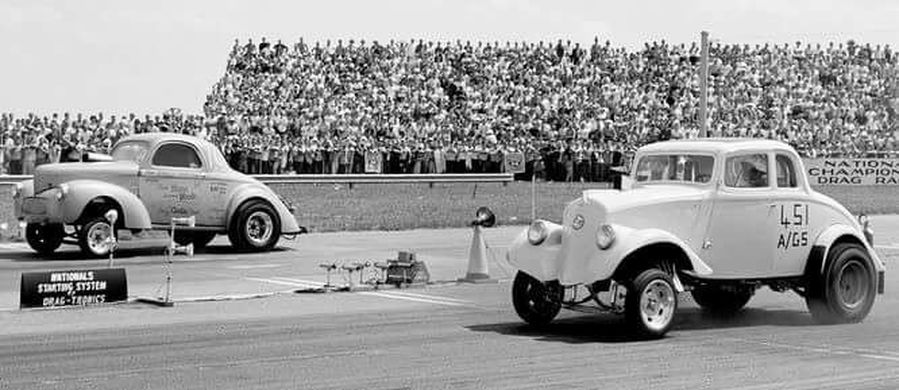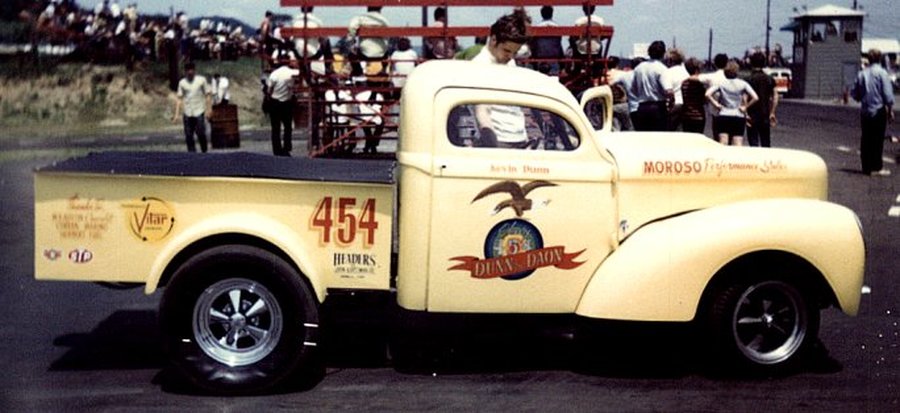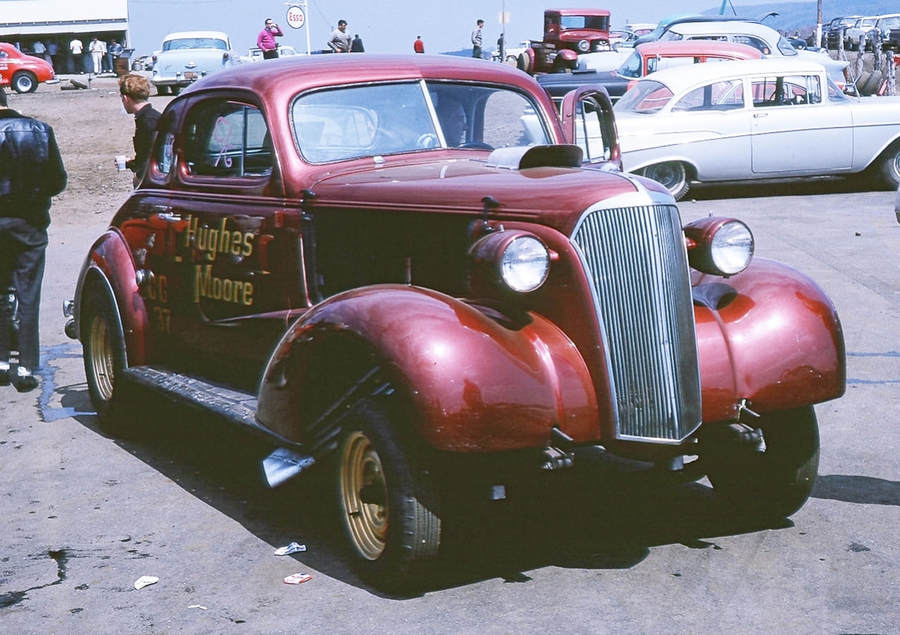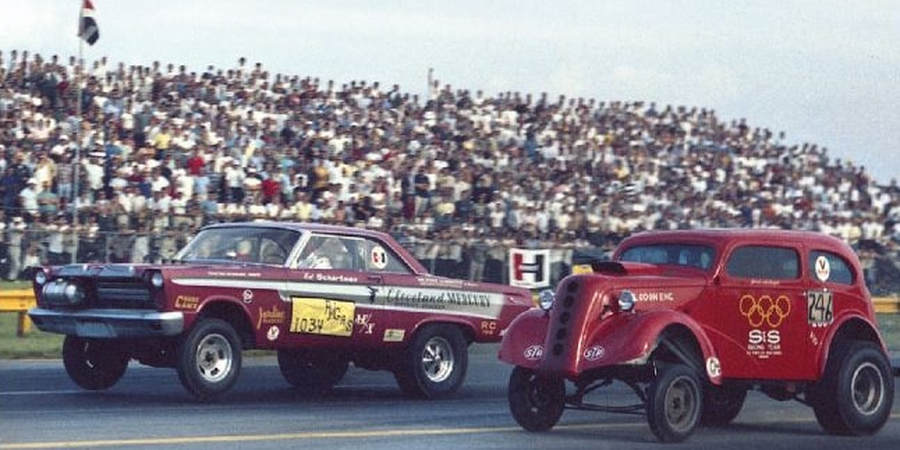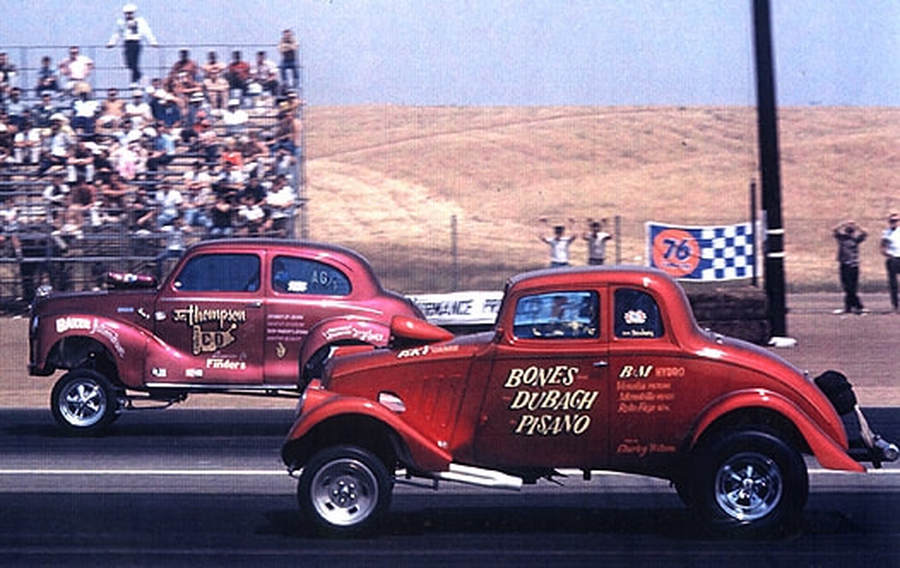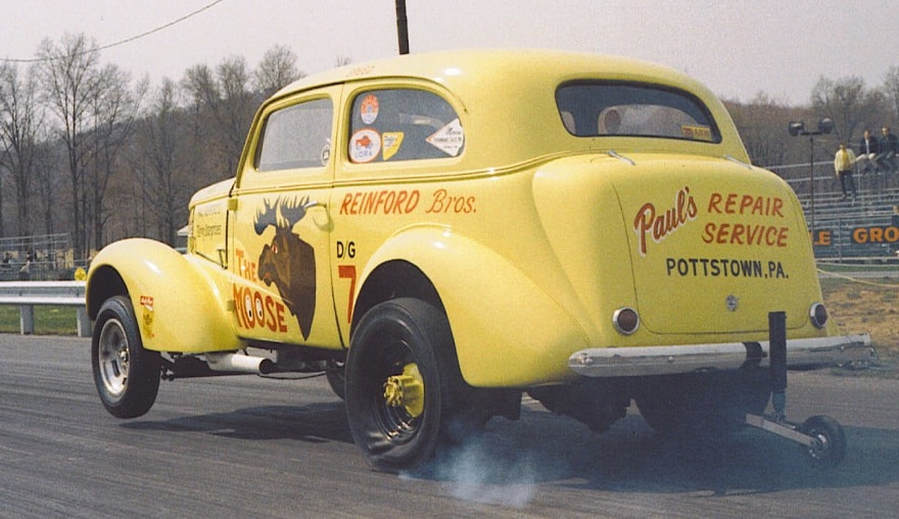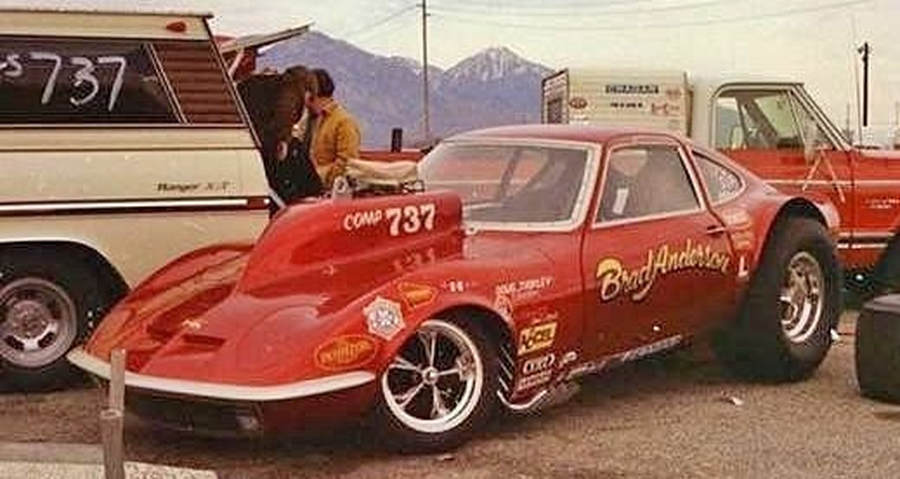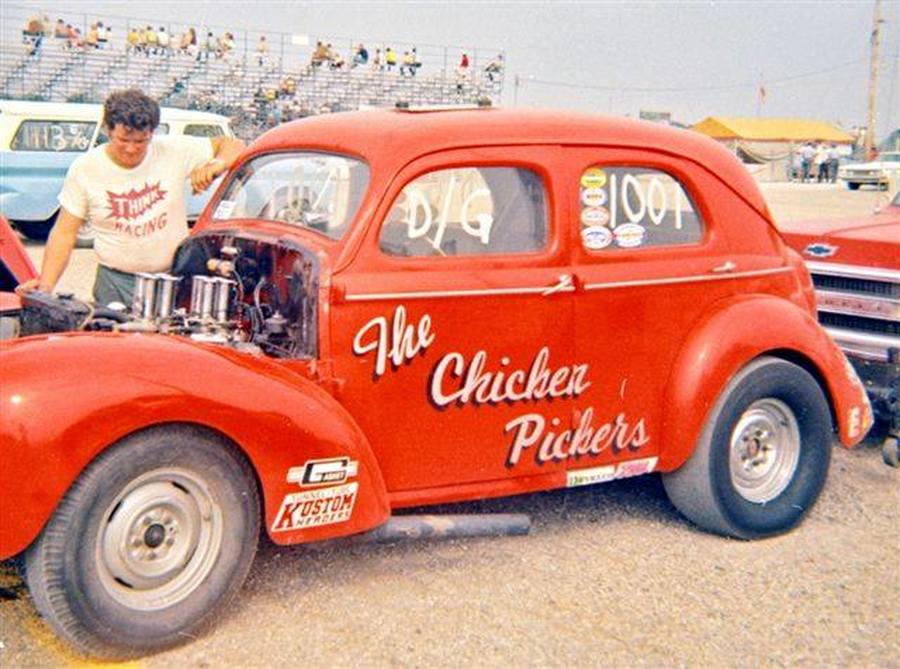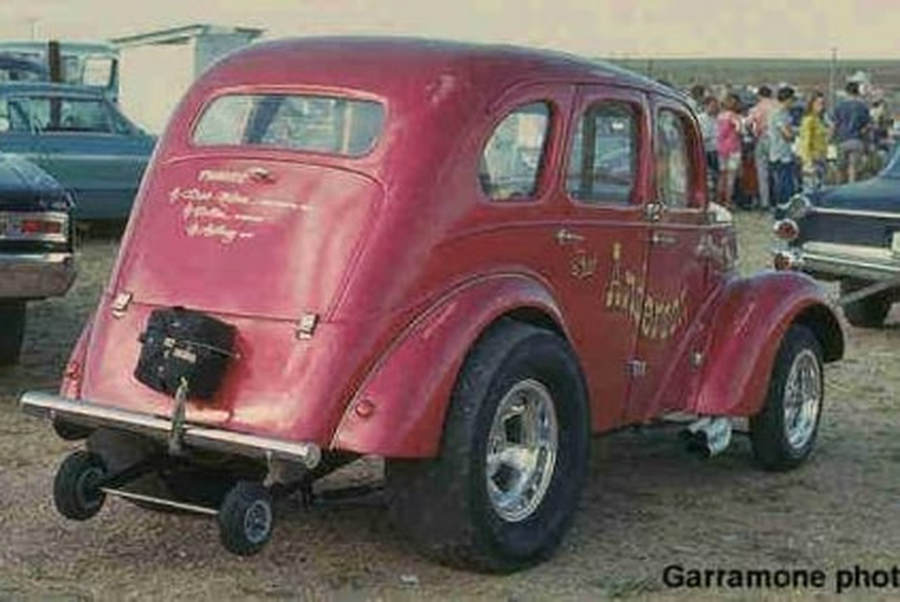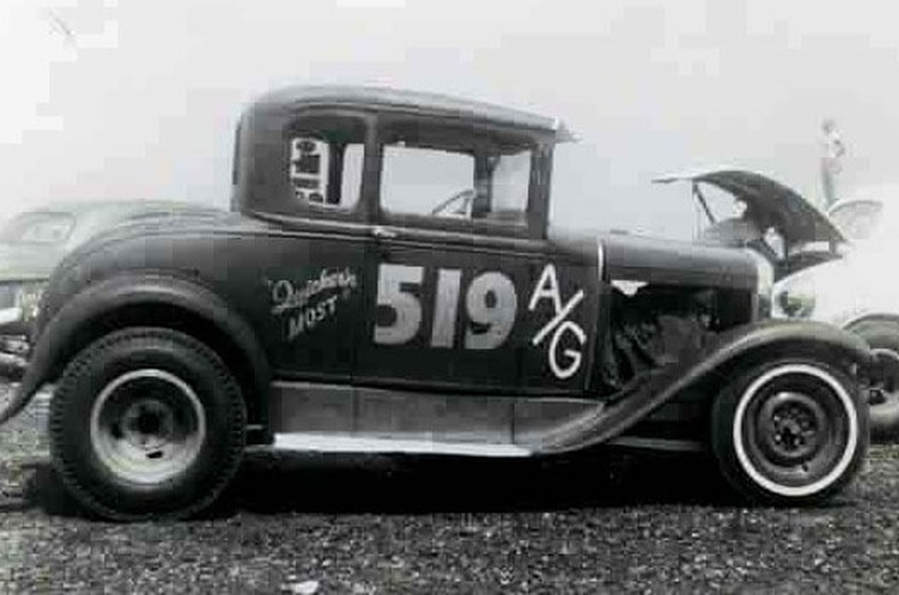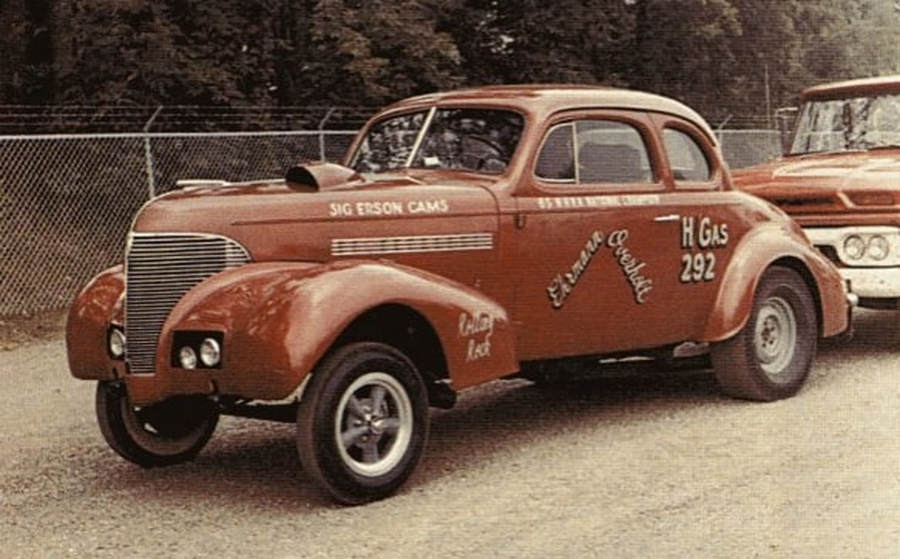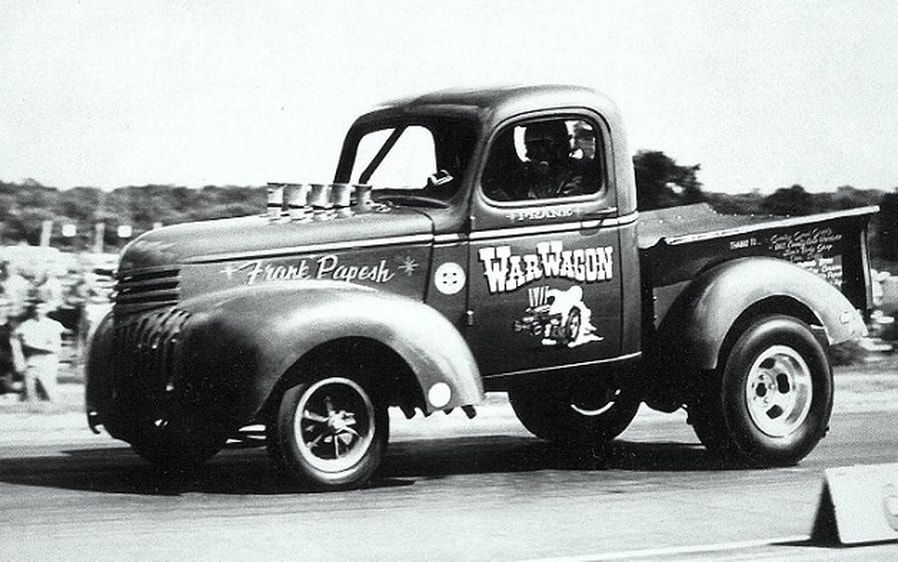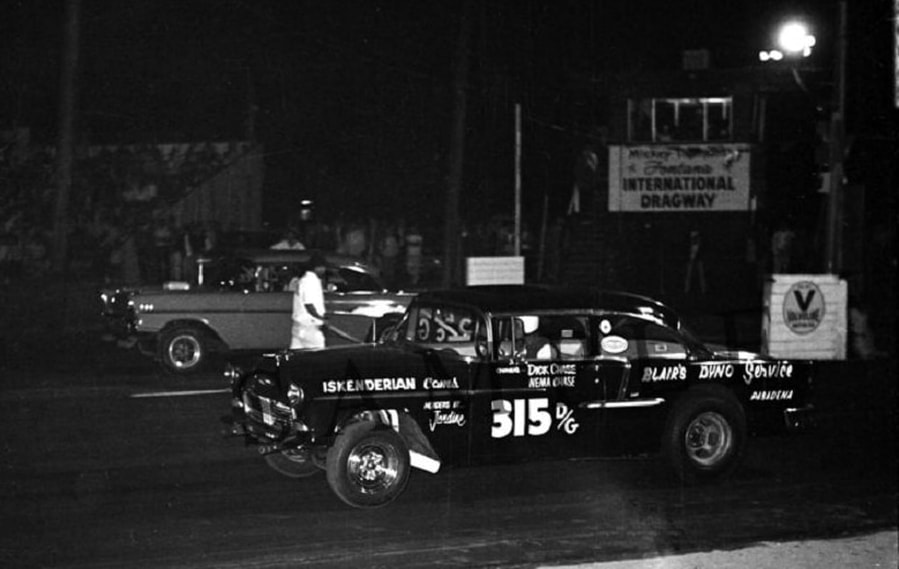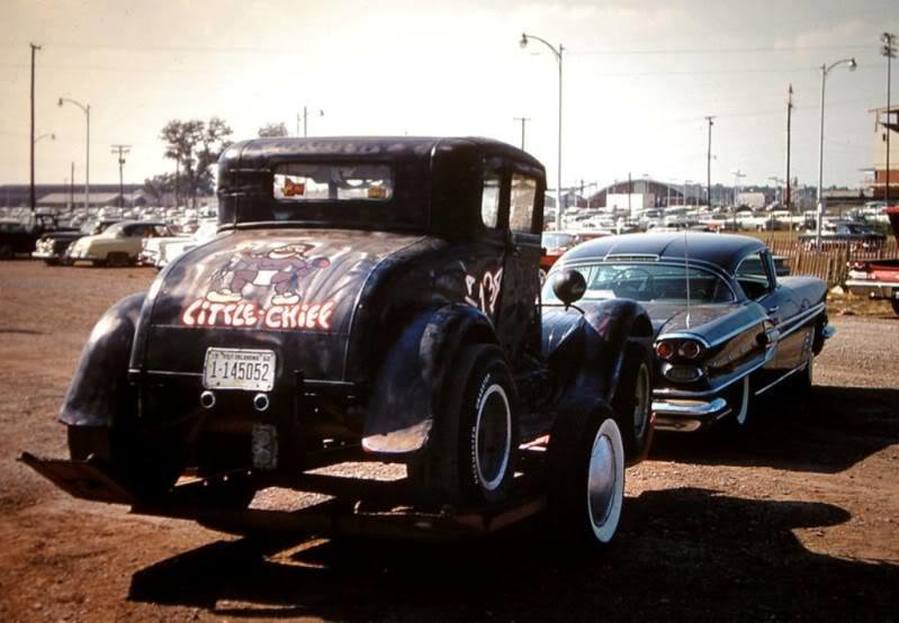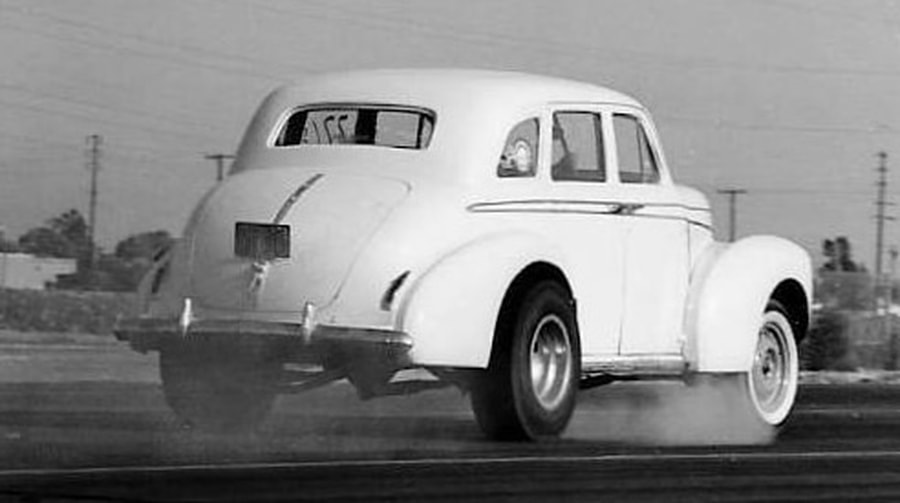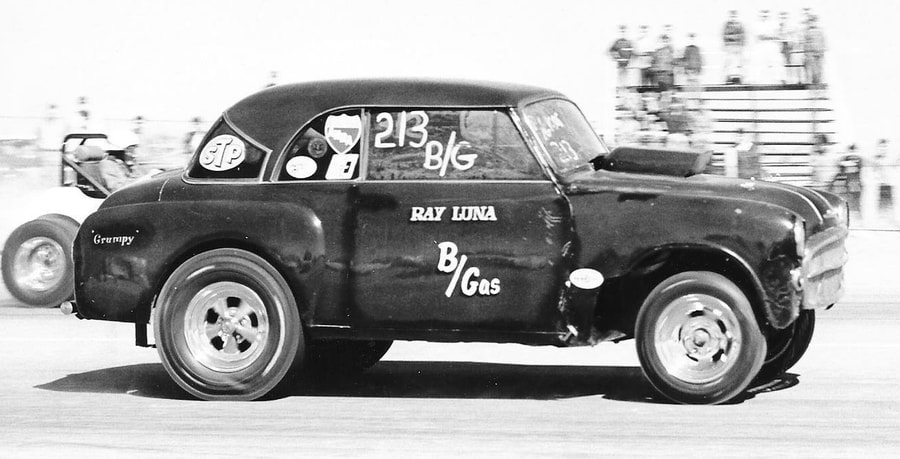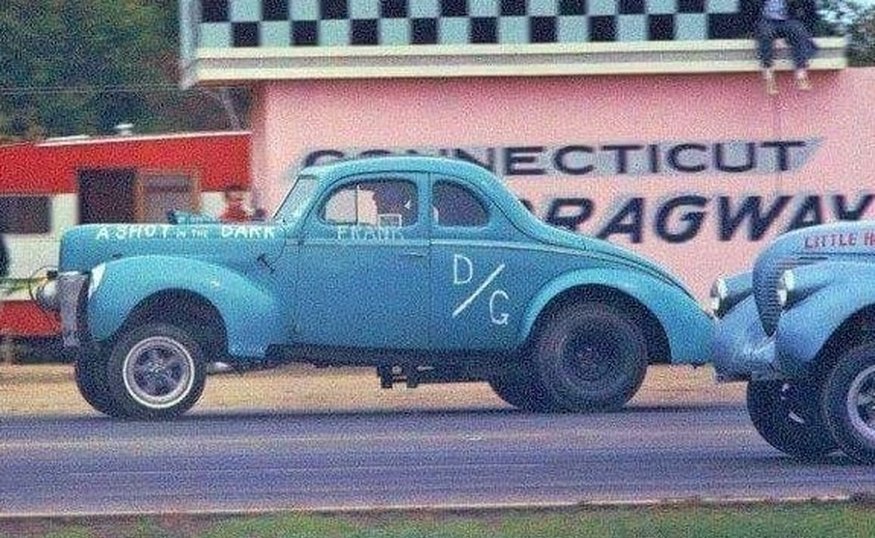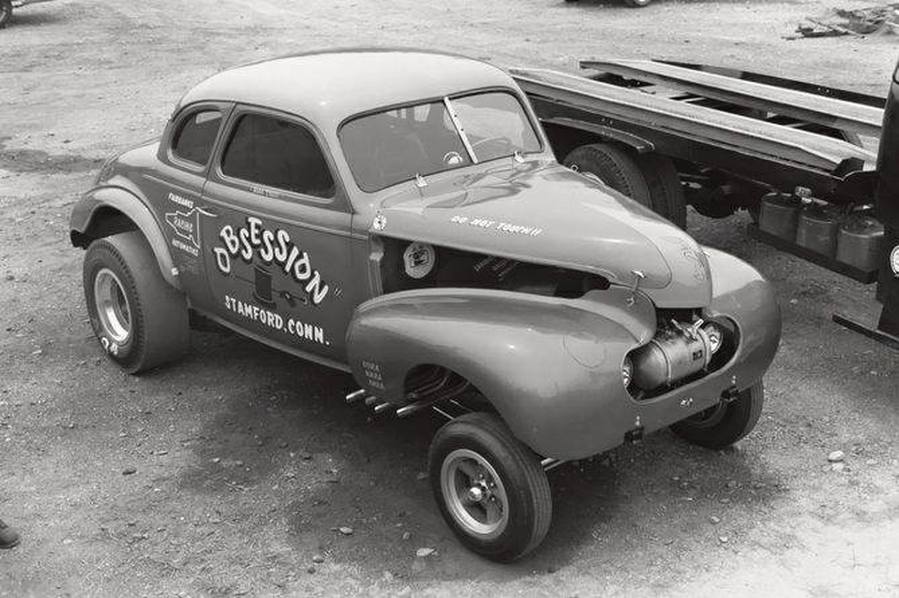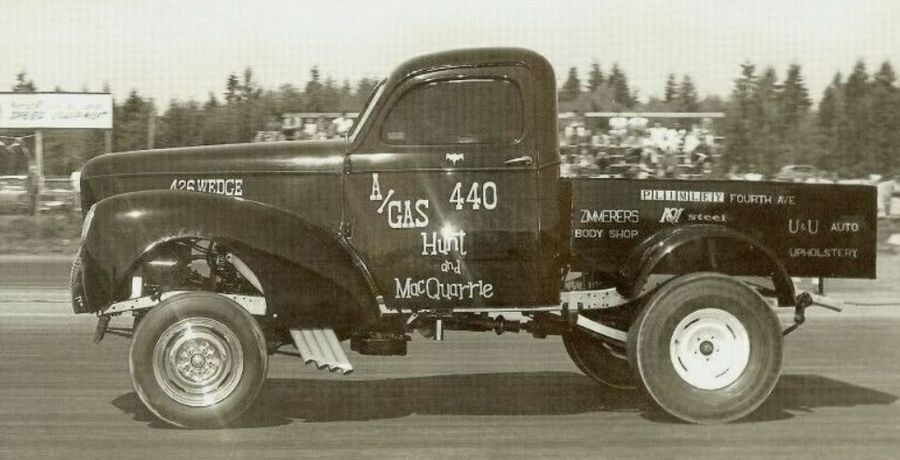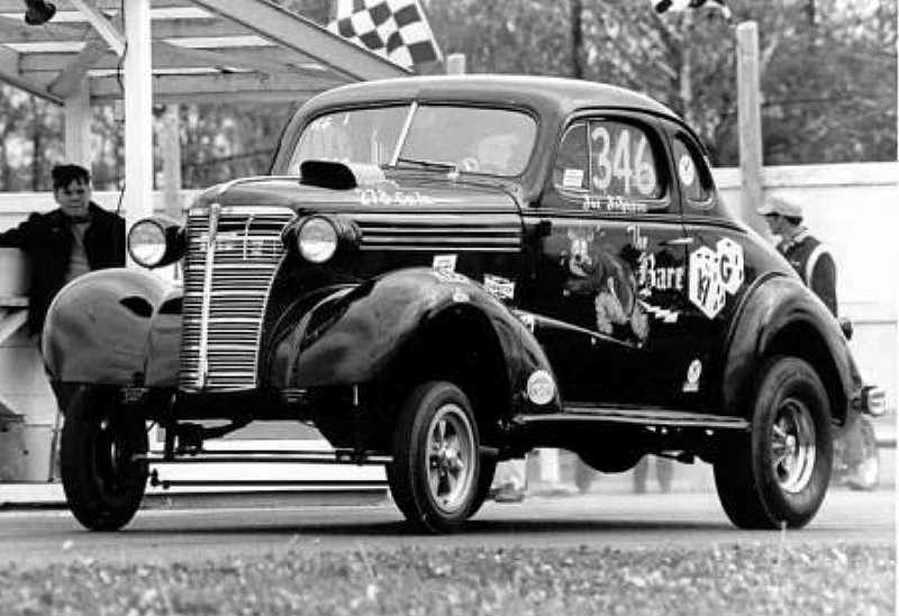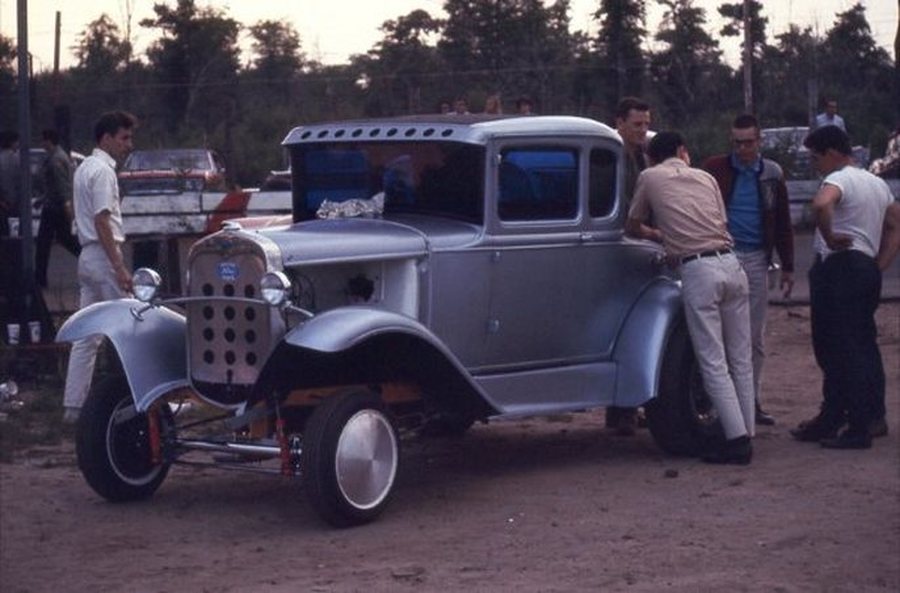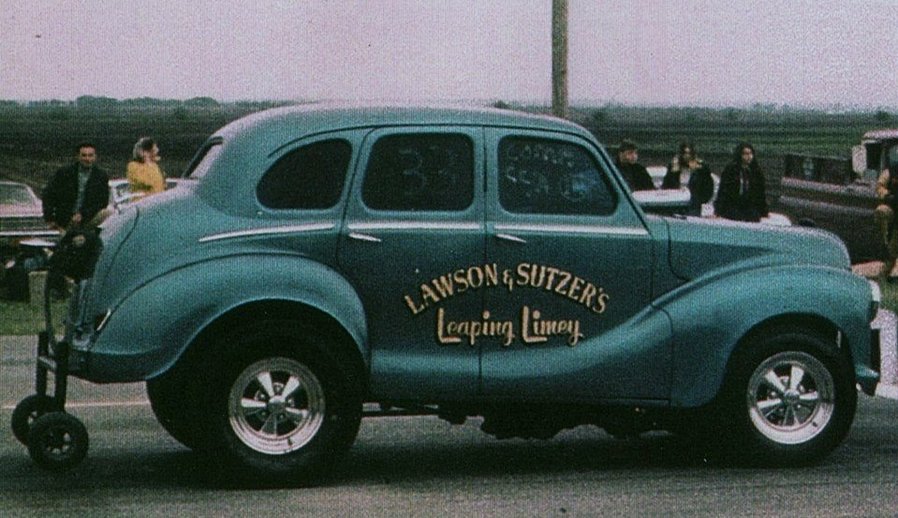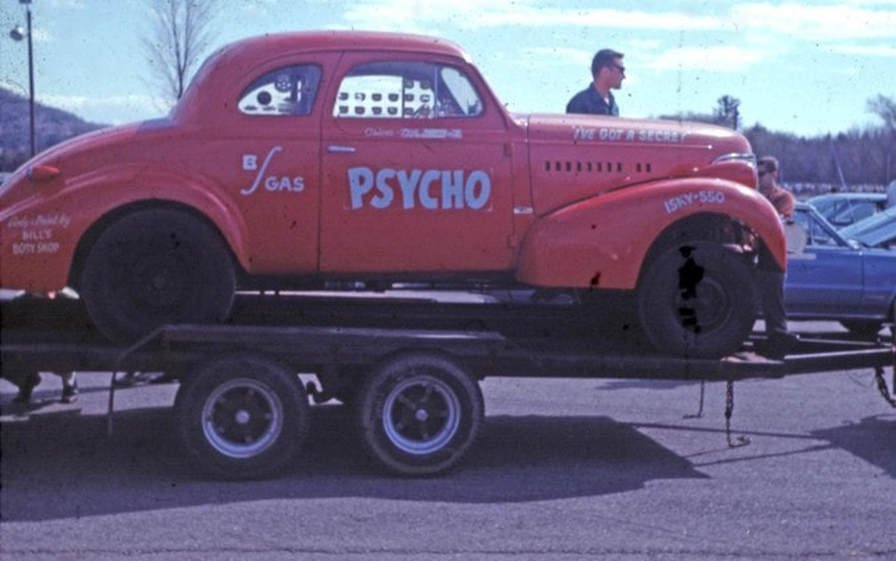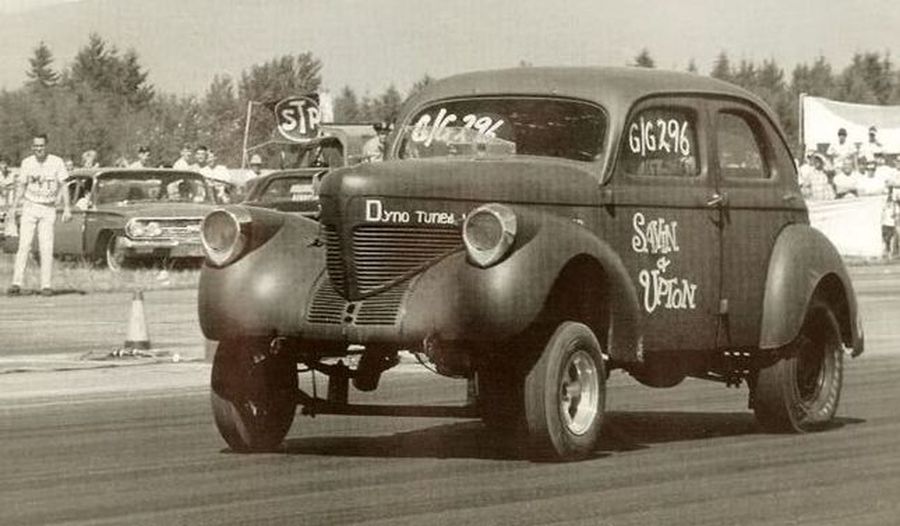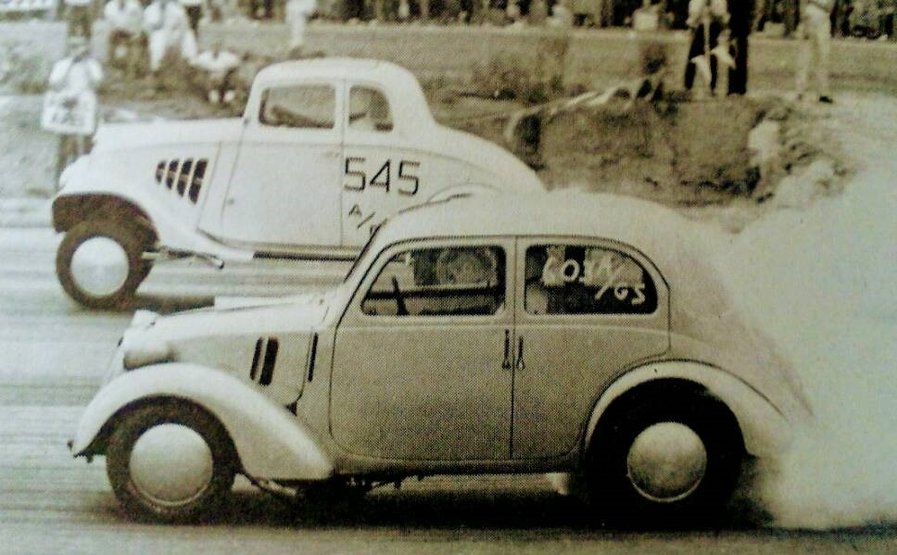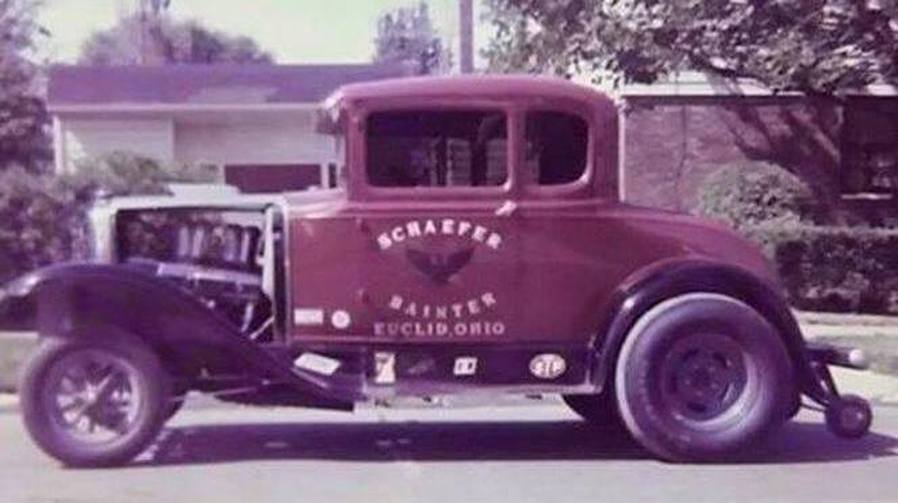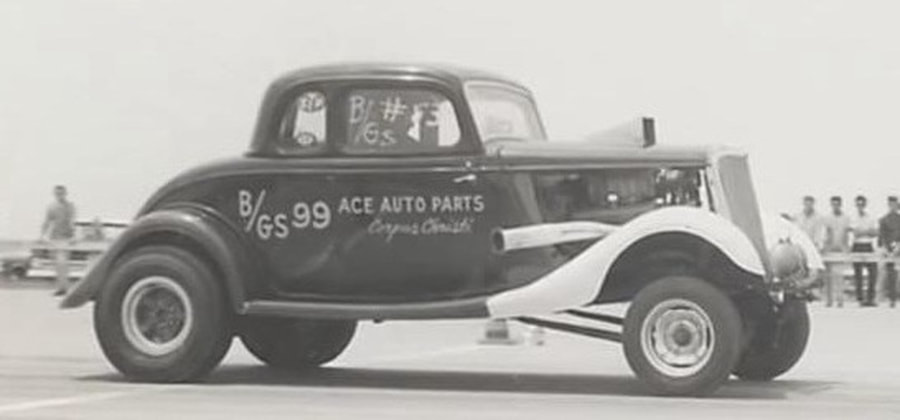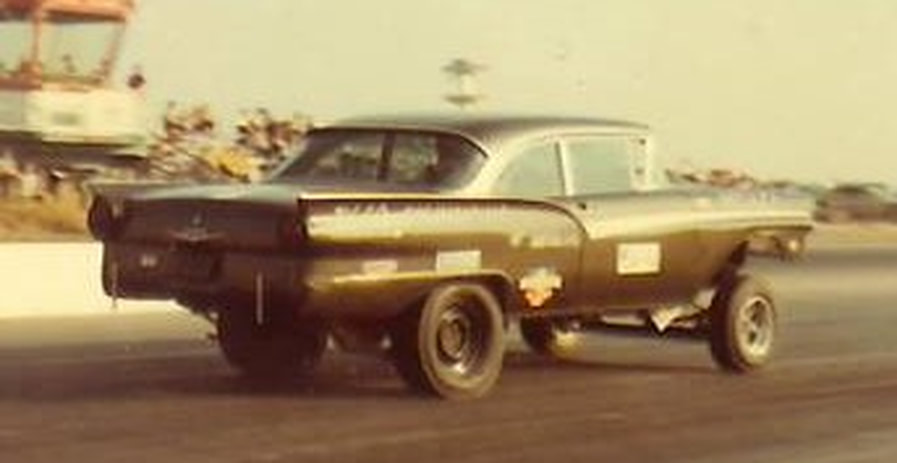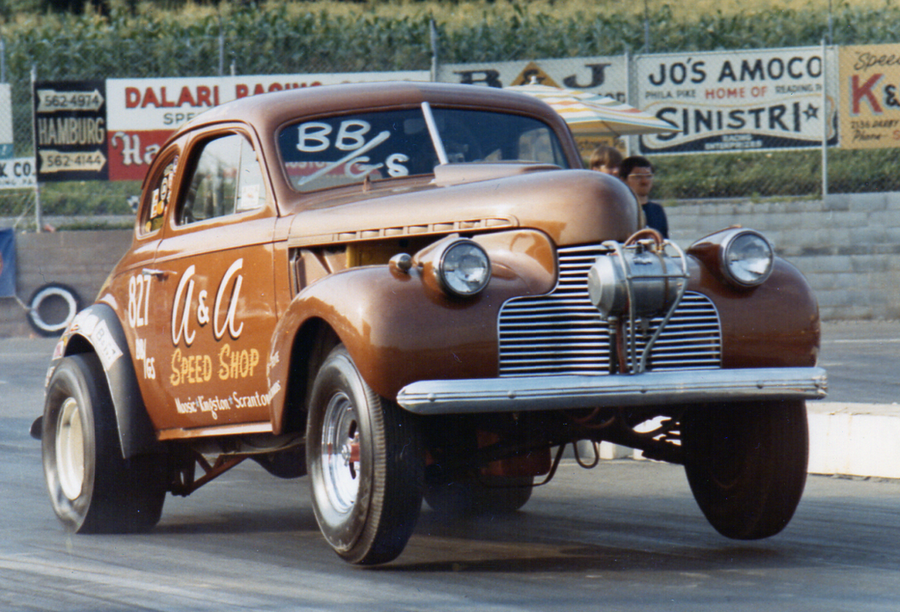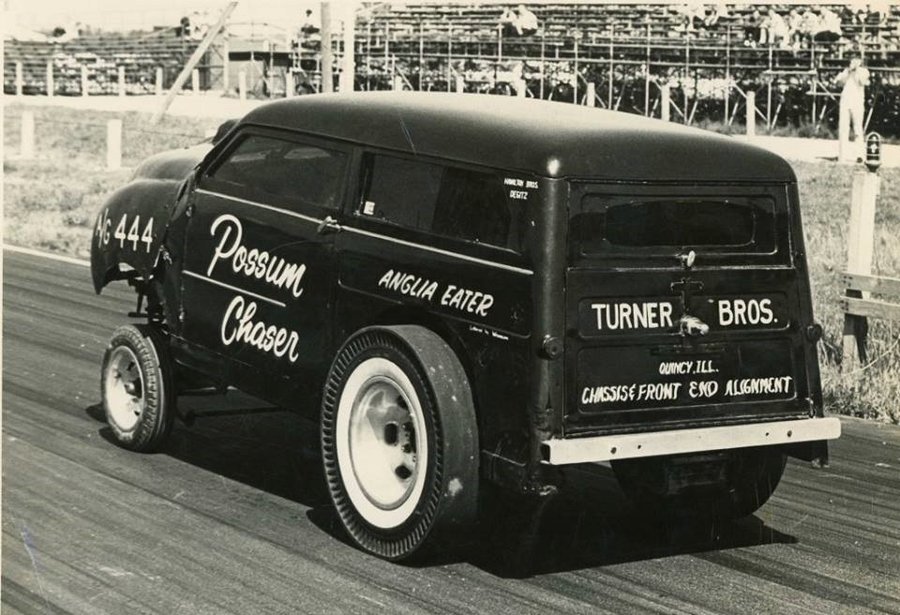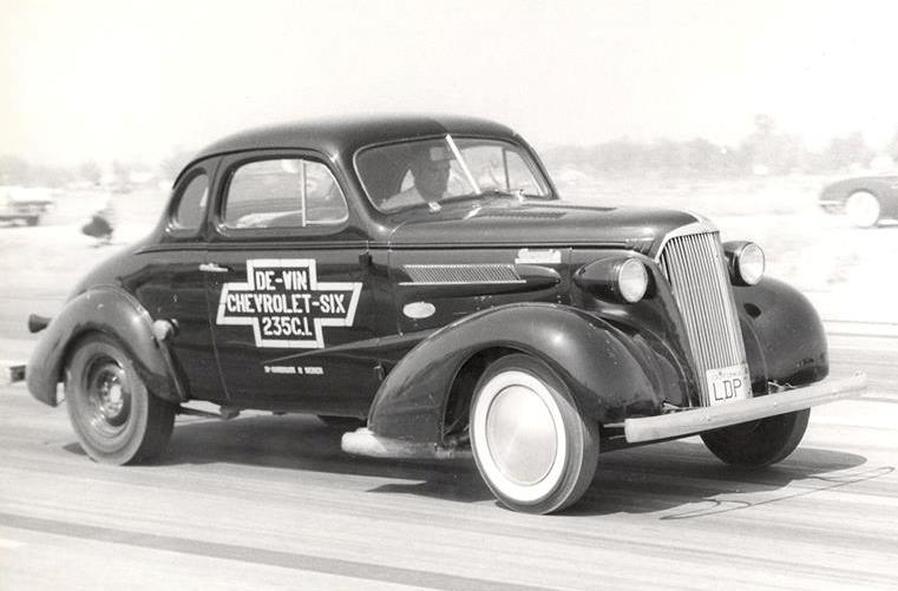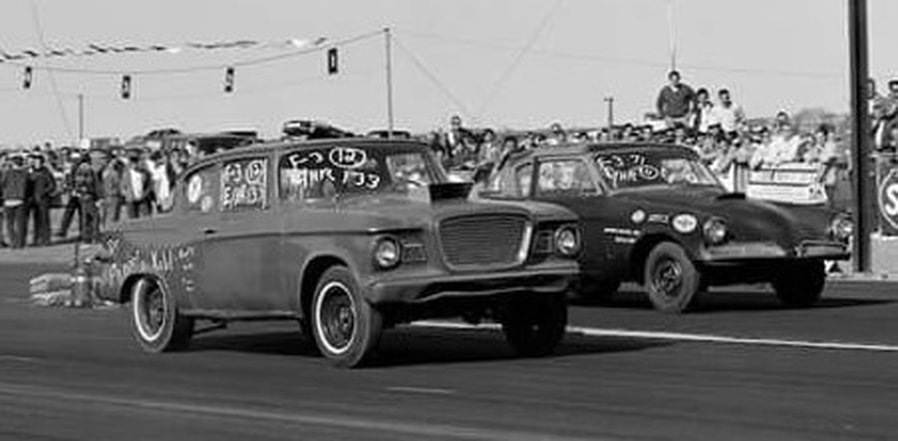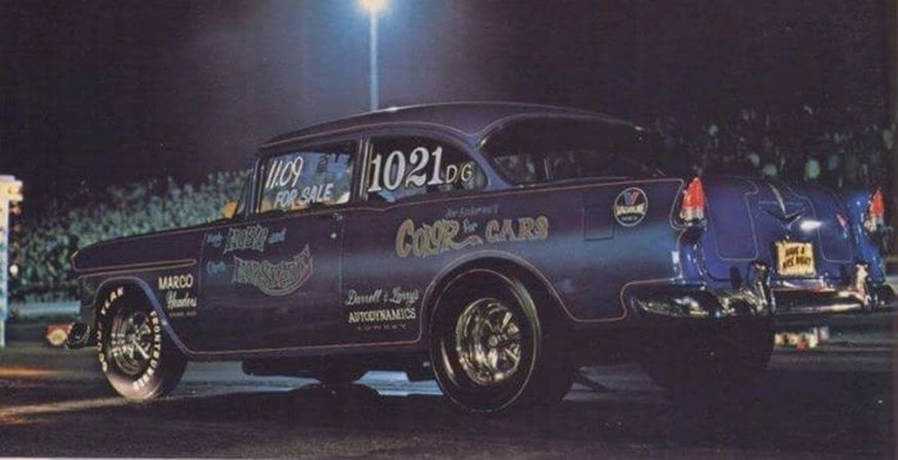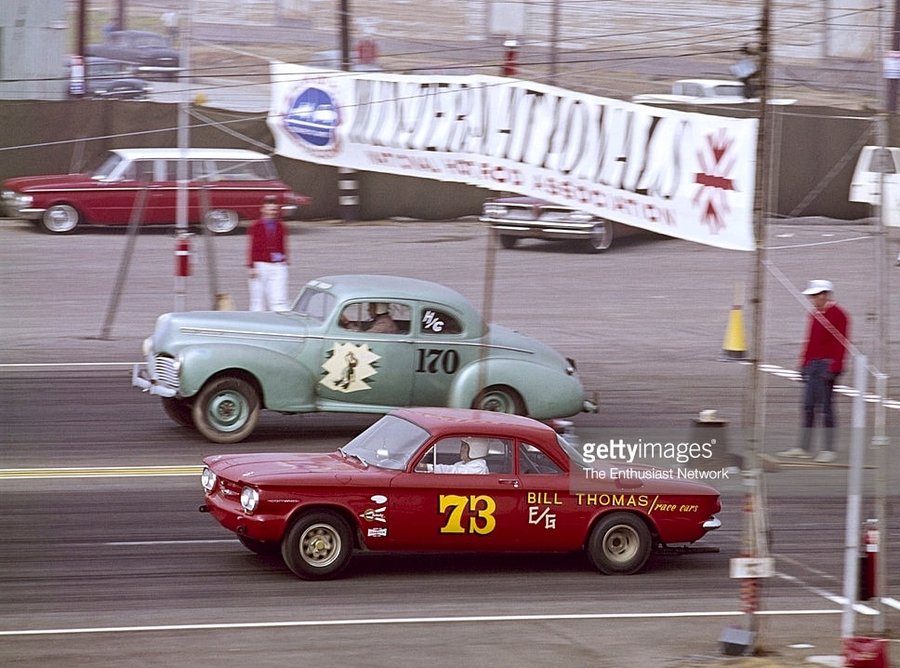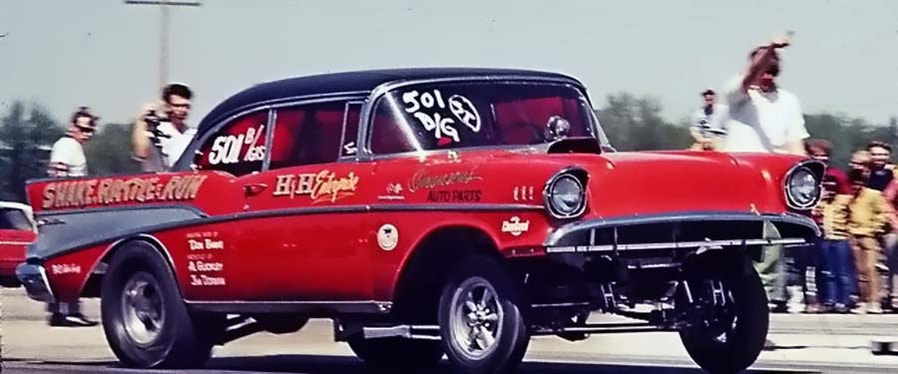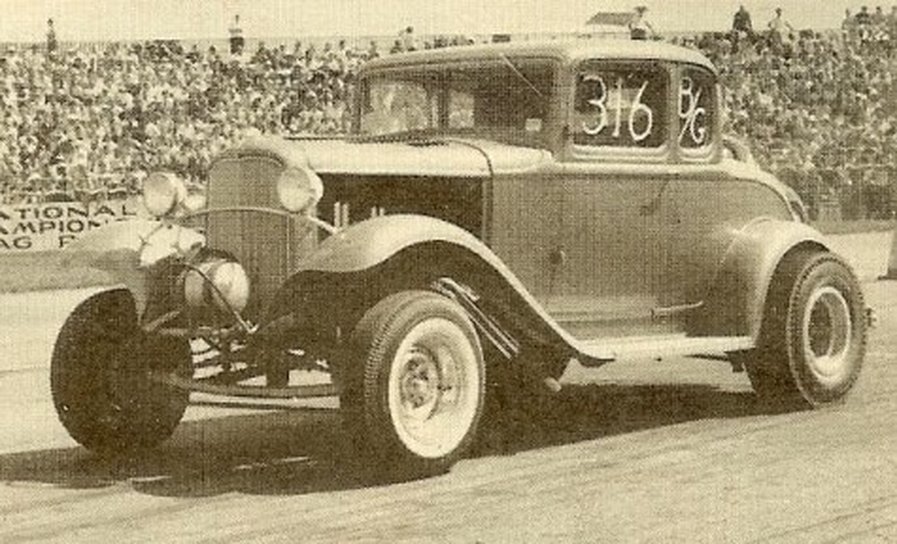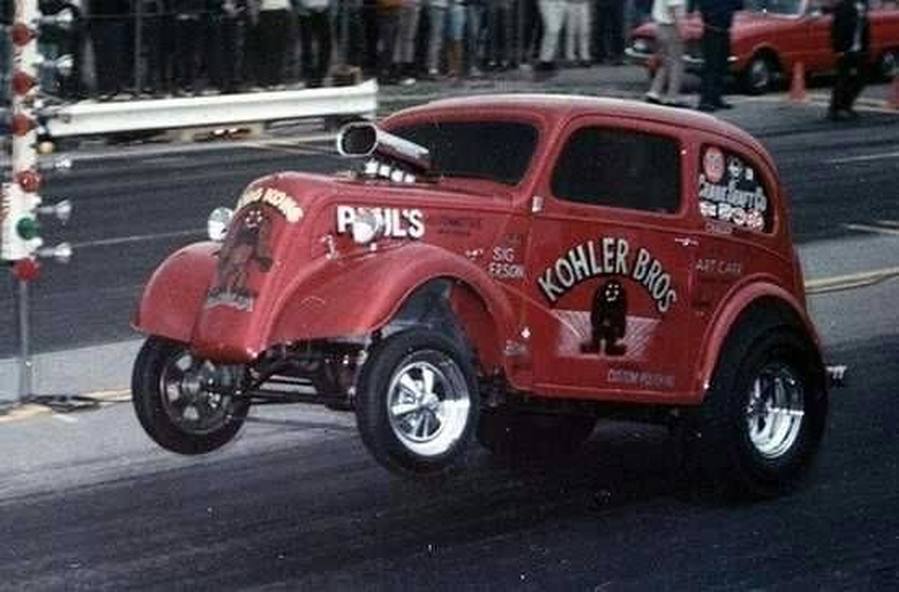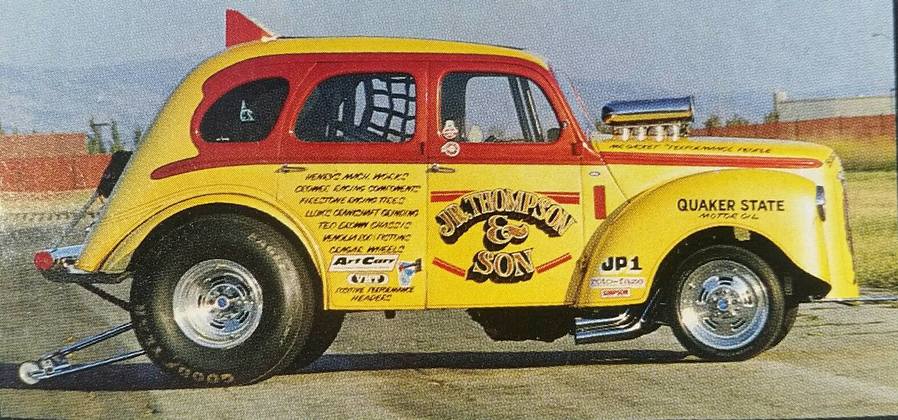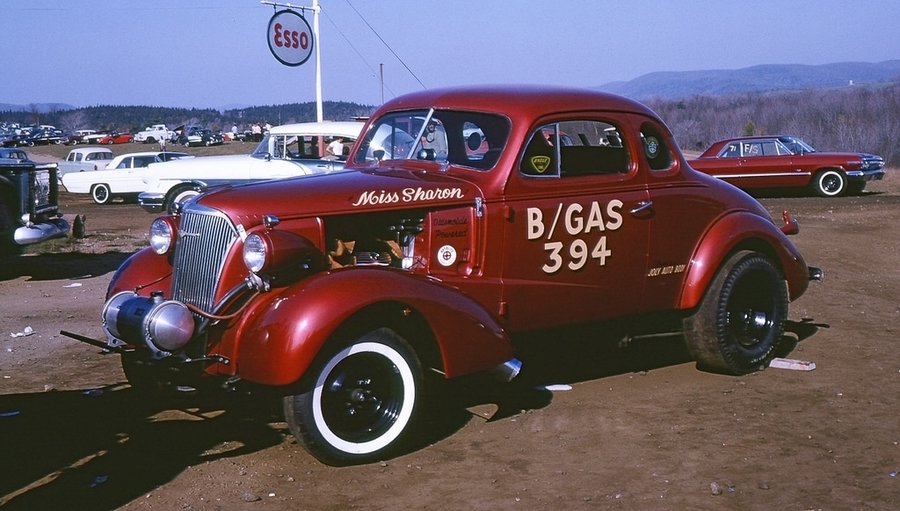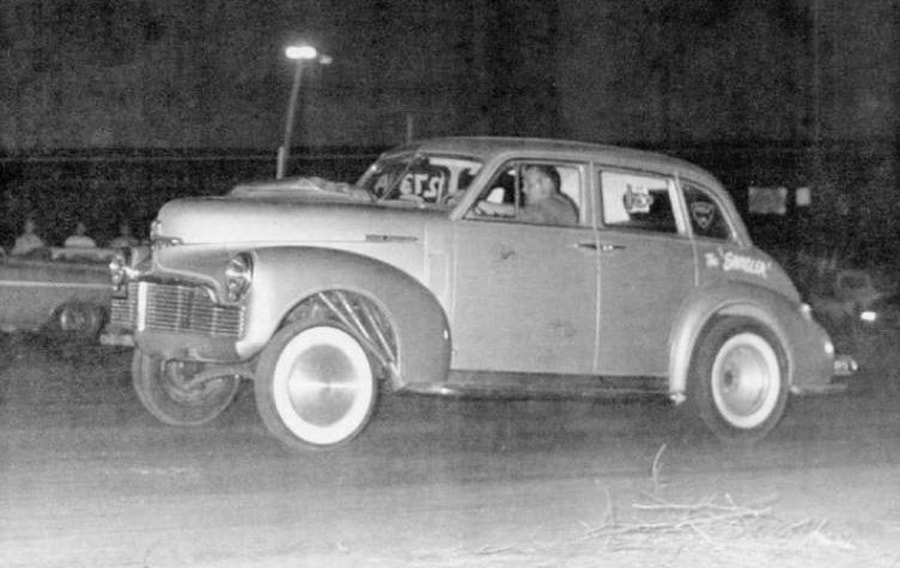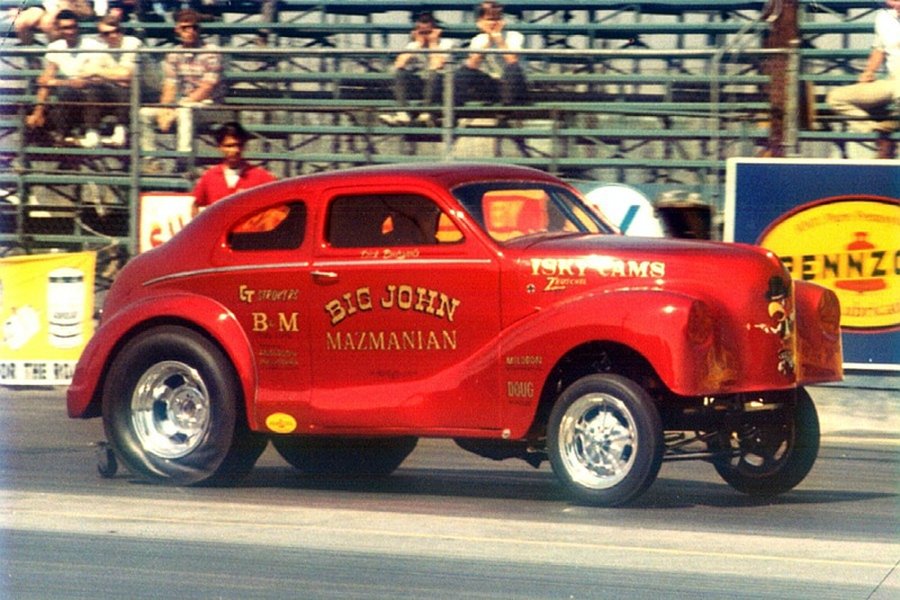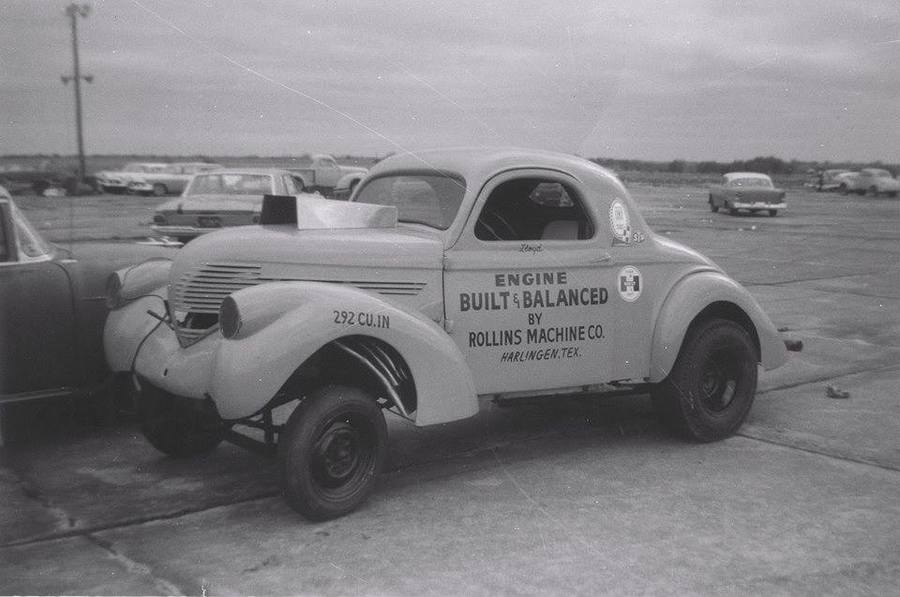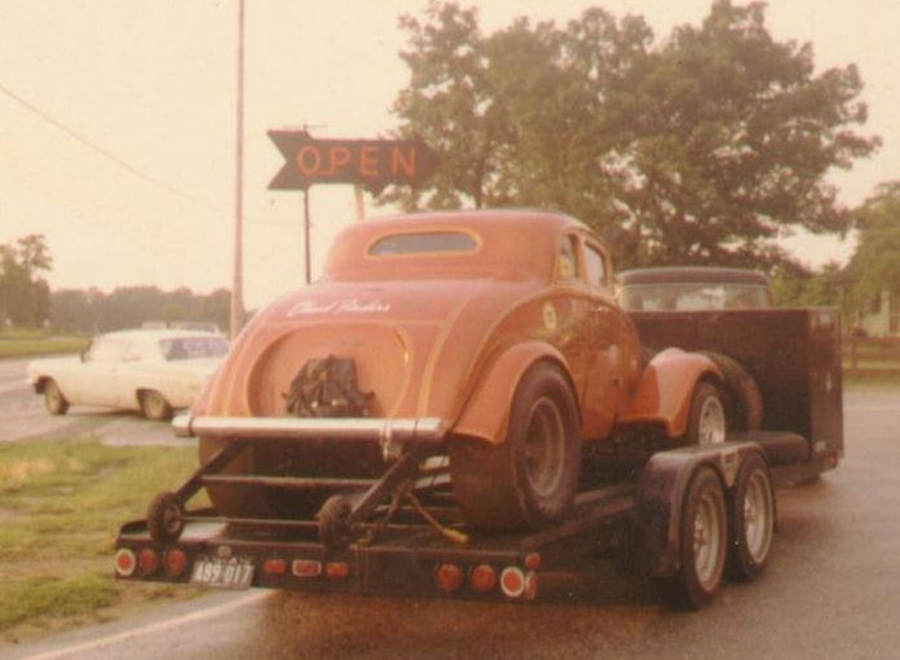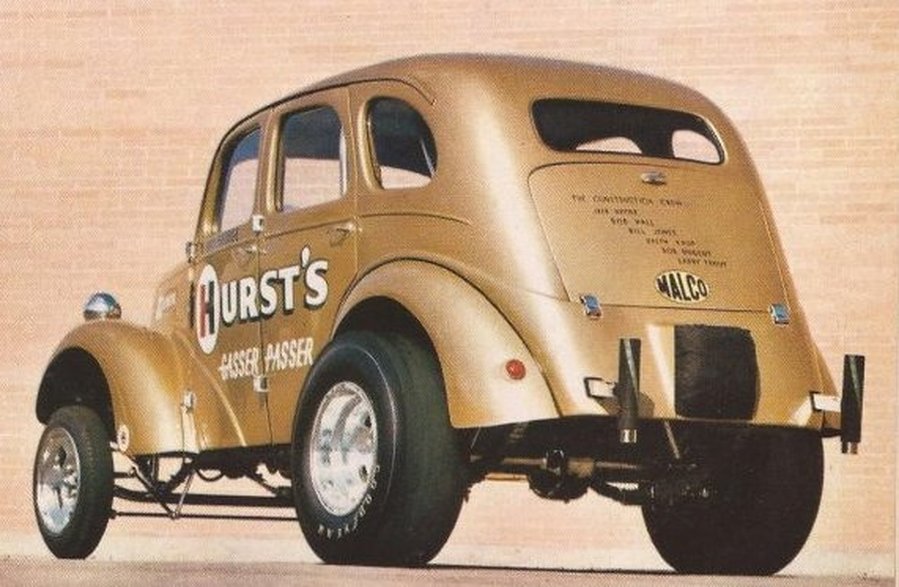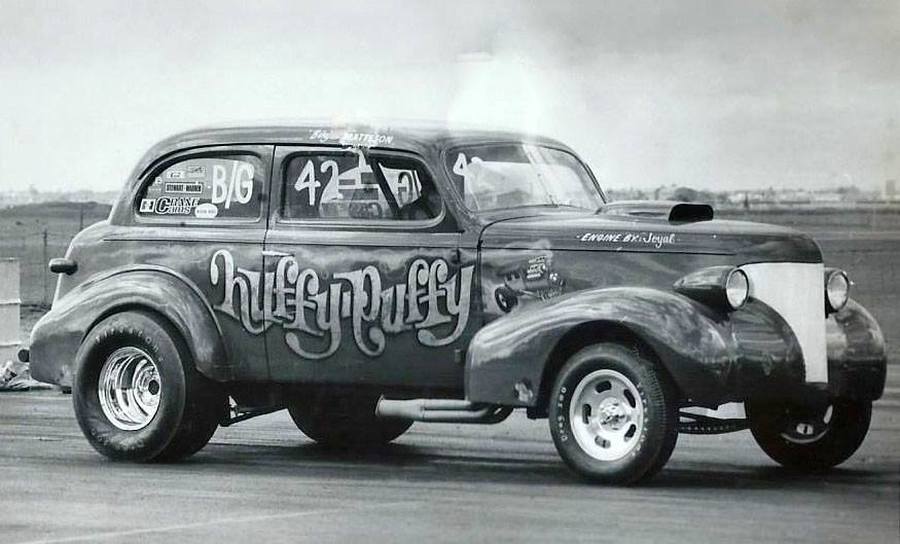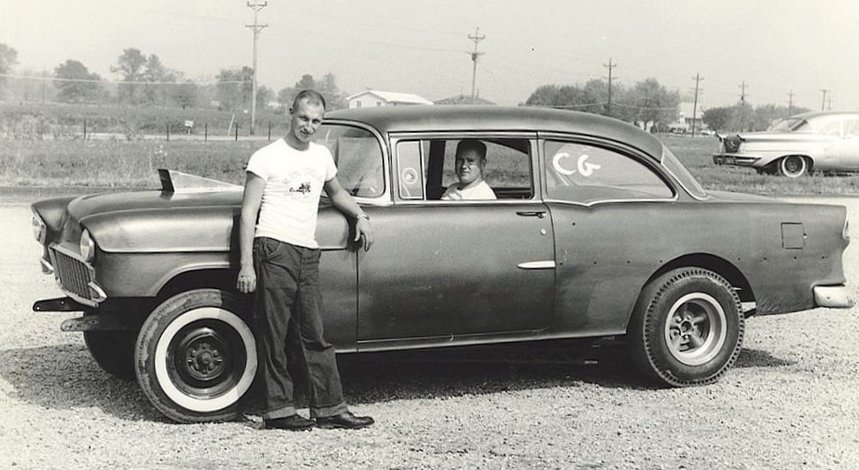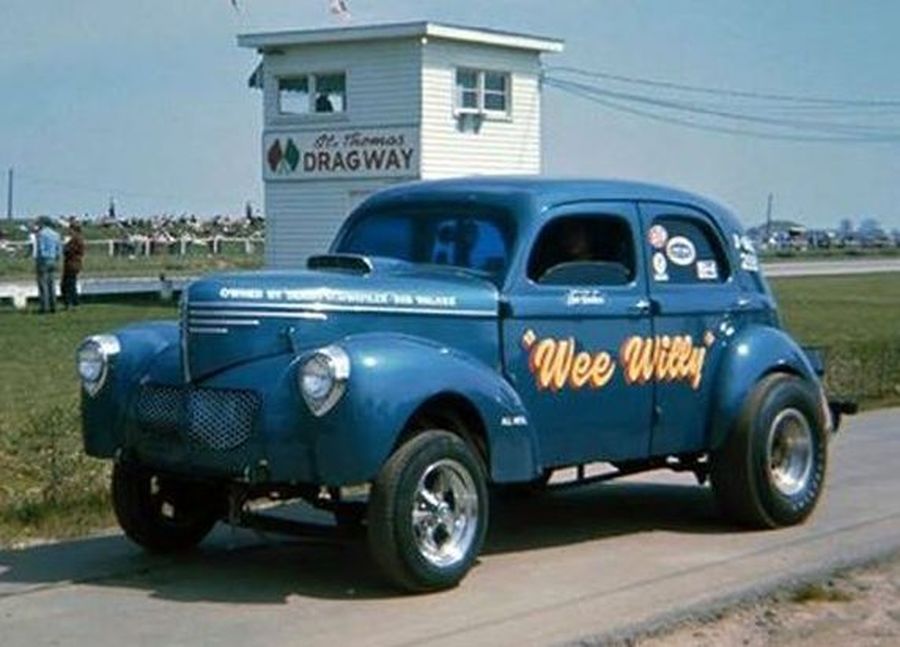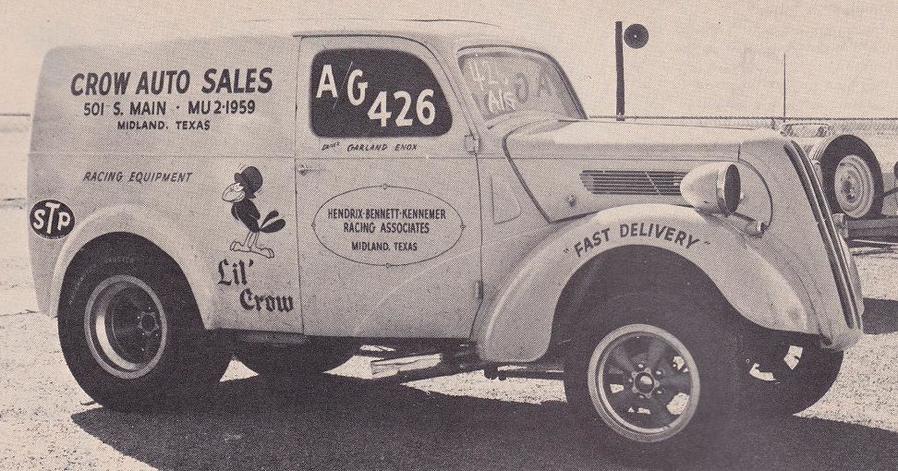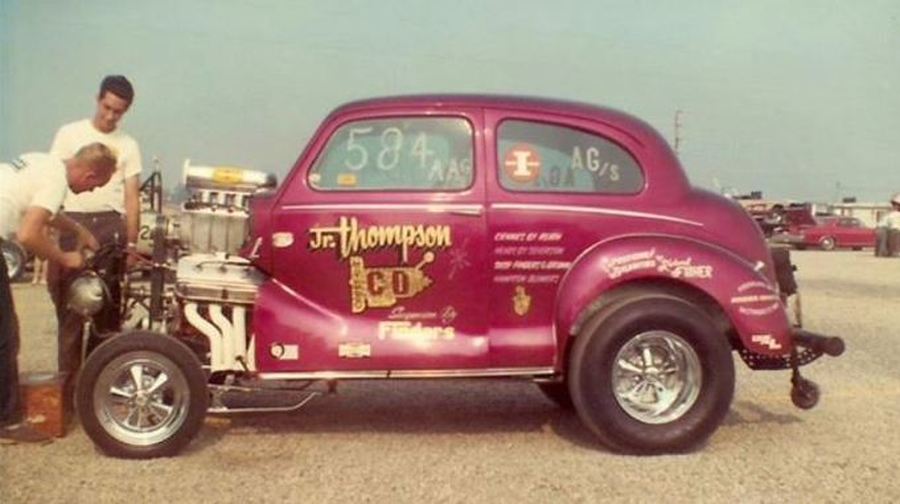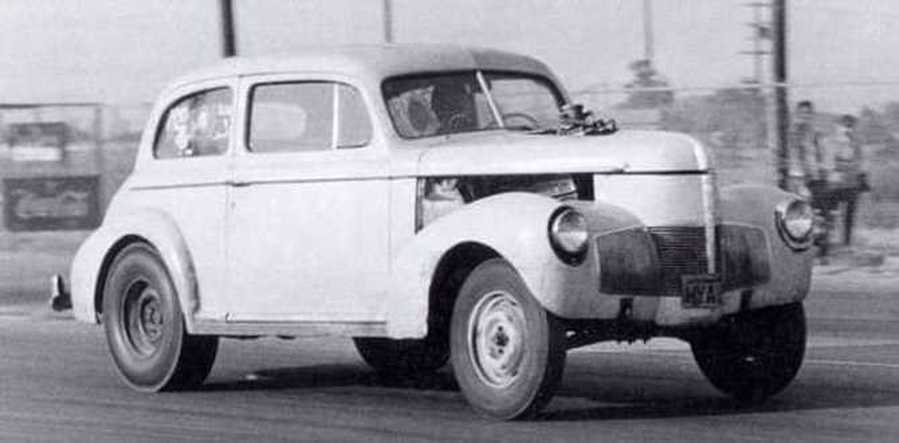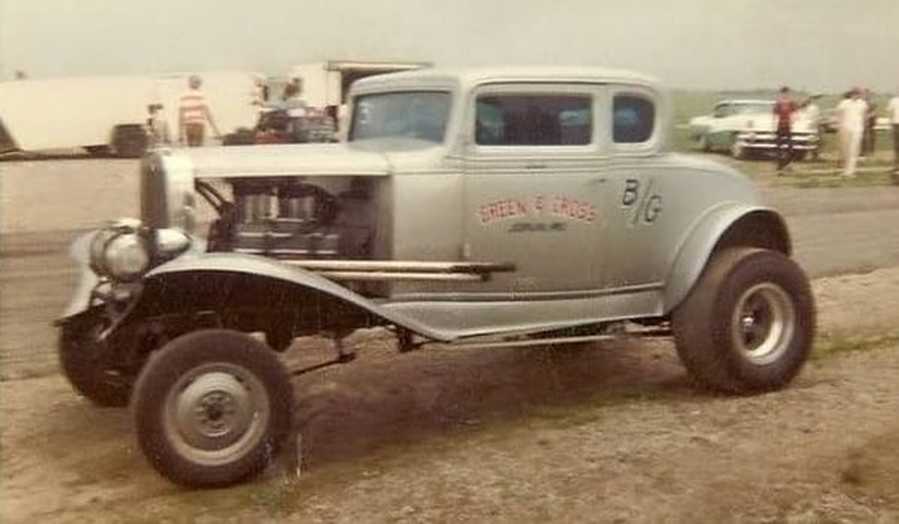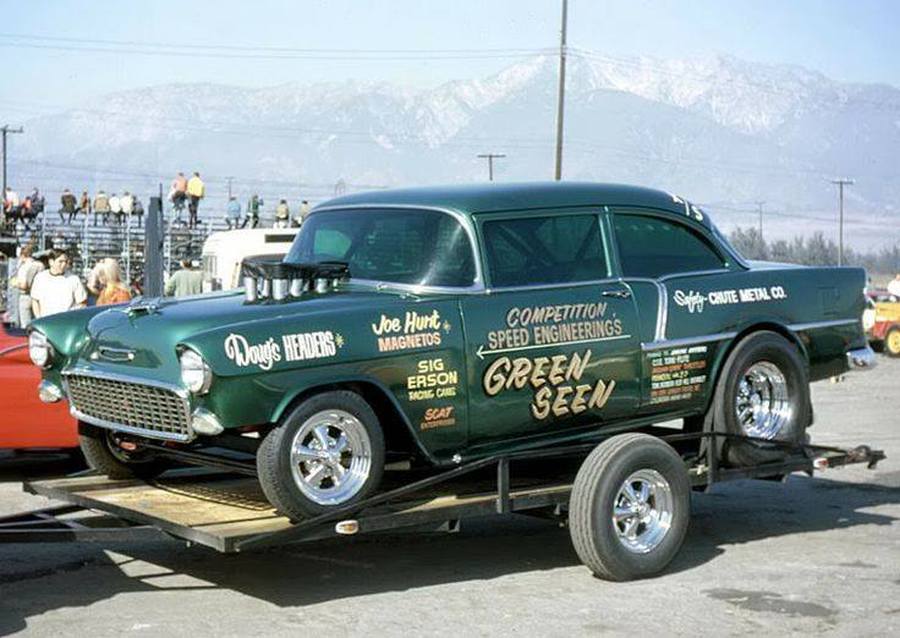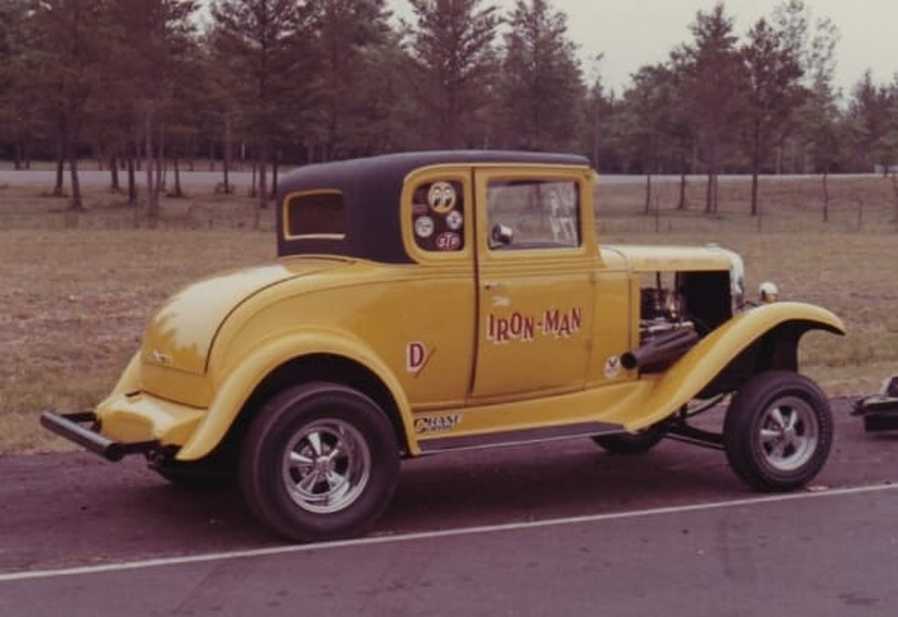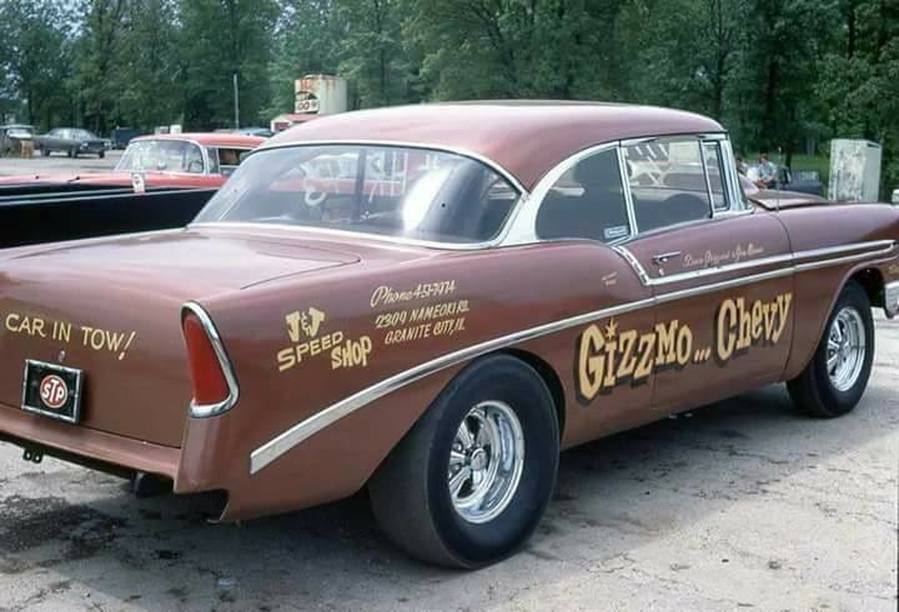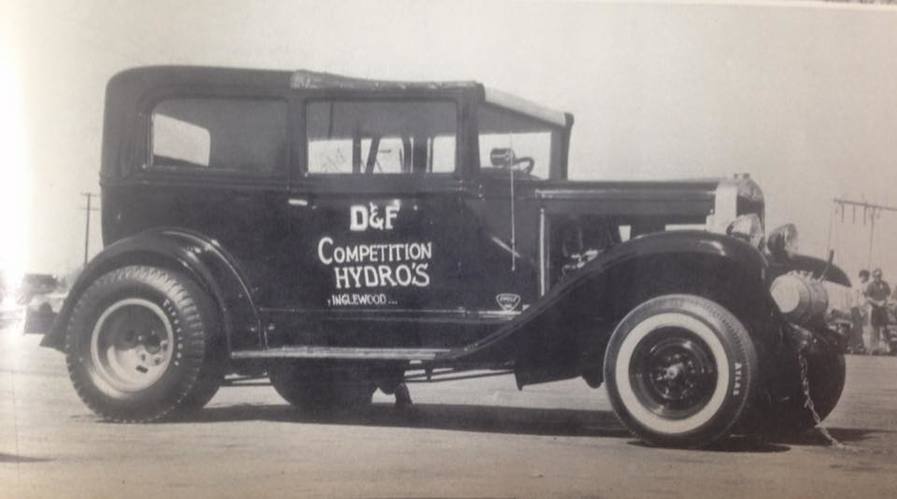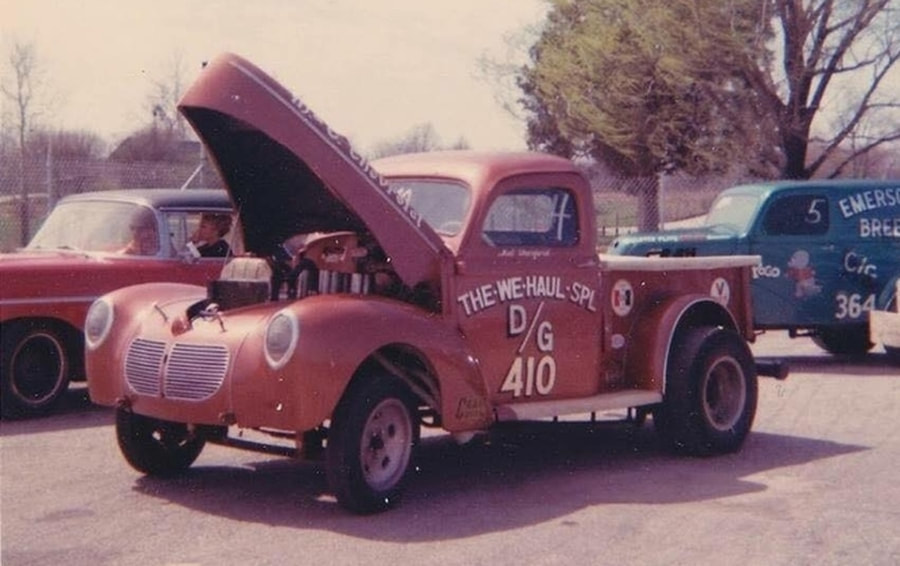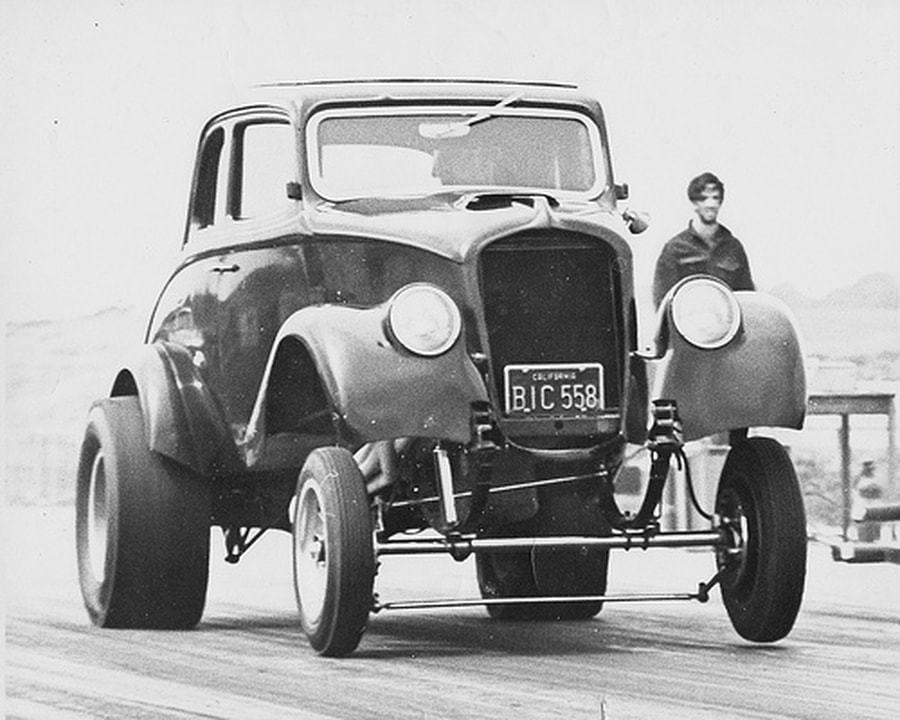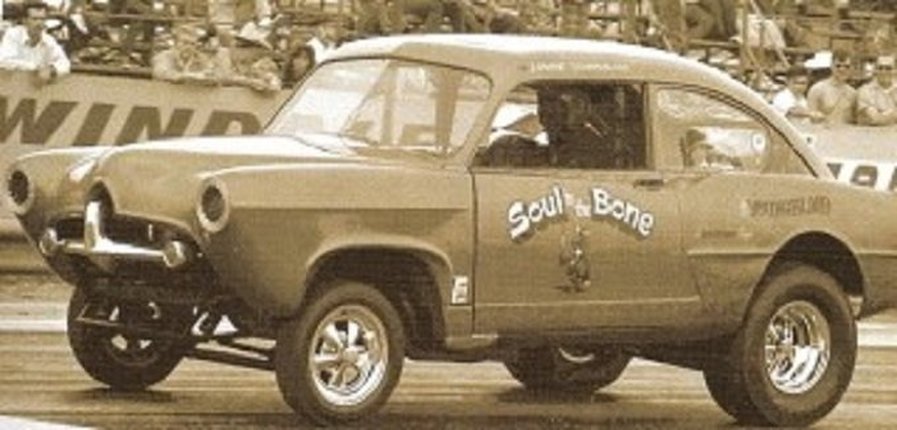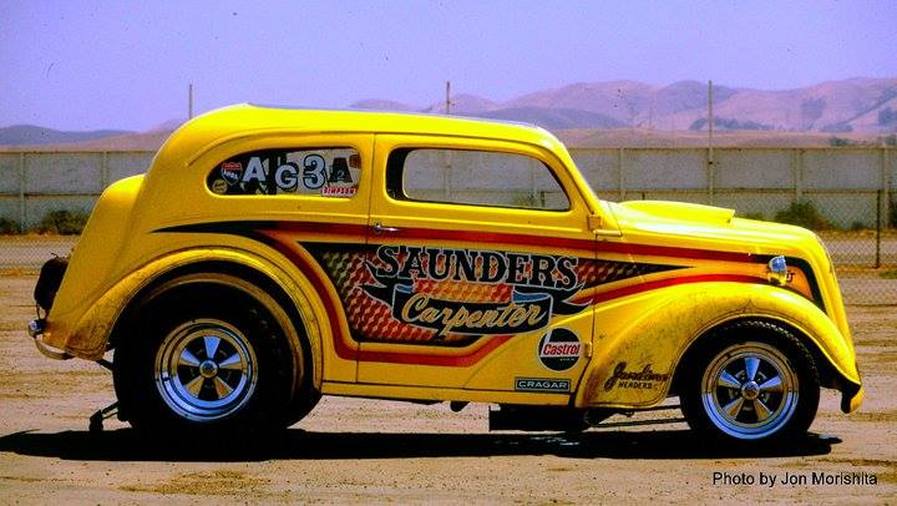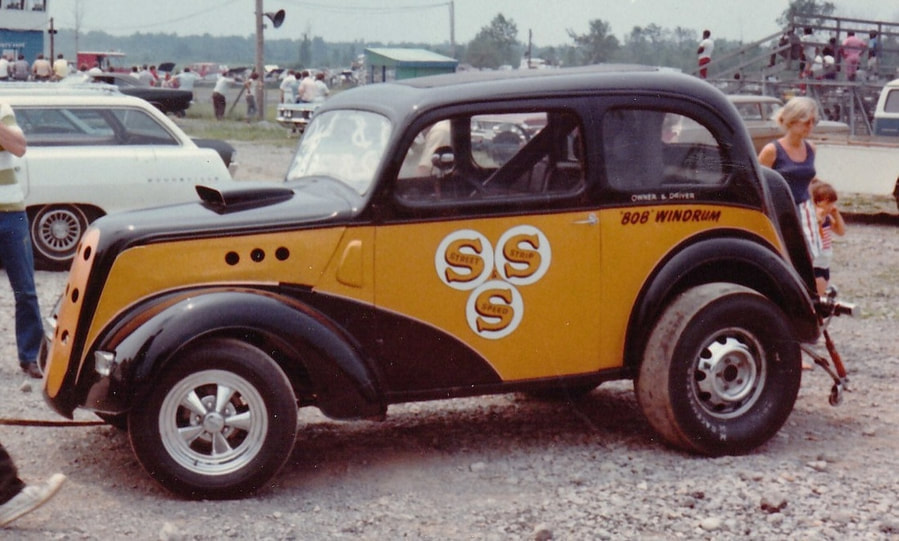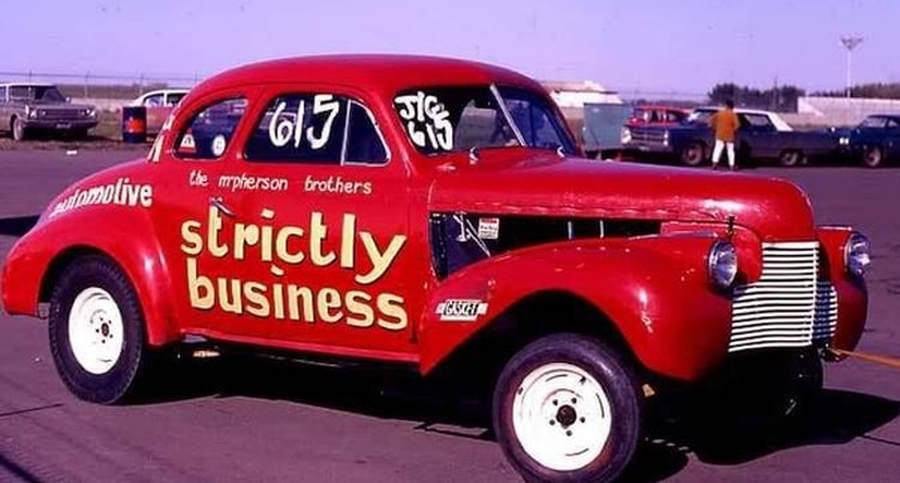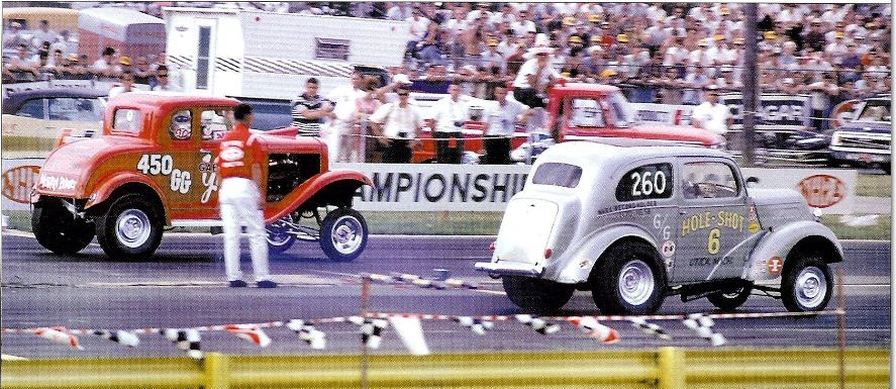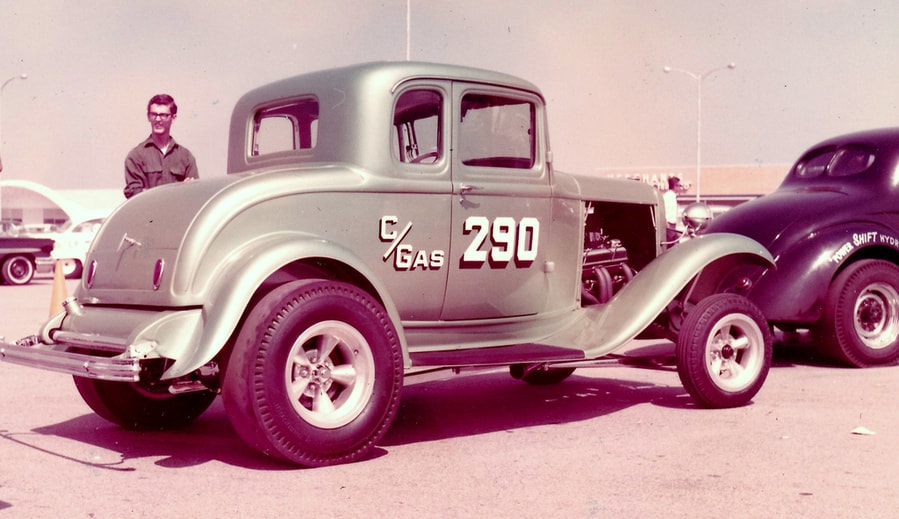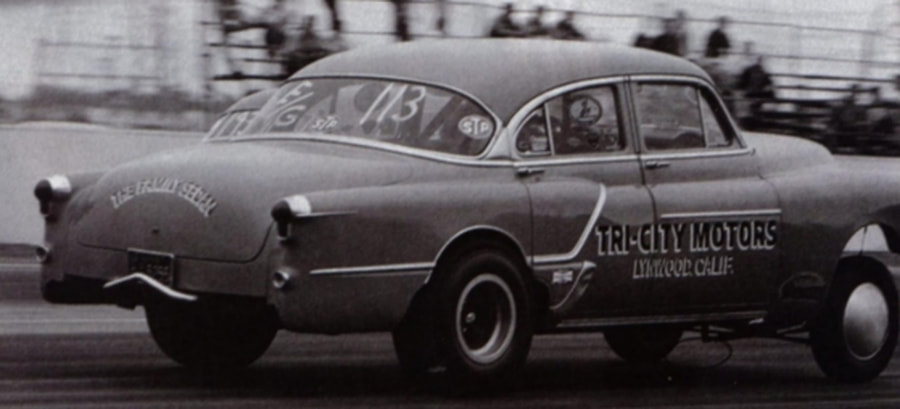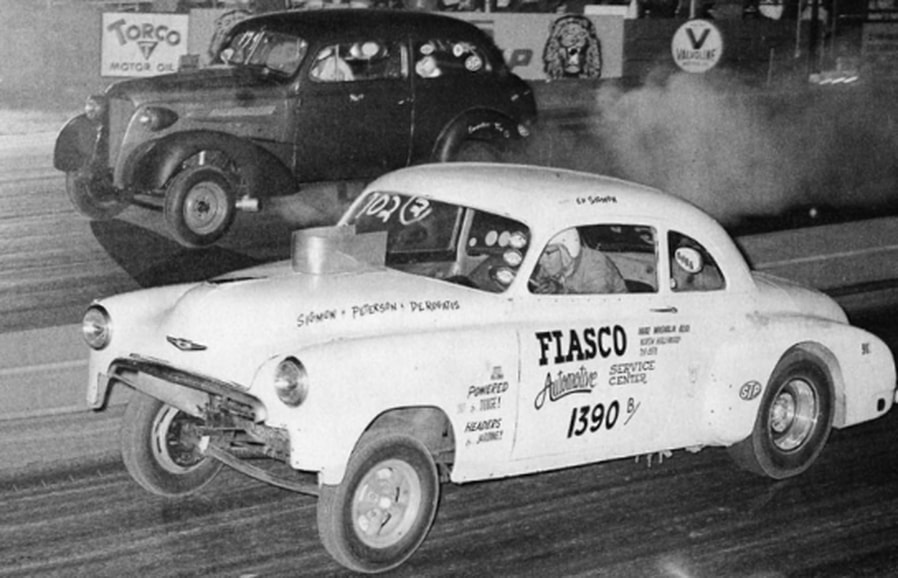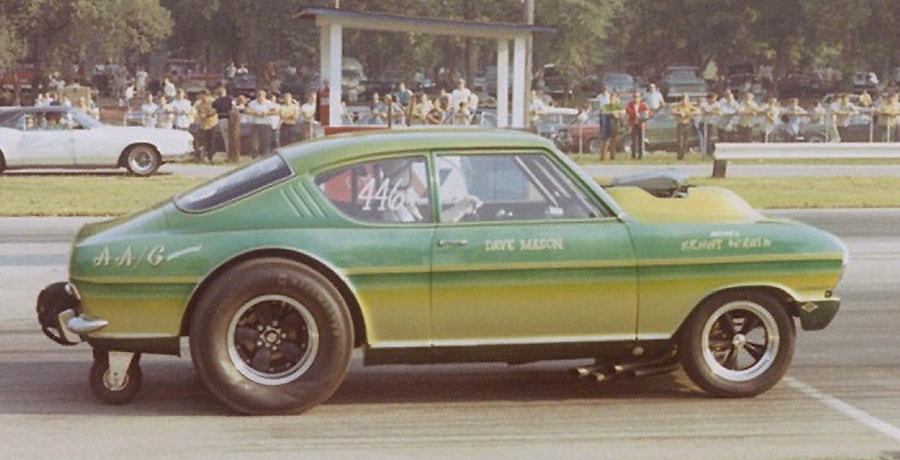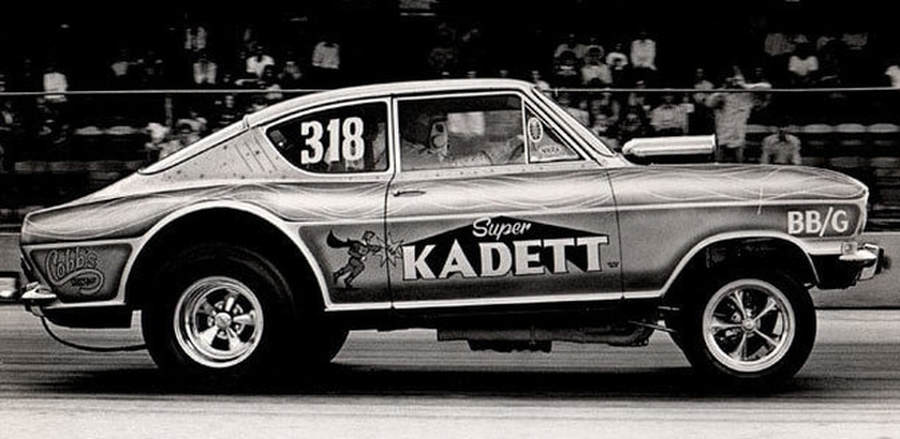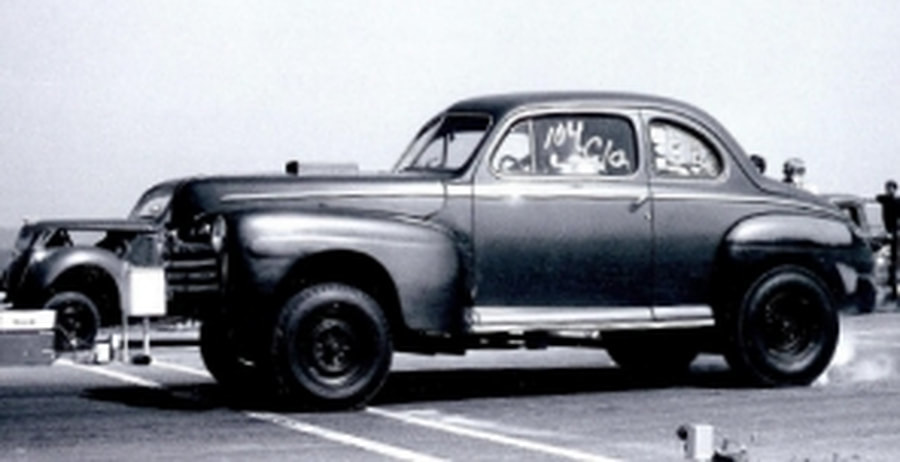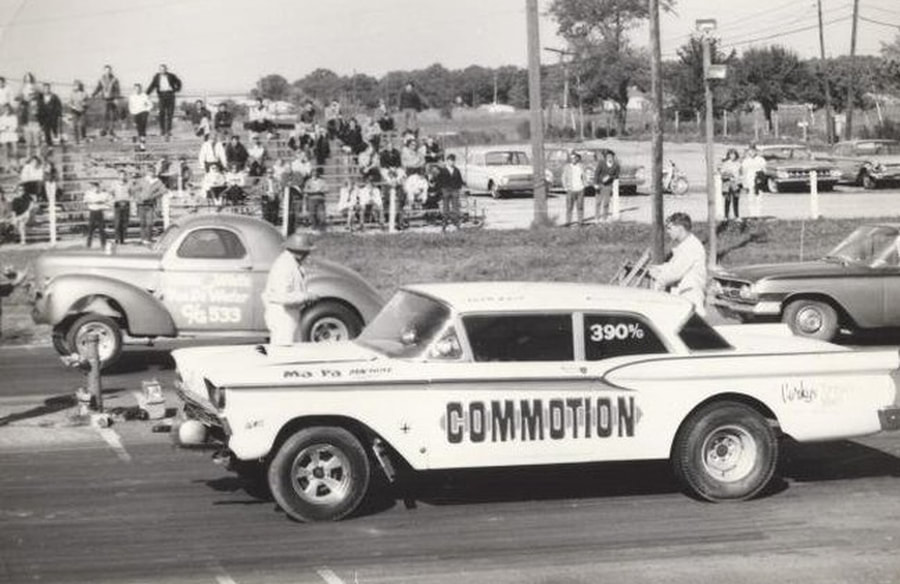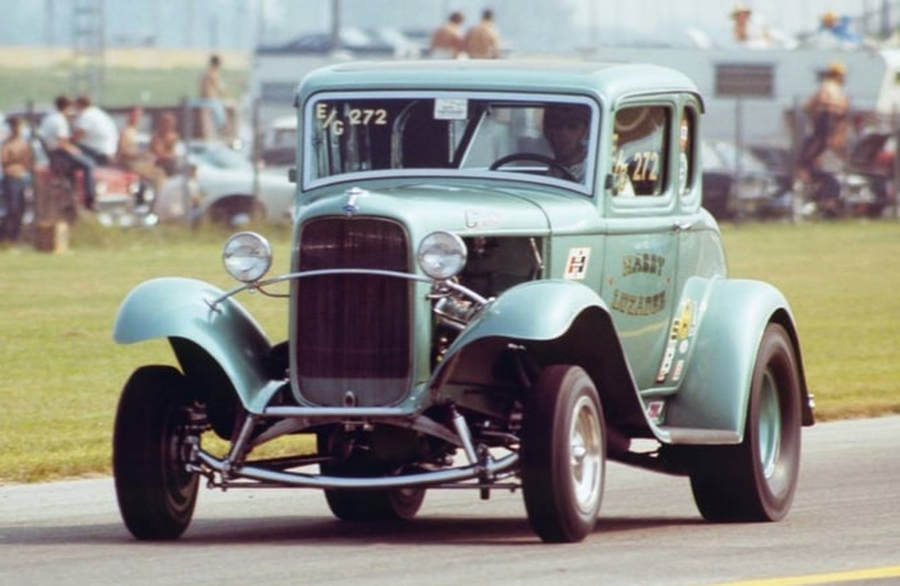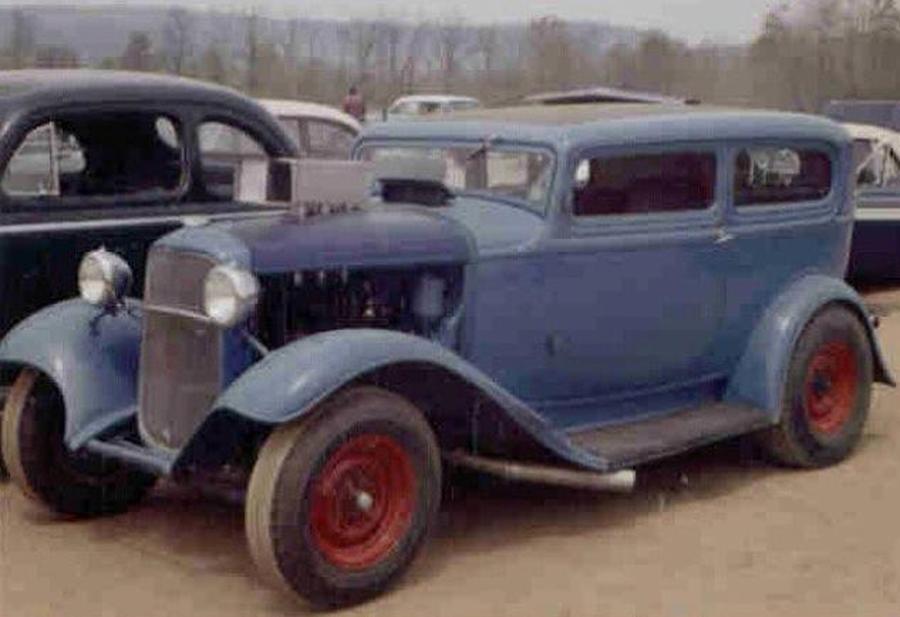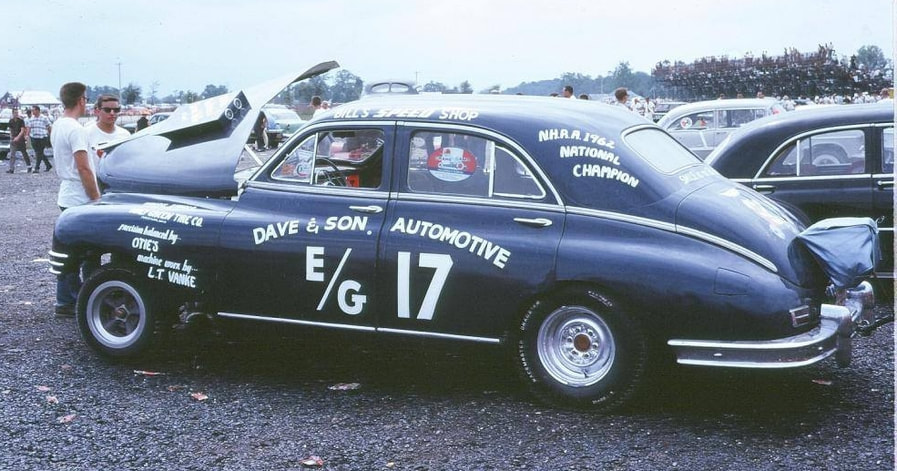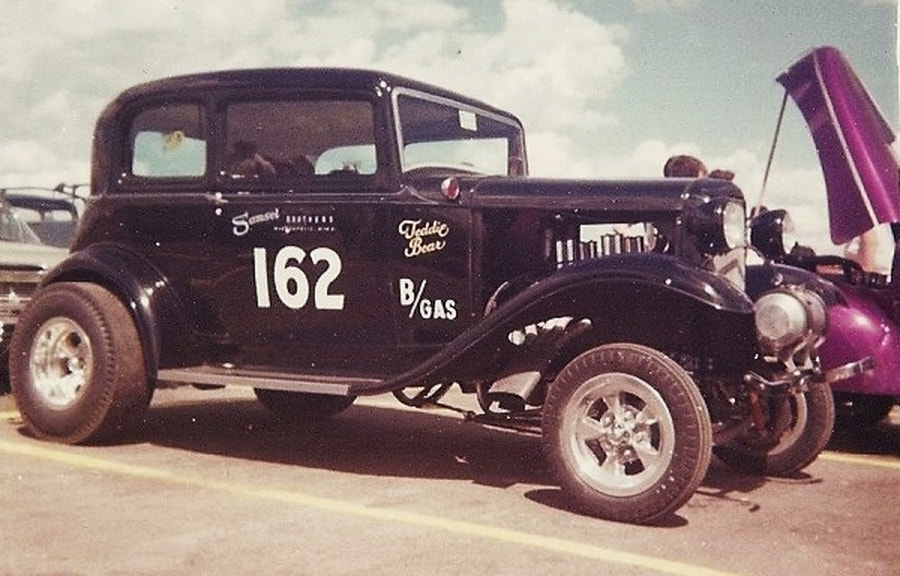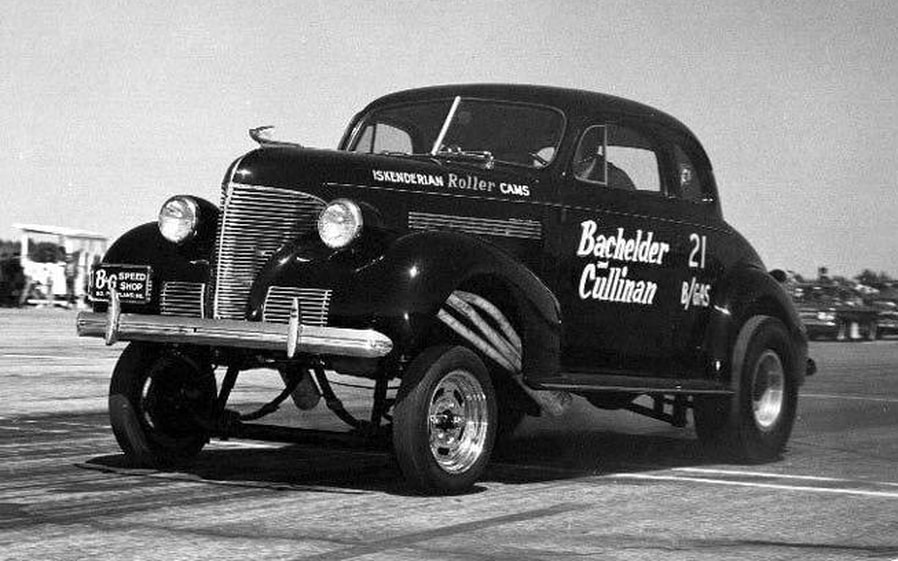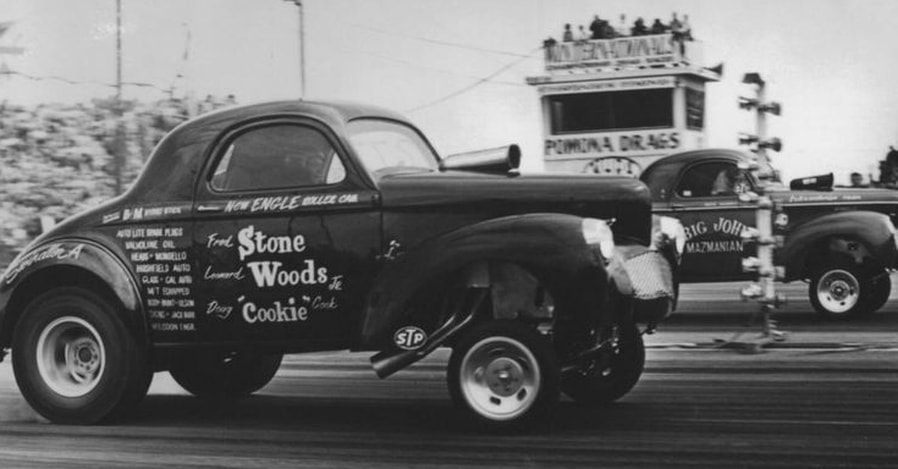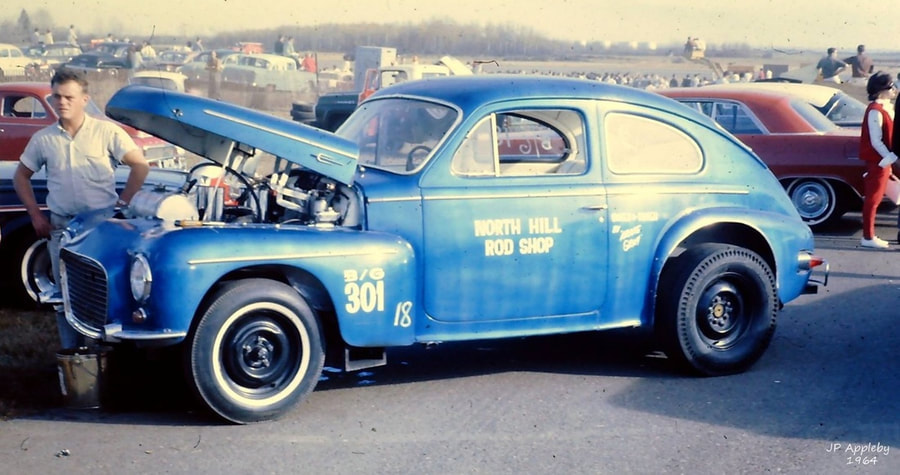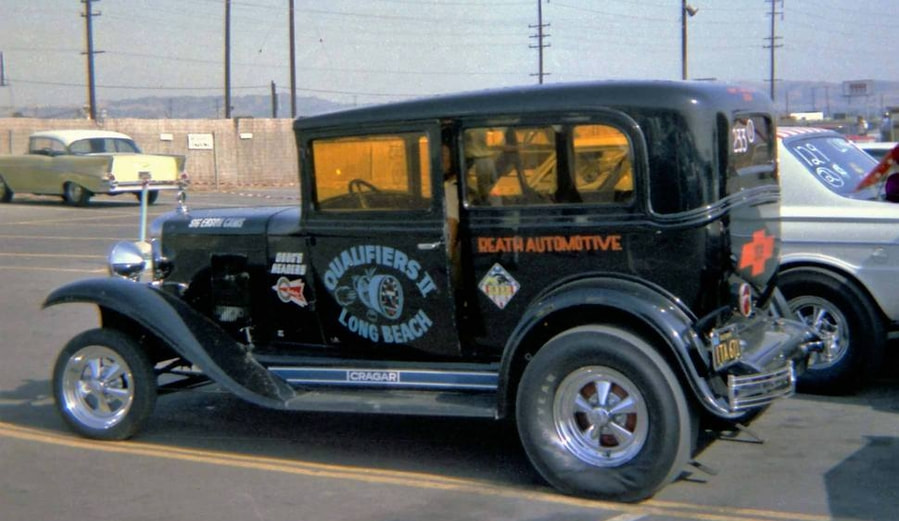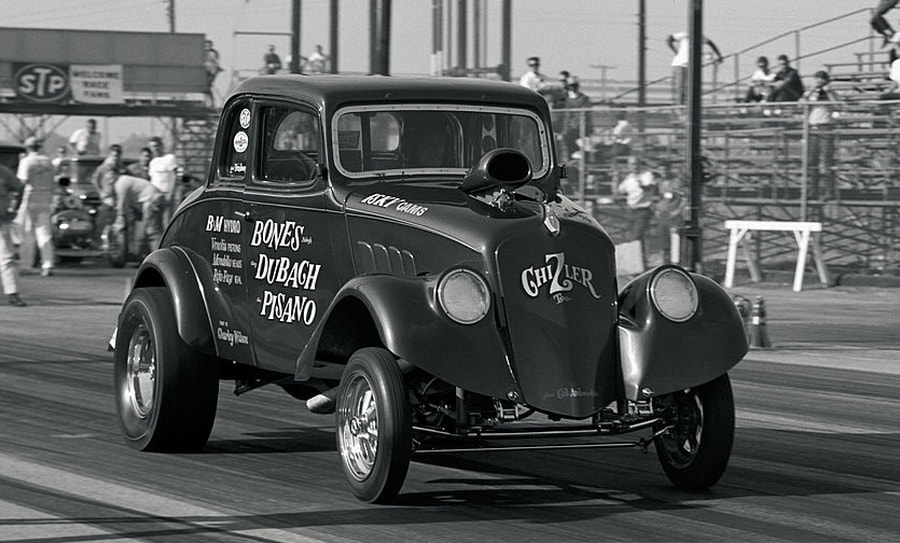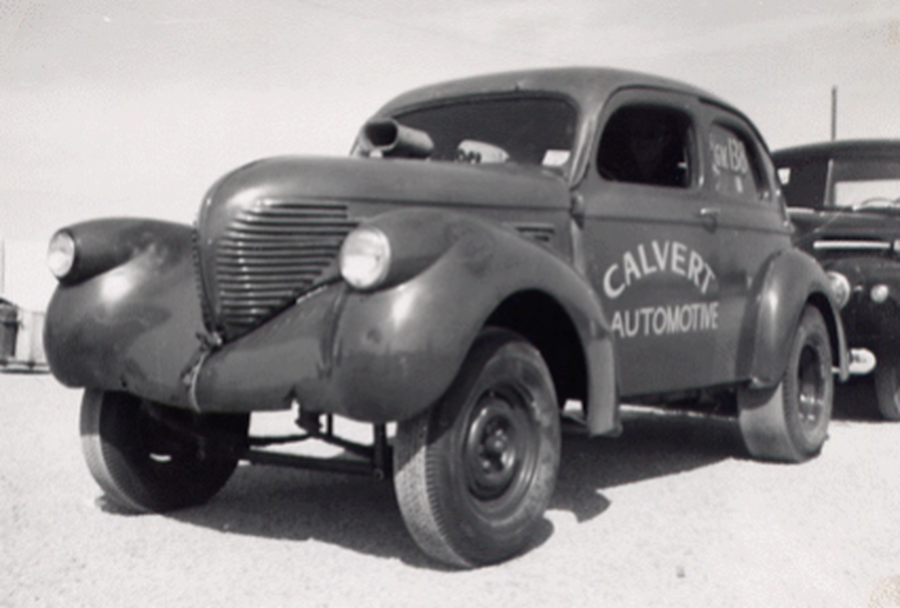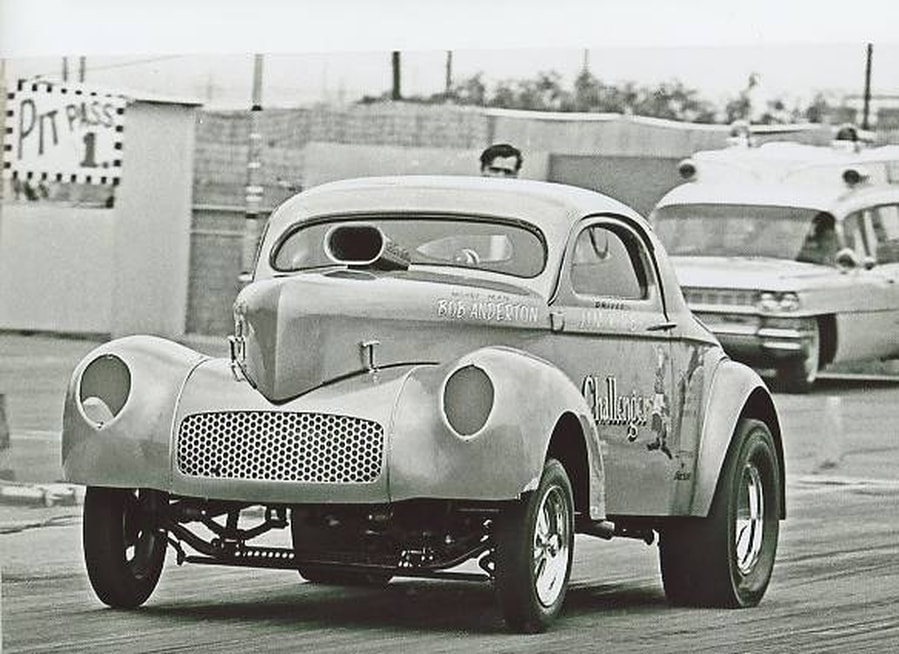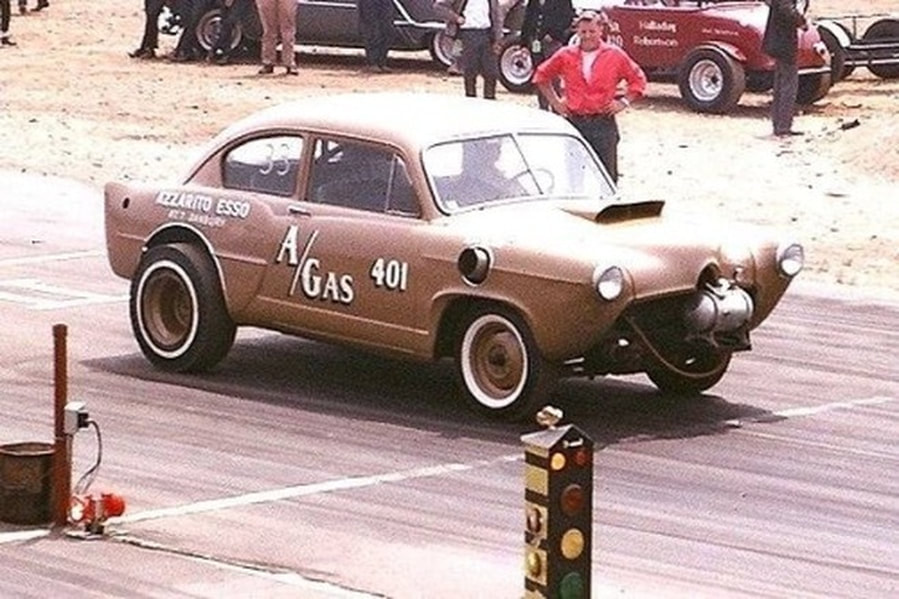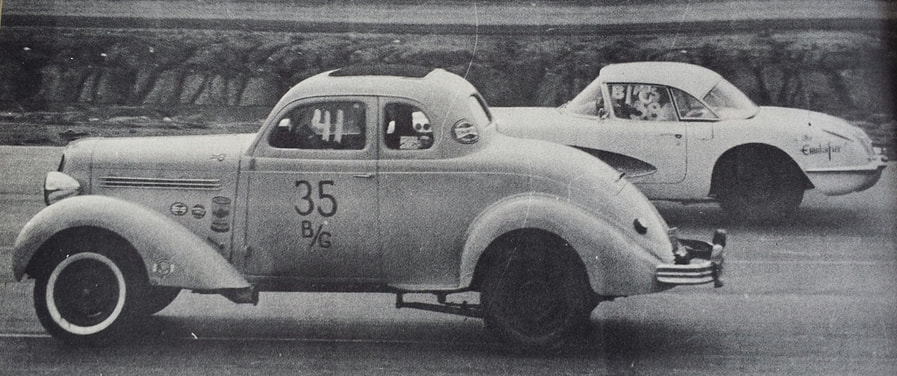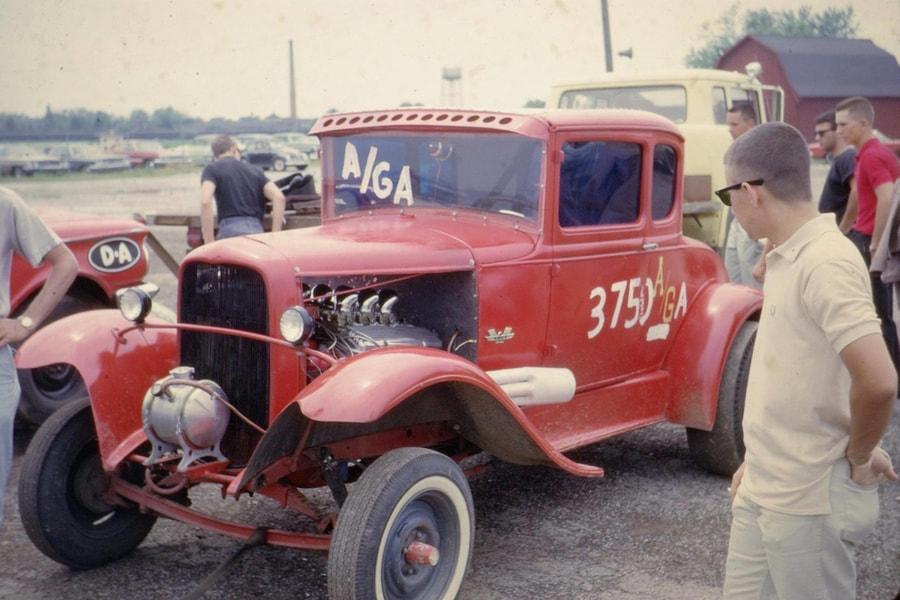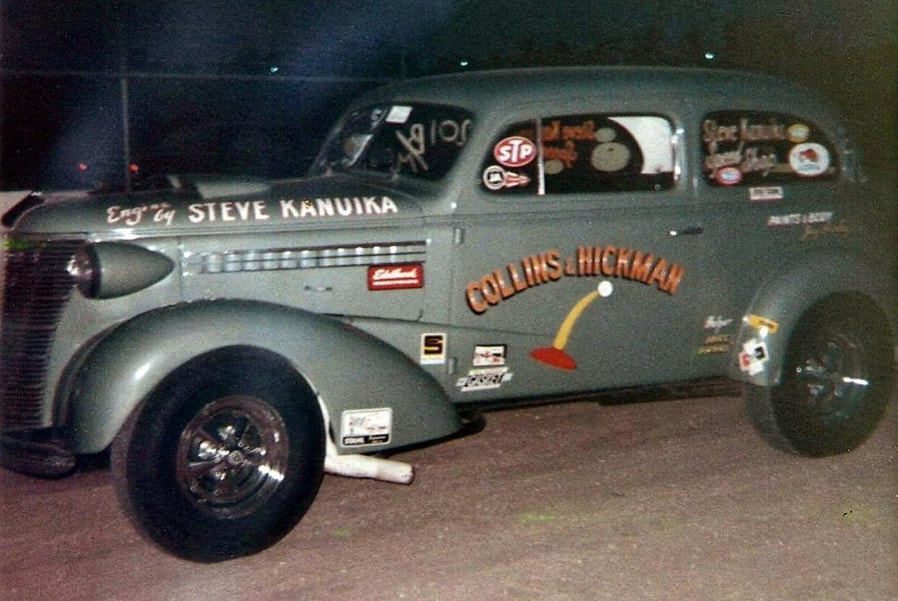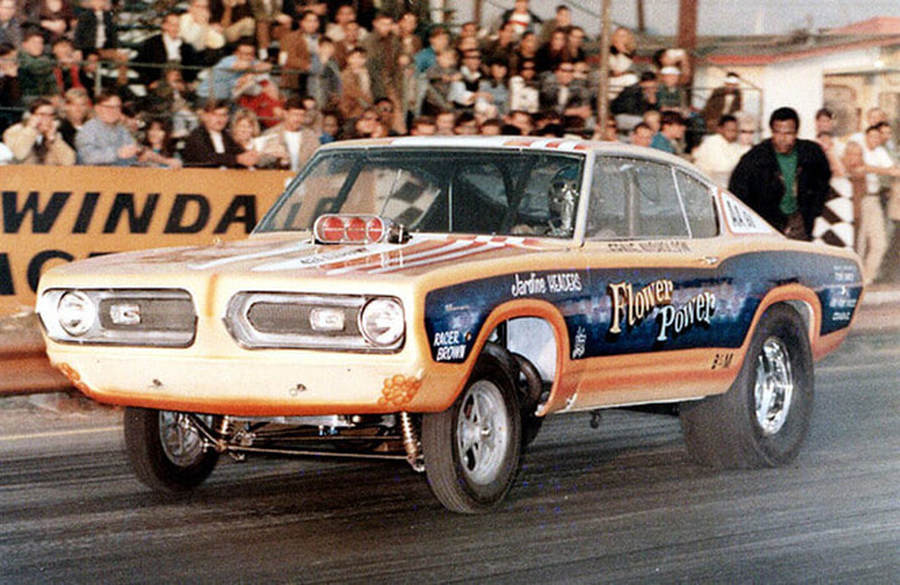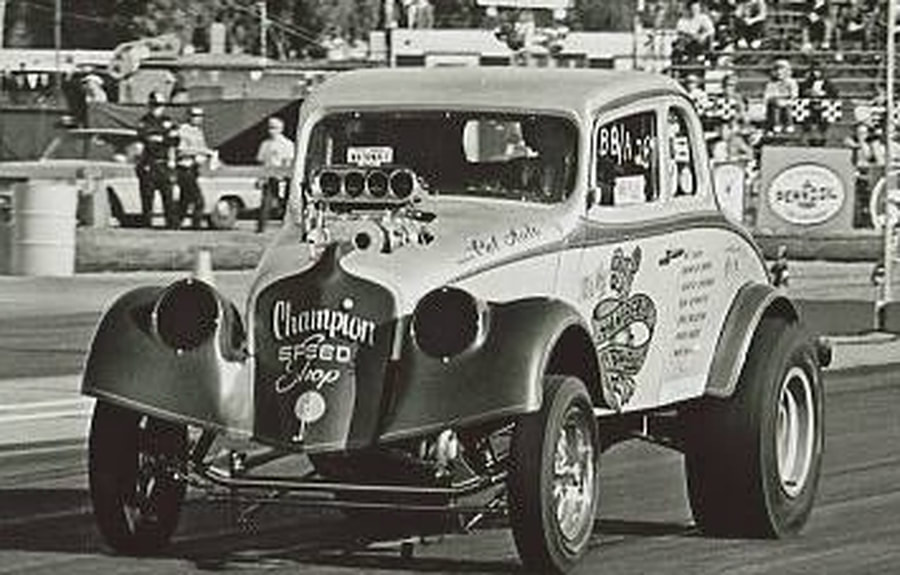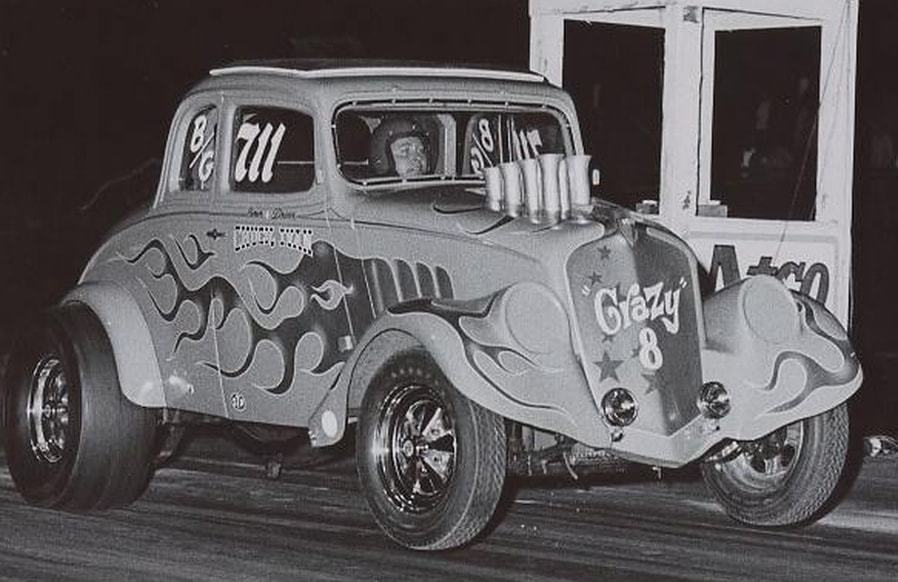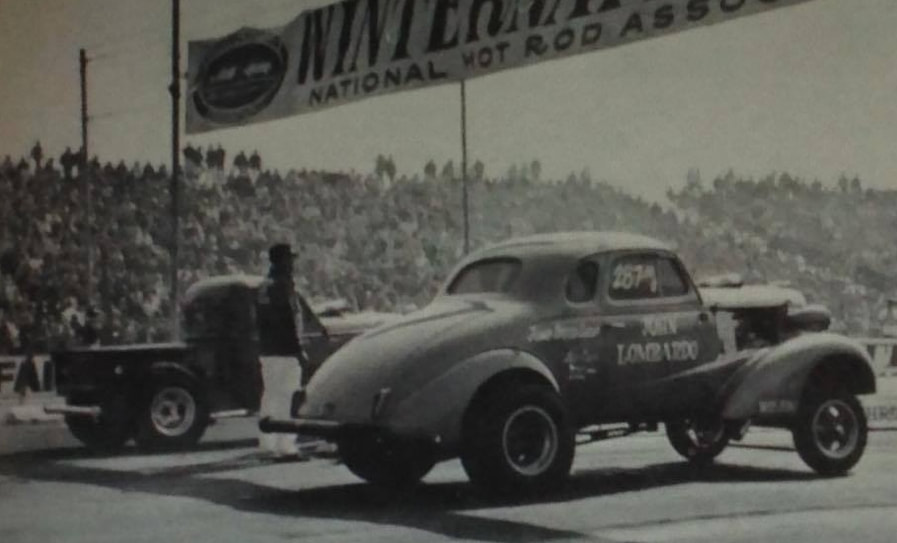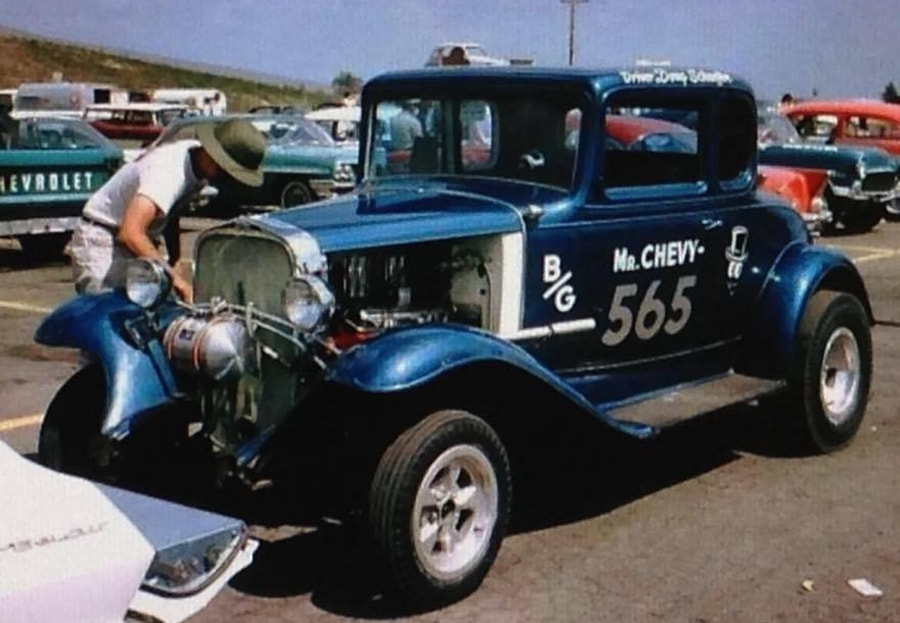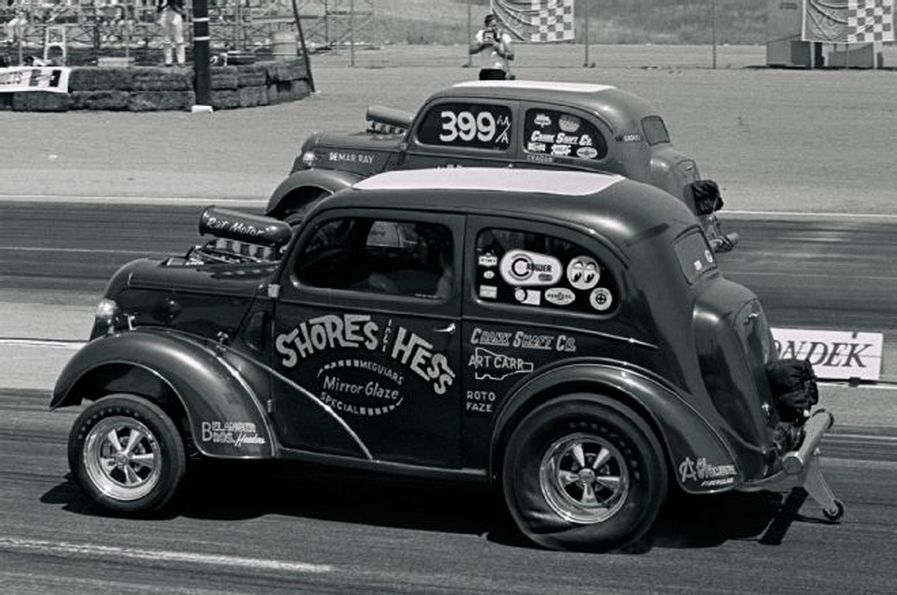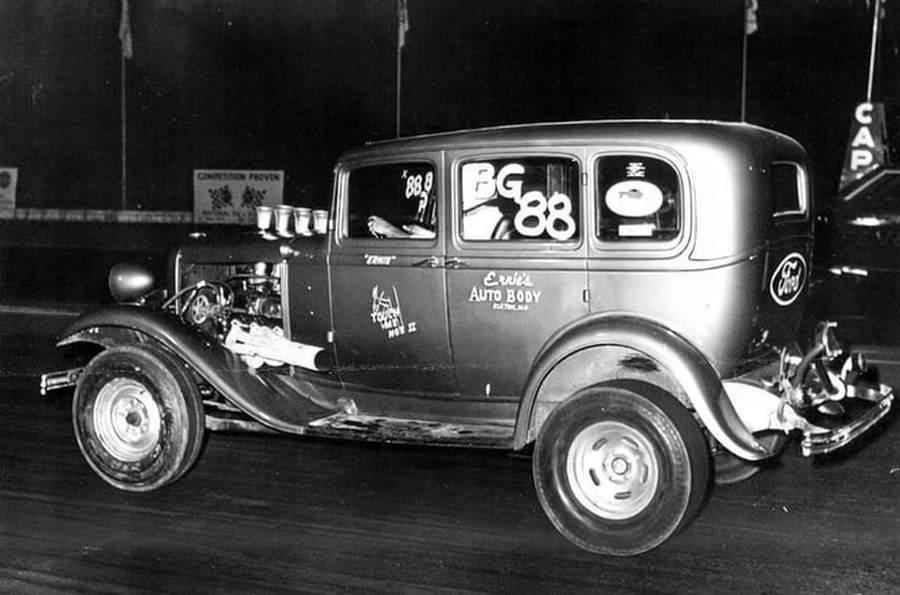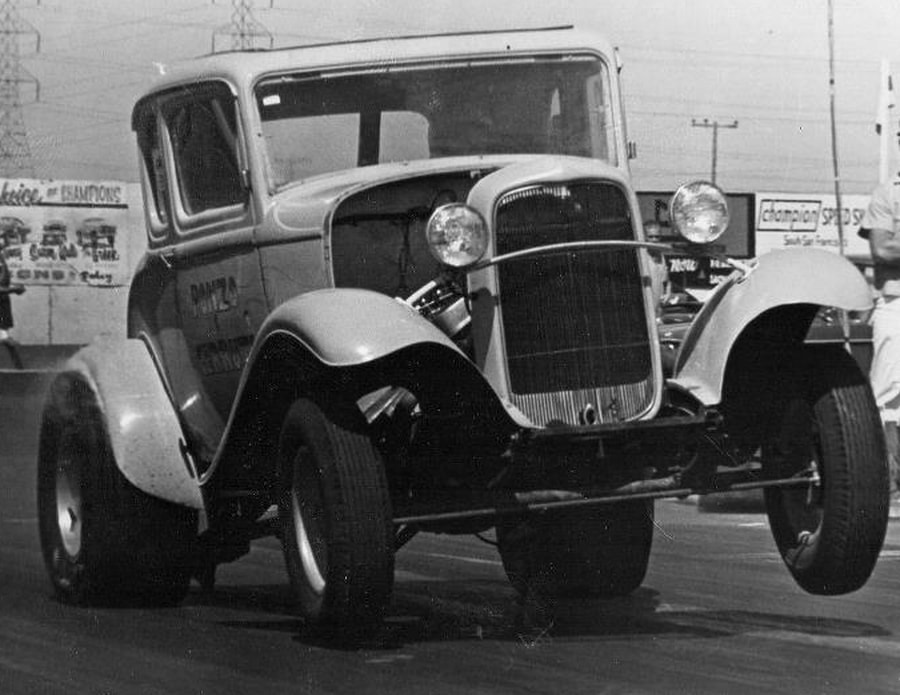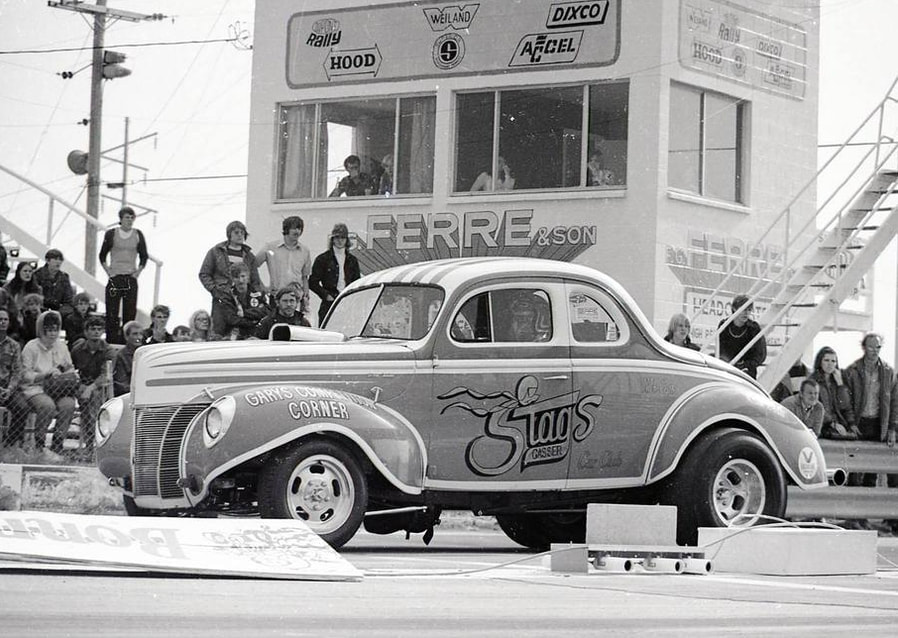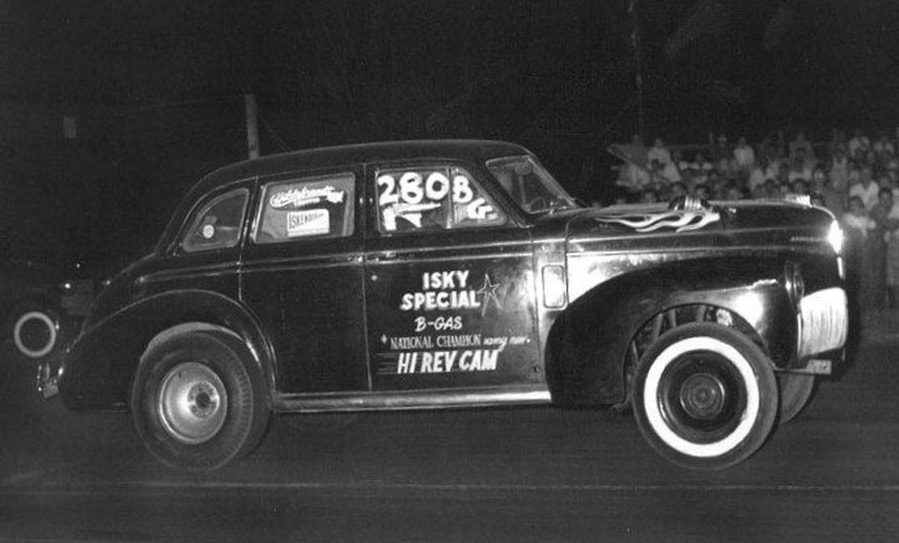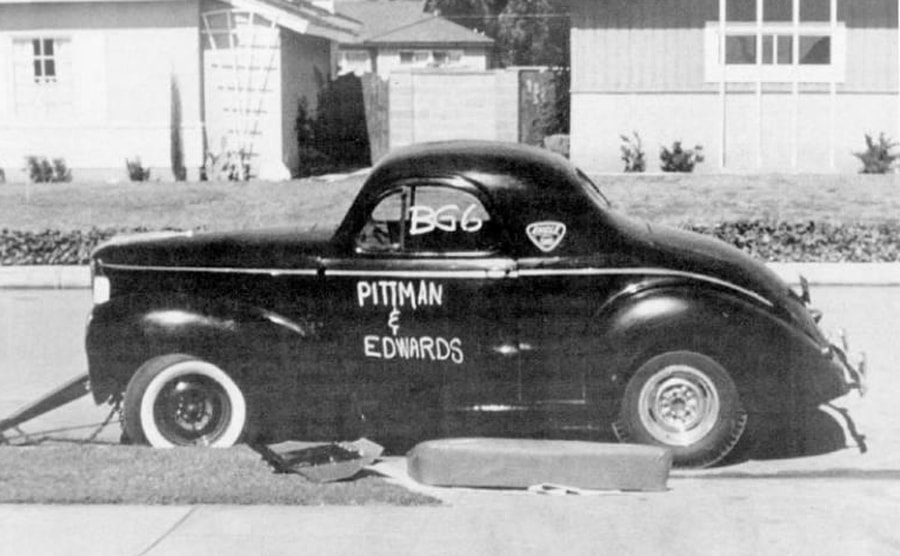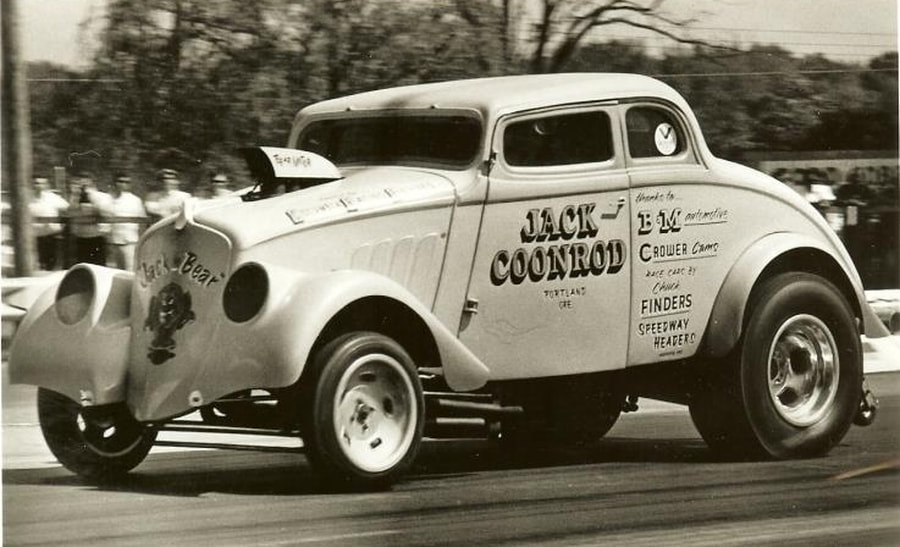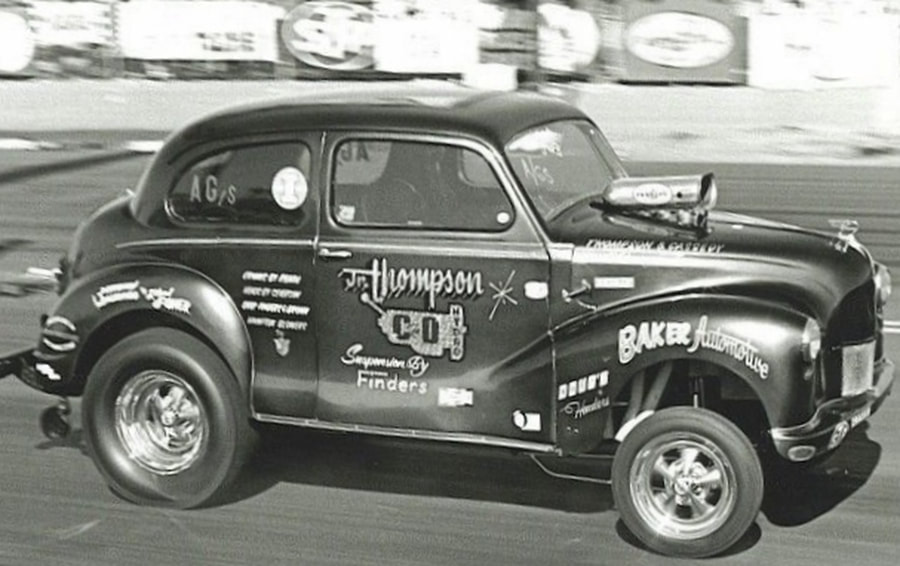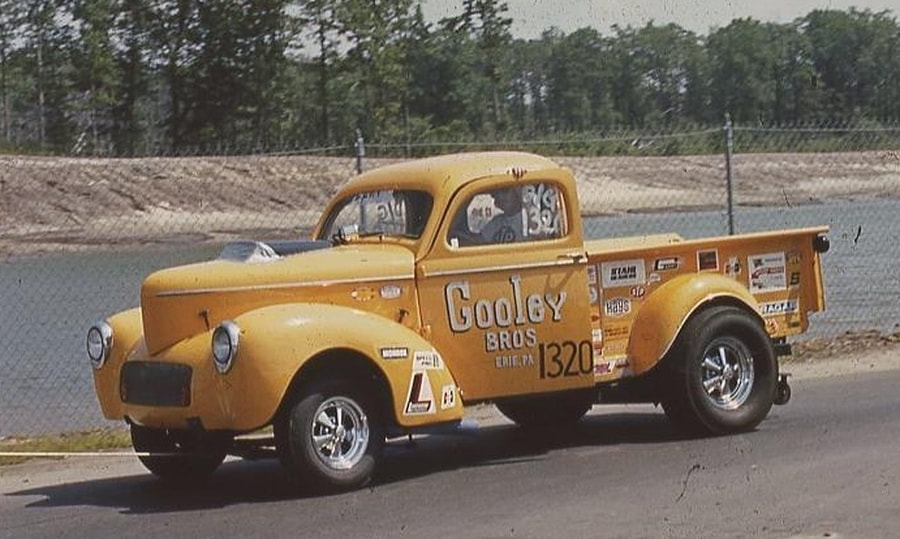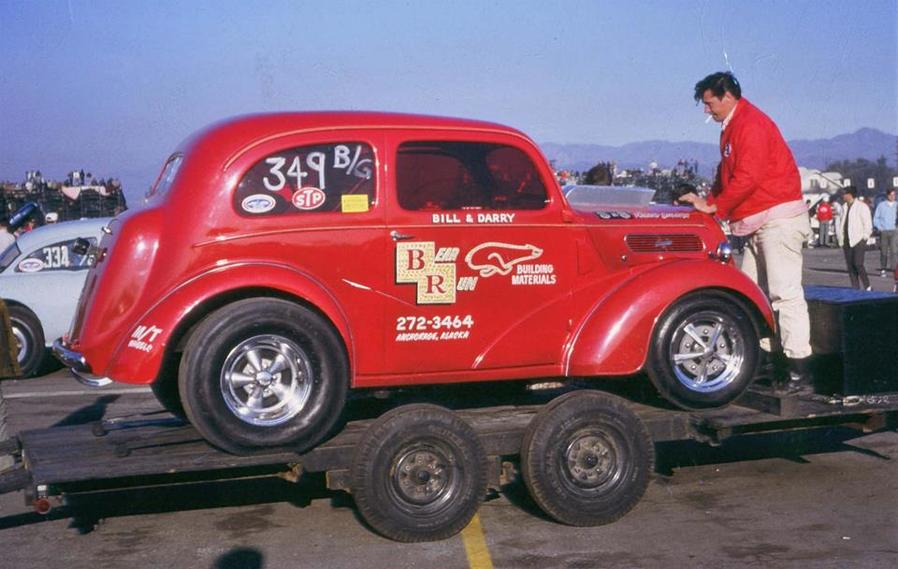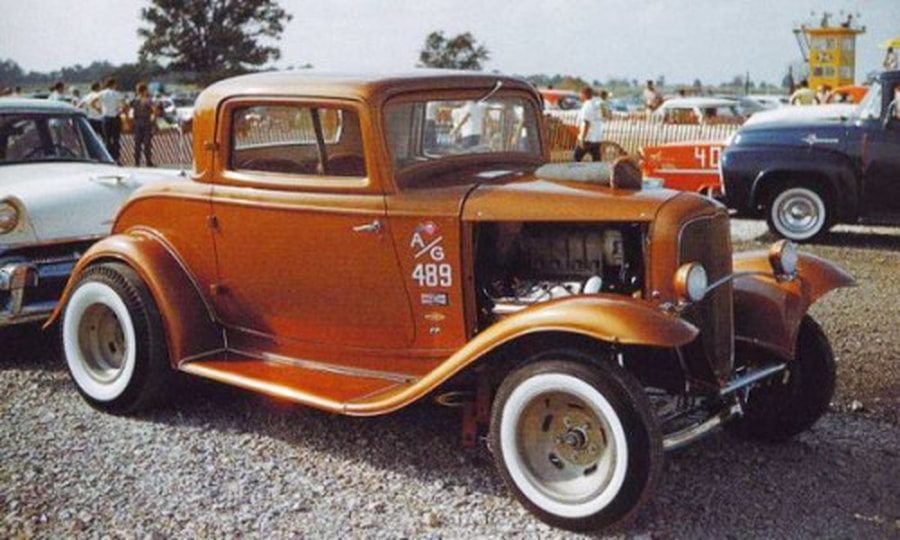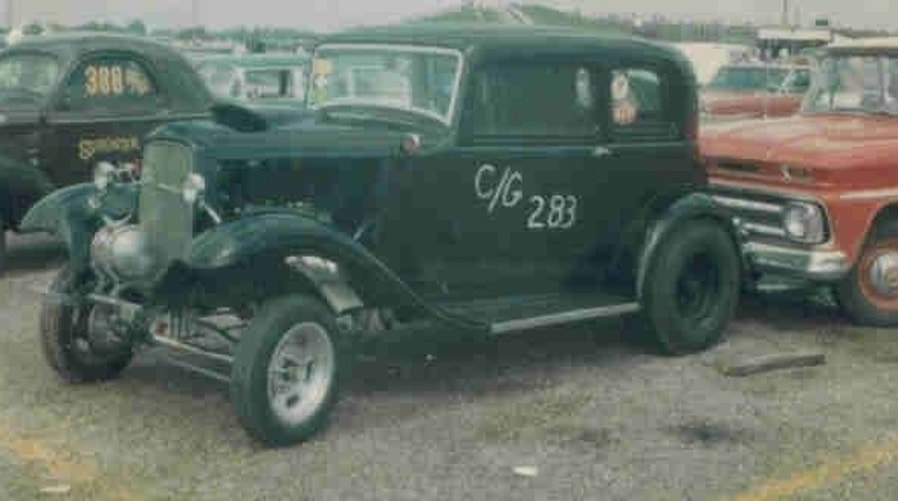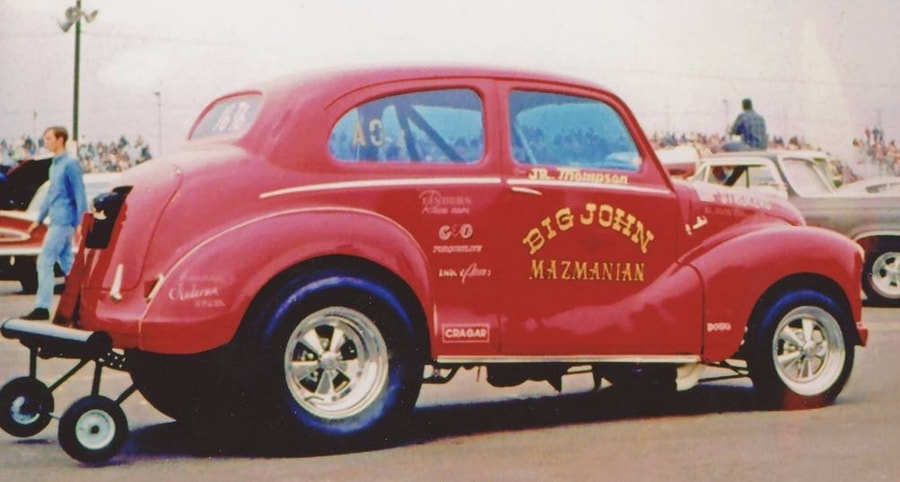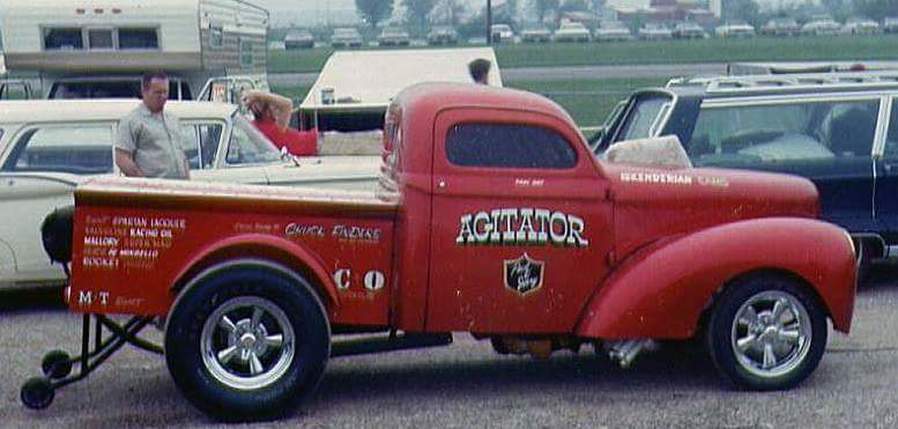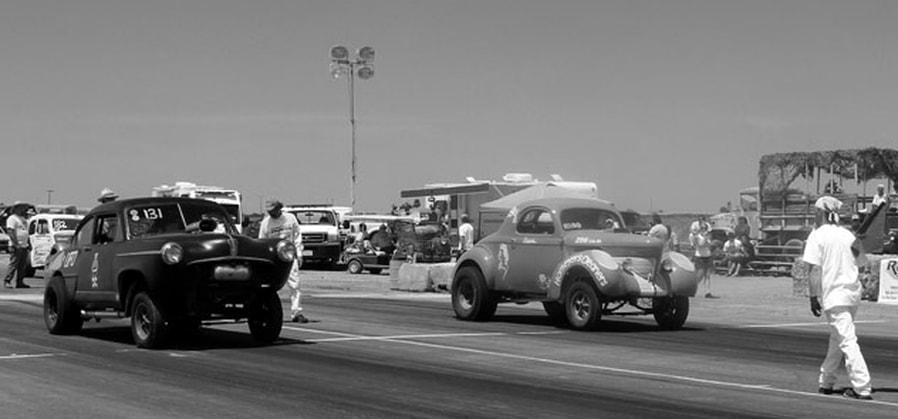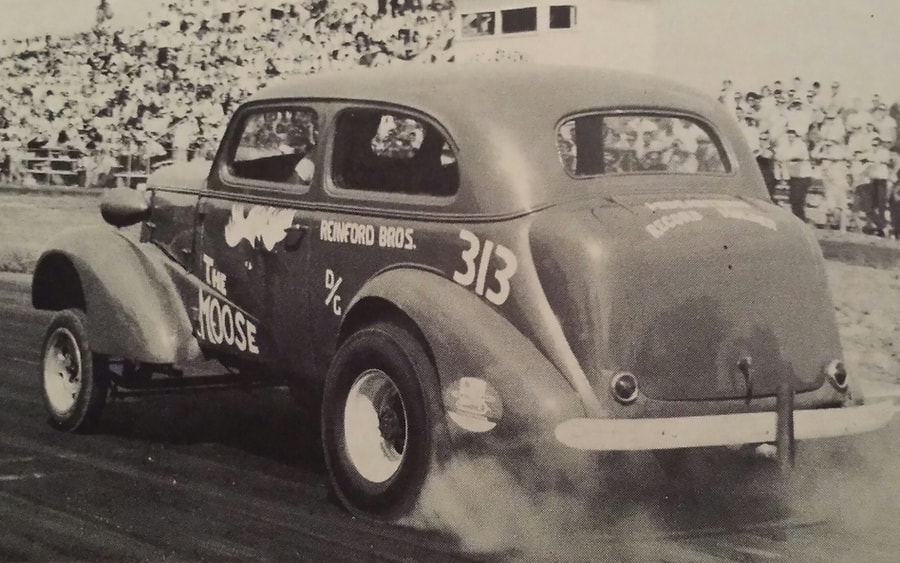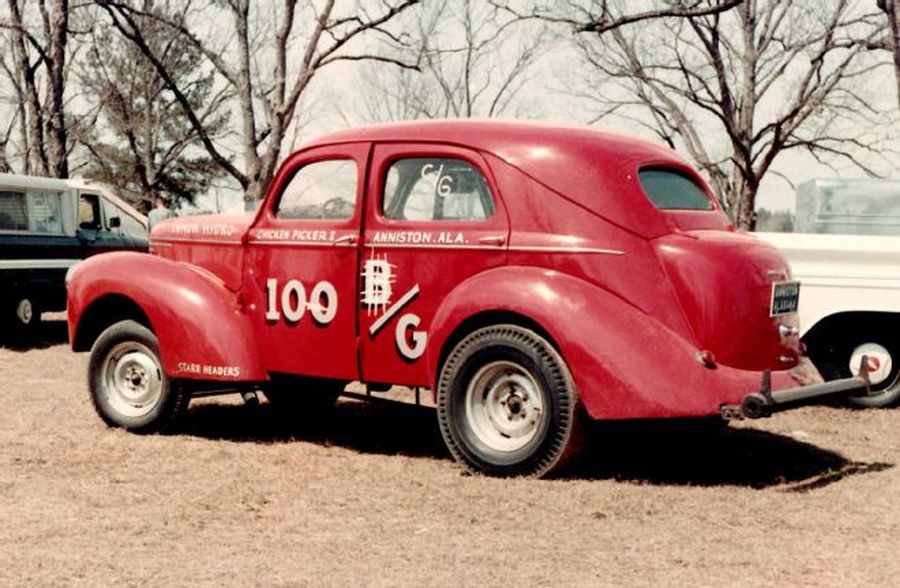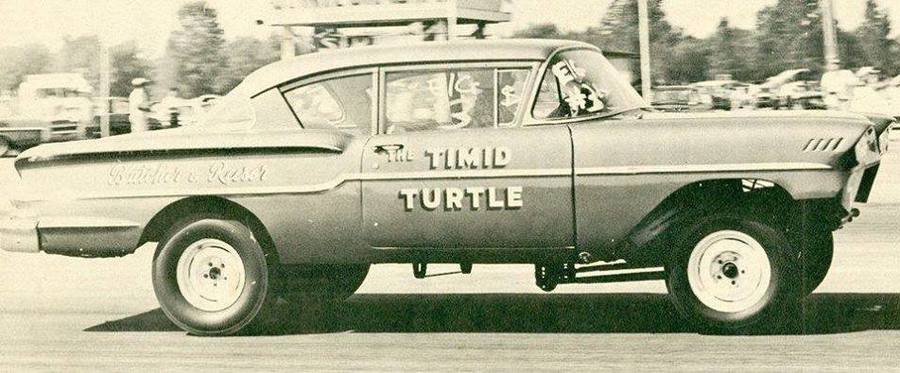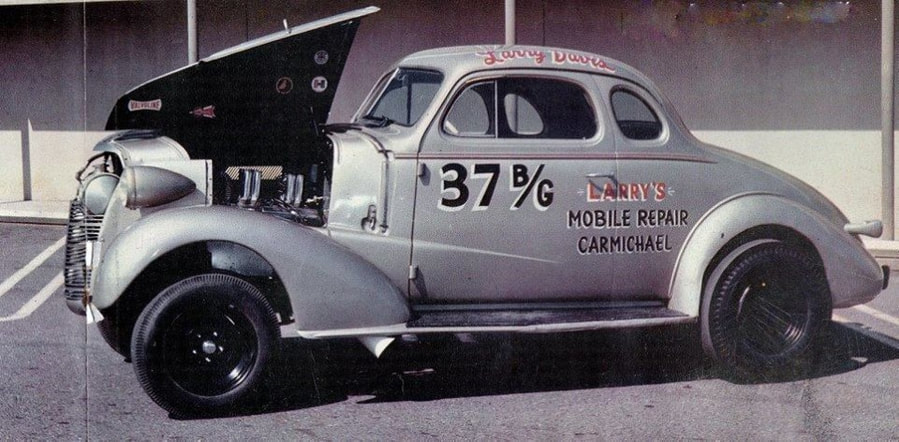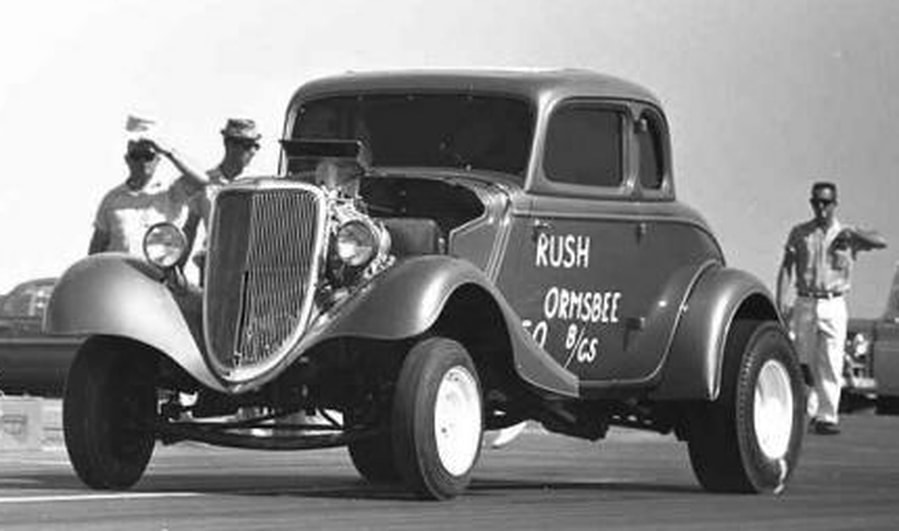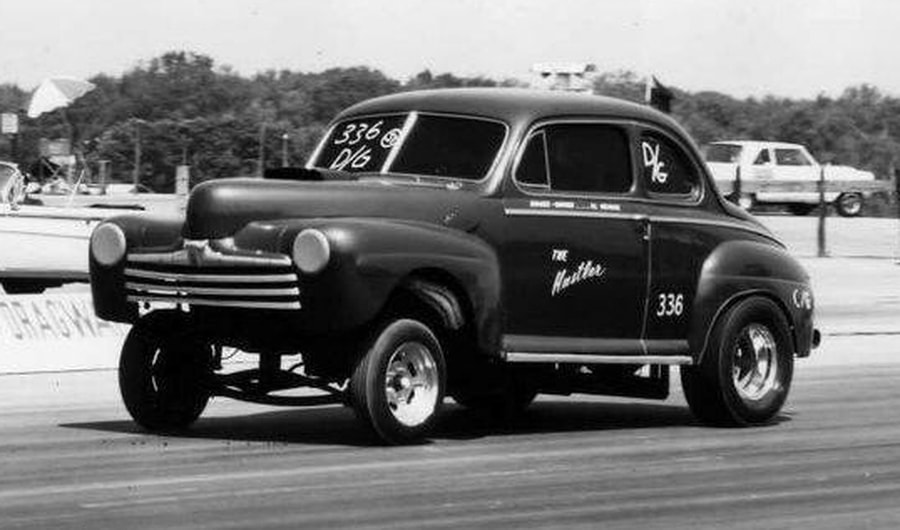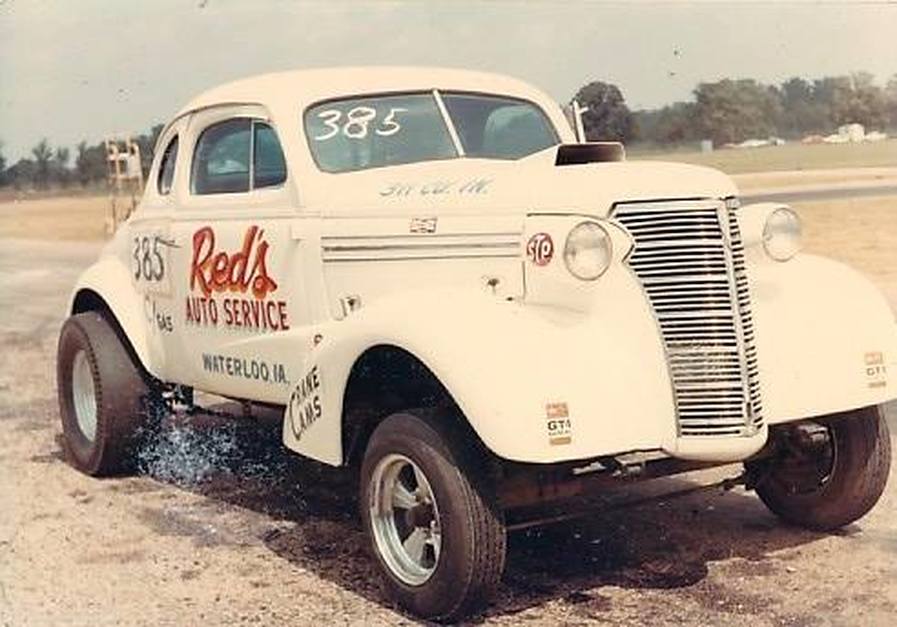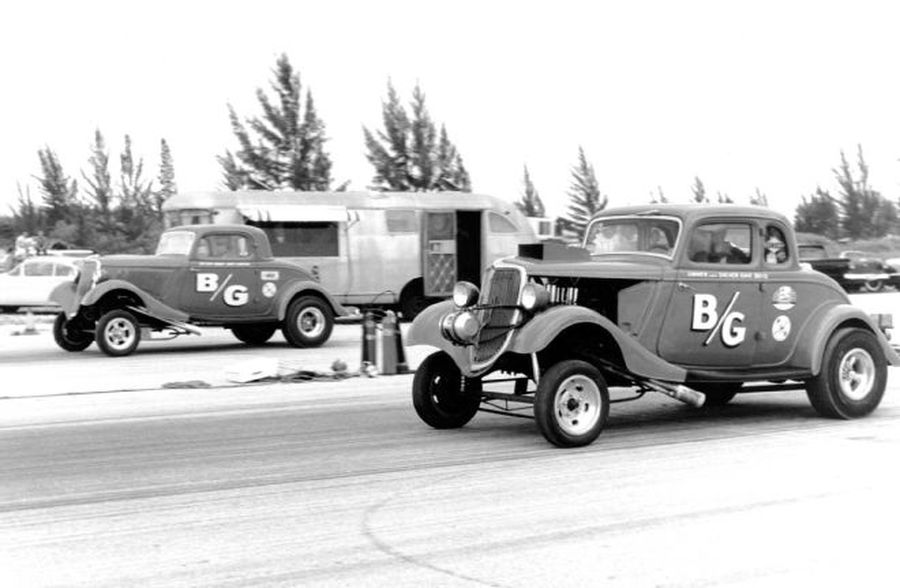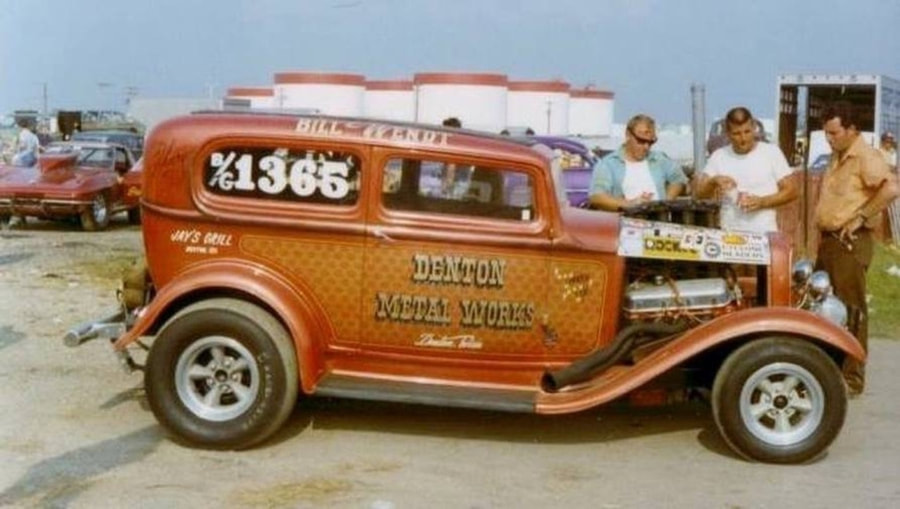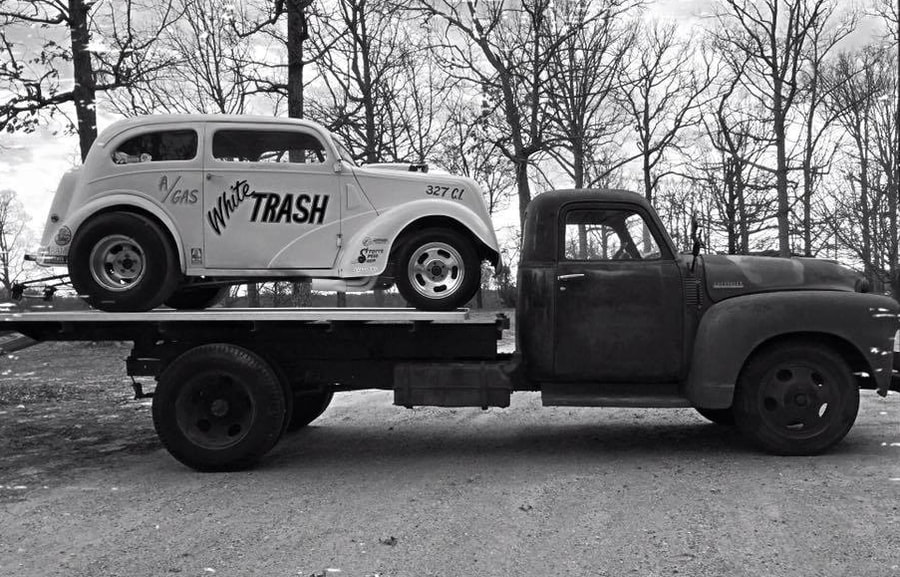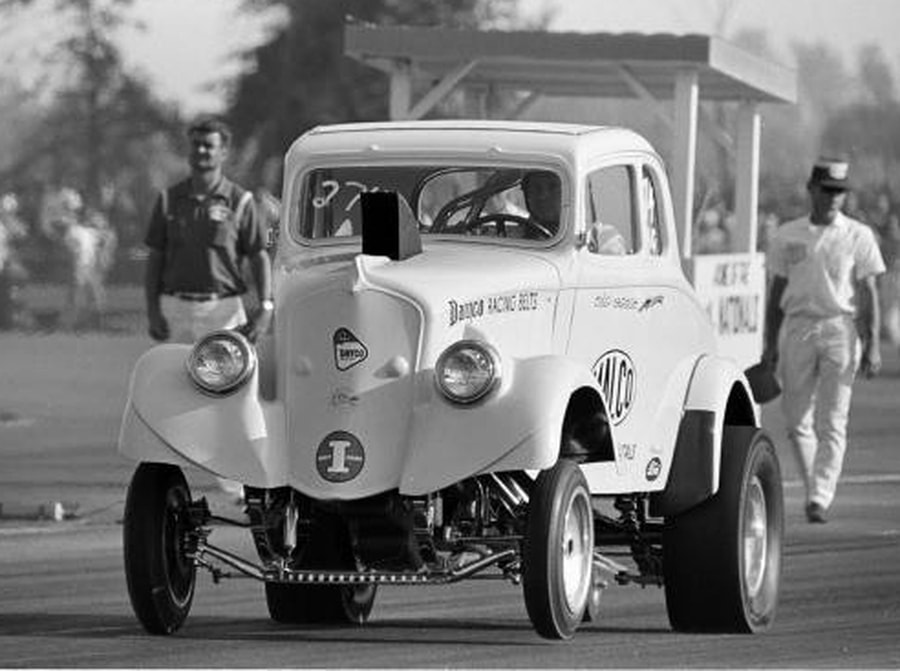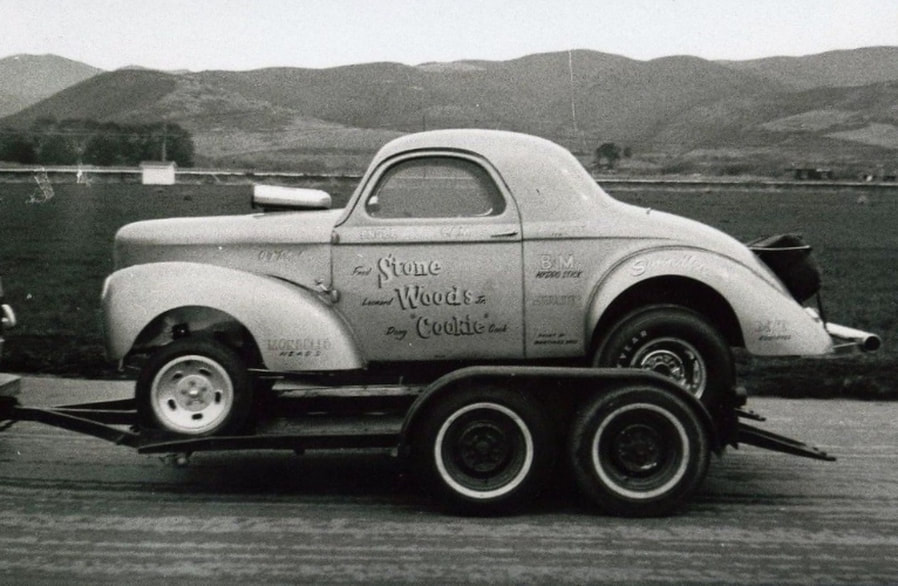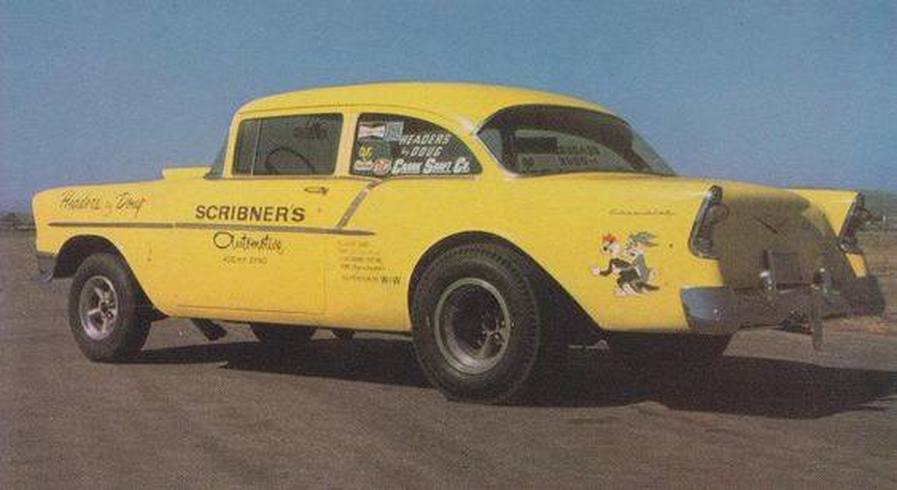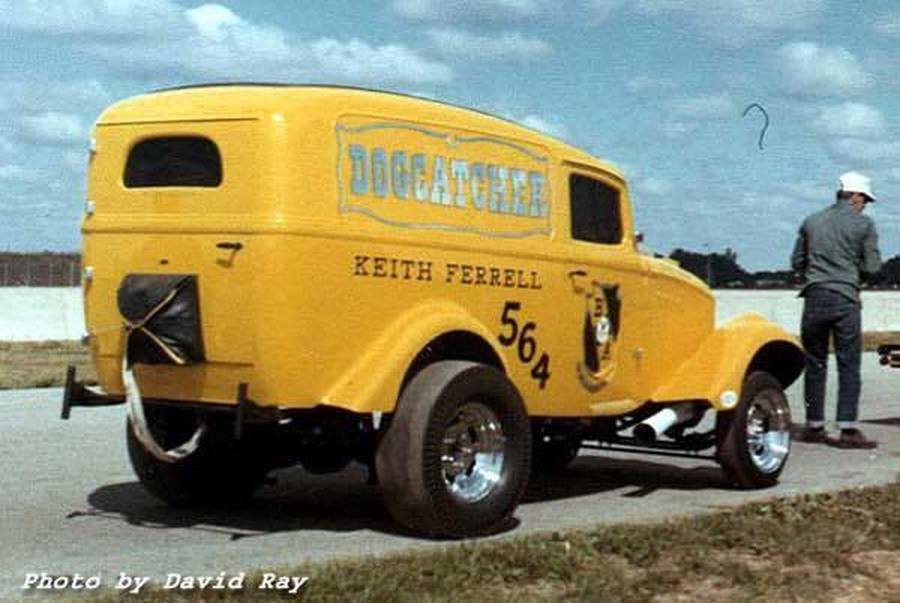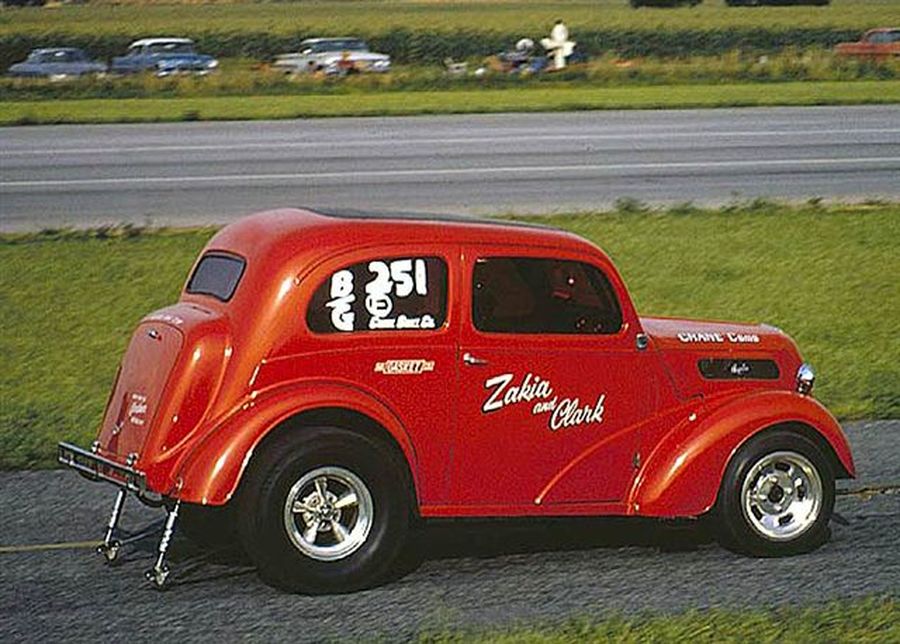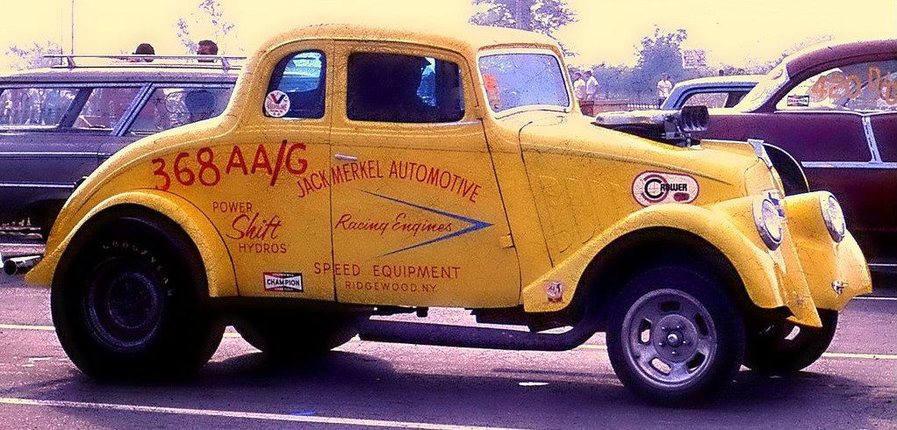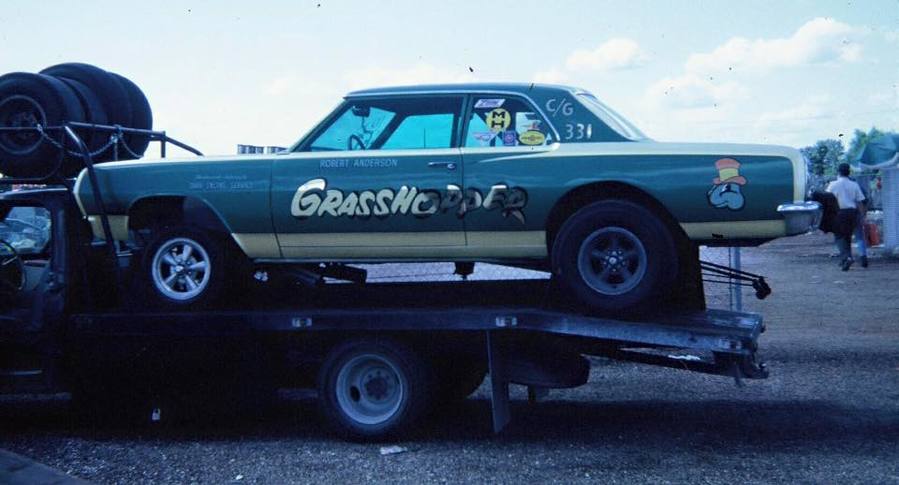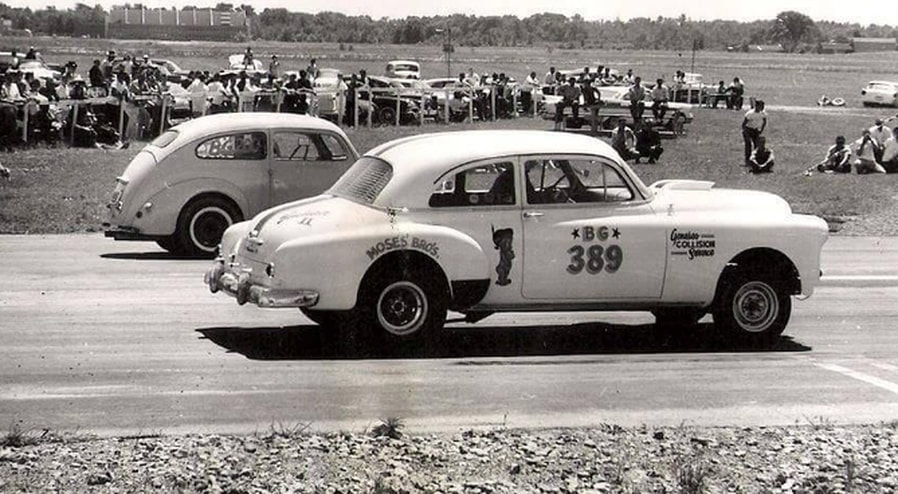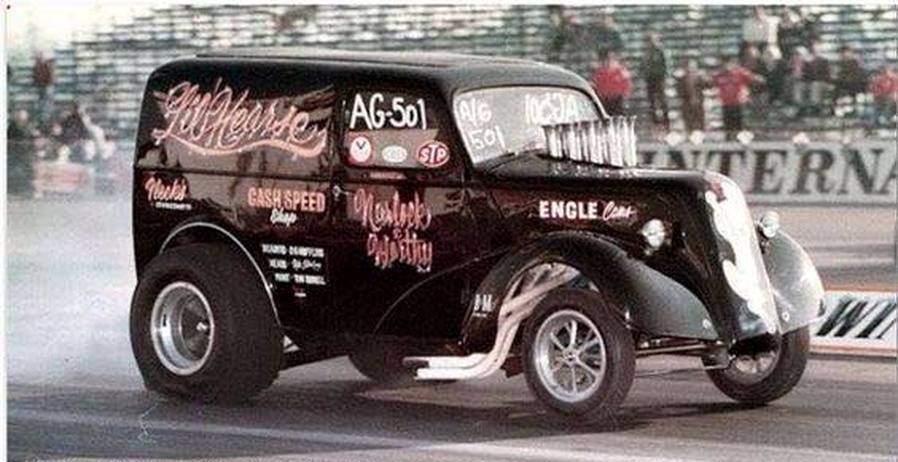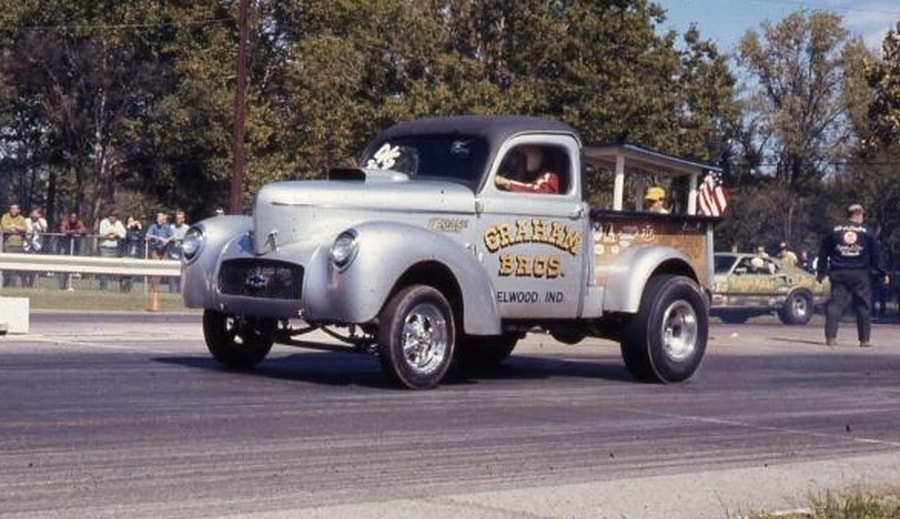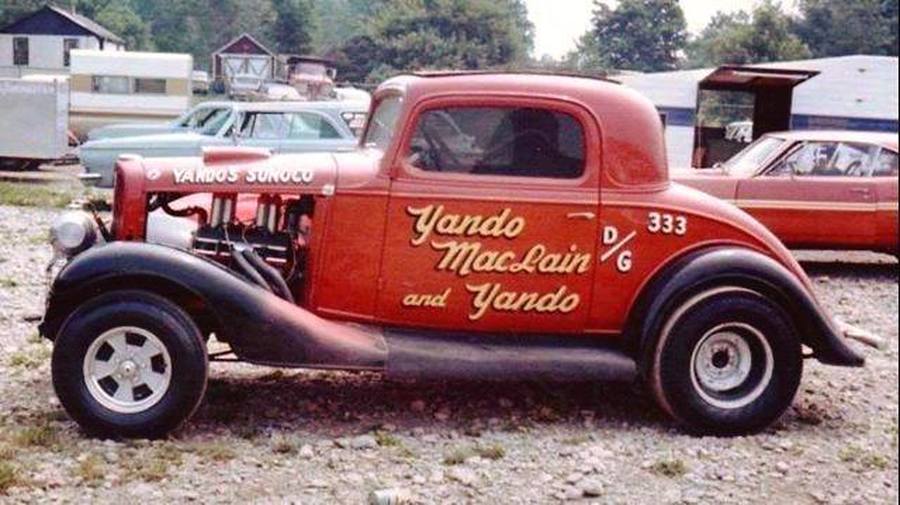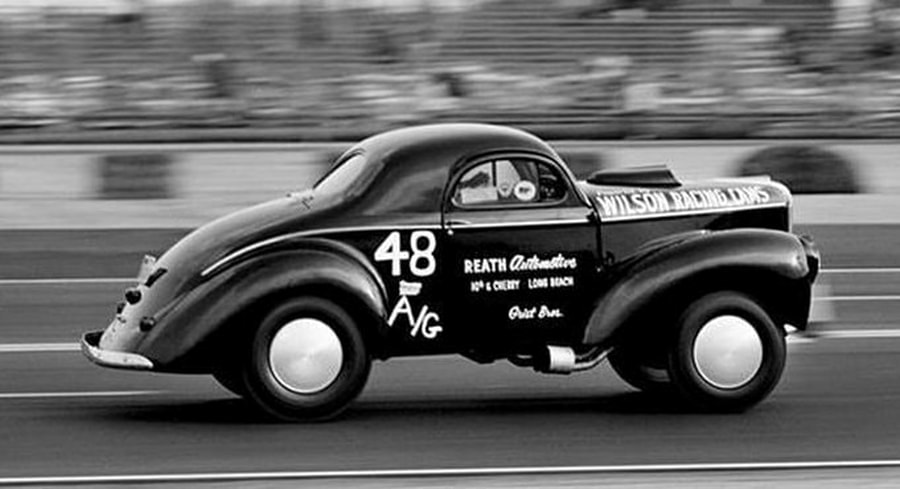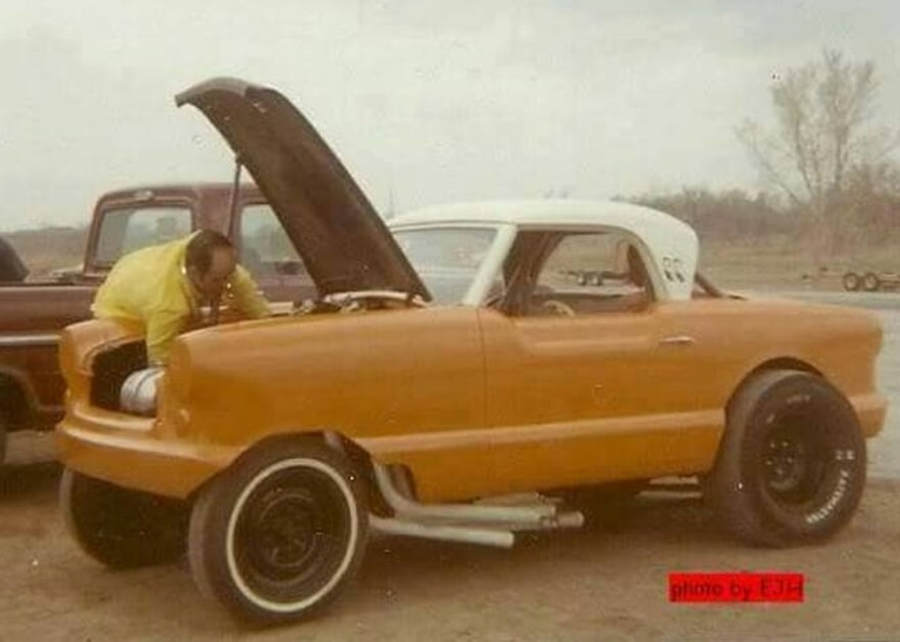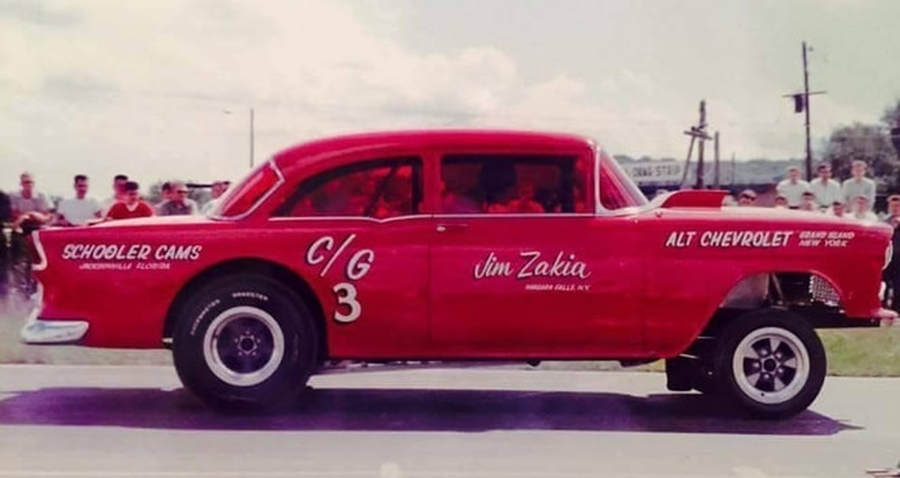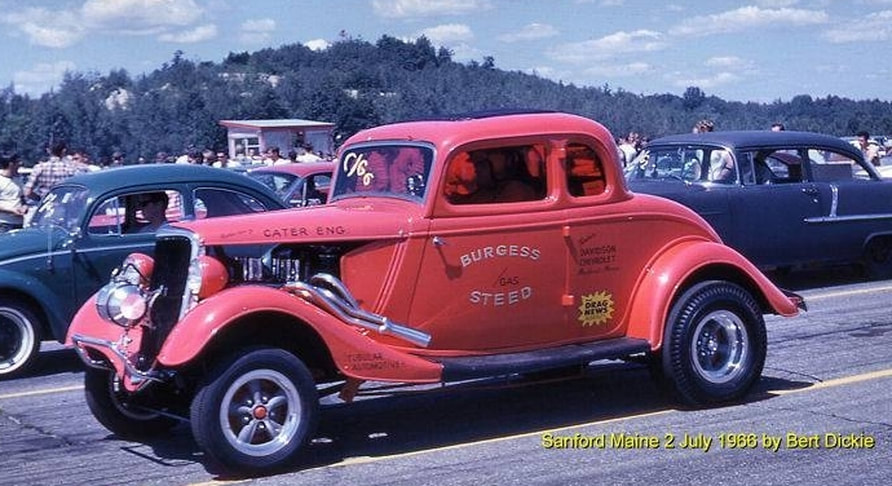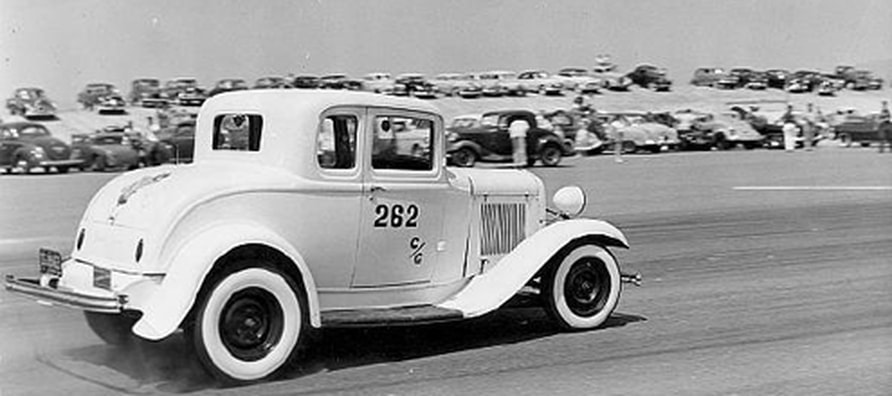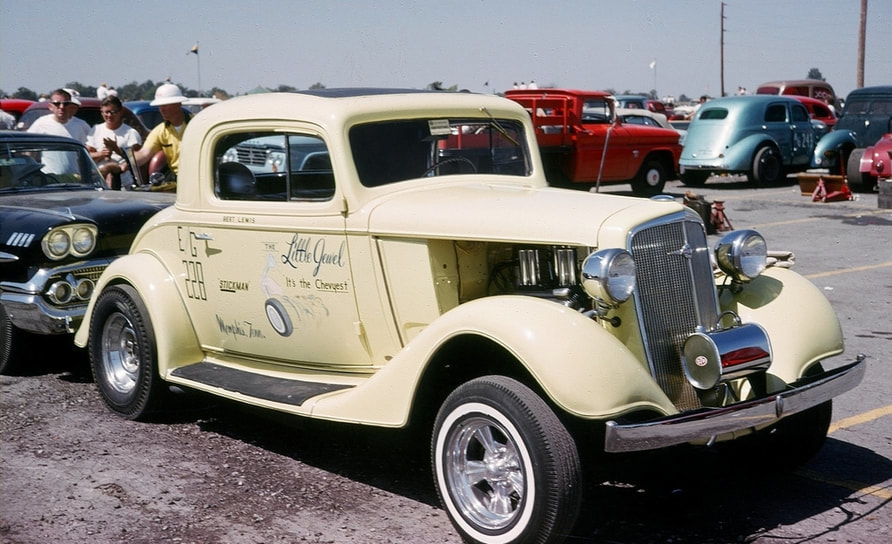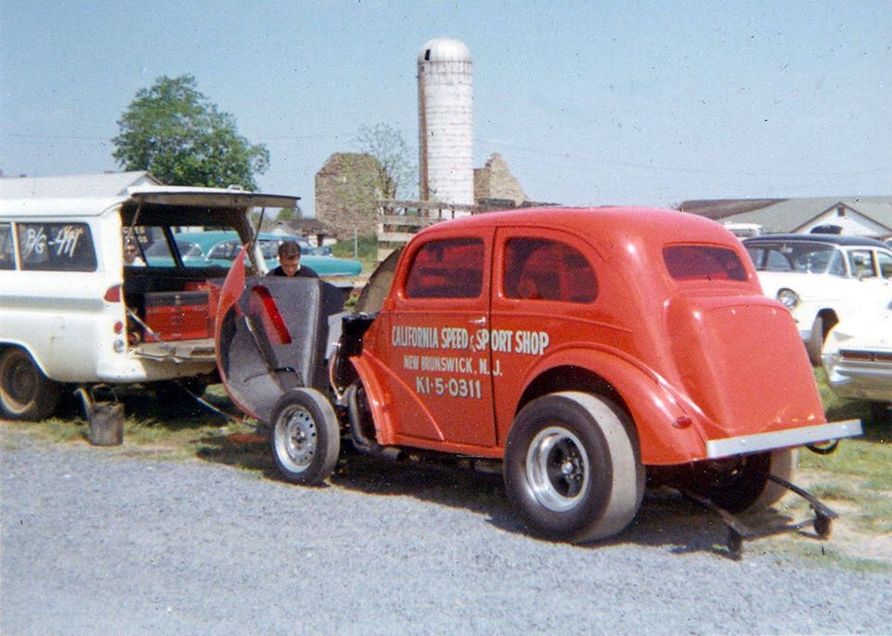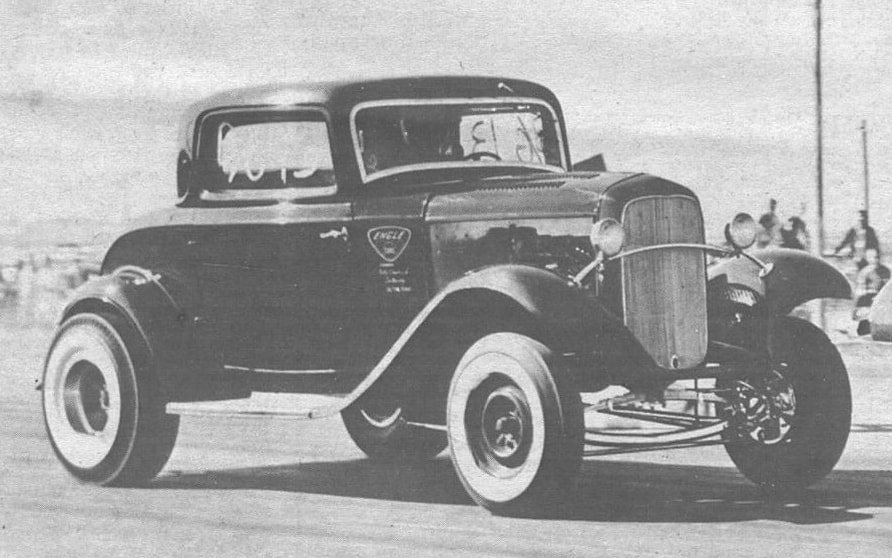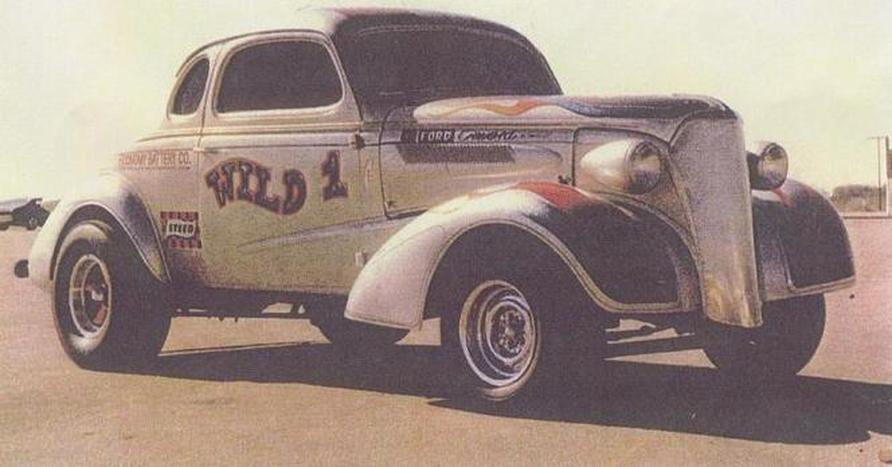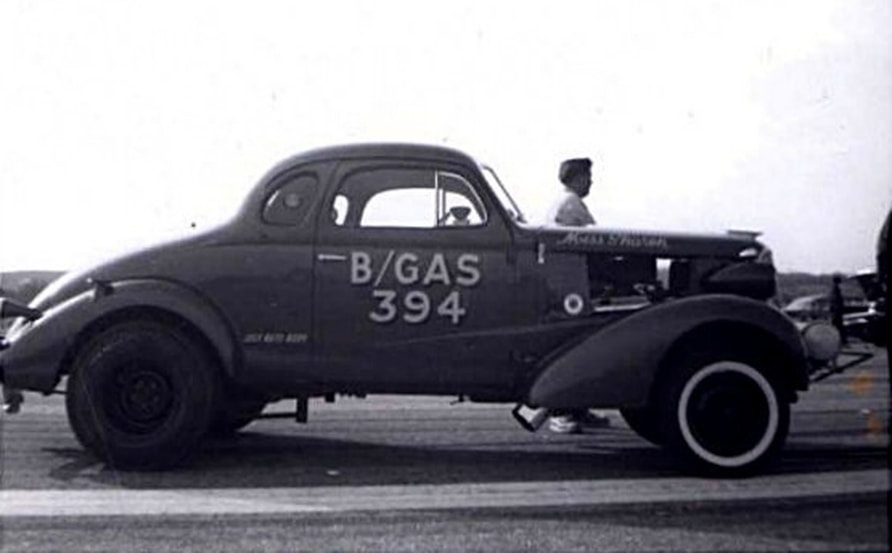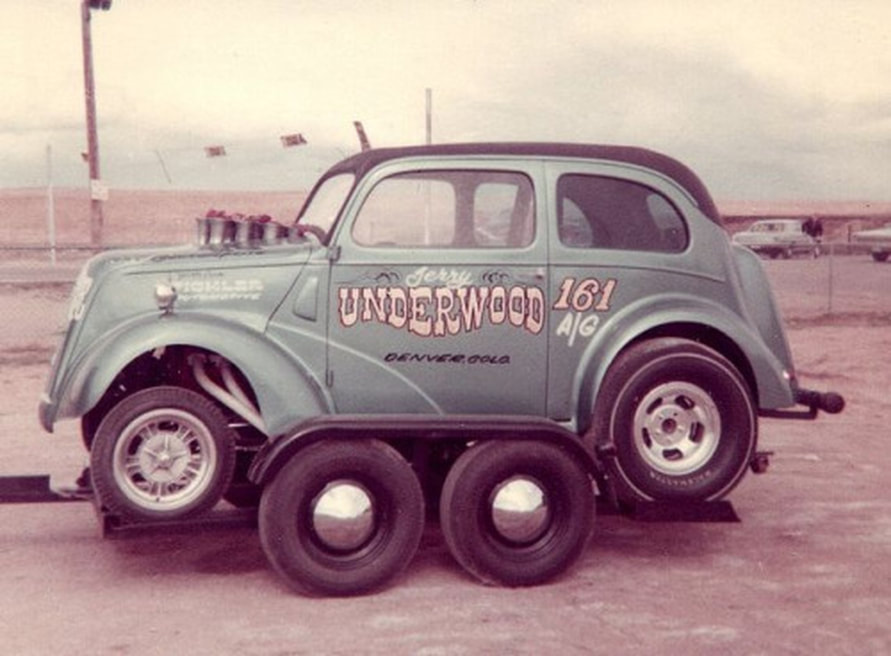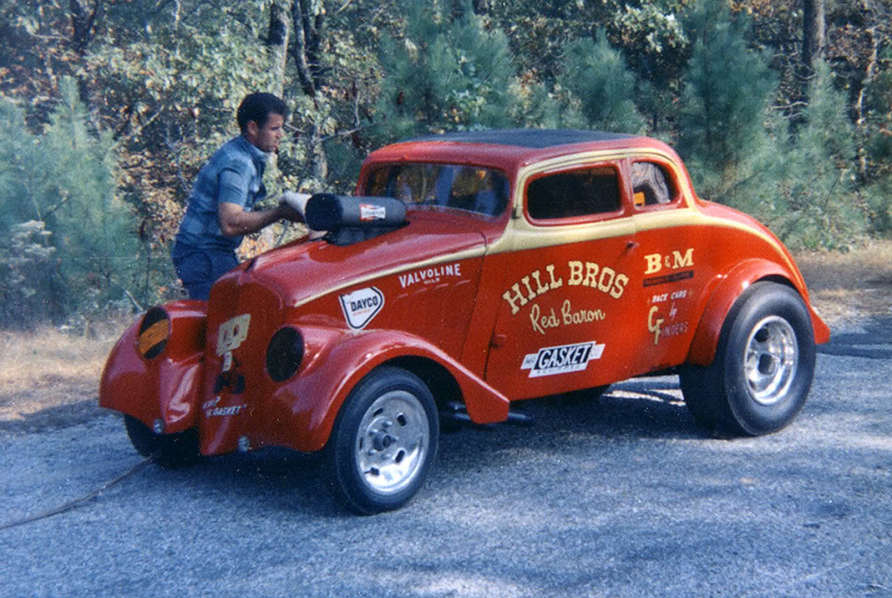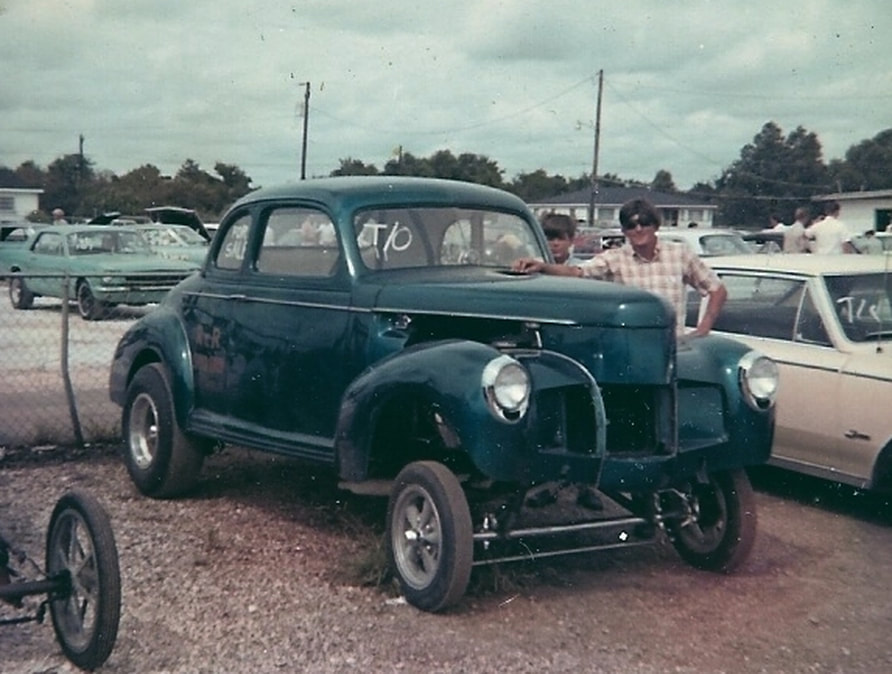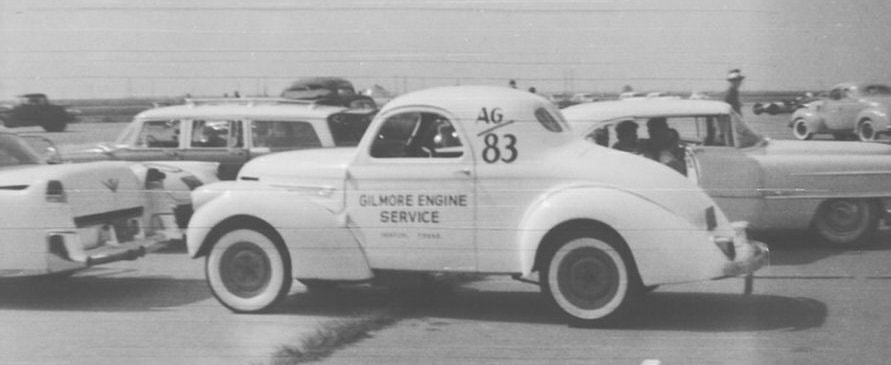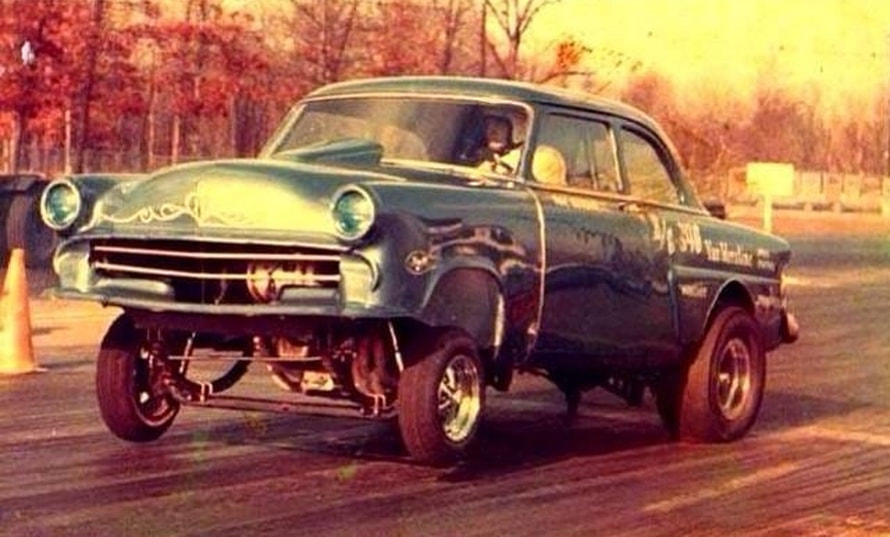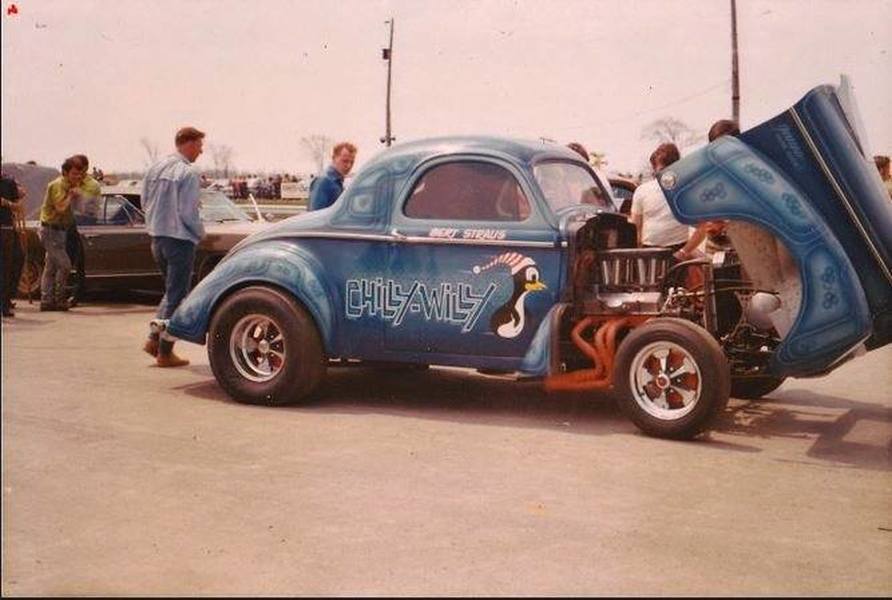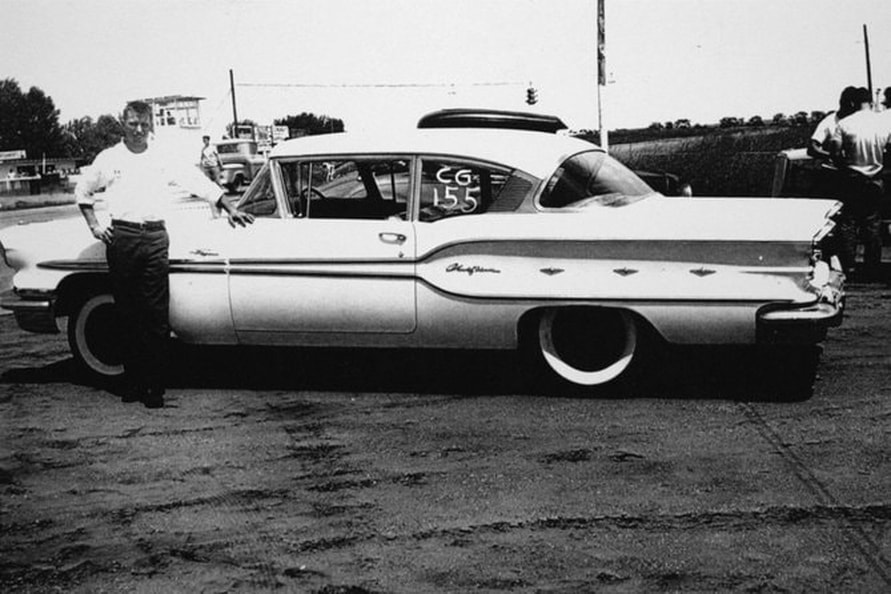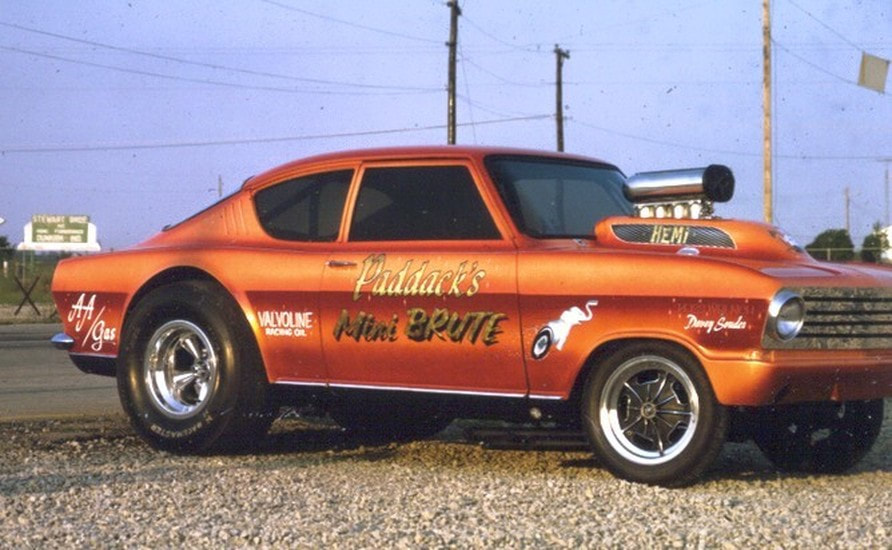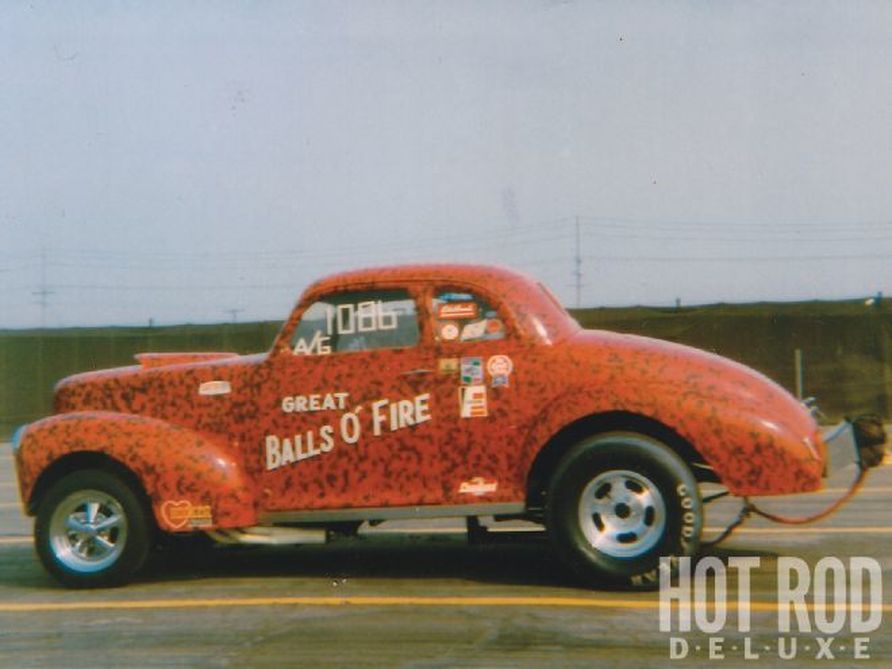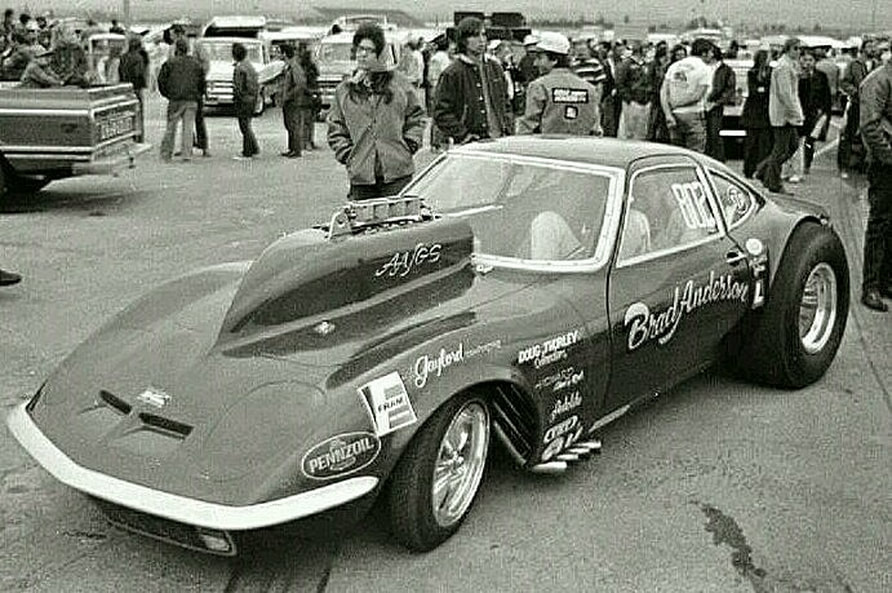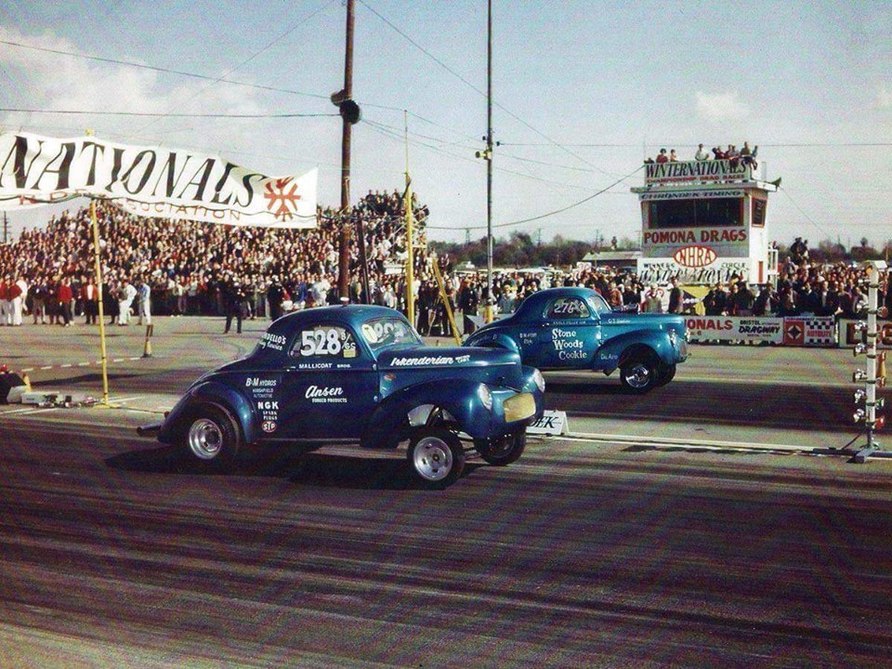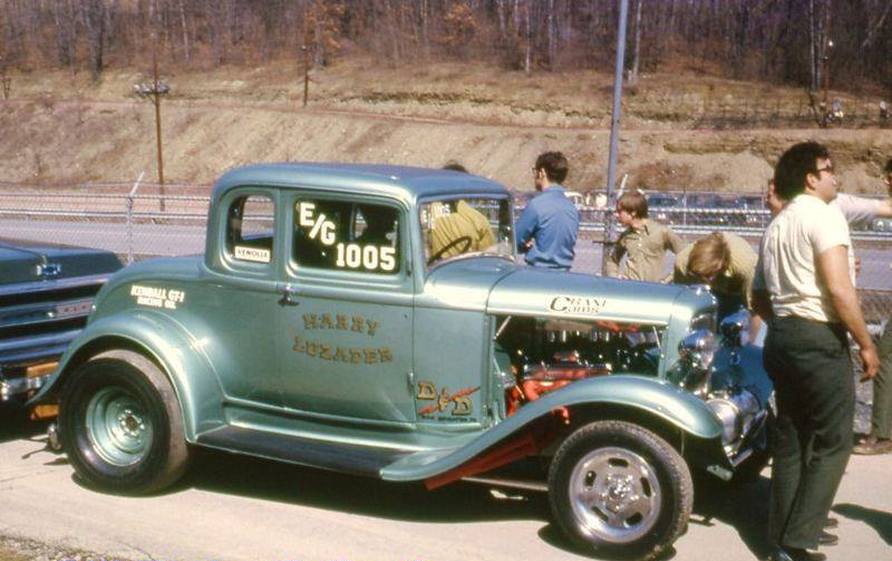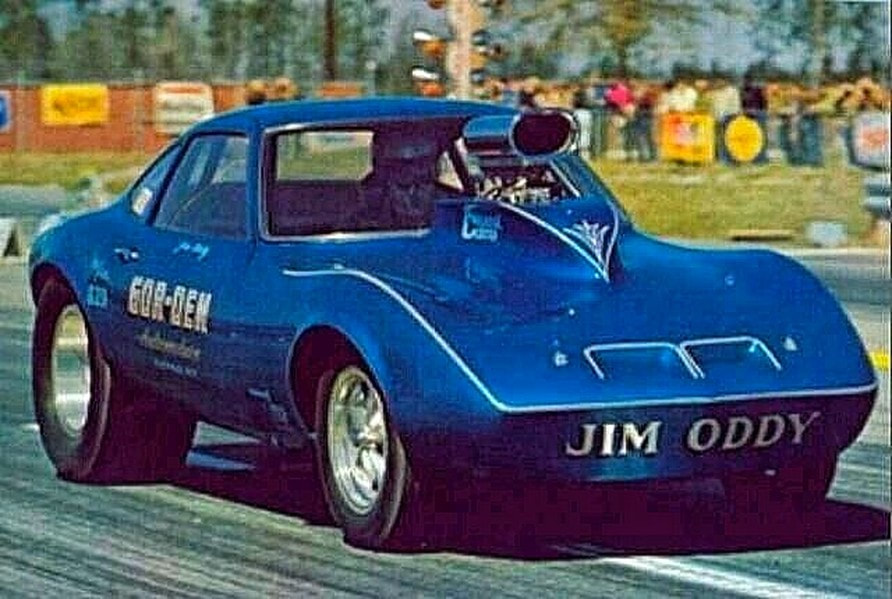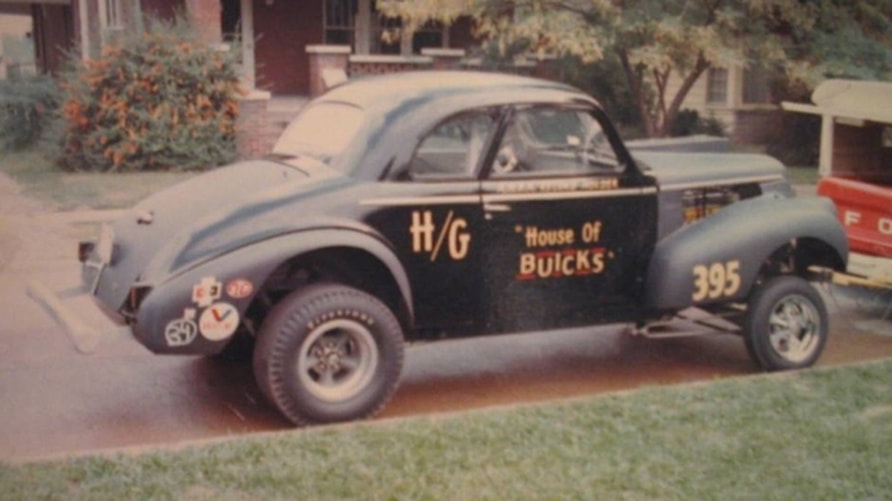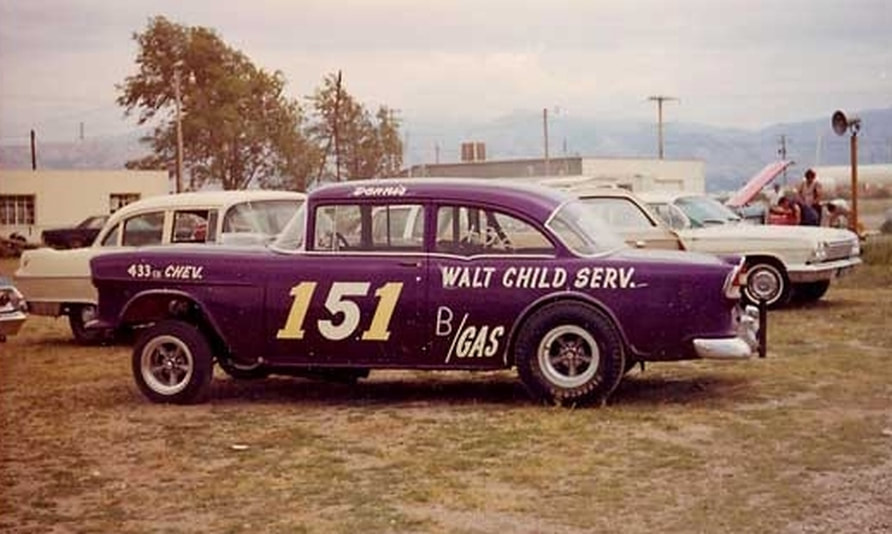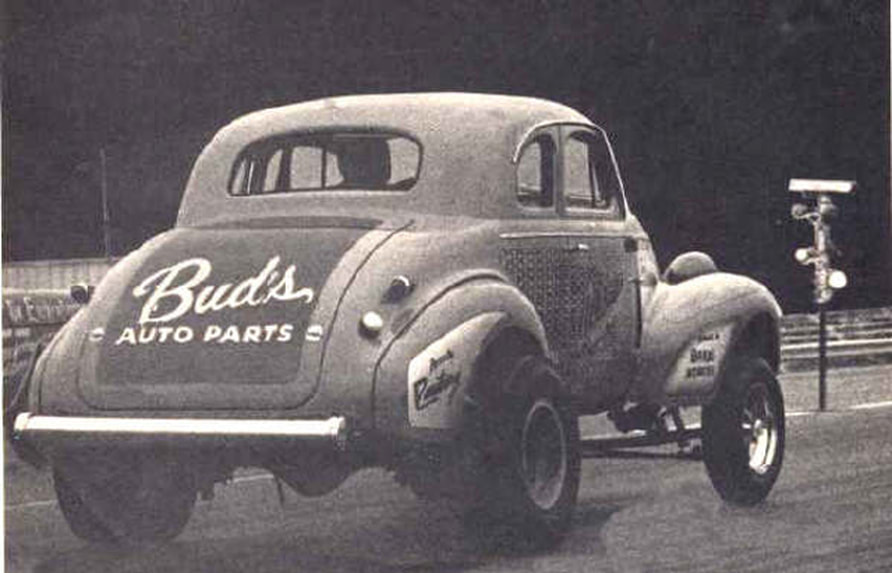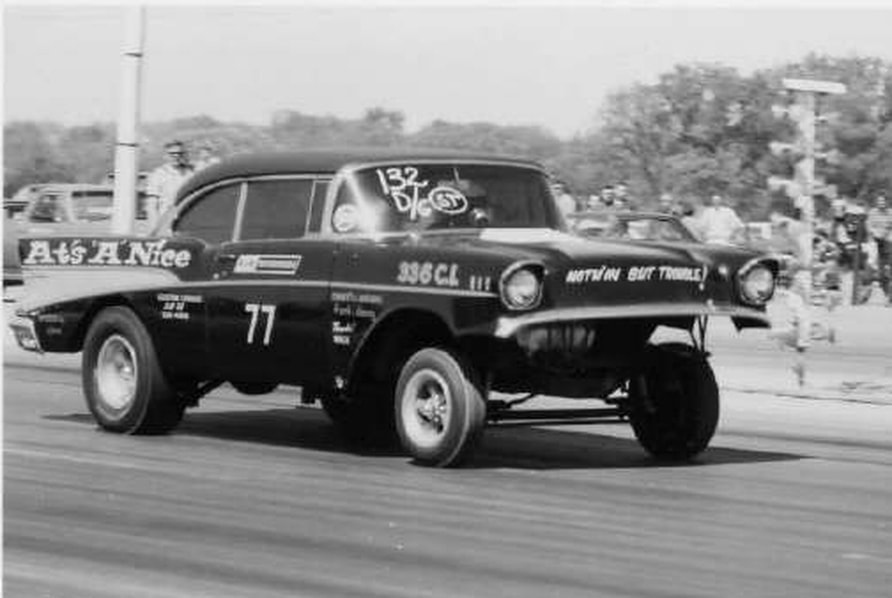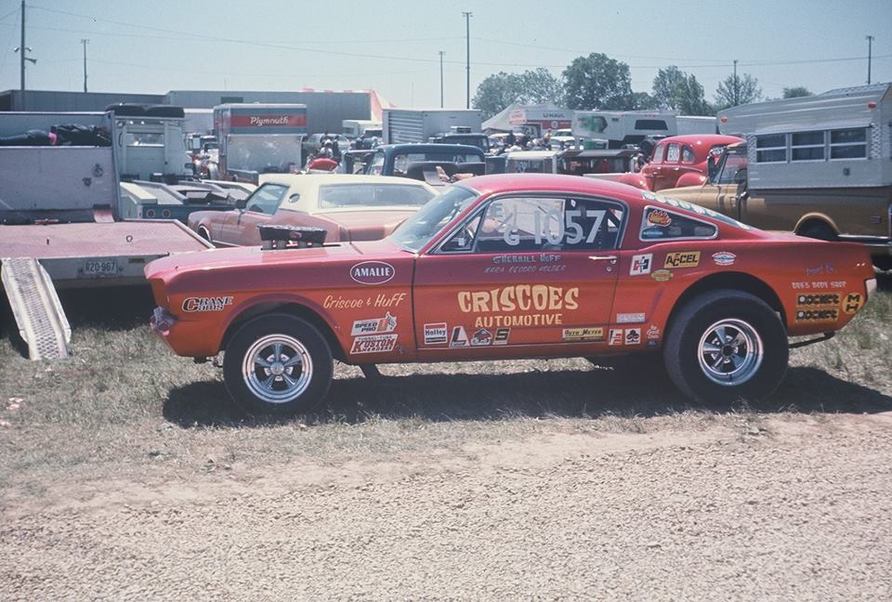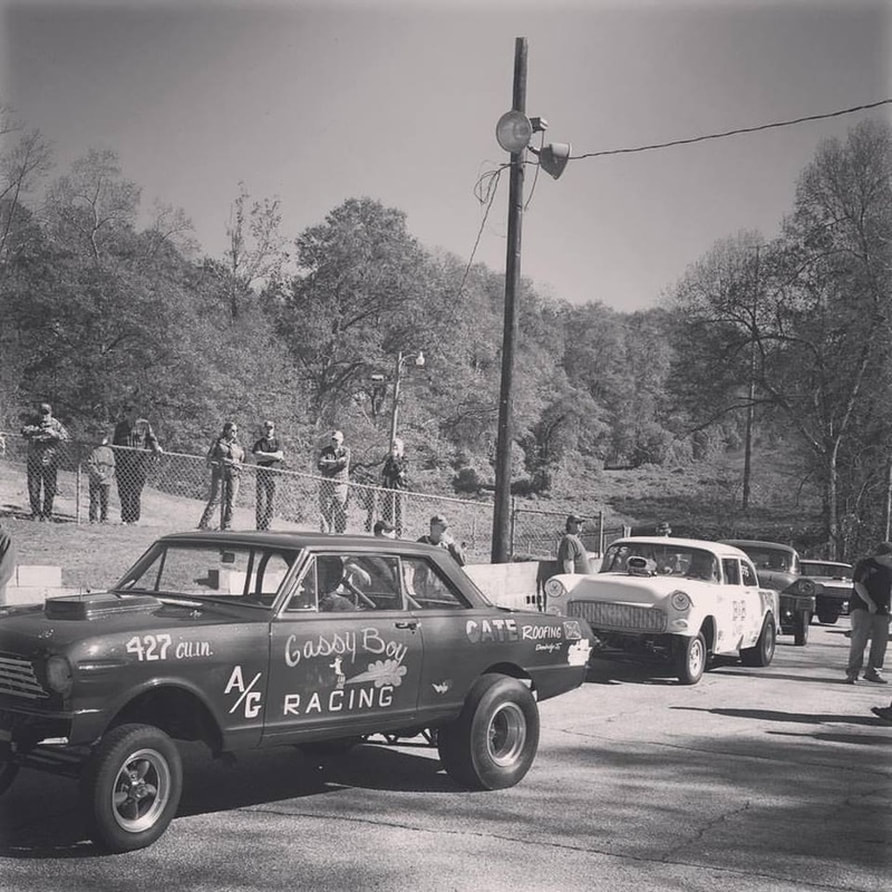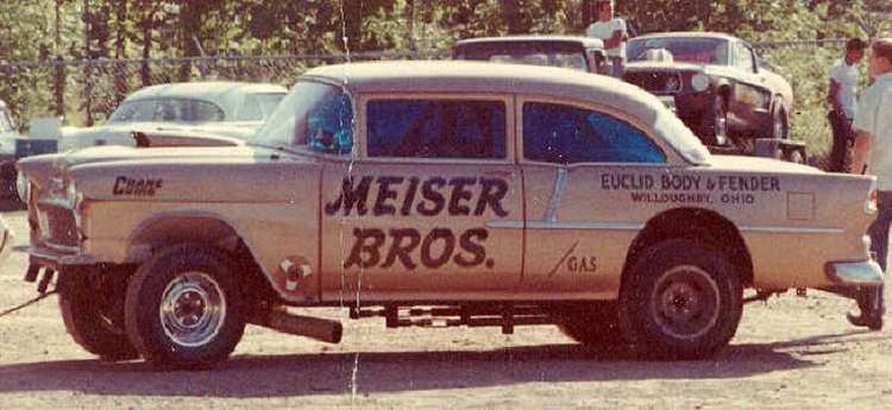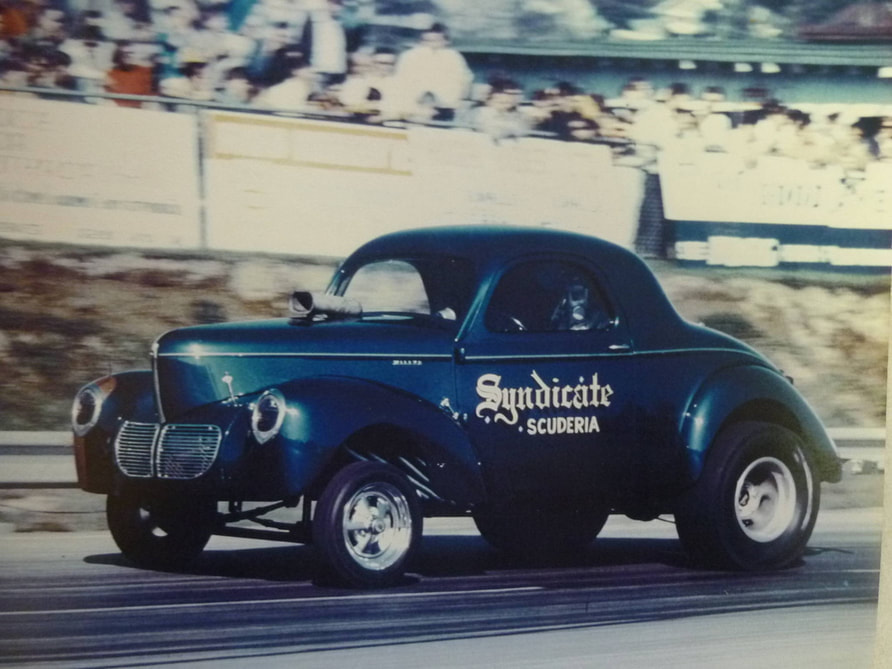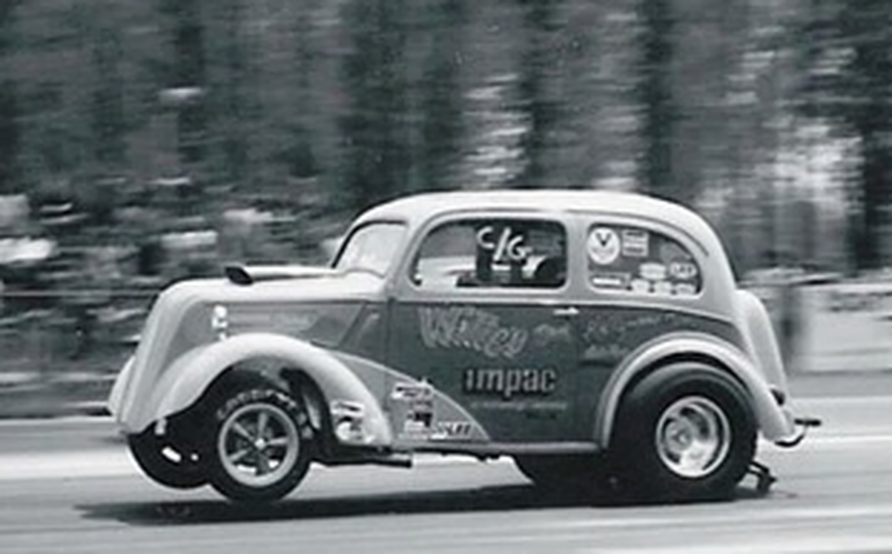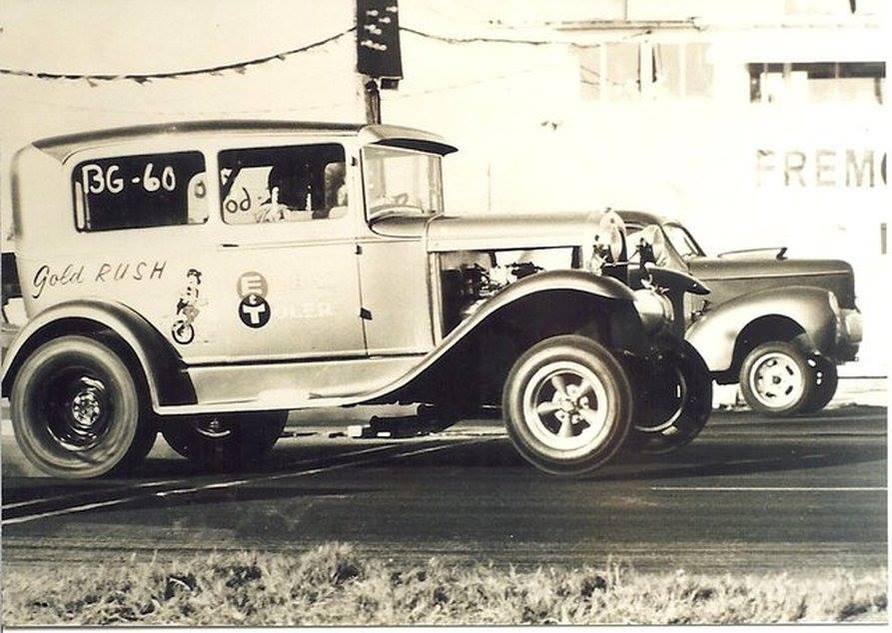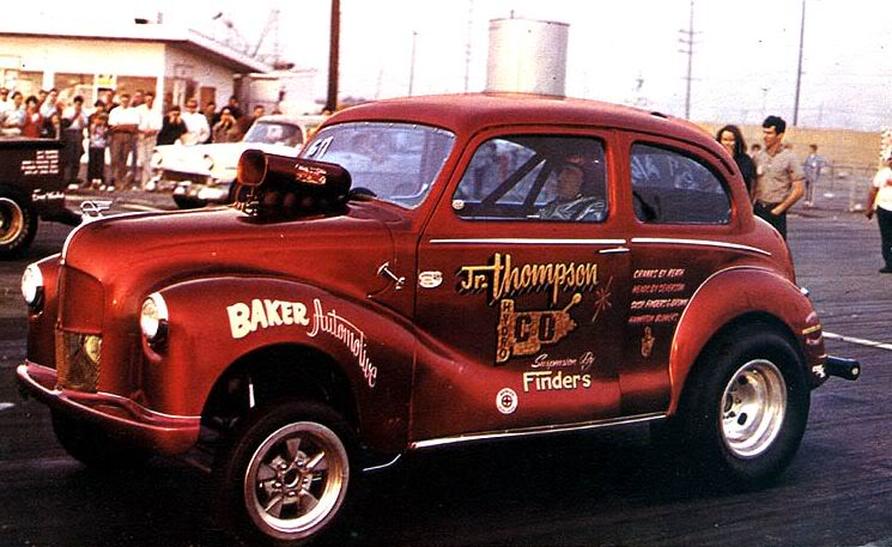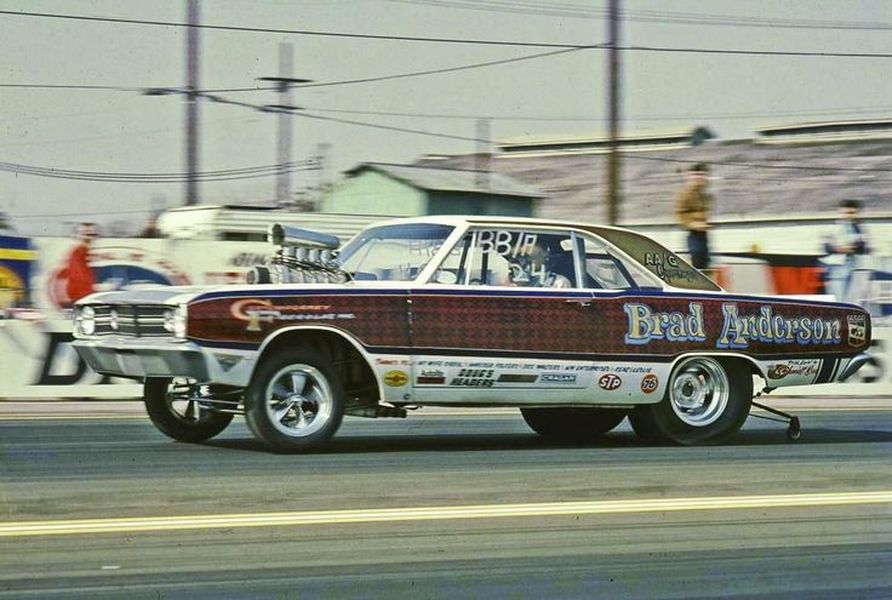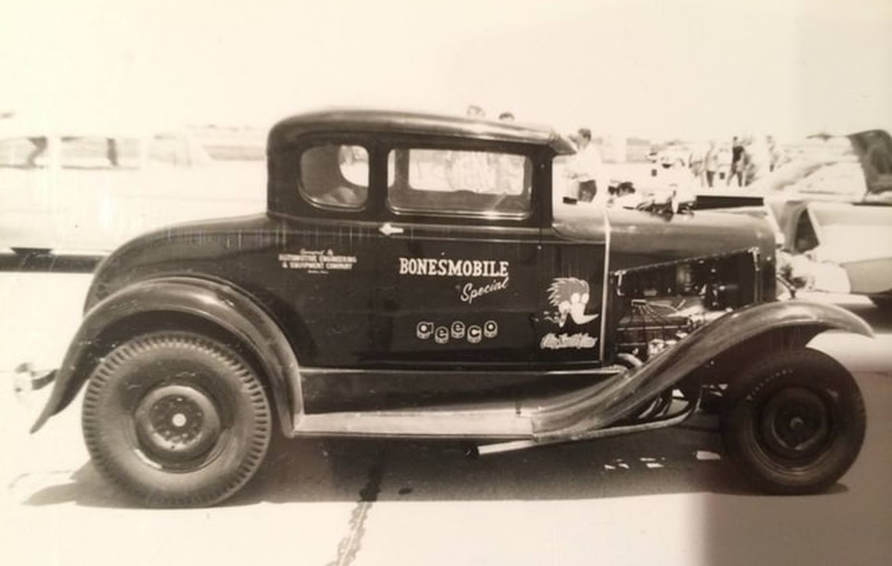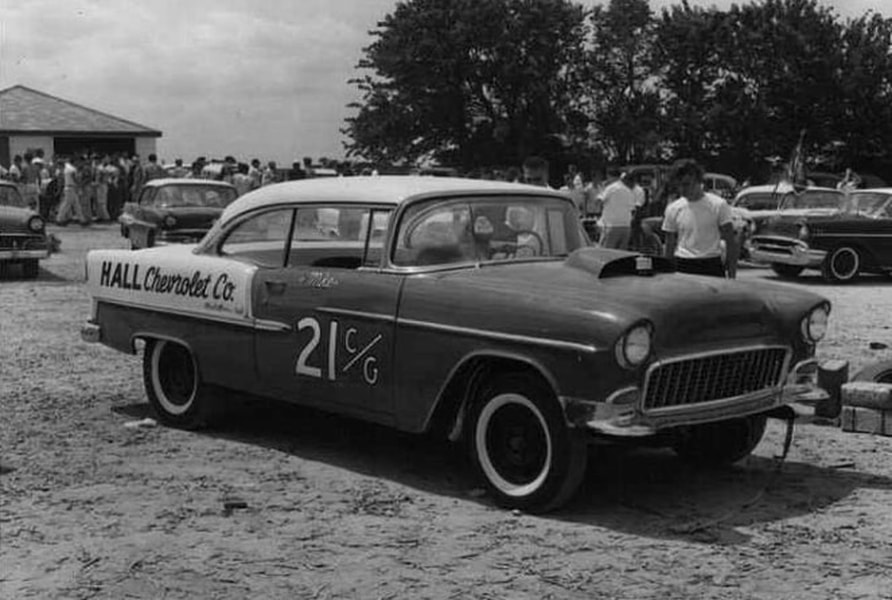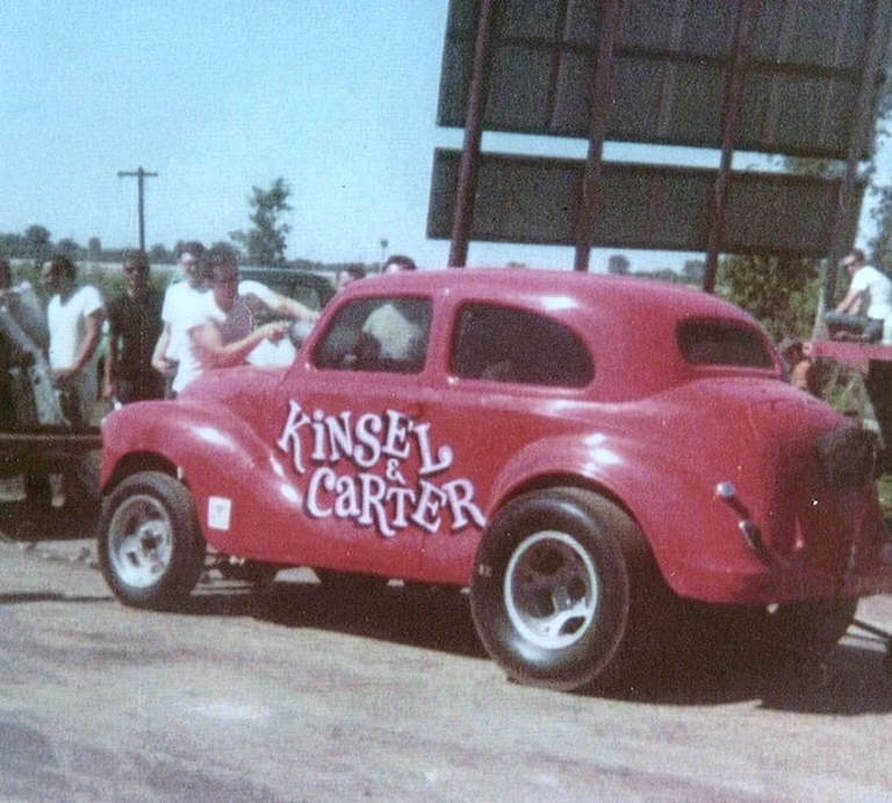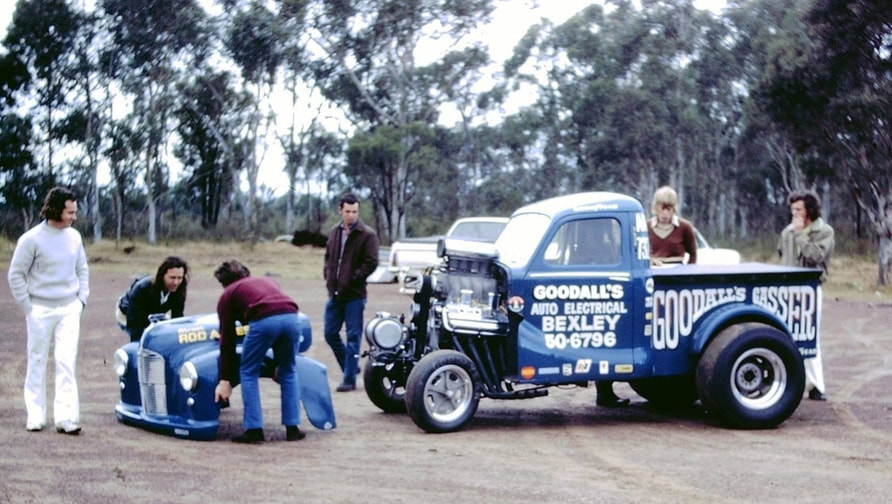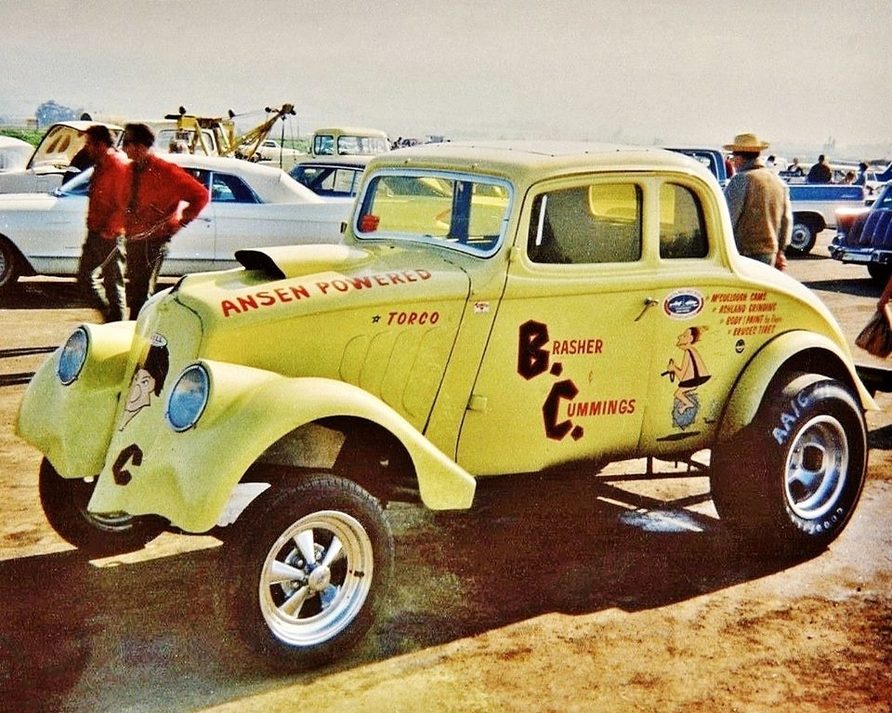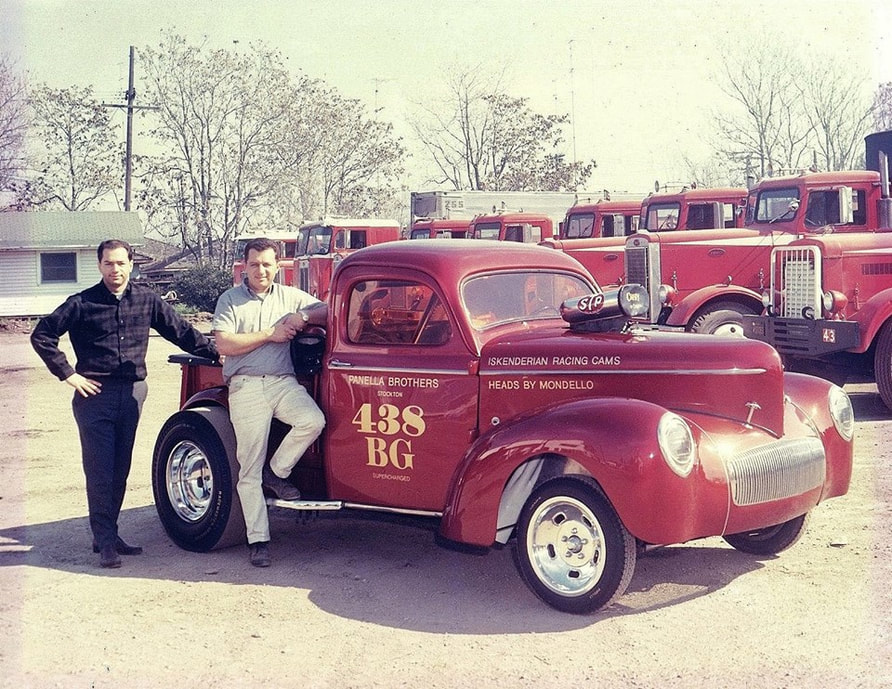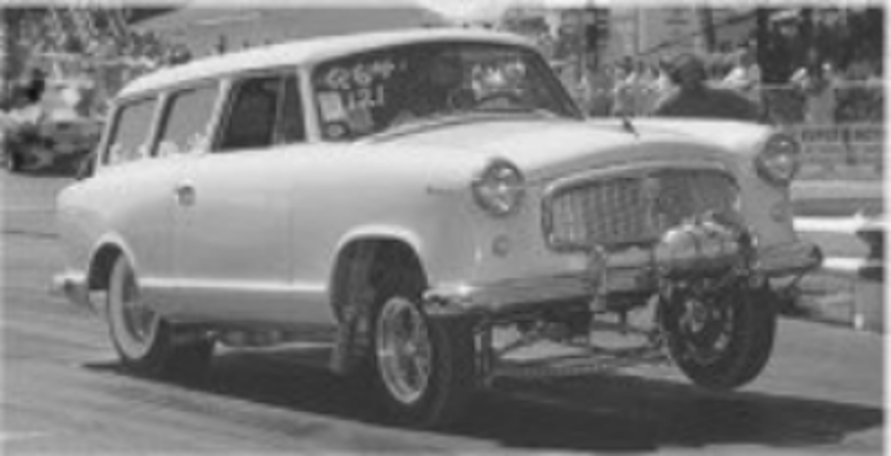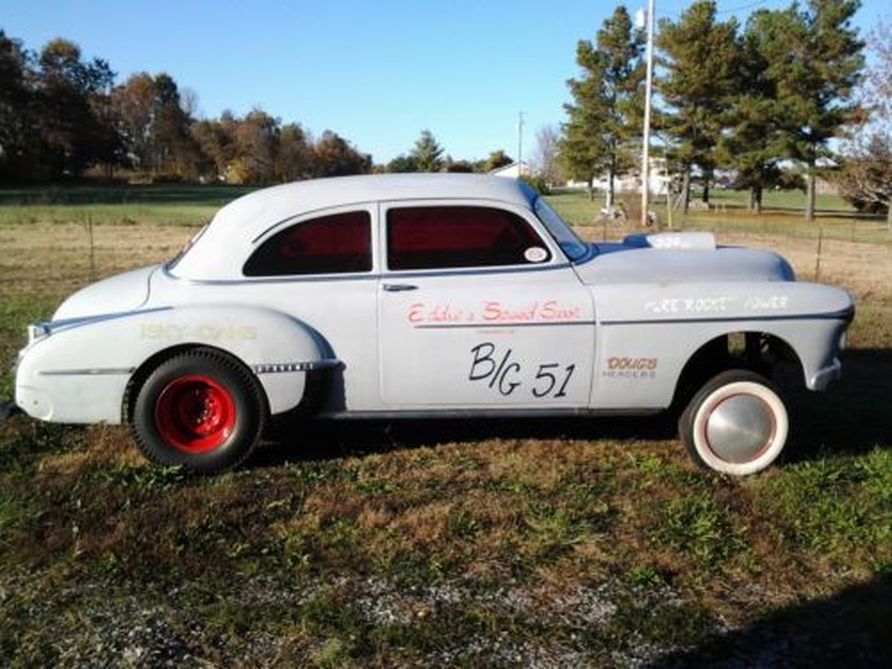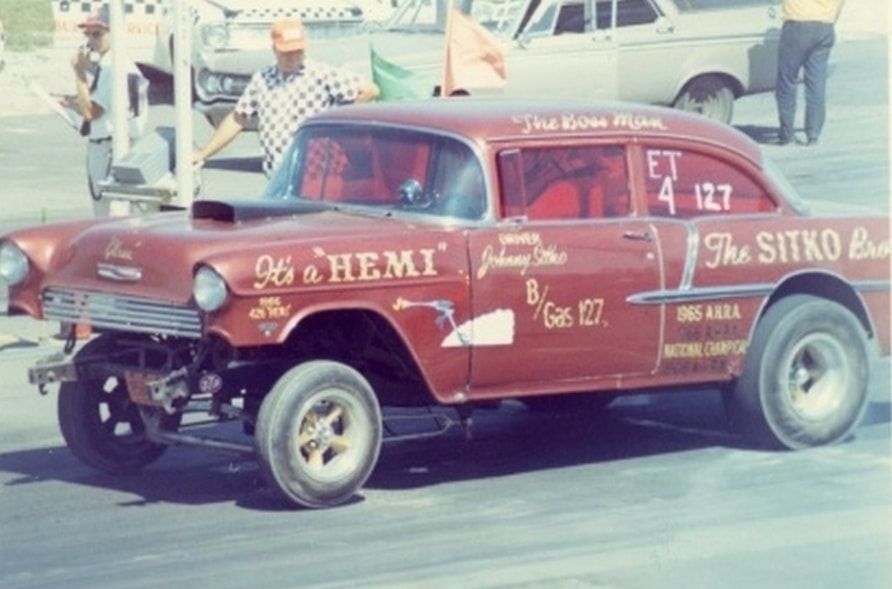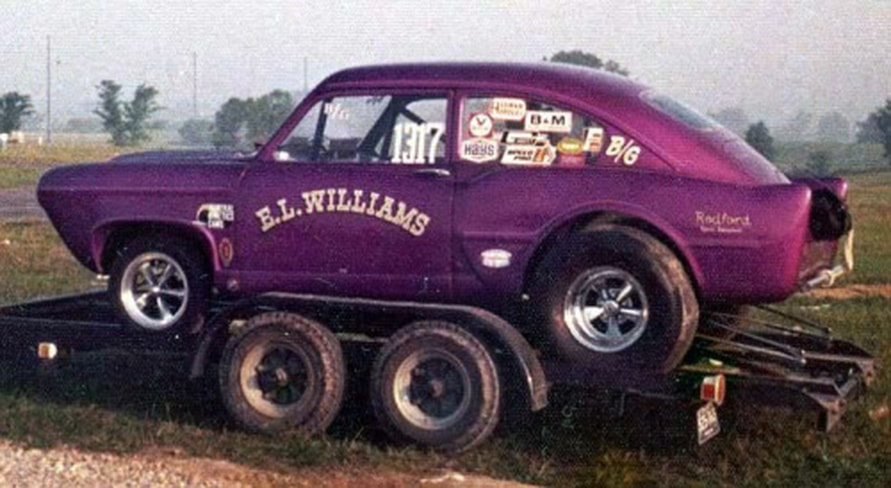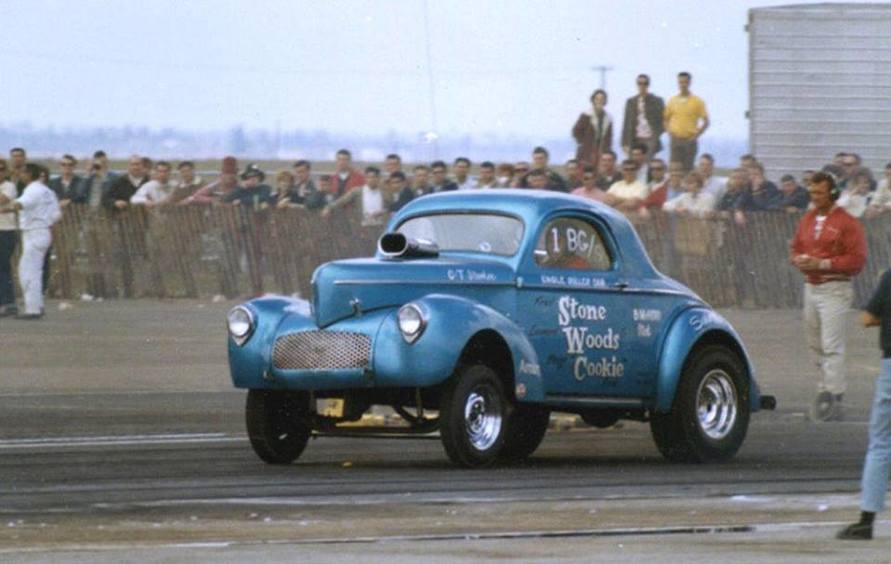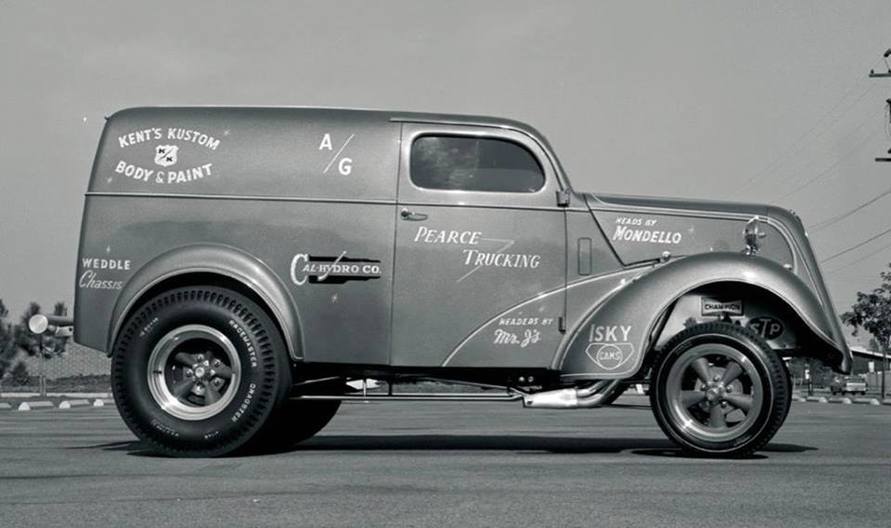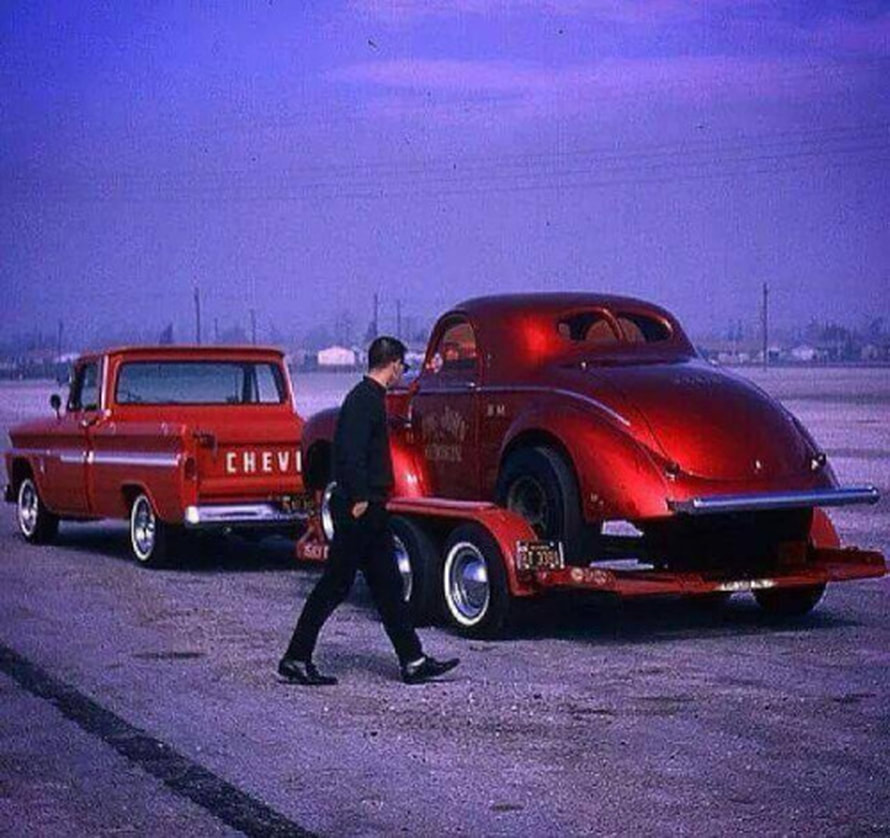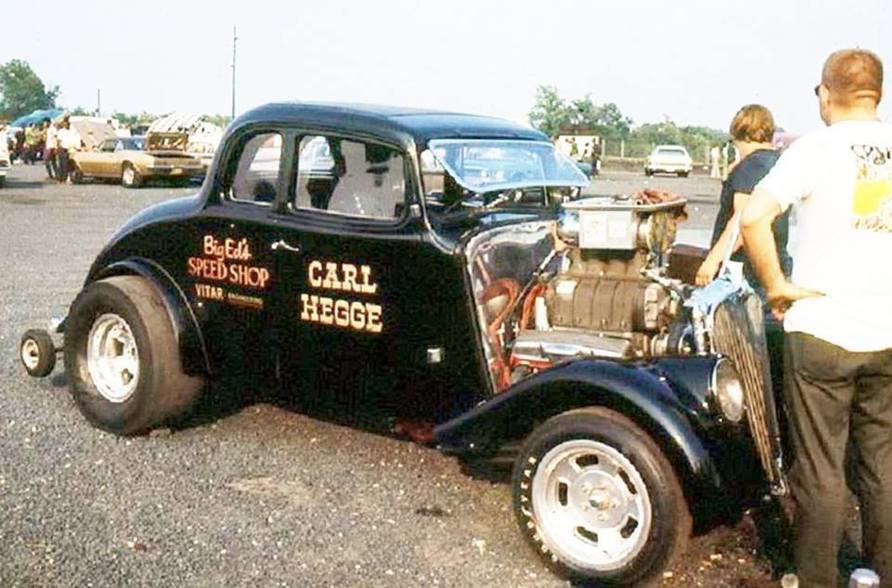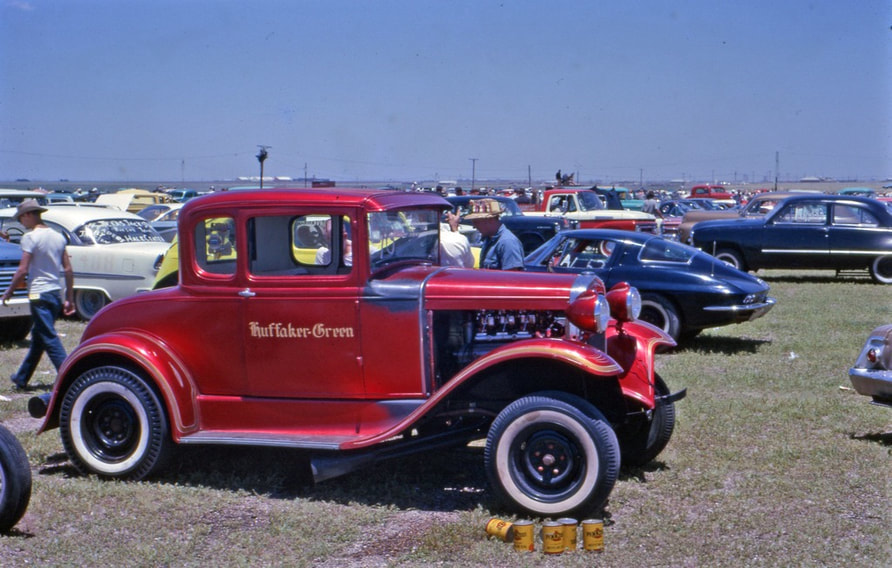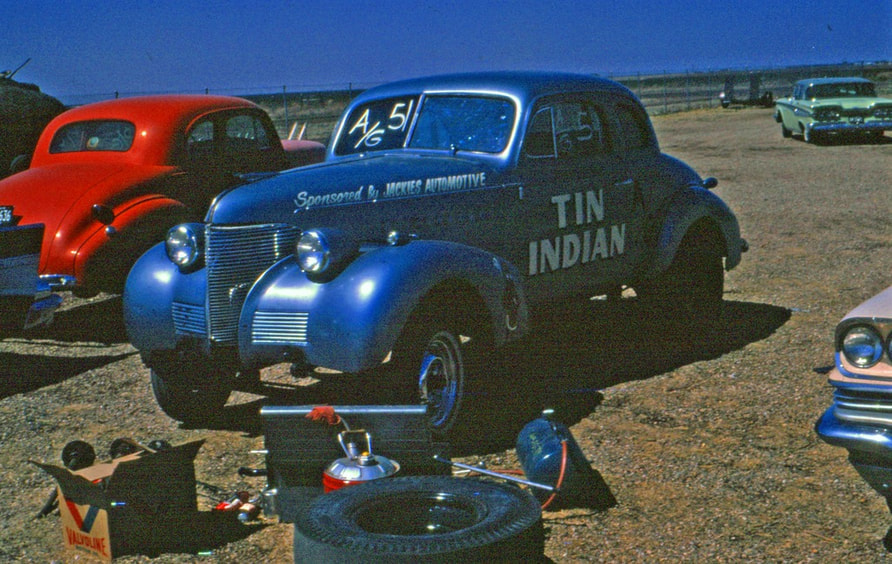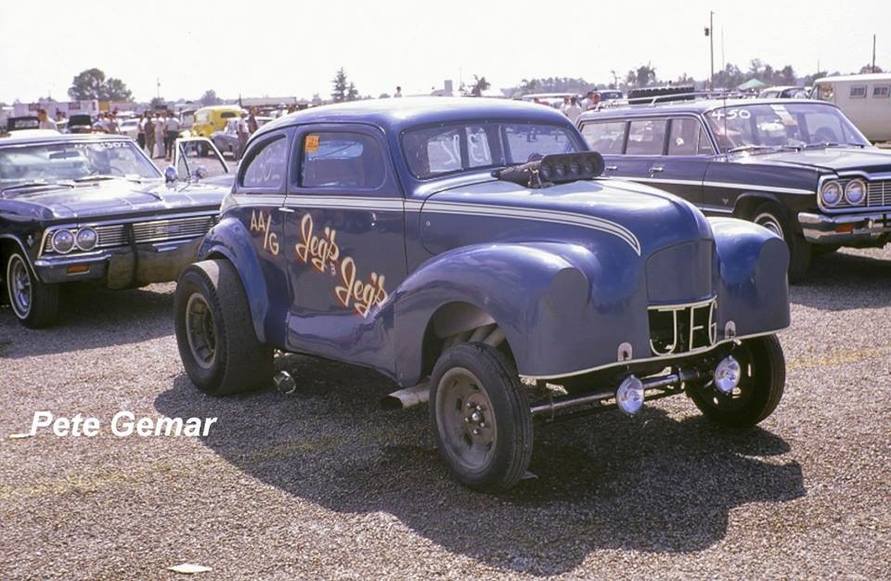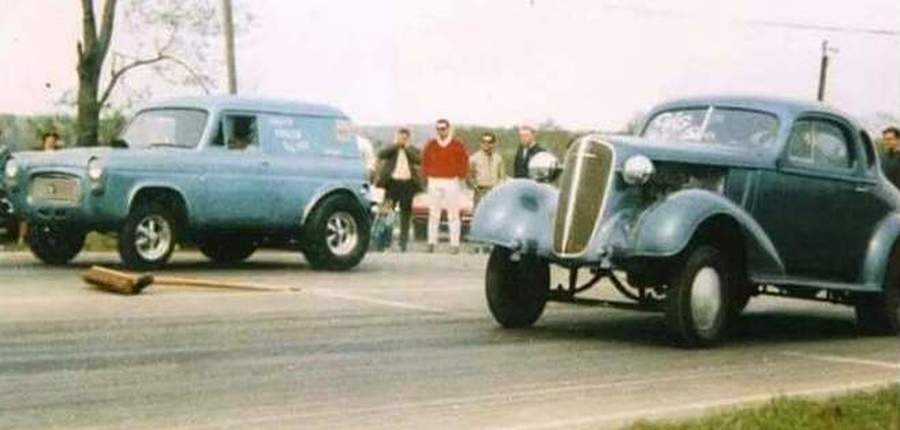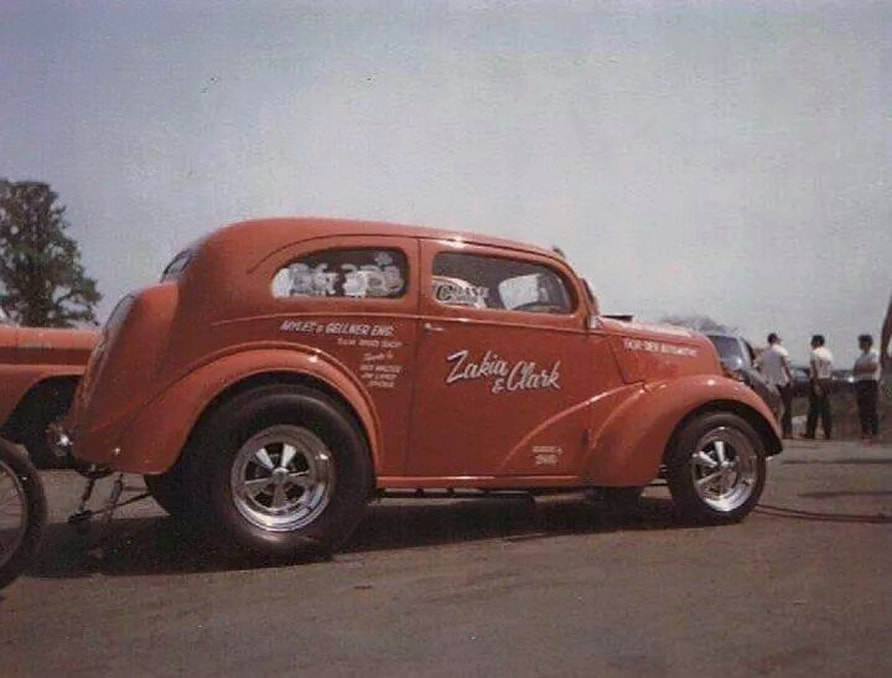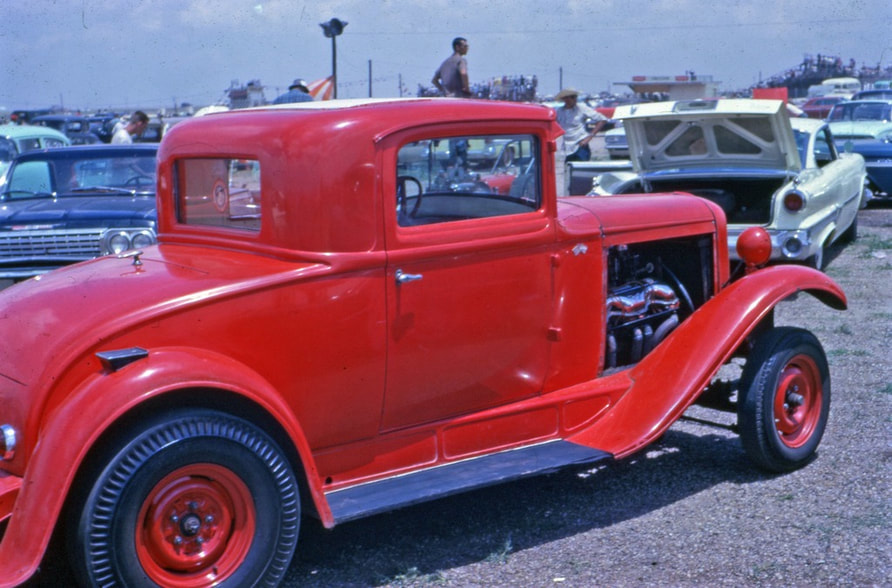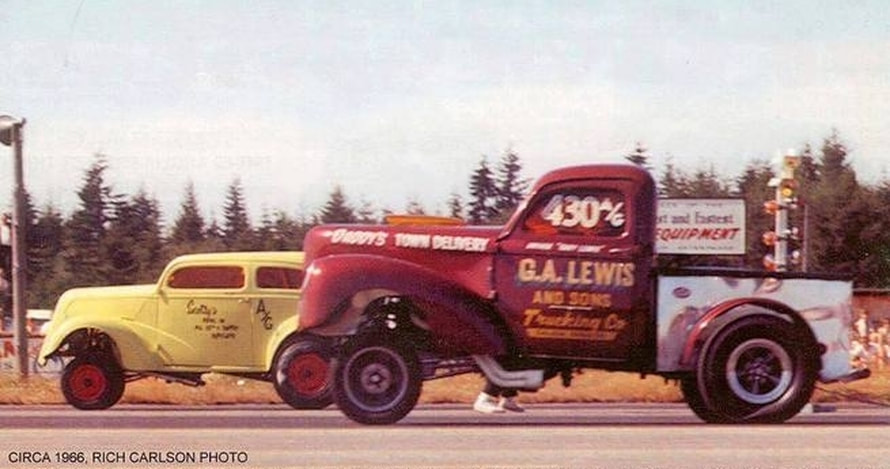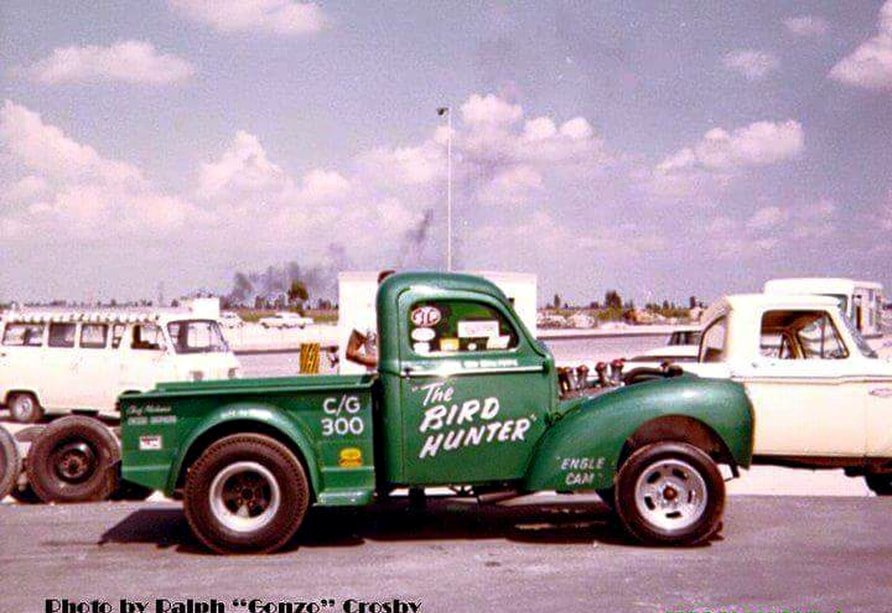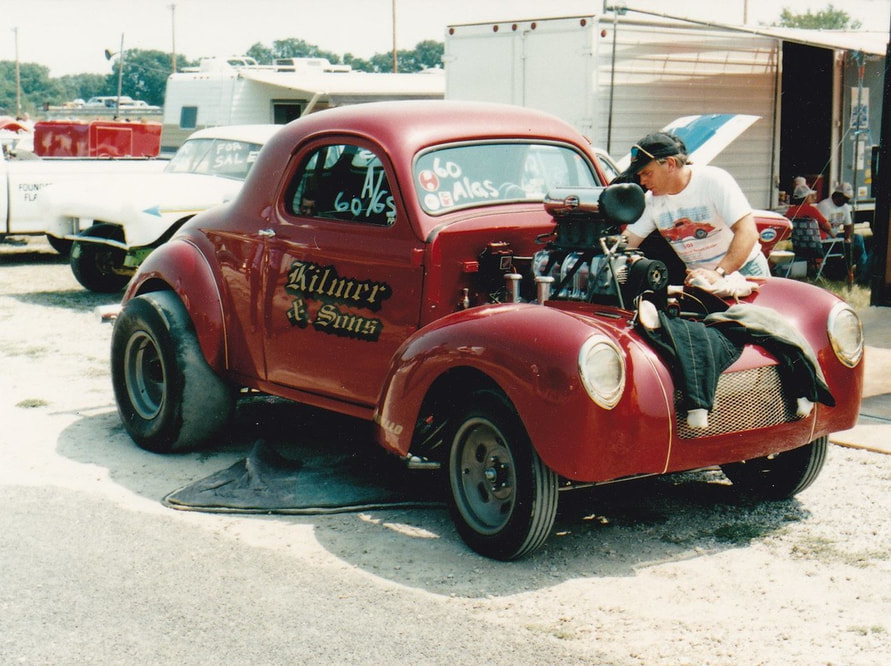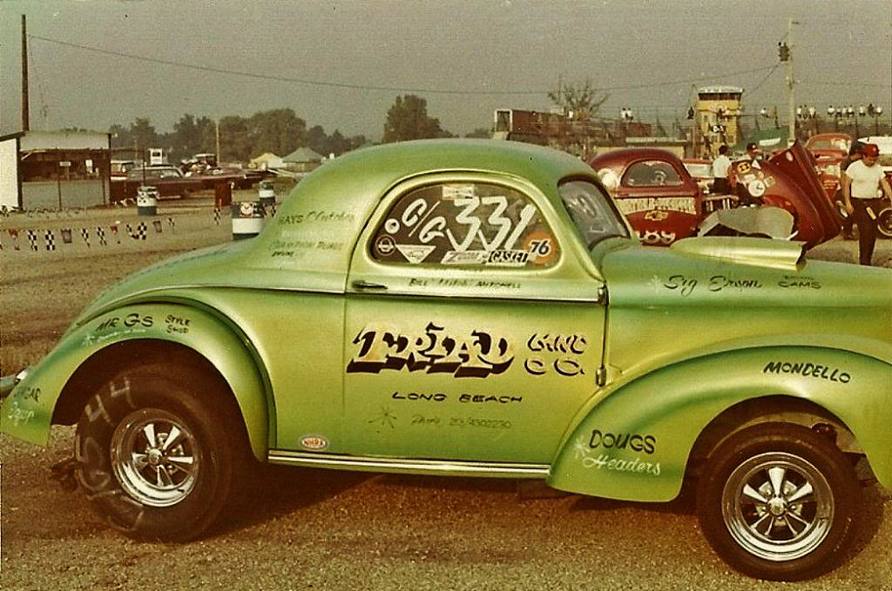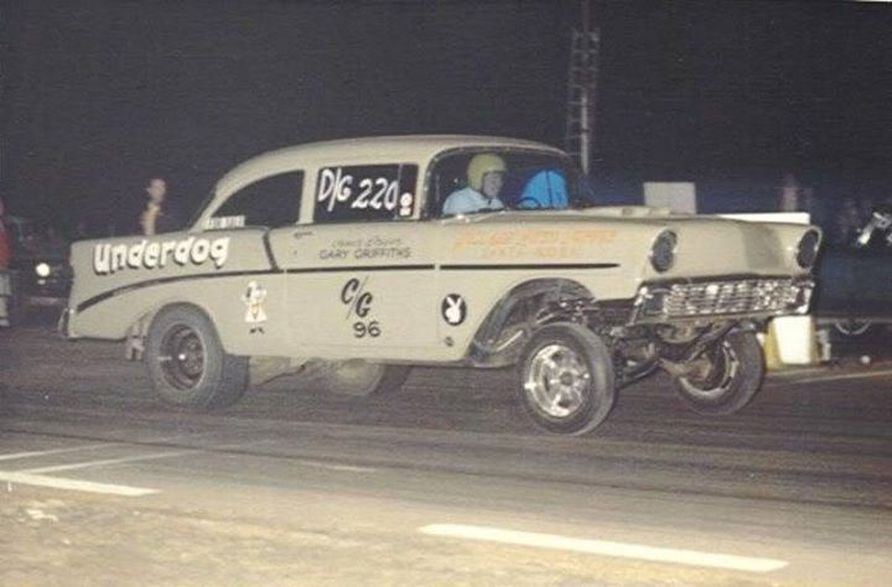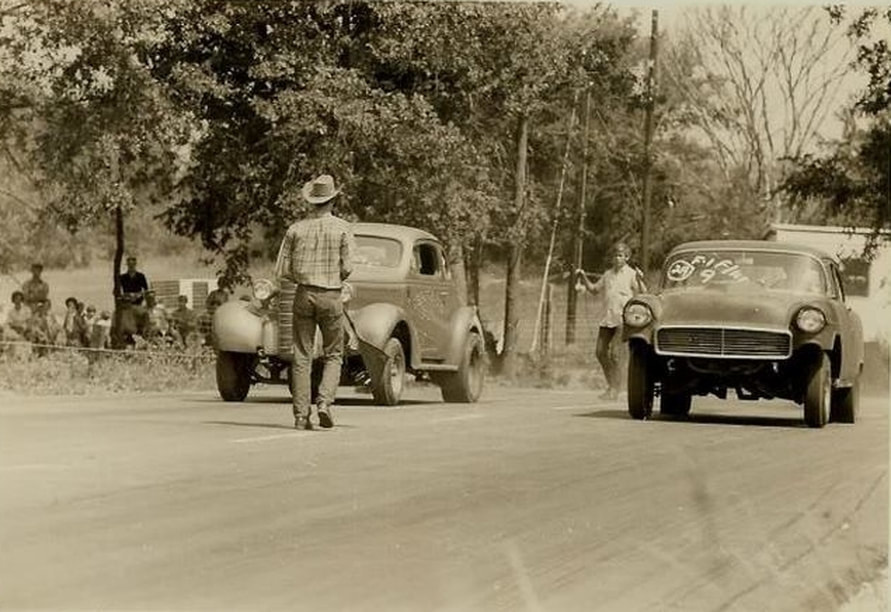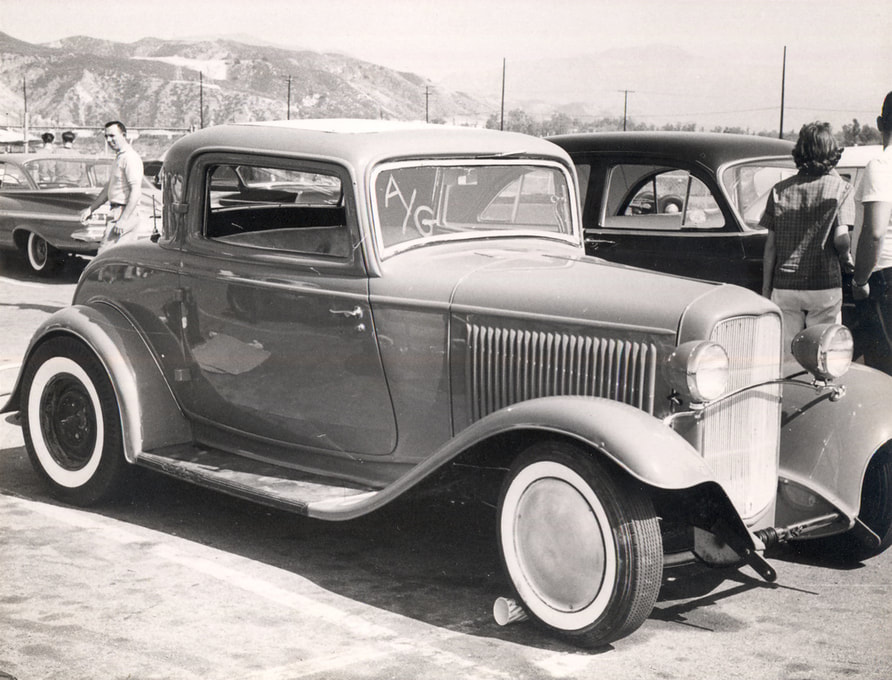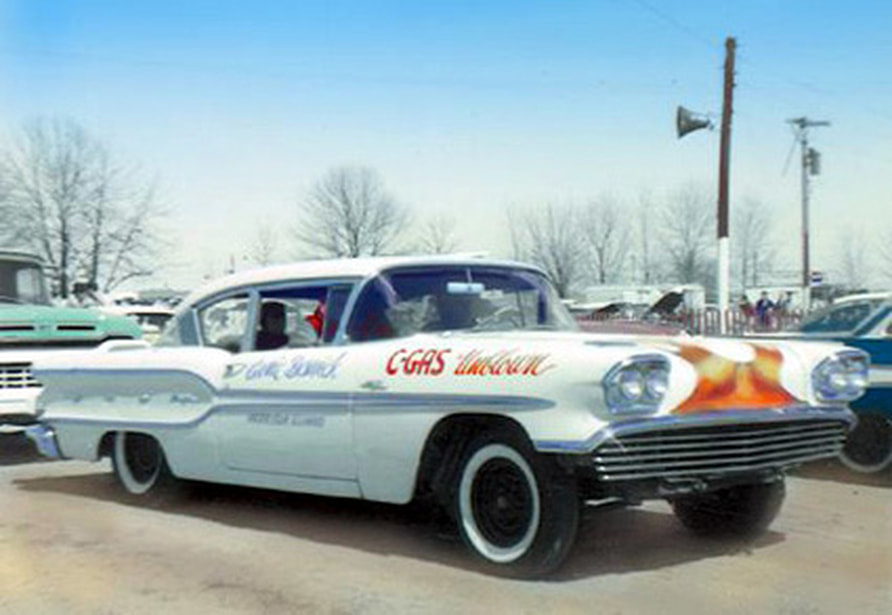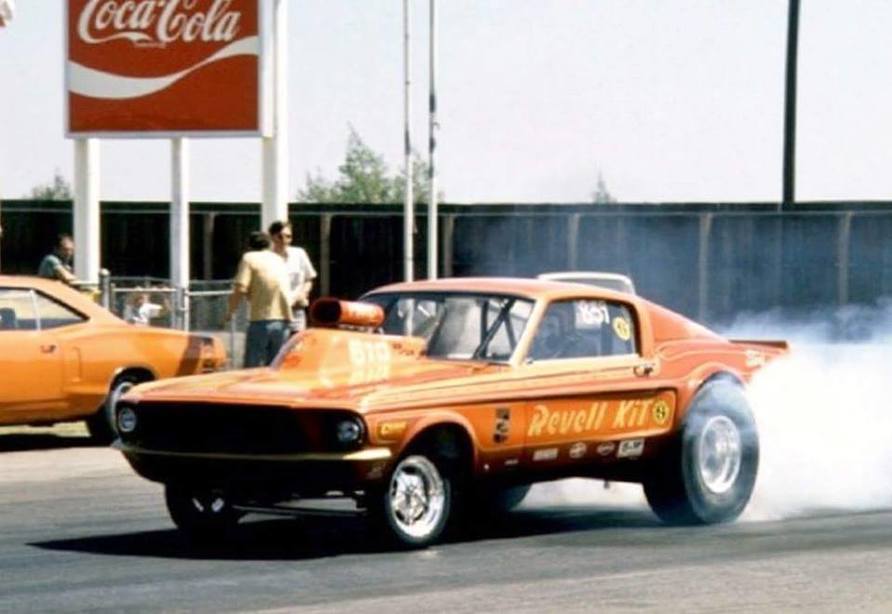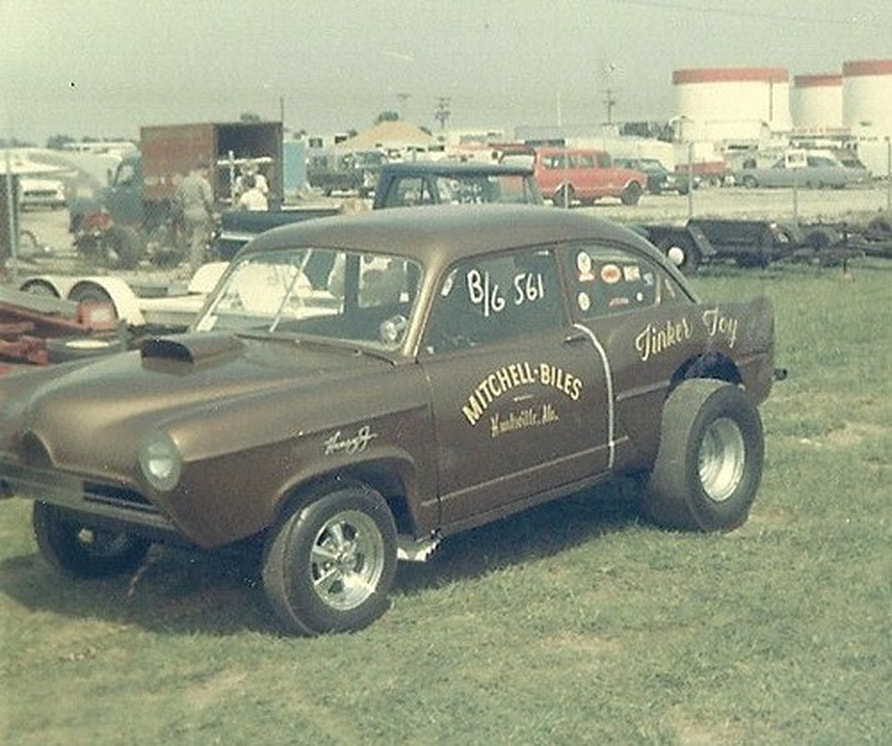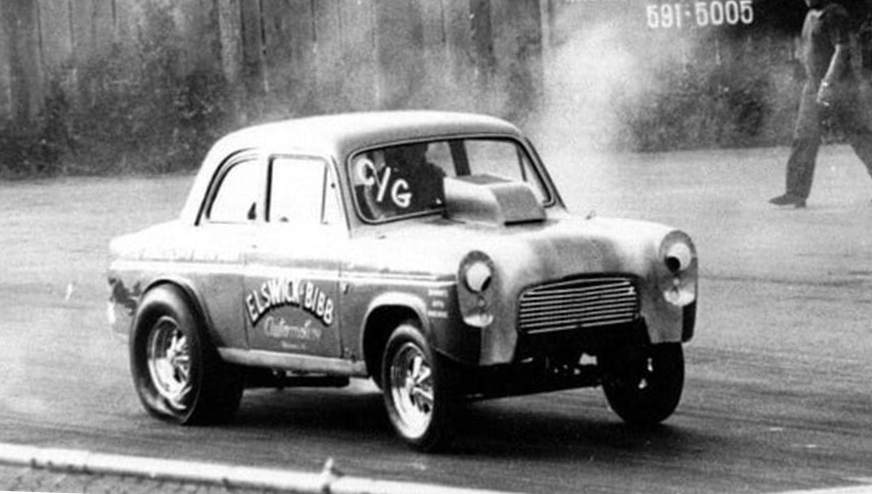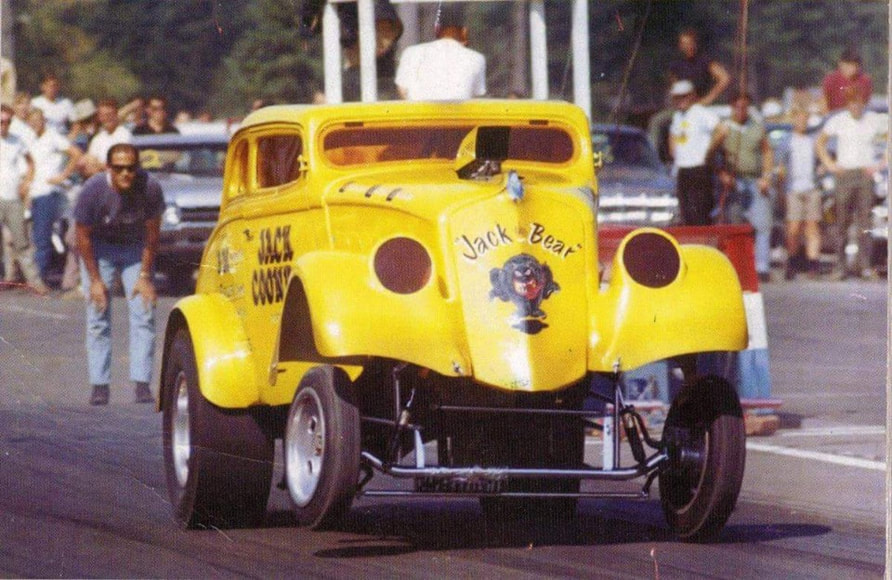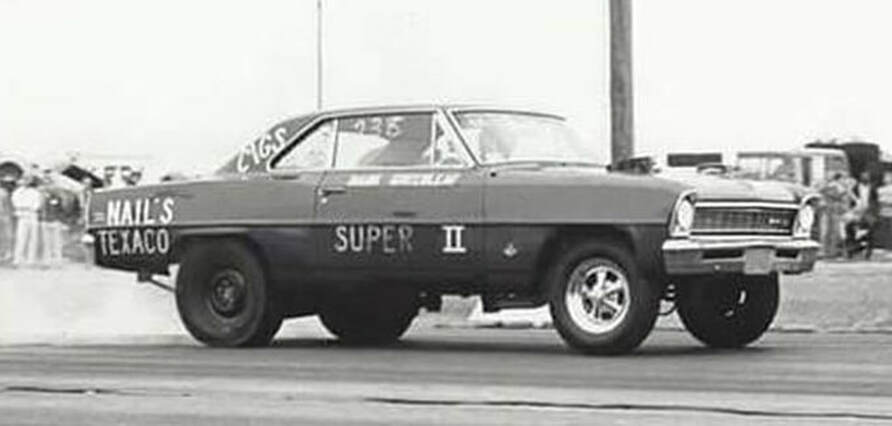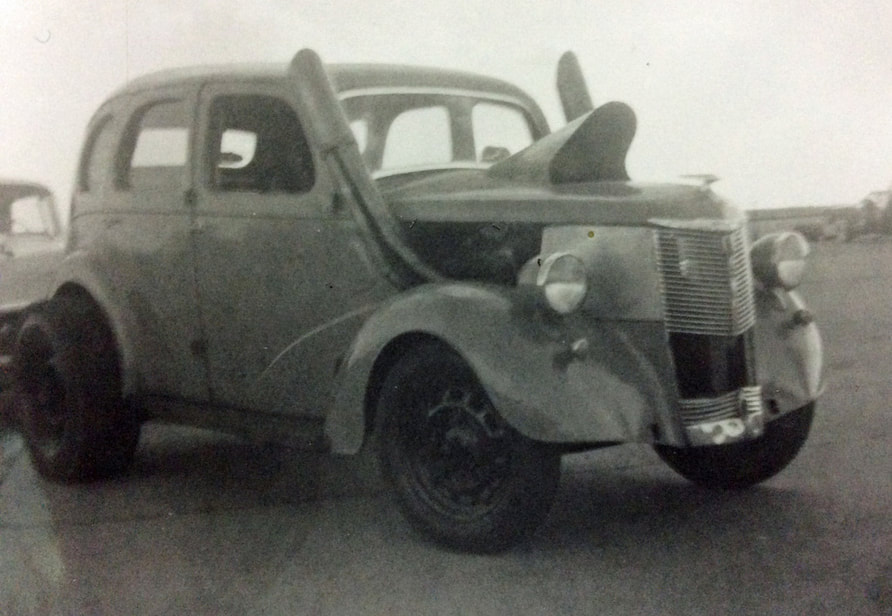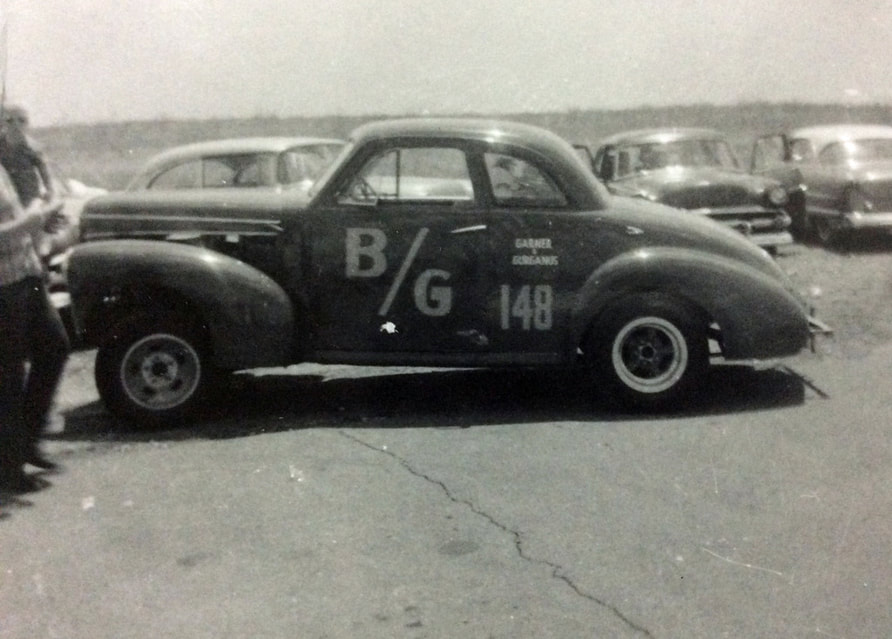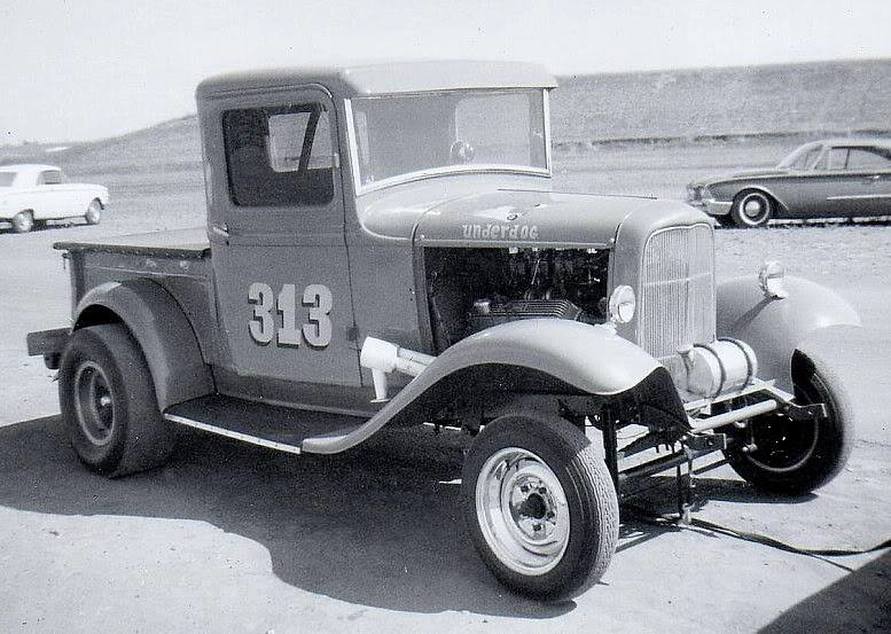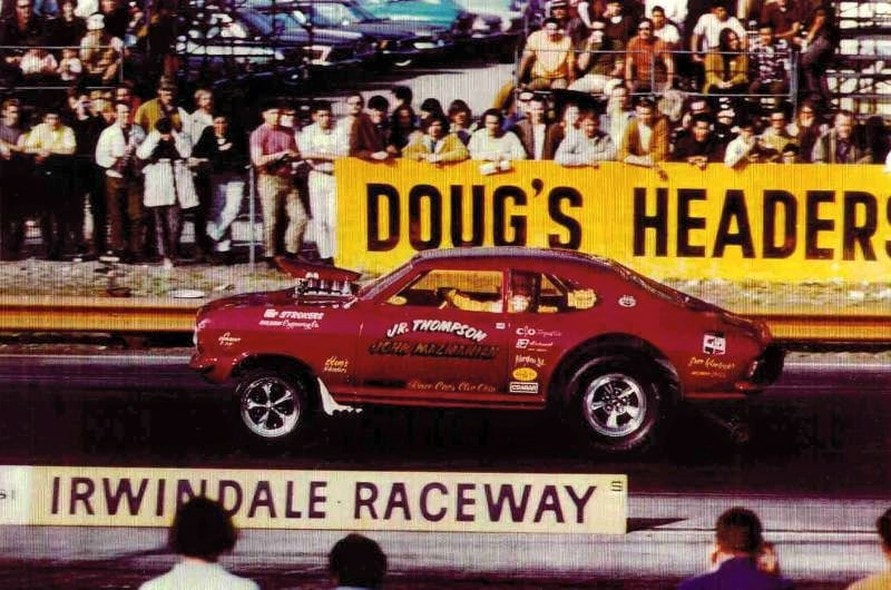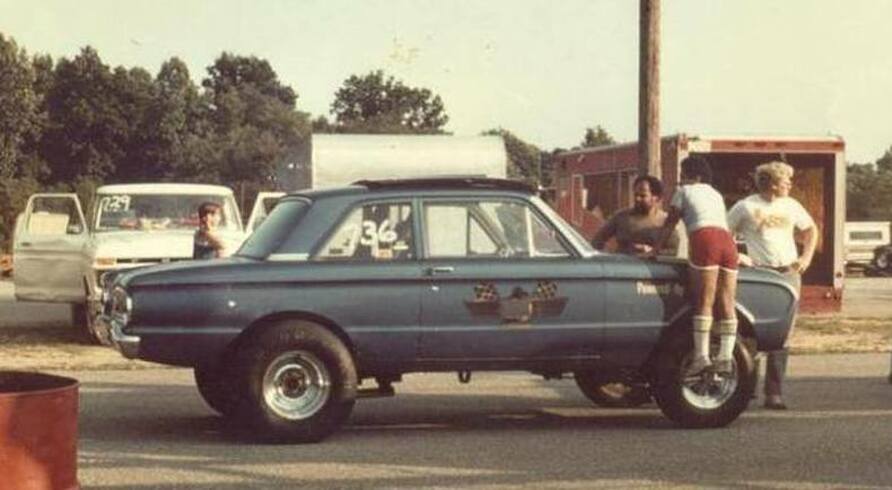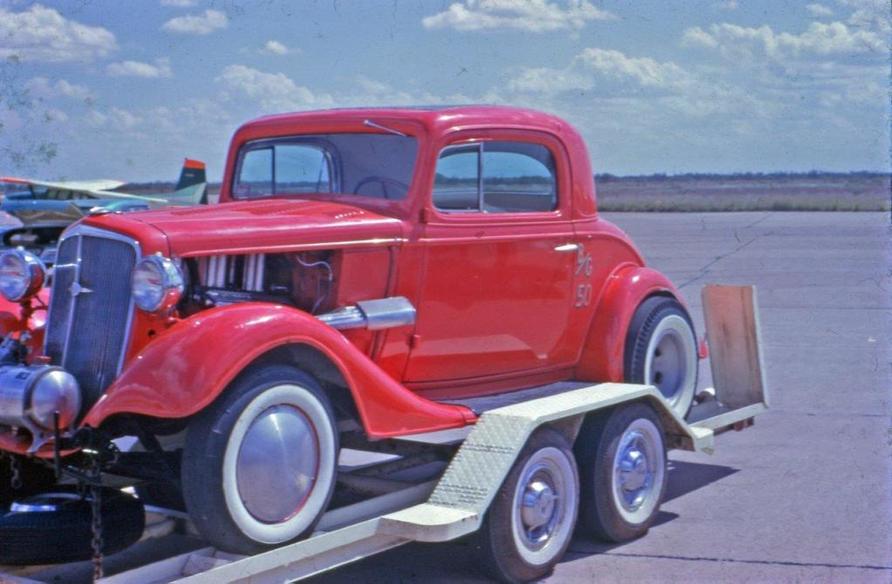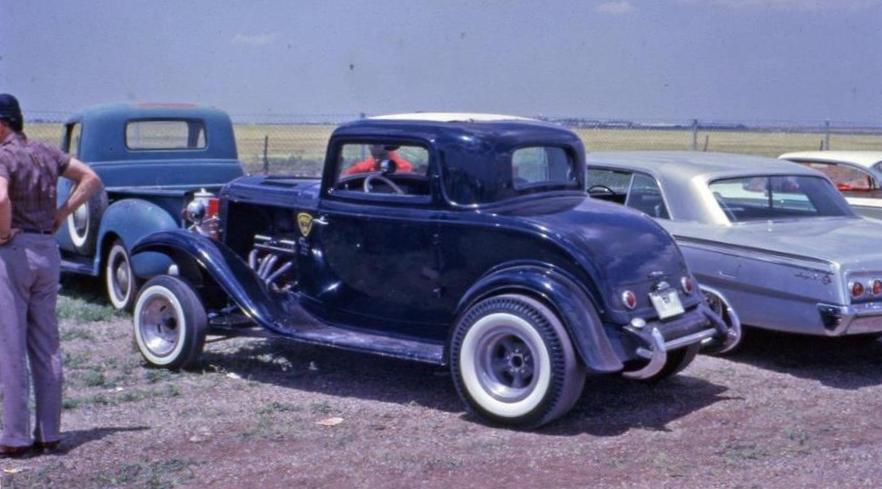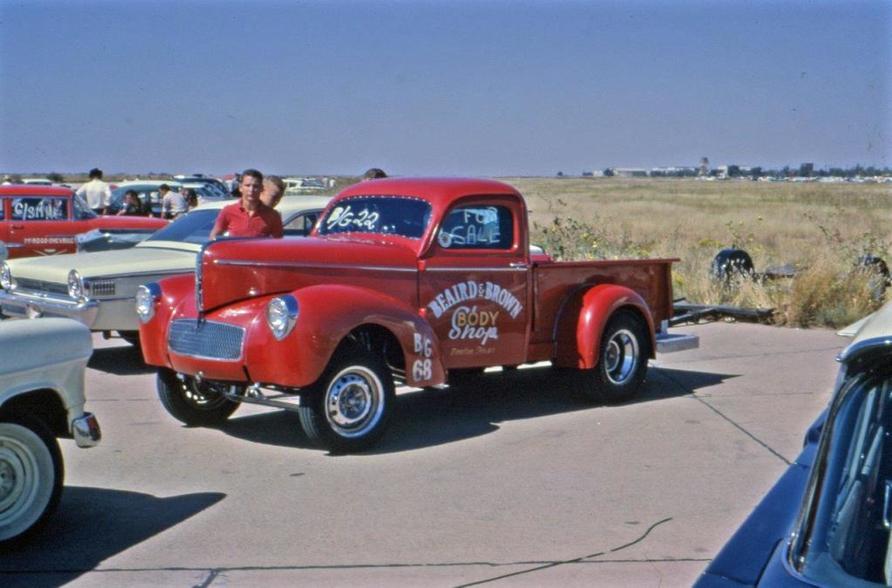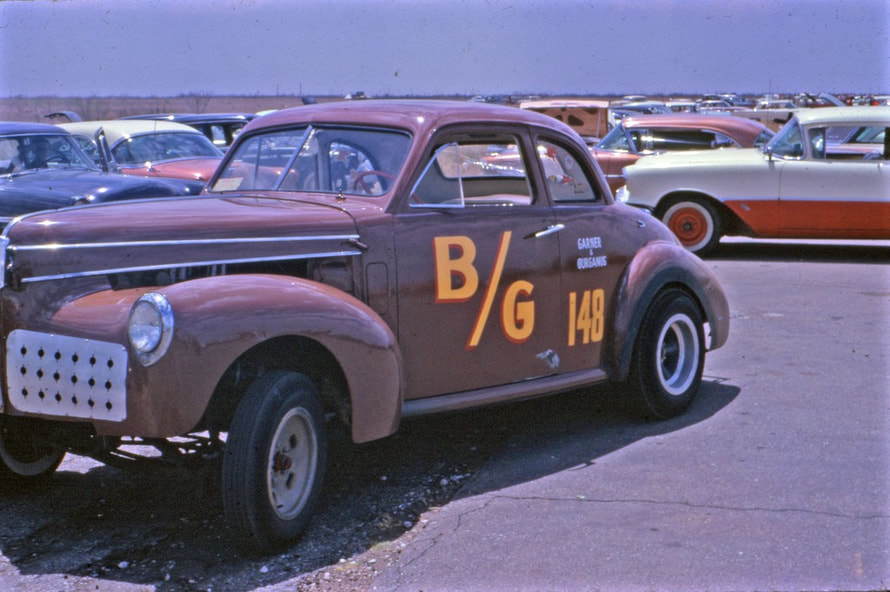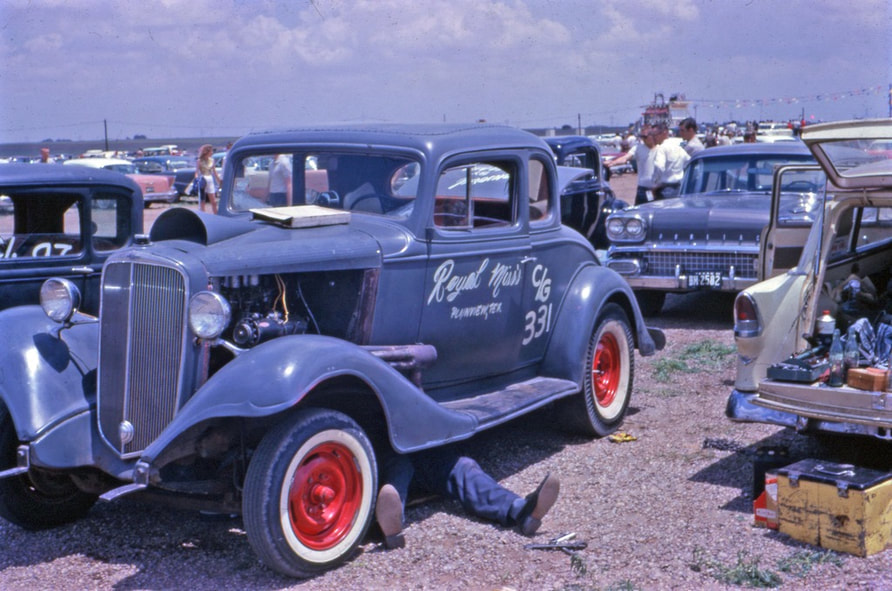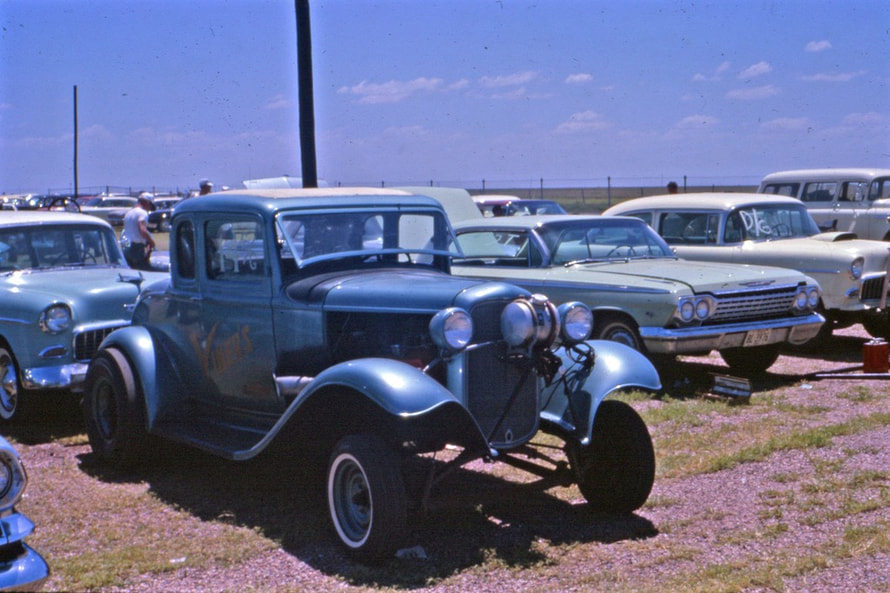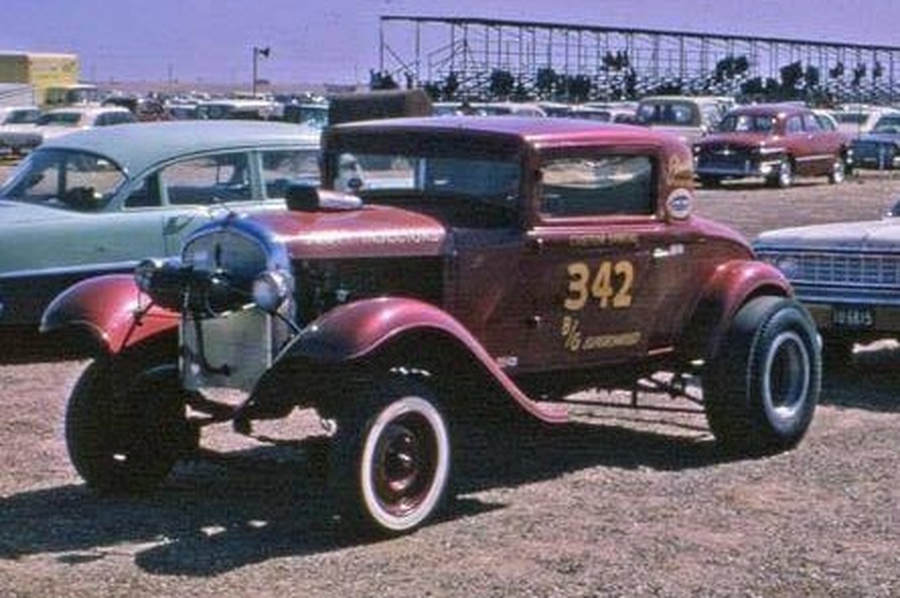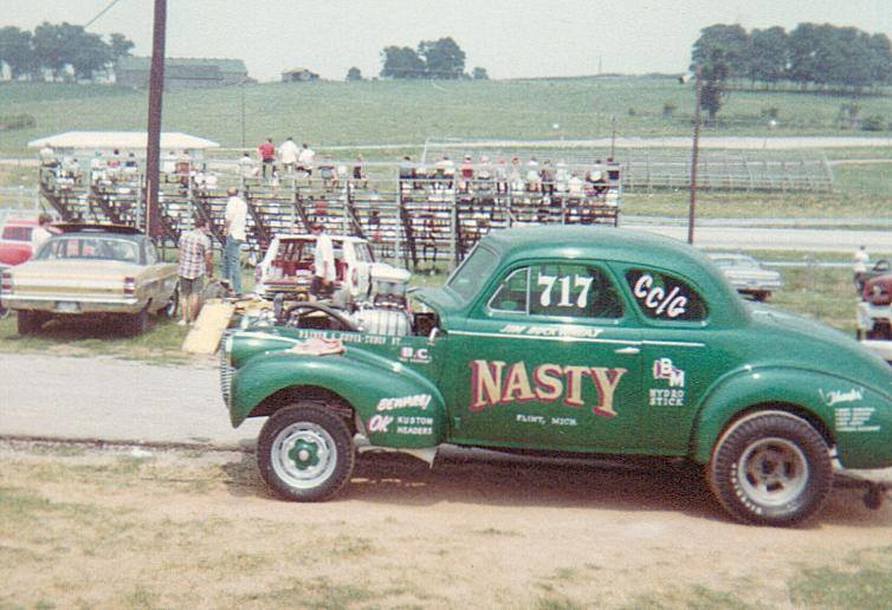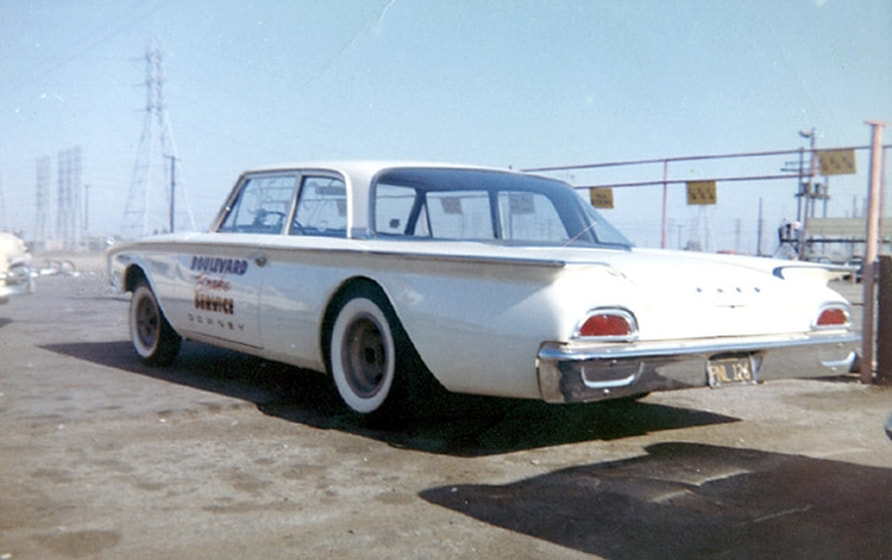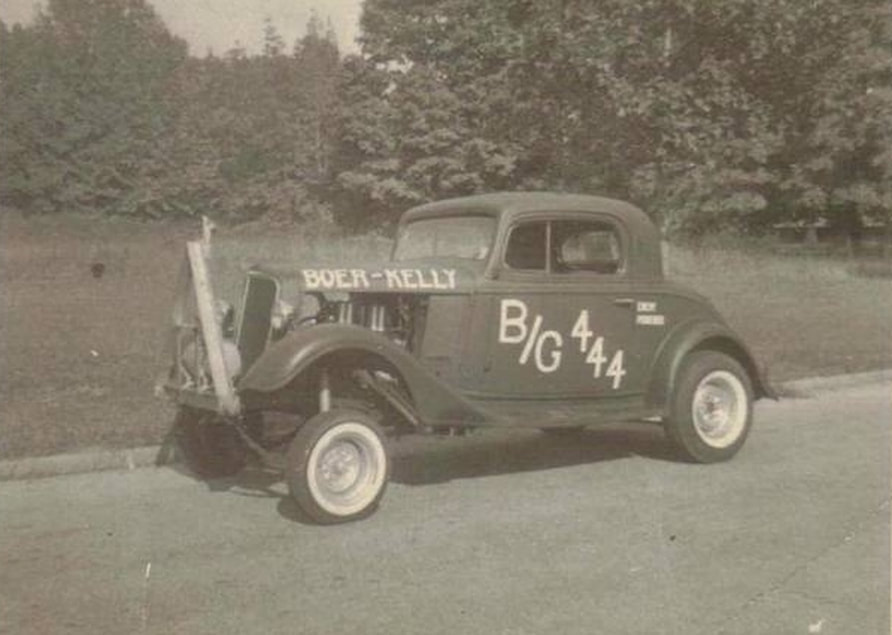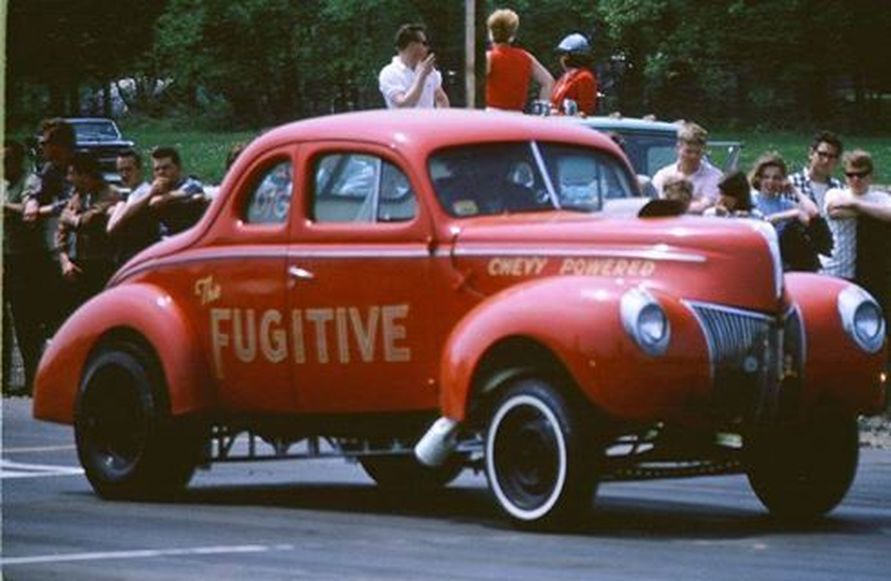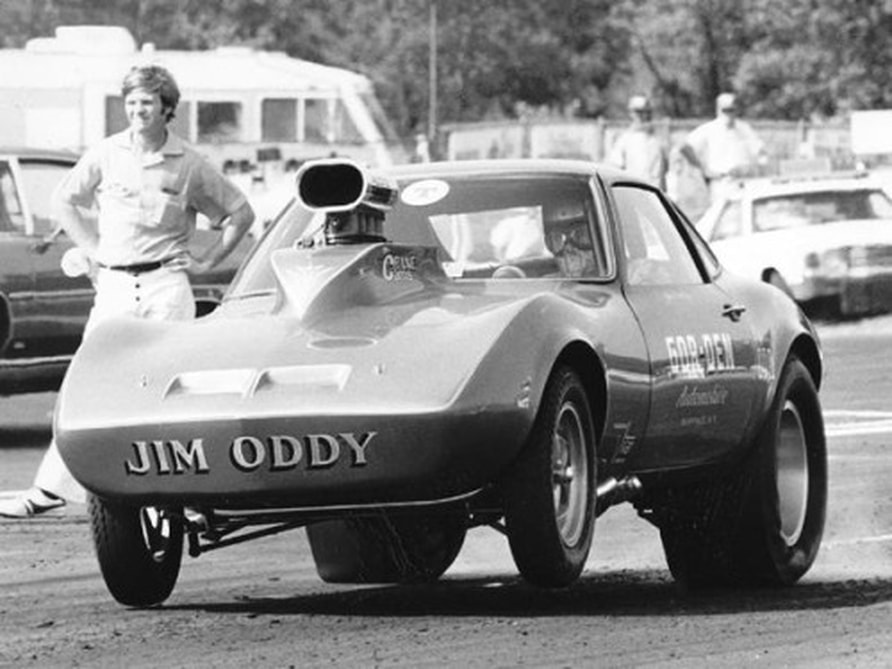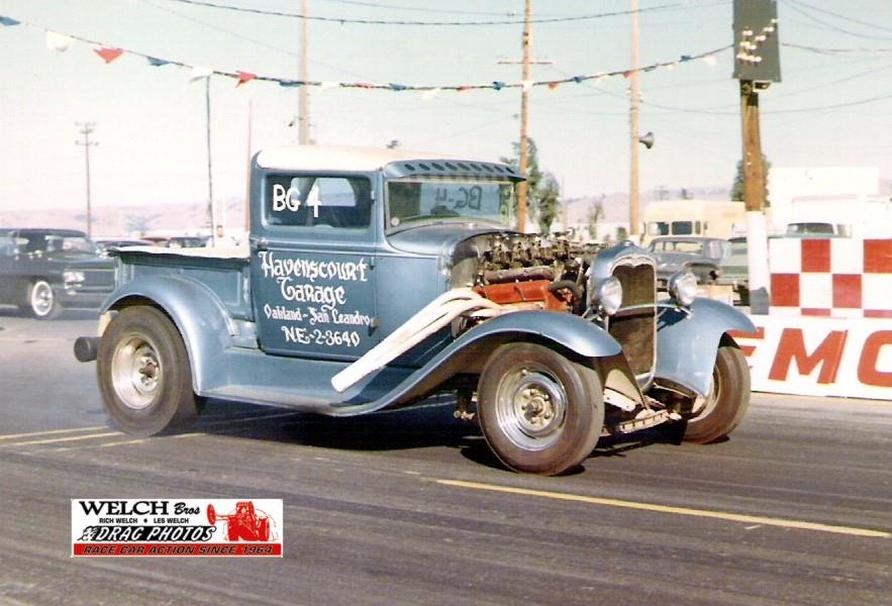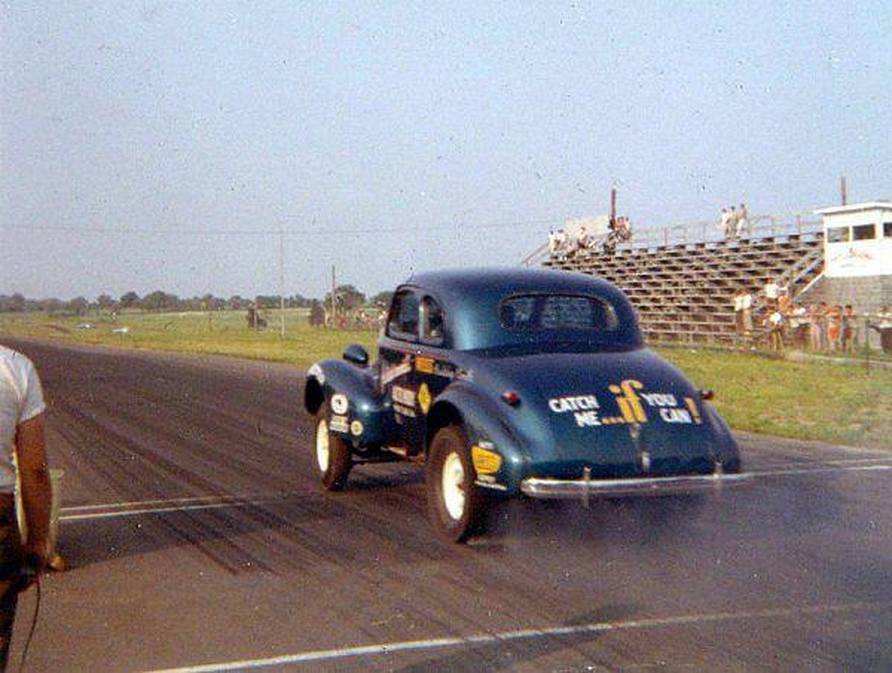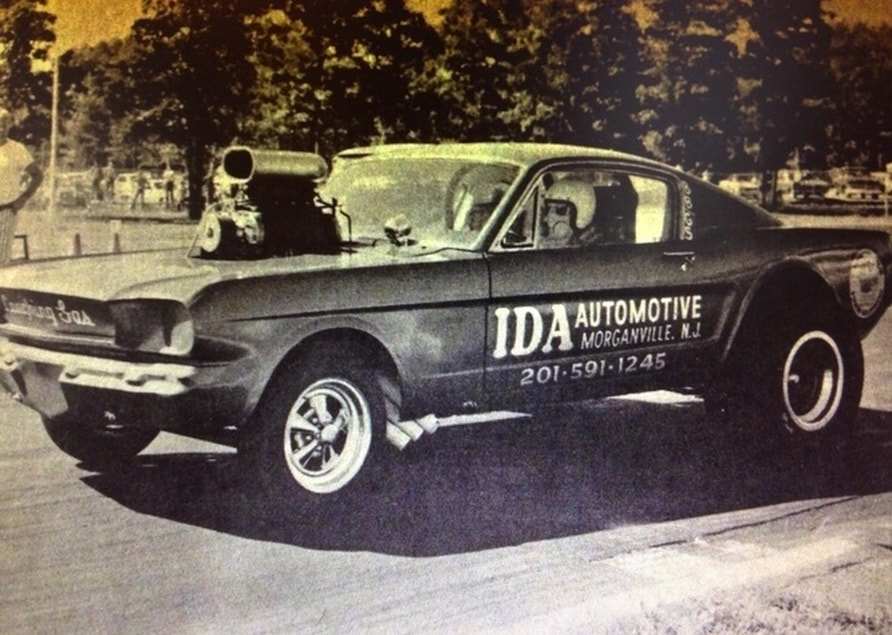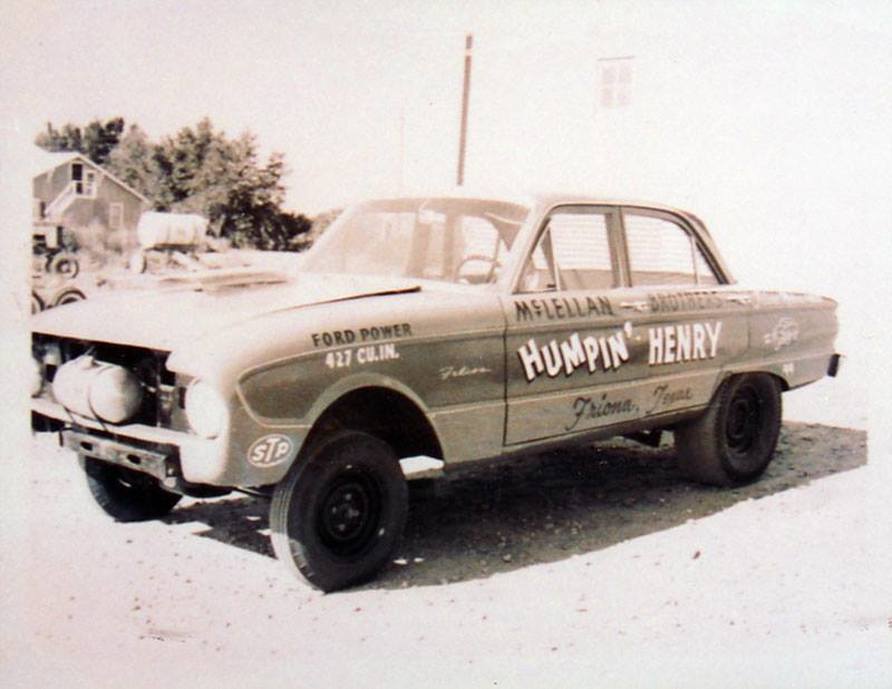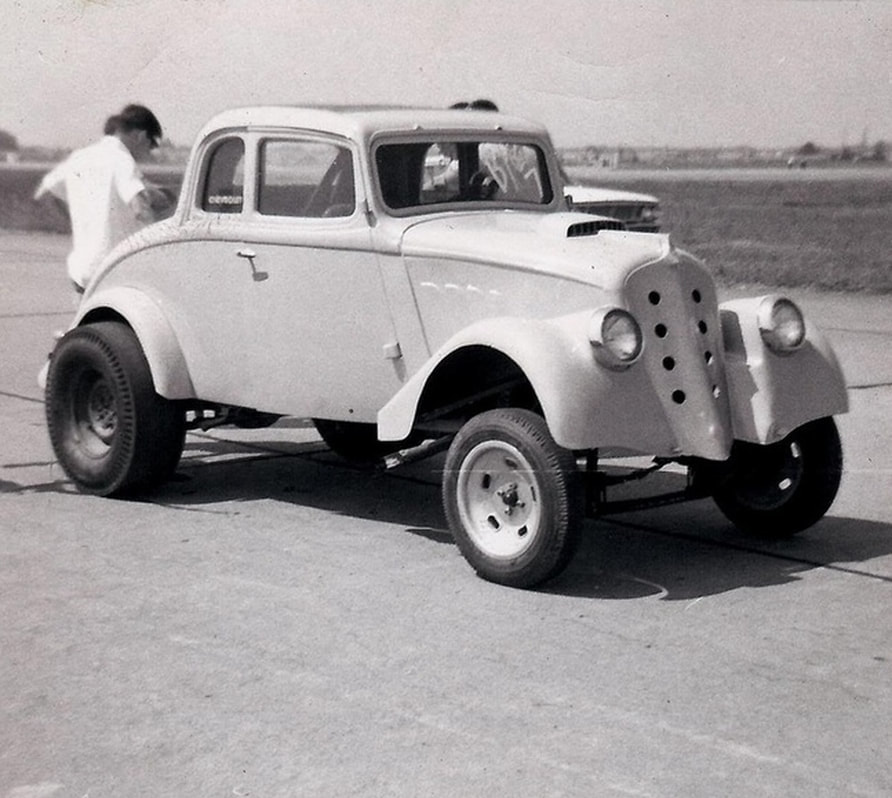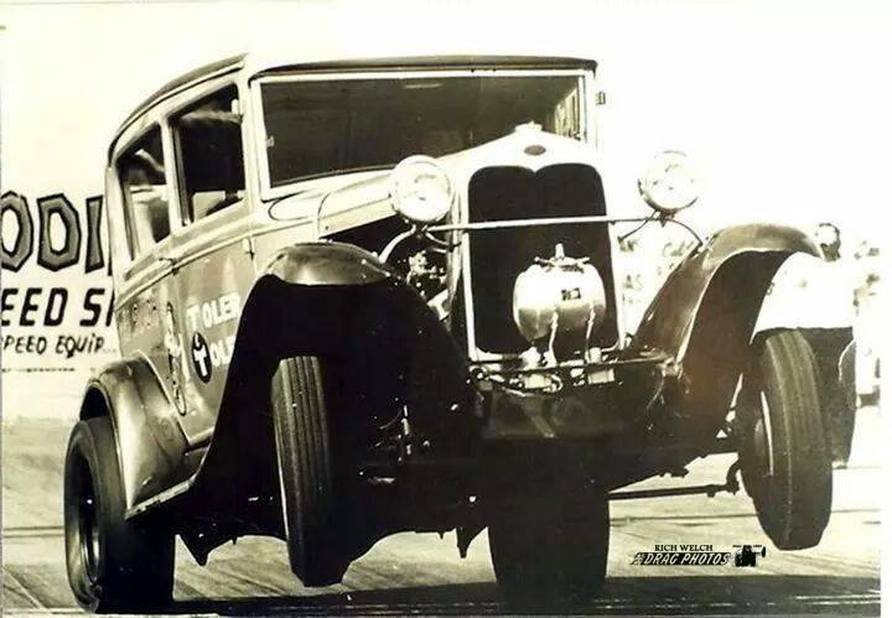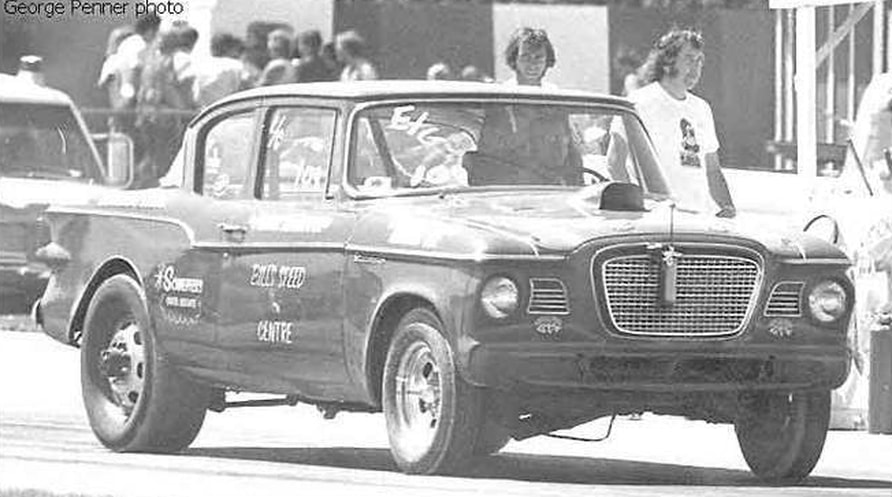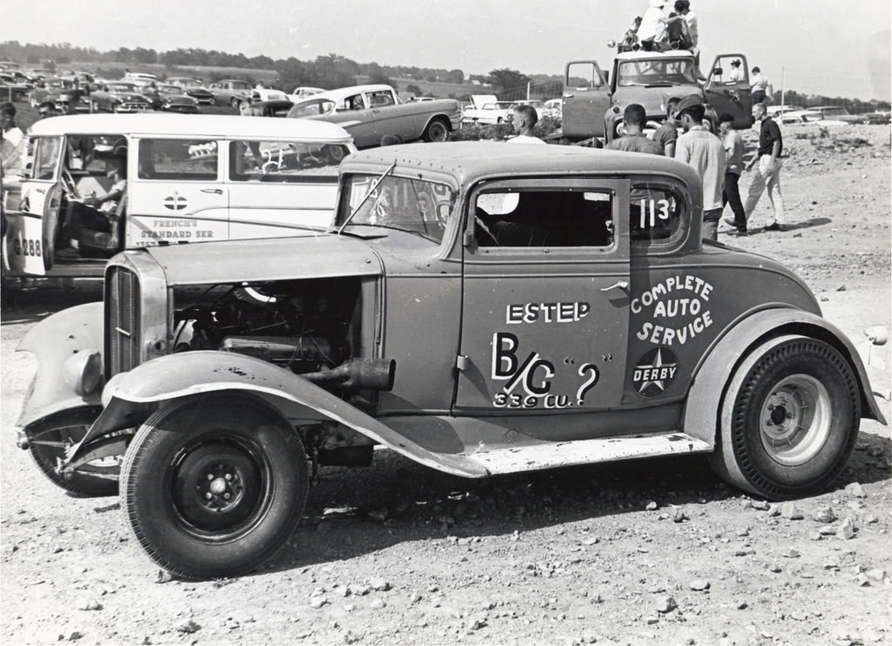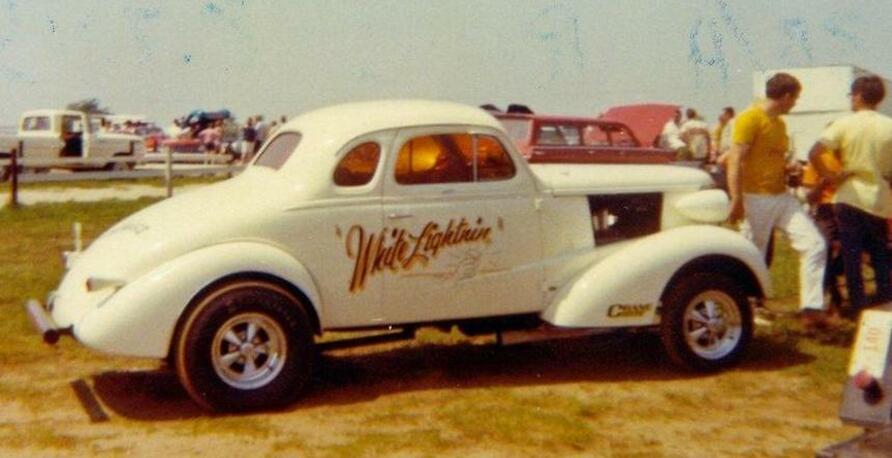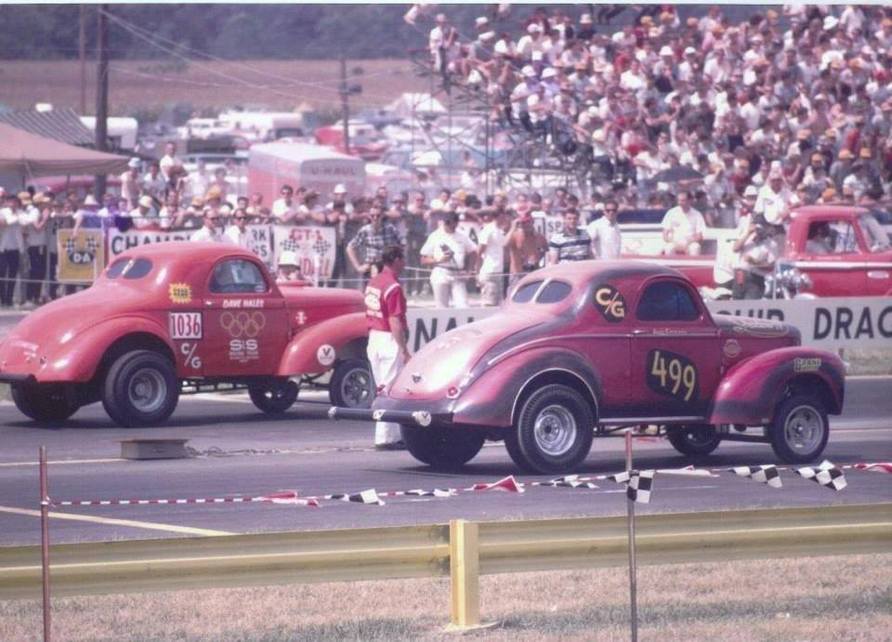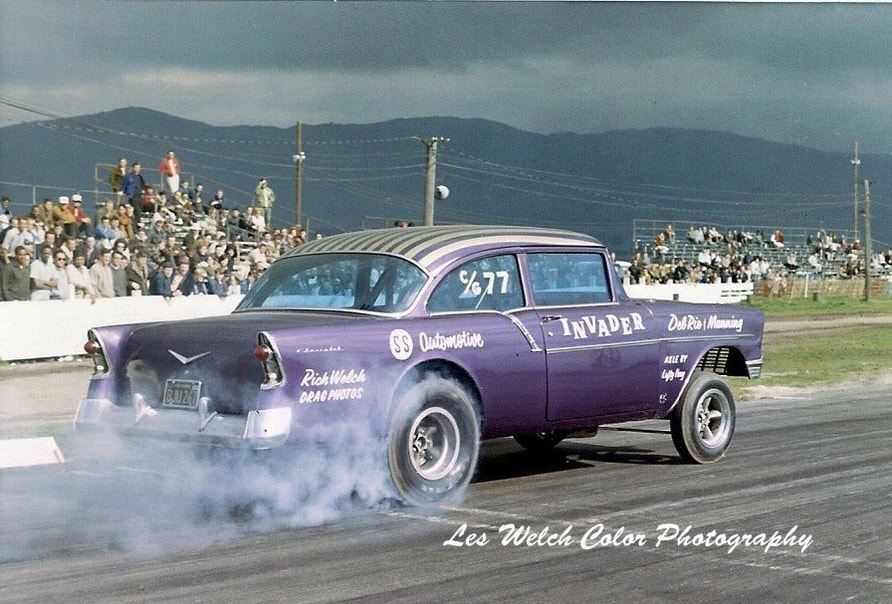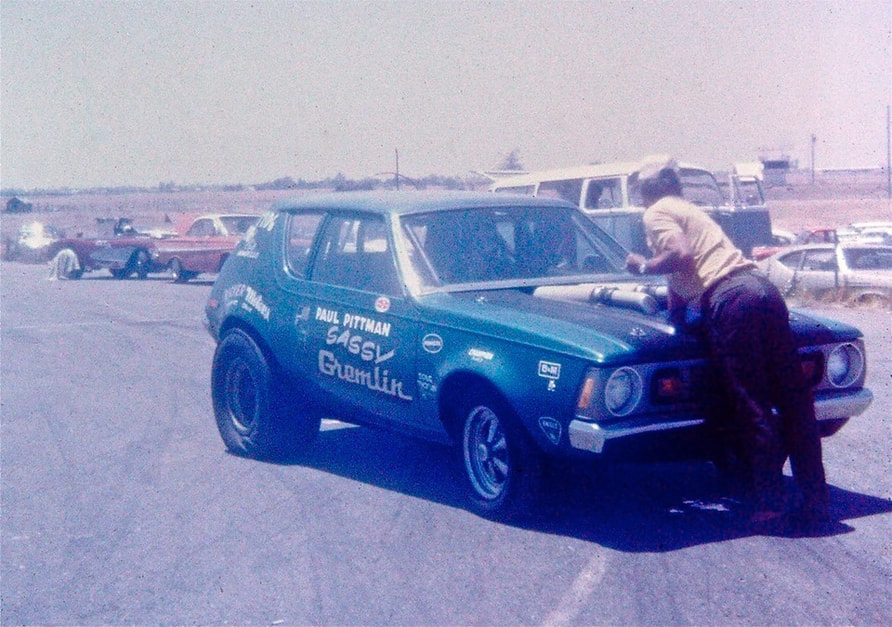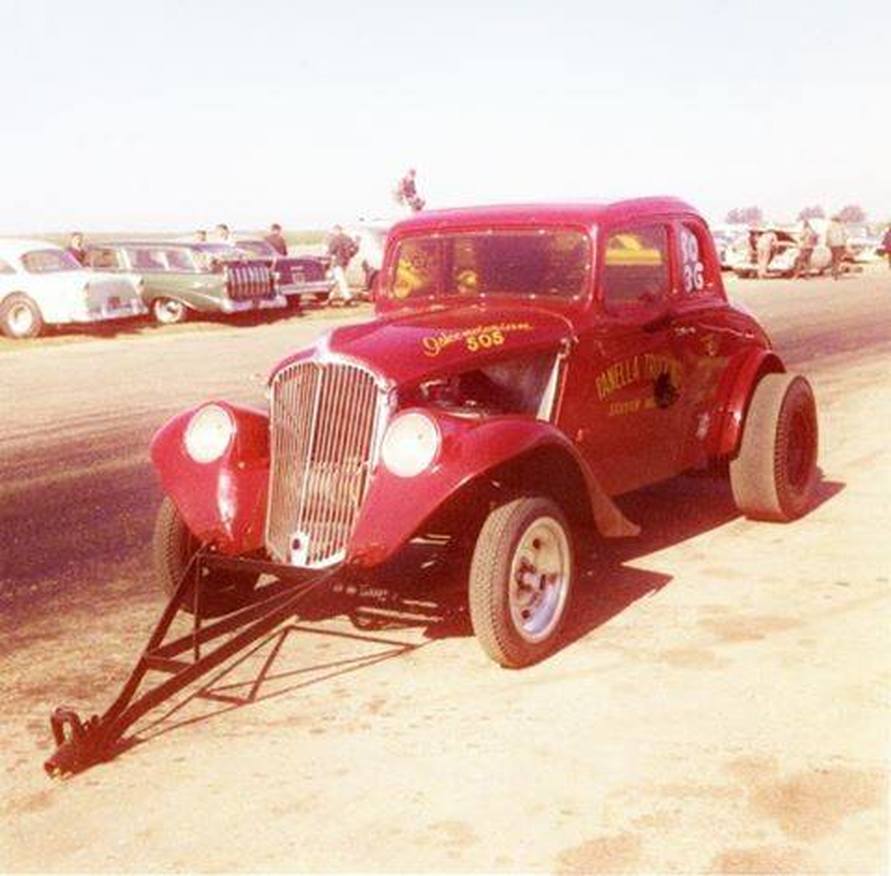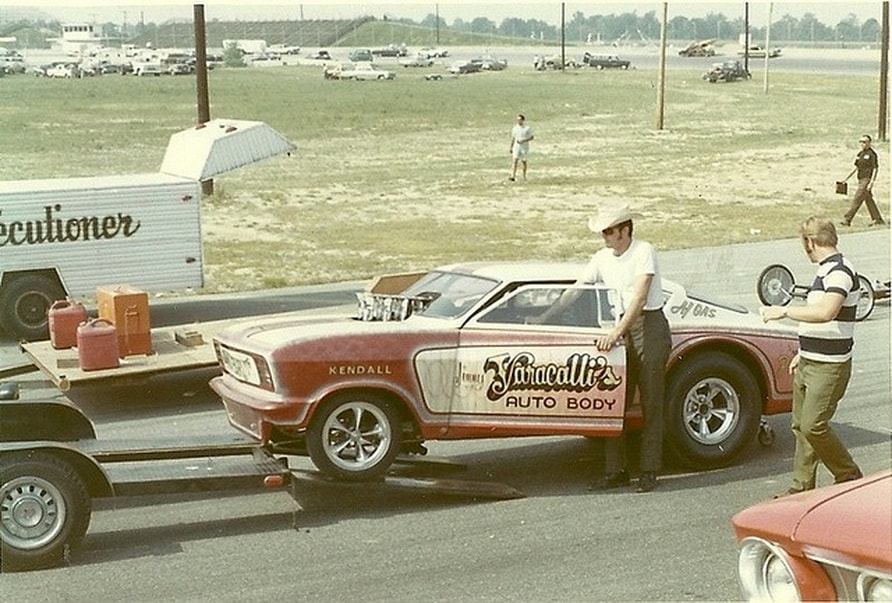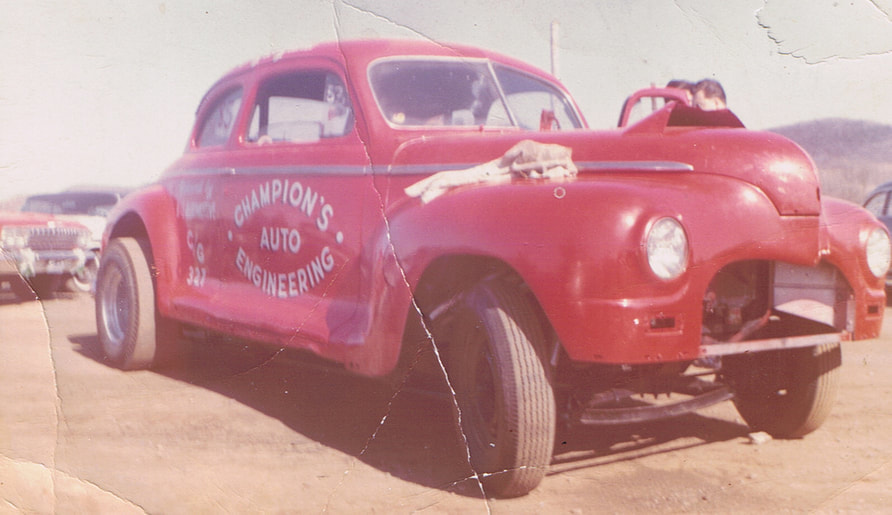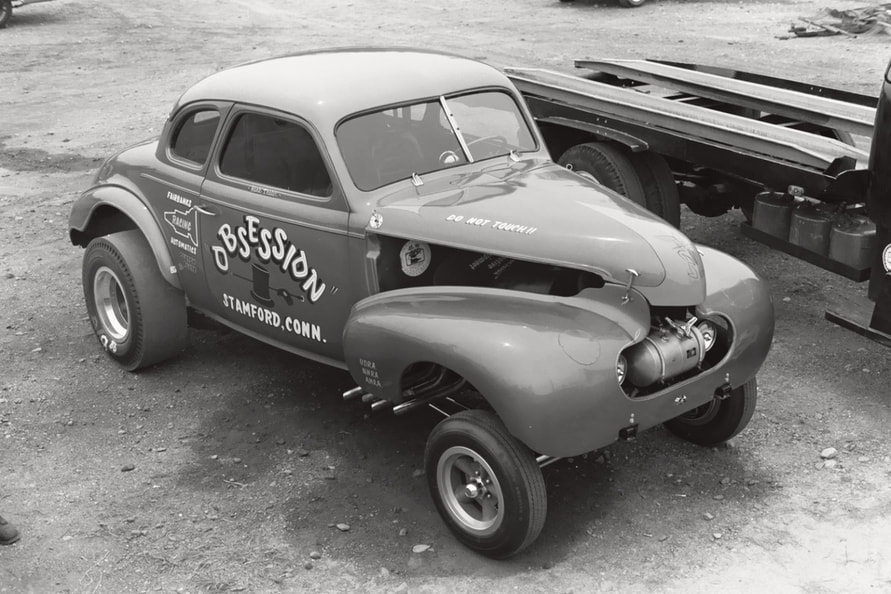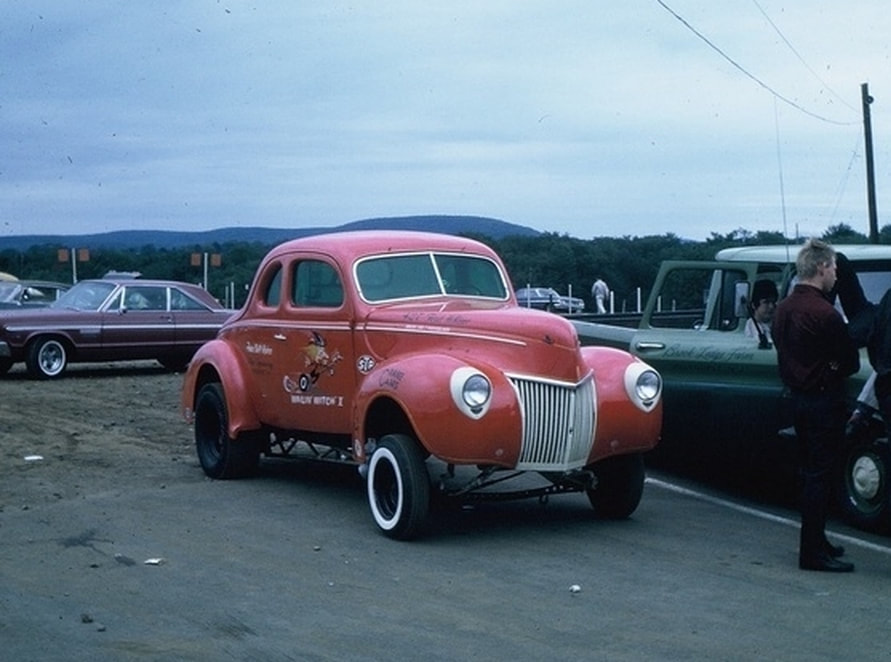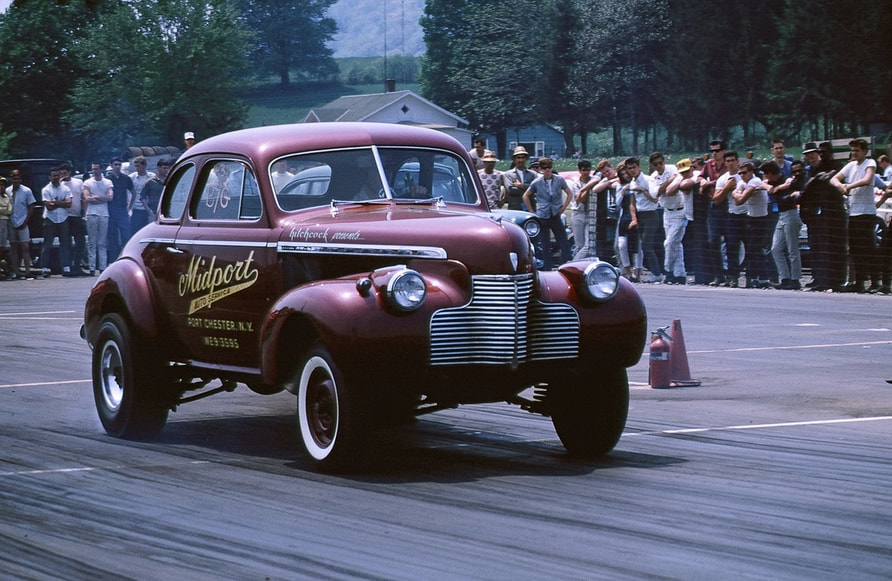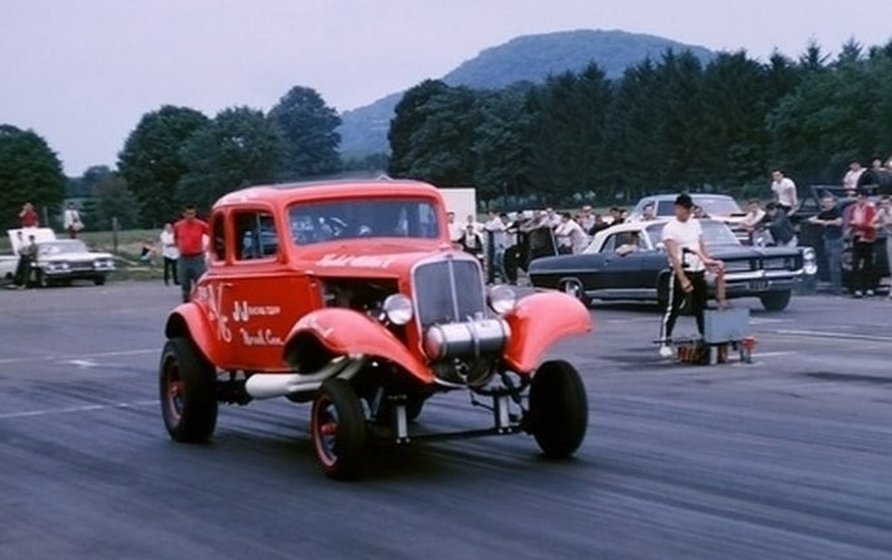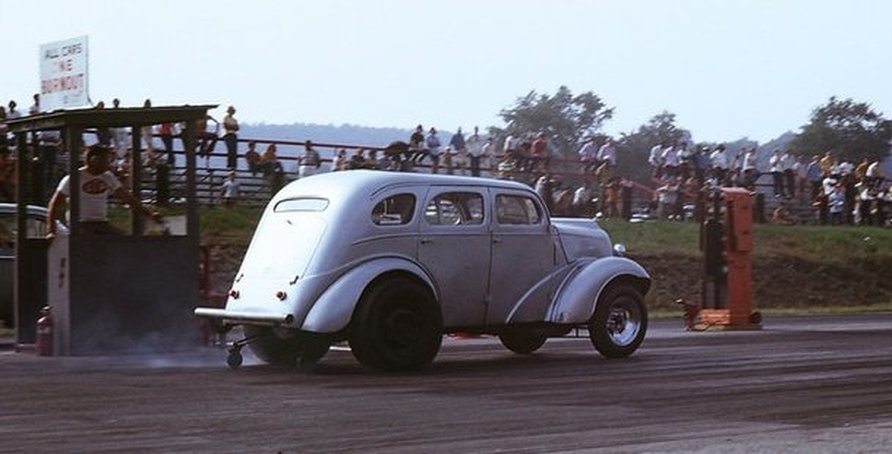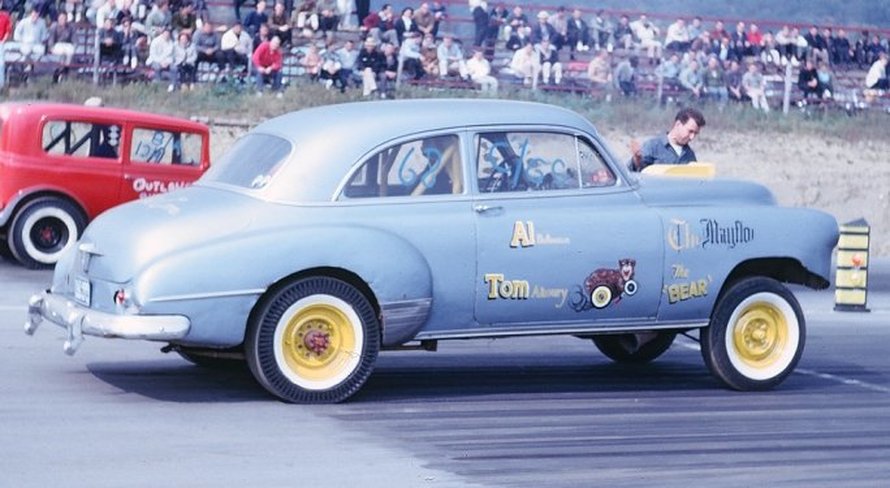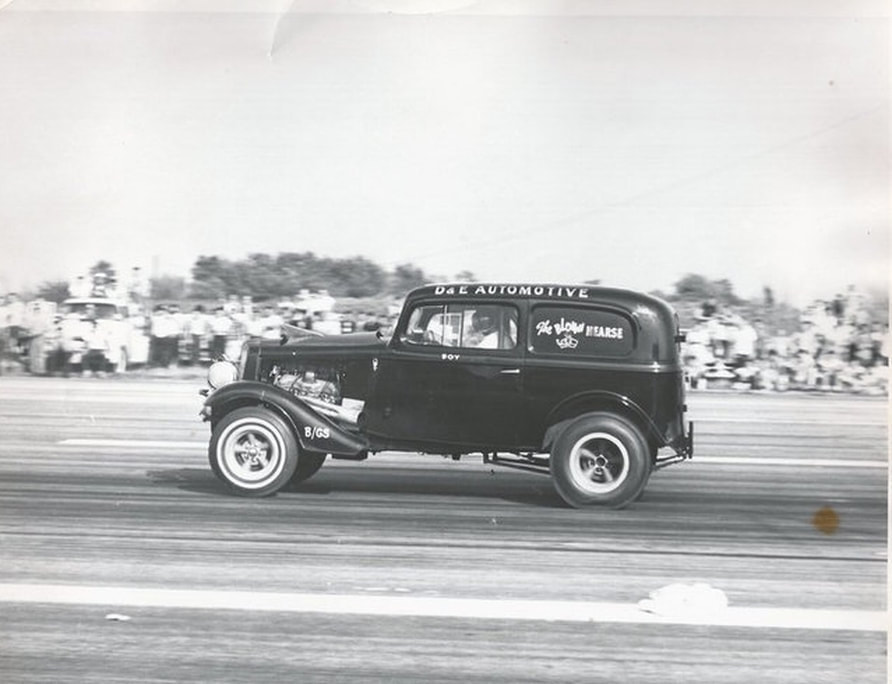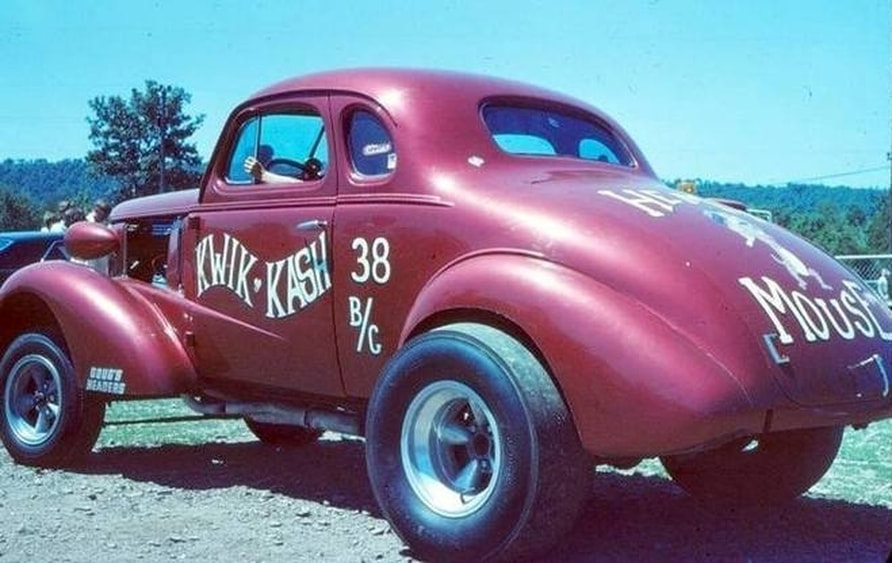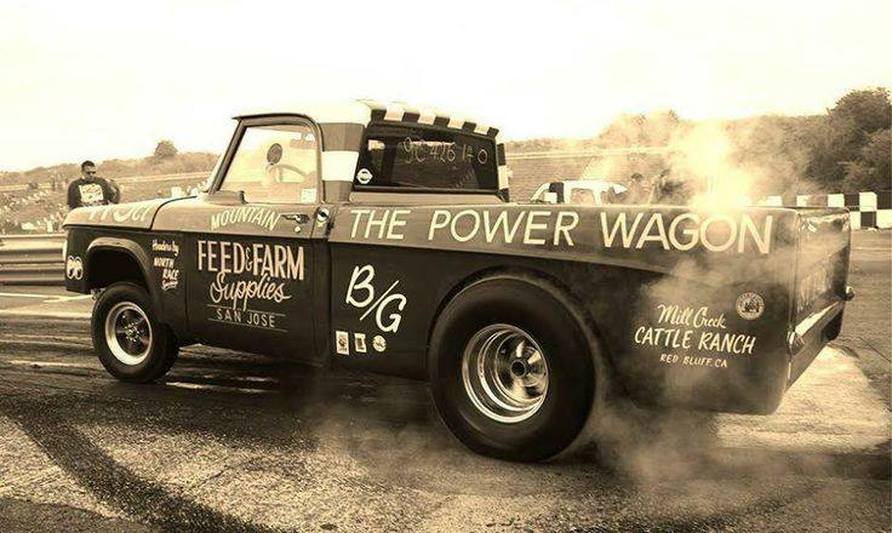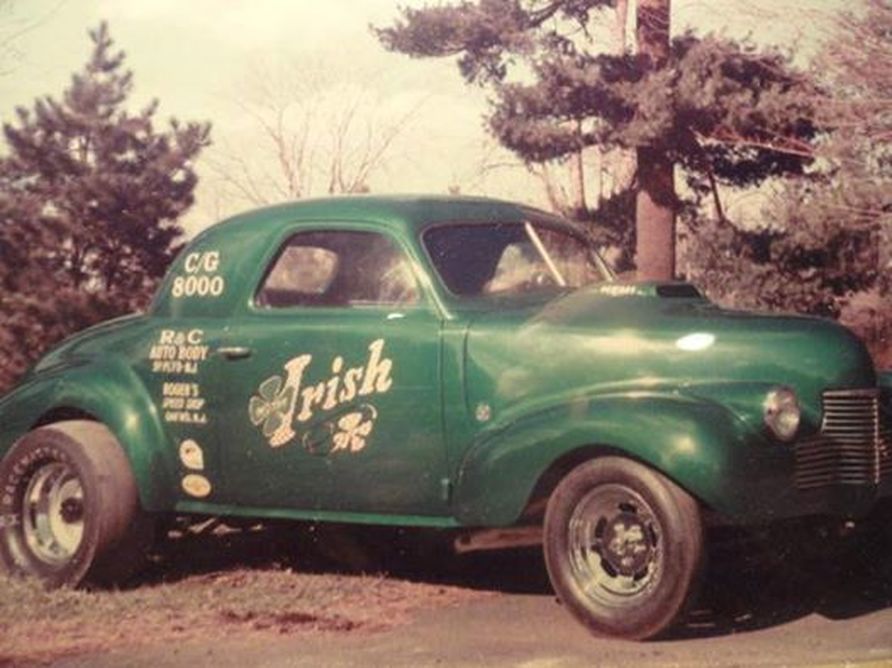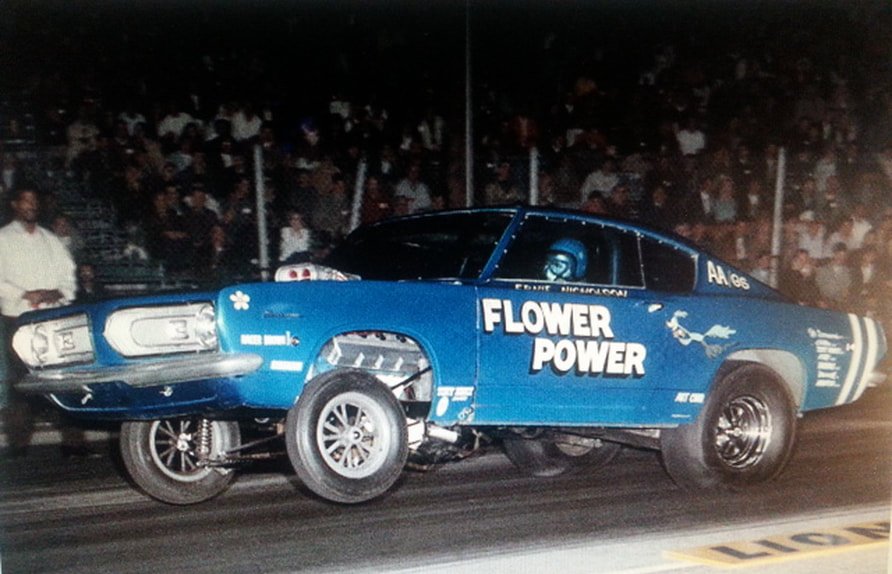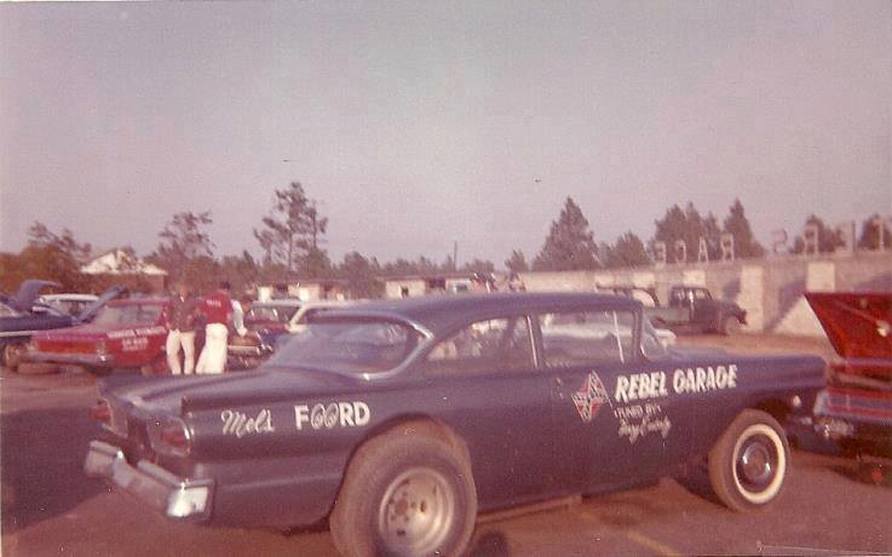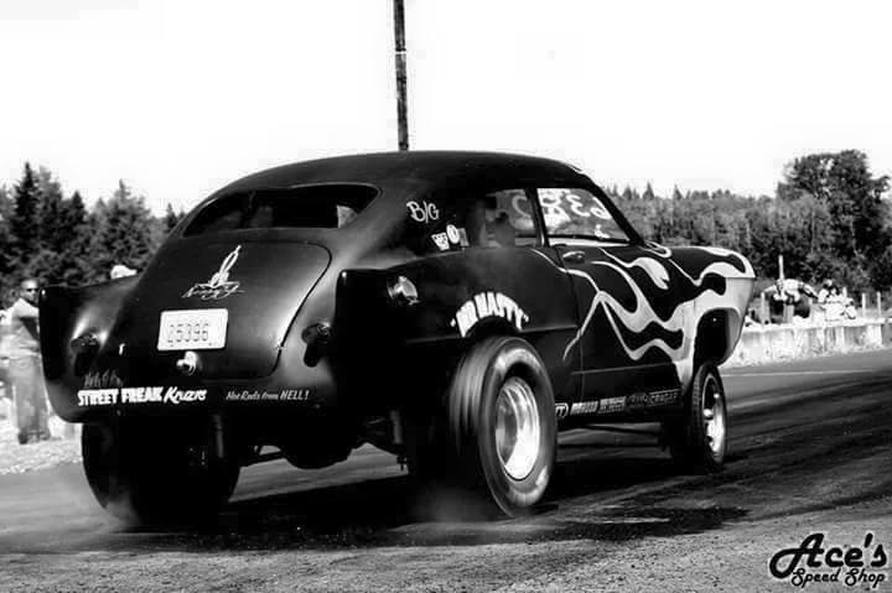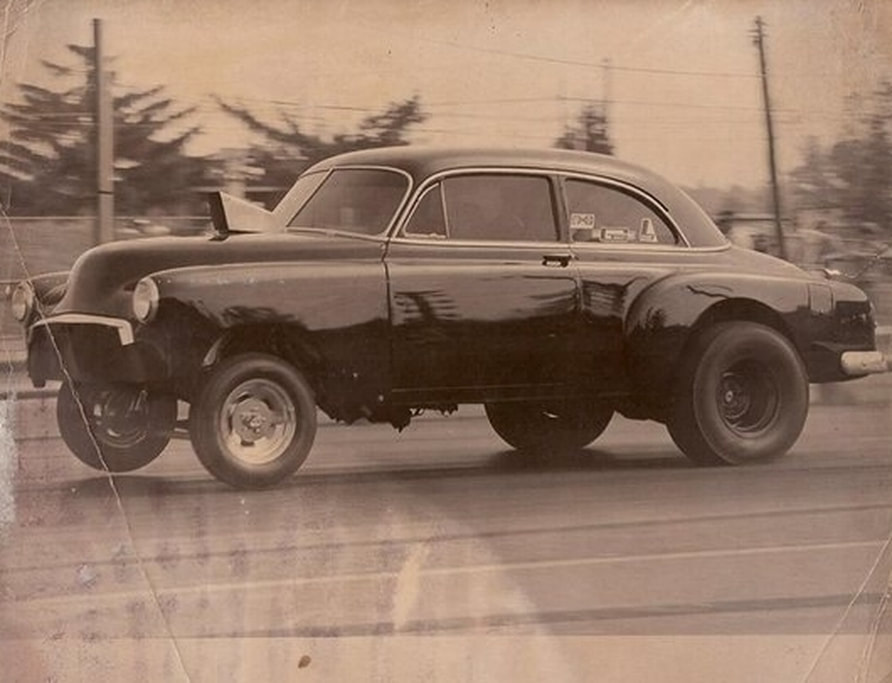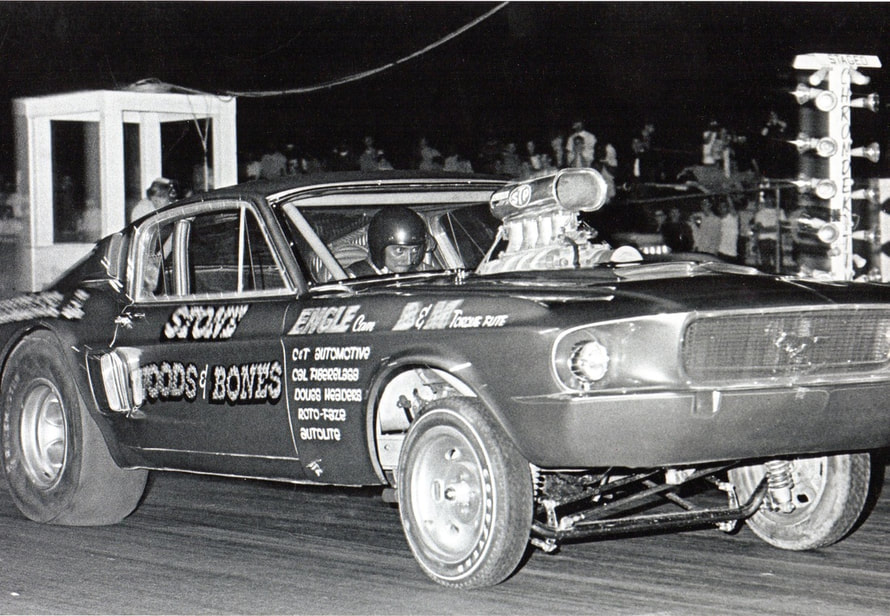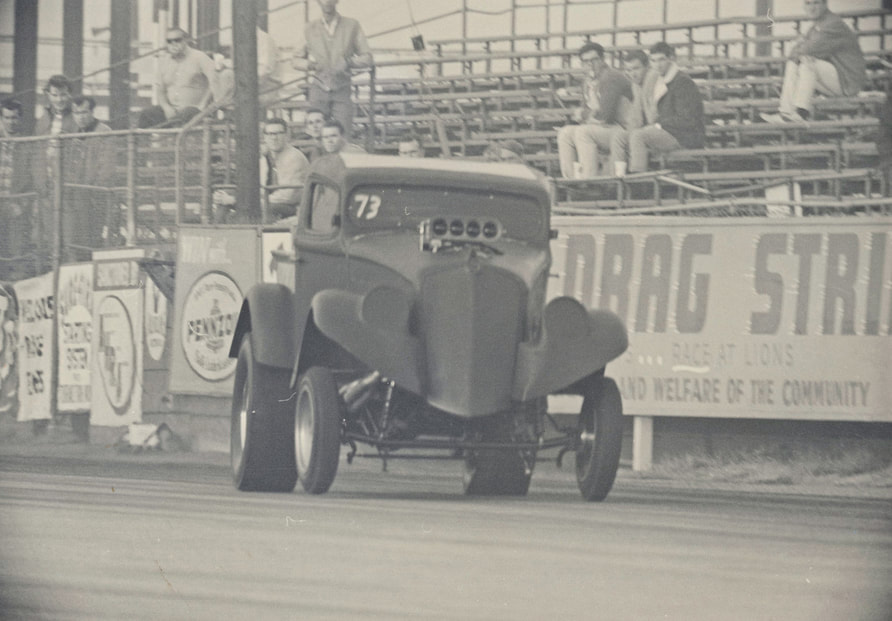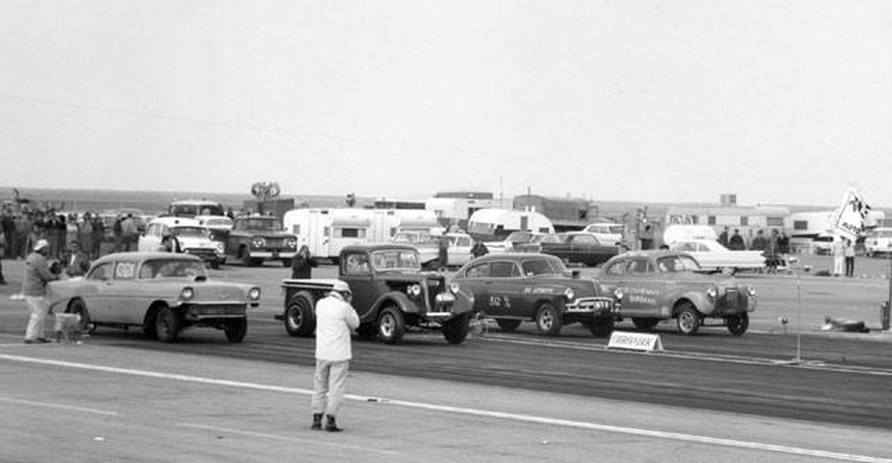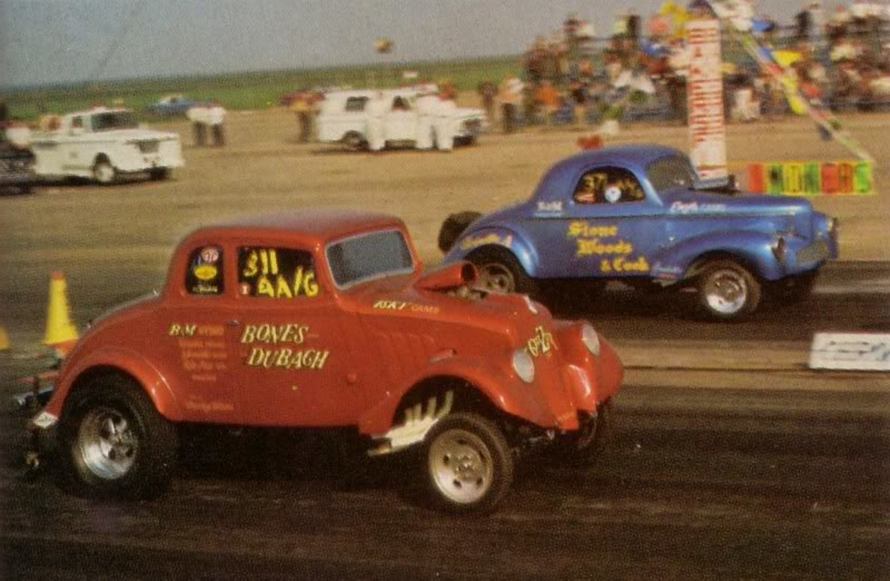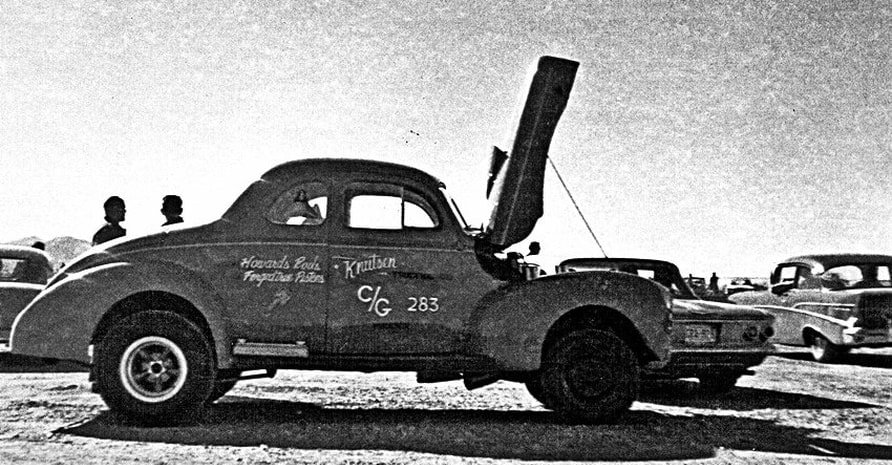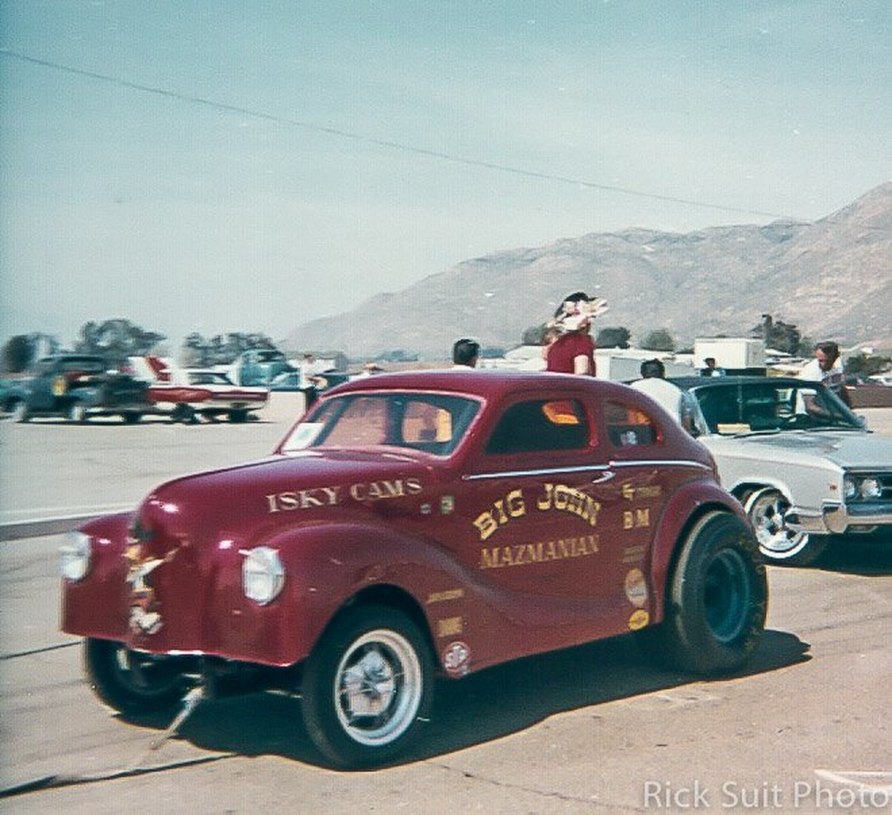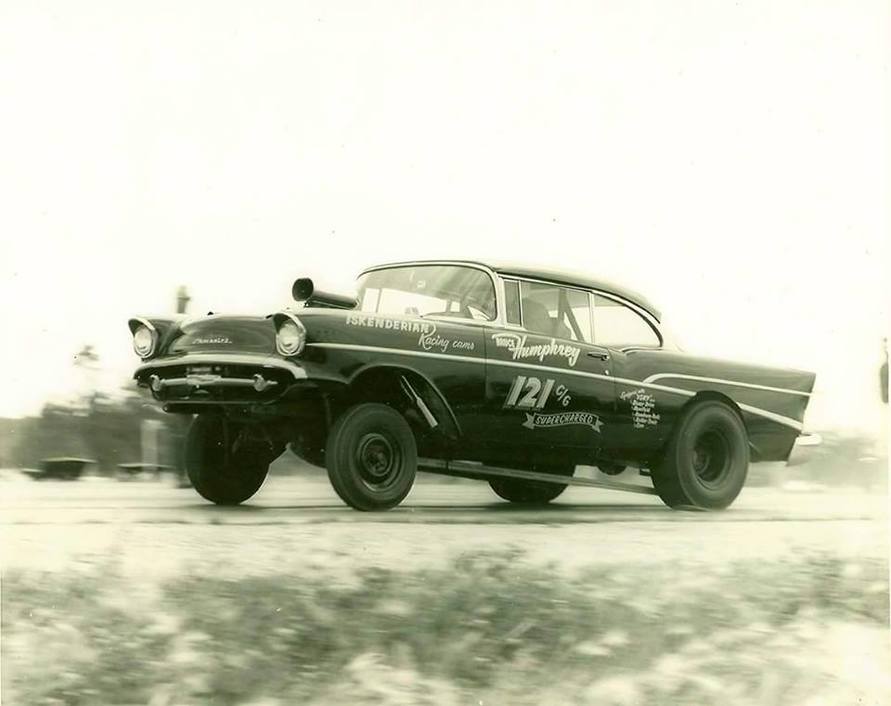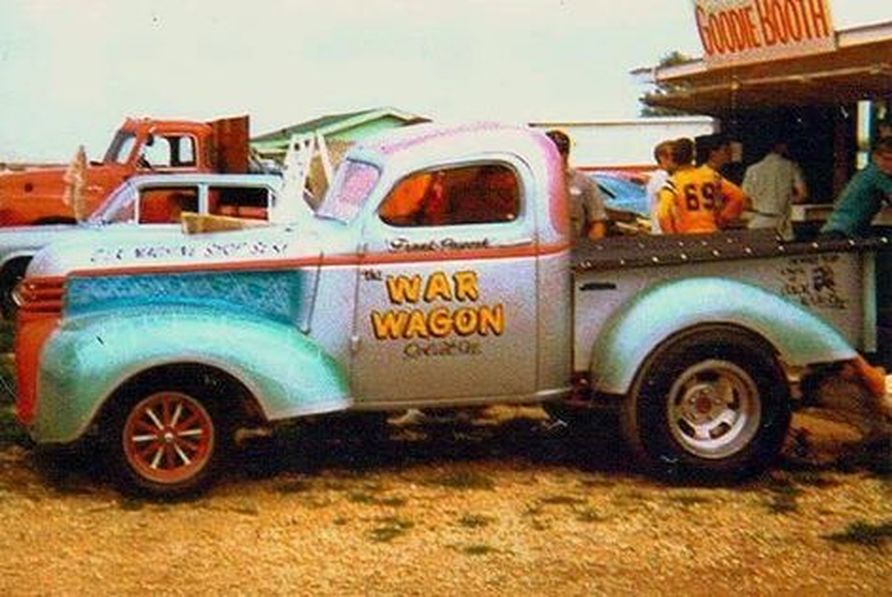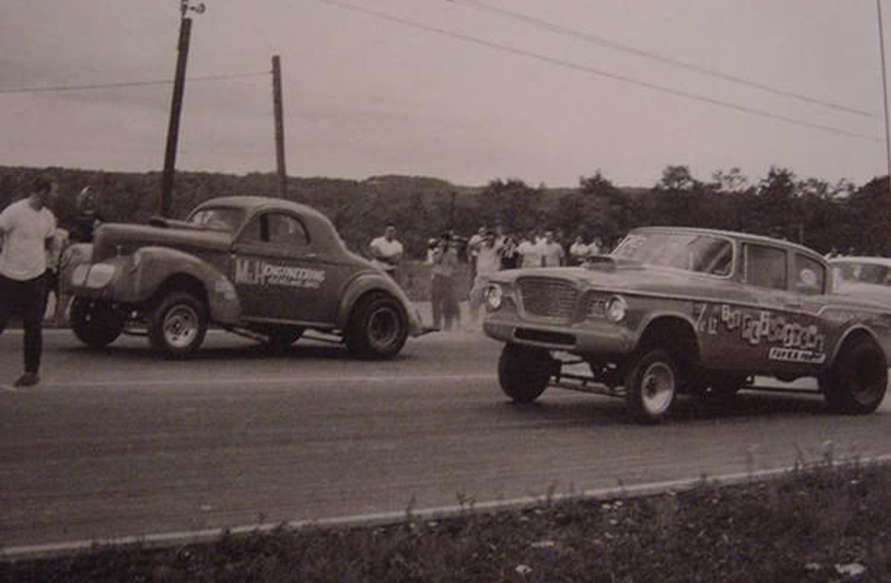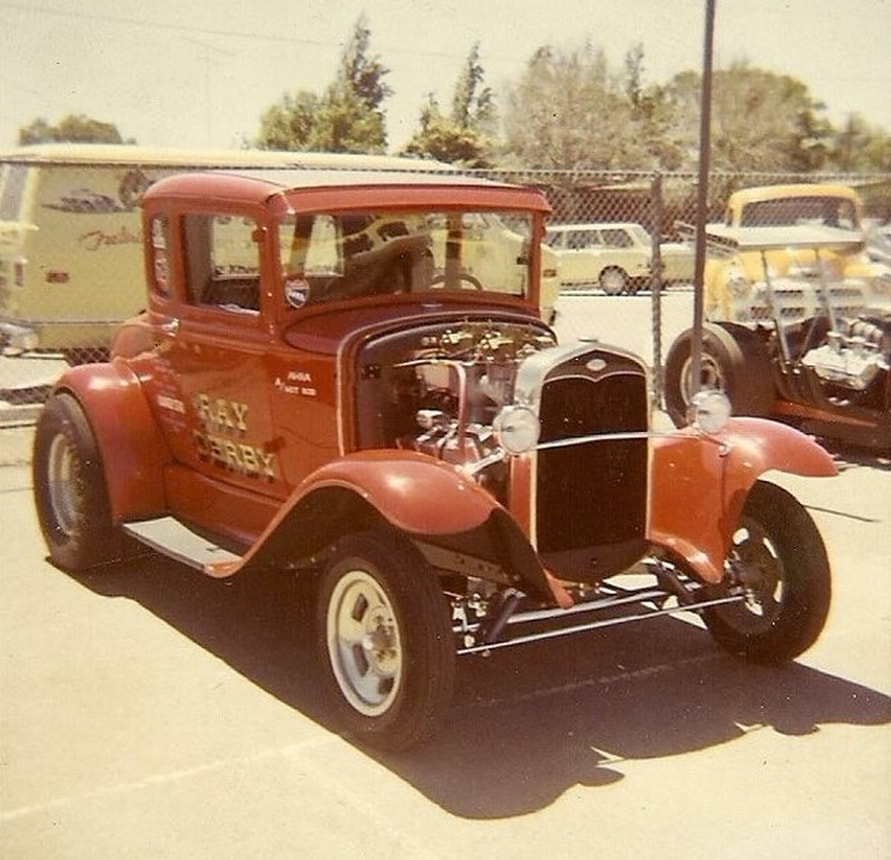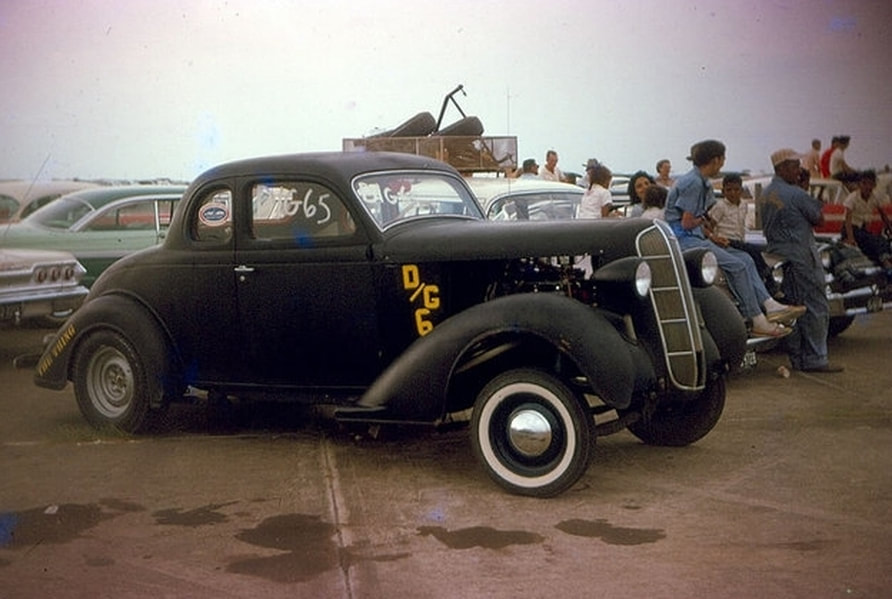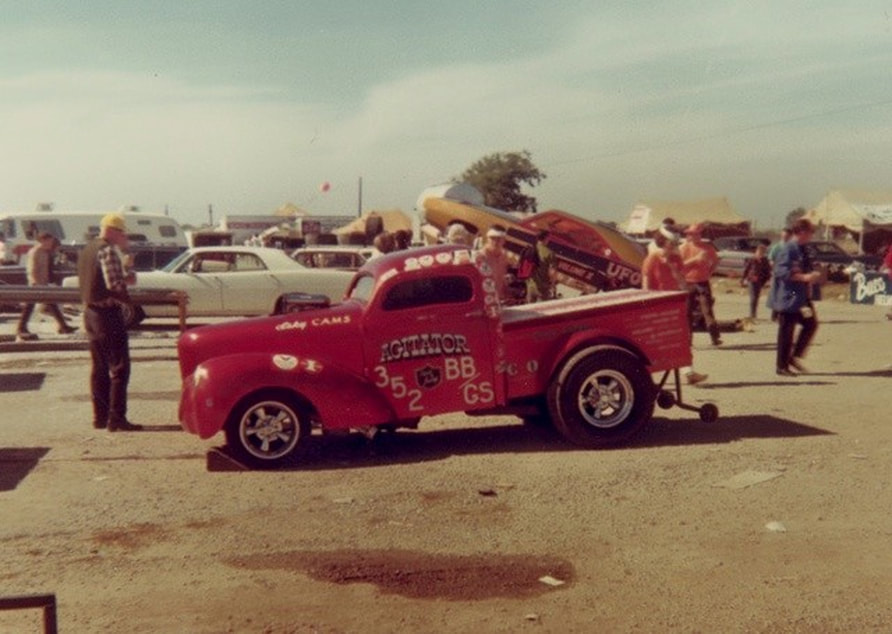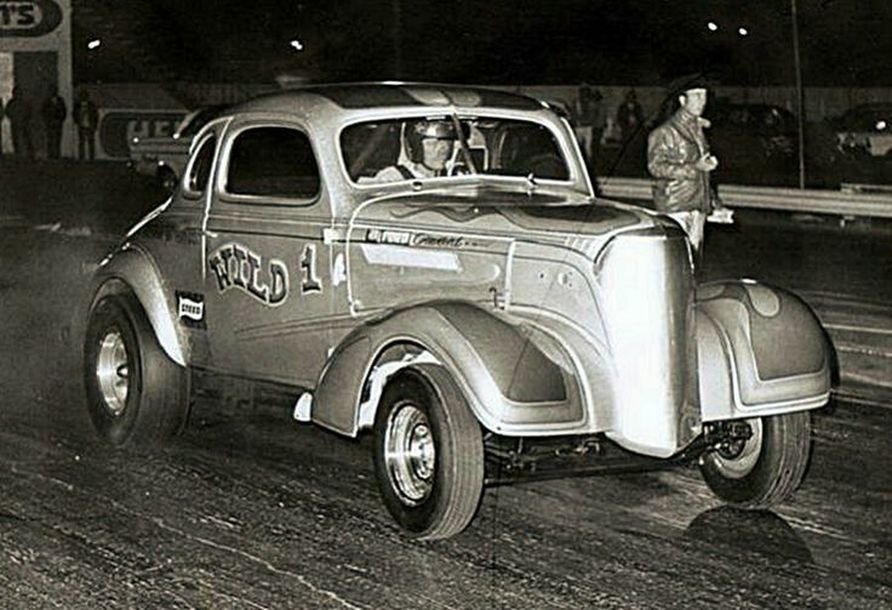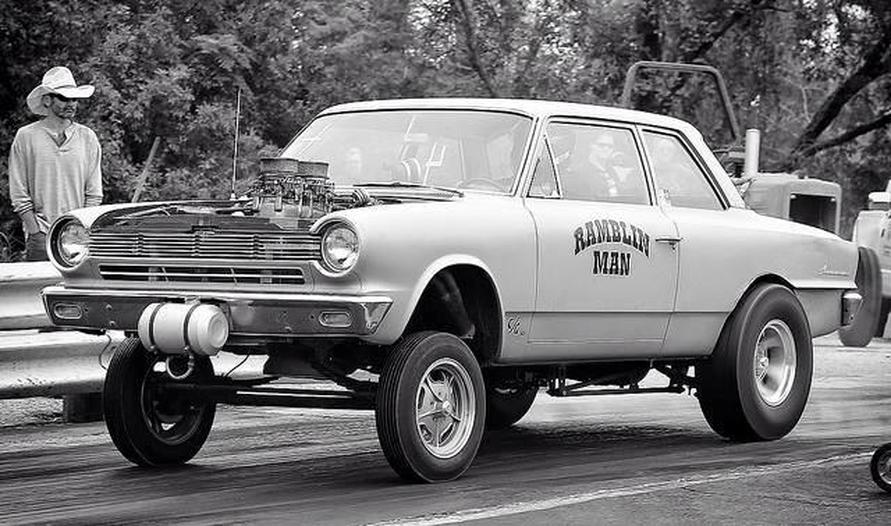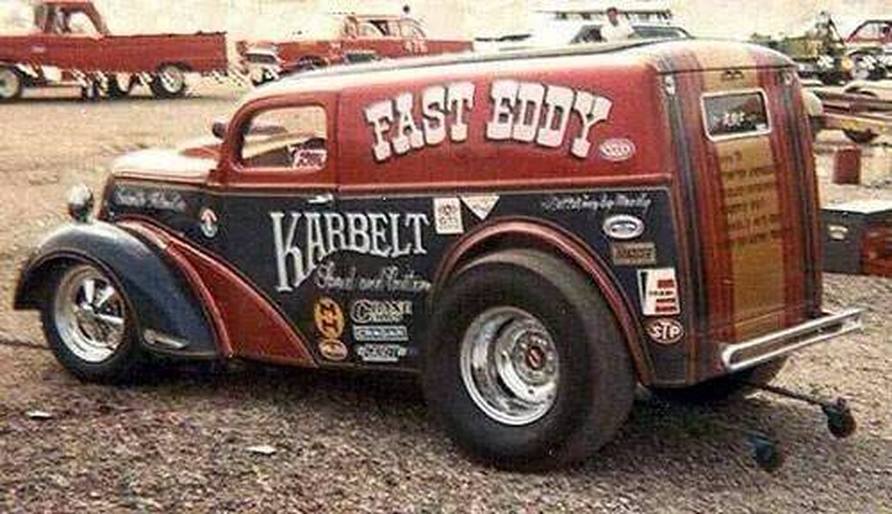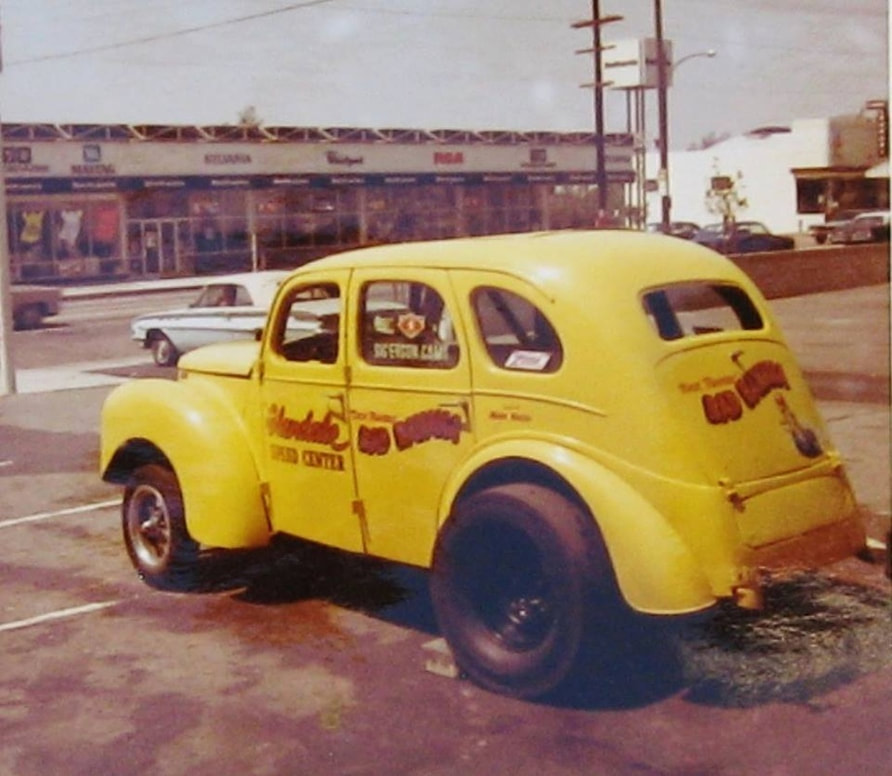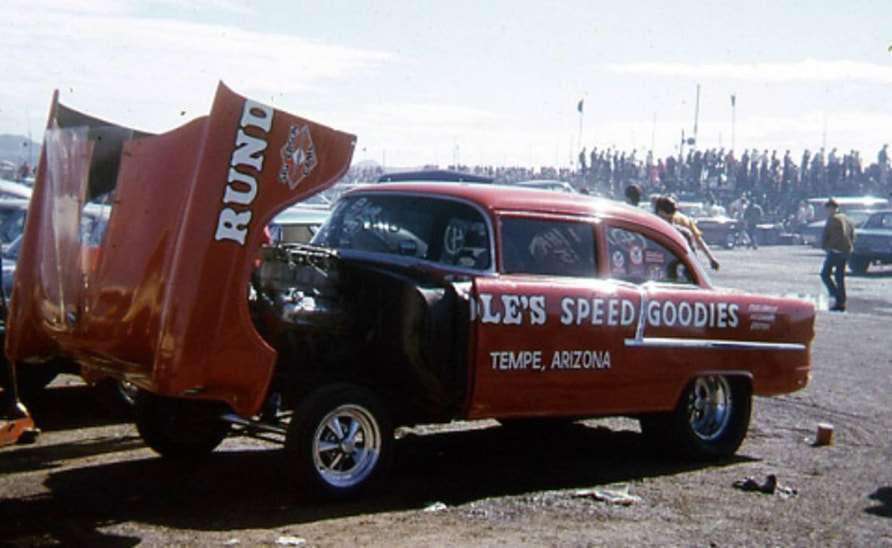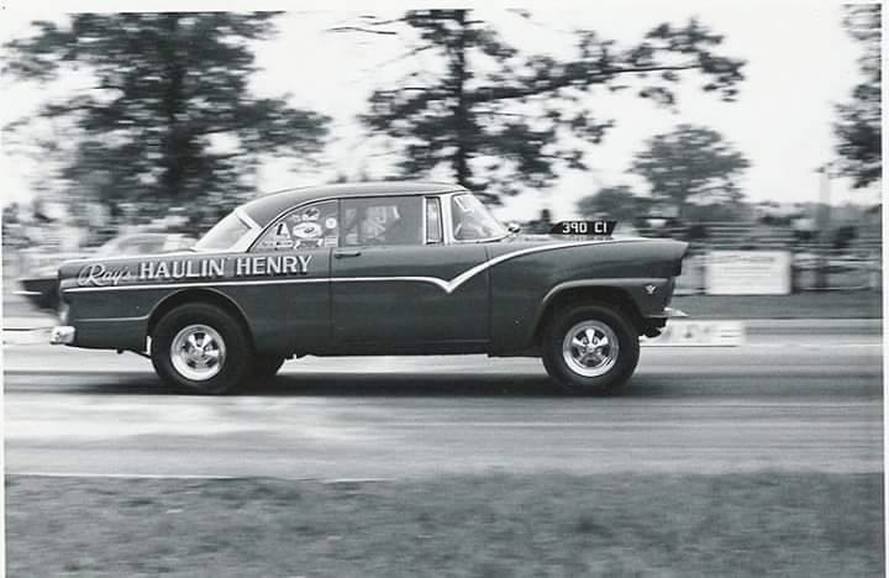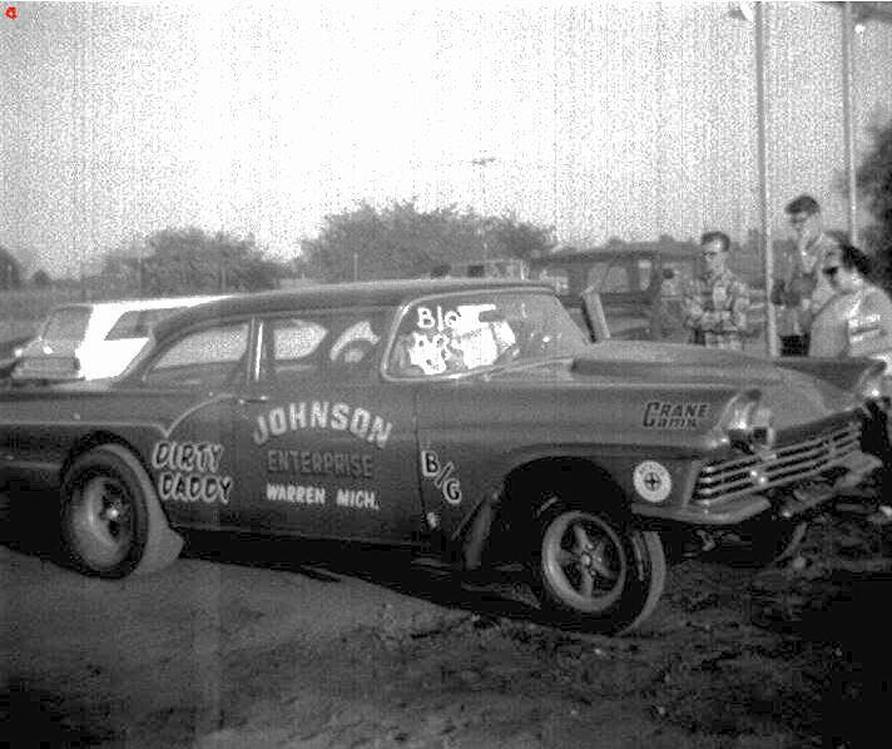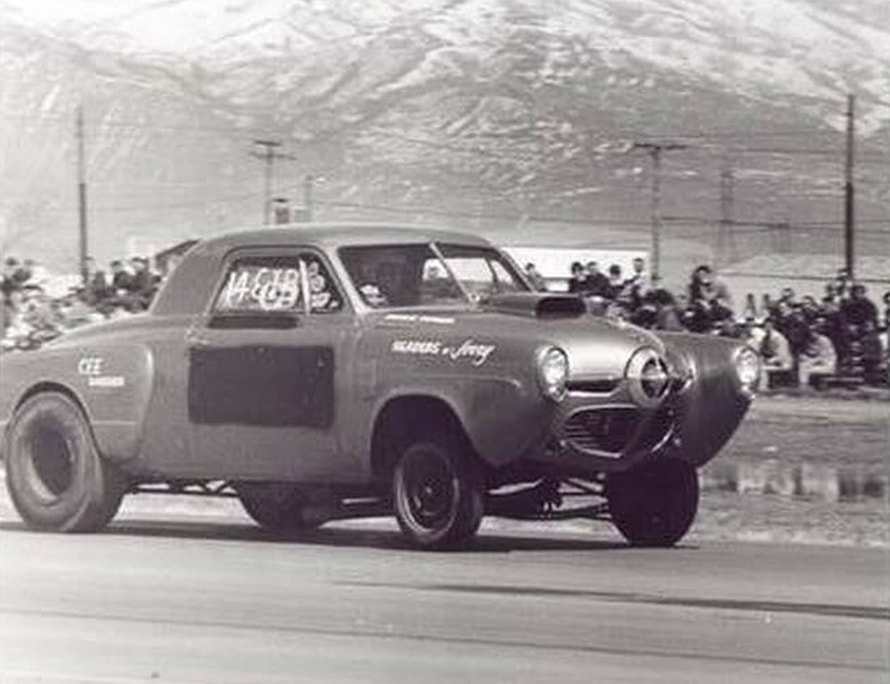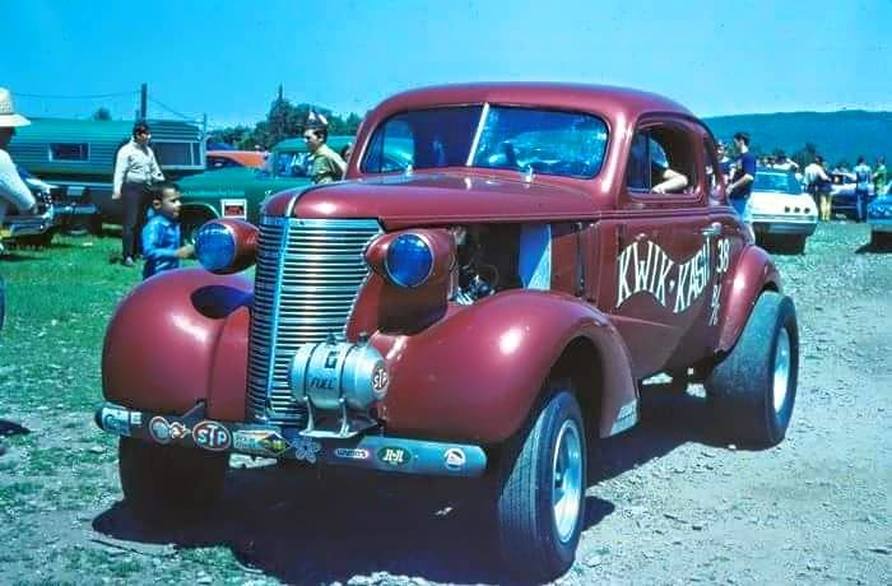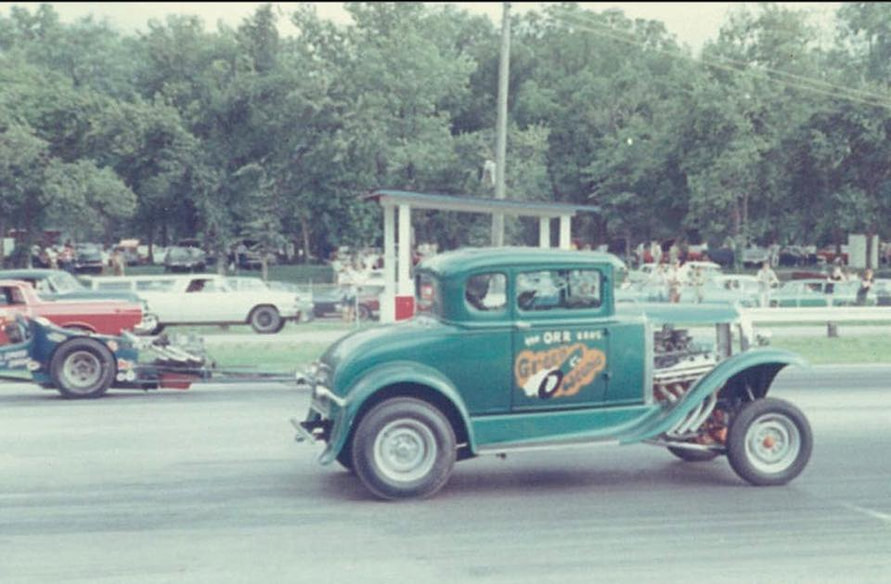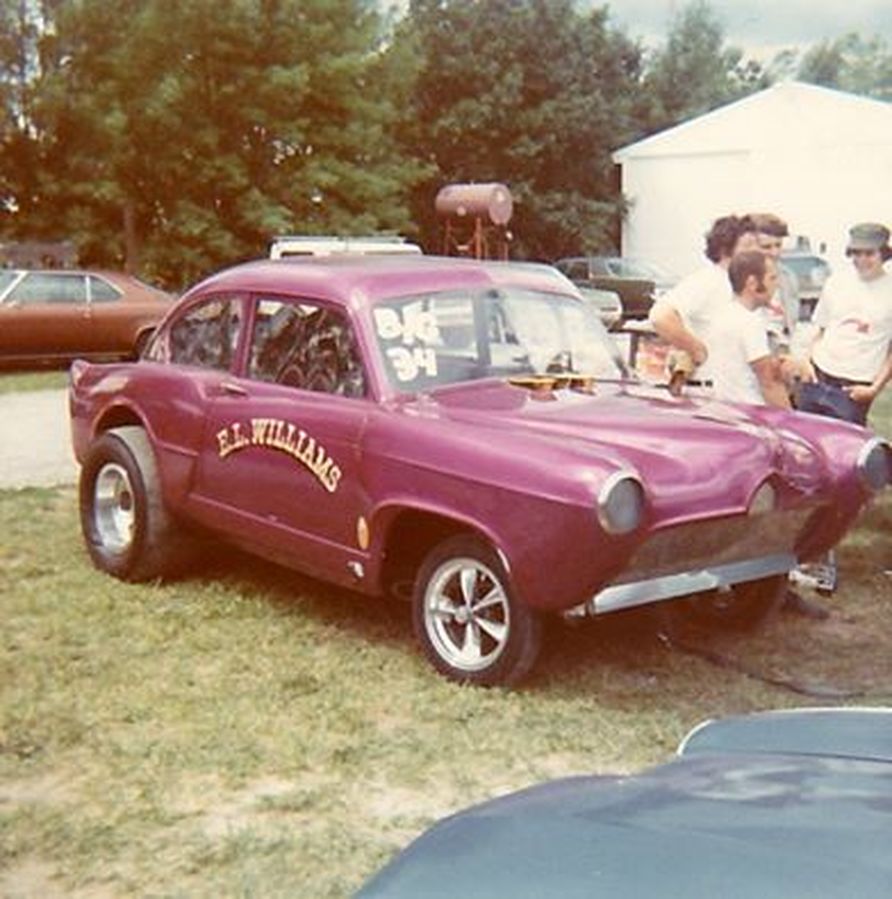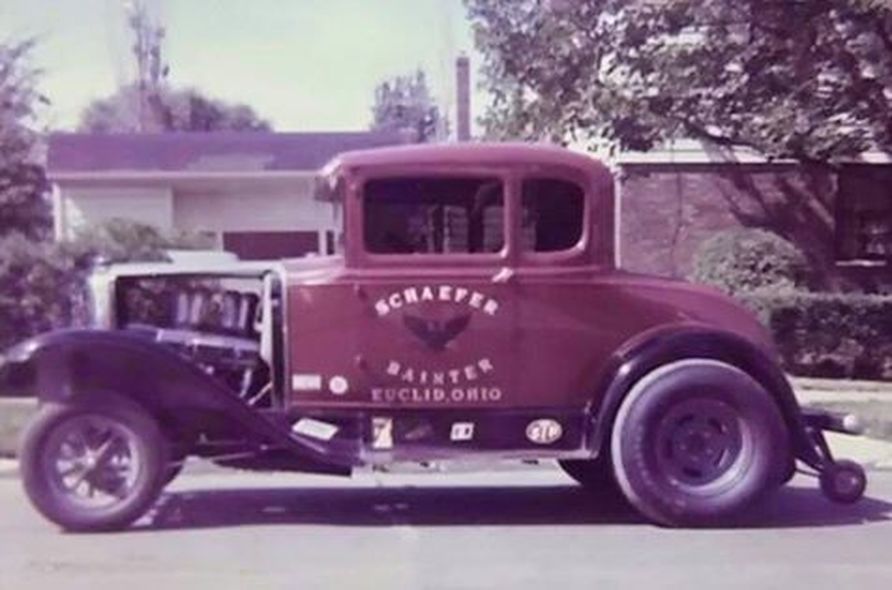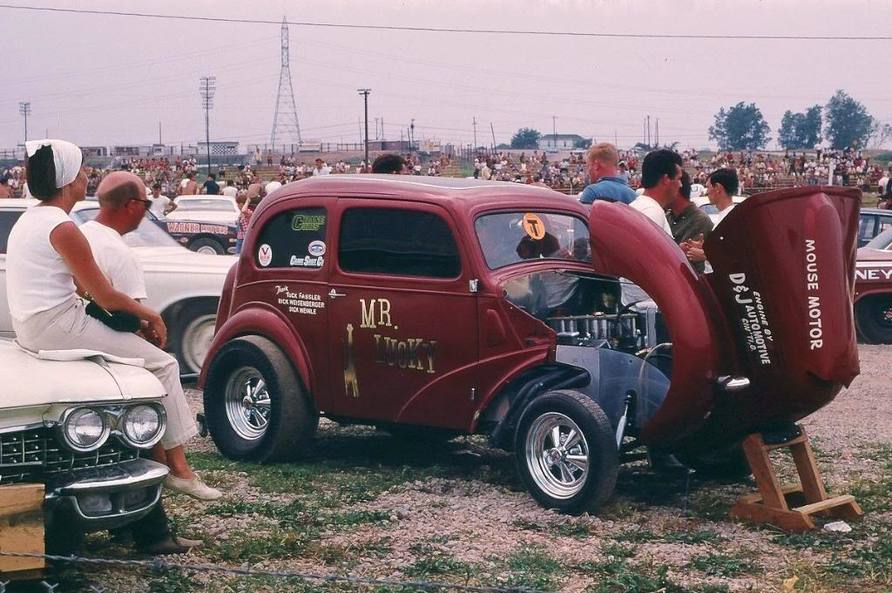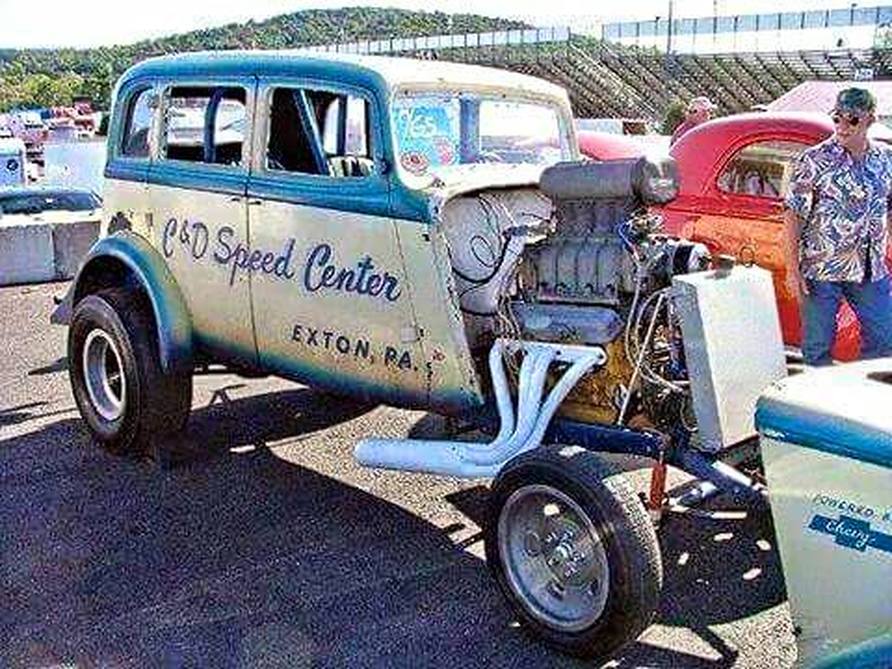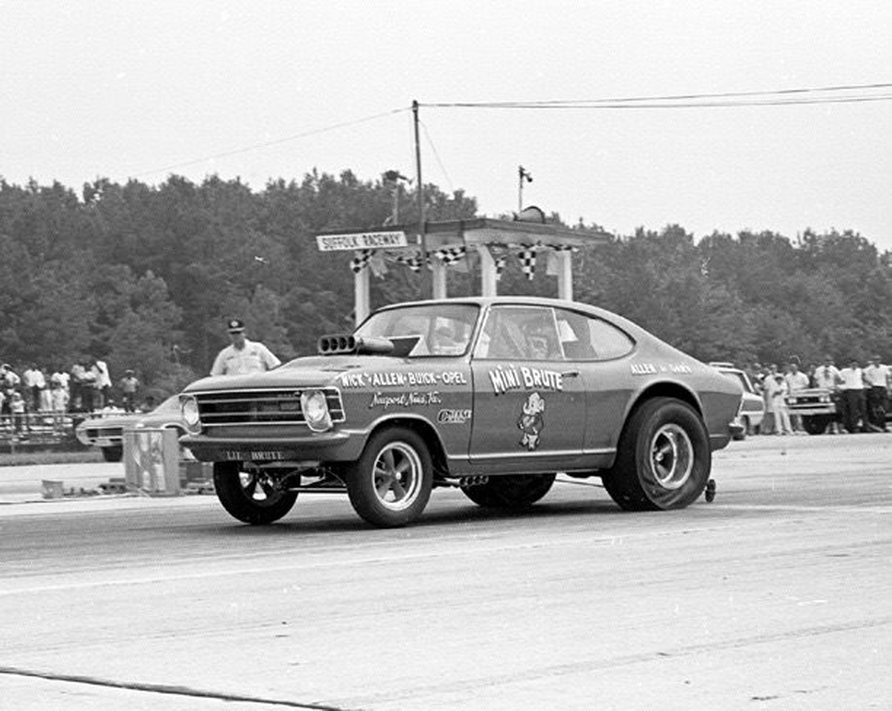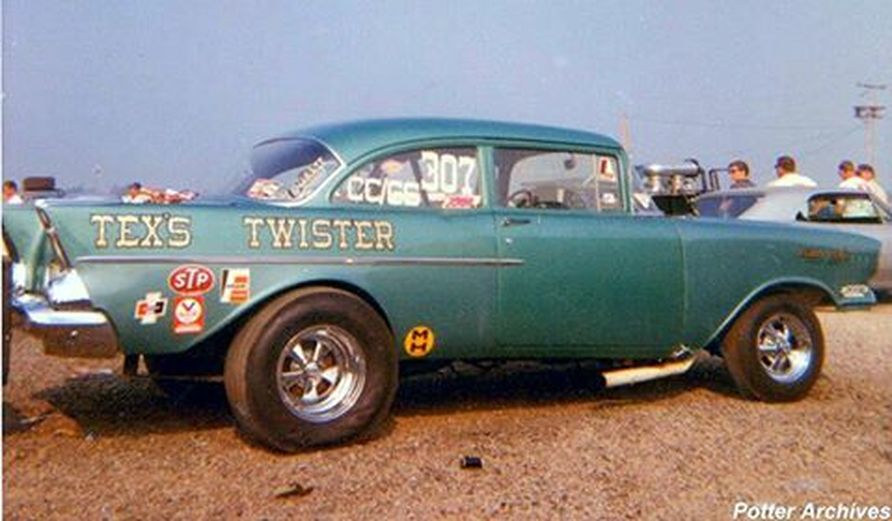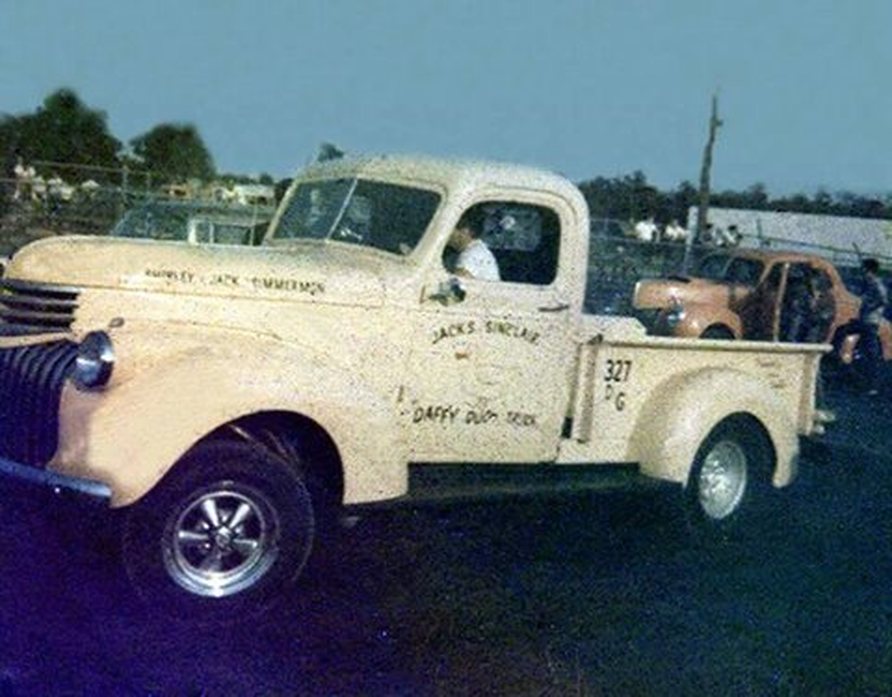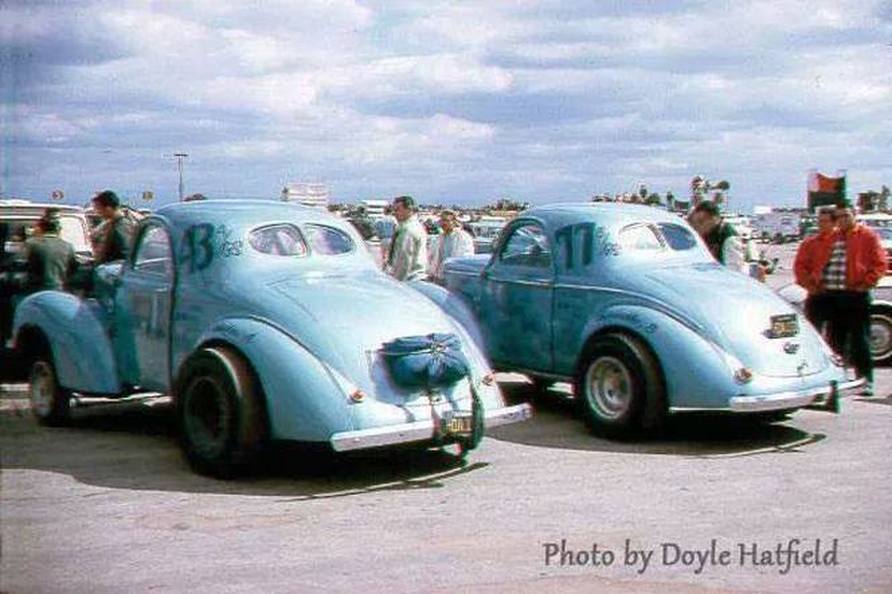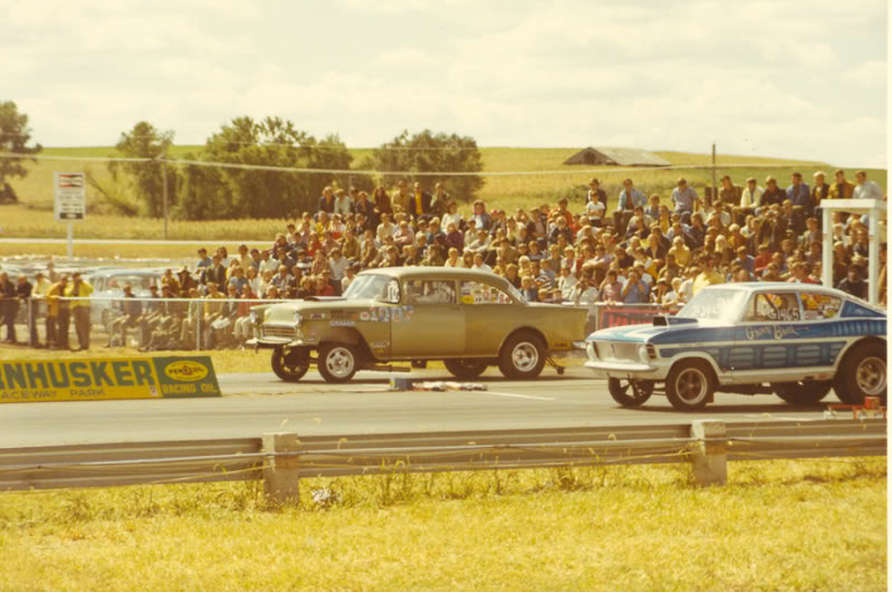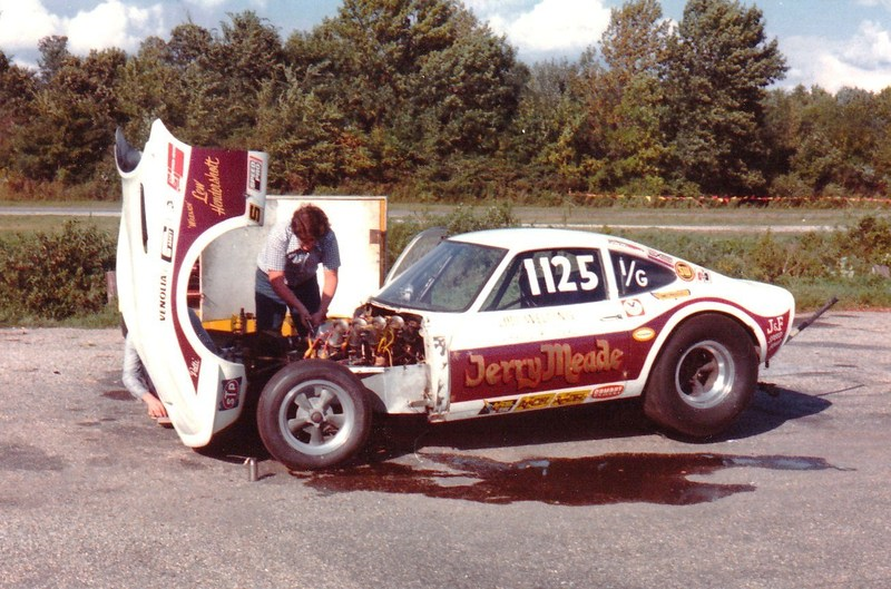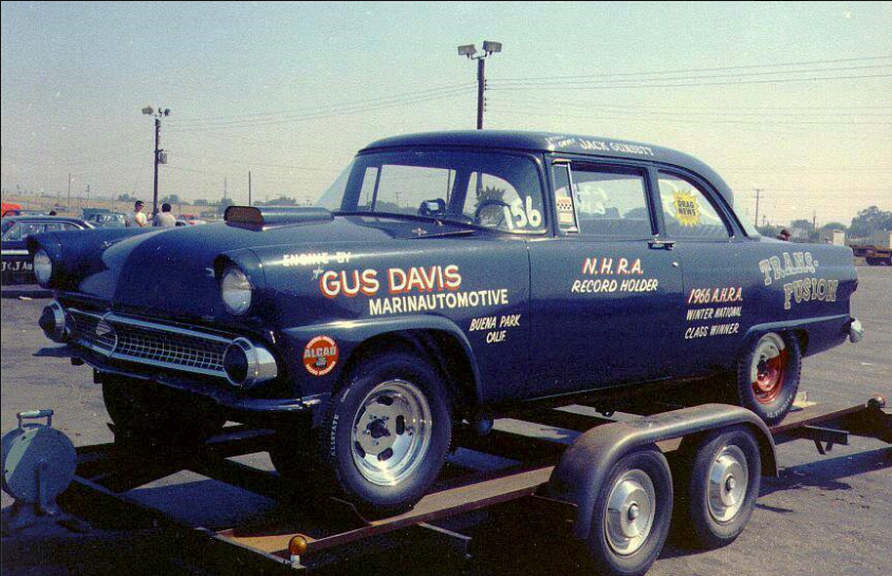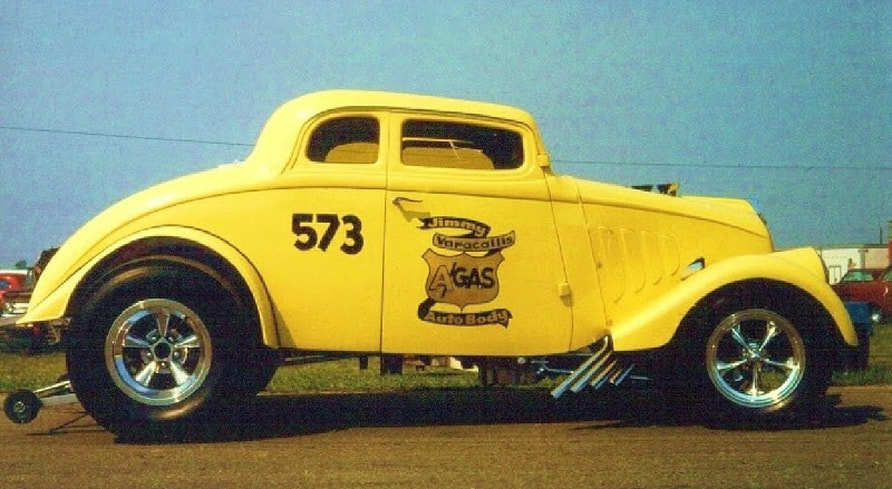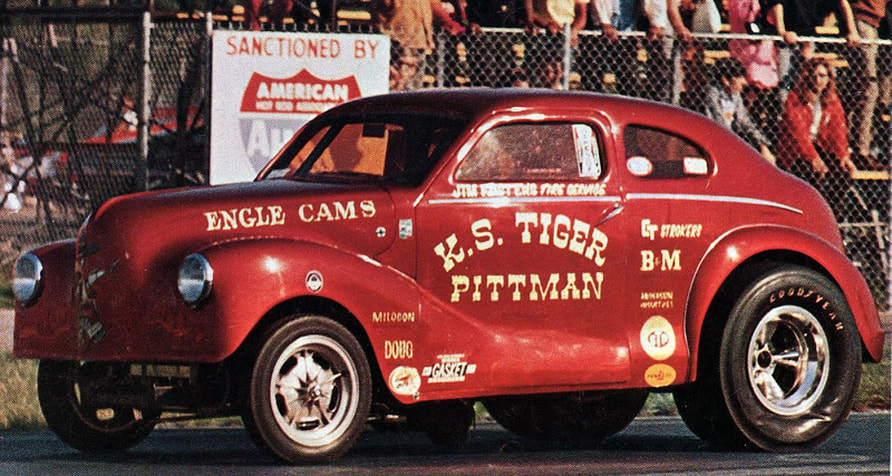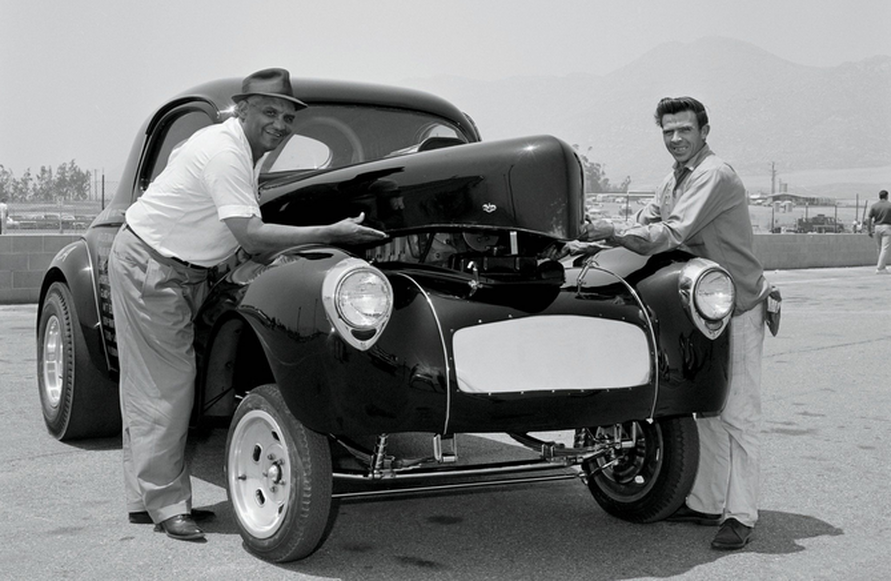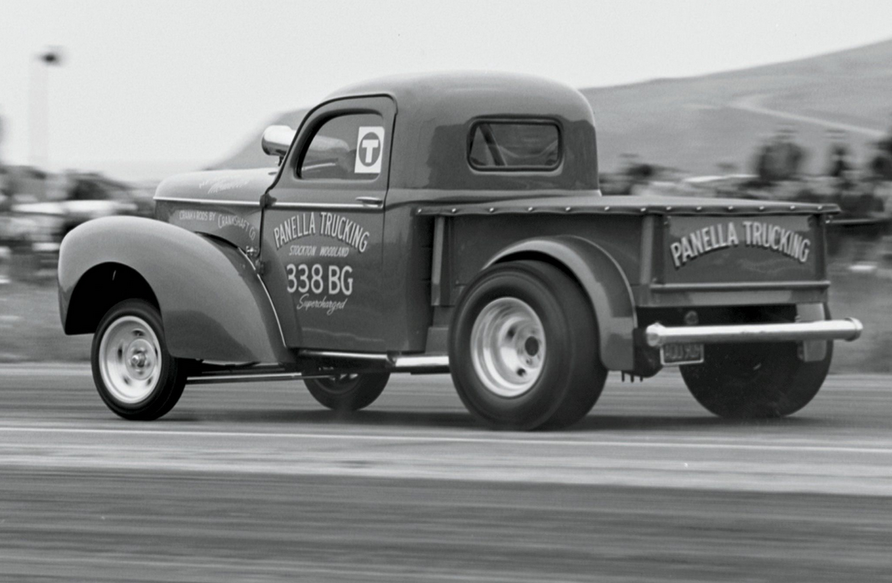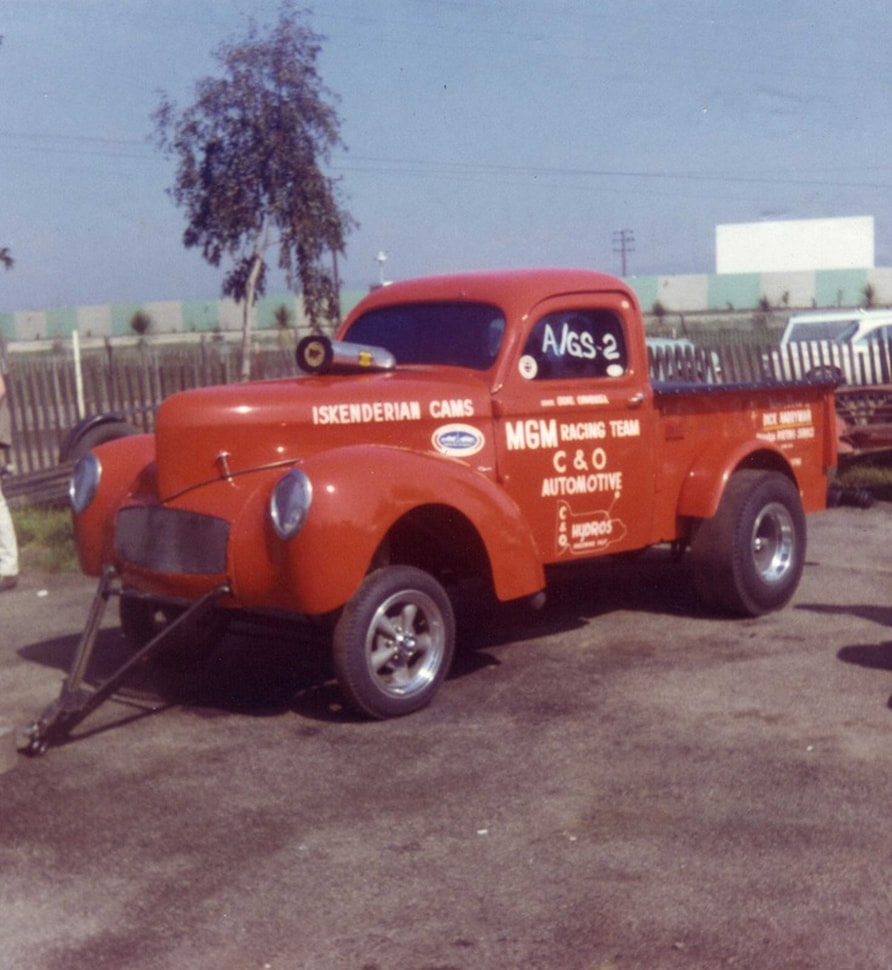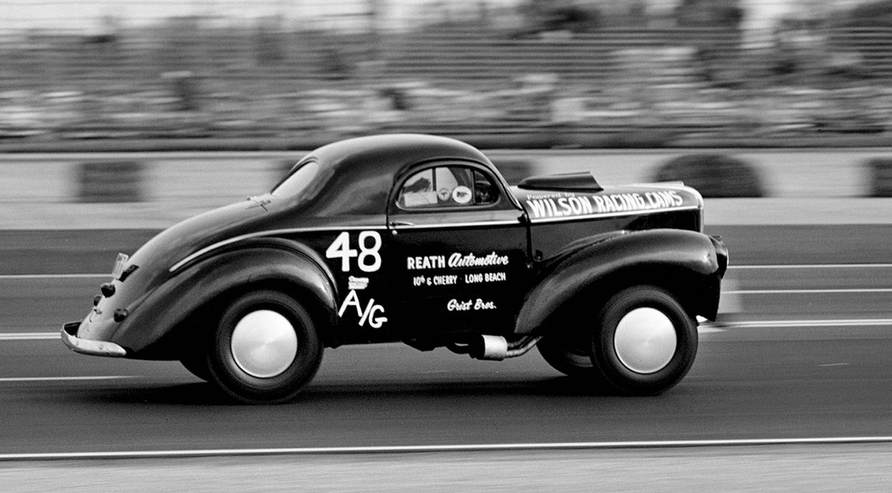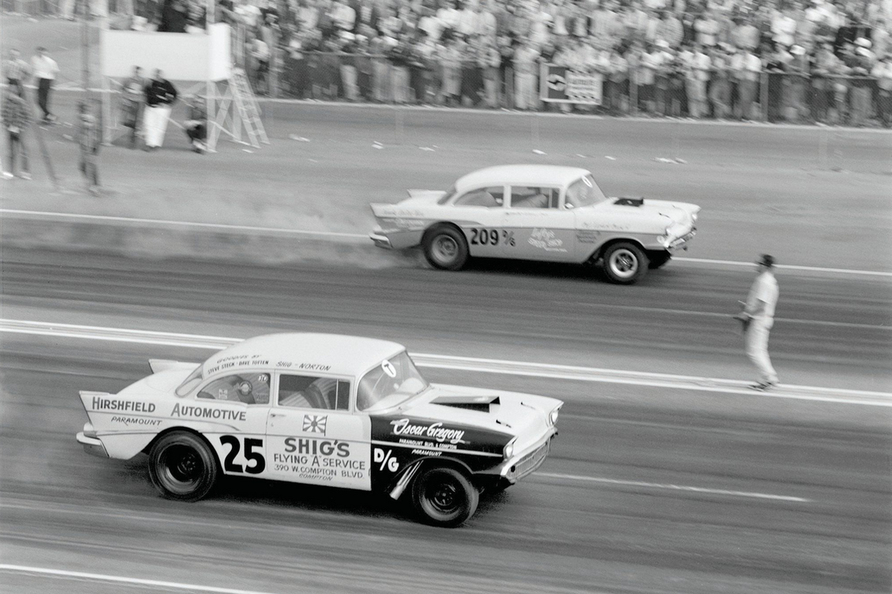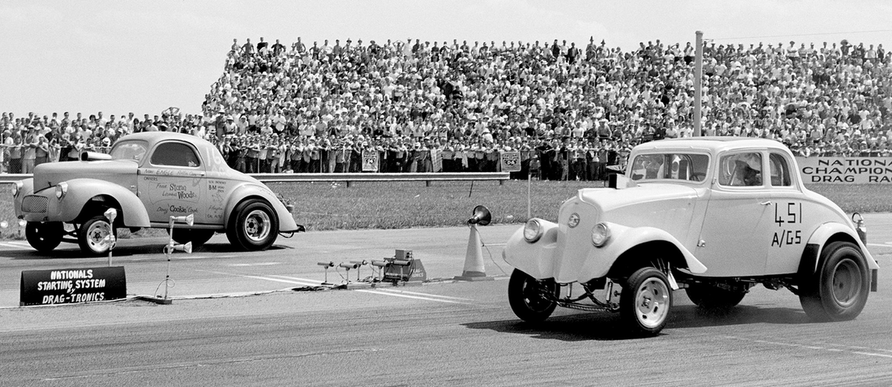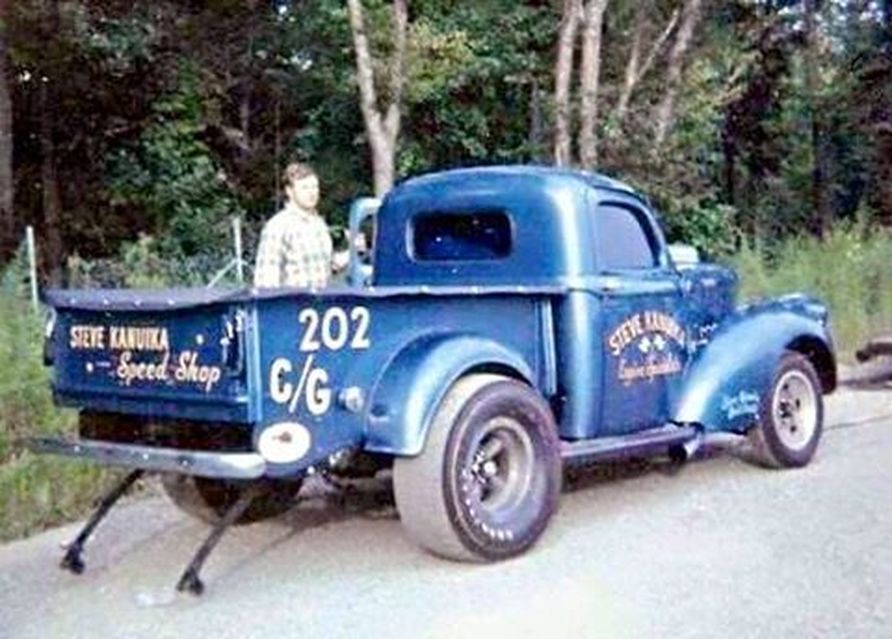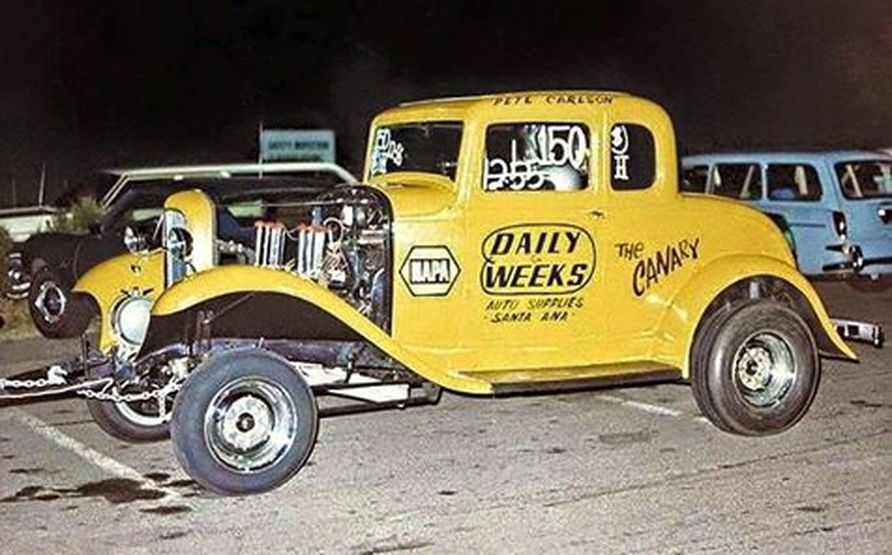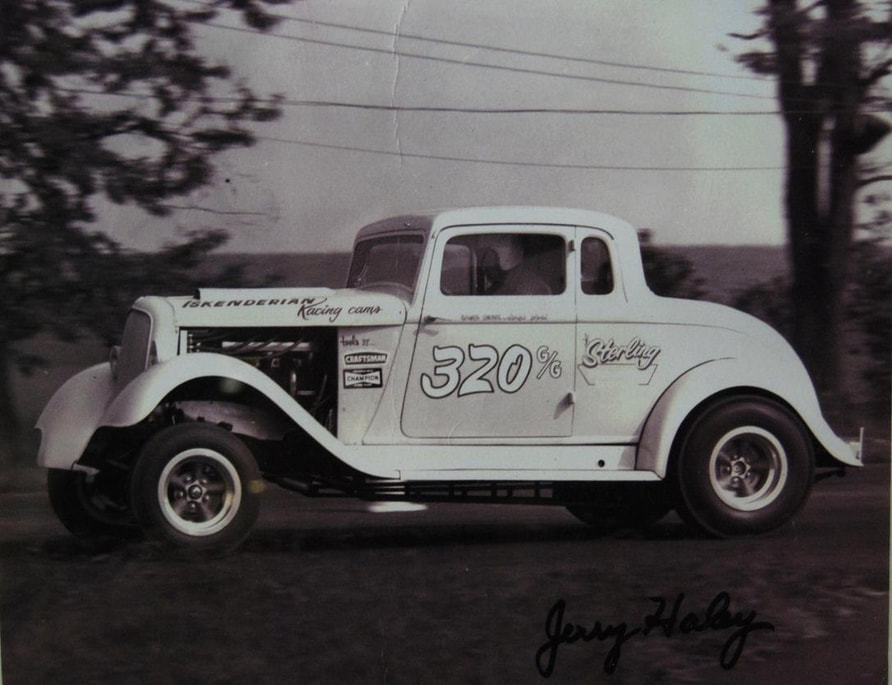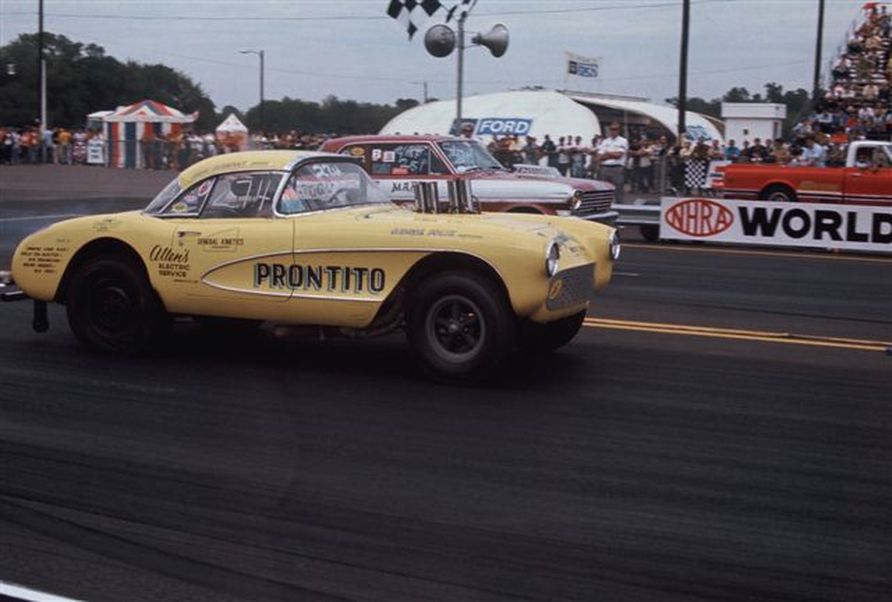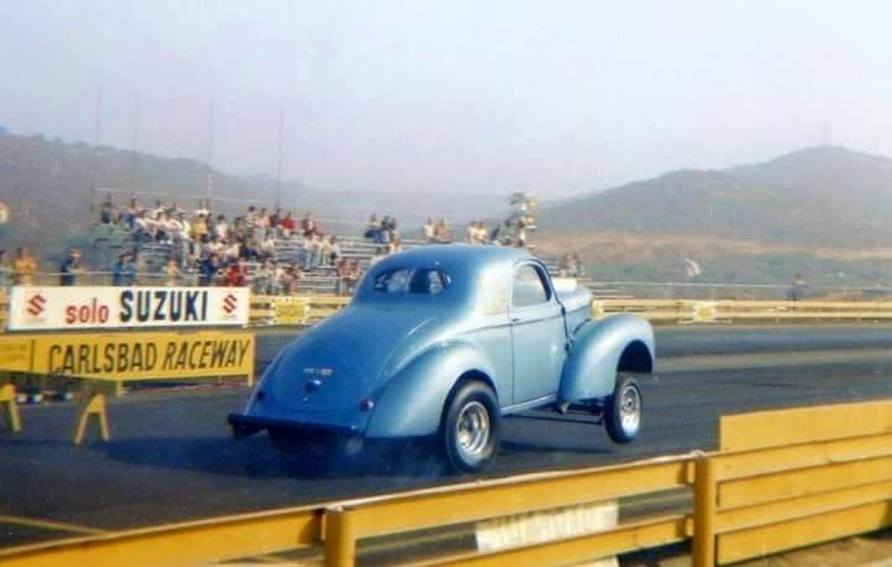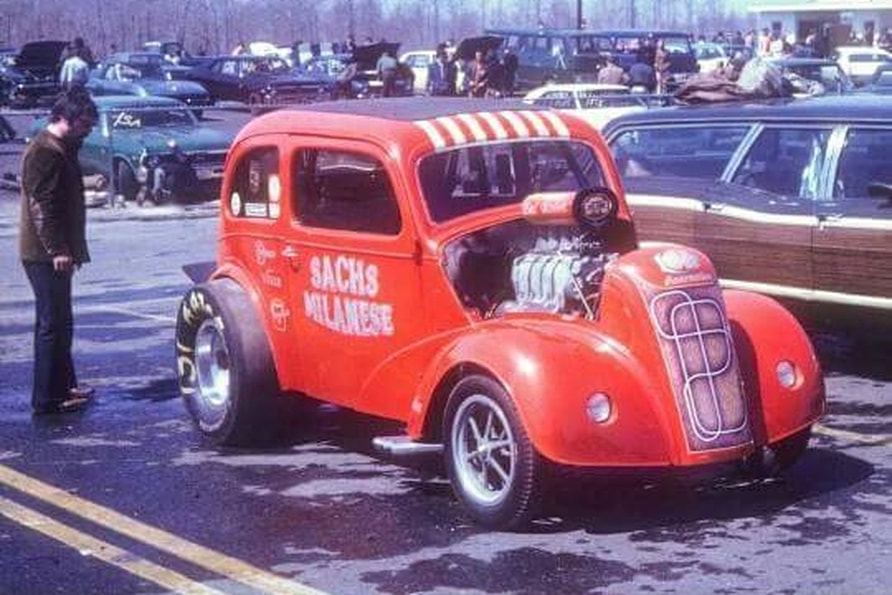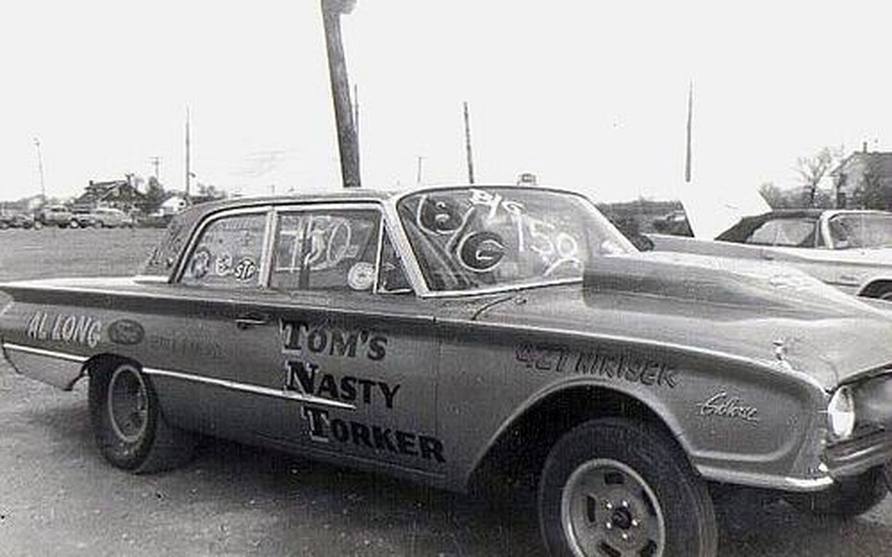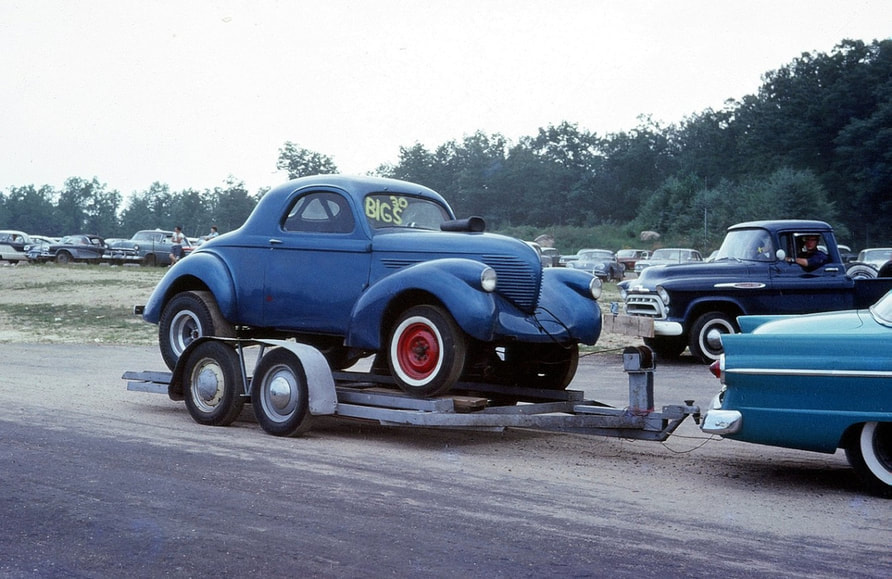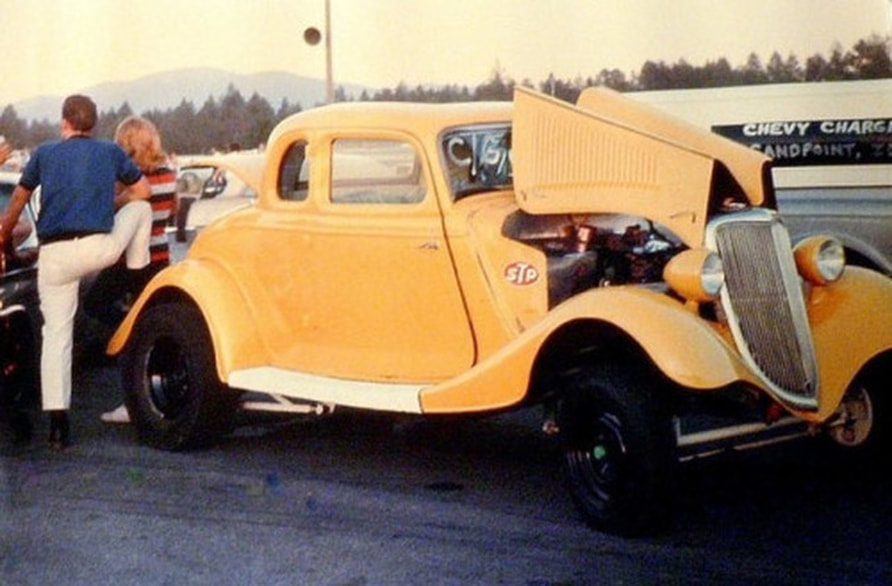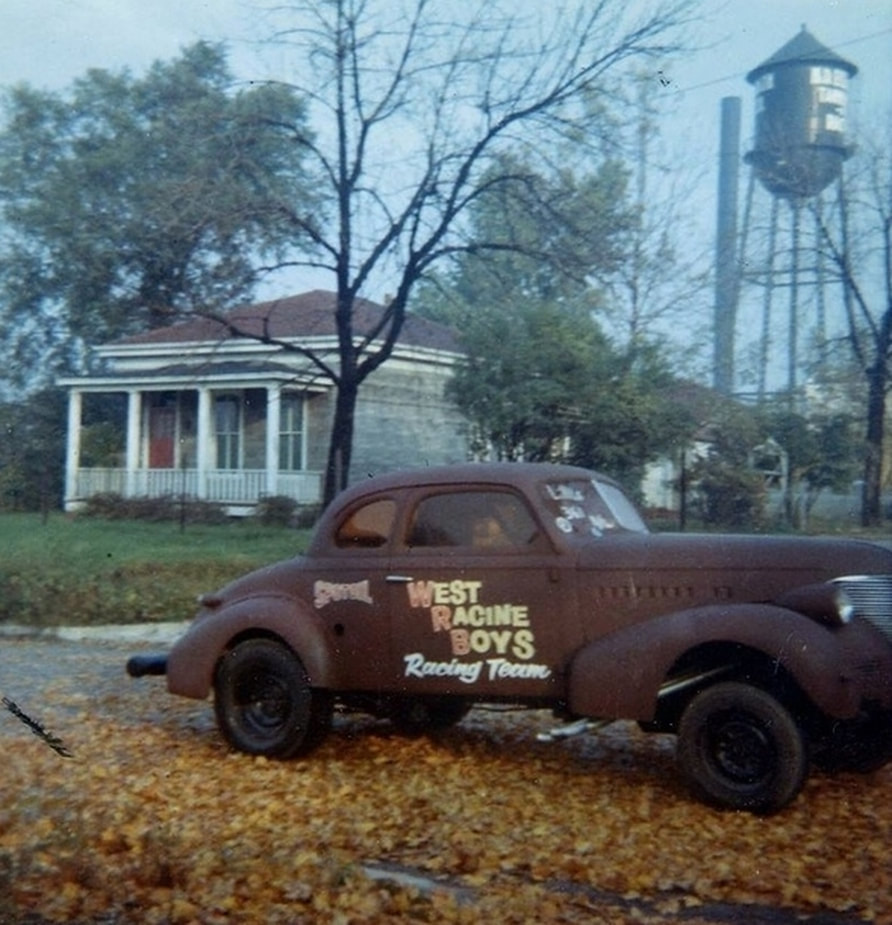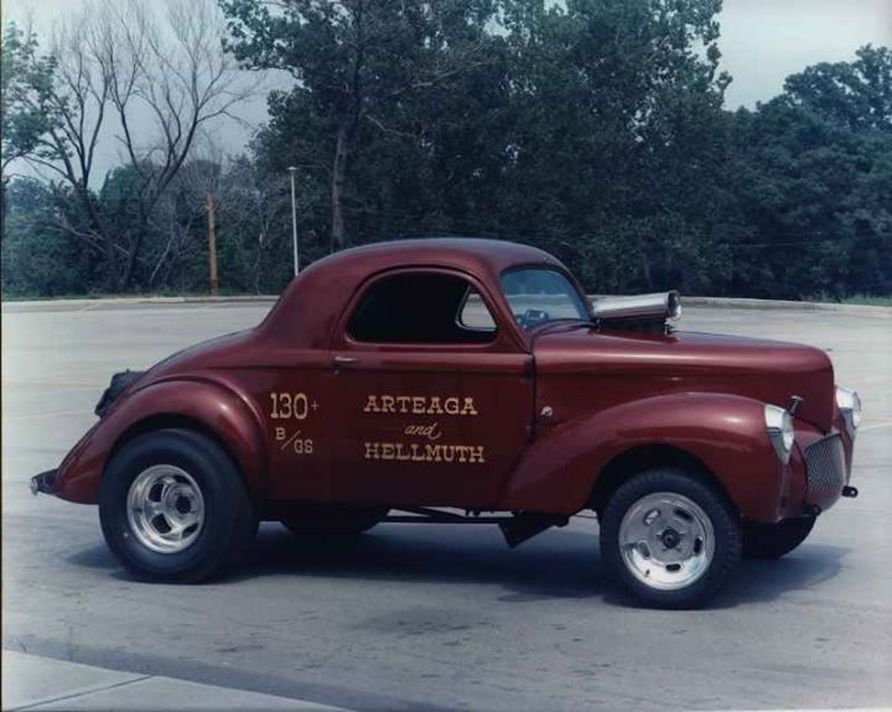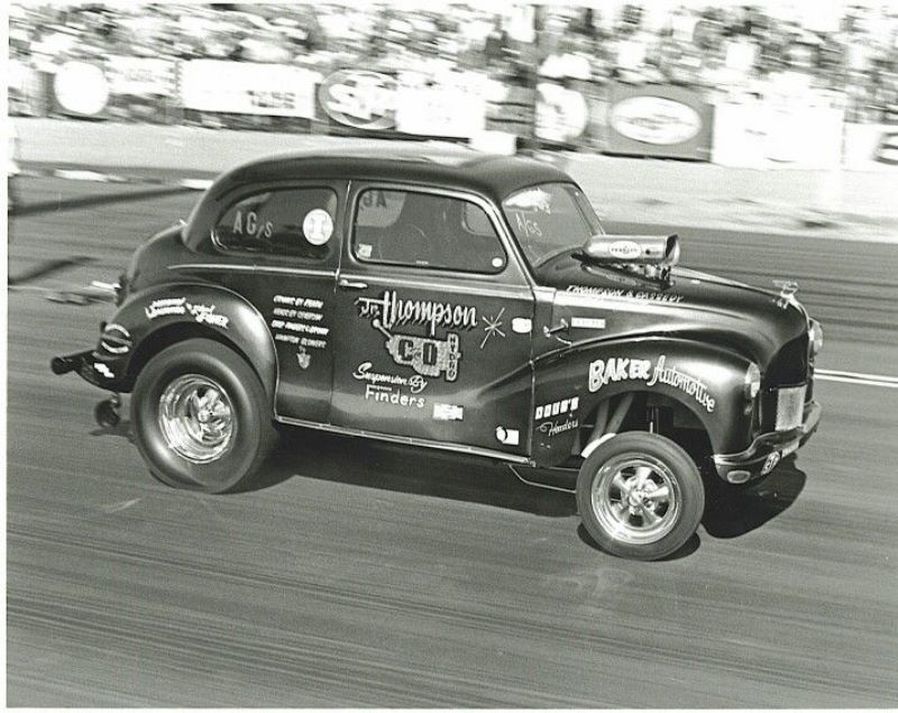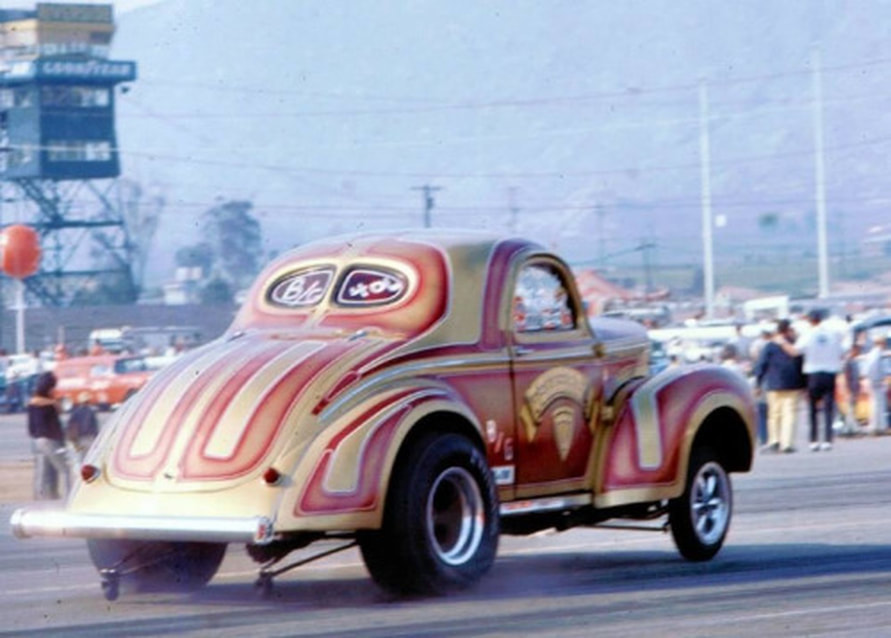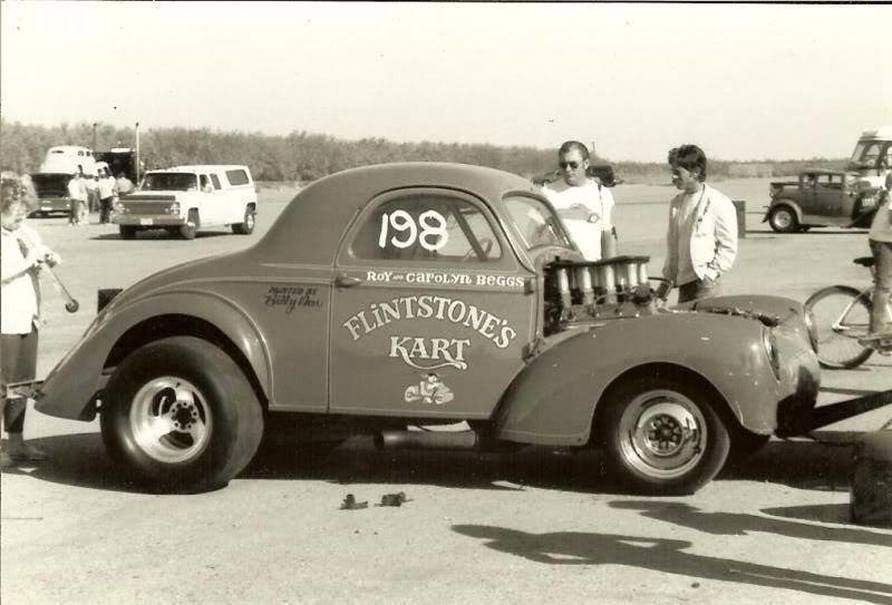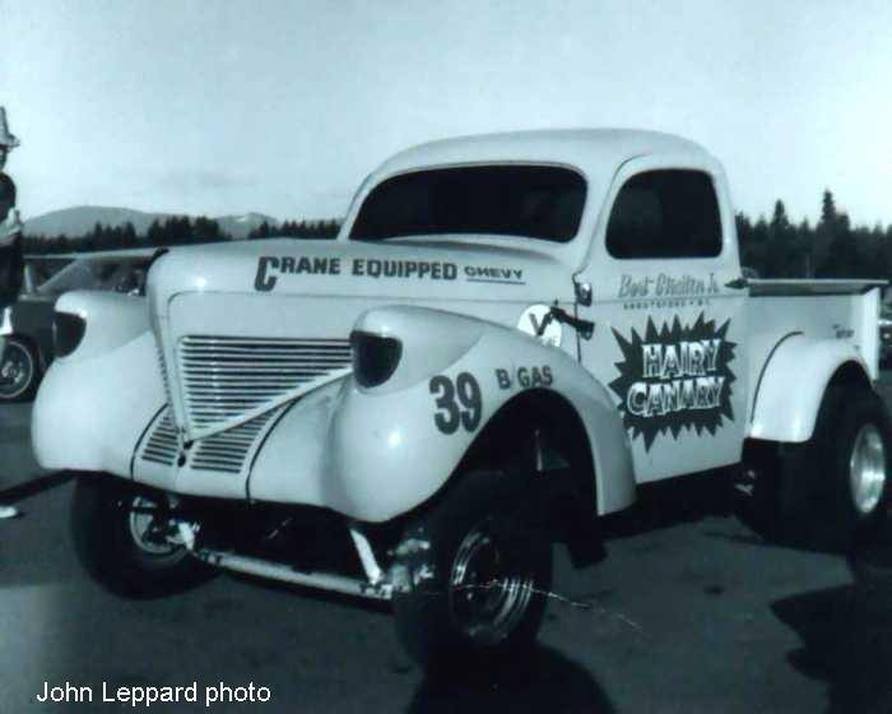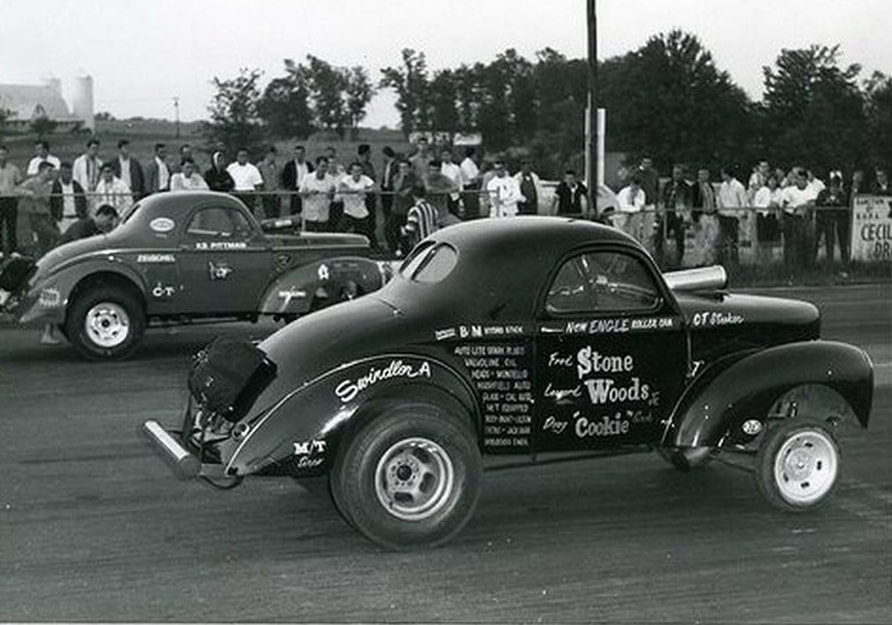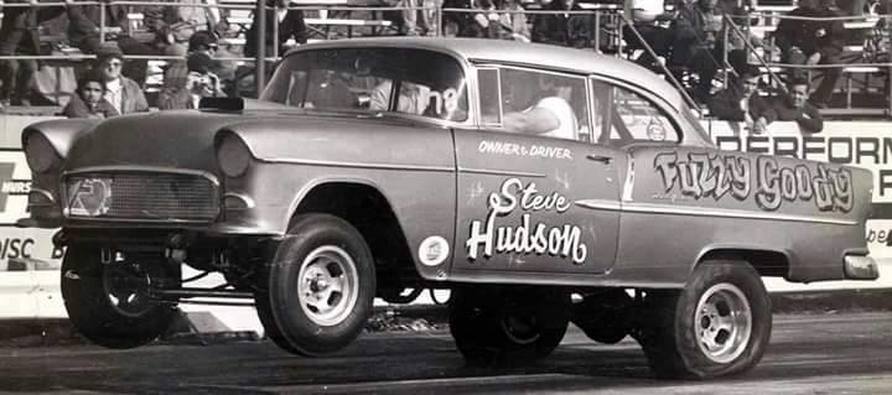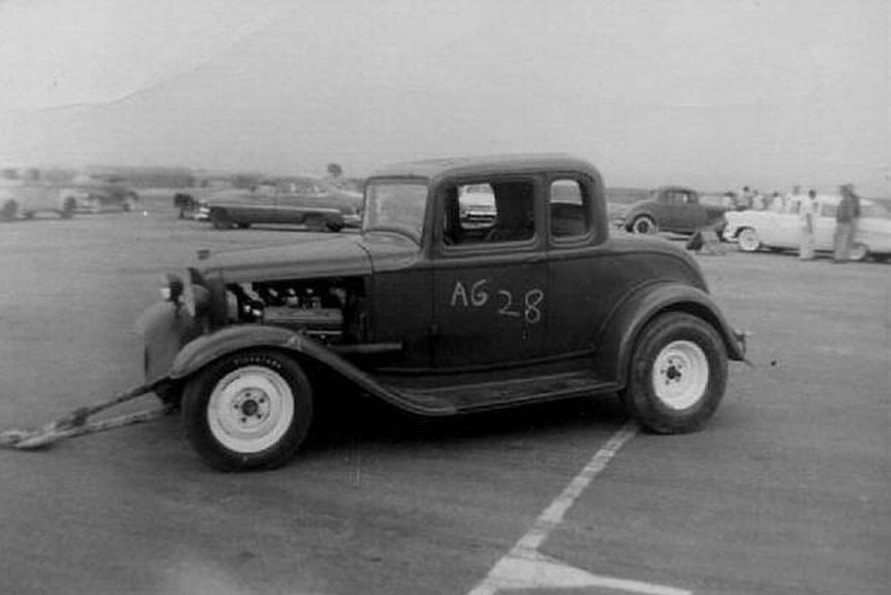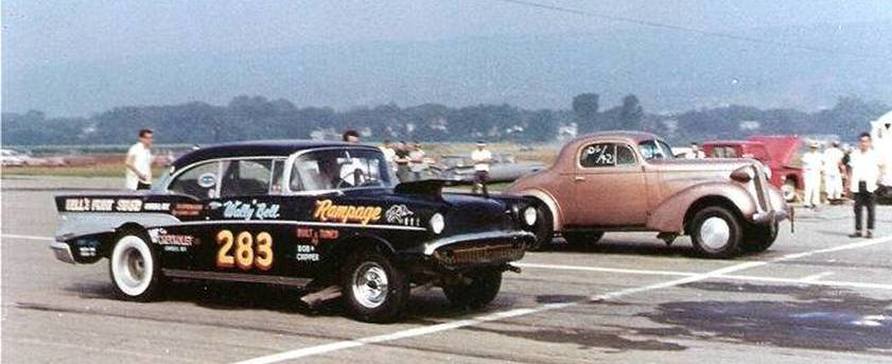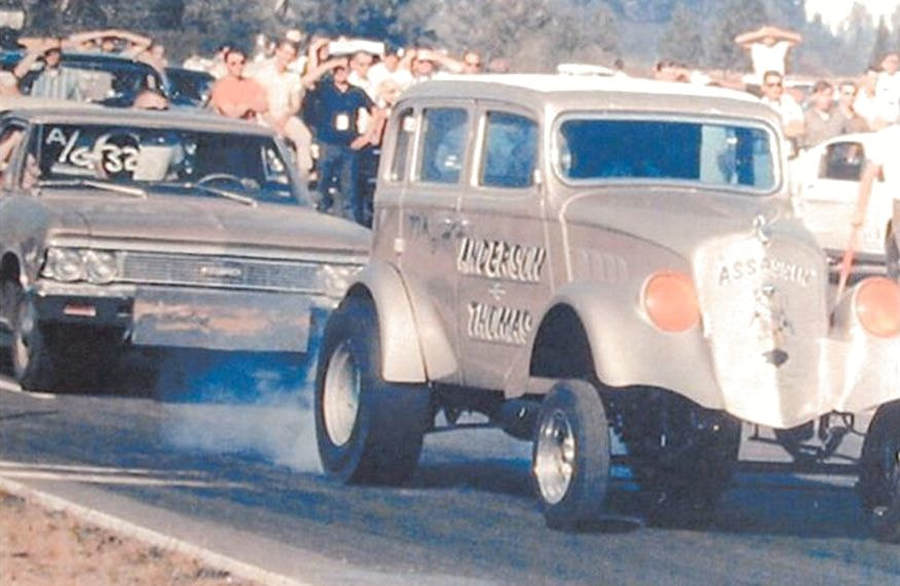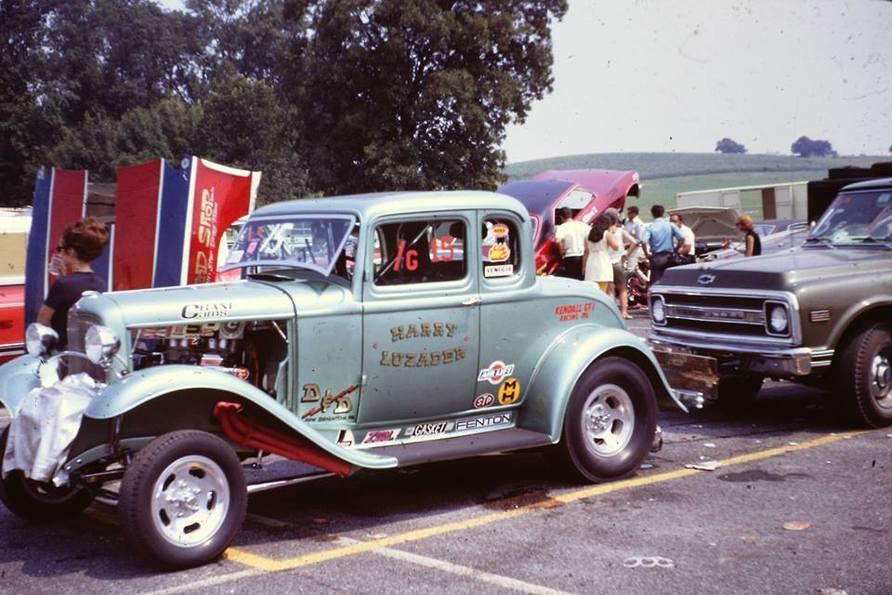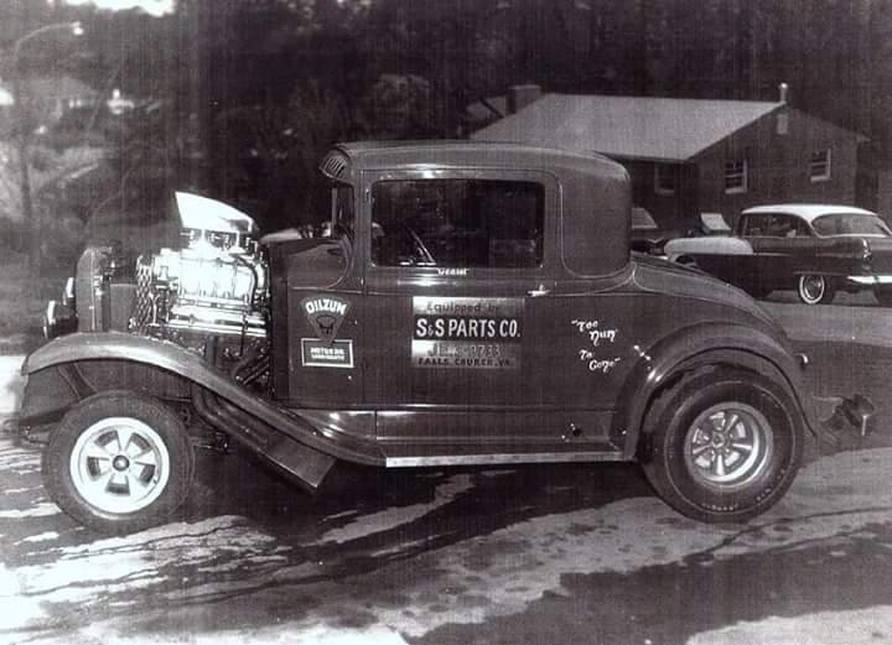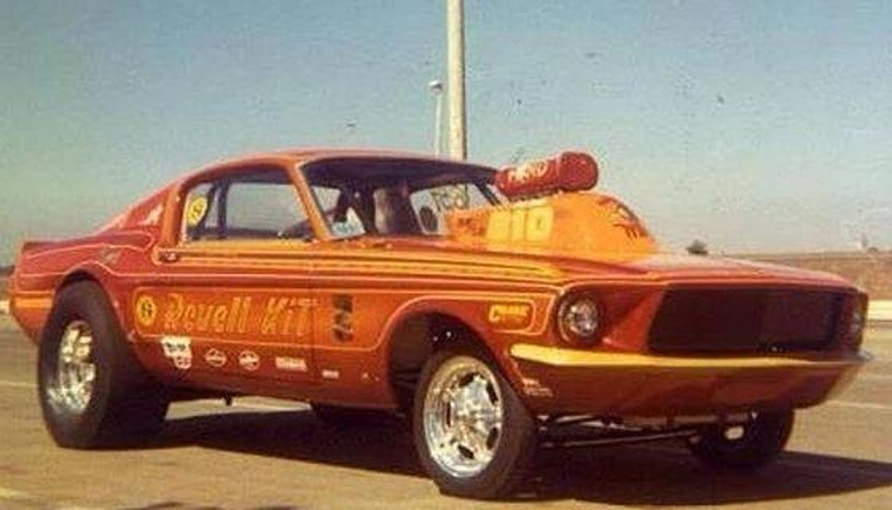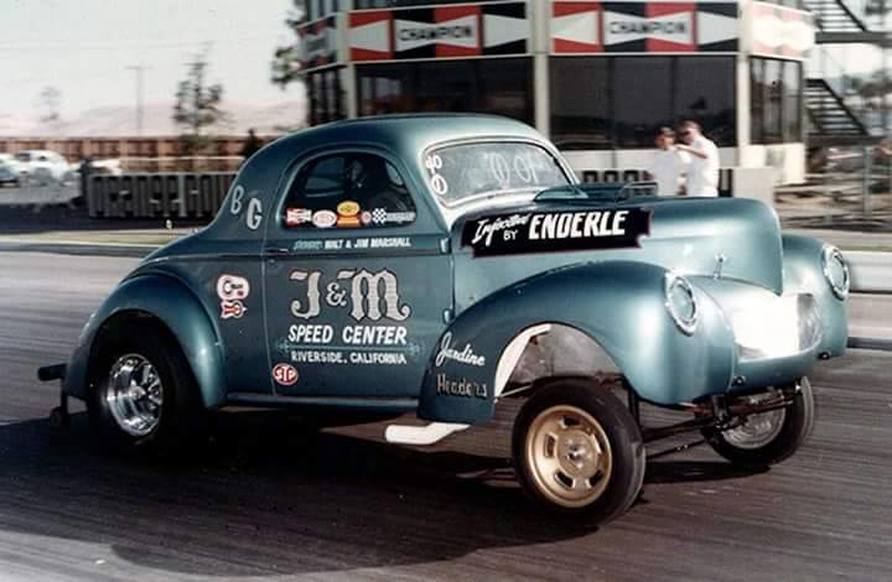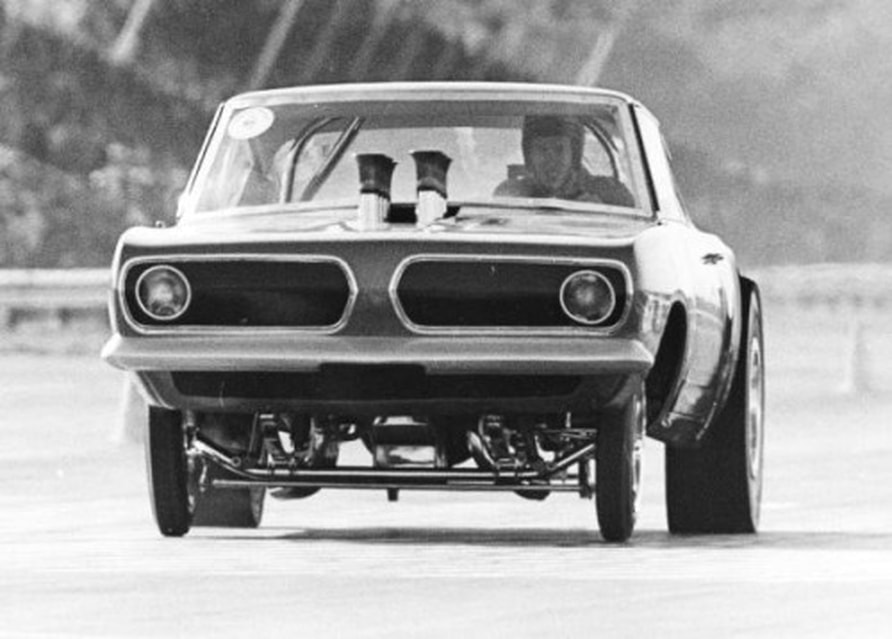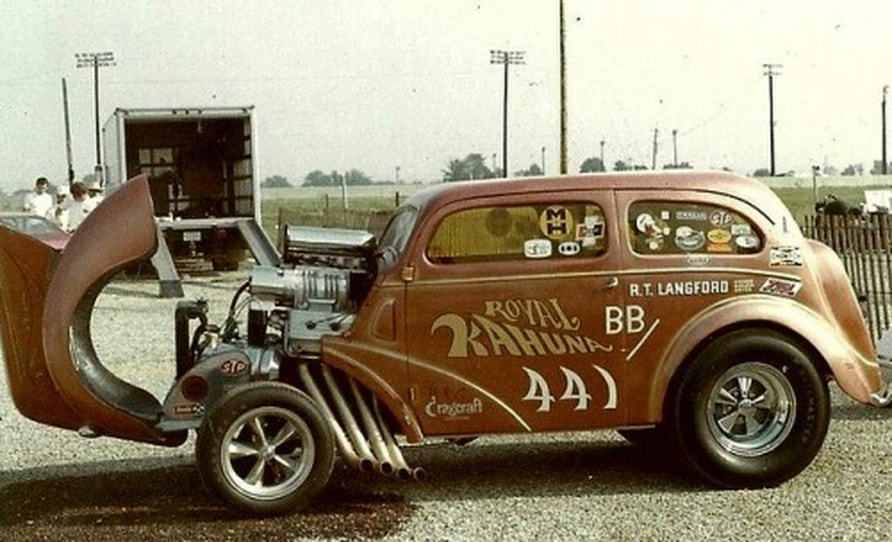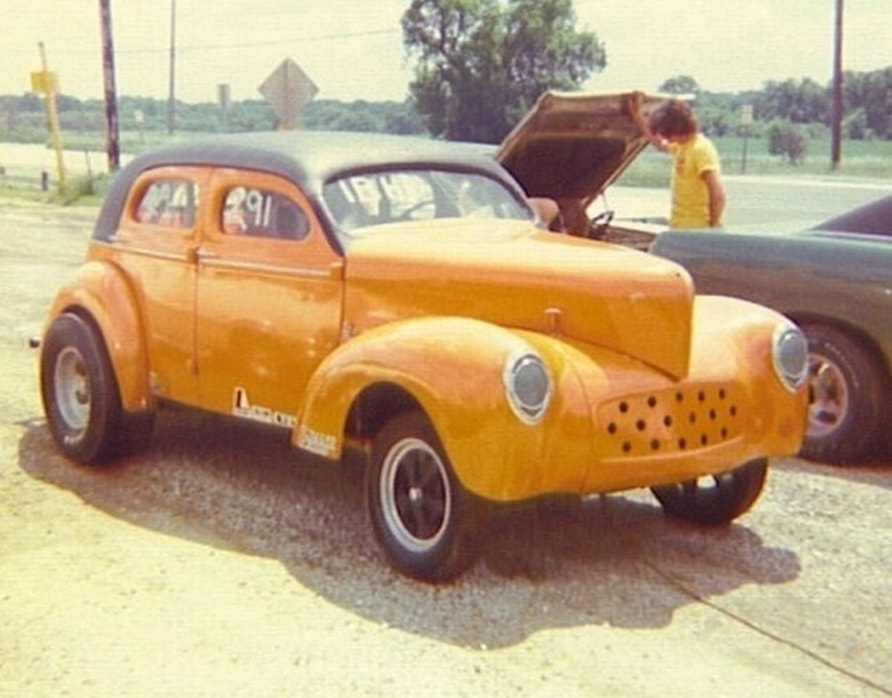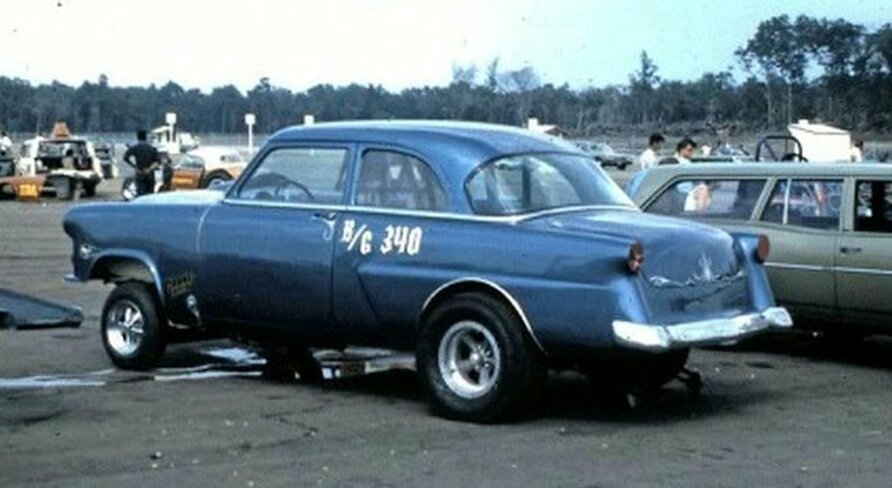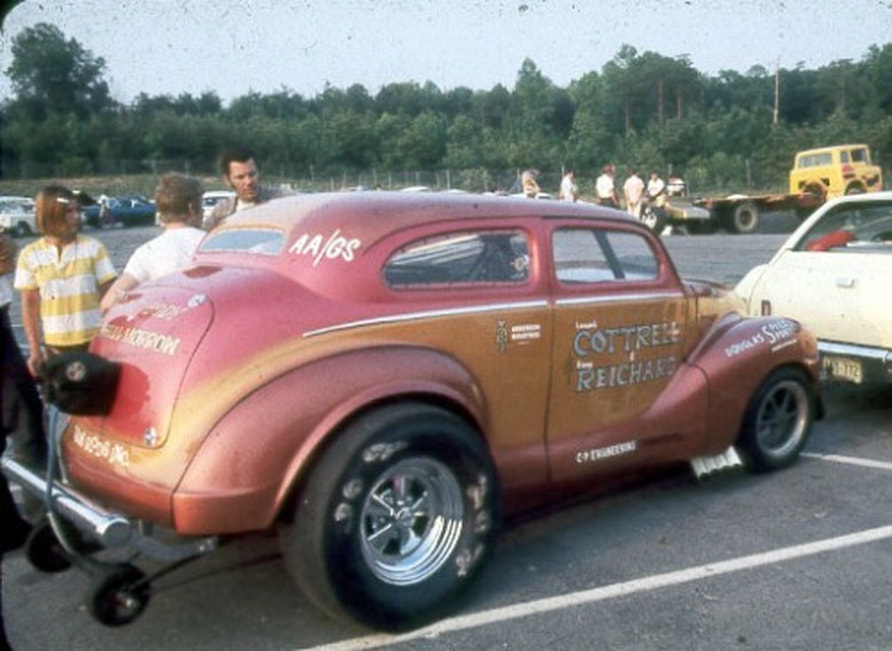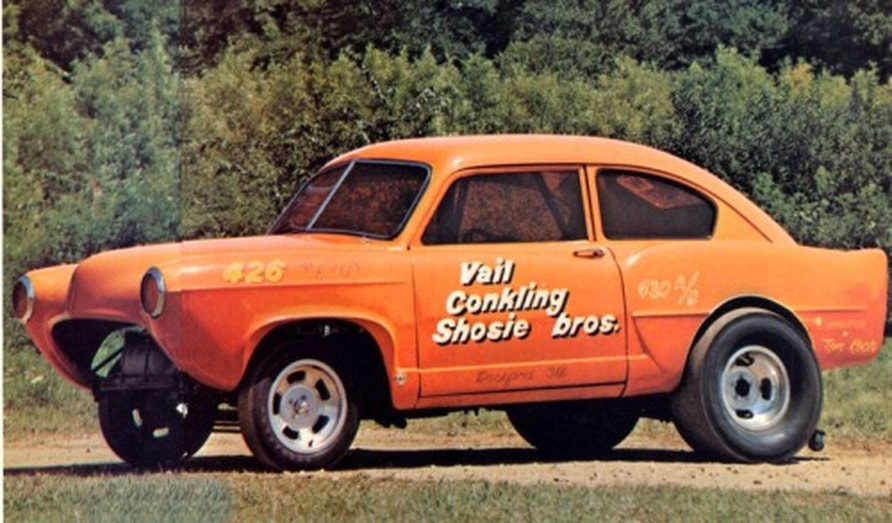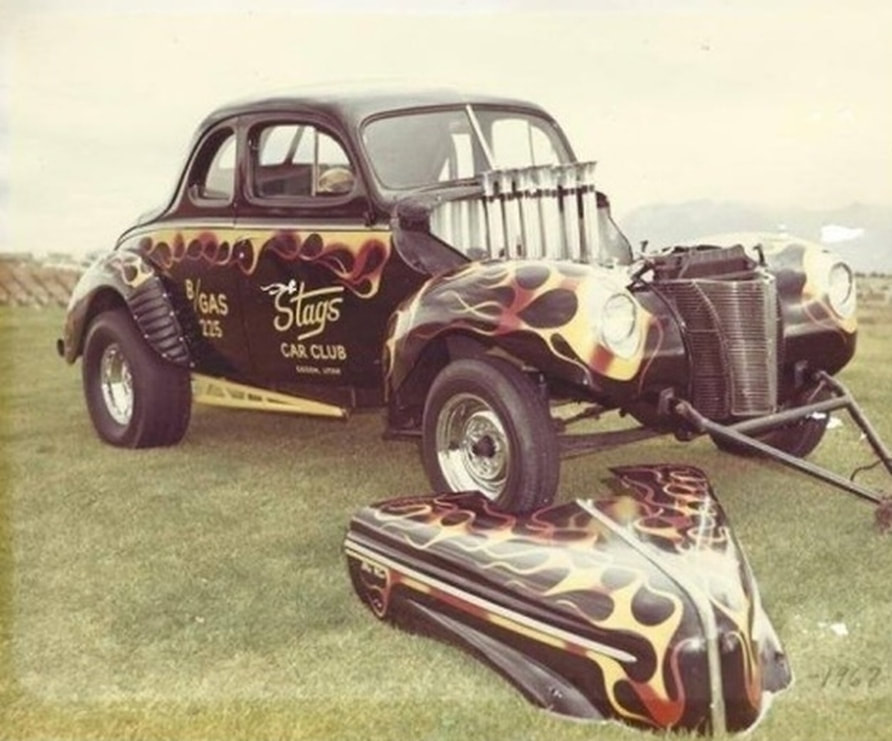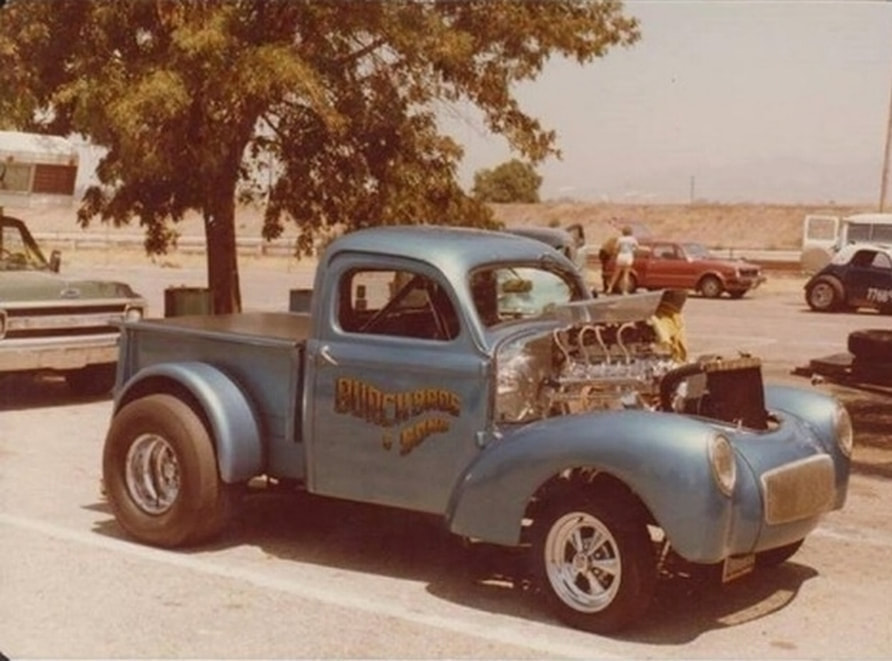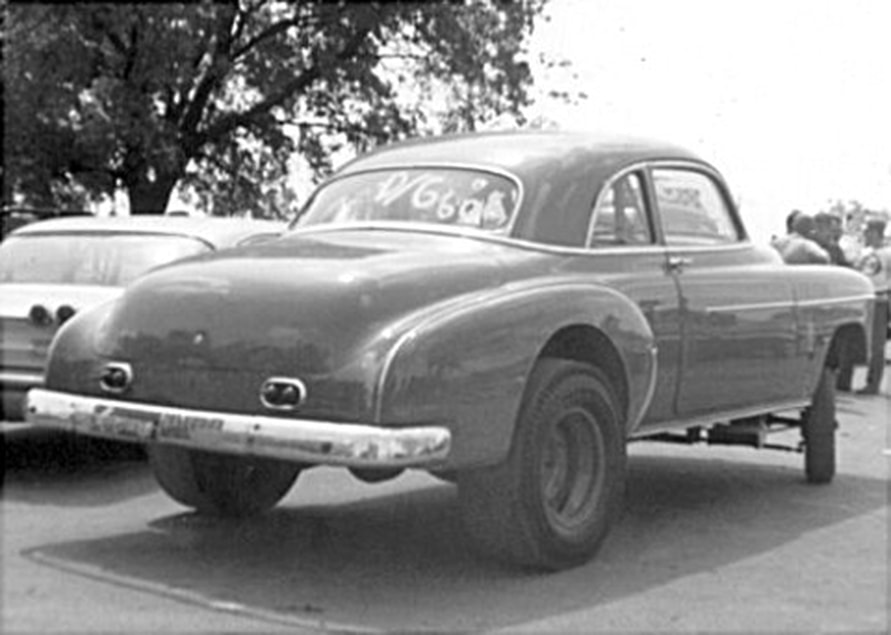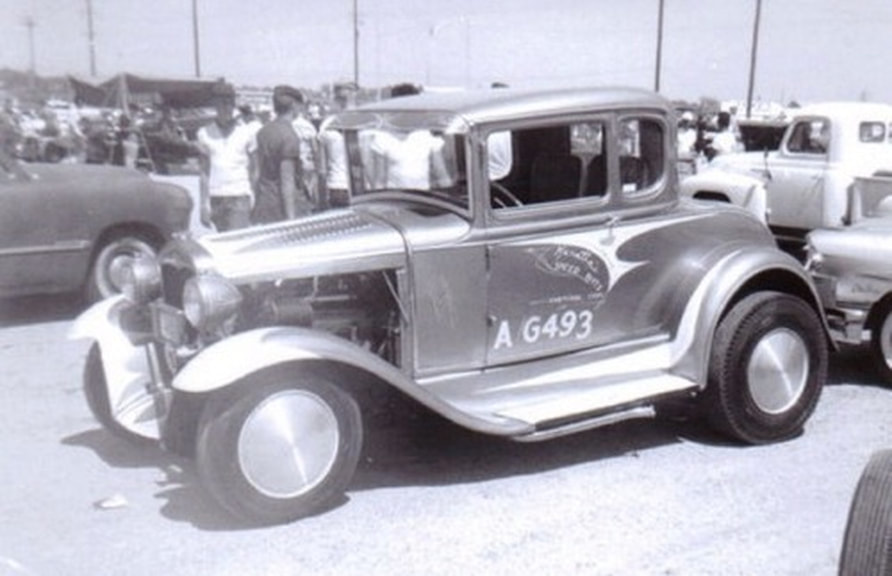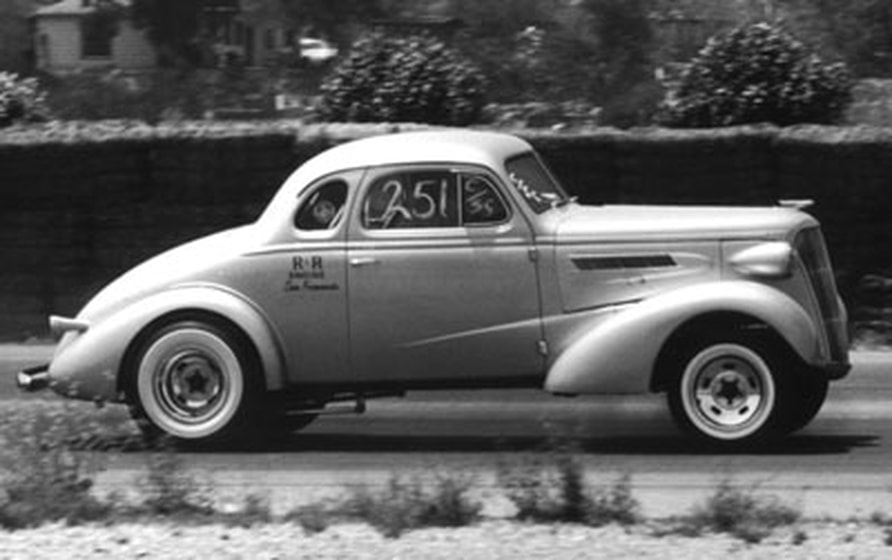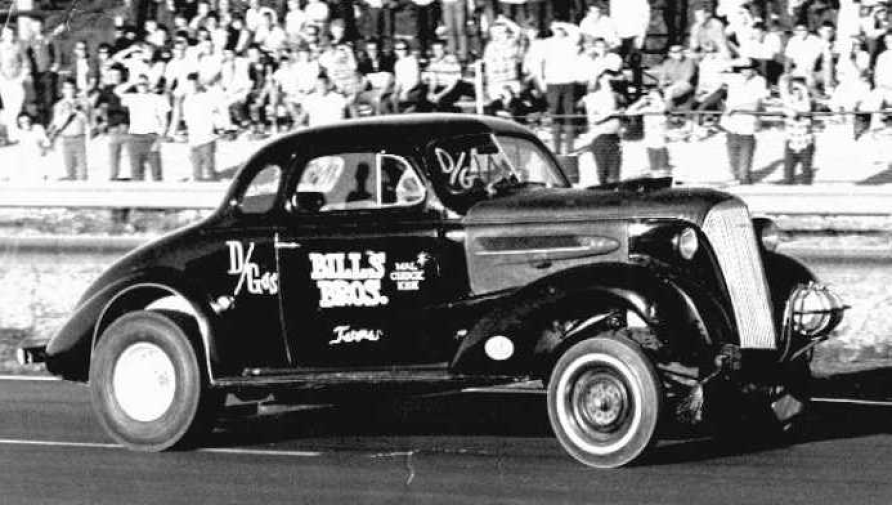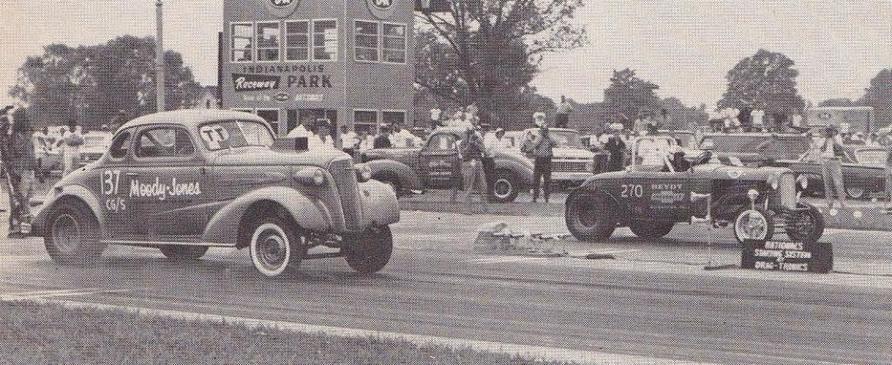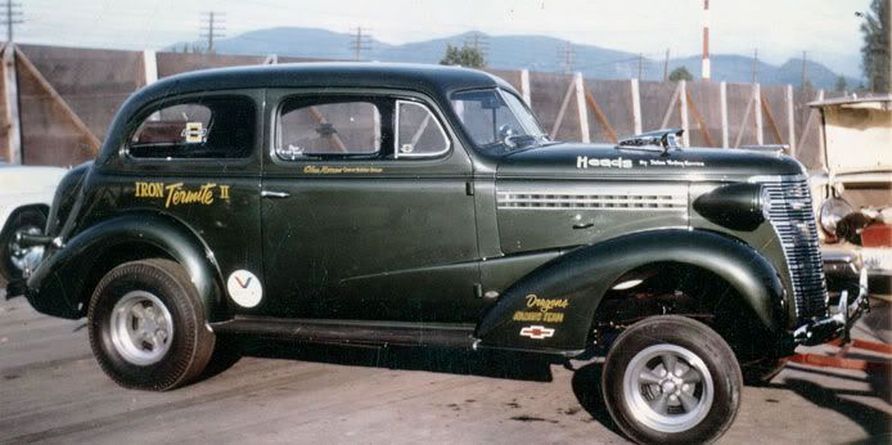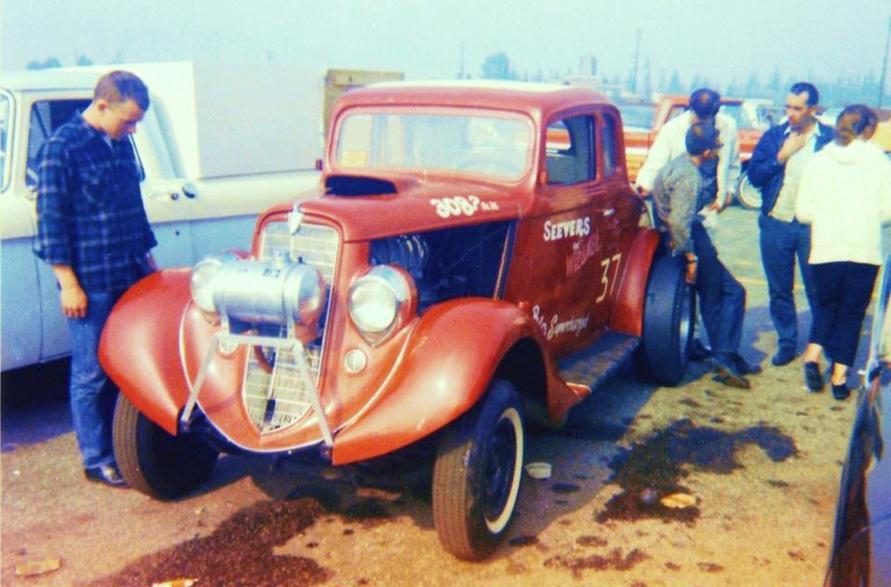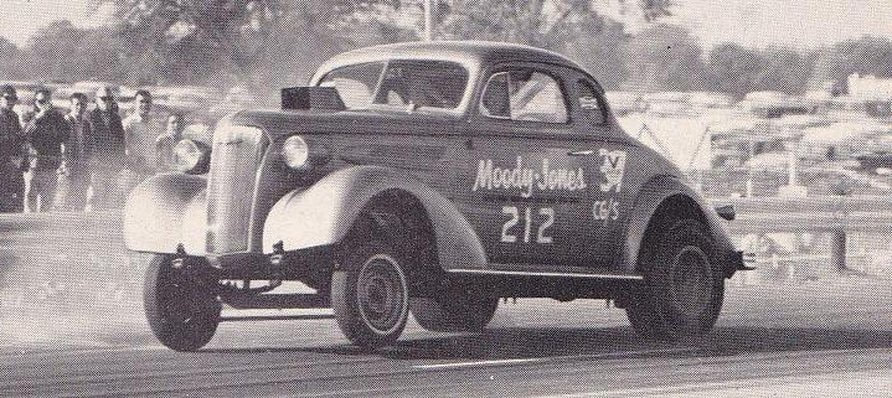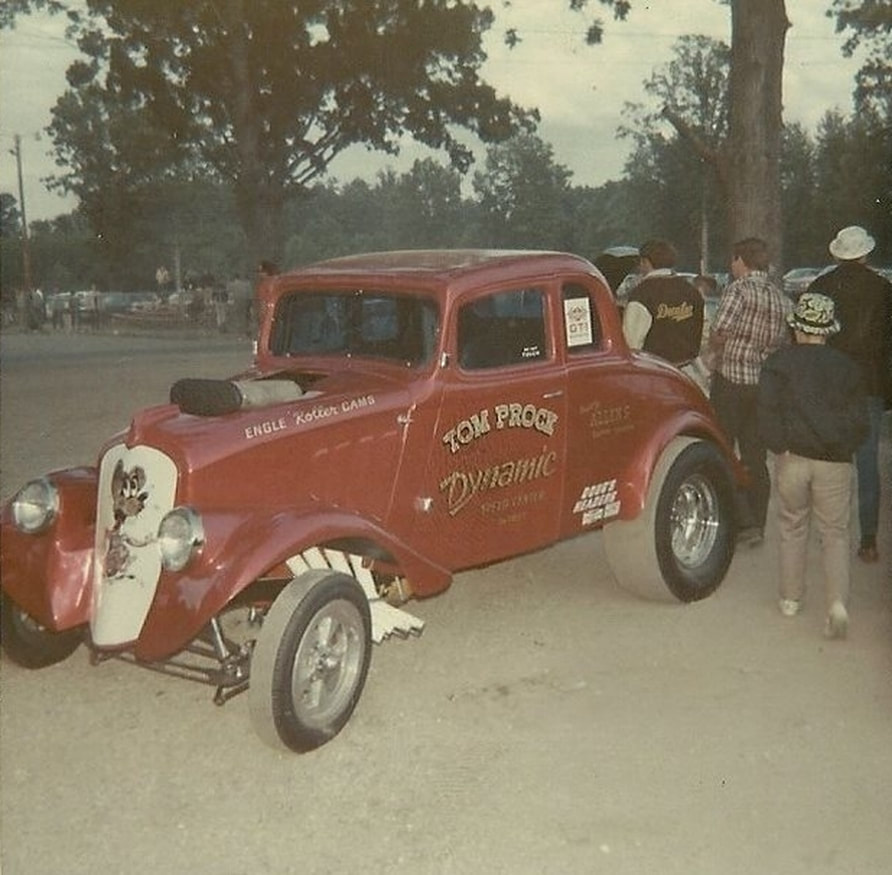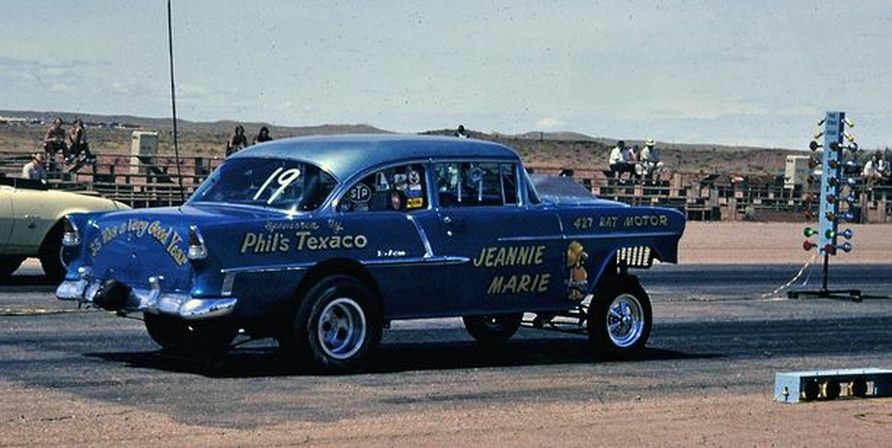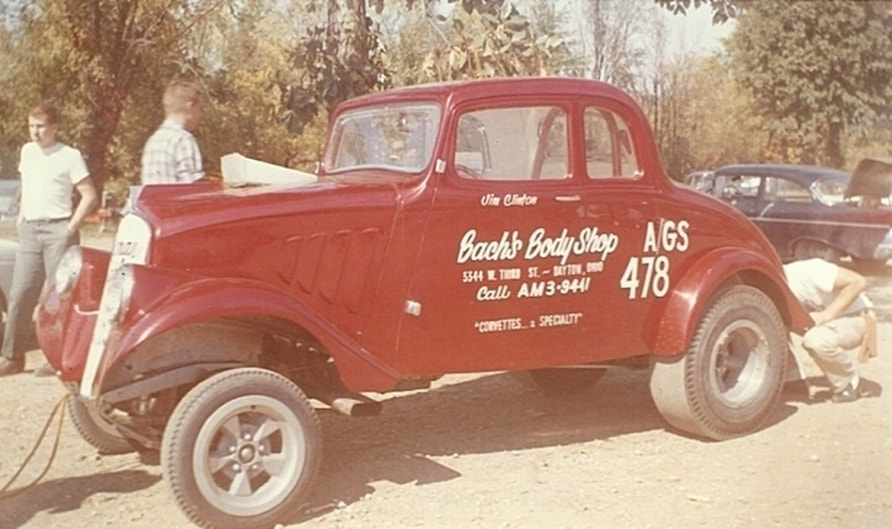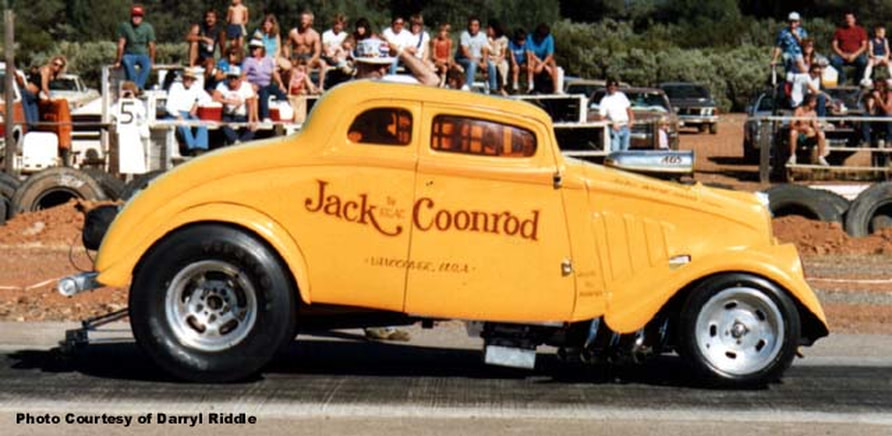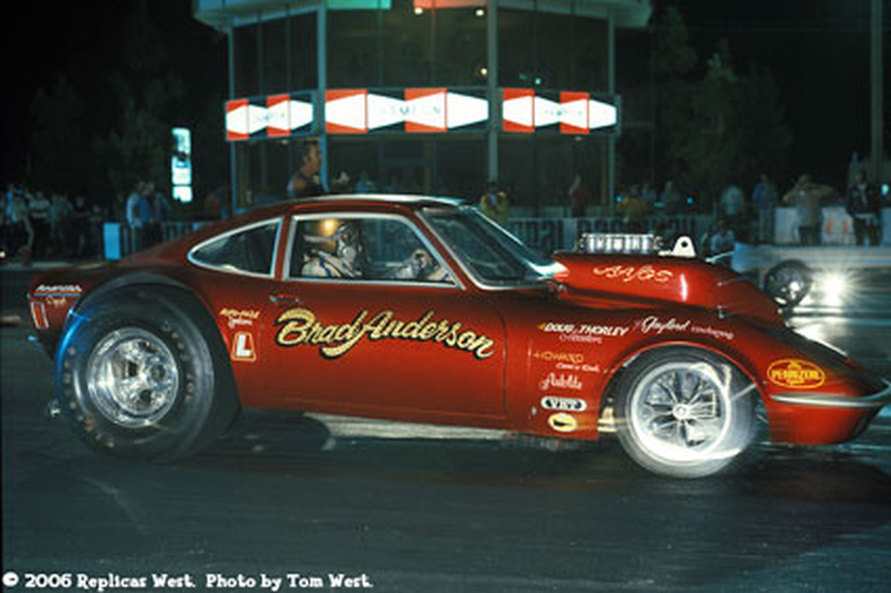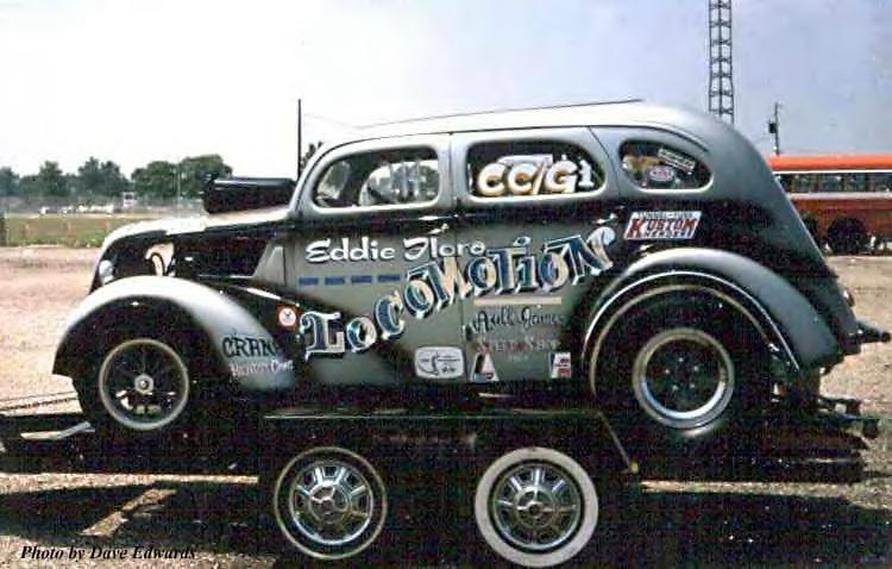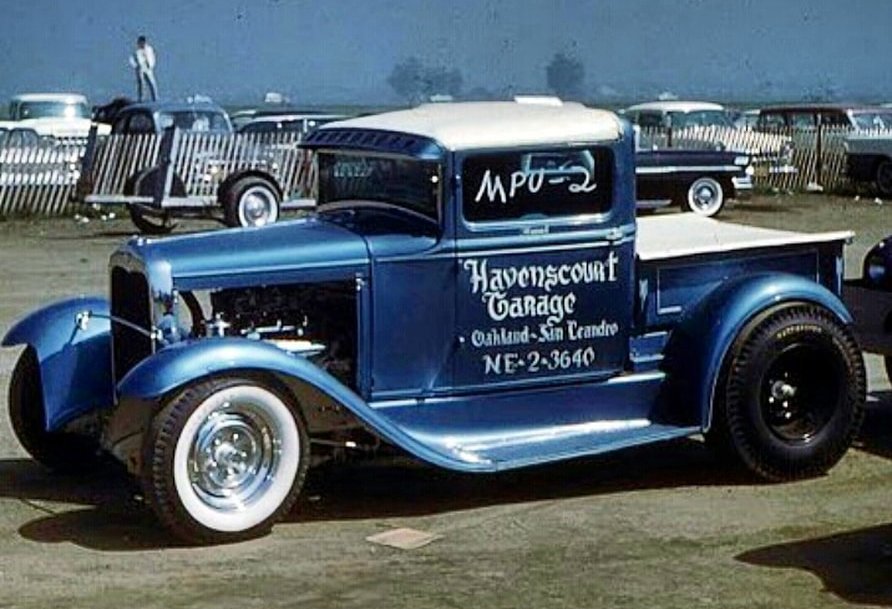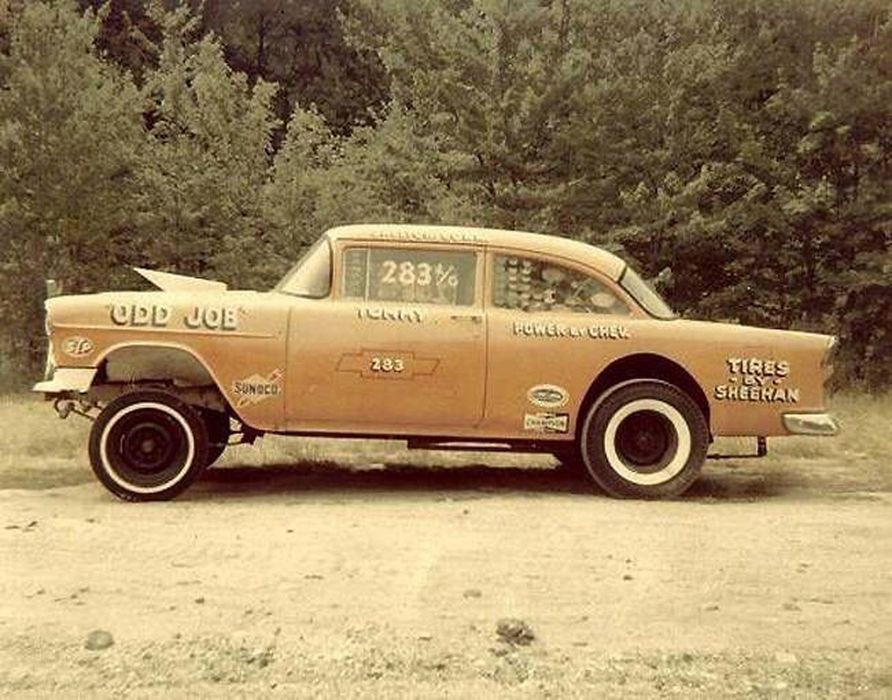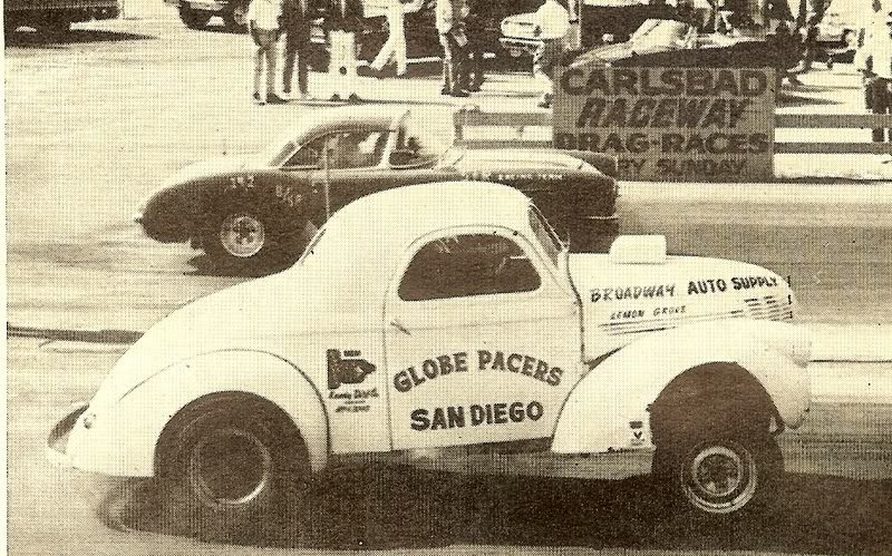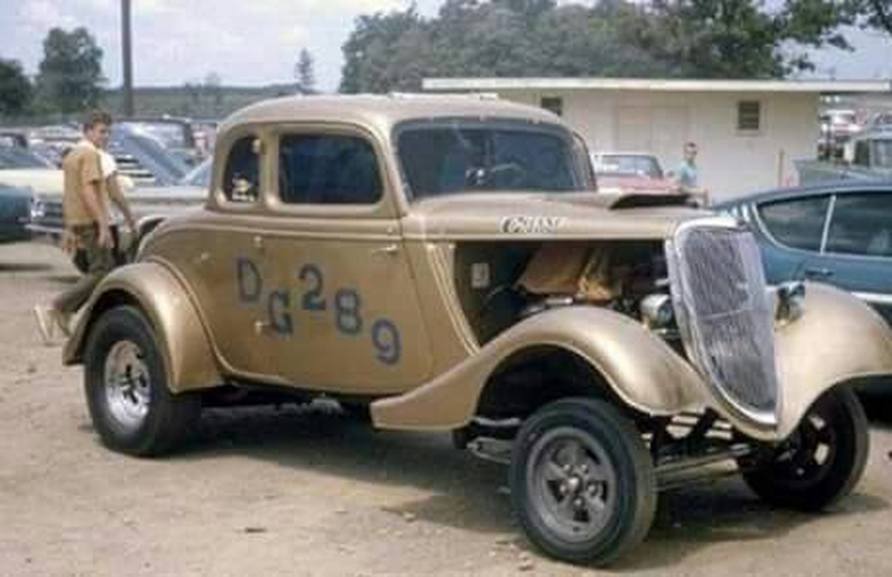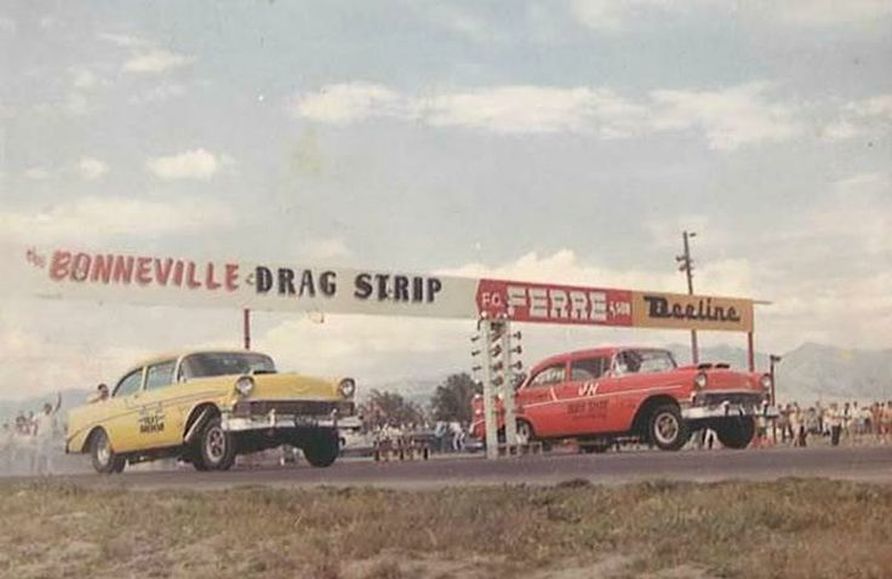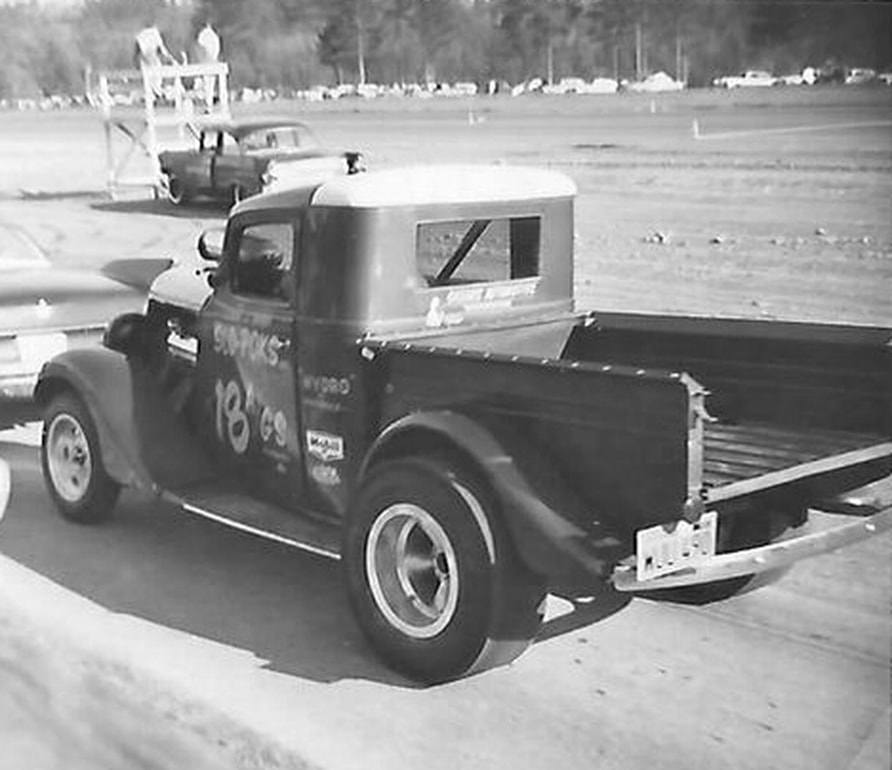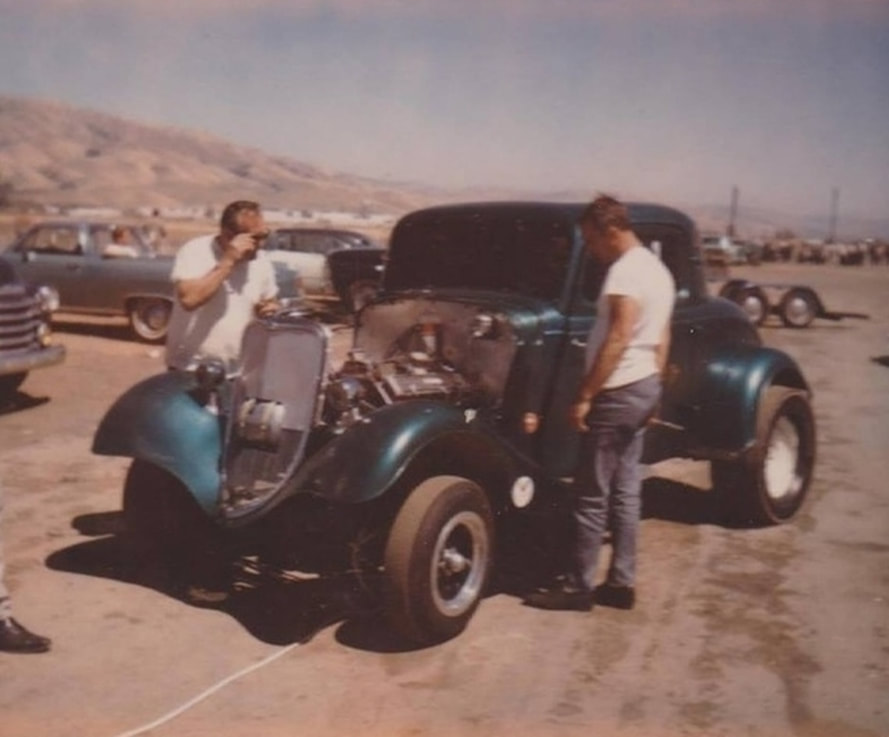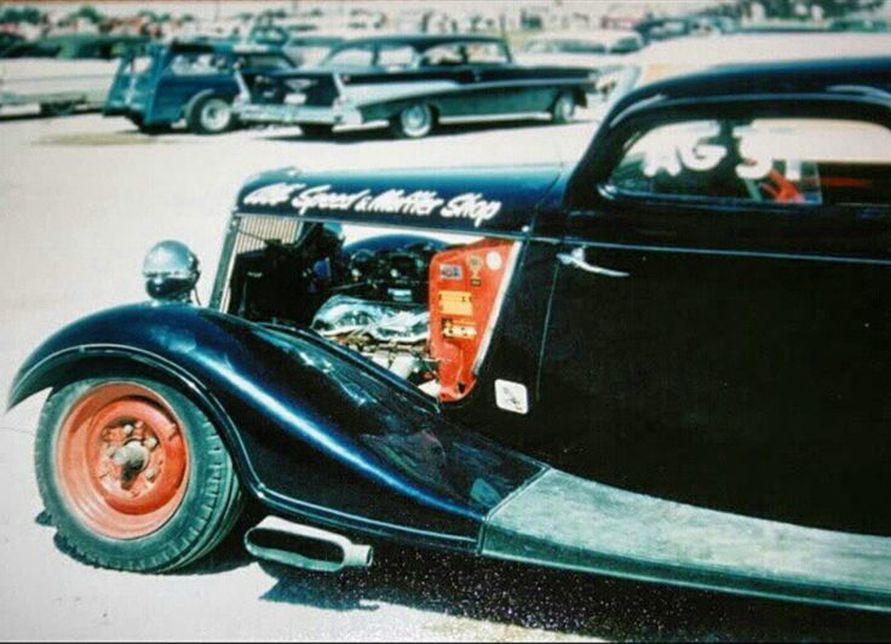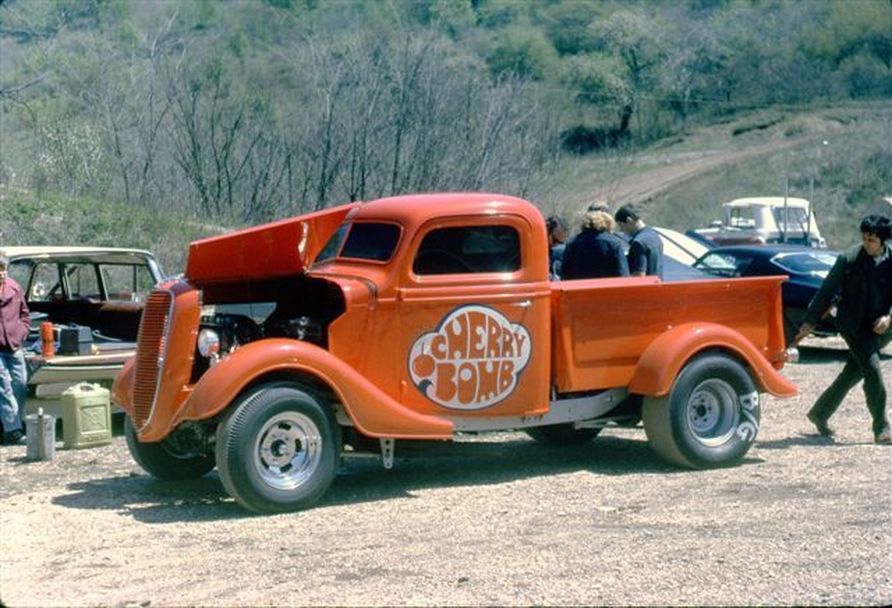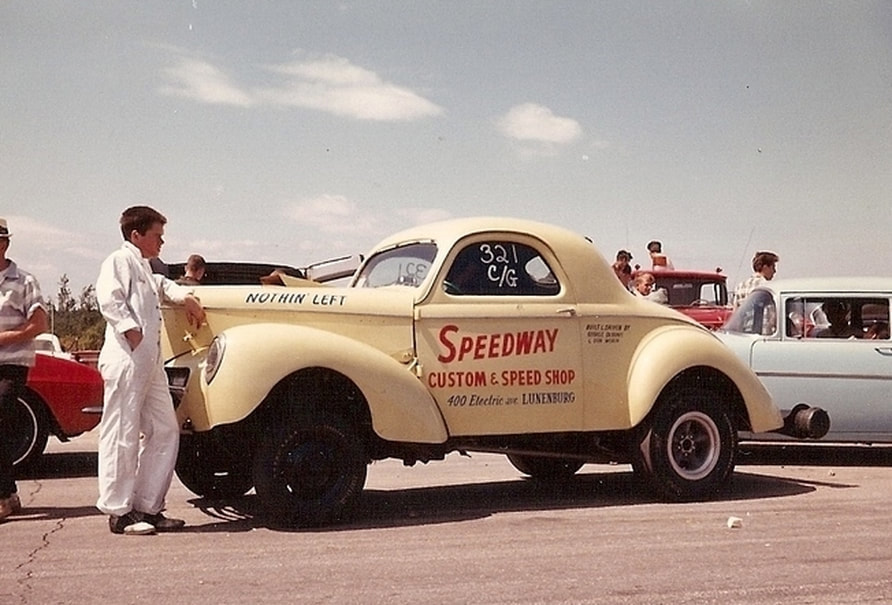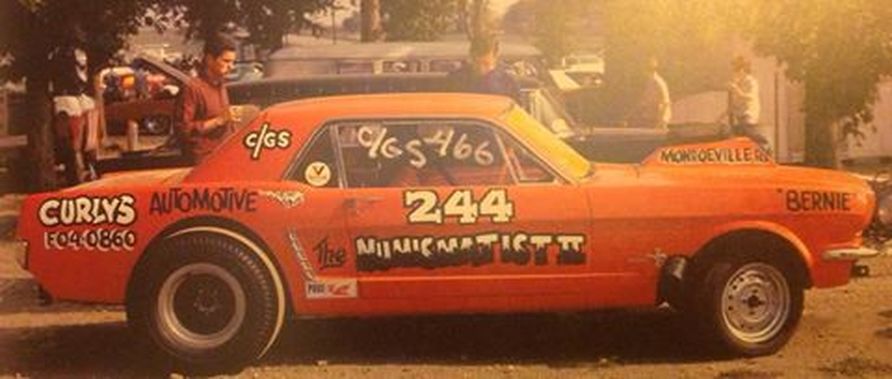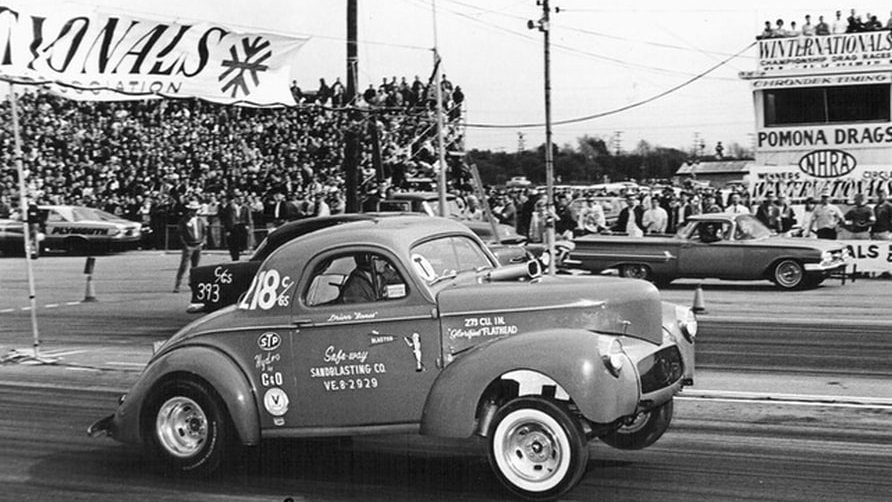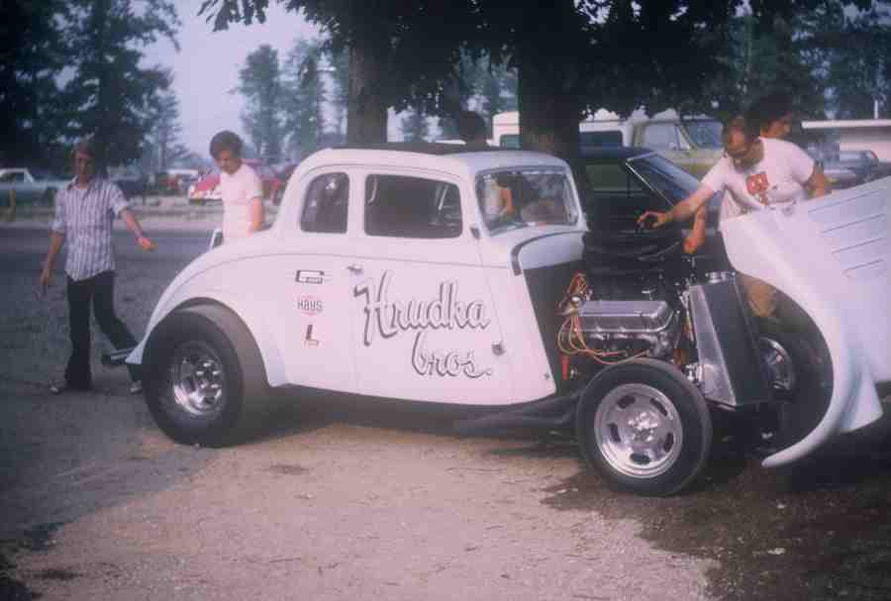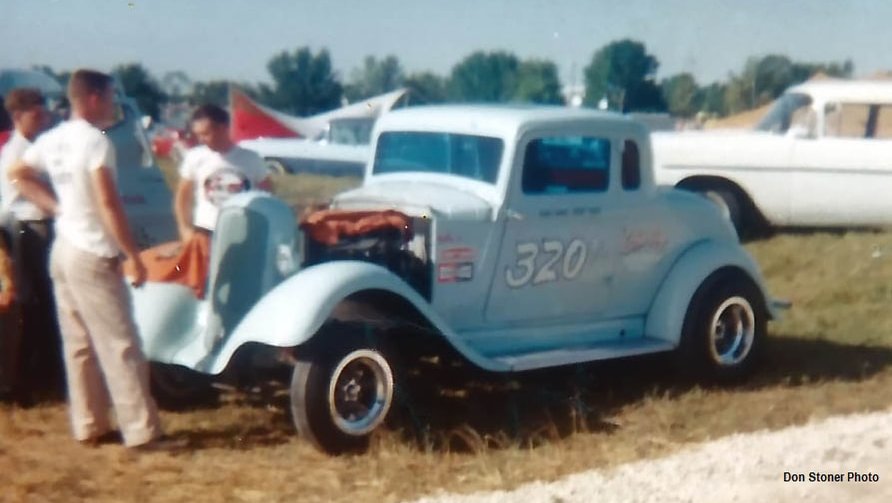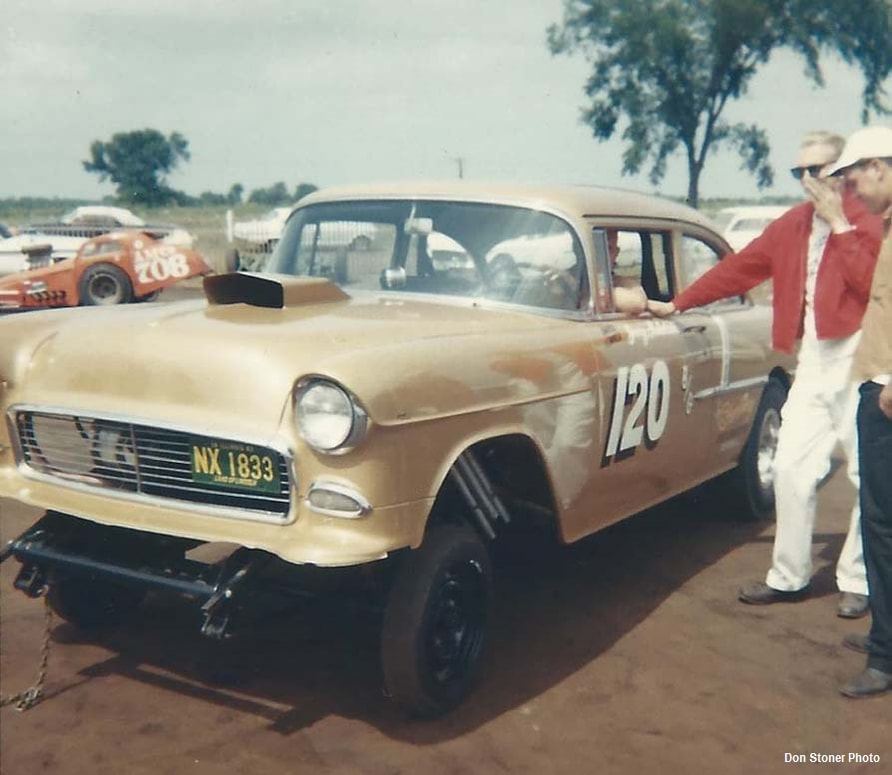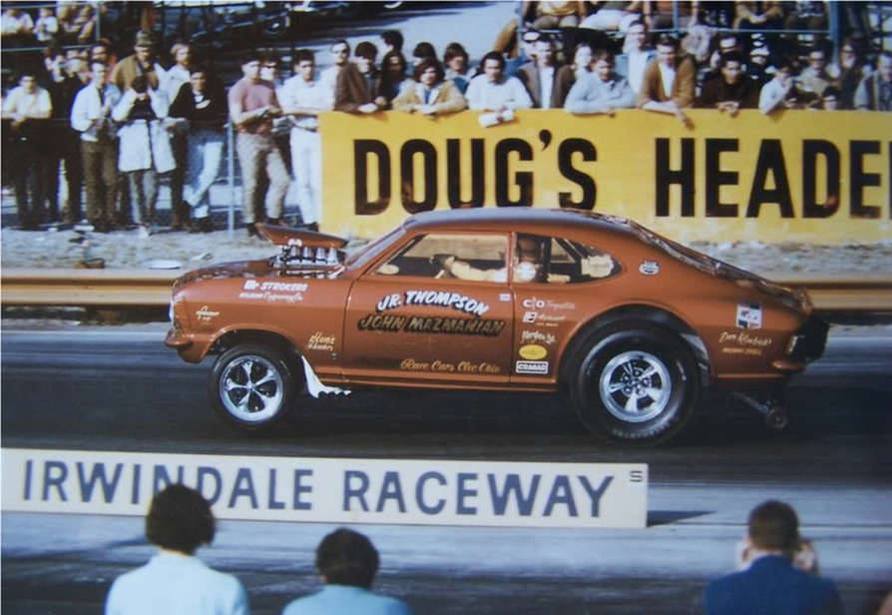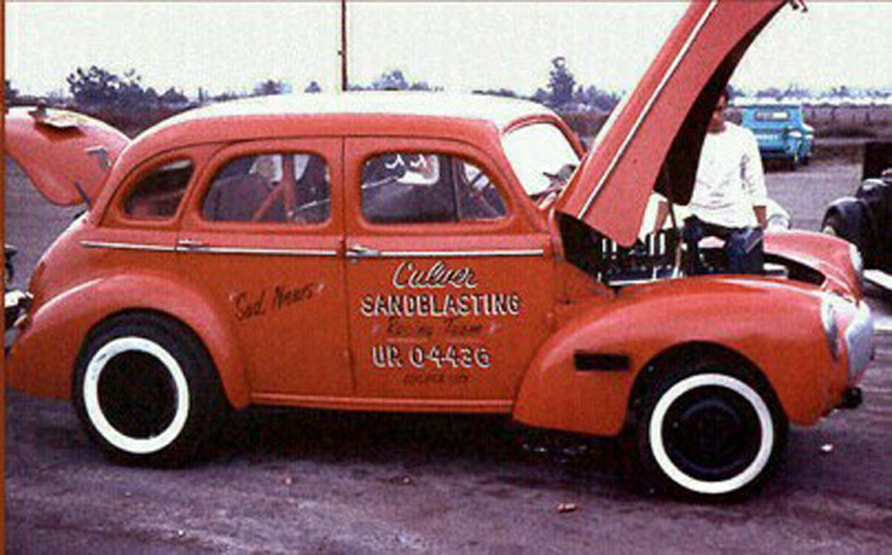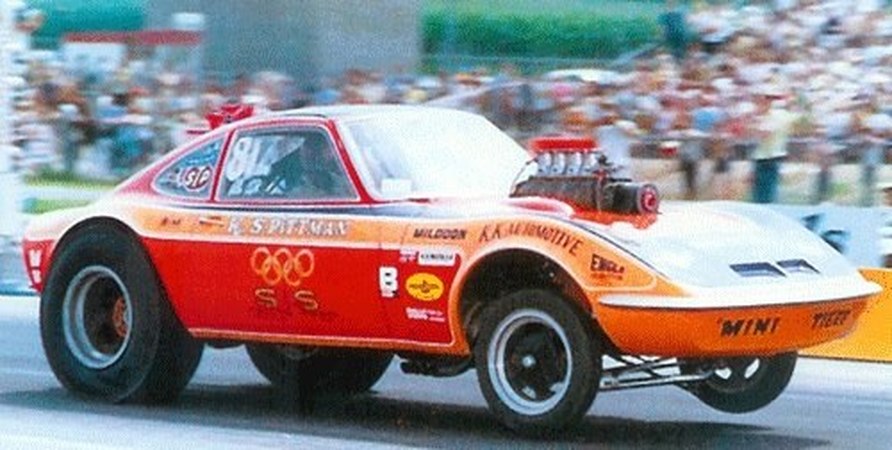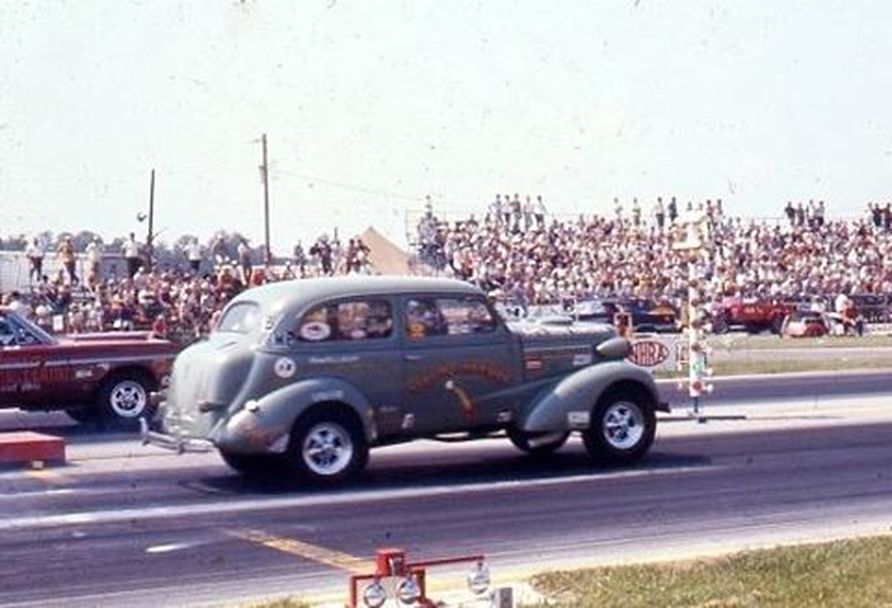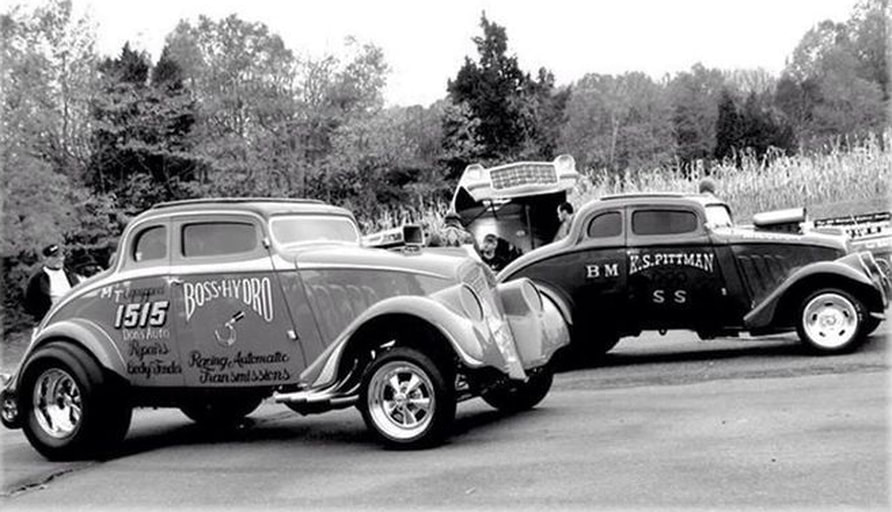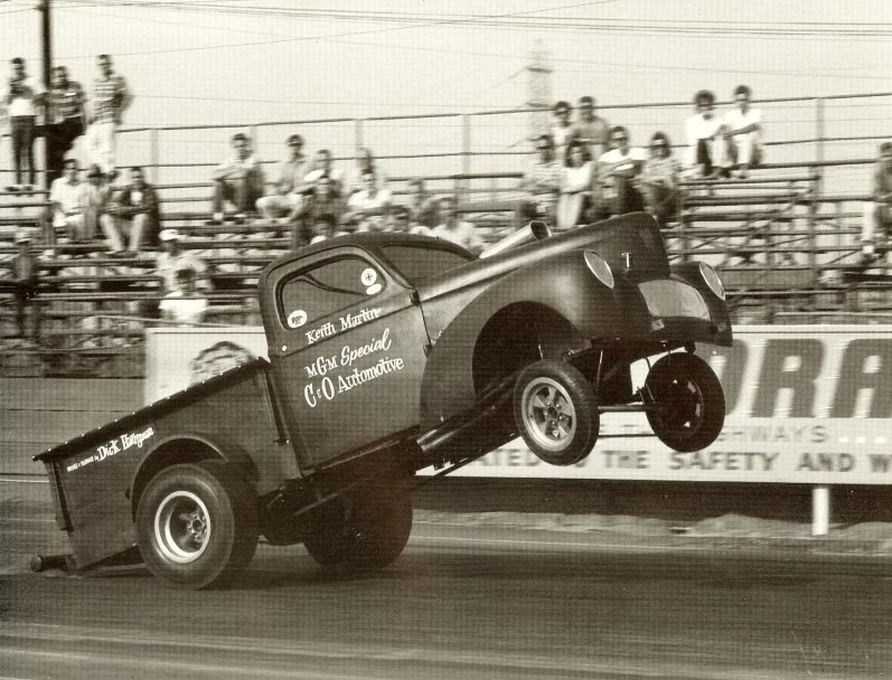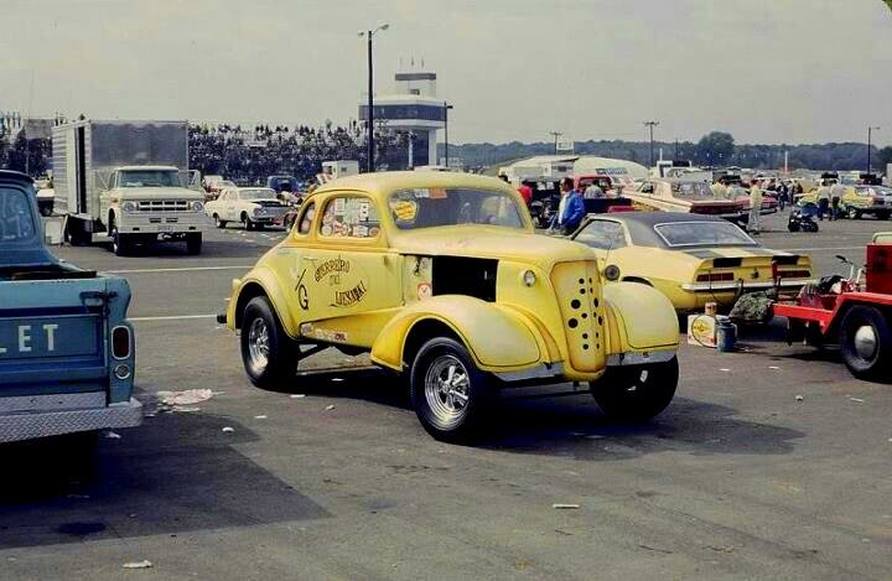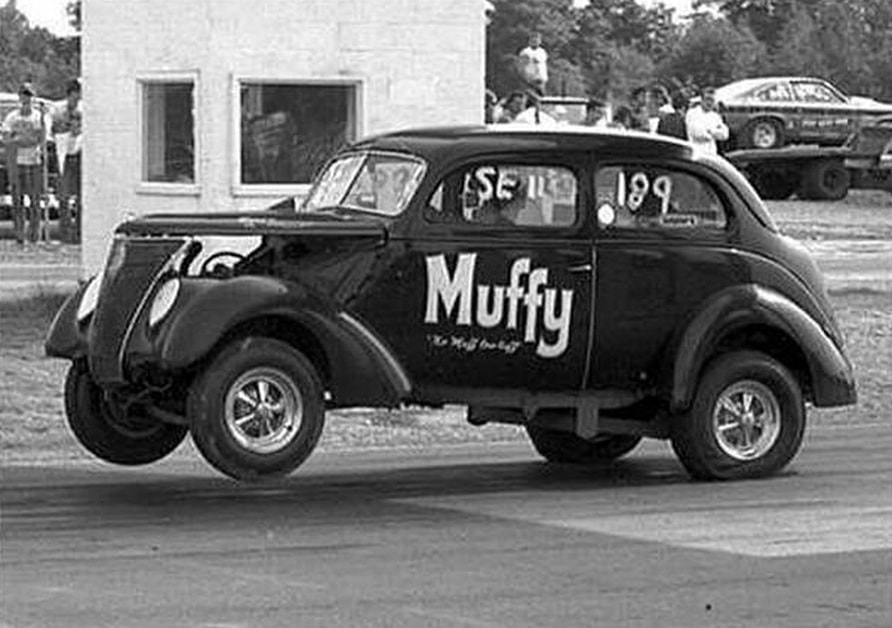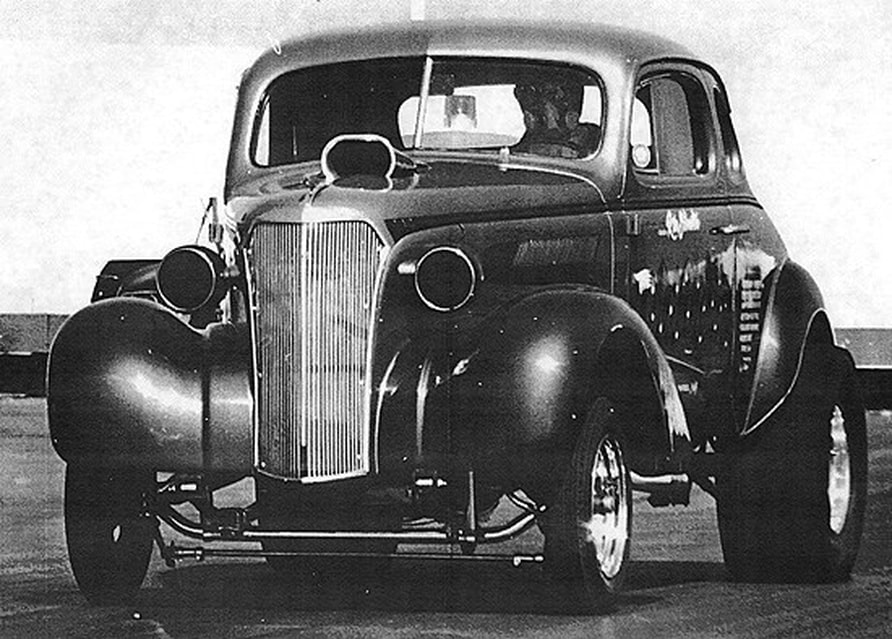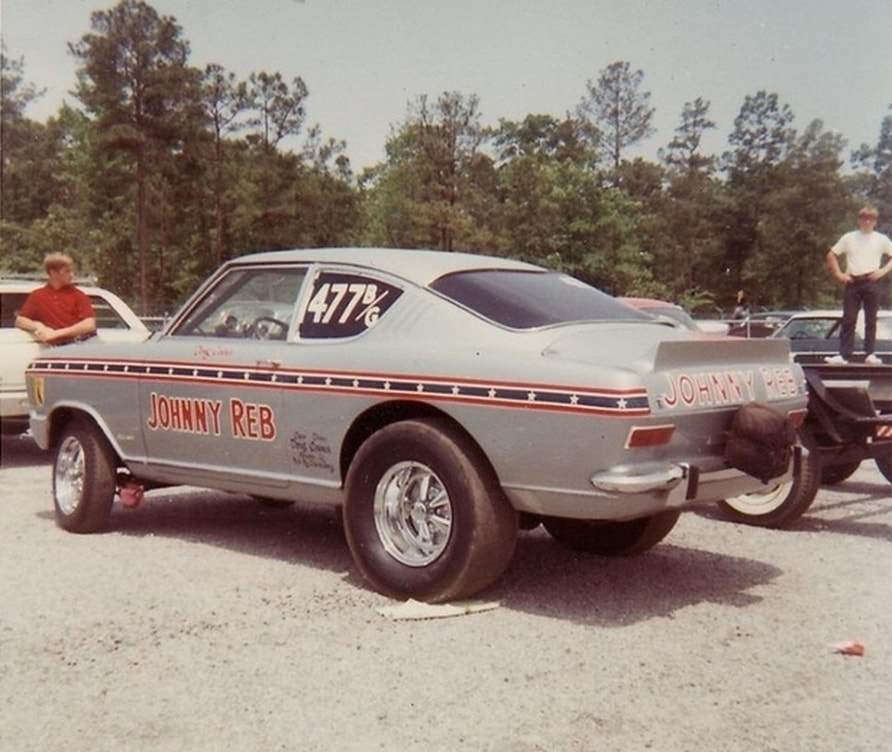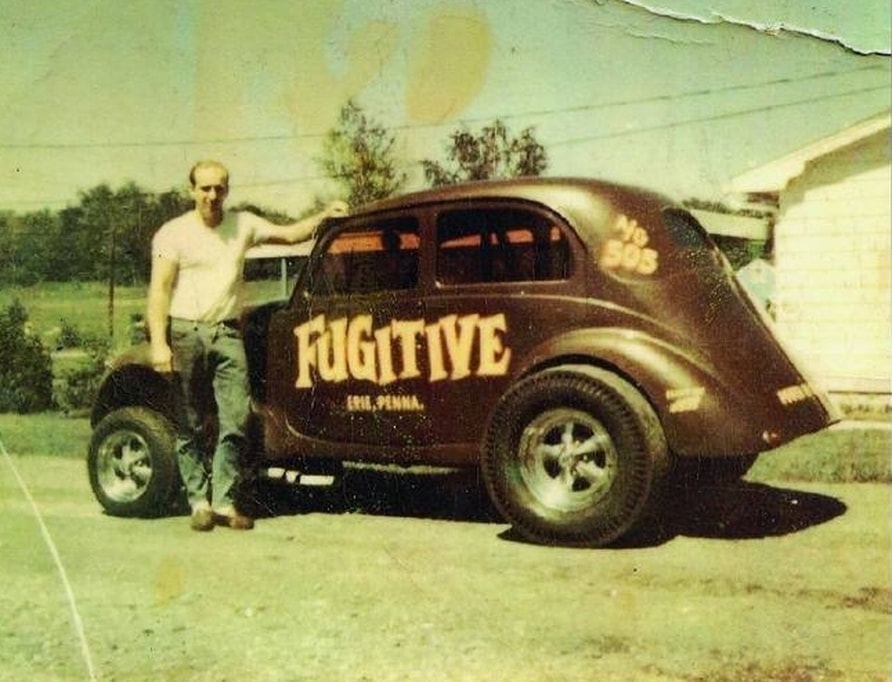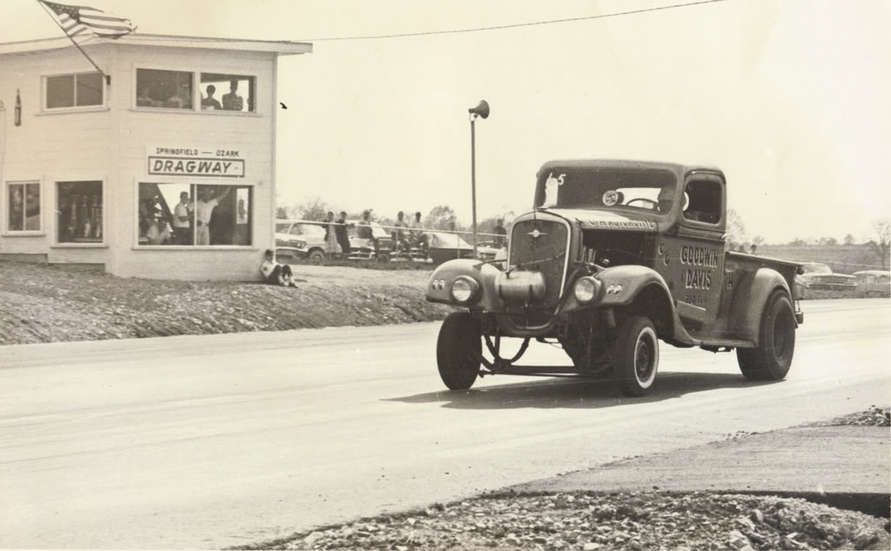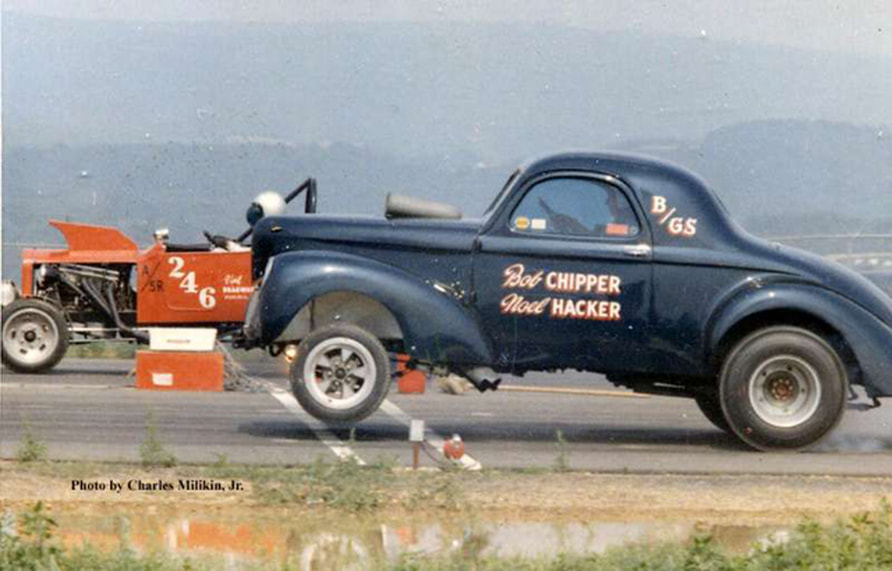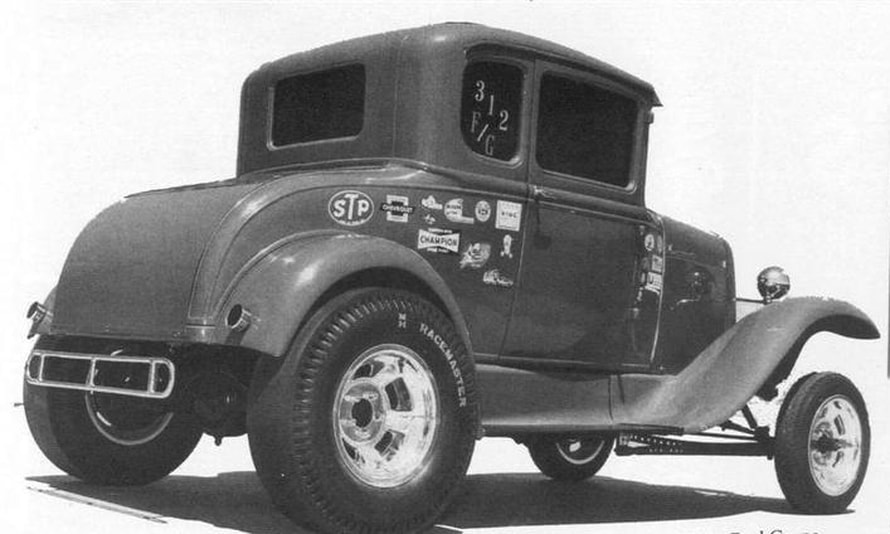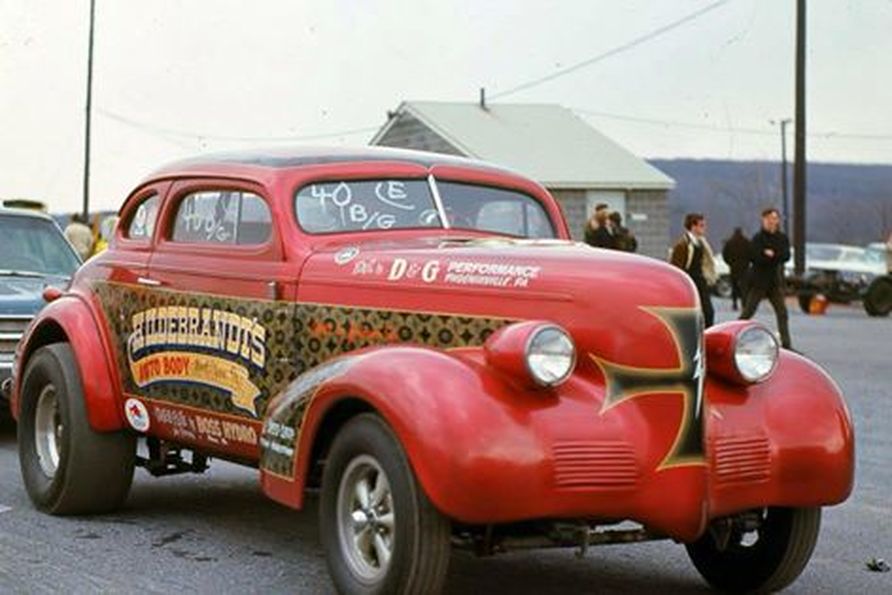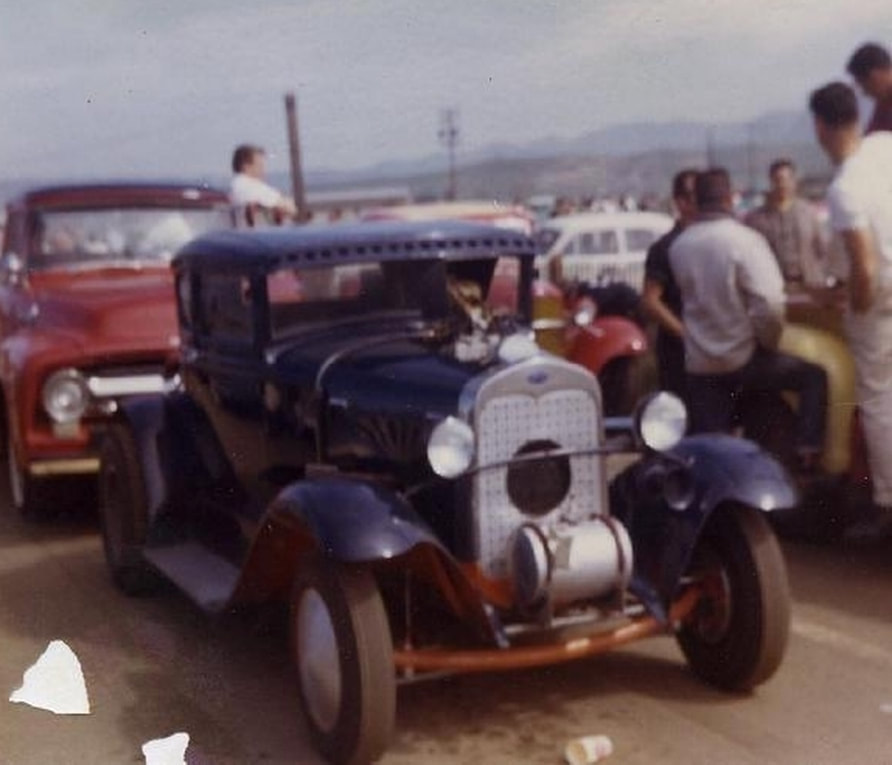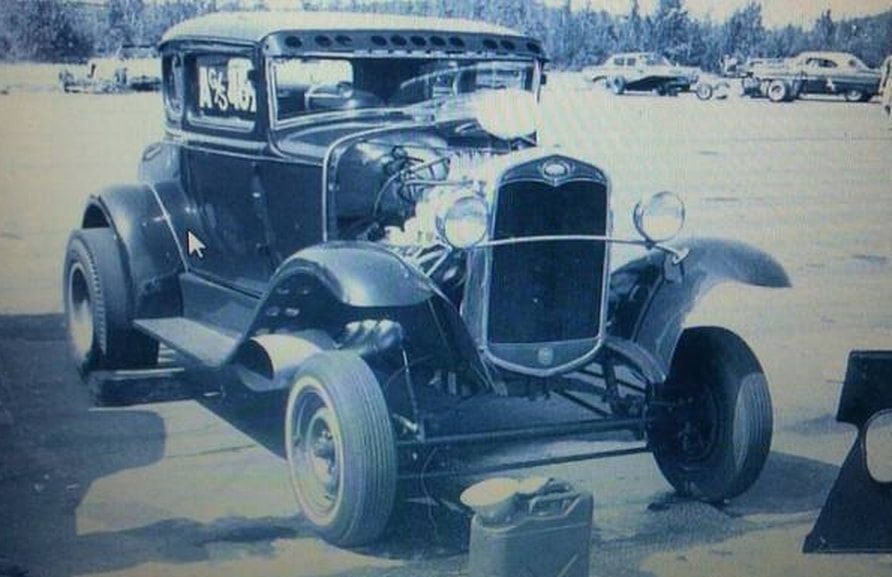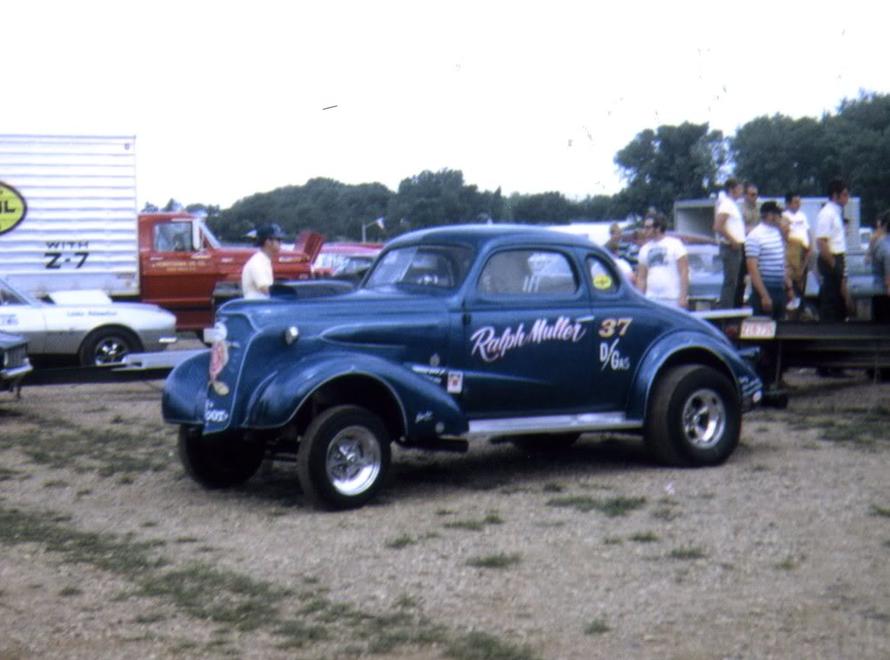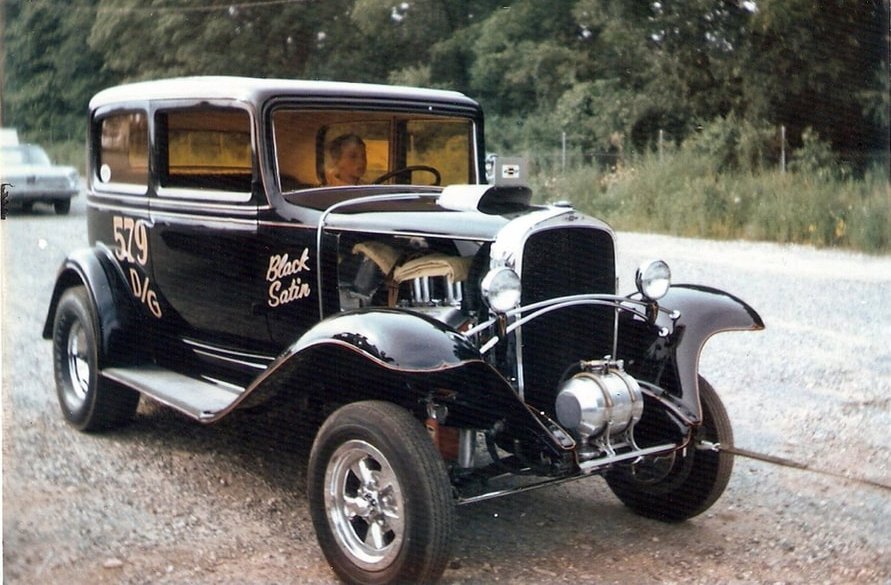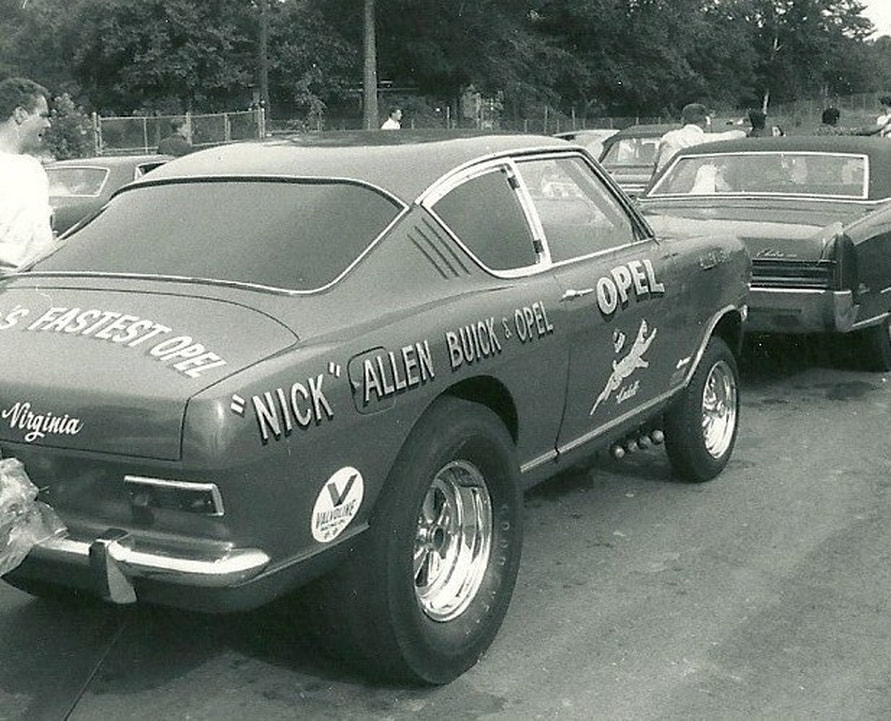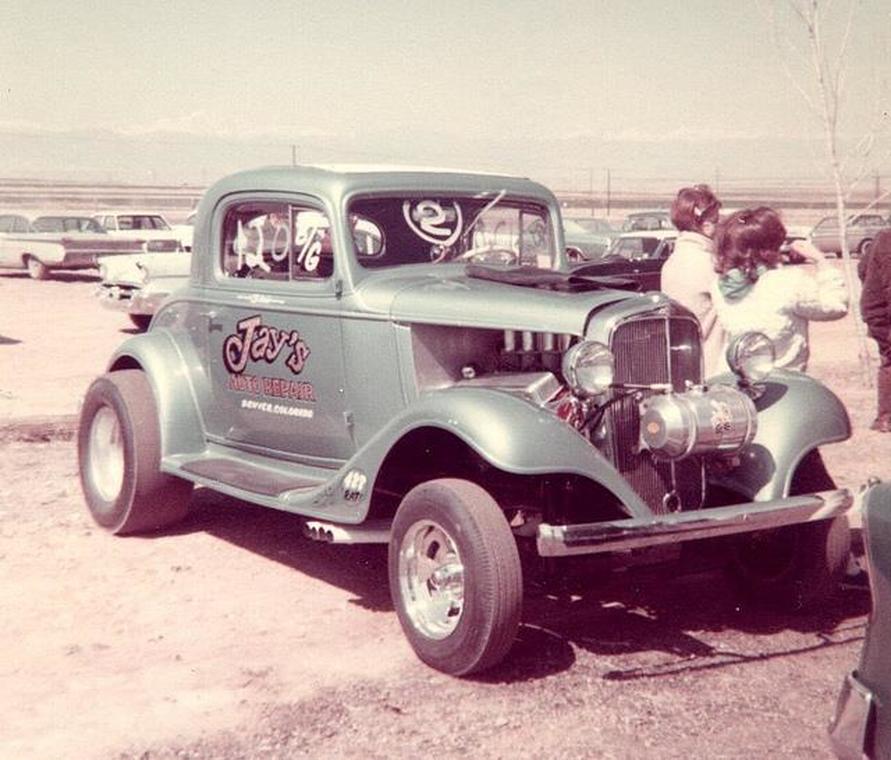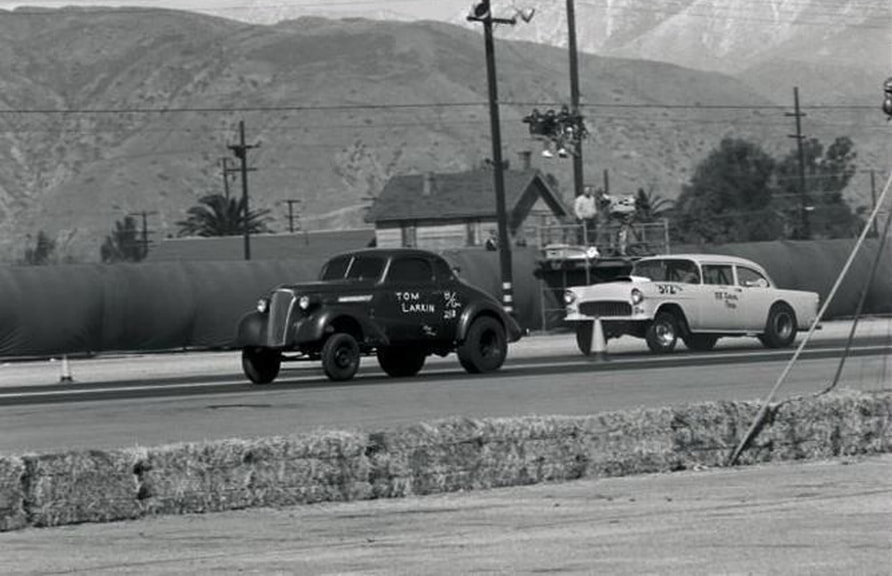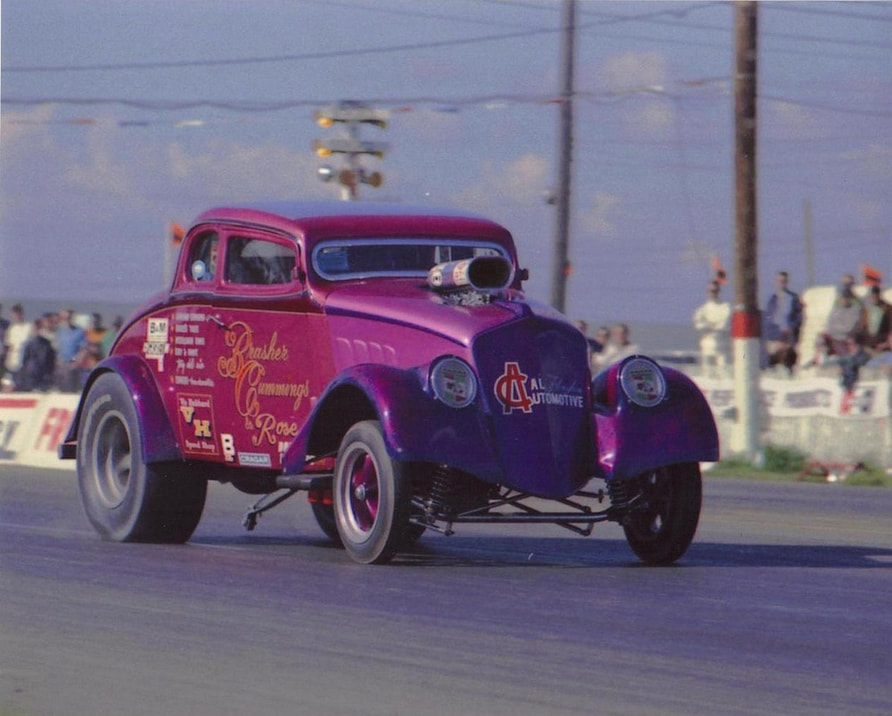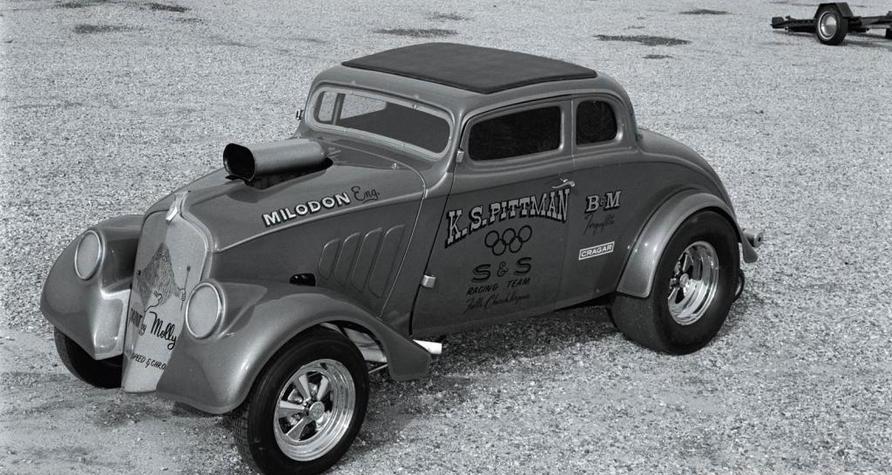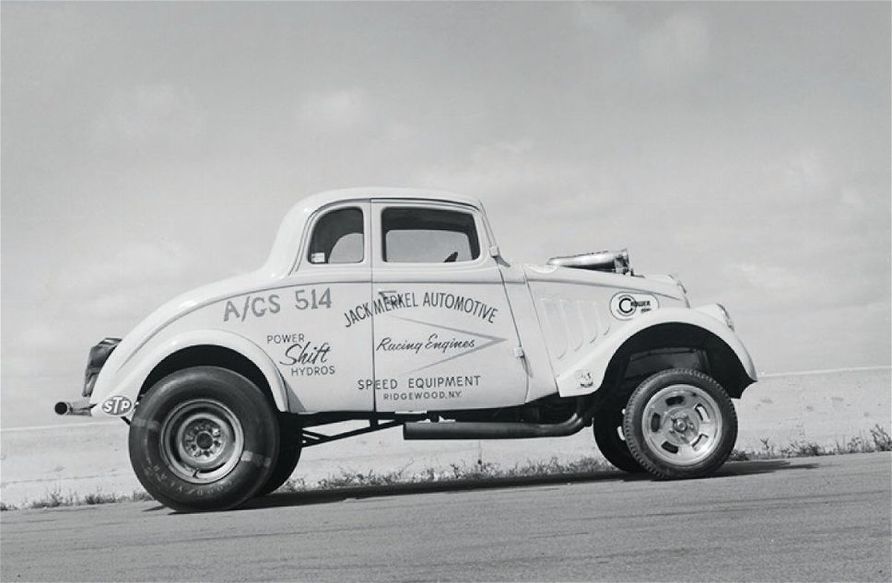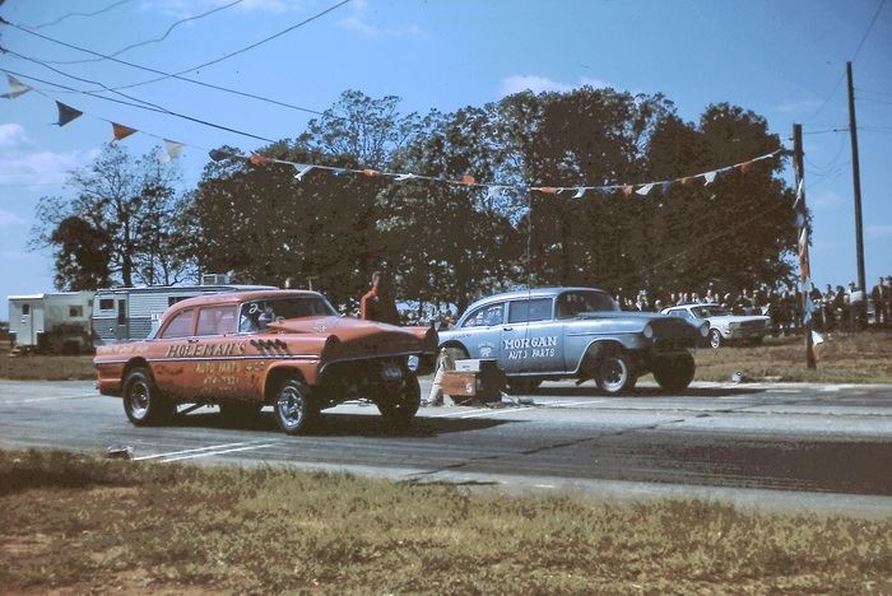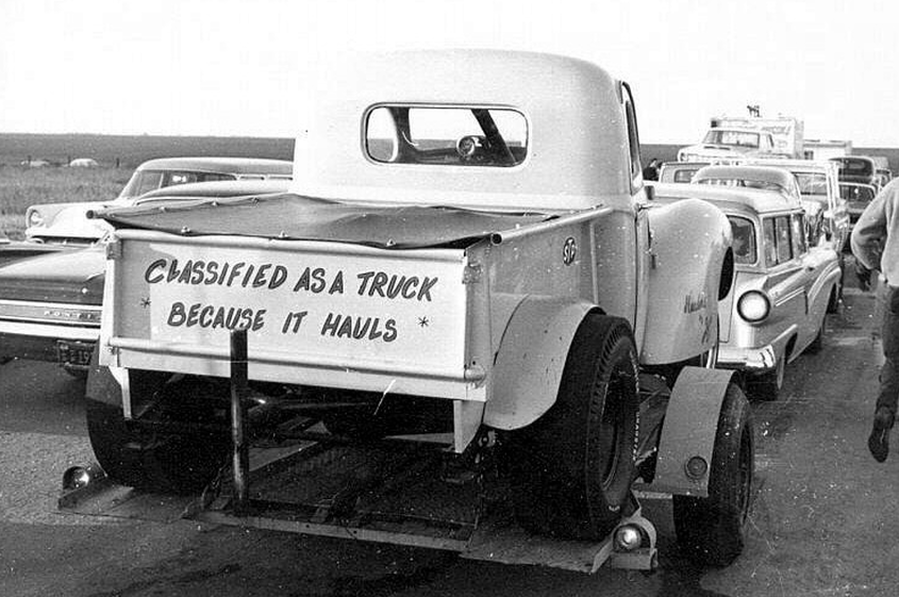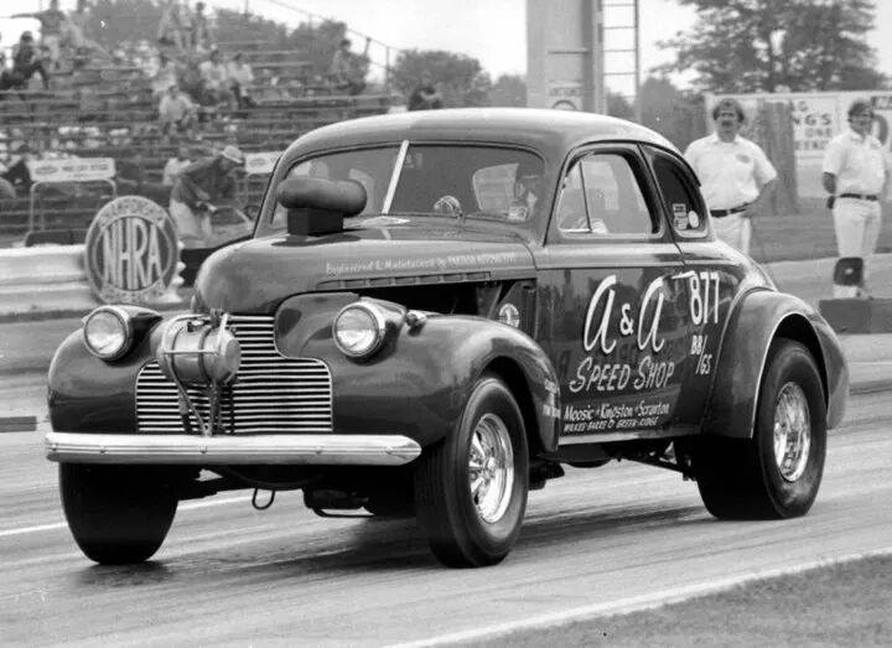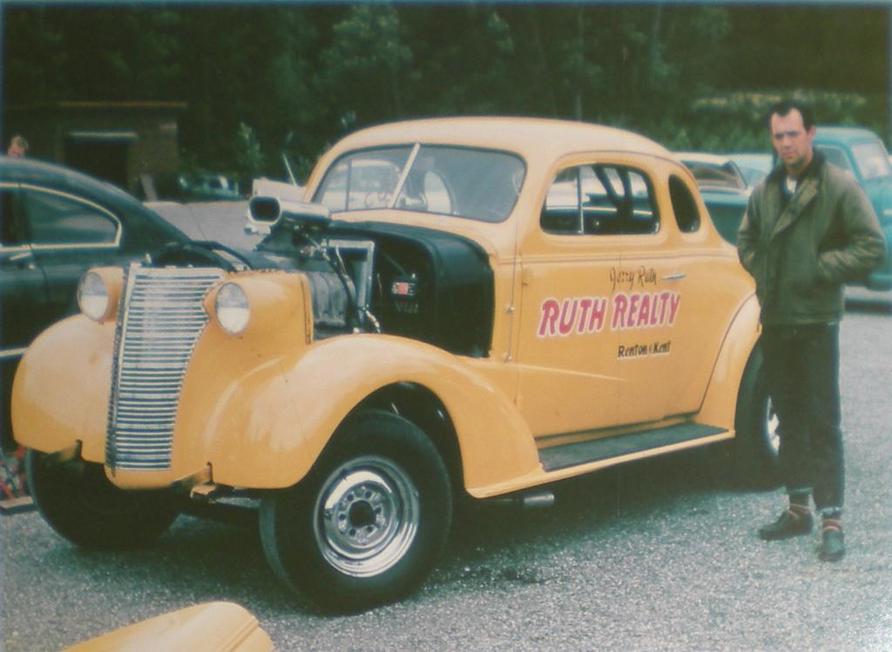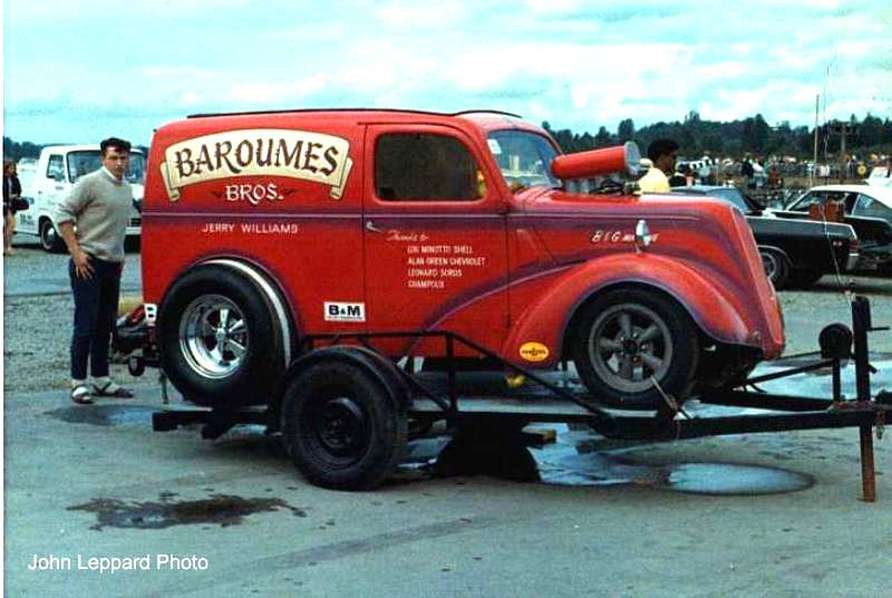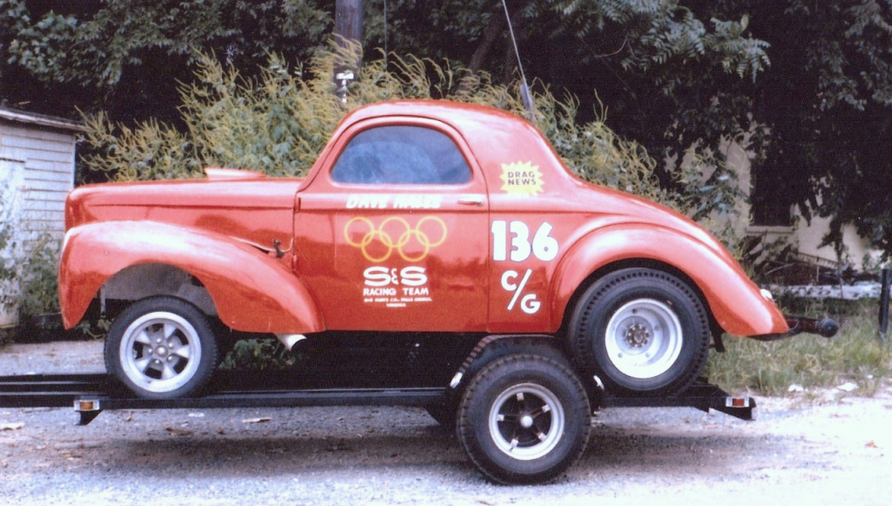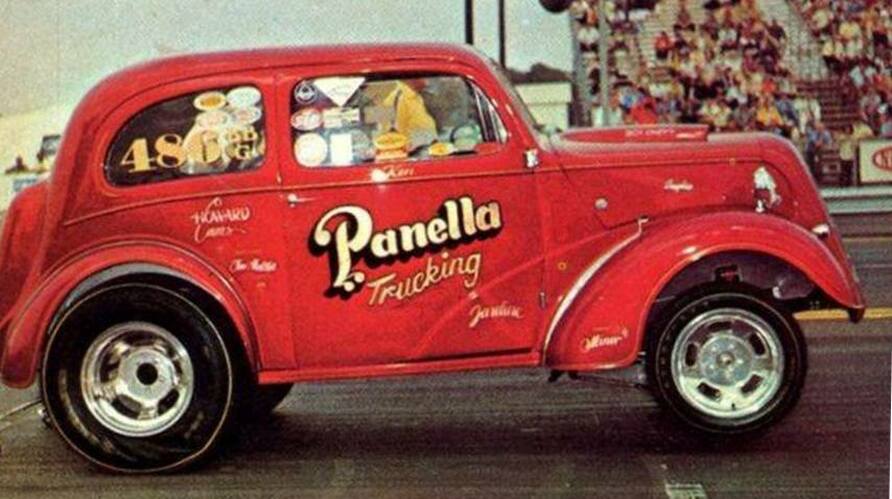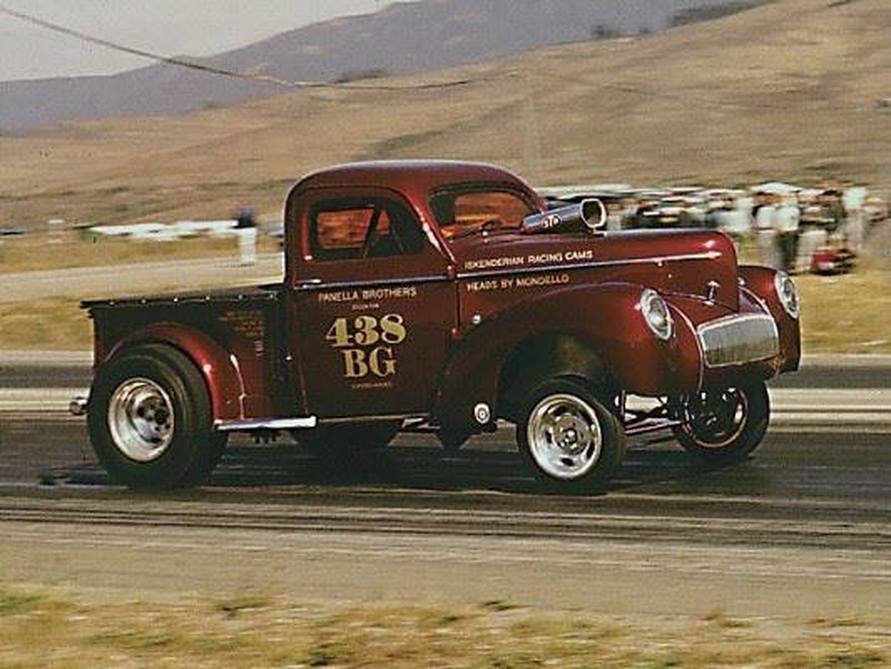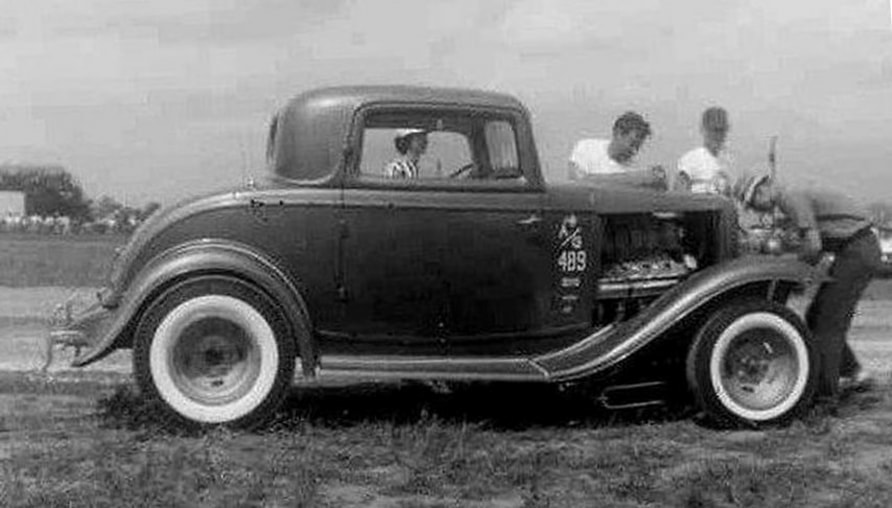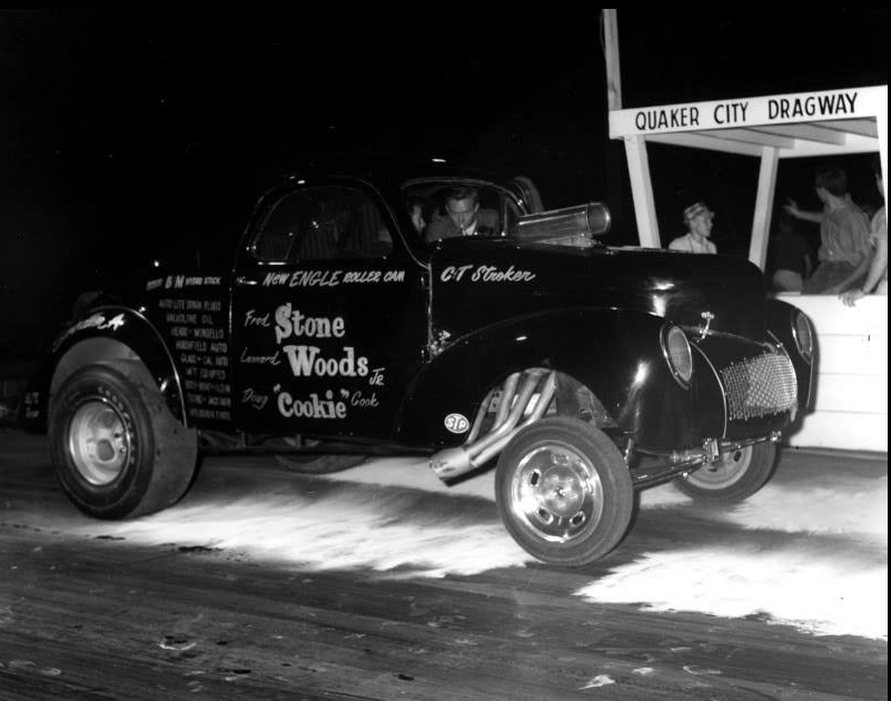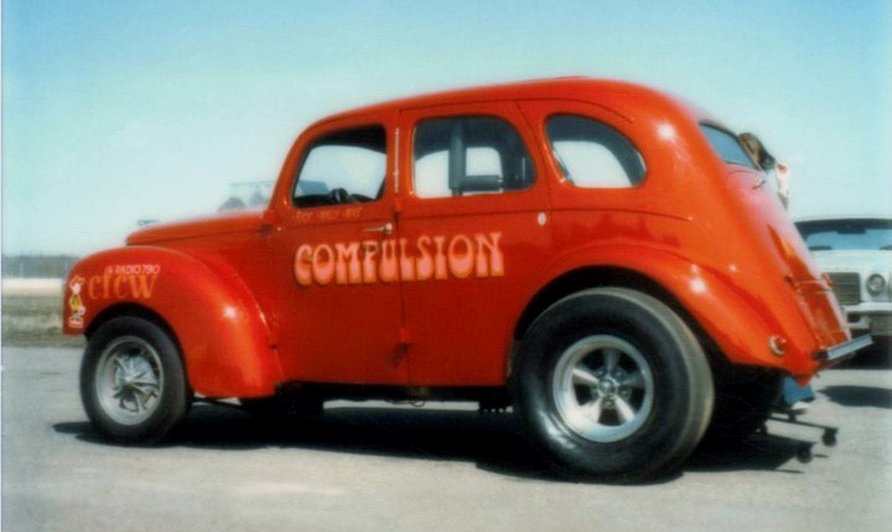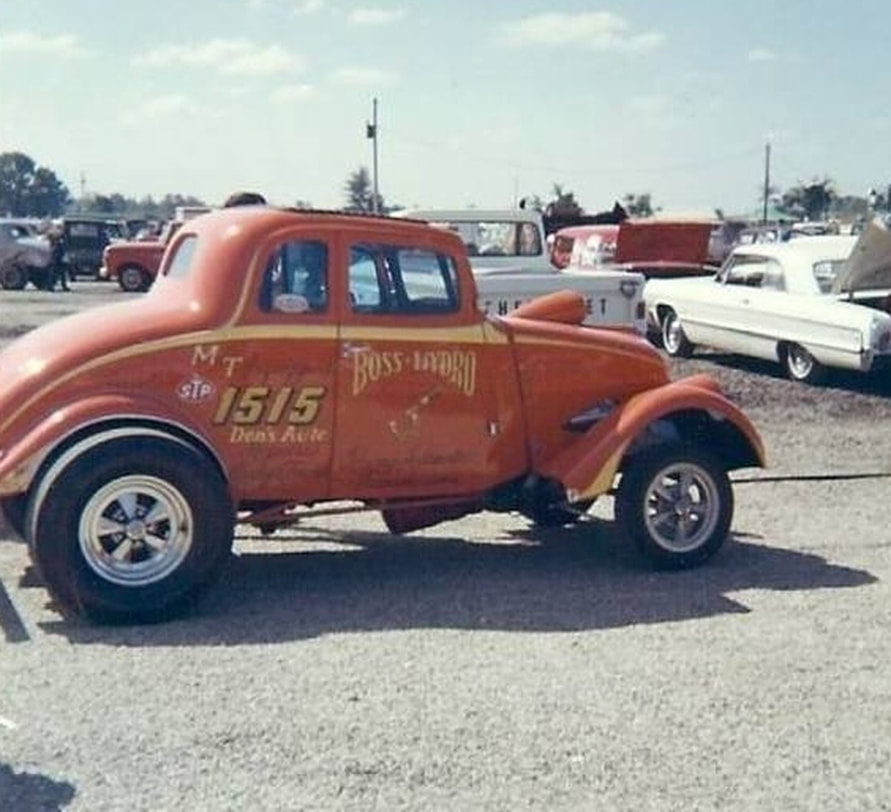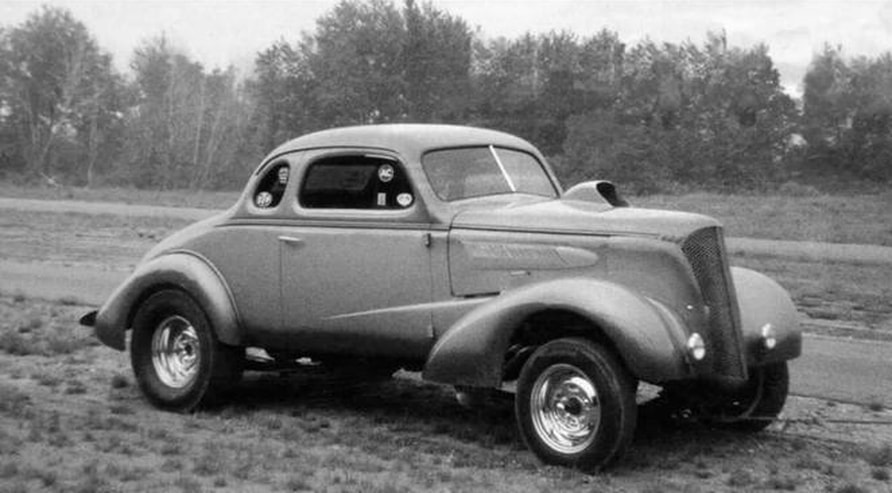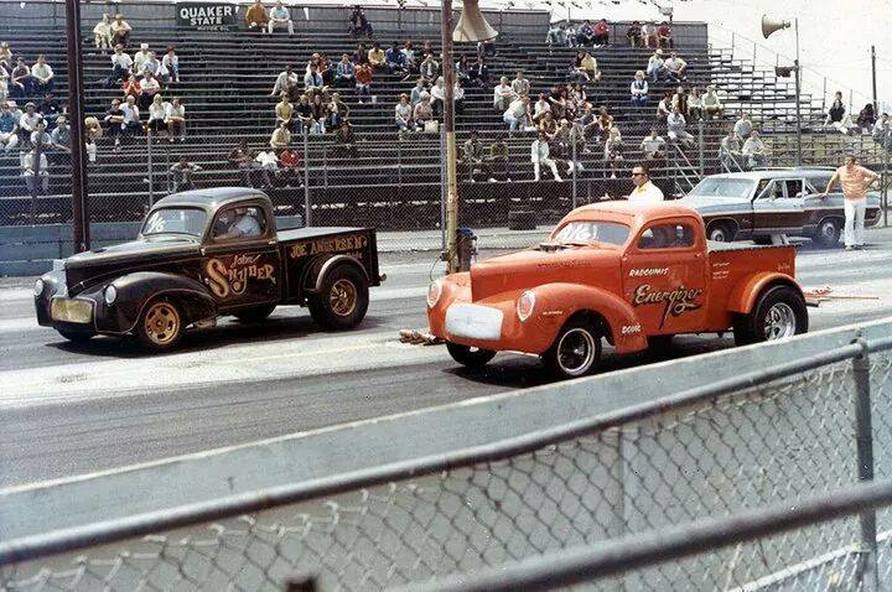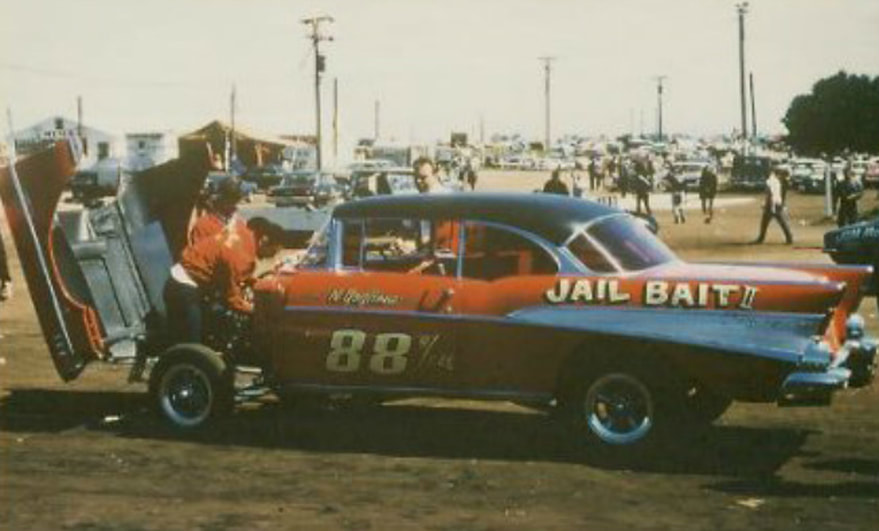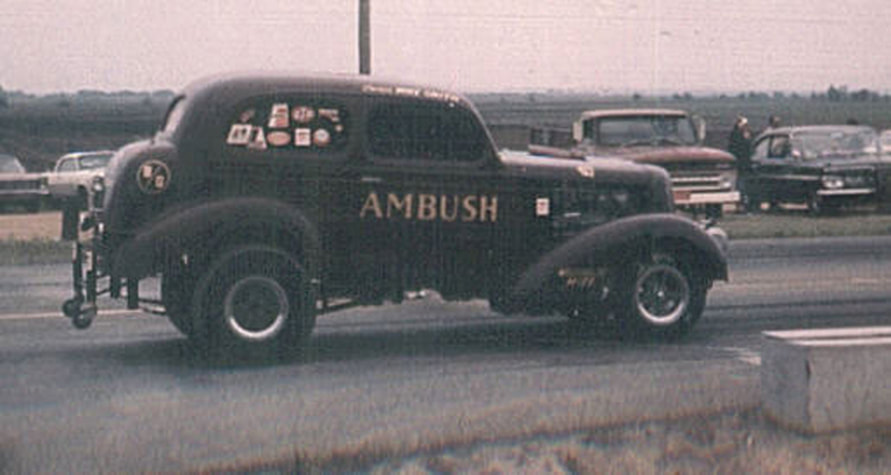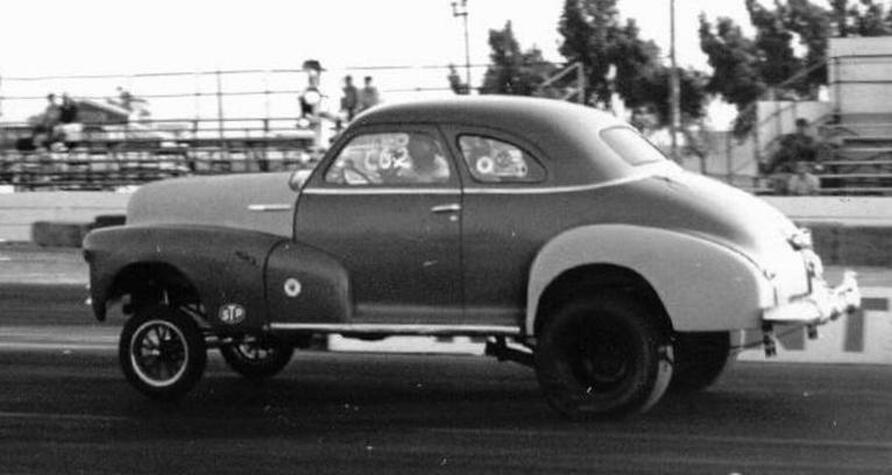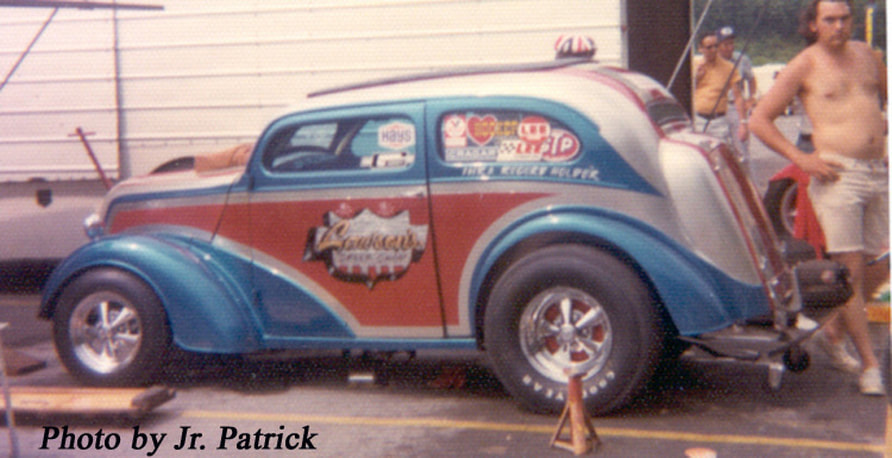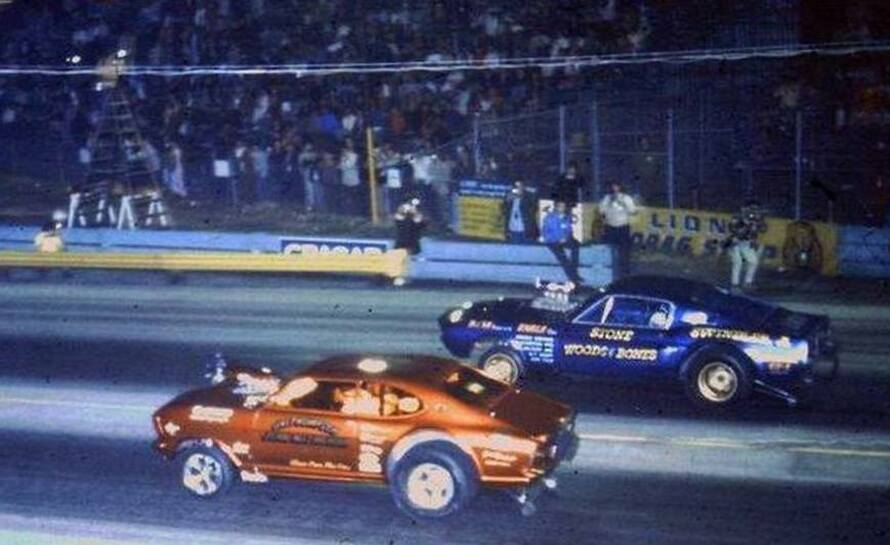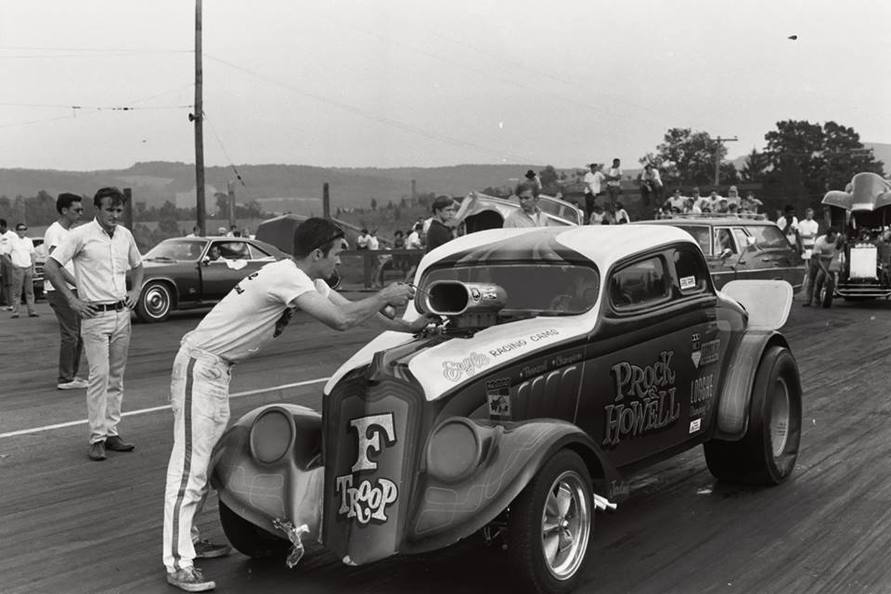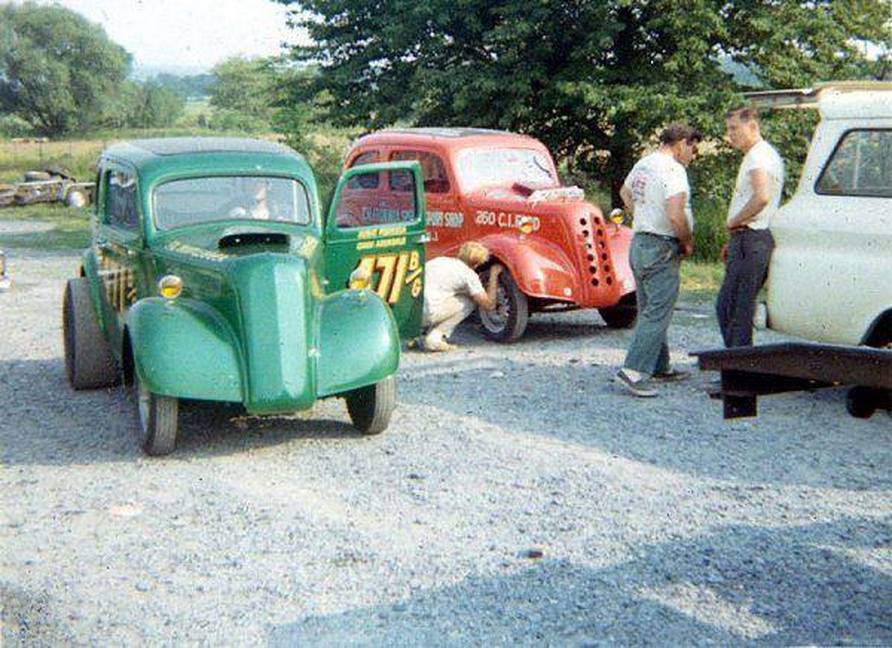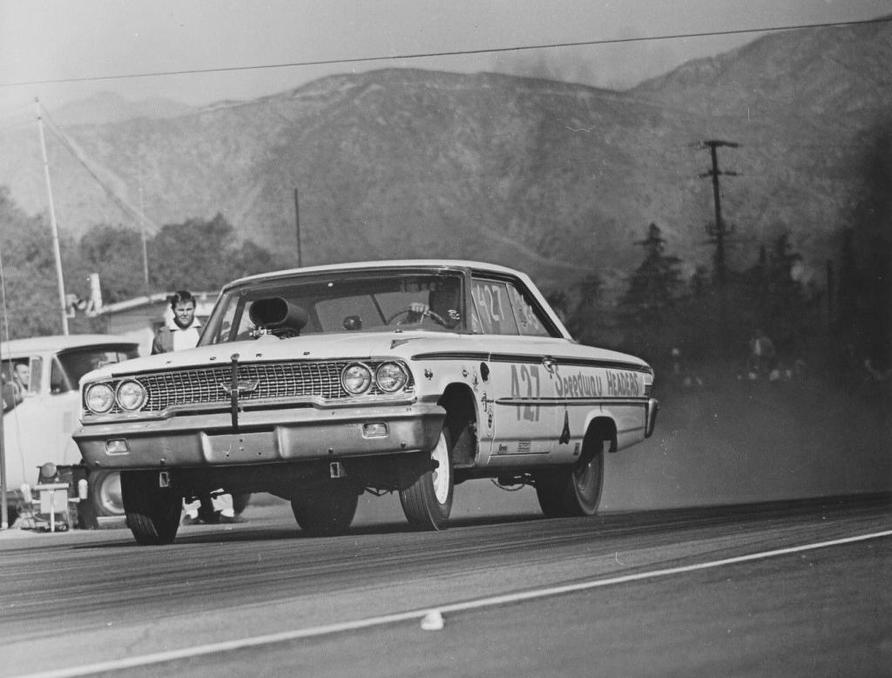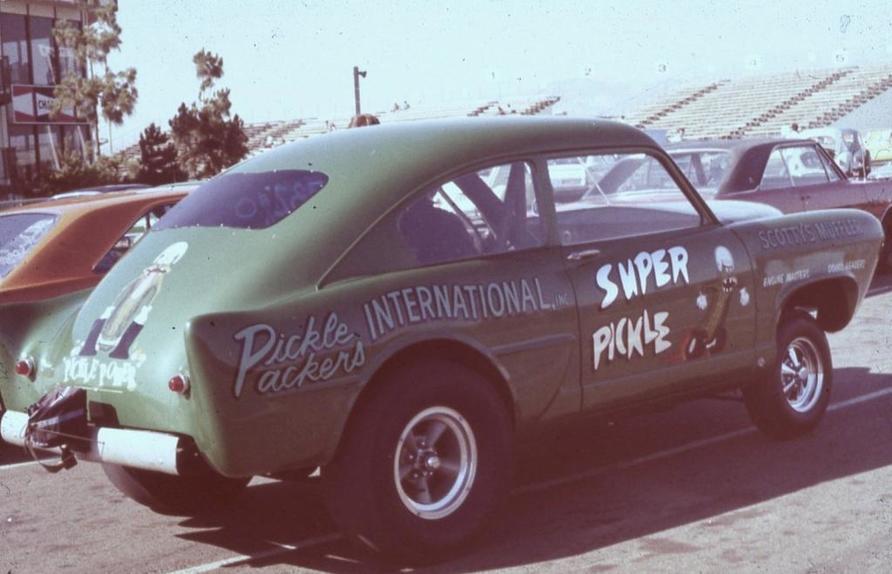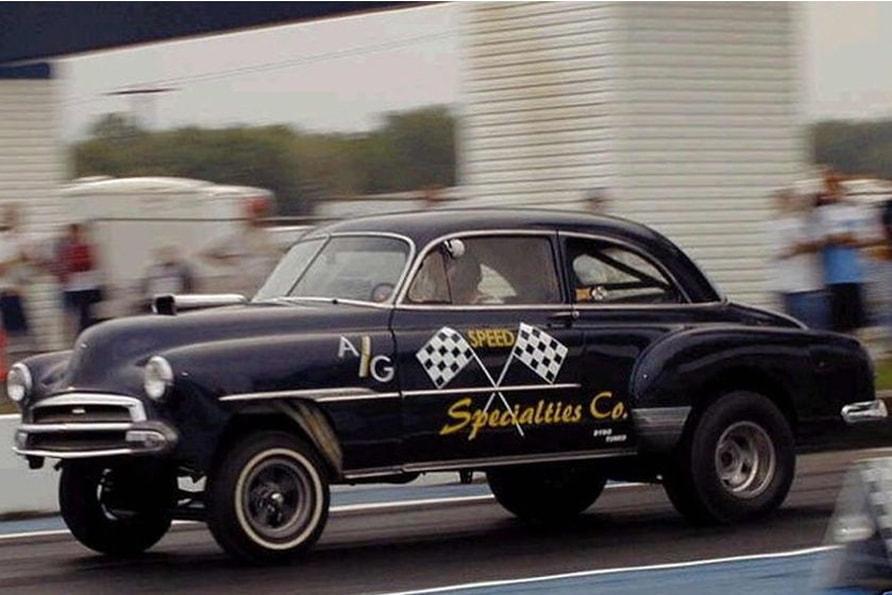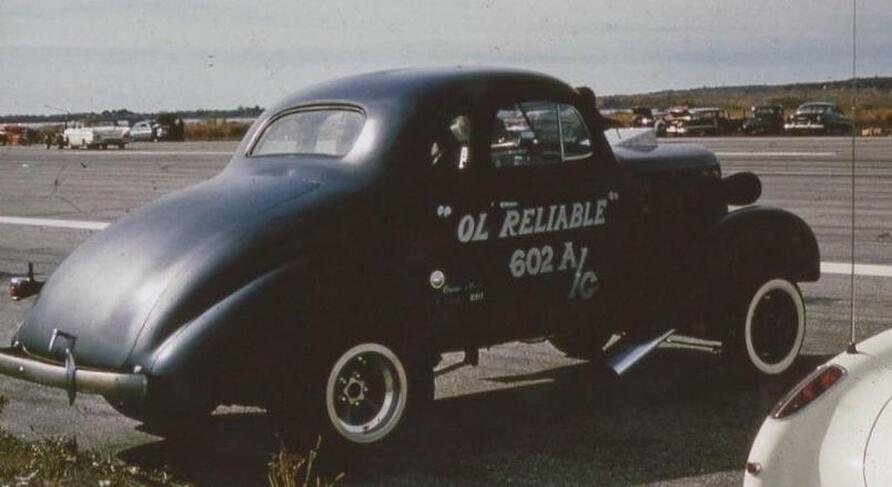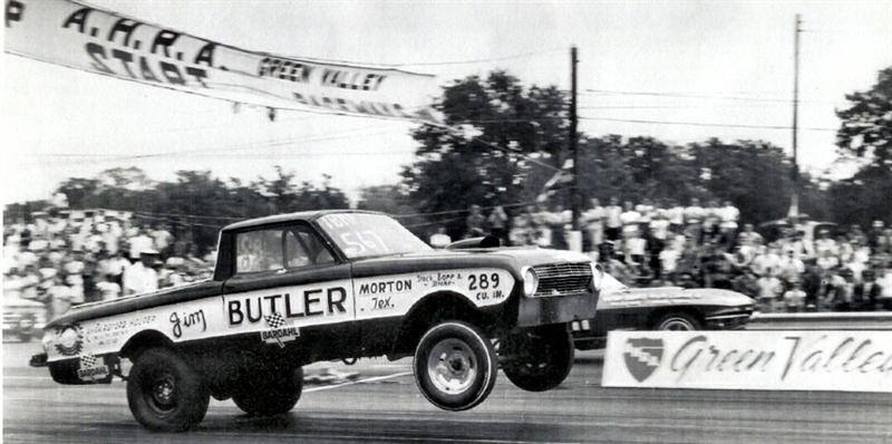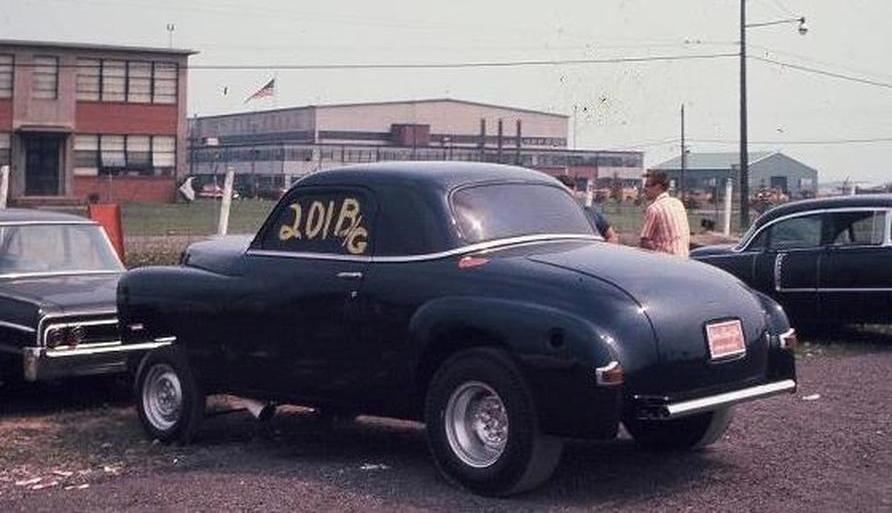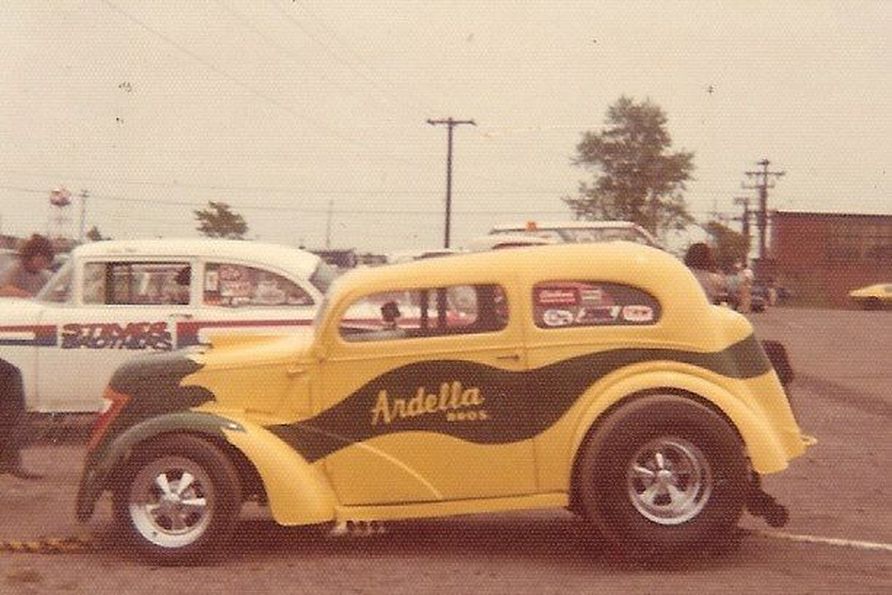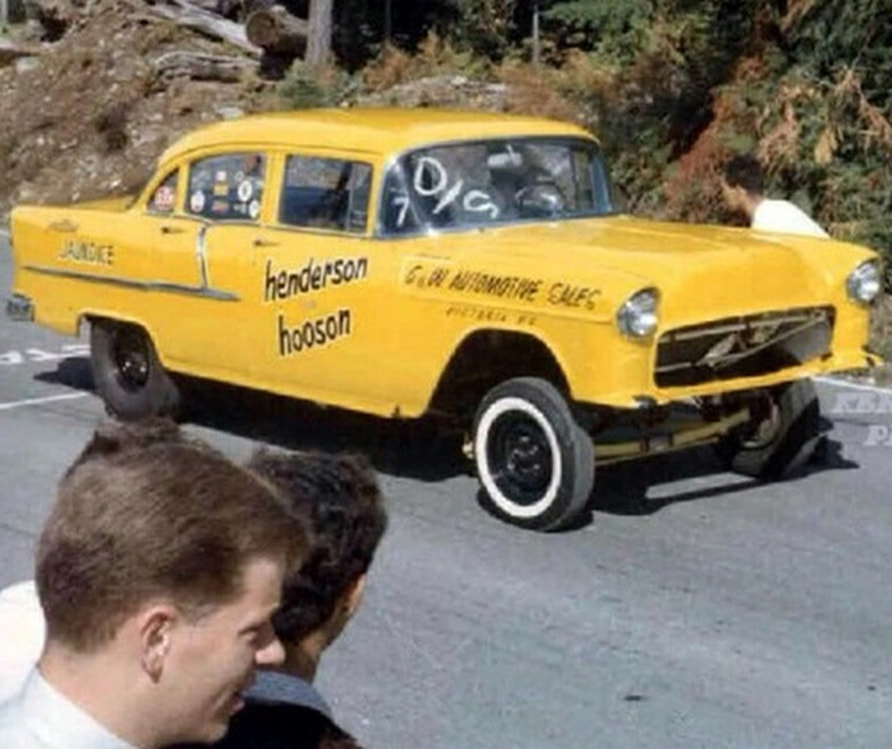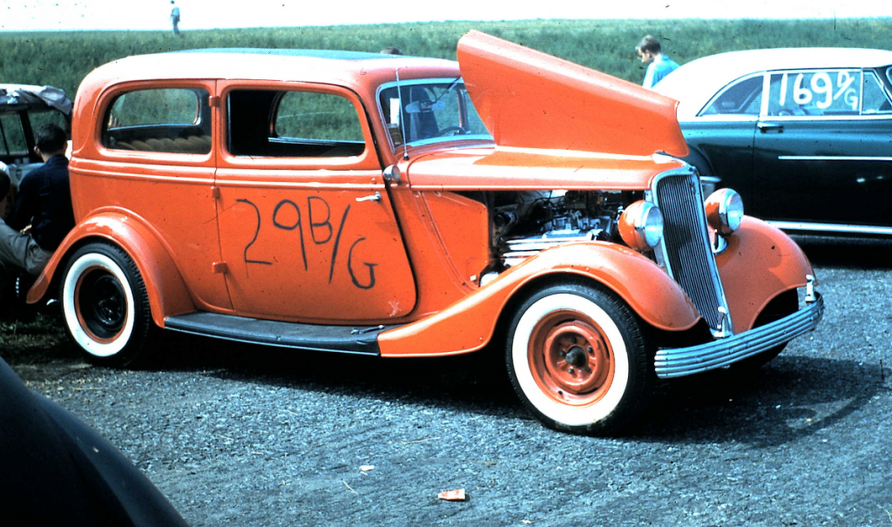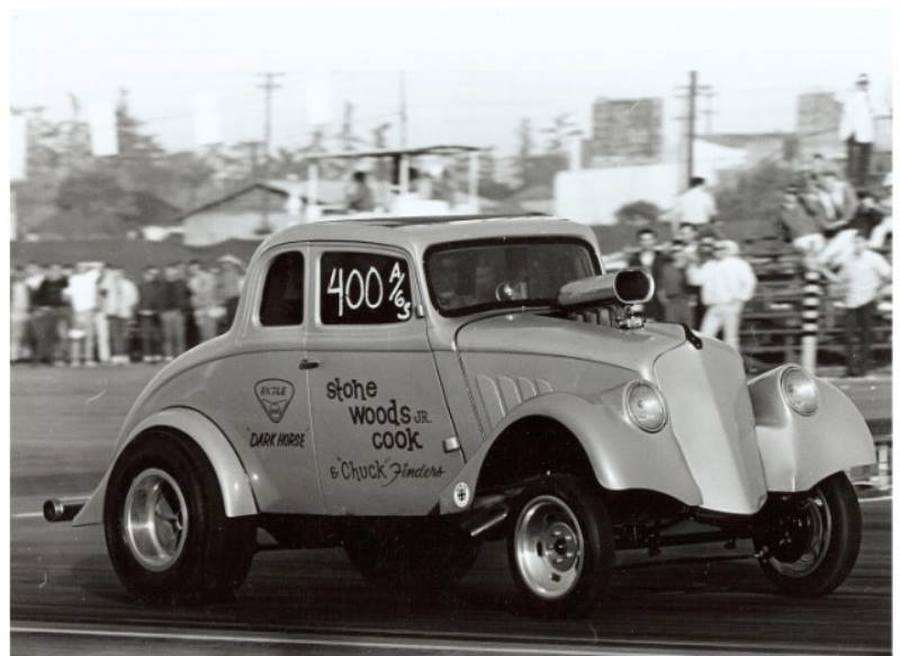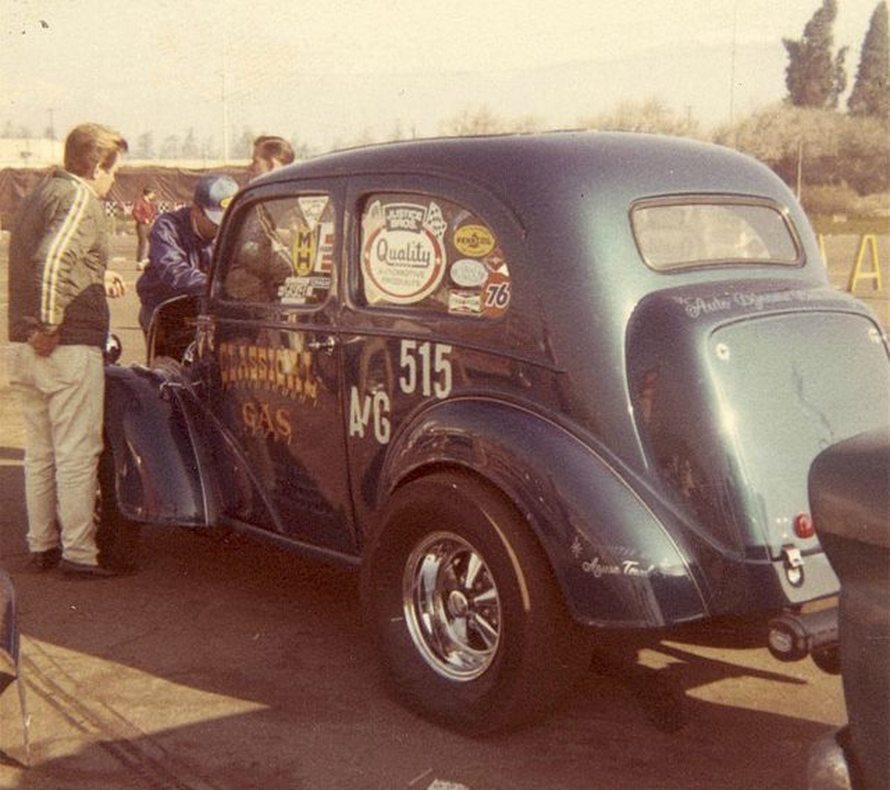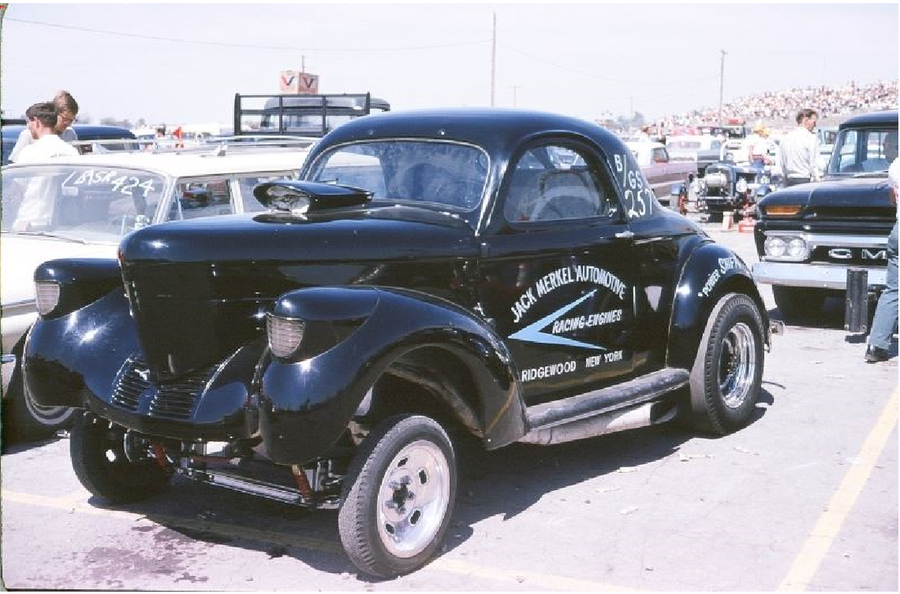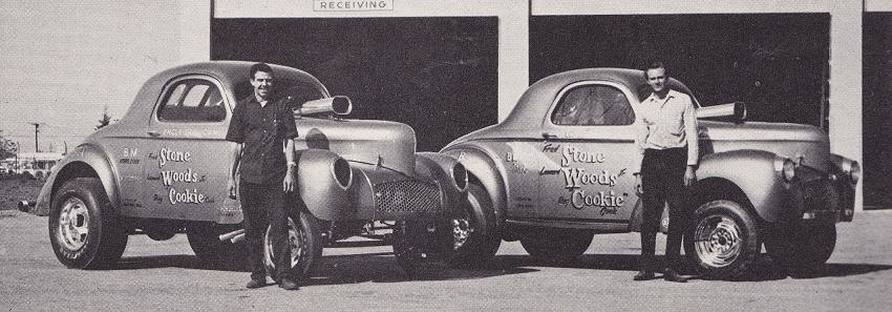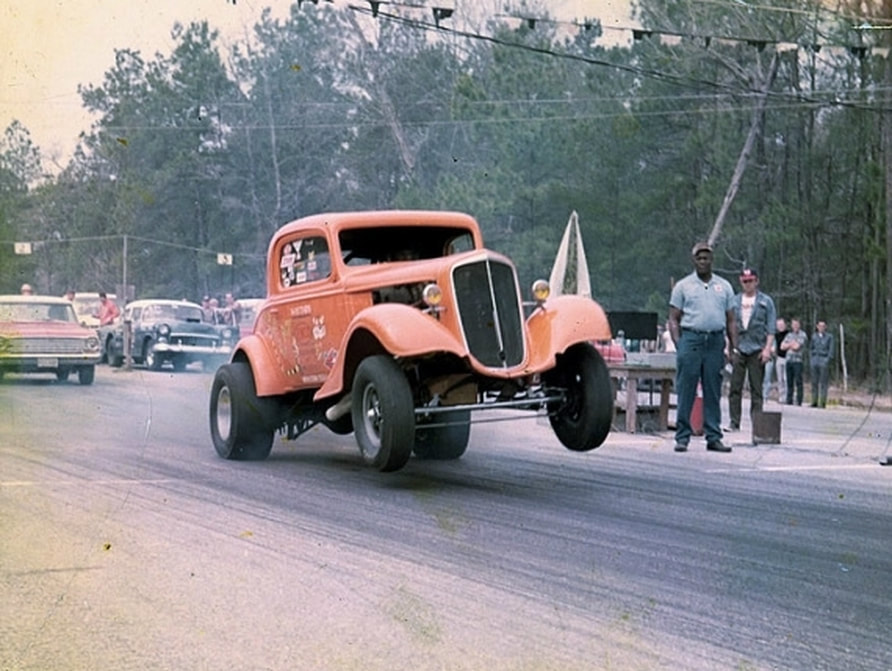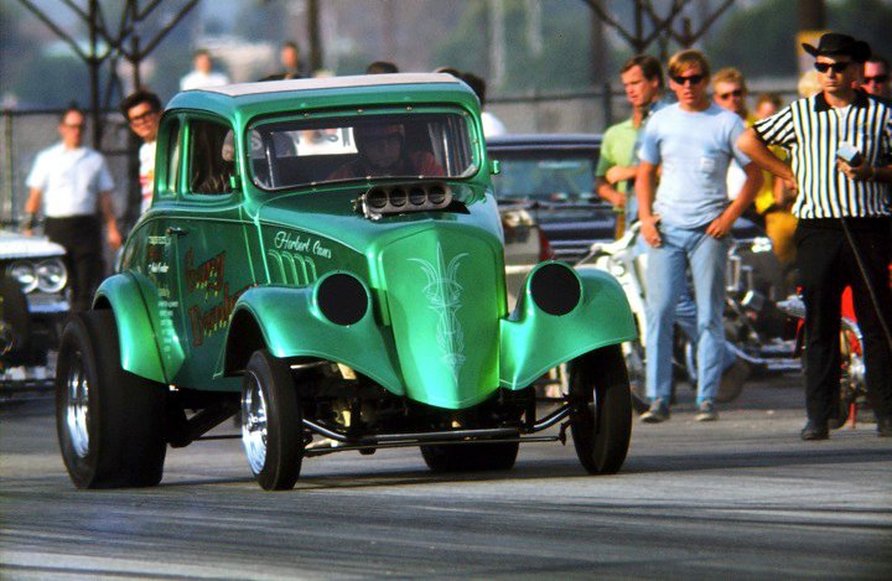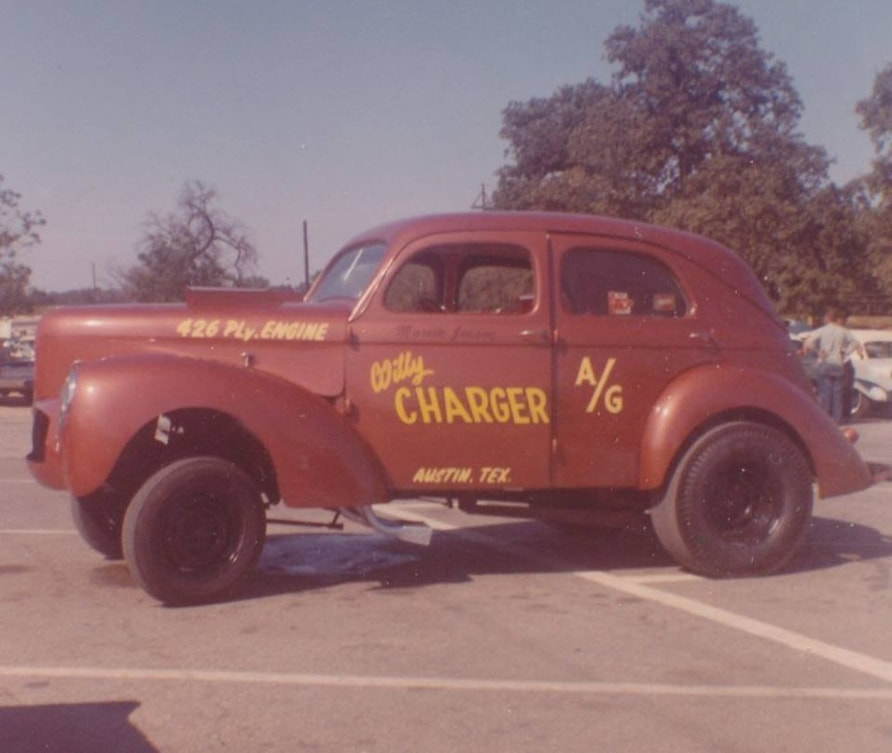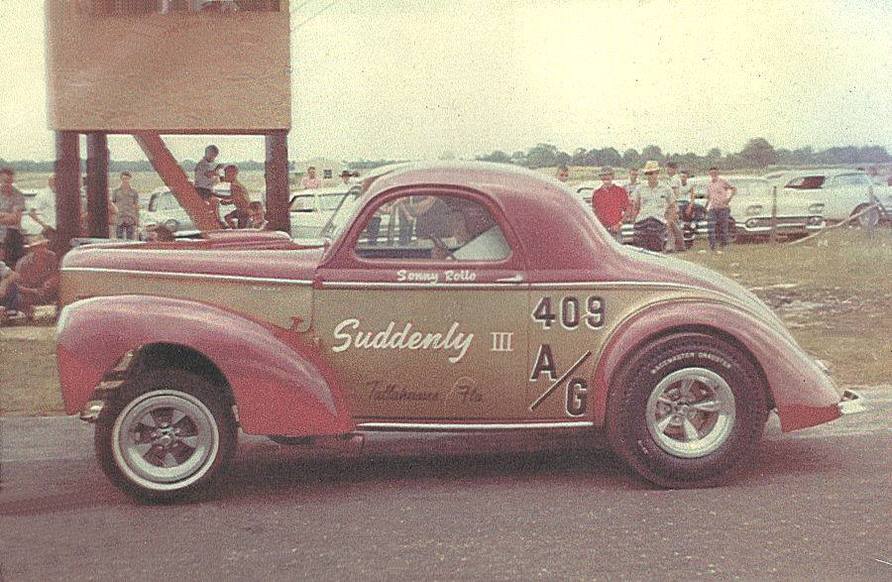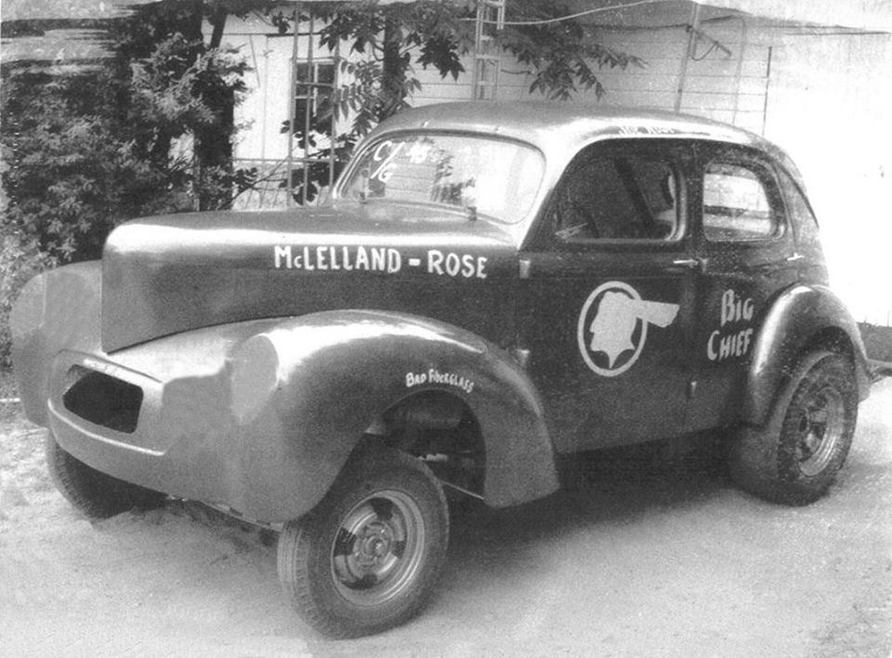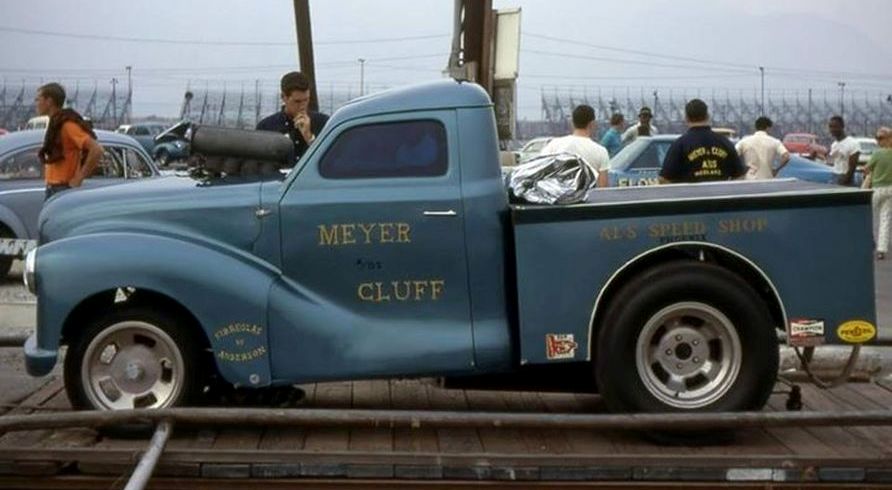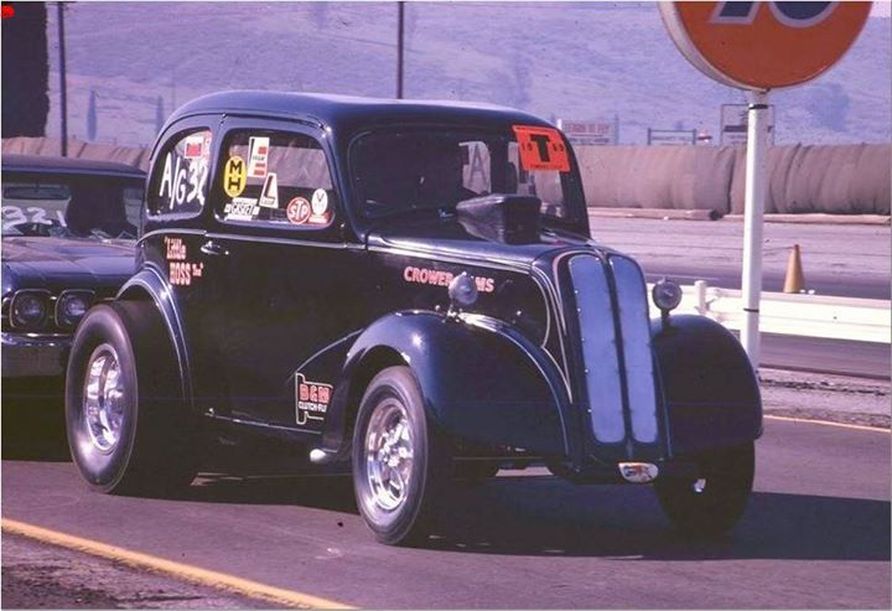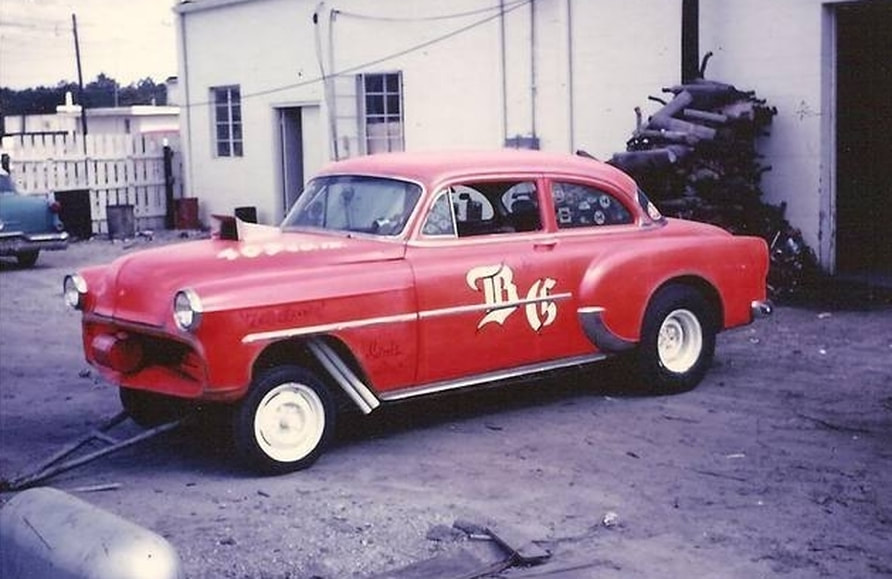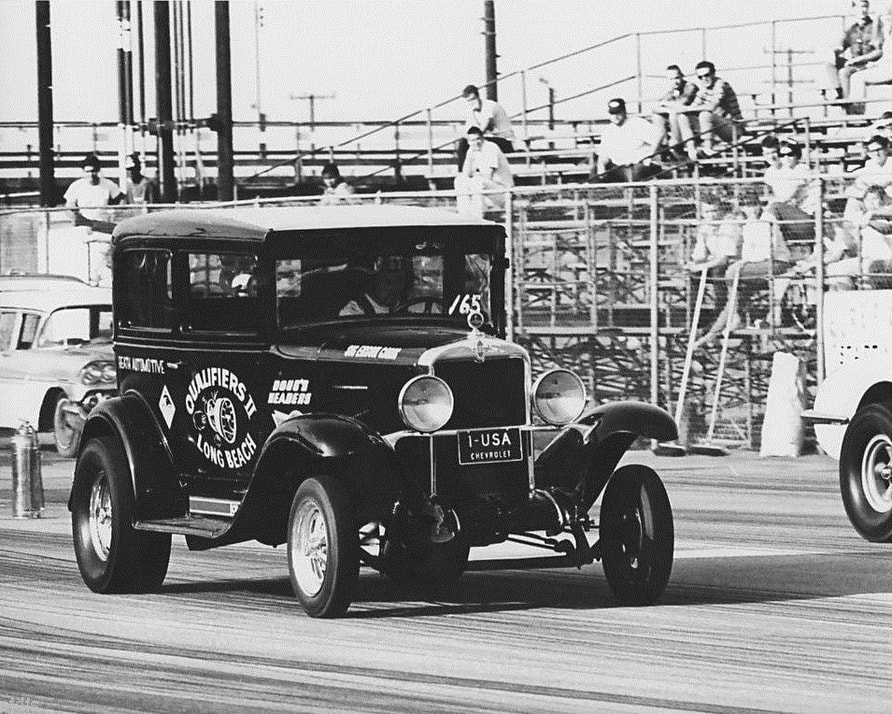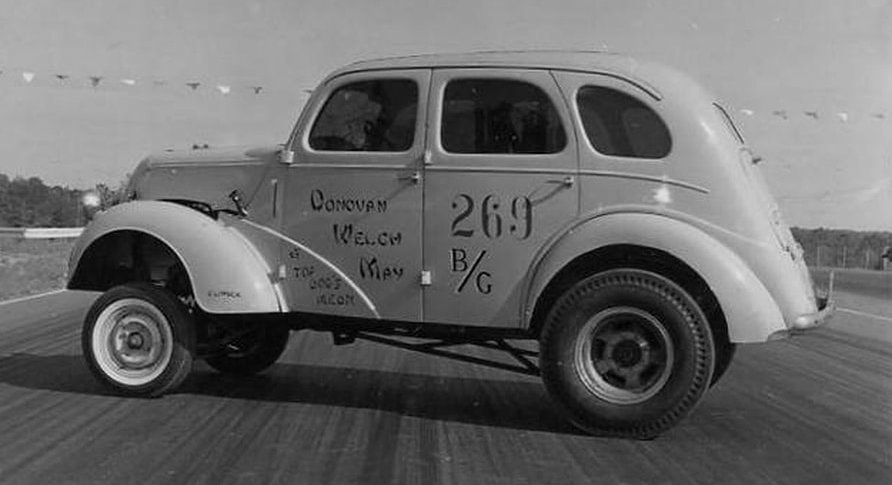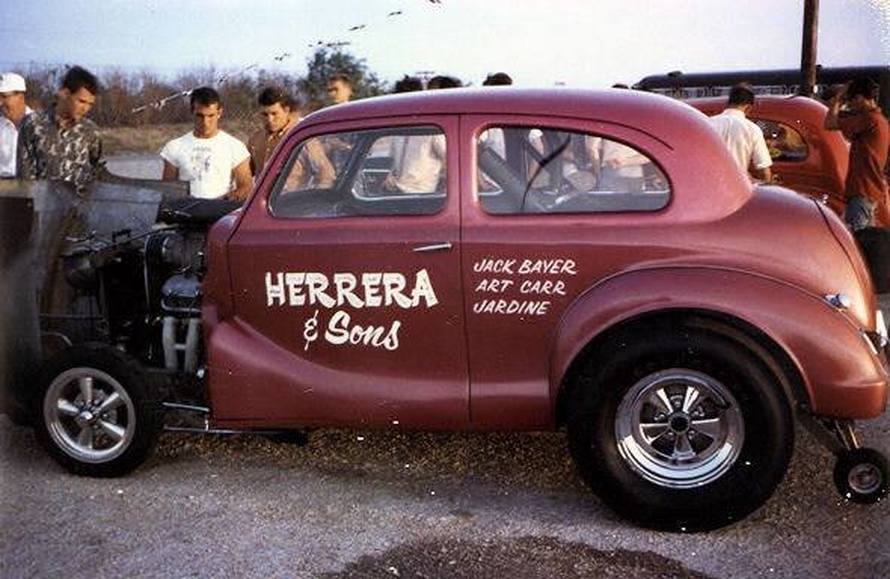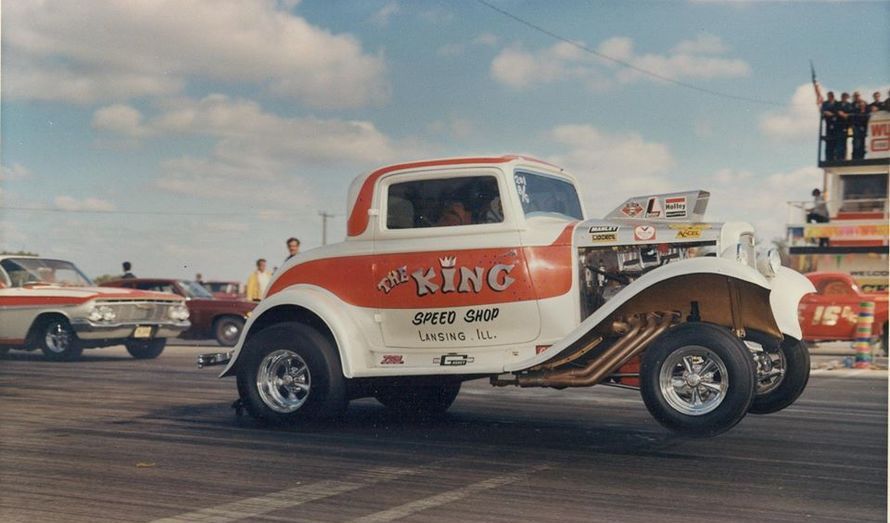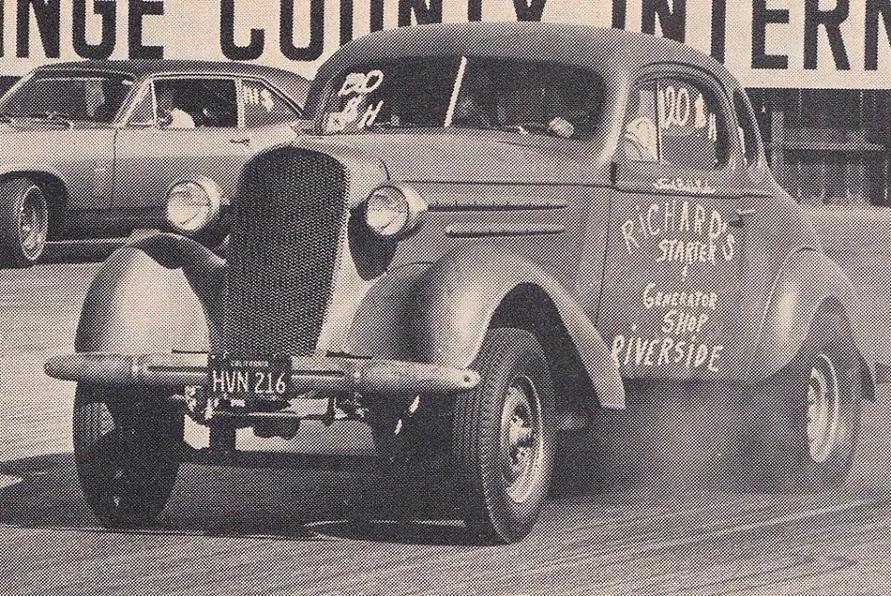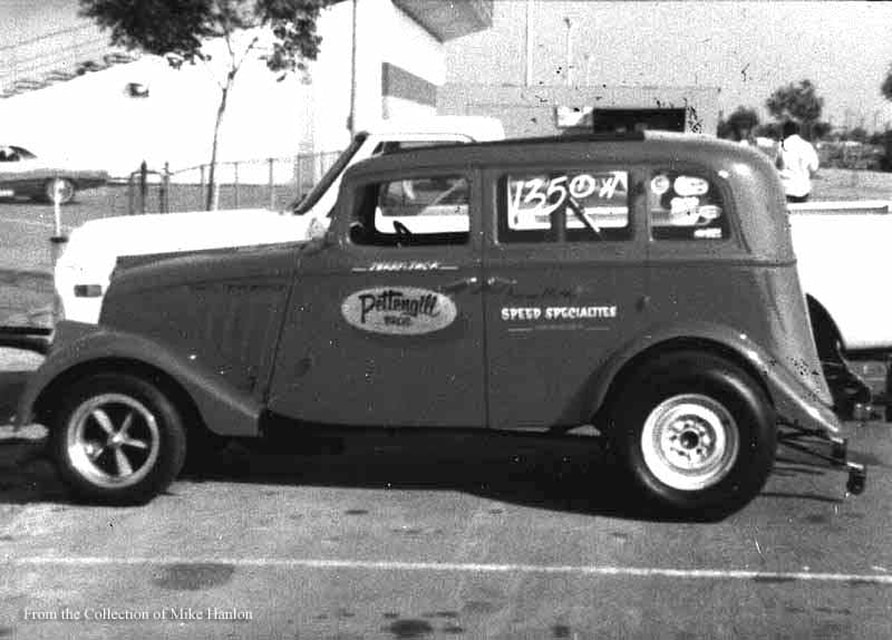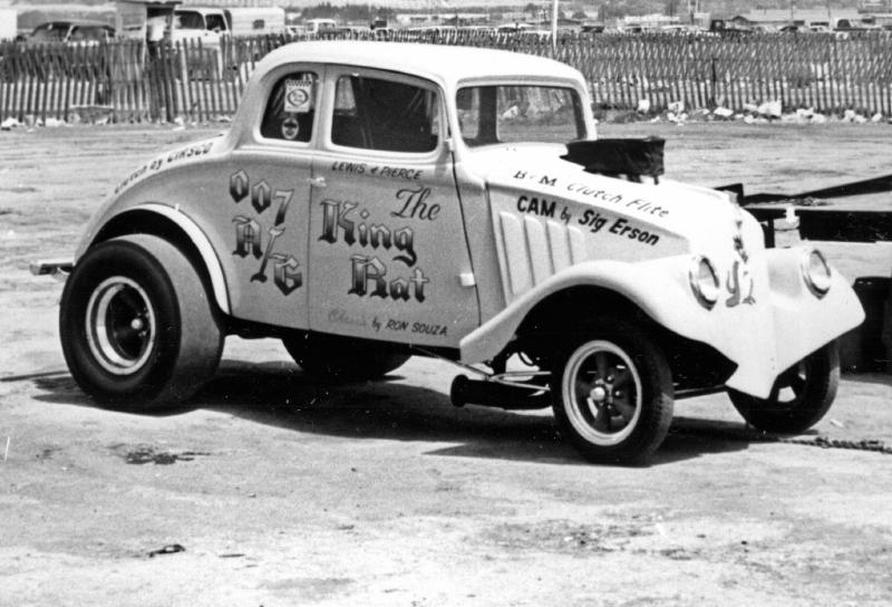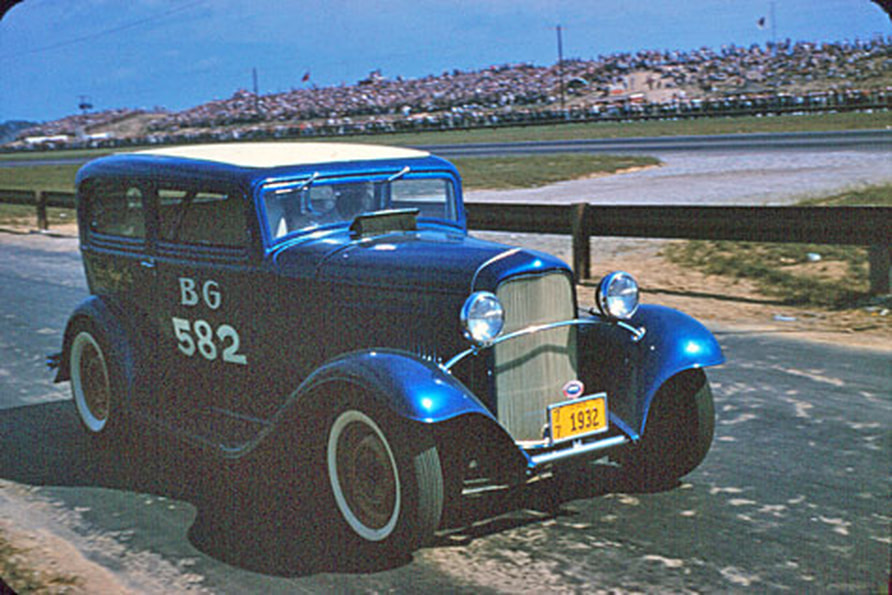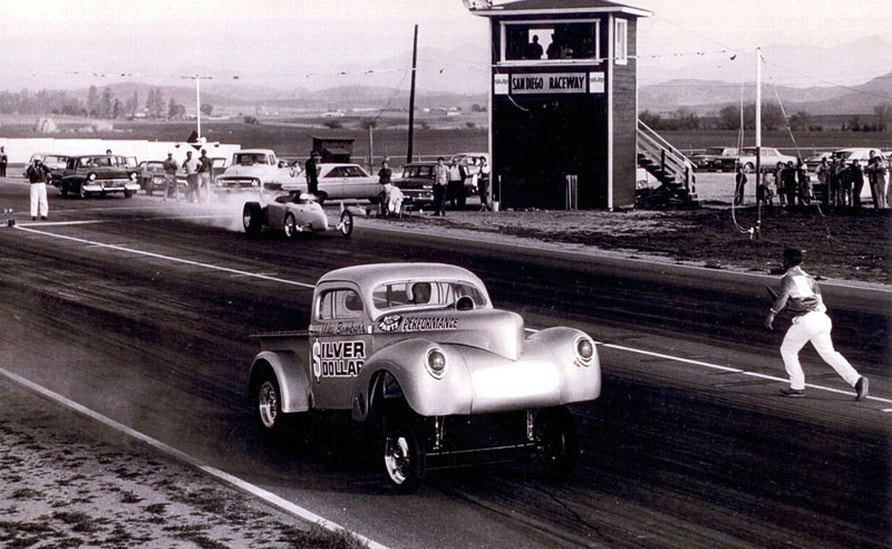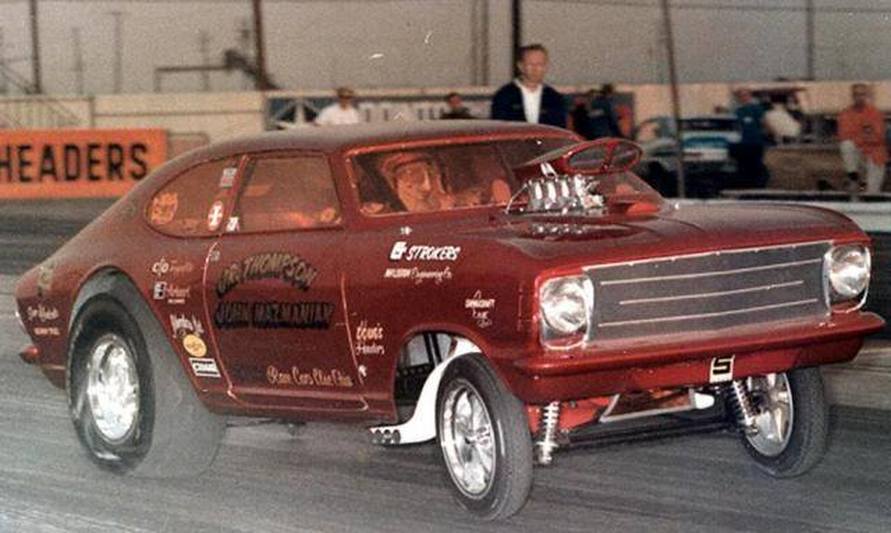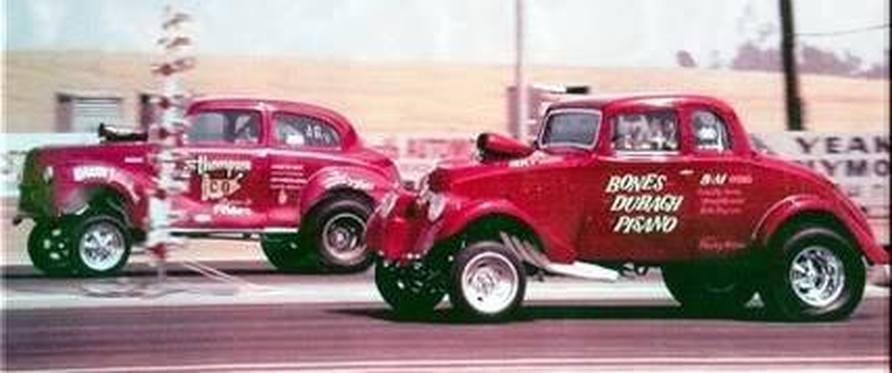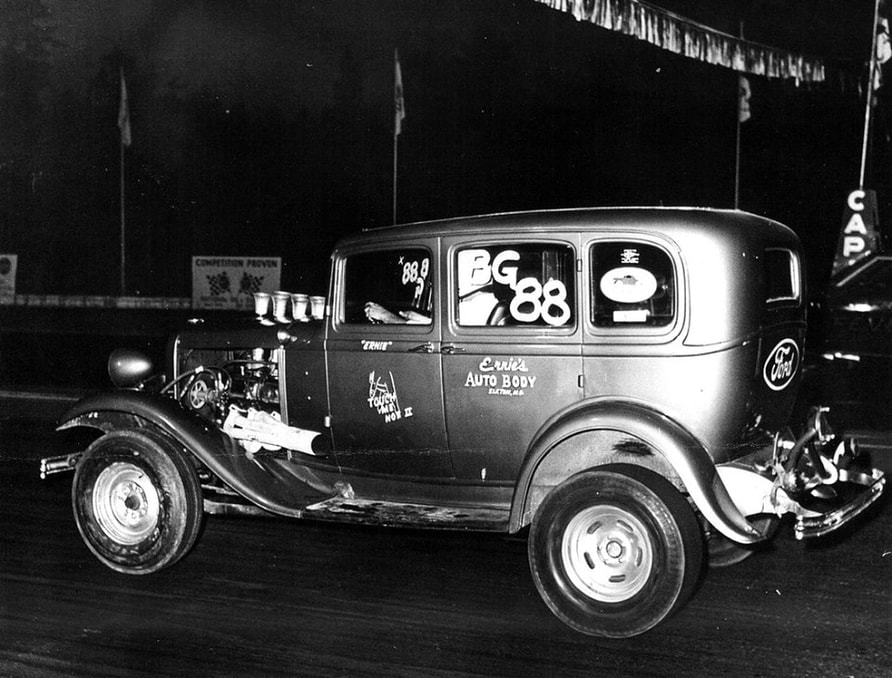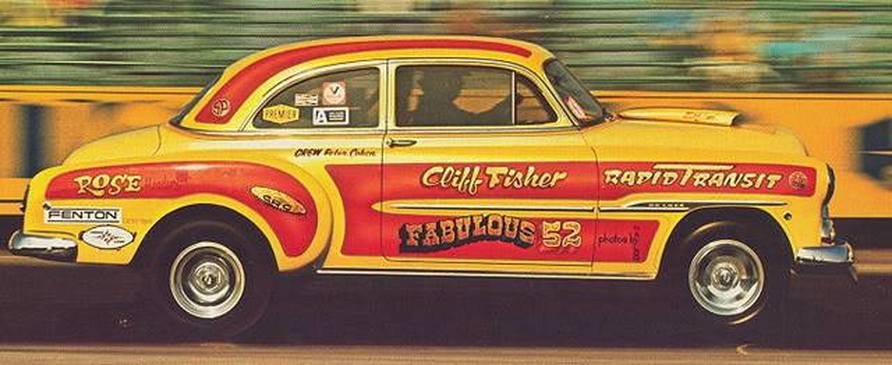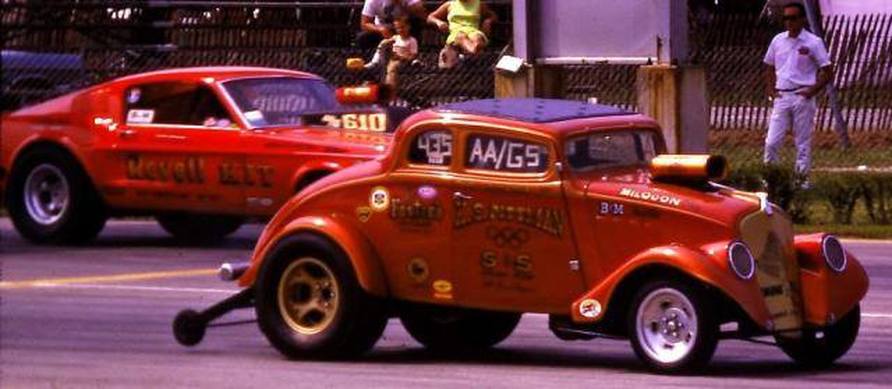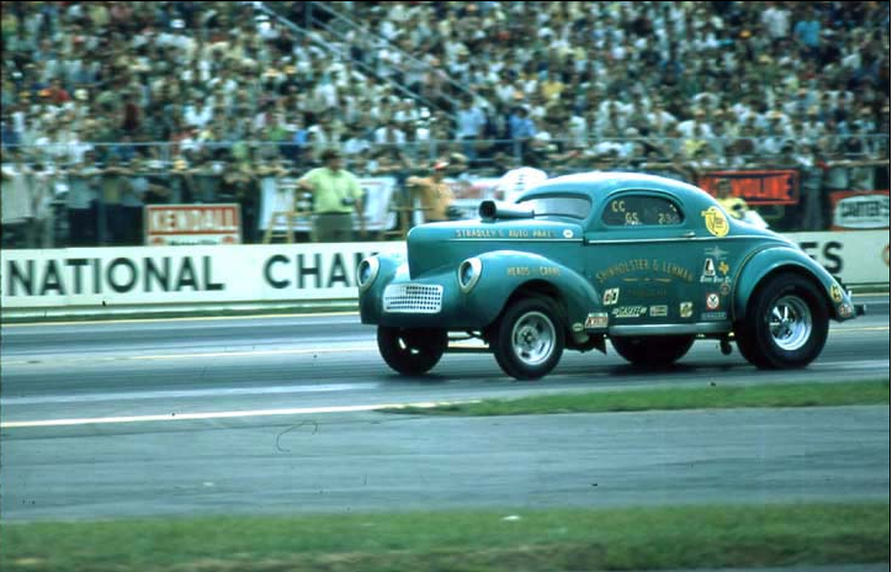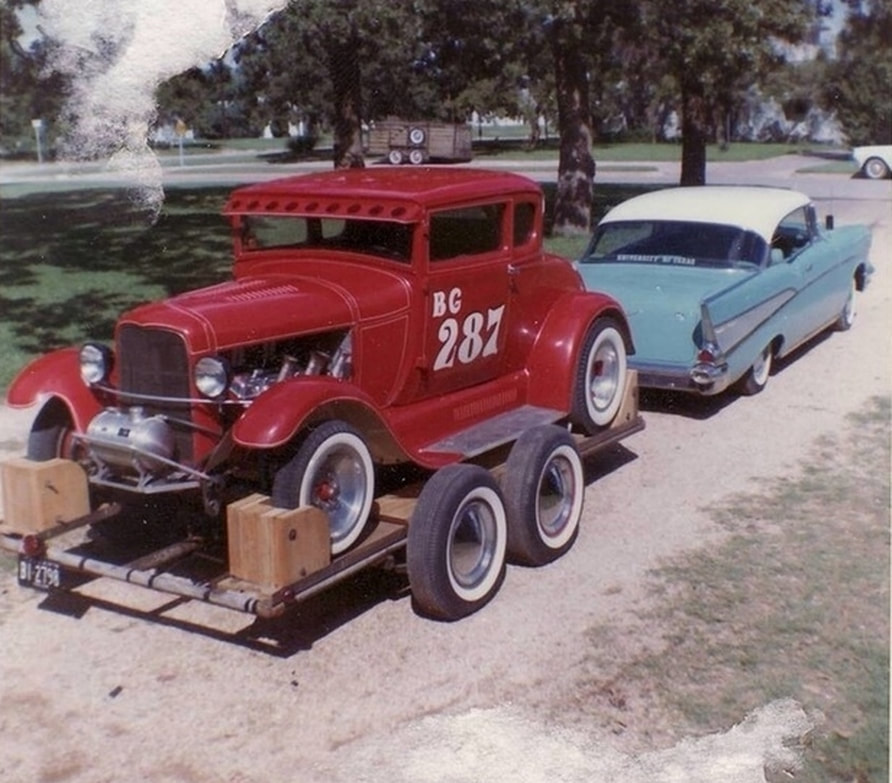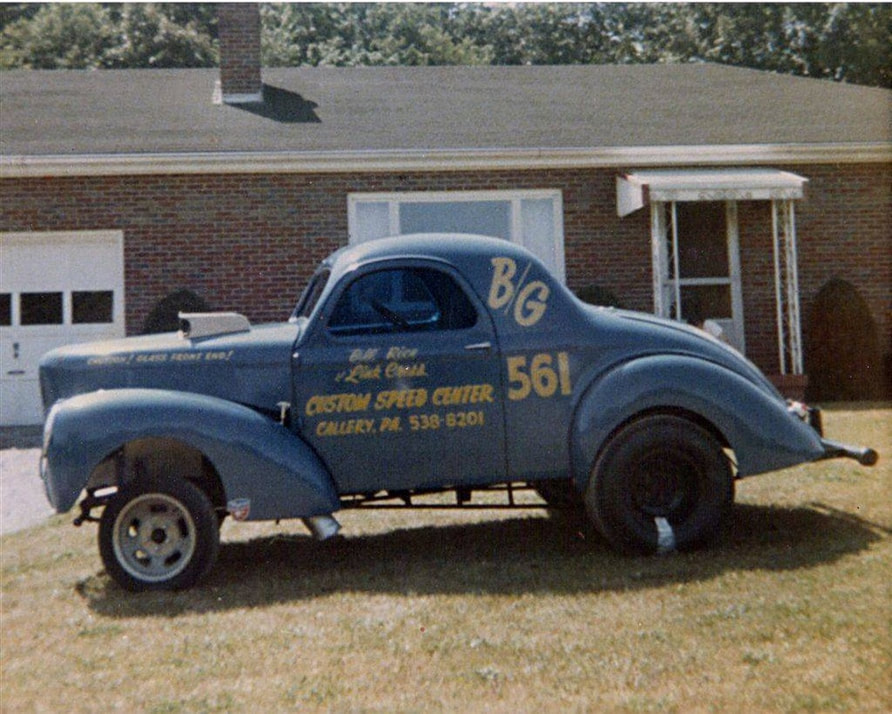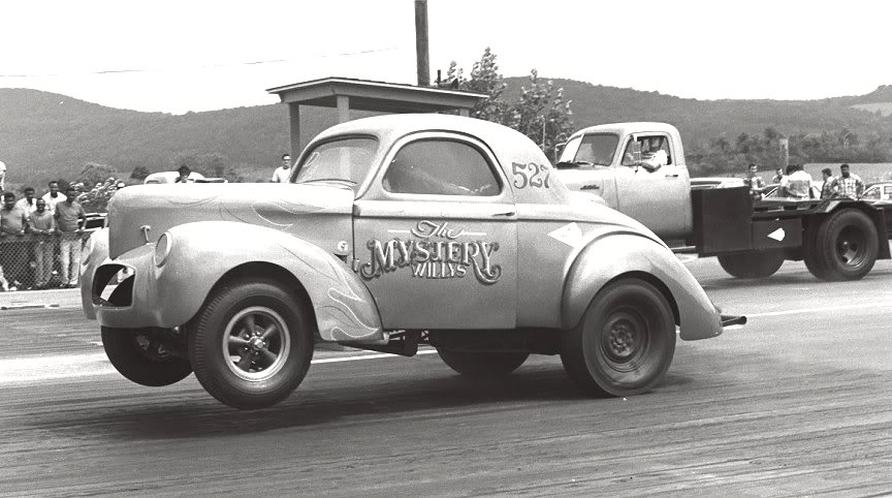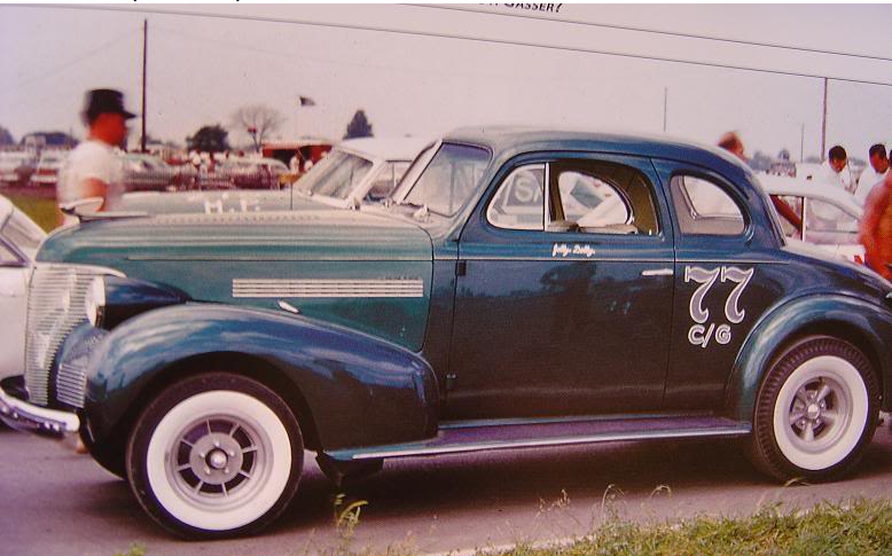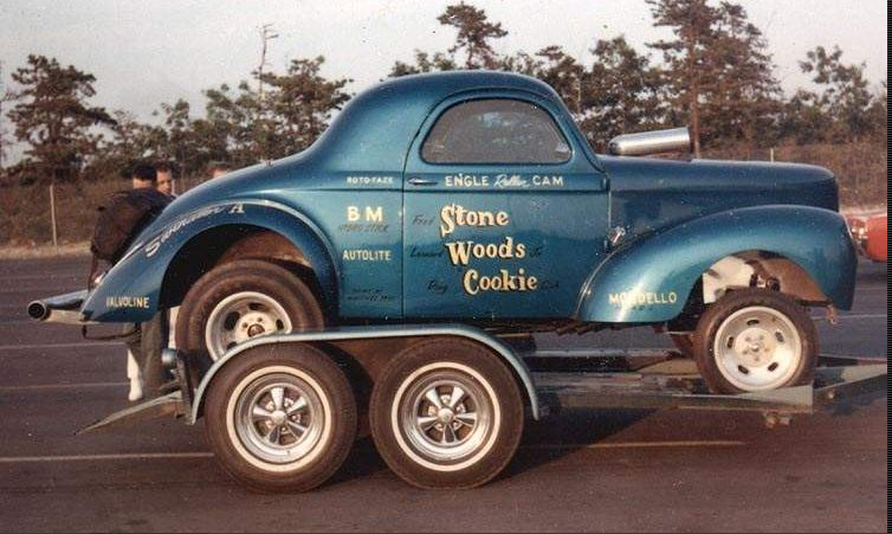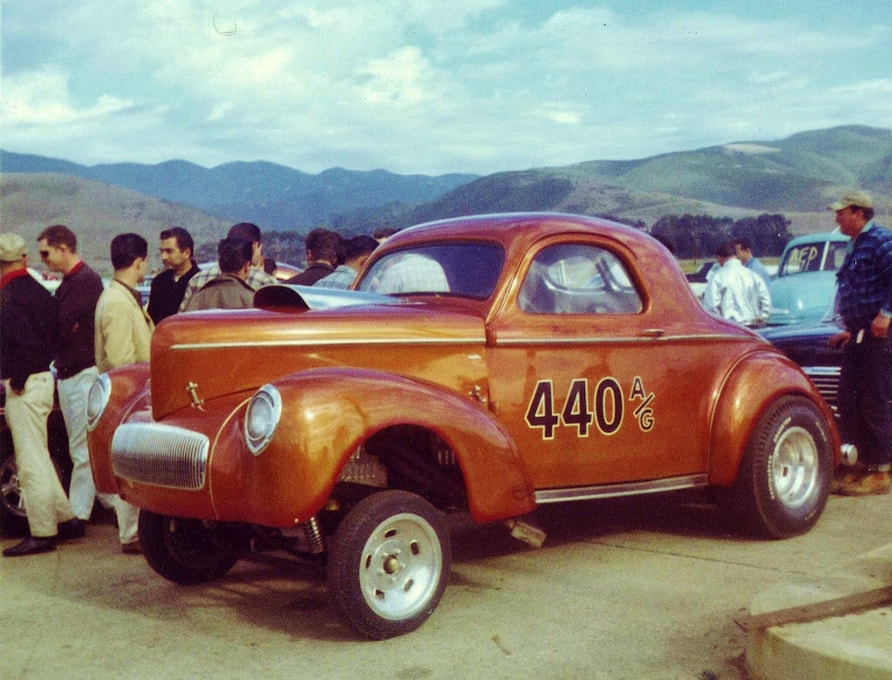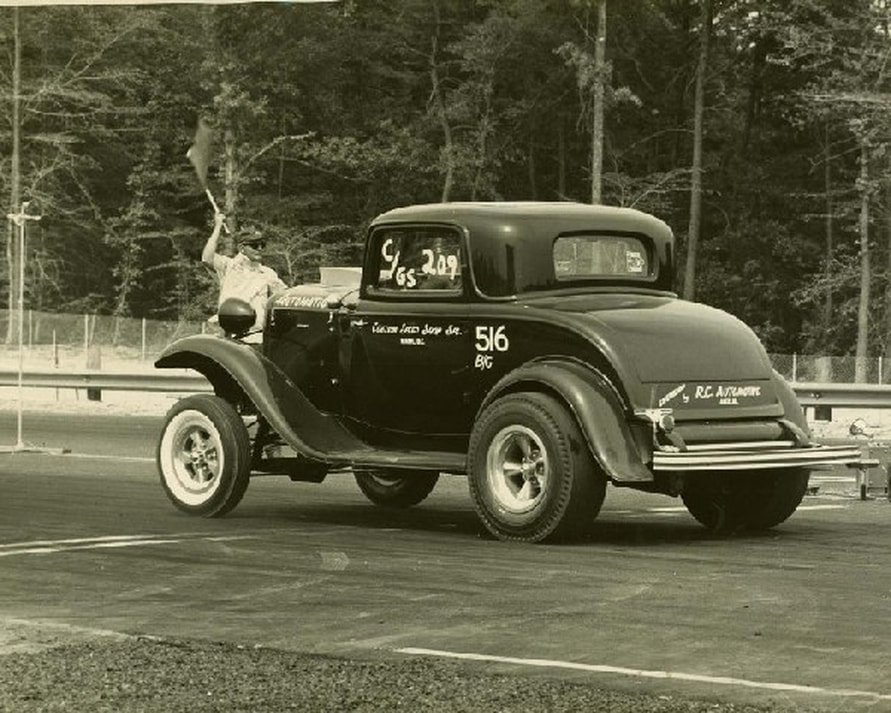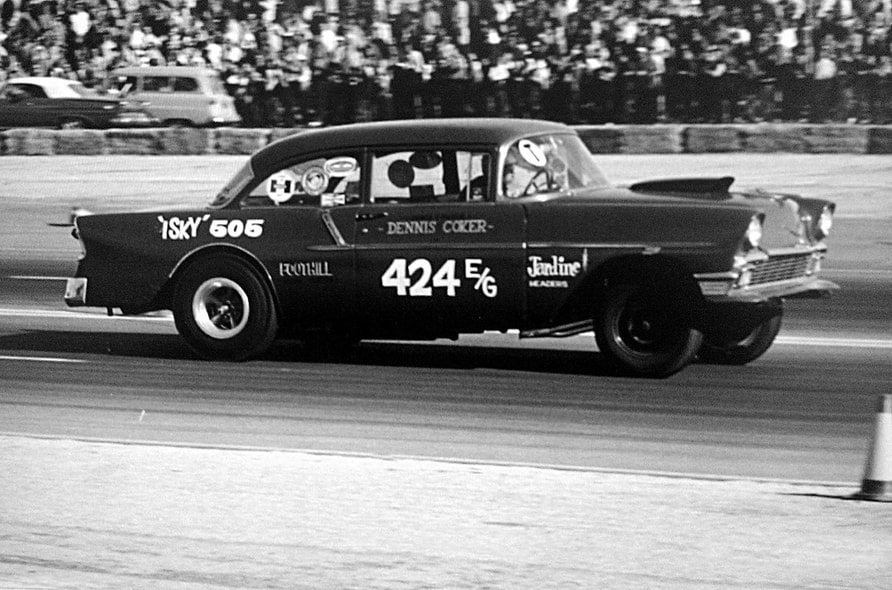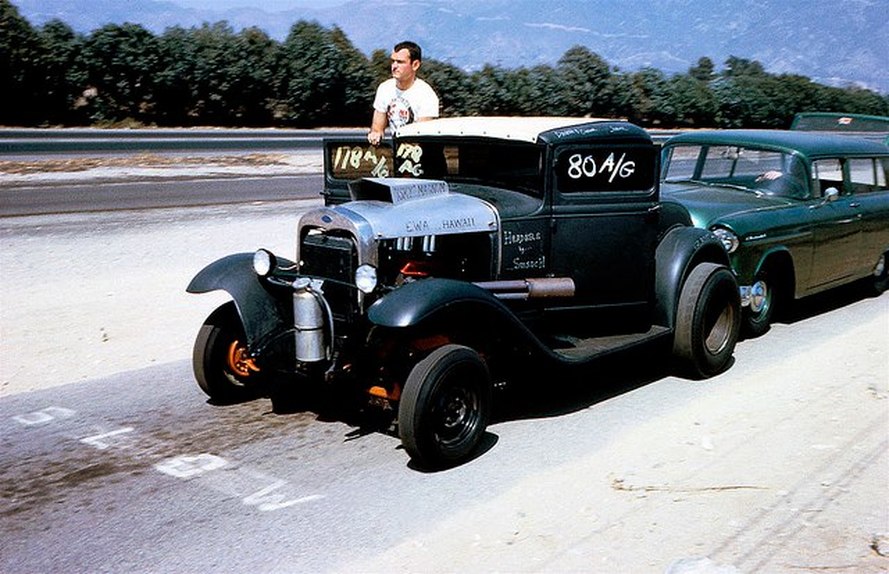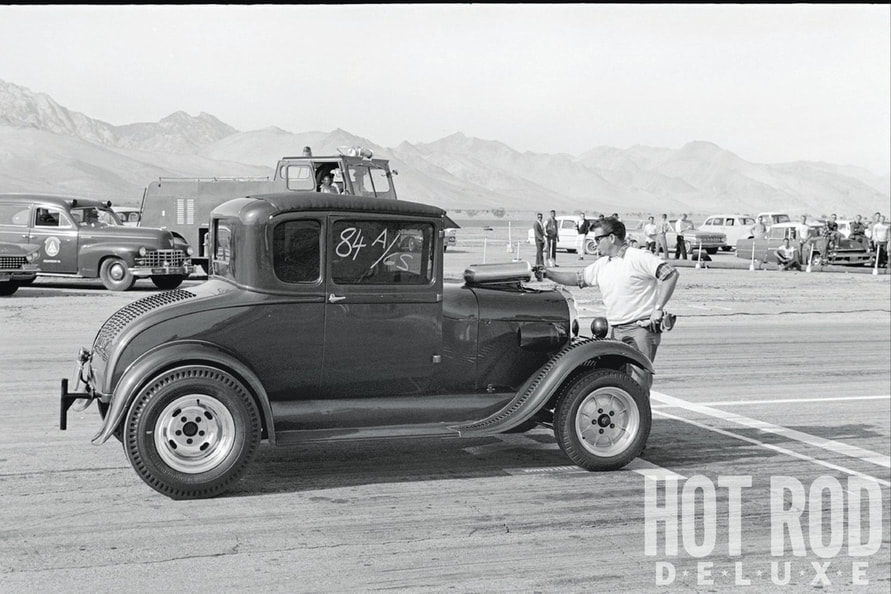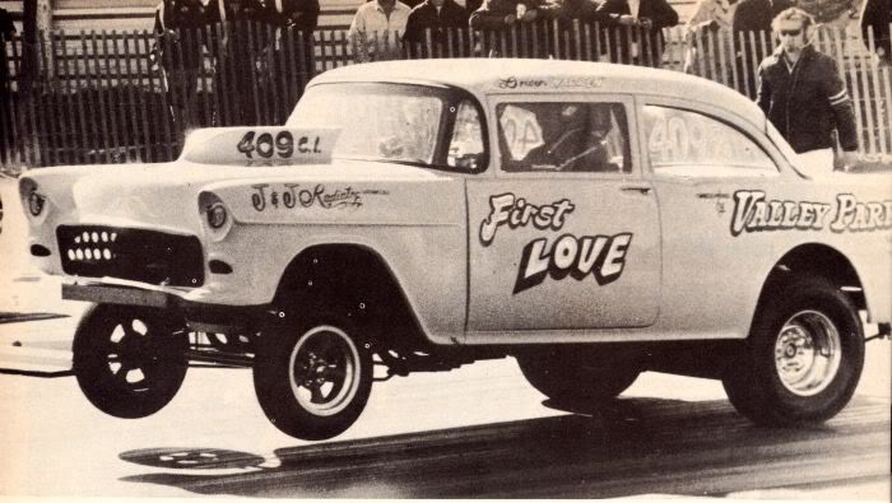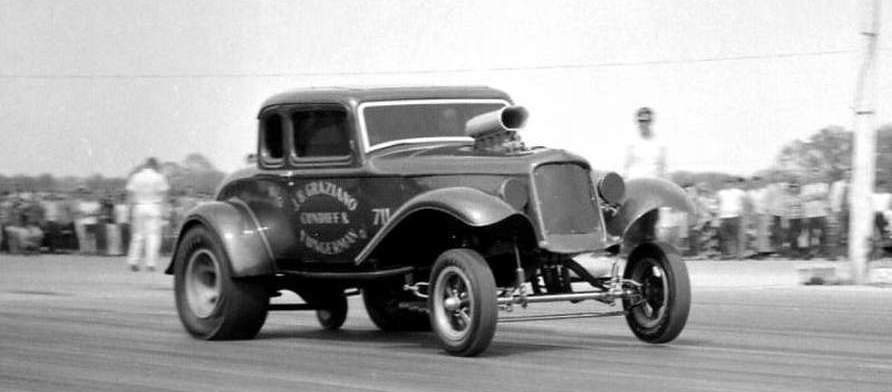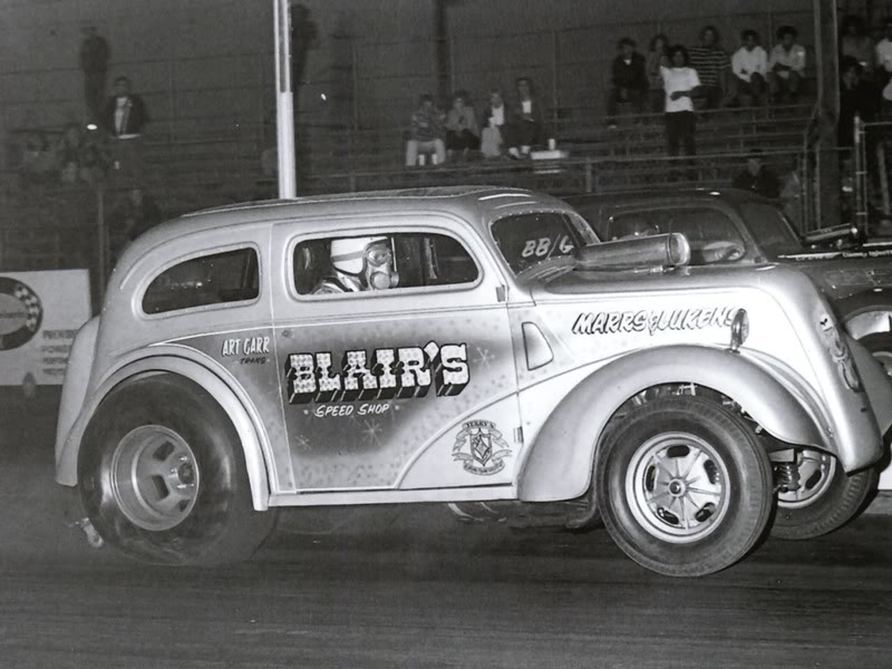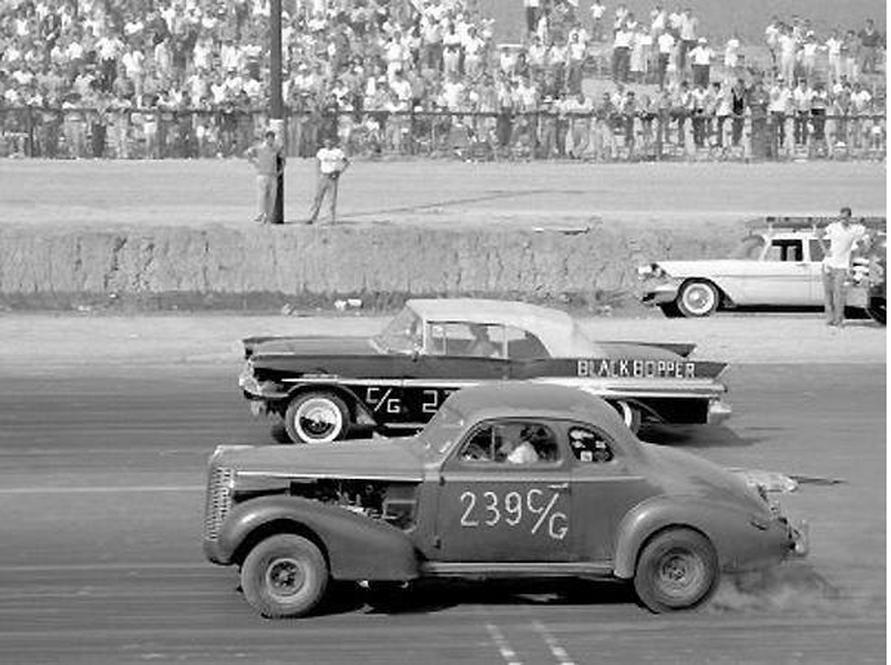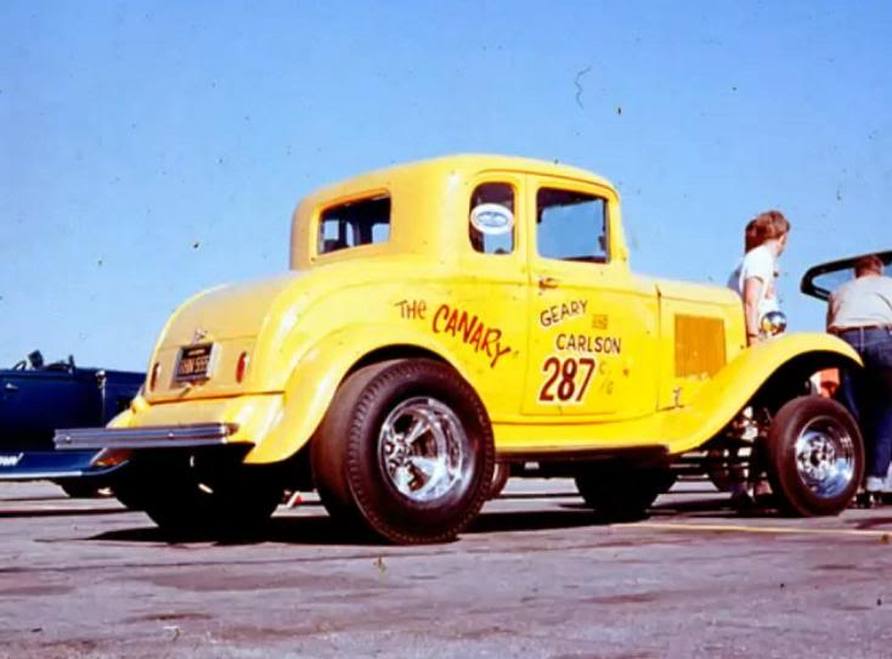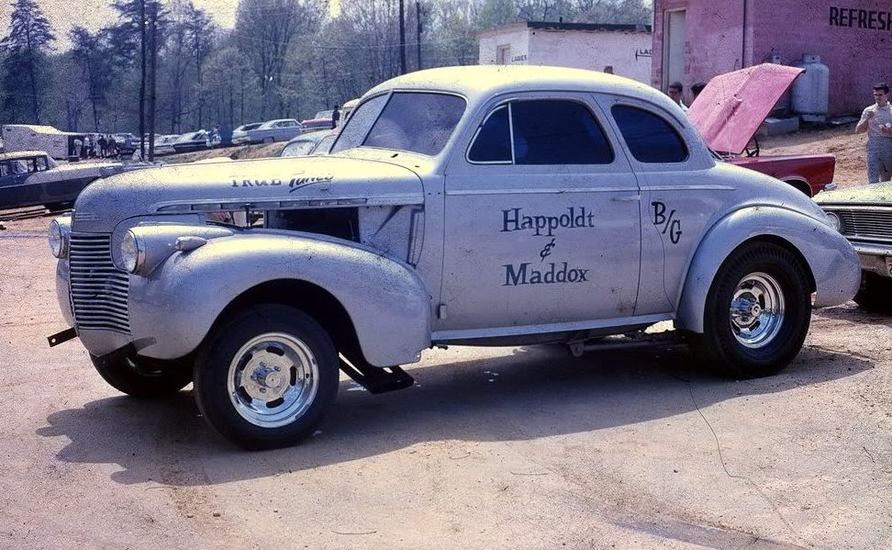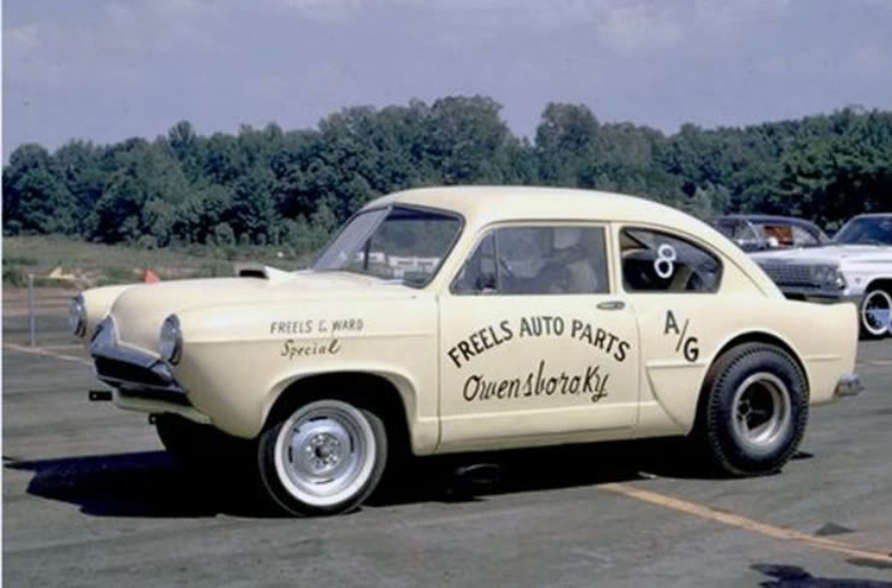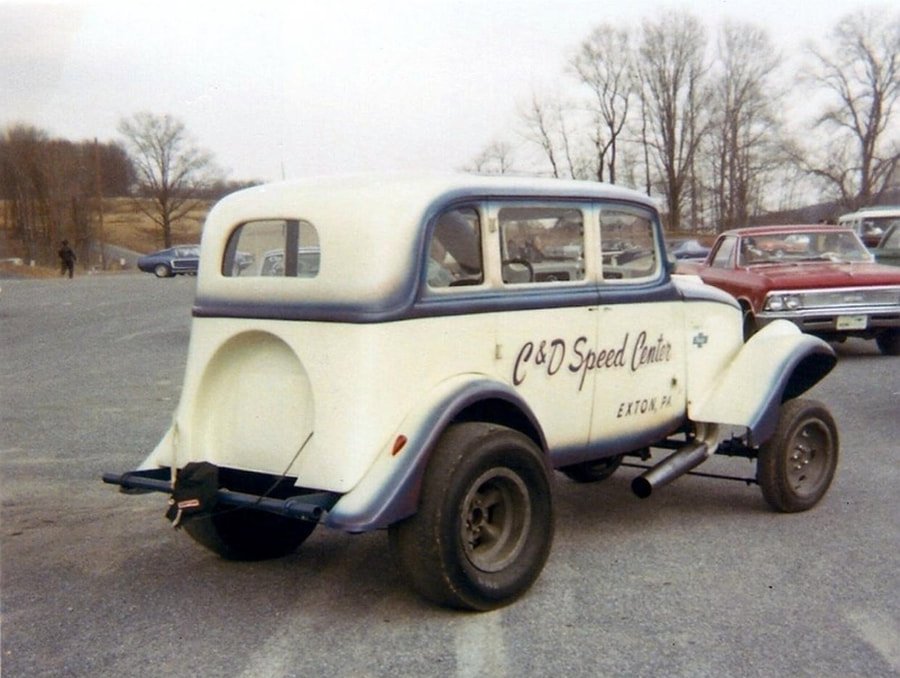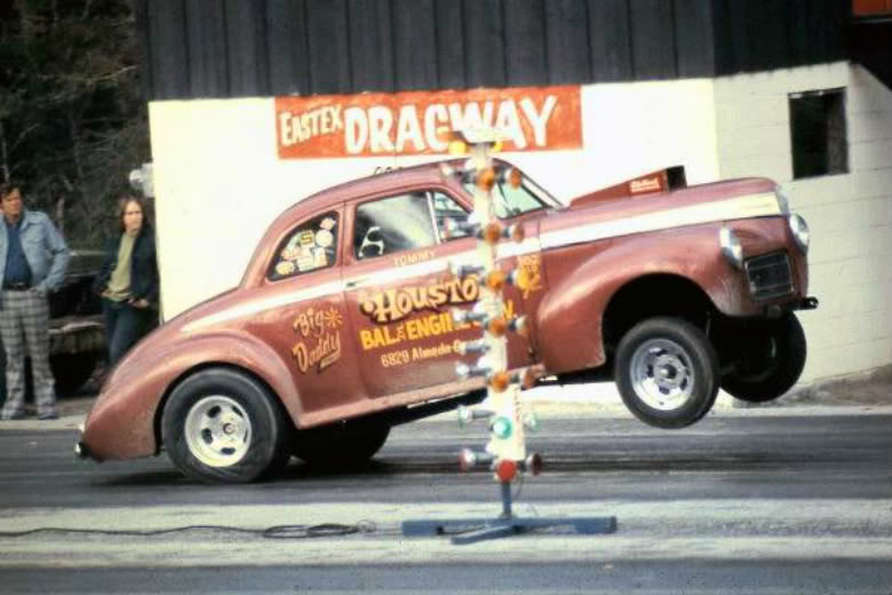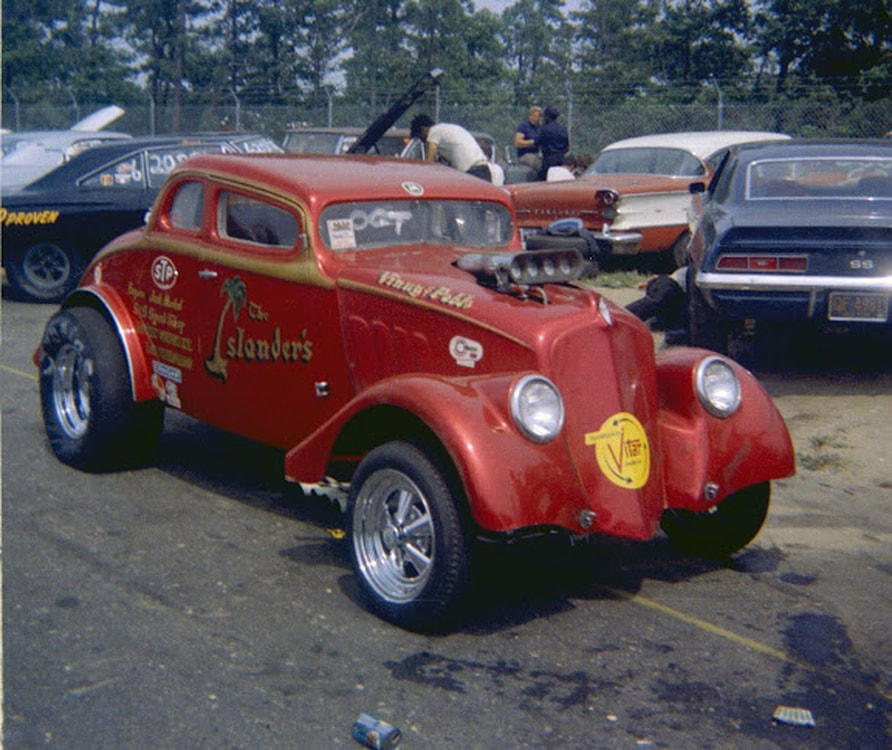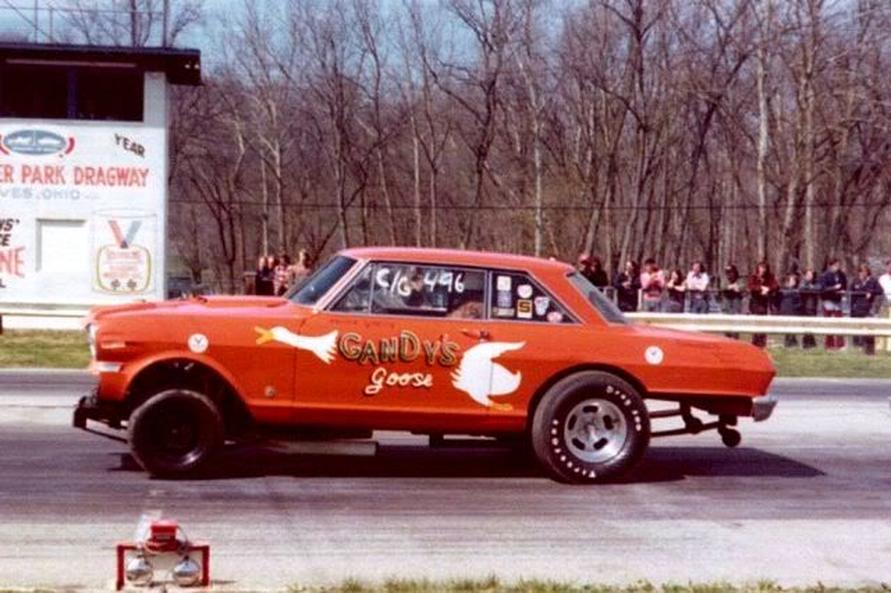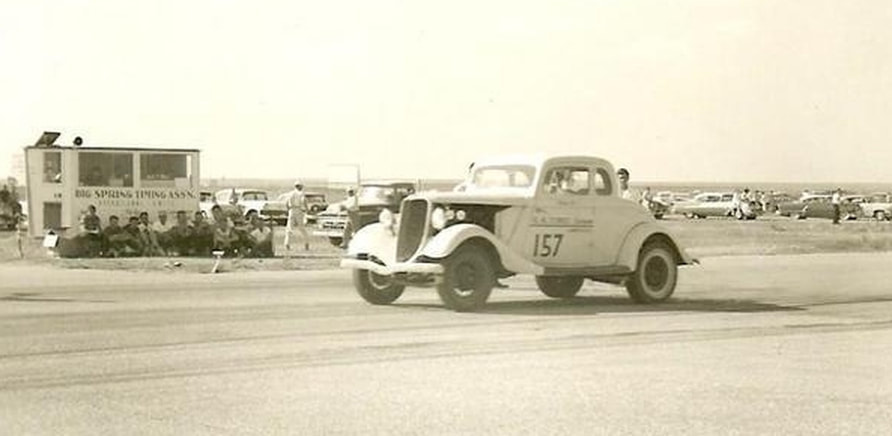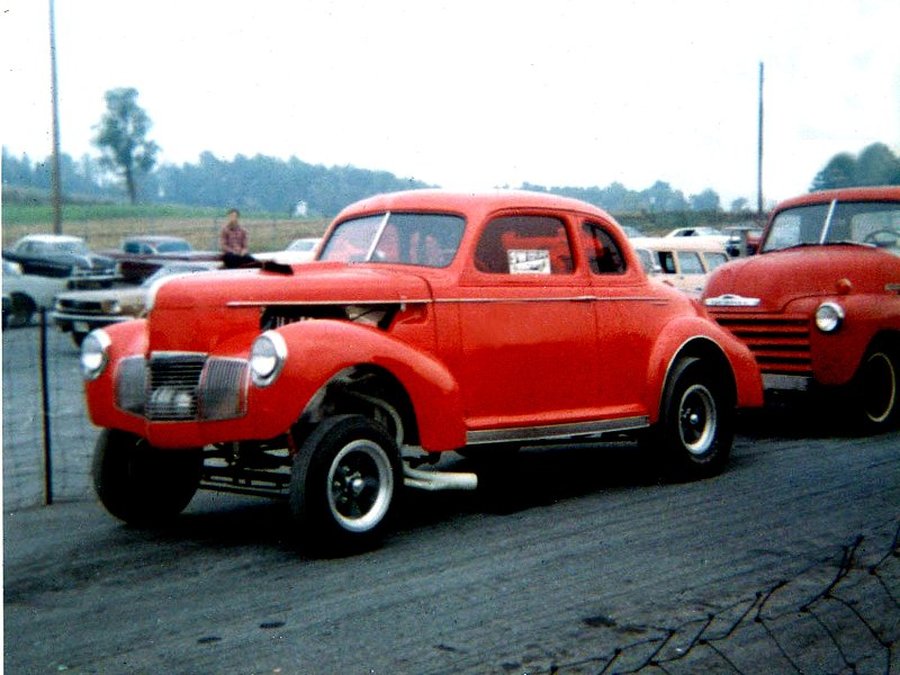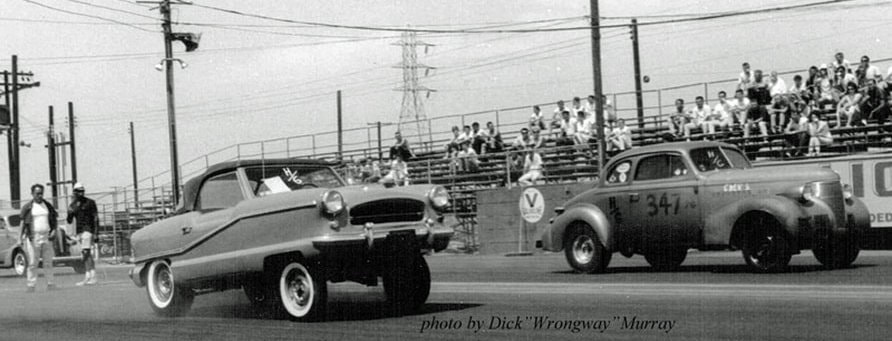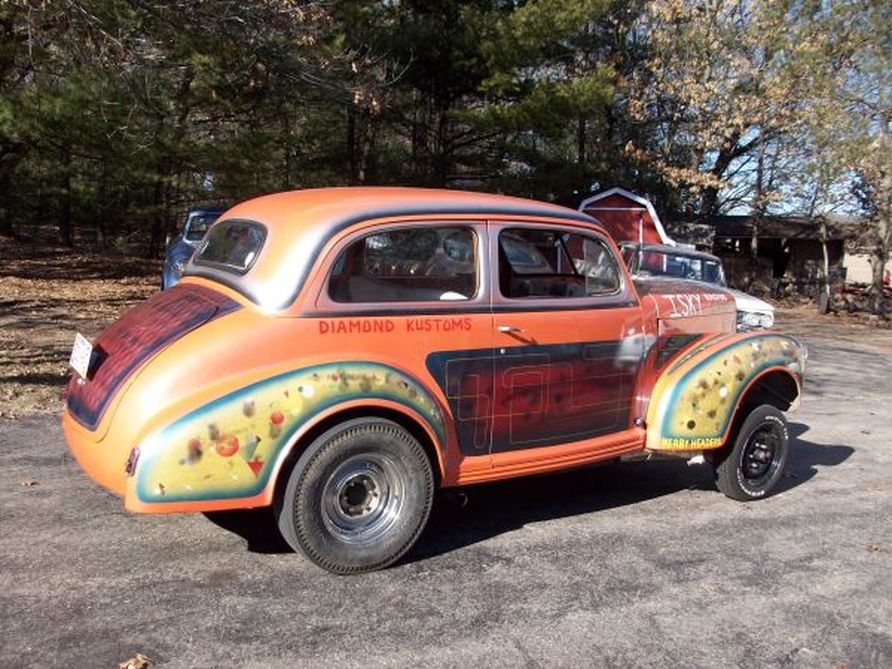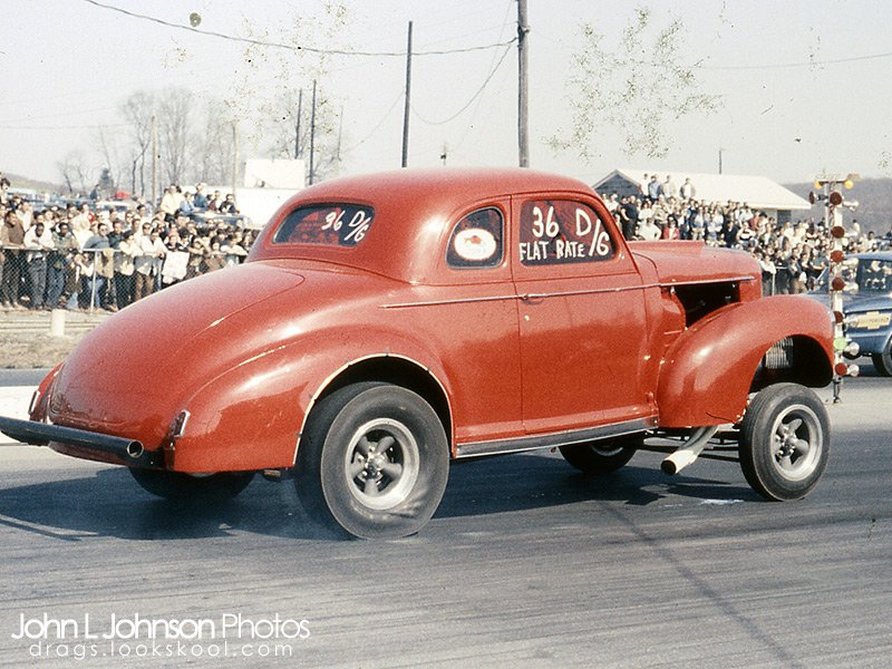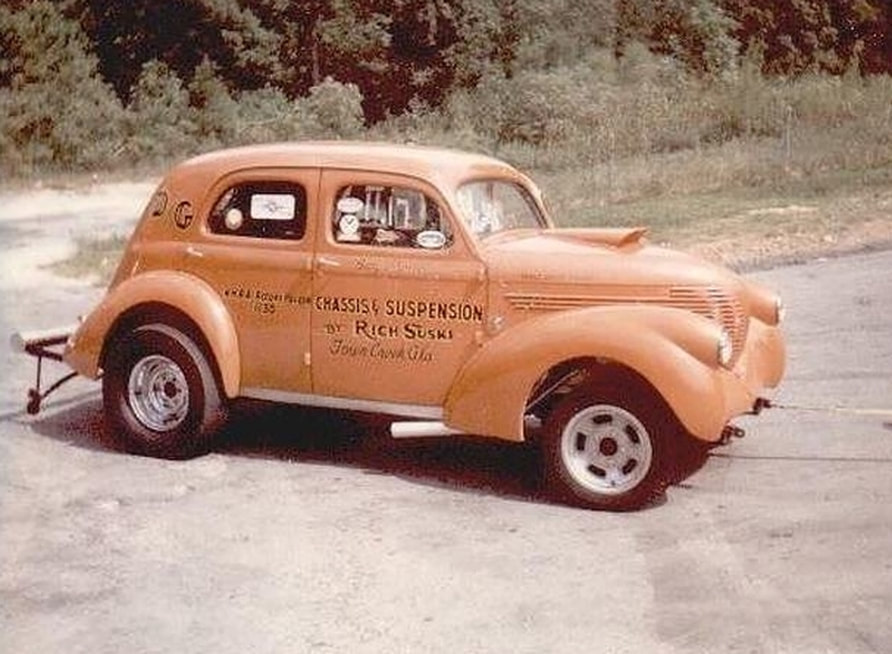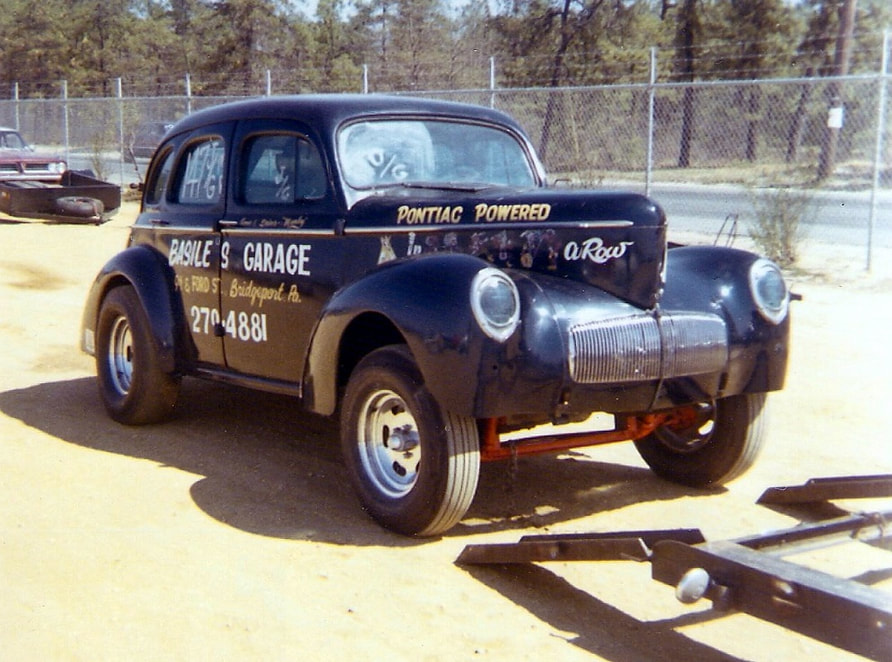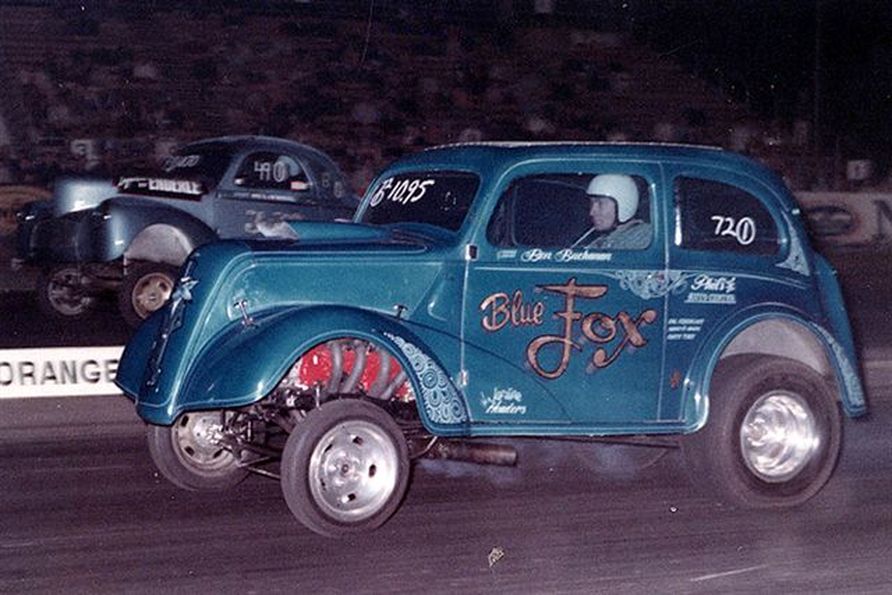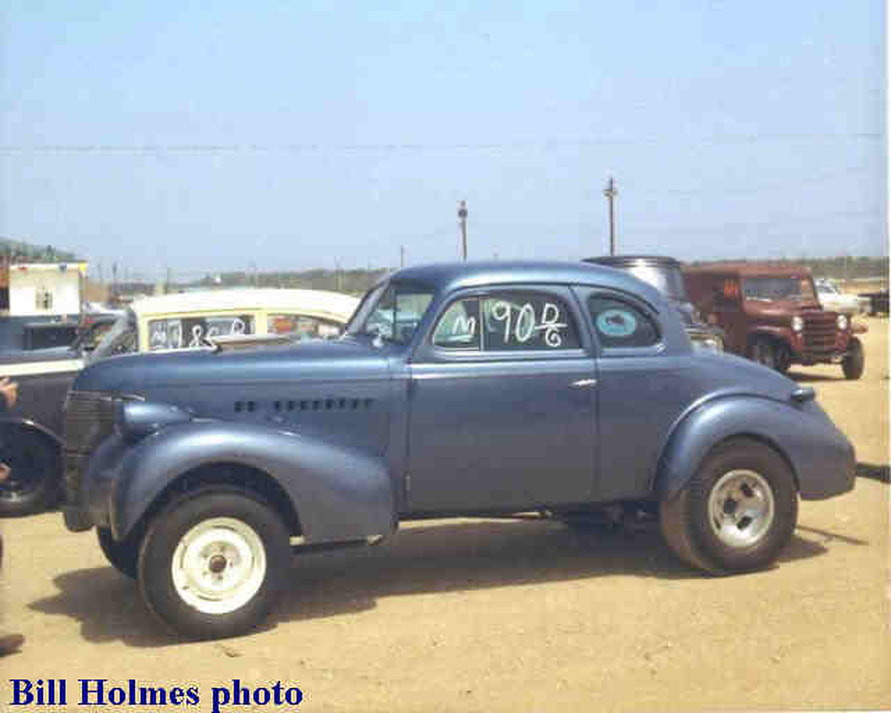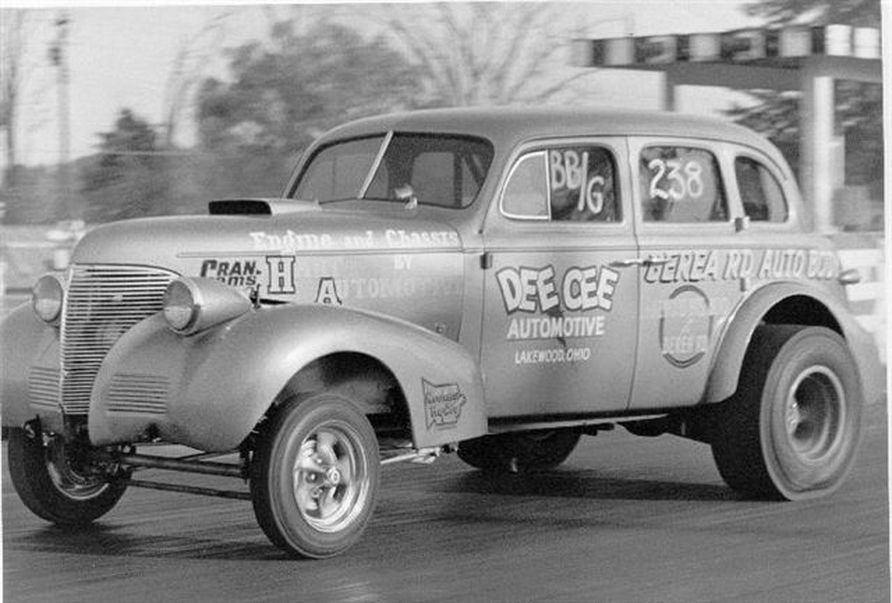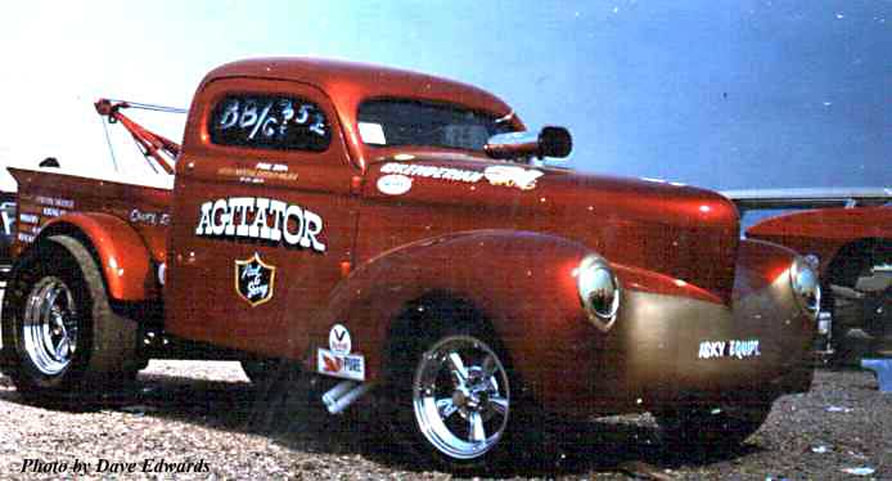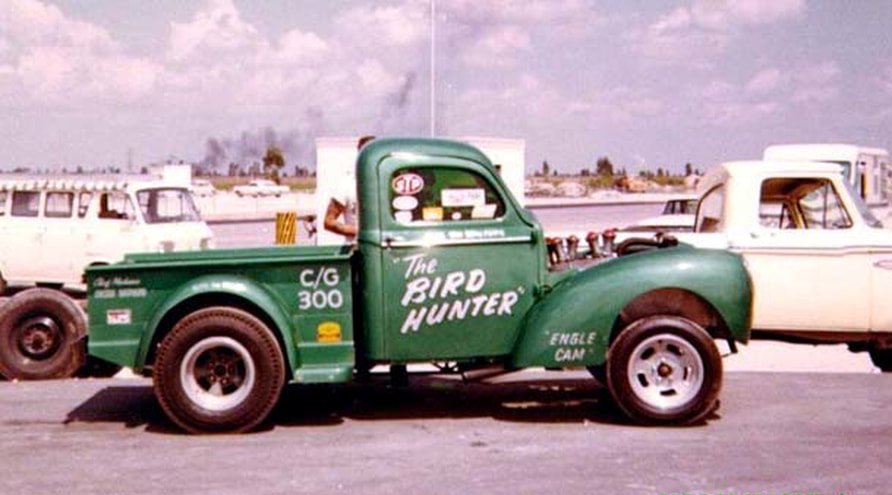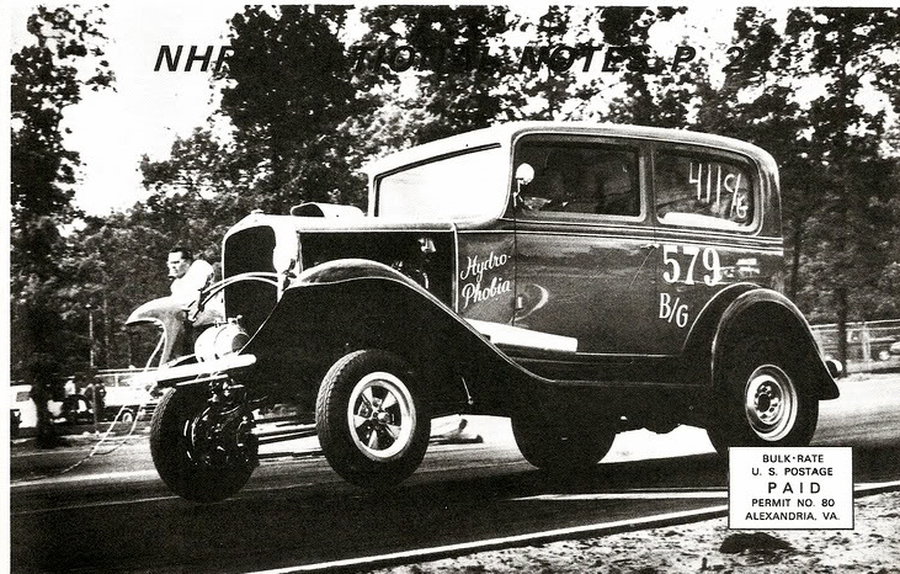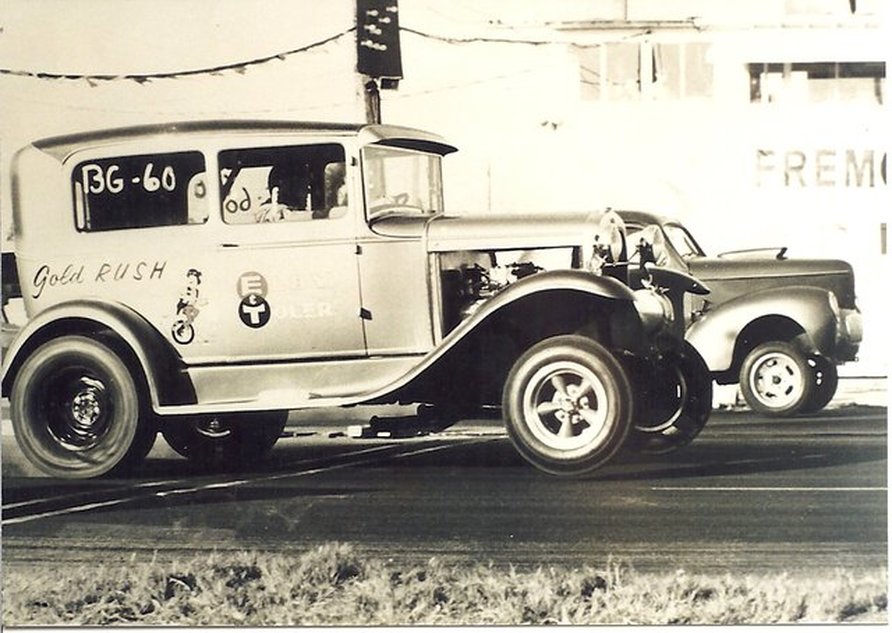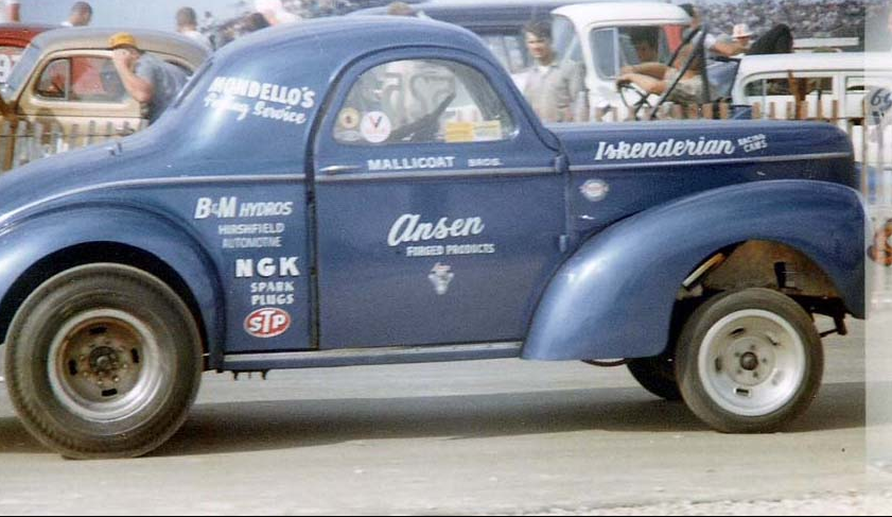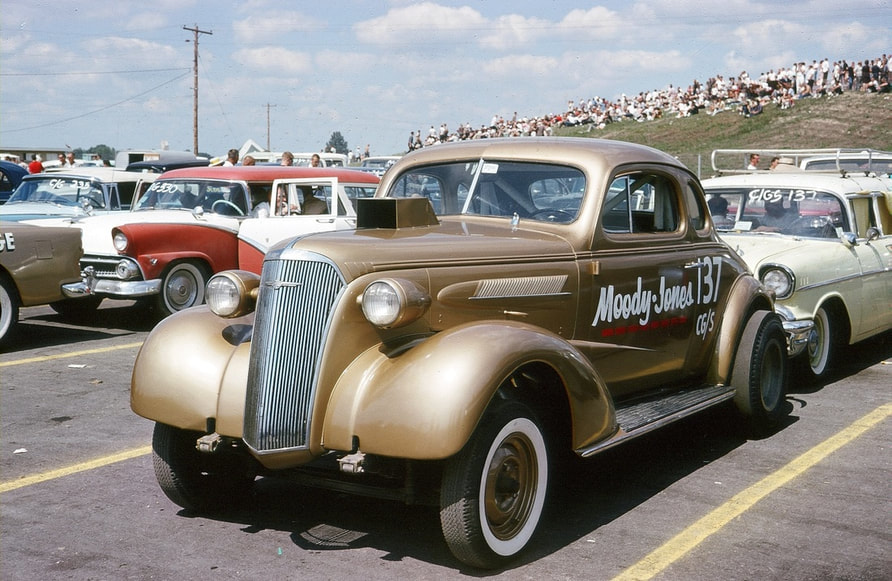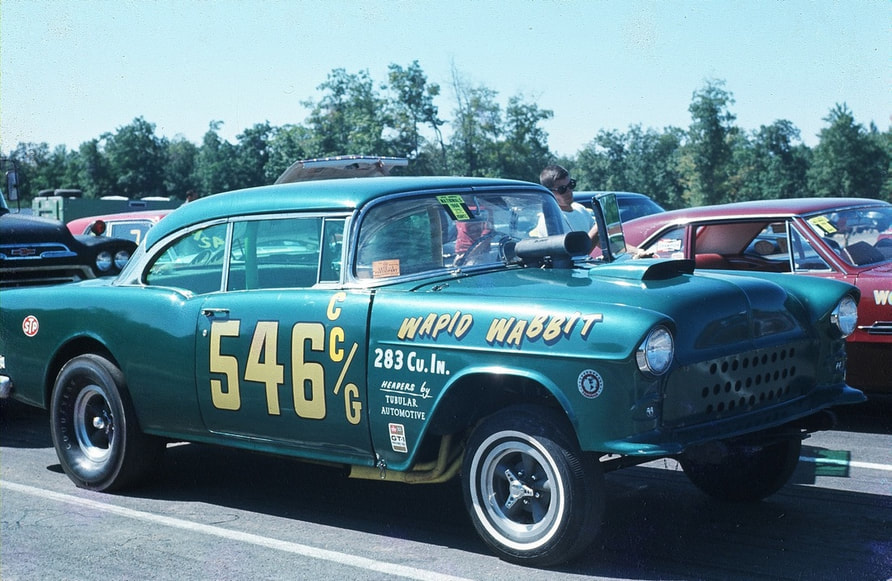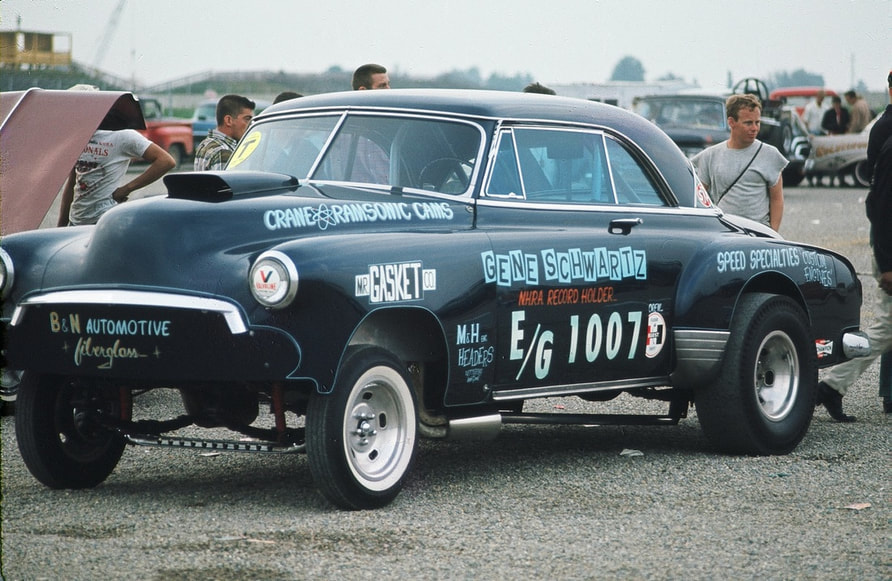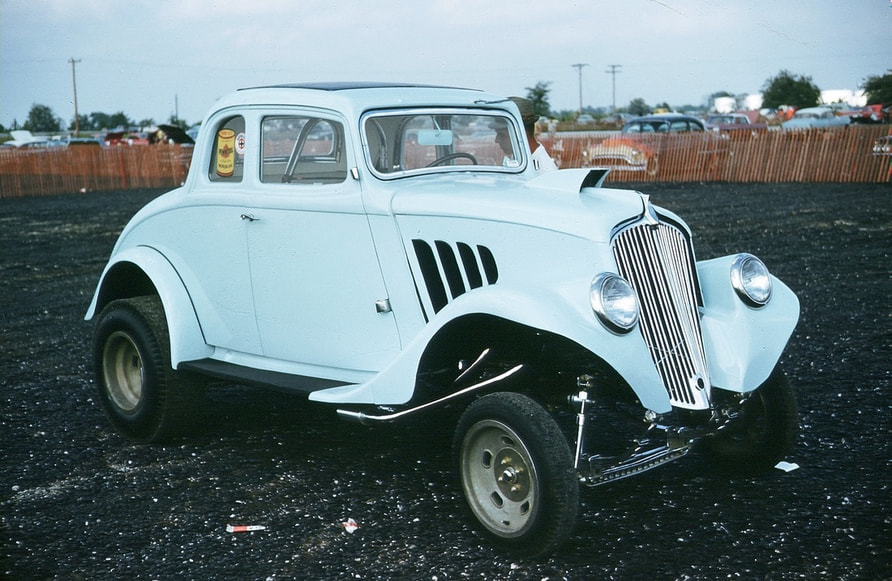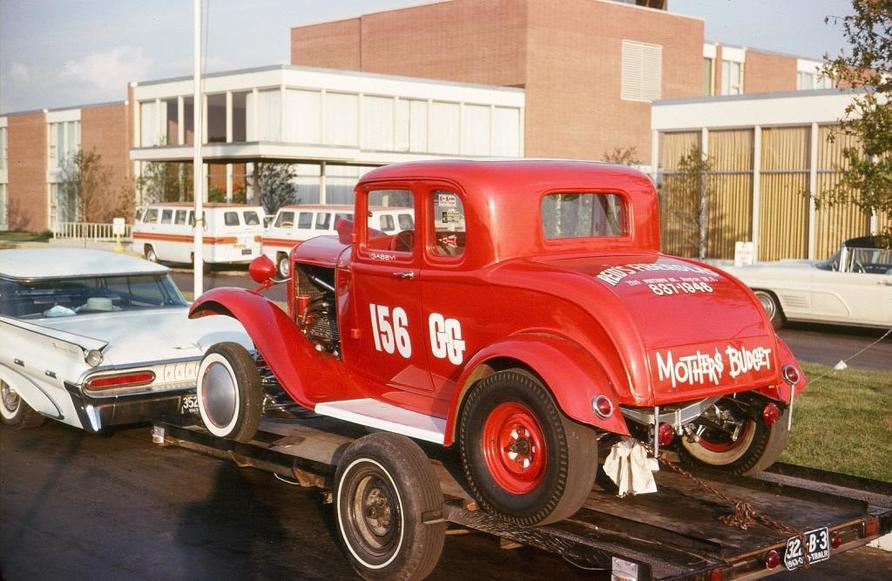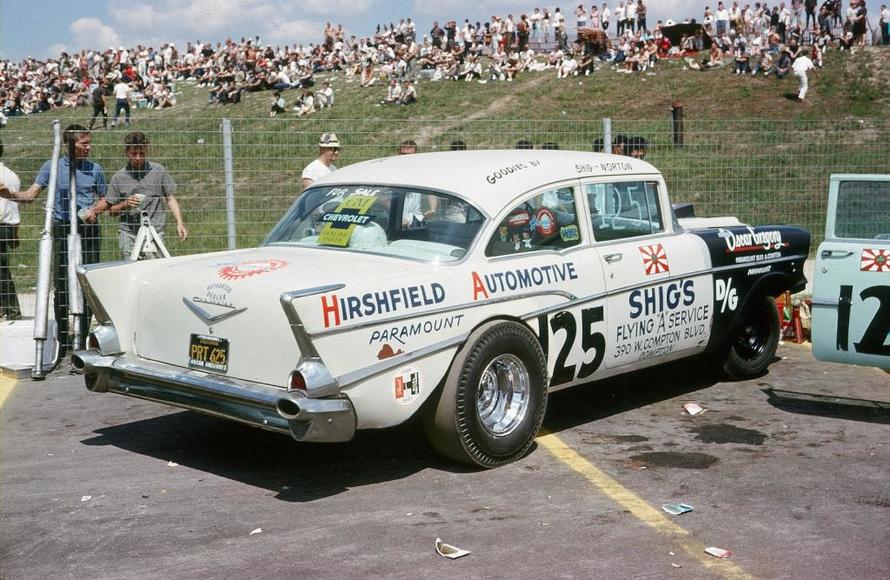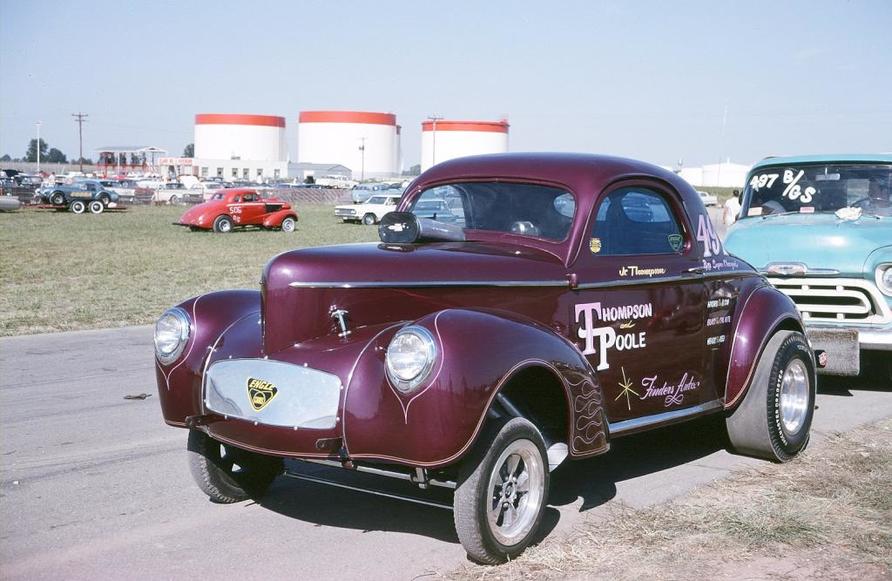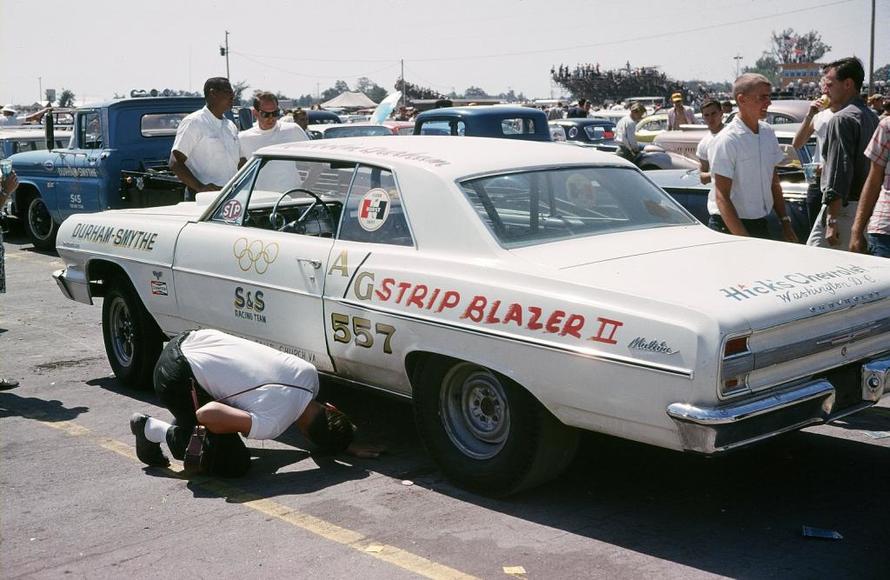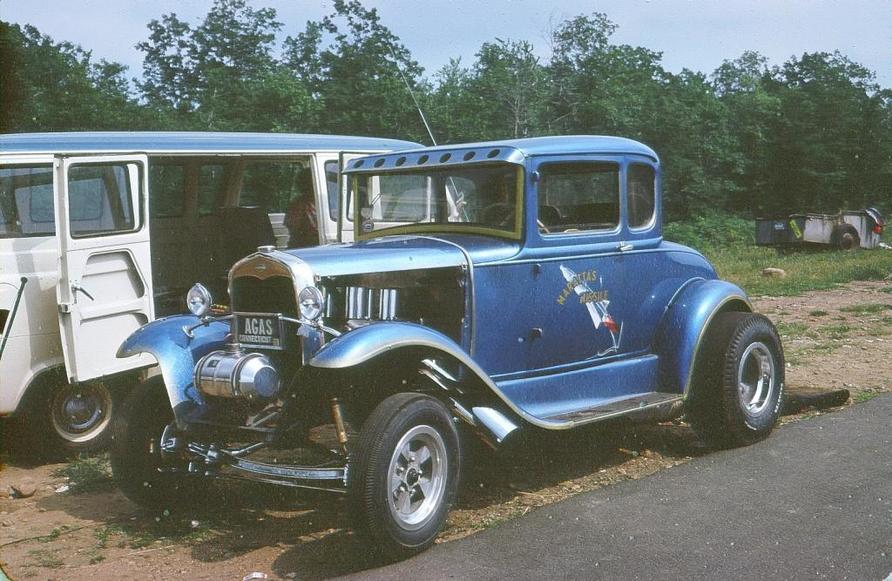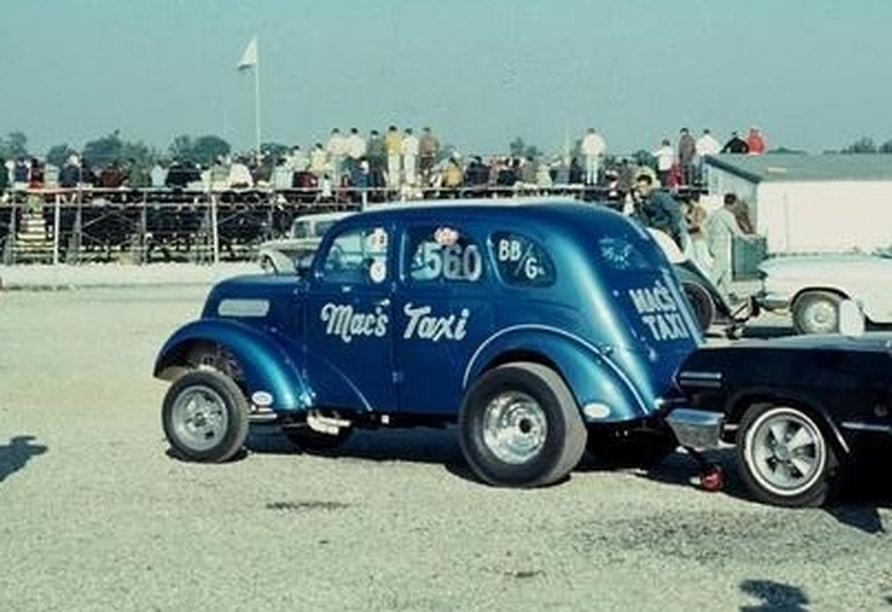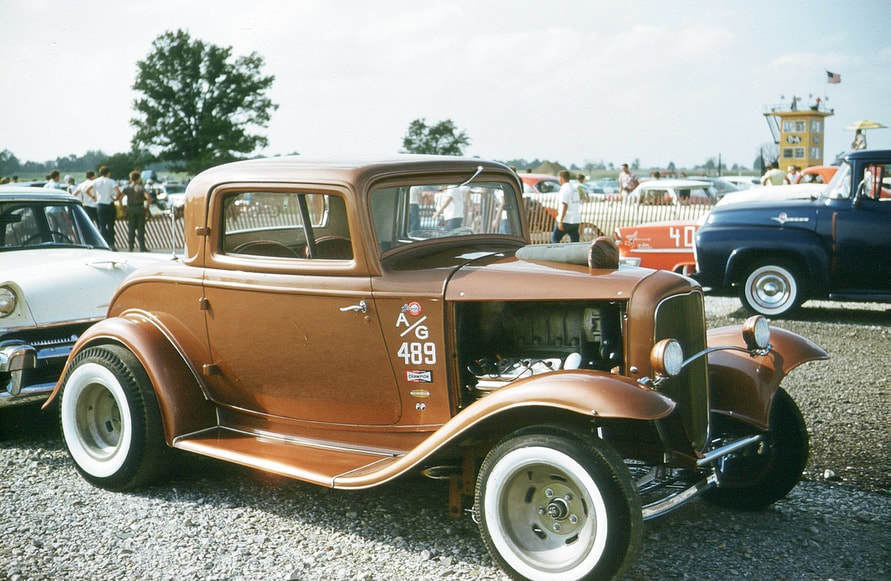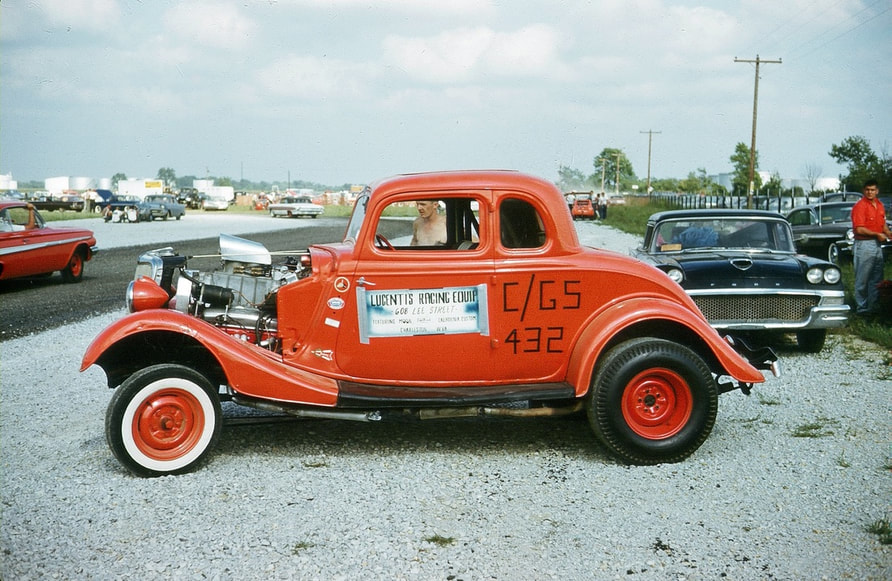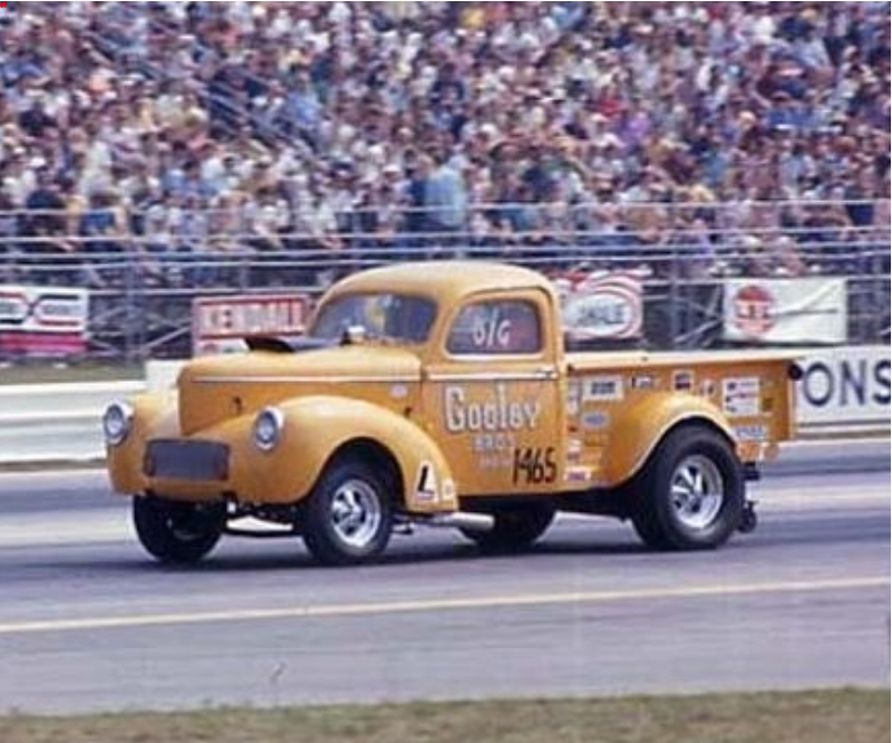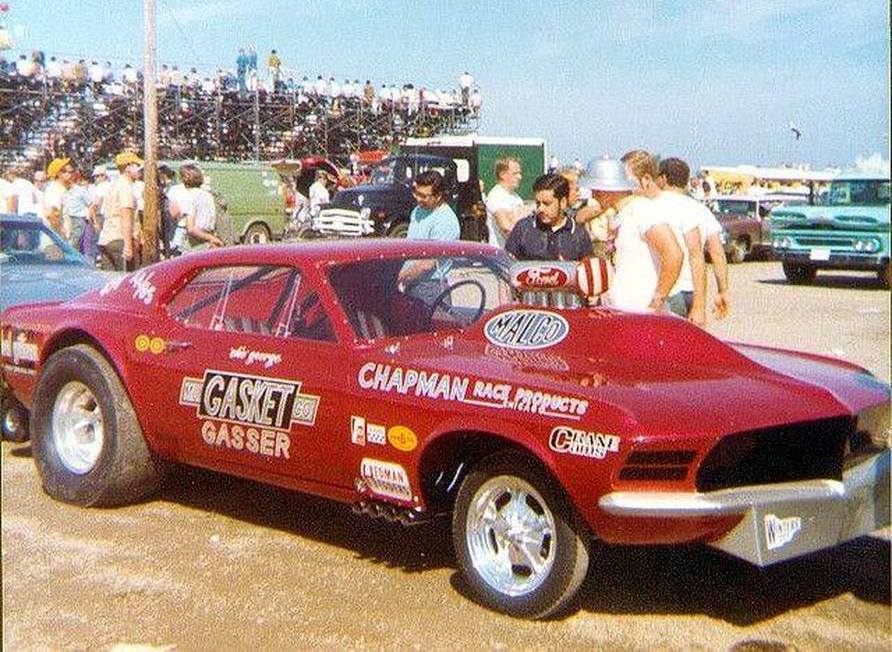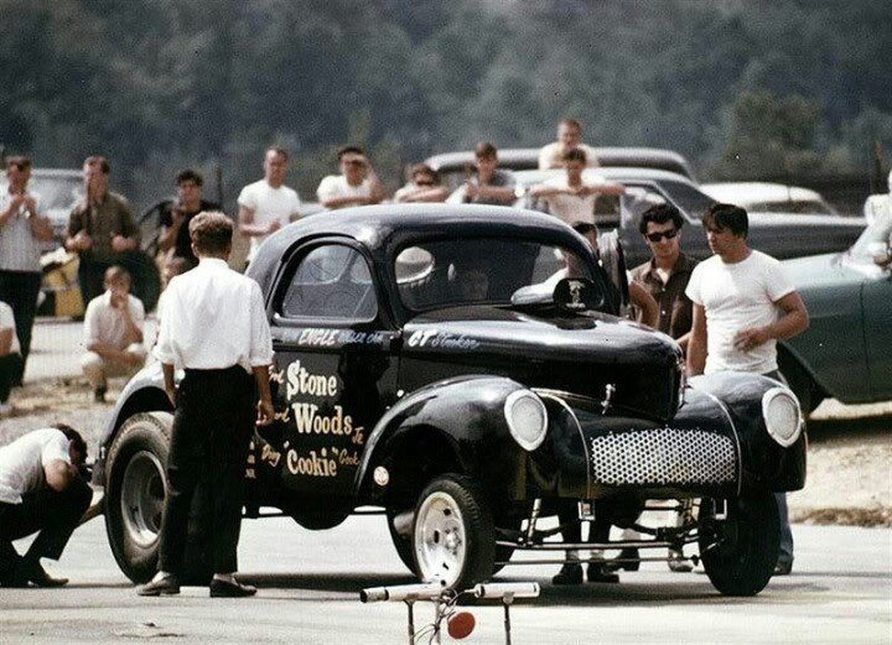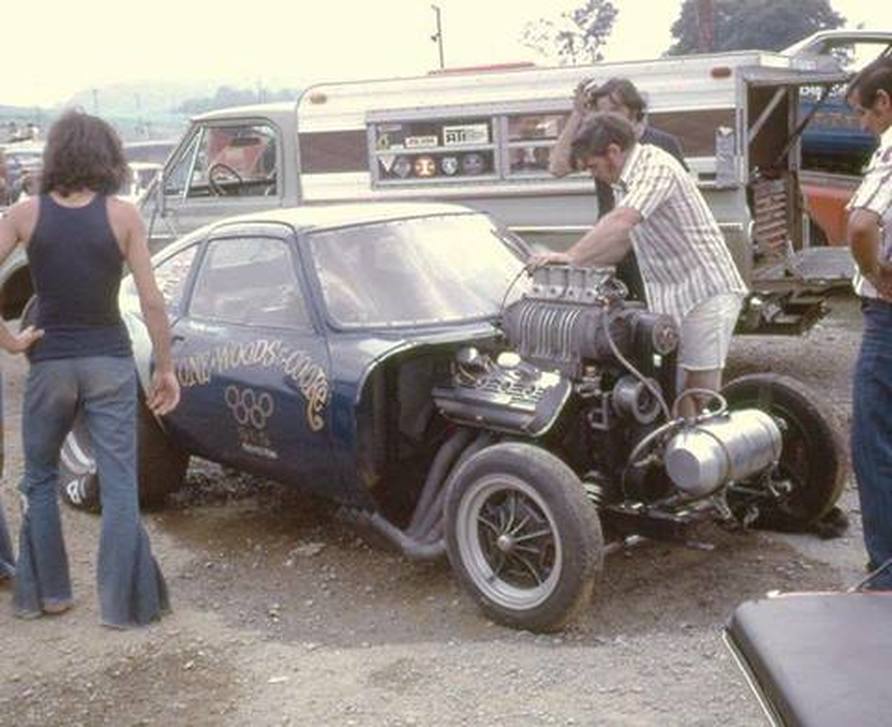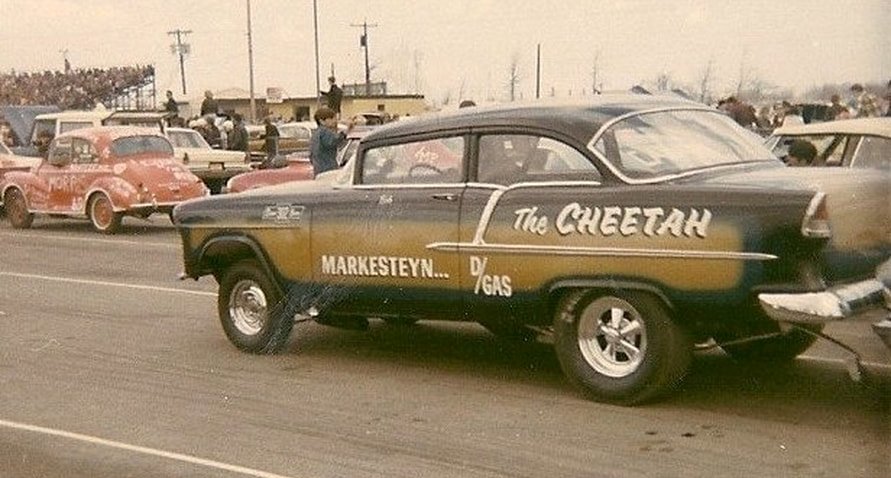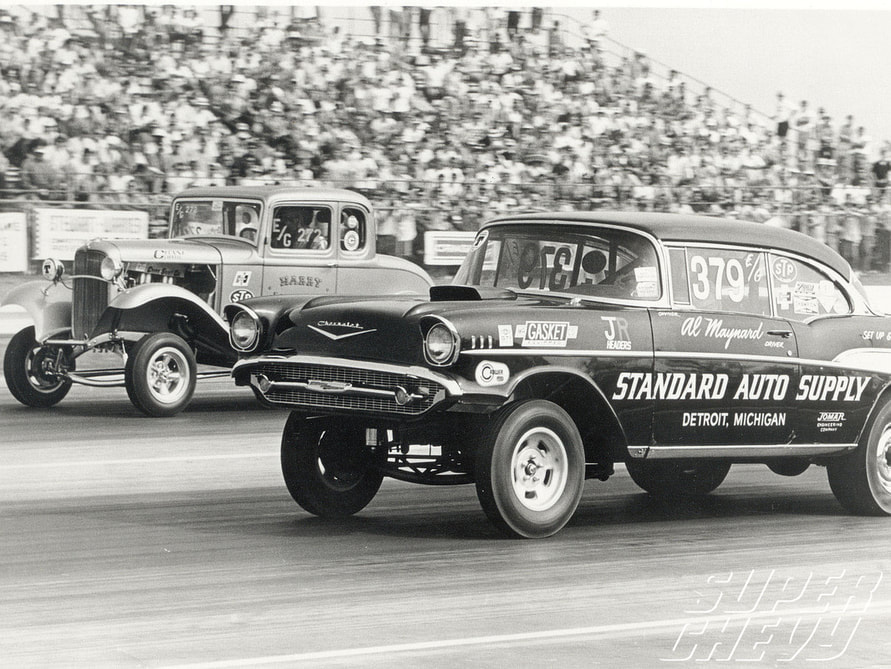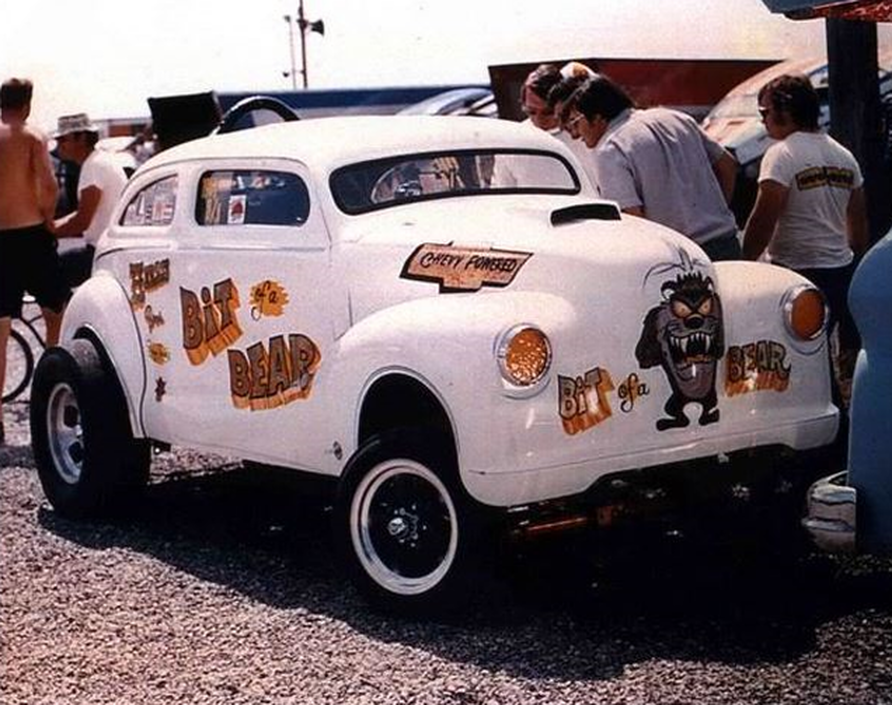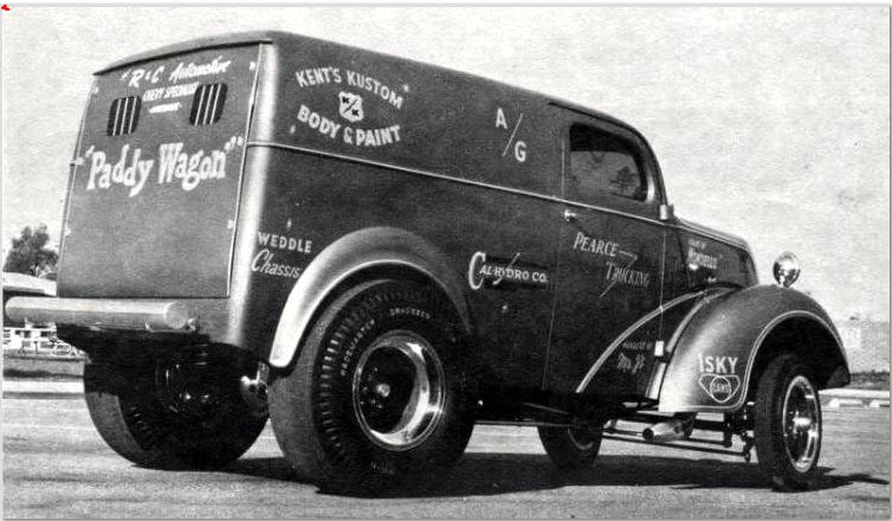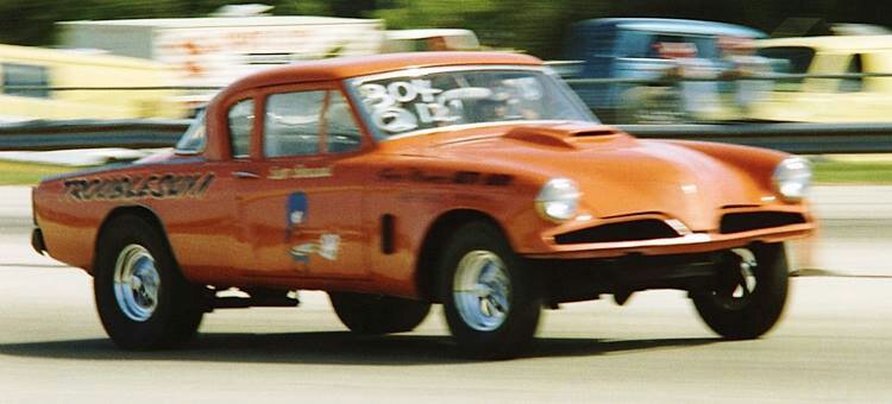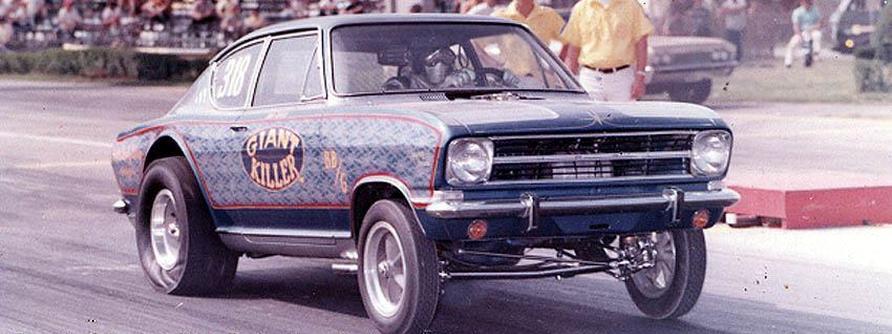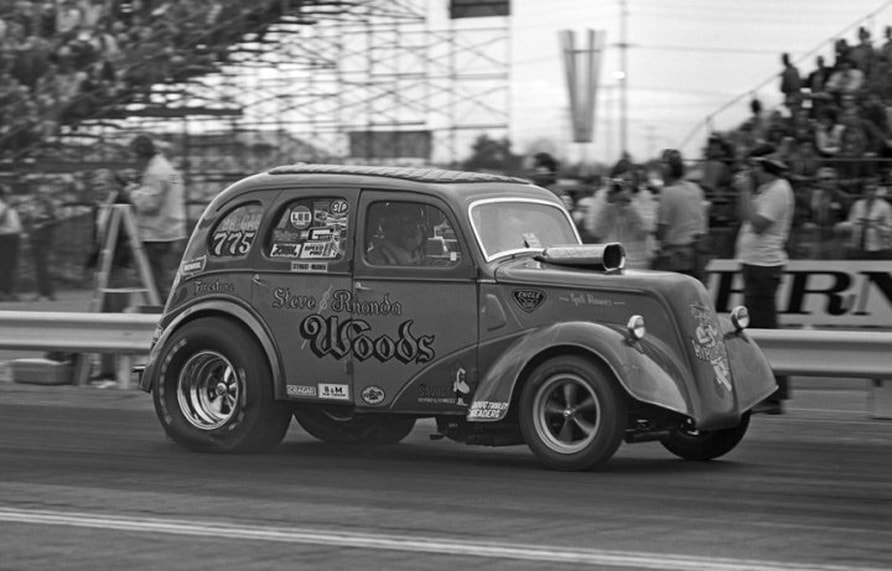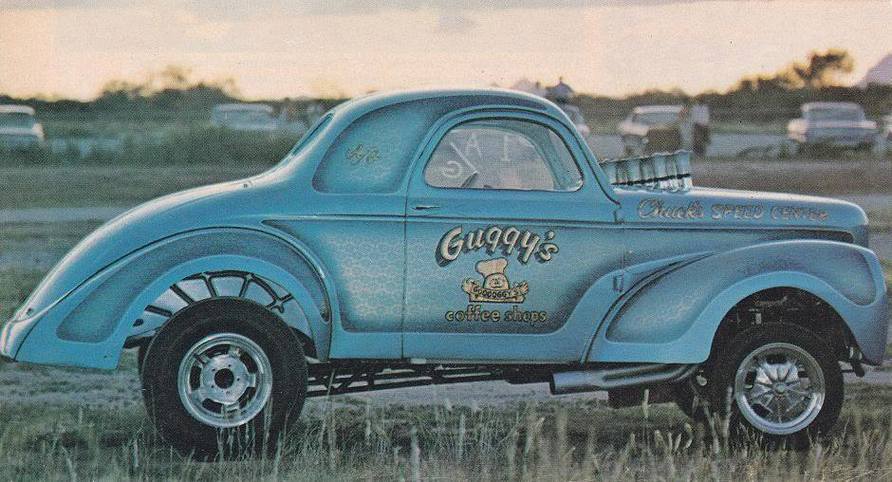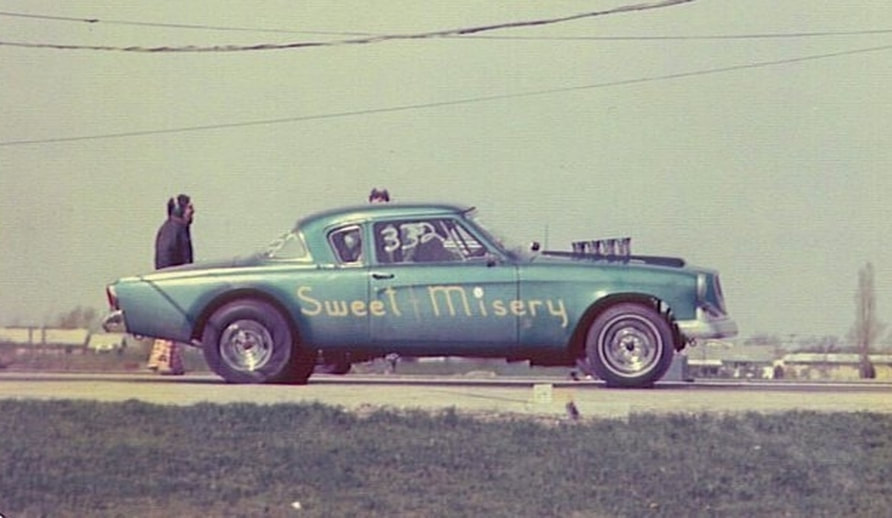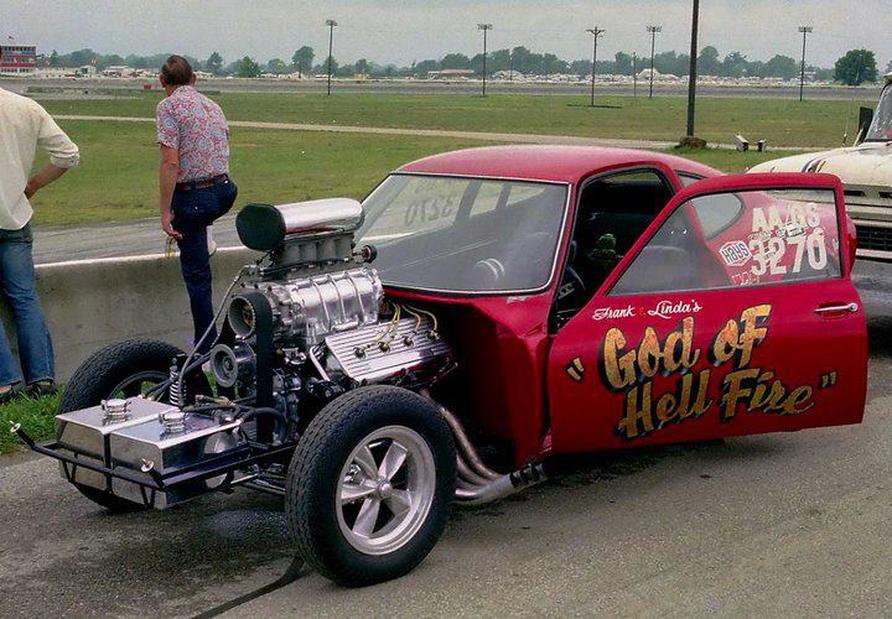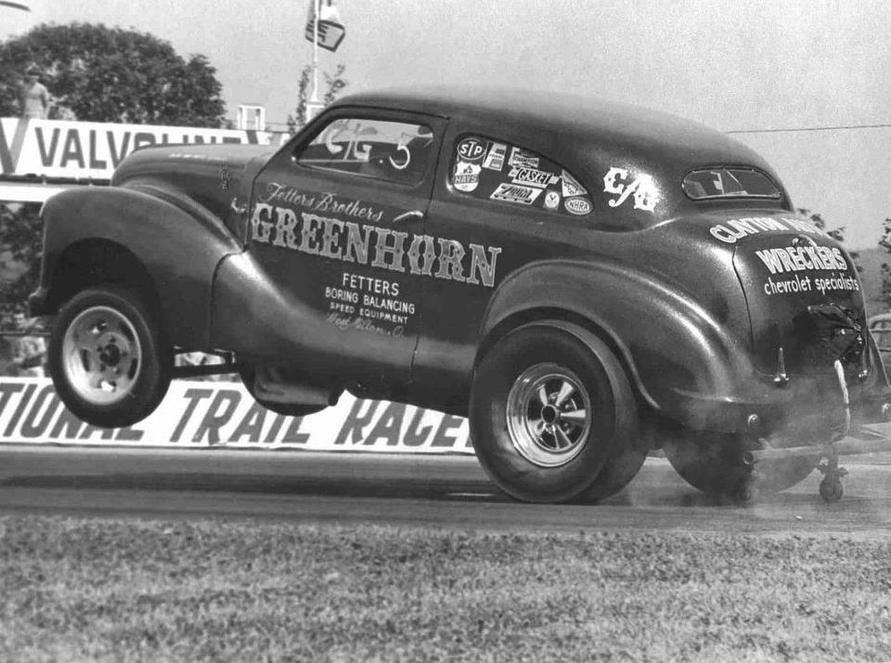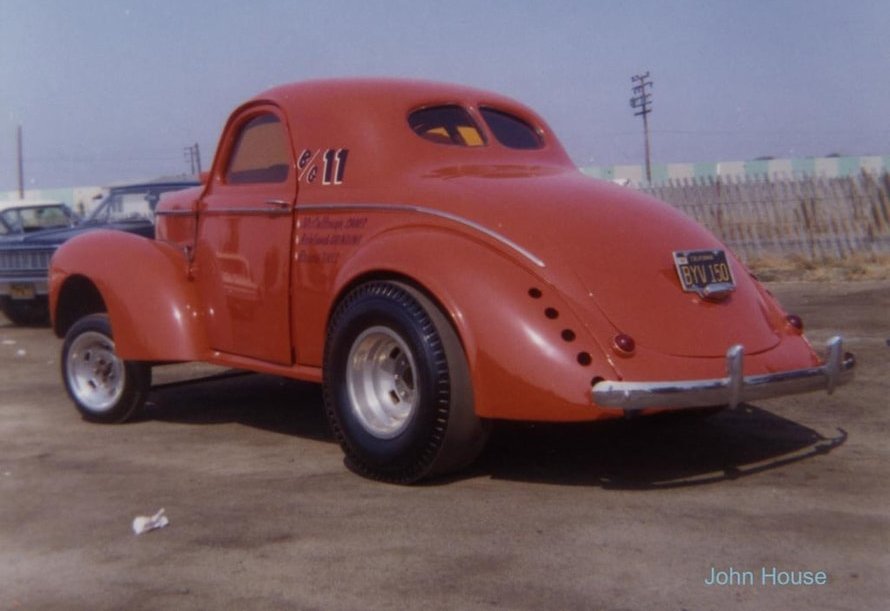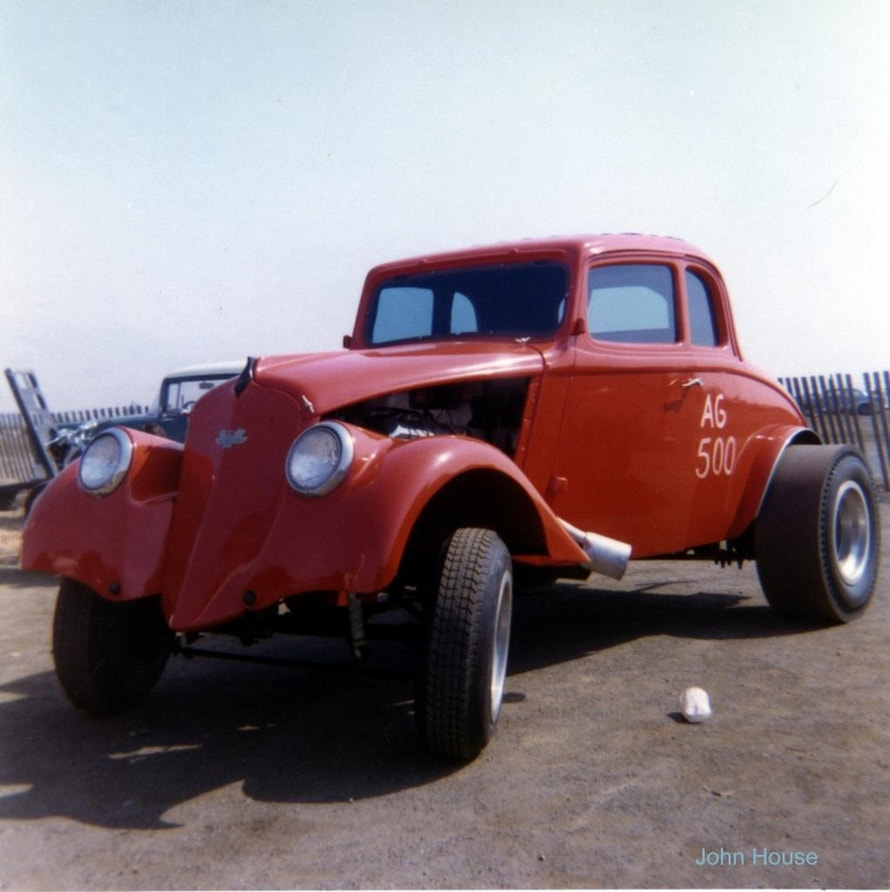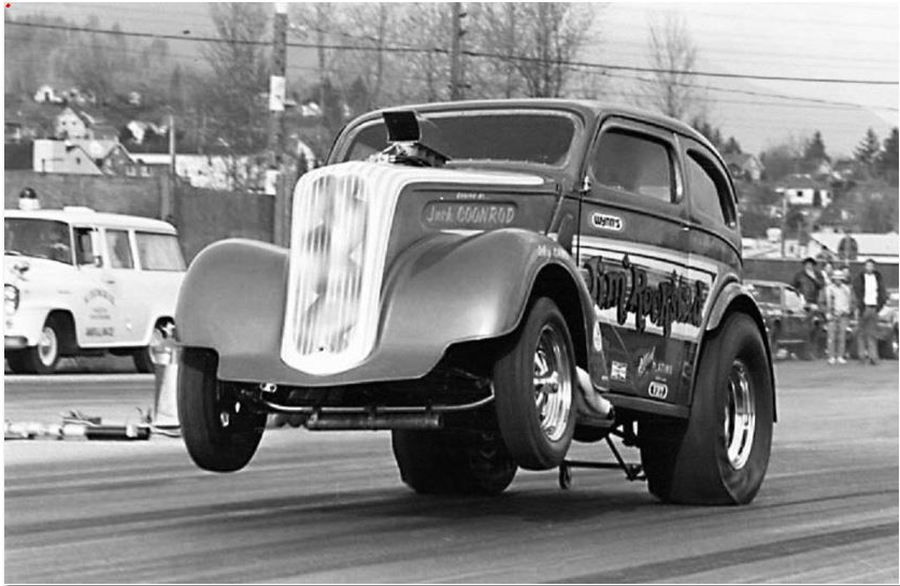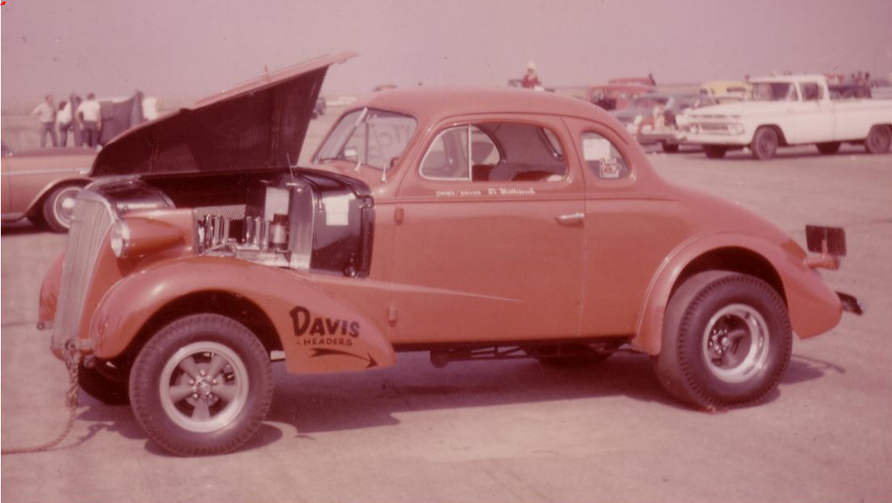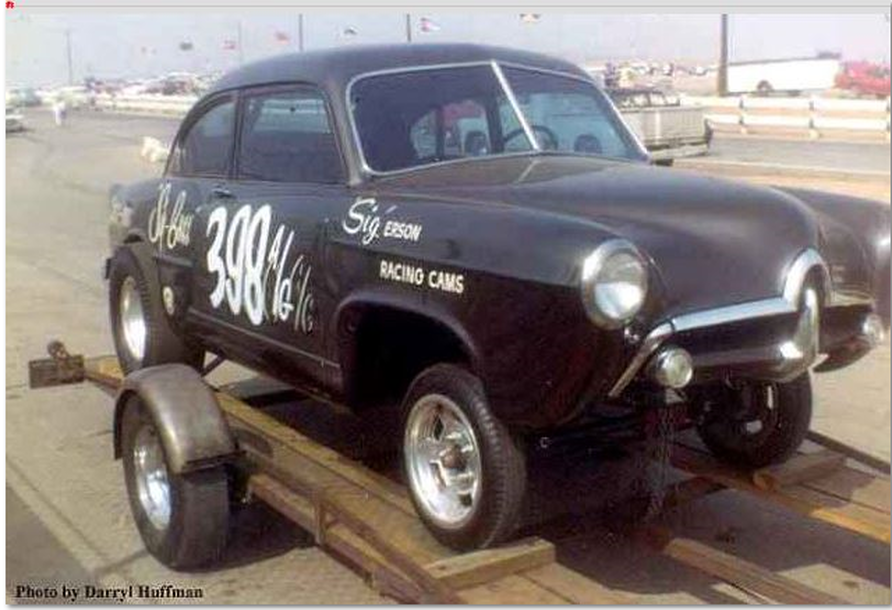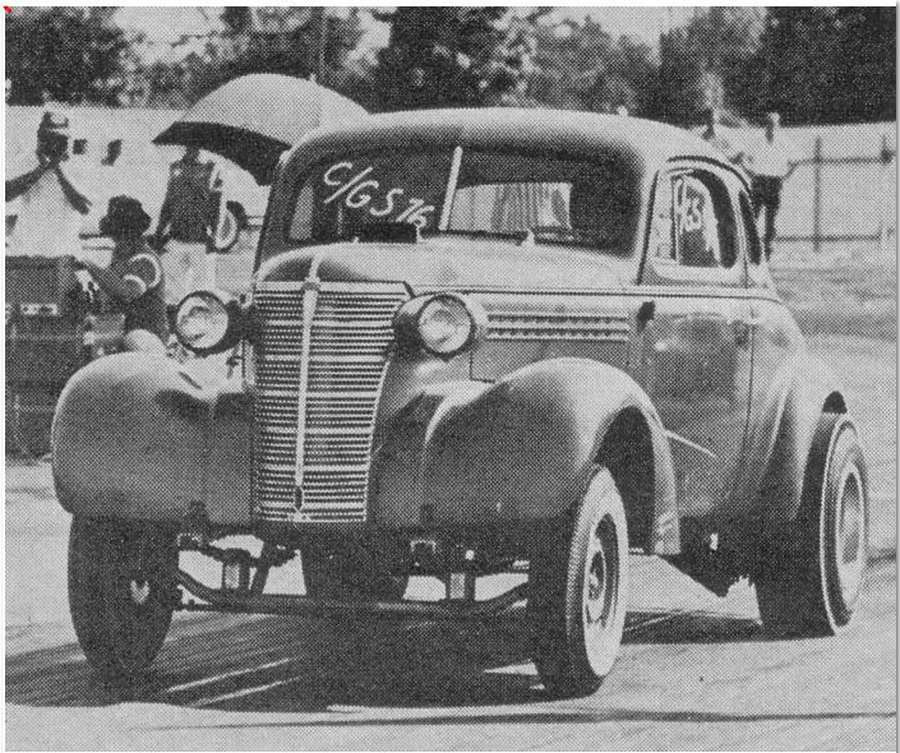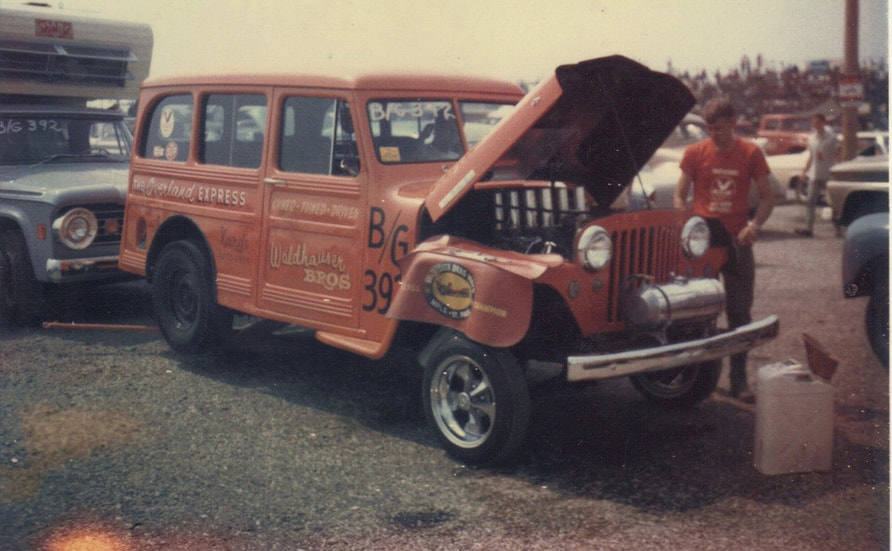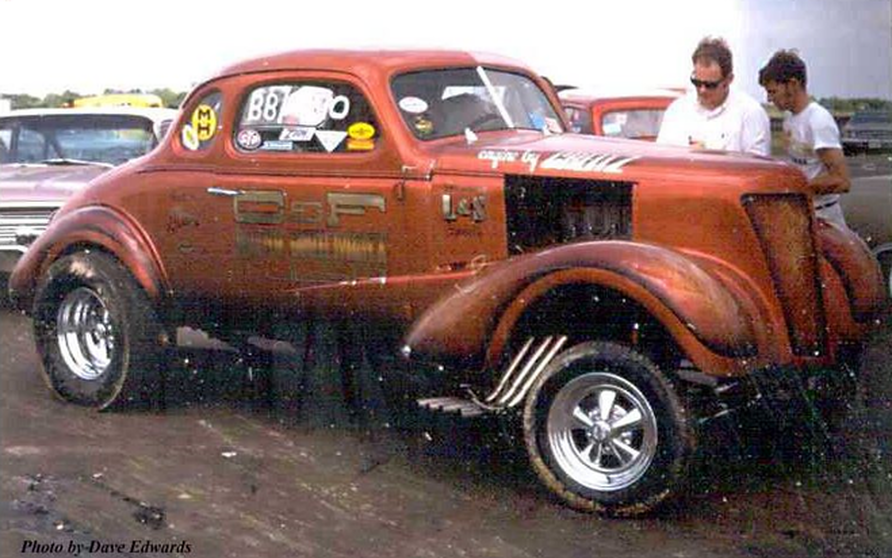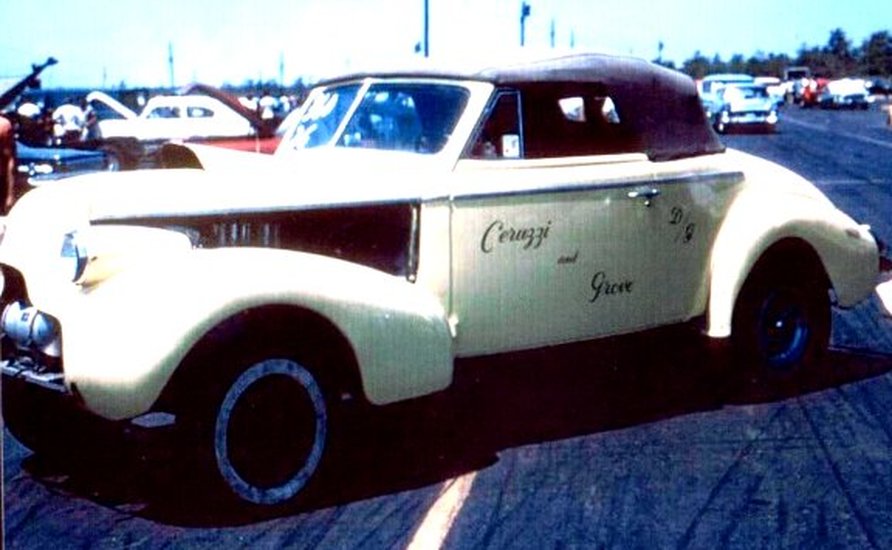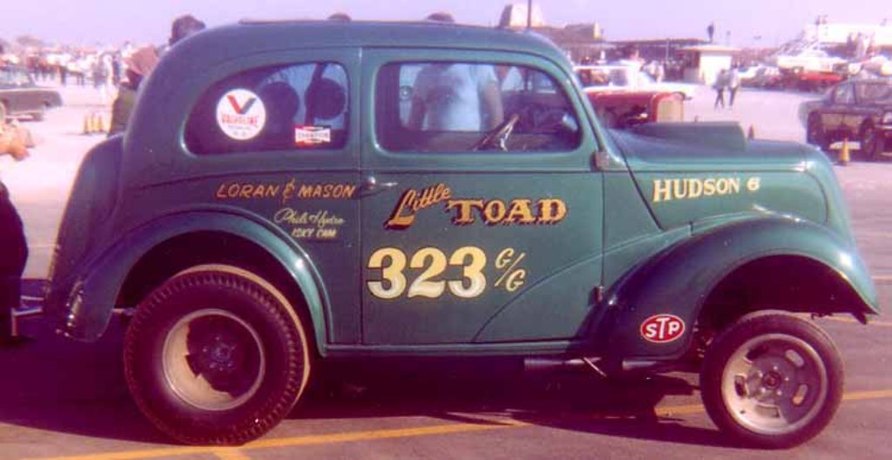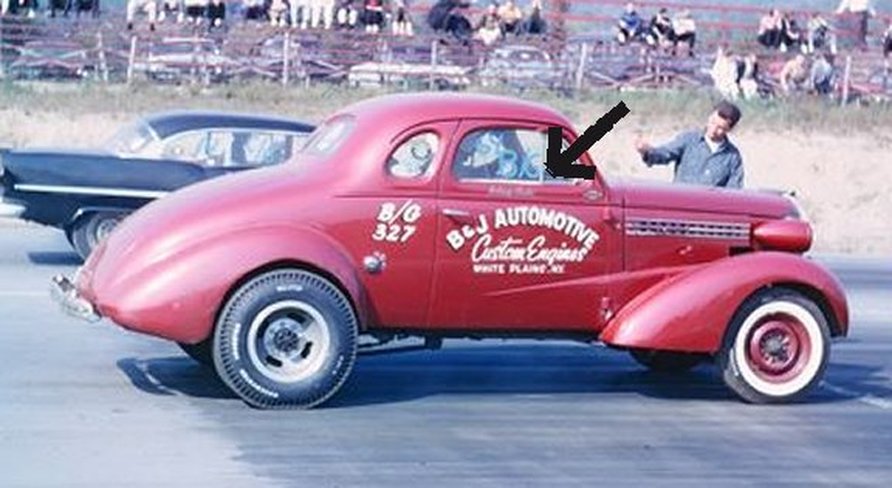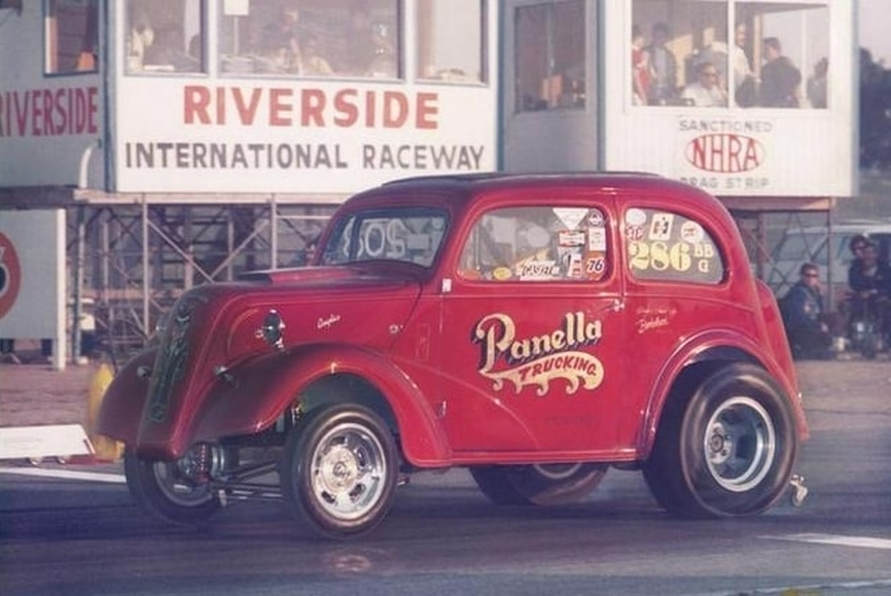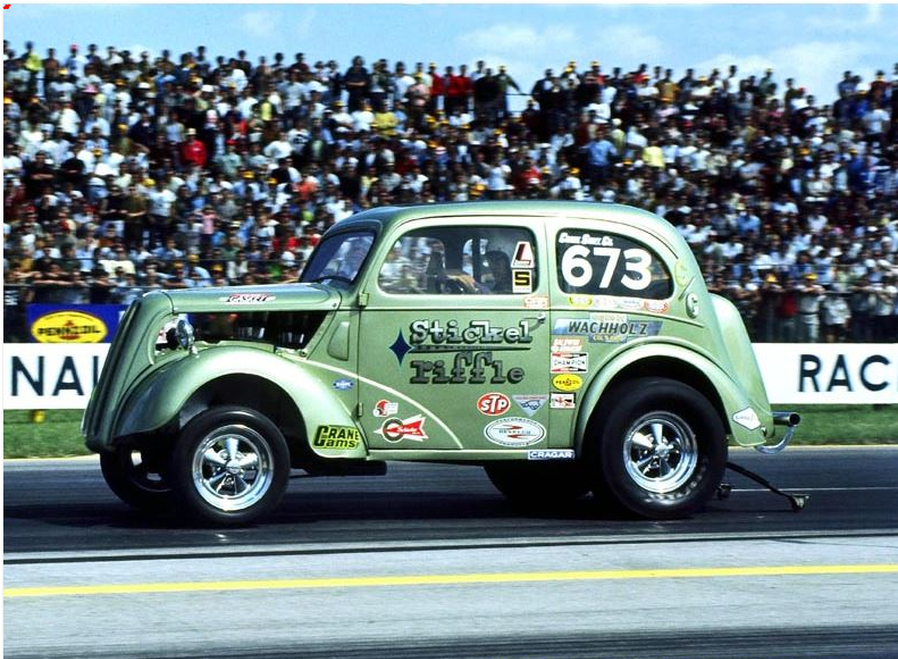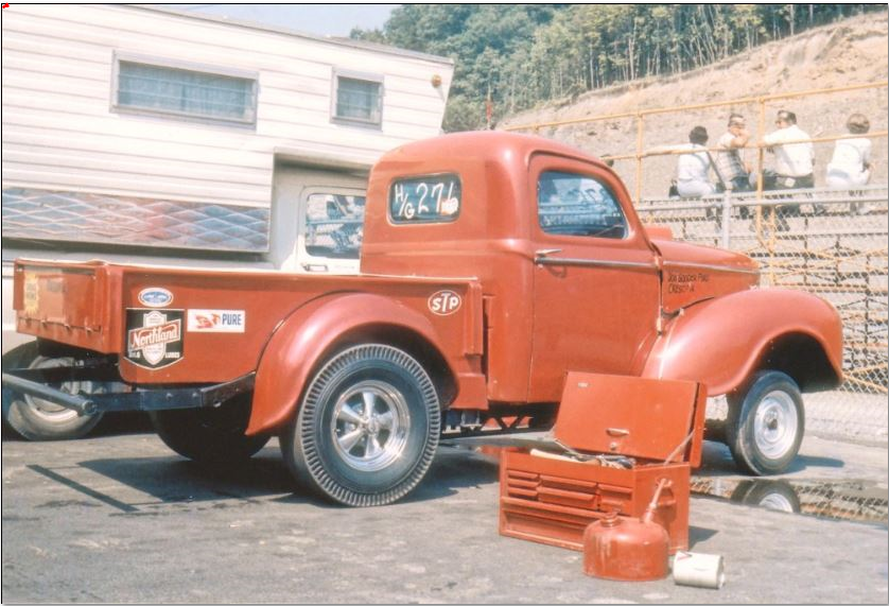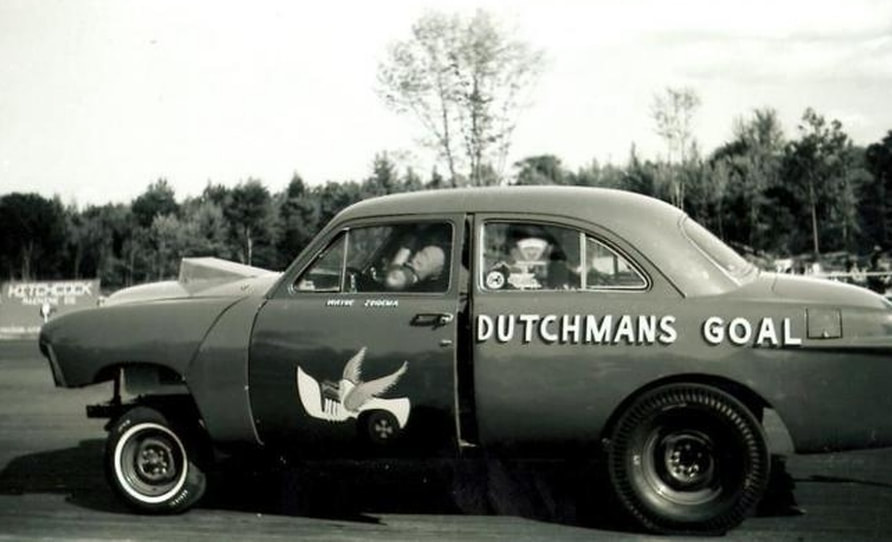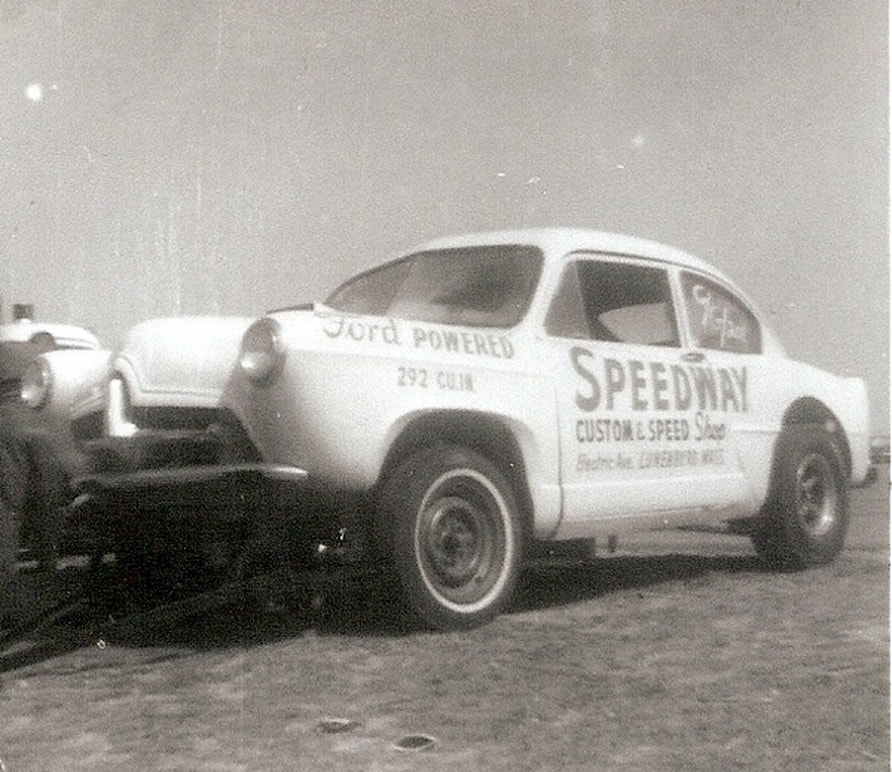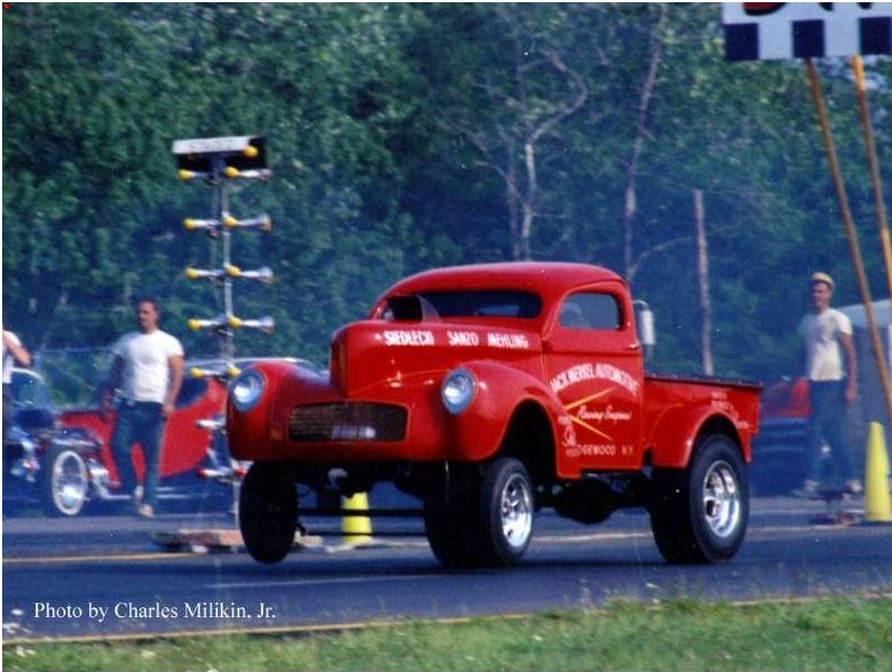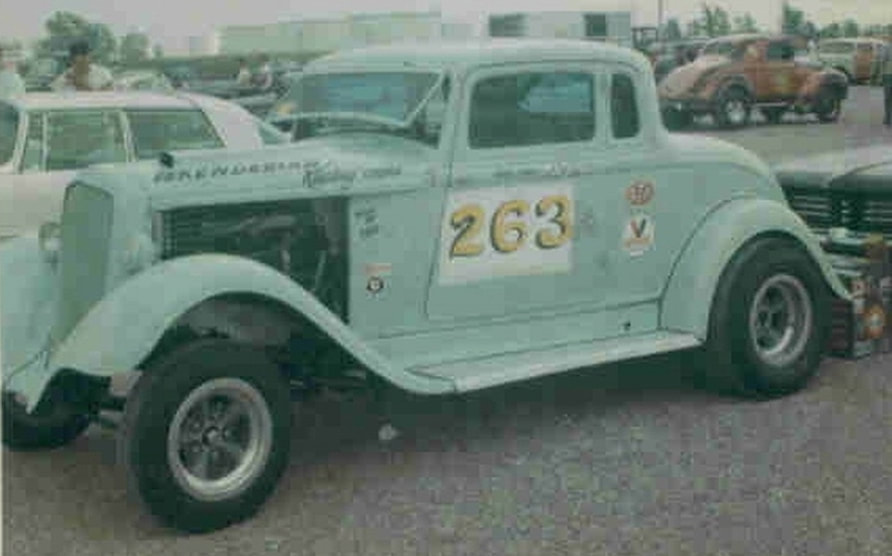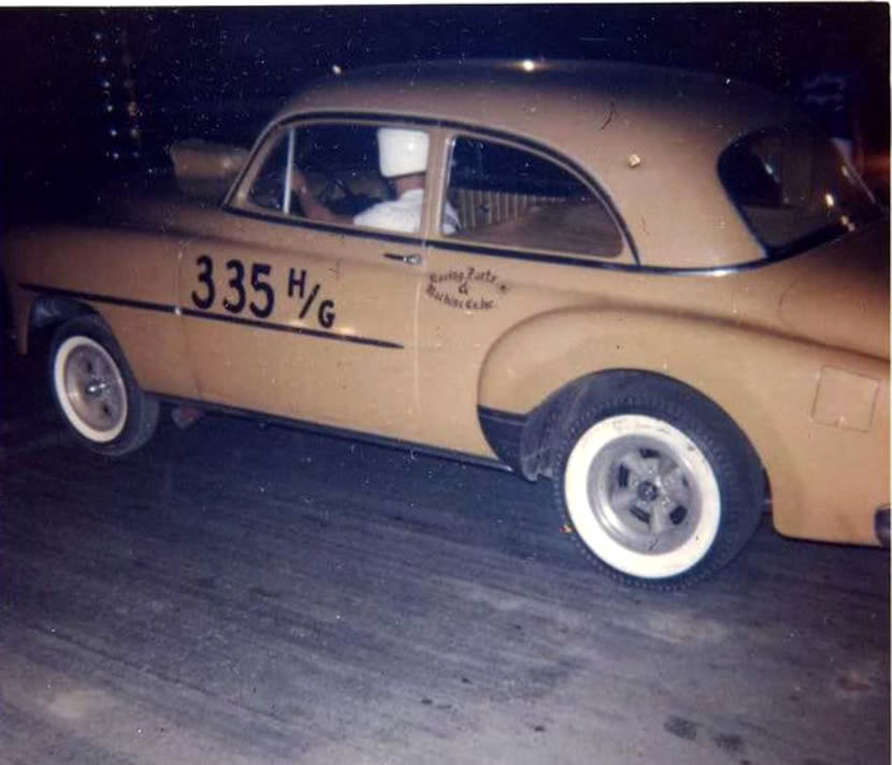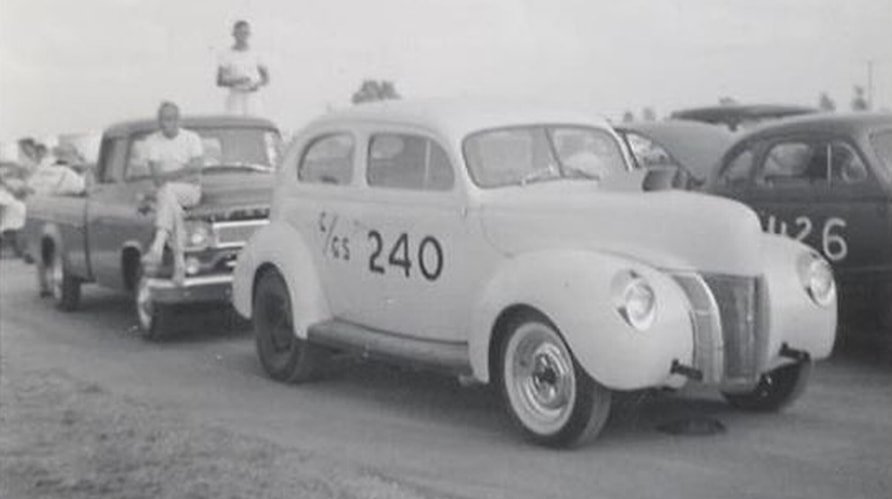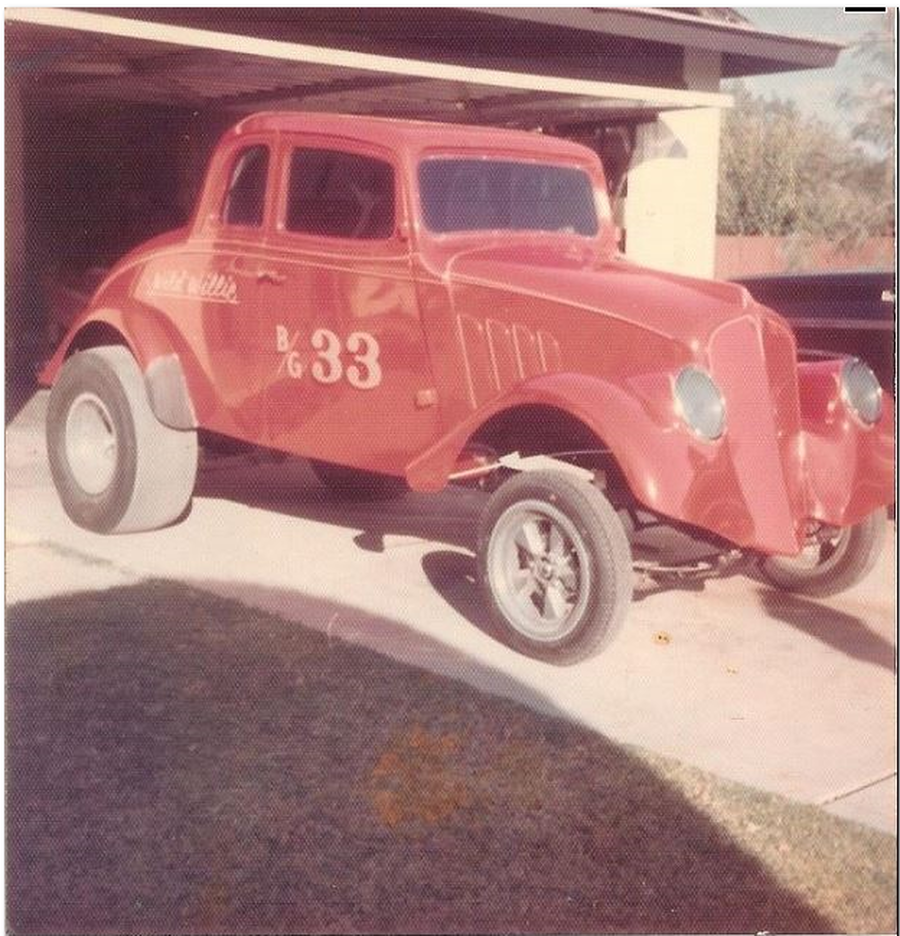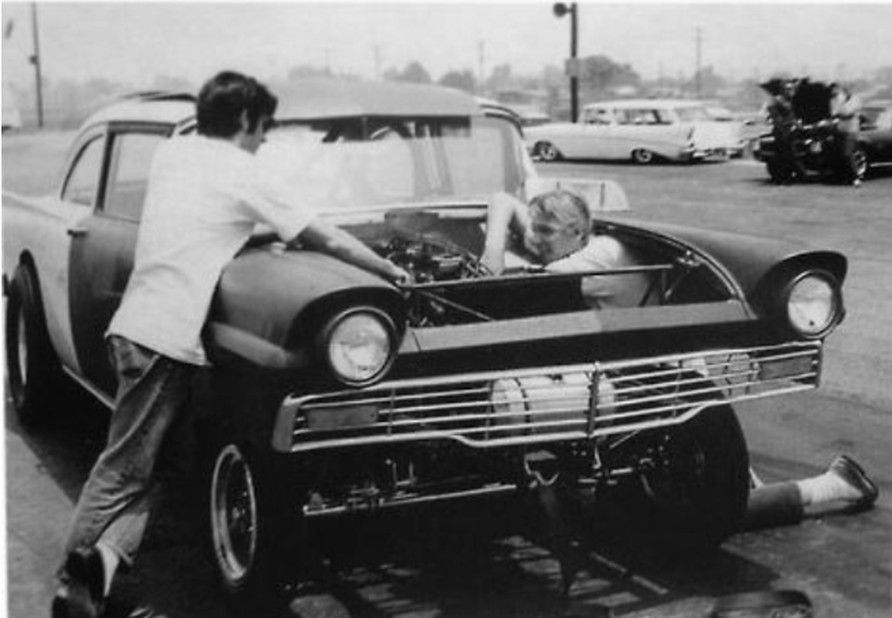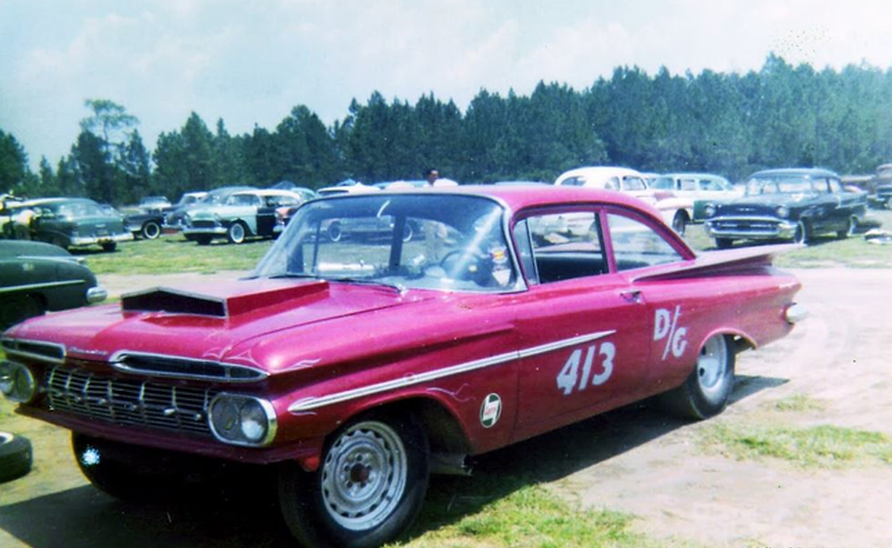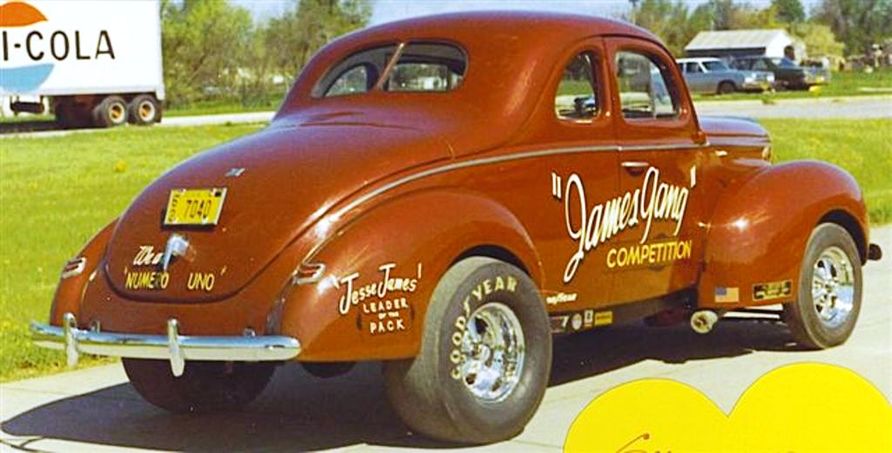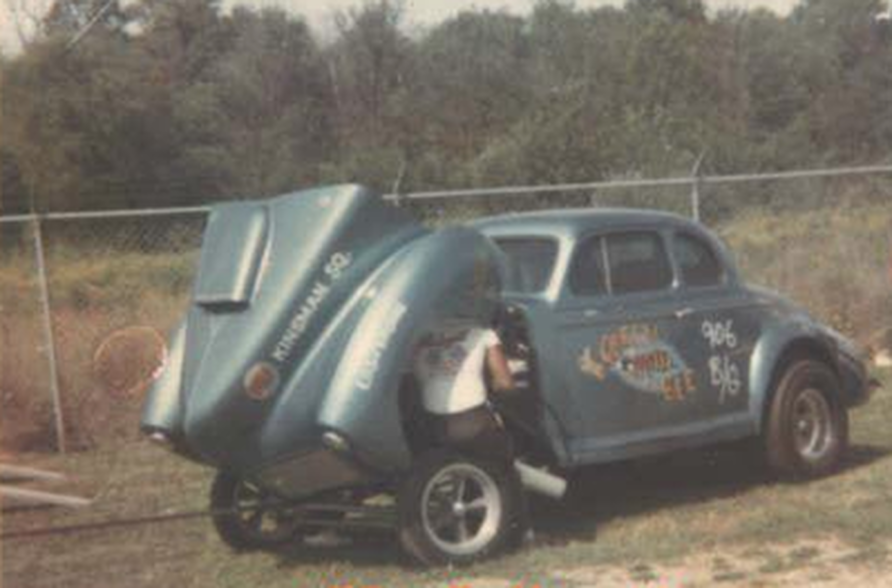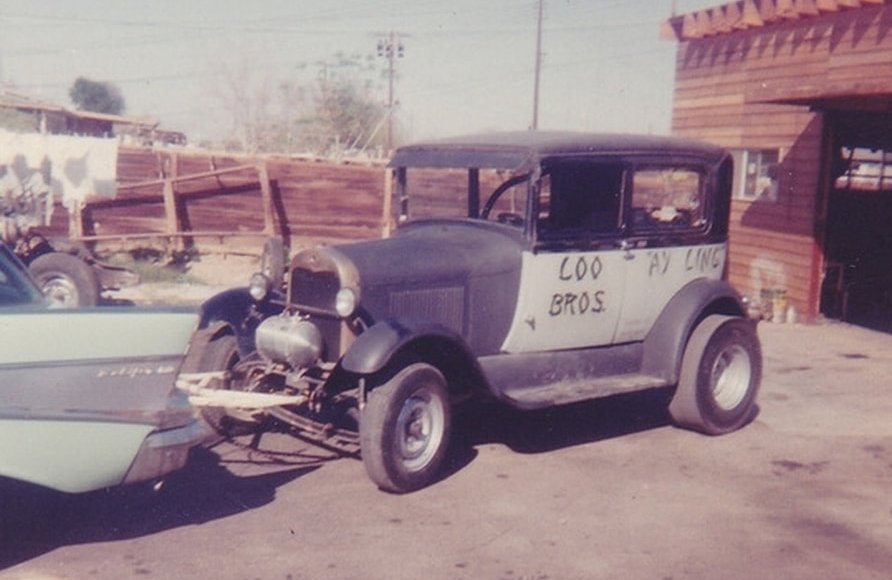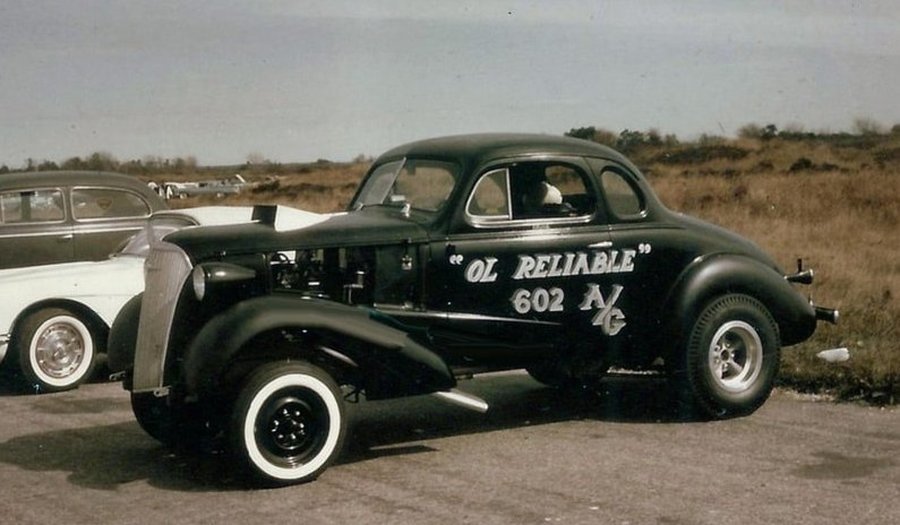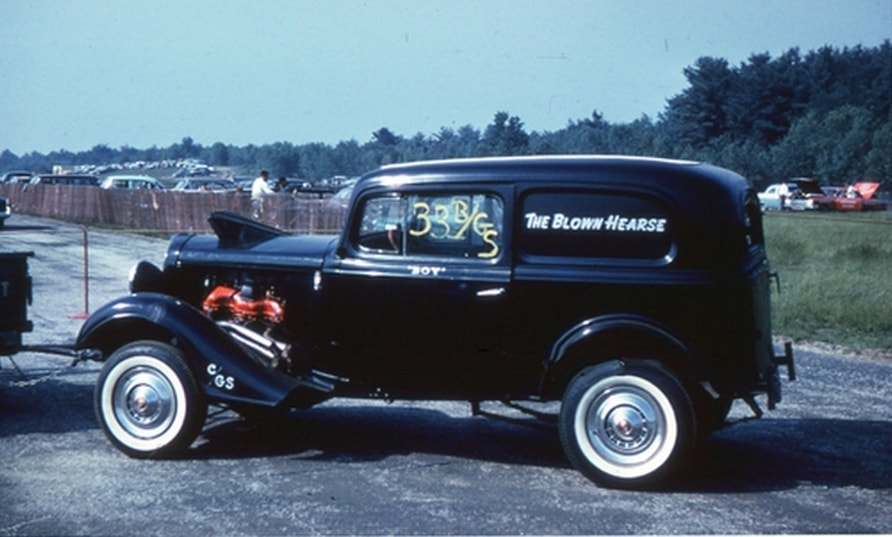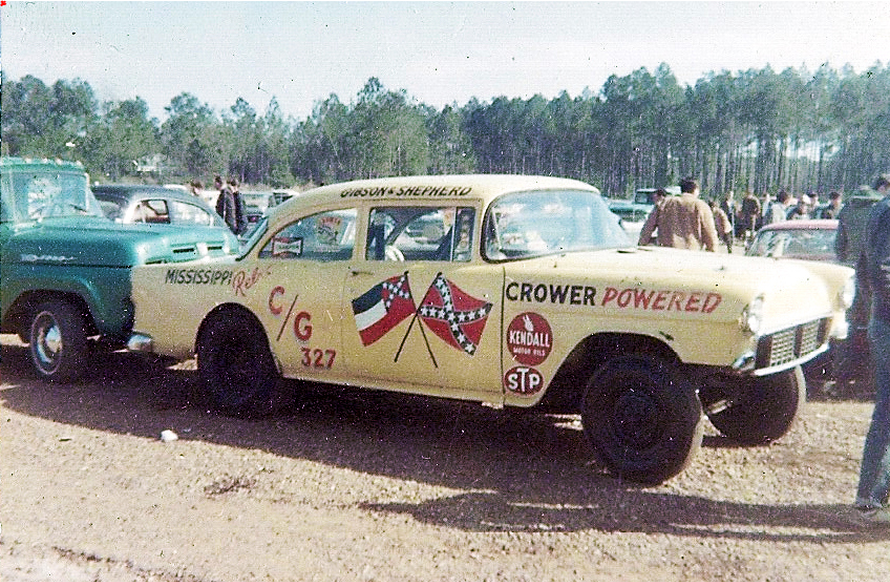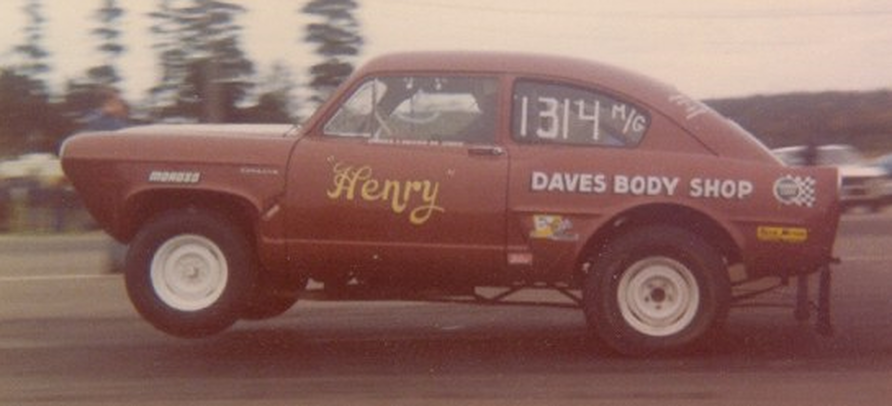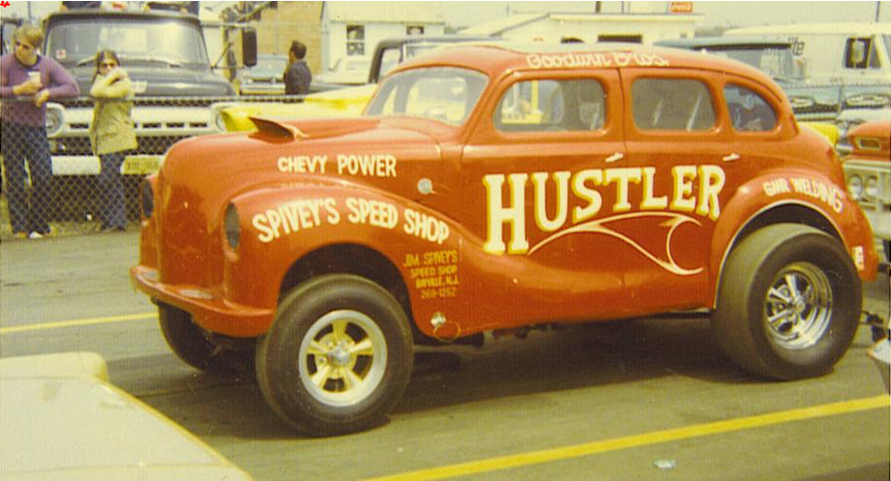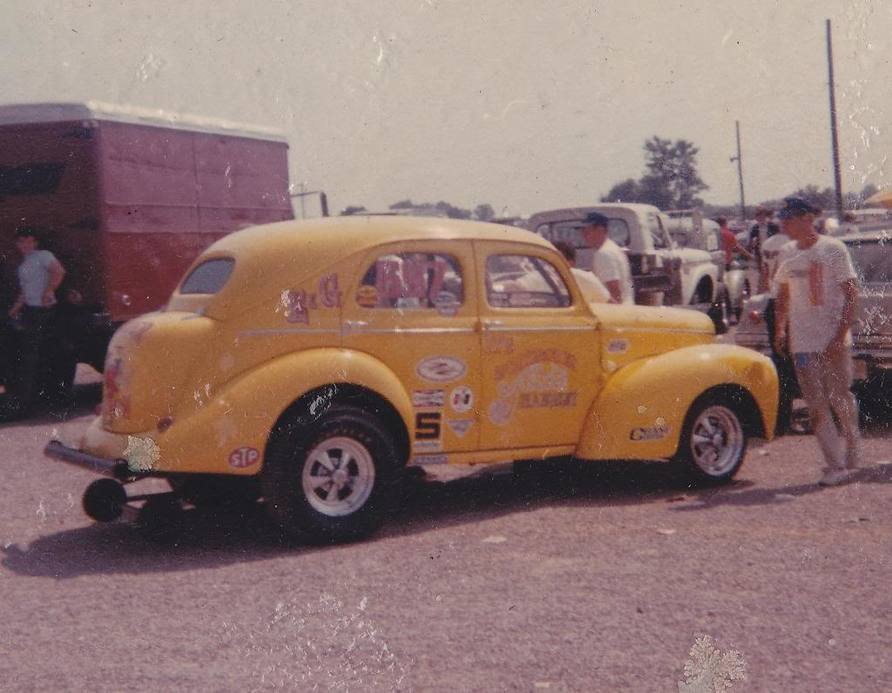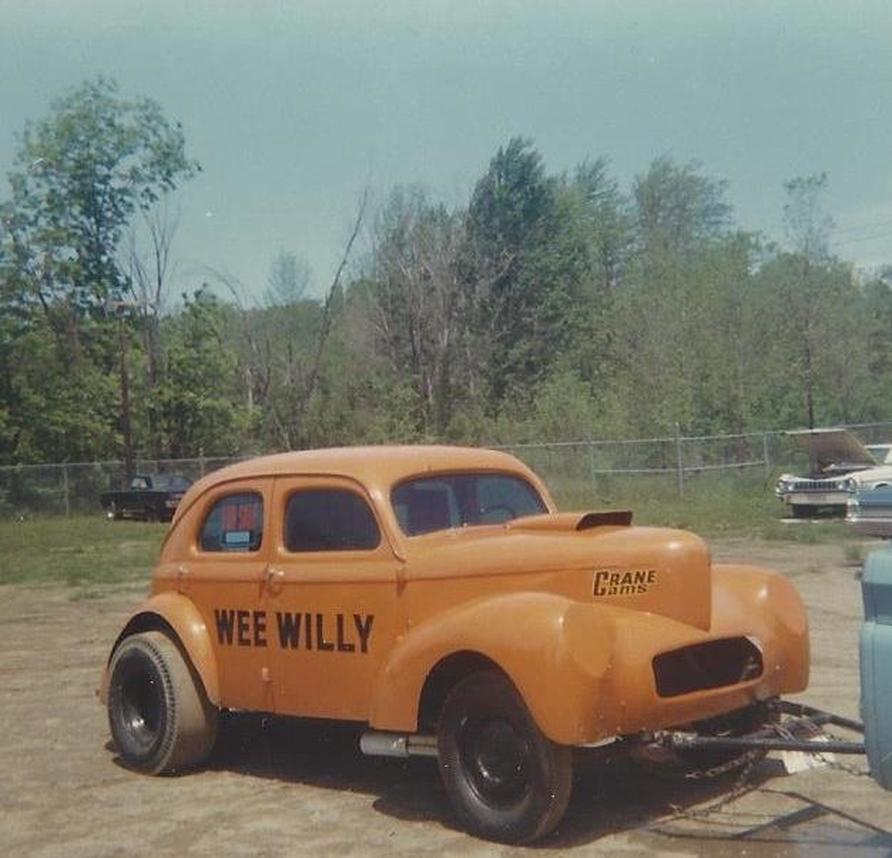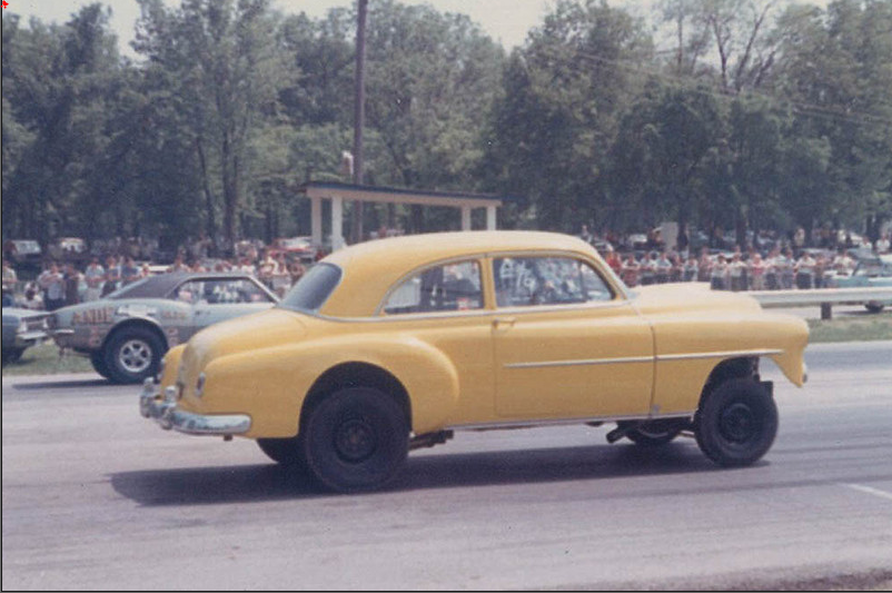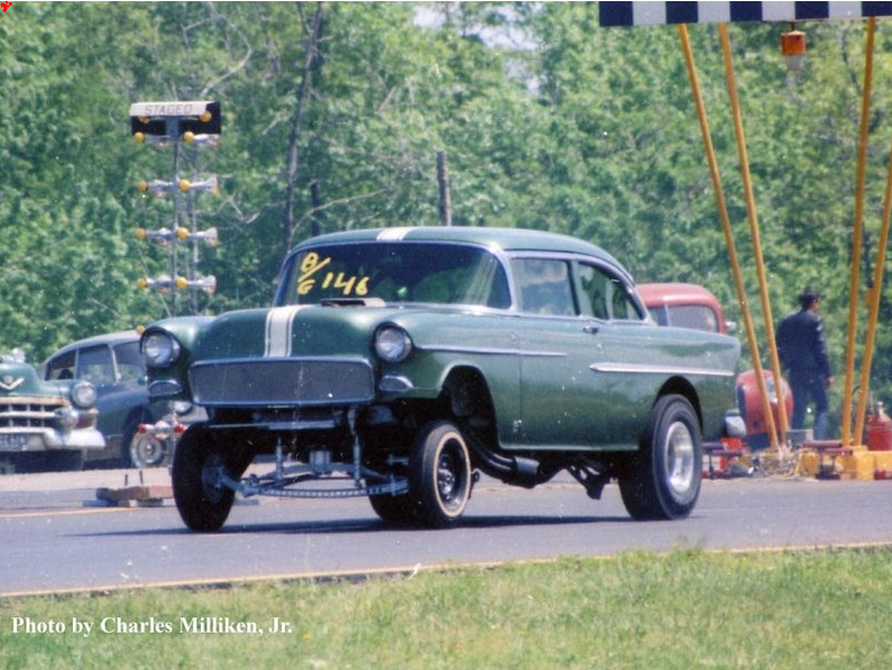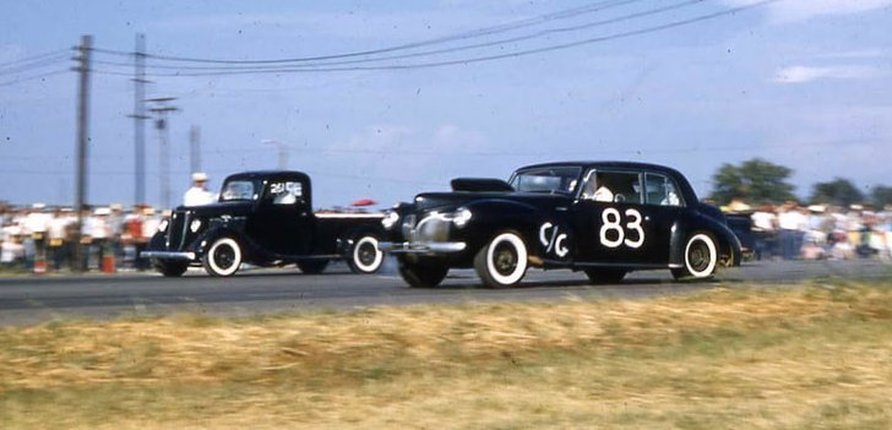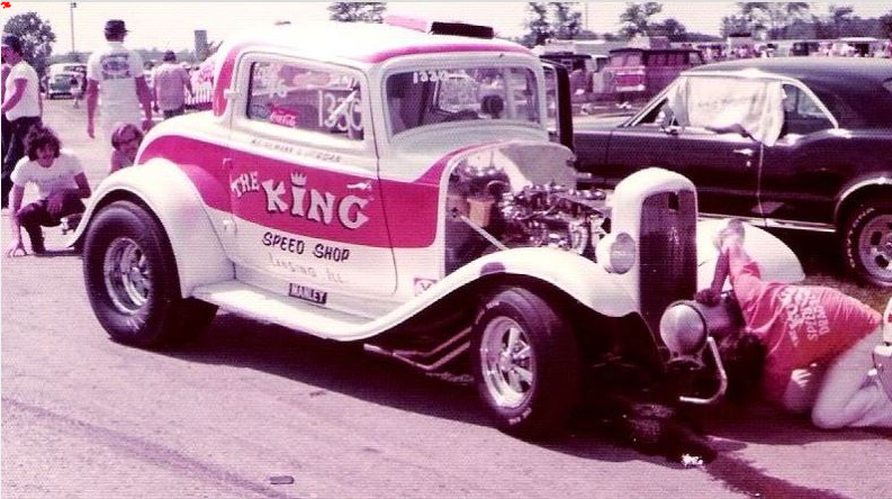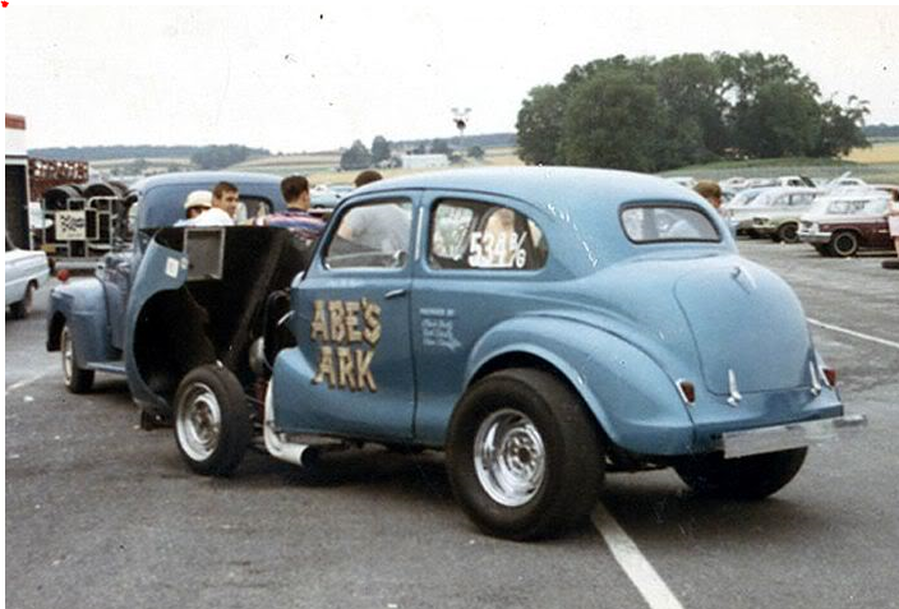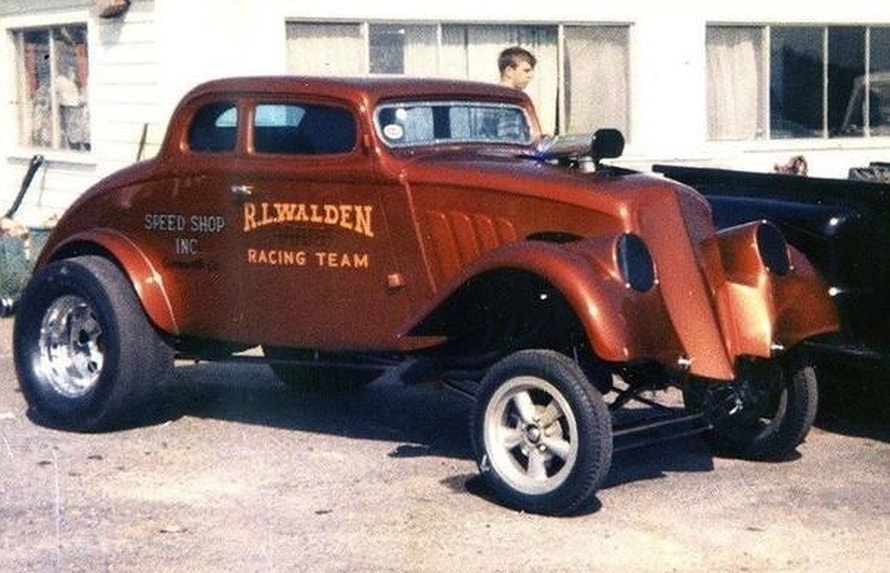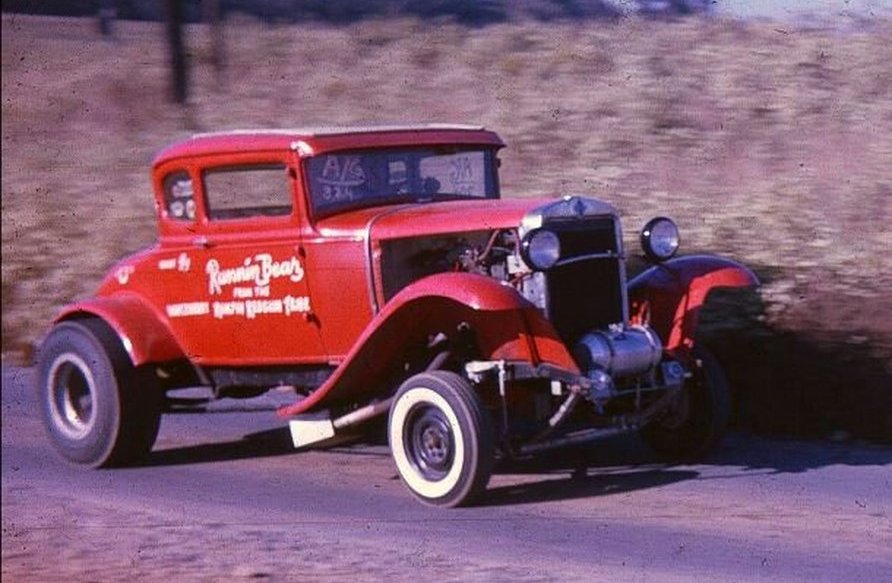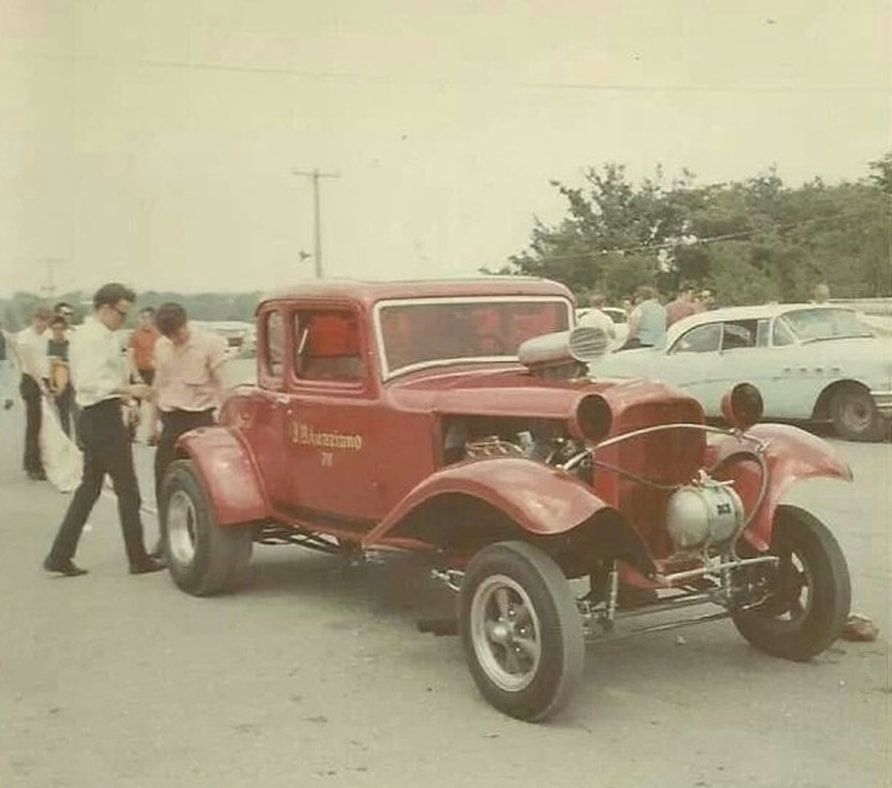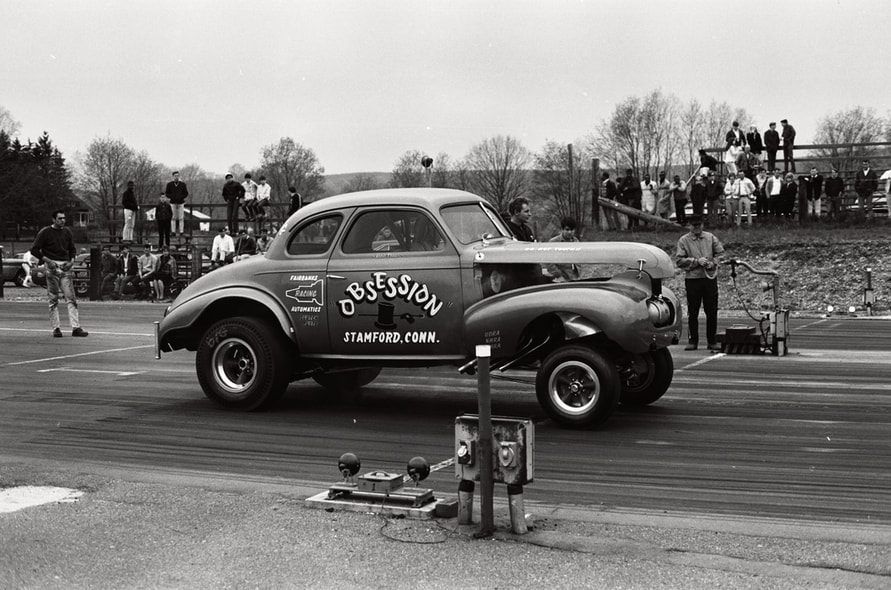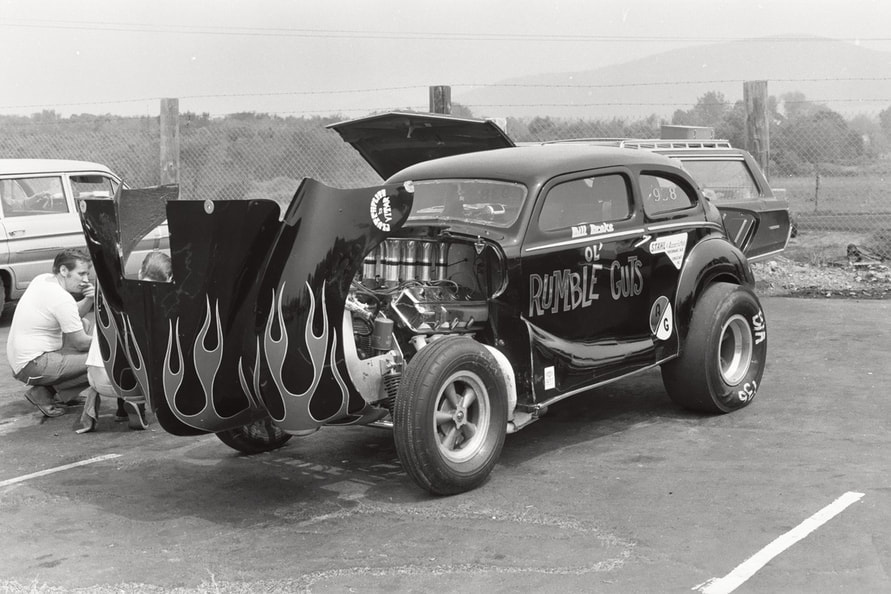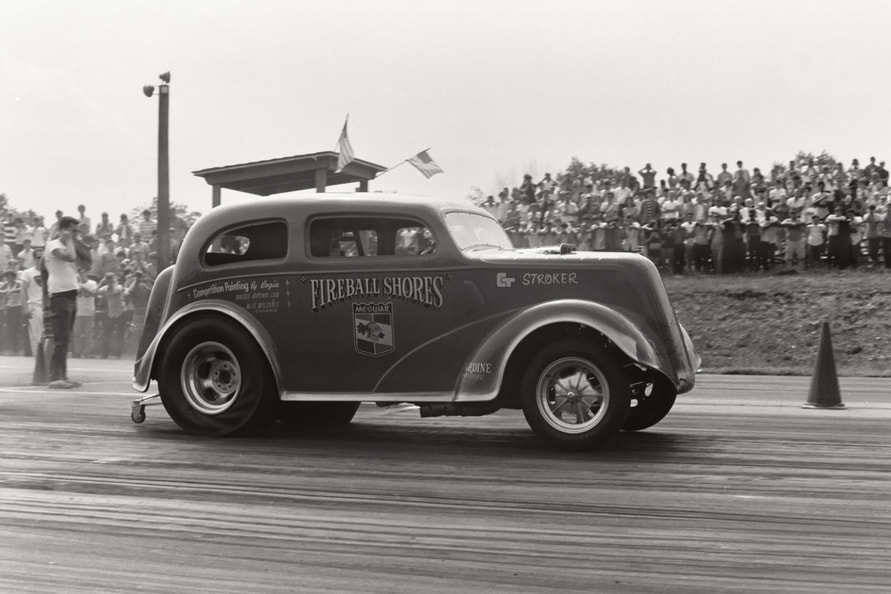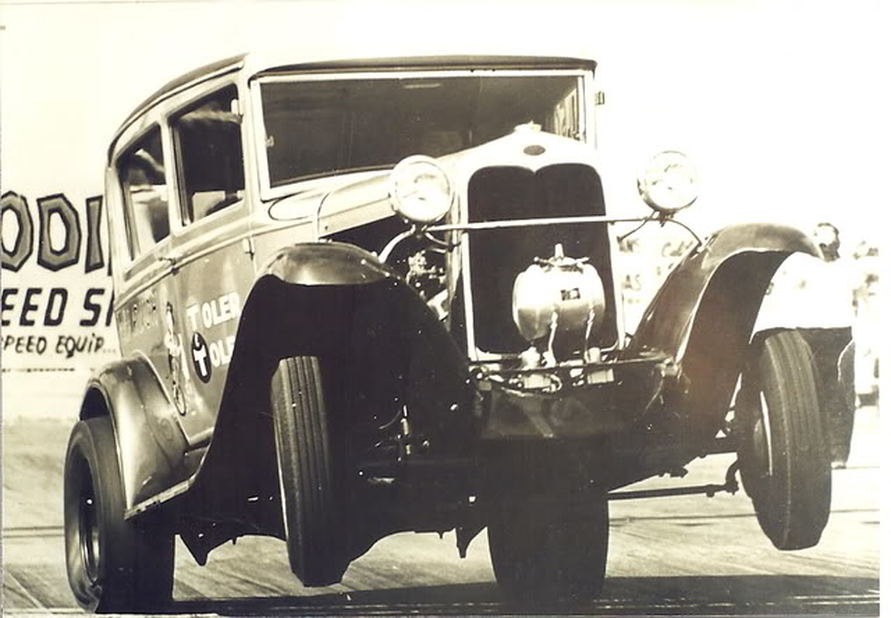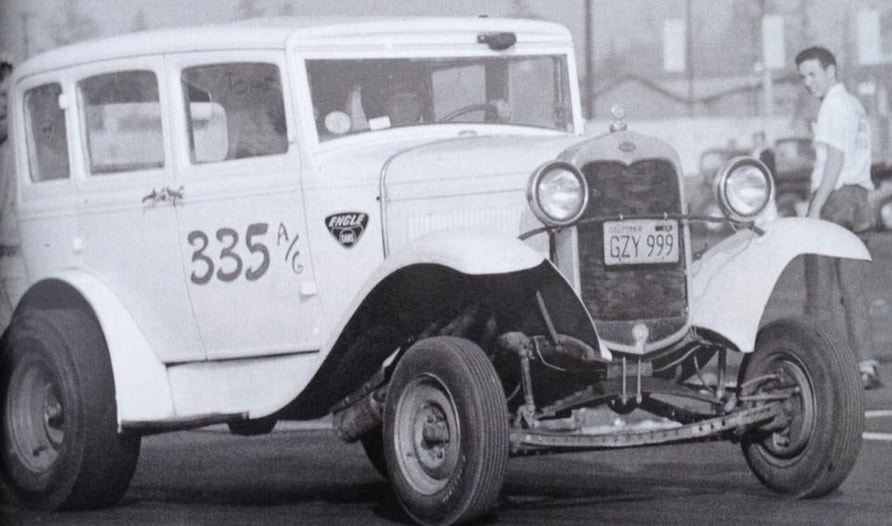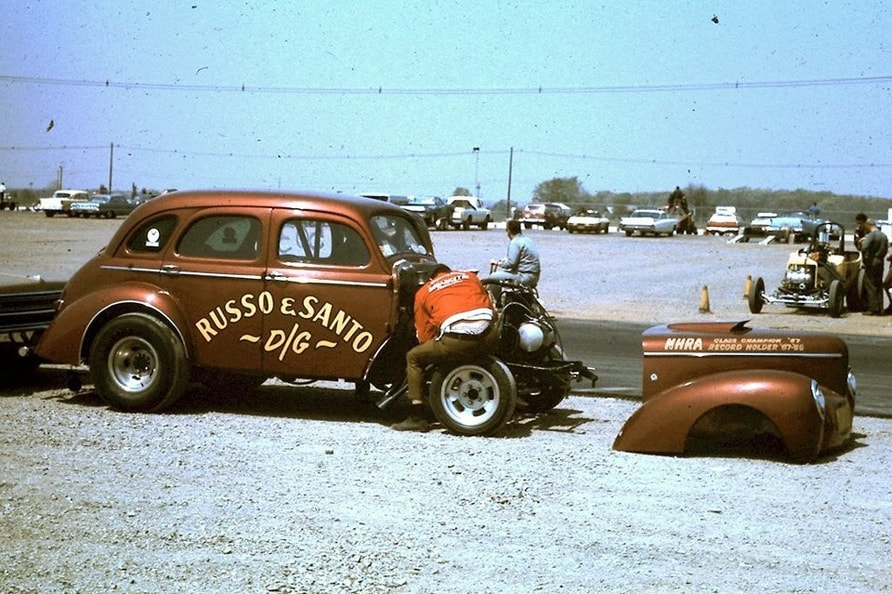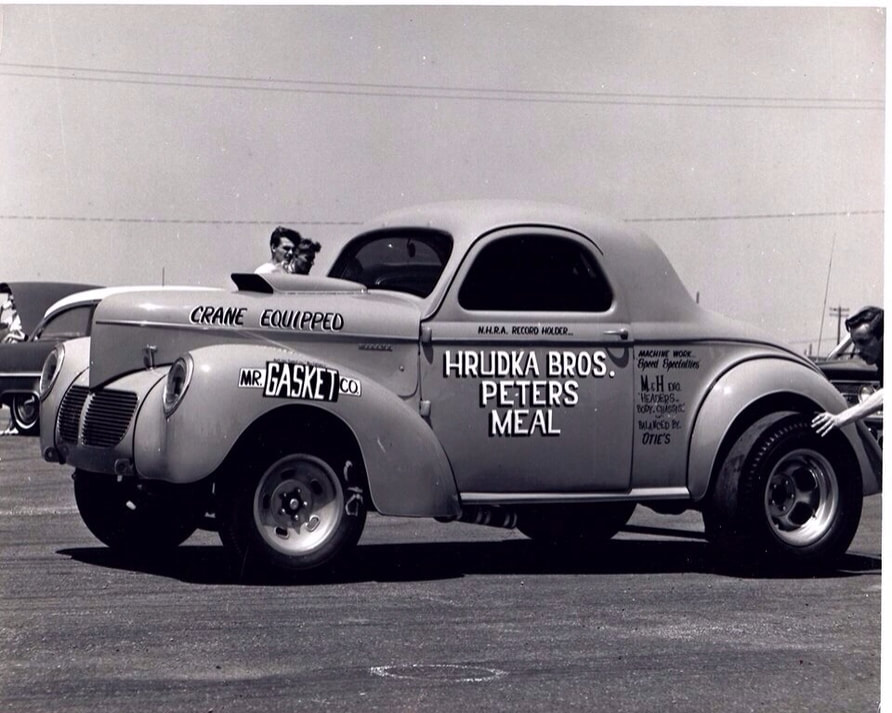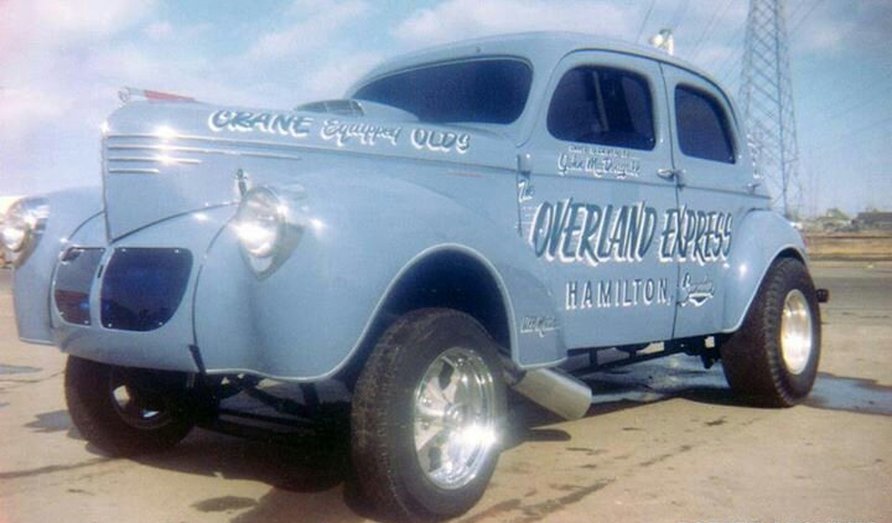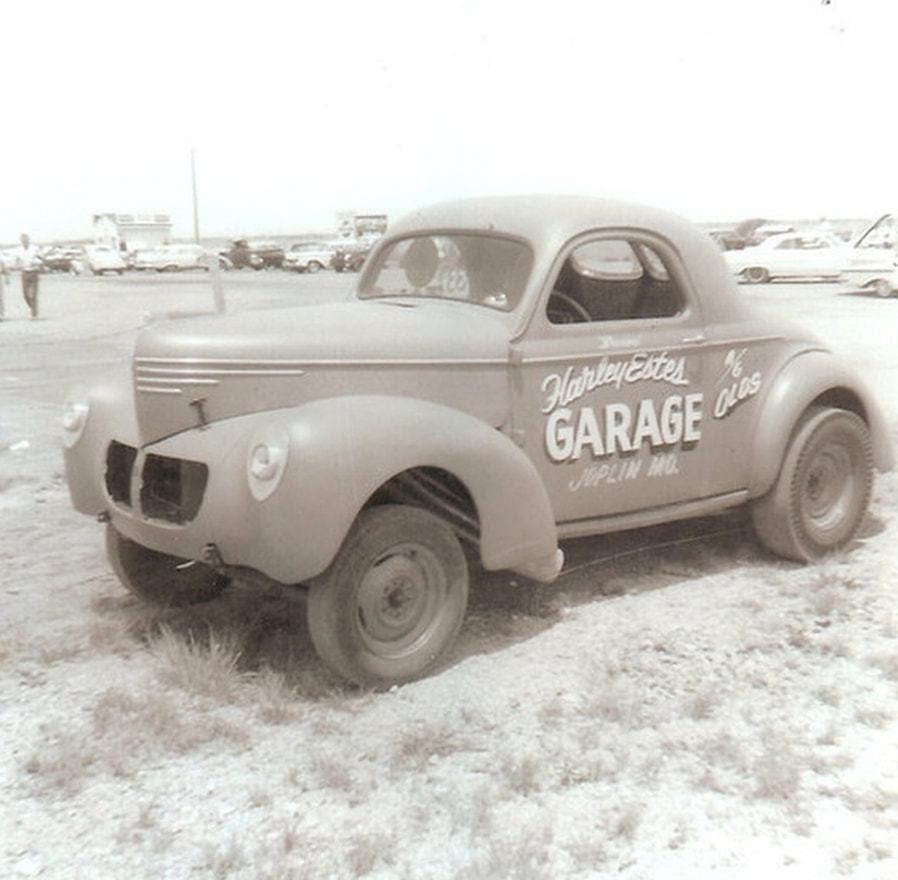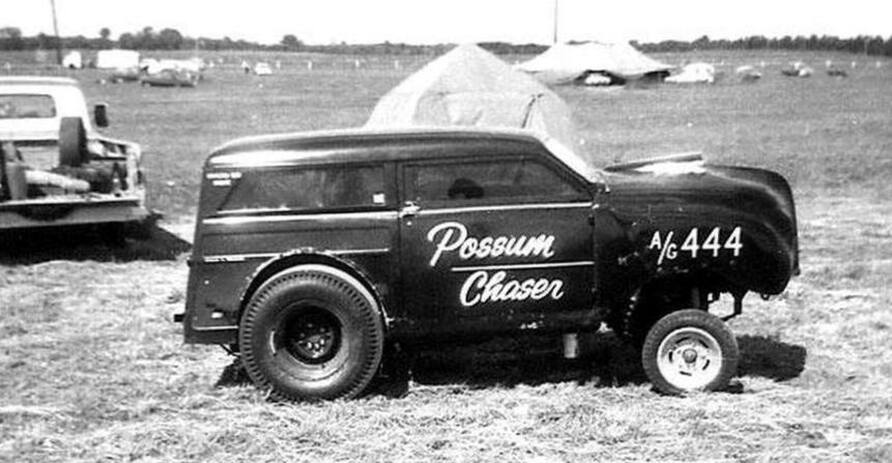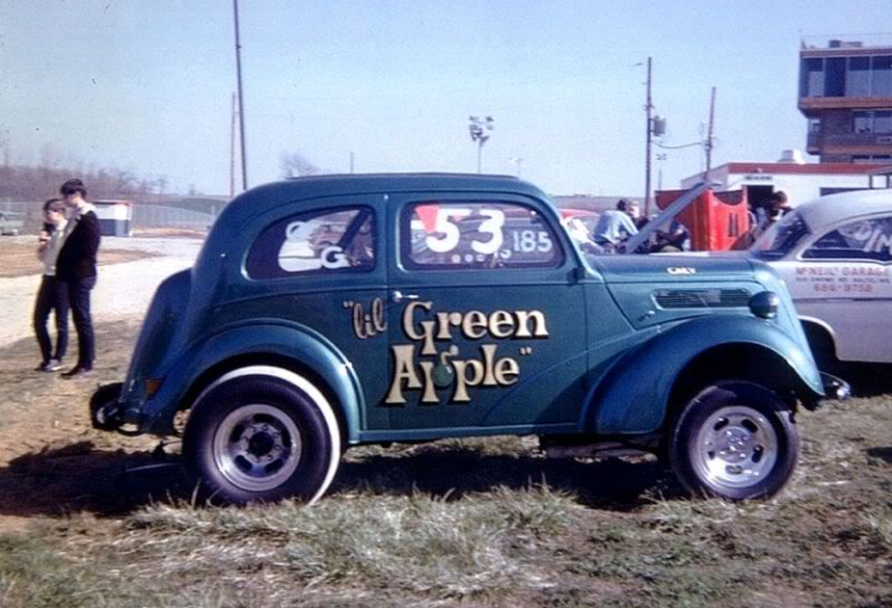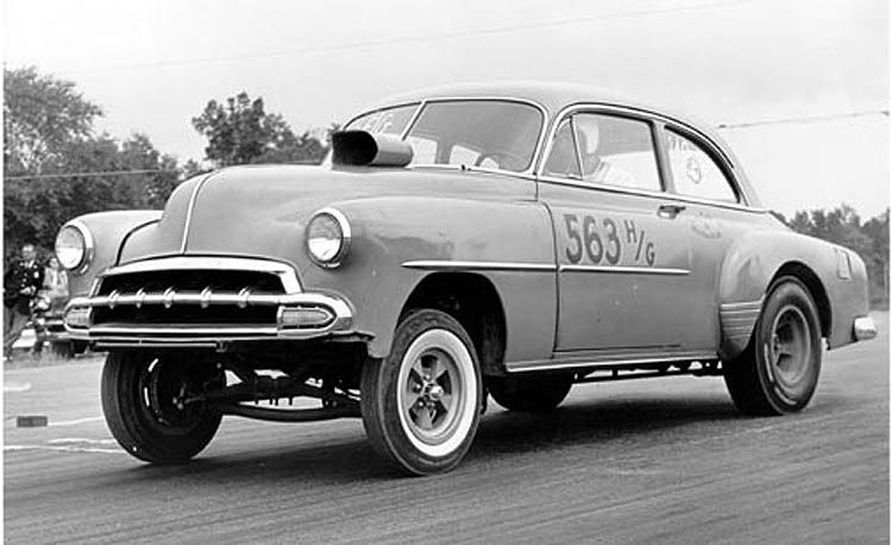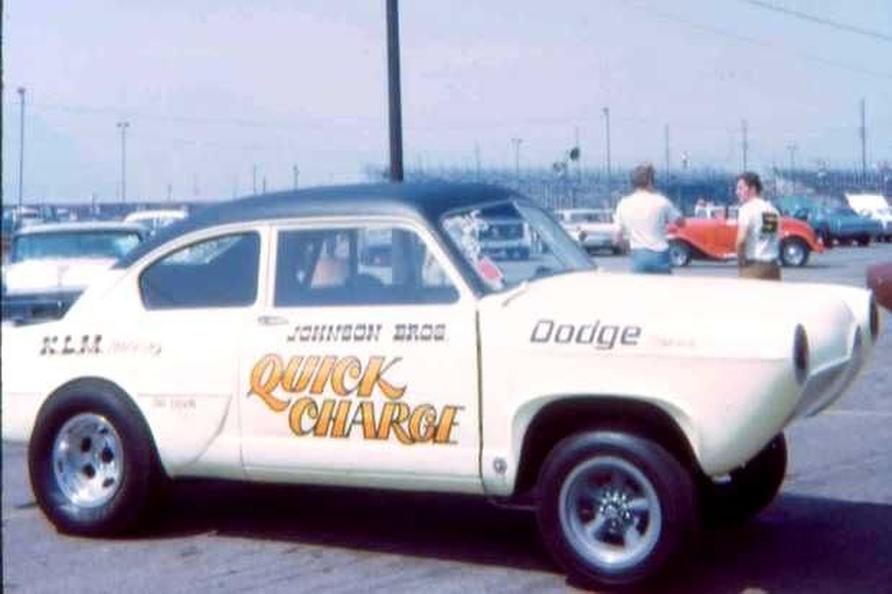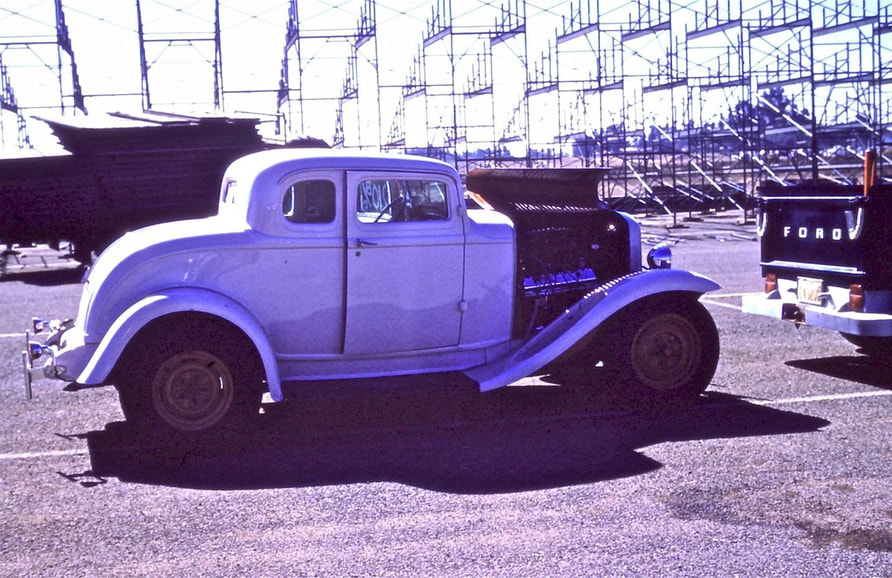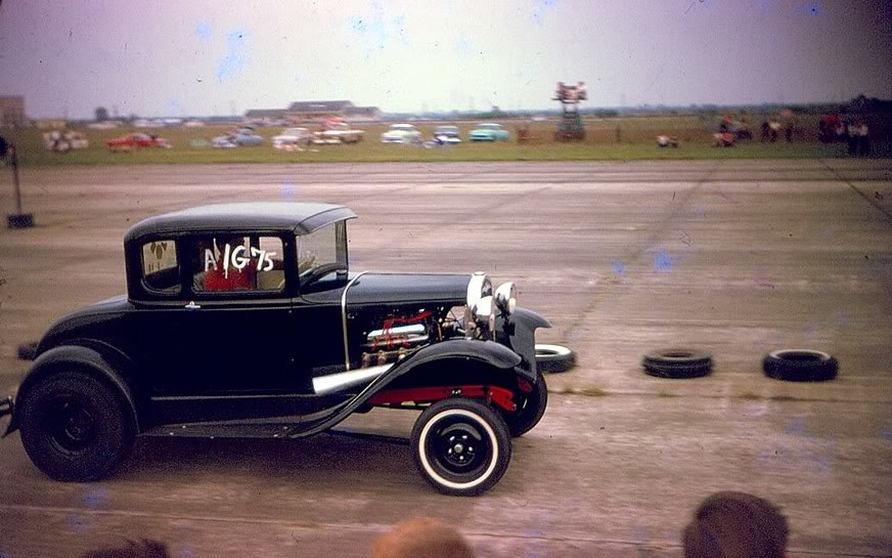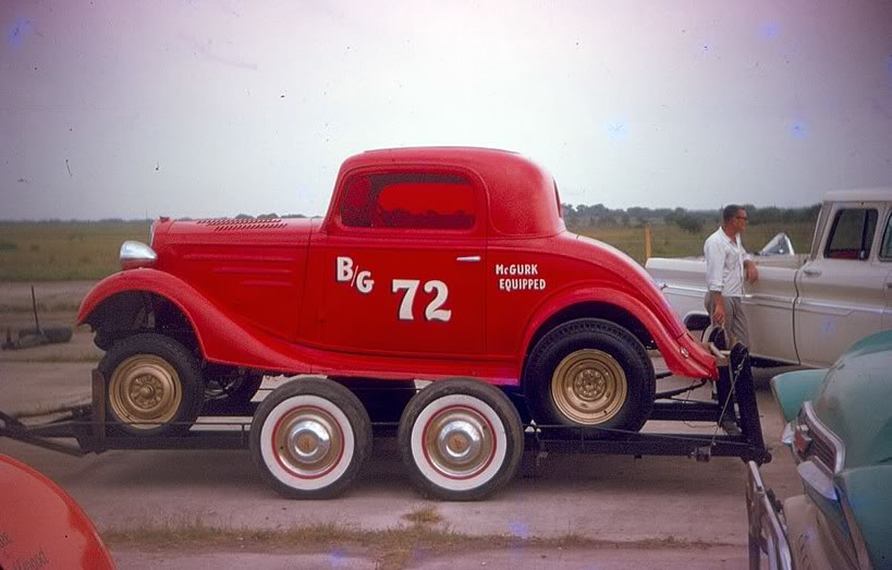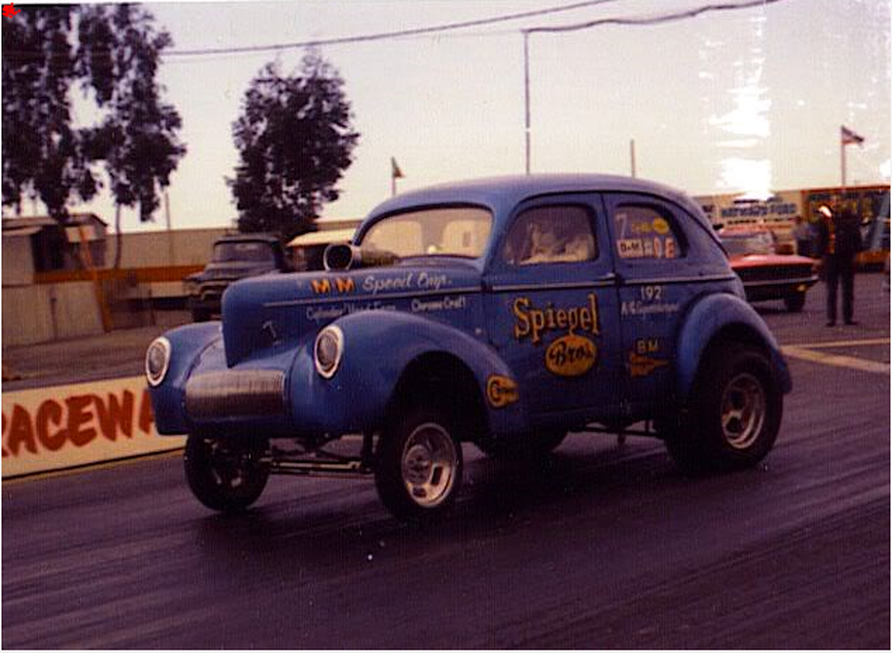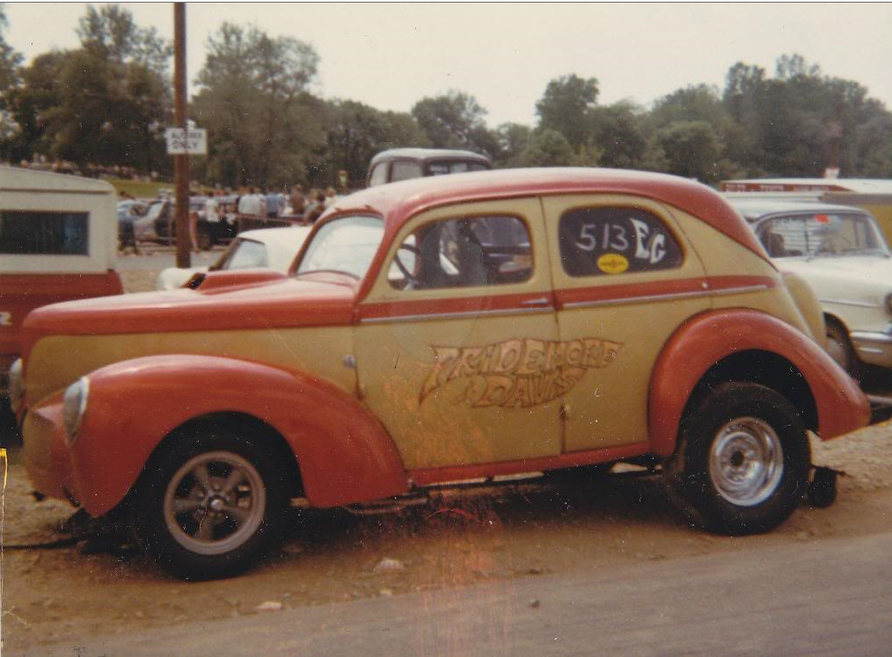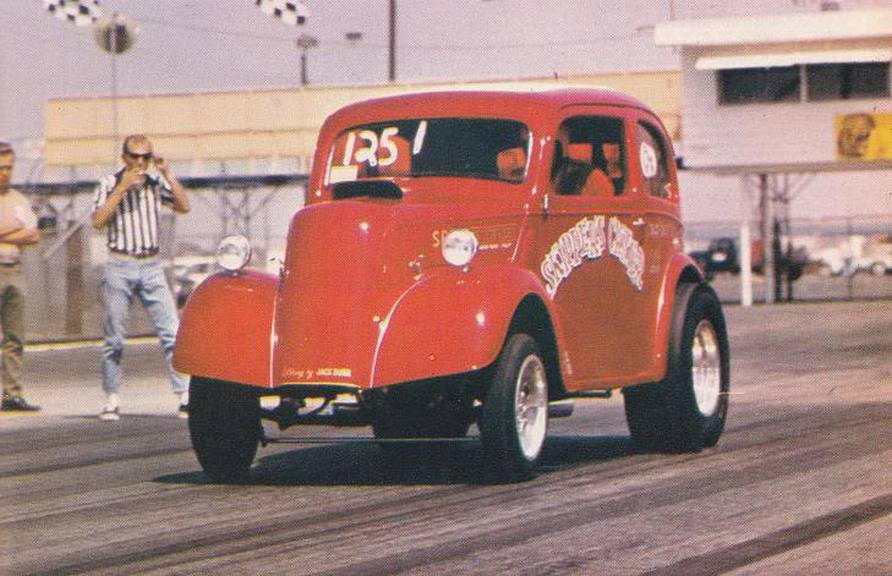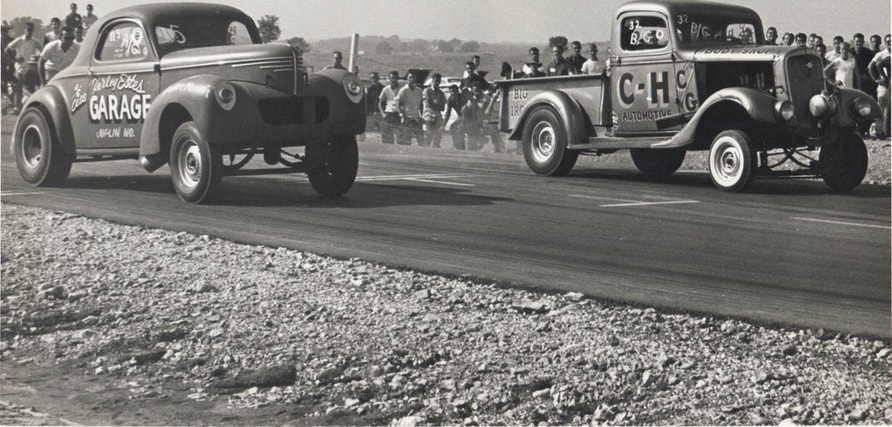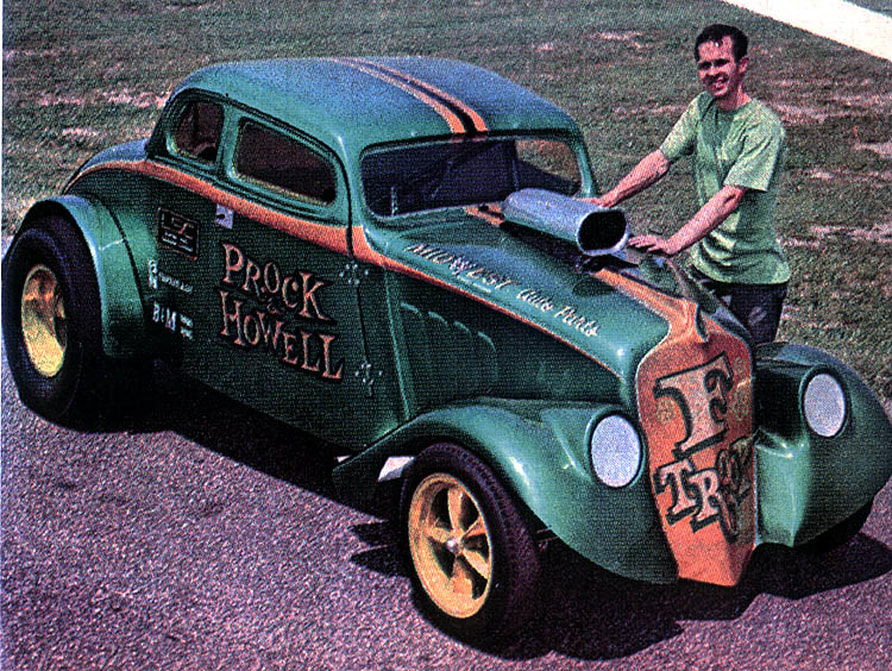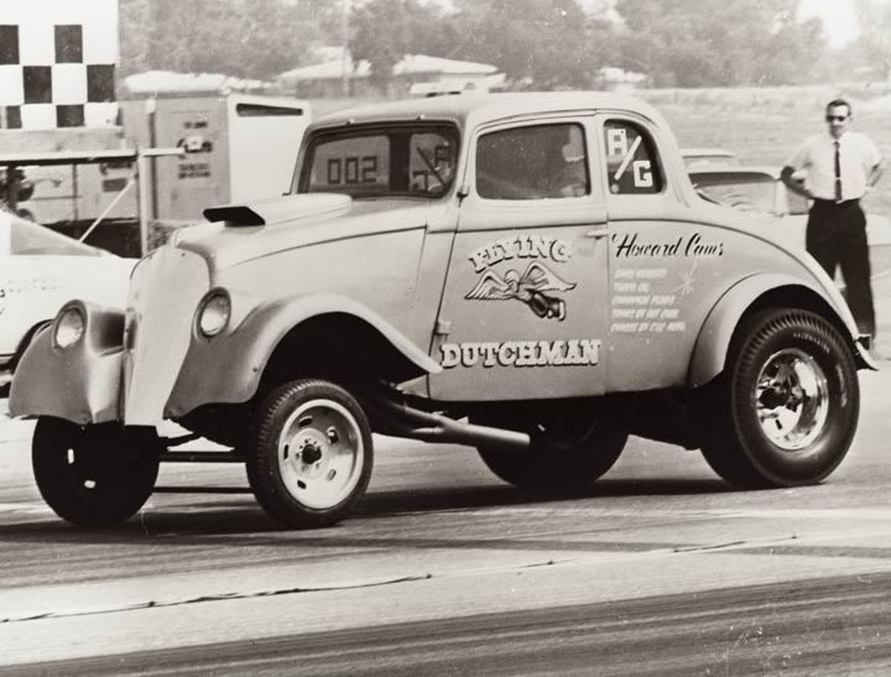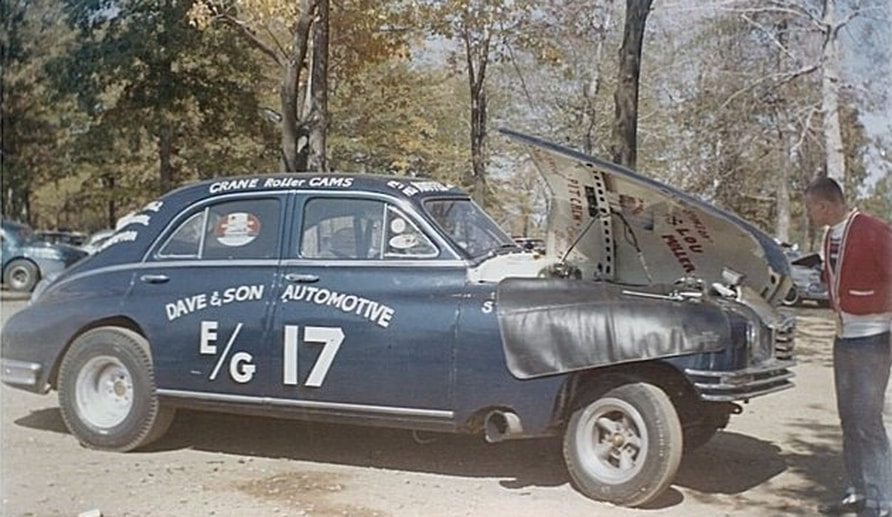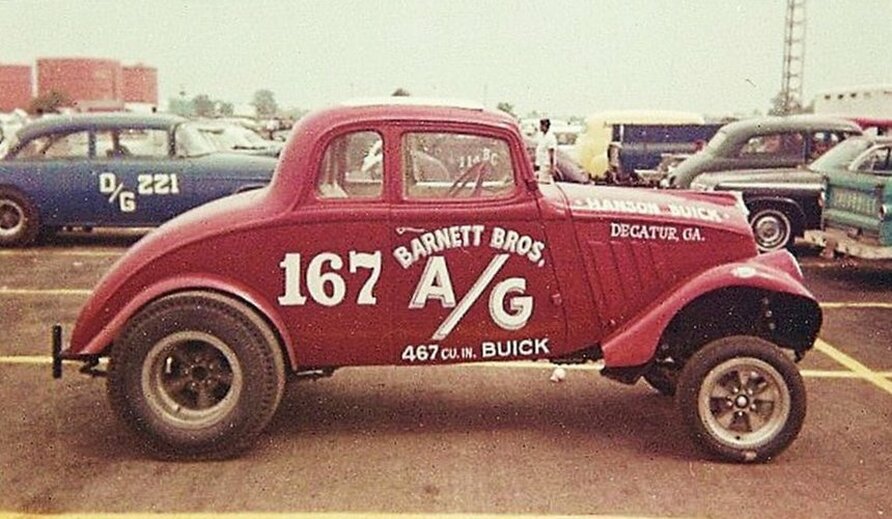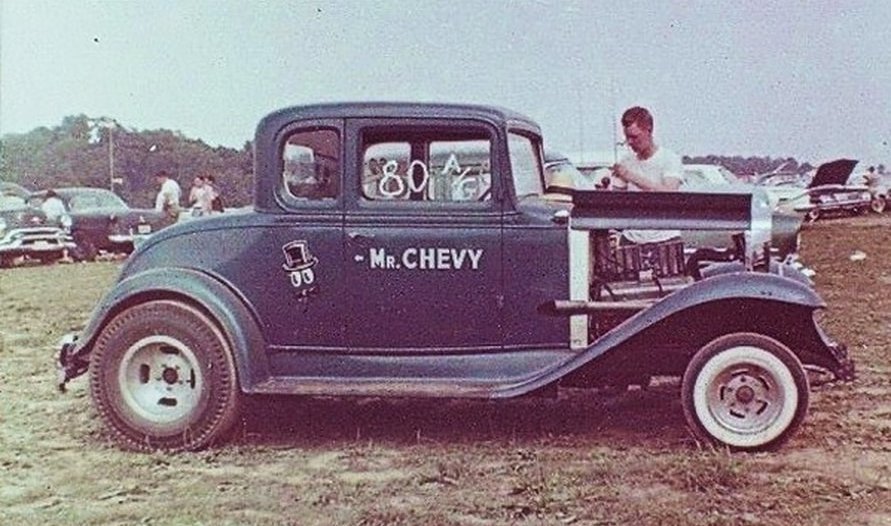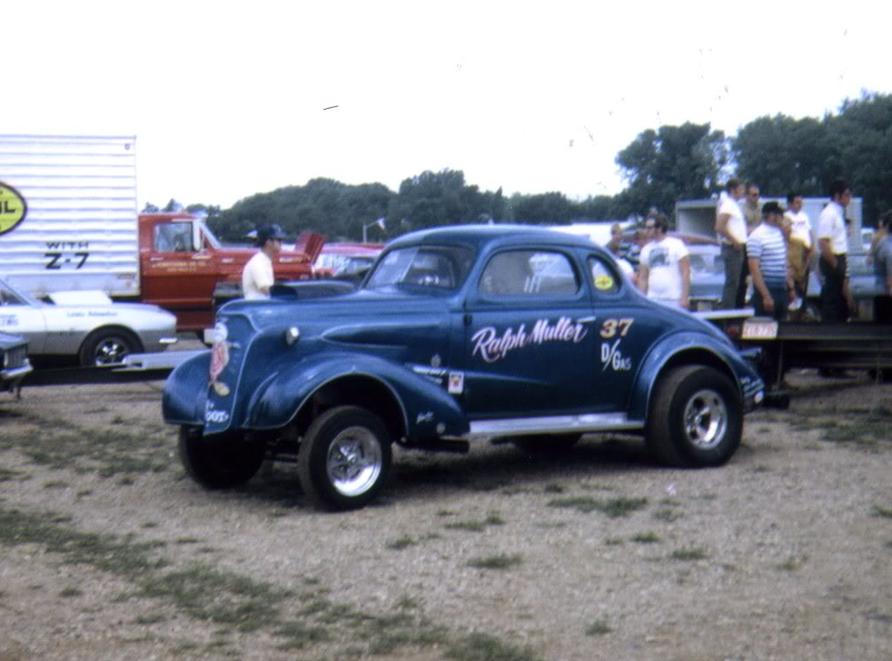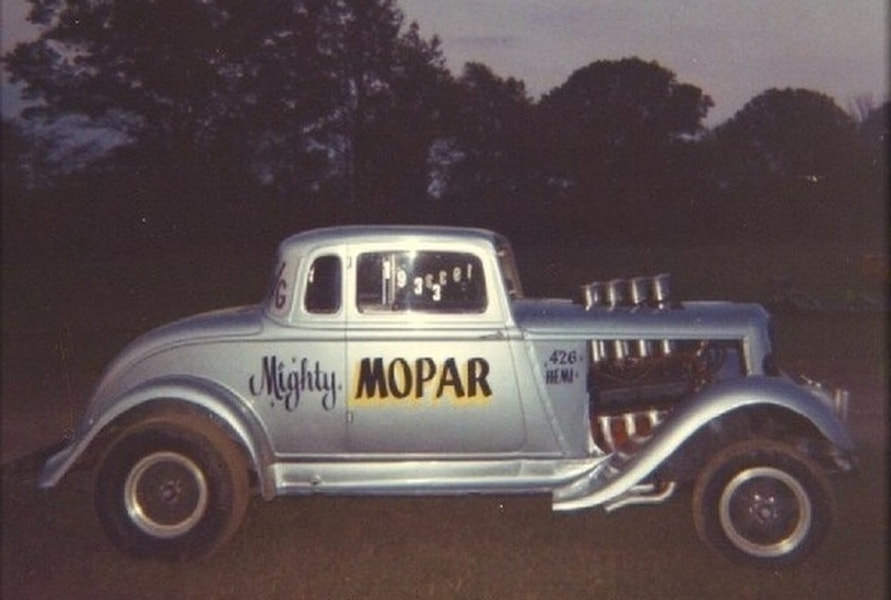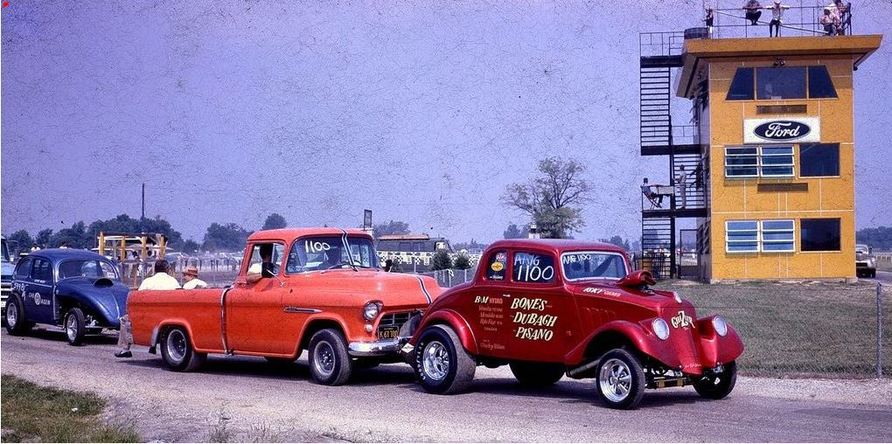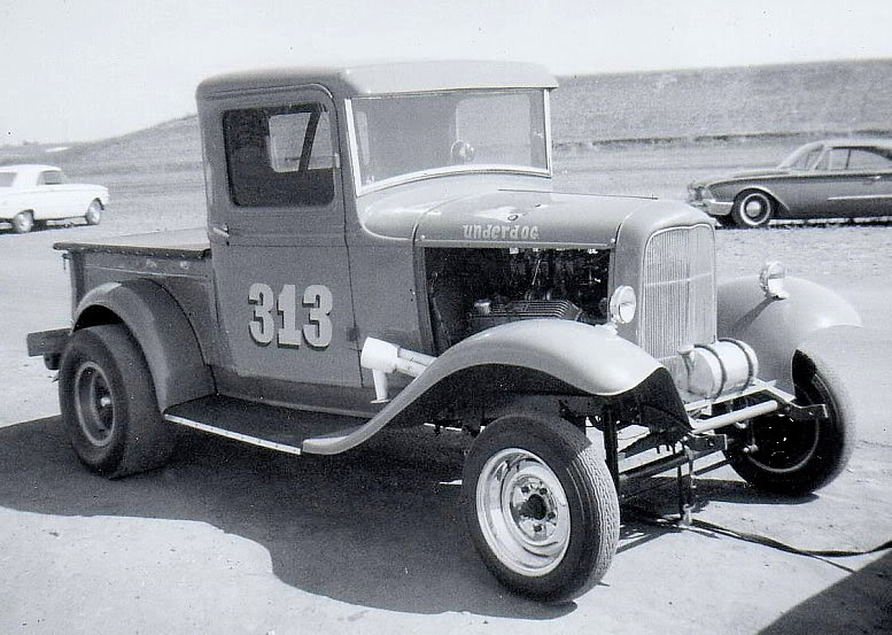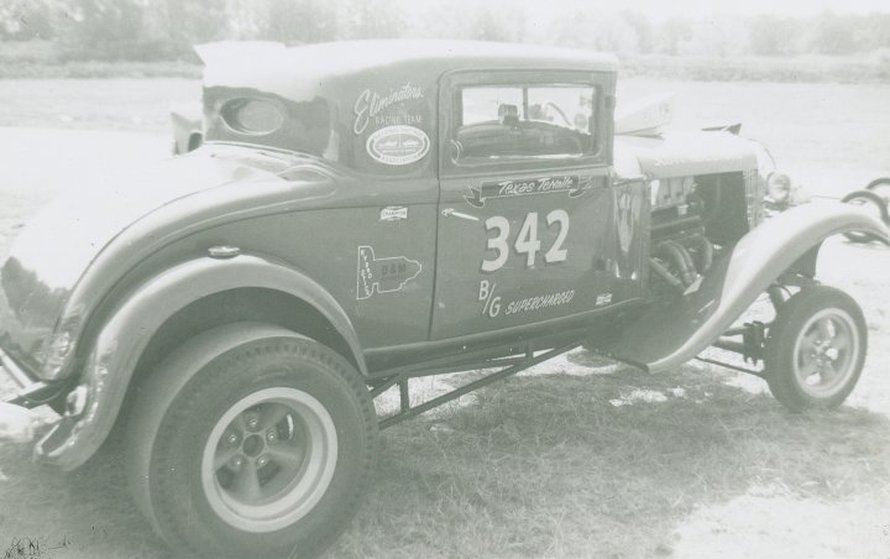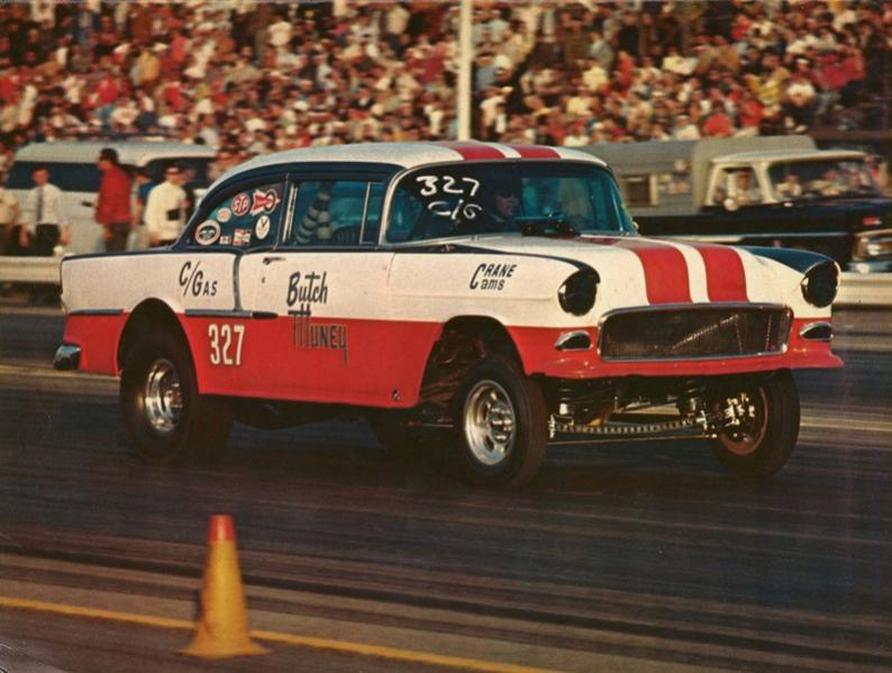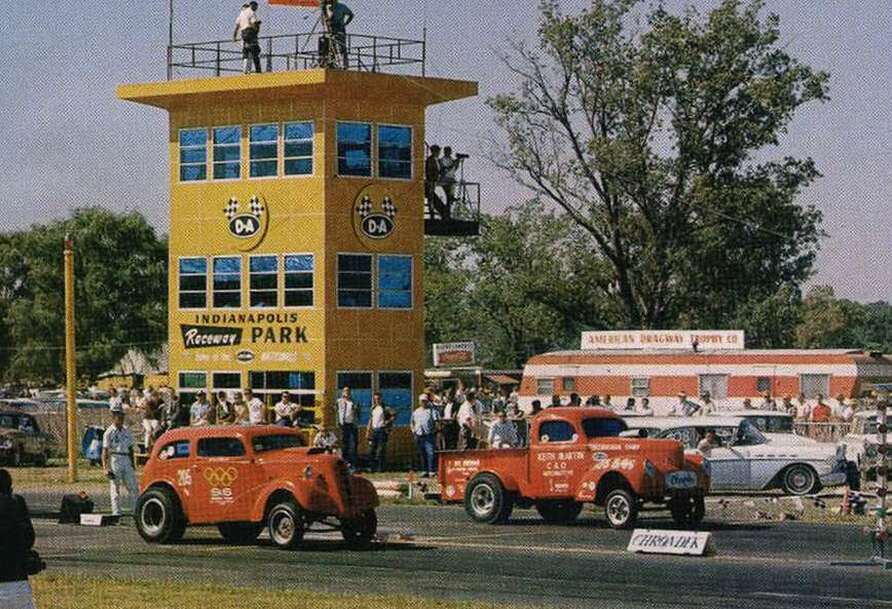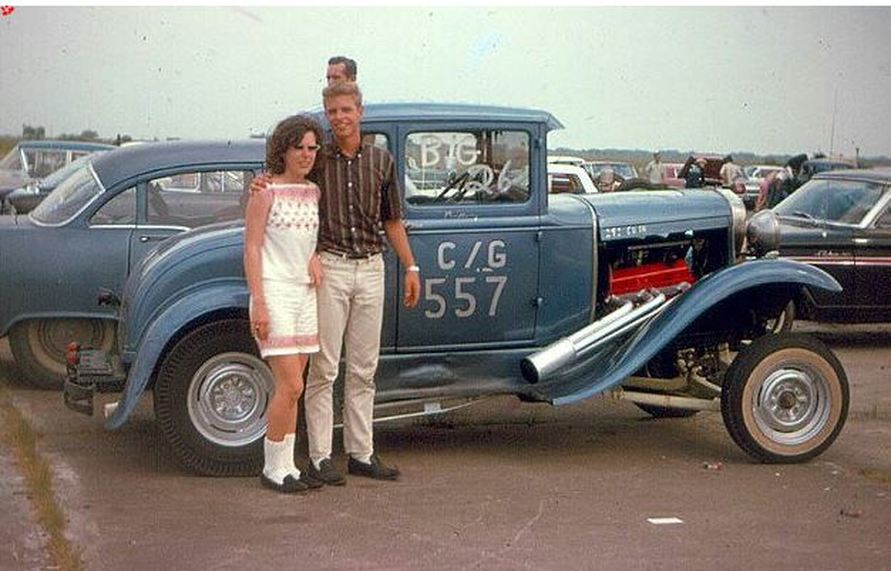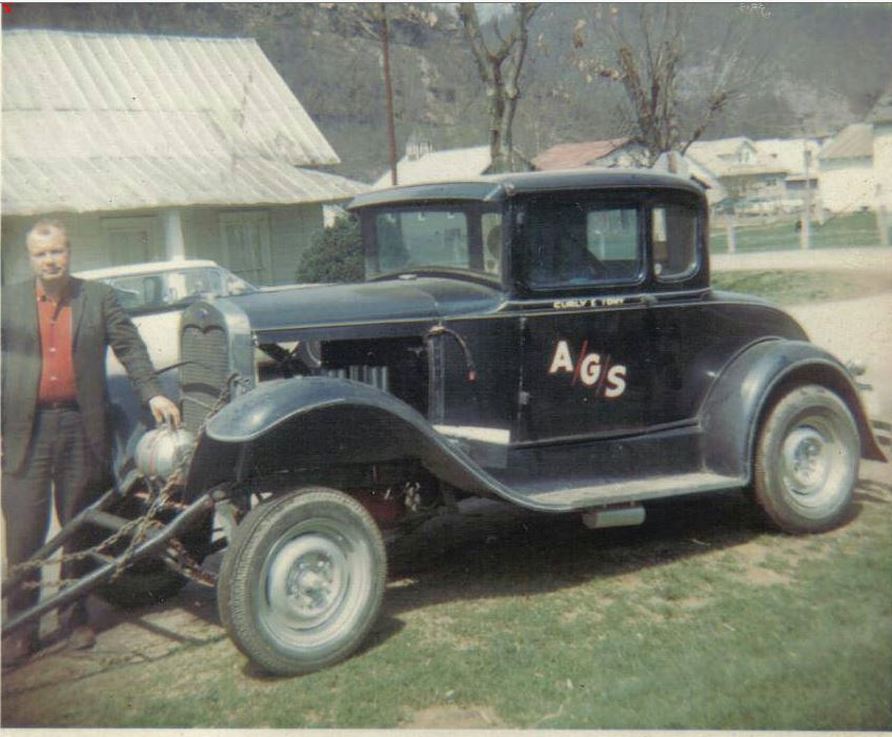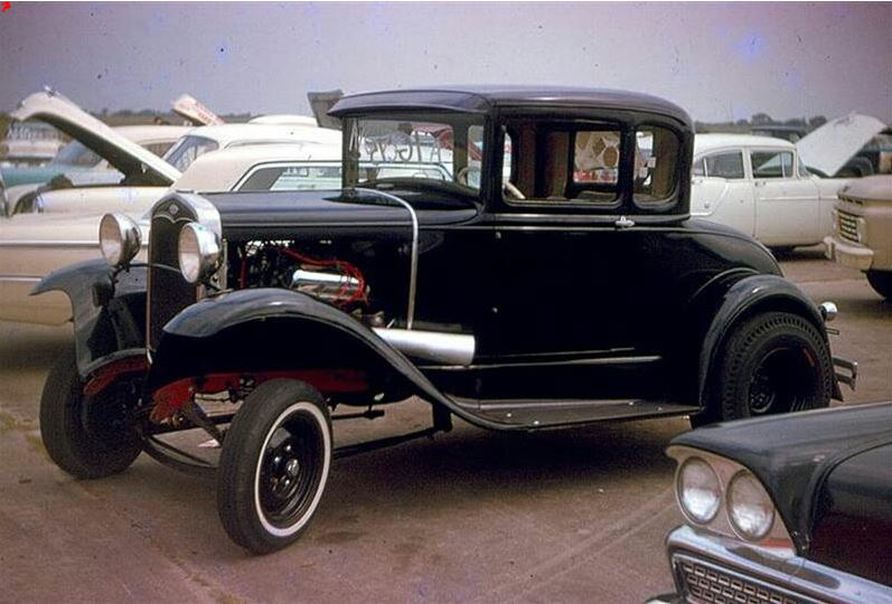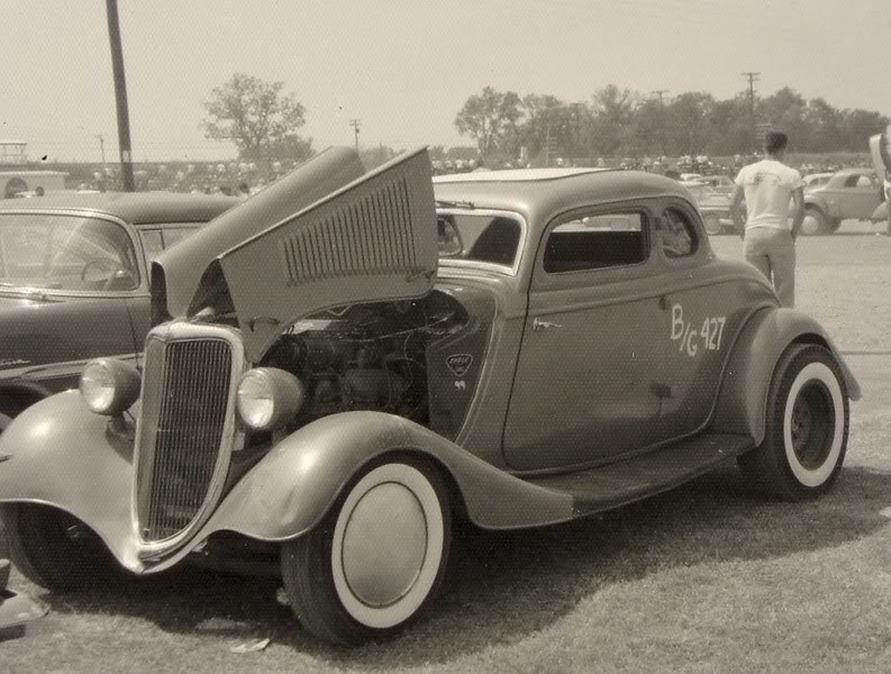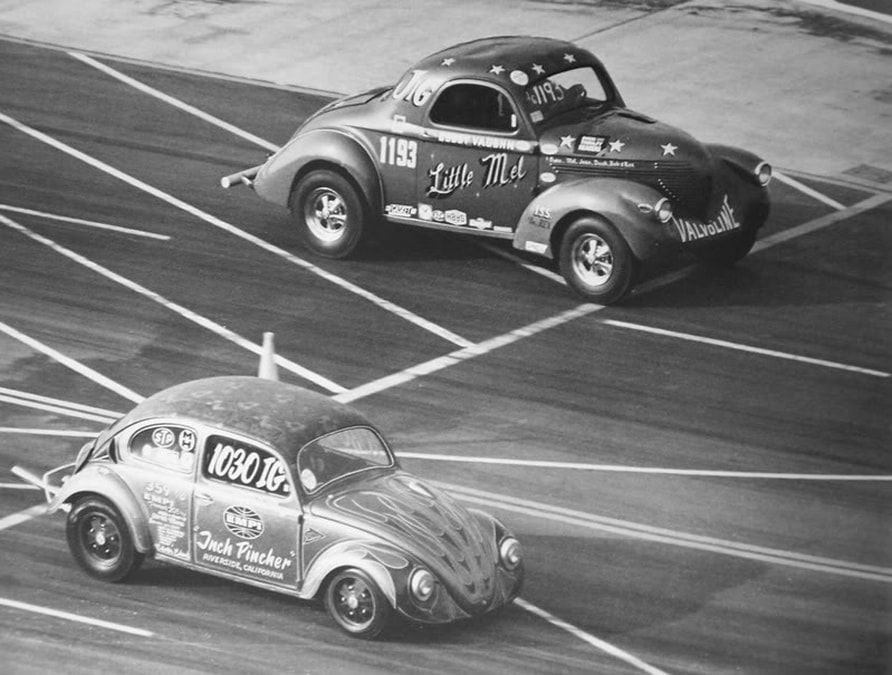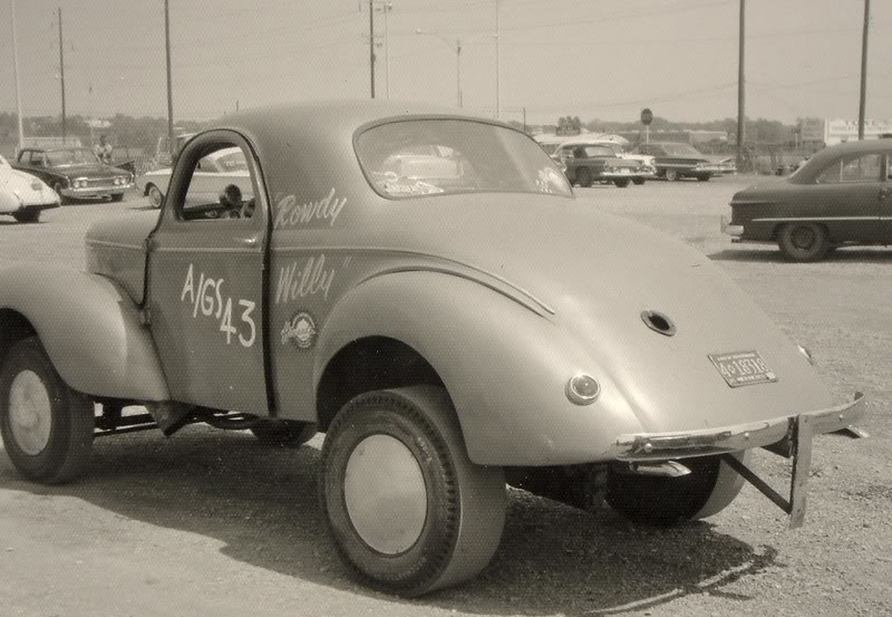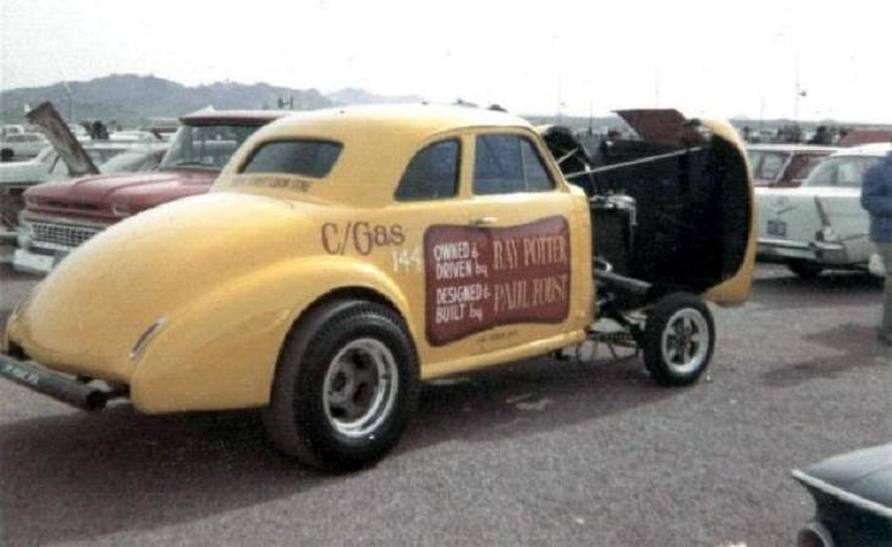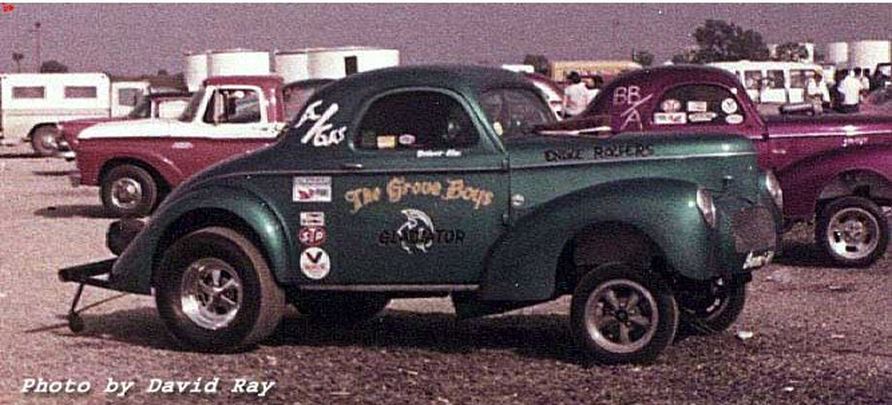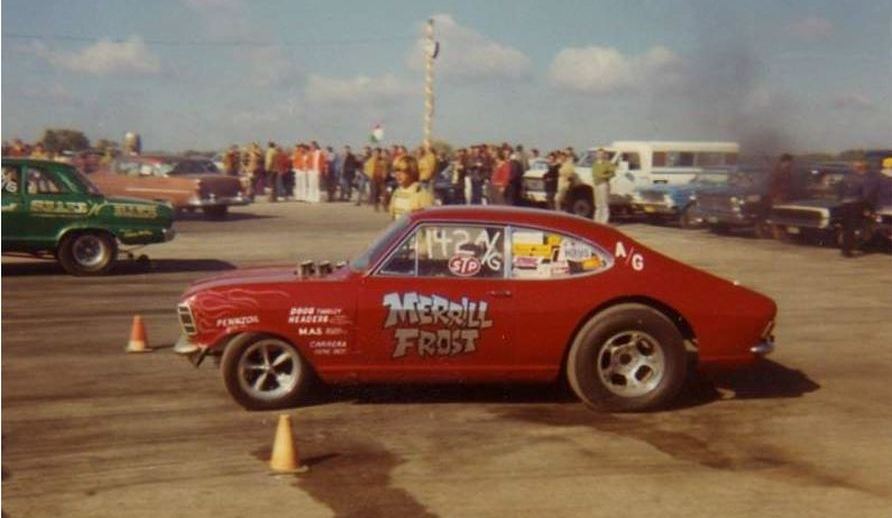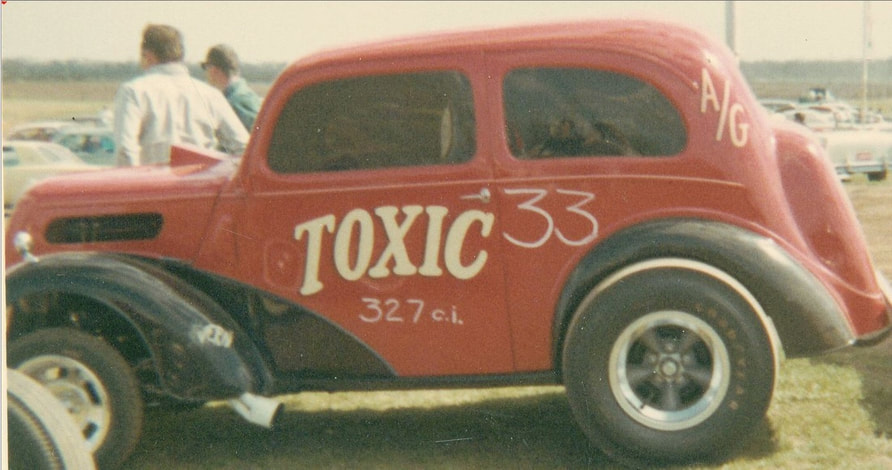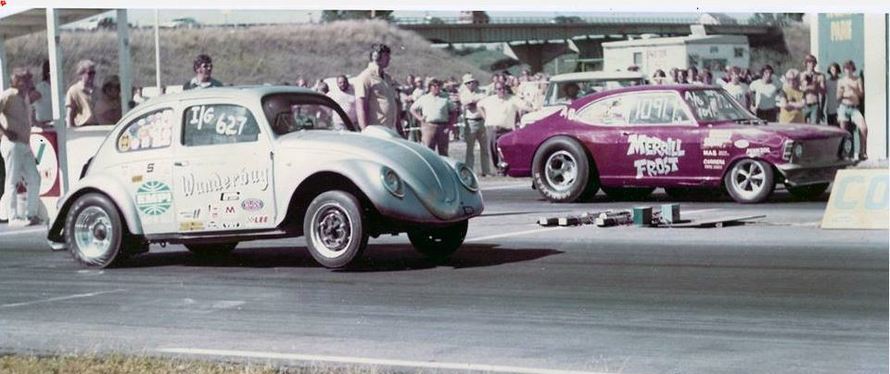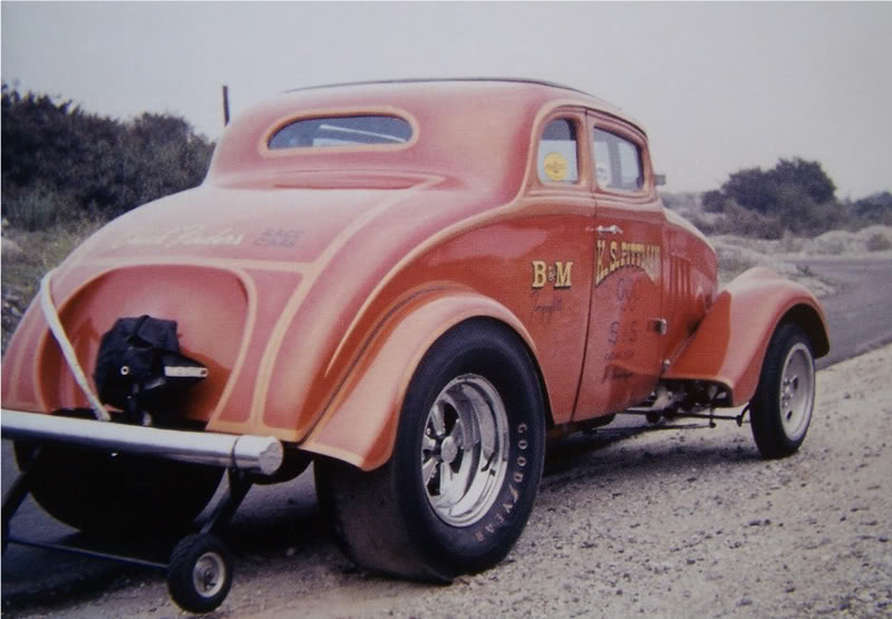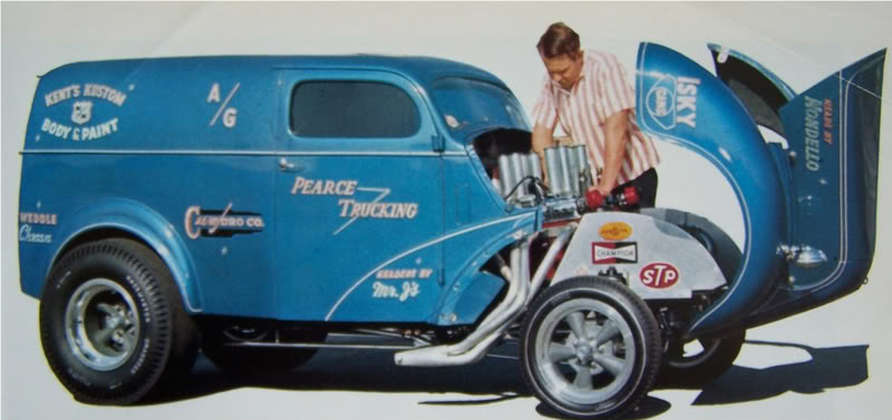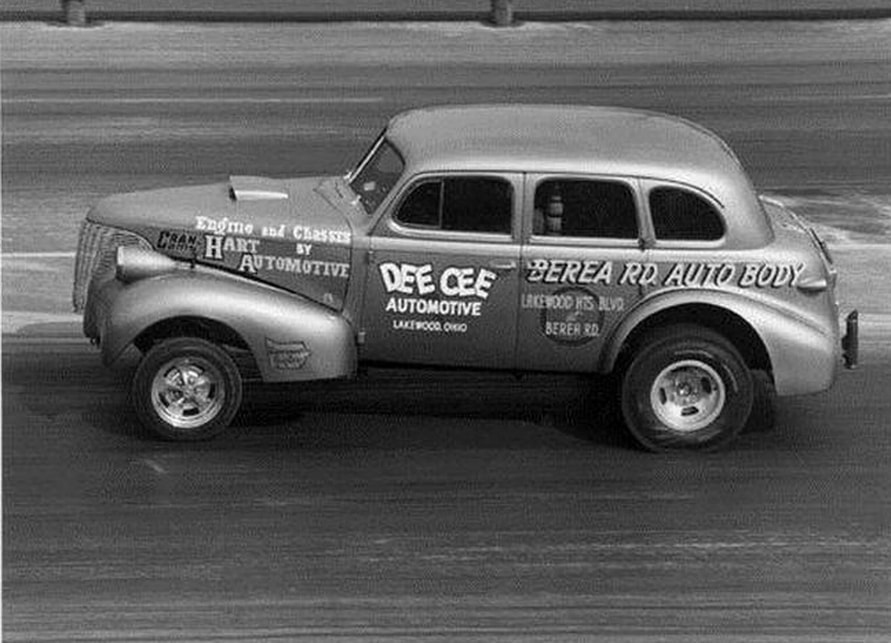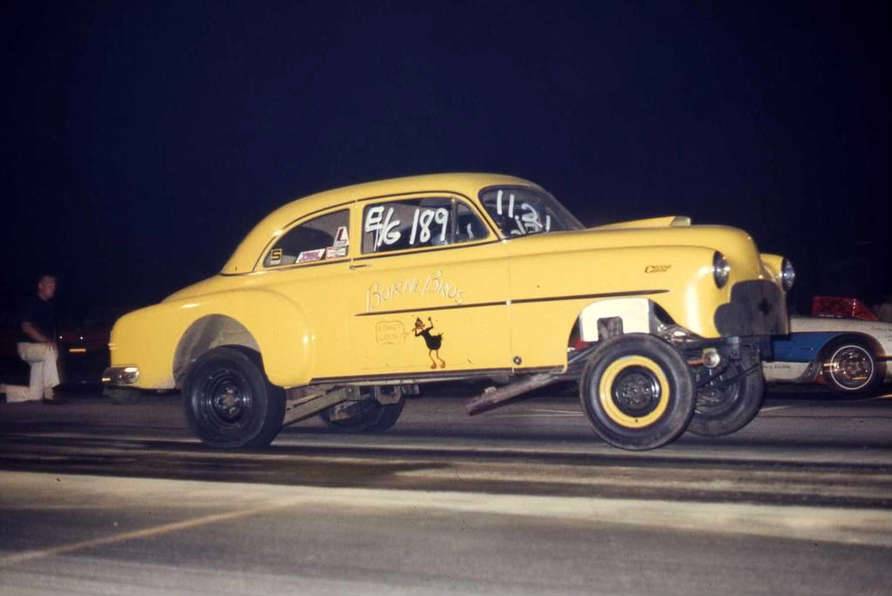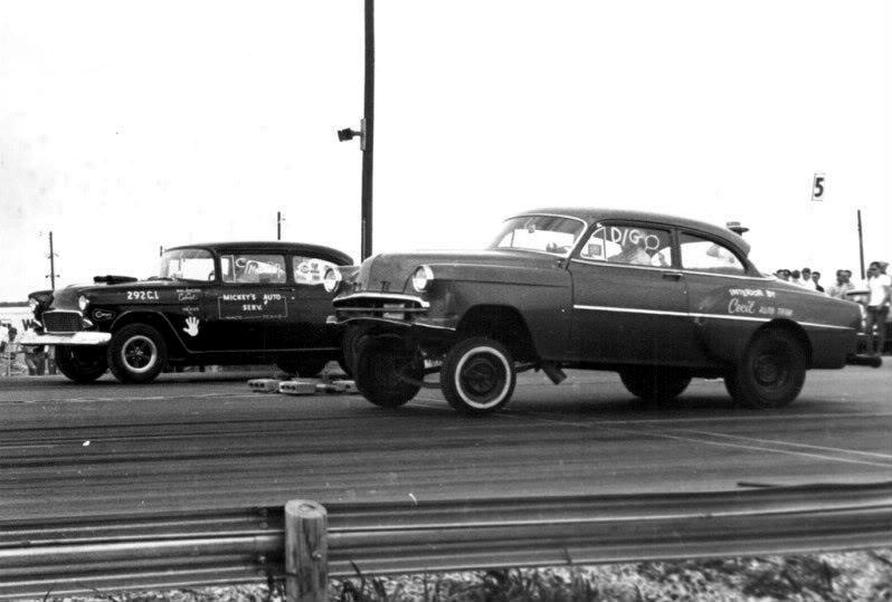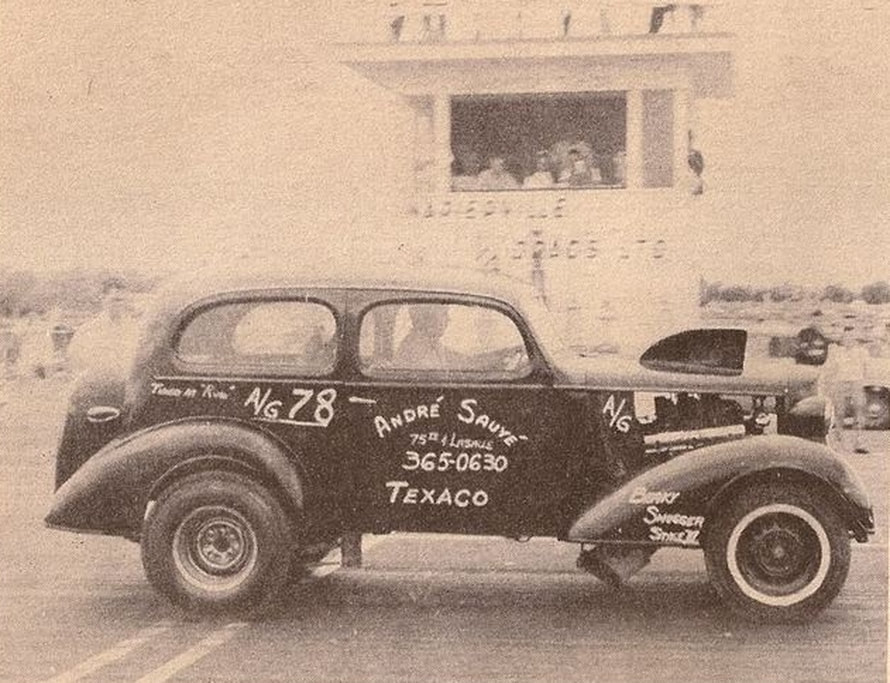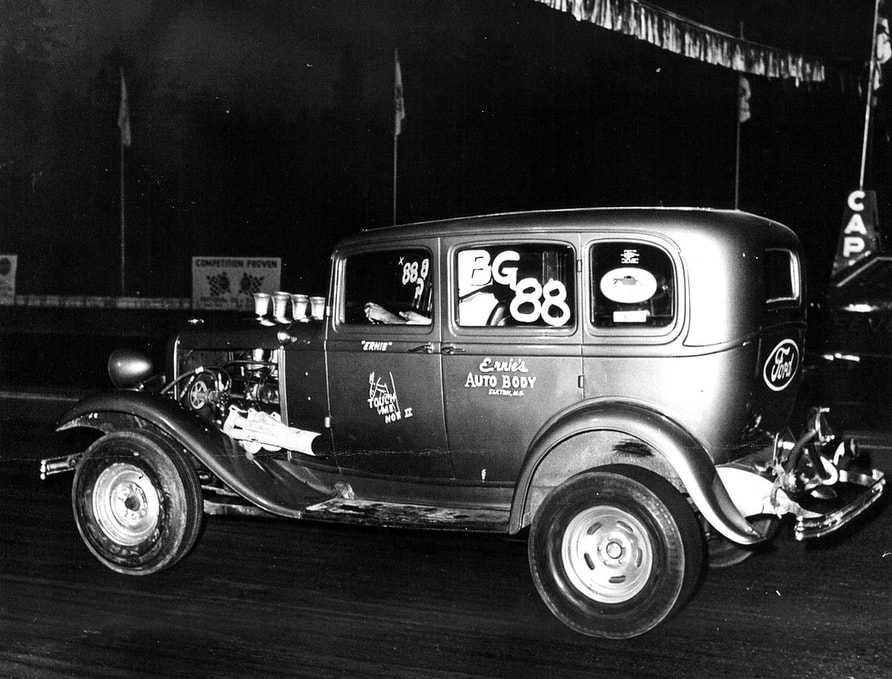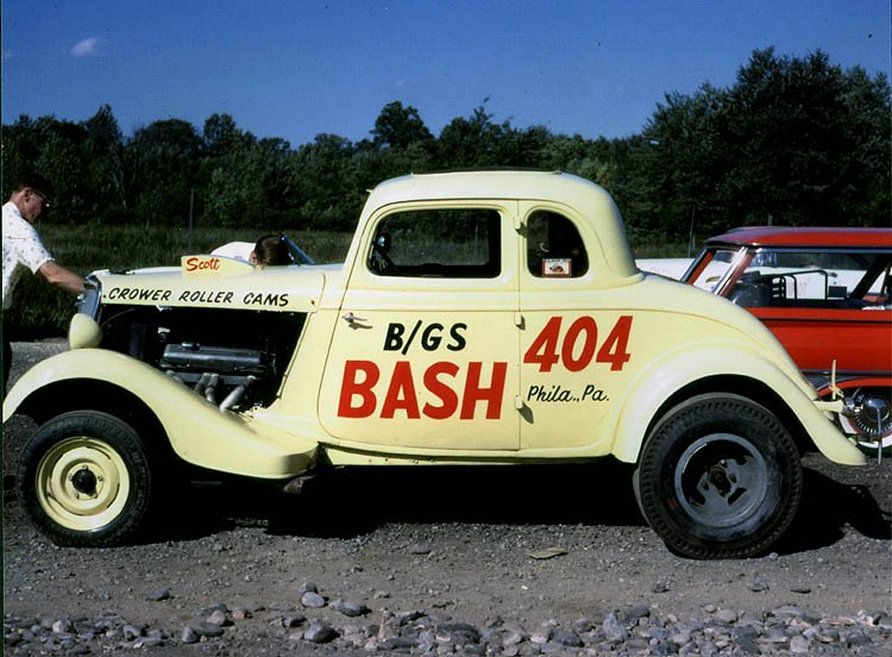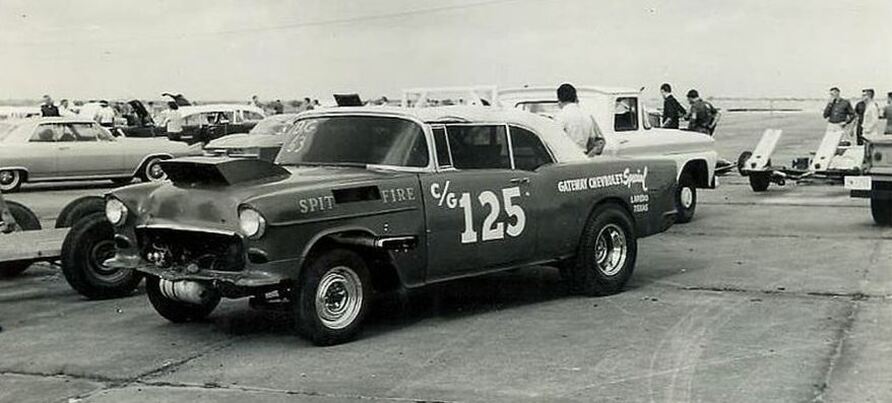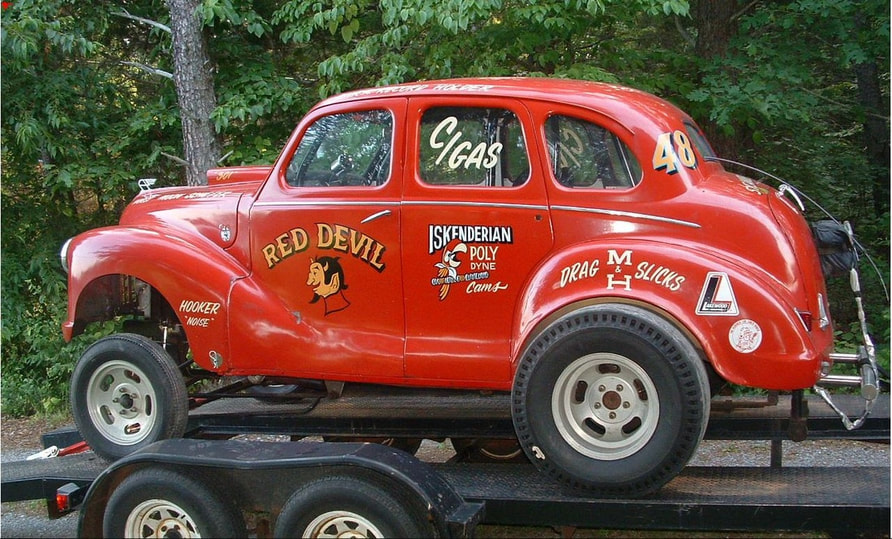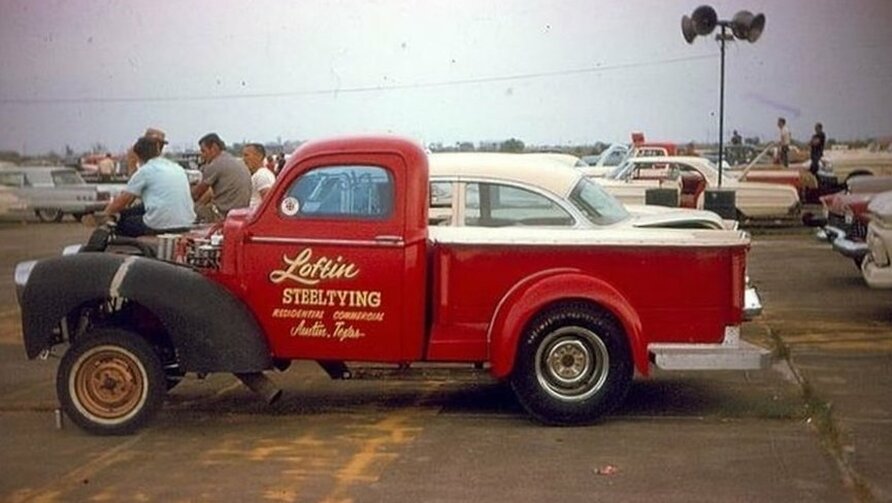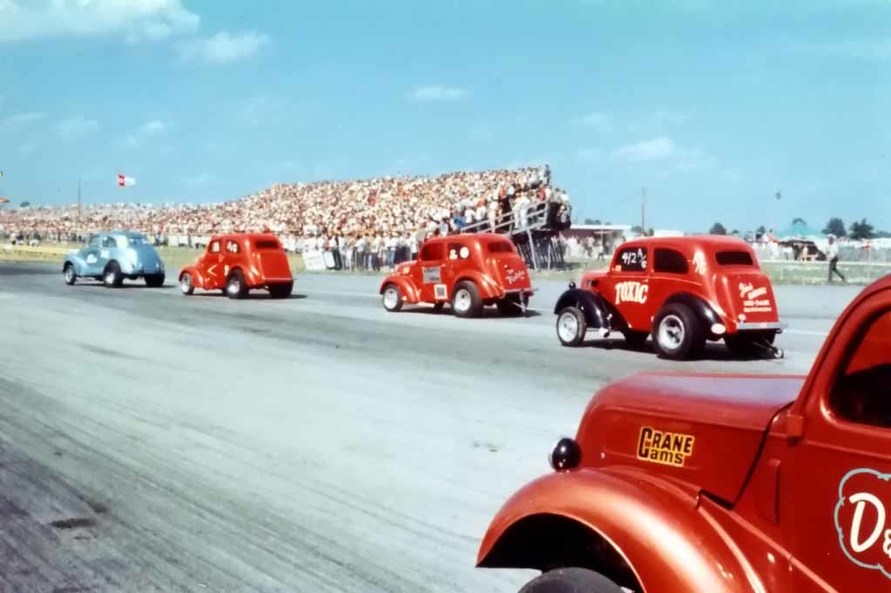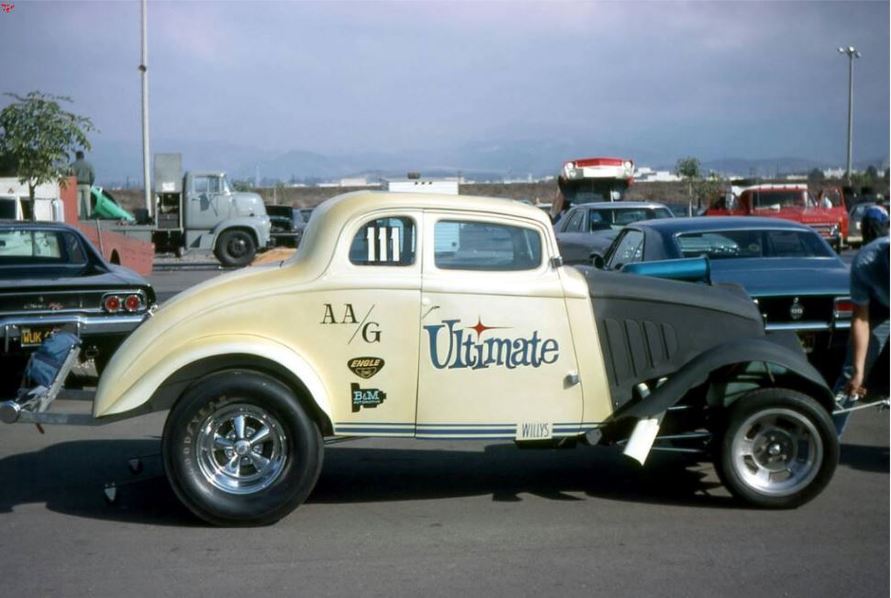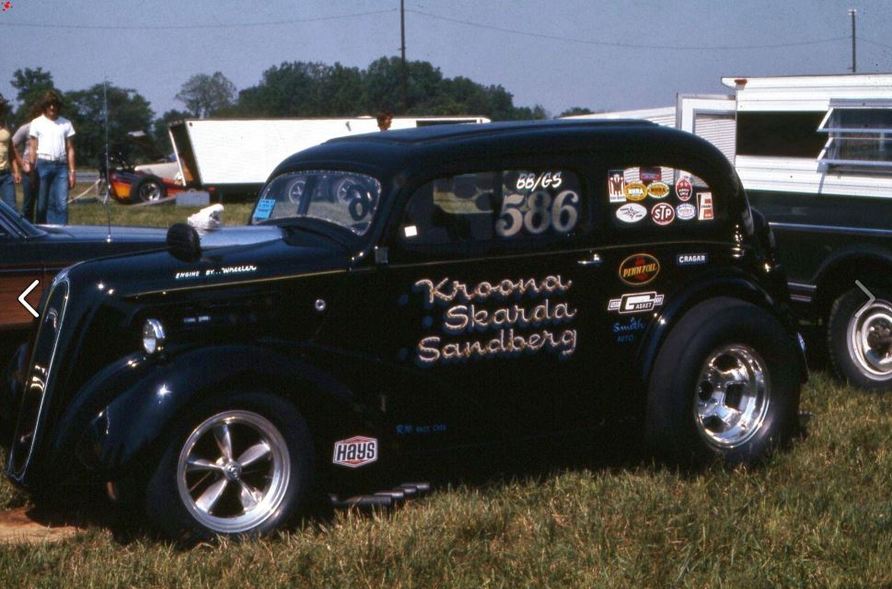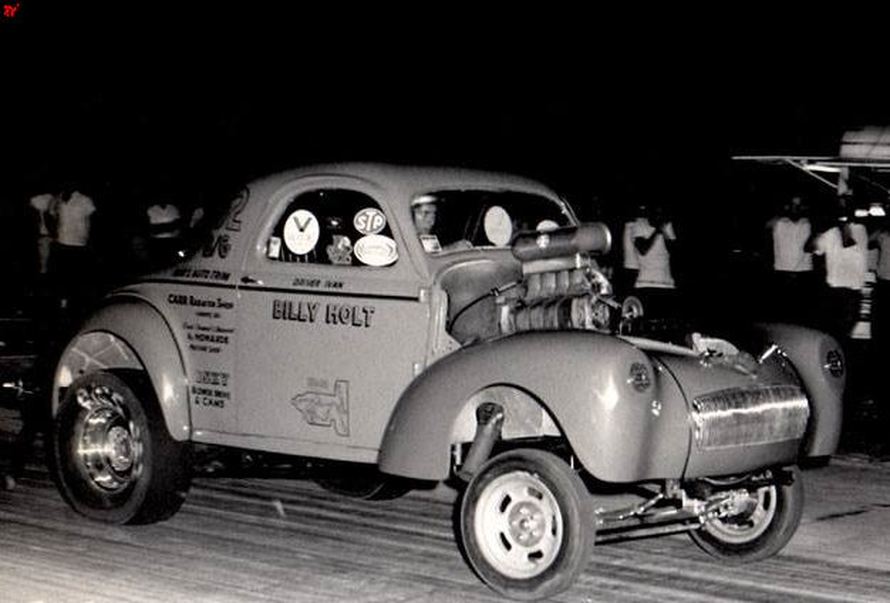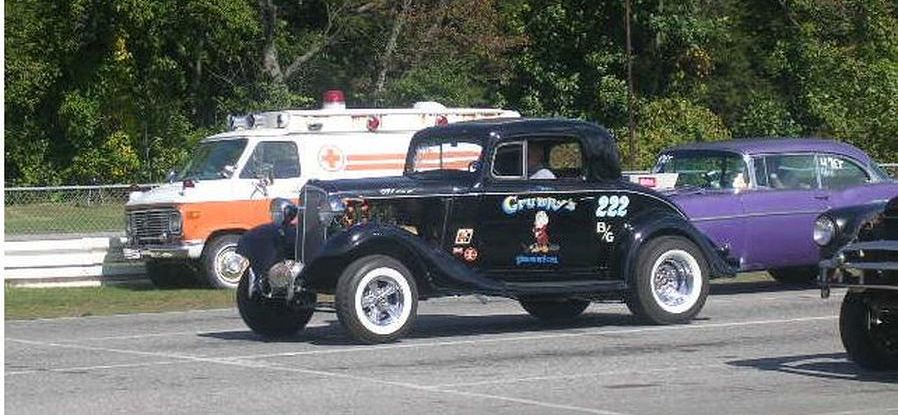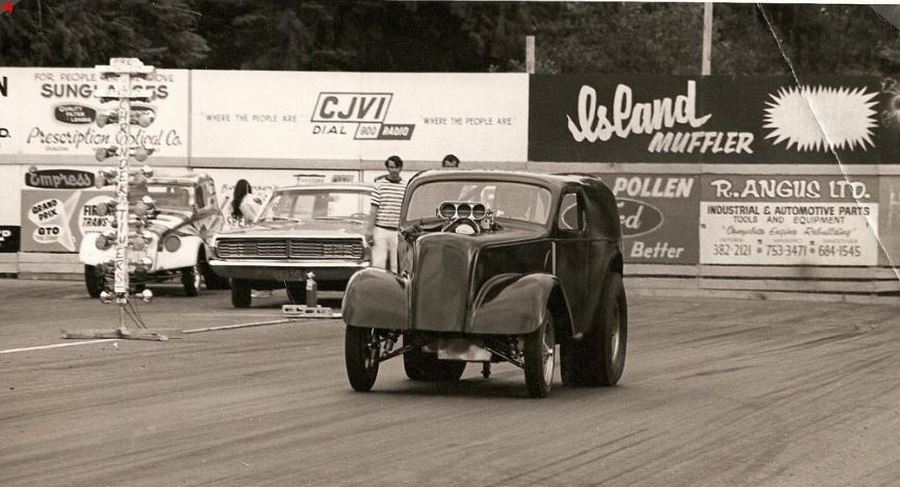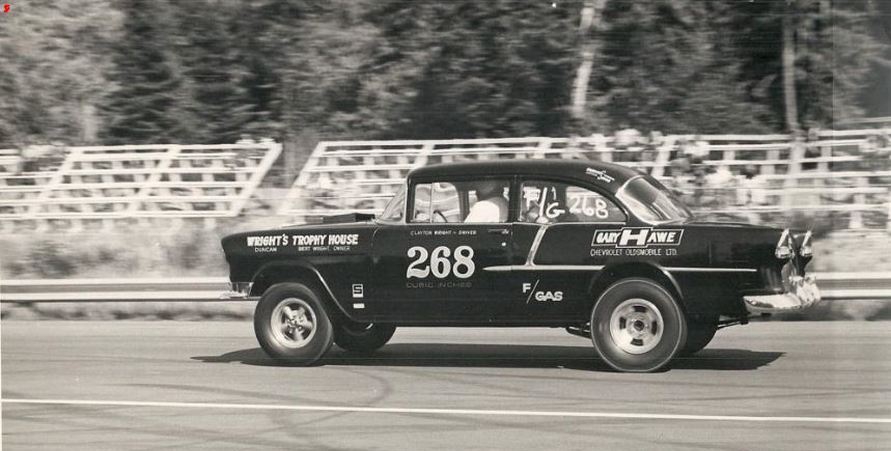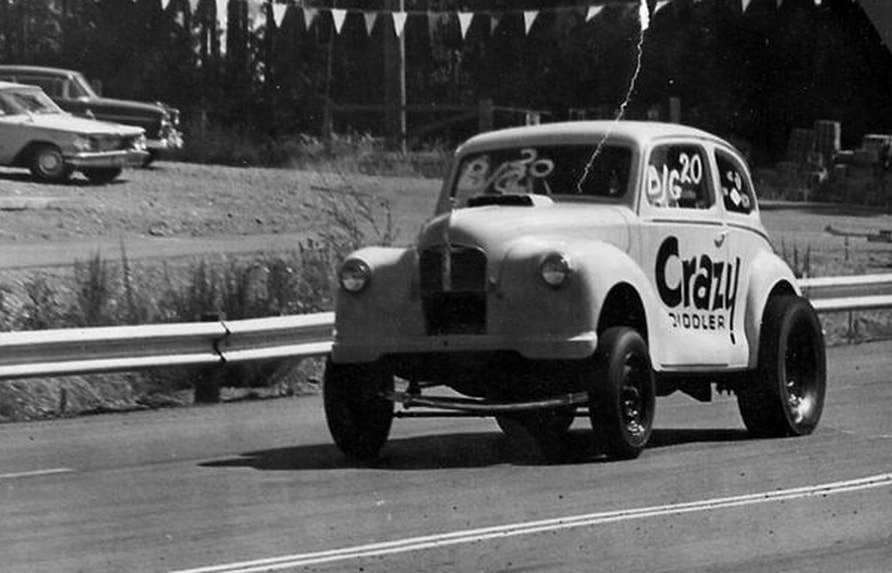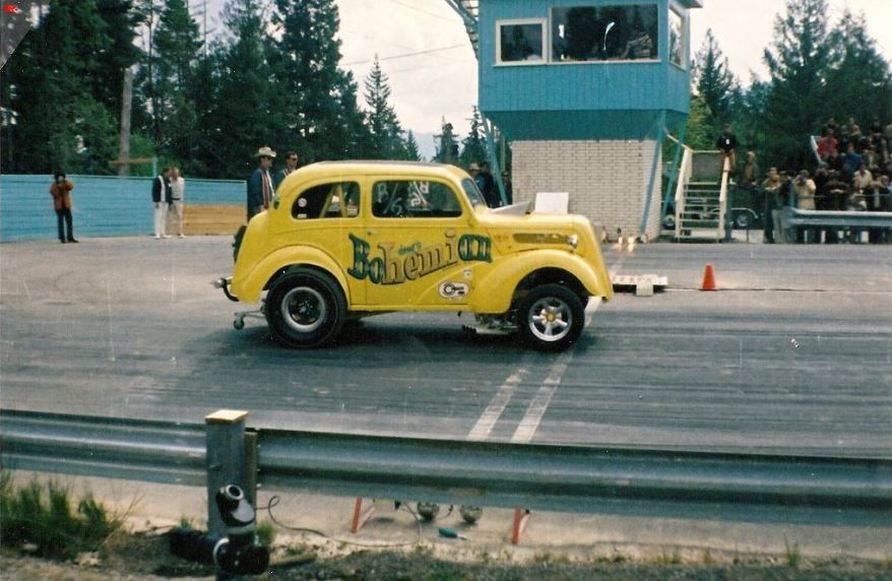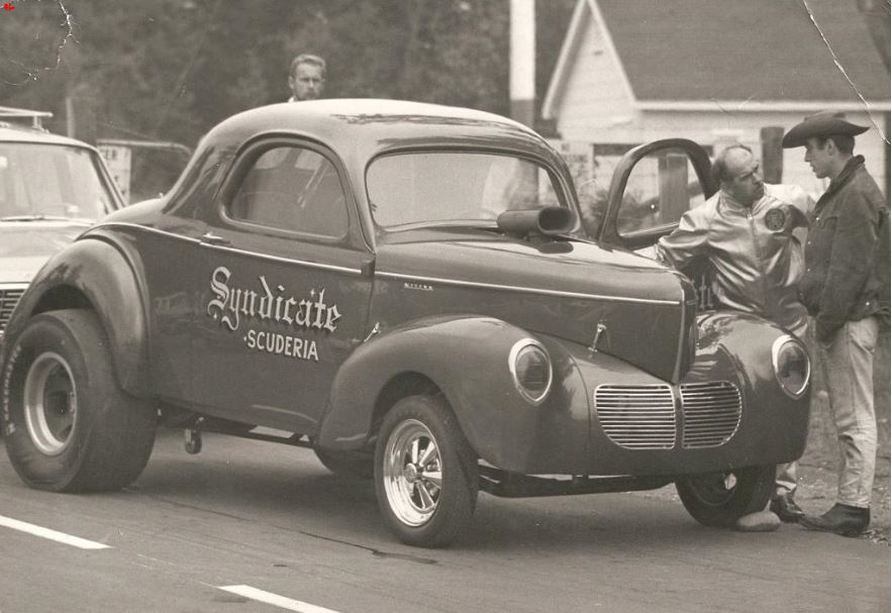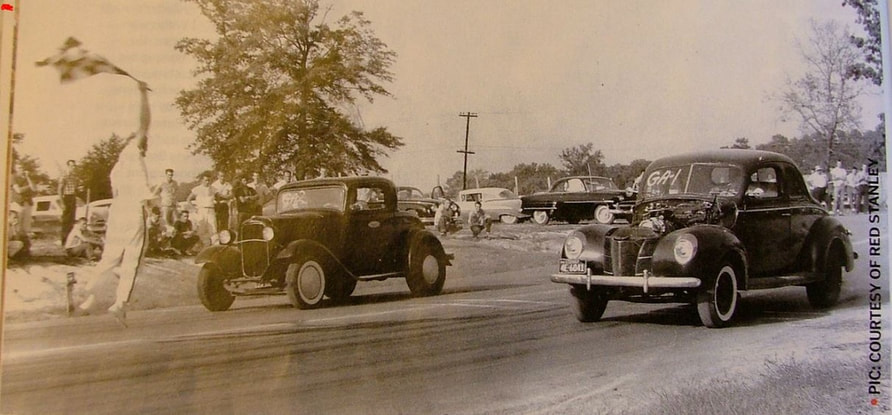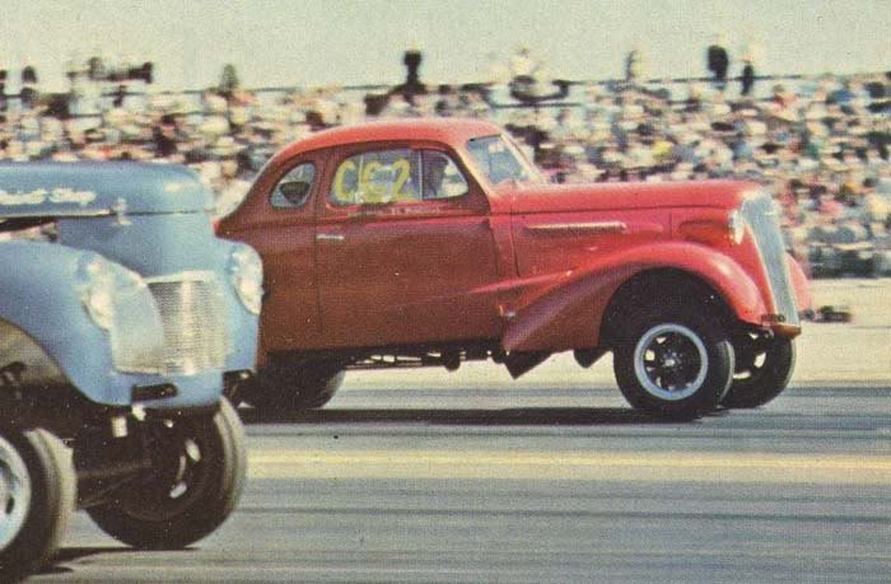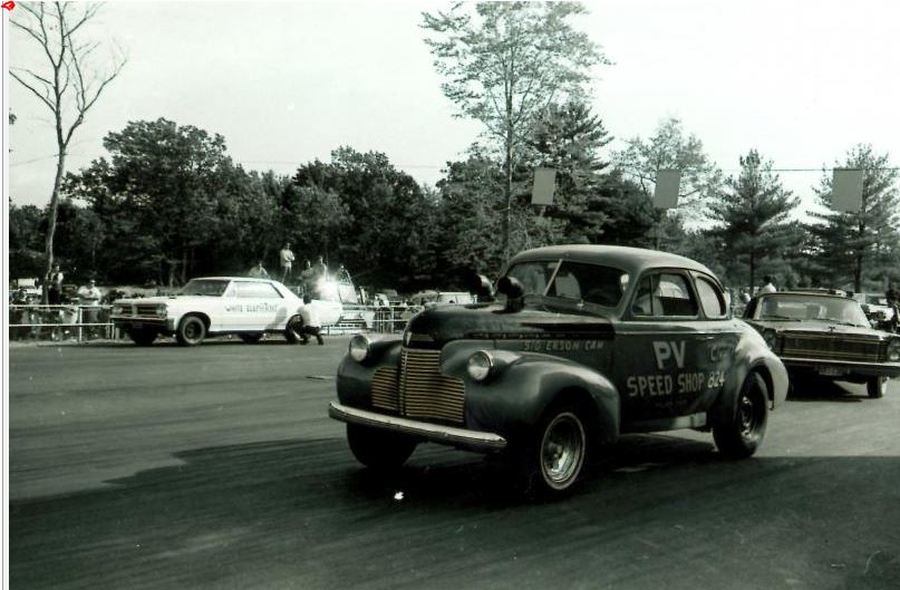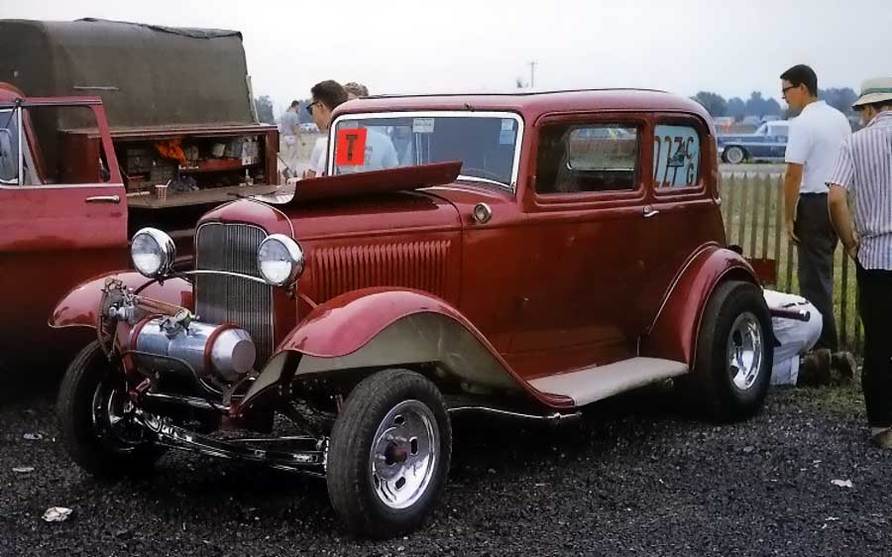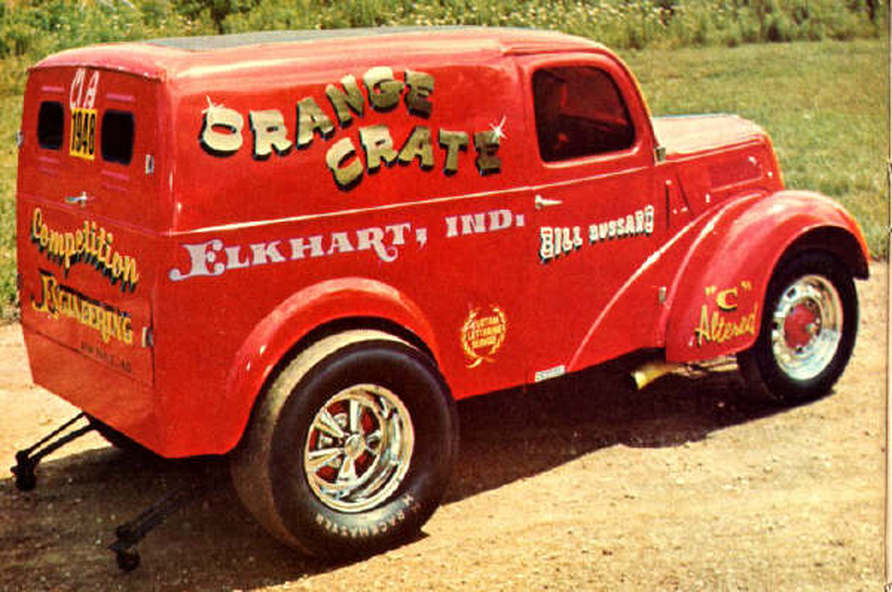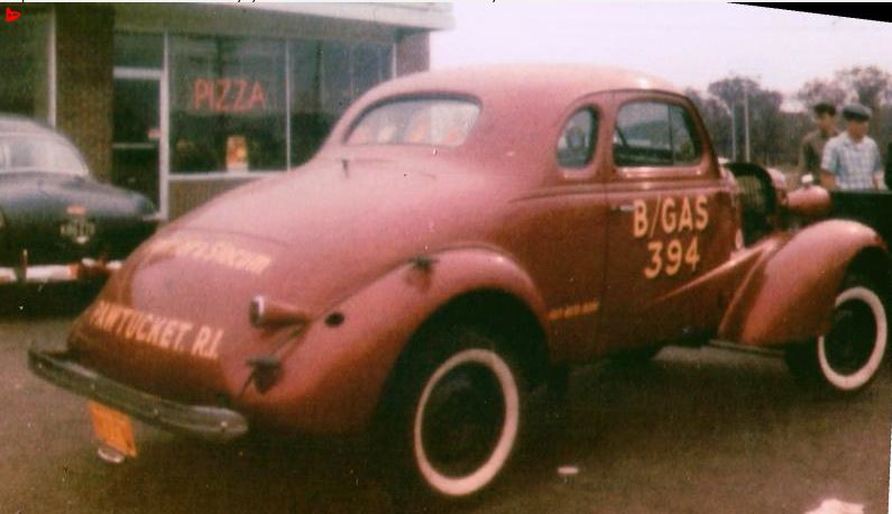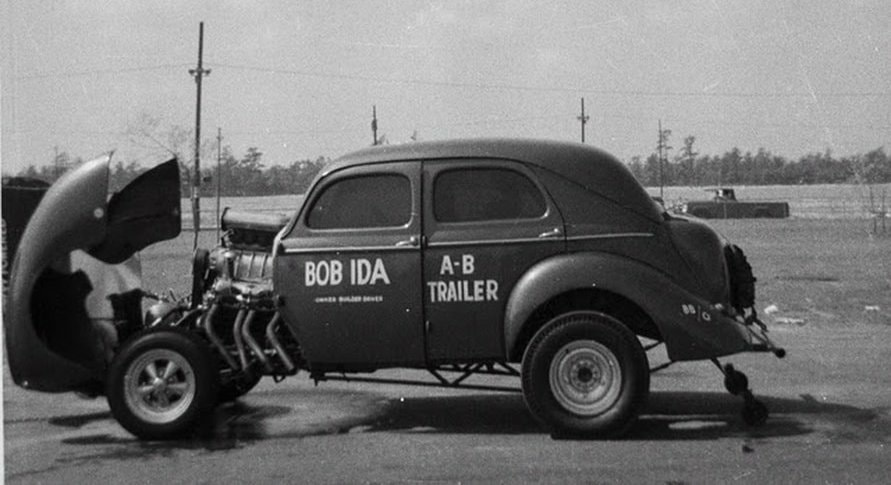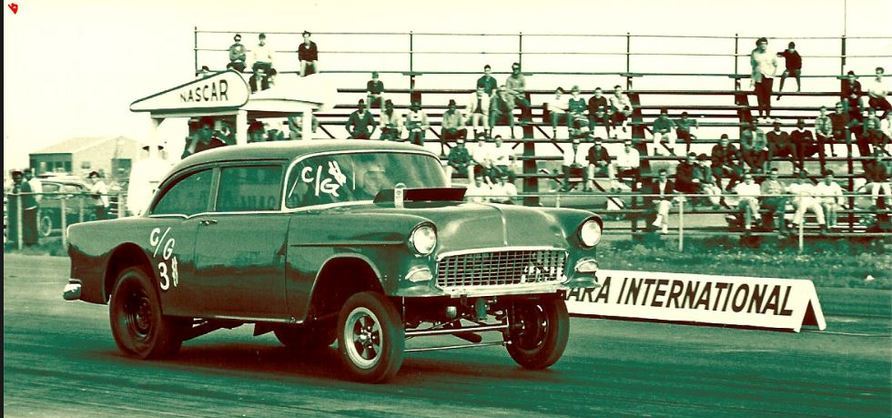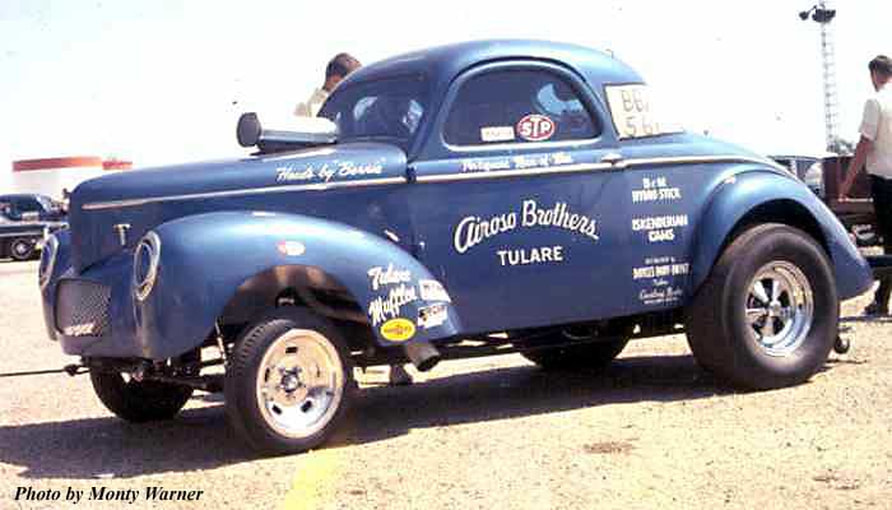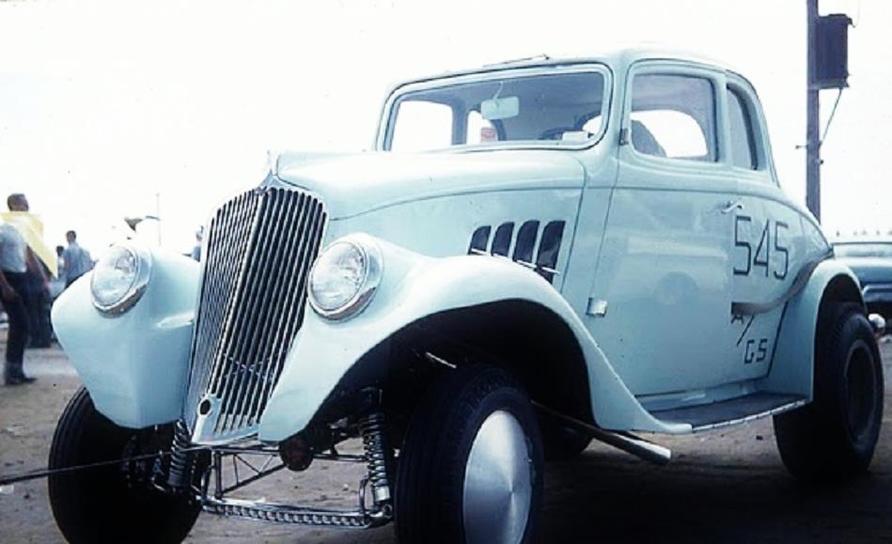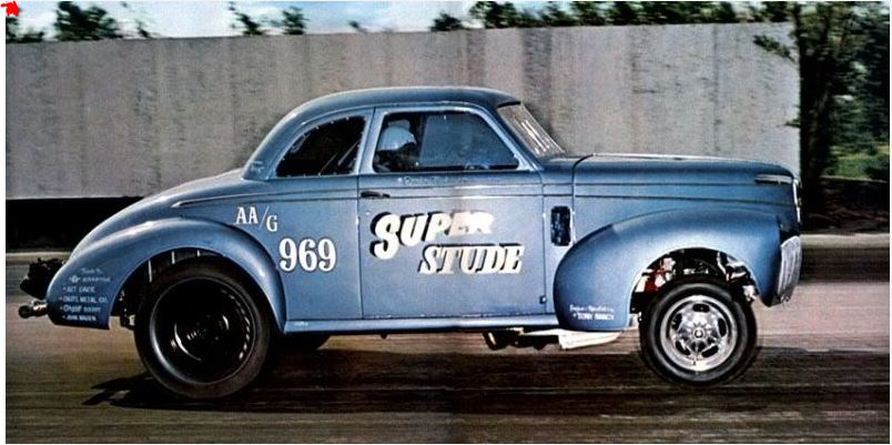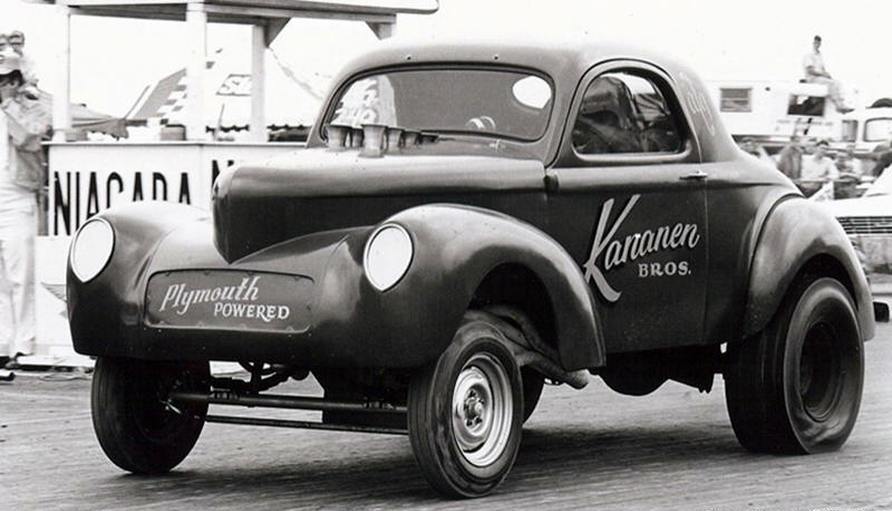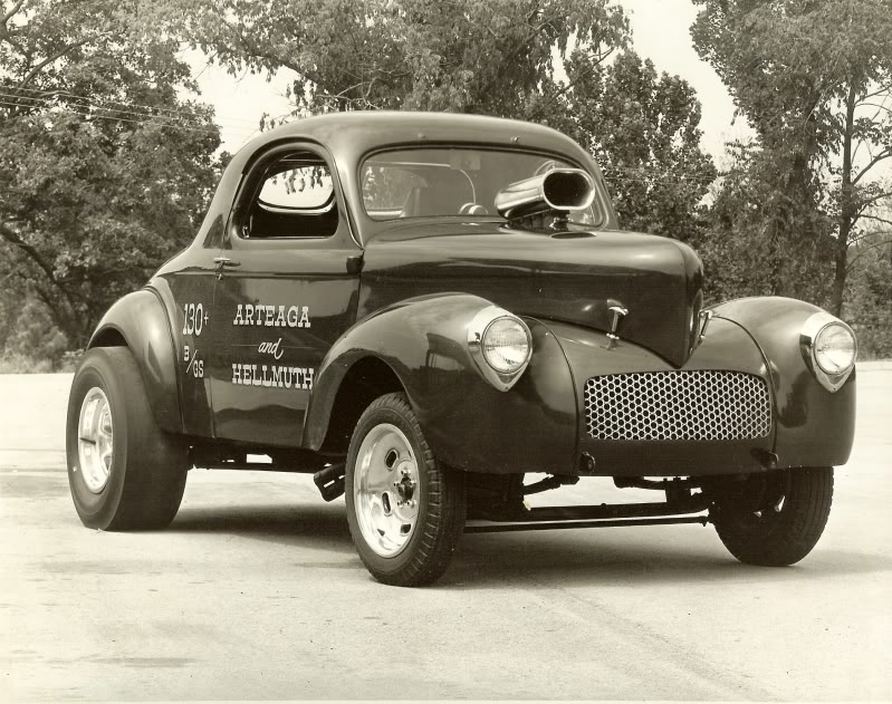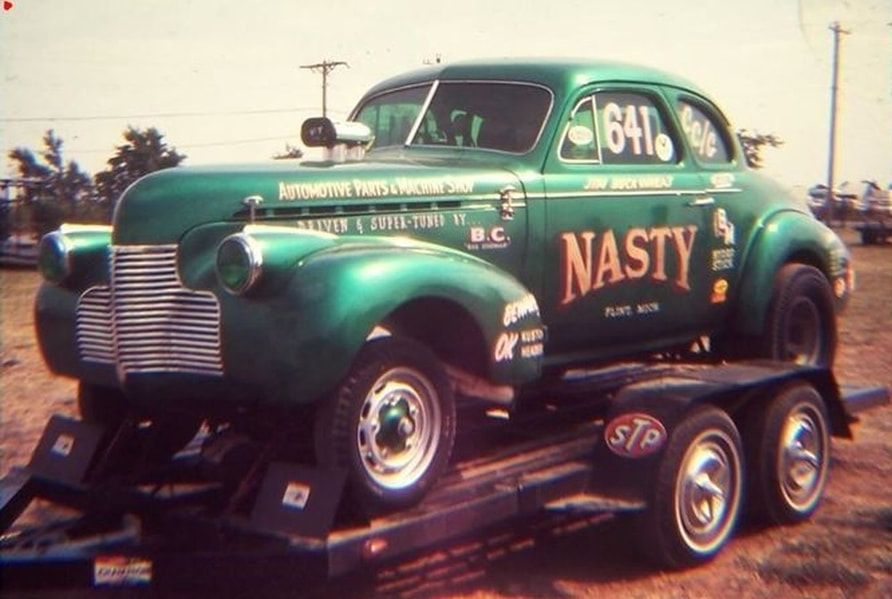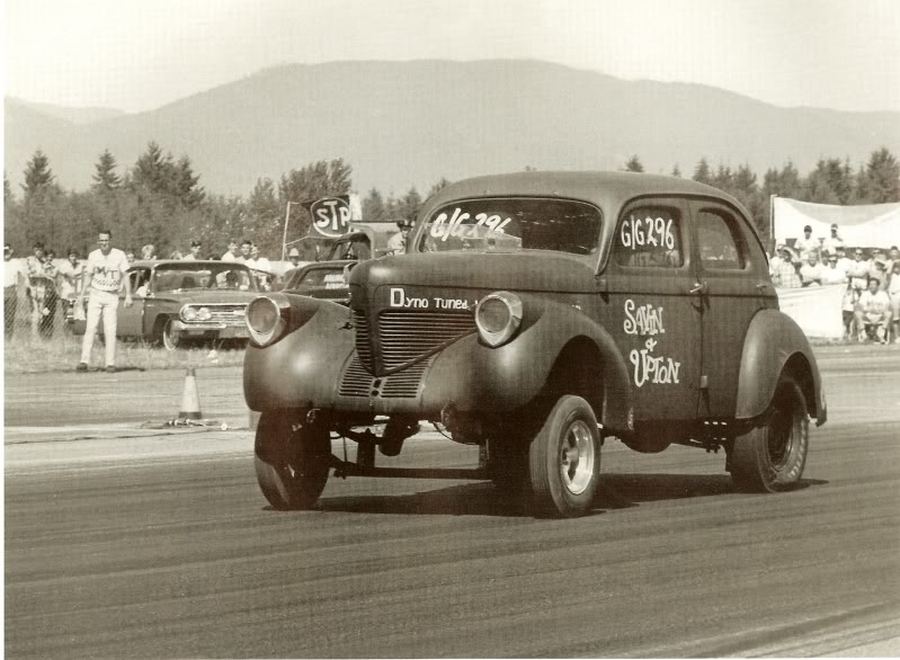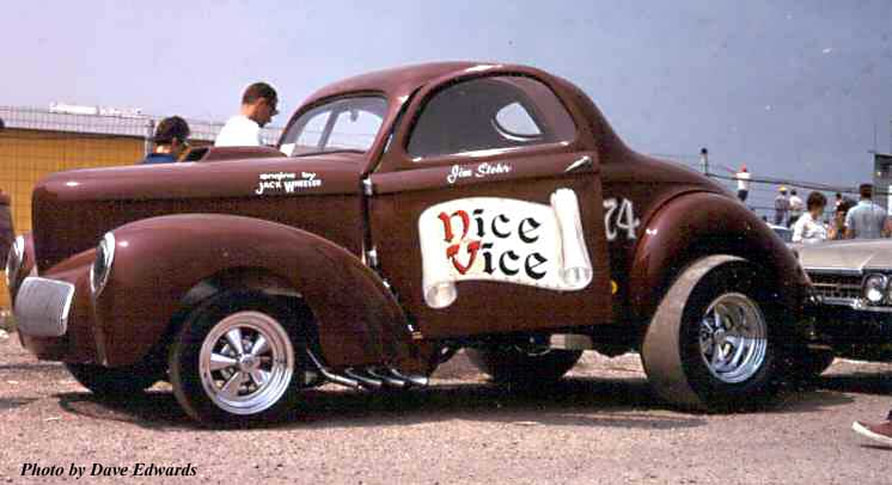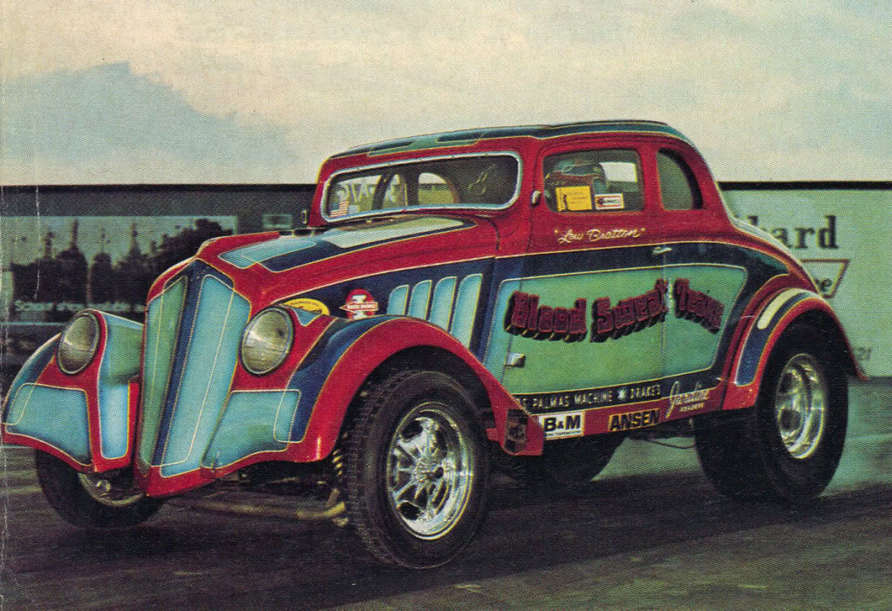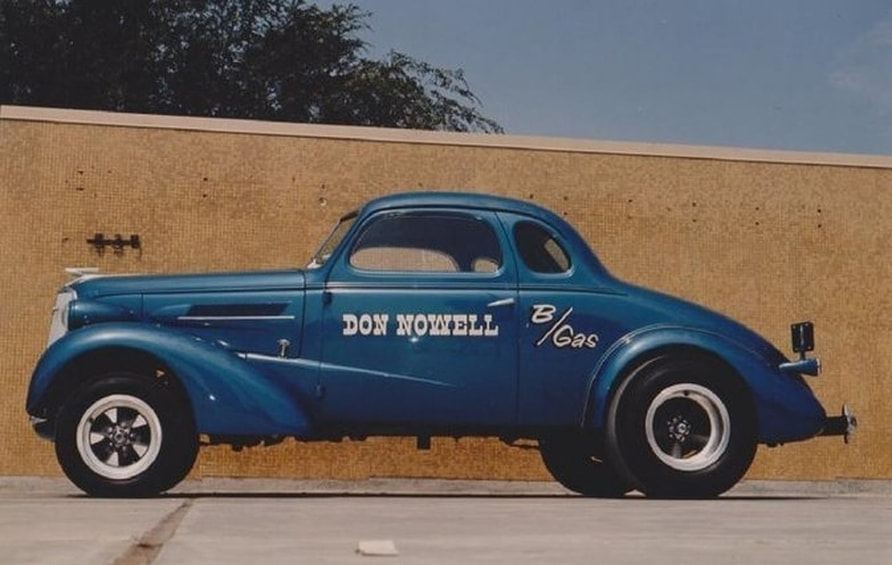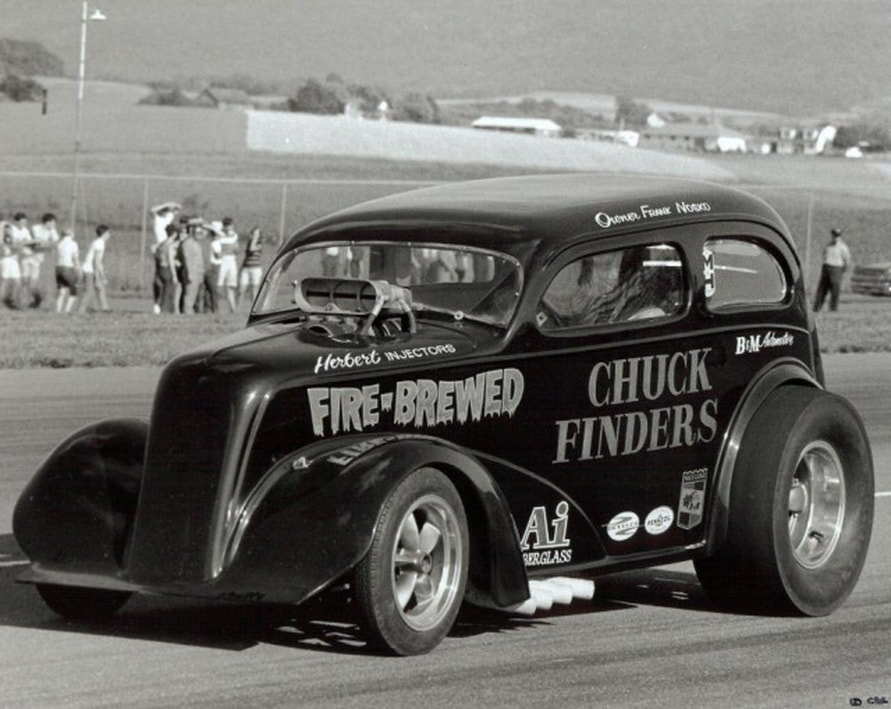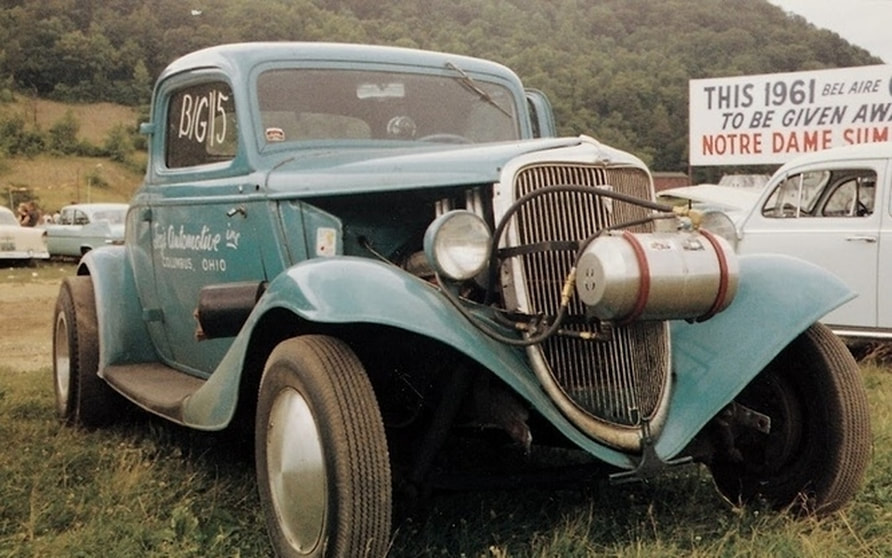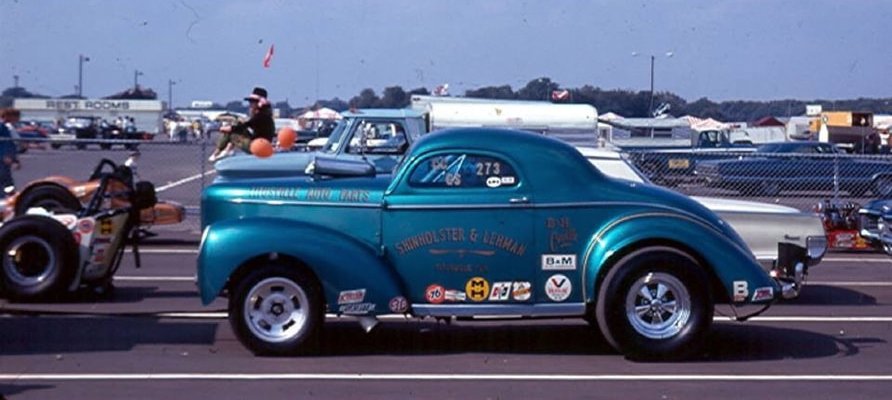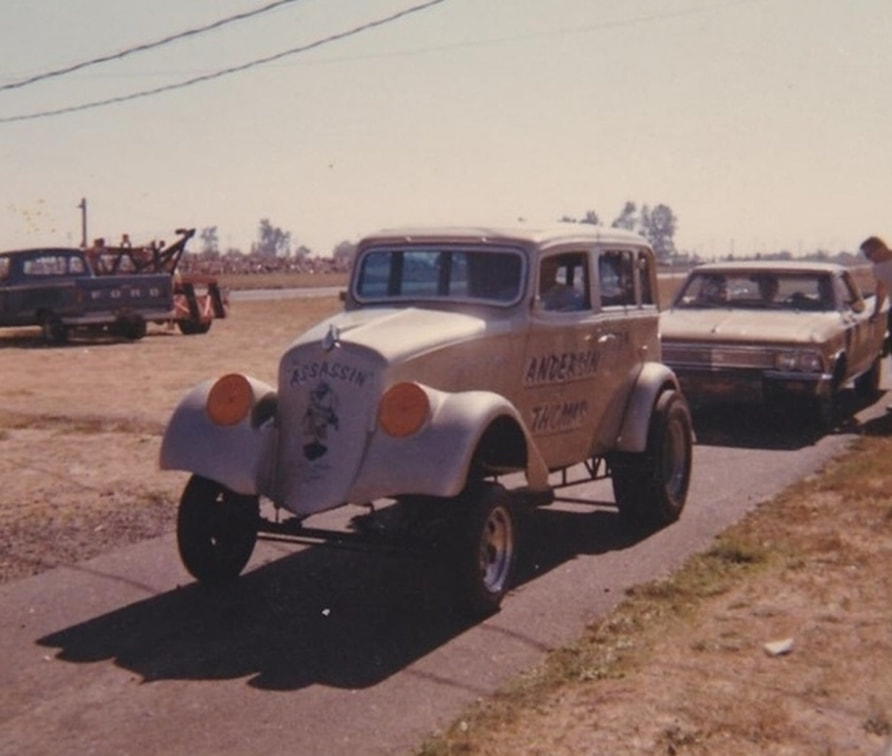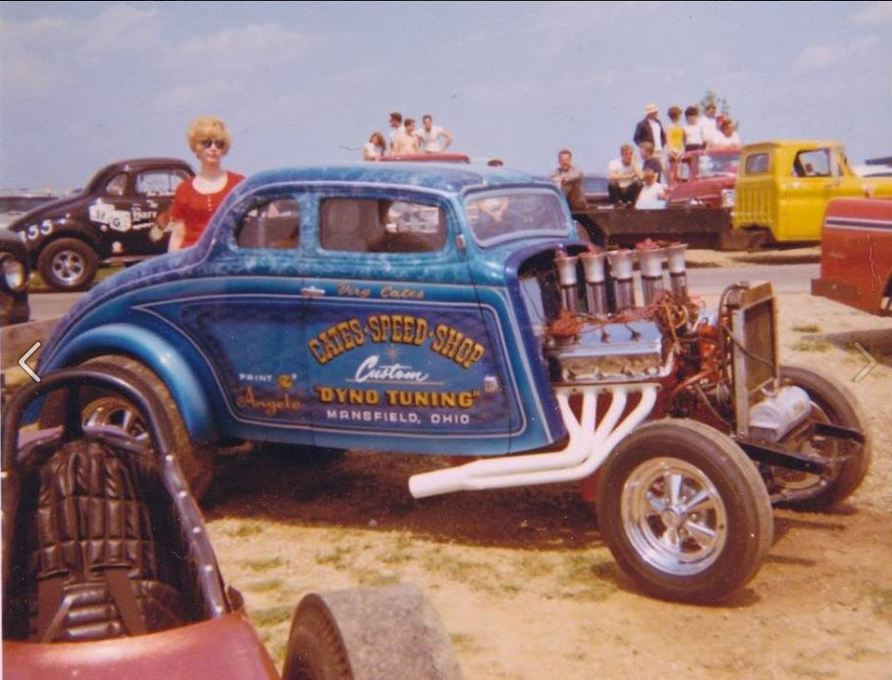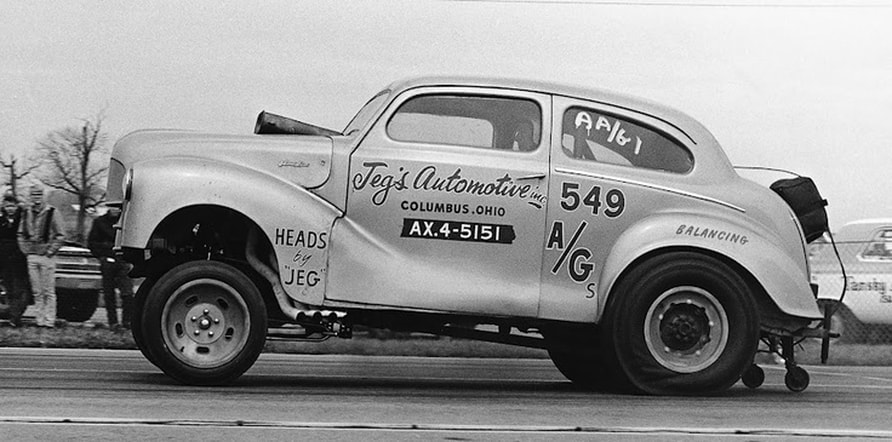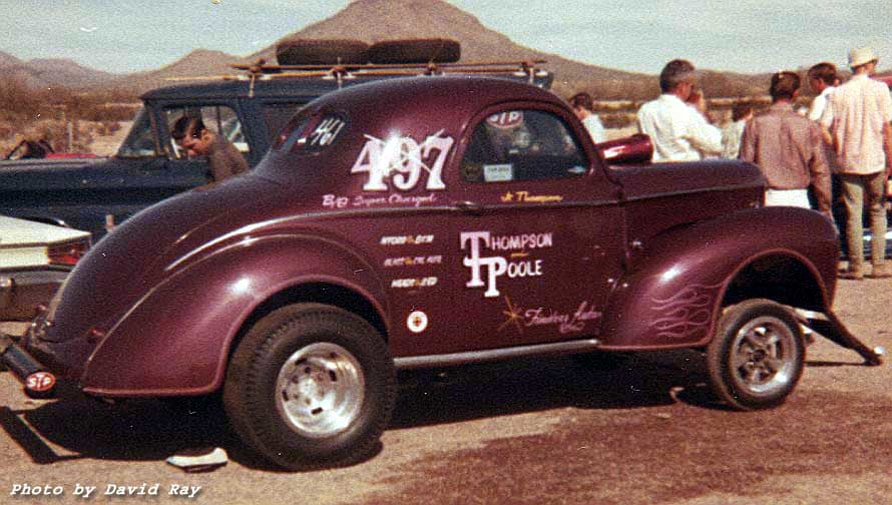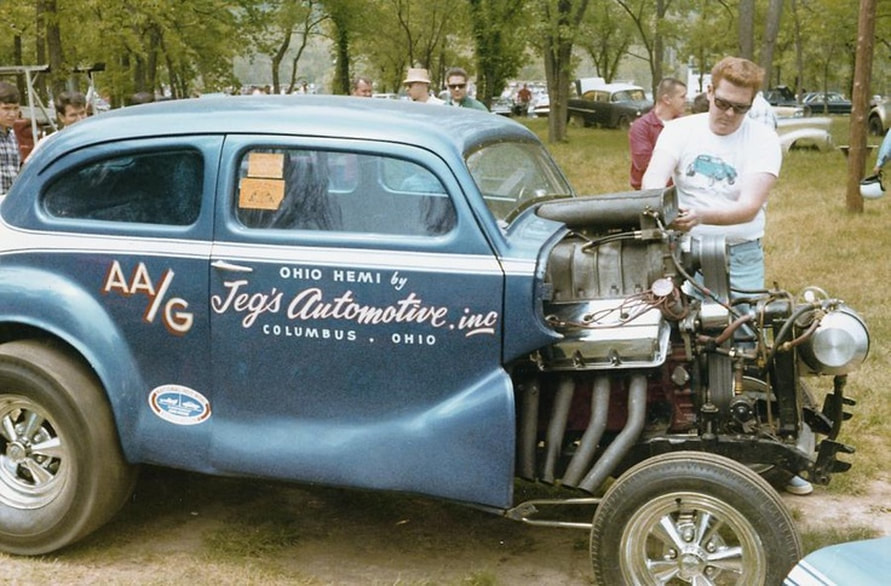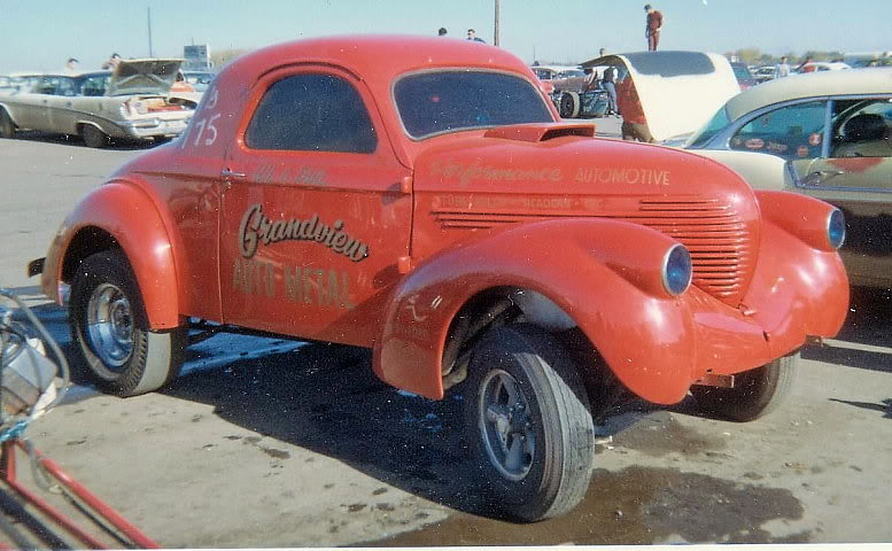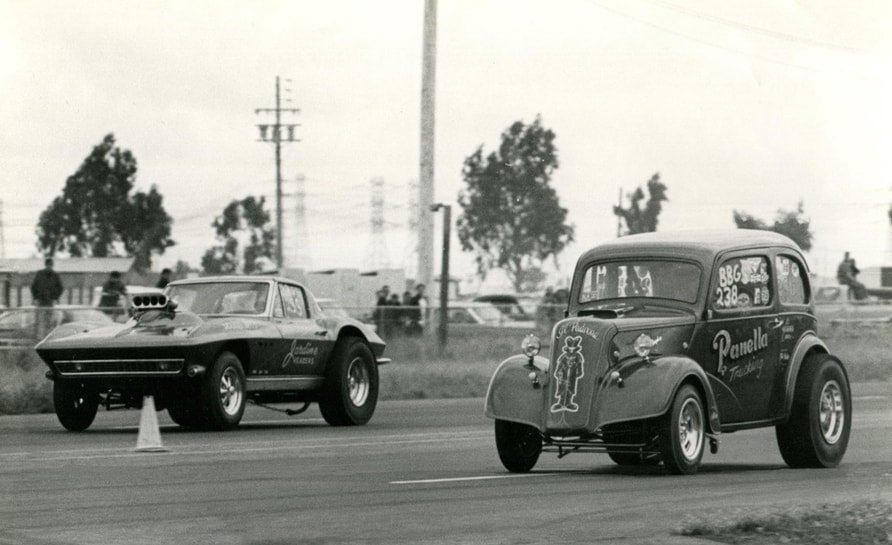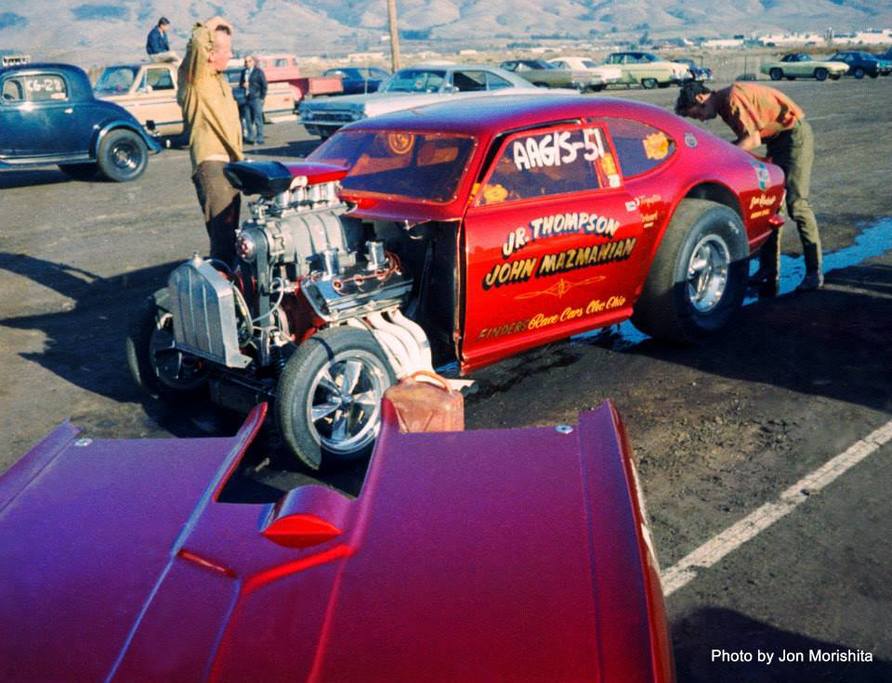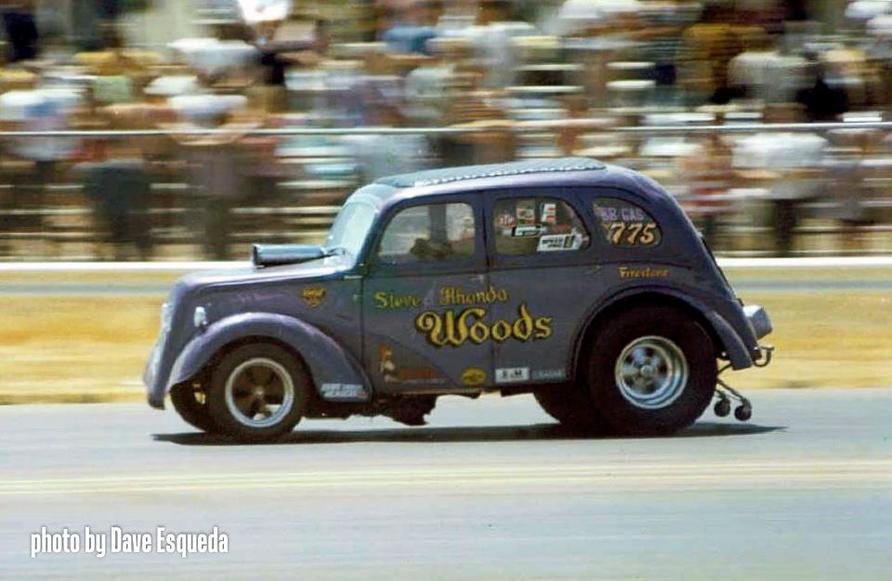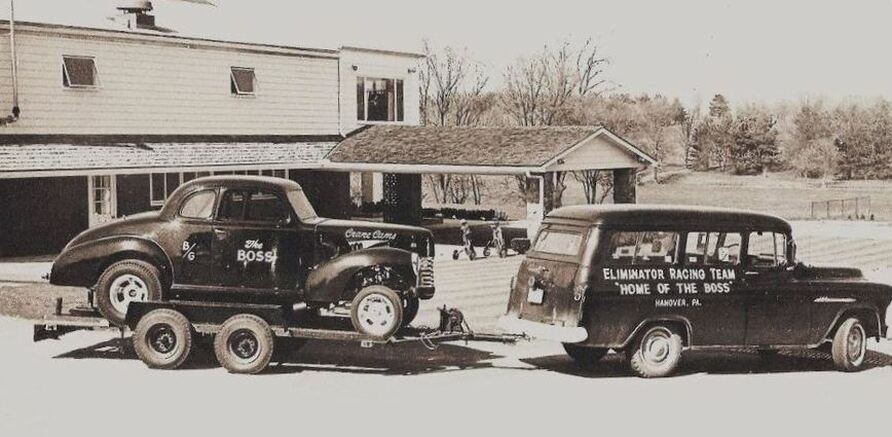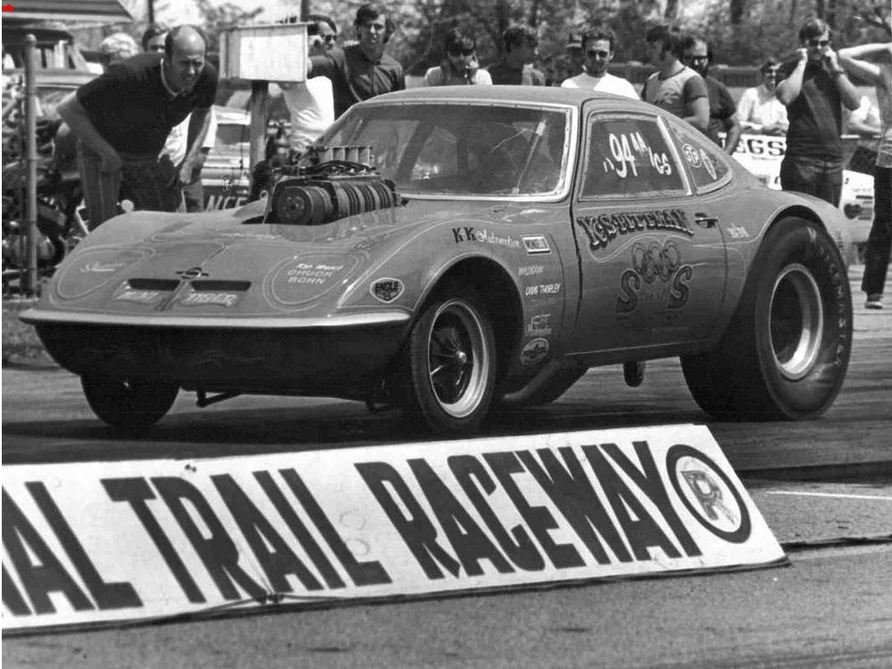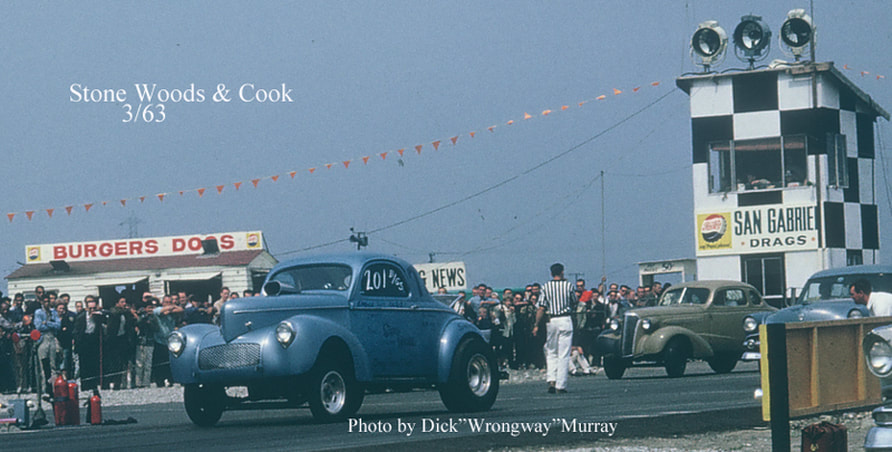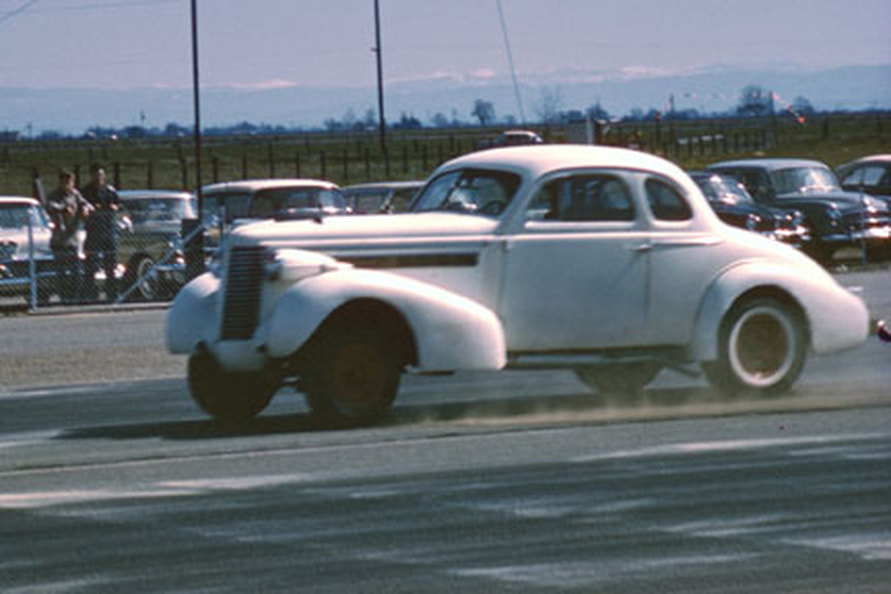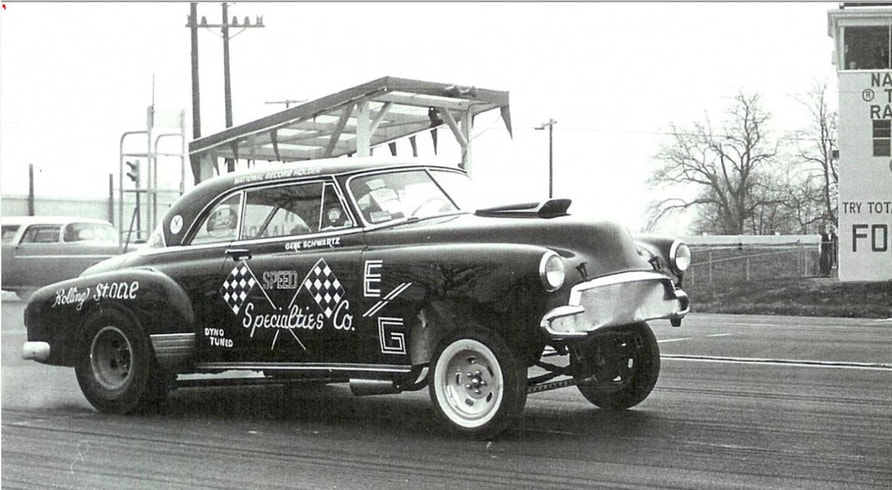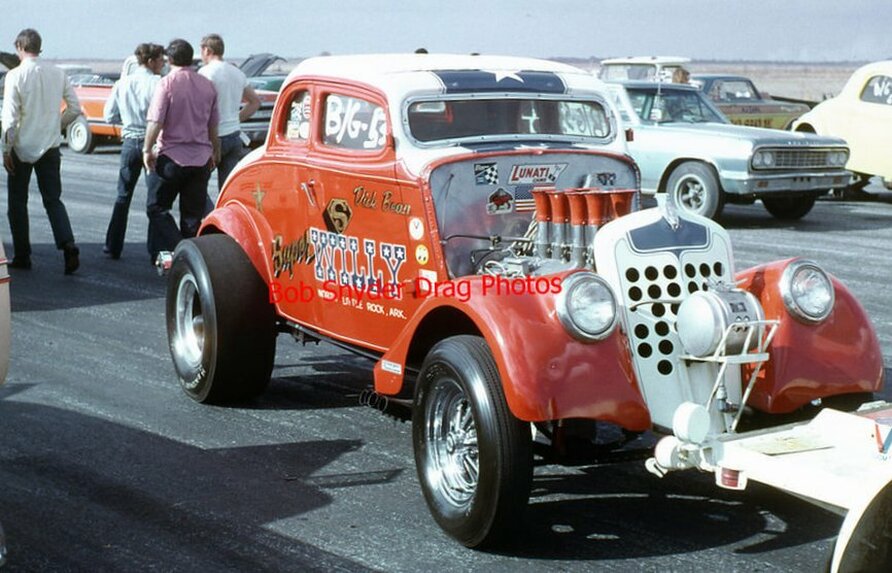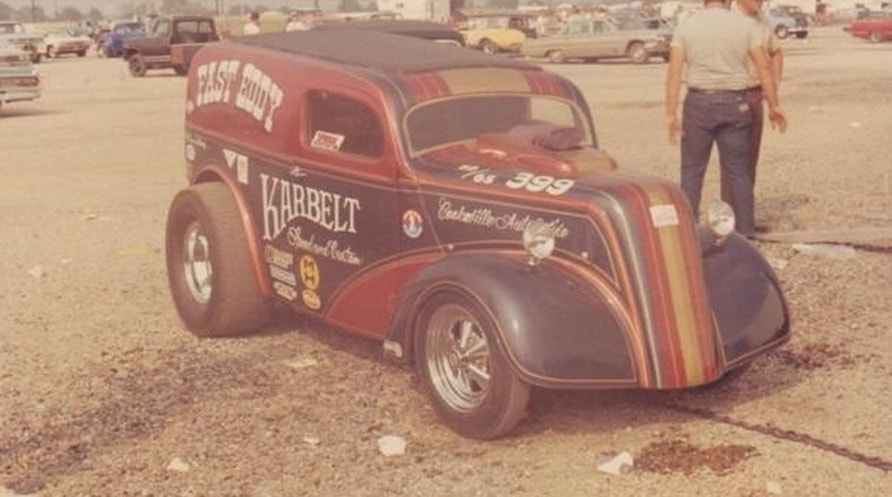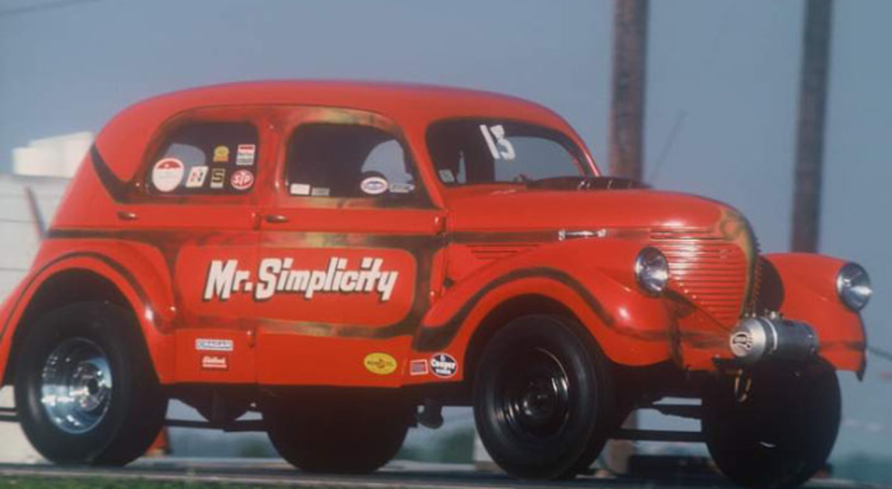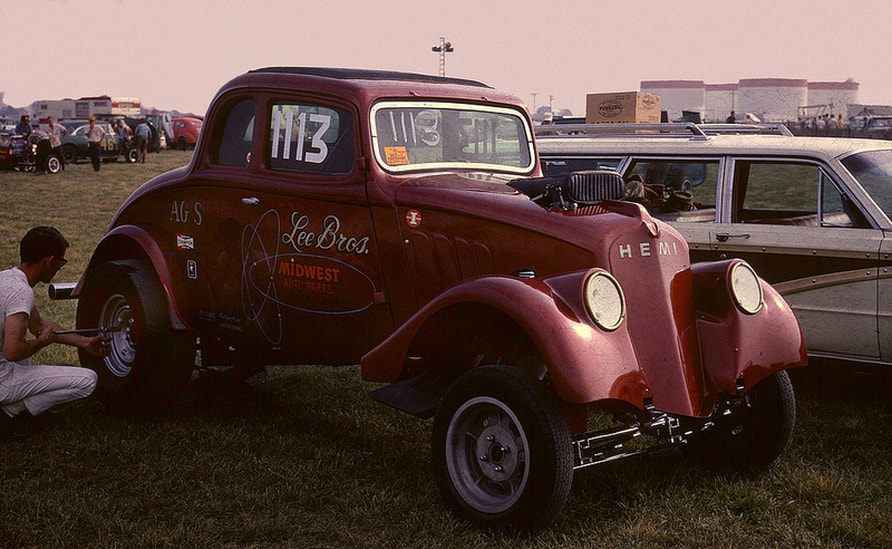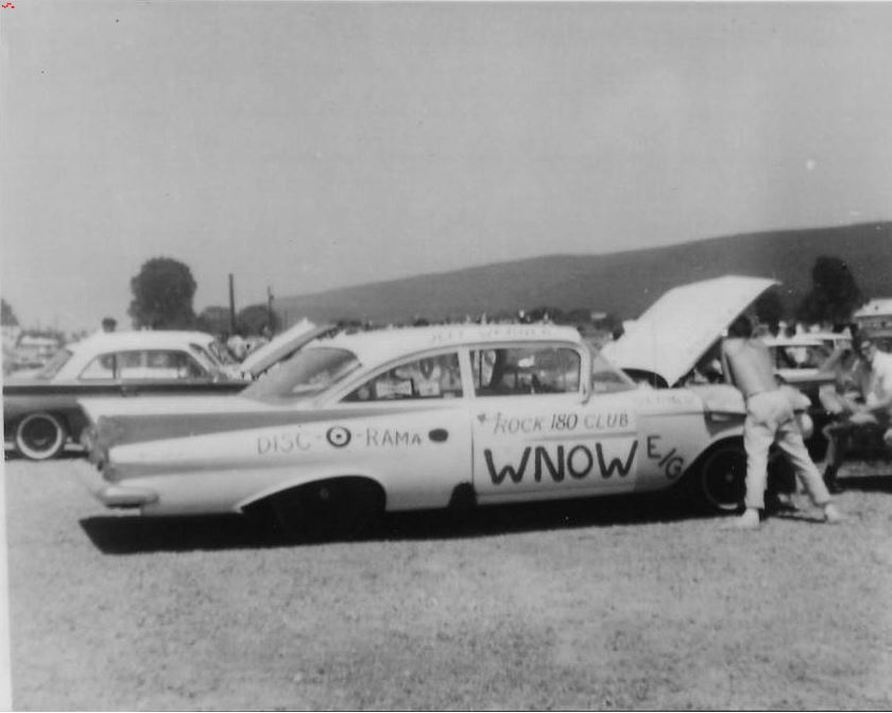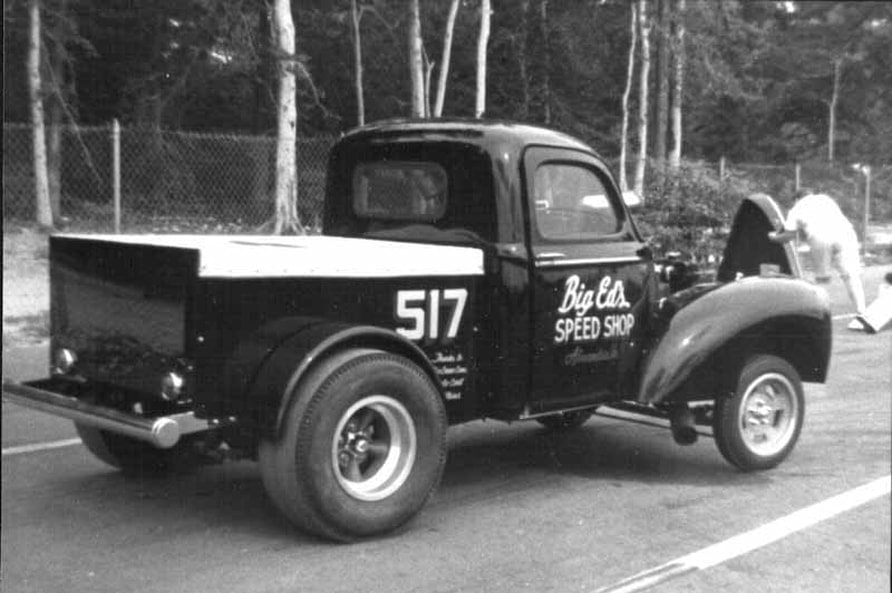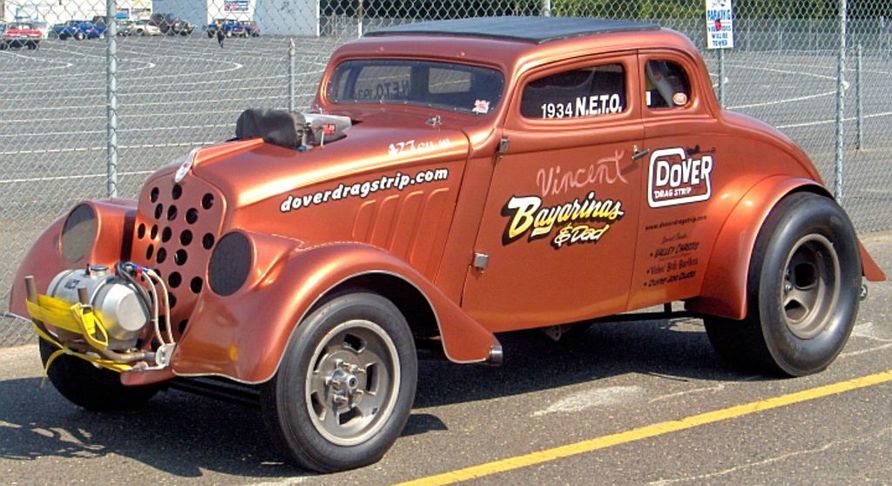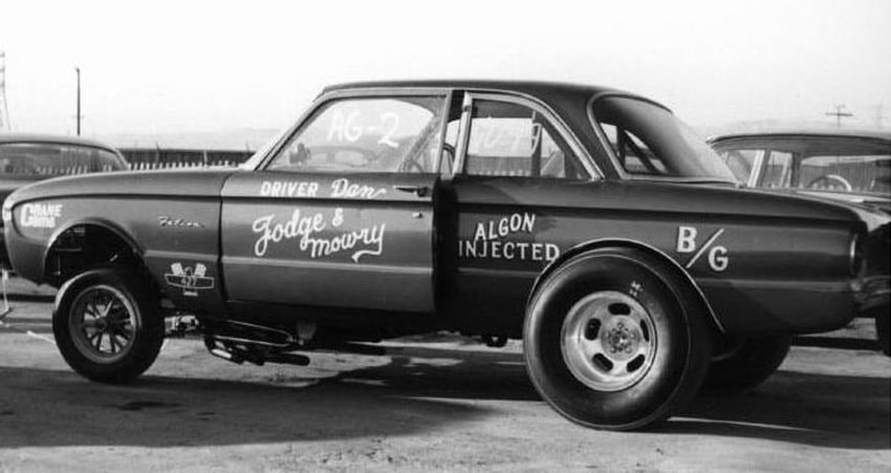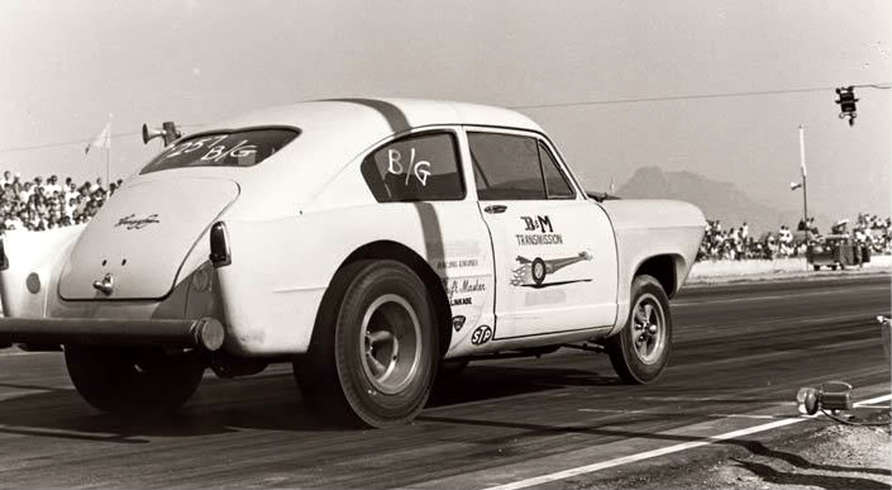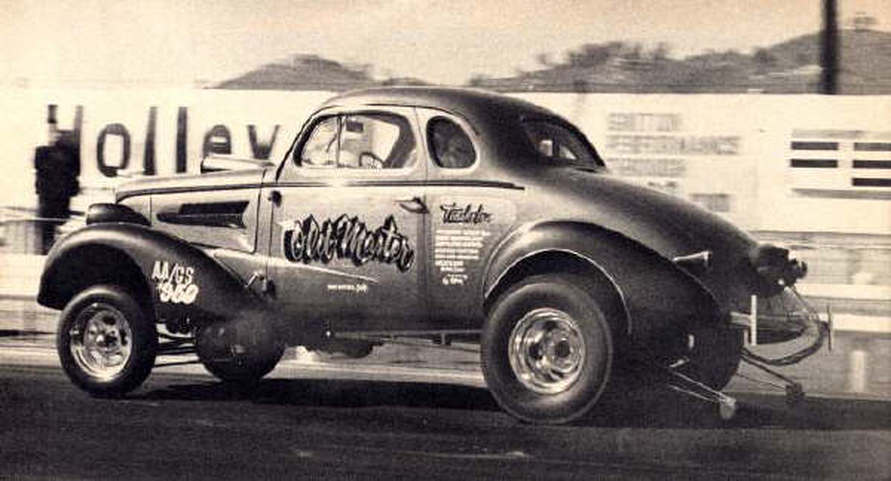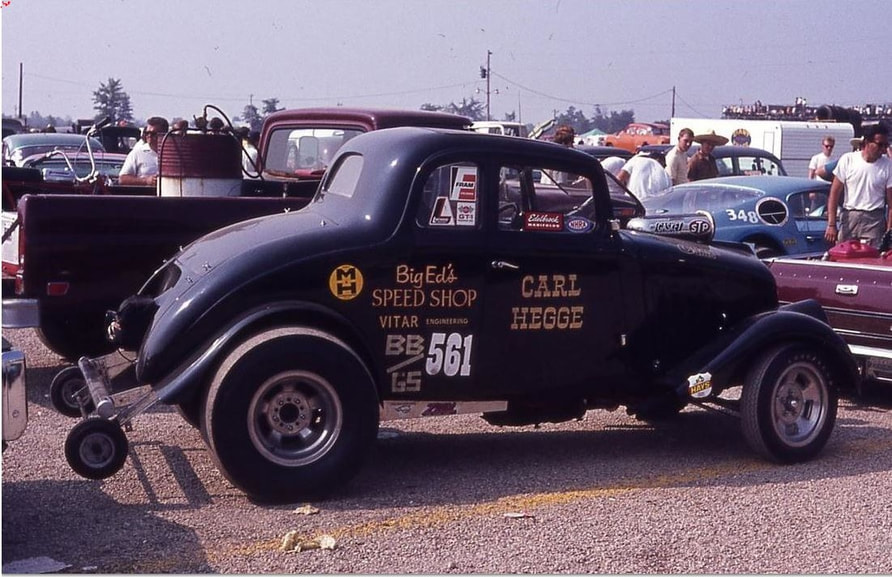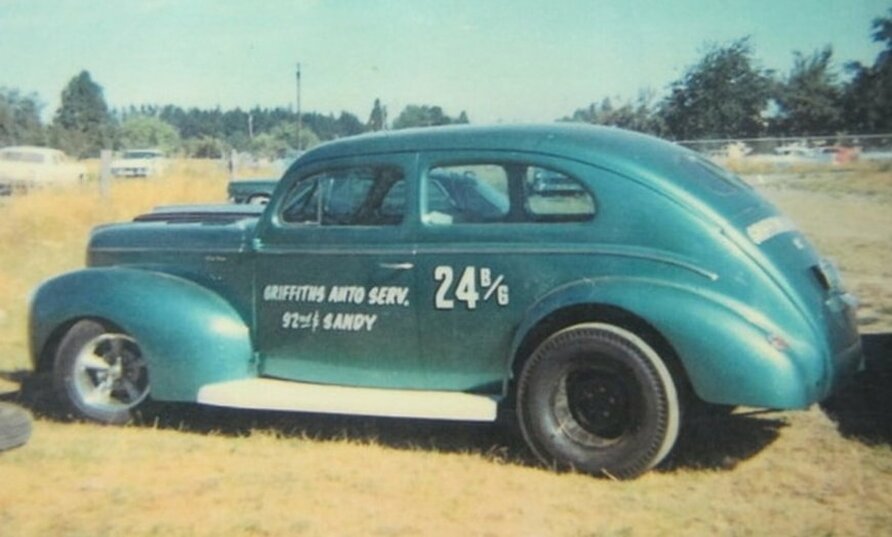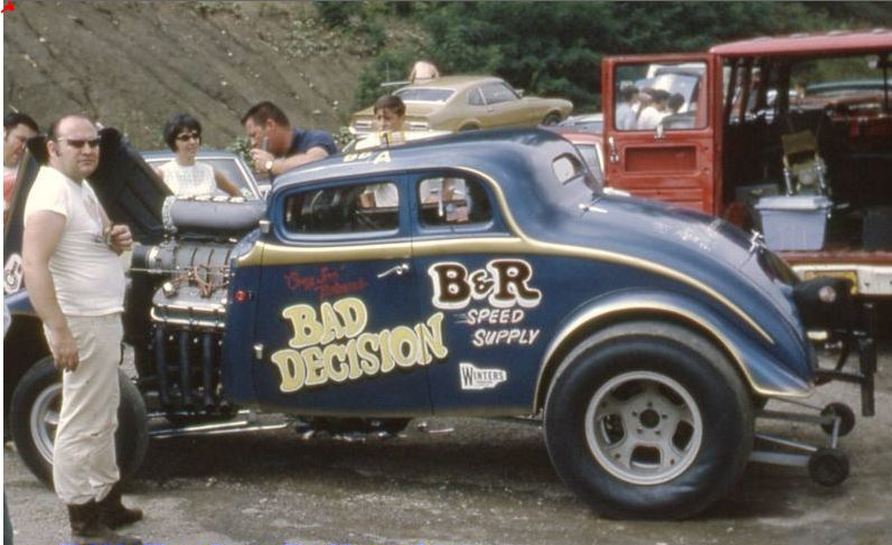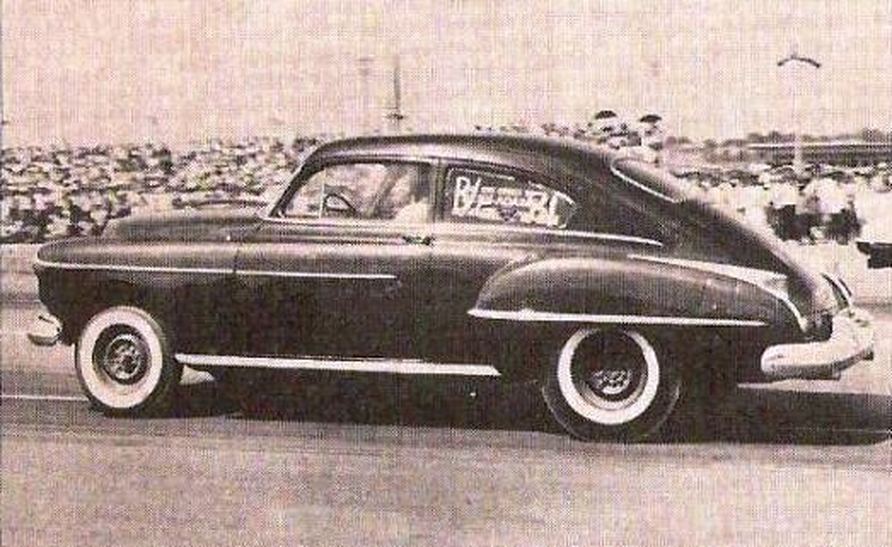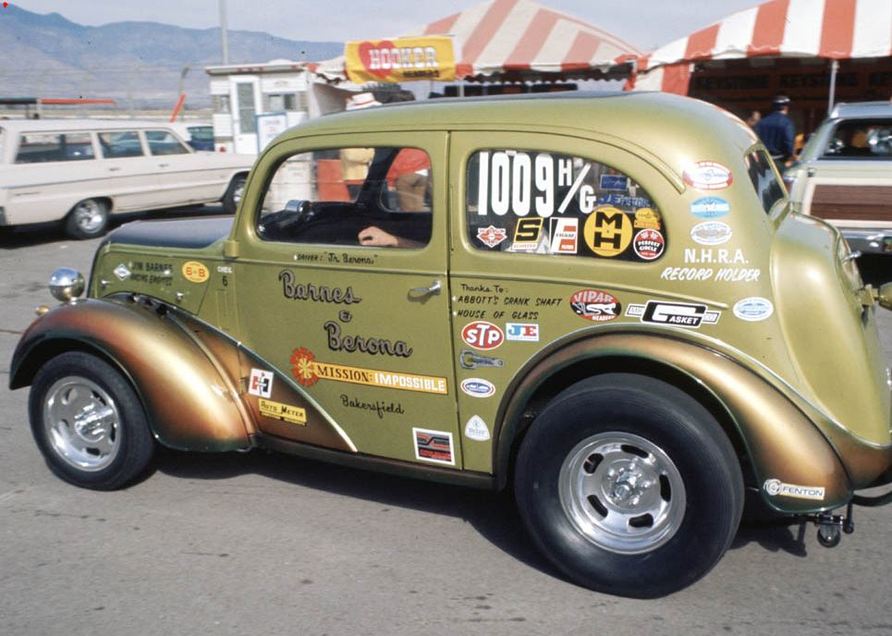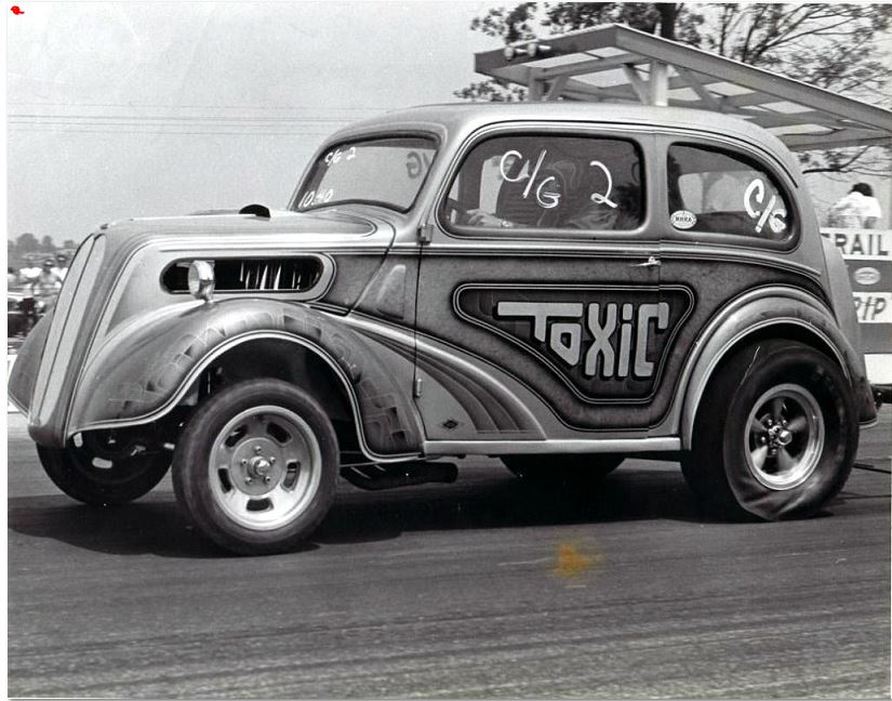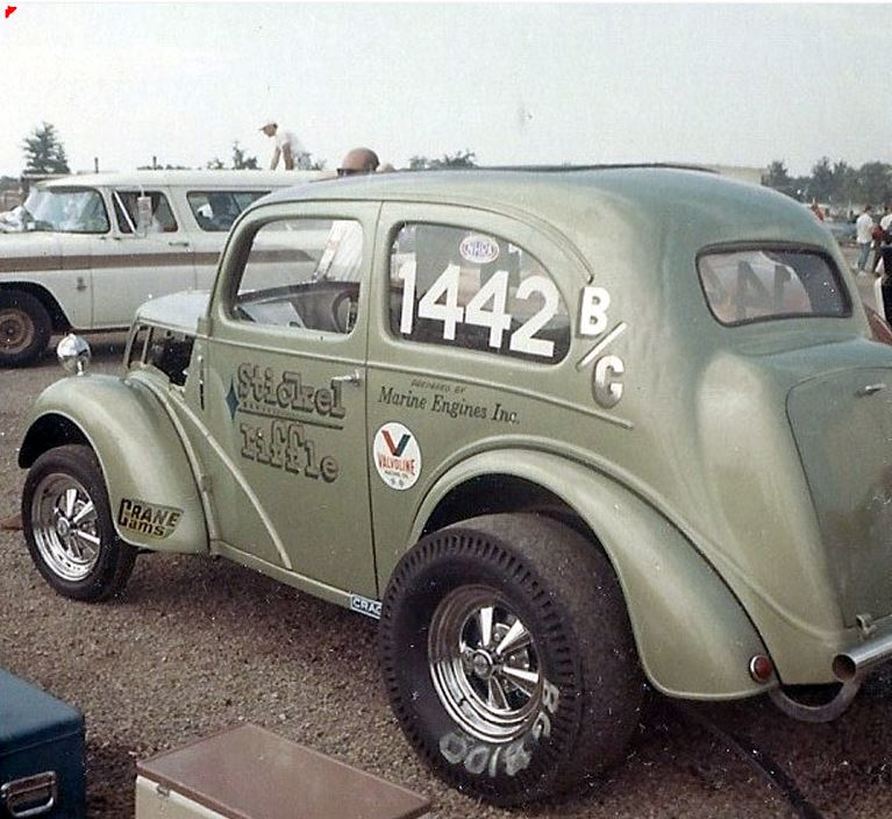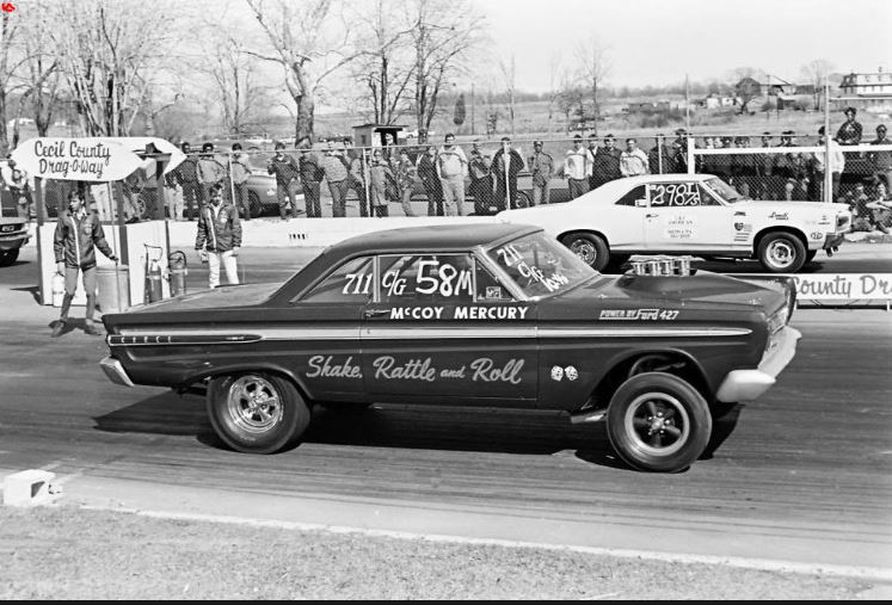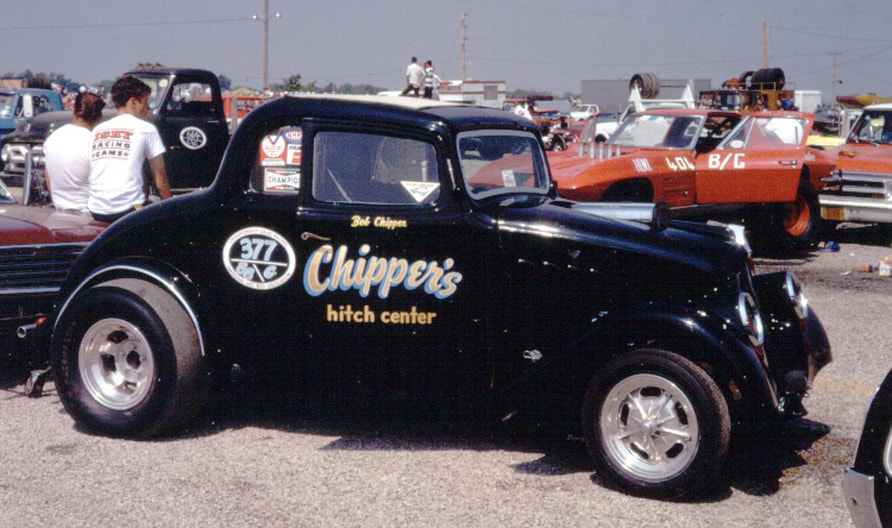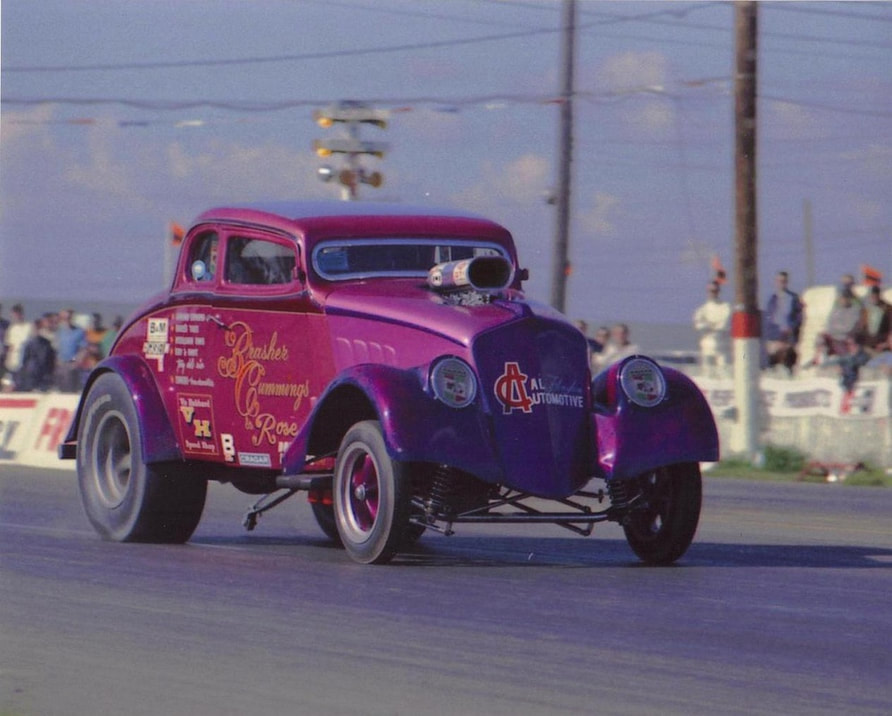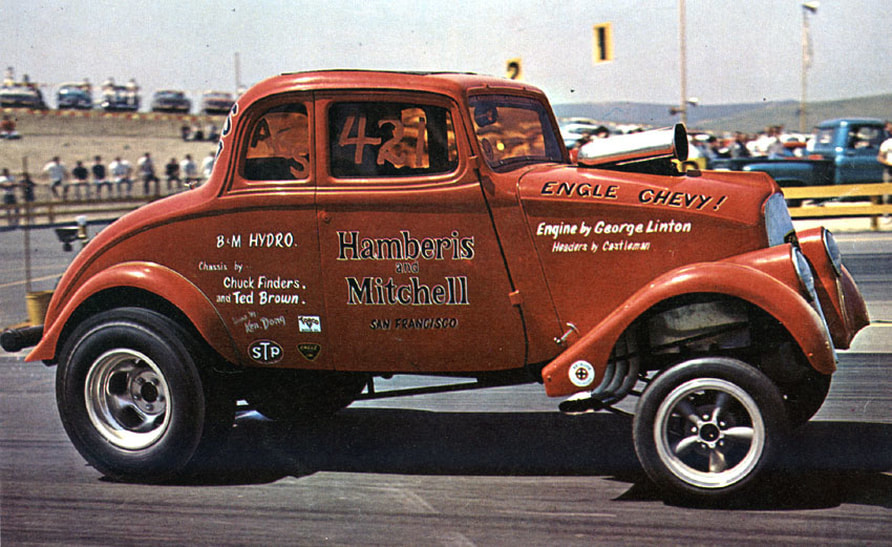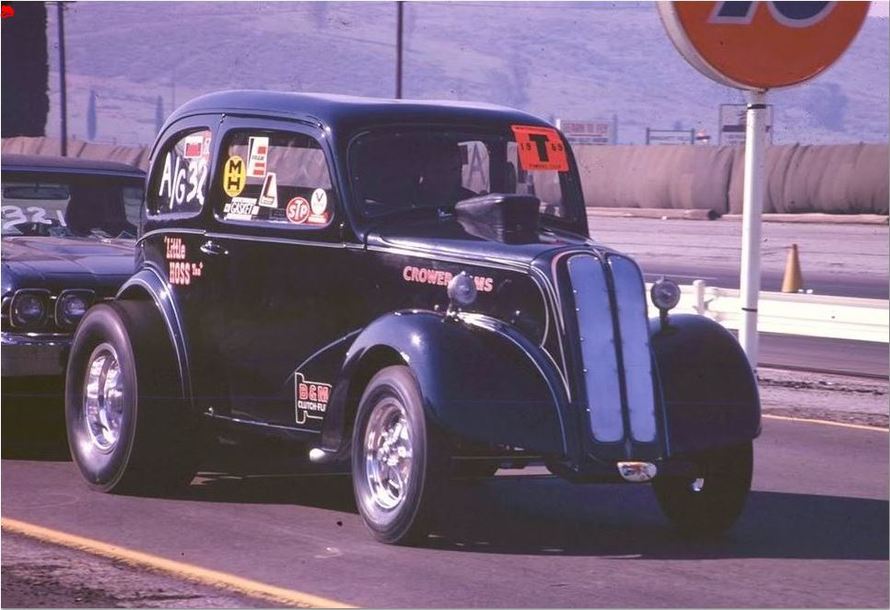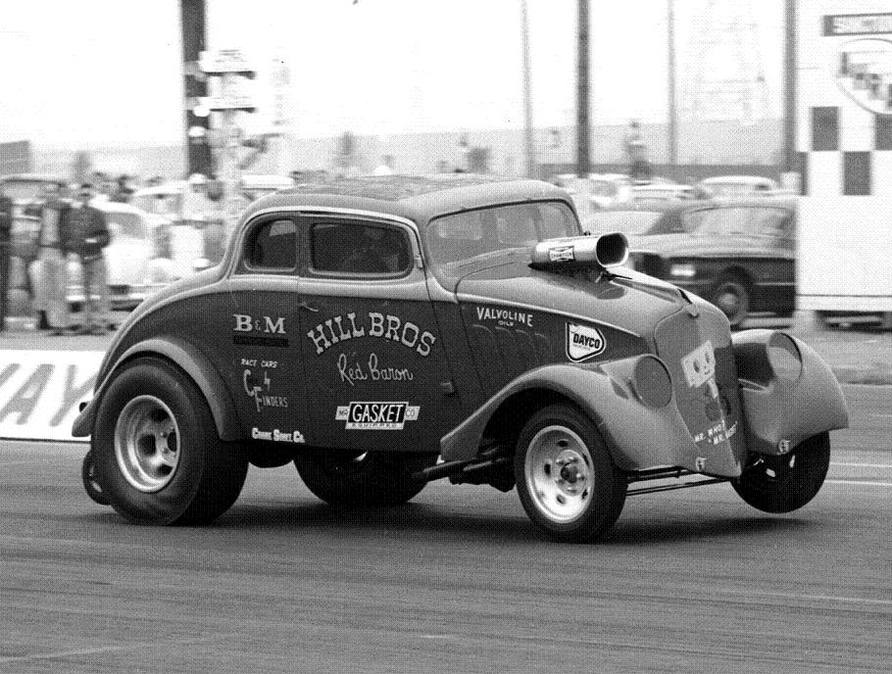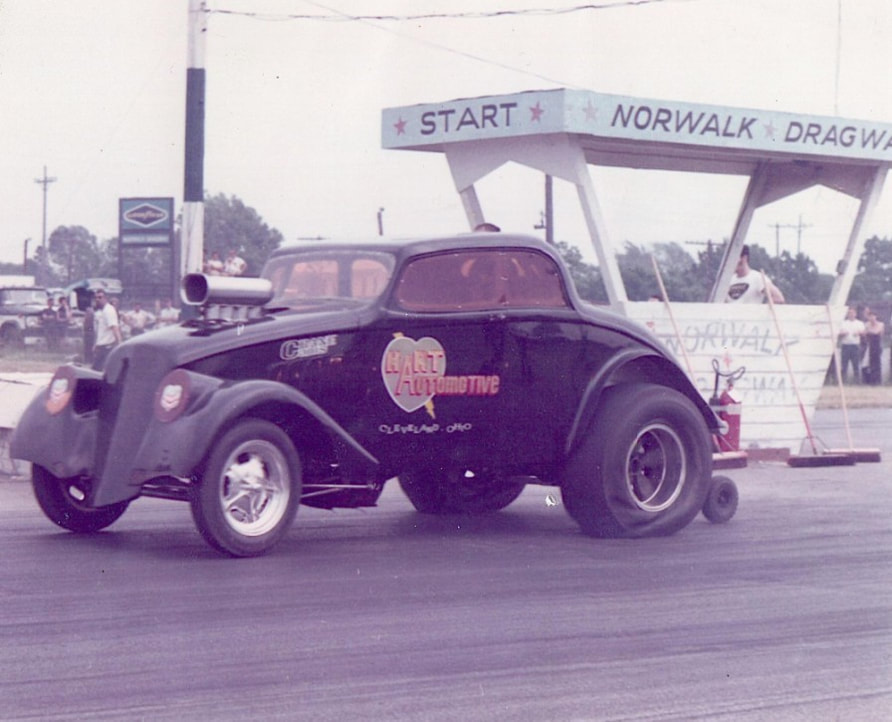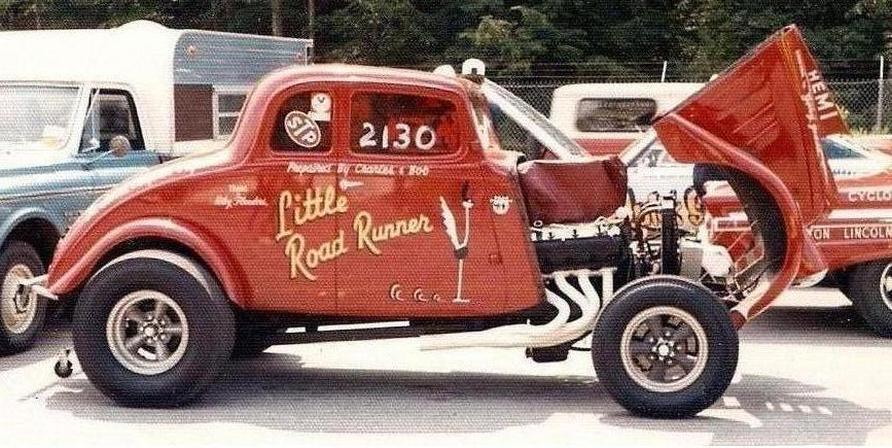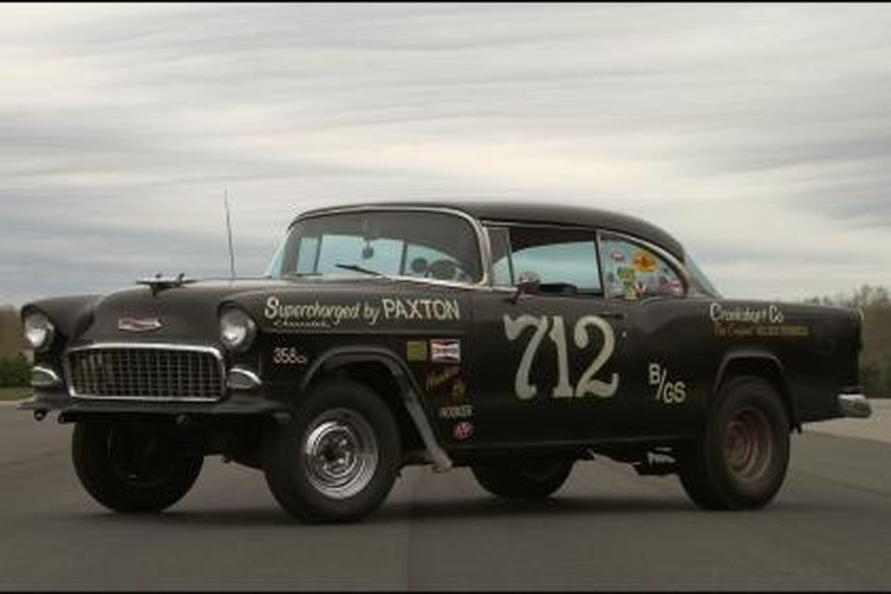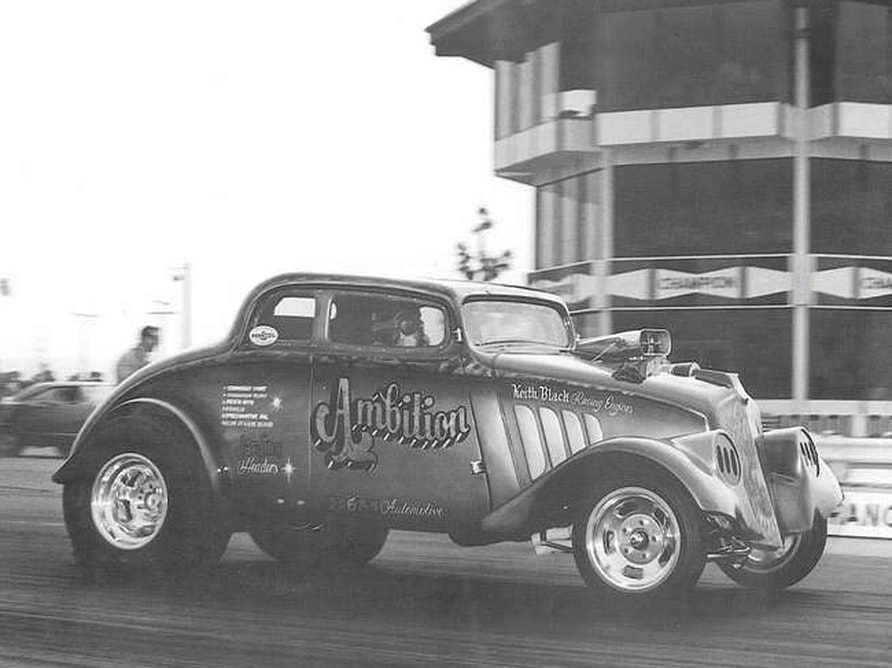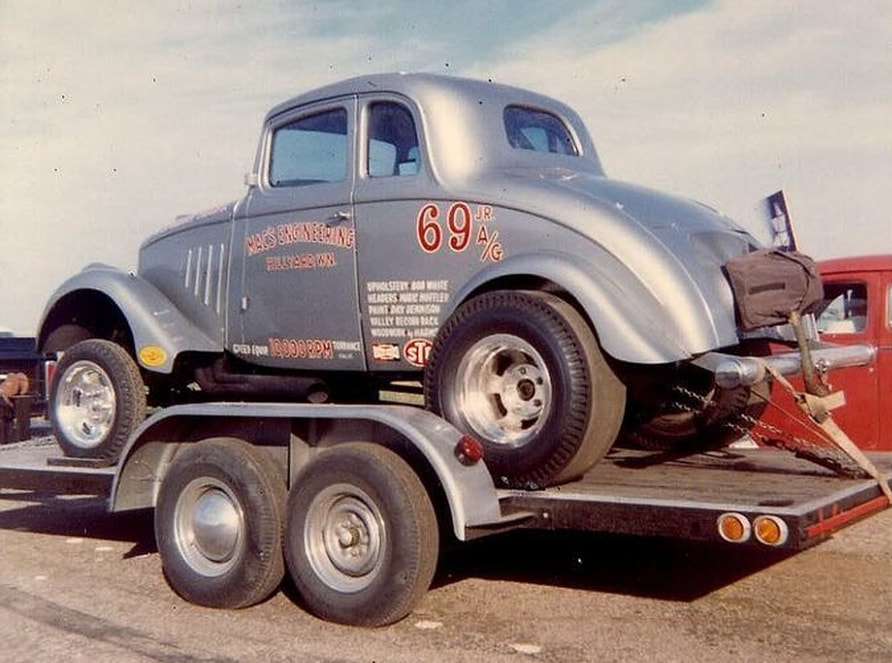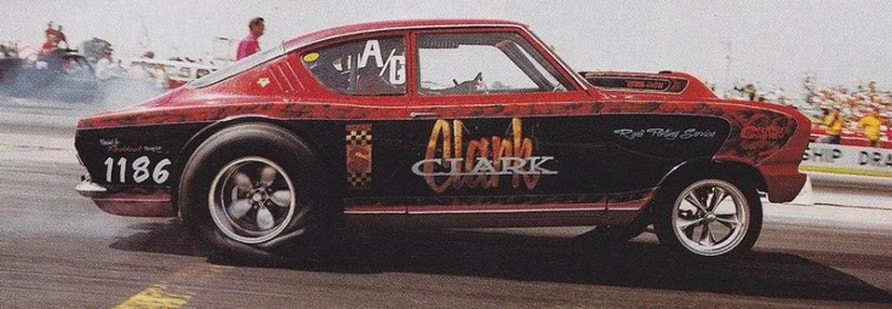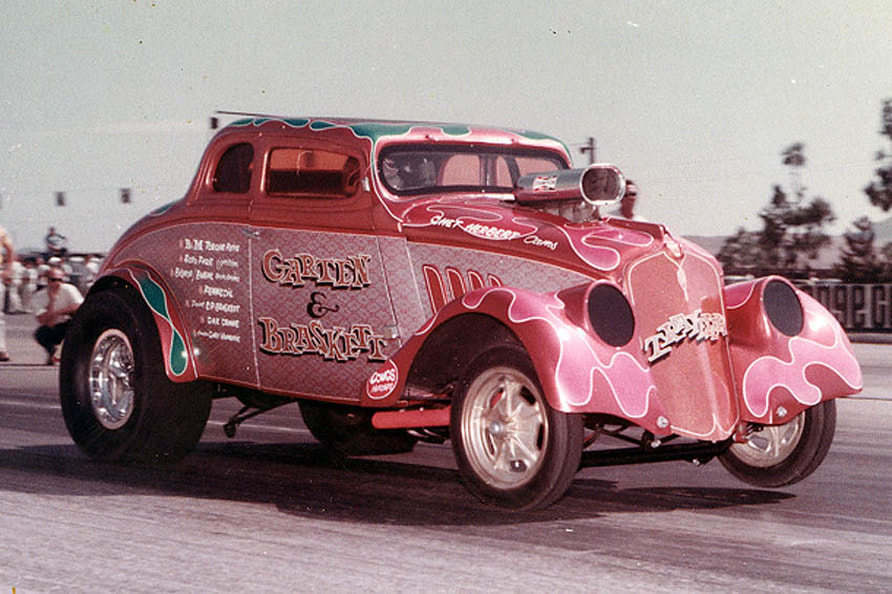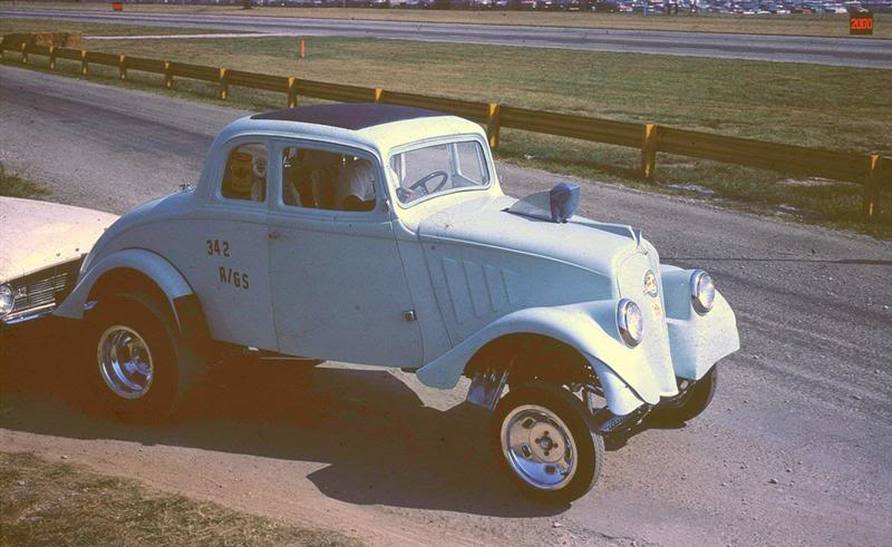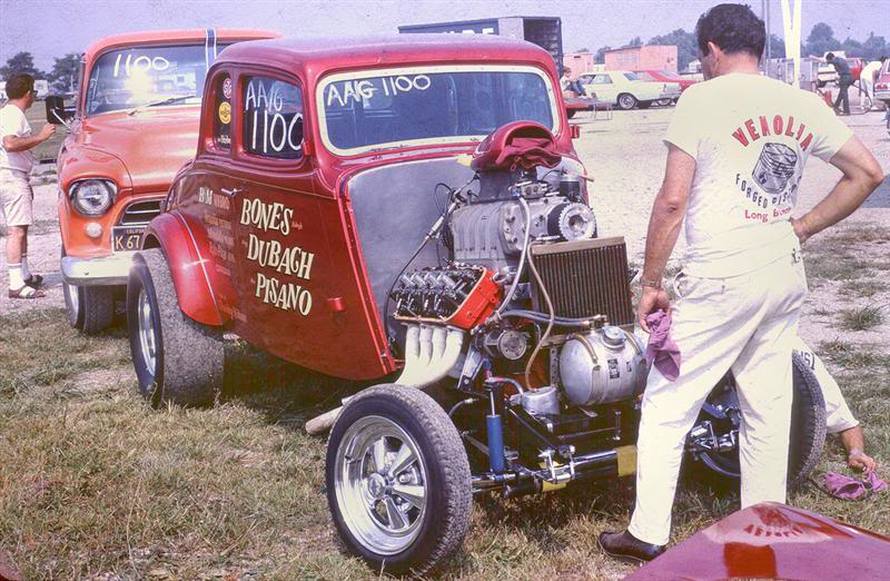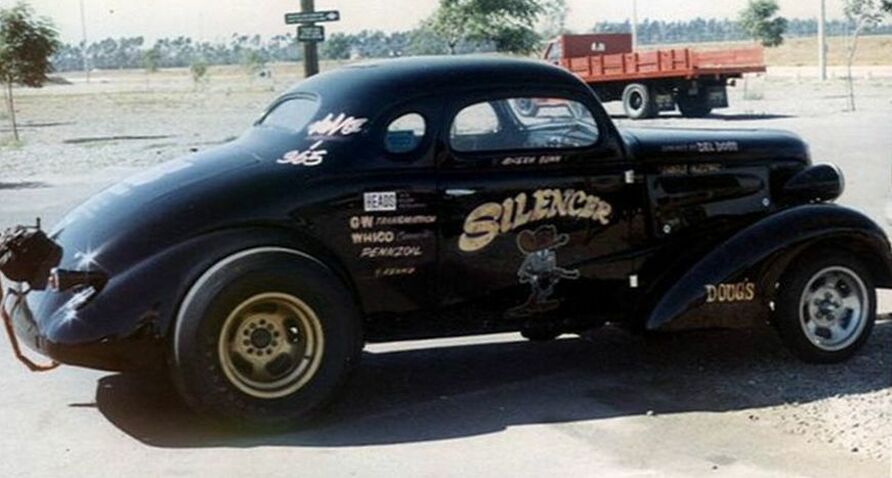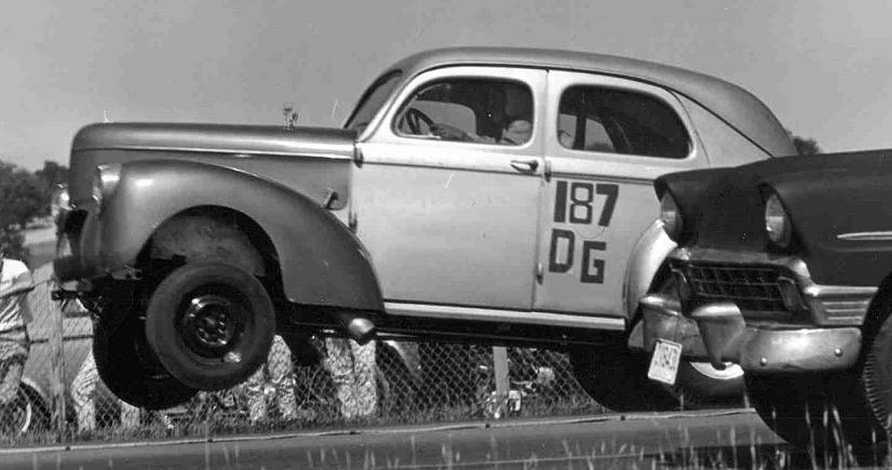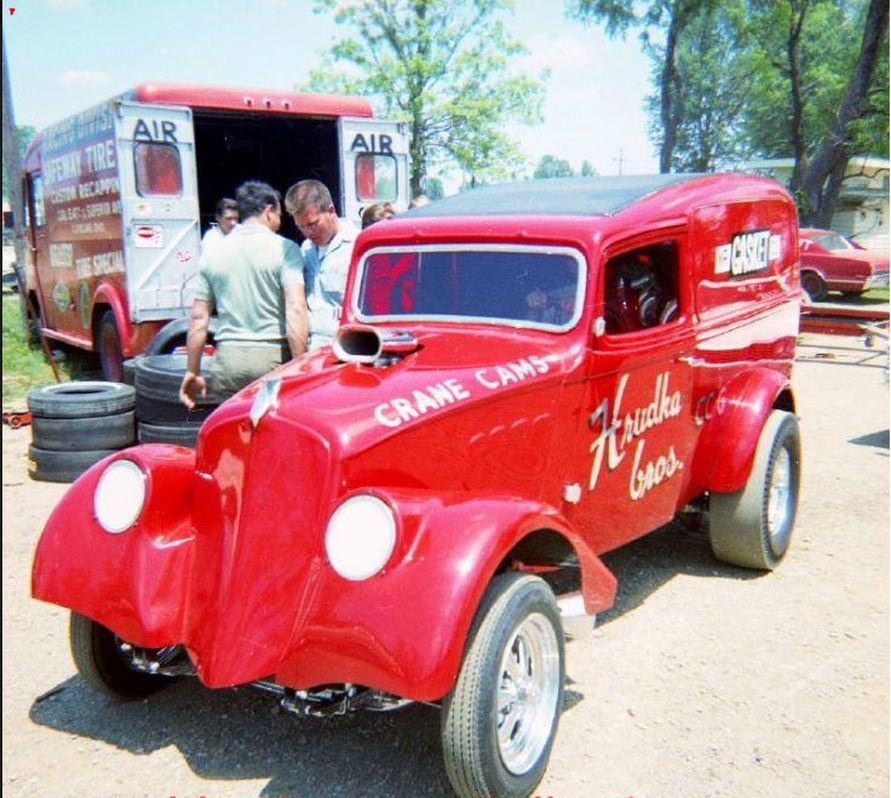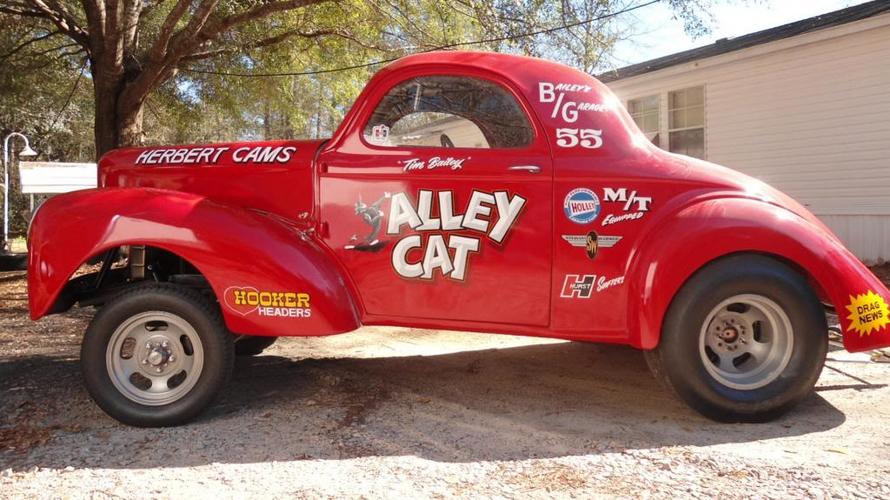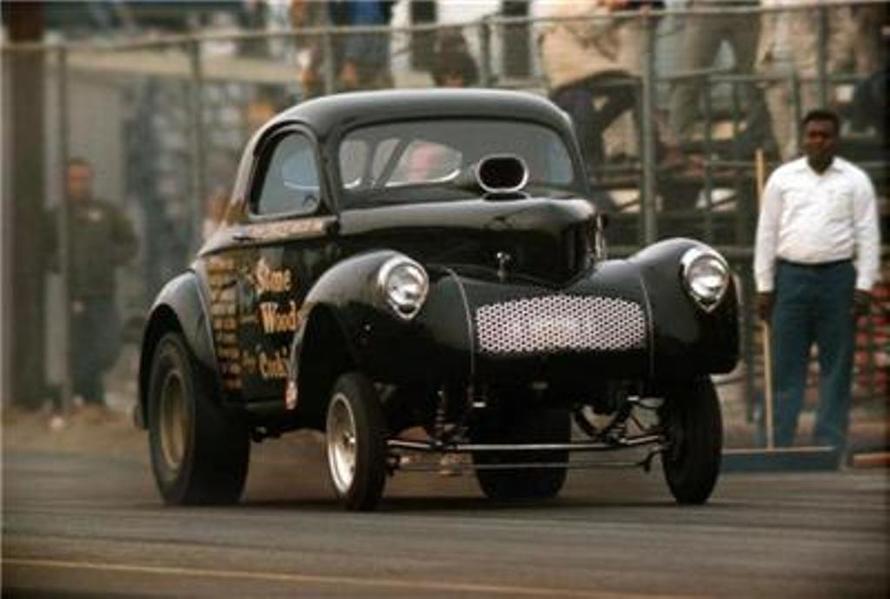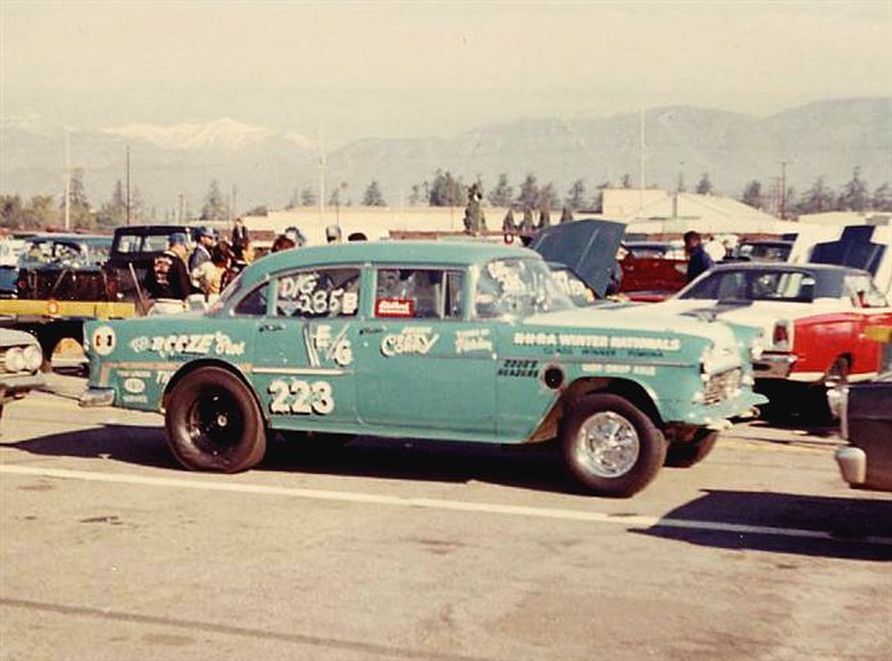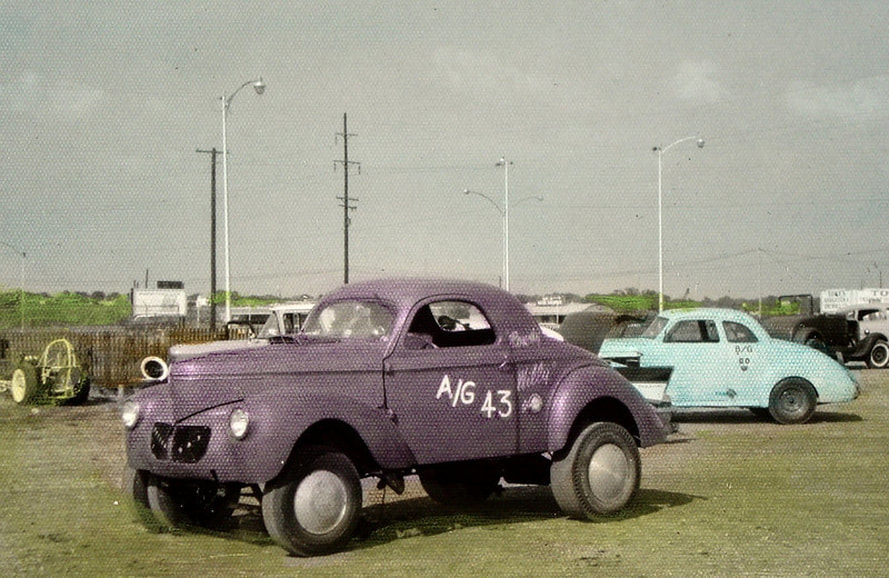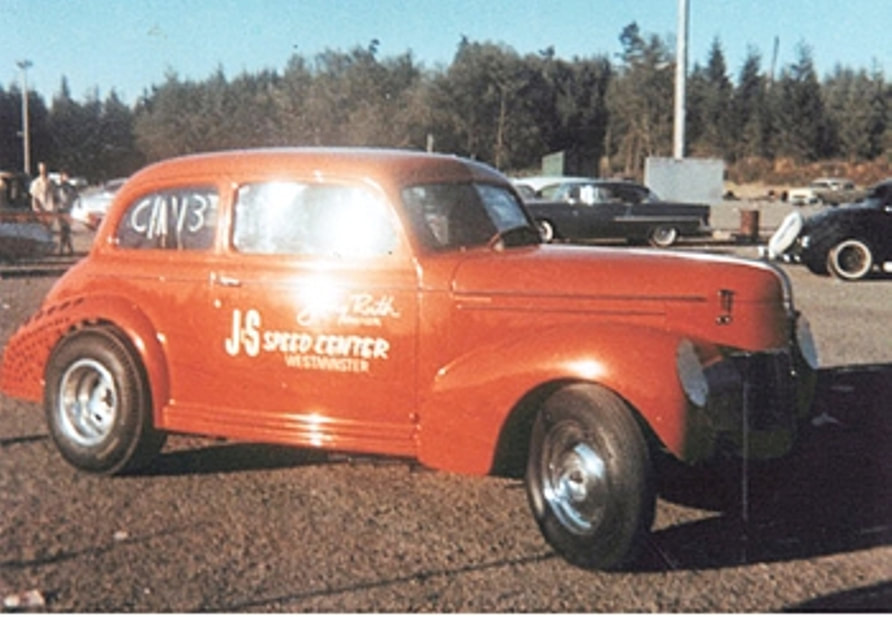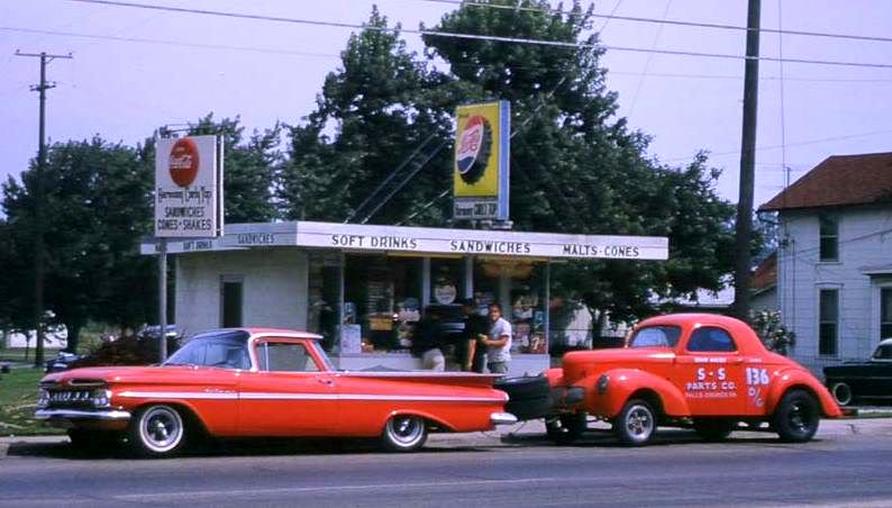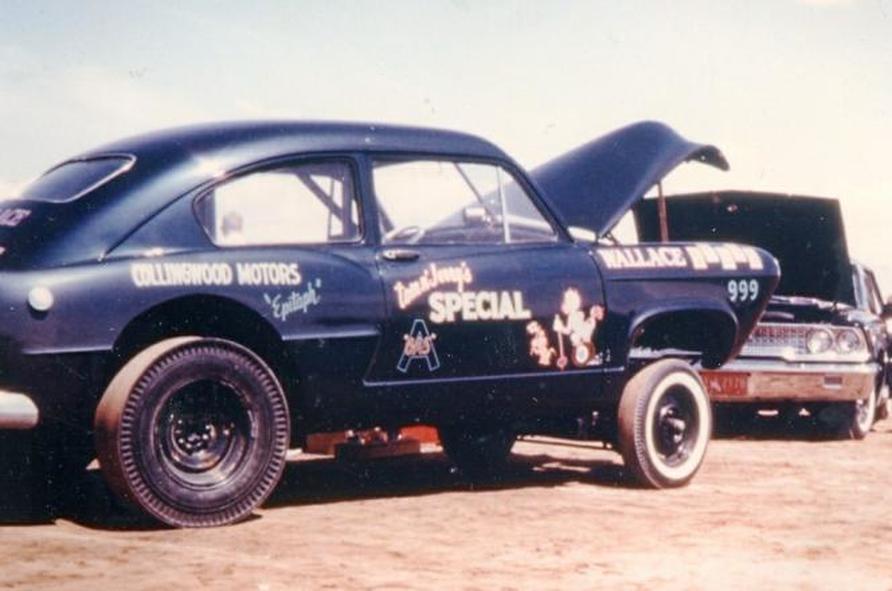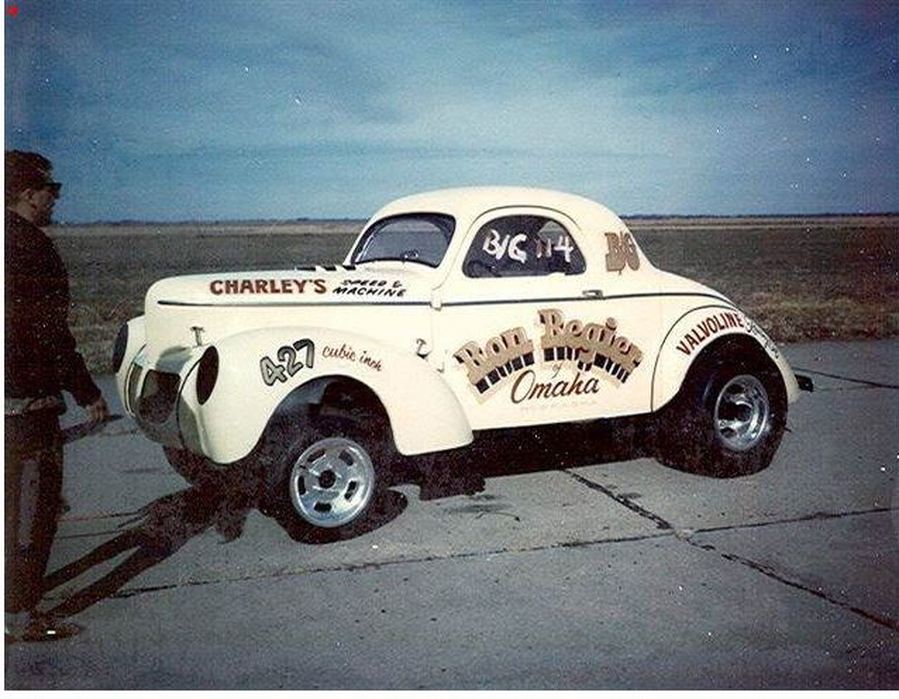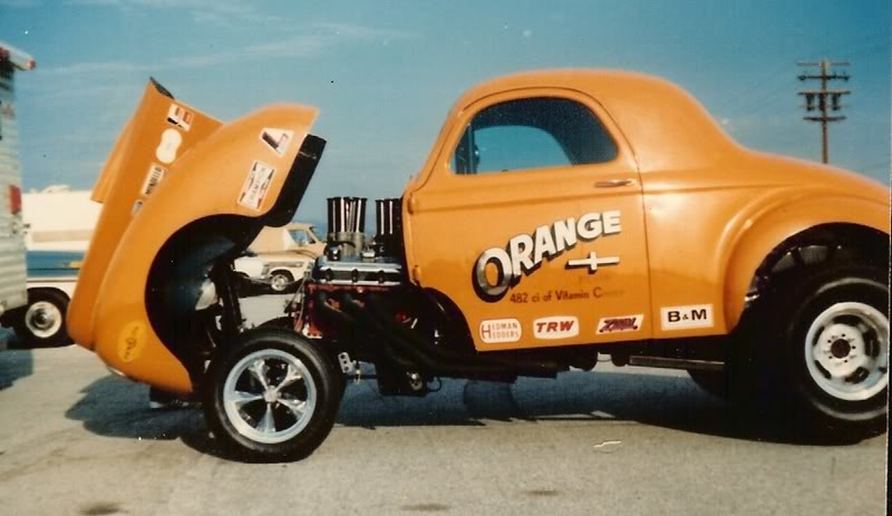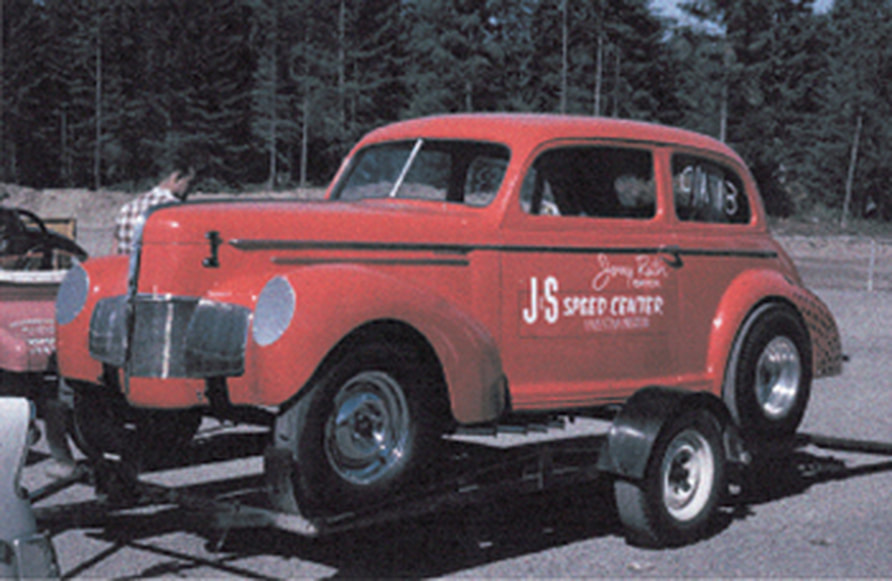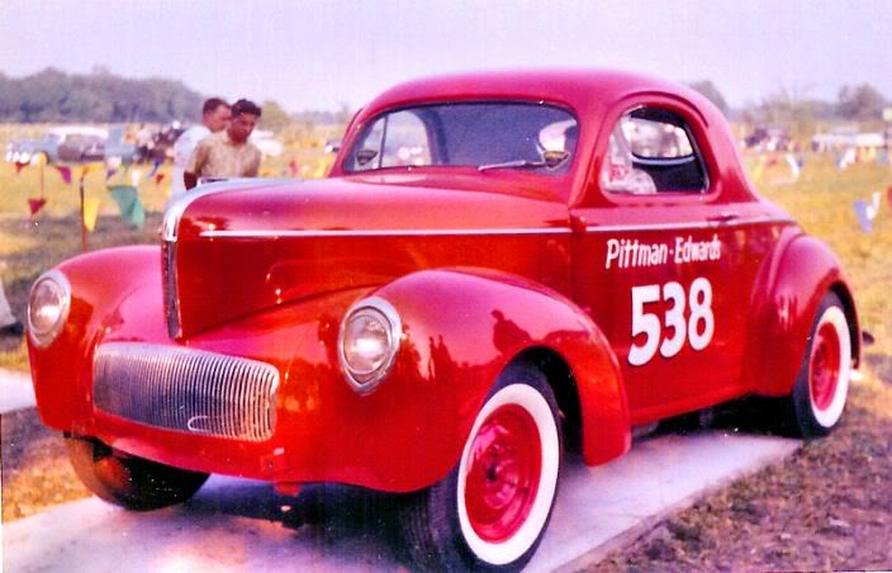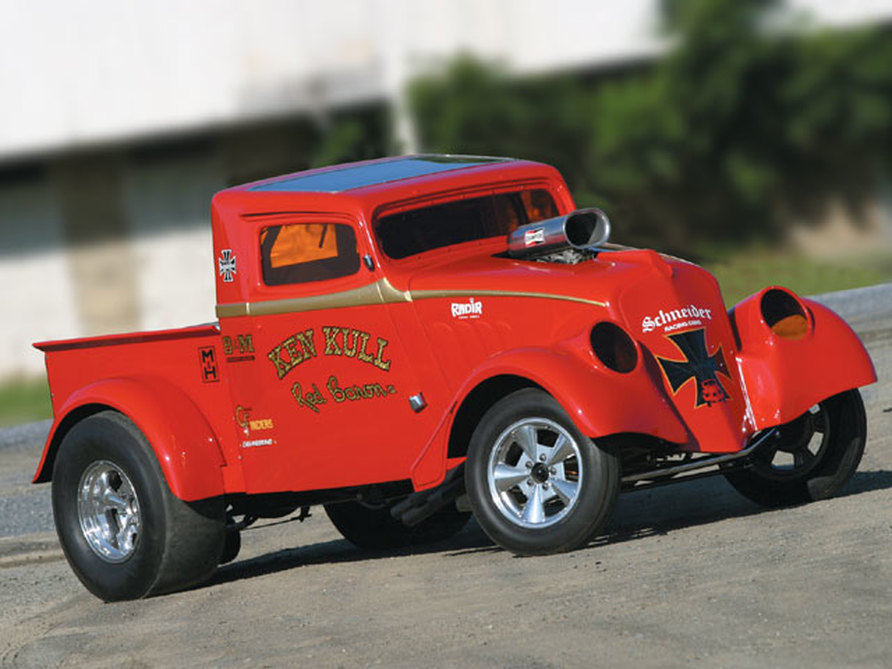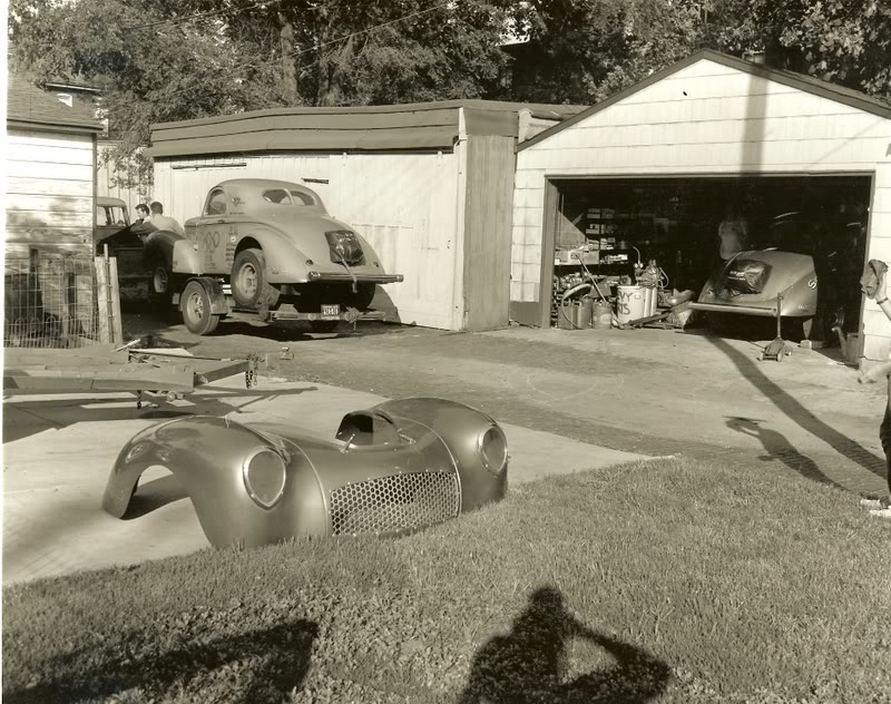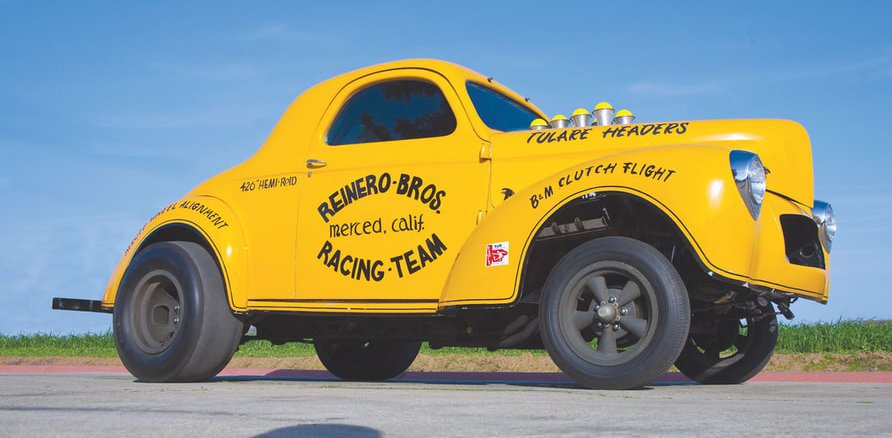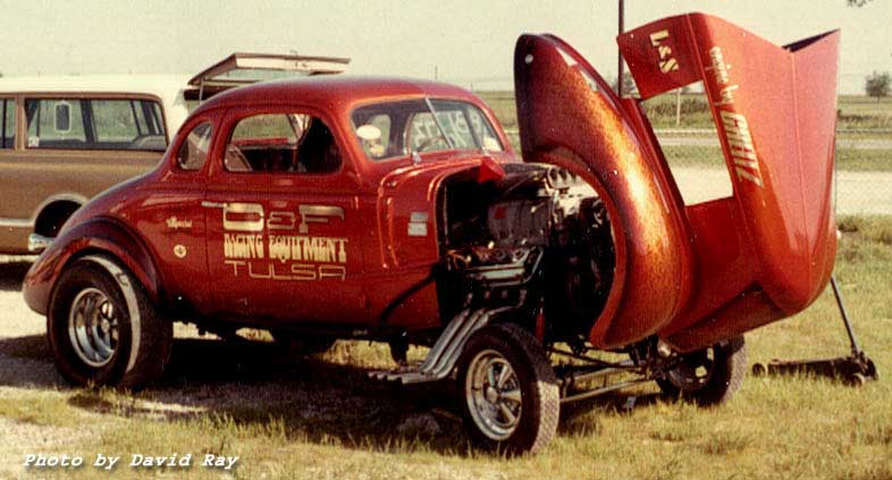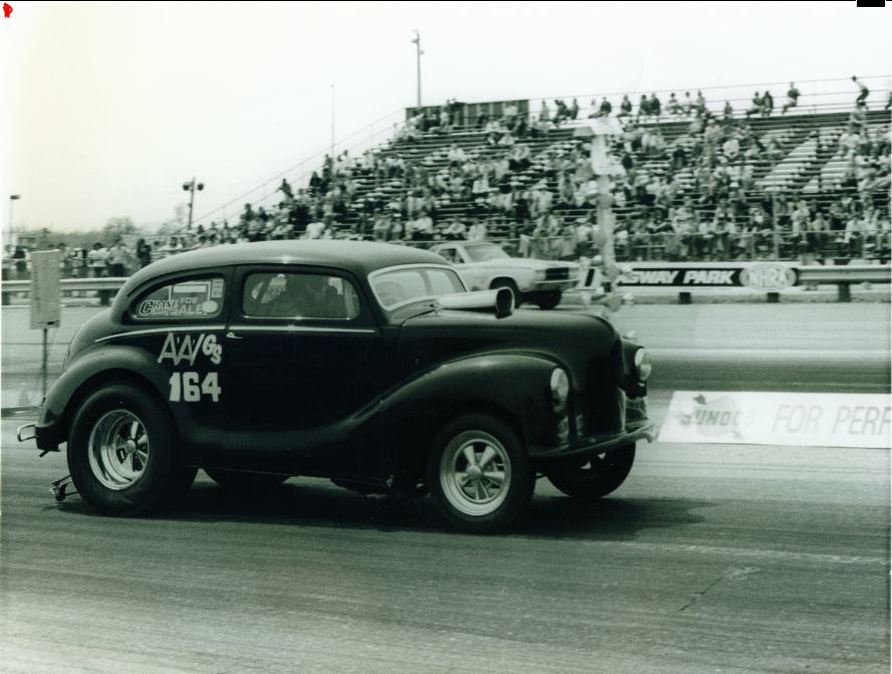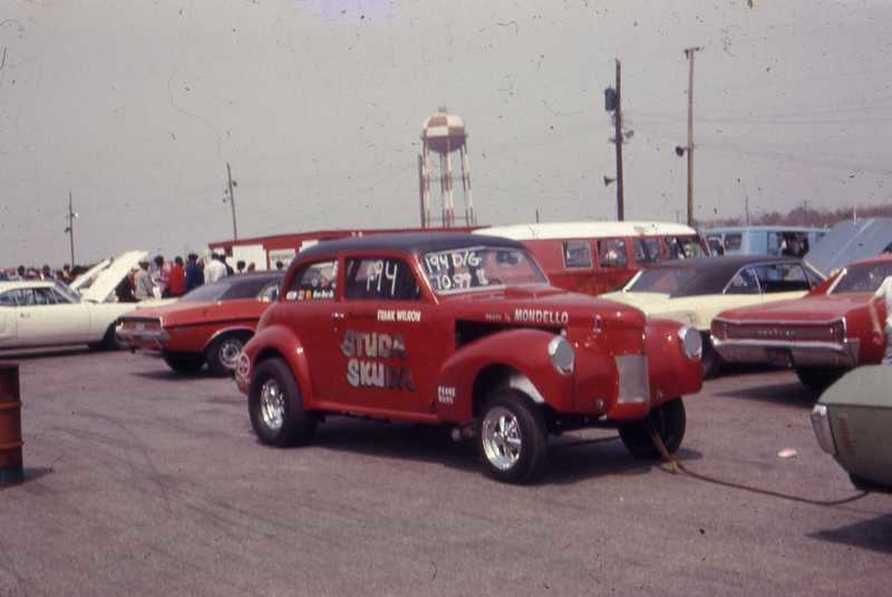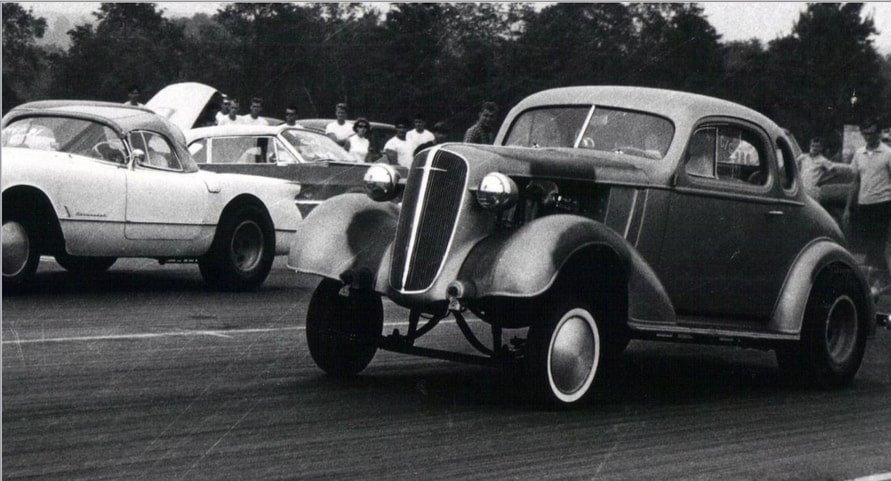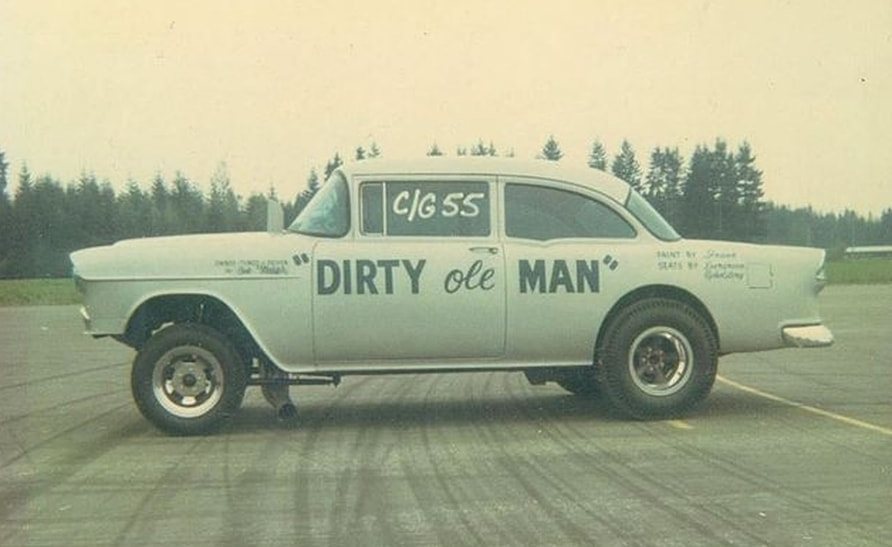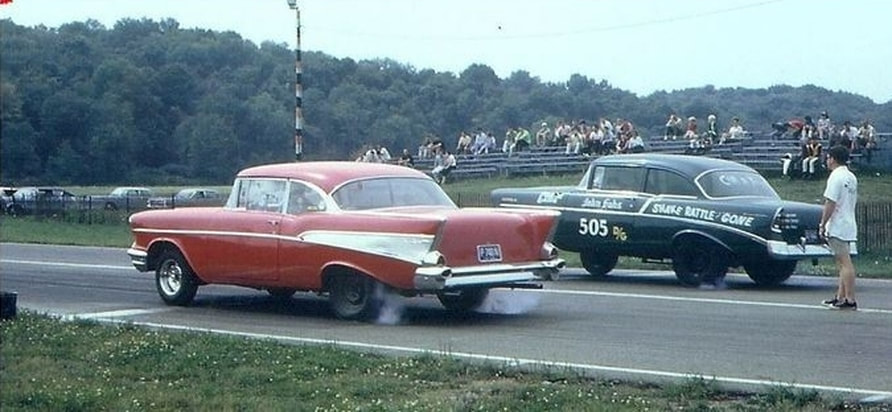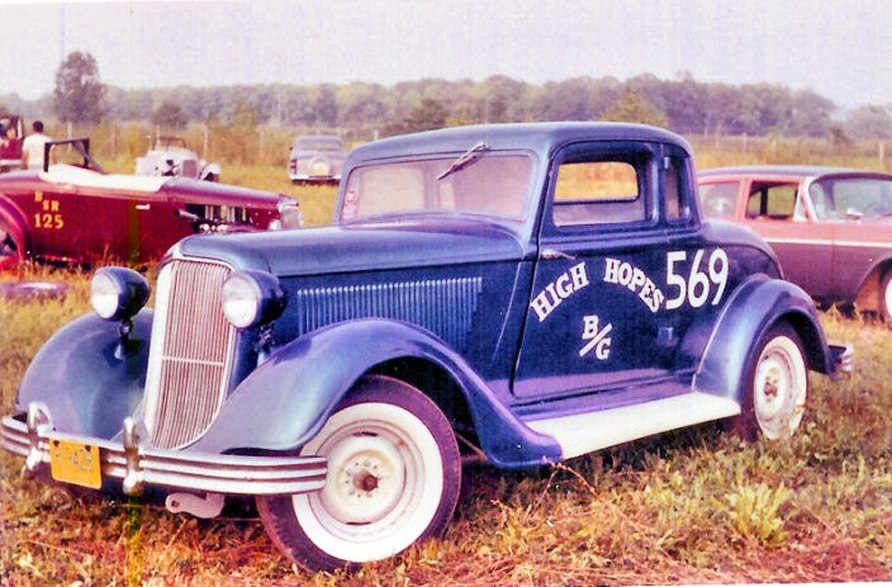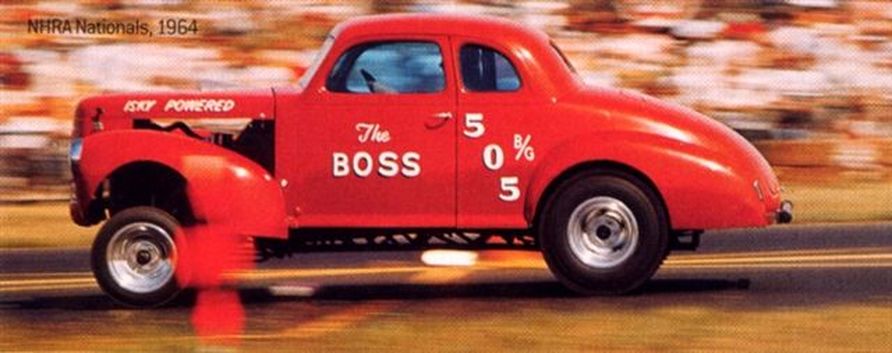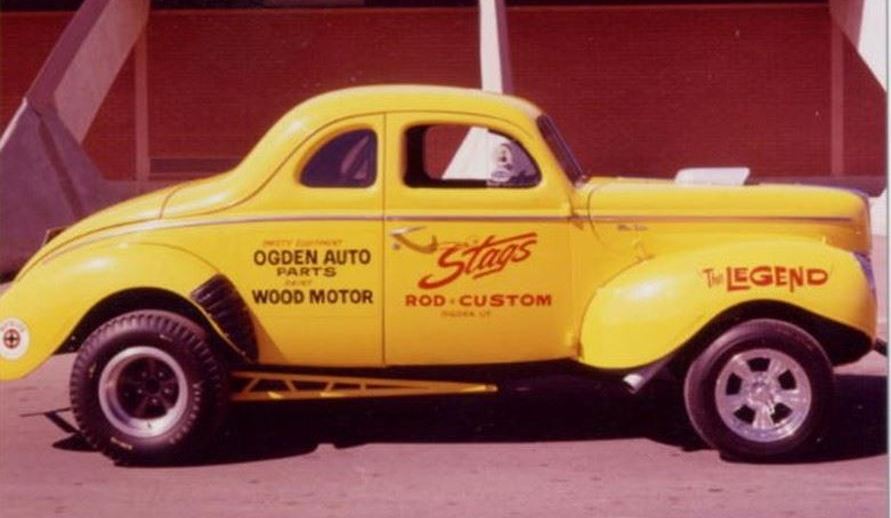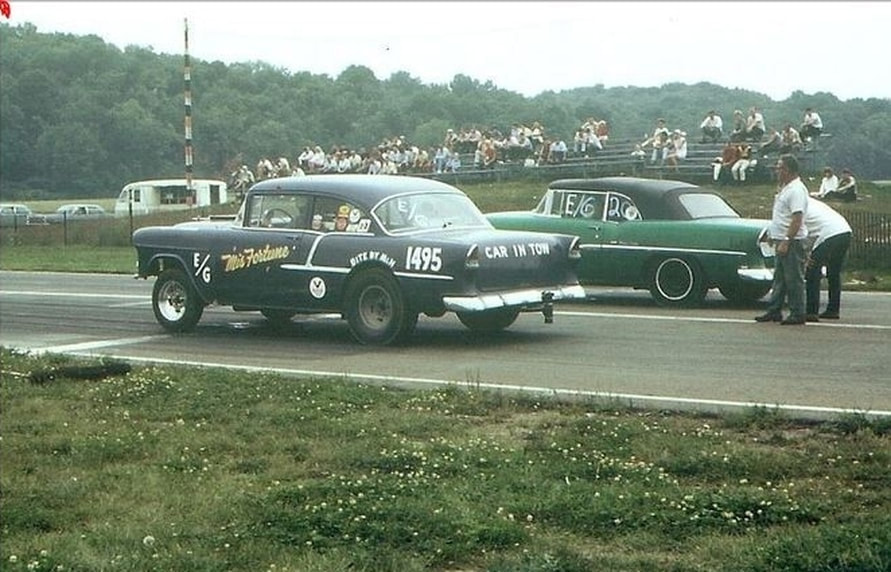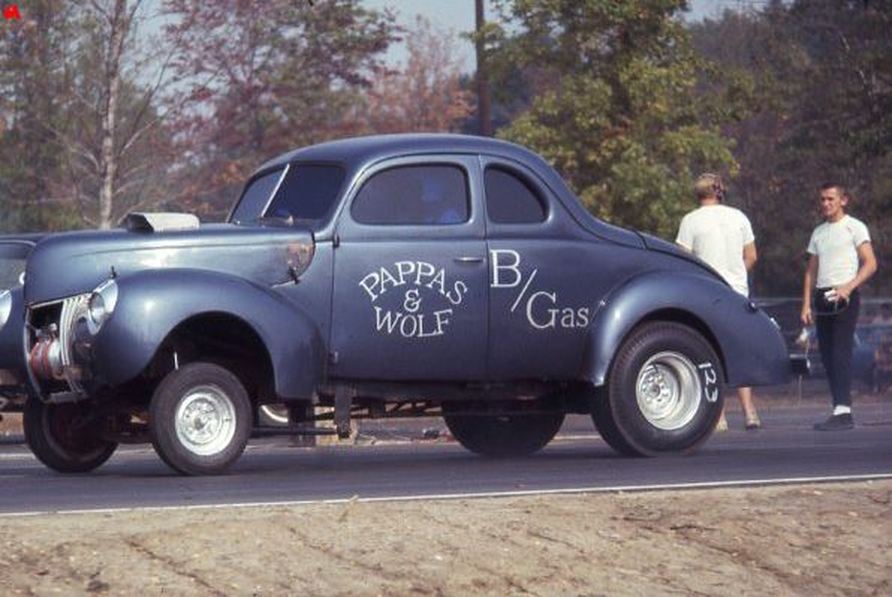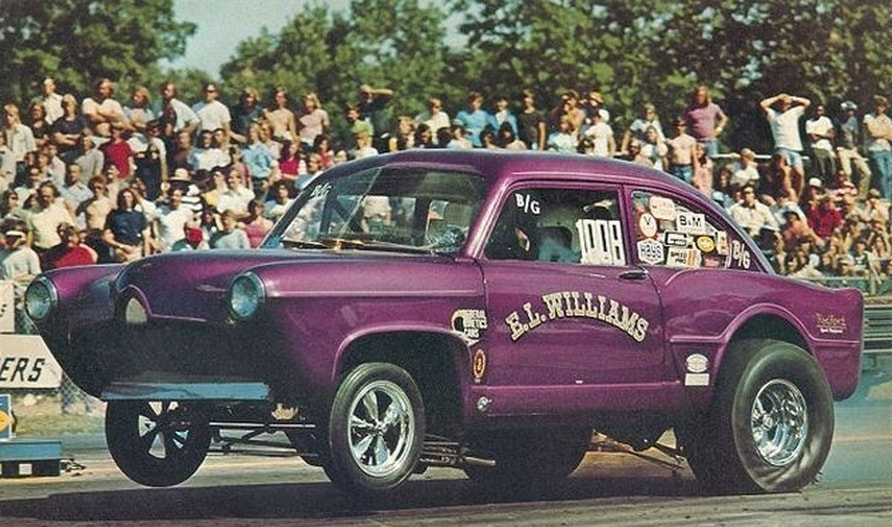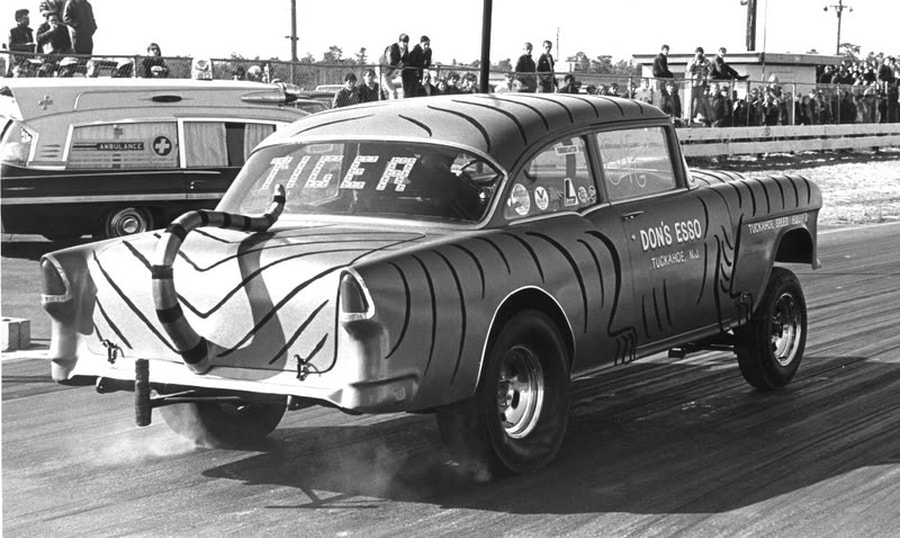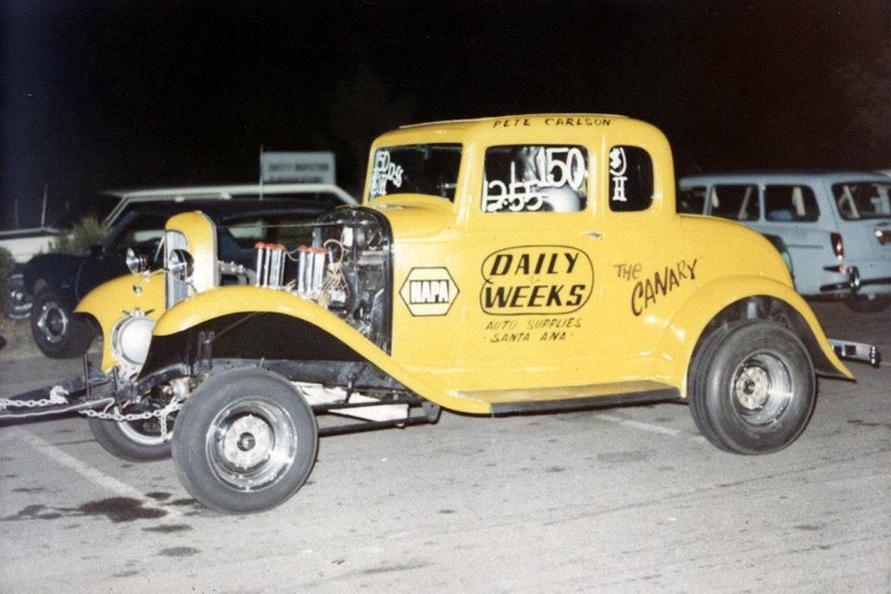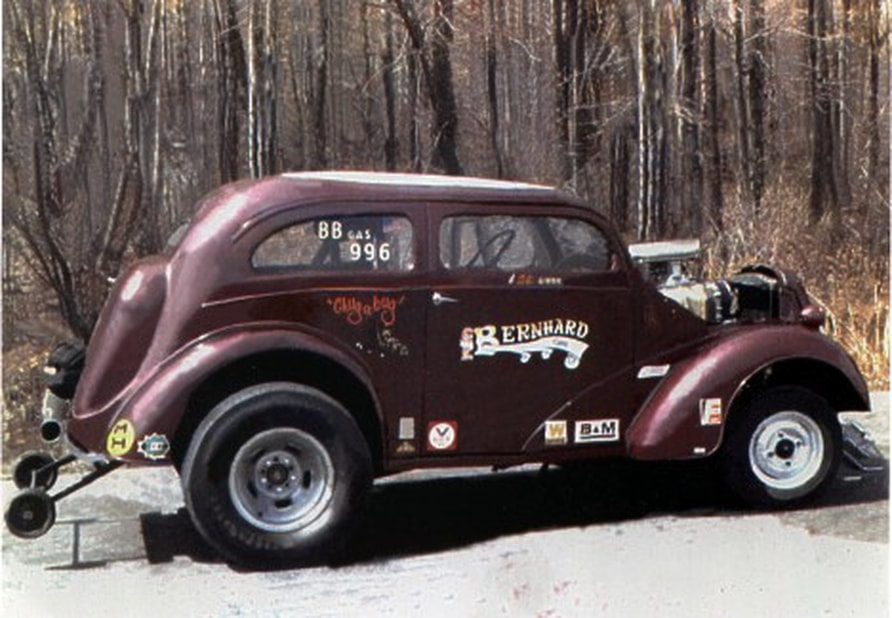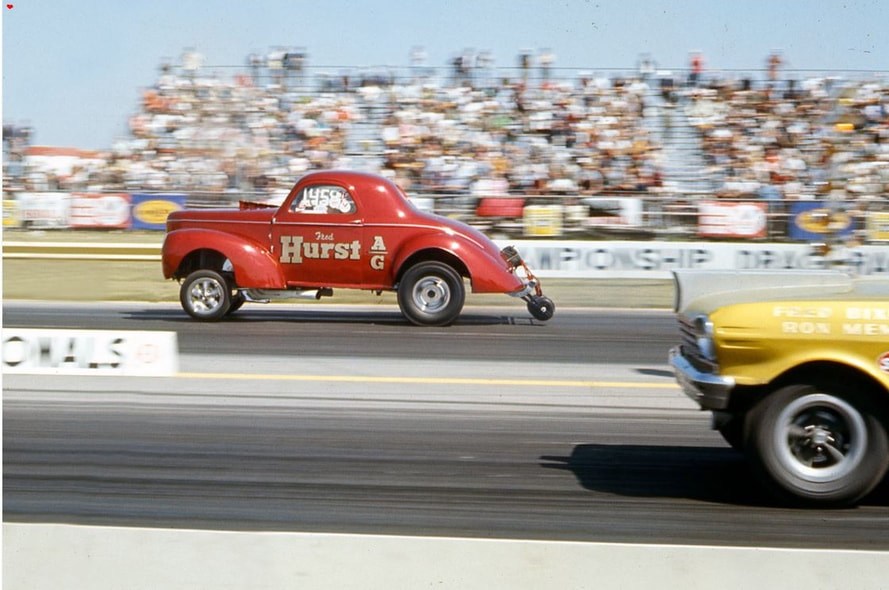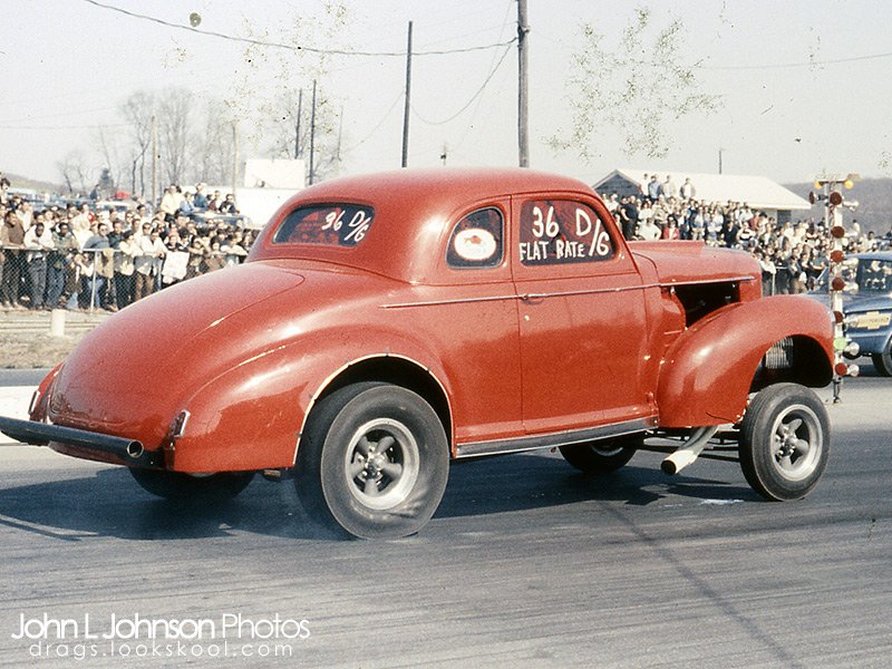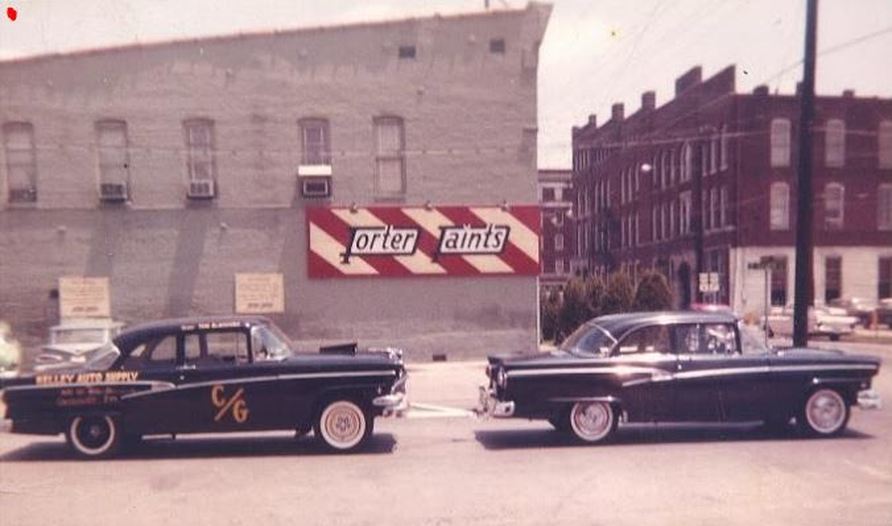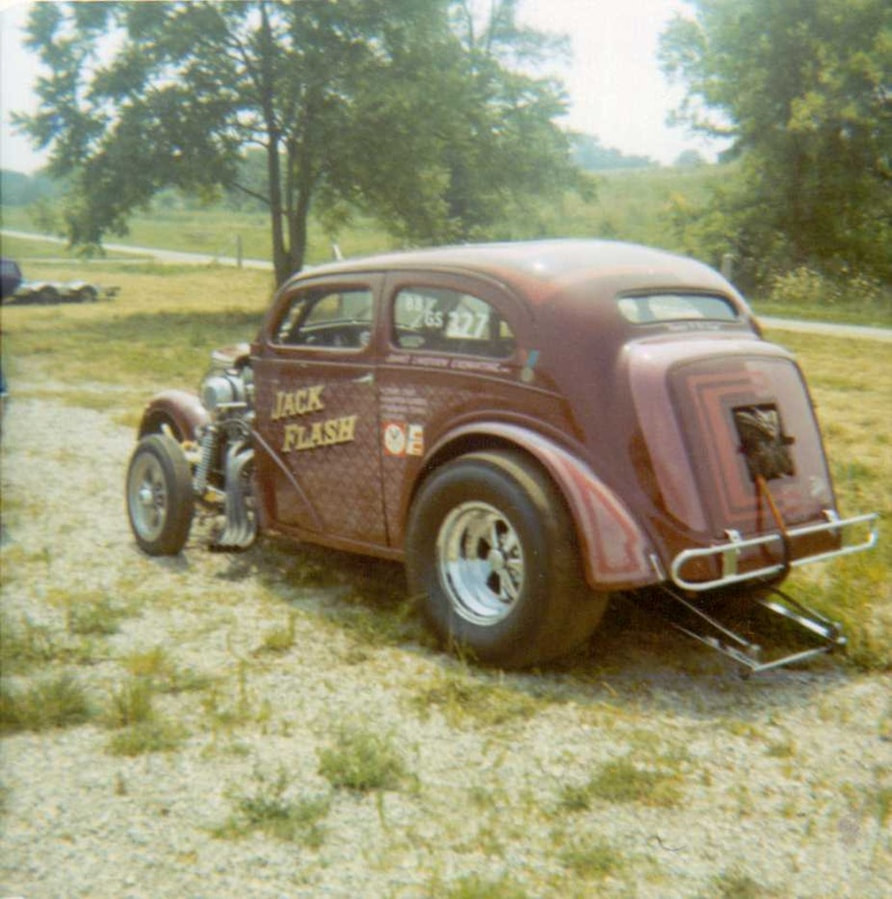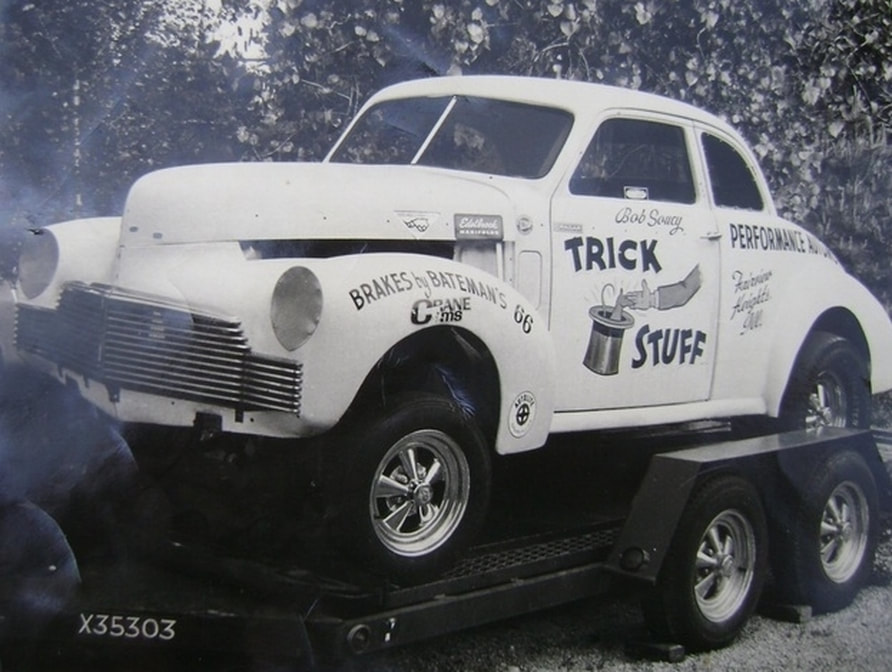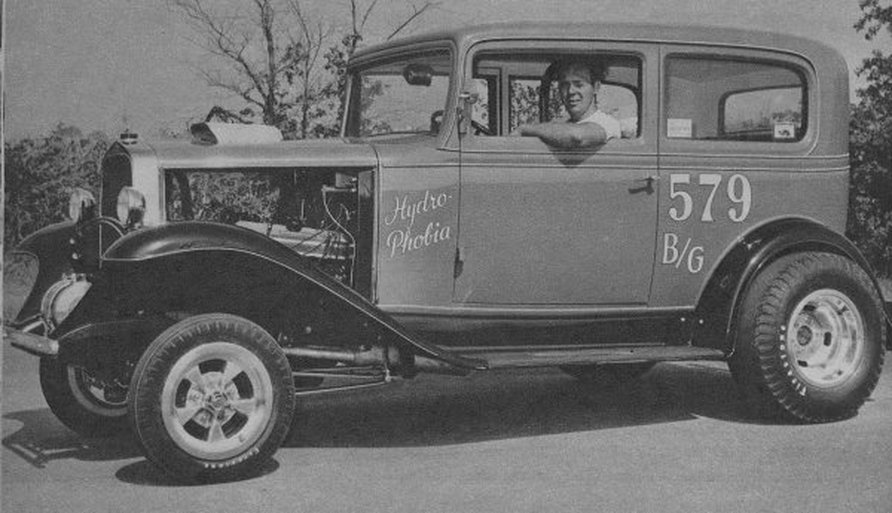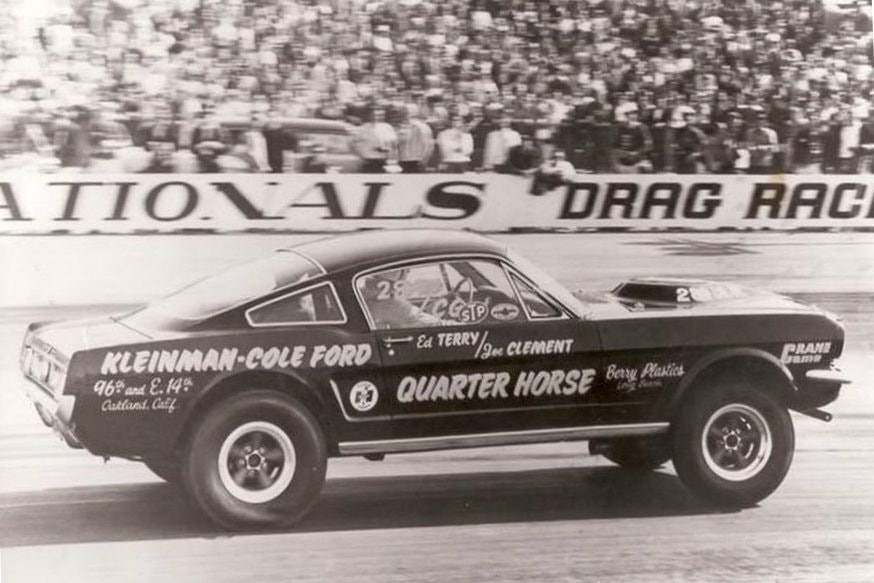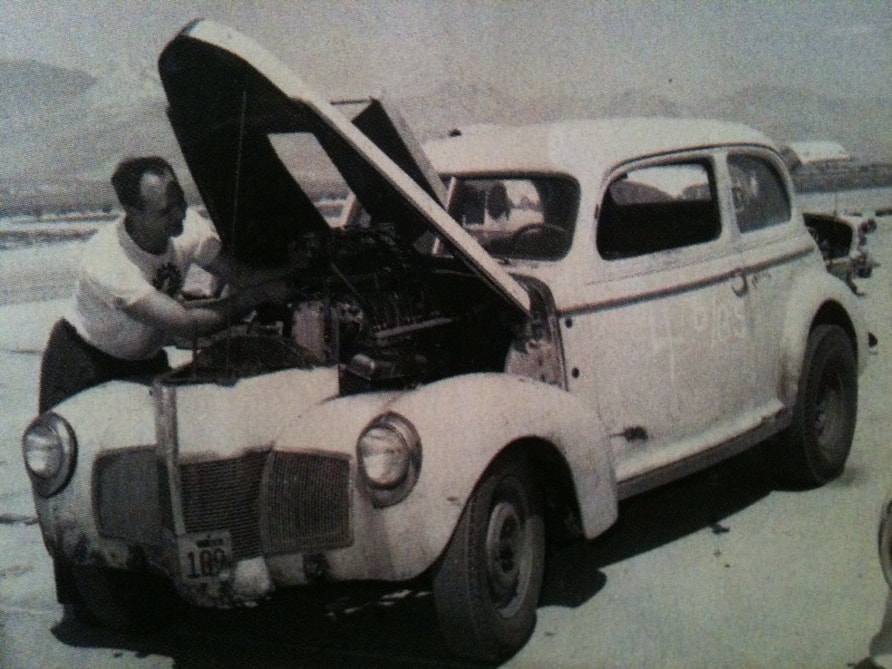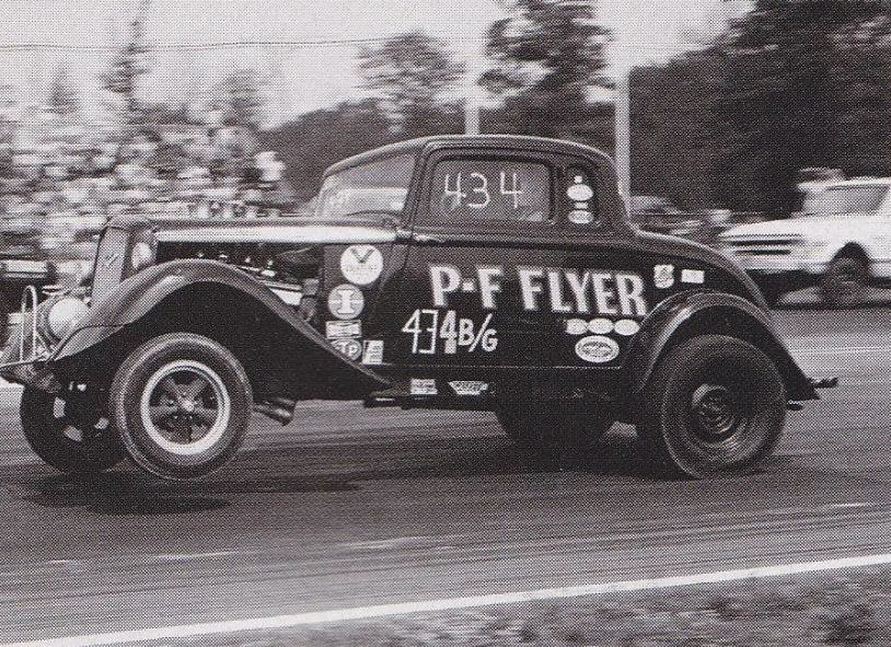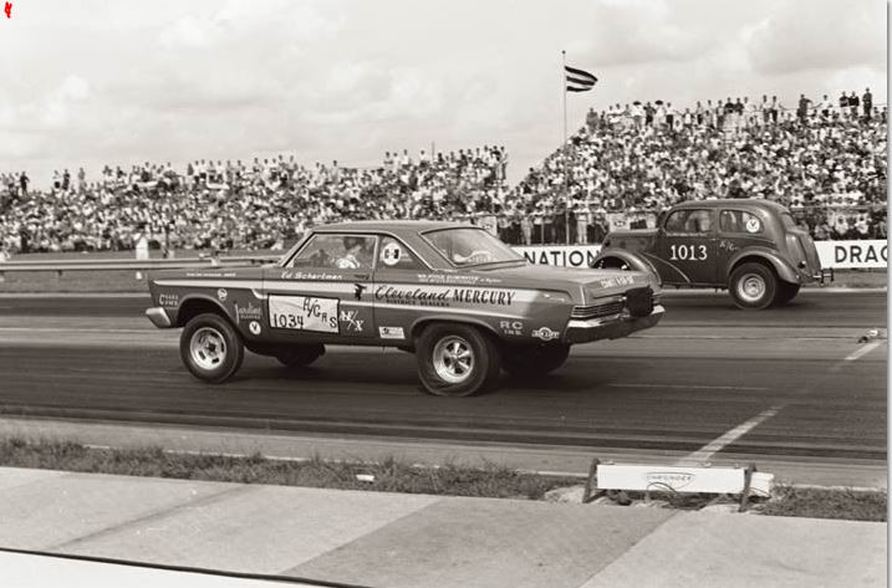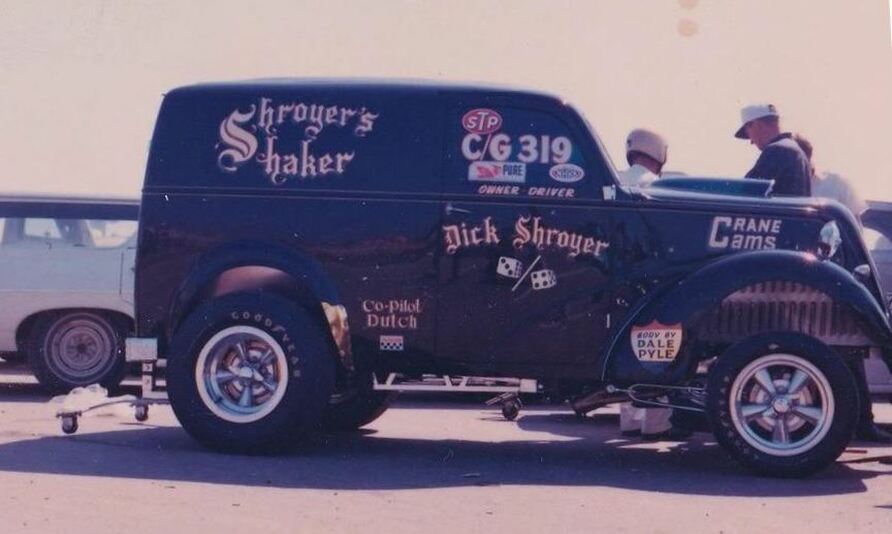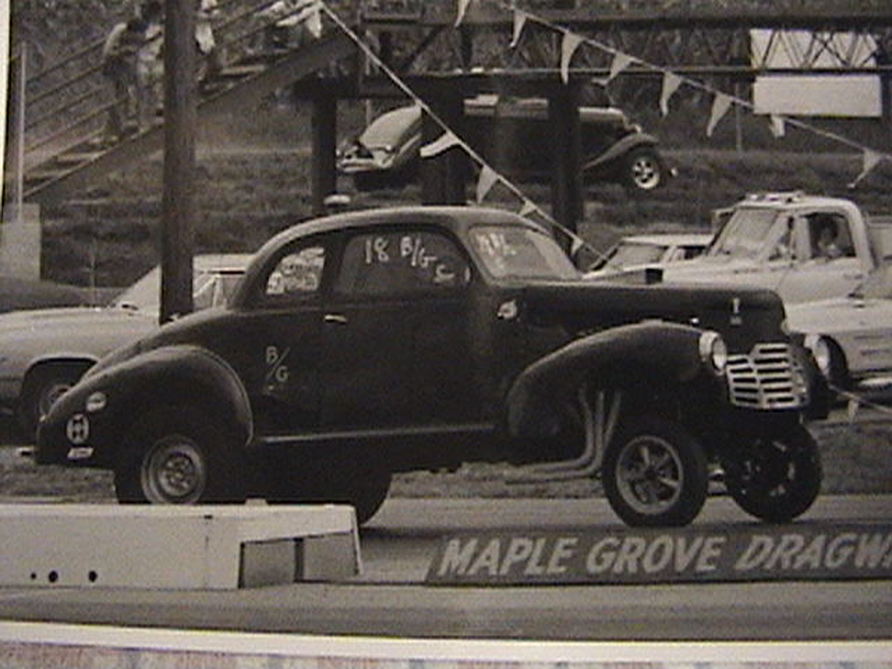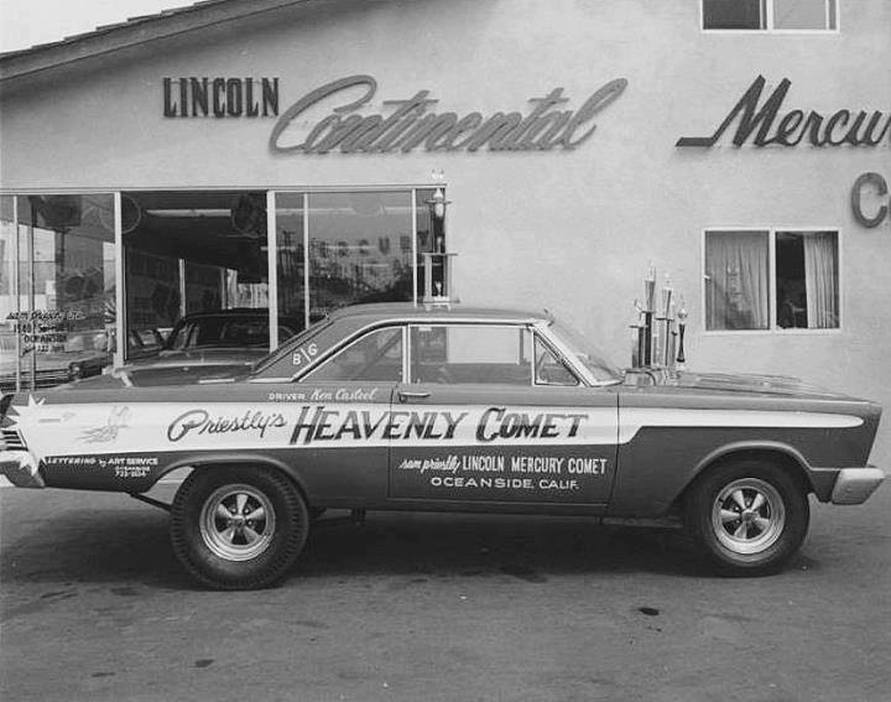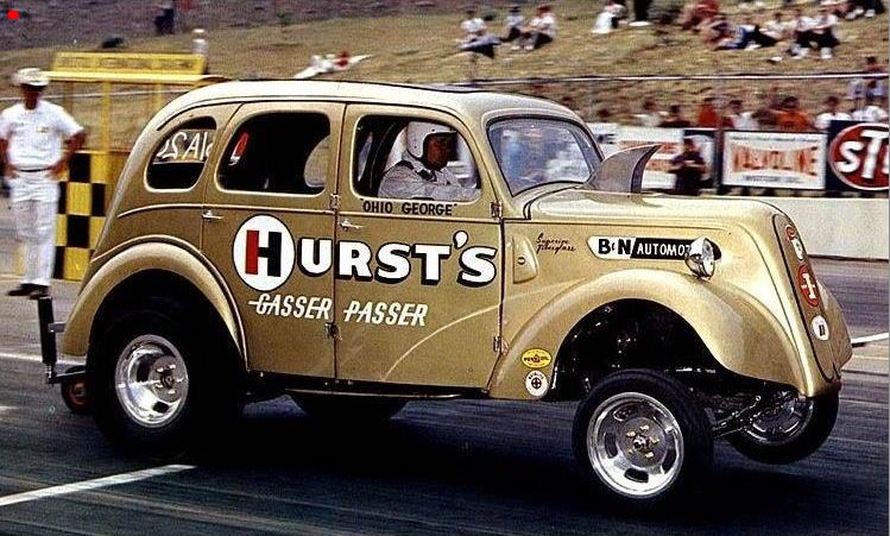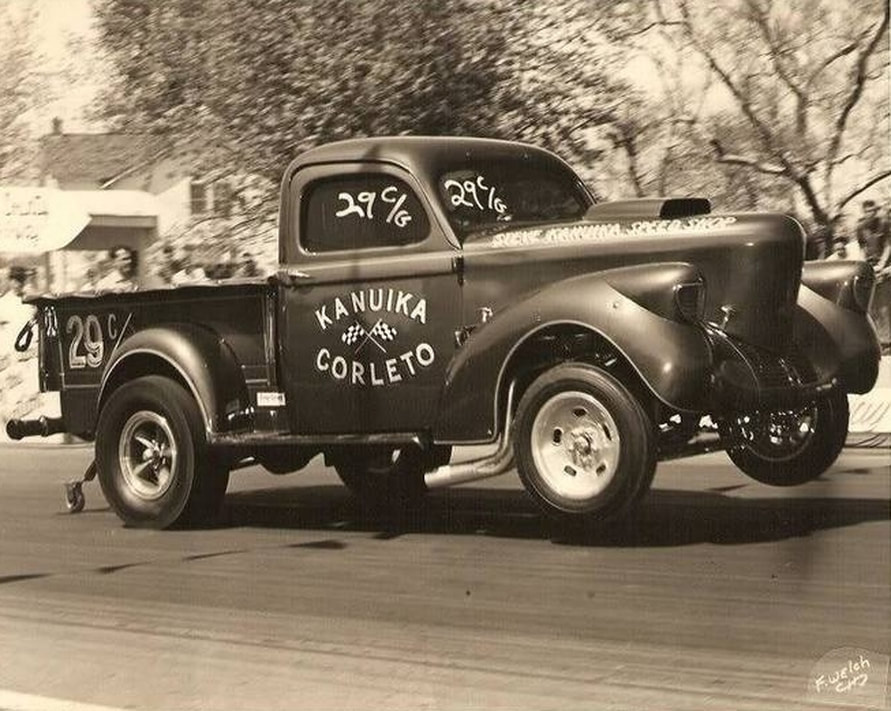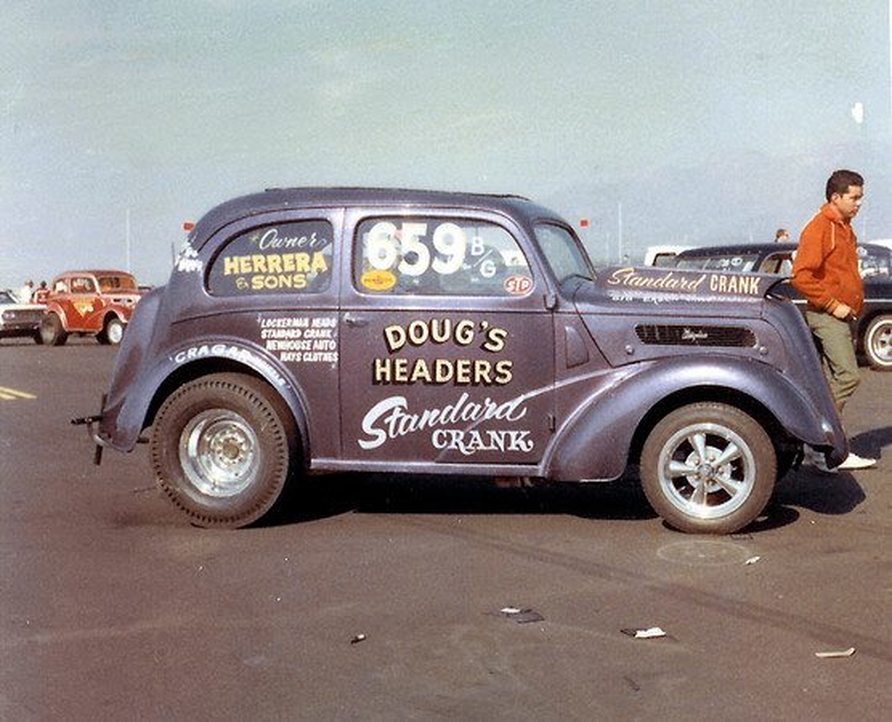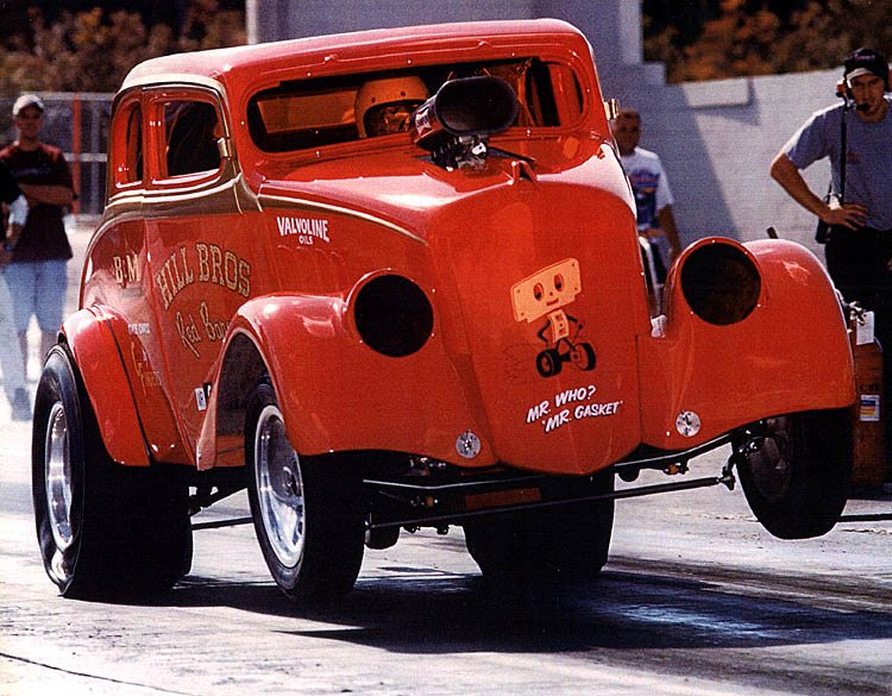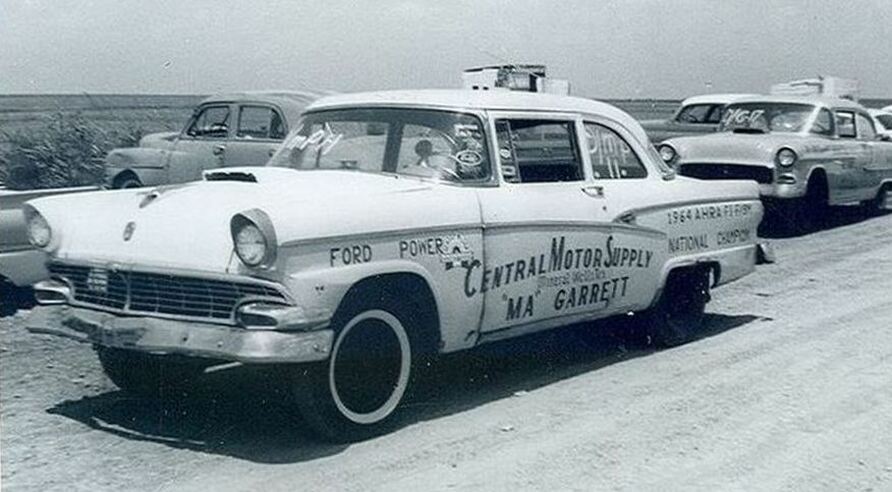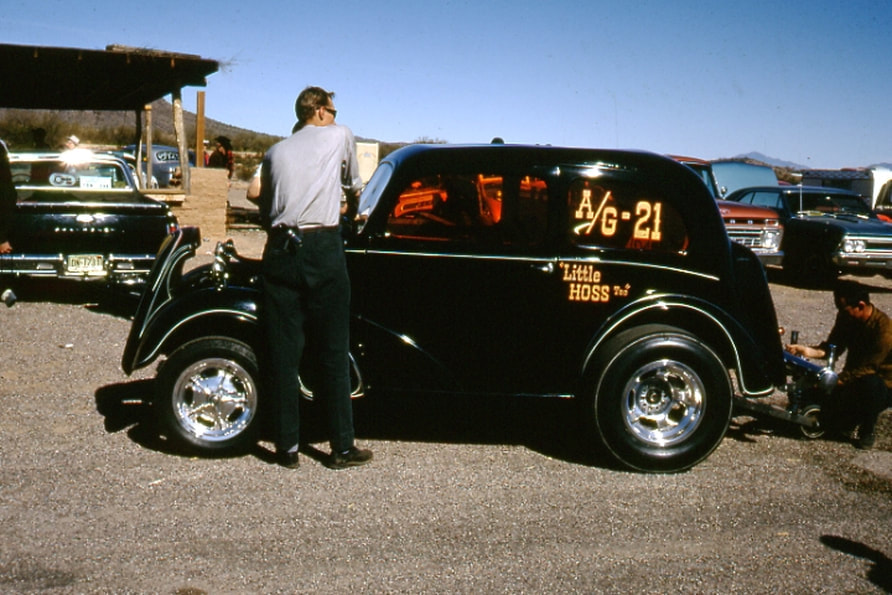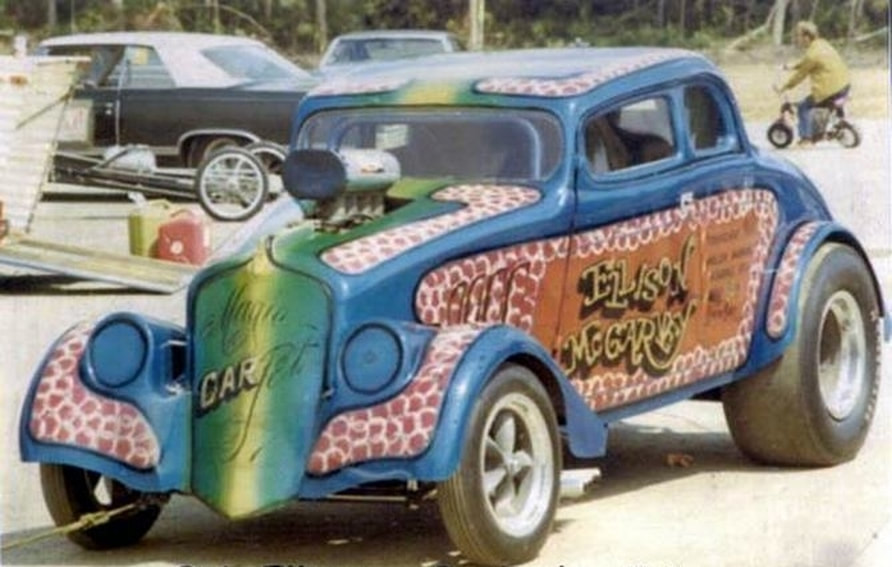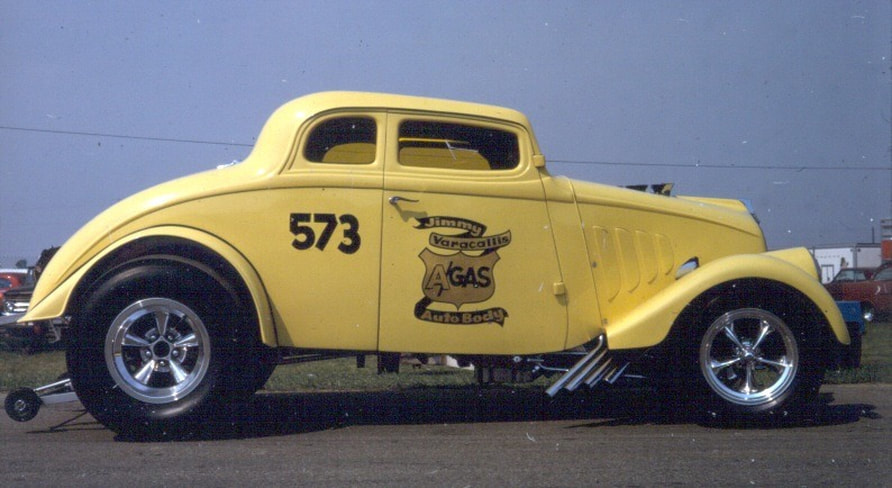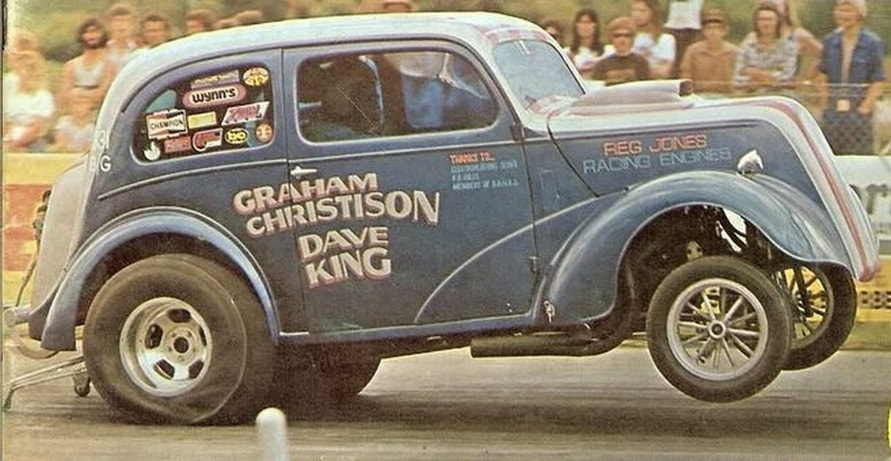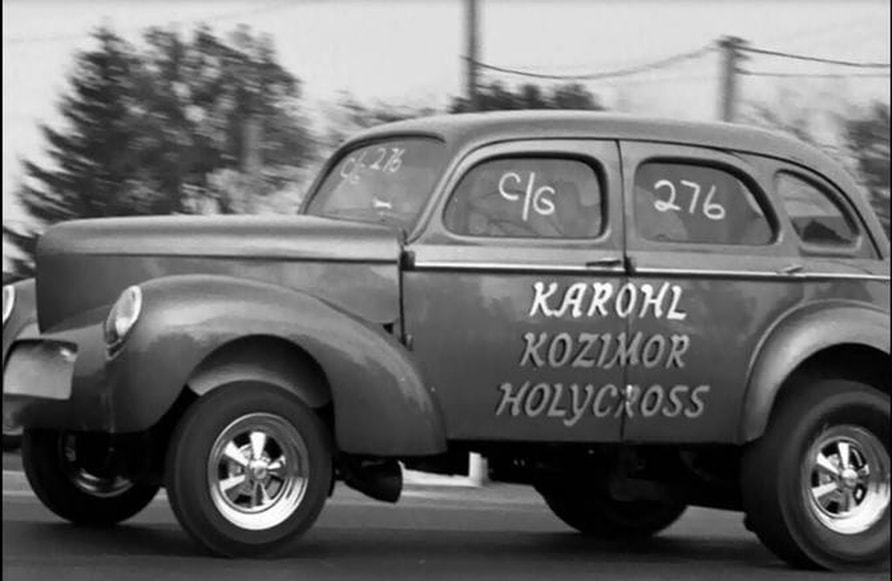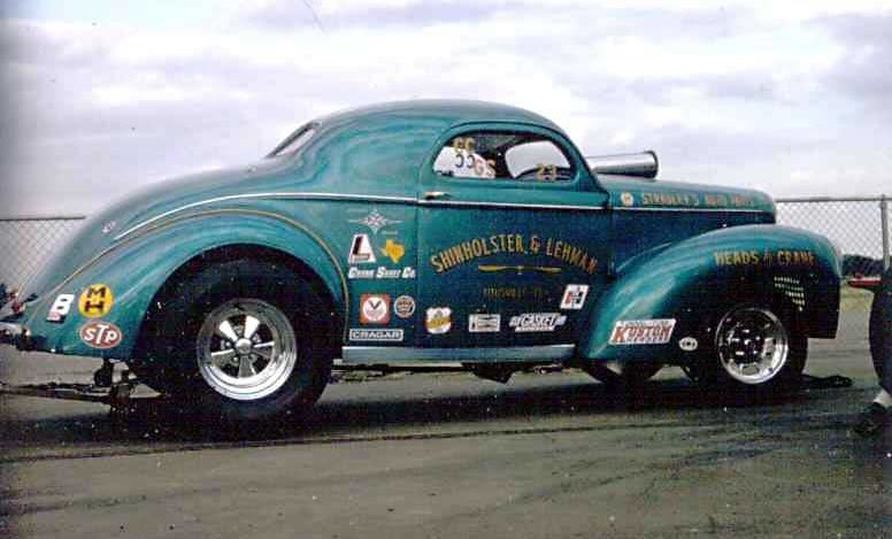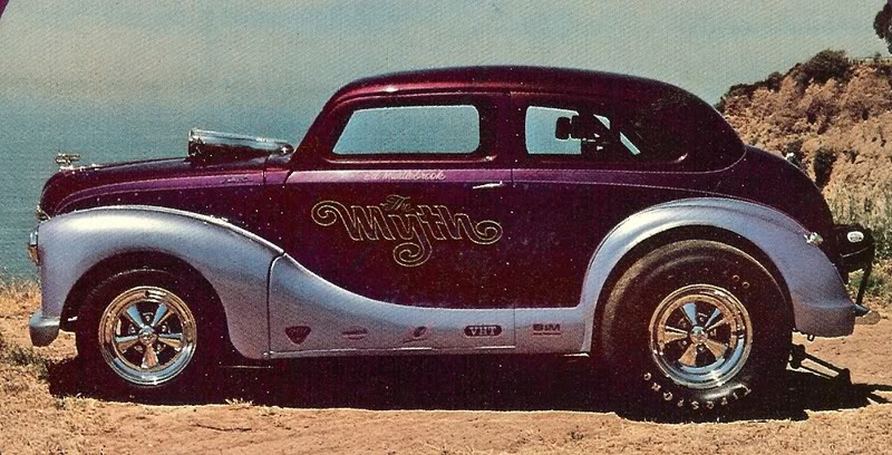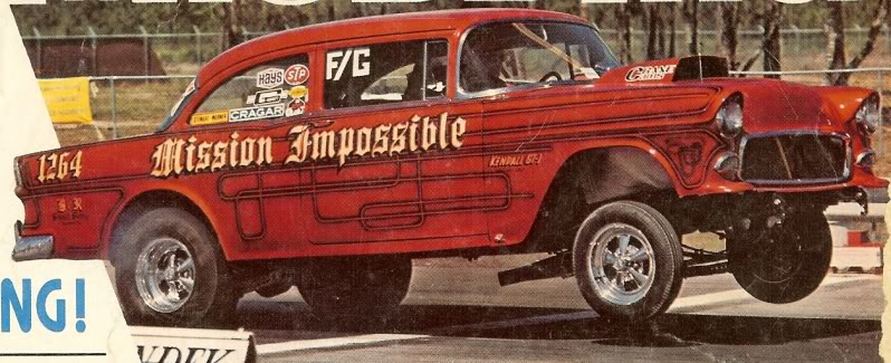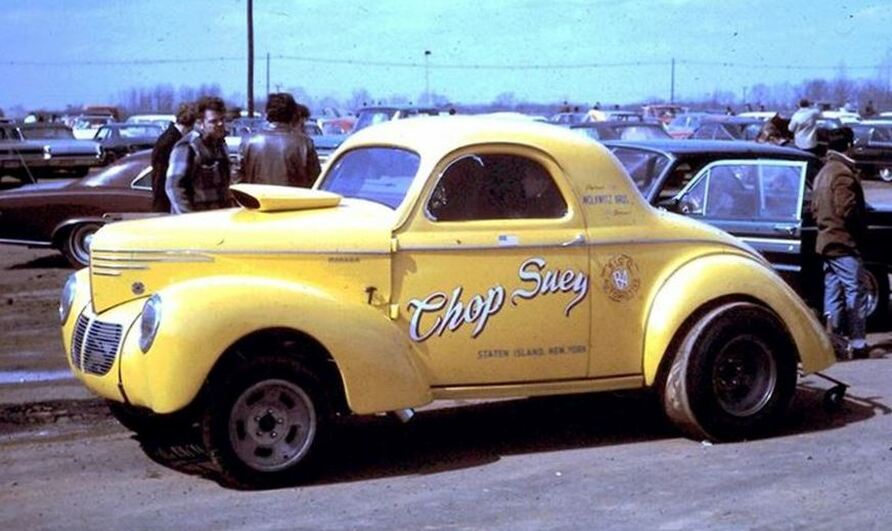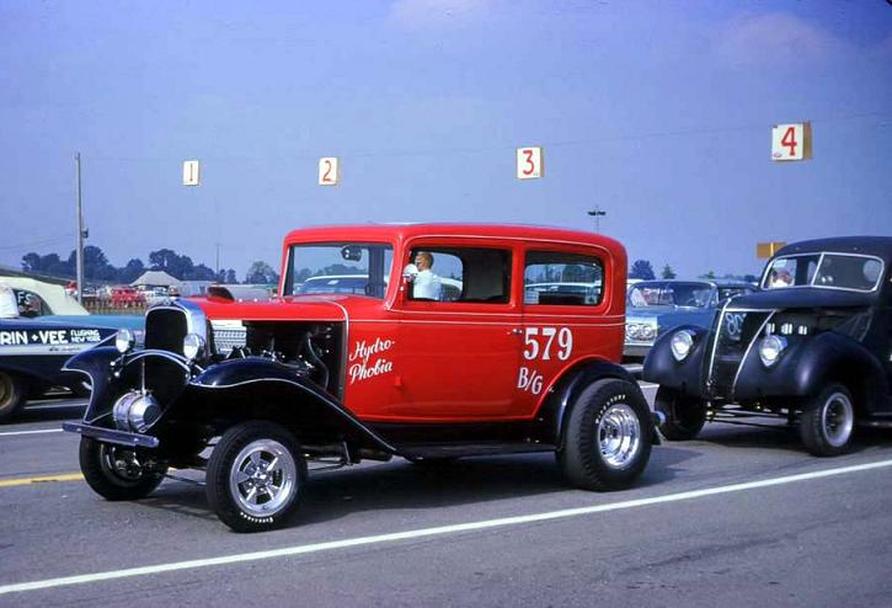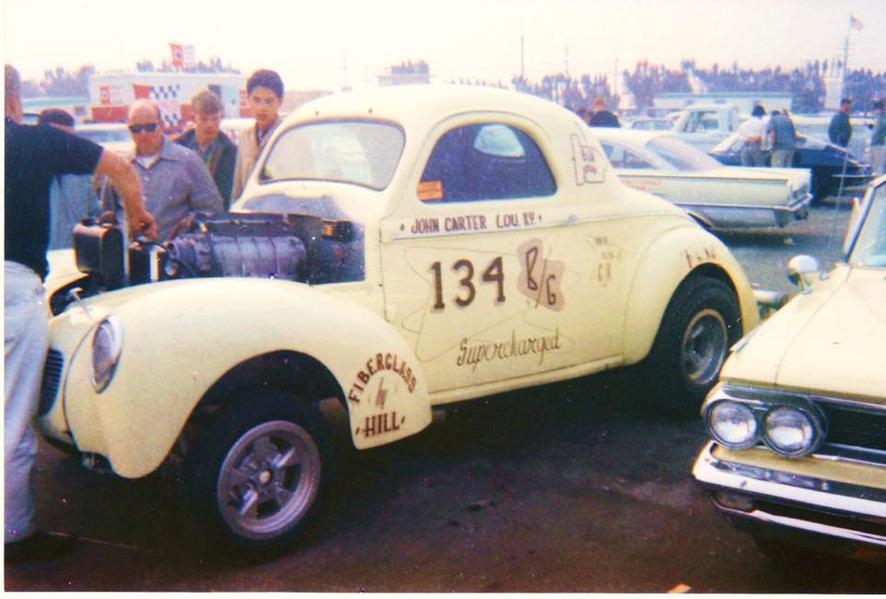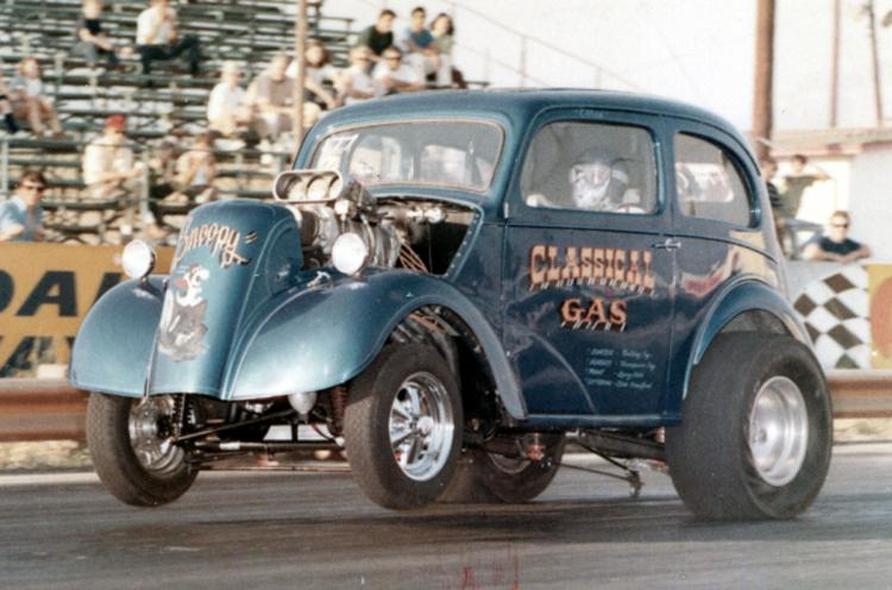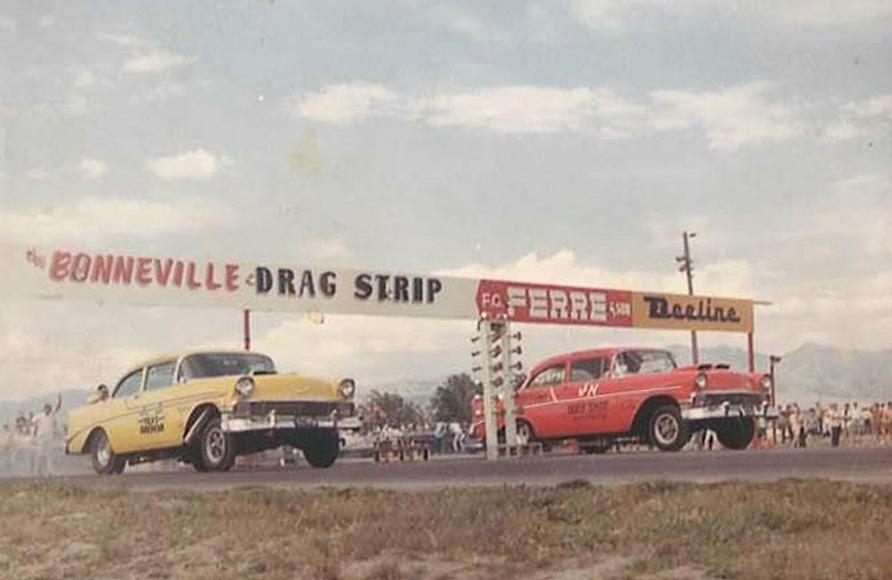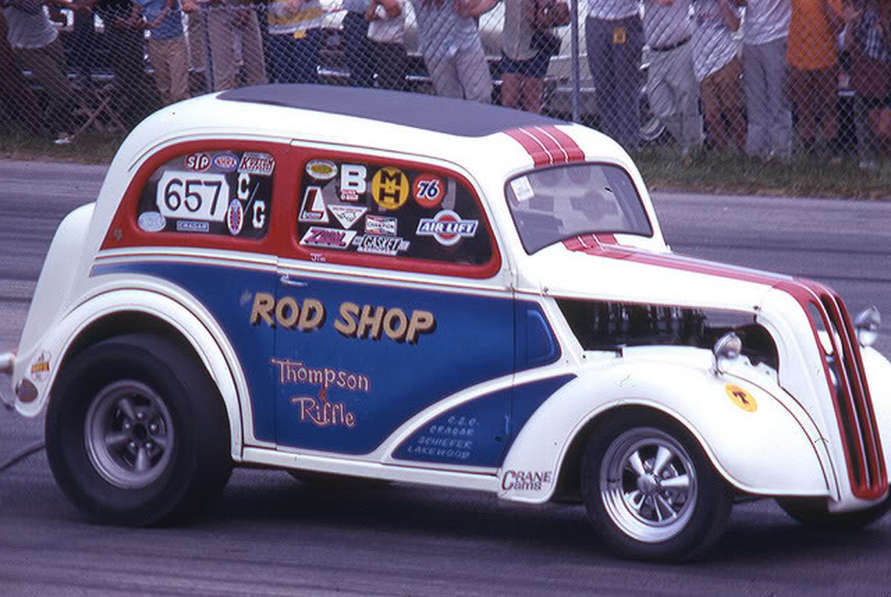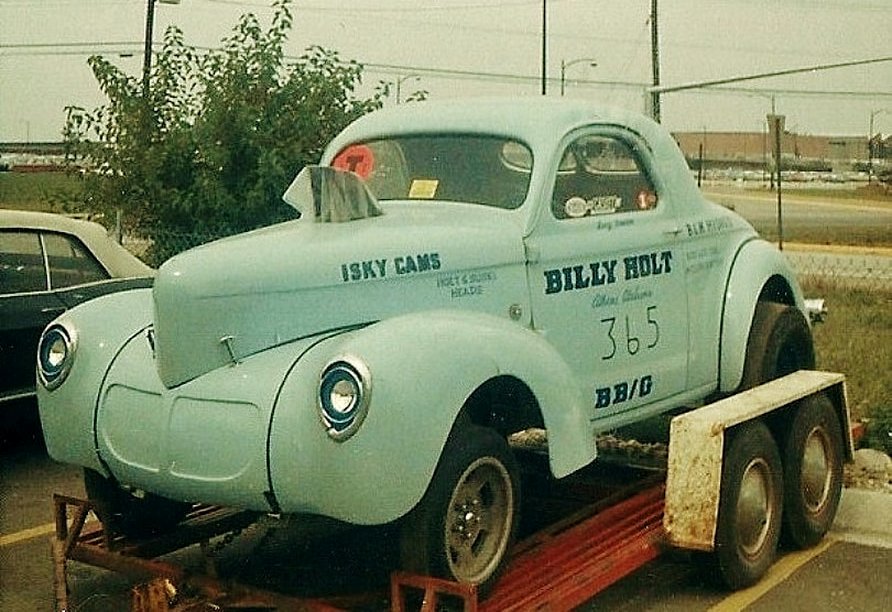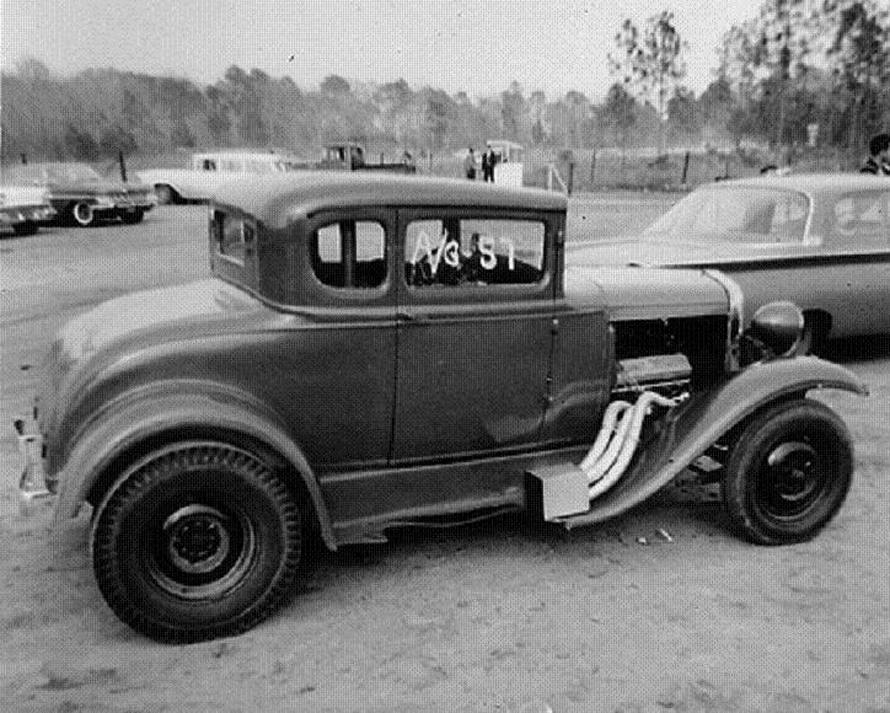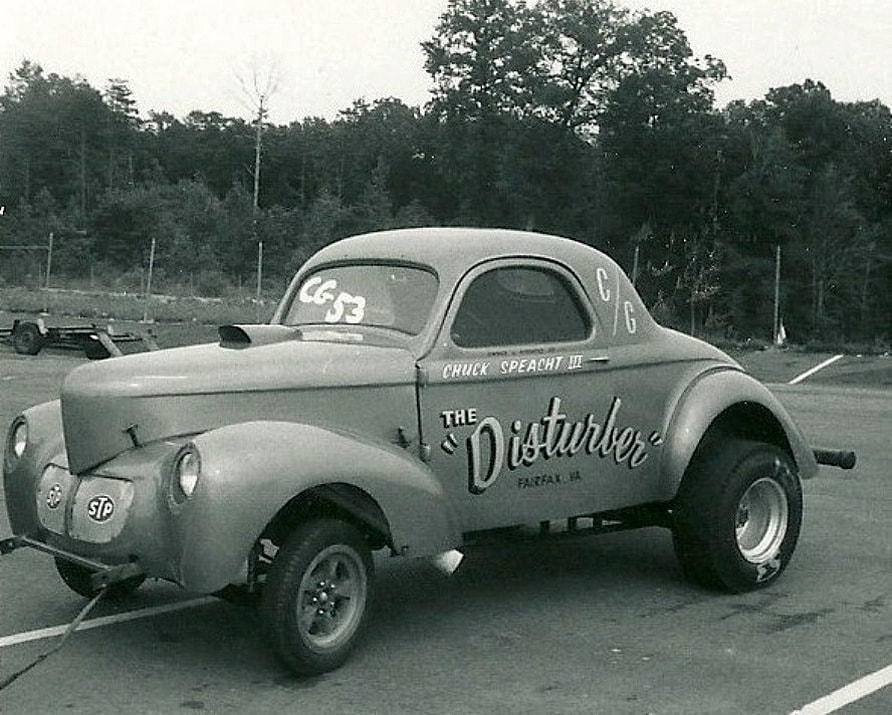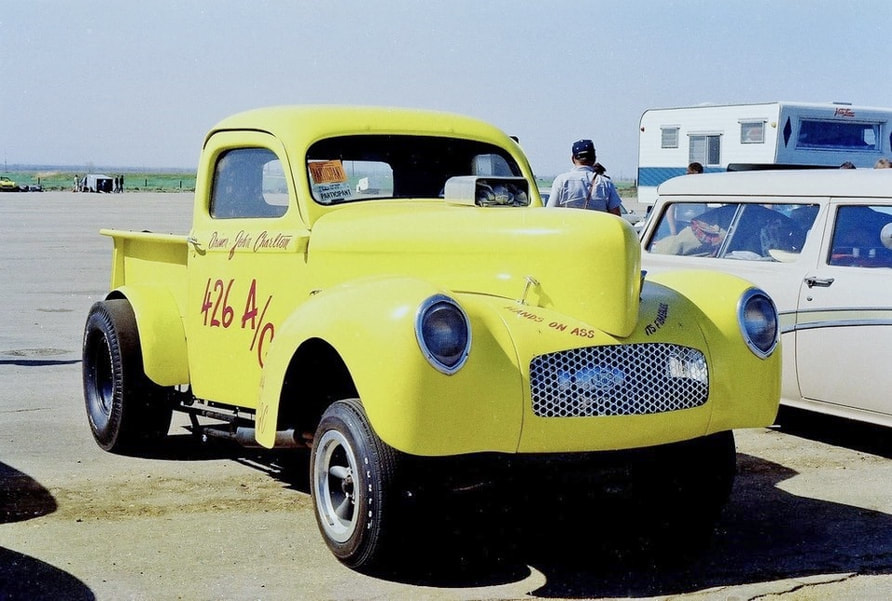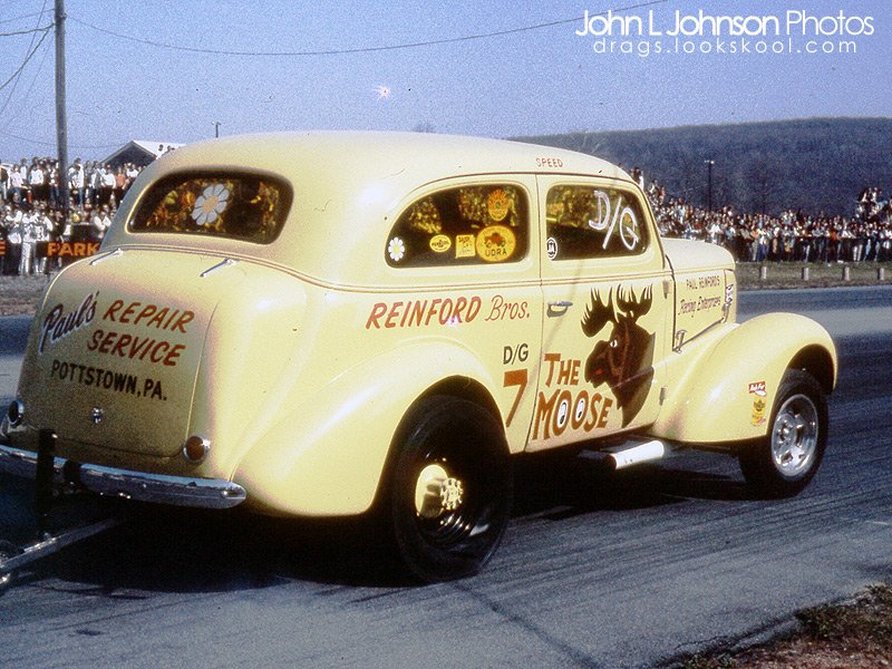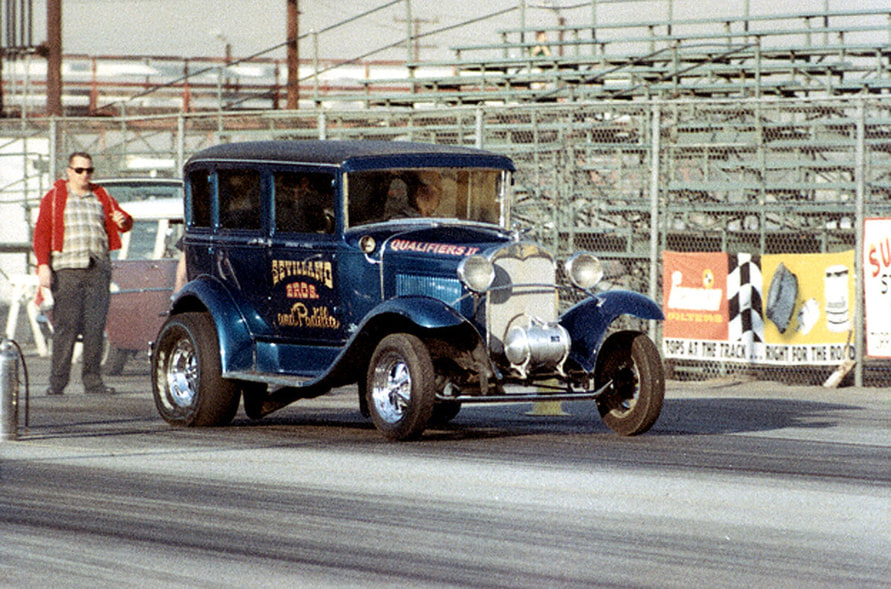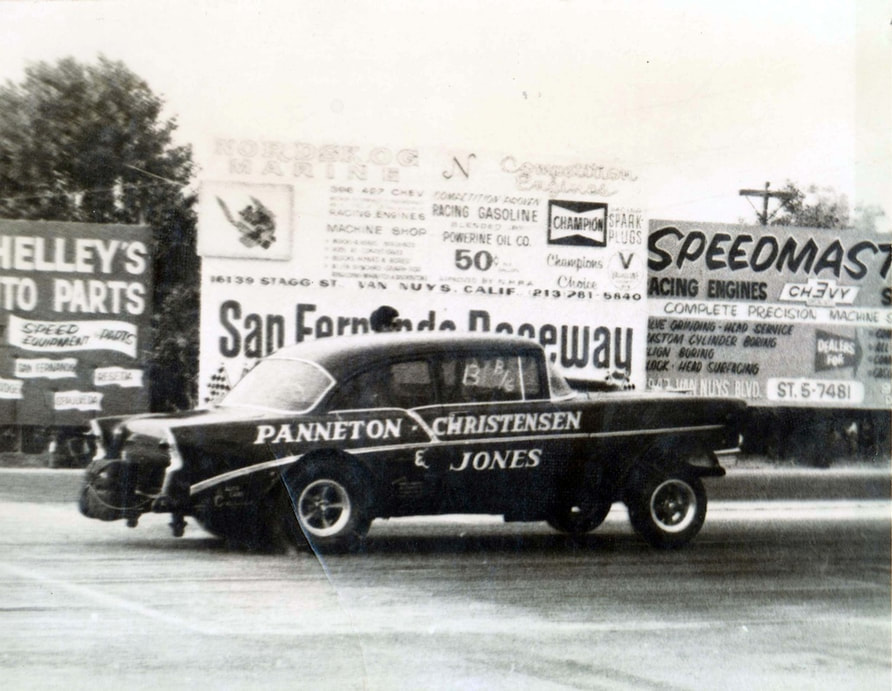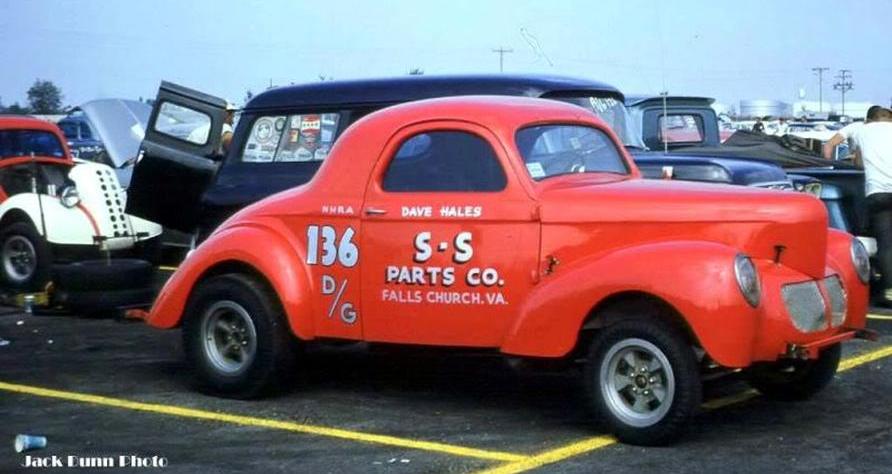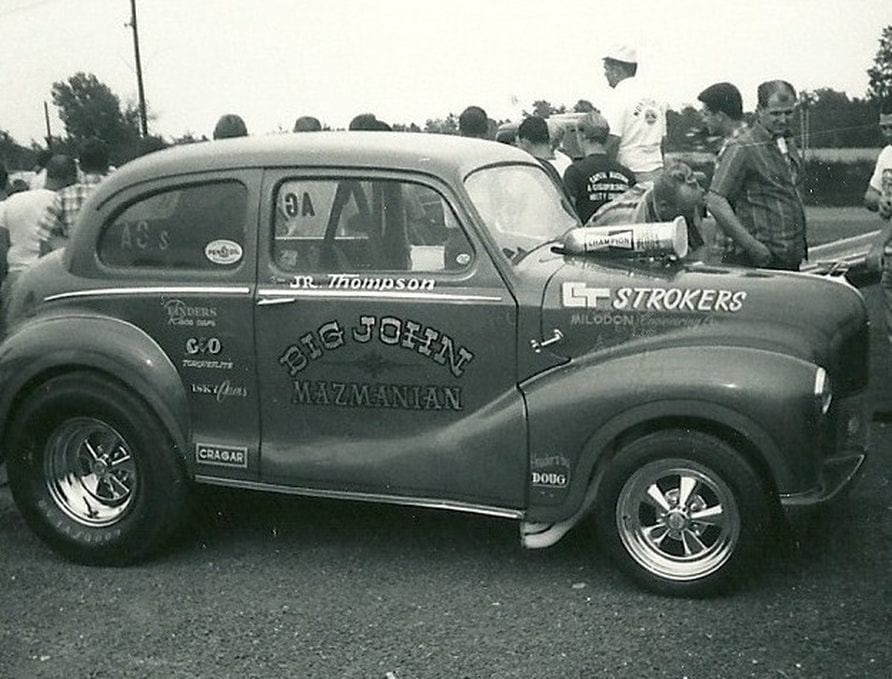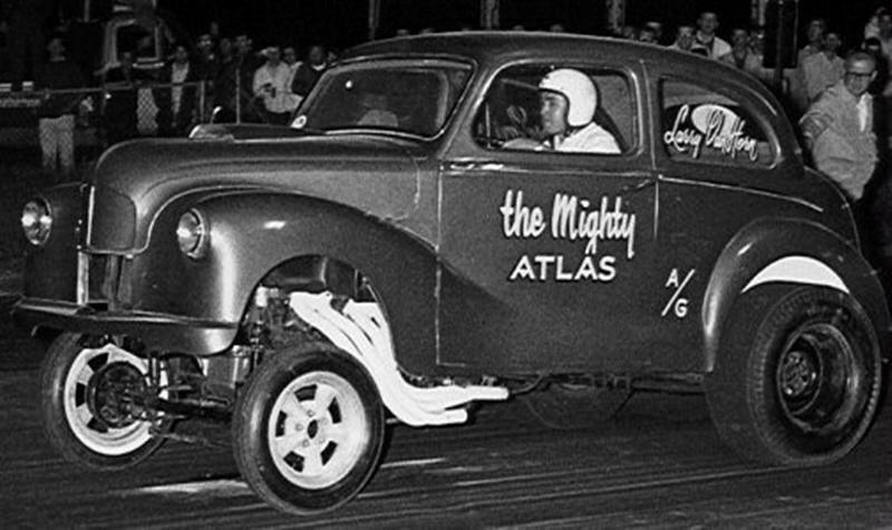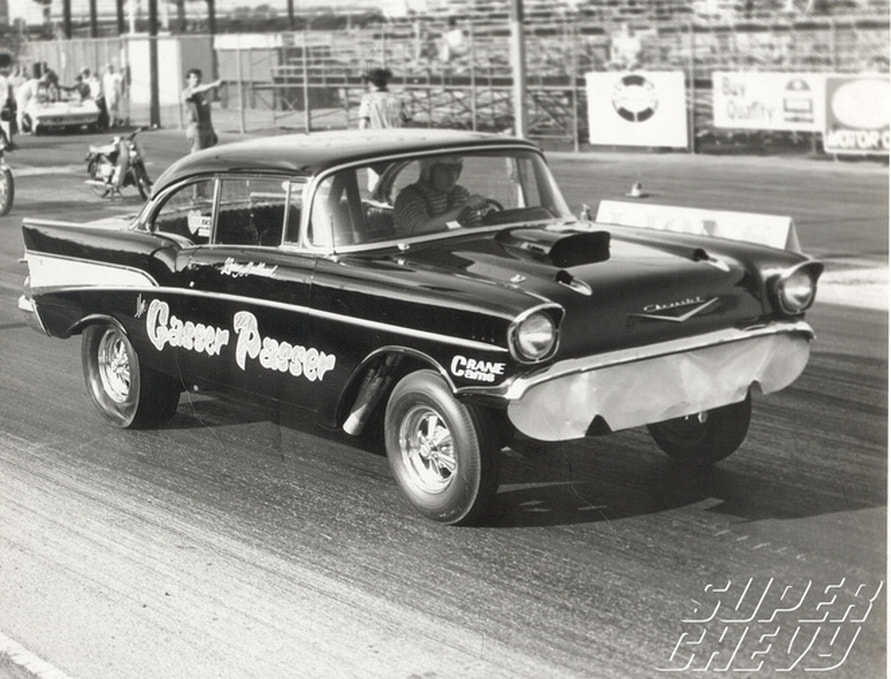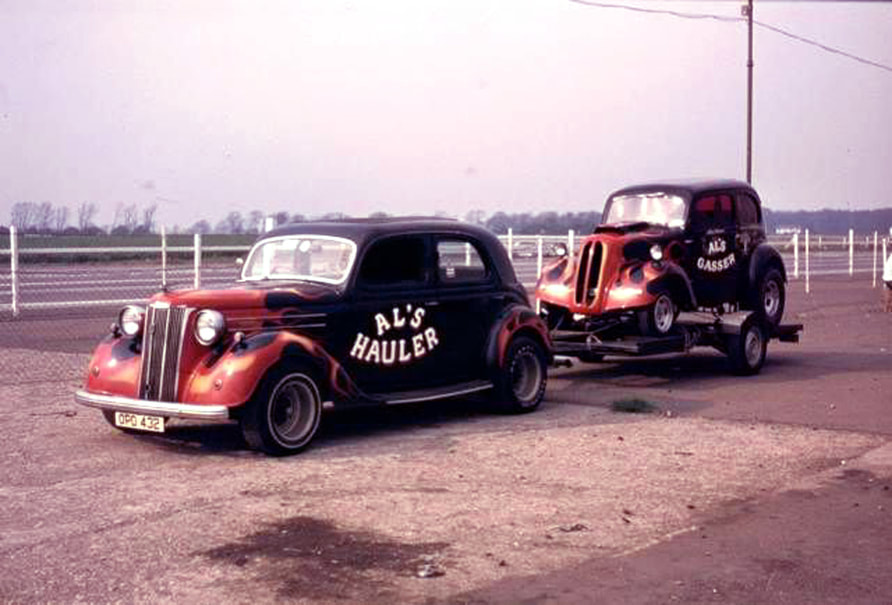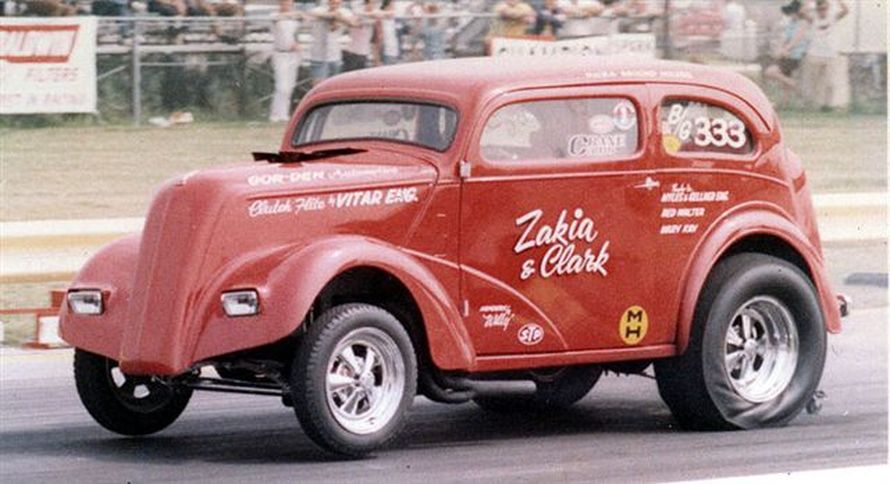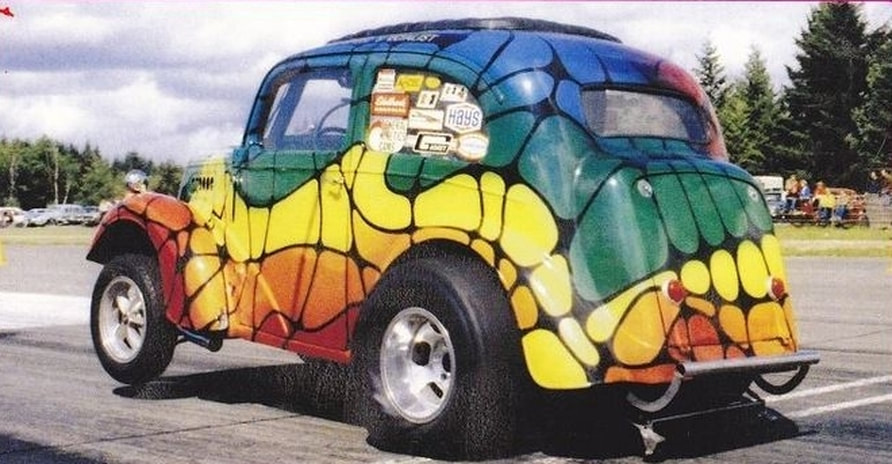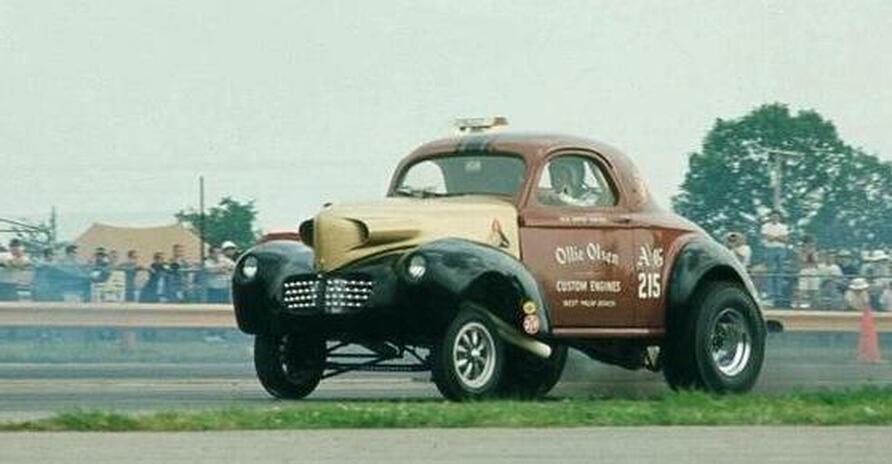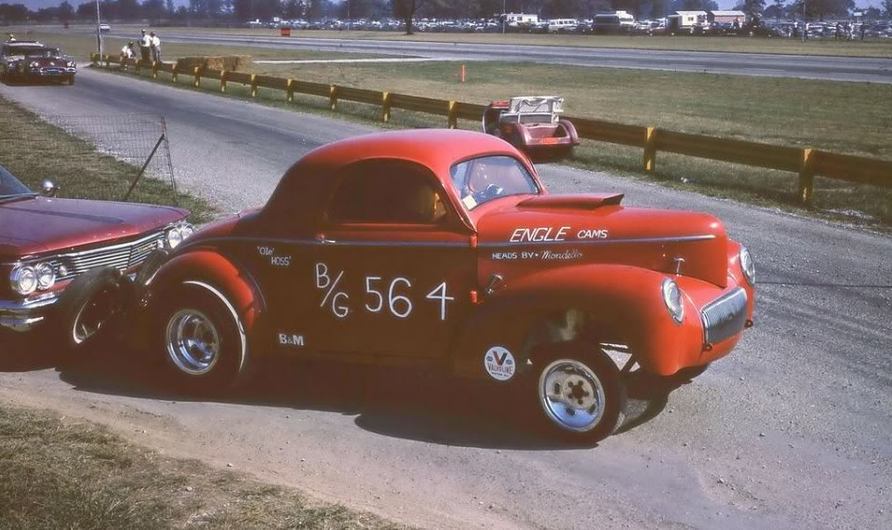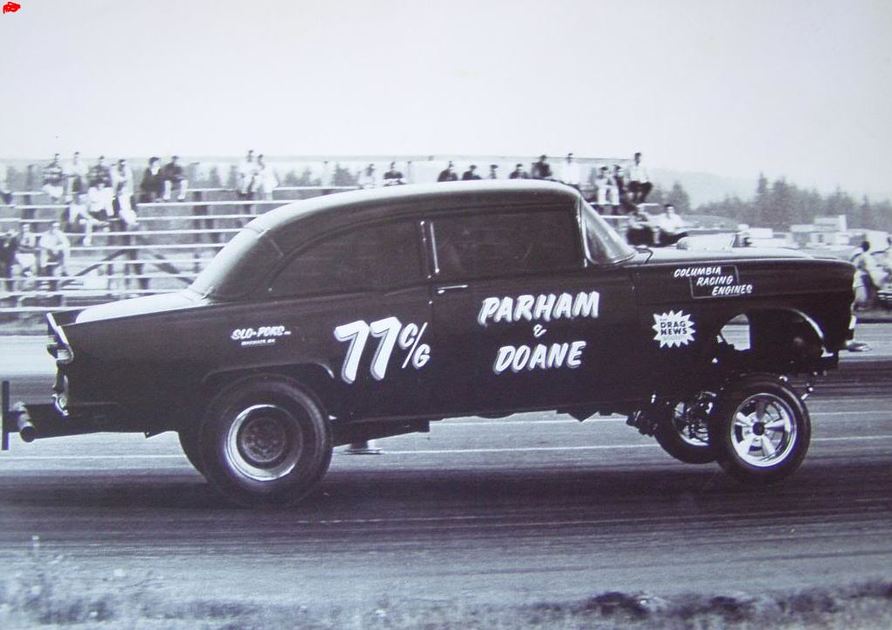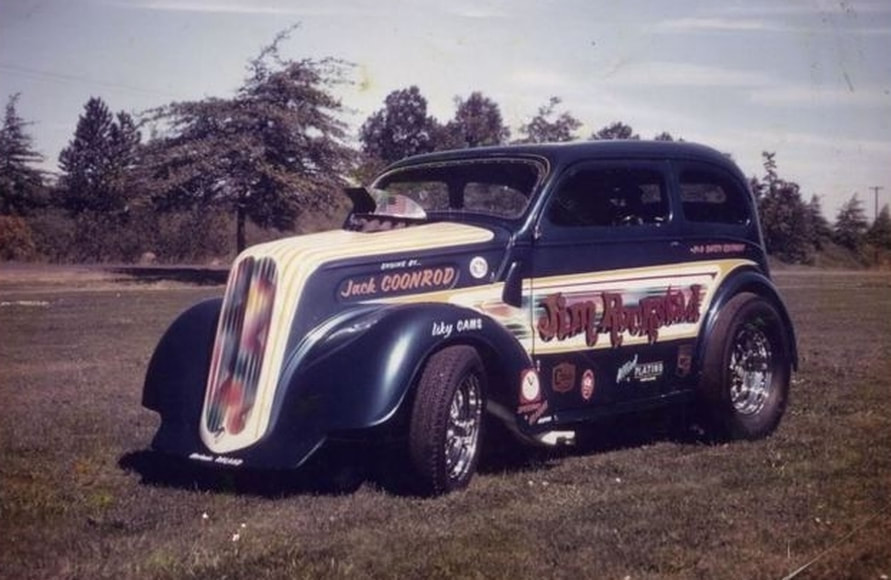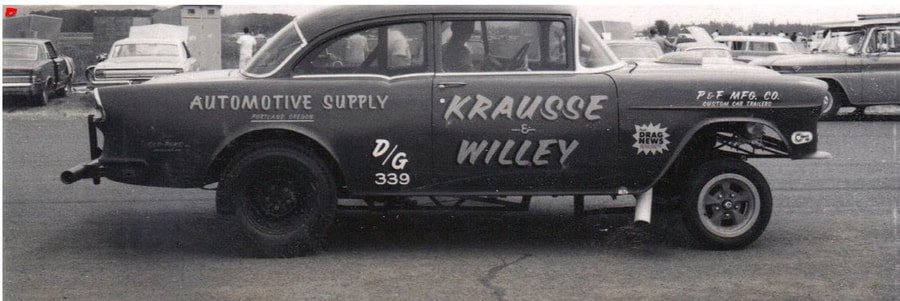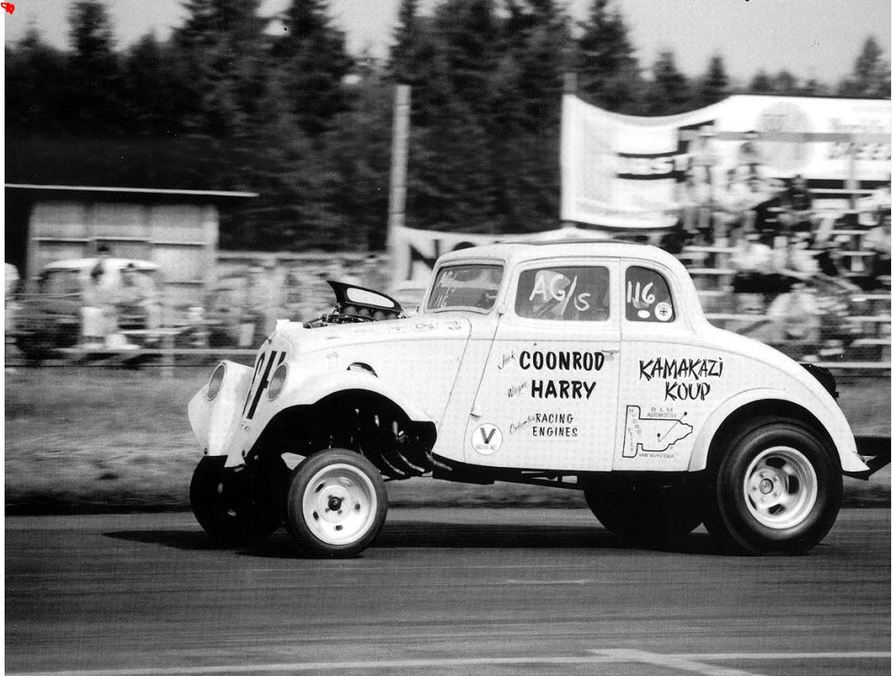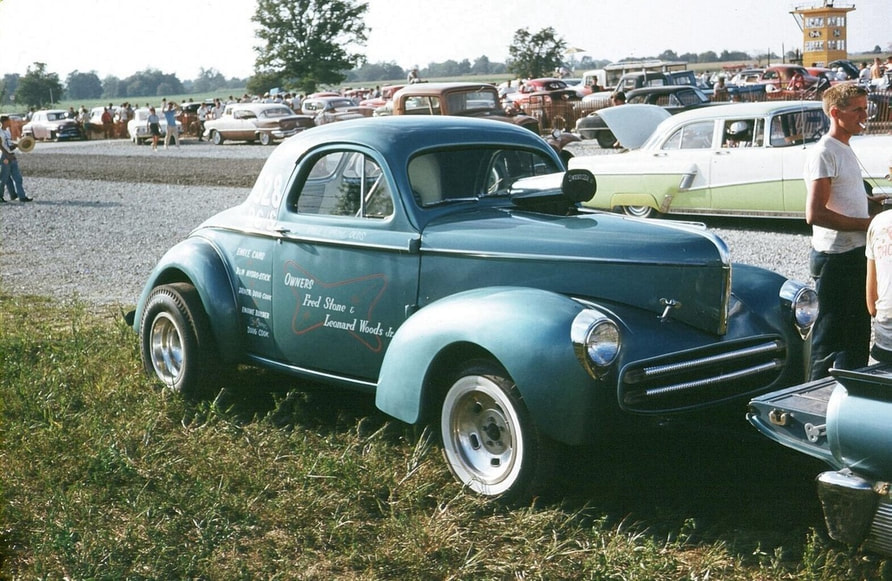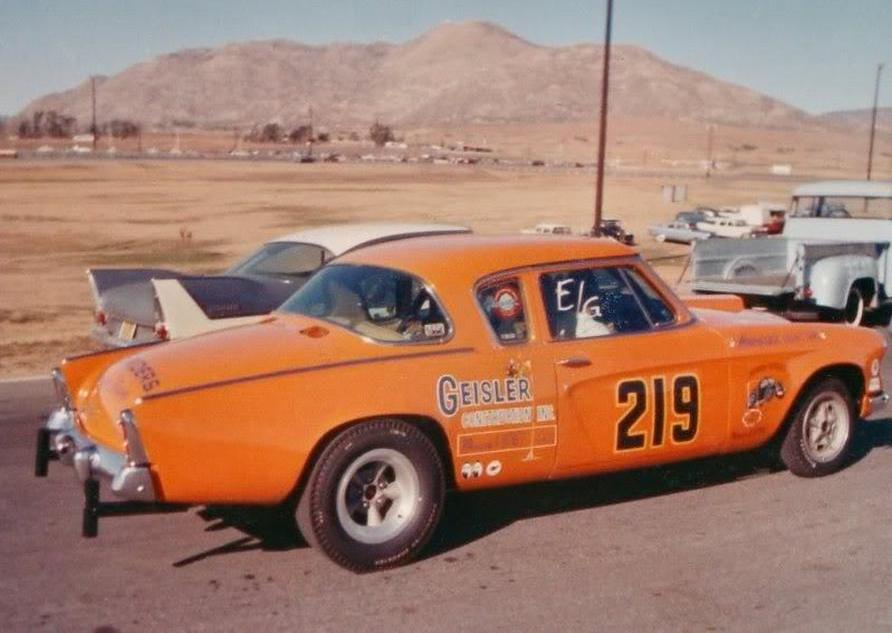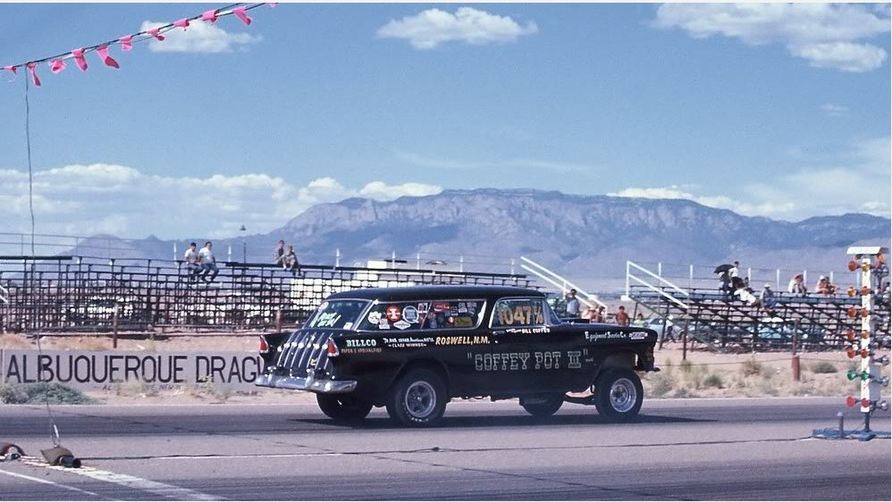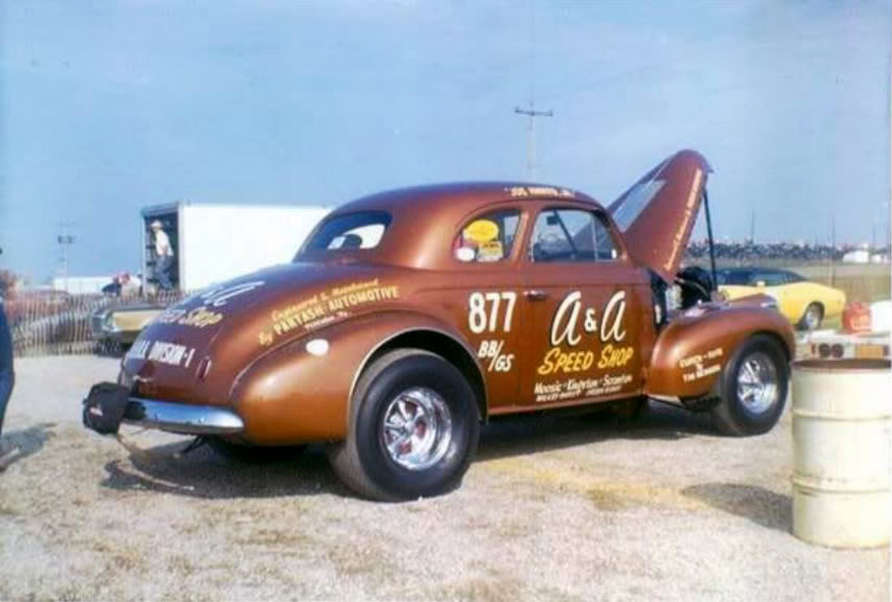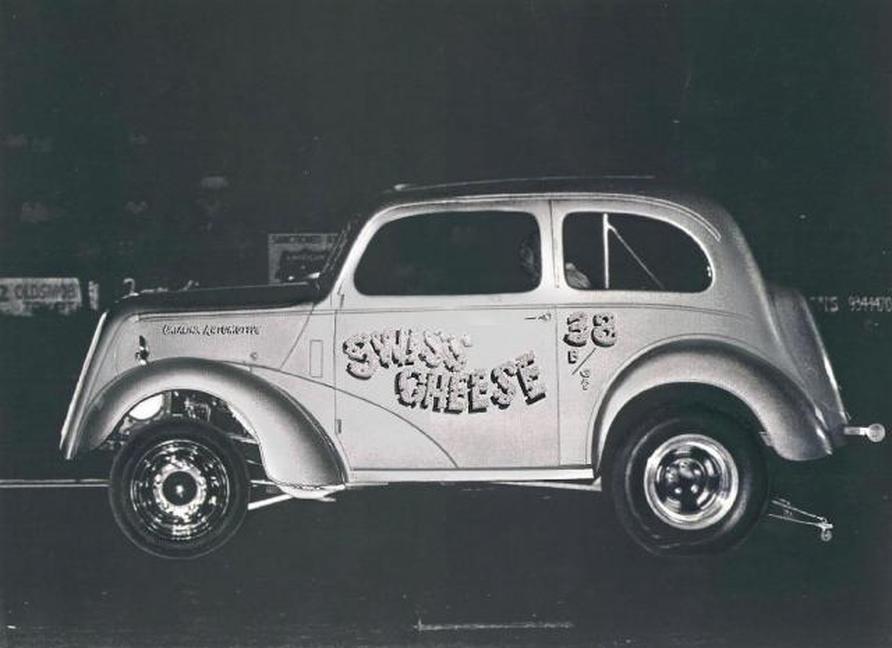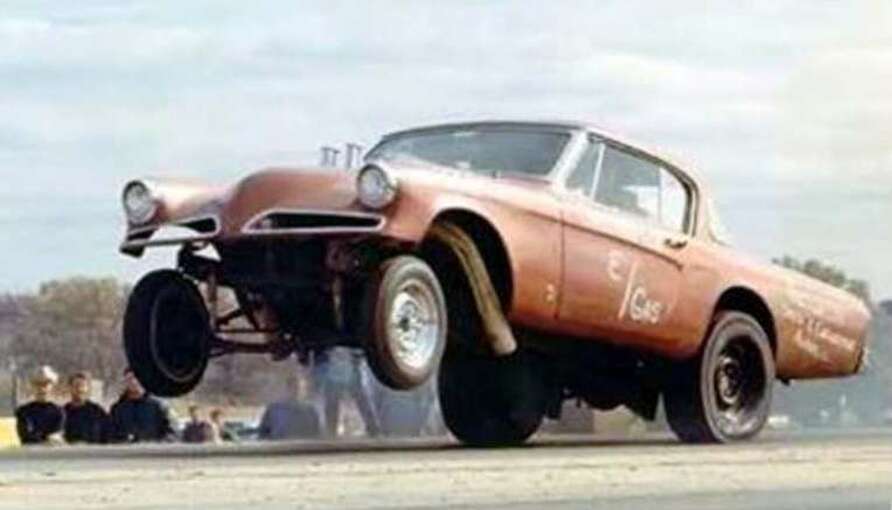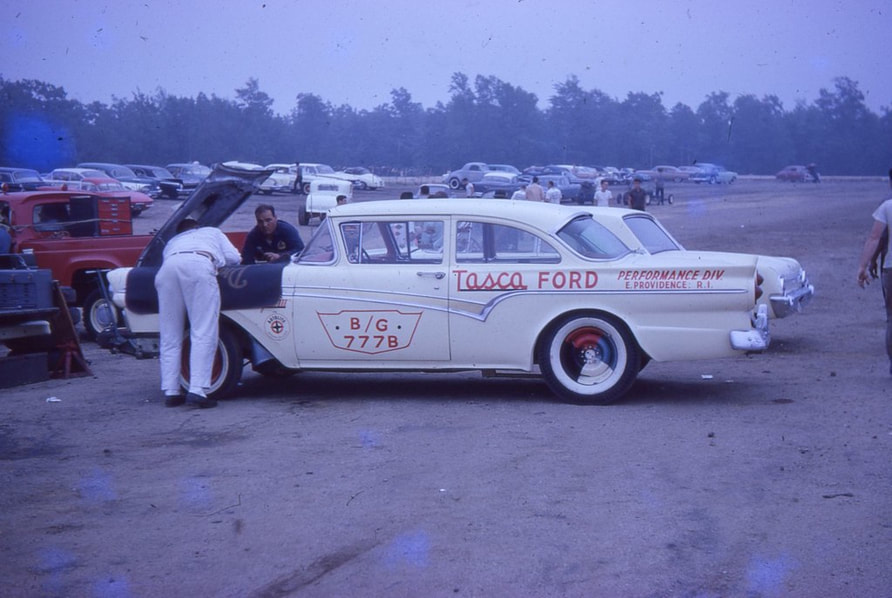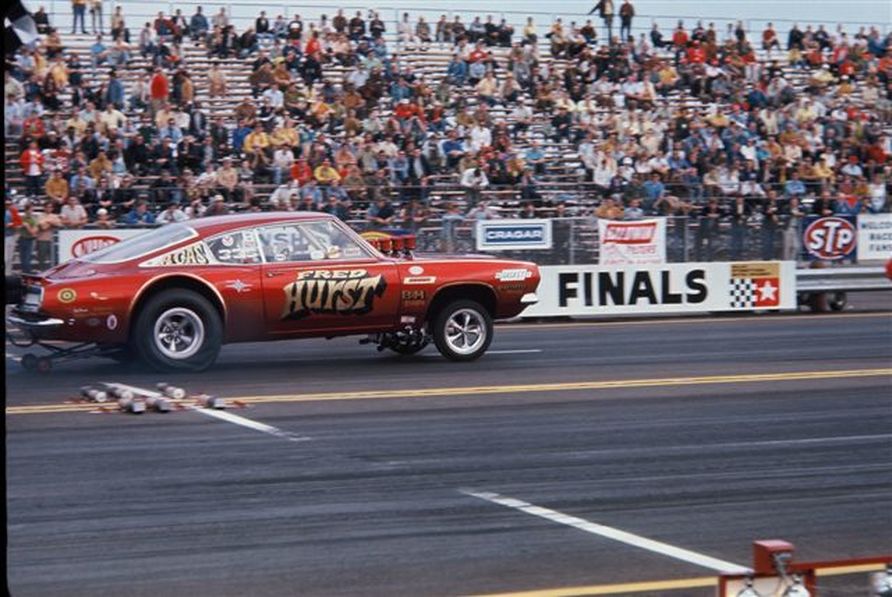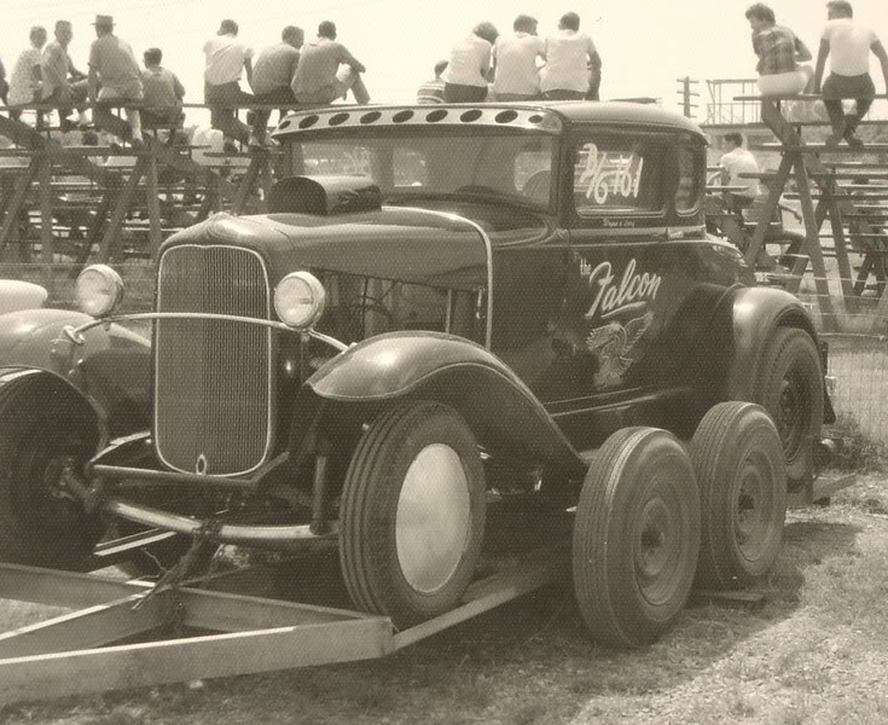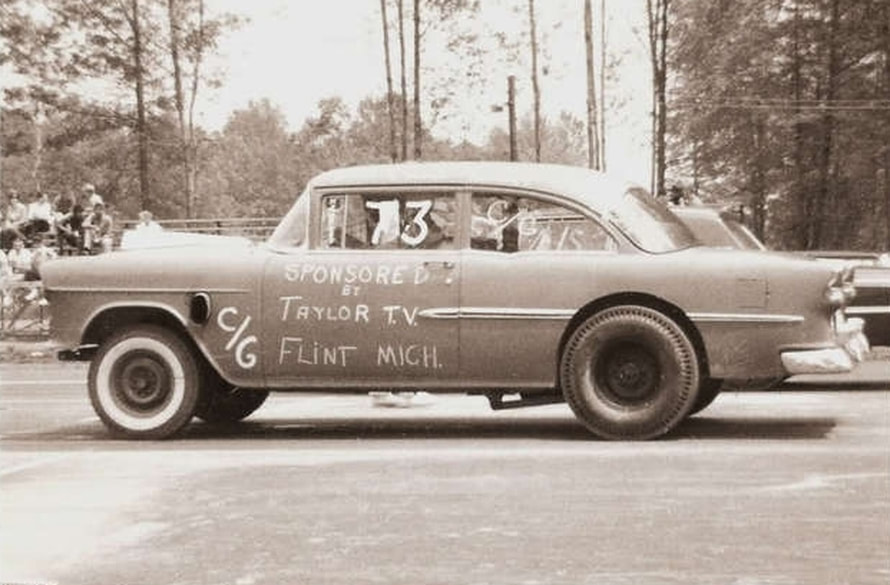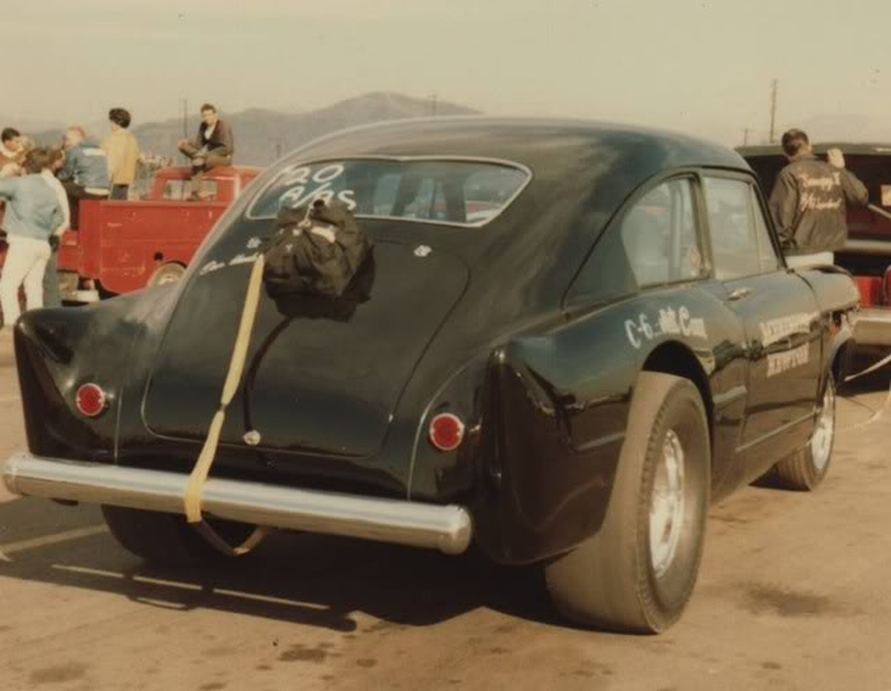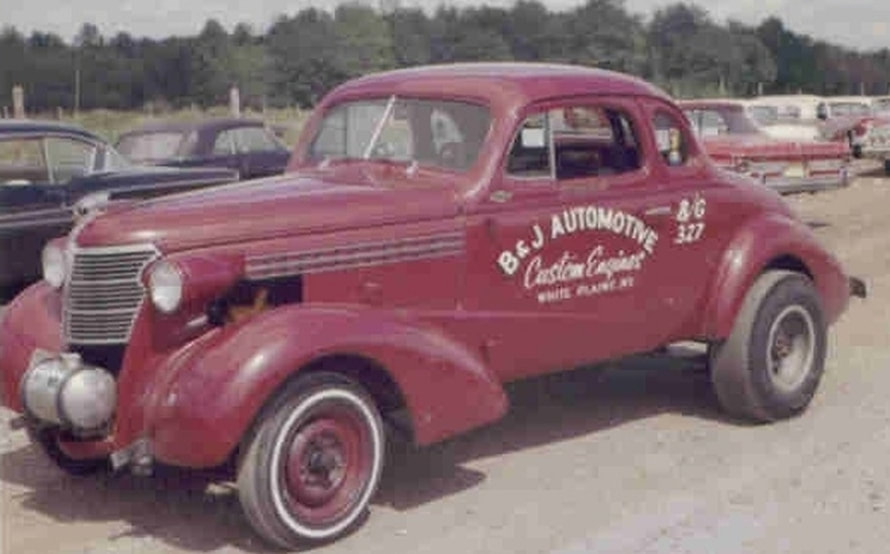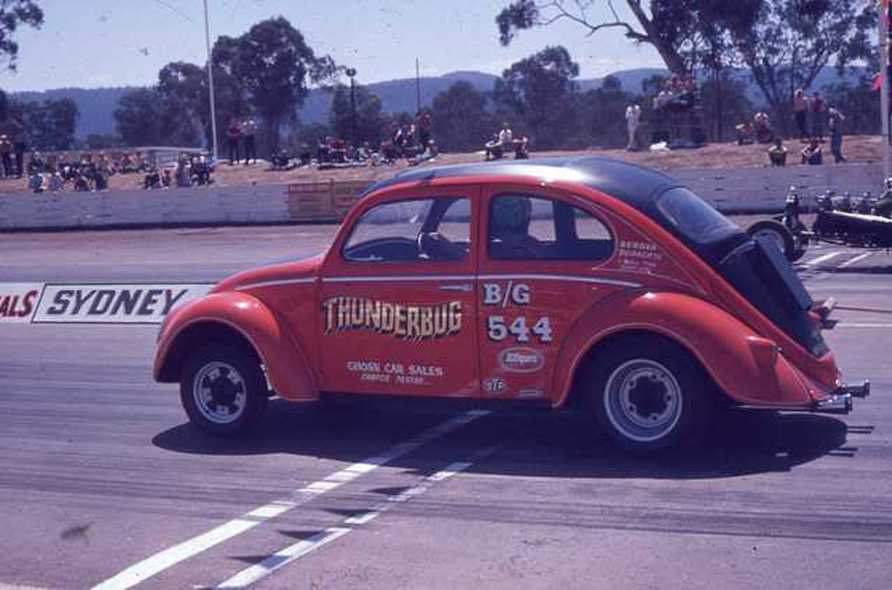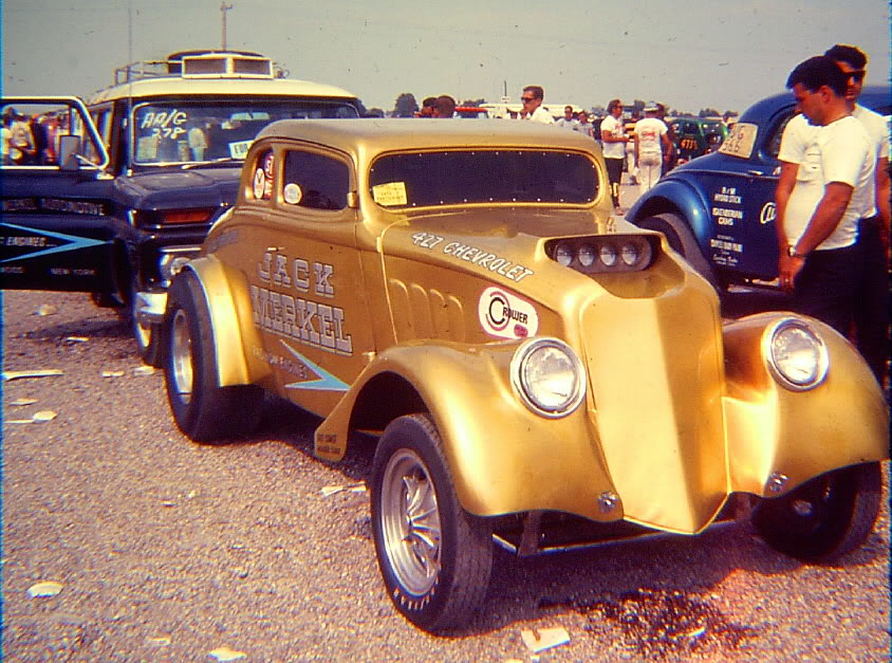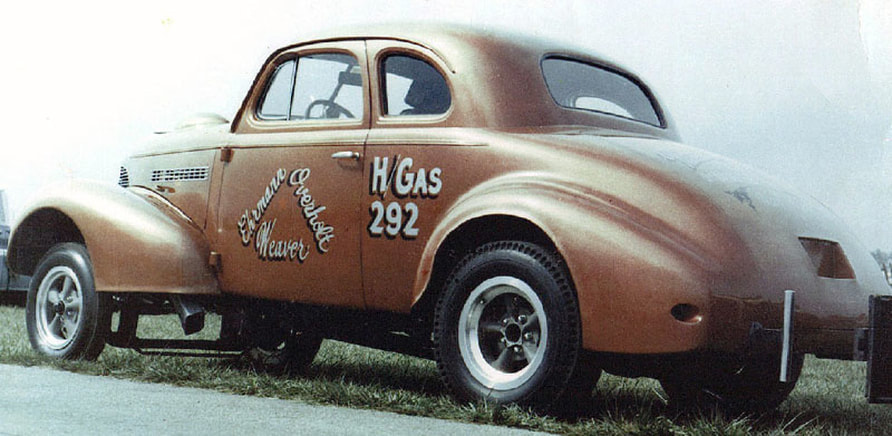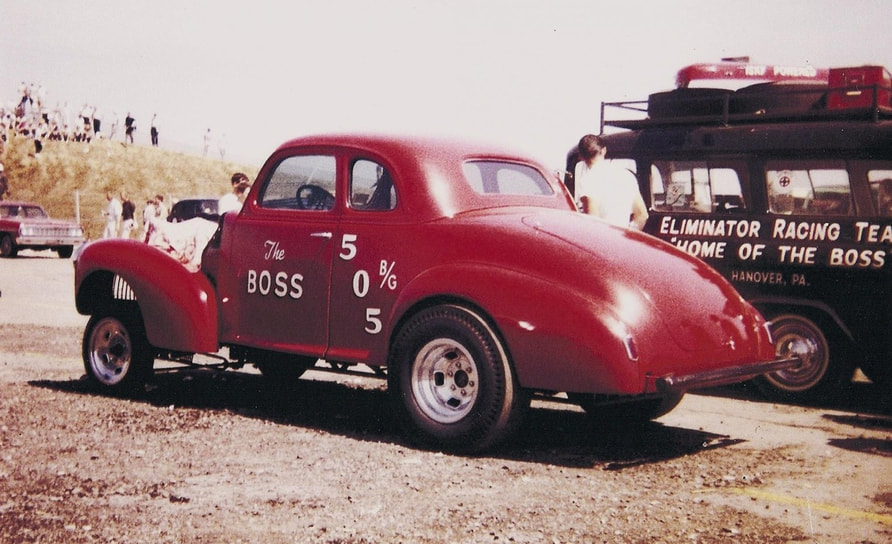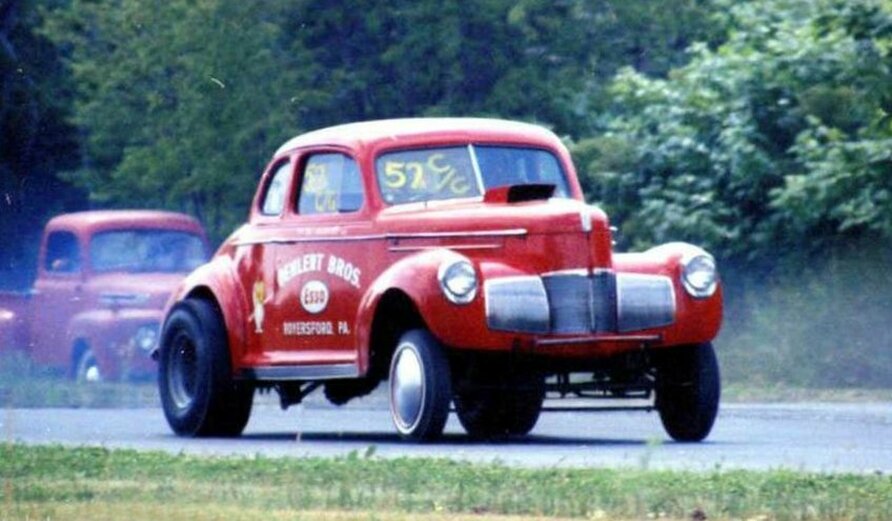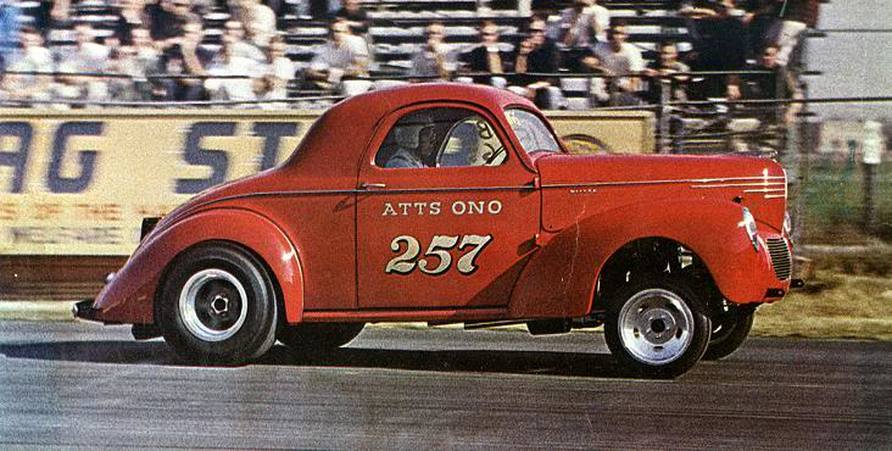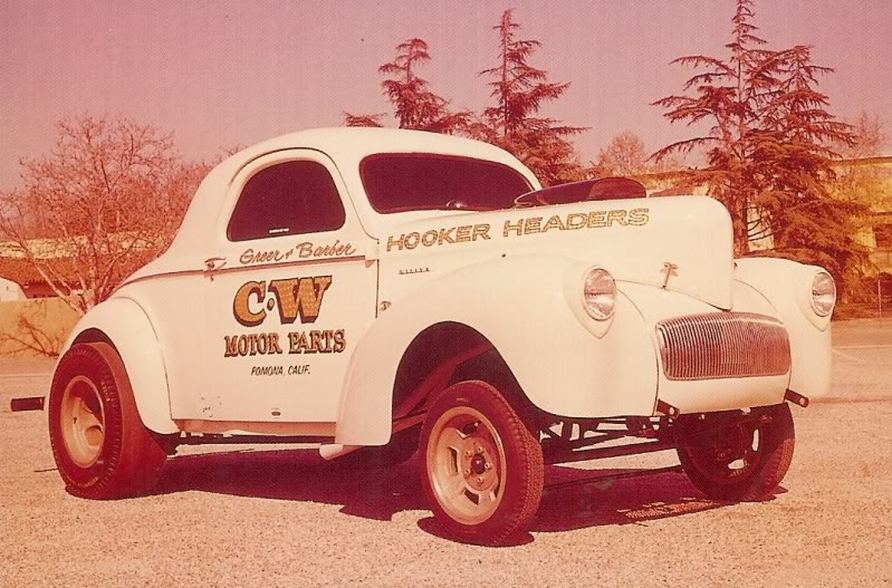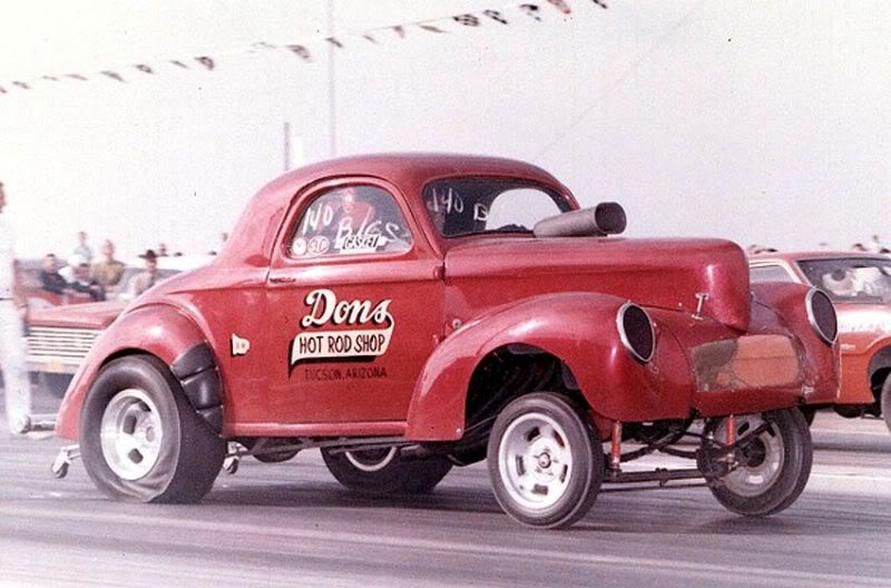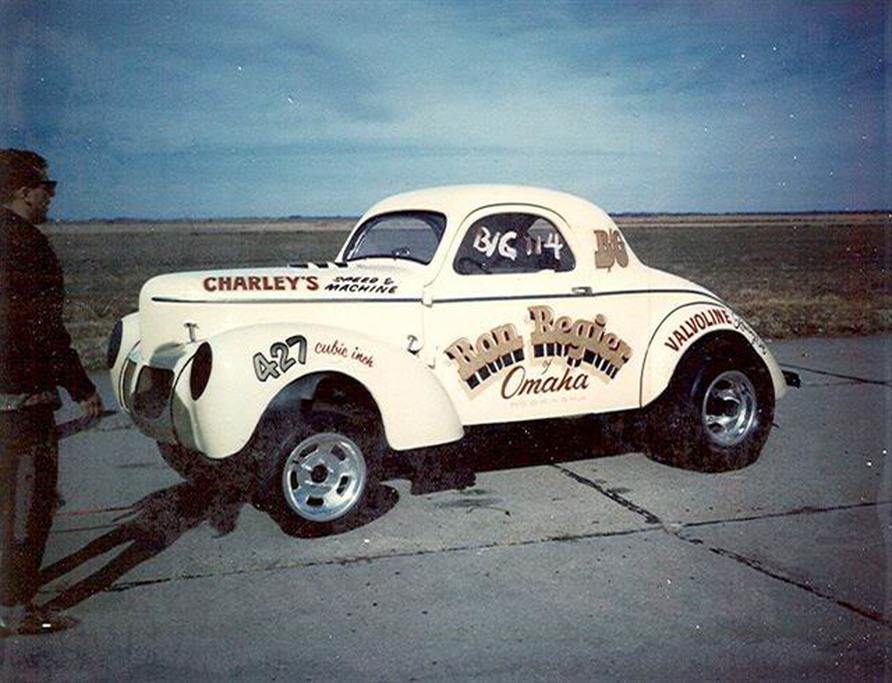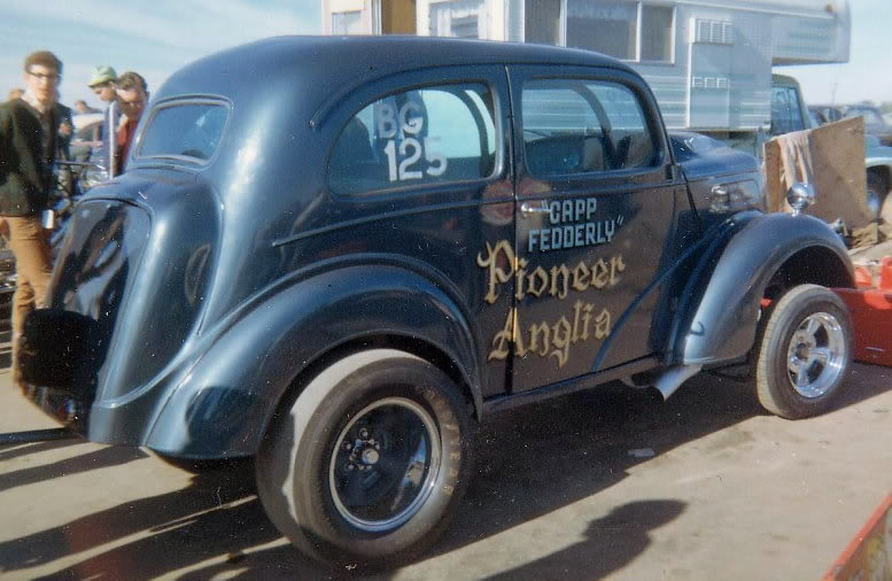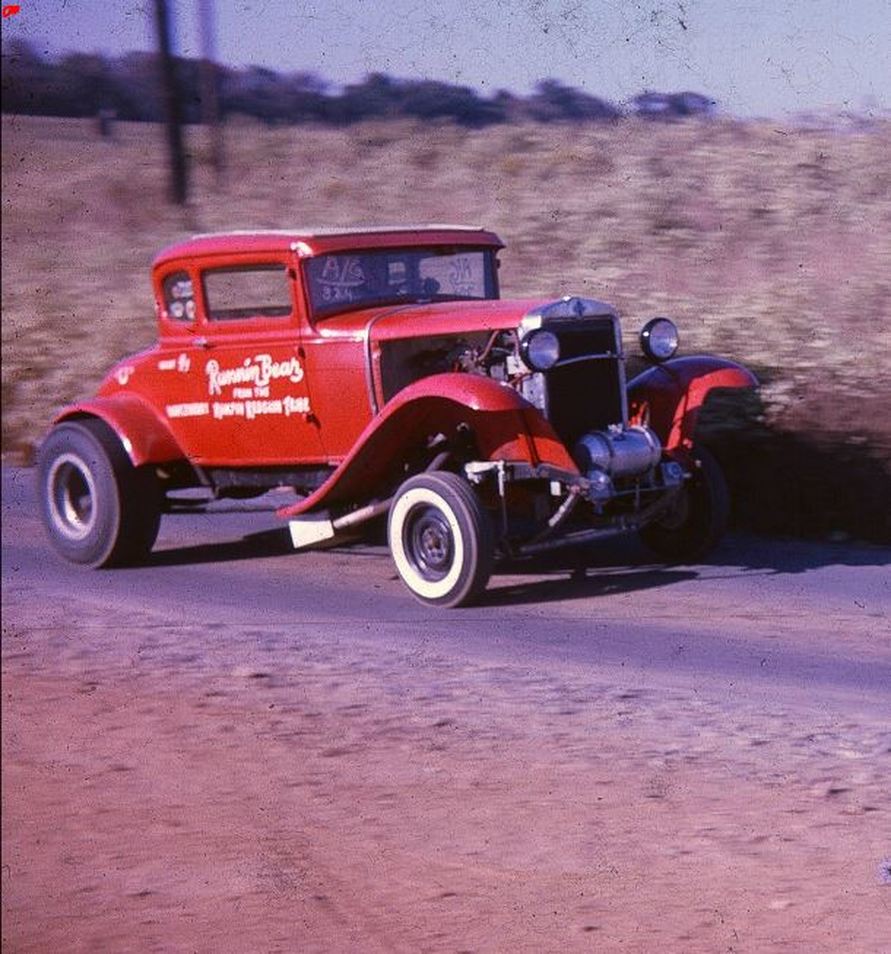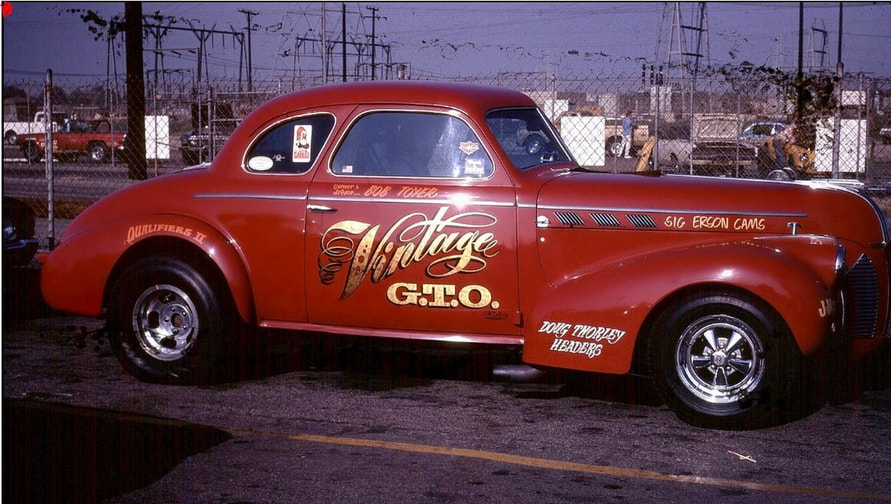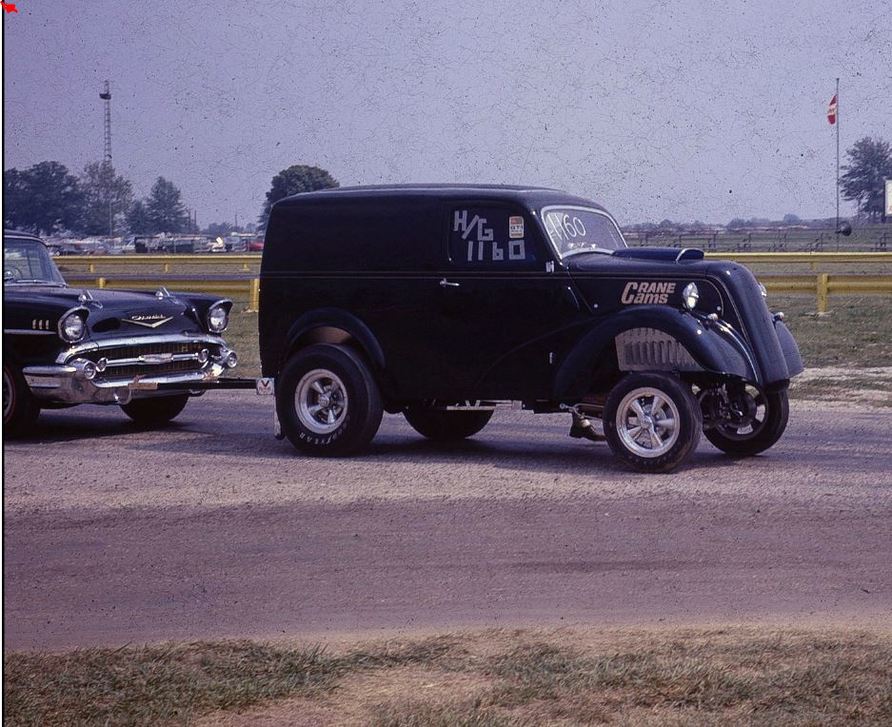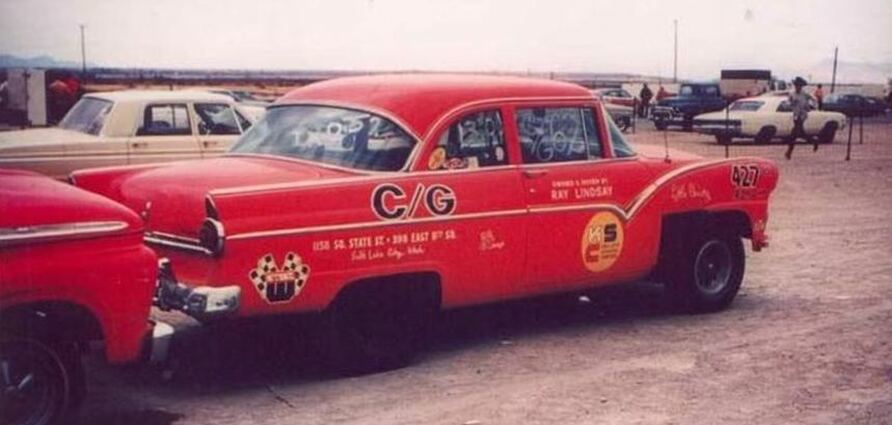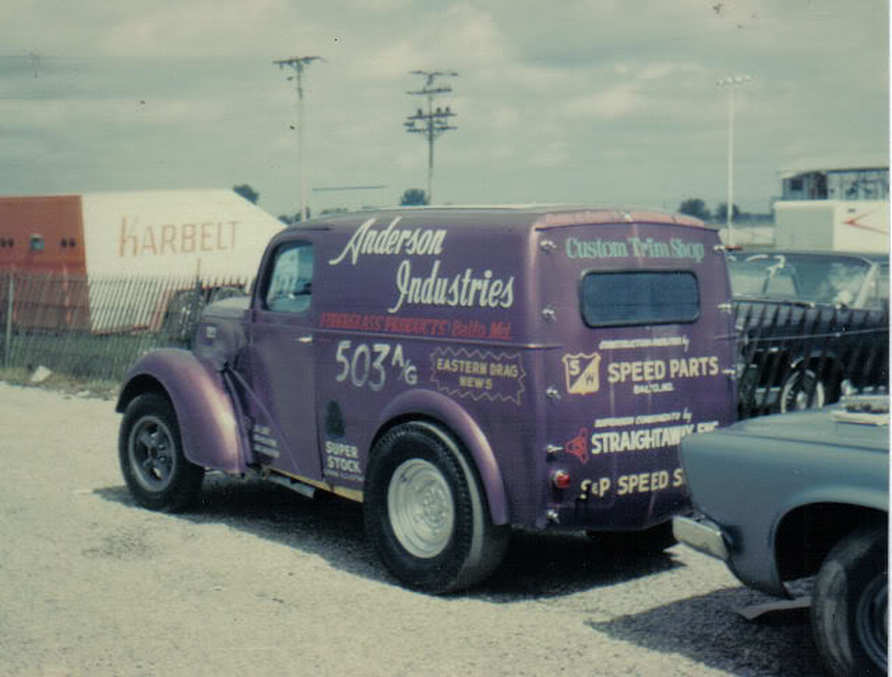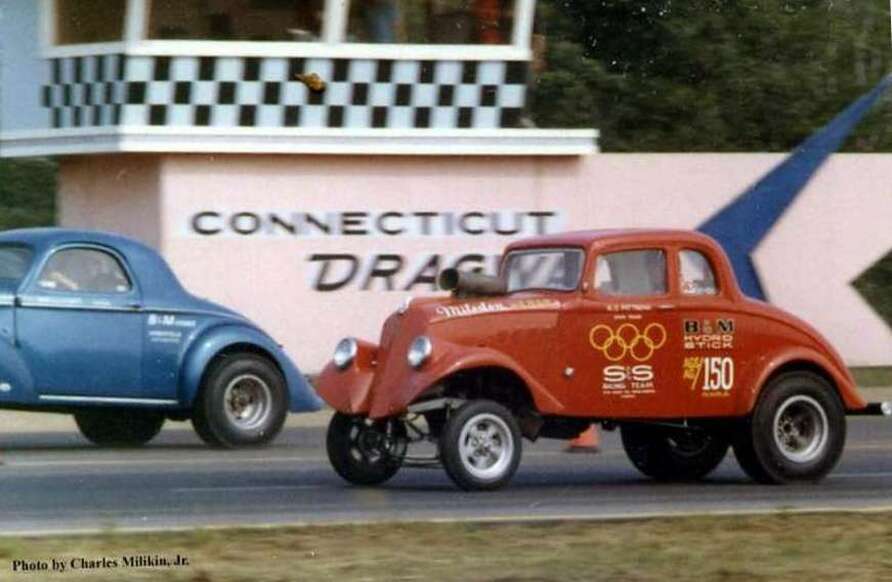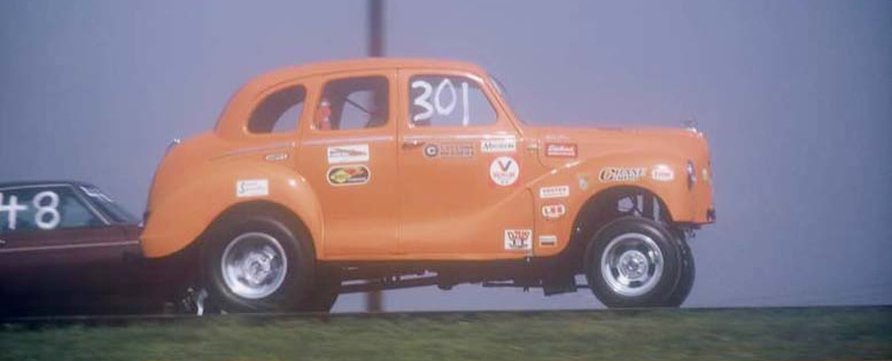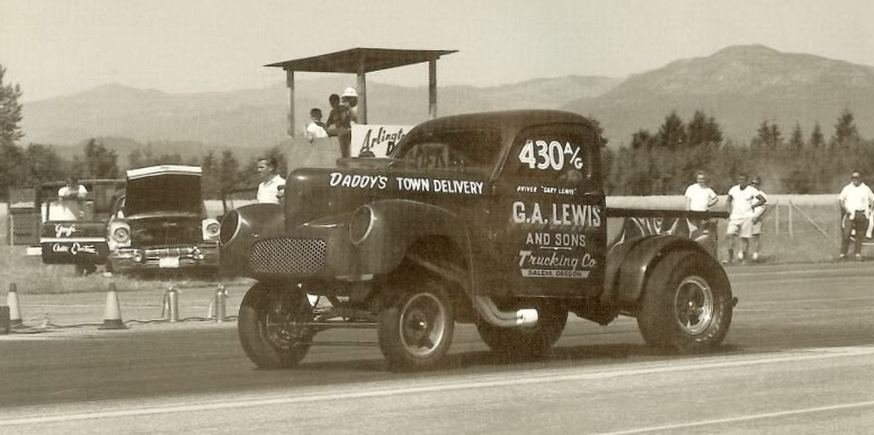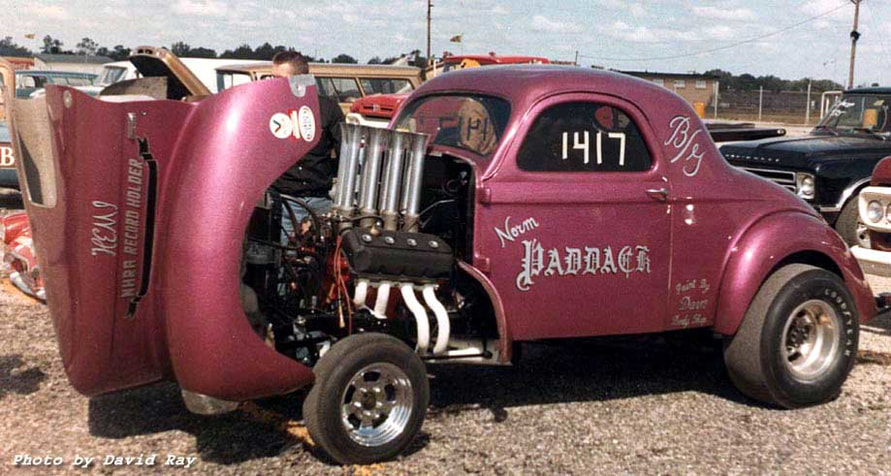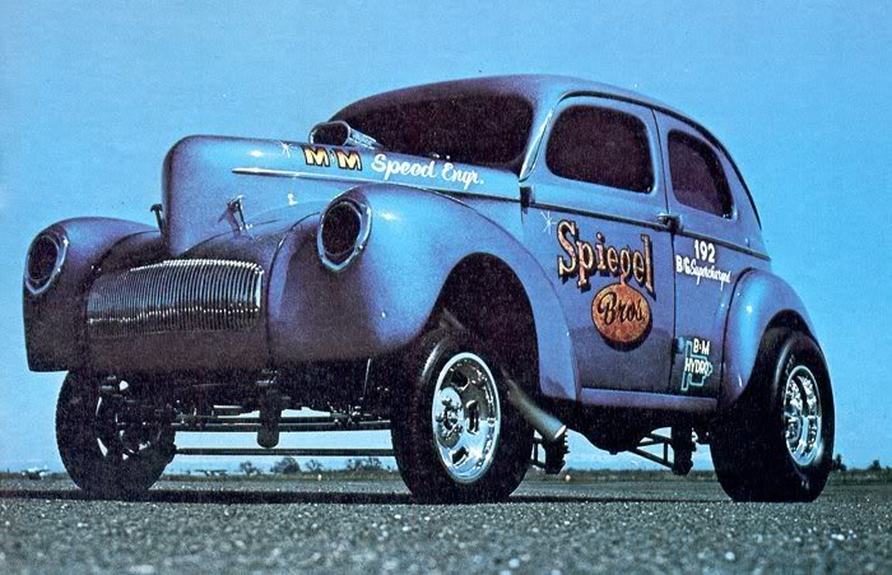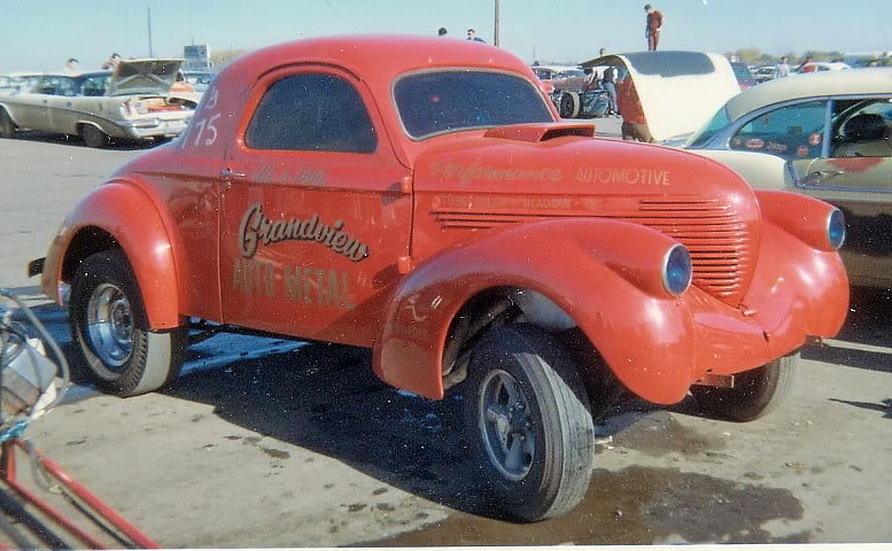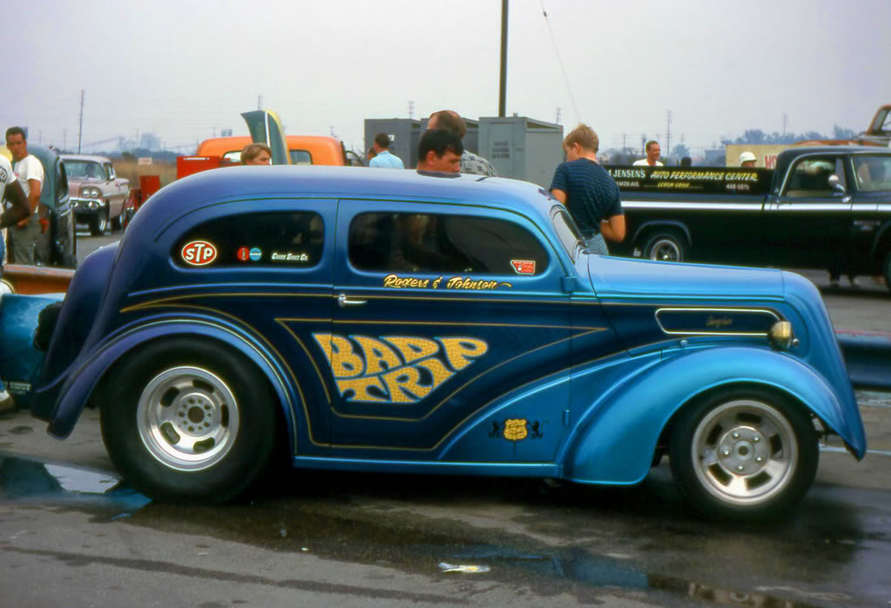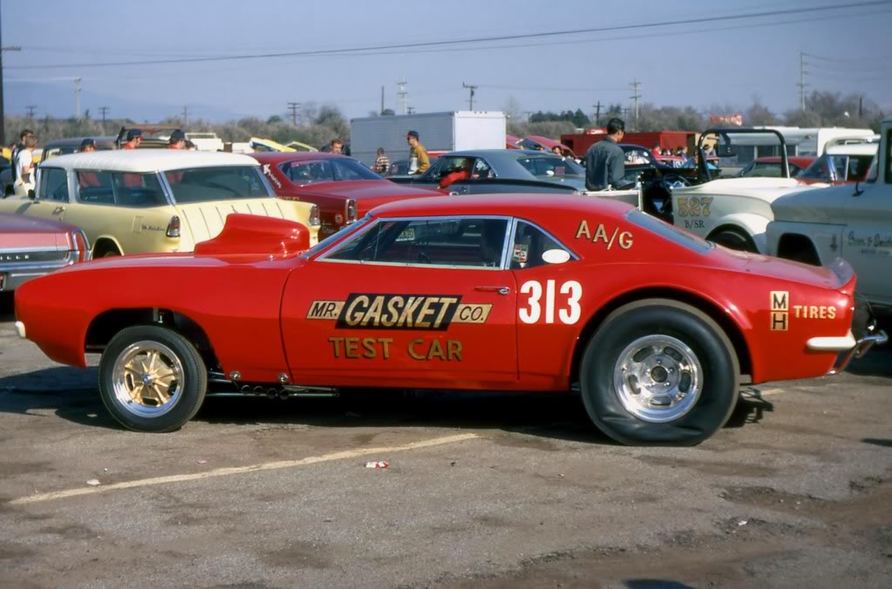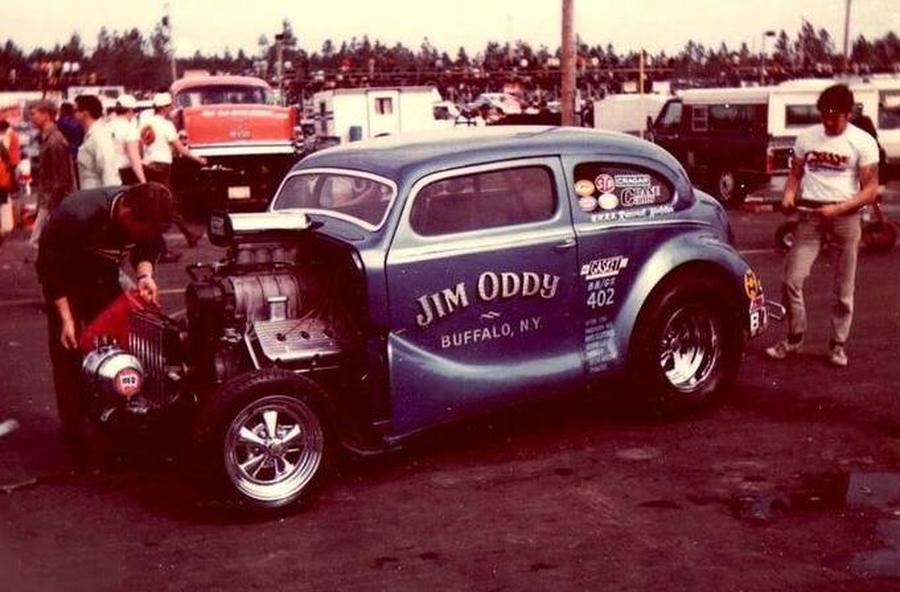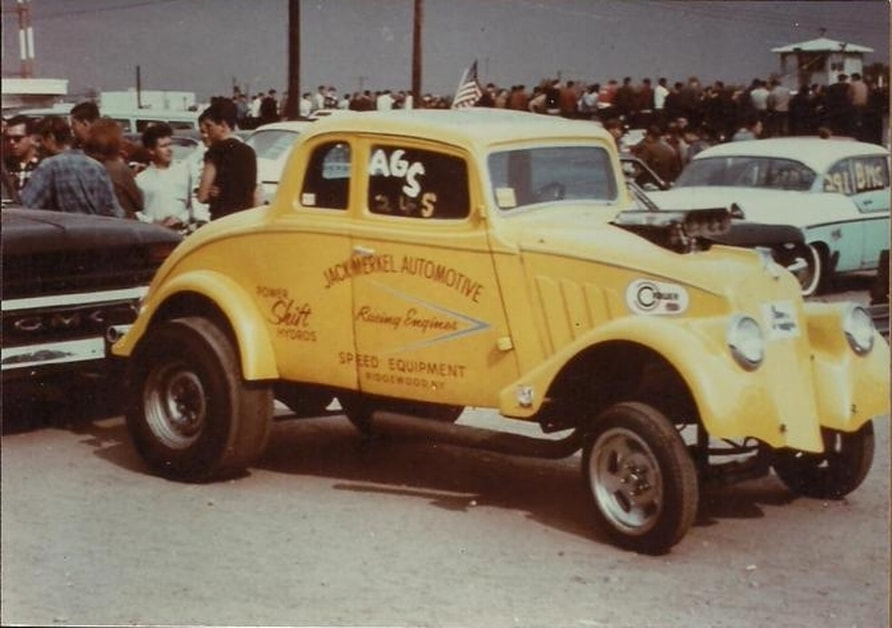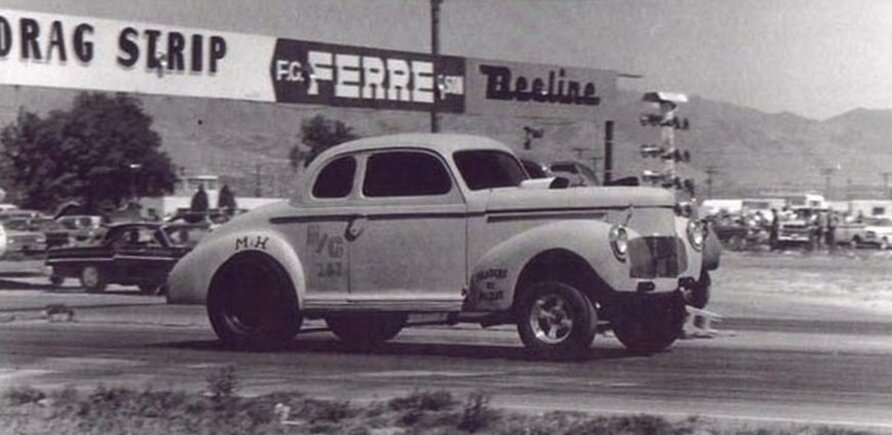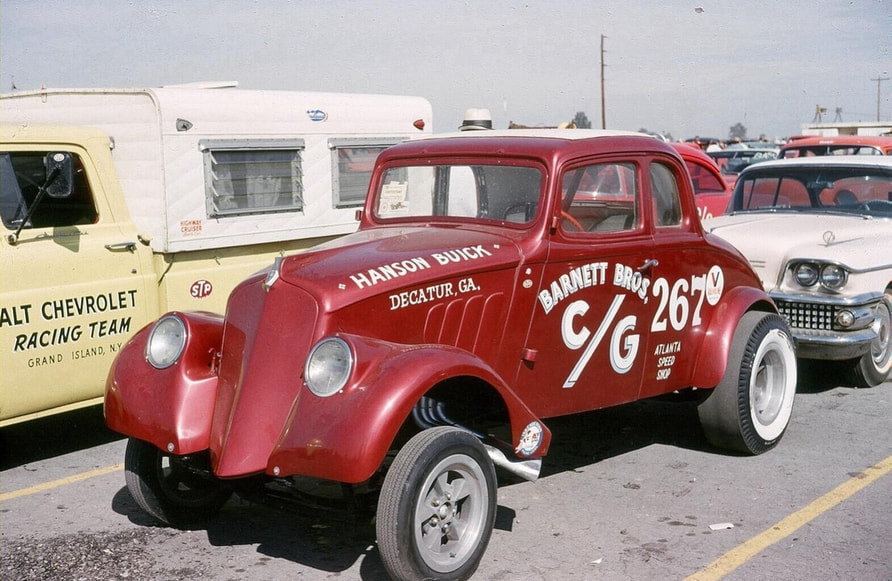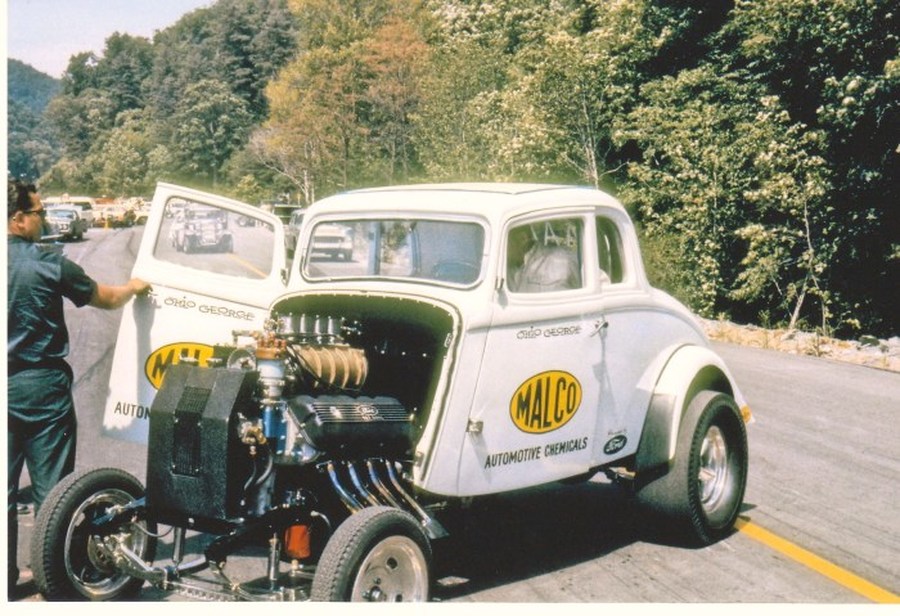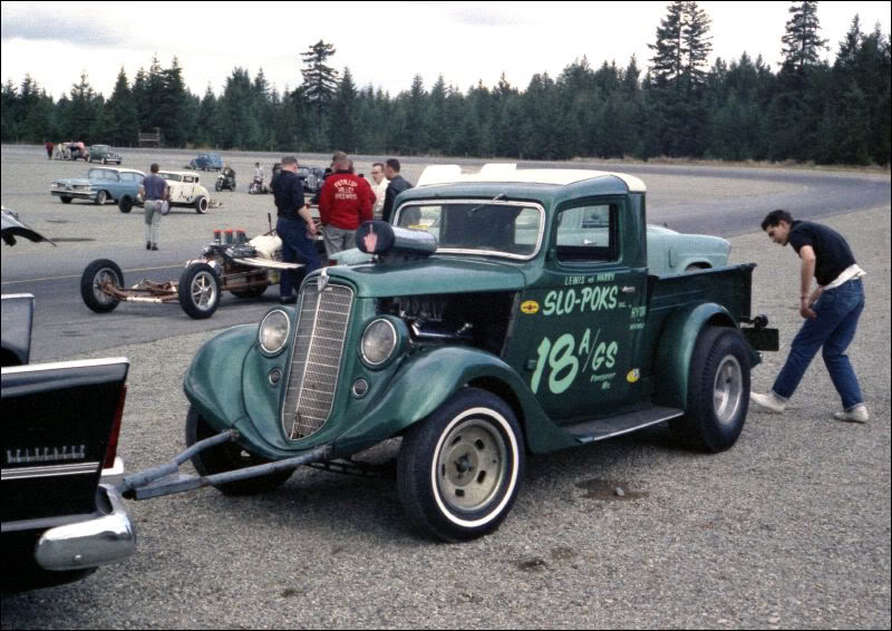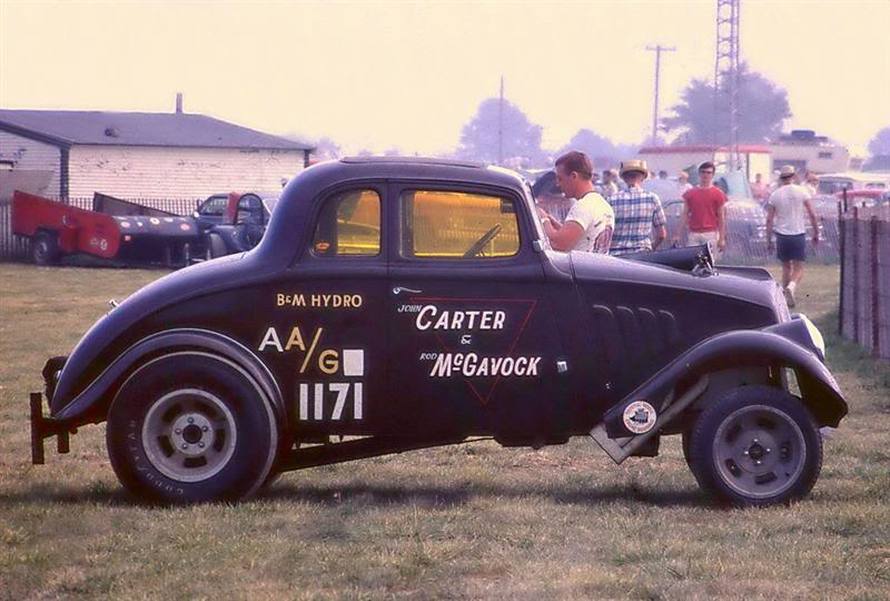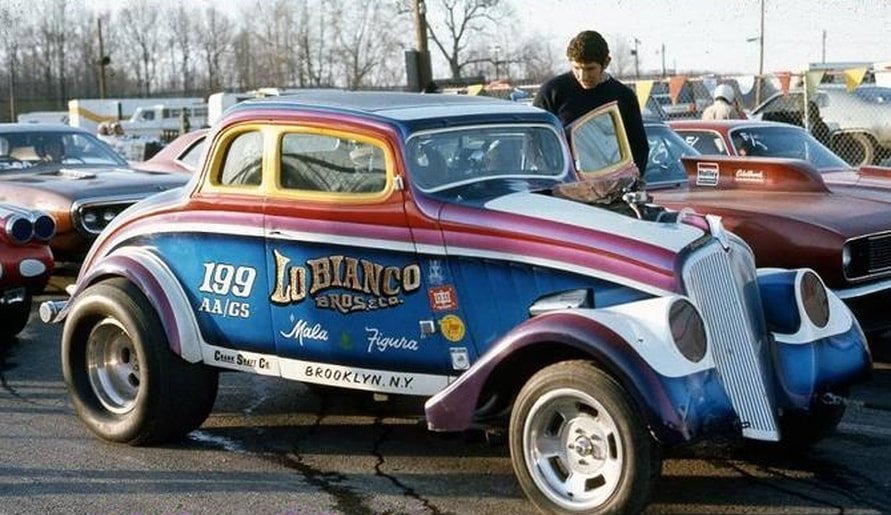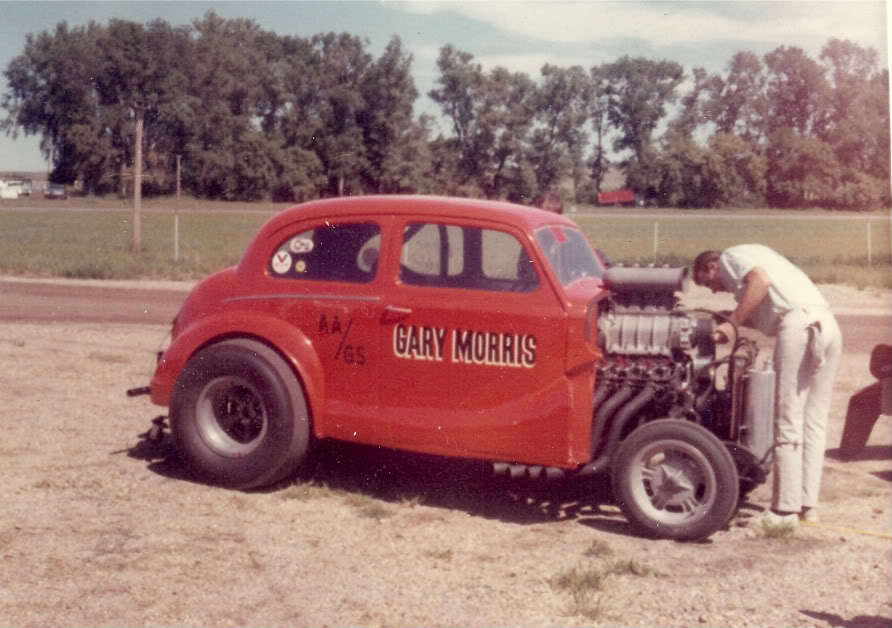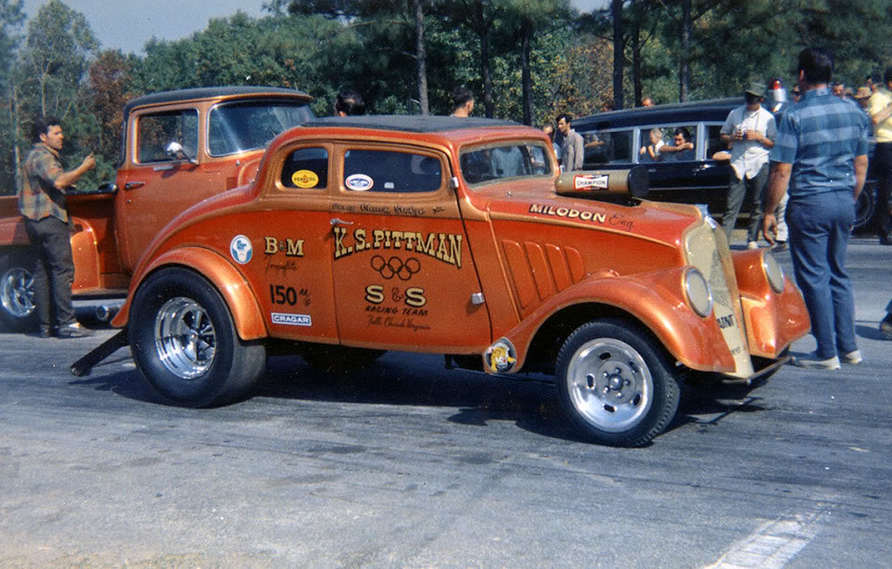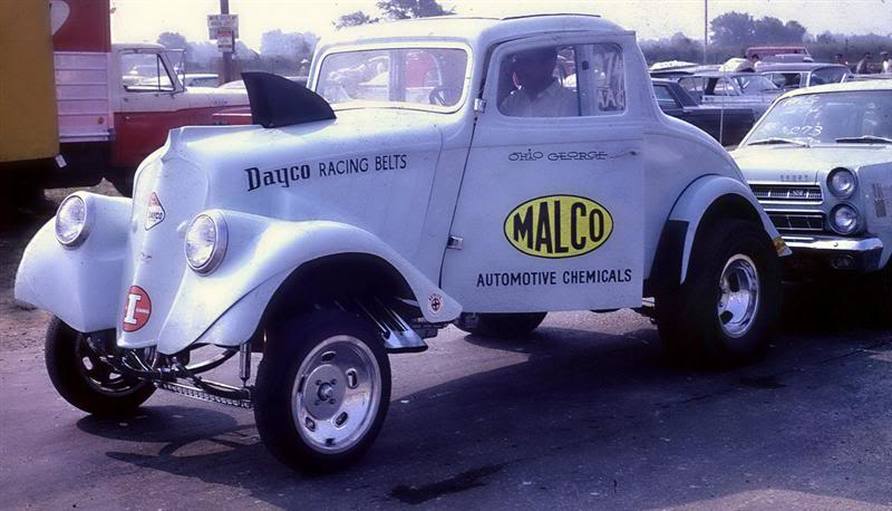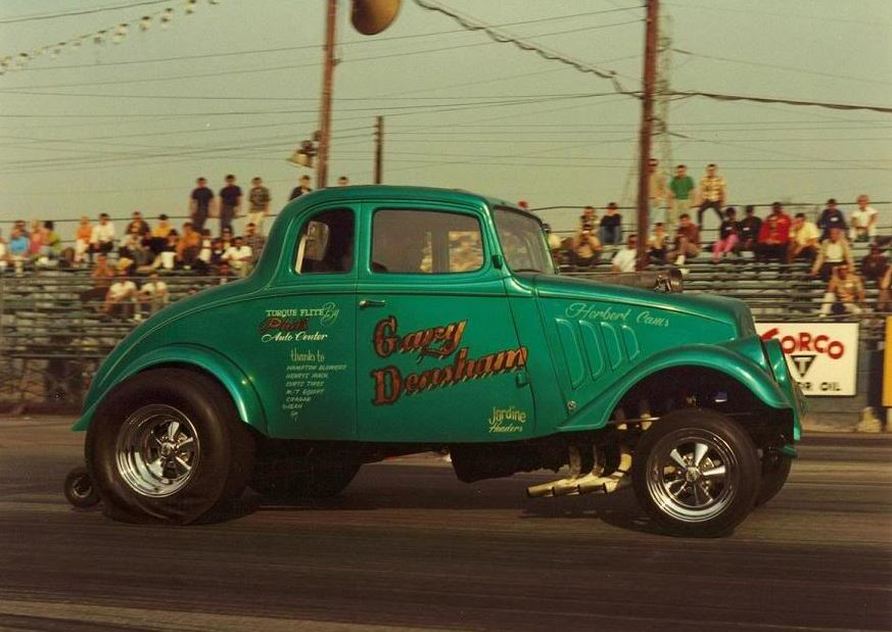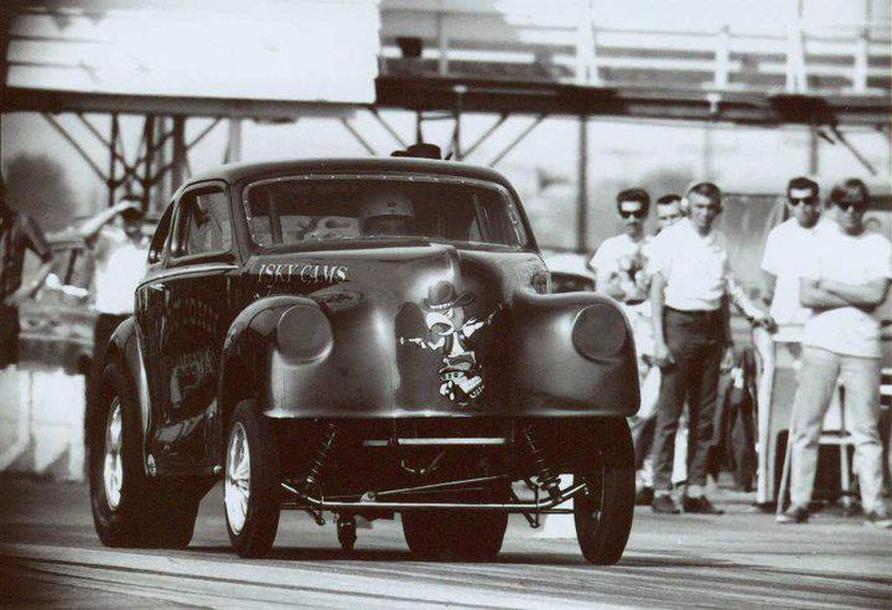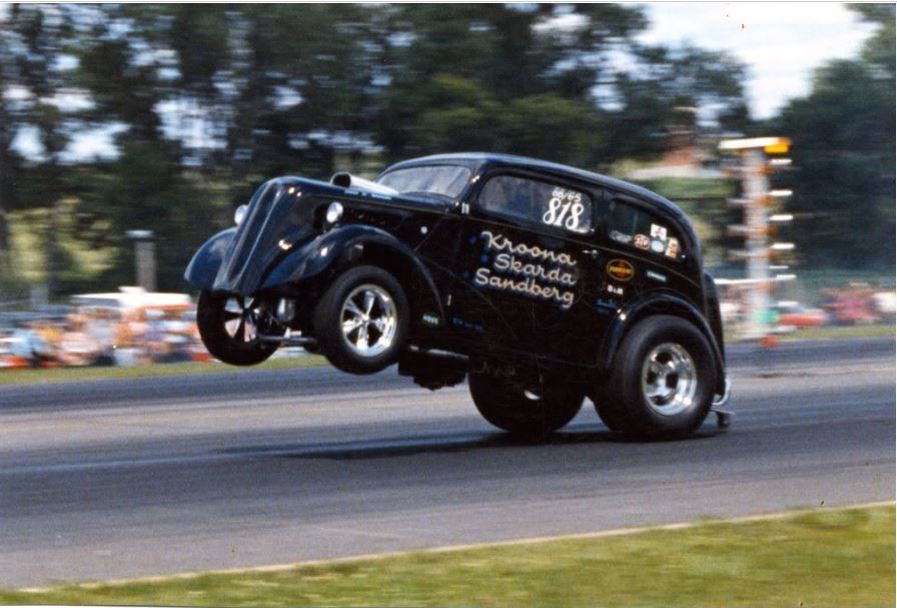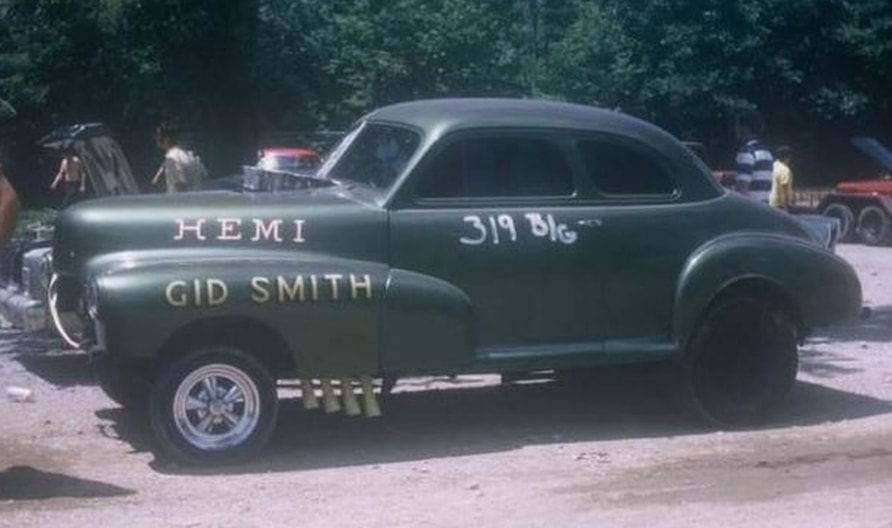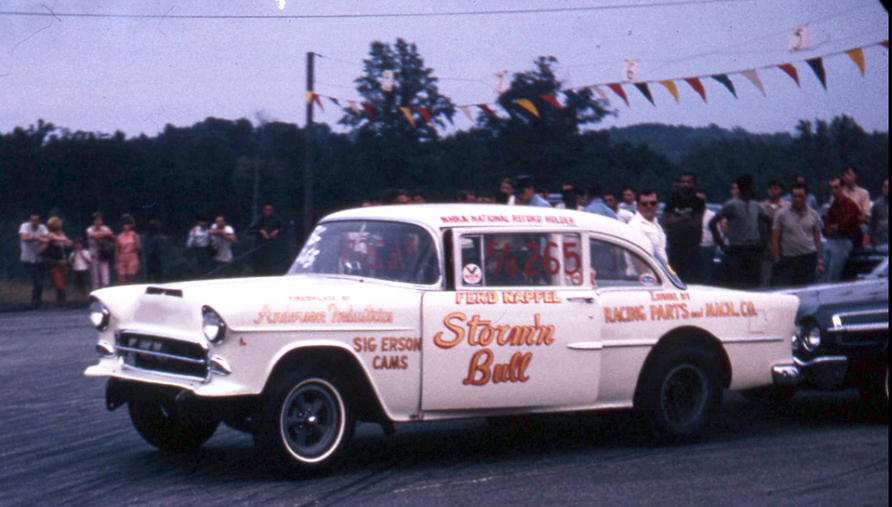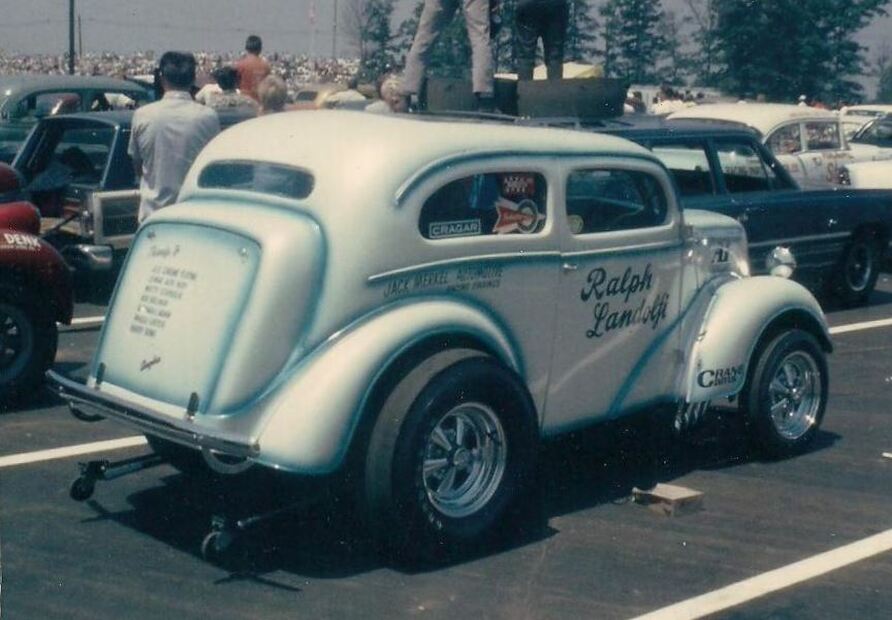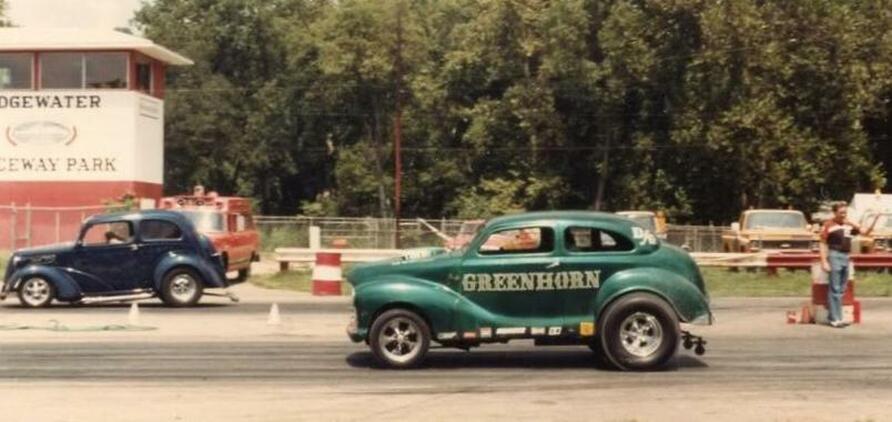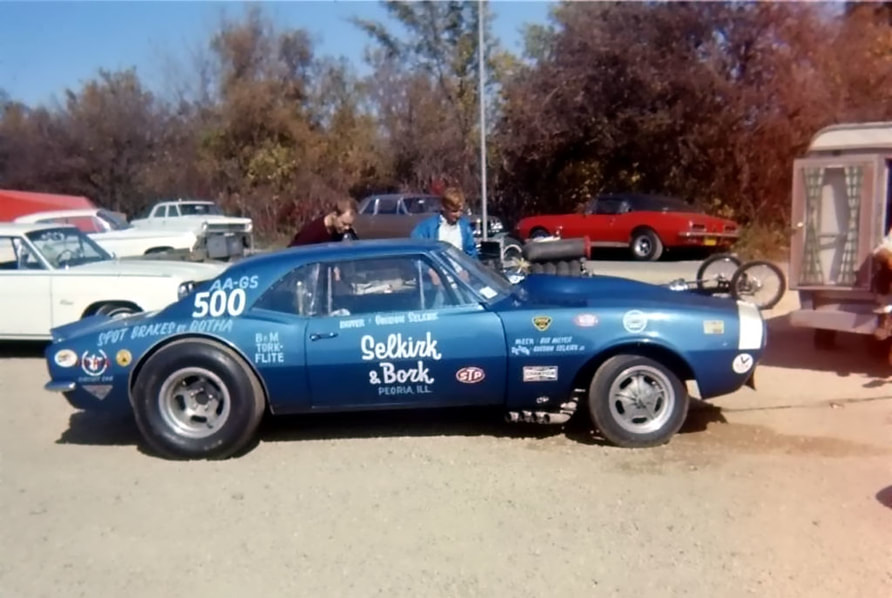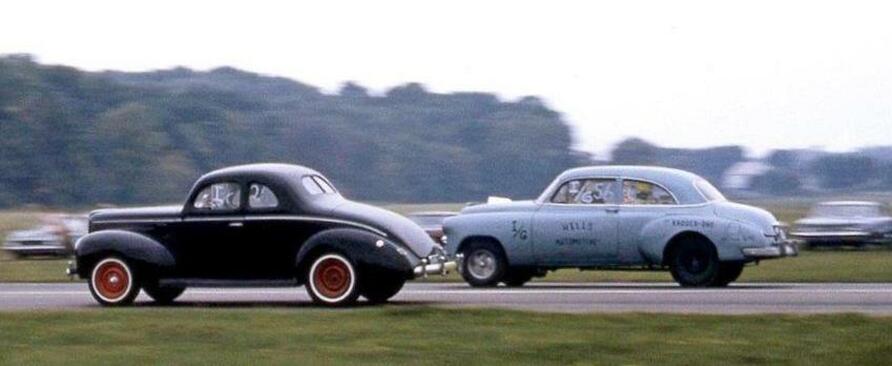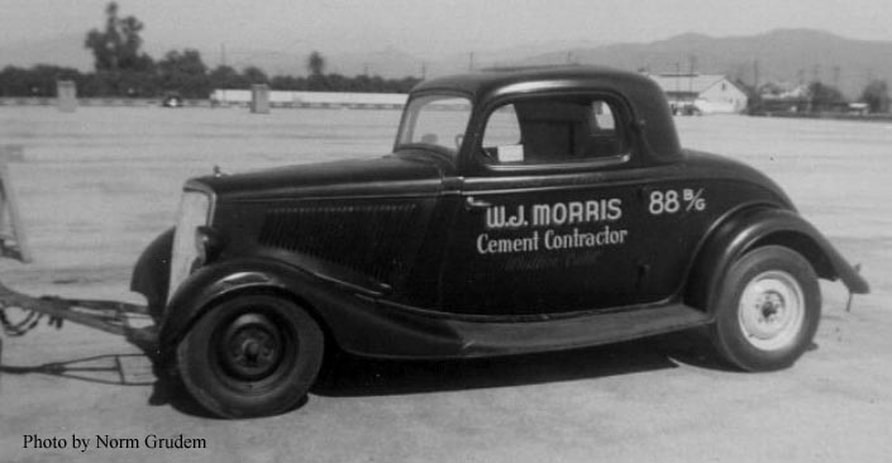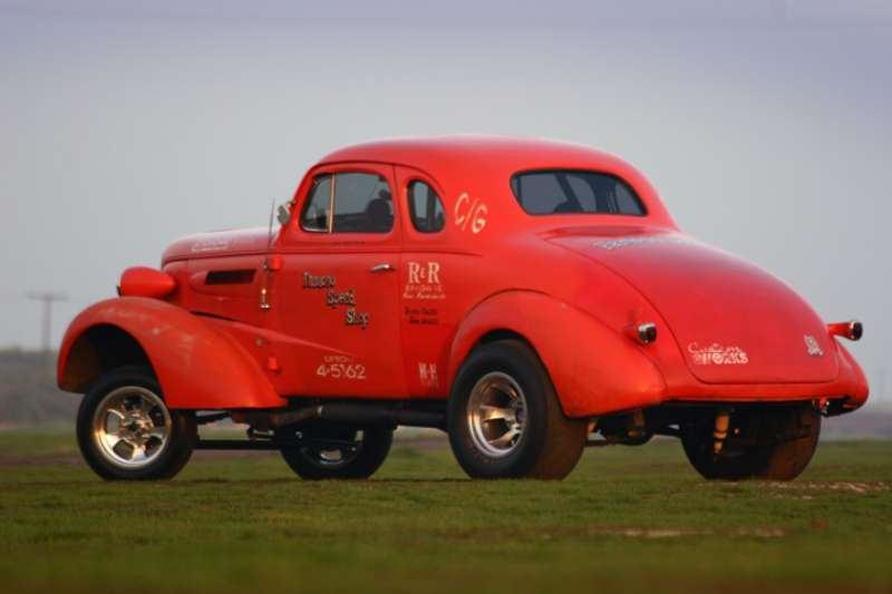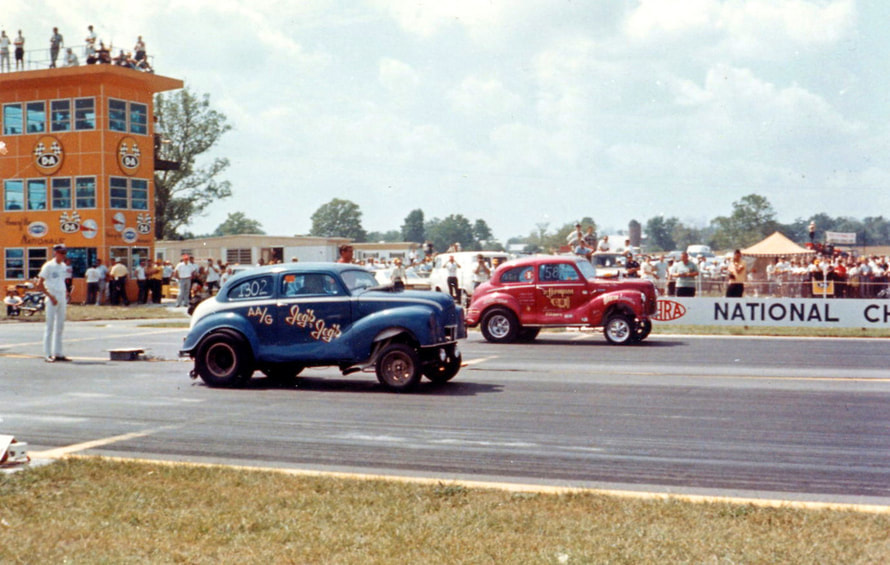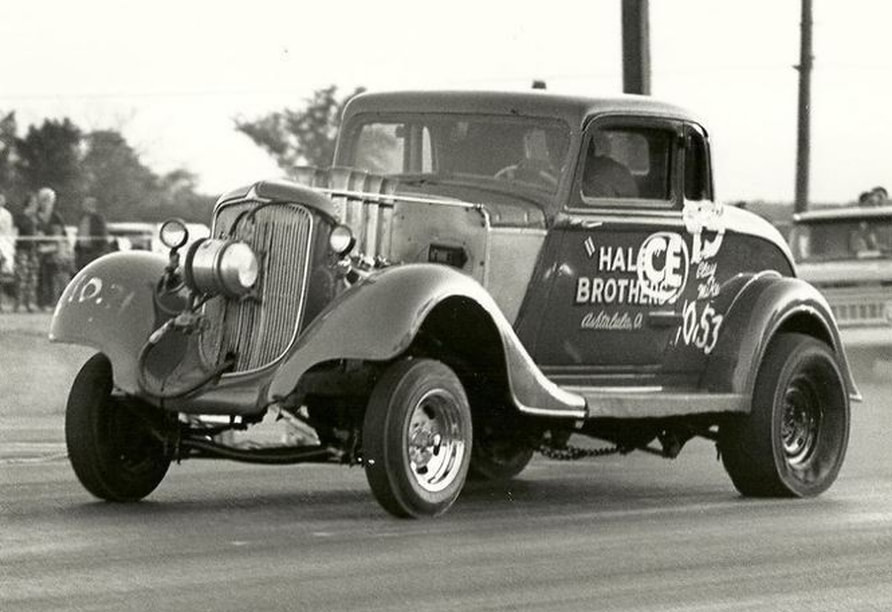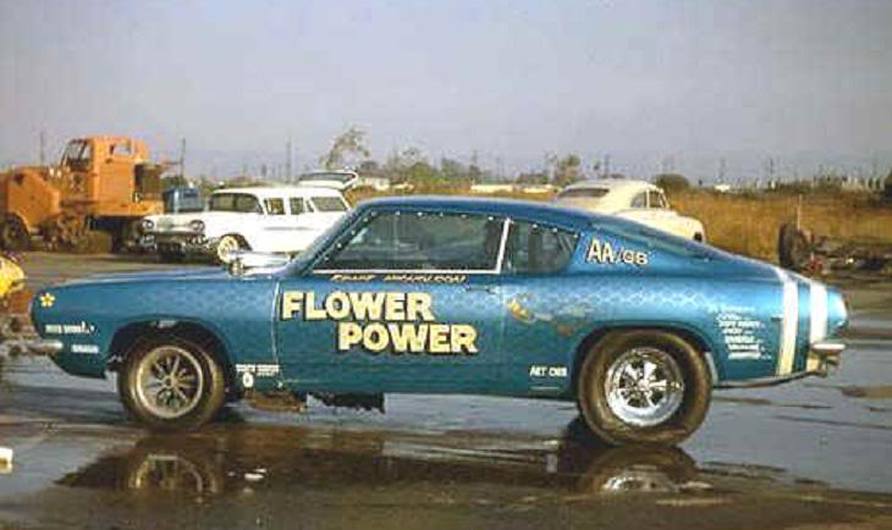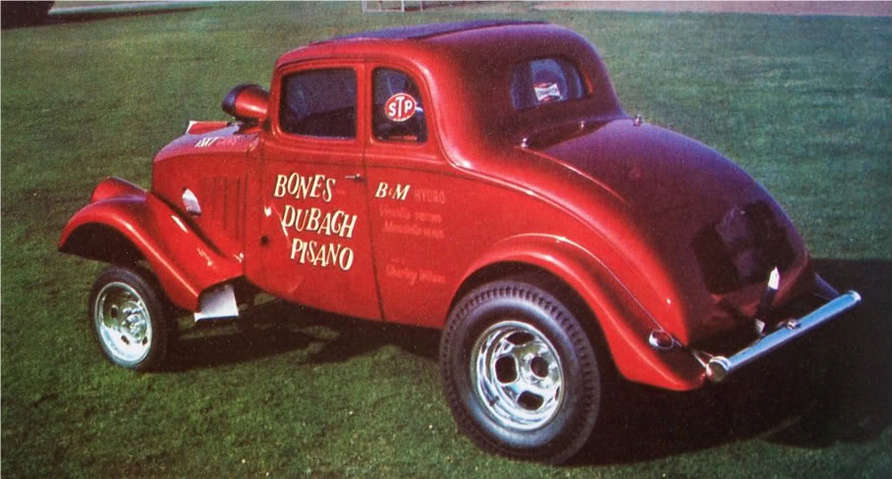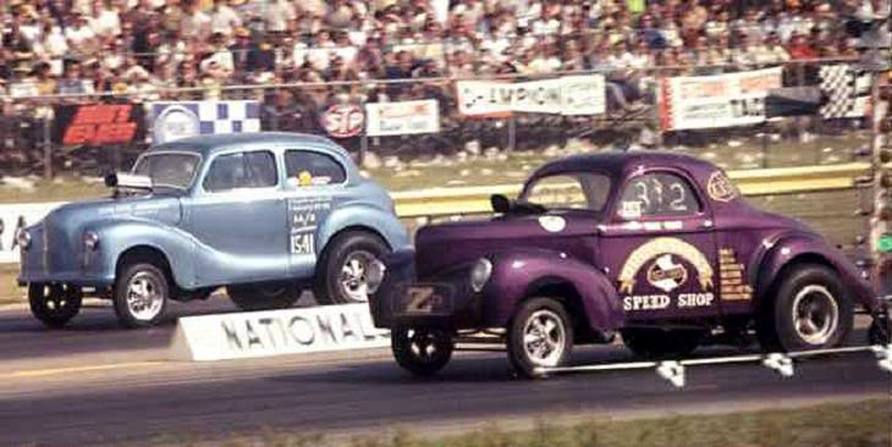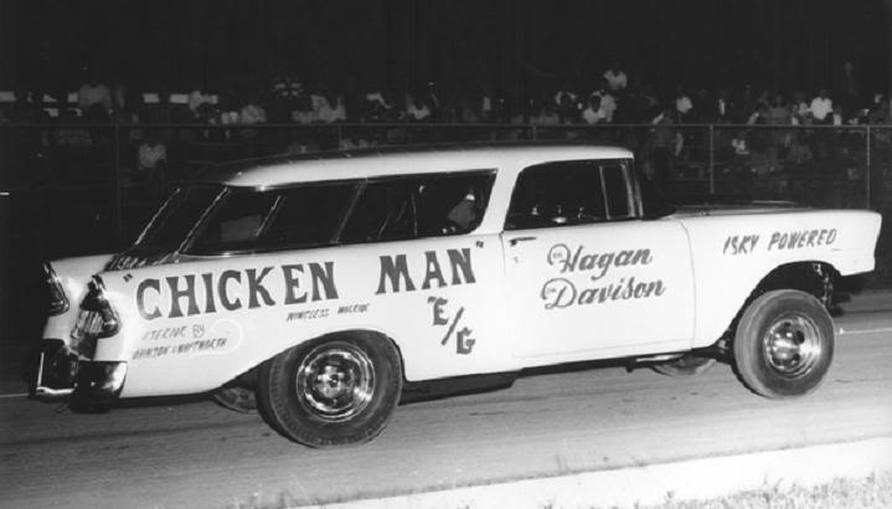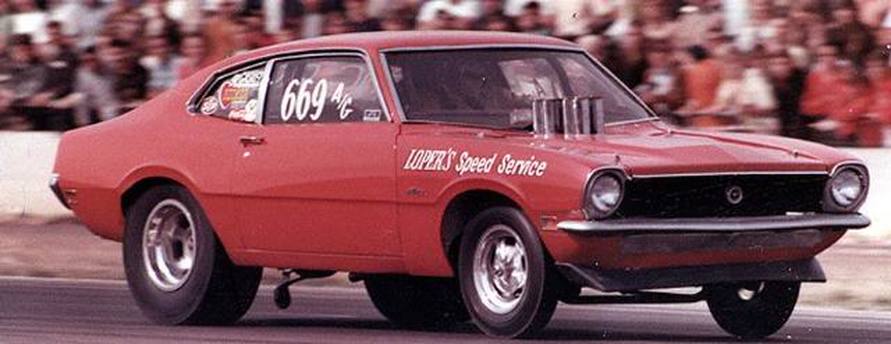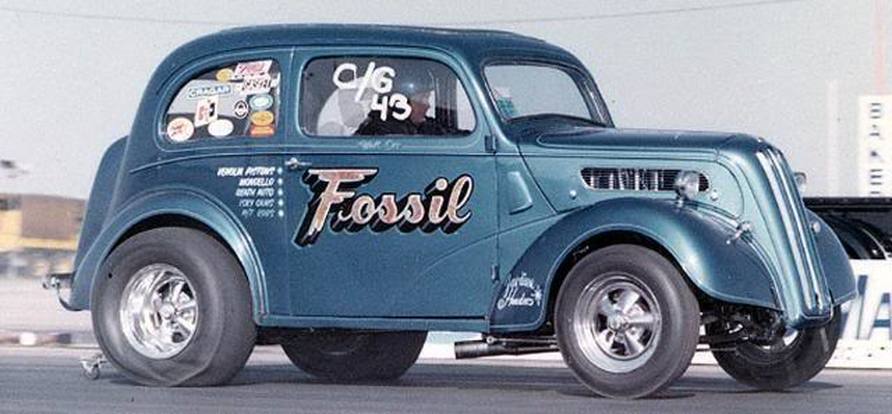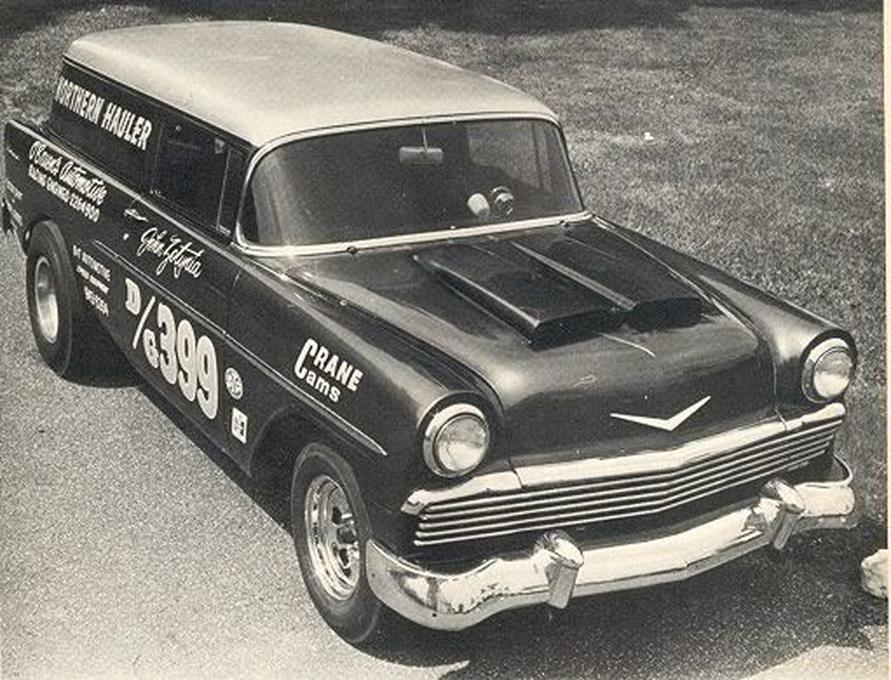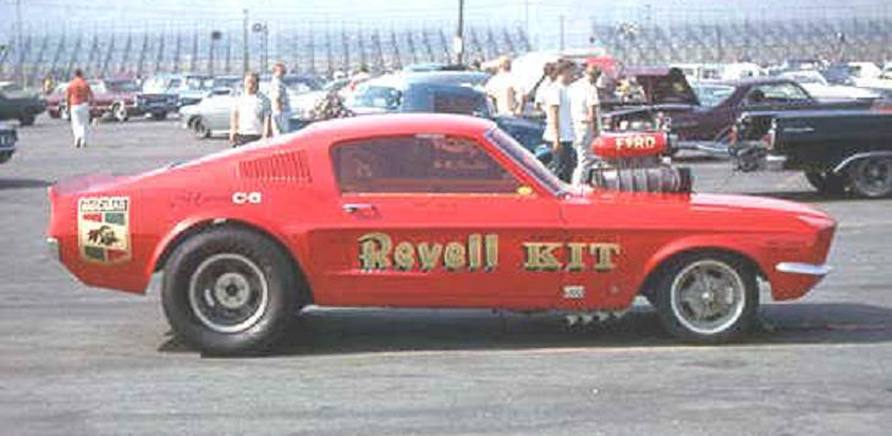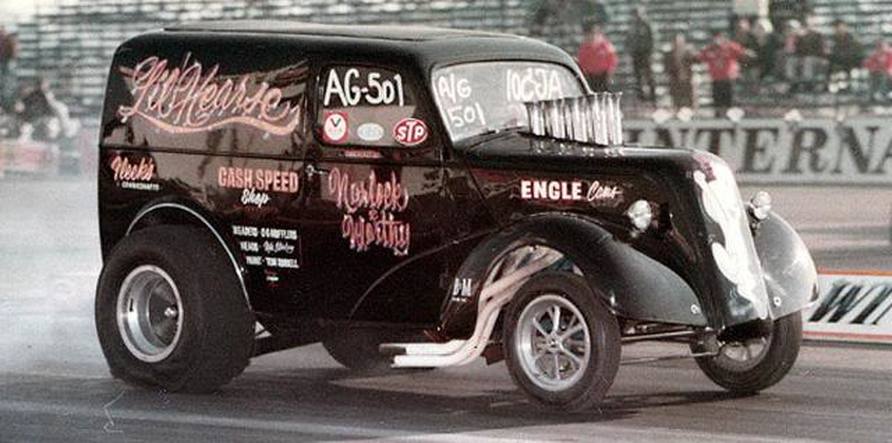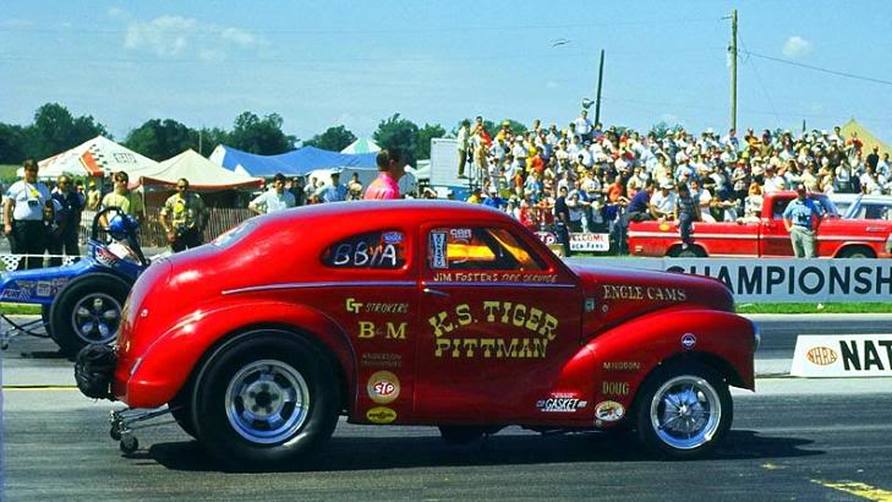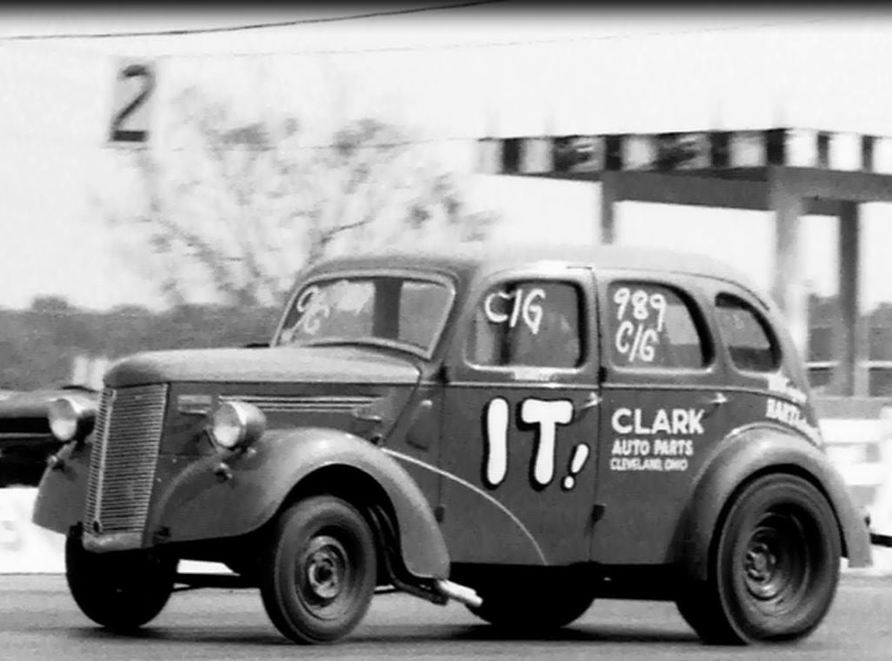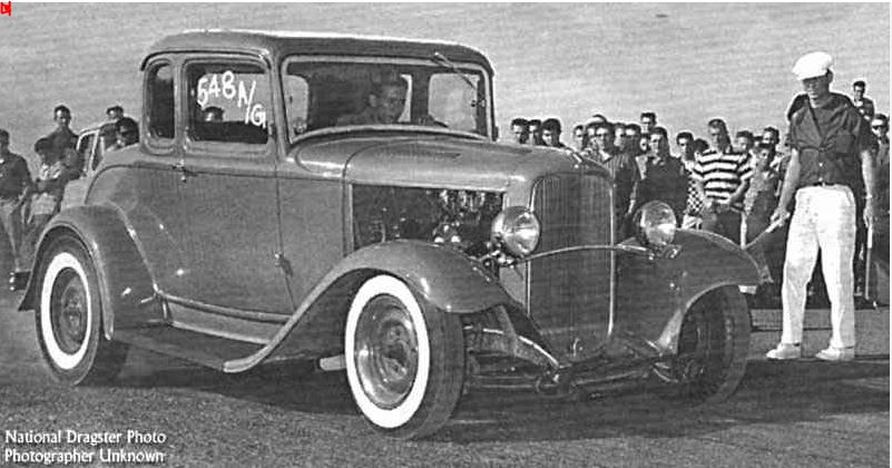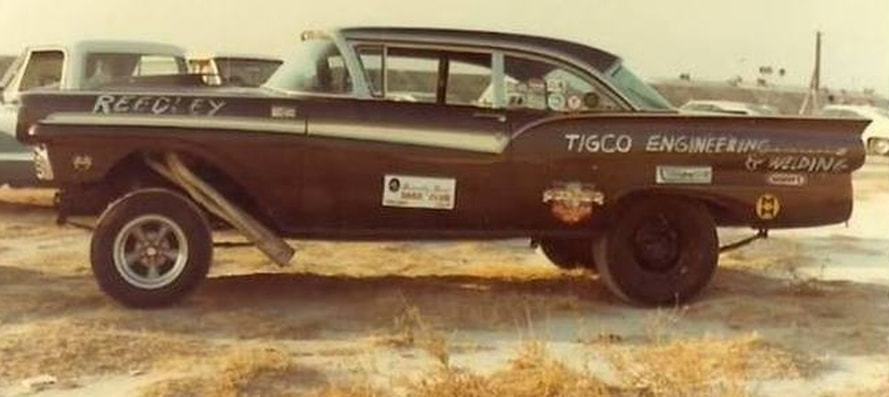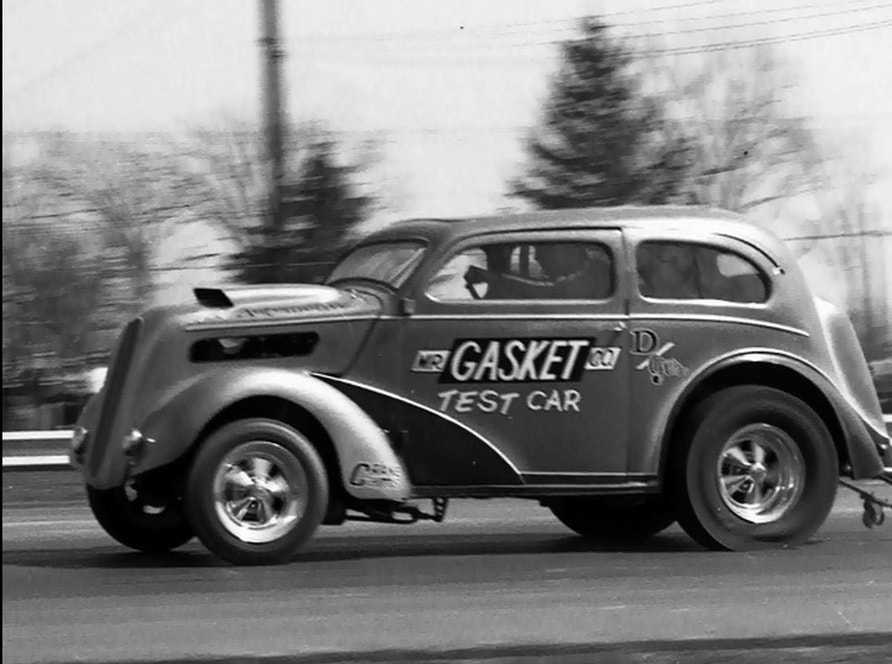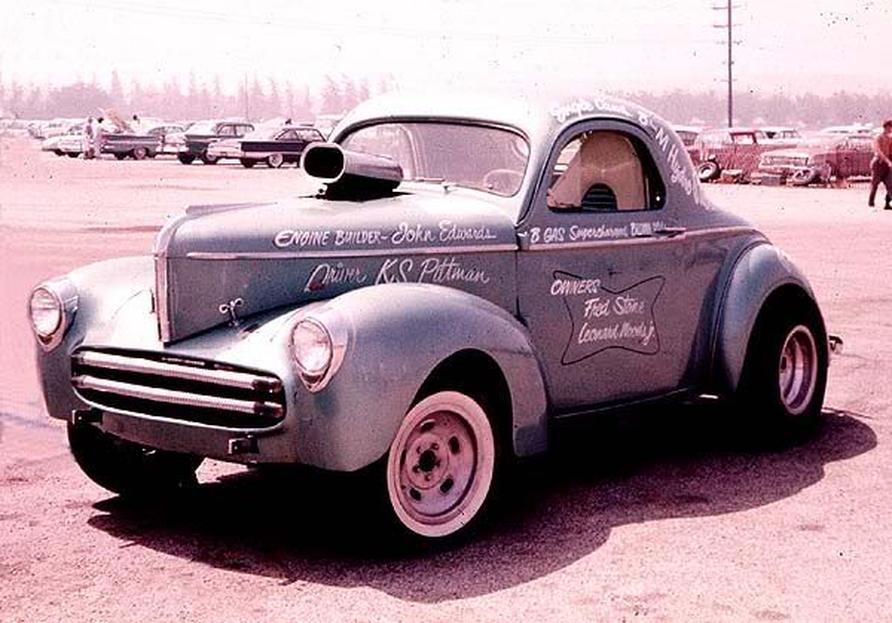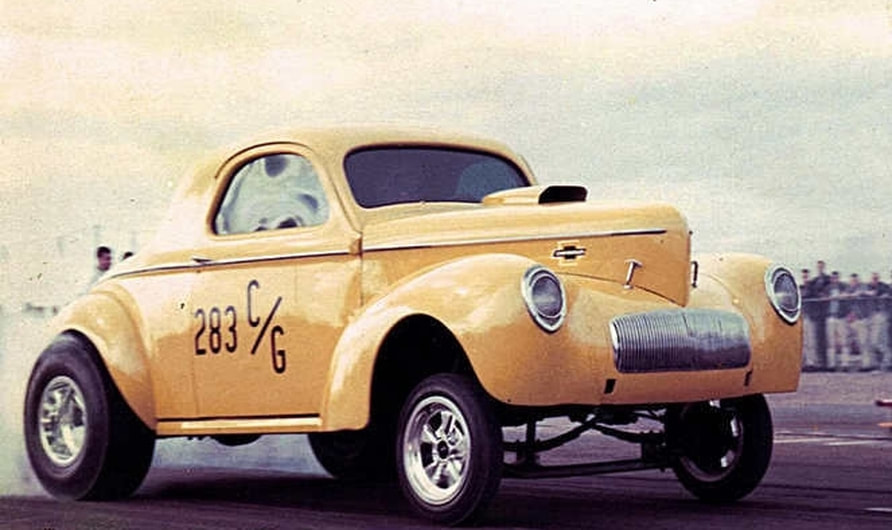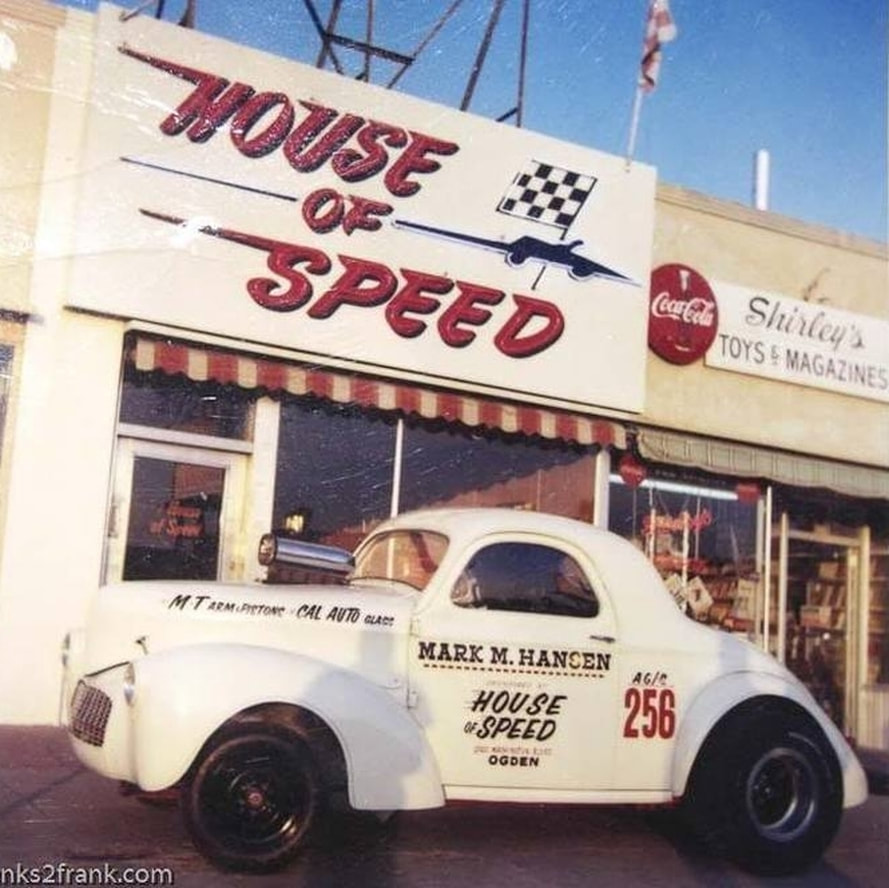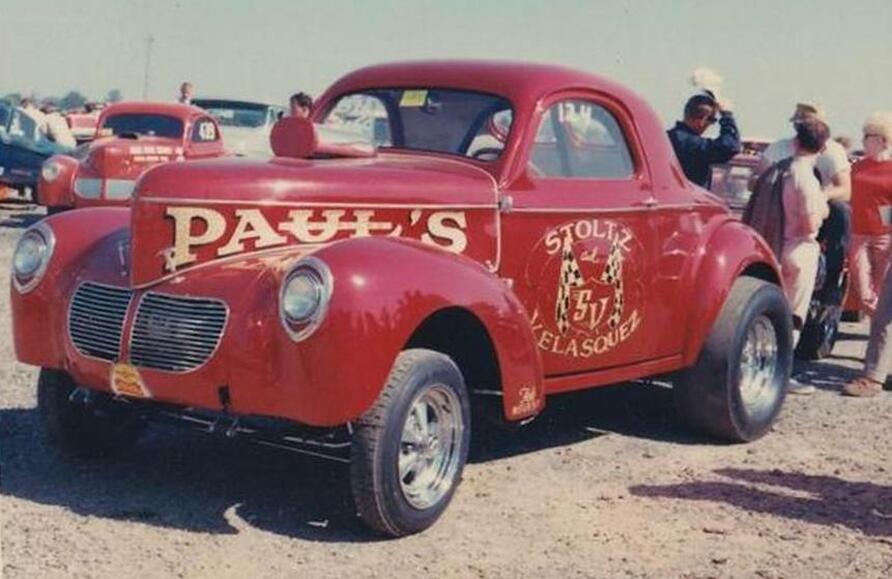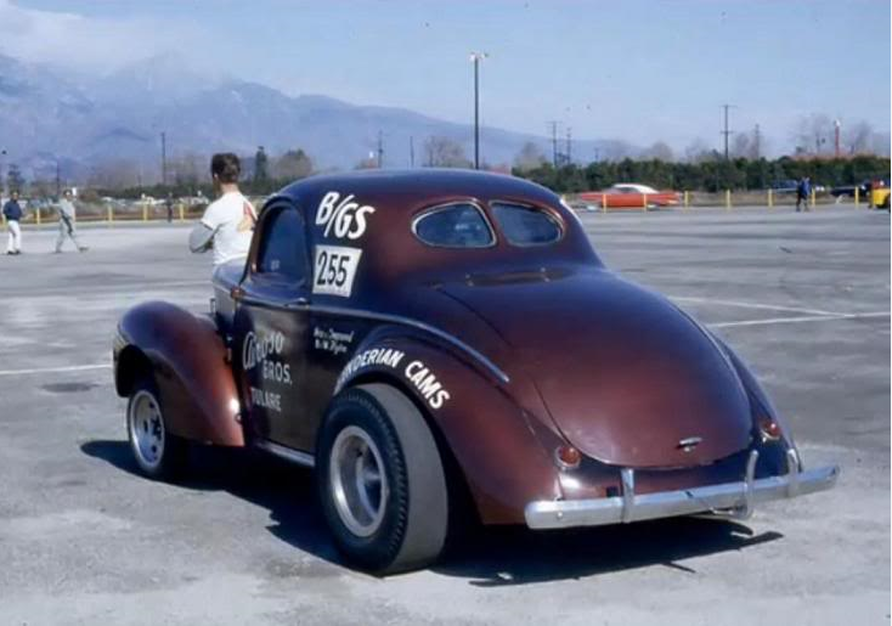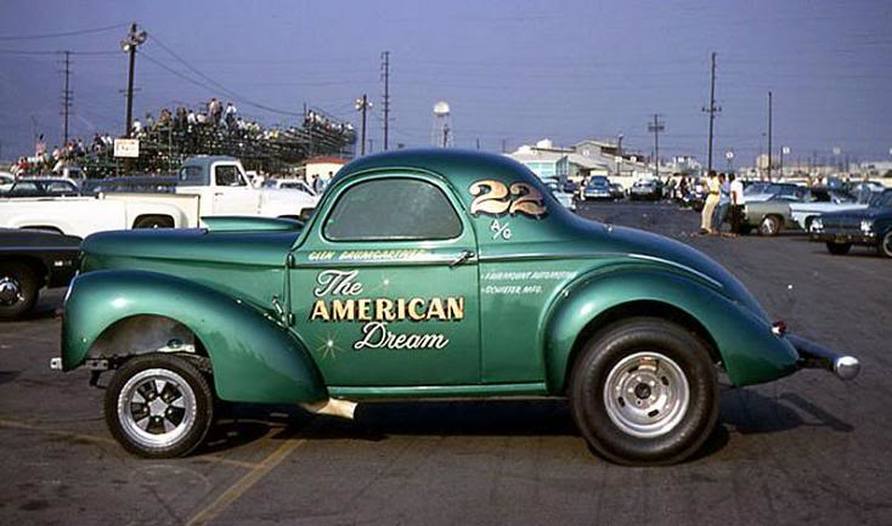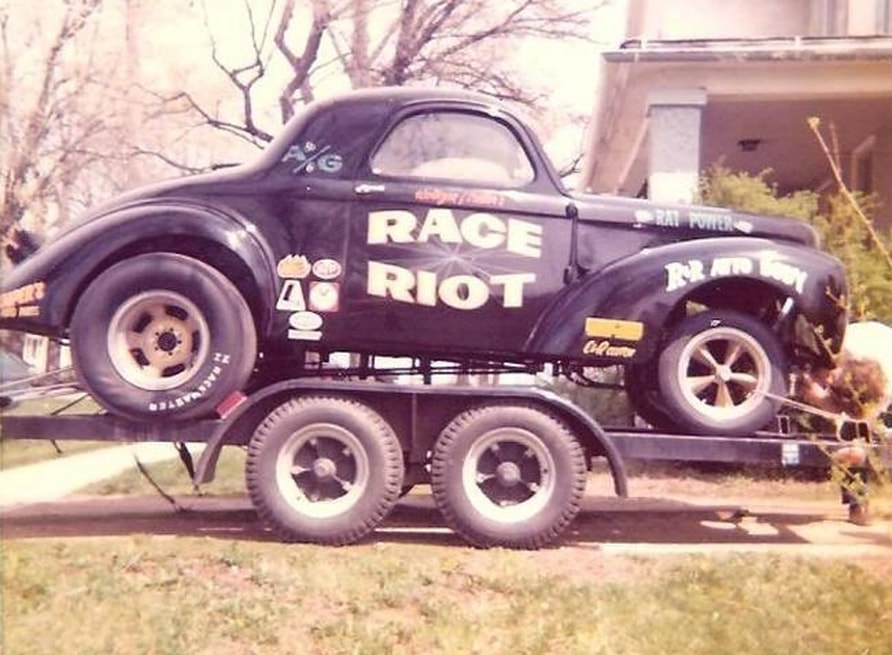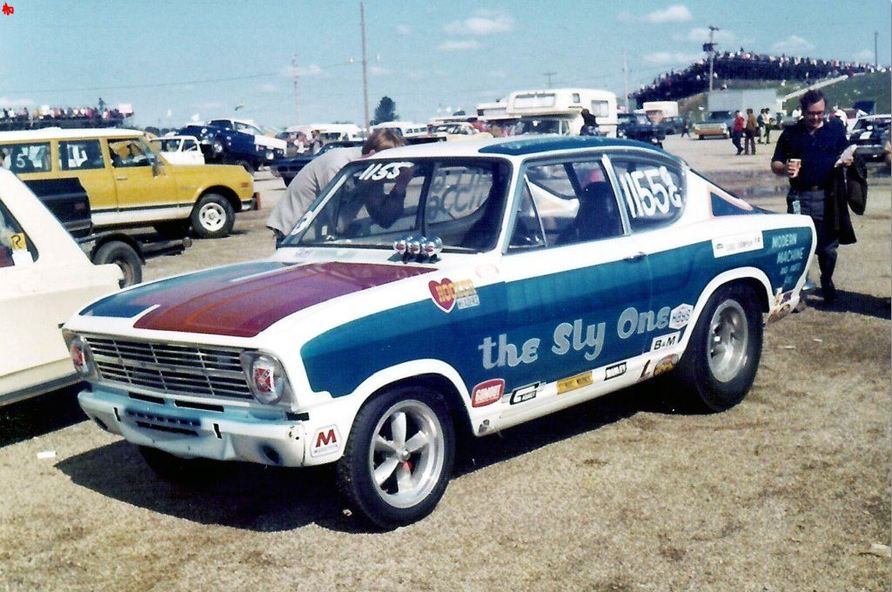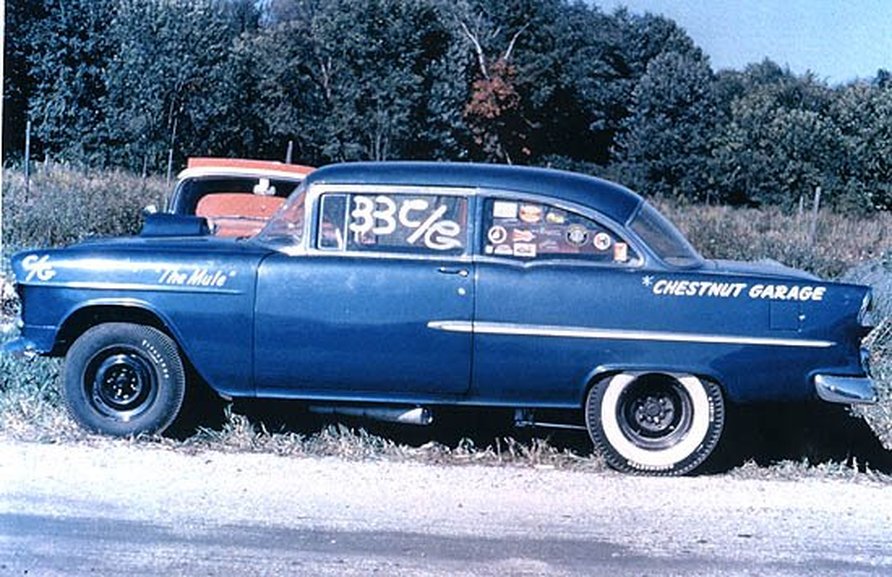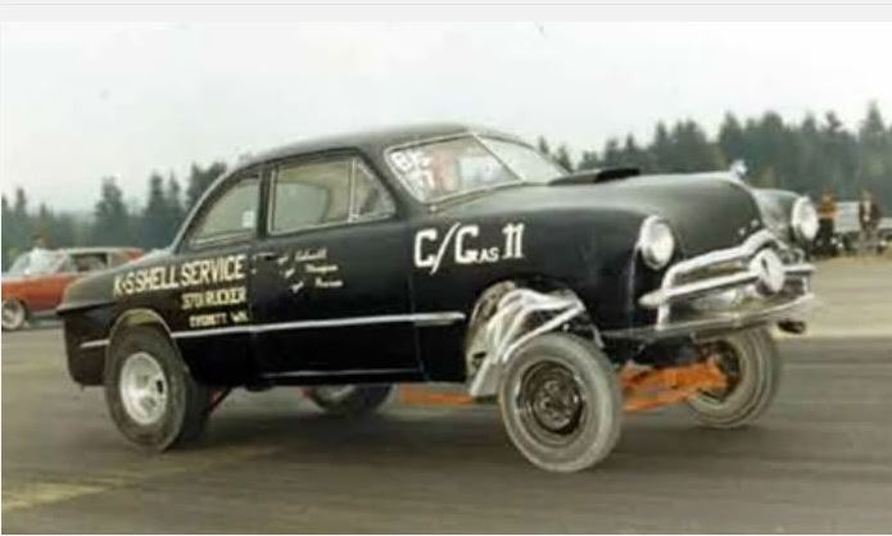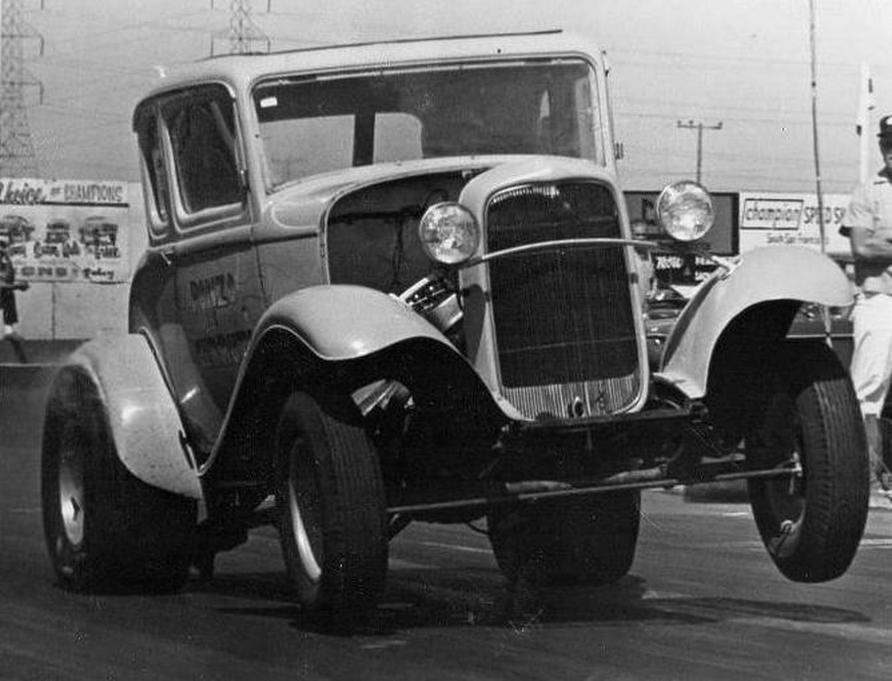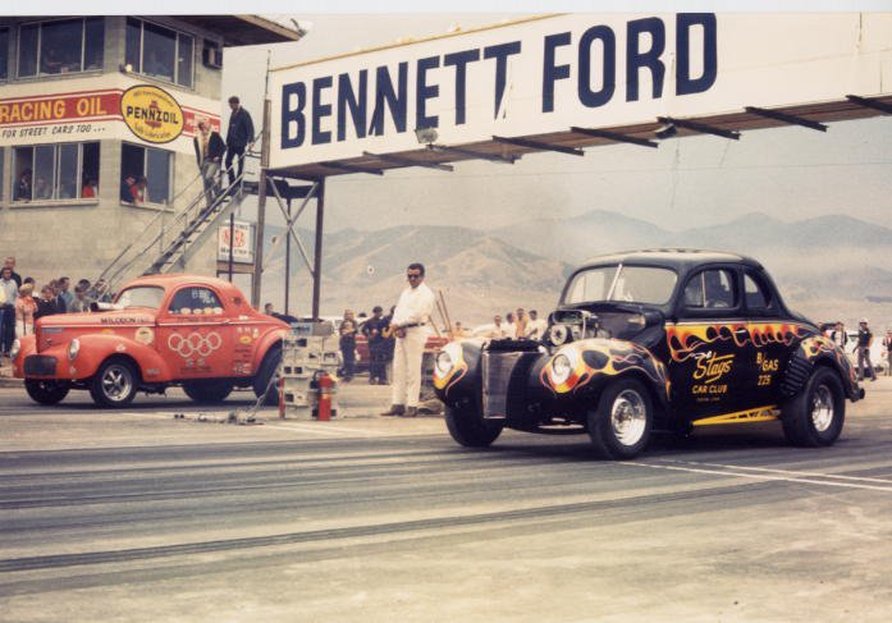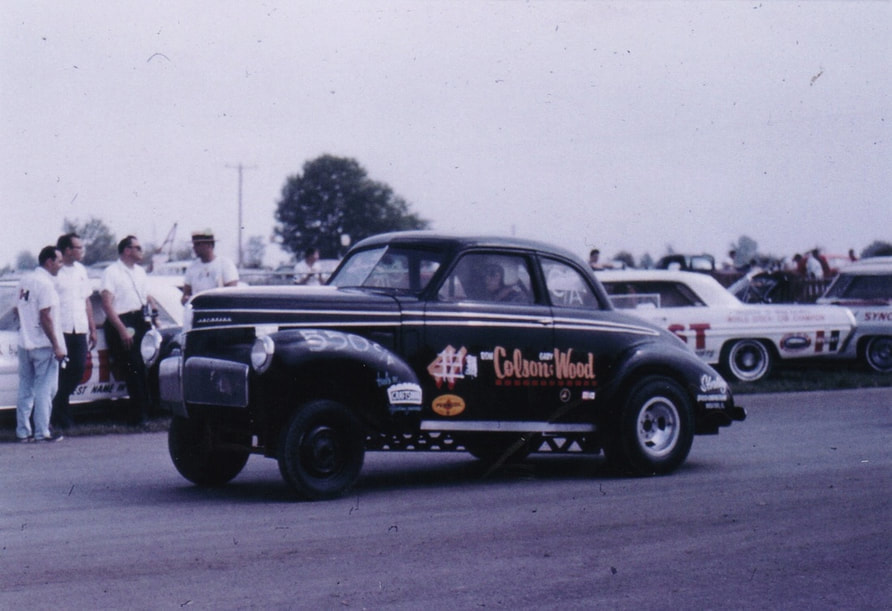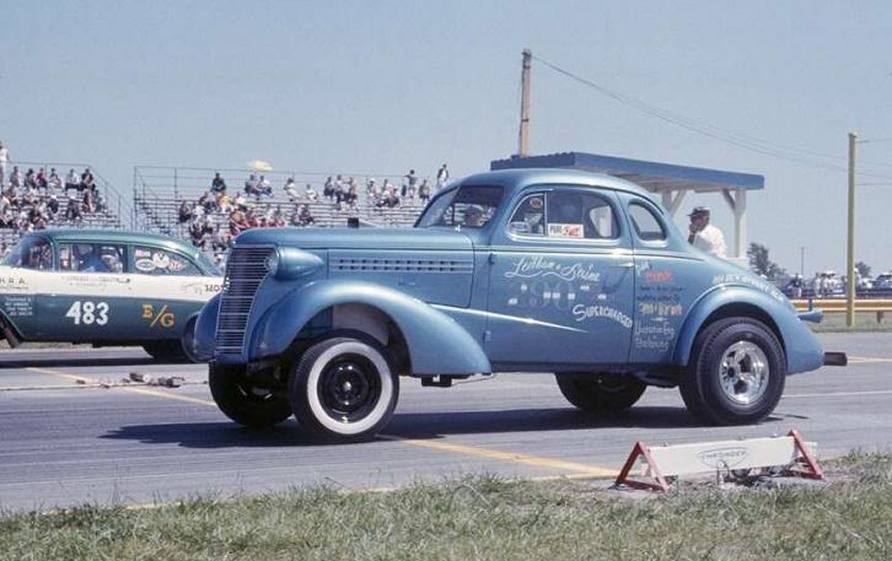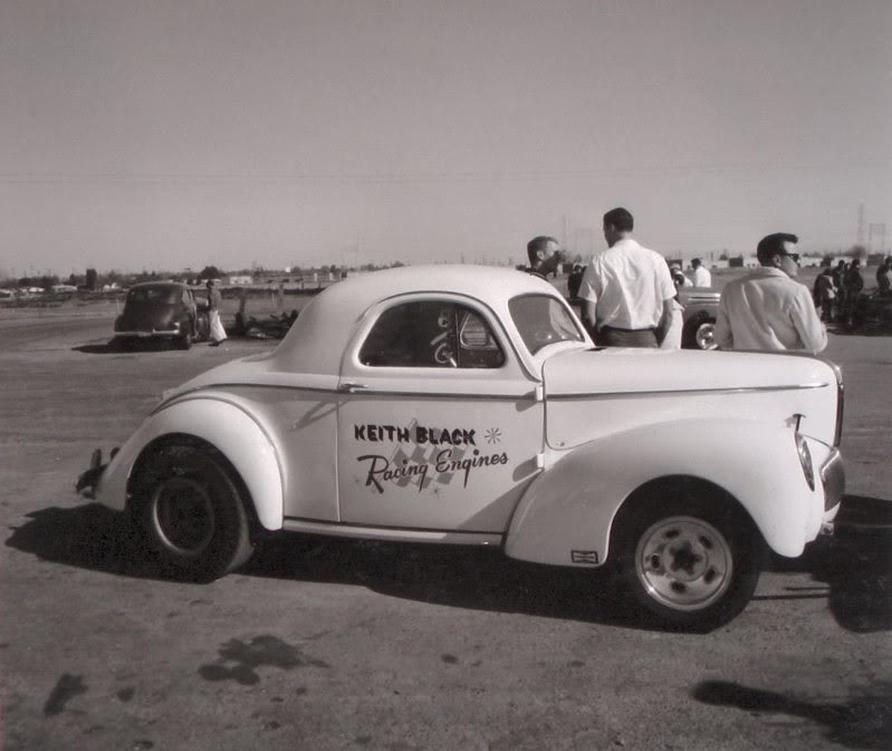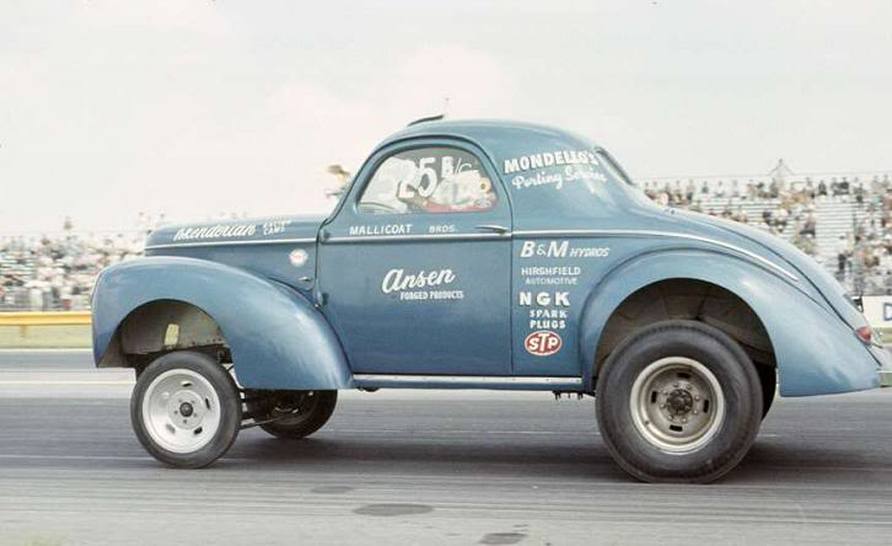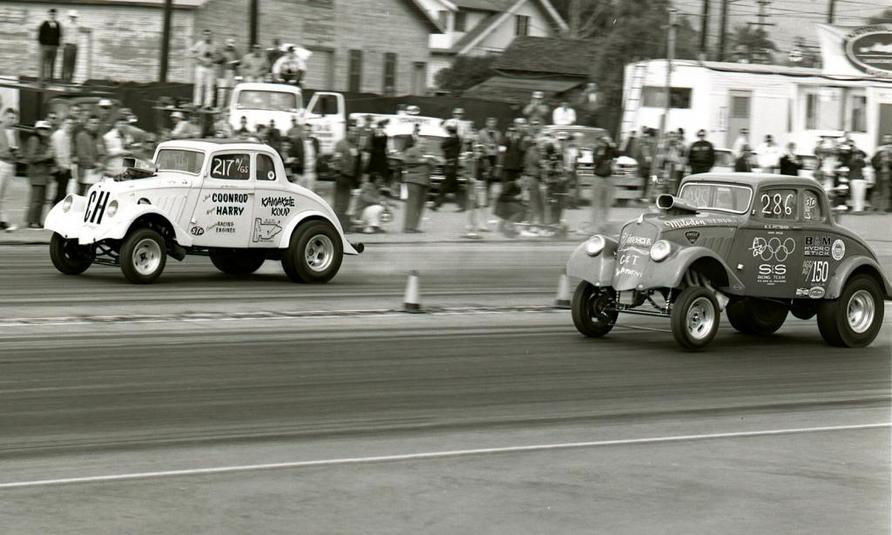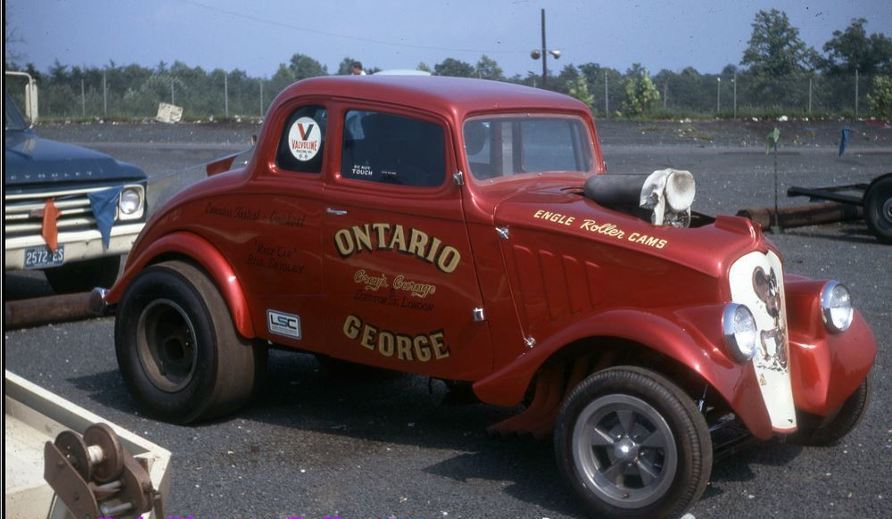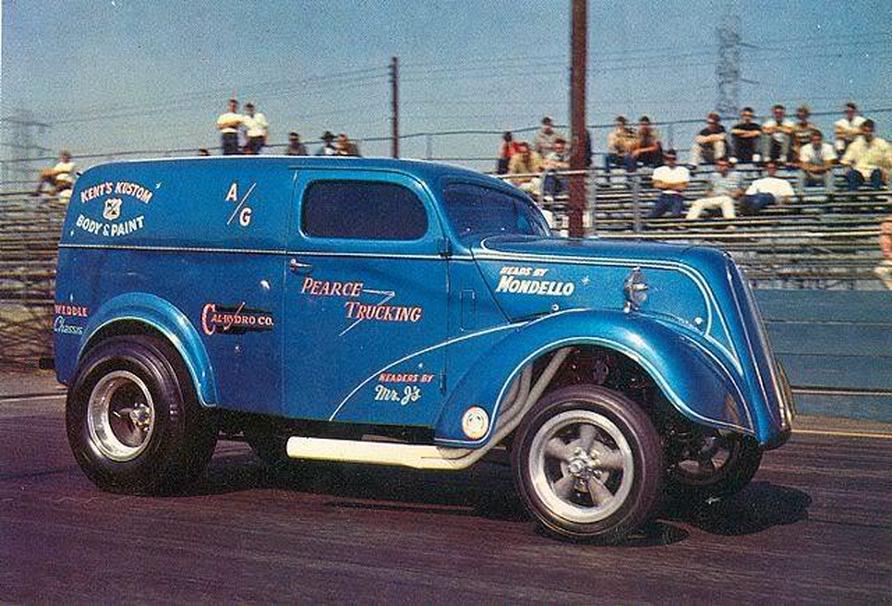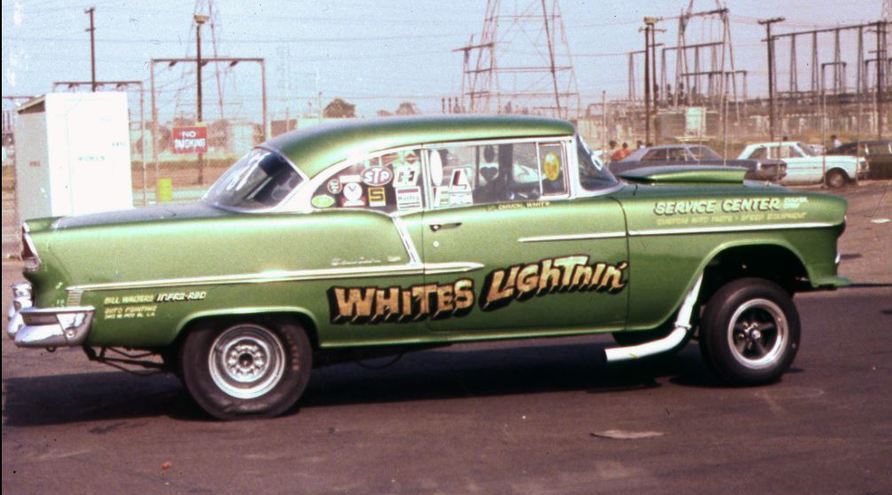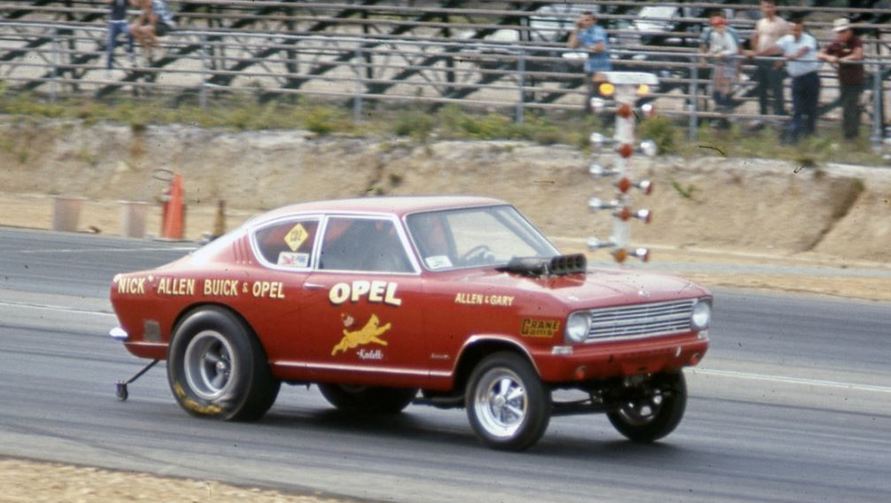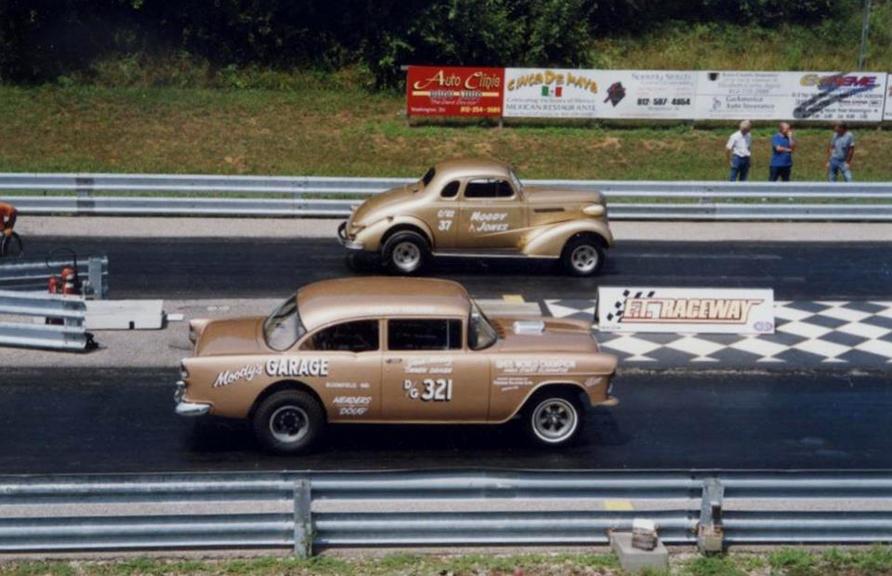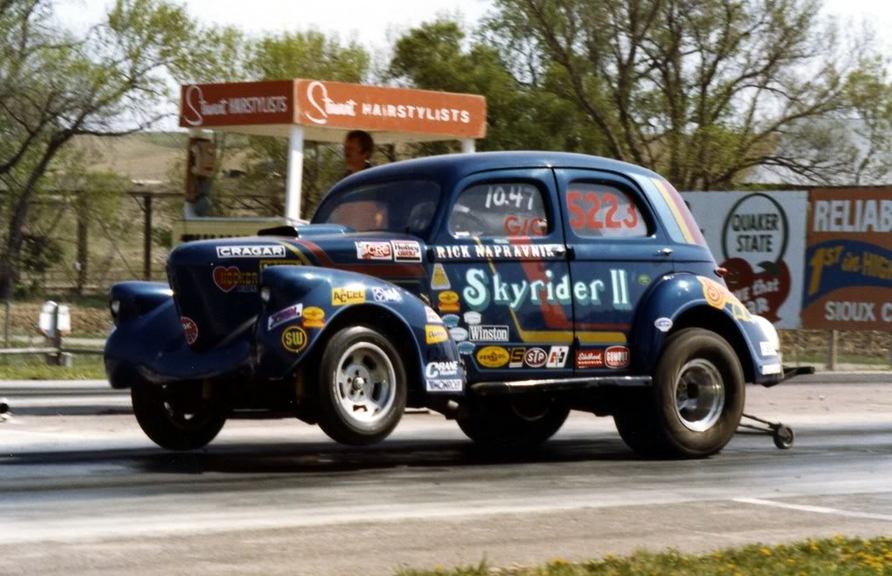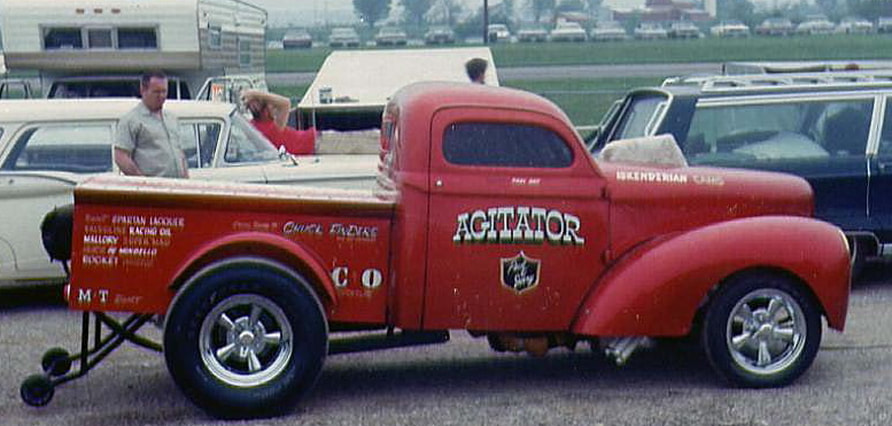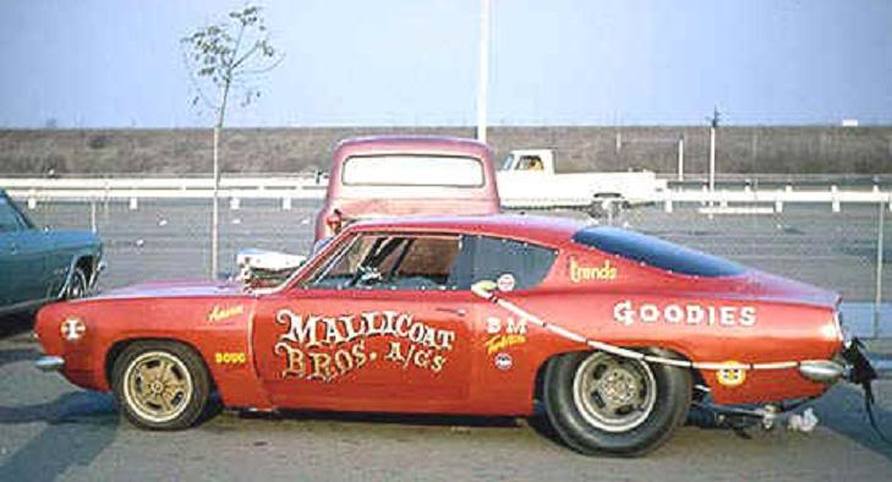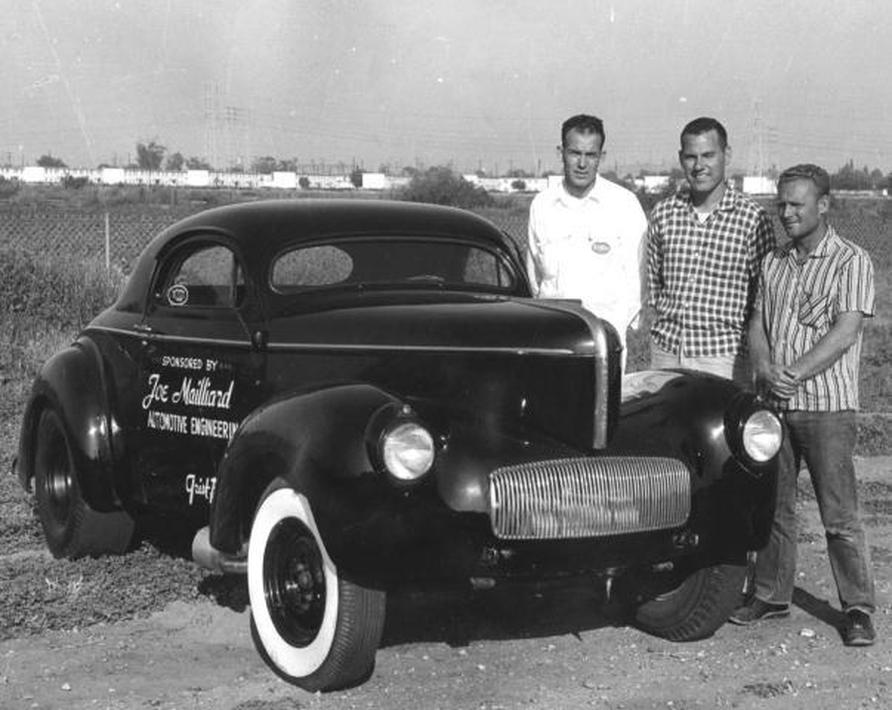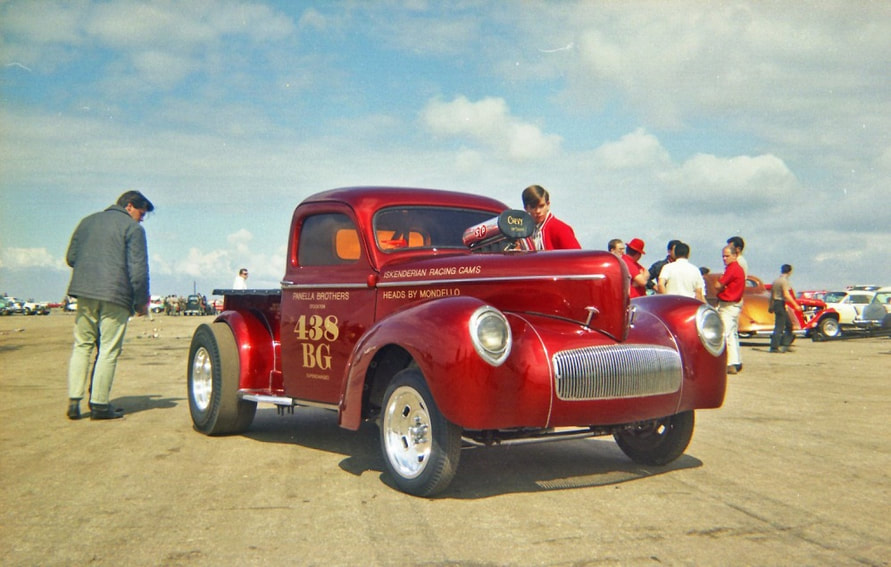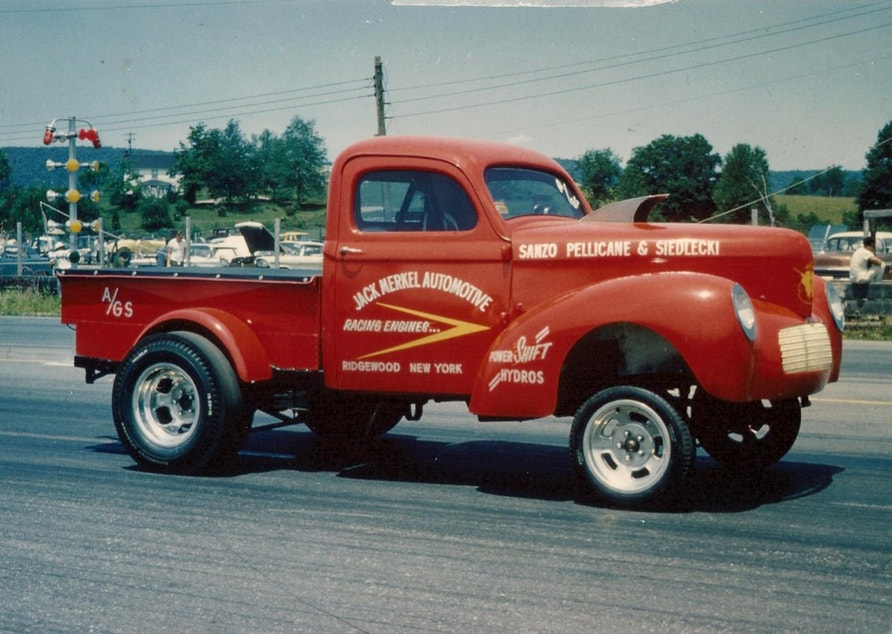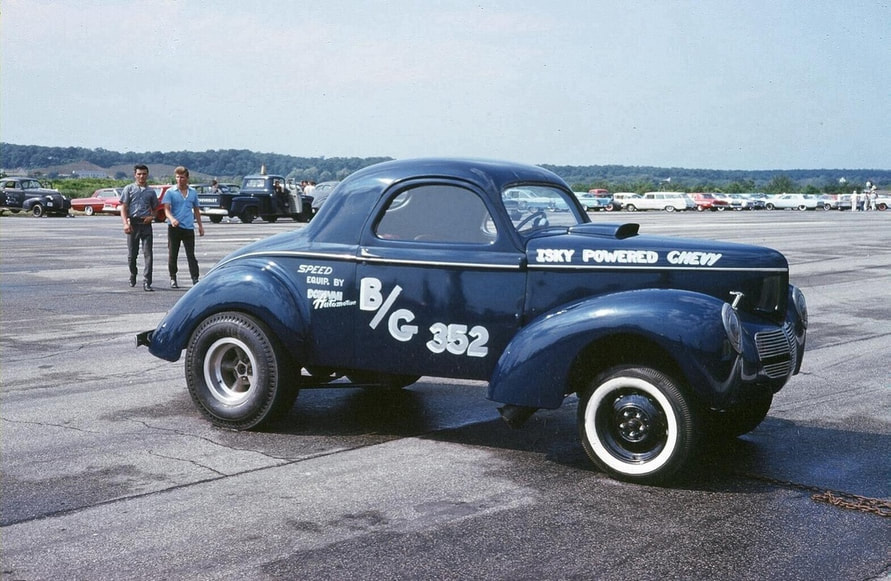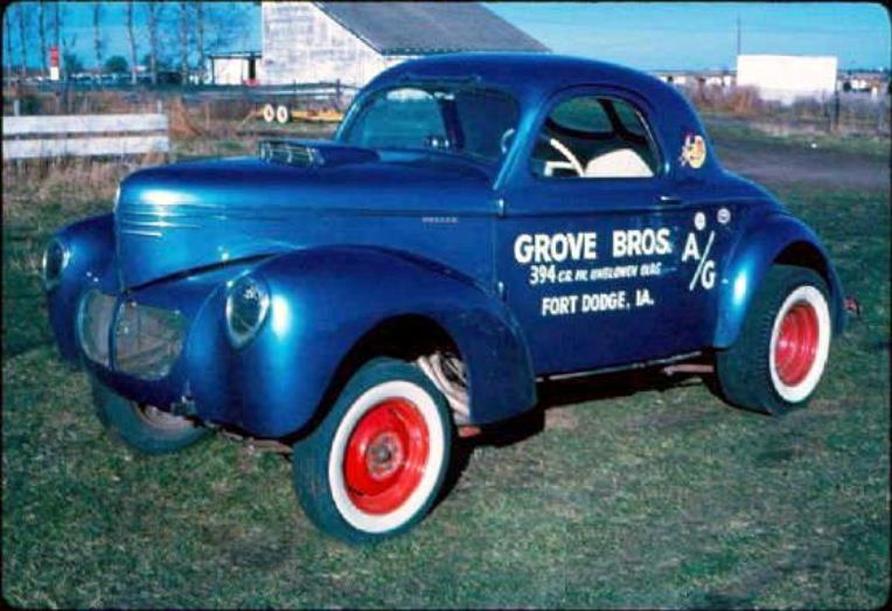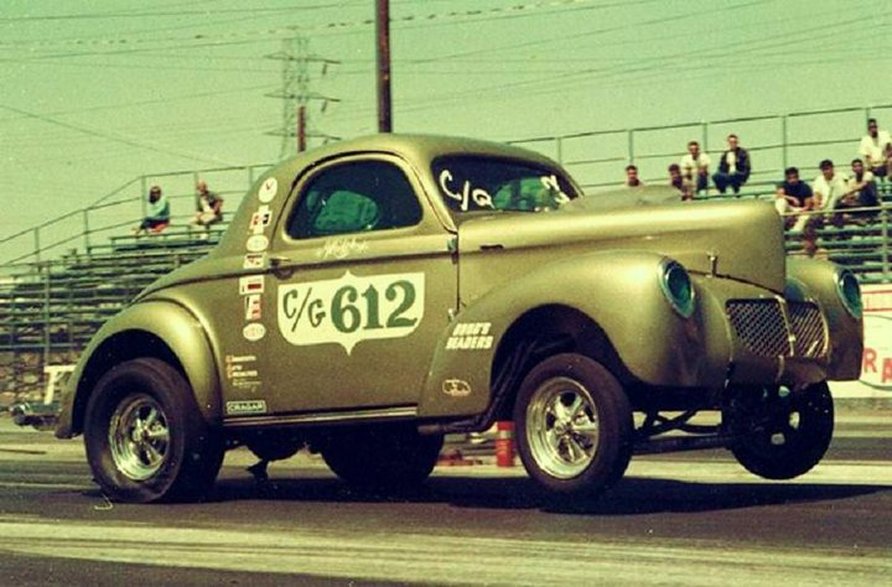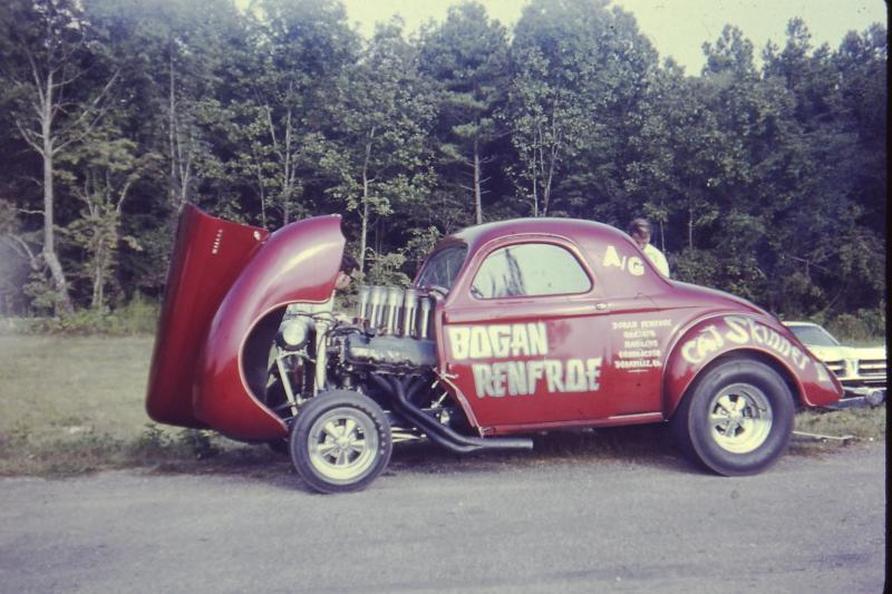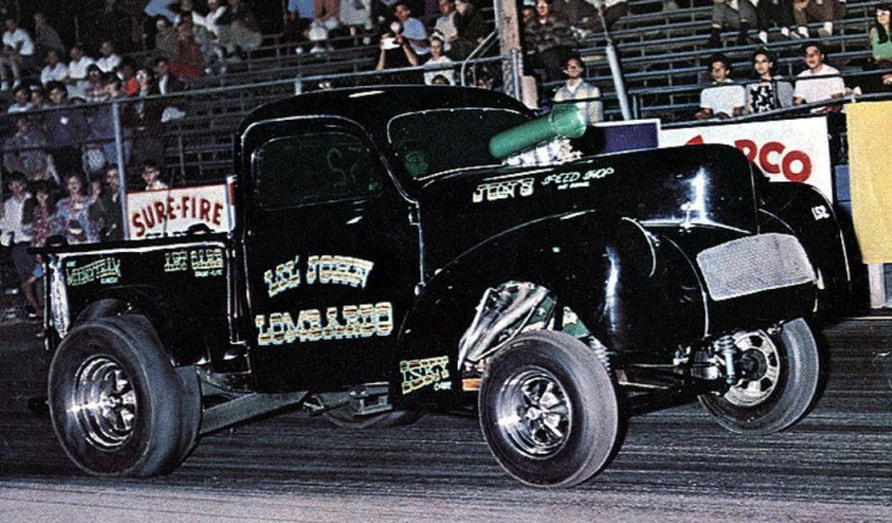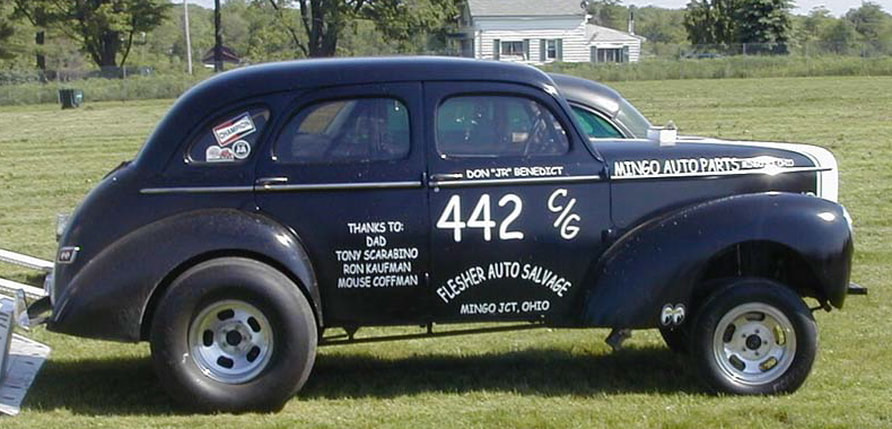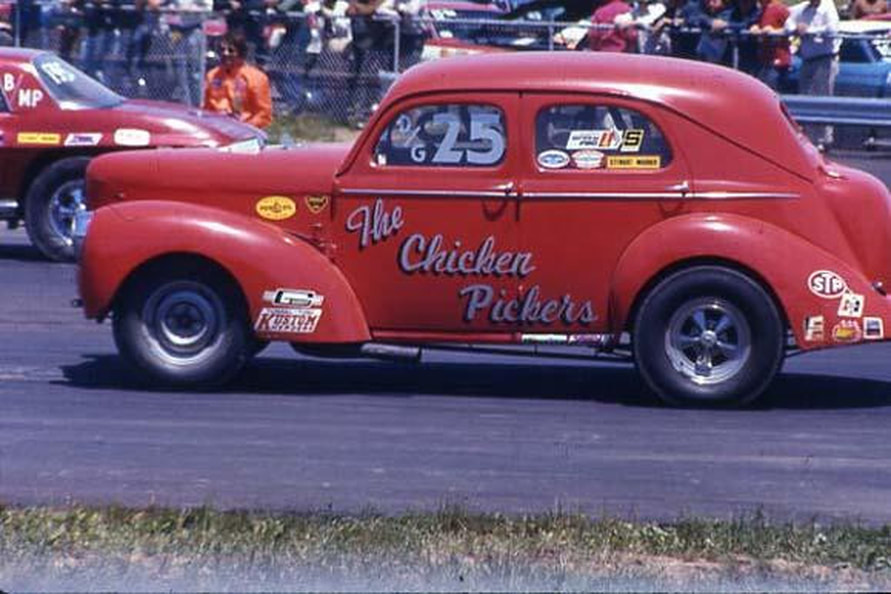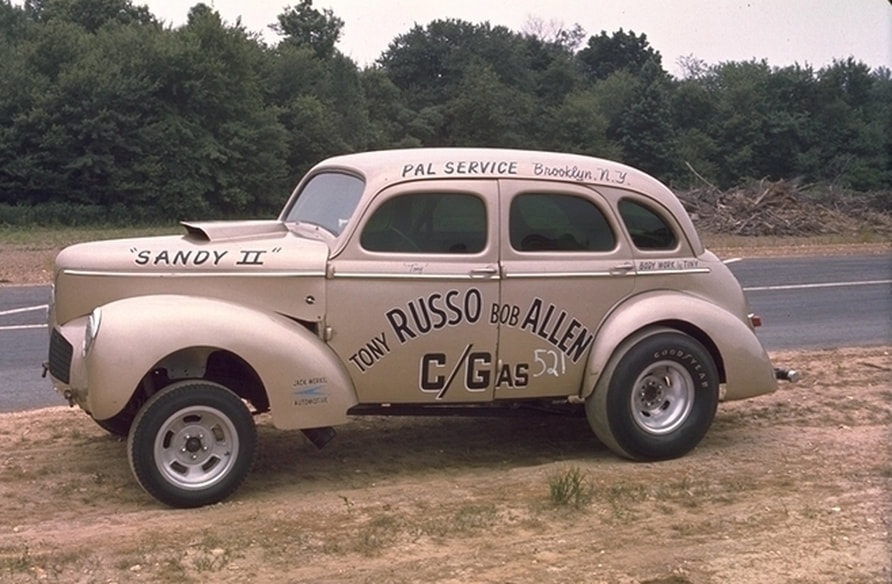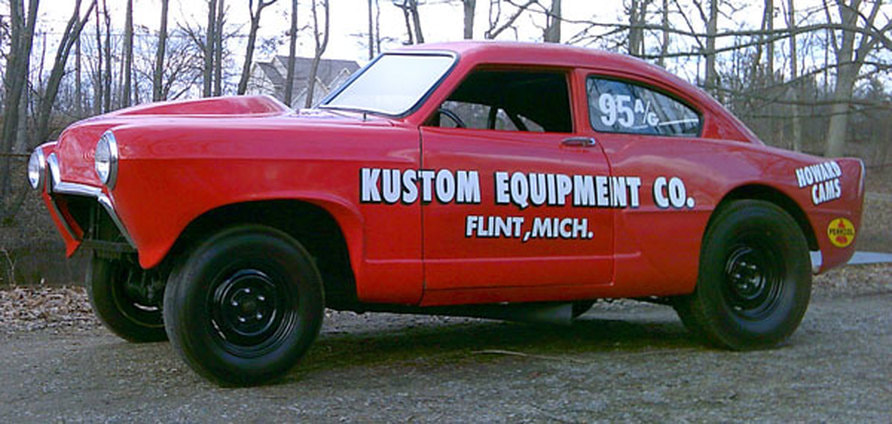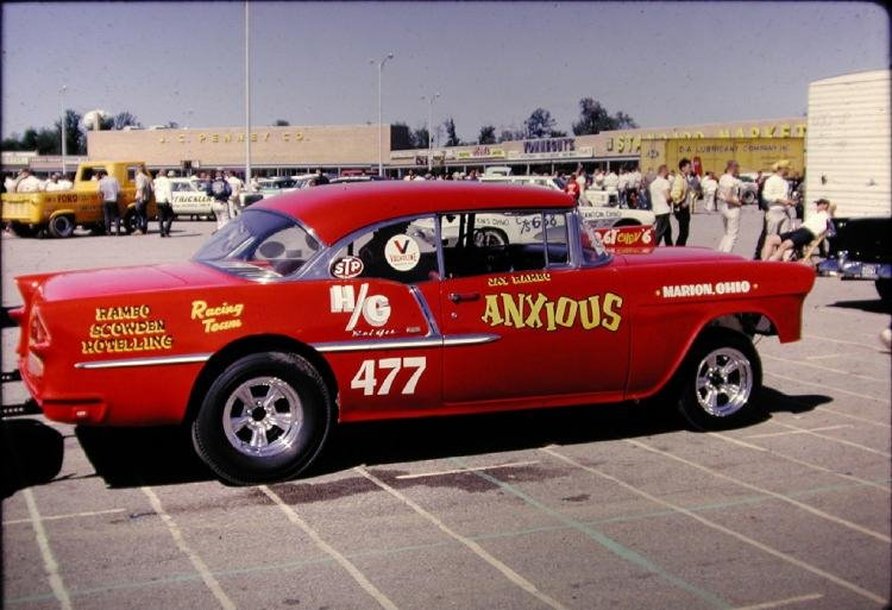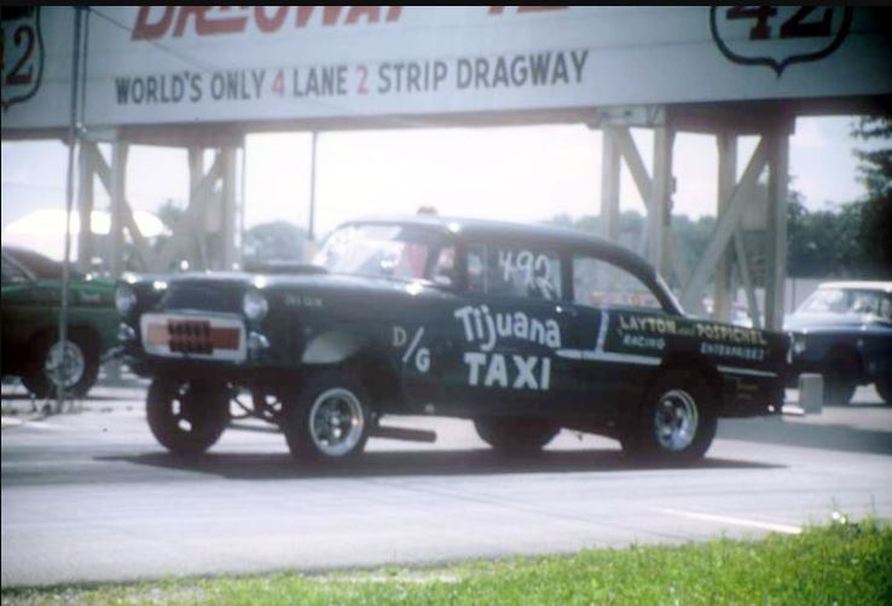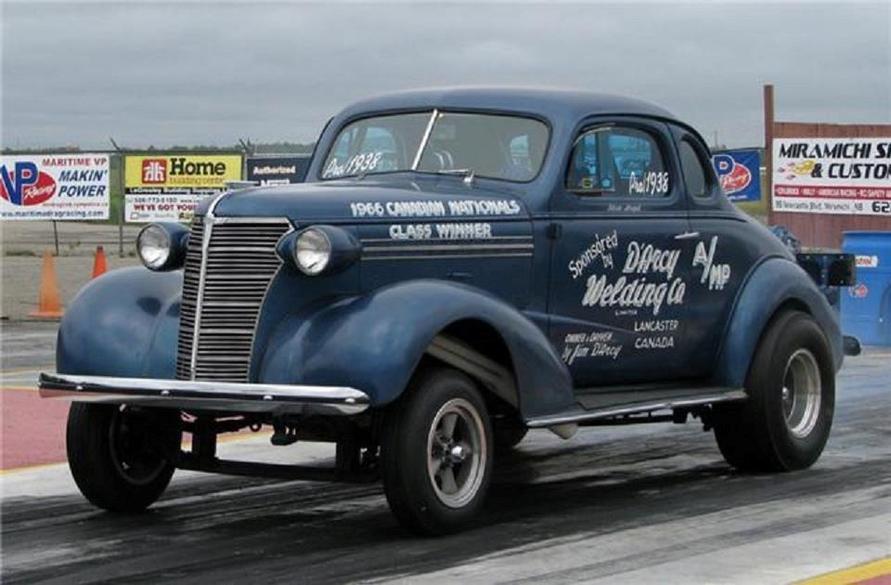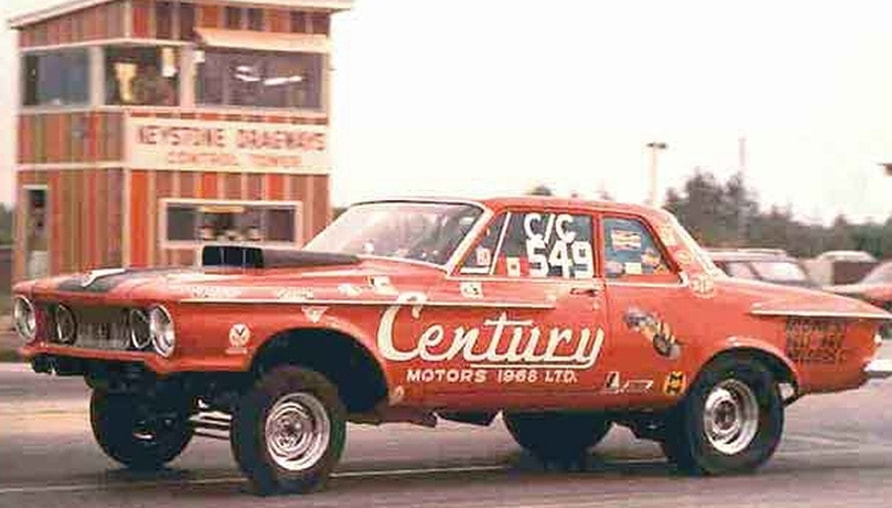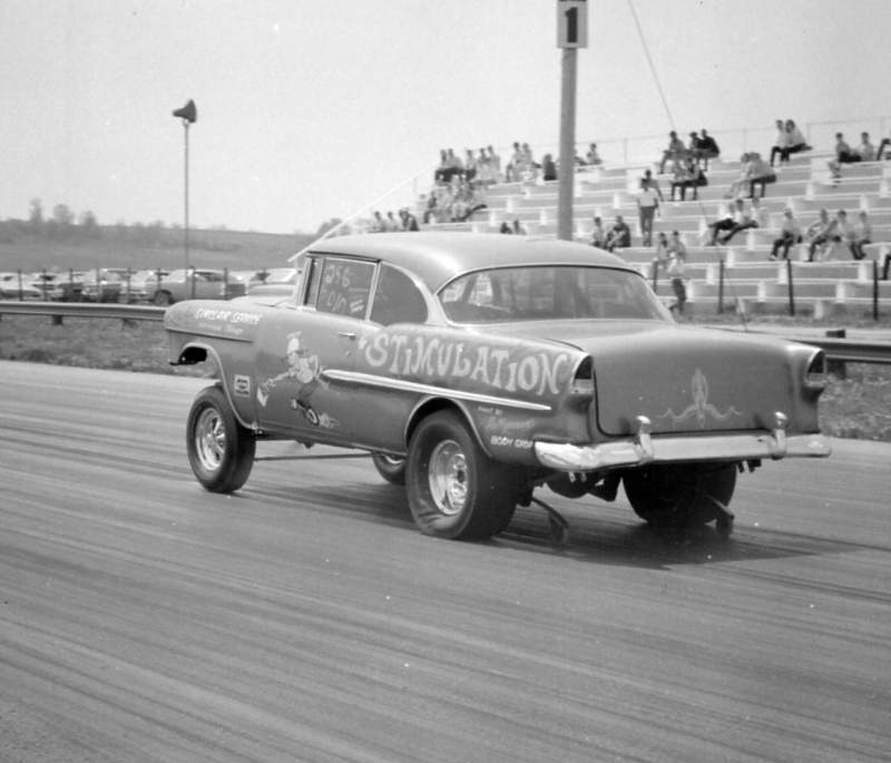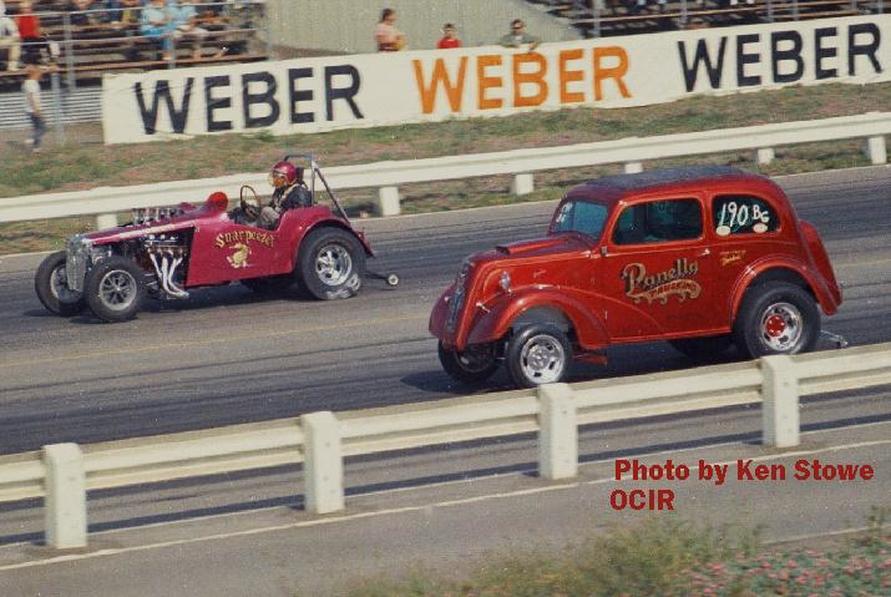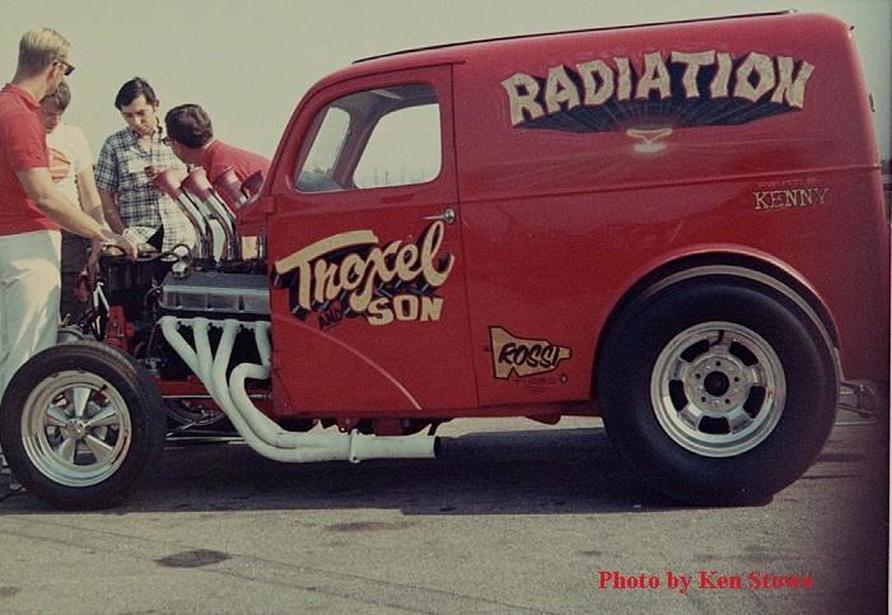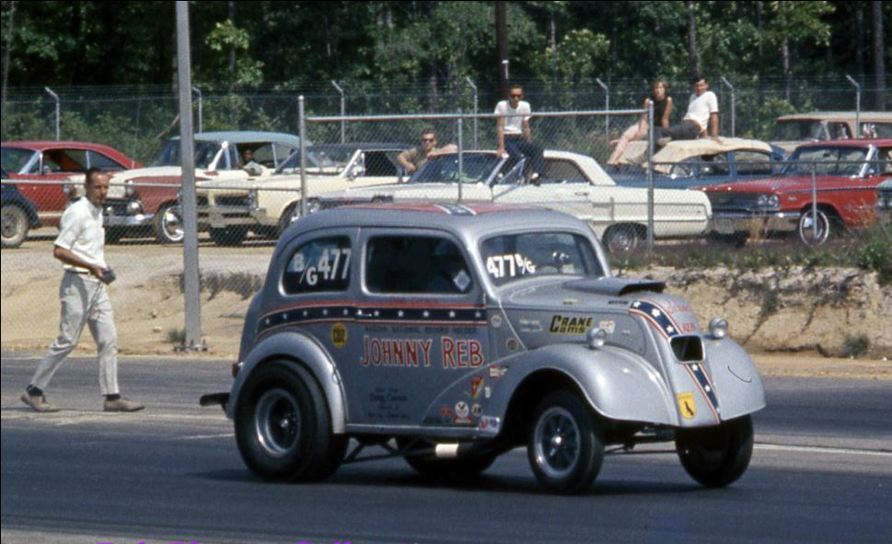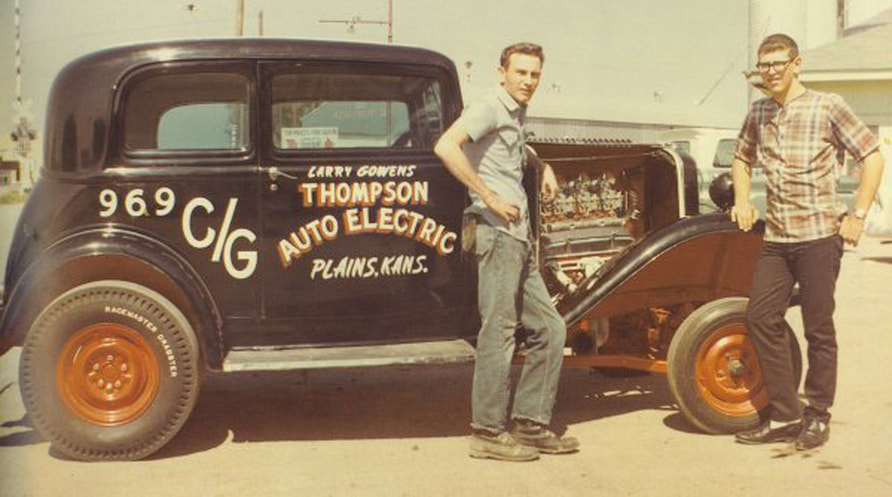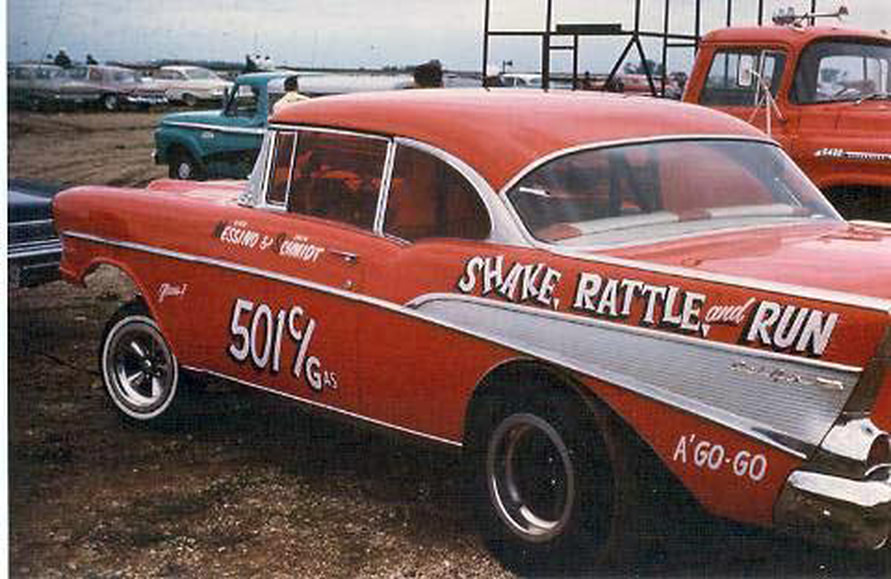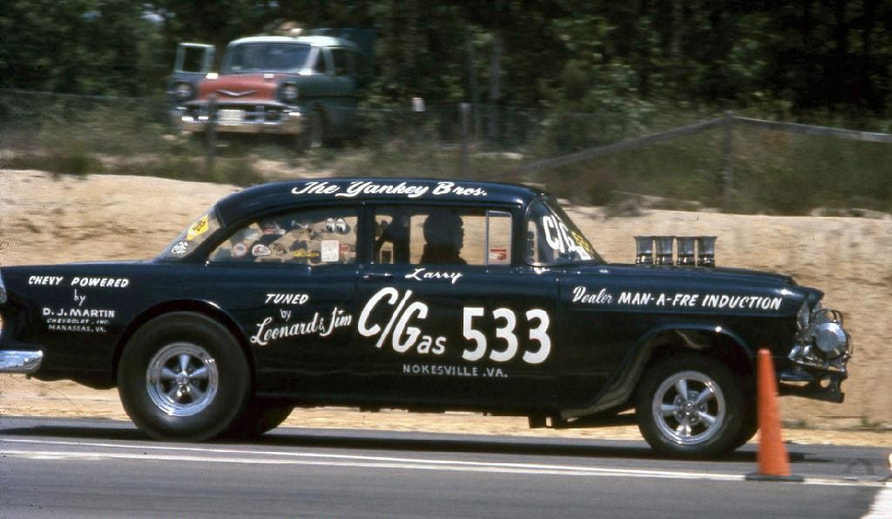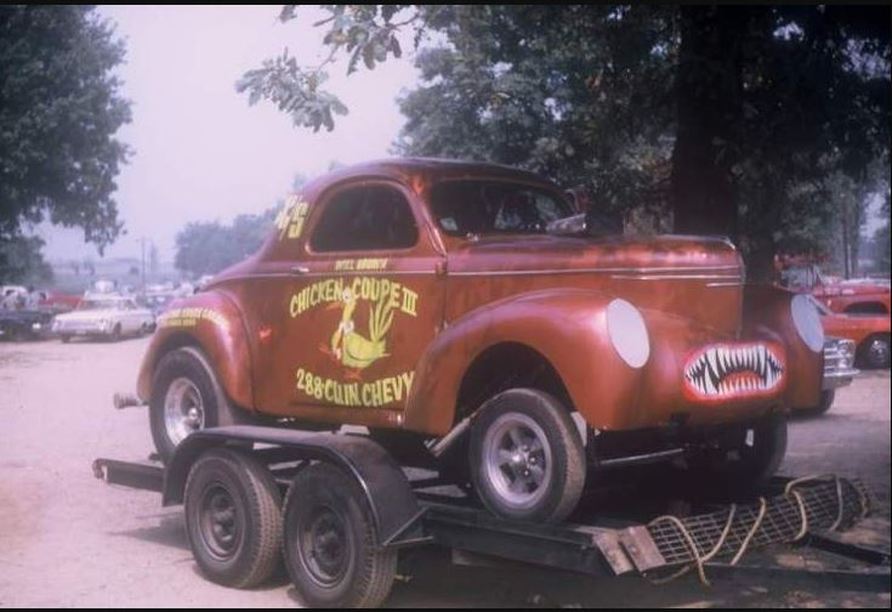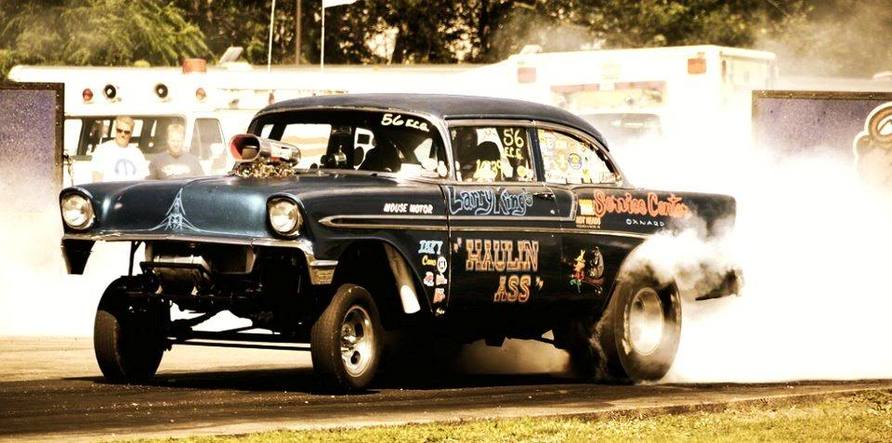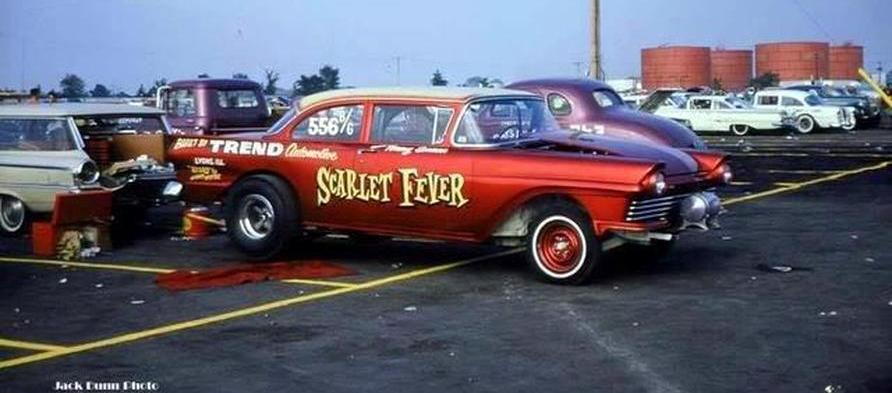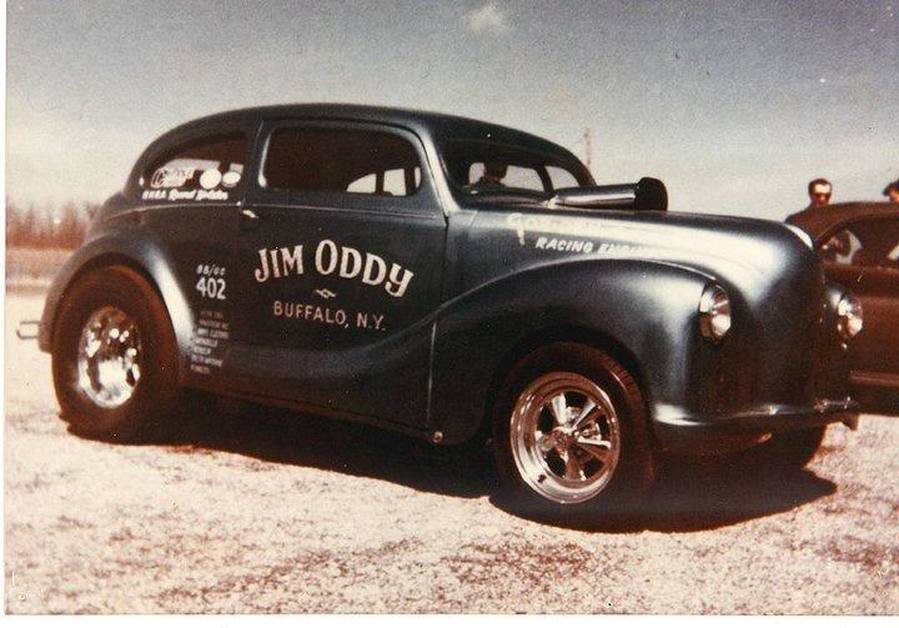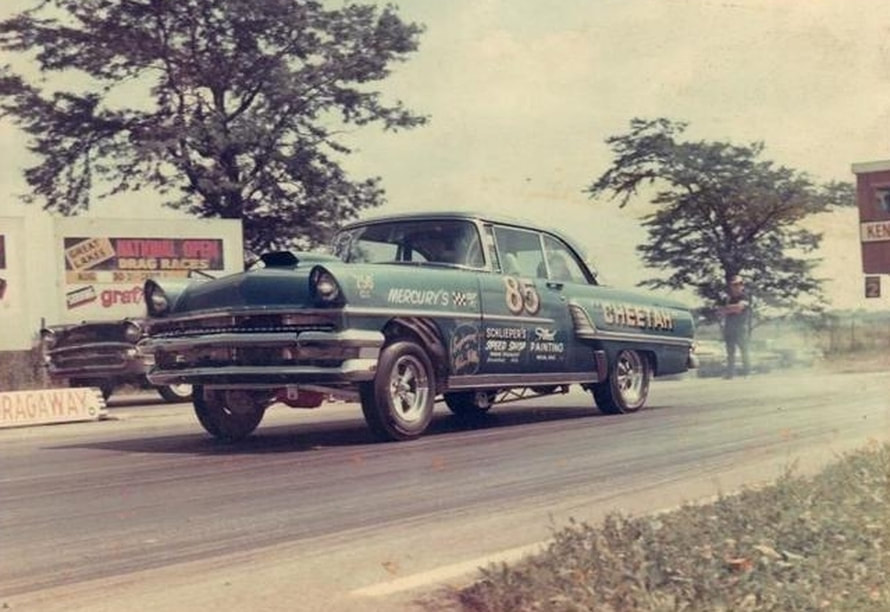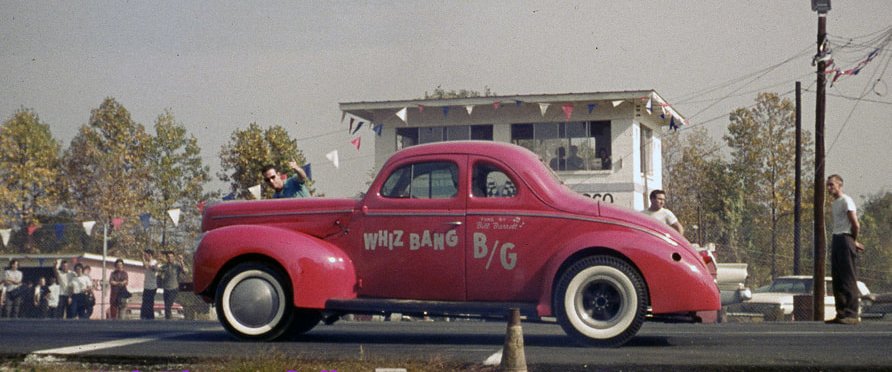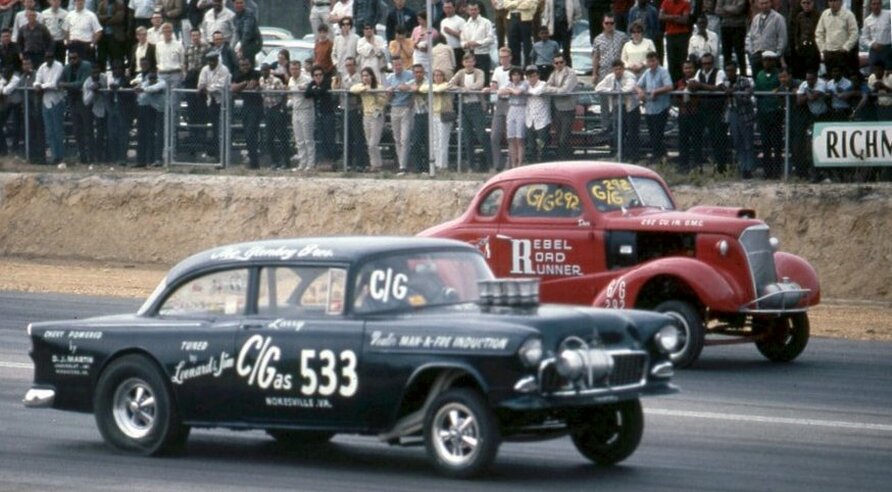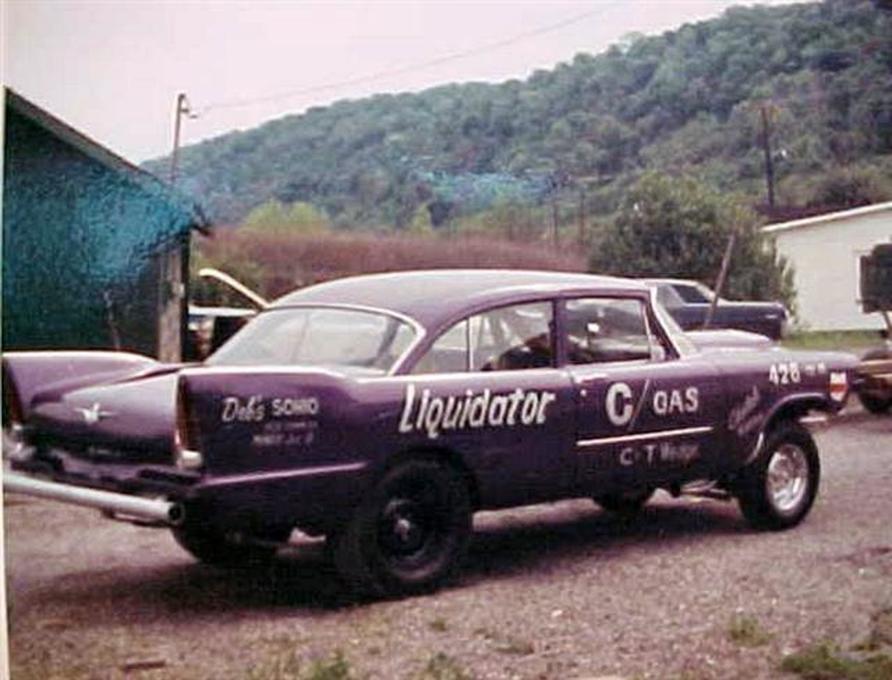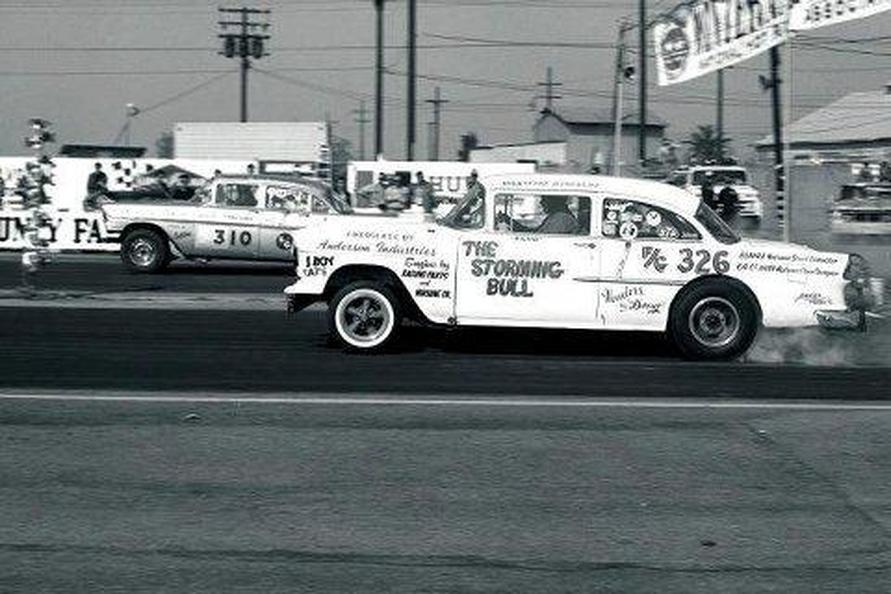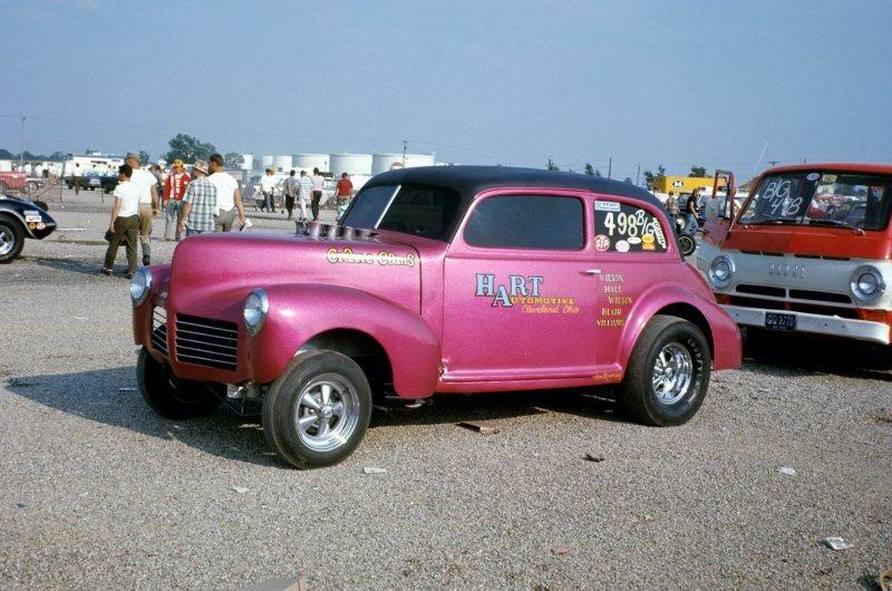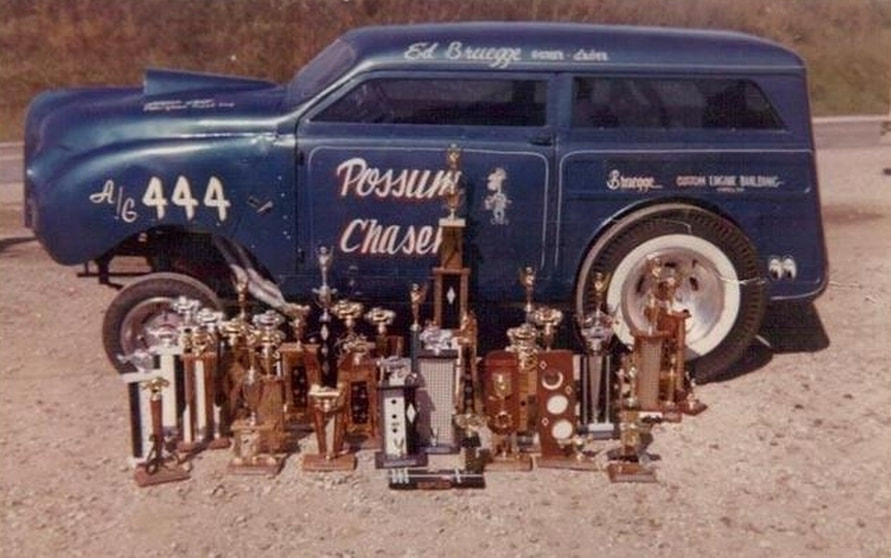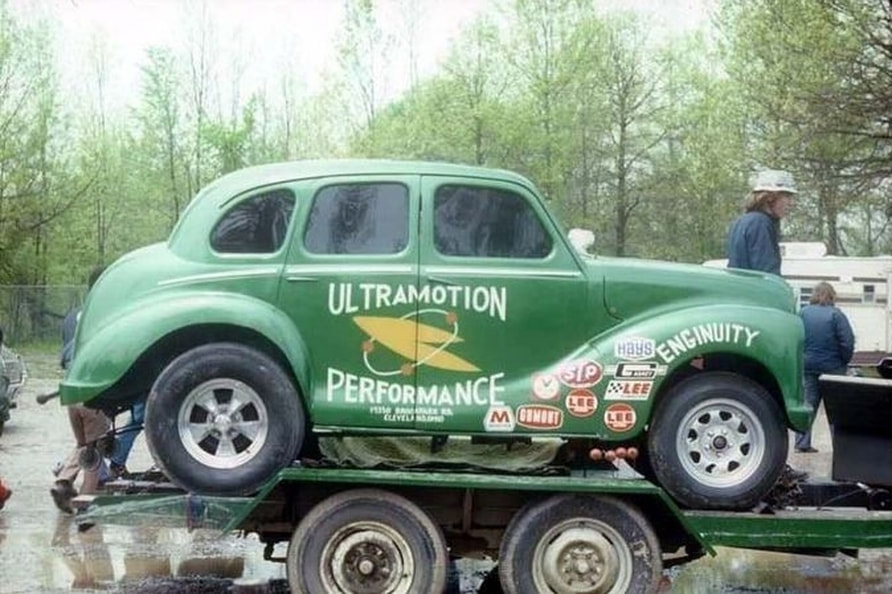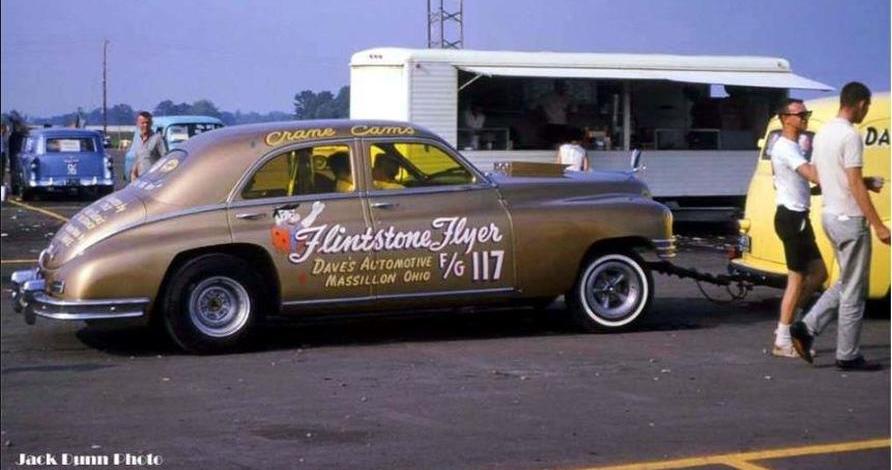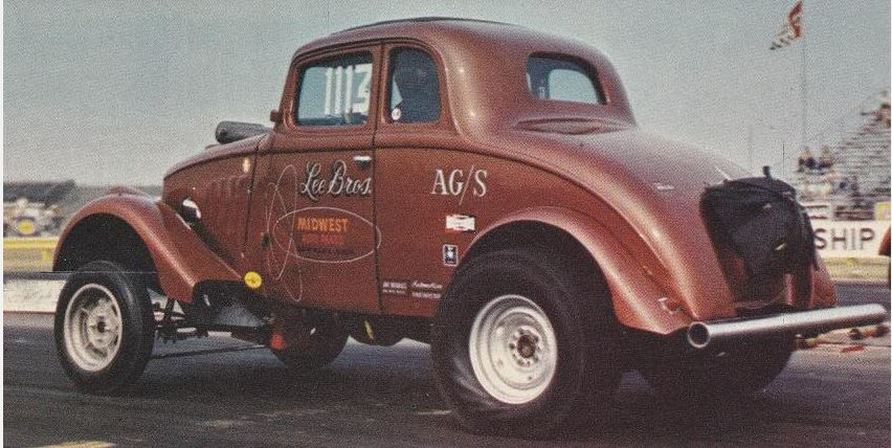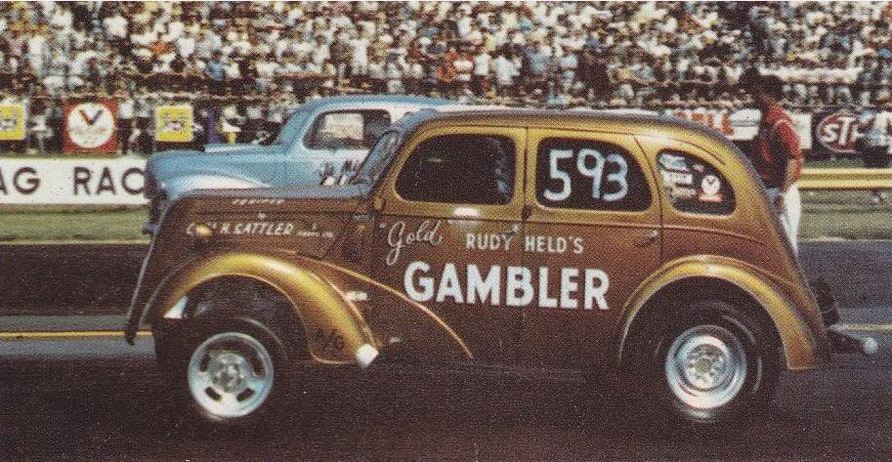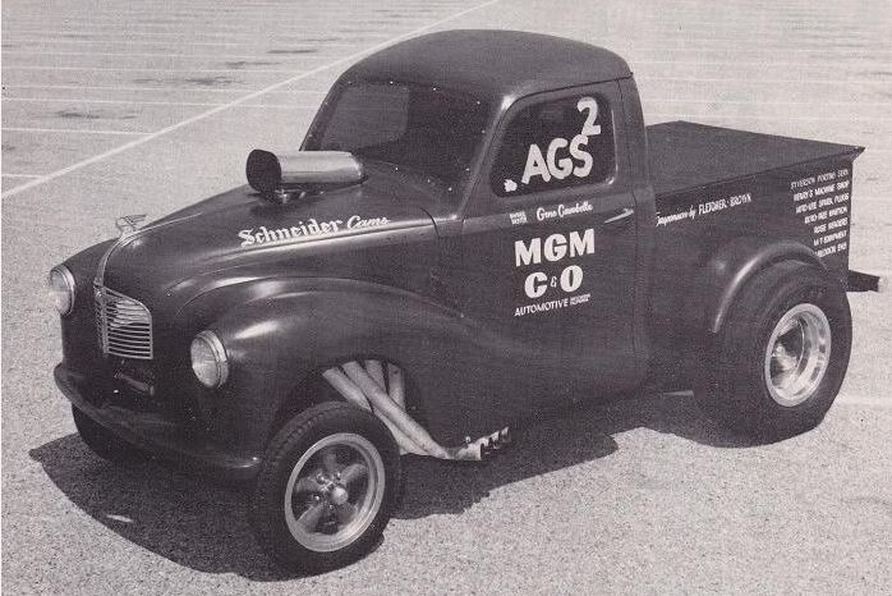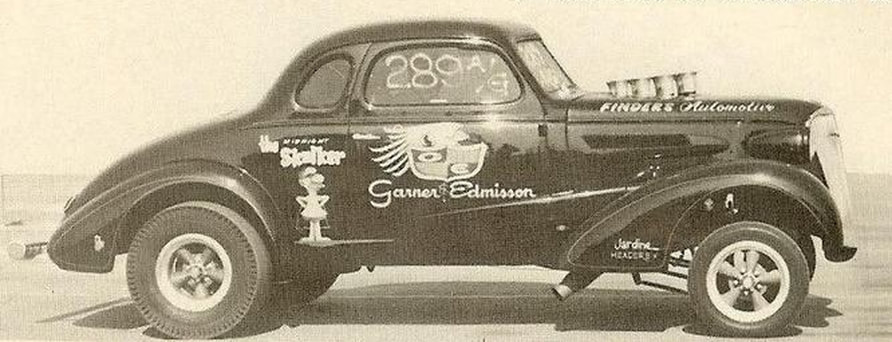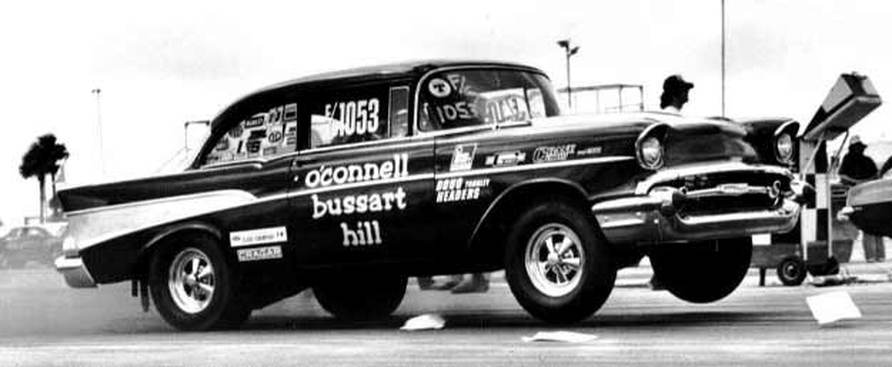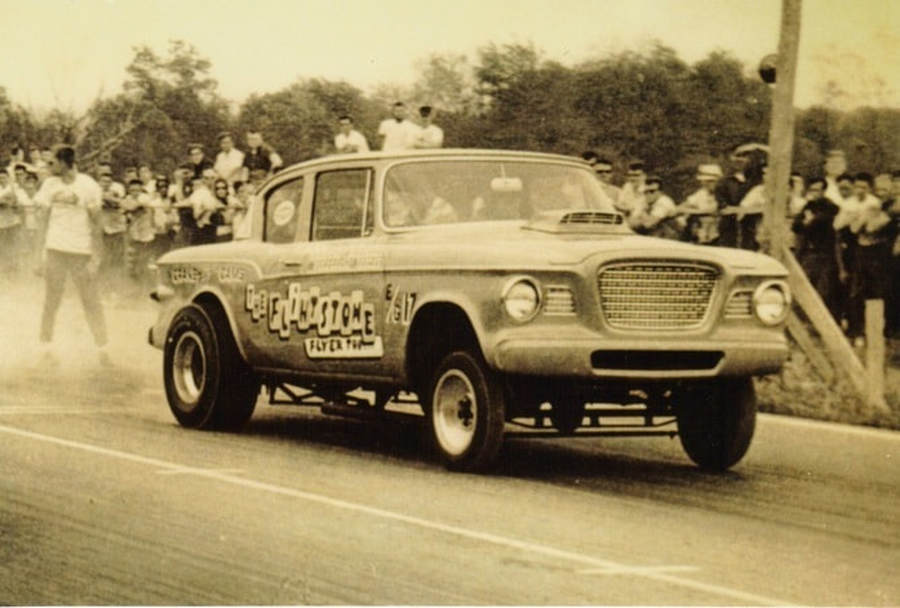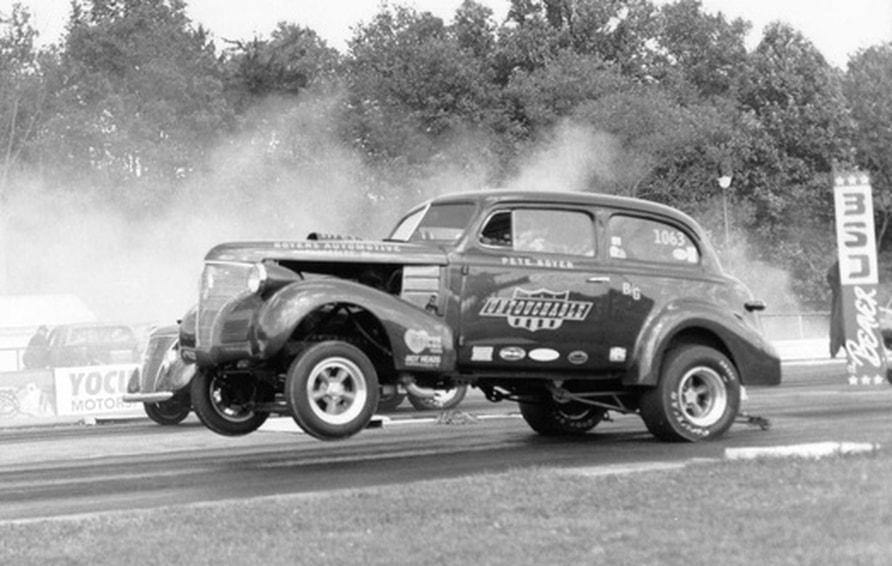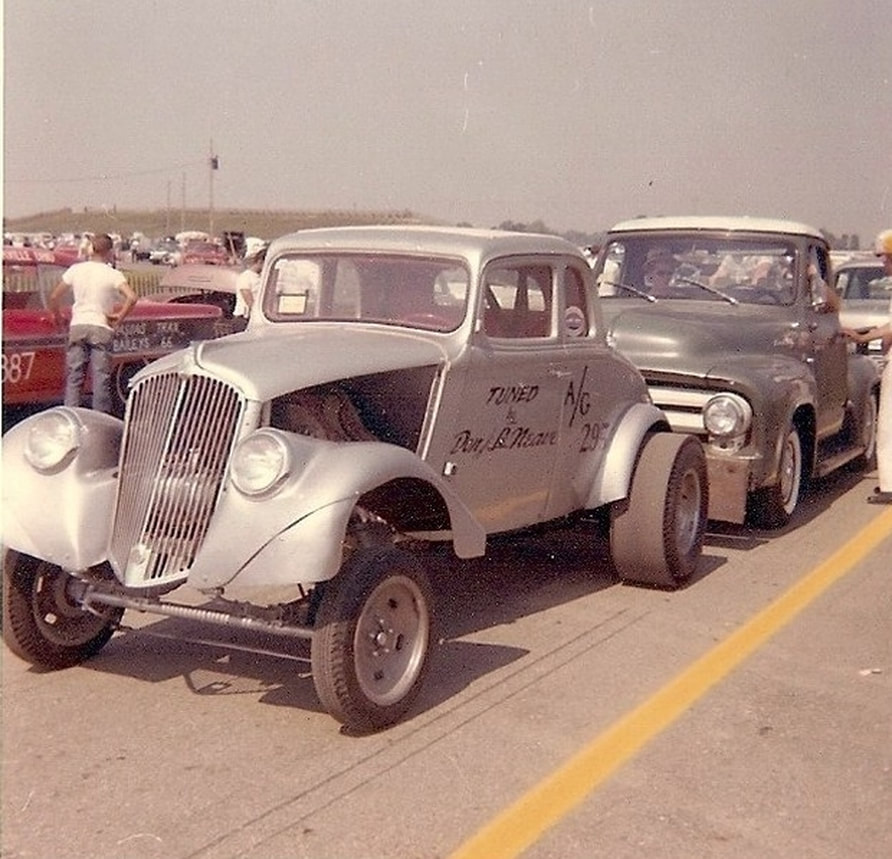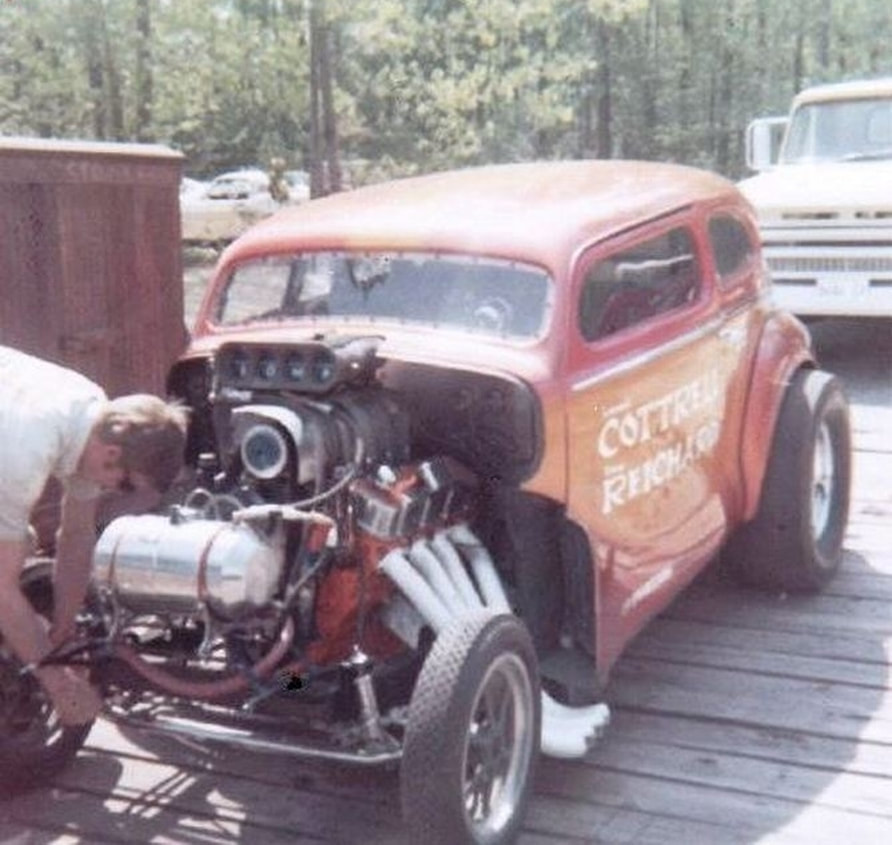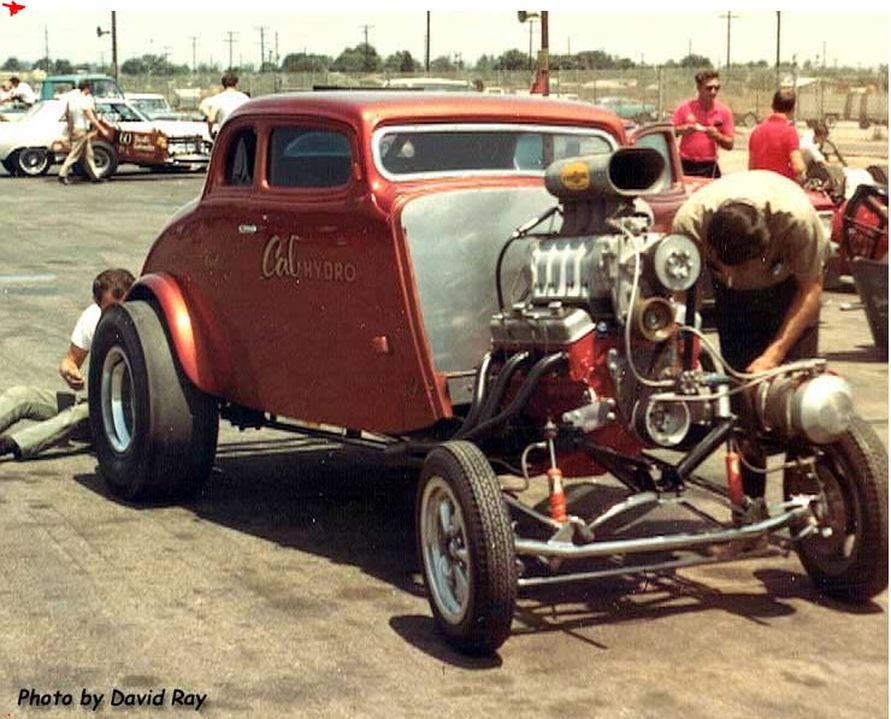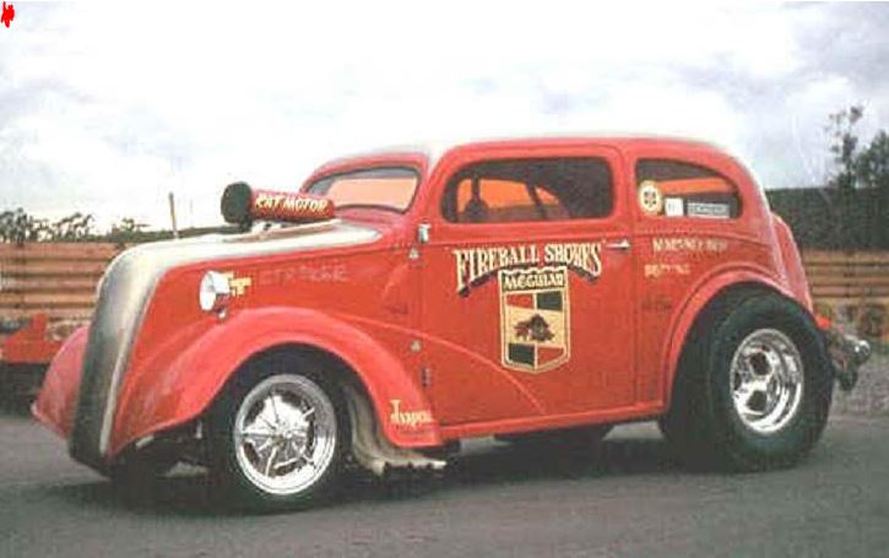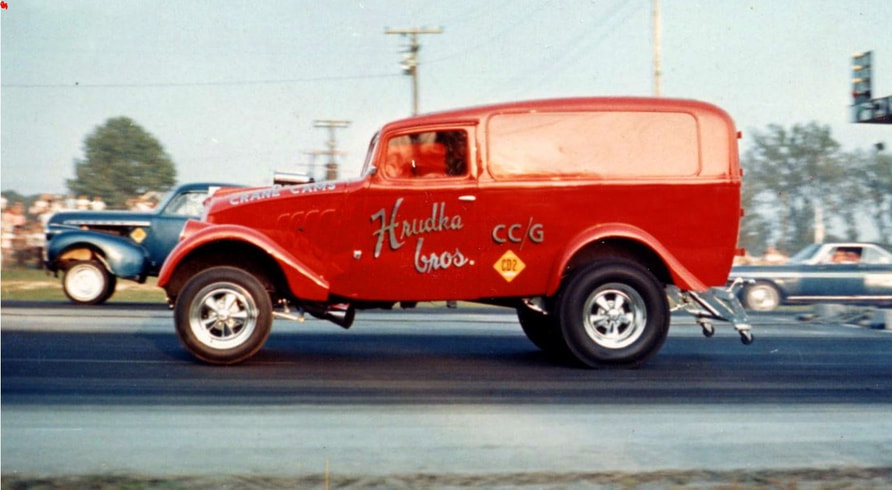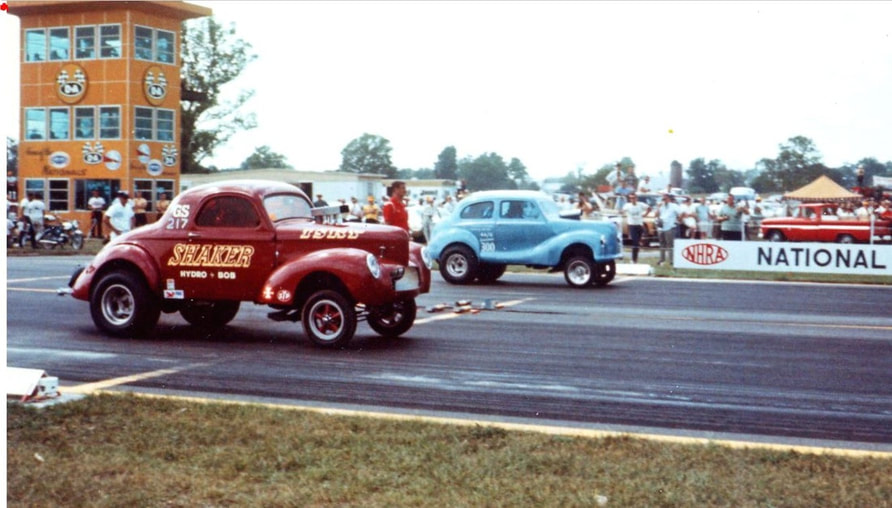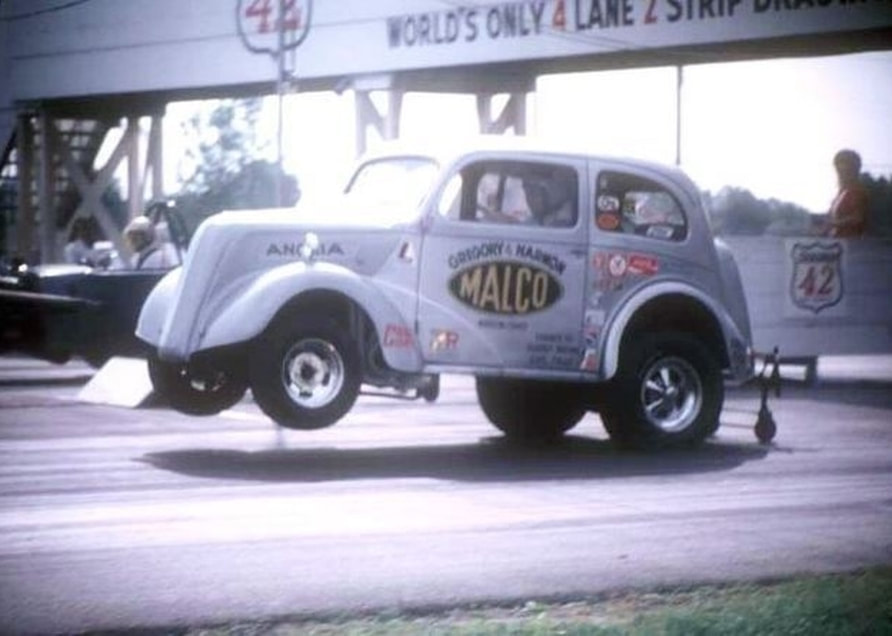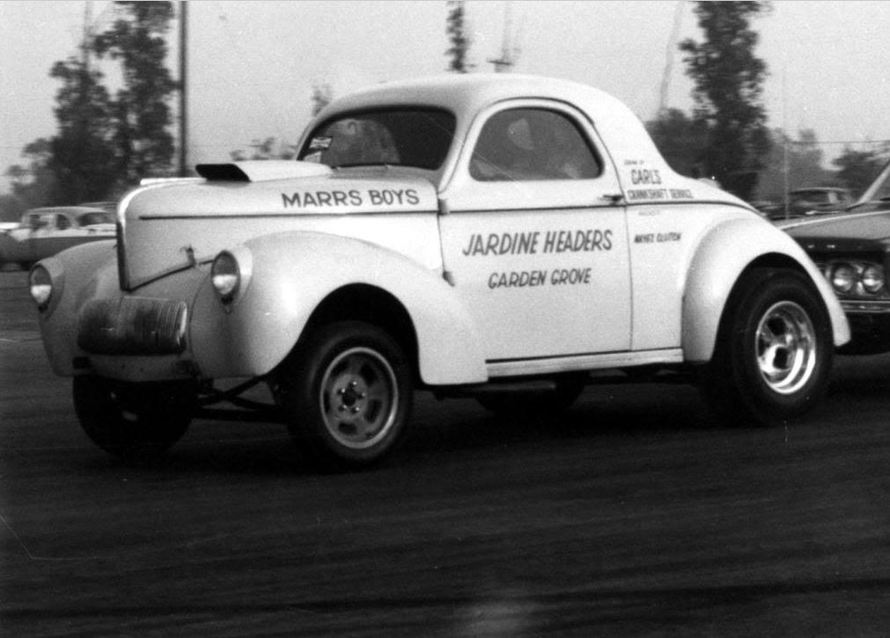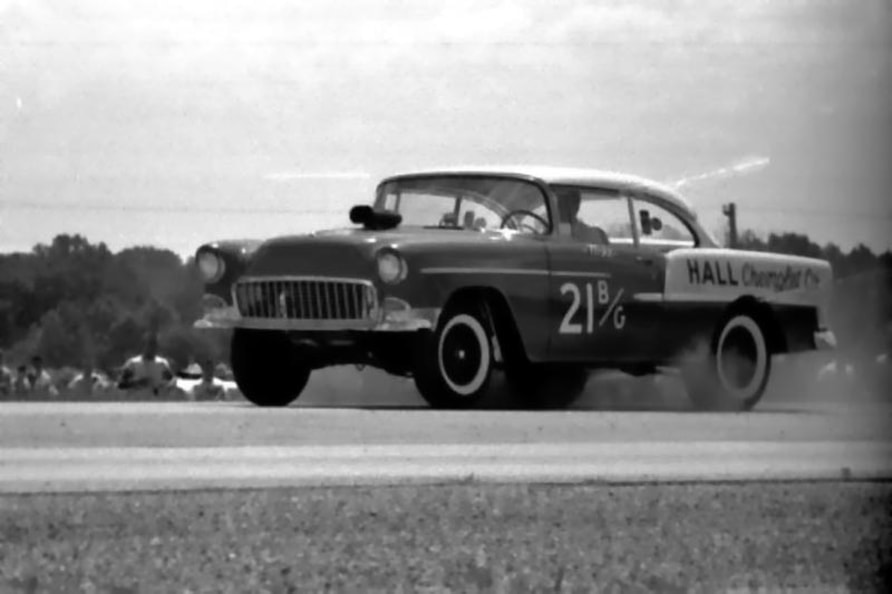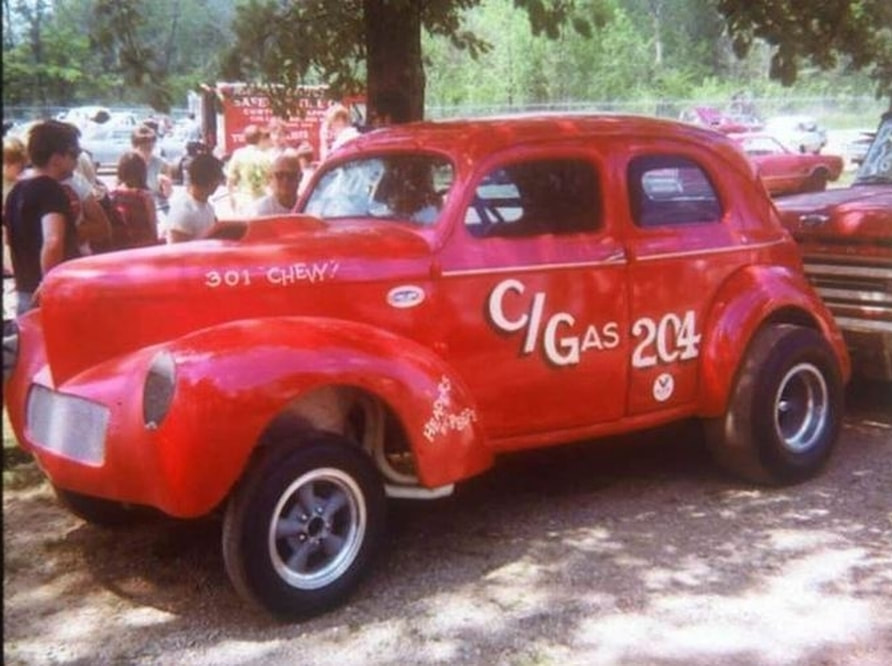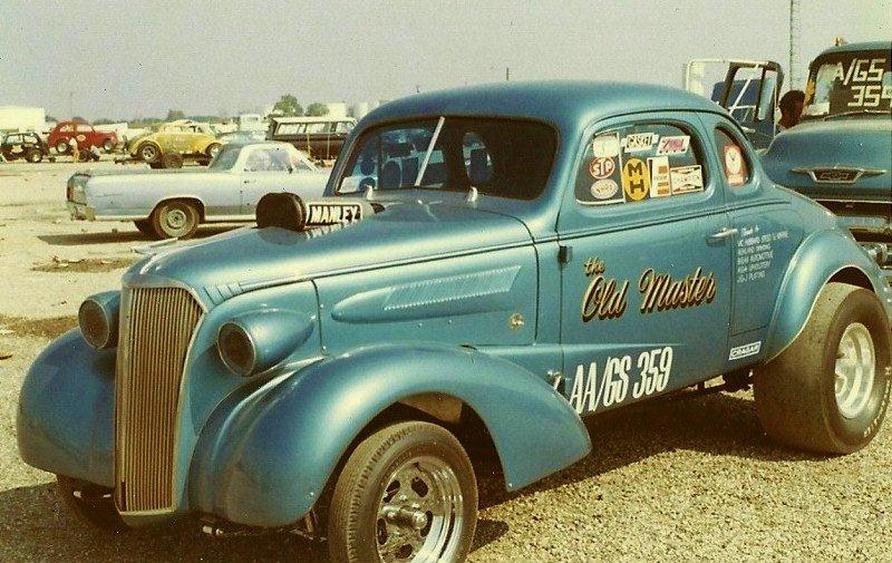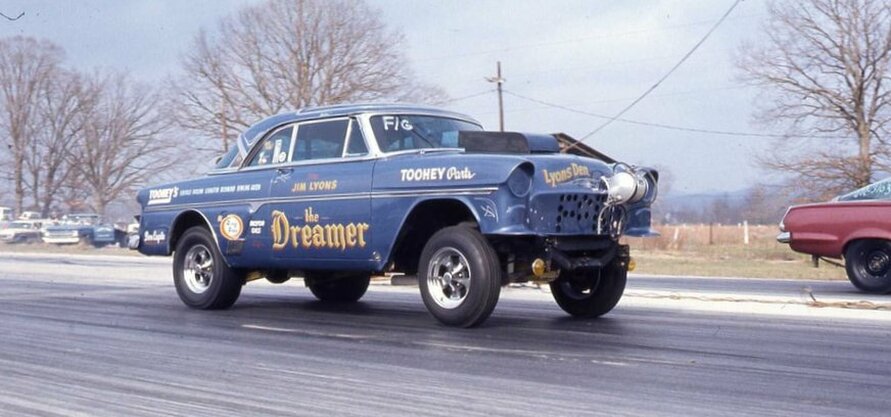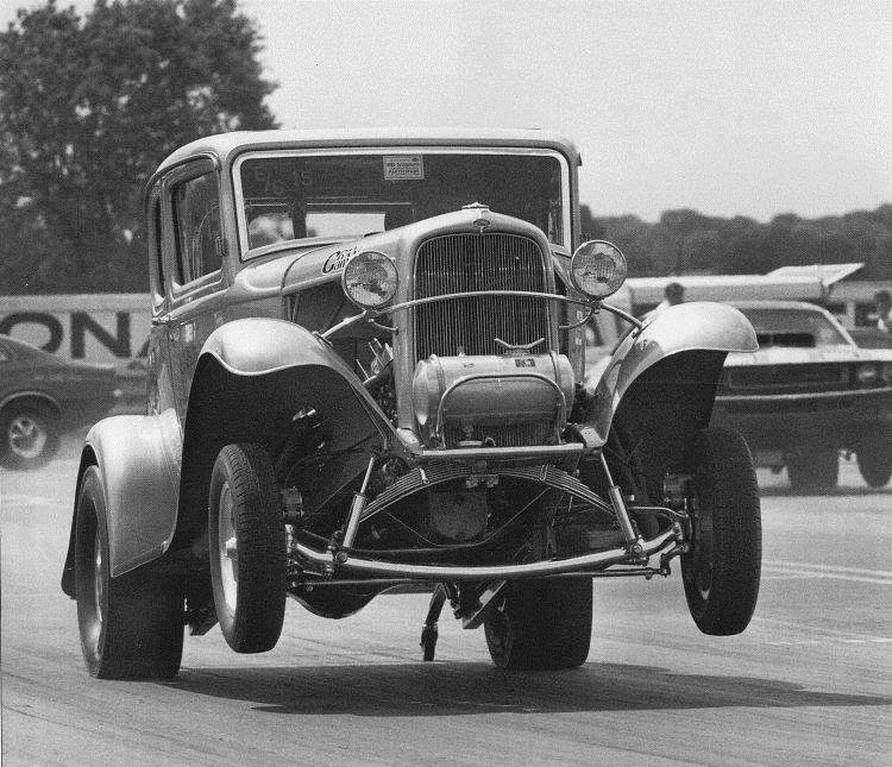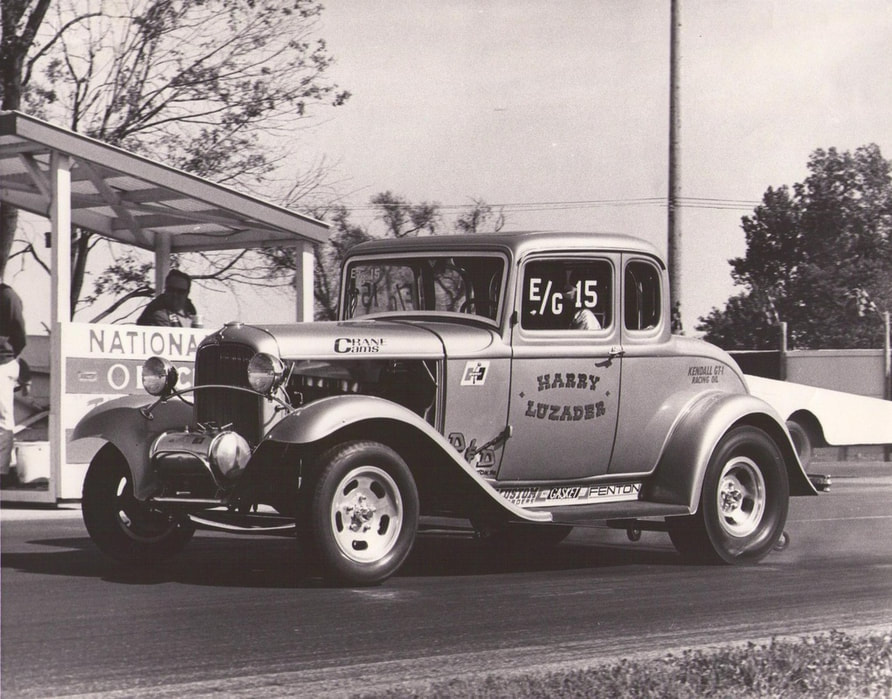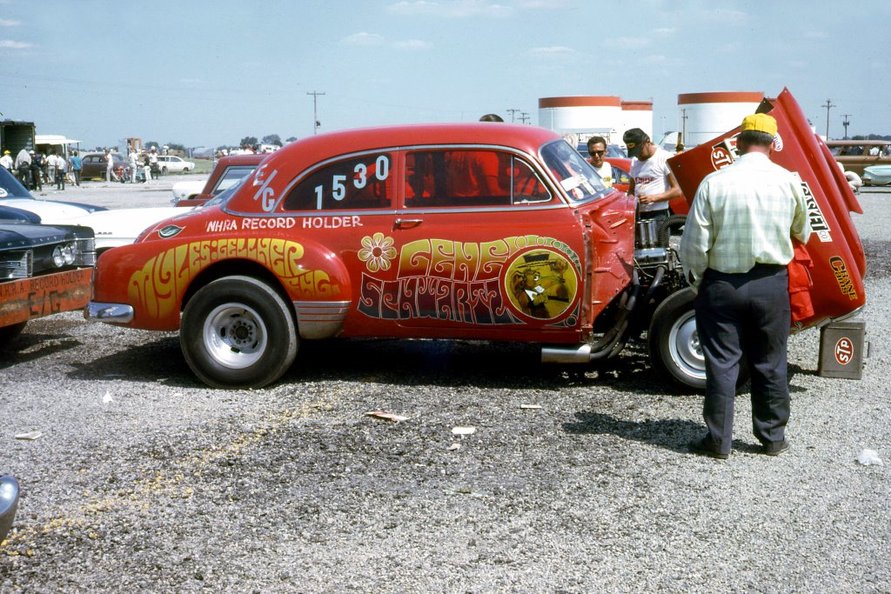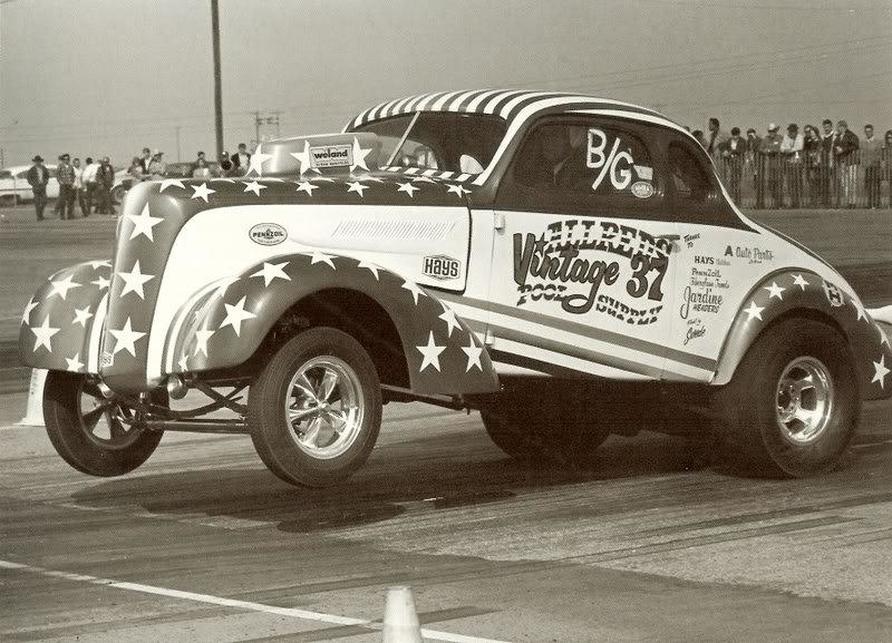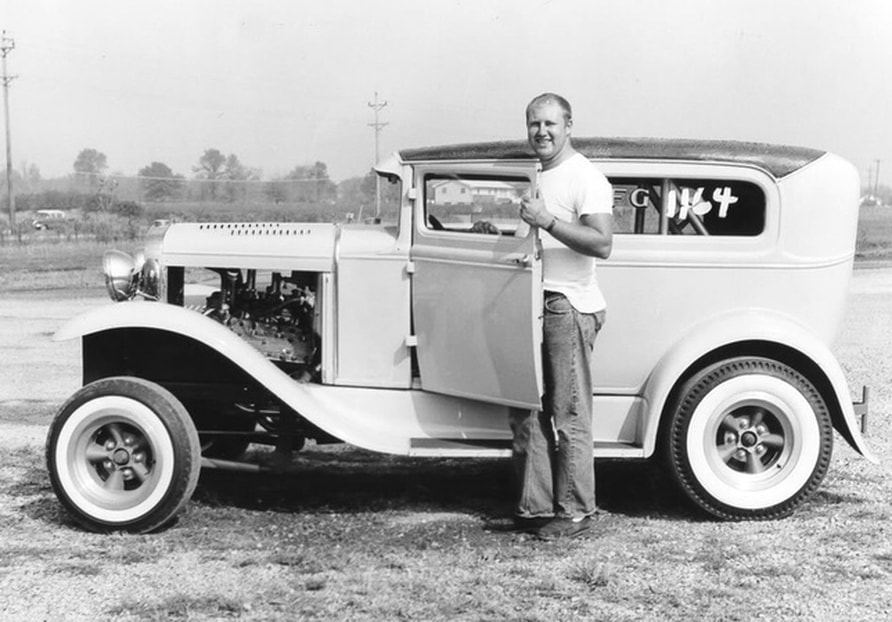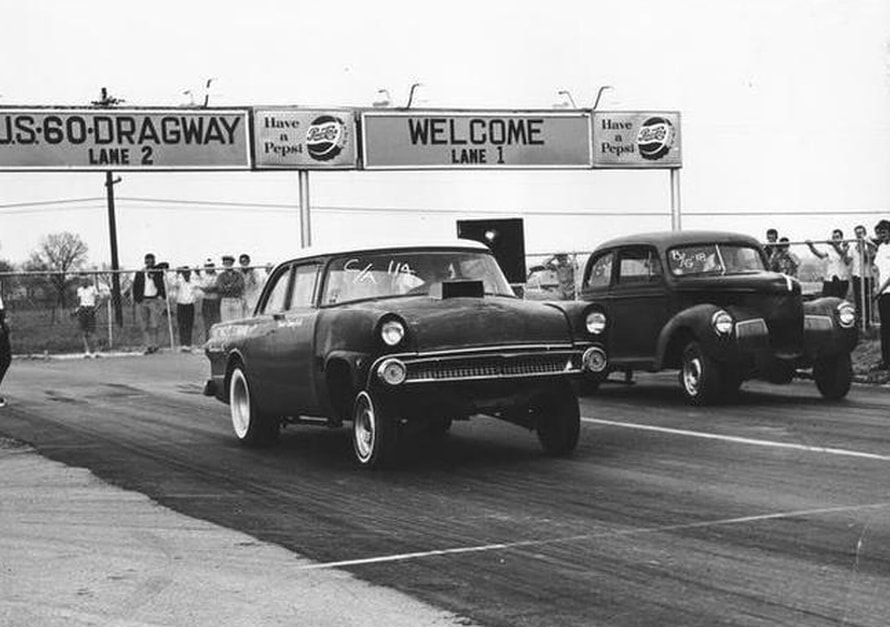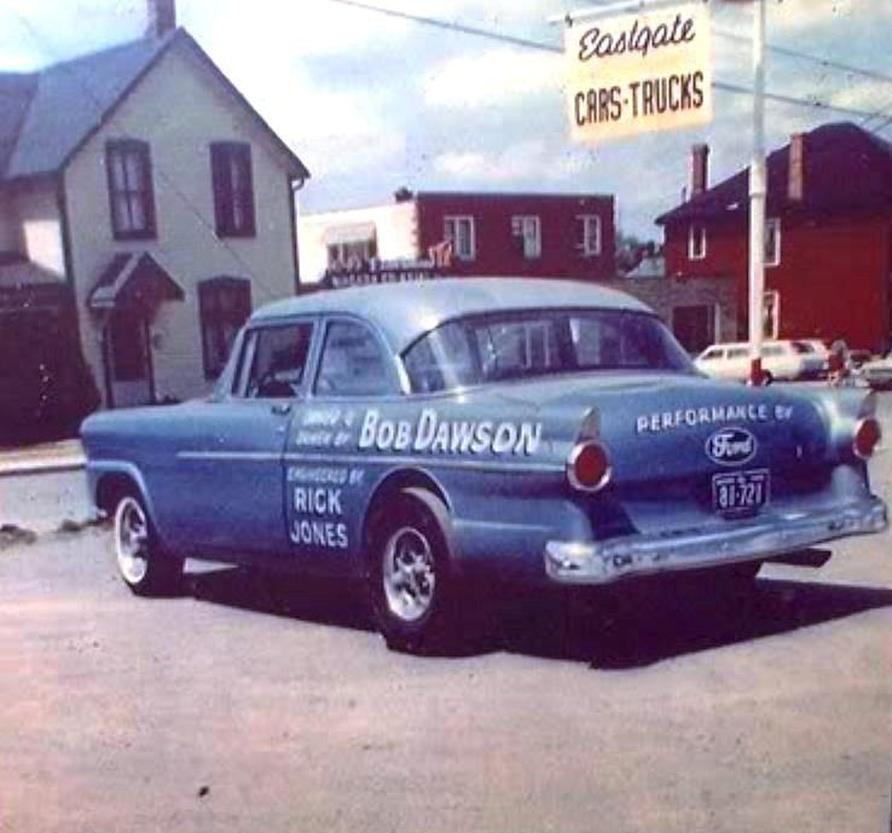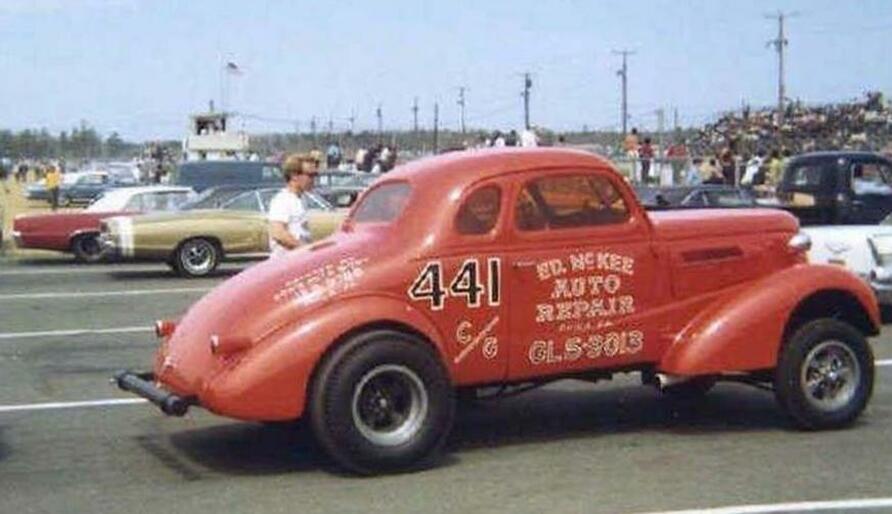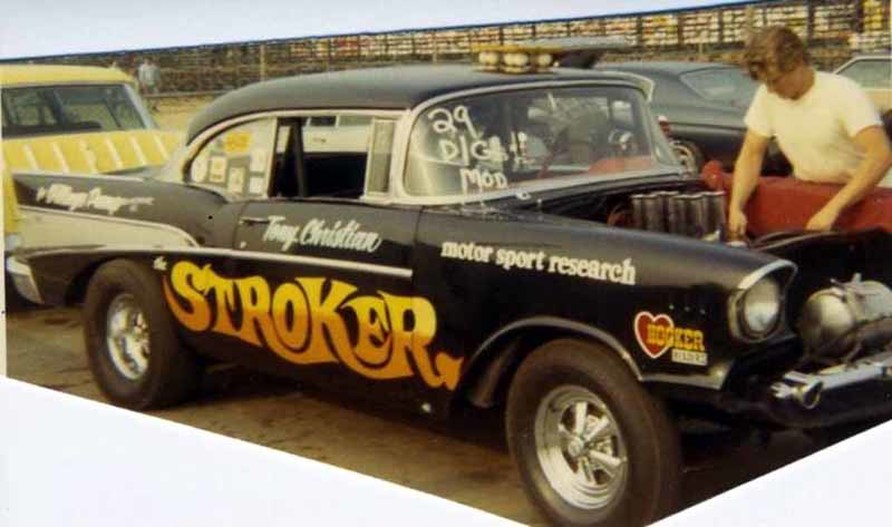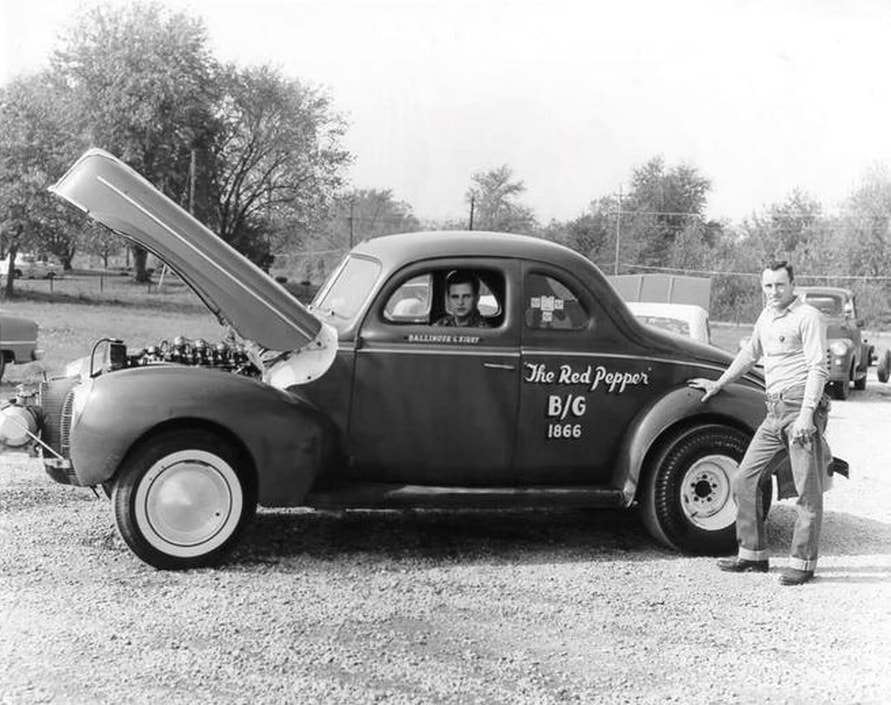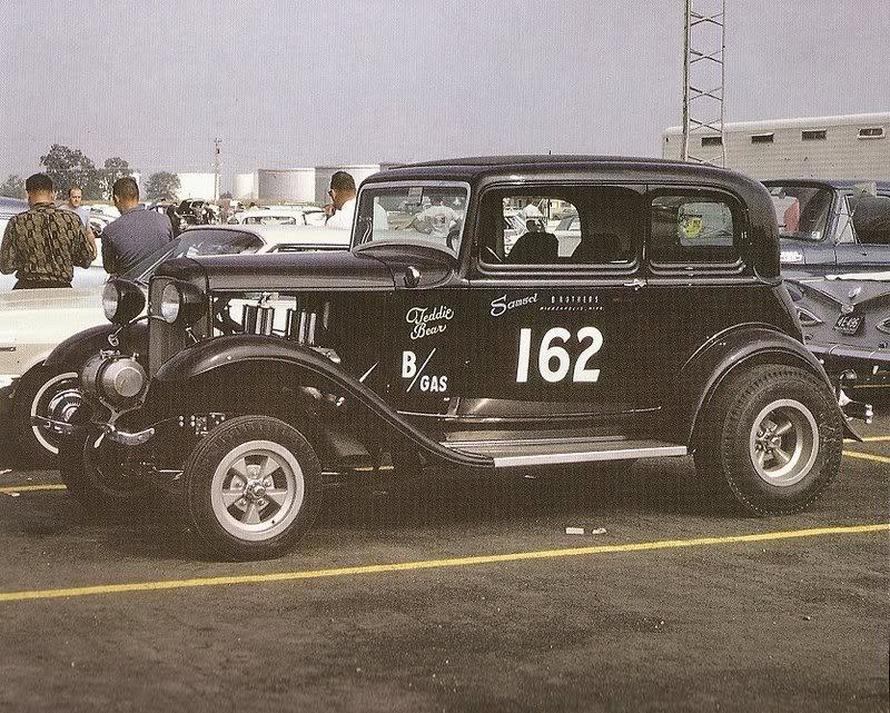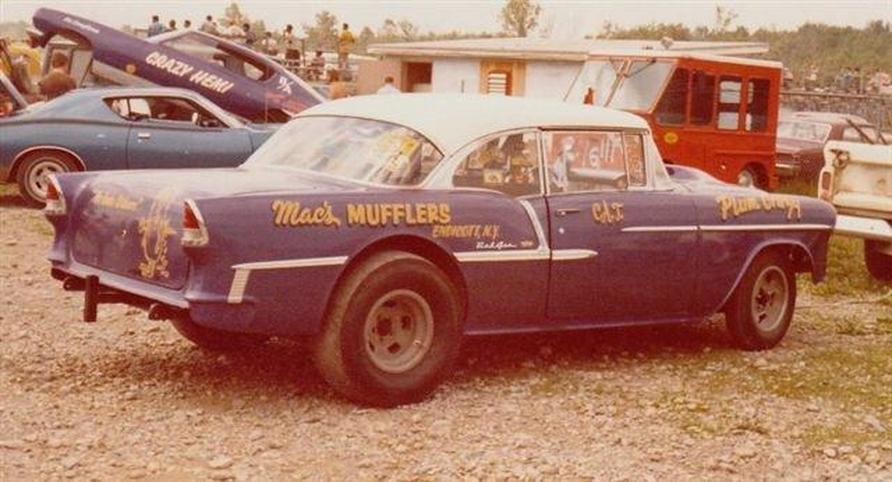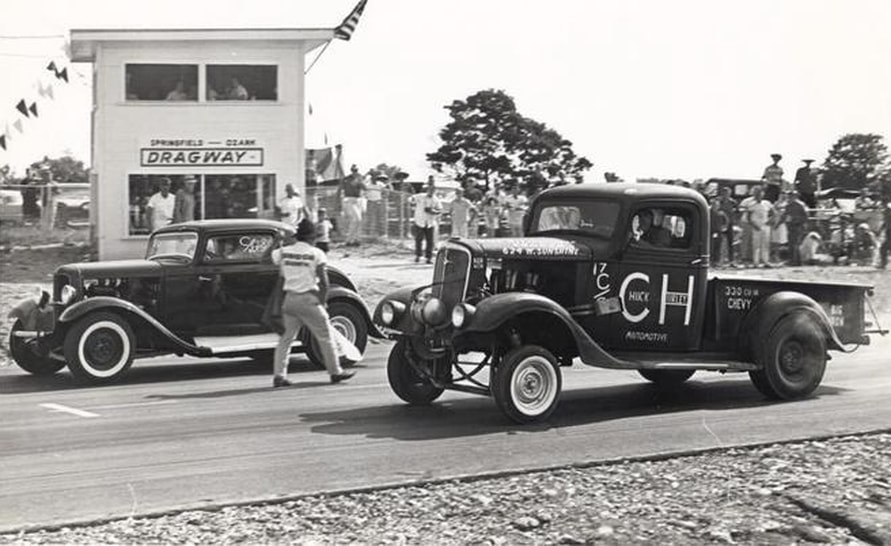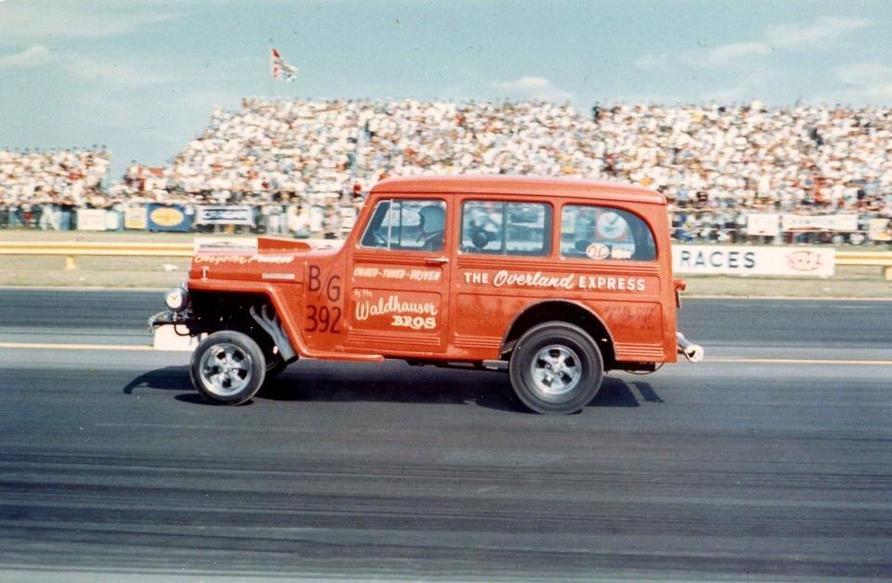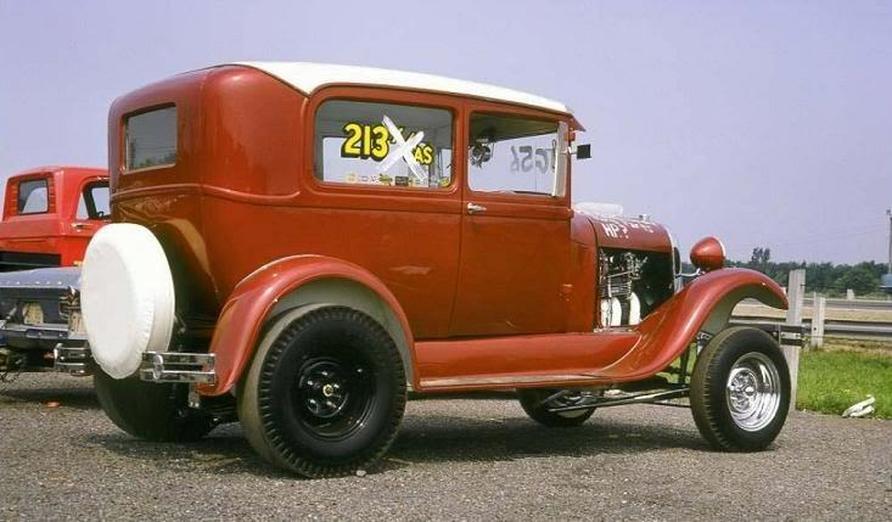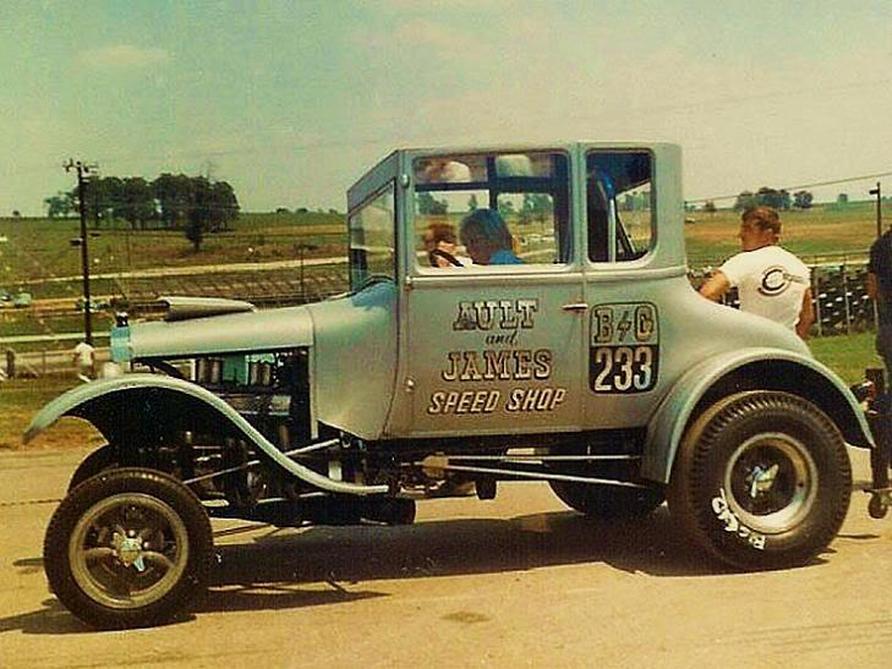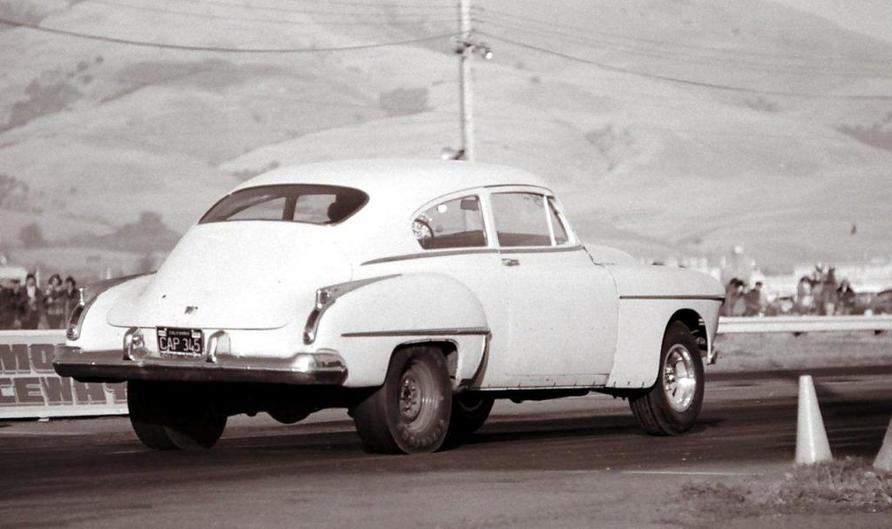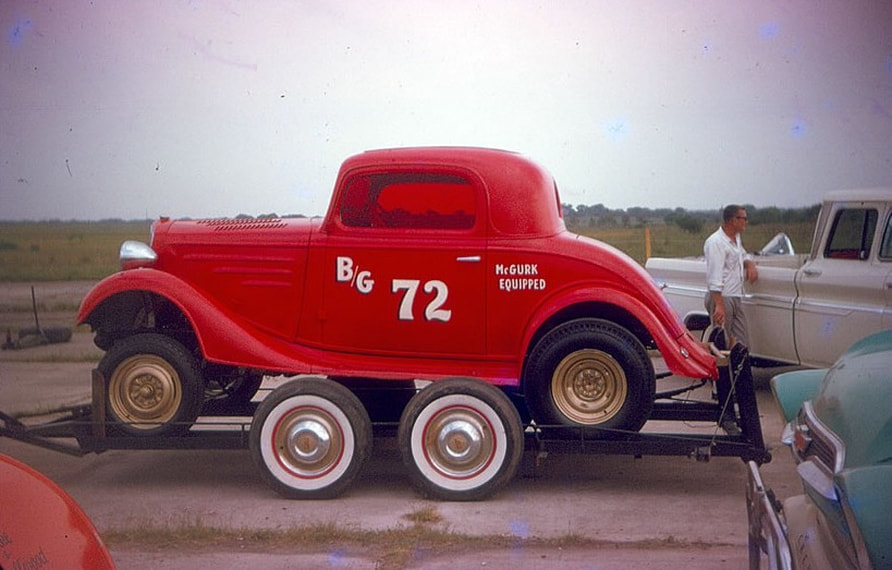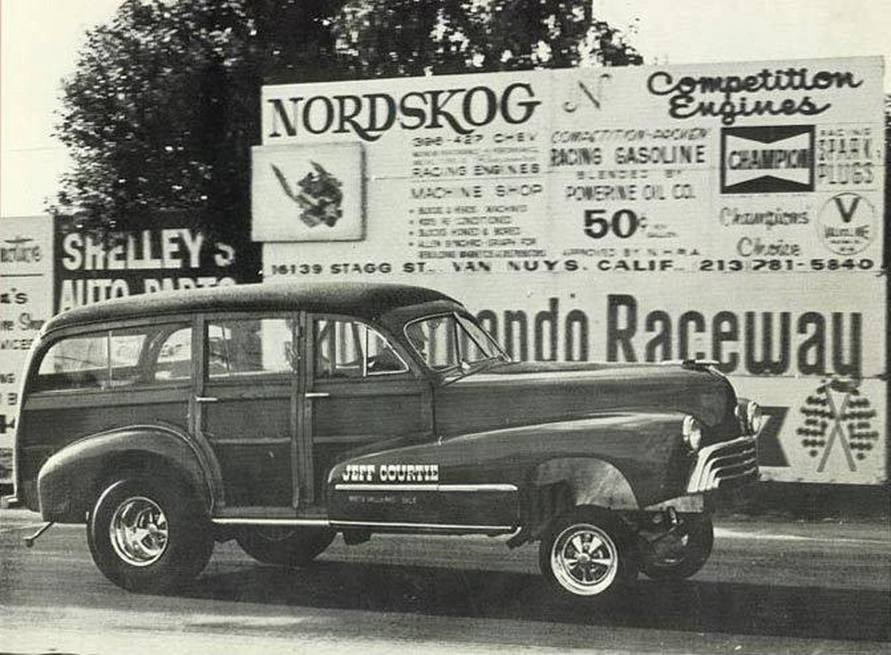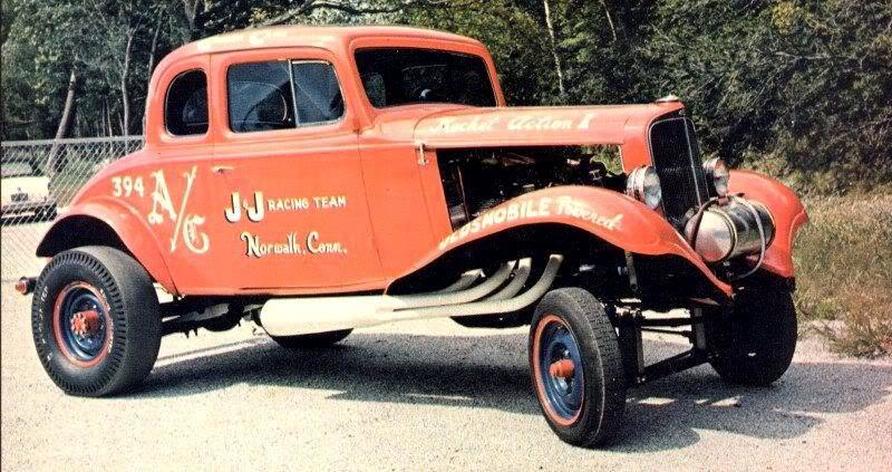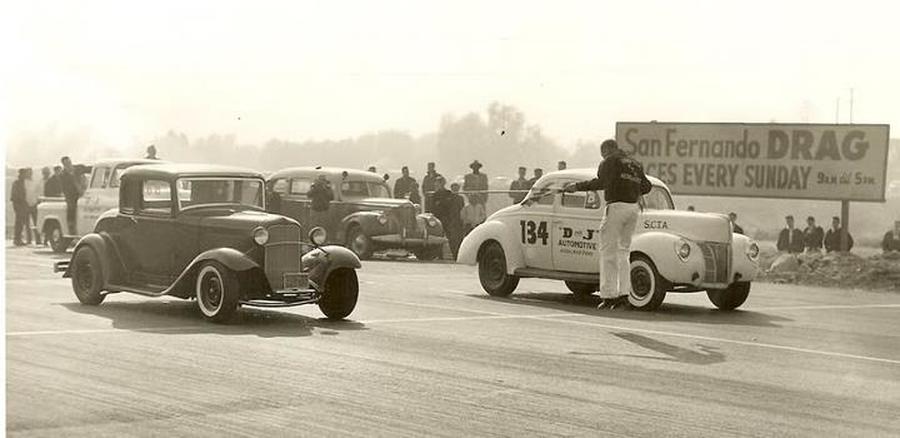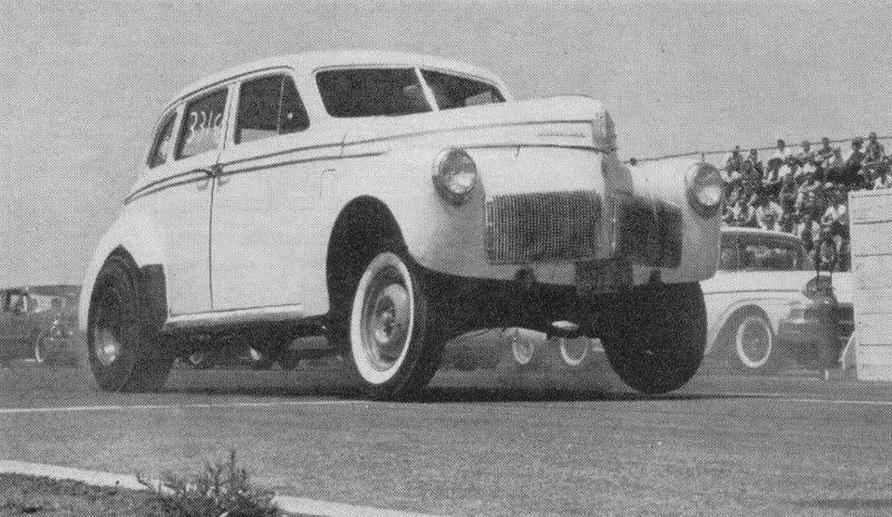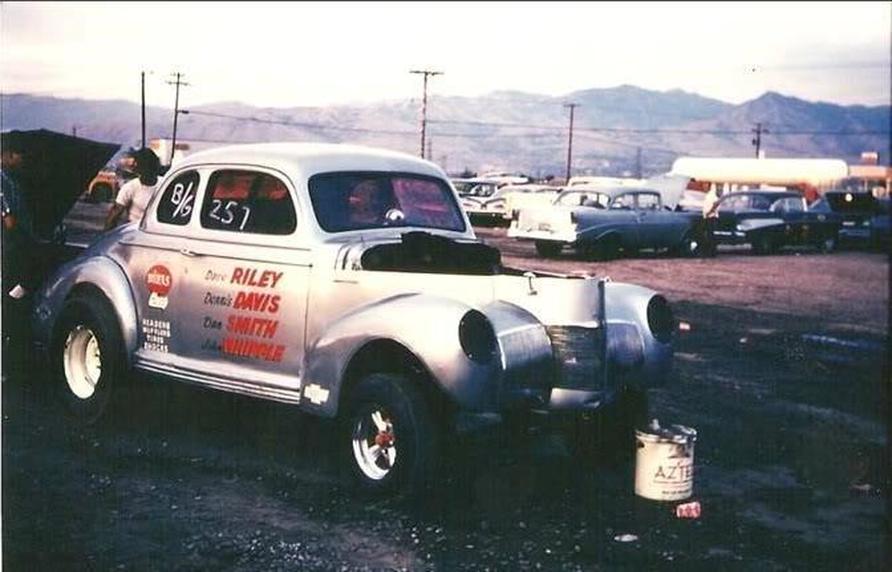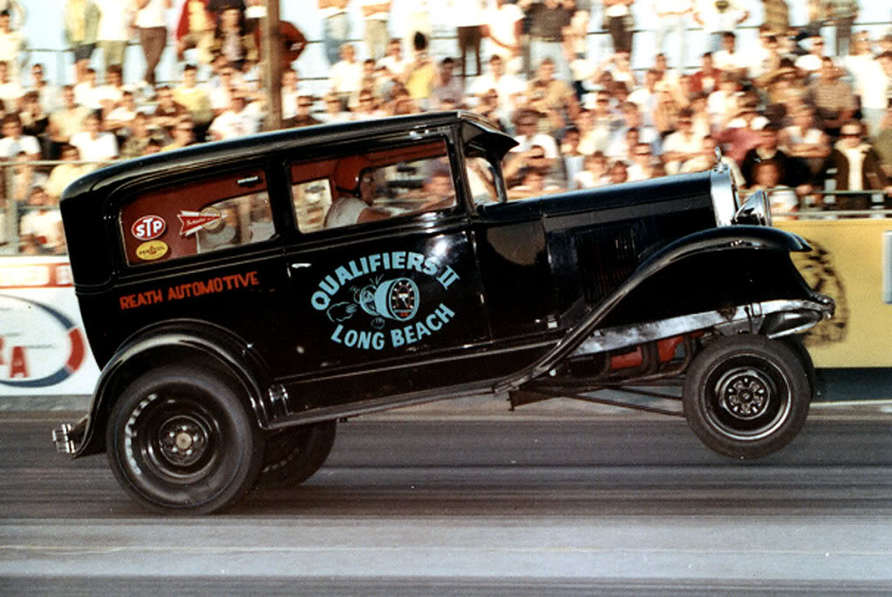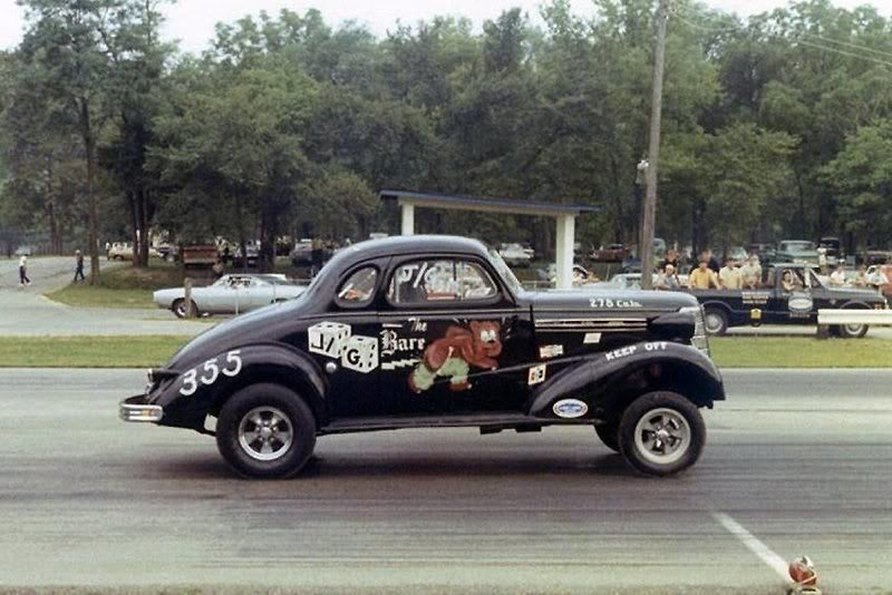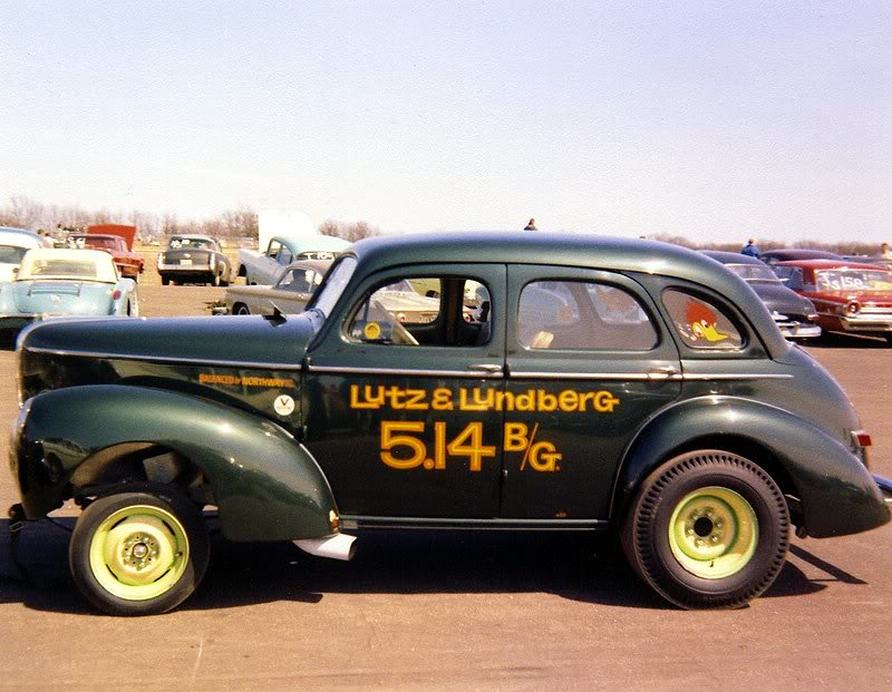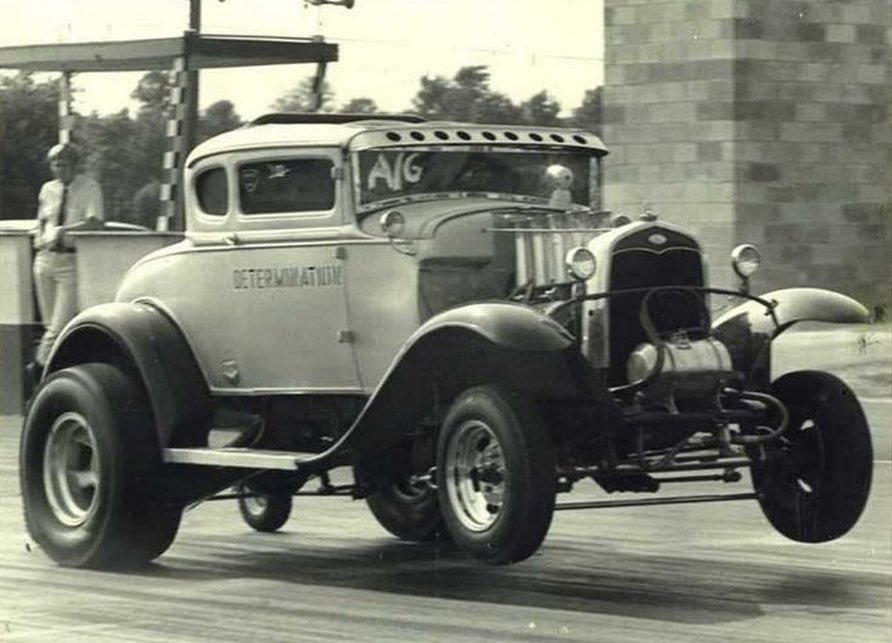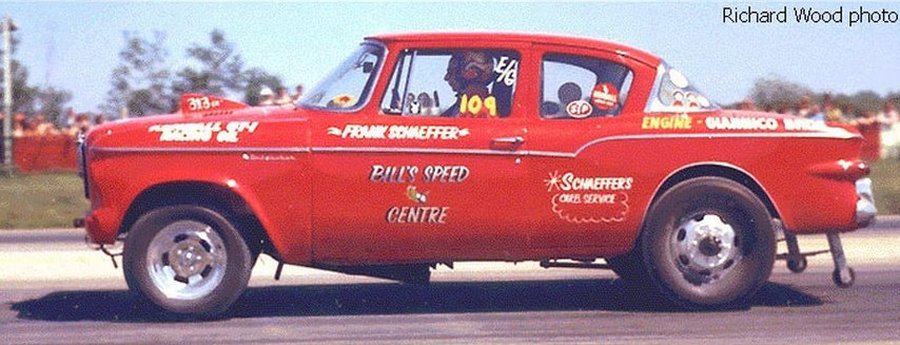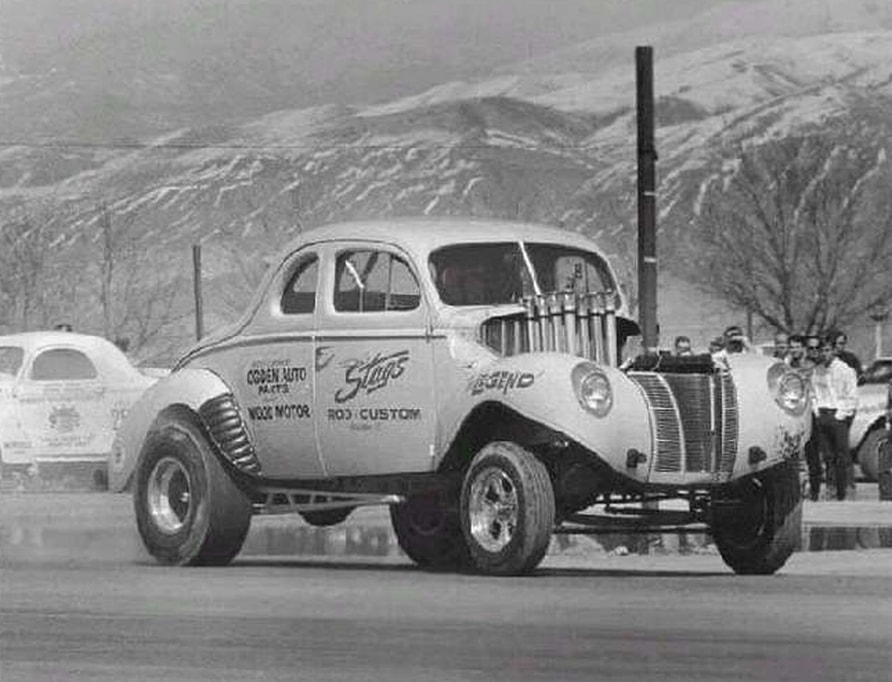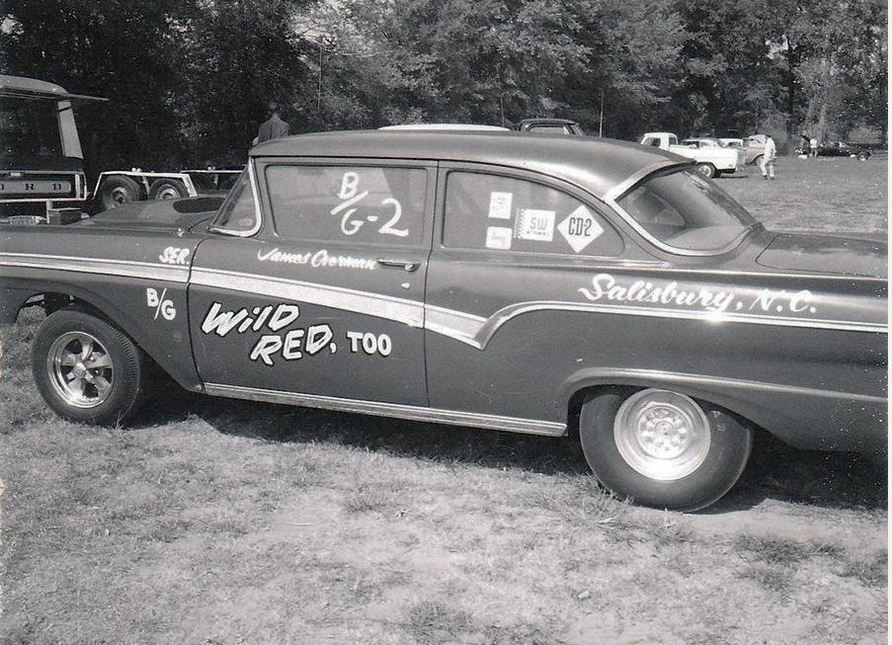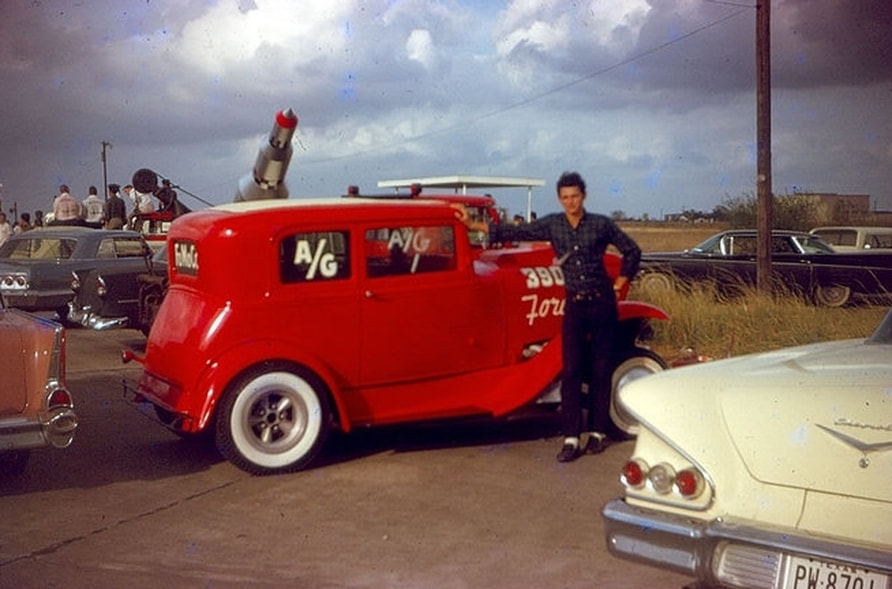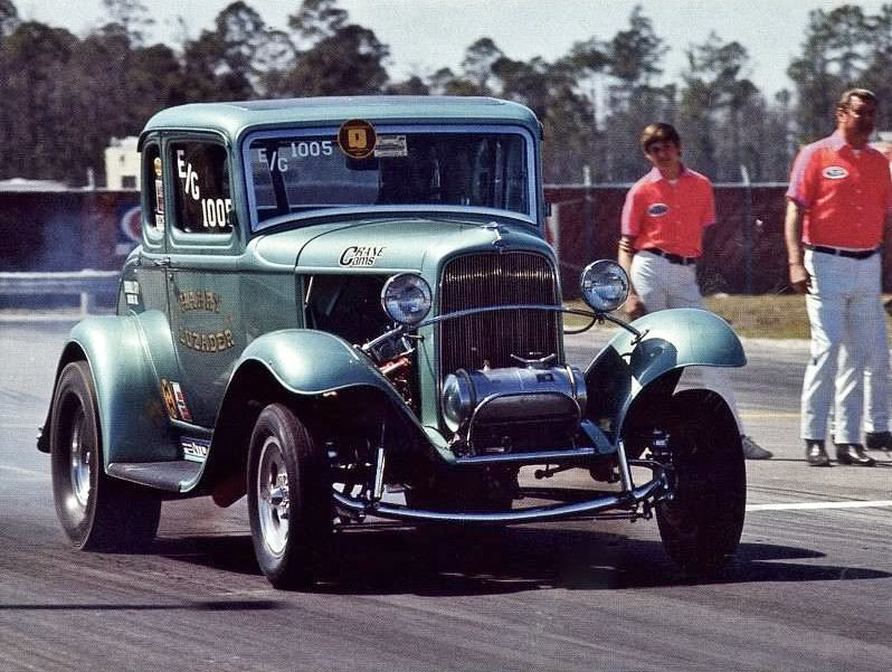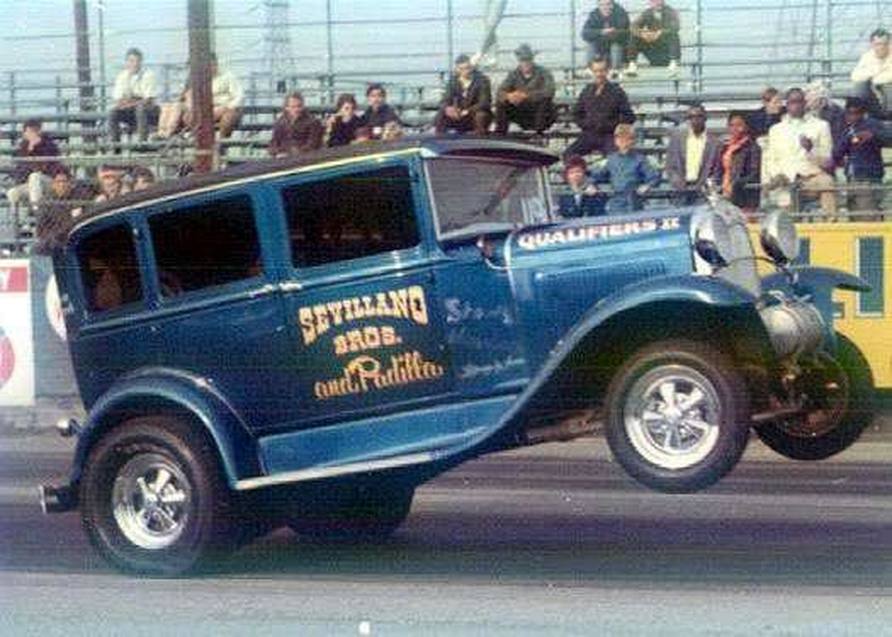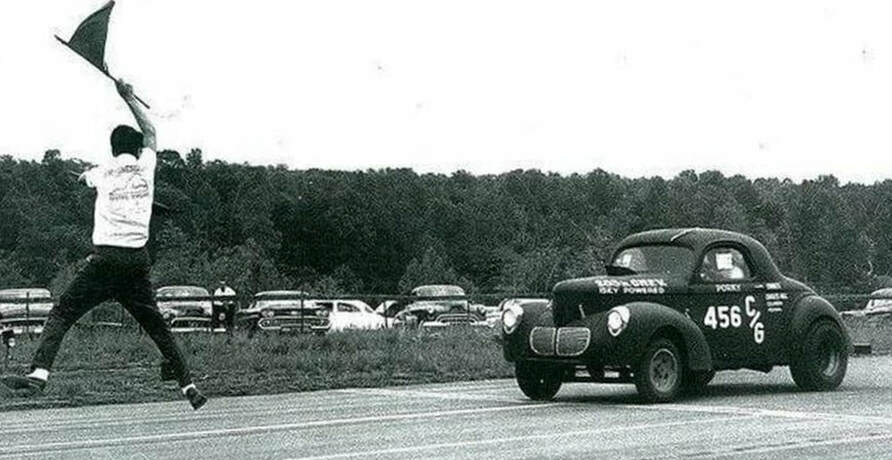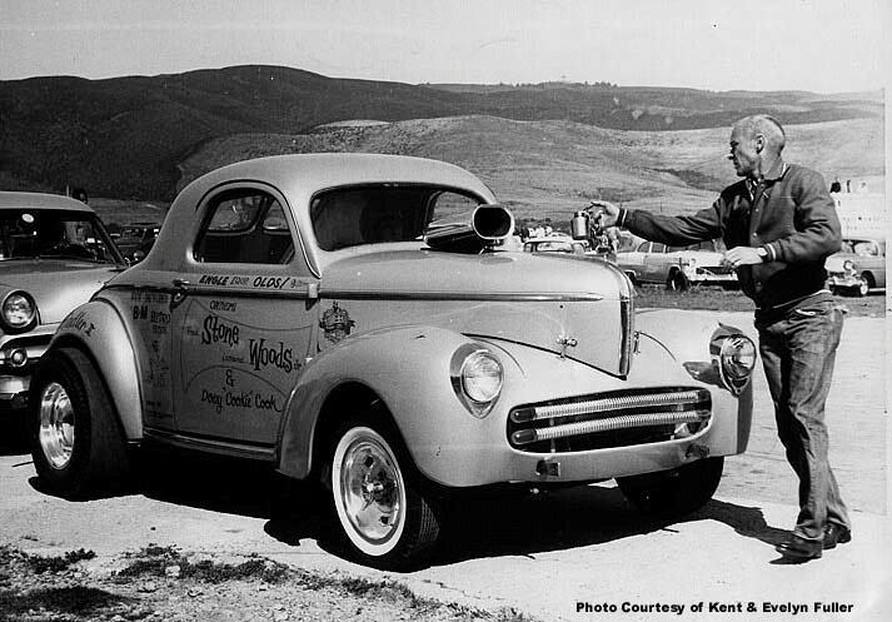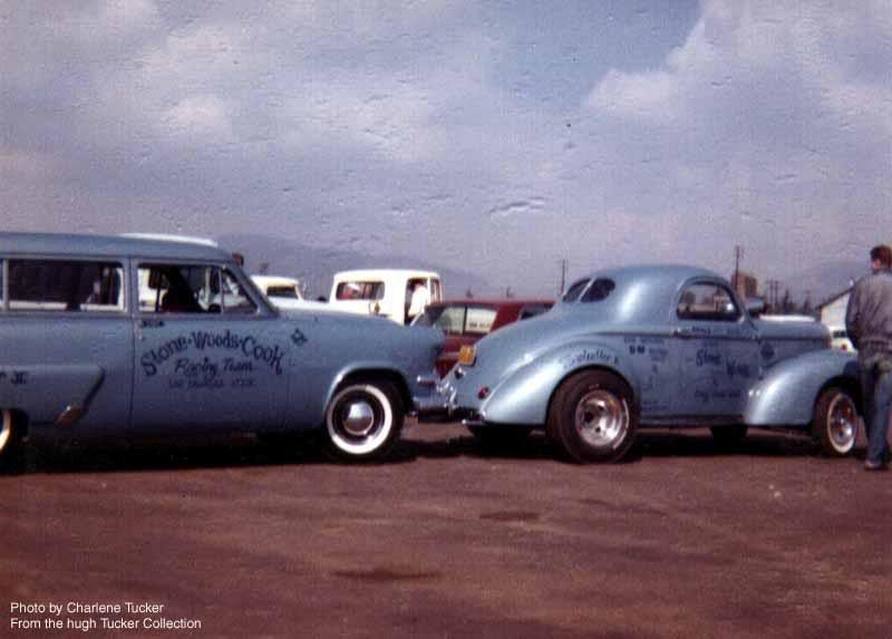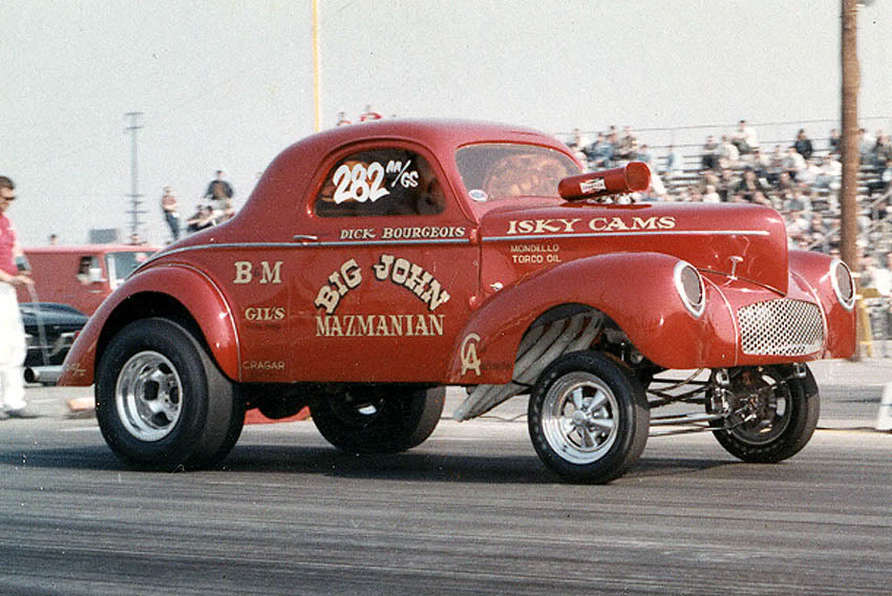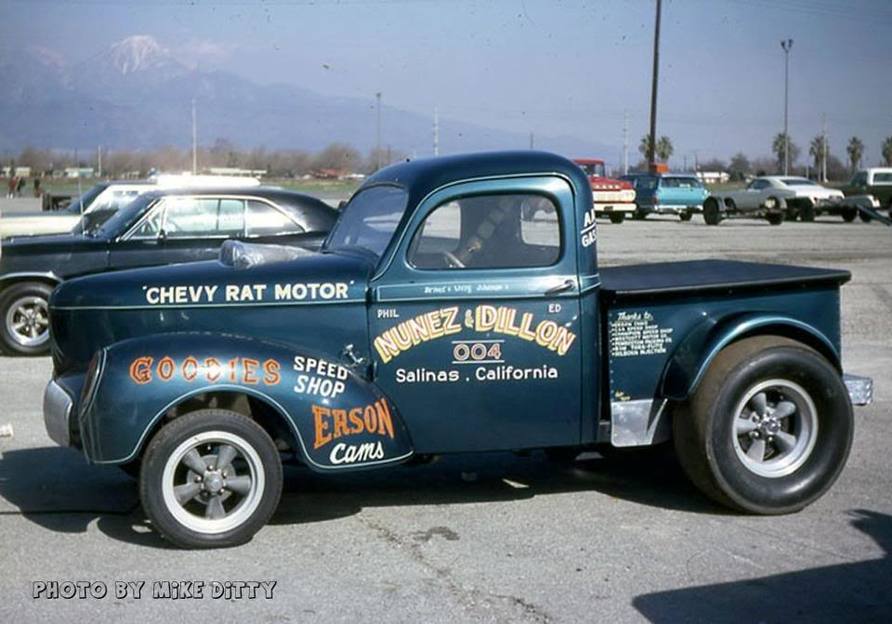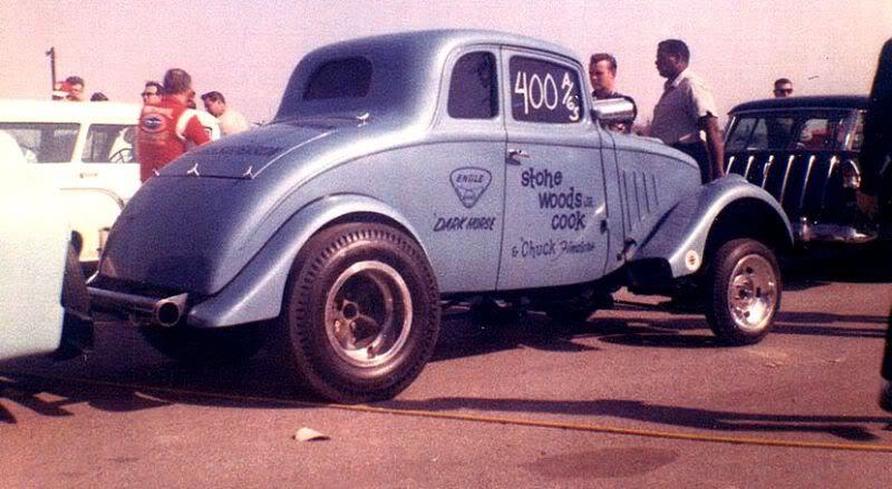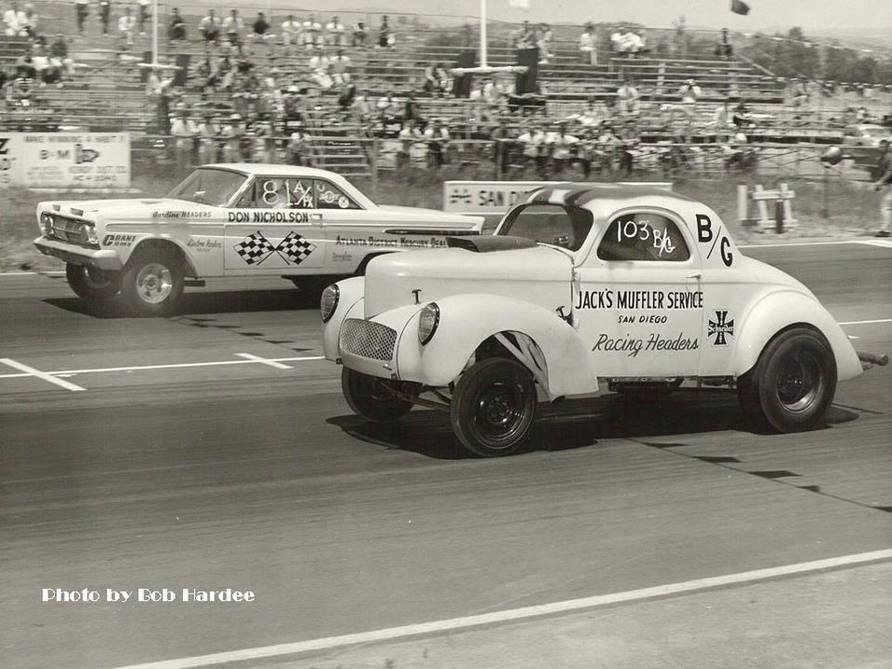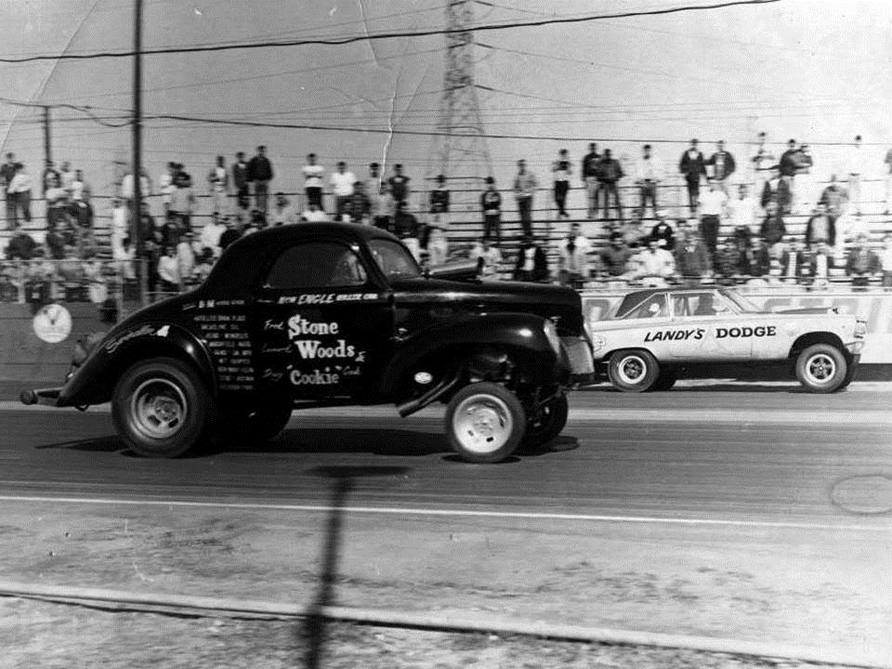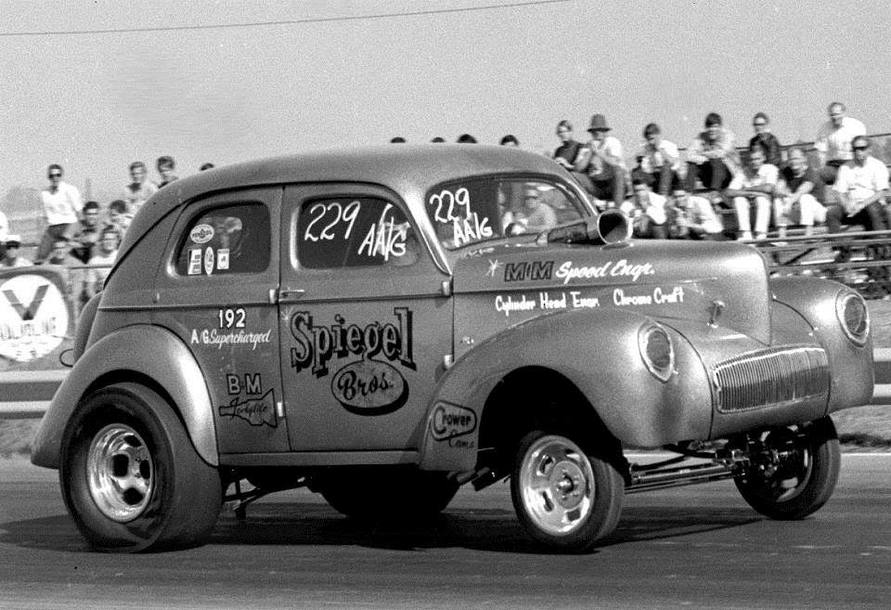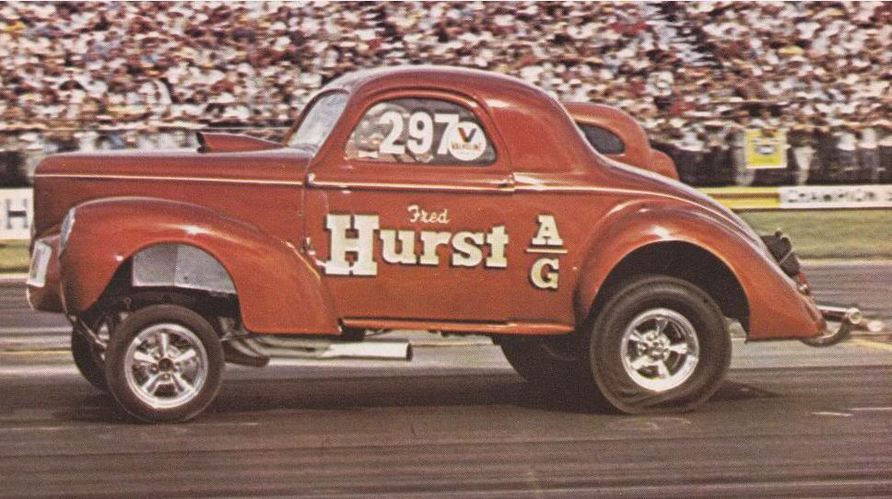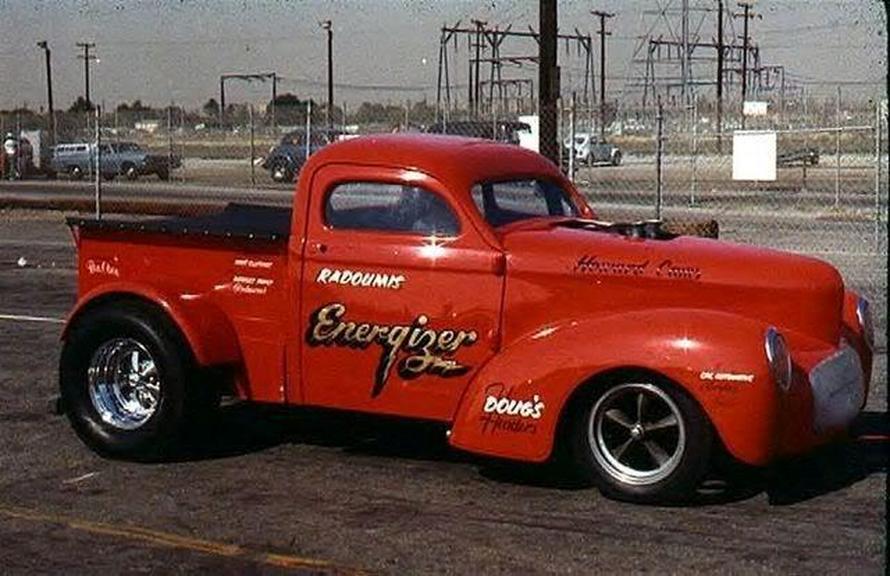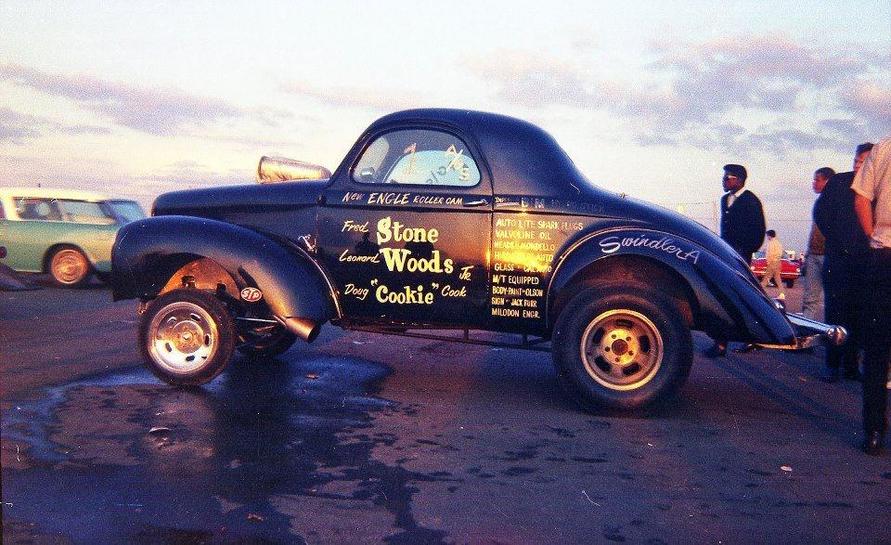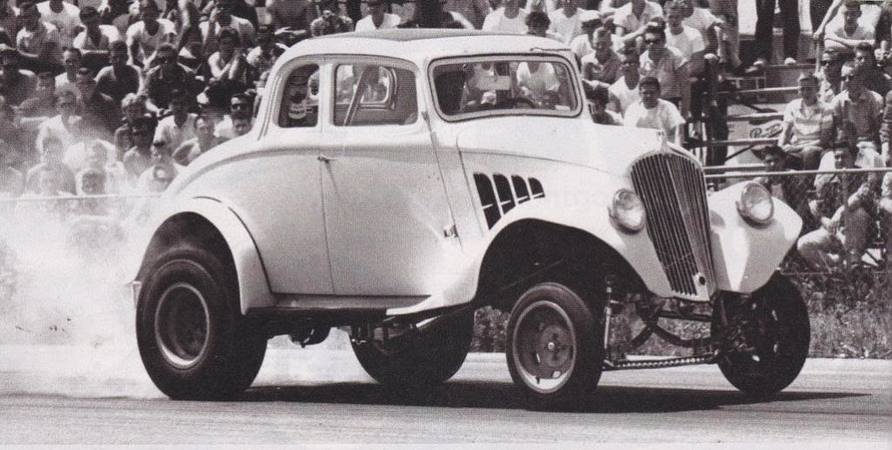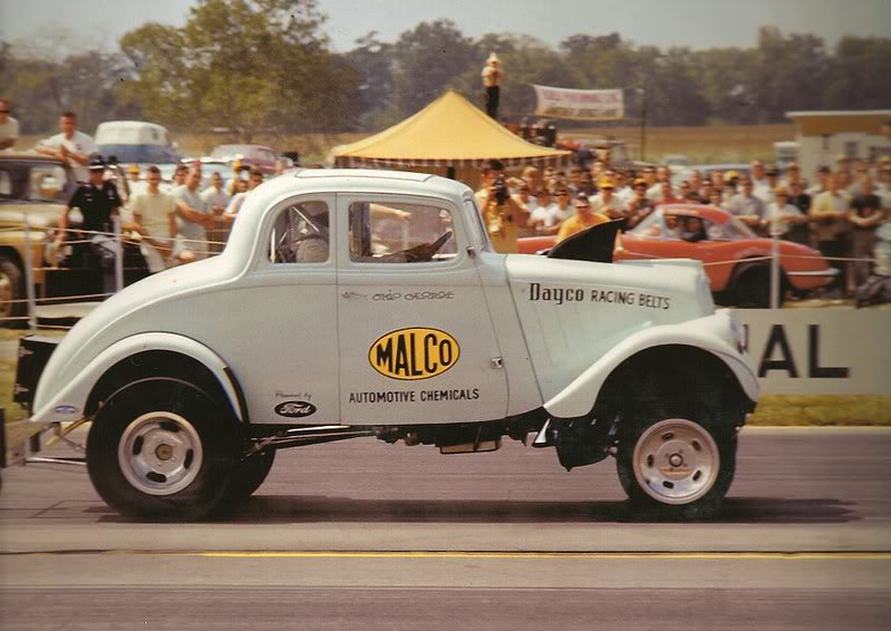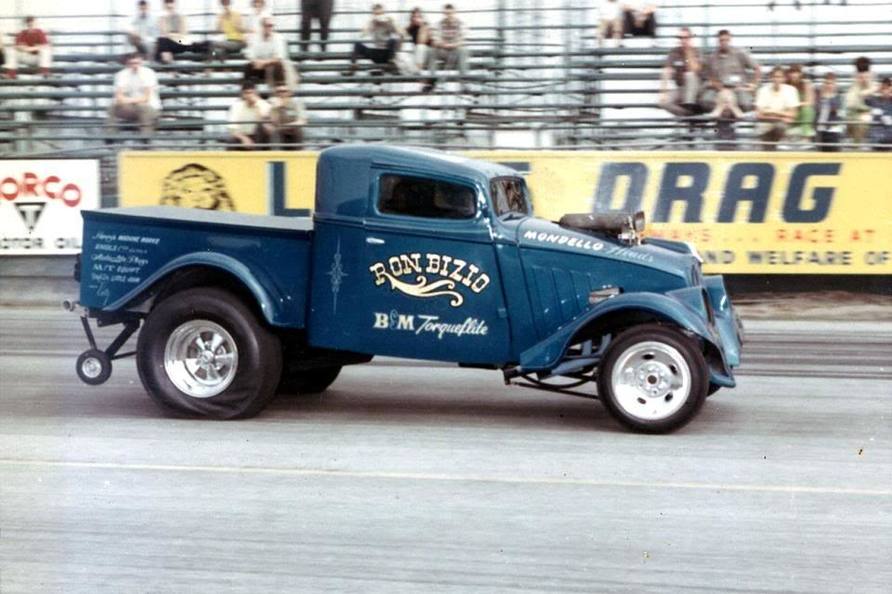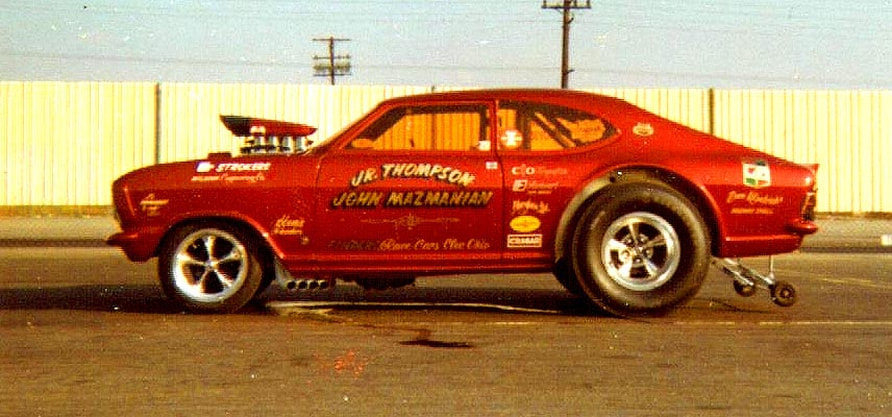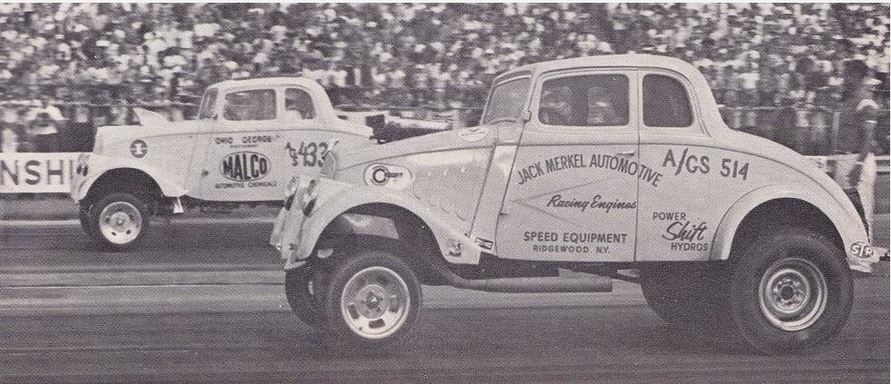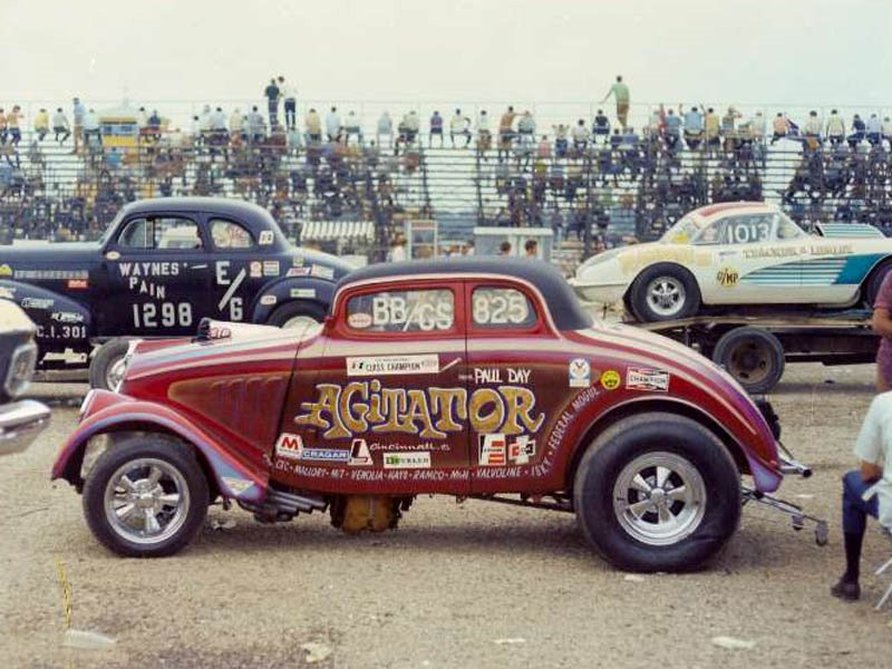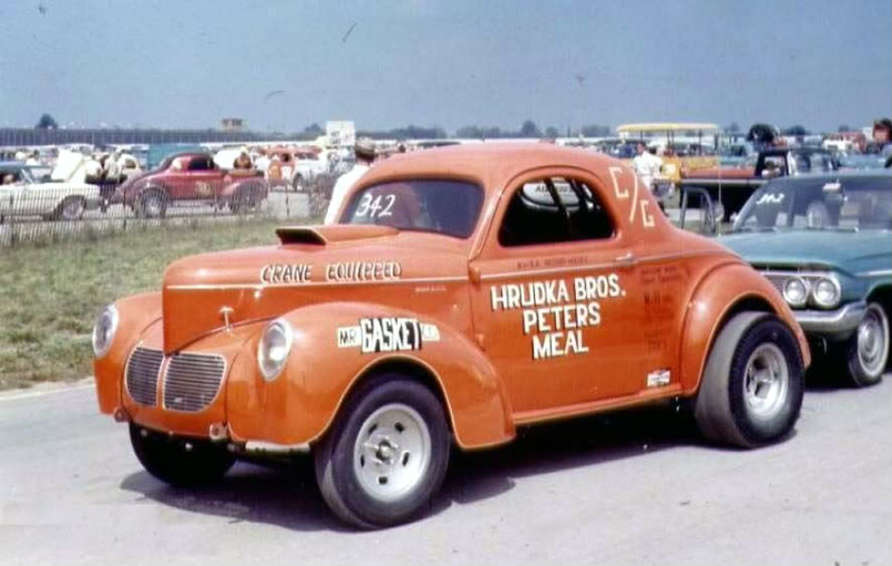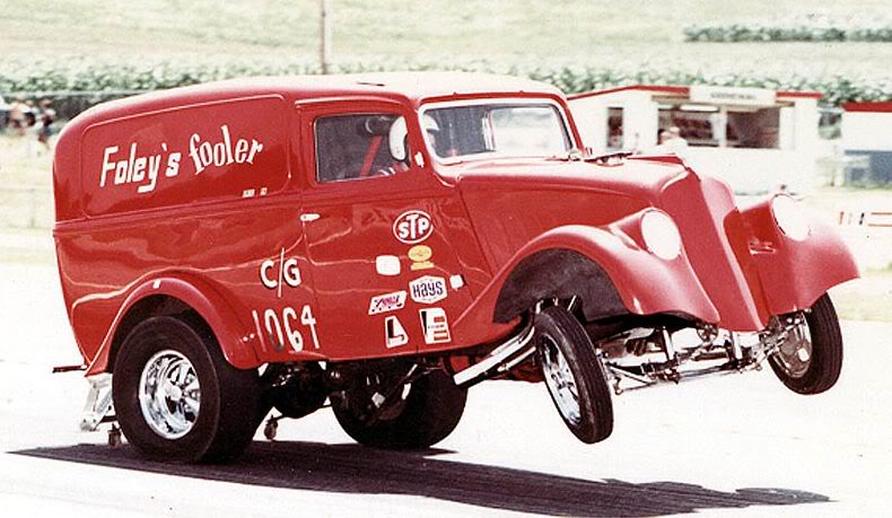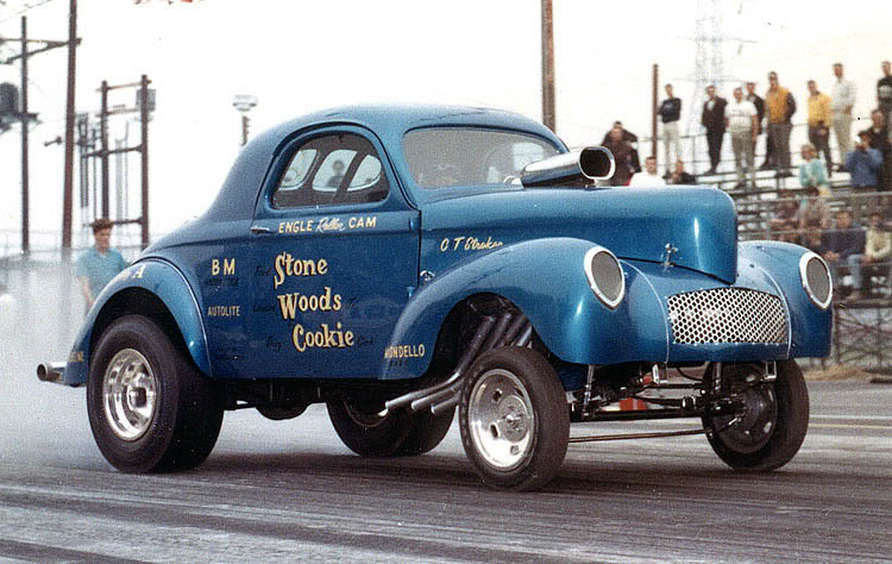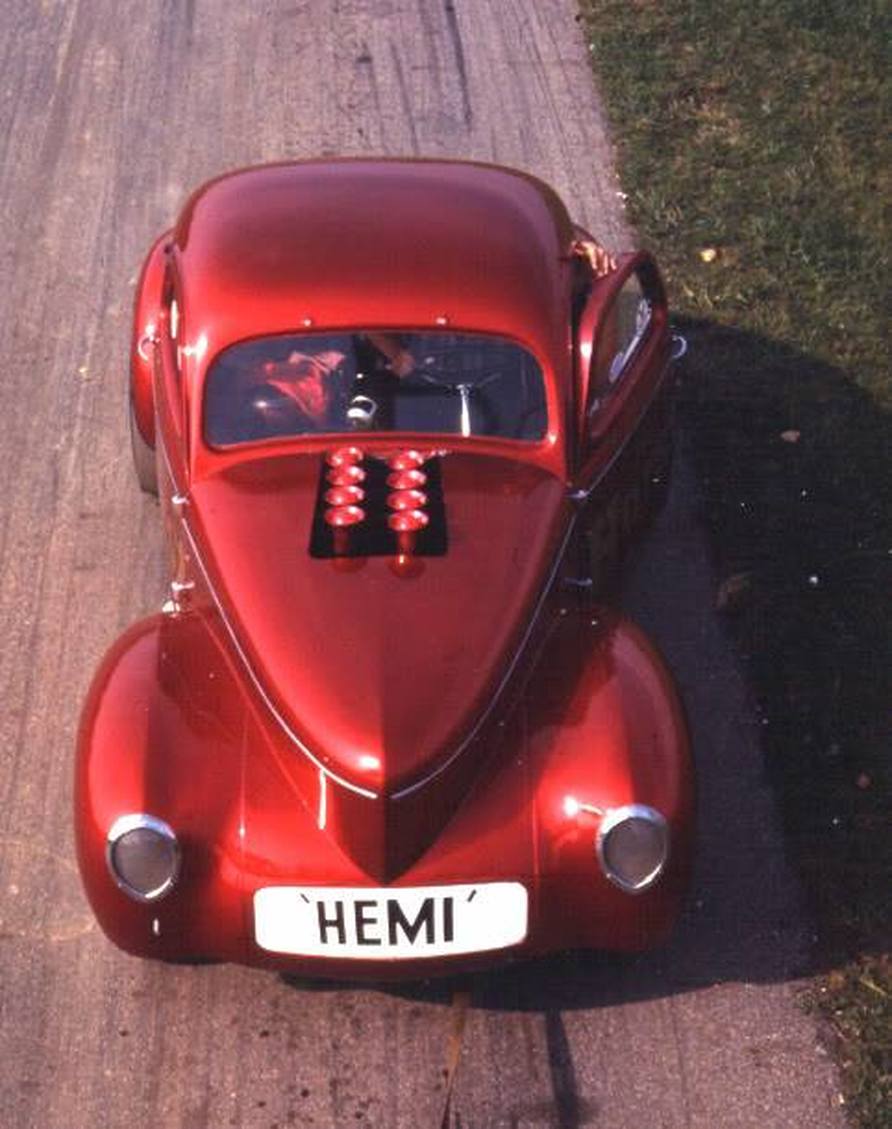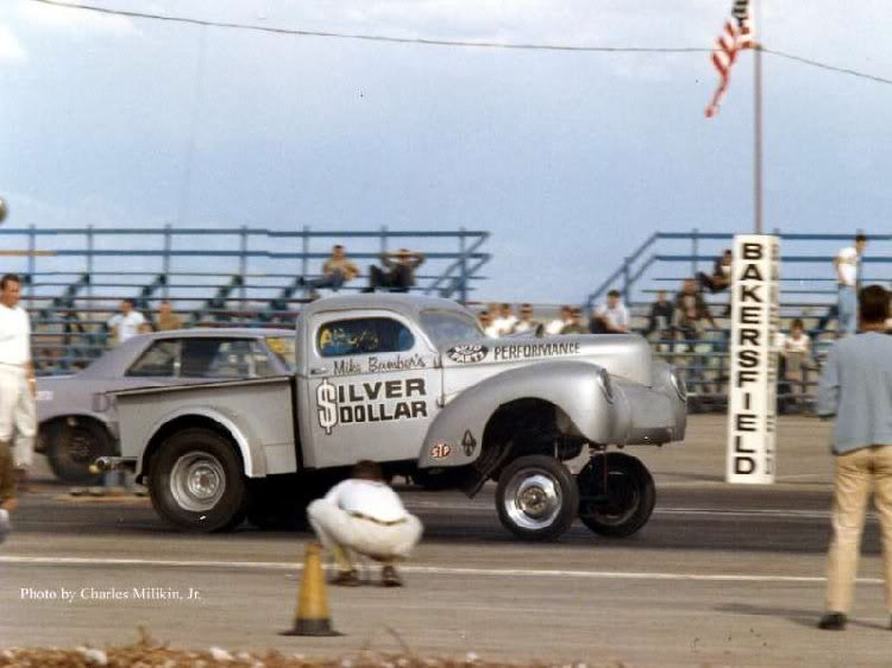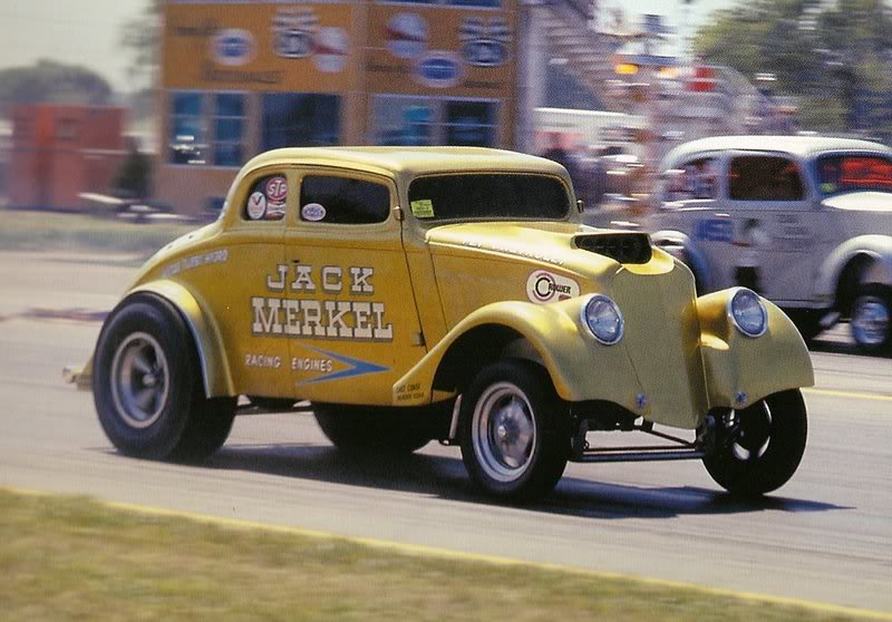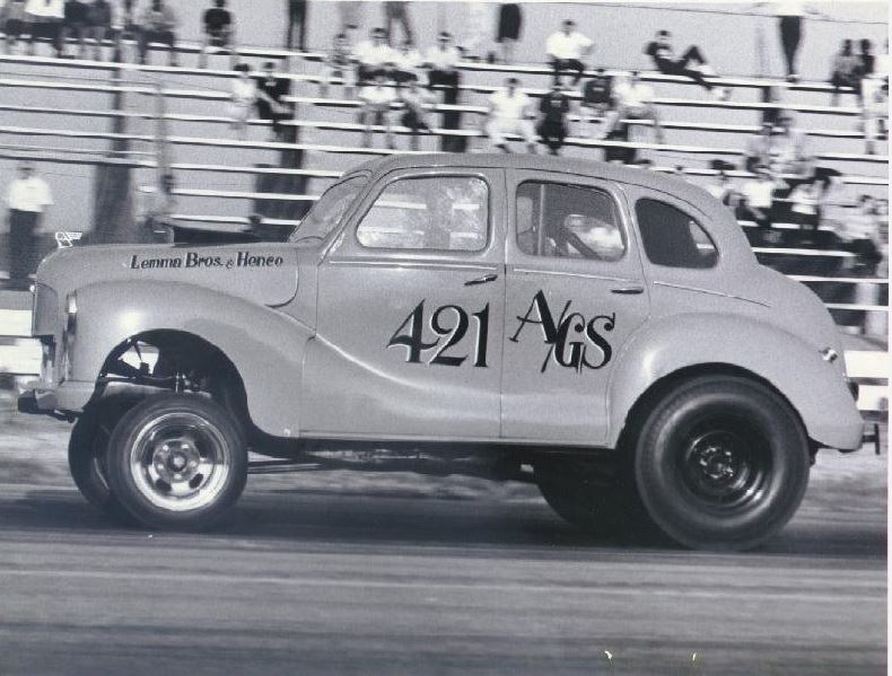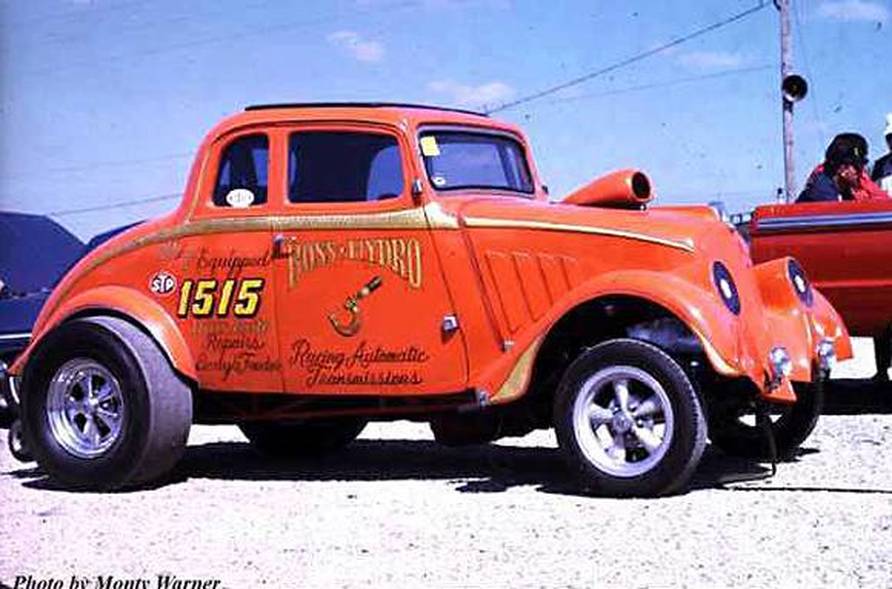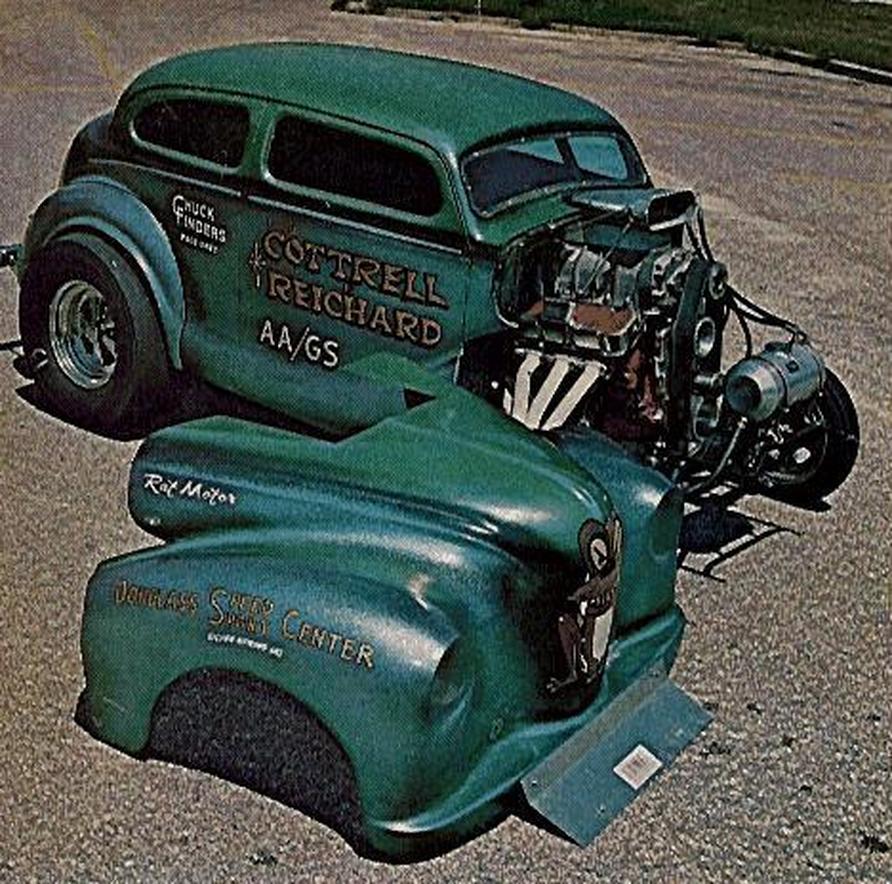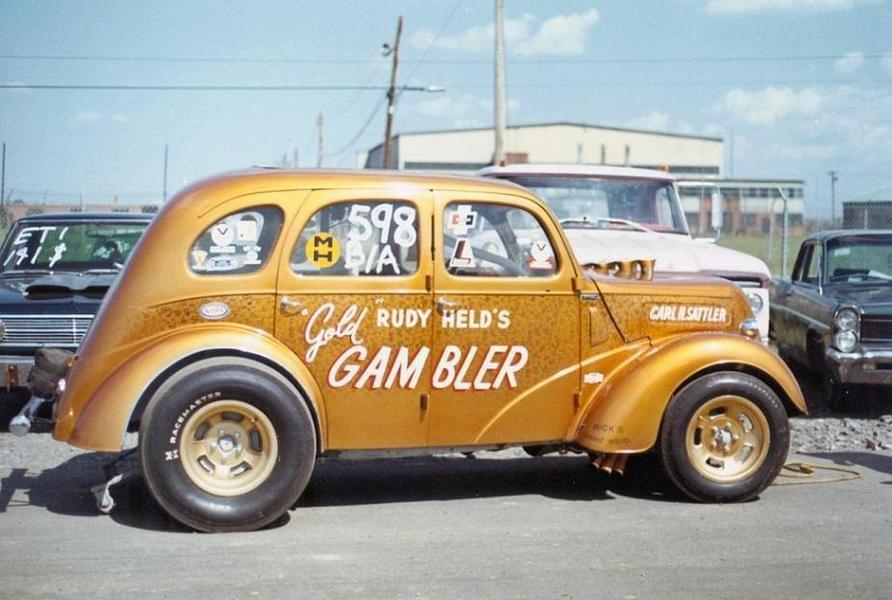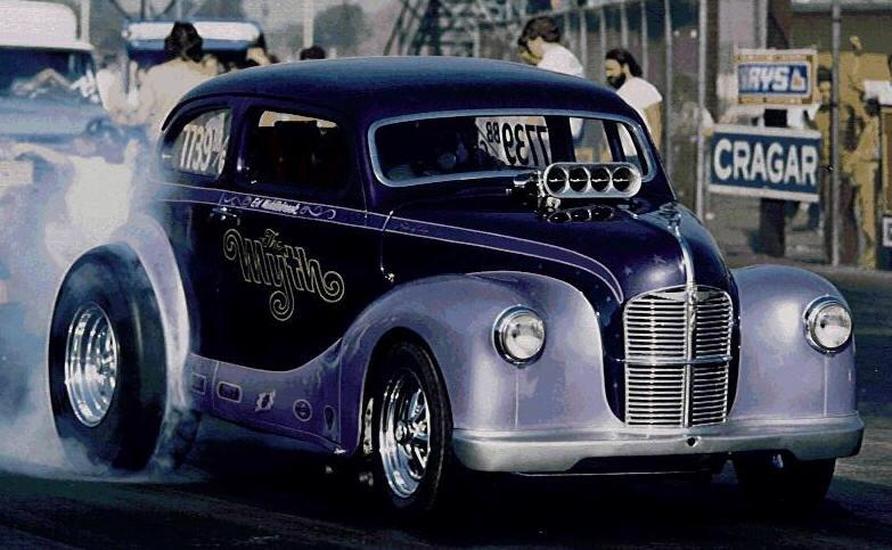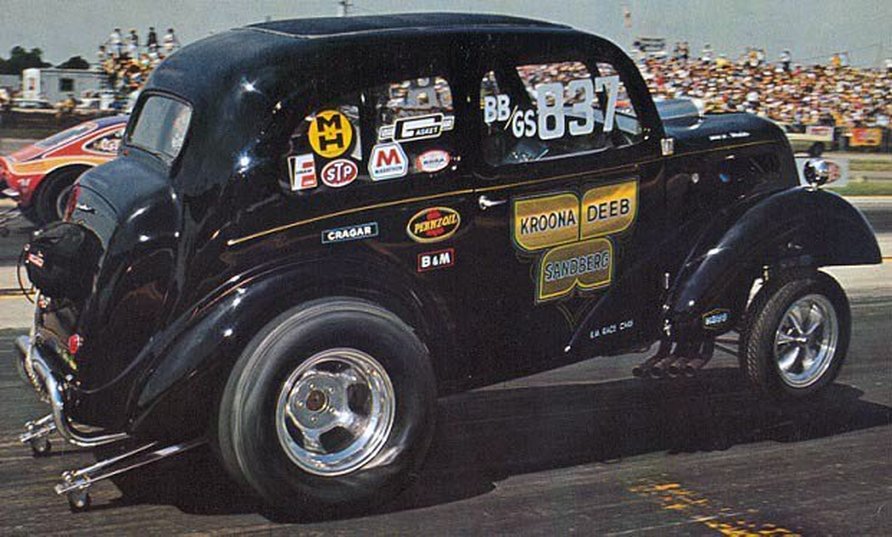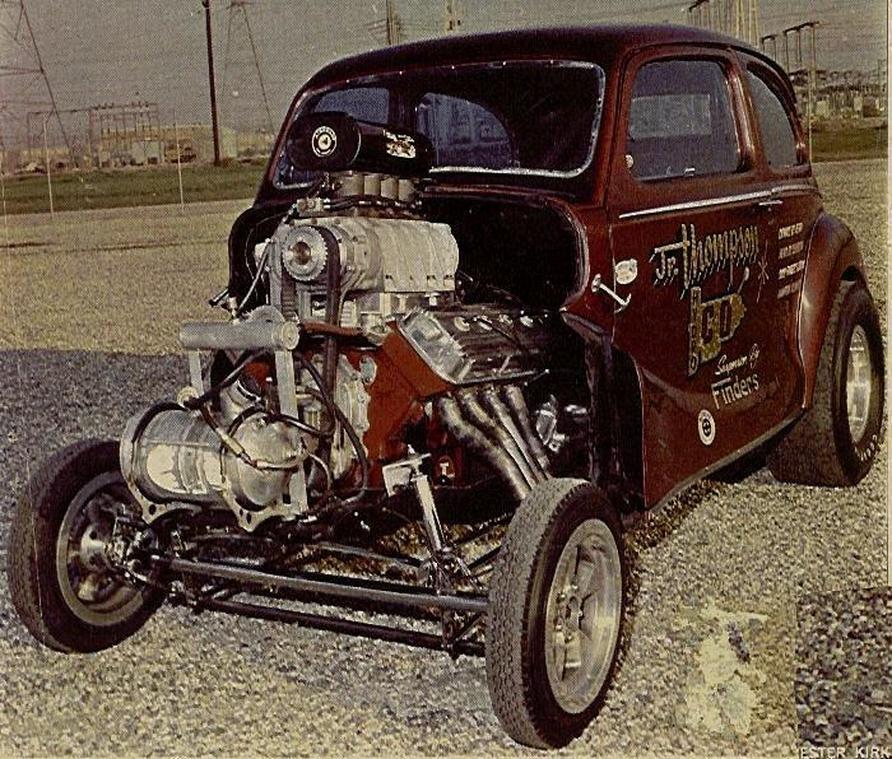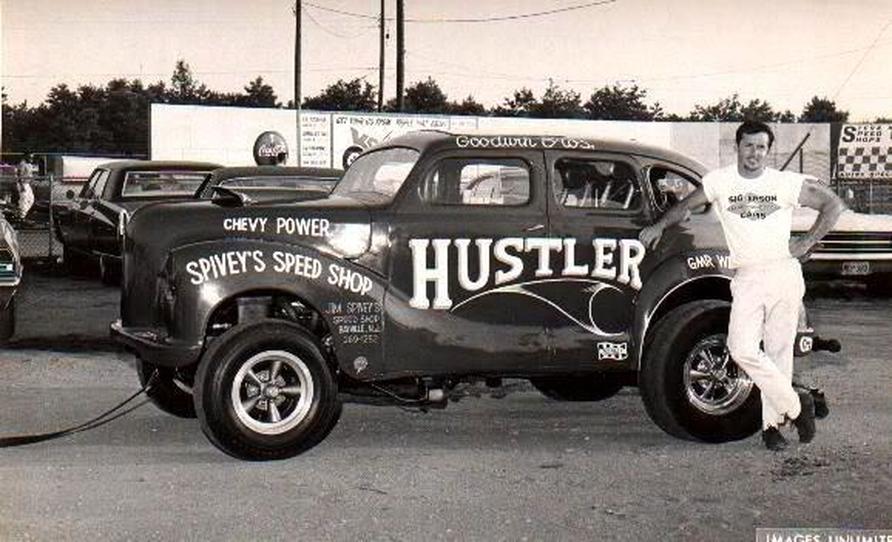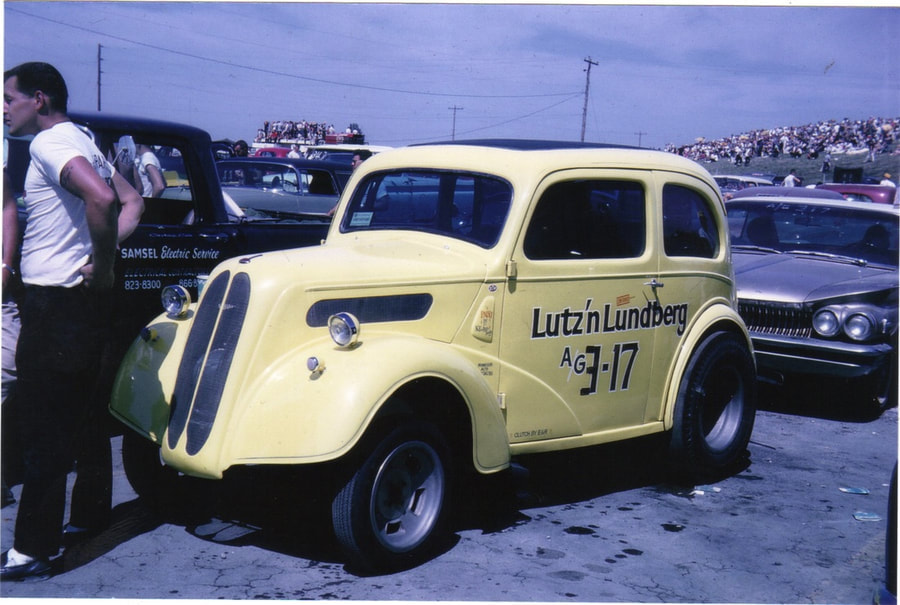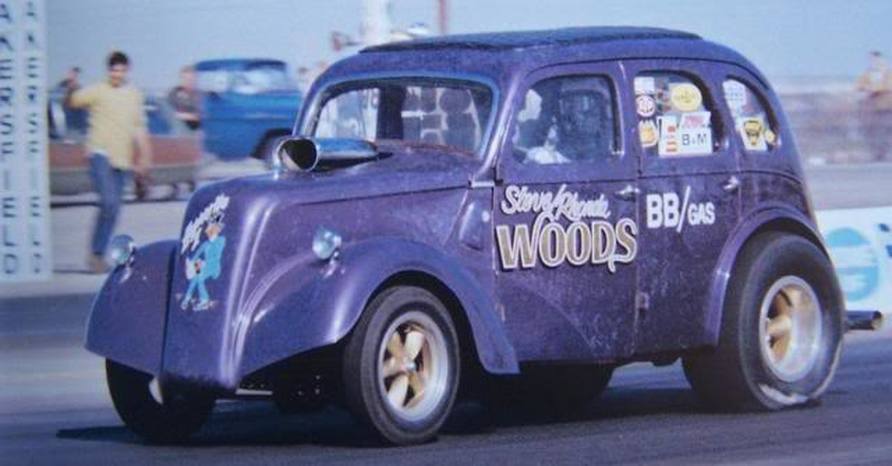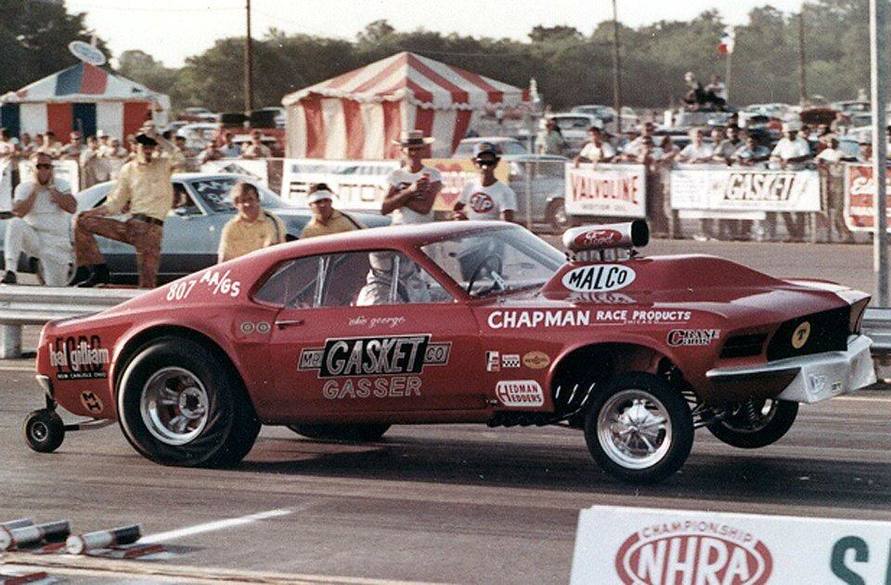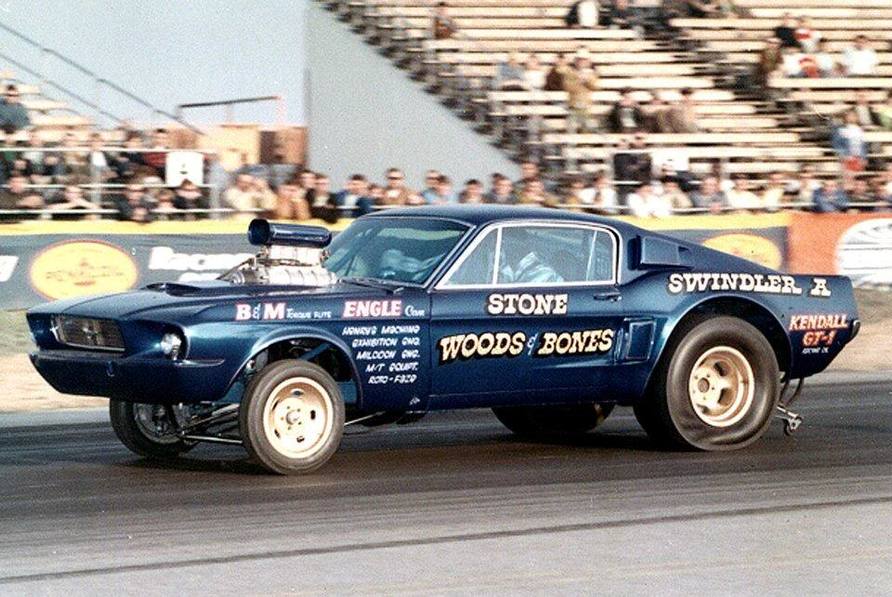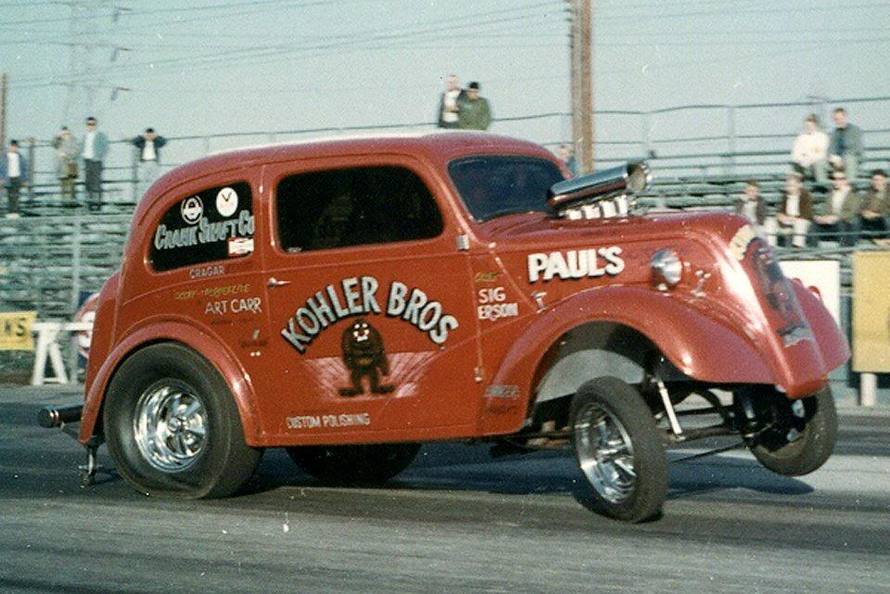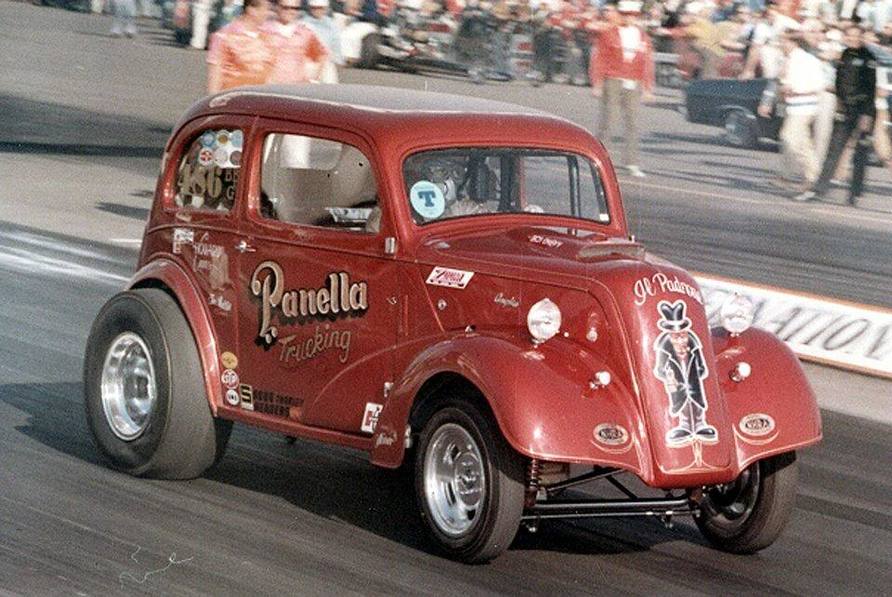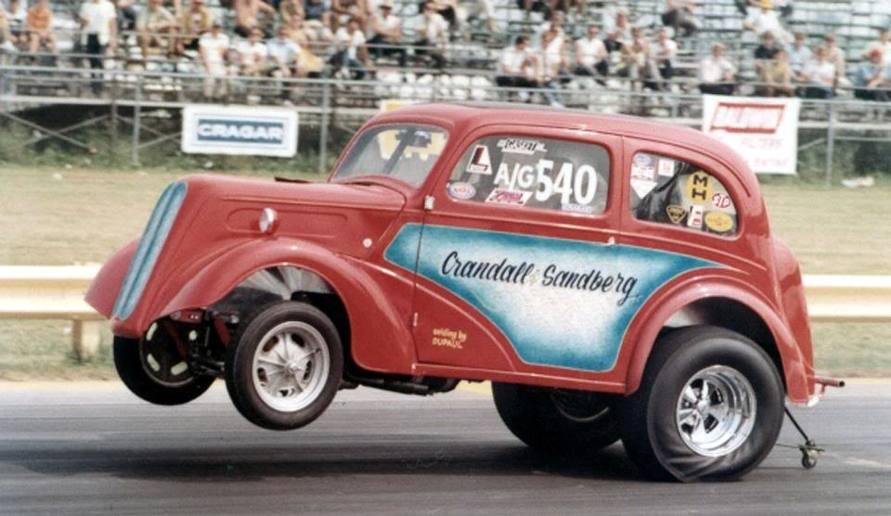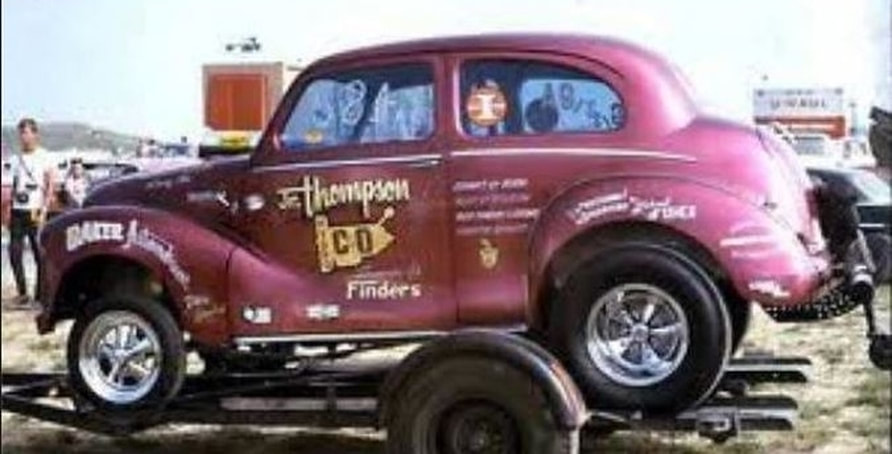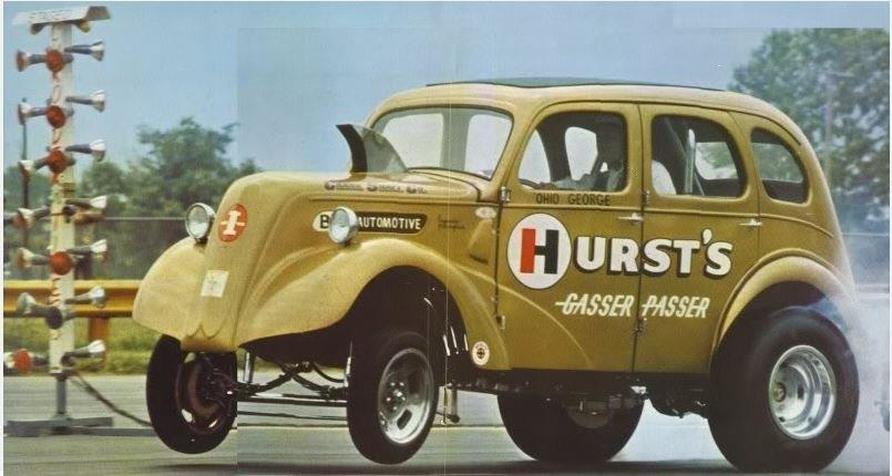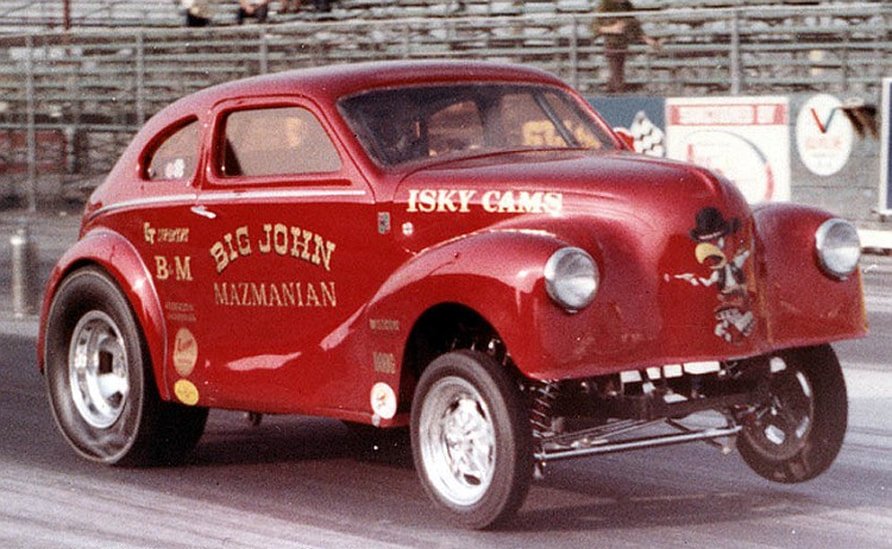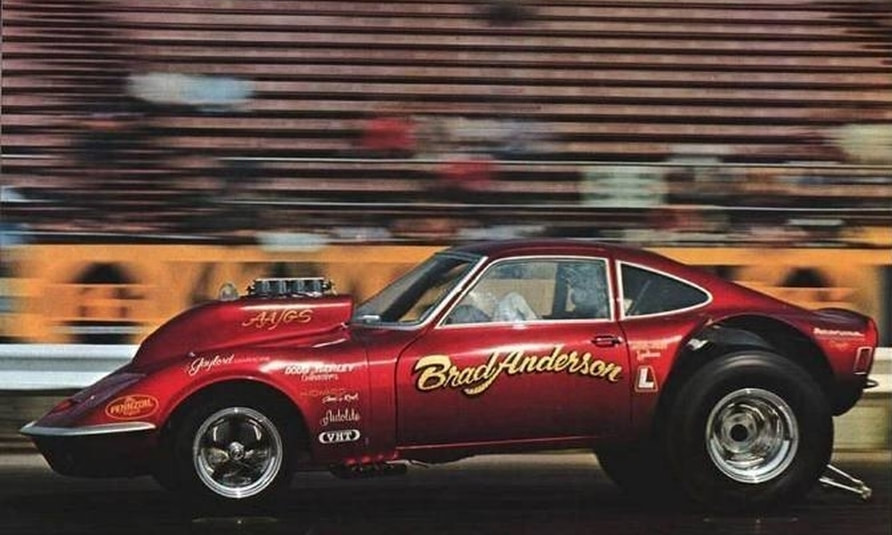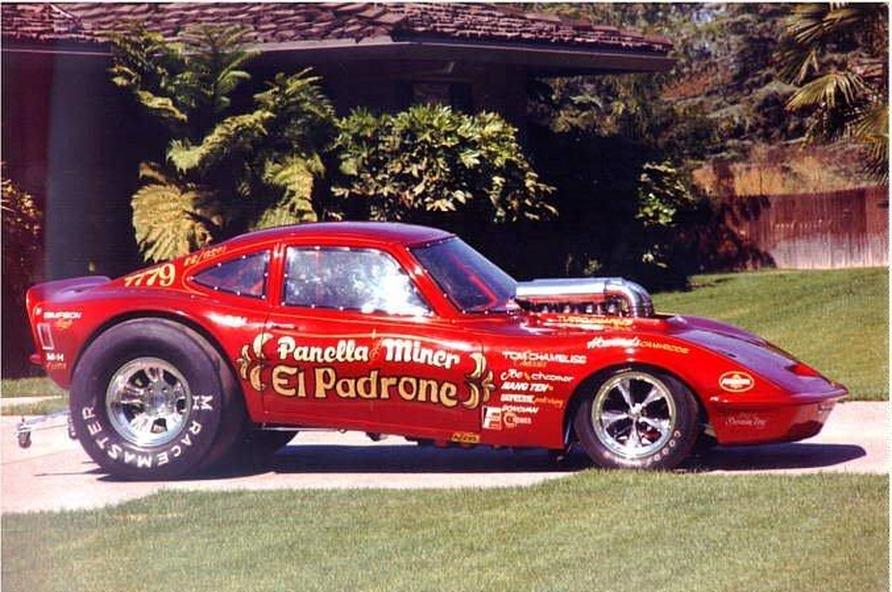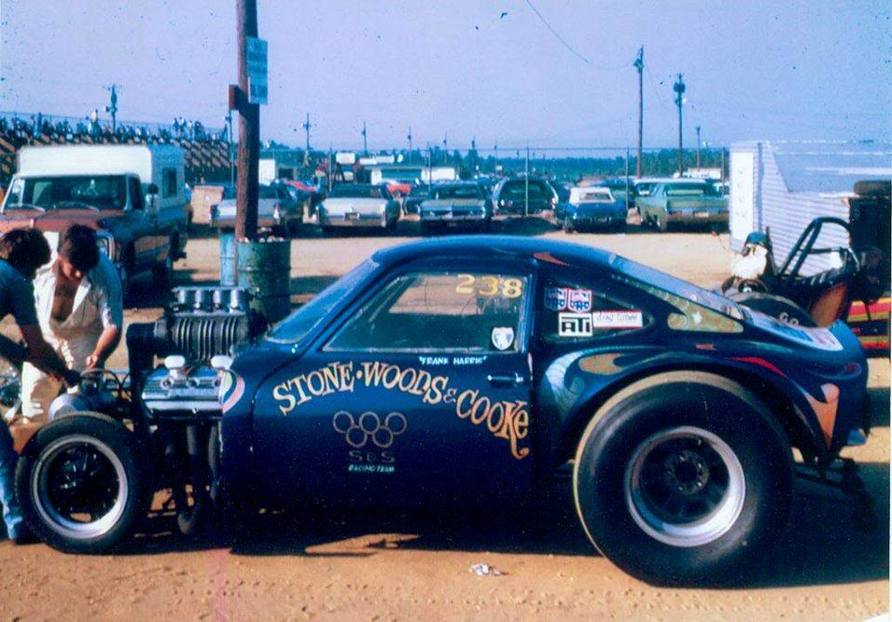GAS COUPES/SEDANS
I suppose it’s possible for some readers to not know what a “Gasser” is. That’s okay, I don’t know for sure what an iPhone is so we’re even (I’m still coming to grips with push-button telephones instead of a rotary dial).
The official class name was “Gas Coupe & Sedan” class, which was soon rounded off to just a Gasser class. A Gasser is (or was) basically a stock production type vehicle with a hopped-up engine. A stock car with a non-stock engine as it were. And the engine did not need to be the same brand as the car. For instance, an old Ford coupe with a later model Oldsmobile engine would fit right into a Gasser class.
Eventually, different classes were created for different combinations, especially with the supercharged entries. The top and
fastest class was called the AA/GS class. All the cars were classified by dividing the weight of the car by the cubic inches of engine displacement. This would then give us the “weight per cubic inch”, which would then define which class the car would compete in. A 3000 pound car with a 300 cubic inch engine would work out to “10 pounds per cubic inch”, for instance.
The classes would typically be A Gas, B Gas, C Gas, and so on., or A/G, B/G, C/G, etc. If the car was supercharged, an “S” might be added, such as A/GS, B/GS, etc. Naturally, the fastest class was typically a light weight car and a large
displacement supercharged engine.
Since any production type car could run in the Gasser classes, diversity went to the extreme. I realize (sometimes painfully) that we are now in the 21st Century, and today, some of the best drag racing comes in the form of “Door Cars” (many of which run quicker and faster than the Top Fuel dragsters did in my day). Well, the Gasser classes of the 1950’s and 1960’s were not called “Door Cars”, they were just cars with doors.
It soon became apparent that while "bigger may be better" when discussing some things, it wasn't the case with the Gasser vehicles. The search for the better (lighter and smaller) Gasser vehicle eventually turned to an old American car company, the Willys Motor Co. (originally called, Willys-Overland). Willys had been building cars since it was founded in 1908. It's big claim to fame came during World War II, with the building of the Willys Jeep. It turned out that the Willys sedans (and some pick-up trucks) built between 1933 and 1940 could be made into a great Gasser race car. And like the cell phone is today, everyone running a Gasser just had to have one. And then, in the natural evolution of things, it was determined that even the Willys was deemed to be too large. At this point, many of the heavy hitters in the Gasser ranks went into the Anglia-Austin phase.
“Attention in the pits, attention in the pits, Gassers to lanes 1, 2, and 3."
The official class name was “Gas Coupe & Sedan” class, which was soon rounded off to just a Gasser class. A Gasser is (or was) basically a stock production type vehicle with a hopped-up engine. A stock car with a non-stock engine as it were. And the engine did not need to be the same brand as the car. For instance, an old Ford coupe with a later model Oldsmobile engine would fit right into a Gasser class.
Eventually, different classes were created for different combinations, especially with the supercharged entries. The top and
fastest class was called the AA/GS class. All the cars were classified by dividing the weight of the car by the cubic inches of engine displacement. This would then give us the “weight per cubic inch”, which would then define which class the car would compete in. A 3000 pound car with a 300 cubic inch engine would work out to “10 pounds per cubic inch”, for instance.
The classes would typically be A Gas, B Gas, C Gas, and so on., or A/G, B/G, C/G, etc. If the car was supercharged, an “S” might be added, such as A/GS, B/GS, etc. Naturally, the fastest class was typically a light weight car and a large
displacement supercharged engine.
Since any production type car could run in the Gasser classes, diversity went to the extreme. I realize (sometimes painfully) that we are now in the 21st Century, and today, some of the best drag racing comes in the form of “Door Cars” (many of which run quicker and faster than the Top Fuel dragsters did in my day). Well, the Gasser classes of the 1950’s and 1960’s were not called “Door Cars”, they were just cars with doors.
It soon became apparent that while "bigger may be better" when discussing some things, it wasn't the case with the Gasser vehicles. The search for the better (lighter and smaller) Gasser vehicle eventually turned to an old American car company, the Willys Motor Co. (originally called, Willys-Overland). Willys had been building cars since it was founded in 1908. It's big claim to fame came during World War II, with the building of the Willys Jeep. It turned out that the Willys sedans (and some pick-up trucks) built between 1933 and 1940 could be made into a great Gasser race car. And like the cell phone is today, everyone running a Gasser just had to have one. And then, in the natural evolution of things, it was determined that even the Willys was deemed to be too large. At this point, many of the heavy hitters in the Gasser ranks went into the Anglia-Austin phase.
“Attention in the pits, attention in the pits, Gassers to lanes 1, 2, and 3."
One of the very first cars I ever owned, a 1949 Chevy Coupe. Mine was similar to this one above, which may have been a '49 or '50 Chevy Coupe. Mine was a street car (I installed a 283 SB Chevy engine in it) and it was not jacked up like this car...
This may not be the most sanitary 55 Chevy in the Gasser Class. Occasionally, it also ran in the Altered Class...
Back in the day, and before the Gasser racers picked-up on the "Mini Cars" like the Austins and Anglias, etc., Stone-Woods & Cook's black Willys with the blown Chrysler Hemi under the hood was the ultimate Gasser, known as "The Dark Horse". Let me put it this way. Anytime this killer car staged at the starting line, there was not a single Gasser fan in the stands sitting down, even if 10,000 fans were in the stands, they were all standing. You have to remember, the S-W-C team, even in the very early days with the supercharged Olds engine, this team put the Gasser Class on the map...
A regular at Lions Drag Strip on a typical Saturday evening, this Willys held the A/Gas record at the time. The top has been neatly chopped, and under the hood is a 501 cubic inch injected Lincoln engine...
Once you get into your 80's, life becomes day to day (I'm 84). Your first hint is your memory goes south. This 1940 Willys Pick-up truck reminds me that if you want to go racing, you are going to have to drive your race car to the track. or put it on a trailer, or as in this case, you have to get a tow-bar. Of all the options back in the day, the tow-bar allows you to flat tow your race car to the track...
A 1937 Chevy running in the AA/Gas Supercharged Gasser Class...
CGas/S. I'm pretty sure this is a Straight-6 engine...
The Willys pick-up truck in the near lane is powered by a fuel injected Lincoln engine. In the far lane, it looks like the Anglia got a jump on the little truck...
In the 1950's, the most popular Gasser bodies were the 1940's Willys 2-door Coupes and 4-door sedans. In the 1960's, the British Austin (shown above) and British Anglia bodies became the hot set-up...
A pair of 1933 Willys have at it, at Pomona...
An early all steel 4-door Studebaker B/Gass supercharged Small Block Chevy for power. The Gasser master, Junior Thompson, did the honors behind the steering wheel with the Chevy 4-speed trans...
Before Junior was racing in the B/GS class, he was racing in the C/GS class, and was pretty much unbeatable. In the far lane, Doug Cook was also running an early all steel Studebaker...
"Big John's" AA/GS Austin Gasser. This car is like a large piece of jewelry...
When me and my buddies went drag racing, we were kind of hell-raisers, especially in the pits after the races were over. While most of the racers went to get something to eat, me and my buds messed around in the pits to see what kind of hell we could raise. Looking at these two Willys Gassers, I could see they were almost duplicates of one another. Had I been there at the time, I would have instigated my buds to follow my lead, and swap the doors from one of these cars and bolt them on the other car. The teams would return from their dinners, and not realize that the doors on Big Johns car was on the B/G car. We loved the mind games which were all in fun. I learned about this from my friend TV Tommy Ivo. He and one of his guys would jump over the pit fence at a big event and play "the hood game". In those days, 90% of the dragster guys towed to events in their Chevy (or GMC) 4-door dully pick-up trucks. Of course, they got drunk at the close of the Saturday time trials, slept it off n the motel and came back on Sunday for the finals (the Motel was across the street from the drag strip). During that night, Tom and his pranksters did a "hood swap" on ten or 15 trucks, swapping a blue hood and installing it on a red truck, and then installing the red trucks hood on a white truck, etc., etc. It takes a little time to do this (and the hoods are pretty heavy). Once the pit was open the next morning, the other racers would spend over an hour looking for their original hoods. They knew it was IVO who had instigated the scene. And what a scene it was, too. It was a different era, when drag racing was a hell of a lot of fun, and everyone was in on the laughs...
A 4-door Willys lifts her front feet in B/Gas class...
A no frills Gasser. A 1928 or 1929 Model-A 5-Window Coupe, with a grille shell from a 1932 Ford....
A 1937 or '38 Willys pick-up truck, B/Gas Supercharged, and I'm guessing a 303 cubic inch Oldsmobile engine. Looks like it's an original steel body. Note the neat mesh welded into the hood, to let cool air into the front and to let the hot air out toward the rear of te hood. Probably made the hood lighter too...
Off and running...
A nifty looking 1940 Ford coupe Gasser. These were never the most popular car to use as a drag car, they were actually not very lightweight. When I was in High School, I owned a '40 Ford coupe. When I bought the car, it had a pretty stout Flathead engine in it. I used it as a street racer, only took it to the drag strip once, it ran 92 MPH...
Sherm Gunn piloting his super nasty supercharged '37 Chevy Gasser at Pomona. Note the NHRA accepted 4-inch top chop...
Bizio's bad-ass AA/Gasser...
Stone-Woods-Cook (and sometimes Chuck Finders) 1933 Willys AA/GS Gasser at Lions Drag Strip...
Maybe not the most glamorous B/Gasser in the pits, but this 4-door Anglia has character. The NHRA rules stipulate that the cars have to be equipped with headlights, but it doesn't mean they have to be automobile headlights. These were apparently from a Schwinn bicycle...
A very popular Gasser, an Austin Coupe. This is a British built car. The Austin Automobile company was founded in 1905. Note that the entire front end is an aftermarket fiberglass one-piece duplicate of the original vehicle. I have always thought of these types of "mini-cars" were part of what I call the "Tonka Toy" era of the Gasser classes...
Don Nowell's super clean 1937 B/Gas Chevy, running a 327-inch injected Small Block Chevy engine, backed up by a 4-speed BorgWarner trans, and a Pontiac rear end (5.38 to 1 gears). The light weight tilt front body panels brought the weight down to 2,250 pounds...
I can never get enough of 1937 Chevy Gassers. Sue me...
Okay, so it's not a '37 Chevy. It's a '38 Chevy. I love them too...
Removing the hood side panels permits the air trapped in the engine compartment to escape...
I love this 1937 or 1938 Chevy 2-door sedan. Run by the Reinford Brothers...
A 1948 Austin Pick-Up truck, running in the Gasser Class. The cab and front end looks to be stock, the pick-up bed, not so much...
Despite the "C A" on the side window (he must have been running as a C/Altered that day), this really neat 1933 Willys is a true Gasser...
An Austin 4-door Gasser. Let's see, an orange body and black wheels, maybe it was a special event to celebrate Halloween back in the day. Someone needs to notify the driver that the trunk lid latch is busted...
This 1932 Ford Vicki B/Gasser was pretty rare, and this car is just too nice to race...
This is a 1940 Ford. I had a 1940 Ford coupe in High School, and I know what a '40 Ford coupe looks like. I also know what a '40 Ford 2-door sedan and 4-door sedan looks like. But this car has me perplexed. It's not a coupe, and it's not a 2-door sedan, and it's not a 4-door sedan. It appears to me as if someone put all the parts into a blender. Although the engines could only be moved rearward 10% of the wheelbase, the driver's seat had no such restriction. Between that and the rearward weight bias of the 4-door sedans, they had the potential of a rearward weight bias advantage...
A C/Gas 5-window Ford Coupe. Other than the dark tinted plexiglass windows, the rest of the car looks like it's all factory production body parts. Cars in these lower Gas classifications (C/G) were usually powered by Small Block Chevy engines...
Hubert Platt began serious racing with this Small Block Chevy engine, 4-speed equipped, 1938 Chevy business coupe. Hubert would later become a Ford factory sponsored racer in A/FX, Funny Car, Super Stock, and eventually Pro Stock during his 50 year racing career. Although born in South Carolina, Hubert and his brother Huston made their reputations and careers in the Atlanta area. Huston built the 301-inch Chevy engine in Hubert's B/Gasser…
Ed McKee's C/Gas 1937 Chevy Coupe...
A couple of British "Tonka-Toy" size Gassers having a go at Lions Drag Strip. In the near lane its Jr. Thompson's Austin, and in the far lane, its the Shores and Hess Anglia.
The evolution of the Gasser Class. In the beginning, the Gasser Classes were created for guys that showed up at the drag strip with your basic production car, other than it had a hopped-up engine. Any kind of car would due, as long as it was a Coupe or a Sedan. As this idea for a class took hold, racers started to use cars that were smaller and lighter than the standard full size vehicles. Many started to recognize the Willys Coupes and Sedans. It got to the point where almost all the Gassers in the Supercharged Gasser Class were based on the Willys Coupes. Many racers in the AA/Gas Supercharged Class didn't stop there, and started to use the Austins and Anglias, which were smaller still.
The evolution of the Gasser Class. In the beginning, the Gasser Classes were created for guys that showed up at the drag strip with your basic production car, other than it had a hopped-up engine. Any kind of car would due, as long as it was a Coupe or a Sedan. As this idea for a class took hold, racers started to use cars that were smaller and lighter than the standard full size vehicles. Many started to recognize the Willys Coupes and Sedans. It got to the point where almost all the Gassers in the Supercharged Gasser Class were based on the Willys Coupes. Many racers in the AA/Gas Supercharged Class didn't stop there, and started to use the Austins and Anglias, which were smaller still.
NHRA created the Gasser classes for cars just like this, cars that were at home on the street and on the track. The perfect hotrod, a '32 Ford 5-window coupe, all steel, with a working windshield wiper and mufflers...
A 1933 Willys 4-door sedan. The longer wheelbase aided handling...
Gassers like this English Anglia were very popular, back in the day. They were so small, some people probably thought you could get them at the bottom of a cereal box...
This may be one of the most important photographs in the history of drag racing, as this was the opening day of organized drag racing at Goleta Airport in 1948.
I have no idea what class these two coupes would be in, since individual classes had not been created until several years after 1948. If I remember, the guys that put on this drag race divided the cars up into “street cars” and “race cars”. But I suspect both these cars are using hopped up engines, so I decided to upload this photo into the Gasser Section…
I have no idea what class these two coupes would be in, since individual classes had not been created until several years after 1948. If I remember, the guys that put on this drag race divided the cars up into “street cars” and “race cars”. But I suspect both these cars are using hopped up engines, so I decided to upload this photo into the Gasser Section…
K.S. Pittman and John Edwards ran this Willys coupe in the C/GS ranks, with a blown Olds. This was before fiberglass front pieces replaced the original steel, and when gassers had to be street legal. Notice the windshield wipers as one example of street equipment, and the headlights/taillights had to work. (Photo by Dave McClelland, Caption by David Sorenson)
An early 1950's Chevy sedan. I don't know for sure, but this Gasser may be powered by a straight-6 engine...
Mike Marinoff's B/Gas Supercharged Willys was a familiar runner at upper Midwest tracks. Mike raced this car (with Bill Reeves in the seat) for many years and was always a strong contender. And surprisingly, it ran a manual 4-speed transmission...
This car was owned and driven by Palmer Lazarus. Both Palmer Lazarus and Mike Marinoff (above photo) must have been brothers from different mothers, they had so much in common. They both raced 1940 Willys Gassers, both in the same class, and both kicked ass all over the Midwest. It also looked as if they painted their cars from the same paint bucket... (This photo and the one directly above were submitted to me by Dennis Friend)
This photo was emailed to me by someone who knows I love the early Chevy Gassers. These two cars are running in the C/Gas Supercharged class at a NHRA National Event. They are almost identical other than the Moody-Jones car in the near lane is a 1937 Chevy and the car in the far lane is a 1938...
It's a Willys, it's supercharged, it's bright red, and it's a Gasser. More than that, I could not ask for...
When our GI's started returning home after WWII, a large number of them had "build a hot rod" on their to-do list. The first thing that they needed to do was to find a car that was in good enough shape to make into a hot rod. Model-A Ford coupes and roadsters along with the 1932 Ford coupes and roadsters were usually one of the top choices. But after a while, good ones were harder and harder to find. So, other models and other brands were considered. This hot rod (a 1934 Chevy 3-window coupe) was chosen by this hot rodder, who turned it into a great looking Gasser. That's a 427 Chevy Big Block with Hilborn Injectors under the hood...
An all steel 1938 Chevy 2-door sedan. The Reinford Brothers chose an apt name for their D/Gasser...
Wow! This Deuce Coupe may be too pretty to be a race car. I can see a 6-71 supercharger under the hood, so it probably runs pretty good on the street, too...
Another 1938 Chevy, this one a Coupe. This car runs in the C/Gas Supercharged class, so I know it has some beans under the hood. Also note the B&M Hydro-Stick transmission decal in front of the door. Before the Powerglide and the Torque-Flight transmissions came on the scene, the B&M Hydro-Stick was the hot set-up...
A couple of A/Gassers. The 1934 Ford Coupe in the near lane is sponsored by McCulloch Superchargers, and is using one of their Paxton blowers on the Small Block Chevy engine. In the far lane, the 1932 Ford 2-door Sedan appears to have an Olds engine under the hood...
Anyone that believes that Bigger is Better probably never raced in the Gasser Class. This class started out with regular production vehicles with hopped up engines. It wasn't long after that racers started downsizing their choice of cars for the Gasser classes, going with early Ford coupes, and then going to the Willys coupes and sedans, and then smaller yet, the Anglia's and Austin's. But this is a first for me, an A/Gas Crosley, probably the smallest vehicle ever produce in America. I have seen several Crosley's in the Altered Classes, but never one in the Gasser Classes before...
An early Chevy 5-window coupe (probably 1930) running in B/Gas. It looks to me like it has Plexiglas windows tinted in green. The green tint is carried over on the miniature headlights...
I'm just guessing, but for every 1950 era Ford Gasser, there were probably a hundred 1950 era Chevy's in the Gasser Classes. I also suspect that the "327" painted on the front fender probably means this Ford is powered by a small block Chevy engine...
Something you don't see every day. This is Dave and wife Susie's Gasser drag car. Dave had been looking around for a suitable car to turn into a Gasser. He bought this 1949 Packard for $50, and installed a 292 cubic inch Small Block Chevy in it. A Hillborn injection system was soon installed. This is no "light weight" Gasser, it weighs in at well over 4,000 pounds. Because of the car's weight, and the small displacement engine, it was a perfect fit for the F/Gas class at NHRA National Events, and Dave has the trophys to prove it...
We have to remember that before Hot Rods became Gassers, like this Ford Model-A 5-window coupe, they were used as every day street driven cars. For all I know, this car may still be used to putt around town. Note the "tow-bar tabs" welded to the front of the frame, and also the Ah-oo-gah horn...
A 1932 Ford 2-door sedan, Chrysler powered, a perfect early gasser, before everyone started to look for lighter weight cars for the classes. There was (or is) nothing wrong with being different. This car was run by veteran hot rodder Bill Waddill. In a world filled with guys wearing baseball caps, this guy is wearing a "pith helmet", great for keeping the hot sun from frying the back of your neck...
Another early coupe, run by Dick Olson and Pete Osgood, that probably sees a fair amount of street driving. It does not look like a Ford to me, I'm guessing it's an early Chevy '28 or '29). A racer that also carries his tool box down the track with him on a run is a first for me...
It’s another Saturday night at Lions, and a couple of supercharged gassers are performing for the typical standing room only crowd.
Lions Drag Strip was in Wilmington, California located between downtown Los Angeles and Los Angeles/ Long Beach Harbor Area. The track was called the Lions Associated Drag Strip named after its sponsor, Lions Club International. All the profits were donated through the Lions across several community charities. Racing legend Mickey Thompson was notably the force behind developing Lions Drag Strip with the help of local officials to see the project through completion and provide legalized drag racing to Southern California. The track was sanctioned by the American Hot Rod Association (AHRA).
October 9, 1955 was opening day, Mickey and his staff prepared for a crowd of 2500 attendees but more than 10,000 showed up along with over 400 drag cars. The overwhelming success of Lions enabled the initial loans to build the facility to be paid off in less than two years.
Lions enjoyed great success right off the bat. In 1957 Mickey added lights and started promoting Saturday Night “Date Night: which doubled Lions attendance. The flag start was replaced by a Christmas Tree starting system. In 1965, CJ Pappy Hart took over track management and created the Junior Fuel, Bracket and Grudge Racing groupings. Hart also improved Lions’ traction by adding traction compound for extra bite.
In 1972 Steve Evans, Lions’ third track manager, renovated the facility and secured it as a sanctioned NHRA track. With the success of Lions popularity came additional noise complaints from nearby residents as the population increased. As a result of noise complaints, the Harbor Commission revoked the operating permit that Lions had been operating under for 18 years. The last drag race at Lions was held on December 2, 1972, with over 20,000 fans in attendance…
Lions Drag Strip was in Wilmington, California located between downtown Los Angeles and Los Angeles/ Long Beach Harbor Area. The track was called the Lions Associated Drag Strip named after its sponsor, Lions Club International. All the profits were donated through the Lions across several community charities. Racing legend Mickey Thompson was notably the force behind developing Lions Drag Strip with the help of local officials to see the project through completion and provide legalized drag racing to Southern California. The track was sanctioned by the American Hot Rod Association (AHRA).
October 9, 1955 was opening day, Mickey and his staff prepared for a crowd of 2500 attendees but more than 10,000 showed up along with over 400 drag cars. The overwhelming success of Lions enabled the initial loans to build the facility to be paid off in less than two years.
Lions enjoyed great success right off the bat. In 1957 Mickey added lights and started promoting Saturday Night “Date Night: which doubled Lions attendance. The flag start was replaced by a Christmas Tree starting system. In 1965, CJ Pappy Hart took over track management and created the Junior Fuel, Bracket and Grudge Racing groupings. Hart also improved Lions’ traction by adding traction compound for extra bite.
In 1972 Steve Evans, Lions’ third track manager, renovated the facility and secured it as a sanctioned NHRA track. With the success of Lions popularity came additional noise complaints from nearby residents as the population increased. As a result of noise complaints, the Harbor Commission revoked the operating permit that Lions had been operating under for 18 years. The last drag race at Lions was held on December 2, 1972, with over 20,000 fans in attendance…
An all steel (including running boards) 1940 Chevy Coupe, 292 cubic inch Small Block Chevy under the hood...
Santa Maria Drag Strip, a neat track just a few miles north of Santa Barbara, CA. The track opened in 1951. Back in those days, Gassers were usually street driven cars with modified (as in hopped-up) engines, that were not permitted to race in the stock classes. A '55 or '56 Ford up against a '49 or '50 Oldsmobile. The flagman has waived his flag and based on where the front wheels are relative to the starting line, it looks as if the Olds has already taken a slight lead on this run...
Although the Anglia coupes were more popular, it's possible that the Anglia 4-door sedans had an advantage. For one thing, the wheelbase was a little longer which made them handle better, and the extra interior room allowed the driver's seat to be a little further to the rear of the car...
Just another '55 Chevy Gasser, but look at that paint job. Too bad it's not a color photo. This is called "Lace Painting", and it was all the rage in the early 1960's. Engine appears to be an injected 427 Big Block, enough to get the front end off the ground as it leaves the line at Lions Drag Strip....
It was not unusual to see a Factory Experimental class car running in one of the Gasser Classes. This Mustang may or may not have been one of the factory built (Holmann & Moody) A/FX Mustangs, but I think not. The H&M Mustangs did not use the straight front axle suspension system and this Mustang is reported as being equipped with a 427 Ford wedge engine, and not one of the SOHC engines. In any case, it made a great Gasser...
A 1932 Ford Vicky sedan, small block Chevy for power. Note the miniature size headlights, most likely from a motorcycle...
A great example of the 1933 Willys Gassers back in the day. Sometimes I wonder what would have happened to the Gasser Classes were it not for the Willys coupes. Some racers started out with the 1940 model Willys coupes (such as Stone, Woods & Cook), and then switched over to the 1933 model. Some (like "Ohio" George Montgomery) started out with the 1933 model. Personally, I always favored the 1933 model, it was less rounded than the 1940 model, with it's more angular body lines. Either way, the Willys coupes in many ways made the Gasser Classes what they were...
Not exactly a light weight car, a 1952 Chevy. I'm guessing a Straight-6 GMC engine under the all steel hood. Dumping the front bumper probably helped the weight transfer a little...
Another 1937 Chevy Gasser, this one powered by a Chevy or GMC Straight-6 engine...
Jeg Coughlin Snr's Austin sedan AA/GS killer car. For whatever reason, the states of California and Ohio appeared to be the twin "capitals" of prominent supercharged Gassers...
A 1952 Chevy coupe, probably Small Block Chevy powered. Very pretty...
Mr. Douglas Cook, standing next to the Stone-Woods-Cook "Swindler A" 1940 Willys coupe. Fitted with the fiberglass hood and front fenders...
A 1937 Ford Coupe. I have been informed that this car ran in D/Gas...
Looking pretty sharp with its Cragar wheels, this 1940's Studebaker sedan was running in C/Gas, probably with a 301-inch Chevy under the hood...
A car like this T-Bird could compete in any number of classes. It could compete as a Gasser, an Altered Coupe or as a Modified Sports Car. The Modified Sports Car class was first introduced at NHRA National Events in 1961. In the NHRA Rulebook in 1961, in the MSC Section, it stated simply that "Any sports bar body was permitted." For whatever reason, the T-Bird was never really promoted by Ford Motor Co. as a Sports Car, as was the Corvette. In reality, the T-Bird (introduced in the 1955 Model year) was a scaled down Ford convertible with only two seats. However, since the NHRA Rulebook never defined what constituted a "Sports Car", T-Birds were always welcomed into the Modified Sports Car Classes, although for every T-Bird that ever ran in that class, there were probably 100 Corvettes...
A 1940 Ford Coupe storms out of the hole. Running in D/Gas, it could have been powered by a Flathead engine. My first car was a '40 Ford Coupe, powered by a hopped-up Flathead (and eventually, an Olds engine). I got it when I was 15 and drove it on the street (did not get a driver's license until I was 16, which was in 1955). Even with the Flathead for power, my little coupe was pretty fast on the street. A couple of days after I had my license, I took it down and ran it at Santa Ana Drag Strip (which was actually in what is now Irvine, CA). Speaking of drag strips, Vargo Dragway opened in 1960, and is still in operation today. It's located in a small town, Perkasie, PA, about midway between Philly and Allentown, PA...
A local SoCal Gasser, built out of an early 1960's Ford Falcon. And why not, with the Gasser class allowable 4" chopped top and plexiglass windows, the car was light weight and had decent aerodynamic qualities, certainly better than a Model-A or '32 Ford coupe. Note the steel pipe in the rear of the car, acting as a push bar. These pipes typically had threaded "pipe caps" on each end, so that the racer could stick some additional ballast inside the pipe if needed...
A very clean 1932 Ford 5-window coupe. Once the 1940 Willys started to dominate the Gasser ranks with the new "body of choice", we saw less and less early Fords in the Gasser classes, especially in the faster classes like the AA/GS and the A or B Gasser classes. They still showed up in the lower classes, such as C, D and E/G classes, like this car...
A couple of interesting Gassers (above photo and also below). Both are 1939 Chevy coupes. Not as popular as the 1937-1938 Chevy coupes, nonetheless, they made great Gasser material. Since they were a little larger cars than the 1930's models, they were also a little heavier. You wouldn't see them in the AA/GS class, but they filled in nicely in the lower Gasser classes...
Three legends in the Gasser ranks; Robert "Bones" Balogh, Gary Dubagh, and Joe Pisano. This beautiful 1933 Willys coupe is powered by a wicked blown hemi Chrysler...
A nice little top chop on this 1928-1929 Ford Model-A Coupe. I think this car would look better if the owner had kept the original grille shell instead of opting for a grille shell from a 1932 Ford...
This Gasser can be described in one word; "Perfect". A super clean, super neat 1932 Ford 5-window coupe, a Small Block injected Chevy under the hood, and polished mags front and rear. Wow!
"Ohio" George Montgomery's 1933 Willys coupe. I started to hear about the exploits of George when he was racing a 1934 Ford coupe in the Gasser Class. The Ford was powered by a Cadillac engine. At some point, that engine was stuffed into this Willys, which was a lighter weight car. This car was all factory steel, as most Gassers were in the late 1950's. This photo was taken at the 1959 NHRA Nationals. Note the windshield wiper and the license plate, a requirement in those days in the Gasser classes, as the cars needed to be "street legal". Over the years, this Willys went through many changes, including a one-piece fiberglass front end and lighter weight front suspension. The engines changed too, from the Caddy (which was eventually supercharged) to a small block supercharged Chevy and then to a 427 inch supercharged SOHC Ford. I like the way George installed the racing number (269) and the class identification on the car, with electrical tape...
The "Green Weenie", a hemi Chrysler in a Model-A. Note the NHRA legal "headlights", probably off of a motor scooter...
A pretty typical Willys sedan Gasser. Typical, other than the hood scoop. I have explored mountain caves with smaller openings...
Neither of these two cars would have ever made the cover of Hot Rod Magazine "back in the day", which is exactly why I wanted them on the GEORGE KLASS REMEMBERS site, as this is the way that the majority of hot rods looked at the drag strips in the '50's and '60's. They were always a "work in progress"...
There is one thing for sure. Any car that was sponsored by an automotive body shop had a nice straight, non dented body and a nice paint job. A prime example is this 1957 Ford powered by a 427 Ford "cammer" motor...
For whatever reason, there were always more '37 Chevy Gassers than there were '37 Fords. Why I do not know, as they were almost spitting images of each other...
A 1937 Chevy Coupe. The standard headlights were located above the fenders and attached to the hood area. The original NHRA rules required head lights on the Gassers, although I don't recall if they had to be functunal. This racer chose to mount the headlights down in front of the fenders, so they did not stick out into the wind stream. These headlights looked functional to me, some tracks required cars to have headlights, if they did any racing at night...
"Shake - Rattle & Run". This Gasser may have been the most well known '57 Chevy to ever run down a drag strip...
I'm going to go out on a limb here, but my guess is that this 1954 Ford is running a 327-inch Chevy engine. The body looks nice and straight, probably all stock body parts, which makes sense if you want to run in D/Gas. If you went with a lighter car or cut a lot of weight out of this car, you would most likely be stuck in C/Gas with a 327-inch engine, and C/Gas was an ultra competitive class to have to compete in...
A pretty picture for sure, a neat little A/Gas Anglia, some Cragar S/S wheels front and rear and some fluffy clouds in the sky. I remember when these "mini" cars started to become so popular in the Gasser classes. They were so small, at first I thought they were Christmas Tree ornaments. Note the forward rake (lowered front end) on this Anglia. By the time cars like this were on the scene, drag tire science had improved to the point where jacking the front ends of Gasser up for weight transfer was not required...
Another Anglia, in the AA/GS class. This one sits a little lower (and looks a little nastier). Both this one and the one above have the tops chopped about 4-inches...
In the 1950's, Chevrolet offered customers panel trucks built on the station wagon chassis, as delivery vans. This '55 Chevy 150 Series 2-door station wagon was delivered with no back seat or side windows. Made a neat (and different) Gasser. This one was running a small block supercharged Chevy engine, don't know what the displacemnent was however. Oh, wait a minute on that, I think it was 283 cubic inches...
Drag racers are a devious lot (in a legal sort of way), they read the fine print in the NHRA Rulebook the same way that a lawer reads the fine print in the law books, in order to gain an advantage (or a percieved advantage). In the Gasser classes, front bumpers were not required so most racers removed them. Headlights were required but like many things in rule books (drag rules and law books), they were not well defined. The drag rules did not state that the headlights needed to be from an automobile, they just needed to be headlights. In this case, the headlights on this 1937 Chevy were from a motorcycle, the theory being that since motorcycle headlights were smaller and lighter, the car would go faster and quicker. I have seen racers actually try to use tiny headlights from Schwinn bicycles, which used flashlight batteries for power...
A very clean 1937 Ford Coupe. Fords have always been popular drag cars, starting with the Model-A years (1928-1931) and then the 1932, then the 1934, and then a jump to 1940. I have always felt that the 1935-1937 years were the "forgotten years" for Fords. Pitty...
The '37 and '38 Chevys were a popular body style for Gassers in the 1950's and early 1960's. This was before the Willys and the "mini" cars became the go-to style of Gassers. Personally, I've always liked the early stuff better, when a Gasser drag car was built out of a production car, with a hopped up engine, and before the Gassers were built our of race car parts and composite body pieces...
Jim Oddy's ultra sanitary Austin Gasser...
It probably didn't take that much capital to make a '55 Ford into a Gasser. Add some beefy "lift bars" to the rear end, ditch the front bumper, yank out what you don't need on the interior, and go racing...
It's a 1933 Willys Sedan, it's supercharged and it's bright red, what's not to like? I have a theory that painting a drag car bright red is worth a couple extra MPH at the end of the quarter mile. Like most of my theories, they are not based on facts...
A Falcon 2-door Station Wagon. It has "that look", kind of nasty...
In the 1950's, the hot rod scene was full of neat '40 Ford Coupes (I had one myself). For every 1937 Chevy seen cruising the streets of SoCal, there must have been fifty 1940 Fords. This small block Chevy powered "stovebolt" coupe became quite well known on the streets and at the local drag strips, typically cleaning up in the Gasser classes and gathering many, many trophies. The owner, builder and driver wiping the dust off the hood would go on to fame and glory, Doug "Cookie" Cook...
For American history buffs, Studebaker was known for building covered wagons, powered by a team of oxens, for the great trek from the east to the west. For those more interested in drag racing history, there is Ernie Nicholsn's "Super Stude", a 1941 coupe, powered by a supercharged 482-inch Hemi Chrysler and an Art Carr Torqueflite transmission...
In the 1950's and even into the early 1960's, drag slicks were not as good as they eventually became. The tire companies eventually learned about different rubber compounds that truly enhanced traction. But before that all came about, racers learned that raising the front end of their cars did improve "weight transfer" to some extent. Eventually, some fairly extreme examples of kicked up front ends appeared, forcing the NHRA to created a maximum limit of 24-inches between the ground and the center line of the crank shaft. And as the tire and suspension technology improved, more and more racers were able to keep the vehicle stance pretty much level to the ground. The quarter-elliptic rear leaf springs did give the Stone-Woods & Cook team an advantage for several years...
The ubiquitous Henry J. Not quite a compact but not a full size car either. They were reasonably light weight could easily be converted into a Gasser. They were originally sold through Kaiser-Frazer dealers from 1950 until 1954. You could also buy one at your local Sears store, under the name Allstate...
As the Gasser classes evolved in the 1950's, the Willys coupe became the rage with the more serious racers. It wan't that the Willys was ultralight when the body was all steel (it wasn't), it's that even with the stock body panels (as shown above) it was lighter and smaller than the full size cars. But it wasn't that long before the stock steel doors, hood and front fenders were replaced with fiberglass duplicates...
If you weren't paying attention you might have missed it. It's a 1955 Ford Gasser, and some of you may have thought that all '55 Gassers were Chevy's. The '55 Chevy's were more popular in the Gasser classes but that's because the '55 Chevy engine was more popular. But sometimes people forget that just because the small block Chevy was the first overhead valve V-8 offered by Chevy, Ford's first overhead valve V-8 engine came out in 1954...
Not a great photo but an interesting car and a great driver, Roberts "Bones" Balogh. Bones is driving his 1949 4-door Fleetline fast back Chevy, powered by a blown 283 engine. This car hauled ass. The photo was taken at "the Beach", and most likely just after it opened for the day, because later in the afternoon or in the evening, it would have been standing room only in the bleachers. Bones raced his own Gassers and also drove for the likes of the Mallicoat Brothers, Joe Pisano, Big John Mazmanian, and "Stone Woods & Bones"...
Not to be confused, this is not a Swedish meatball. However, it is a Swedish Volvo. I suspect that the engineers that designed this car never in their wildest dreams thought it would ever be used as a Gasser drag car. It appears that the original 4-cylinder engine has been replaced with something a little more robust...
Nothing very fancy here. And that's the thing, really, that could be said about most of the Gassers racing around the nation at the time; "nothing fancy". This full size Chevy 2-door sedan (1949-1952, can't tell which) was typical of the Gassers in the early 1960's. Despite what some people think, most Gasser racers did not have 1940 Willys Coupes, they raced in cars they already had, or cars they could scrounge from some lady down the street that wanted to sell her old car. Actually, other than the AA/Supercharged Gasser class, it really didn't much matter what kind of a car you had. In the Gasser Class above (B/G), the size of the vehicle did not play that much of a roll, the class you raced in was determined by your vehicle weight divided by your engine displacement. Heavy cars could run bigger displacement engines, lighter cars had to run smaller displacement engines. Potentially, it all could even out...
This 1941 Studebaker was purported to be the first "real" Gasser for racer Doug "Cookie" Cook. While he raced his 1937 Chevy Coupe in the Gasser classes all over SoCal (with a blown Chevy small block under the hood), the '37 was really Doug's street car. This Studebaker was modified to be strictly a Gasser from the git-go, and probably was using Doug's blown small block out of his Chevy Coupe. This was the natural order of things back in the day. The first Gassers were typically street cars, such as a hot 1950 Oldsmobile for instance. The popularity of the class soon saw guys with Ford Model-A's, and 1932-1934 Ford hot rod street cars converting over to running in the Gasser classes. And then came the Studebakers. These cars were never known as "hot rods" at the time (they were not "cool"). I did not know of any hot rodders that coveted a Studebaker. But they made great Gassers, and you could usually pick one up on the cheap. Following the popularity of the Studebakers were the Willys Coupes. These also were never known as "hot rods", but they were just like the Studes, fairly cheap (for a while) and you could make them into a great Gasser...
I've heard it said that "the clothes make the man" (probably said by companies that sell clothes). I don't know if that is true or not, but in the Gasser classes it could be said that shiny Cragar S/S wheels make the car. Actually, everything make this Willys pick-up truck, it is as neat as a pin. The pick-up bed is a non stock (and dent free) item. Because of the wear and tear on pick-up beds (they were once work trucks), NHRA permitted non-stock items to replace the ones that were too beat up to repair, provided that they were pretty much the same dimensions as the stock beds.
A 1940 Ford coupe storms off the line at Vargo. Although the '40 Fords made a great Gasser, they were never as popular on the drag strip as the '40 Willys. But on the street in SoCal, it seemed for awhile like every hot rodder had a '40 Ford Coupe. I had one, originally flathead powered, and then an Olds engine. Ran great at the track and on the road (rarely beat on the street). Then by chance in 1955, I raced a '55 Chevy on the street. That sucker stayed with me for a block or two. I thought it must have been a fluke and then a few weeks later, I had another go with a '55 Chevy. Same deal. After a while I started to pay attention to those Chevy's, especially the ones with the little "V" under the tail lights, signifying a "Power Pack" (4-brl. carb and dual exhaust). Finally, I stopped in to a local Chevy dealer and started to check it out. The salesman opened the hood and showed me the engine. I said to him, "No, not that little engine, I want to see the one that has the big V-8 under the hood." His response, "This is it, it's the only V-8 that Chevy makes." Hmmm, my 303" Olds in my '40 Ford just keeping up with a 265" piss-ant little engine, what is the world coming too?
What was it that Mark Twain once said, "It's not the size of the dog in the fight, it's the size of the fight in the dog.", or something like that...
What was it that Mark Twain once said, "It's not the size of the dog in the fight, it's the size of the fight in the dog.", or something like that...
I did the math. As of this date (9/8/18), I have been alive for 4,142 Sundays. I can't even begin to count how many Sundays I have spent at San Fernando Drag Strip. I was in line when the gates opened (9:00 AM) and didn't leave until the final round was in the books. For me, every weekend was like Christmas, Saturday at Lions in Long Beach, Sundays at "the Pond" in San Fernando, with a few Saturdays or Sundays at Santa Ana, Pomona, Fontana, Famosa, Colton, San Gabriel, Irwindale, Palmdale, Carlsbad or OCIR mixed in.
Now, about these two cars, both unknown to me. The 5-window '32 Ford Coupe is a street car, sometimes called a hot rod. The Gas classes were originally designed for cars just like this one, a true street/strip car with the accent on street. In the other lane, a '40 Ford DeLuxe Coupe. This appears to be someone's race car. San Fernando Drag Strip opened in 1955, and my guess is that this photo is from that time frame. The '40 Ford does not look like a all-out drag car, and in fact, has S.C.T.A. painted on the hood which makes me think the guy that owns this car spends more time on the local SoCal Dry Lake beds than he does at the drag strip...
Now, about these two cars, both unknown to me. The 5-window '32 Ford Coupe is a street car, sometimes called a hot rod. The Gas classes were originally designed for cars just like this one, a true street/strip car with the accent on street. In the other lane, a '40 Ford DeLuxe Coupe. This appears to be someone's race car. San Fernando Drag Strip opened in 1955, and my guess is that this photo is from that time frame. The '40 Ford does not look like a all-out drag car, and in fact, has S.C.T.A. painted on the hood which makes me think the guy that owns this car spends more time on the local SoCal Dry Lake beds than he does at the drag strip...
A 1949 Chevy 2-door sedan (or a 1950, '51, or '52, tough to tell in this photo). I can just make out a big "283" on the hood so this C-Gasser is powered by a small block Mouse Motor. A Gasser is a Gasser, and what made this class so great was the incredible diversity of vehicles...
A nice B/Gas '34 Ford coupe. Notice how the back fenders and lower trunk deck has been "bobbed". Look at the difference between this car and the photo below. Also, the big round "push bar" was a great place to stash extra ballast. Some guys used a piece of 4" tubing, like this guy, while others used a piece of 4" water pipe, which had the advantage of being able to screw end caps on them to keep whatever you stuffed inside the pipe, inside the pipe...
A 1934 full fendered (including running boards) Ford 3-window coupe Gasser. Probably street legal, too. A perfect hot rod,.......color not withstanding...
A '49 or '50 Ford Coupe running in A/Gas. Other than the lack of a front bumper, the body looks factory stock. I'm guessing that the engine is a 430 cubic inch Lincoln...
Show this photo to any old drag racer and he will immediately know who owned, built and raced this 1950 Olds Fastback. This is Gene Adams supercharged, 370-inch Gasser (and legal street driven car). This heavy beast without any light weight parts was a terror at SoCal drag strips. He was running 112.77 MPH at the Santa Ana Drags, and when he drove it back to NHRA Nationals held in Oklahoma City (1958 I think) he took the class win at 111.24 MPH. Gene went on to earn his fame with his engine building skills (first with the Olds engines and then with the Chrysler Hemis), in dragsters and other drag cars. He also ran the show at Hilborn Fuel Injection in Laguna Beach, CA...
When I was in High School, my car was a 1940 Ford Coupe (DeLuxe), flathead powered. It was pretty hot, with heads, cam and three deuces. But the truth is, I've always wanted a 1937 Chevy Coupe. I wanted one back then, just never found one I like or could afford. I love this one, all metal and nasty looking. Jack Bayer was a well known engine builder in SoCal and either built or owned this car. A guy by the name of Bob Britton bought the car from Jack, and at some point, sold it to a guy named Jim Cowell, who was the manager of Brent's Dyno Service in San Bernardino. I have no idea who has it now or if it even still exists. I bet that all the guys that owned this car at one time or another wished they still had it, wished they had never sold it. I know that I wish I still had half the cars that I sold to other folks over the years. This photo was taken in the mid 1960's, maybe at Fontana.
A Gasser is a Gasser, regardless of whether the vehicle was from the early 1930's or a "new car", like this early 1960's Comet. One thing they had in common was that there was a powerful engine and in a lot of cases, shiny Cragar S/S wheels...
Chevy manufactured these 2-door (and also 4-door) fastback sedans from 1949 through 1952 (I think). Makes a great Gasser, something a little different. Looks like it's got a big block Chevy engine under the hood...
In the beginning, the Gasser classes were primarily made up of street cars. Drive 'em to work or to school during the week and take 'em to the drag strip on the weekends. Today we would call them street/strip cars. This pristine 1930 Model-A Coupe (owned and raced by Frank Maratta) would probably fit into that category. You didn't see very many race only Gassers with an Ah-Oooo-Gah horn back then...
A 1954 Ford. 1954 was an important year for Ford; it was the year that Ford introduced their OHV engine. If I recall, it was 239 cubic inches and produced 130 horsepower. I'm guessing that whatever engine is this tangerine colored B/Gasser, it's is much bigger than 239 inches and makes a lot more power...
There is absolutely nothing about this Chevy Sedan that I do not like...
This is one of those photos that just does not require a caption. A '32 Ford Sedan (or Coupe), smoke coming of the drag slicks, and comin' at you. If I had to say anything specific, I would tell the guy standing there he might consider cutting back on the beer...
Henry J. Kaiser decided to use his middle initial when naming this car, he called it a "Henry J". These cars were ahead of their time, the term "compact cars" had not been invented yet. They sold them at the Kaiser-Frazer dealers and also at Sears-Roebuck, the department store chain, under the name "Allstate". They were cheap as a used car and great for the Gasser class. This one was powered by a 327" Chevy small block...
Something that you don't see everyday, a 1934 Chevy 4-door sedan with a 6-71 supercharged V8 under the hood. Looks like an all steel car to me, probably not exactly a light weight Gasser. Transportation to and from the track is via the tow bar, which would account for the street tires on the back. The car either just arrived or is getting ready to leave. The windshield wiper is a nice touch...
A 1930's Willys, 4-door, once a perfect family sedan for someone, and now a perfect Gasser, Looks to be powered by a Small Block Chevy. The 4-door sedans had the advantage of being able to cheat the driver's seat rearward, creating more room for the tall guys, and a little more weight bias in the rear of the car. This car is very neat, notice that the car owner painted the lettering on the tires yellow (or gold), how sanitary is that?
I know this 1941 Studebaker is a Gasser. I mean, what else could it be? Axles are in the stock locations, engine is no more than 10% set-back, it's a Gasser. There are no markings or writing on the car. In fact, it looks like it's primered, not even painted. Perhaps it has not been completely finished. I don't think this photo is at a drag strip, there is a street in front of the fence. Maybe it's in a parking lot getting ready for a paint job. Who knows, but, it's definatelly a Gasser...
The essence of drag racing and for sure, the essence of the Gasser Class in the 1960's. No big known race team, just a man and his car. Here is a vintage photo of a man with his 1940 Willys Coupe that he built to the Gasser rules back in the '60's. He ran a 327 Chevy engine backed up with a Muncie 4-speed that he picked up from a wrecked car in a junk yard. At one time he ran a Rochester Fuel Injection unit on it. He would shift it at 7200 RPM. The body was a stock steel car that he flat-towed across the country behind a '56 Chevy he bought when he was working out of state. His friends in those days knew him as Bob Perry (his Step Father's last name but not his legal last name).
I want to thank El Gringo from the H.A.M.B. for sending me this photo and a little bit about the man in the photo and his car. The man is his dad...
I want to thank El Gringo from the H.A.M.B. for sending me this photo and a little bit about the man in the photo and his car. The man is his dad...
How cool is this? Maybe if FedEx had been around in 1933, they would have been delivering packages in a '33 Willys Panel Truck just like this (probably not with an injected big block Chevy, however)...
Stone, Woods & Cook. That's Fred Stone on the left, Leonard Woods on the right, and Doug "Cookie" Cook in the center. Sadly, all three of these legends have passed away...
Some of you younger readers may not have realized that you could not have purchased a new car during the "War Years" (WWII). Automobile manufacturing for the public ceased to exist between 1941 and 1946, all manufacturing was devoted to the war effort. Then, after the war, production began again with 1946 models. The 1946 to 1948 Ford and Mercury automobiles were considered by hot rodders to be part of the "fat fendered era", and they made great hot rods. This terrific example, a 1947 Mercury coupe, powered by a 279 cubic inch Small Block Chevy turned into a great Gasser, owned and driven by Clyde Seigle, and named "Matador". This car went head to head with Ferd Napfel's "Storming Bull" '55 Chevy, hence the name "Matador". Thank you Anthony Picone for the photo...
I love this photo of Jerry Haley's 1933 Plymouth Gasser chugging off the line. This is one very neat car. Power comes from a 1954 GMC straight-6 engine, 320 cubic inches, with five carbs. Ran low 12's at 110 MPH...
This is Jack Maxton's Anglia Gasser, out of Columbus, Ohio. Some of the early 4-door sedans had an advantage over the 2-door coupes of the same make. For one thing, some had a slightly longer wheelbase with enhanced handling. Another thing was it was much easier to install (or build) a roll bar behind the driver...
After years of humping the family around town, visiting grandma, and taking the kids on vacation, this 4-door sedan (looks like a '49 or '50 Ford), has a new life, making short trips (1/4 of a mile)...
One of the first of the 1933 Willys coupes to make the scene in SoCal, the Hirshfield Automotive Gasser wheeled by Chuck Finders. This was an all factory steel car, including the stock grille...
A 426 Hemi engine in a 1934 Plymouth 5-window coupe. I would be surprised if anyone offered light weight fiberglass body parts for Plymouths so this was most likely no lightweight car...
Back in the day, I don't think remember ever seeing an old Ford Gasser with independent front suspension...
This very fast Willys pick-up with the chopped top was raced at all of the SoCal drag strips, and especially at Lions. Look at the names associated with this Gasser; owned by Harry Duncan and Jim Shores, and sponsored by Dick Bourgeois and Earl Wade...
In my opinion, the 1955 Chevy was the back-bone of the Gasser classes. I would also say that many of the '55 Chevy Gassers were street/strip cars, like this one, with an all steel body, the license plate on the front, the radio antenna, and the inside rear view mirror. It's also a safe bet to say that the majority of the '55 Chevy Gassers were running the Small Block Chevy engines for power. I love the look of this beast, jacked up in the air for better weight transfer. It also shows that it could be done using the stock independent suspension and not a solid axle with leaf springs...
When you think about it, what the Willys coupe was to the American car buyer in 1940, the Ford Falcon was to the American car buyer in the early 1960's, inexpensive transportation...
Cars like Don Gay's A/FX Pontiac Tempest Wagon could run in other classes, such as Modified Production or in the Gasser classes, provided that the car did not have an altered wheelbase. Altered wheelbase Match Race cars had to run in one of the Altered classes, or even in one of the Dragster classes if it ran on Methanol or nitromethane. This particular car (one of six produced by Pontiac for the 1963 season) may not even be legal for Factory Experimental, assuming that the engine had been modified. The big non-factory hood scoop would also not be permitted in legal FX competition at an NHRA event...
This photo does not require a caption. It's a Gasser, it's a '55 Chevy, the name of the owners is on the door, the engine size is listed on the front fender, and it's red. I can just stare at this photo for hours, it's like giving my eyes a Christmas present...
A "pre-shoe box" shoe box. 1954 Chevy, and my money is on a V8 under the hood replacing the original straight-6 engine...
Okay, I don't know if these two cars were gassers. In fact, I'm not sure that the "Gas Coupe-Sedan" class had even been created yet. Both cars have license plates and I would bet that they were most likely hopped-up street cars, so technically, they would be gassers. This is Pomona, I'm guessing around 1952 or '53 (the track opened in 1951). Yes, that's the "tower" on the left and you can see the old pump house at the end of the track was still there. You have to think about this photo like this; if anyone was 20 years old when this photo was taken and are still with us, they would be about 85 years old today...
A little off the beaten path, this '41 Studebaker coupe was running in the A/GS class...
I'm guessing that this '40 Ford 2-door sedan is powered by a small block Chevy. In fact, make it a 292 cubic inch Chevy (just guessing). These sedans were not light weight cars and it does not appear that there are any light weight body panels on it either. Looks like factory tin and stock glass windows all around...
East meets West, at the NHRA Nationals. Stone-Woods-Cook (California) in the far lane with a supercharged Olds engine versus George Montgomery (Ohio) in the near lane with a big inch supercharged small block Chevy engine...
A 1940 Willys Pick-Up truck, running a big block, Hilborn injected Chevy. It was built and raced by Kevin Dunn, and has run 9.8 in the quarter mile. One of the advantages of using a truck body is the ability to move any ballast further to the rear than would be possible with the coupe or sedan...
My dad bought a family car in 1937, a 2-door Chevy sedan. He bought it new (and I was new in 1939). Maybe that's why I've always had a soft spot for '37 Chevy's. This one appears to have an all stock steel body...
Fast Eddie Schartman's stock (non-altered) wheelbase A/FX '65 Comet goes up against Gene Altizer's A/G Anglia. This appears to be at a NHRA National Event and might be eliminations in the Street or Middle Eliminator category...
Looks like Junior Thompson's Austin is out on Bones and the Willys. These two beauties represent the hay-day of supercharged Gassers, an era that is long ago. Gone but not forgotten...
The Reinford Brothers out of Pottstown, PA and their D-Gas 1938 Chevy 2-door sedan, nicknamed "The Moose". There is no way I can look at this car without smiling, it just trips my trigger...
Brad Anderson's bad-to-the-bone Opal GT. Super slick cars like this made the Willys and even the Austins and Anglias look like they were shaped like a brick. As it turned out, these Opal GT's were never the best handling Gassers of all time and to some extent, signaled the beginning of the end of the Gasser class...
Based in Anniston, Alabama, this is M.A. Madden's 1940 Willys 4-door sedan. Mr. Madden owned a chicken processing plant, hence the name. The car used small block Chevy power, with several different engine displacements, giving Mr. Madden the ability to run in B/Gas, C/Gas, or D/Gas. All backed up with a Chevy 4-speed transmission. With a lot of resources tied up in maintaining three separate engines, maybe Mr. Madden didn't much left over for polished mag wheels and a lot of chrome. Not a problem, this car was a charger in any class it competed in...
One of Brad Anderson's immaculate AA/Supercharged Gassers. This one is built around an Anglia 4-door sedan. Brad picked it up as an original Taxicab. Anglia was an interesting automobile company. It was founded by Ford Motor Company in the UK. They built cars from 1939 through 1968 in their English factory. They became popular as Gassers after the "Willys coupe" fad kind of died down as they were smaller and lighter. The 4-door model (known as the Ford Prefect) were preferred over the 2-door sedans by many Gasser racers because the wheelbase was a little longer, and handled better.
Brad Anderson began his drag racing career in the 1960's, in the Gasser ranks, and eventually worked his way up through Funny Cars and even Top Fuel Dragsters. As a driver, he was ferocious, a dominant race car driver. He is known today as an innovative Performance Parts Manufacturer with his billet Hemi blocks, heads, etc. But he was a race car driver first, of that there is no question. In 2001, NHRA listed Brad Anderson in the #31 position on their Top 50 Drivers of all time. Draglist puts Brad in the #33 position on their own Top 50 Driver's list, ahead of such well known racers as Kurt Johnson, Junior Thompson, Jack Chrisman, Scott Geoffrion, Mike Dunn, Raymond Beadle, Butch Leal, Darrell Alderman, Tony Nancy, Gary Ormsby, Gary Scelzi, and others. All that and Brad is one of the nicest people that you could ever meet...
Brad Anderson began his drag racing career in the 1960's, in the Gasser ranks, and eventually worked his way up through Funny Cars and even Top Fuel Dragsters. As a driver, he was ferocious, a dominant race car driver. He is known today as an innovative Performance Parts Manufacturer with his billet Hemi blocks, heads, etc. But he was a race car driver first, of that there is no question. In 2001, NHRA listed Brad Anderson in the #31 position on their Top 50 Drivers of all time. Draglist puts Brad in the #33 position on their own Top 50 Driver's list, ahead of such well known racers as Kurt Johnson, Junior Thompson, Jack Chrisman, Scott Geoffrion, Mike Dunn, Raymond Beadle, Butch Leal, Darrell Alderman, Tony Nancy, Gary Ormsby, Gary Scelzi, and others. All that and Brad is one of the nicest people that you could ever meet...
Before there were Willys coupes, Anglias, Austins and Opel GTs, there were Model-A Fords. This one has a perfect stance, in my opinion...
Again, another photo in which your eyes can tell you a lot. Note the hood scoop off to one side. This is a tip-off that the engine is a straight-6 power plant. Then there is the class, H/G. Lower classes like this is another tip-off that the engine might be a 6-cylinder. Given that the car is an early 1940's Chevrolet, it is safe to assume that the engine is either a Chevy straight-6 or a GMC straight-6. And finally, the car number, the car owner's way of telling the world that the engine is most probably a GMC, with 292 cubic inches, a popular displacement for the Jimmy engine...
Just like women, Gassers came in all shapes, sizes and styles. Frank Papesh and his "War Wagon"...
Fontana at night, in 1957. A couple of Chevy Gassers racing under the lights, or should I say racing under THE light?
This is kind of a high-buck operation. A big new Pontiac Bonneville tow car and a trailer, and plus a Model-A Gasser (or maybe a full fendered Altered). The "Little Chief" race car (probably Pontiac powered) looks a little ragged, which is just the way I like them.
I was just thinking. When I was growing up in the 1950's, almost all of my friends owned Gassers. In those days, any car that was not completely stock, fell into the Gasser classes. Not in the A or B Gas classes, but more likely the C, D and E Gas classes. We did not drive Willys coupes, or Anglias or Austins, we drove Model-A's, '40 Fords, or '55 Chevy's. These were street cars with hopped up engines which auromaticlly classified them as Gassers when we went drag racing on the weekends...
I was just thinking. When I was growing up in the 1950's, almost all of my friends owned Gassers. In those days, any car that was not completely stock, fell into the Gasser classes. Not in the A or B Gas classes, but more likely the C, D and E Gas classes. We did not drive Willys coupes, or Anglias or Austins, we drove Model-A's, '40 Fords, or '55 Chevy's. These were street cars with hopped up engines which auromaticlly classified them as Gassers when we went drag racing on the weekends...
Legendary Jr. Thompson smokes off the line (perhaps San Fernando?) in his supercharged Chevy powered 4-door Studebaker sedan...
When selecting a body for your Gasser project, the rule of thumb was typically "bigger is not better". This somewhat rare Hillman Minx "Californian" edition fit the bill perfectly...
A 1940 Ford Deluxe Coupe. My first car was a '40 Ford Coupe, I drove it back and forth to school everyday. Flathead powered for awhile (my first hopped-up engine build) and then eventually Olds powered. The '40 Fords were one of the most popular hot rods back in the day. But for whatever reason, they were kind of scarce on the drag strips in the Gasser classes...
A neat shot of Hank Thaler's super clean 1940 Chevy coupe...
A Willys pick-up truck with the emphasis on the direction "up". Power is by a 426 Chrysler Wedge engine. Most drag race sanctioning bodies permitted the pick-up beds to be fabricated provided the bed was the same length, height and width as the original bed...
A nice '38 Chevy coupe, complete with windshield wipers for rainy-day events. Note the scoop off to one side of the hood. That should tell us that this Gasser was powered by a straight-6 engine...
Once the racers started their swing to the Willys bodies in the class, I used to see these Model-A Gassers for sale (less engine and trans) for $300 to $500. Probably worth a little more today...
I'm not familiar with this supercharged Austin 4-door sedan (about a 1950 model) other than it's about as cute as a new puppy...
Looks like an all steel (including the wheels) 1939 or 1940 Chevy Gasser...
Before the Gasser classes went completely nuts, with plastic body panels and tilt-up or lift-off front ends, most of the entries used the factory installed metal bodies, like this late 1930's Willys 4-door sedan. Oh, and the paint; before the advent of "satin paint finishes", there was something called "primer"...
A couple of supercharged Gassers. In the far lane is George ("Ohio George") Montgomery in the early version of his '33 Willys coupe. But it's the car in the near lane that is interesting to me. We have seen 4-door Gassers before, with Willys, Anglias, etc., but I have never seen a 4-door Fiat before in drag racing, in any class...
A neat Model-A coupe, an injected Chevy under the hood, and some home-made wheelie bars in the rear.
Maybe it's just me, but I don't believe I've ever seen an ugly full fender '34 Ford 5-window coupe. And speaking of fenders, looks like this racer has gone the fiberglass route in the front to reduce weight...
This is just a reminder that not all '55-'57 Gassers were Chevys. Somehow this '57 Ford sneaked into the lanes...
A very clean 1940 Chevy gasser coupe. The owner-driver who built this car quit high school to work for the sponsor, A & A Speed Shop, which was owned by his dad. When his dad retired, the high school drop out expanded the speed equipment business into a billion dollar industry, where it became one of the largest automotive parts distribution companies in the country (or possibly the largest). And in the mean time, he moved up into racing dragsters, winning the NHRA Championship 5 times, along with being the first driver to exceed 260 mph and then 280 mph in NHRA competition. I'm speaking of Joe Amato and his business, Keystone Automotive...
A Crossley station wagon. Not quite as popular as the Willys, Anglia, Austin, or '55-'57 Chevy in the gasser classes, but that is why I love this car...
I'm always surprised when I realize just how many Chevrolet and GMC straight-6 engines there were in drag racing, and also at the dry lakes...
For every three hundred 1955, 1956, and 1957 Chevy's there were in the Gasser classes, there was always a couple of Studebakers. I wonder what the odds were that you would see two of them paired up...
Saturday night, somewhere in the USA. The stands are packed and this '55 Chevy is just too pretty to not be included on the site...
Sometimes it's easy to forget that the Gasser classes were not all '55-'57 Chevys or supercharged hemi engine Willys coupes. There were Gasser classes for almost any stock type vehicle with modified engines. Here we have a match between an E/G six cylinder Corvair and an early H/G Hudson, powered by a flathead straight 6-cylinder Hudson engine...
By the late 1950's and on into the 1960's, I would guess that the predominant vehicles filling the Gasser ranks had to be the '55, '56, and '57 Chevys. They were like ants at a picnic, they were everywhere. While the Willys coupes and the Anglias and Austins were the mainstay of the AA/GS ranks, the "shoebox" Chevy filled in 75% of the rest of the Gasser classes. This '57, owned by Dick Massino out of Illinois, was probably the most famous of the '57's. "Shake, Rattle & Run", and it did run. I was lucky to see this car racing in person, the first time in 1966 at DeLand, Florida(NASCAR Winternationals) and later in the 1960's, at Lions Drag Strip....
Just another '32 Ford Gasser. It's important to remember that the Gasser classes were originally created for stock type, street driven vehicles with non-stock or modified engines. The original Gassers were Fords, Chevys, Oldsmobile, etc., cars with hopped up engines and mostly licensed for the street. The class was not designed for specially built Willys, Anglias or Austin "miniature" cars, it just evolved into that over time. I have no doubt that this Duece coupe was some guys street driven hot rod before the drag race bug bit him. It still has windshield wipers...
The Kohler Brothers and one nasty Anglia. "King Kong", powered by a supercharged Big Block Chevy...
It's a Ford. Well, it's an English Ford Prefect 4-door sedan to be exact. Several Gasser racers selected this model for a couple of reasons; it was light, and it had a longer wheelbase (94-inches). The longer wheelbase gave the car better handling and it also allowed the driver more room between the seat and the firewall compared to many of the ultra small coupes. Although the engine is moved back the permitted distance (10% of the wheelbase length, which in this car is 9.4-inches from the center of the front spindle to the center of the forward most spark plug hole)...
I can never get enough of '37-'38 Chevy Gassers. This one looks like an all steel car with factory windows and steel wheels. The truth is that there was nothing actually "lightweight" about the late Chevy and Fords from the factory. I owned a '40 Ford coupe once and it was no lightweight either. Other than the removal of the front bumper and the hood side panels, this car looks pretty stock. Eventually, fiberglass body parts, mag wheels and plexiglass windows would become available, which would cut down on the weight.
Dick Kelly from East Providence, RI was kind enough to email me some additional information about this car. It was owned, built and raced in the 1960's by Ralph Poirier of Attleboro, Mass. At the time, Ralph was a mechanic at Tasca Ford in East Providence, and was a member of Tasca's highly successful drag racing team. Ralph later became the crew chief for Bob Tasca III on his Top Alcohol Funny Car...
Dick Kelly from East Providence, RI was kind enough to email me some additional information about this car. It was owned, built and raced in the 1960's by Ralph Poirier of Attleboro, Mass. At the time, Ralph was a mechanic at Tasca Ford in East Providence, and was a member of Tasca's highly successful drag racing team. Ralph later became the crew chief for Bob Tasca III on his Top Alcohol Funny Car...
There's a lot of history in this photograph. If you look carefully at the rear panel of this Studebaker 4-door sedan, you can make out the name "Swindler". That should raise some attention. This car was owned by Tim Woods, the same Tim woods that would soon form a partnership with Fred Stone. Tim was into racing in the Gasser classes before the Willy's era, and it was not unusual for him to turn the driving duties over to someone else. In this photo, the someone else was K.S. Pittman, who was actually the first driver that Stone-Woods hired when they brought out the "Swindler B" Willys coupe...
One thing you can always say about "Big John's" race cars, from his blown Corvette, to his Willys Gasser, and to this Austin Gasser, they were always meticulously prepared, down to the paint and polish. At some point in the '60's, NHRA permitted the tops of Gassers to be chopped, a maximum of 4-inches. Chopping the top of this Austin made it look more like a football than a car, and the nickname stuck. It was always called "the football" Gasser...
Willys Automobiles has been around for many years but the cars we most identify with Gassers have always been the Willys coupes. These cars were built between the years 1933 and 1942. Like most American auto manufacturers, new cars were not manufactured between the years 1943 and 1946. During this period, all American auto companies produced goods for the military only. Willys won the contract to build Jeeps, which basically ended their automobile production. The most popular Gasser coupes were the ones produced between 1940 and 1942. The second most popular model for Gassers were those produced between 1933 and 1936. And then there are the middle years, 1937 to 1939, such as the one in this photo. Some felt these were the "ugly cars". Well, everyone to their own taste I always say. I love this particular car. First of all, it's all steel. There is not a lightweight part on it, including the wheels. And it has roll-up windows, too. What's not to love? There is more to life than shiny candy apple paint and polished mag wheels...
A few legends from the "old days" in this photo. In the left lane in the Studebaker is Junior Thompson. And in the near lane in the Oldsmobile fastback is either Tim Woods or engine builder and car owner, Dick Harryman. All would go on to dominate (at various times) the Gasser classes. Junior with his multiple editions of AA/GS Willys coupes, Tim Woods who would team up with Fred Stone and Doug Cook to form Stone-Woods & Cook, and Dick Harryman, who would hold the B/Gas record with this 4320-pound Oldsmobile...
With the advent of bigger and better drag slicks, wheel stands became more of a problem, especially with short wheelbase, high center of gravity cars. Racers tried a variety of different solutions to the problem. The bars on this '33 Willys Gasser seems to be pretty similar to the design still in use today...
"Ohio George" Montgomery and his Anglia 4-door sedan, the "Gasser Passer". Leaf springs all around...
I don't know what it is but these early Chevy sedans (2-door or 4-door) just trip my trigger. They were not particularly light weight. In fact, they were not particularly anything. But they just LOOKED like the way a Gasser should look. I think this one was born in 1939 (same as me)...
Just another '55 Chevy Gasser, like thousands of others at drag strips all over the nation. Nothing particularly exotic or trick about this car, most people wandering around in the pits would pass it by with hardly a glance. What do YOU see when you look at this car? I'll tell you what I see. I see a typical Gasser, most likely home built. Unsponsored like 90% of the cars were in the 50's and '60's. It looks like it was all steel, no light weight fiberglass lift-off front end. The hood scoop was probably home made. Looks like OEM glass all around, not plexiglass. The rear fender cut out for the slicks was very neatly done. About the only aftermarket part I can see on the outside of this car is the mag wheels in the back. I can see in this photo that the rear suspension is still the OEM leaf springs, but it looks like some fairly long ladder bars are attached to the rear axle housing. In the front I can see that they most likely use a tow bar to get to and from the track.
When you look at the photos on this site, really look at them. Study them. There is something you can learn about the history of drag racing just by studying the photos...
When you look at the photos on this site, really look at them. Study them. There is something you can learn about the history of drag racing just by studying the photos...
Once the Willys coupes started appearing in the Gasser classes, everyone decided that they had to have one. And after awhile, the coupes started to become hard to find. Which is one reason we started to see the 4-door sedans in the Gasser classes...
A little English panel truck made a great Gasser. Small, lightweight, and plenty of room for your sponsors name. How many of you remember when telephone numbers had letters for the prefix, and no area codes?
A big engine, little car, and doors that open and close. Today these might be called "Pro Mods", although the term "pro" was rarely used in drag racing...
Before Doug "Cookie" Cook became the driver of the Stone-Woods-Cook Willys, he drove his own gassers, starting with his street driven supercharged '37 Chevy coupe, and then this supercharged Chevy powered '41 Studebaker. Not quite a show car, but this sedan hauled the bacon...
Nice looking 5-window coupe. I don't think this is a Ford Model-A...
Gassers were a very important part of early drag racing. Stock looking vehicles with hopped-up engines captured the fantasy of many spectators. Sometimes I wonder if the class would have been as popular if so many cars didn't have Cragar S/S wheels?
An early Chevy 2-door sedan, most likely a 1928 or 1929. Firestone drag slicks were few and far between...
A front license plate, windshield wiper and an outside mirror. This Willys could have seen double duty as a Gasser and a street car...
The drag rules mandated that in the Gasser classes, the bodies had to maintain the same height, length, width and contour as originally delivered from the factory. In the 1960's, NHRA consented to permit the tops to be chopped, a maximum of 4-inches.
You can readily see the difference between the stock top height on this car, and the chopped top on the photo of the car above this one. Both cars are using the same body style (an English Ford Anglia)...
A pair of 6-cylinder Gassers...
This is (or was) "your father's Oldsmobile". Light weight it wasn't...
A couple of Chevys duke it out at "the beach" (Lions Drag Strip). In the right lane, a '37 Chevy 2-door sedan and in the near lane, a '49 Chevy coupe...
A couple of Opel Kadett's, light weight and aerodynamic...
Lots of companies manufactured light weight body panels for '55 Chevys. Not as many (as in zero) did it for '58 Fords...
Chrome plating never made a race car go faster. A little, however, does make 'em look a nicer...
A packard 4-door sedan, from the late 1940's era. These cars were about as light weight as a steam locomotive...
This super sanitary '32 Ford sports a rare Victoria body style...
Stone, Woods & Cook vs. Big John Mazmanian. When these two went at it, it was like Jack Dempsey vs. Rocky Marciano, and nobody in the stands was sitting down...
They had drag racing in Sweden, and we had Volvos racing in the U.S...
This most awesome '29 Chevy Sedan was at Lions pretty much every Saturday evening...
A 1940 Willys with a chopped top. Nasty...
Henry J. Kaiser was a billionaire industrialist. He owned the Kaiser-Fraiser car company and sold these compact cars at his dealerships. They were also sold at Sears-Roebuck stores, as "Allstates". Henry appropriately named the cars that he sold as "Henry J's". At one time during the summers when I was in high school, I worked for Henry, maintaning the speed boats he kept at his Lake Tahoe estate. The Henry J's eventually became a popular car to convert into a Gasser...
A car that we didn't see very often at the drag strips, a mid-1930's Plymouth coupe...
A Plymouth "Bacarooda" with a straight front axle and a supercharged engine gets the fans attenion at Irwindale Raceway. Cars like this could run in the Gasser classes and also be used for "Match Racing"...
With a name like "Mr. Chevy" on the door, we can asume that this is a Chevy 5-window coupe, and not a Ford Model-A or a Deuce coupe...
Both Shores & Hess and the Kohler Bros. Anglias race each other, weekend after weekend after weekend. Both powered by Supercharged Big Block Chevy engines...
This 1941 Studebaker sedan kicked ass all over SoCal and everywhere else it ran...
Nothing wrong with a towbar for short hauls around town. Plus, you didn't have to worry about storing a trailer when you were not using it, if you didn't have one...
Jack "the Bear" Coonrod and his 1933 chopped top Willys, from the Great Northwest...
Not much larger than a child's pedal car, Jr. Thomposn's English Austin coupe...
Do you want to know what's wrong with this 1932 Ford 3-window Coupe? Nothing!
This neat '40 Chevy was owned and driven by Ralph "Pops" McKeehan, who owned several body shops in Pasadena, CA. The car was built by Ralph and the guy that owned Arcadia Transmissions, which was just a few blocks from where I live now. It was across the street from a speed shop owned by Harold and Don Nicholson. Eventually, the owner of Arcadia Transmission Service became so well known for his performance transmissions that he changed the name on the front door, to Art Carr Transmissions...
Apptly painted "Roll Tide" red (you did notice it was from Alabama, right?), this 4-door Willys had a big trunk. Note the 4-inch pipe in the back that served as a push bar and also a great place to store alot of little lead fishing sinkers for ballast...
How about a nice fat fendered Ford Coupe Gasser (circa '46-'48)? When I was in high school, these were very popular hot rod cars...
At first I thought I was seeing double. Then I realized these two racers must have gone to the same sign painter to get their class designations...
What do they call a ramp-truck when the race car sits level to the ground? They call it a flat-bed truck...
One of the most feared AA/GS cars in the country, "Ohio" George Montgomery and his '33 Willys coupe...
From the great state of New York, Jack Merkel worked his engine magic on many cars of the era...
A very clean Chevy Chevelle...
If you were thinking Chevrolet as the car in the near lane, you would be wrong. It's a Pontiac. Even if you weren't thinking that, it's still a Pontiac...
A very nice looking '34 Chevy 3-window coupe with an injected small block under the hood. An interesting situation with the names on the door, Yando, MacLain and Yando. Either there are two people named Yando on the team or Yando felt he was so important that he painted his name on twice. Whatever the case, I'm feeling bad for MacLain...
Just to prove that you can install anything into anything, I give you a Nash Rambler with a V8 under the hood. Performance improved, gas mileage didn't...
A 1934-1935 Chevy coupe. The lower Gasser Classes were typically full of street/strip cars, the upper class cars (A, B, C) not so much...
Before Kelly Chadwick became famous racing his F/X and Match Race Chevelle and Nova, he was a terror with this B/Gas '32 Ford...
Have I told you that I love 1937 (and 1938) Chevy Gassers yet? Okay, I love 1937 (and 1938) Chevy Gassers...
This photo shows you just how tiny the English Anglia Gassers were...
Compared to the little English cars, this Studebaker coupe was pretty large, but they could be made into a great Gasser...
An early 1950's era Ford 2-door sedan yanks the front tires off the pavement. As you can plainly see, not every gasser was a '55 Chevy or a '40 Willys coupe. Every type of full bodied car from every make and every era has competed in a Gasser class at one time or the other...
Arnie "the Farmer" Beswick's first Pontiac drag car.
An A/Gas Studebaker. Interesting paint scheme, kinda looks like the car may need to visit a dermatologist...
Brad Anderson is a very good friend of mine. I asked him once how he liked racing the Opel GT? His response: "I never saw one of them that would handle worth a damn, and mine was no exception."
This guy loves Buicks. Not only is this Gasser powered by a Buick Straight-8 engine (last produced in 1952), the car itself is a 1940's era Buick coupe...
Brad Anderson has always had immaculate and finely detailed race cars. This AA/GS Dodge Dart (running in the Altered class at this meet) is a perfect example...
A Model-A Gasser out of Texas. Texans have always been great racers. They are also not frivolous, didn't waste much money on shiny parts or chrome plated wheels...
The Panella Brothers are in the trucking business, out of Stockton, California, so it's no wonder that their Gasser is based on a 1940 Willys pick-up truck...
Yes, you're right. It's a Nash Rambler station wagon Gasser. It's been pointed out to me that I failed to mention that it has whitewall drag slicks. Okay, it has whitewall drag slicks. Surprisingly, in scrolling down to this photo I realize how many Gassers (and other classes too) had whitewall drag slicks...
Big John's equipment was always very classy. A great looking race car with a new pick-up truck and matching trailer (including chrome wheels all around) was top of the line back then, when many cars were flat-towed with a tow bar...
I wonder how many drag racers today would be complaining if they had to pit in an unpaved area? Many of them I'd bet. A drag strip owner told me that it was very expensive to pave a big space like the pit area and that grass was much less costly. And not watering the grass was even less costly...
Jeg Coughlin and the entire Jeg's family have always raced what they sold, and sold what they raced, and still do to this day...
"She's so fine, my four-oh-nine", and that's the engine under the hood of this red (I don't know what kind of car this is) coupe...
Down home, grass roots drag racing. A flagman wearing a cowboy hat, a couple of Gassers leaving the line, and some spectators sitting in the shade under some trees. I wish I could go back to that exact scene at that exact time...
This is just a reminder that many early Gassers were also street cars during the week. This Hilborn injected SB Chevy powered Deuce belonged to Dave Stoll, who went on to partner with Hugh Tucker, using Dave's blown Olds engine to create the ultimate AA/SR roadster.
Before there was Arnie "The Farmer" Beswick and his hot Pontiac Super Stockers, there was just Arnie Beswick, and his hot Pontiac Gasser...
Not your run-of-the-mill 1932 Ford 3-window coupe. This one is a 1932 Plymouth 3-window Coupe...
No offense to Mr. Pittman, but I don't think that any hot rodder would look at a Gremlin twice, if it didn't have big slicks in the back and all that plumbing sticking out of the hood...
There were several ways to get your race car to and from the drag strip. You could drive it on the street (assuming it was at all driveable), you could pull it on a trailer (add the expense of getting a trailer), you could build yourself a "ramp truck" (an expensive propostition), or you could flat-tow it behind the family sedan with a tow-bar. One of the reasons you used to see license plates on the back of all-out race cars was it was a law that if you towed your car, it had to be licensed for the street...
A full size Dodge pick-up truck. Although I never saw this truck run, I have friends that tell me that it hauled ass...
Looks like another foggy day at Lions Drag Strip (they didn't call it "the Beach" for nothing). Gassers like this '33 Willys had a short wheelbase, and enough power and torque to drive the Queen Mary, making them a handfull to drive, and great fun to watch as a spectator...
Some drag strips were wide enough to run four cars at the same time. Some were only wide enough for two cars at a time. I've seen many that were not wide enough for two cars,................. and they ran them anyway...
I'm only guessing here, but it looks like the sponsor's check might have bounced. I've always felt that this era of Studebakers looked like they came from outer space...
A matched pair of Stone, Woods & Cook 1940 Willys Gassers. Car #43, the A/GS Swindler A, and #77, the B/GS Swindler B. Both with rear license plates becasue both were flat-towed. Only the A/GS car was going fast enough to require a parachute to aid in stopping...
The famed and feared, Stone, Woods & Cook "Black Car". The main man himself, Tim Woods, helps diver Doug "Cookie" Cook with the fiberglass hood...
Provided that sports cars met all the Gasser class rules, and had a top, they could run as a Gasser...
Carlsbad, CA, and the rolling hills of the San Diego area...
The S,W & C Black Car, going up against K.S. Pittman. Both evenly matched Gassers. Those fans against the fence are going to get to watch a hell of a race...
I would have to say that looks like a very sturdy push bar...
Before this guy was known as Jerry "the King" Ruth with his Top Fuel dragster, he was Jerry Ruth, the owner and driver of this '38 Chevy Gasser...
Malcolm Durham's Chevelle Factory Experimental entered into the A/Gas class...
I know what you're thinking. You're thinking that this is a Jeep Wagon with a big engine. Well, it you've come this far you know that almost anything with a stock looking body can run in one of the Gasser classes. So, congrats, 'cause you are correct, it is a Jeep Wagon with a big engine...
The funny thing about this A/G Crosley Wagon is that if it ever did chase a possum, the possum might just turn around eat this little car...
Jeg Coughlin and his '34 Ford Gasser. And you thought that they only painted their race cars yellow...
Gene Adams and his killer Olds fastback. Under the hood was supercharged Olds engine that created tons of power and put alot of Gassers on the trailer (or hooked up to the tow-bar for the ride home). Gene went on to build high horespower engines for dragsters, and also managed the Hilborn Fuel Injection company.
Big expensive shops with epoxy painted floors, right? Ugh, not exactly...
For additional information on Austin drag cars (like the Gasser above) and Austin vehicles in general, be sure and visit: http://austinworks.com/
This Studebaker sedan is pretty typical of what many of the Gassers looked like. They were not always pretty. If the racer was on a budget, shiny paint, chrome plating and fancy wheels took a back seat to what was under the hood. Running fast was the main thing...
Photo by Don Parscale
Photo courtesy of Pete Gemar.
Here's something that you don't see that often. In fact, probably never. Look carefully at this Gasser. It's a 1954 Ford. This racer wanted to lighten the front end by installing a one-piece fiberglass front end. The only problem was that nobody made one for a '54 Ford, so he had to settle for one built for a '55 Chevy. Apperently, the dimensions were pretty close. It's a Fordolet Gasser. Drag racers are a very inventive bunch...
Photo by Doug Marion
A young Tony Christian changing plugs on his '57 Chevy Gasser. He would soon be the wizard in the Pro Mod ranks...
If any Gasser put the Willys coupe on the map, it was this one. Stone-Woods & Cook's 1940 AA/GS. All steel (including the hood and fenders), with mufflers, a full "tuck & roll" interior, working lights and a California license plate, this car set the pace for future Gassers for a long time. Despite having a huge supercharged Olds engine, this car was fully streetable. The car was either drivin to the track or towed behind a station wagon (note the tow-bar brackets sticking out of the front end). S-W-C did not use a trailer for several years.
Note the tail pipes and the license plate on the back of the Willys. This team was a class act.
A B/Gas Willys takes on Dyno Don Nicholson's A/FX Comet...
Stone, Woods & Cook Gasser up against Dick Landy's Altered Wheelbase Dodge at Lions Drag Strip...
After several different Gassers (all painted blue), S-W & C built the awsome "Black Car".
Ohio George, and his '33 Willys, originally powered by a Cadillac engine, then a Chevy, and finally a 427 Ford SOHC engine...
The Kohler Brothers, and their "Rat Motor" powered AA/SG, the scourge of SoCal drag strips...
